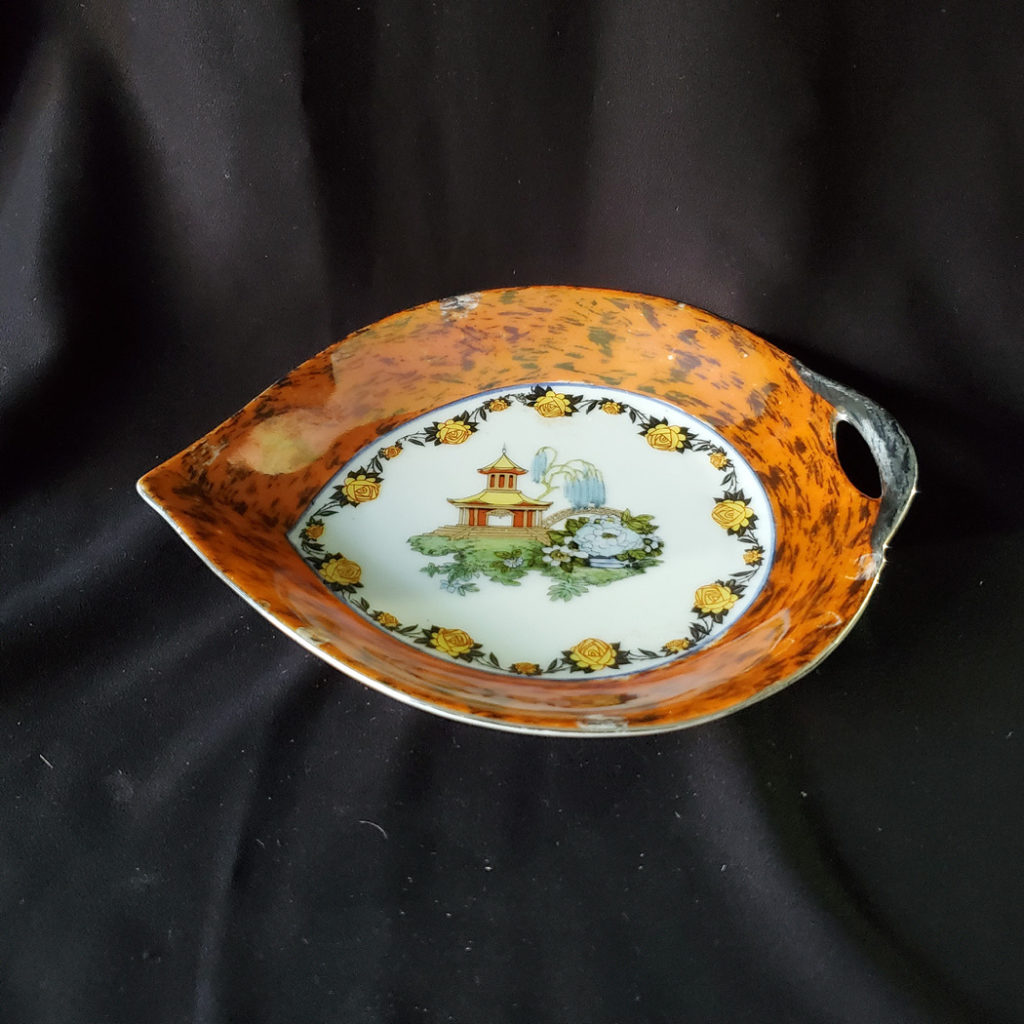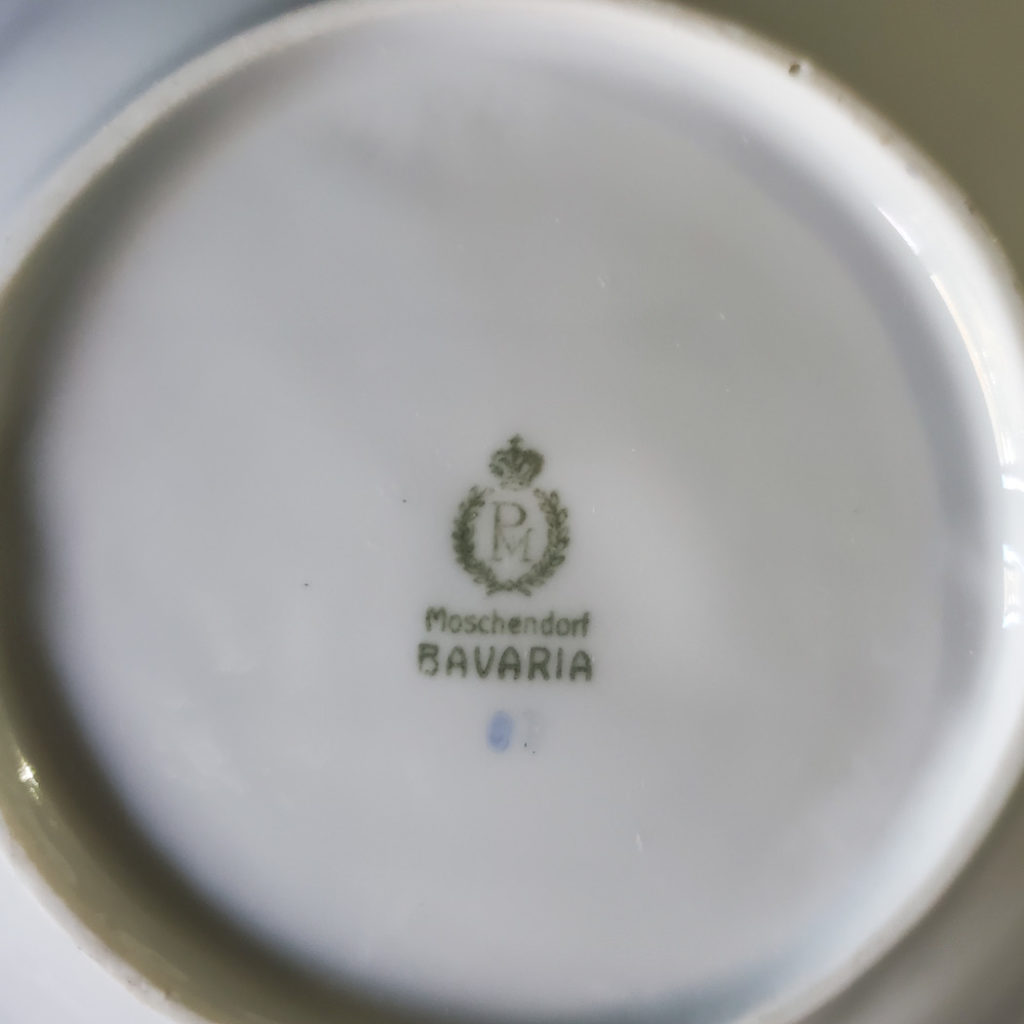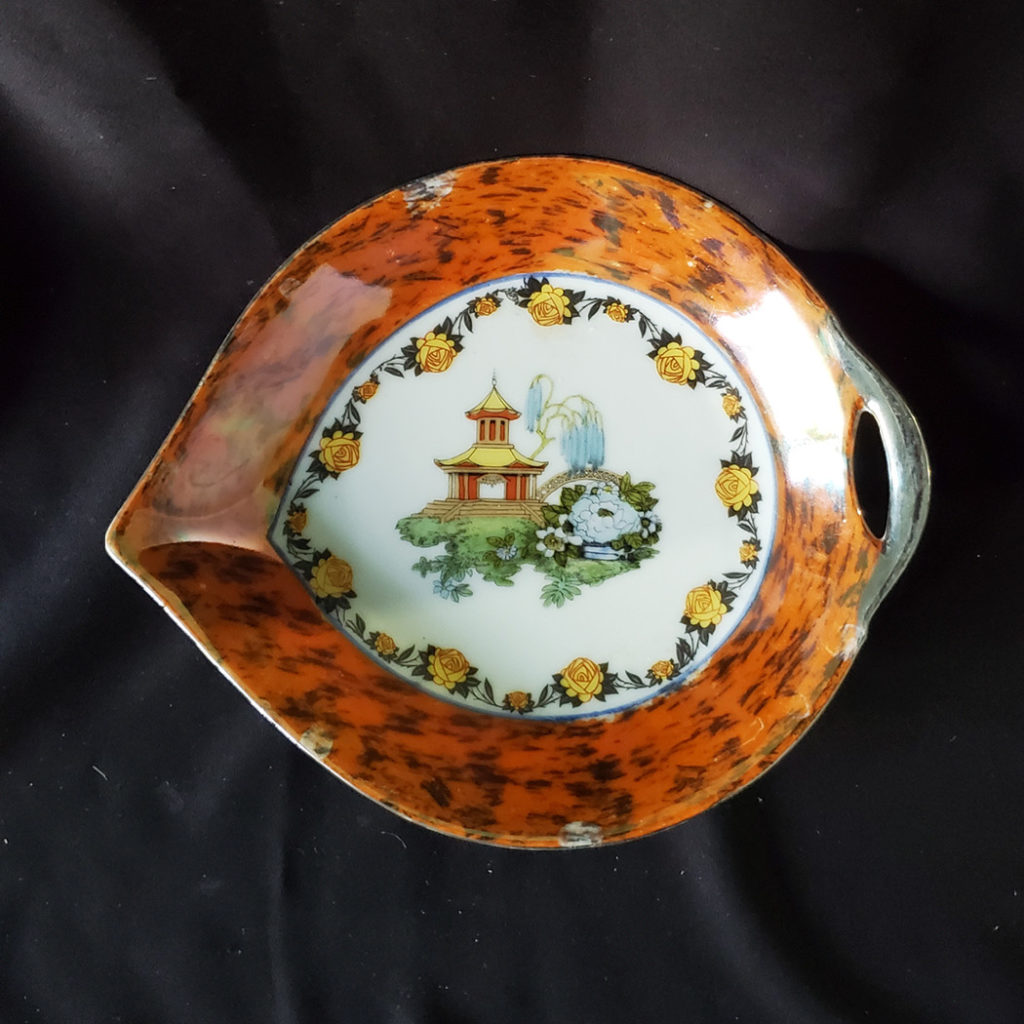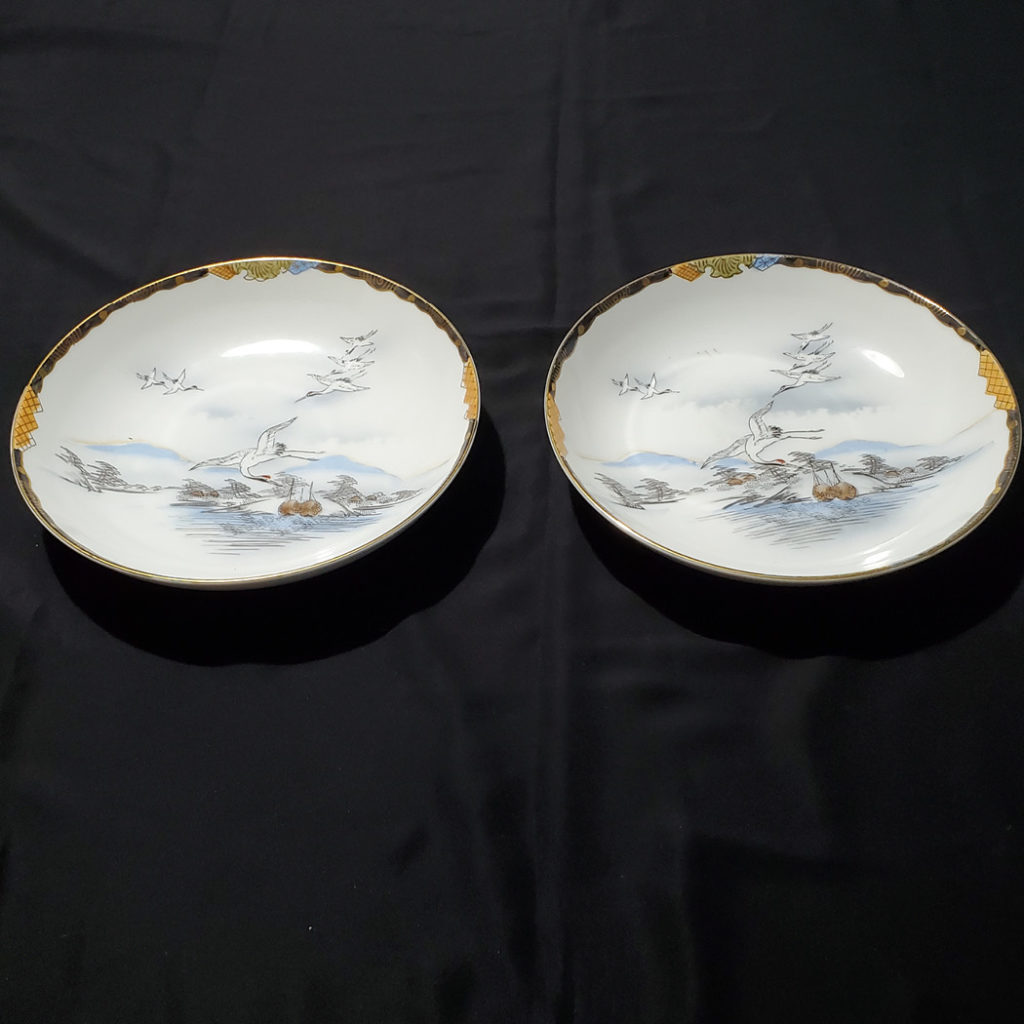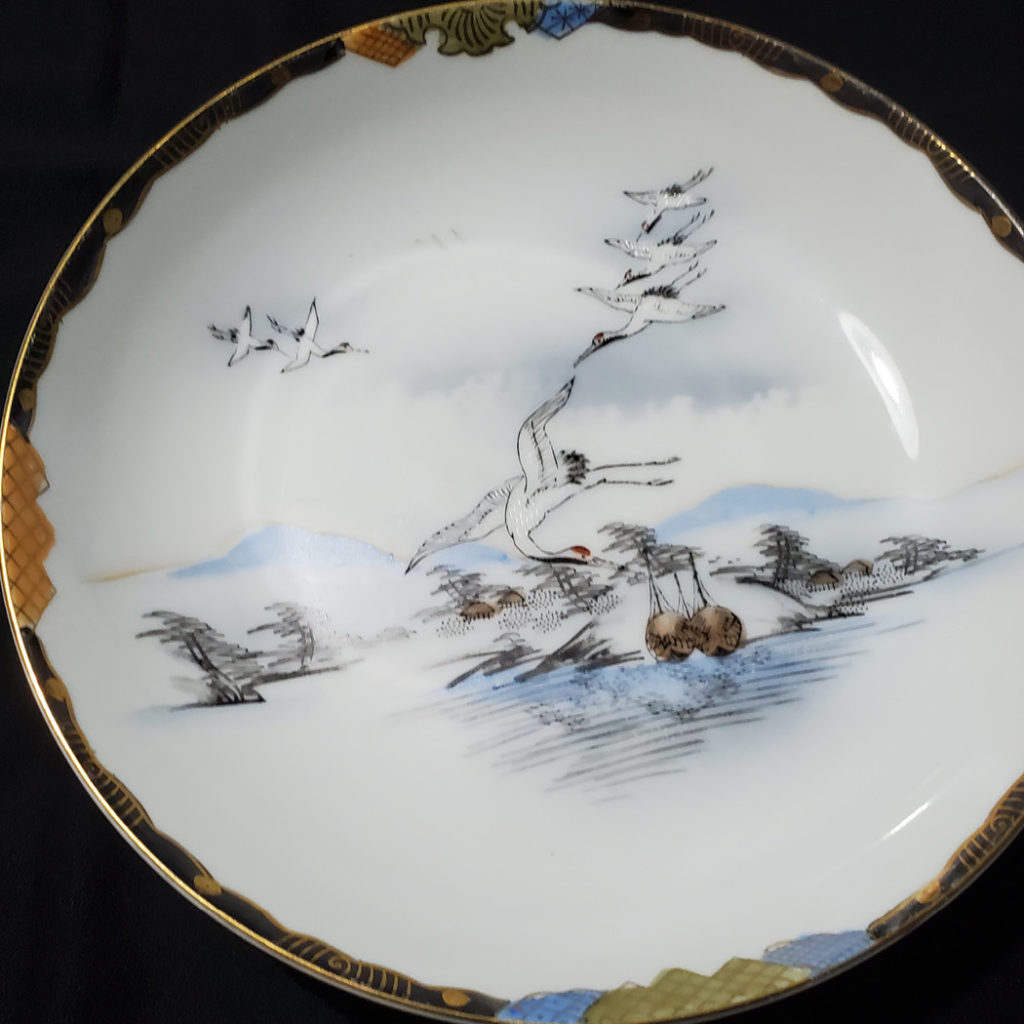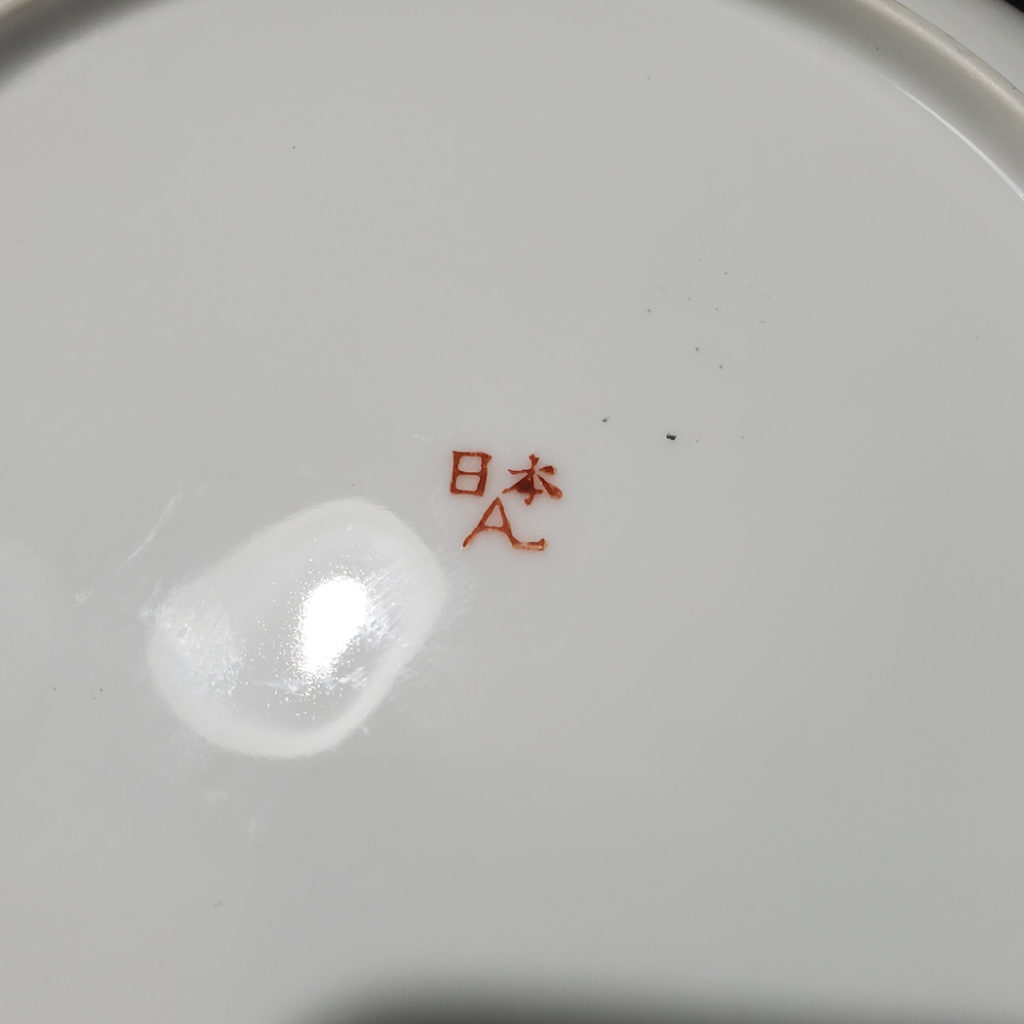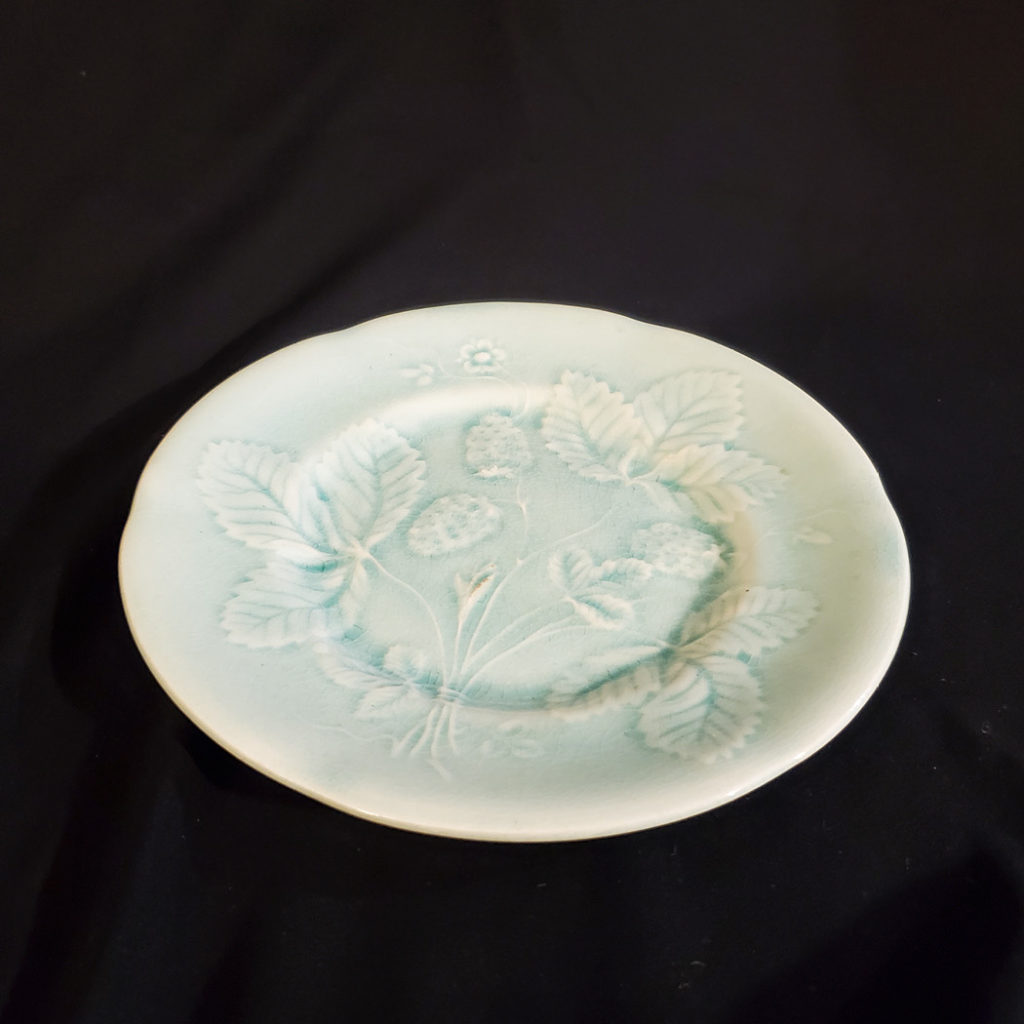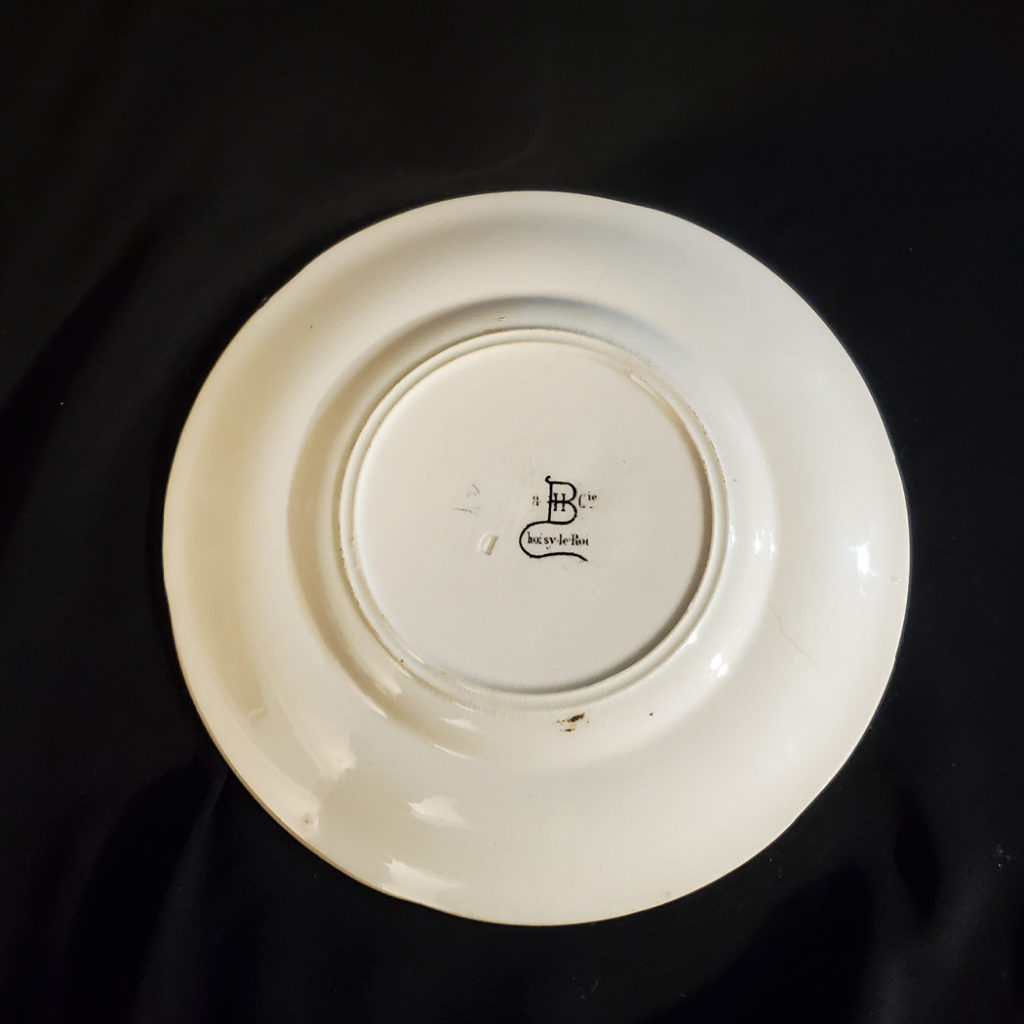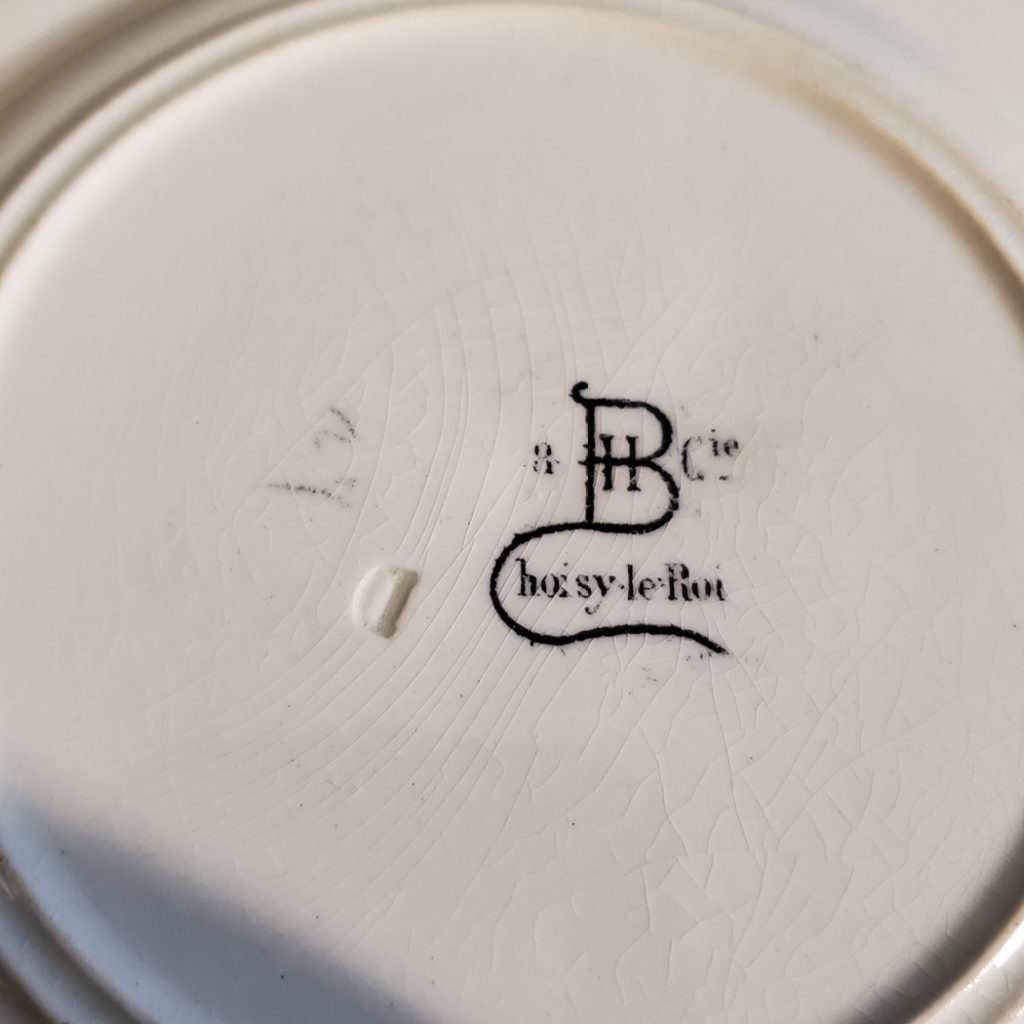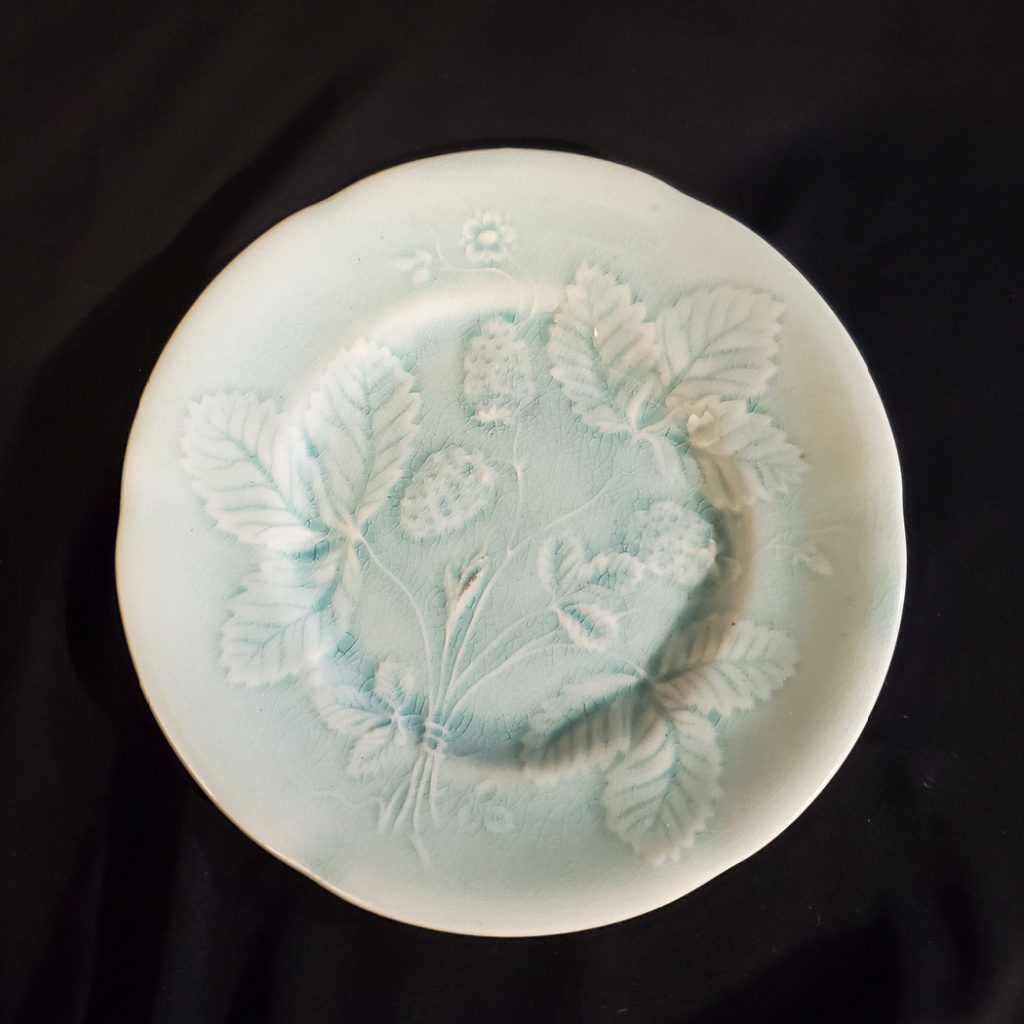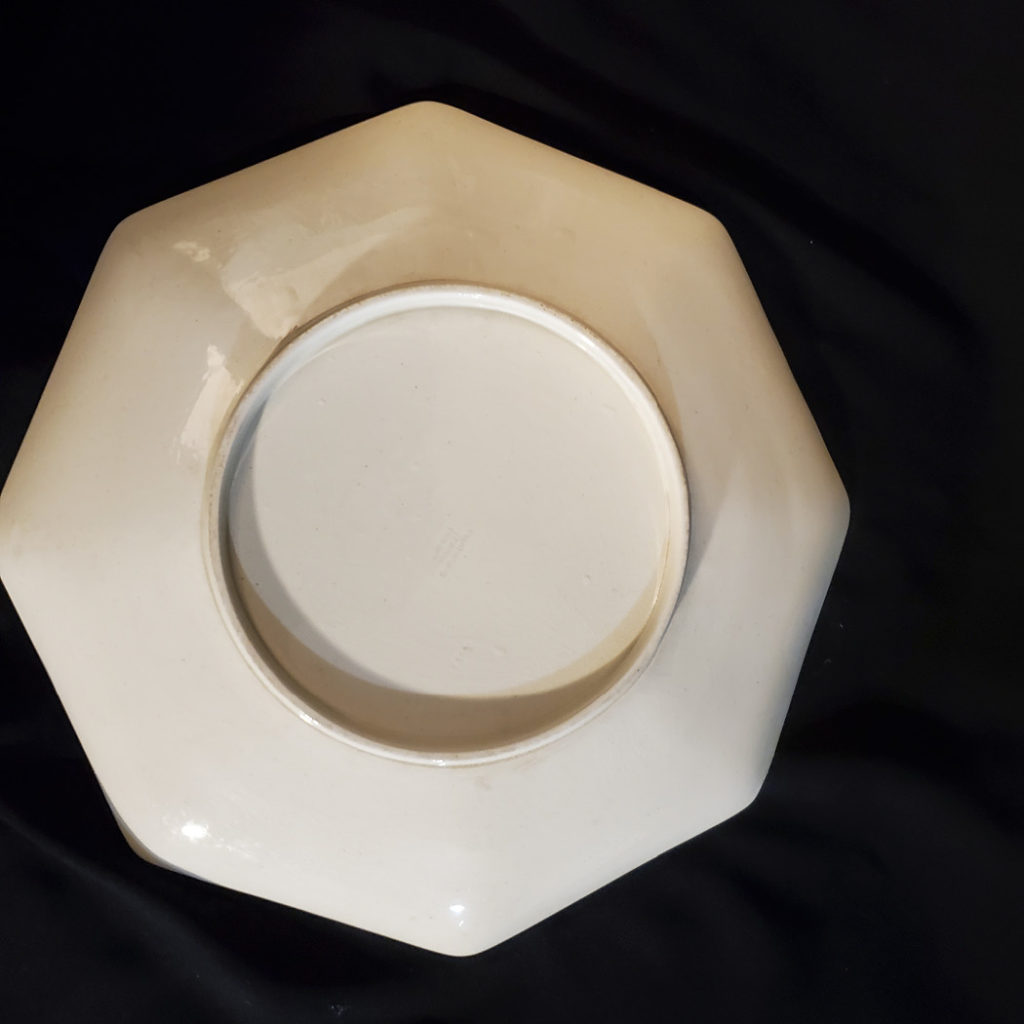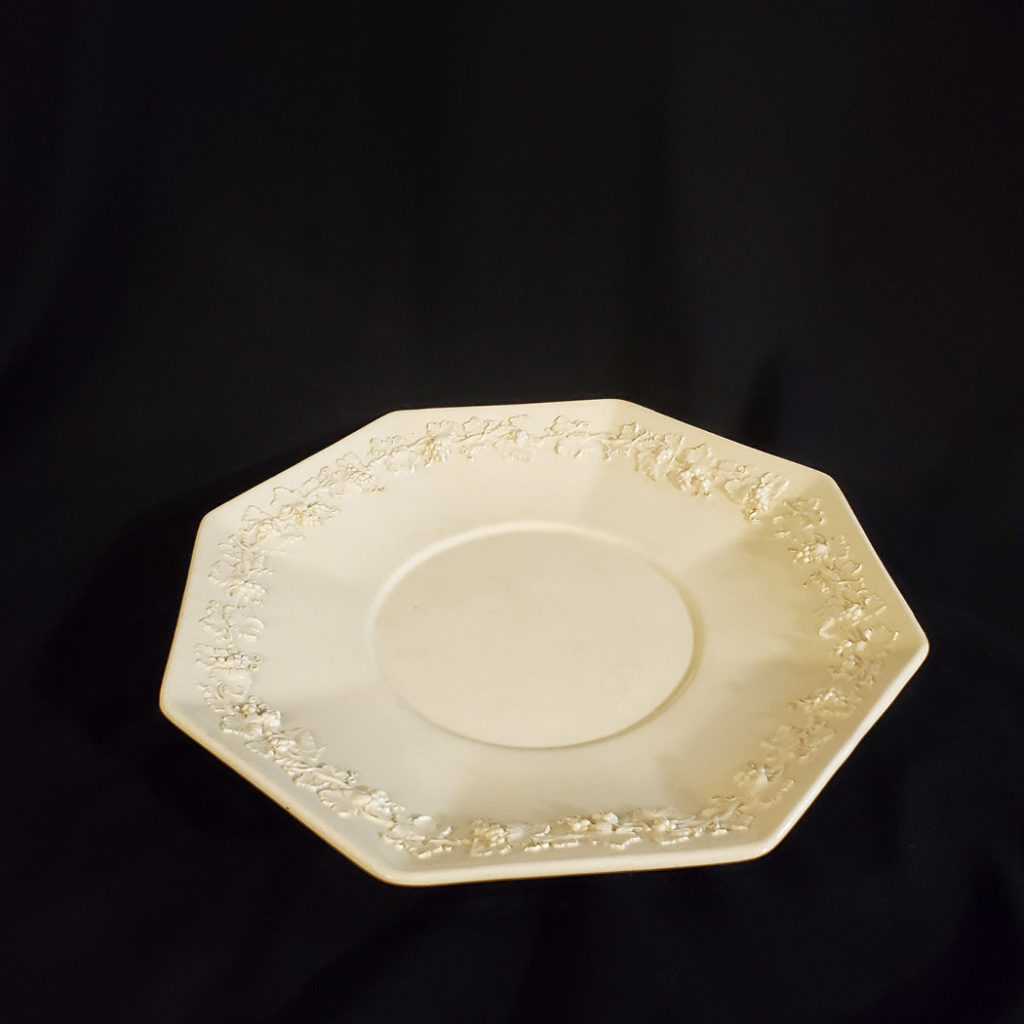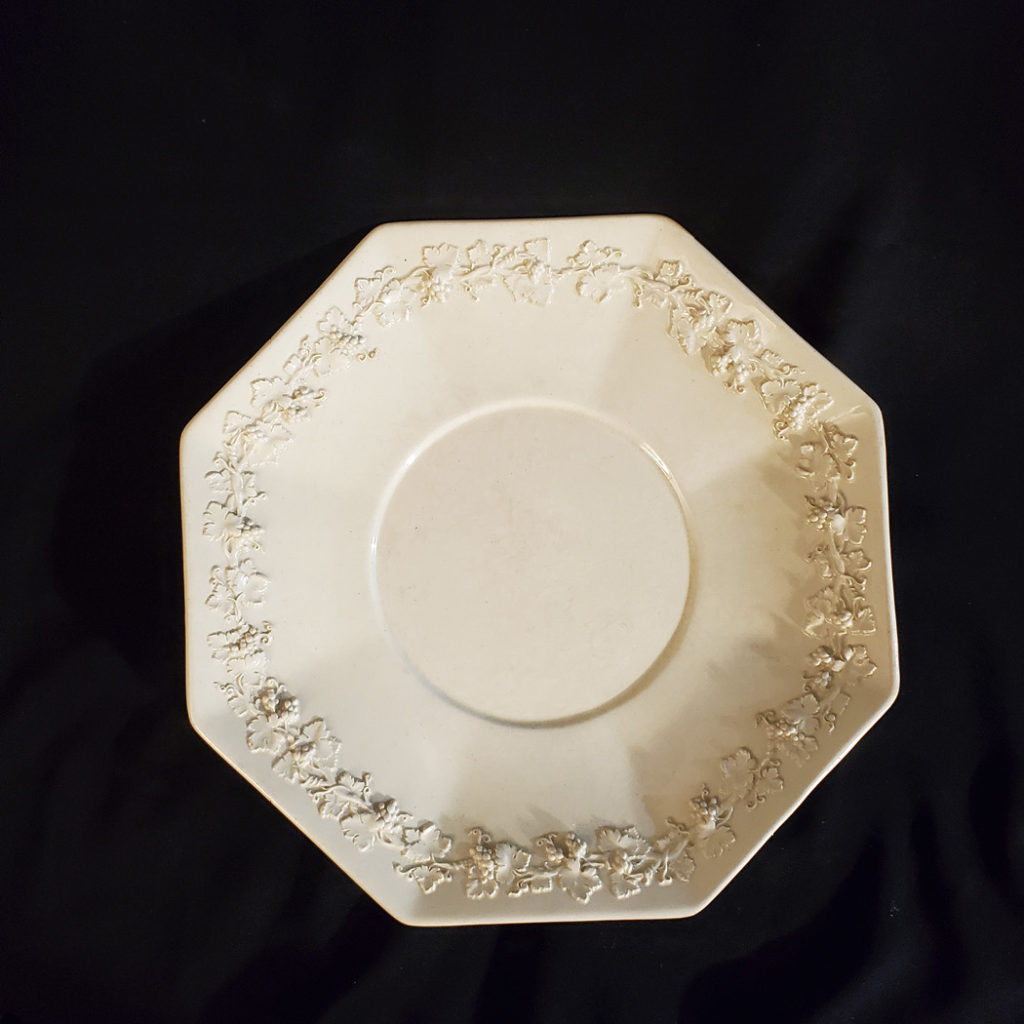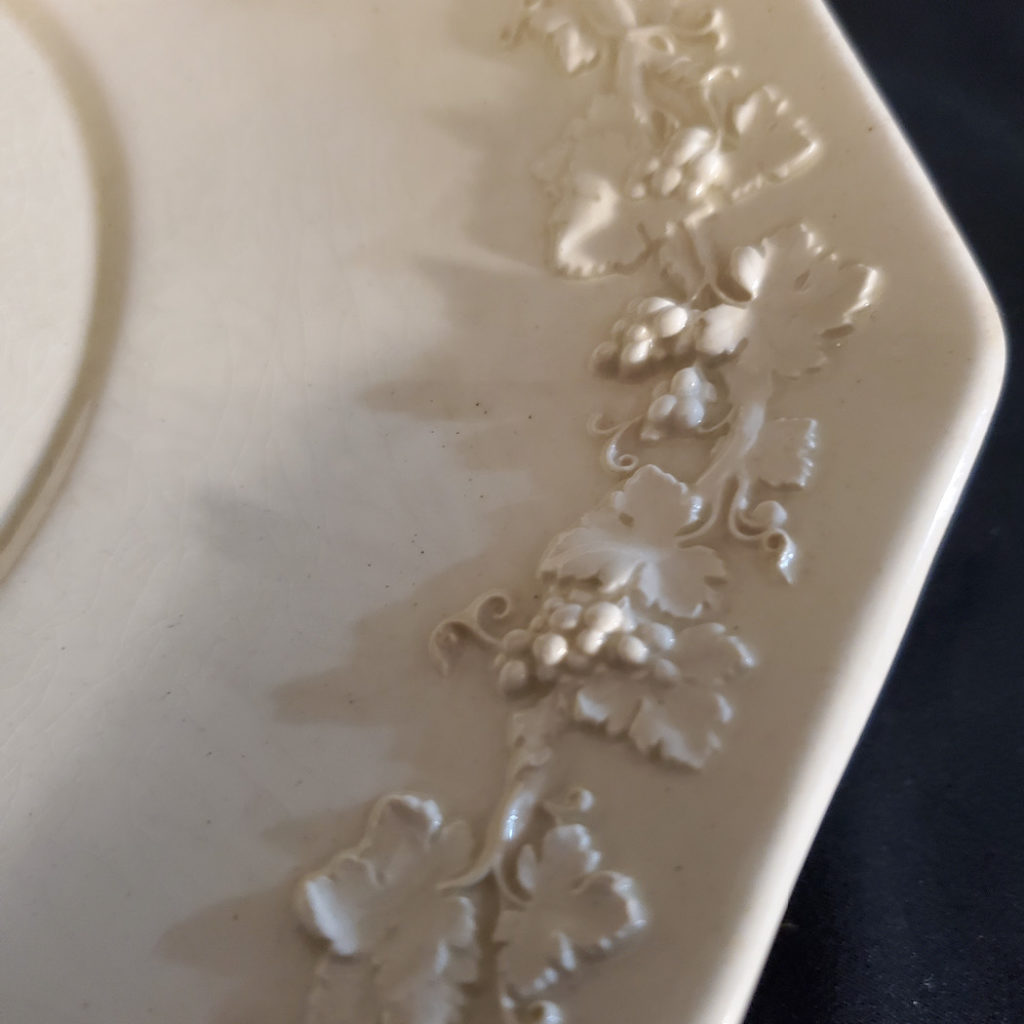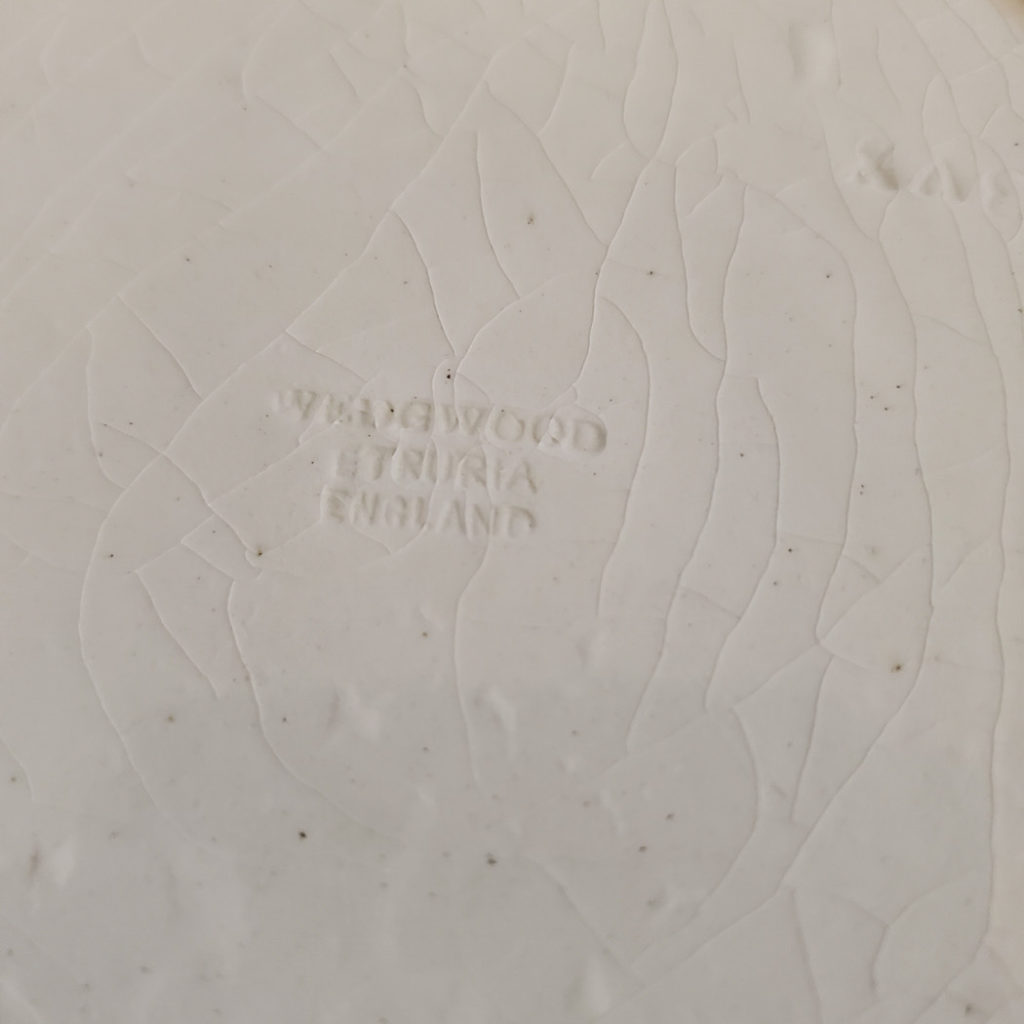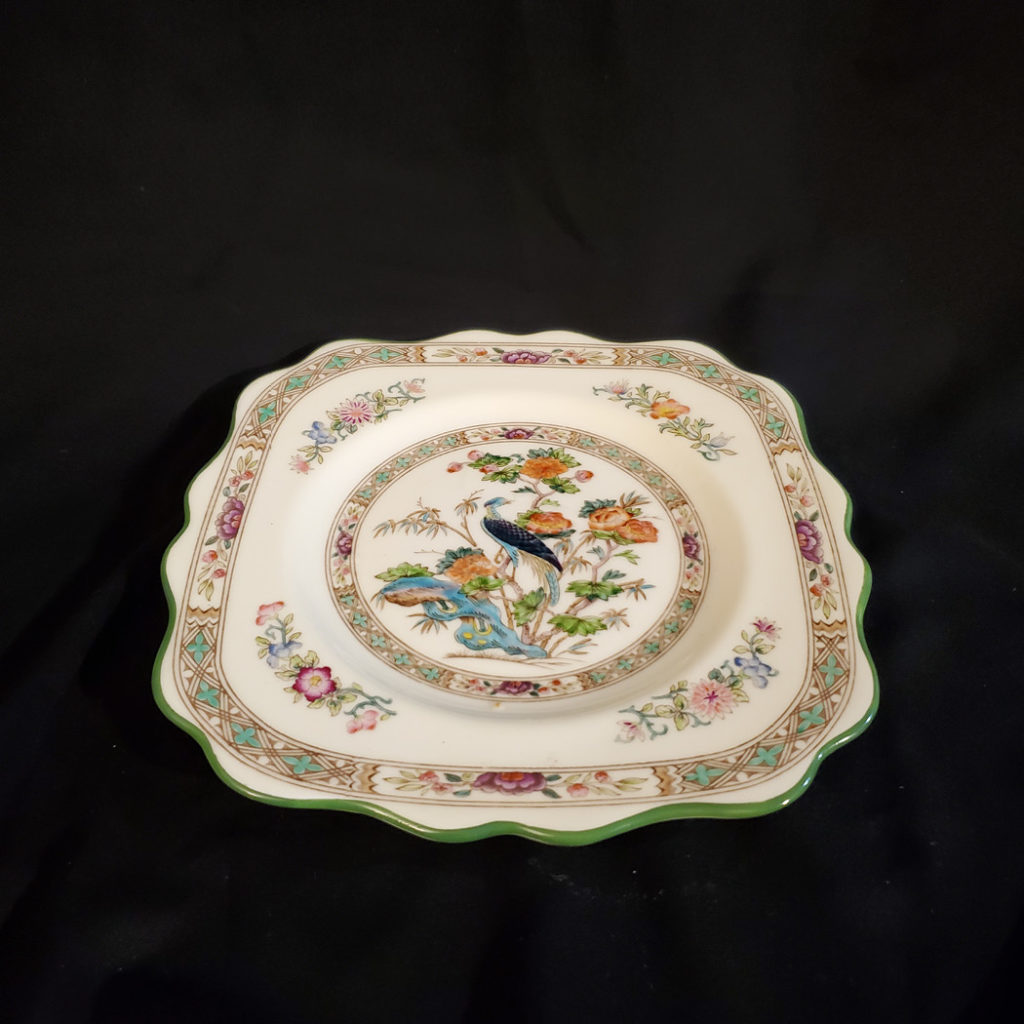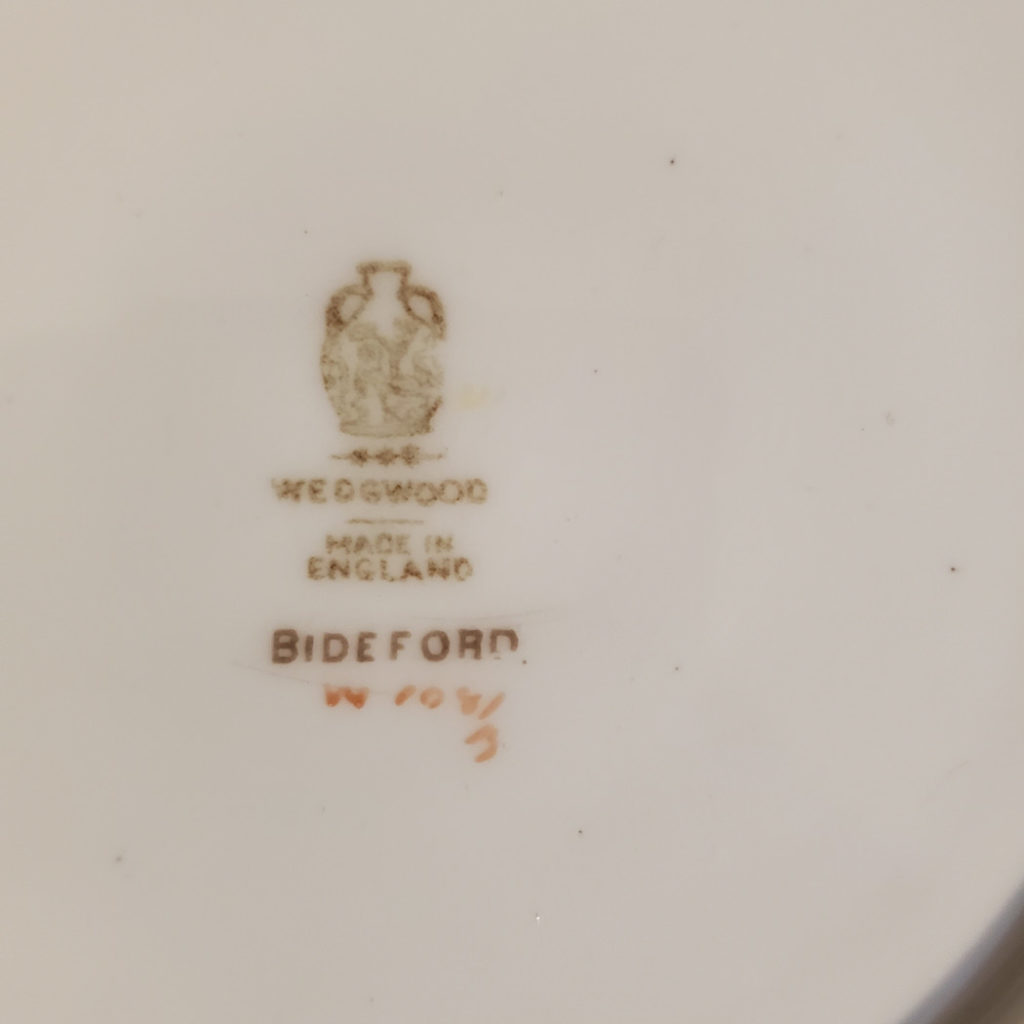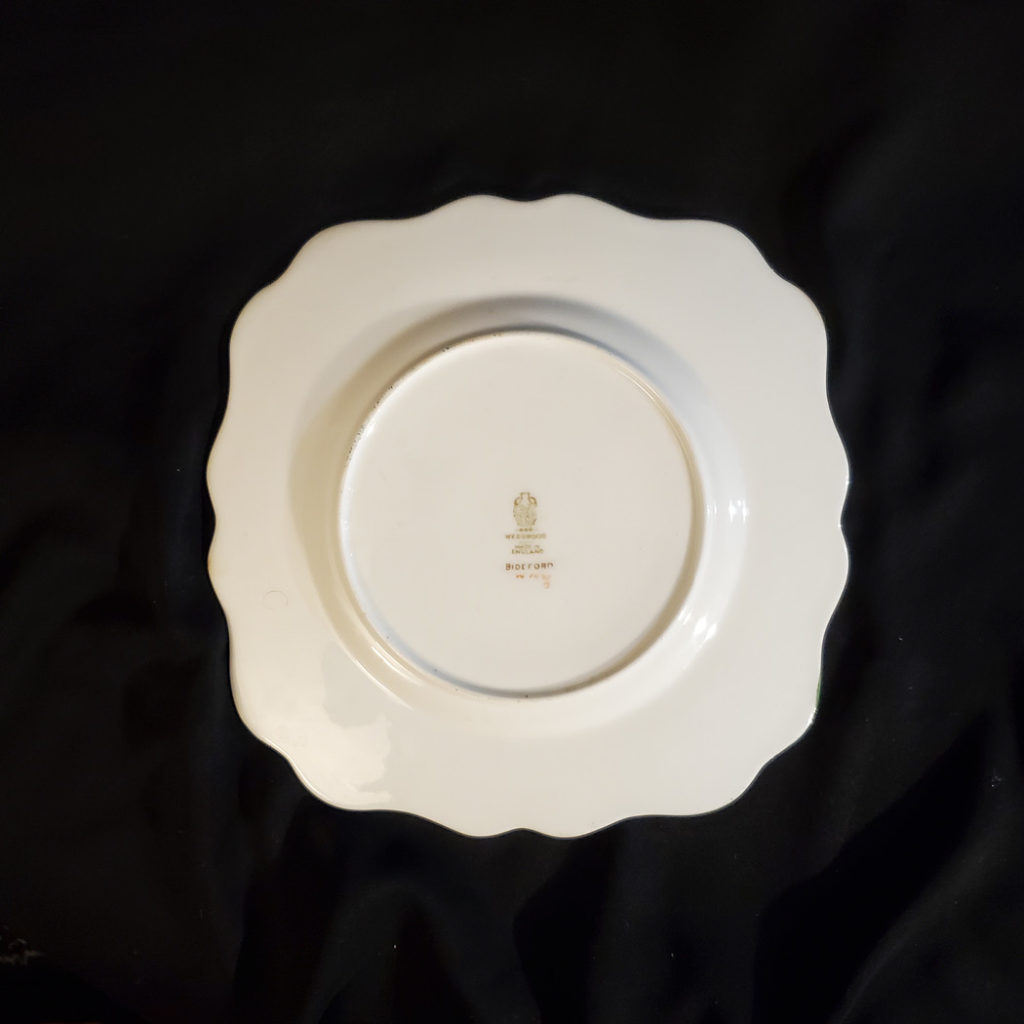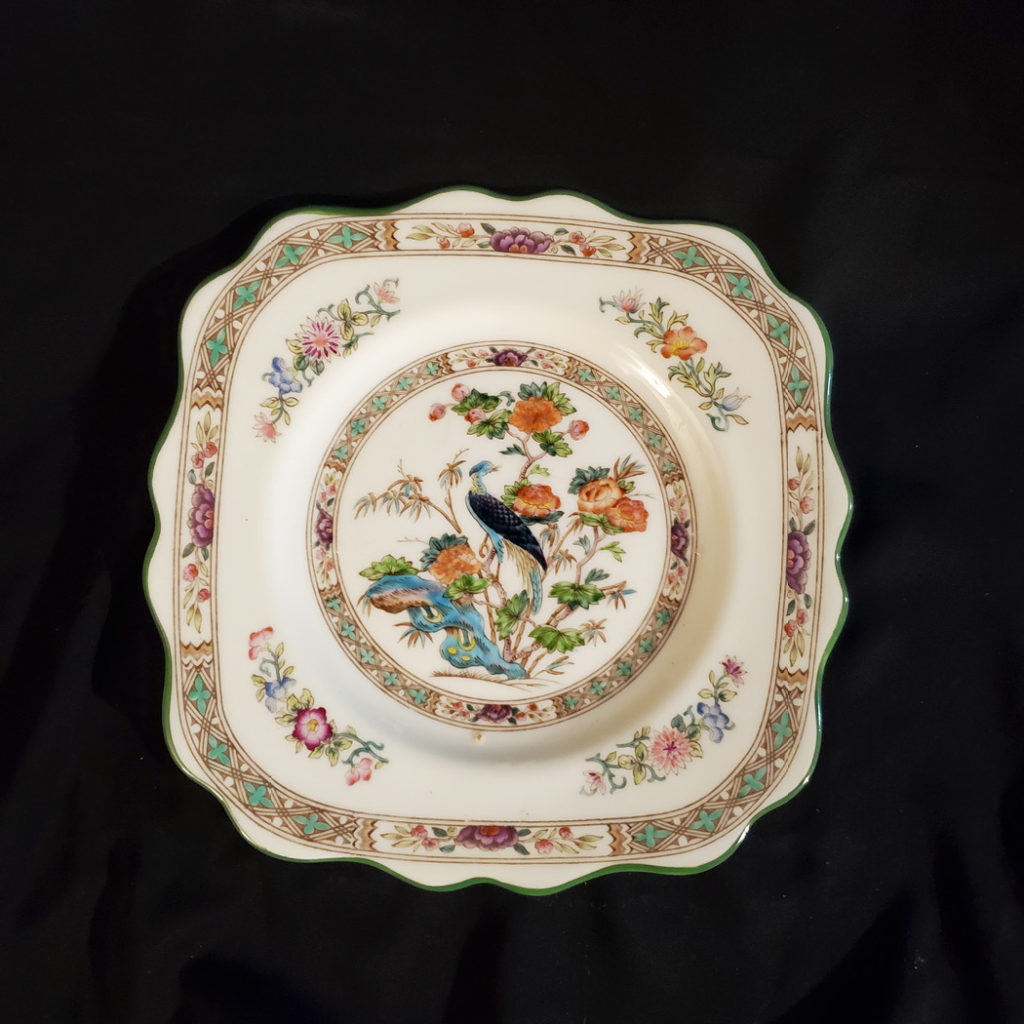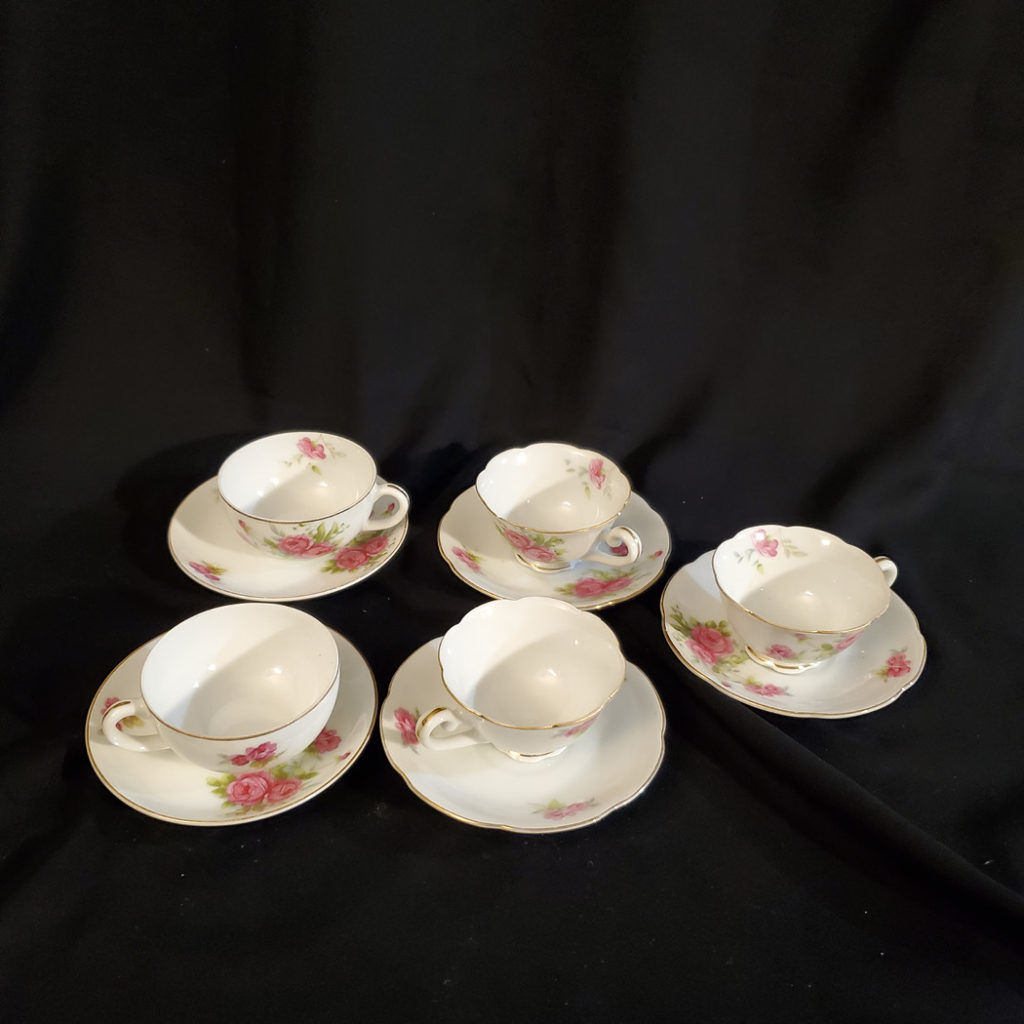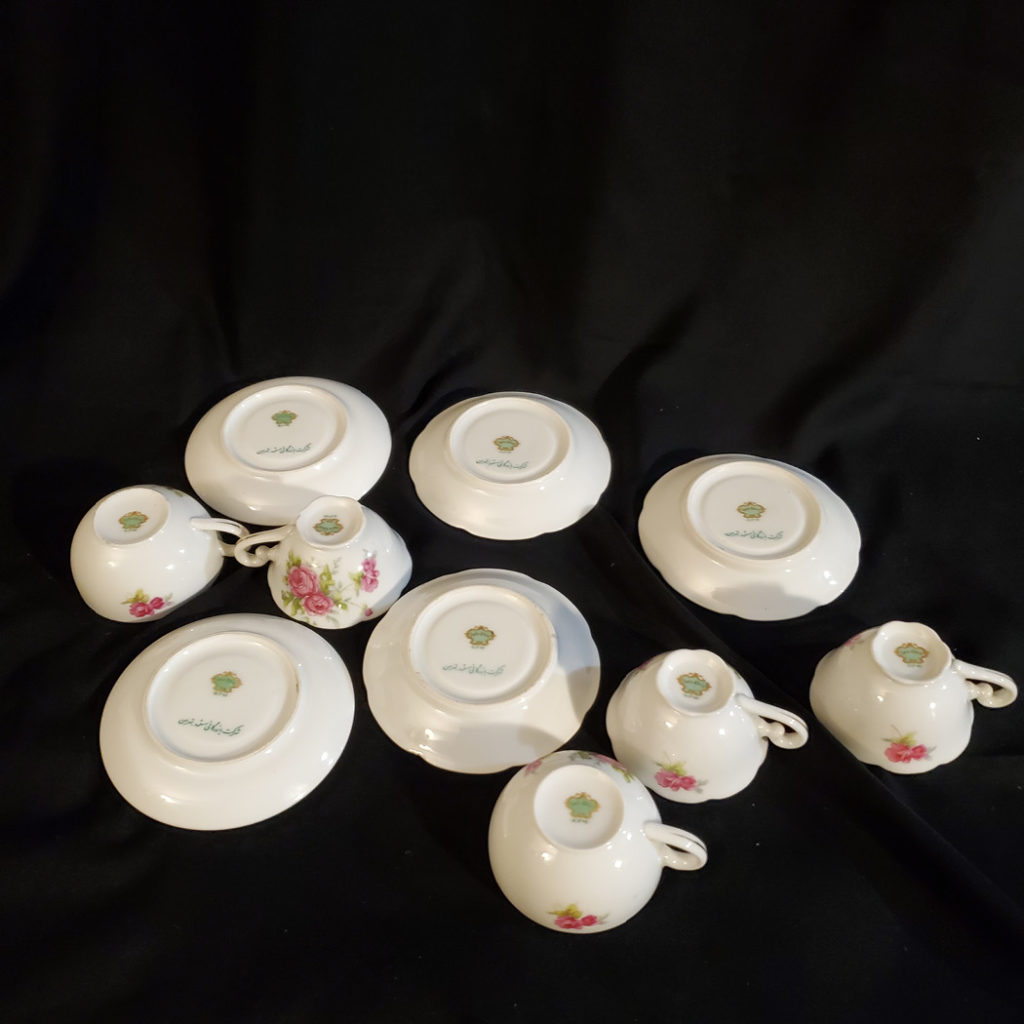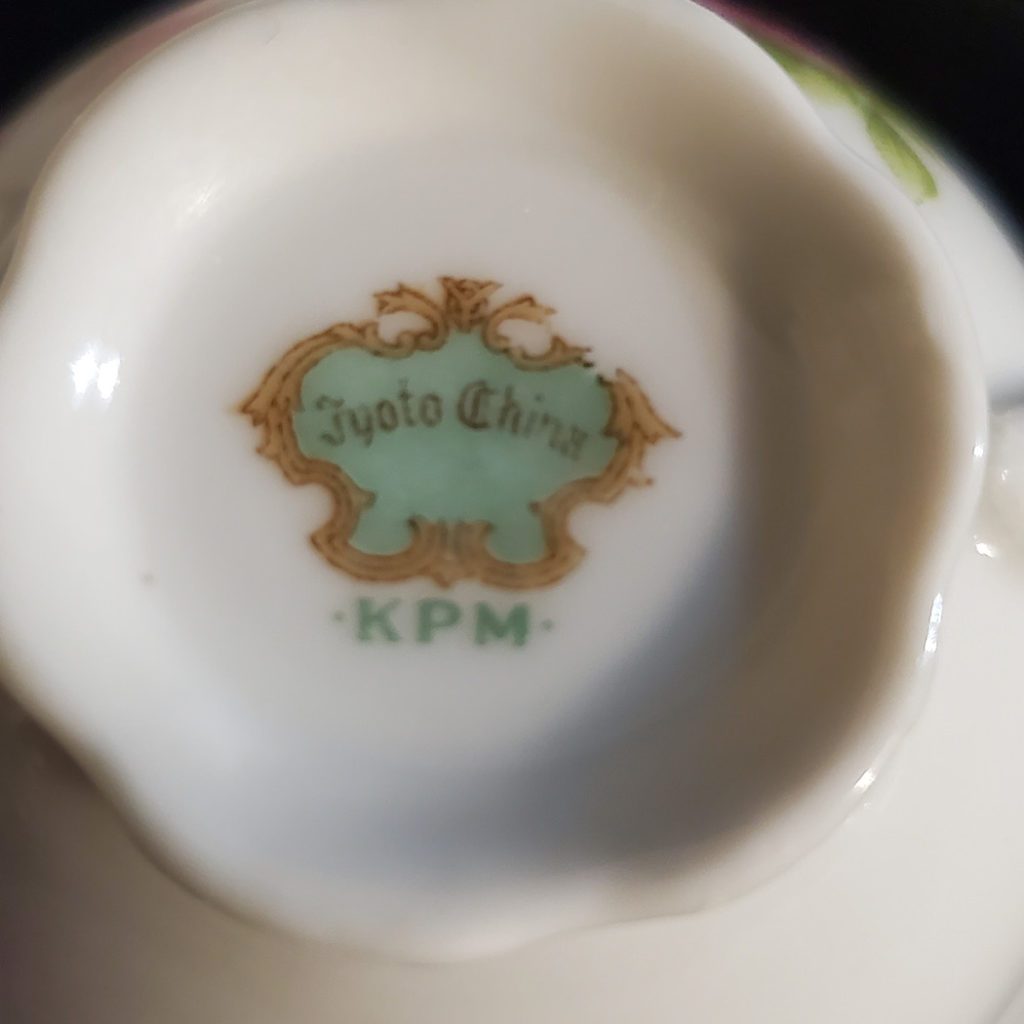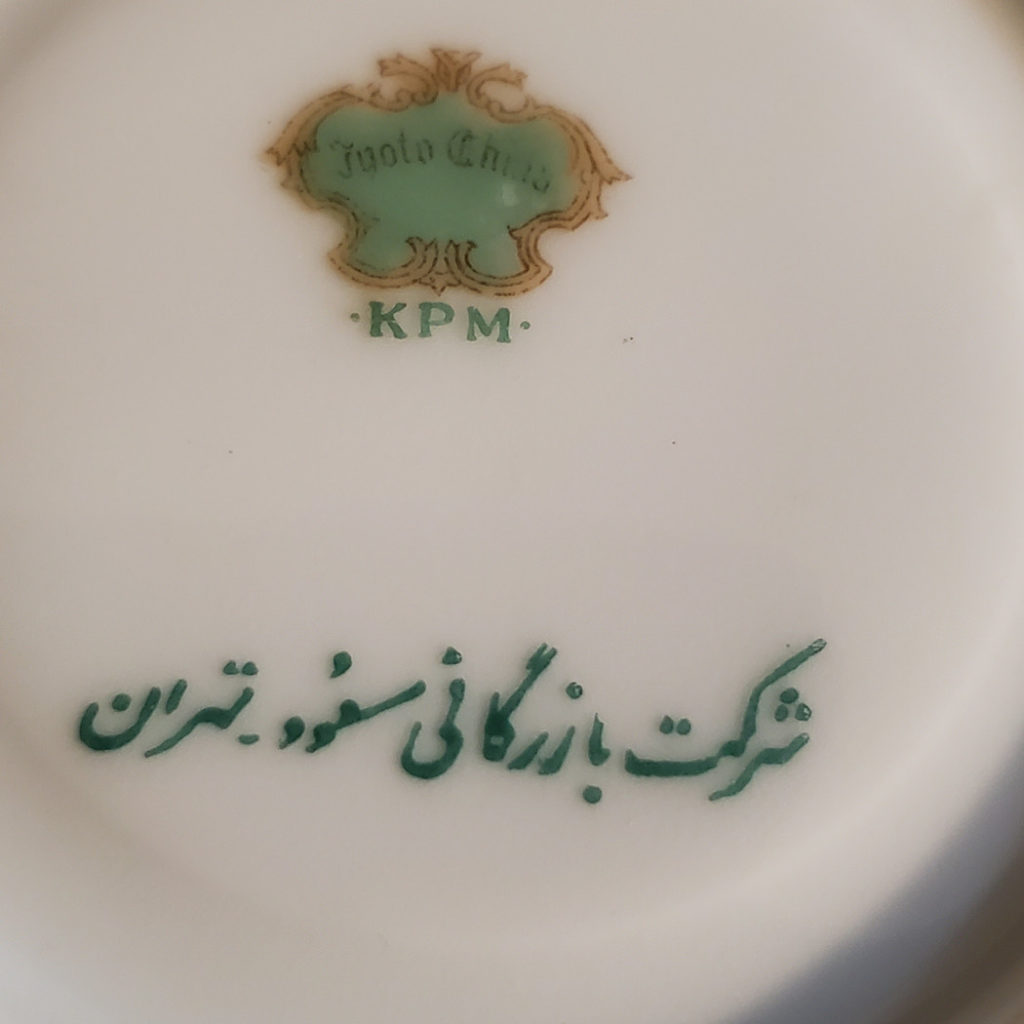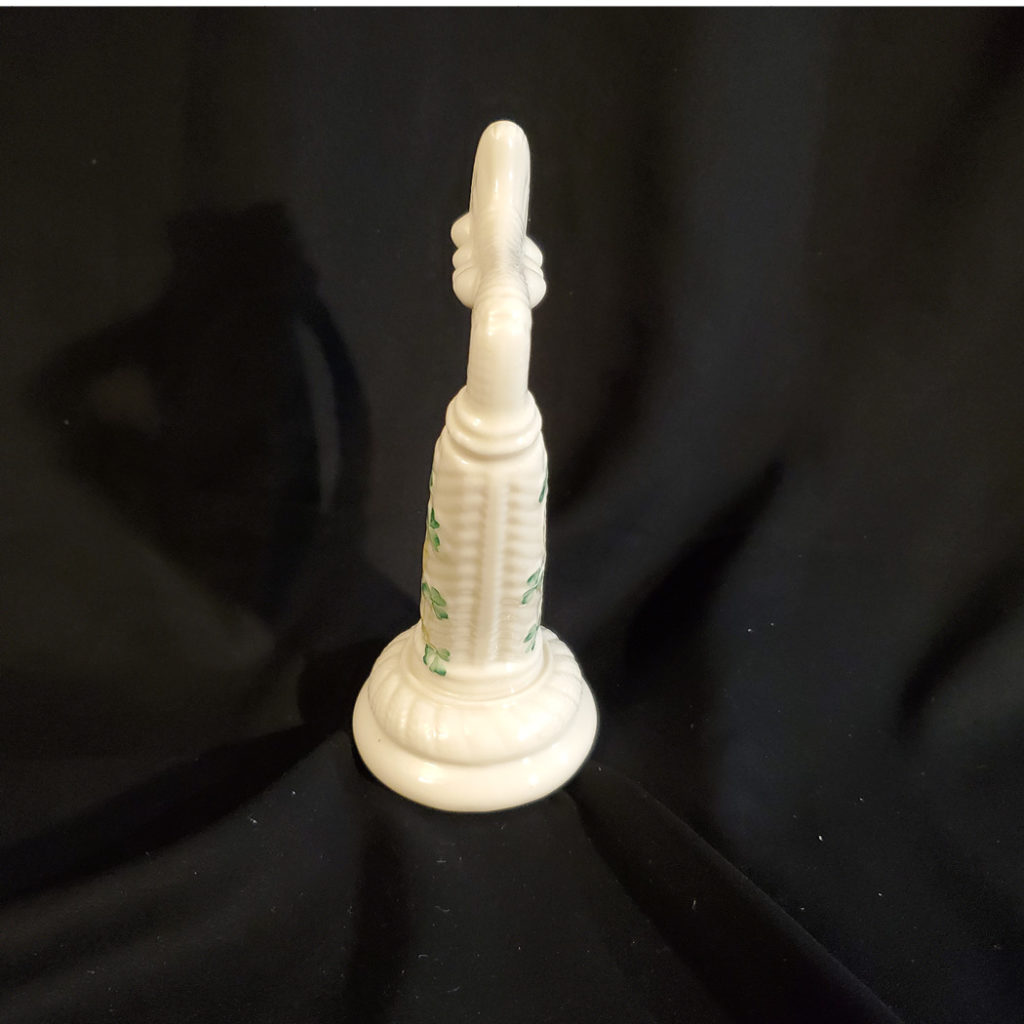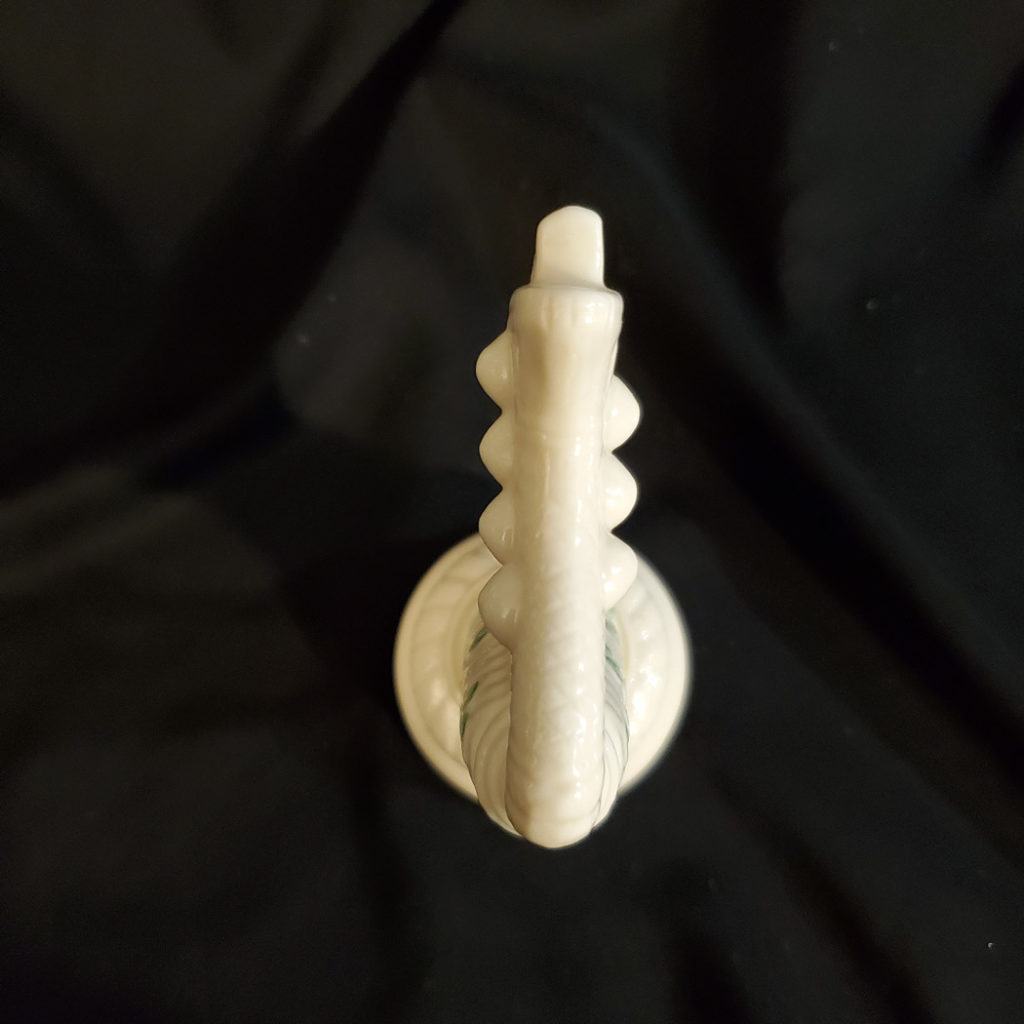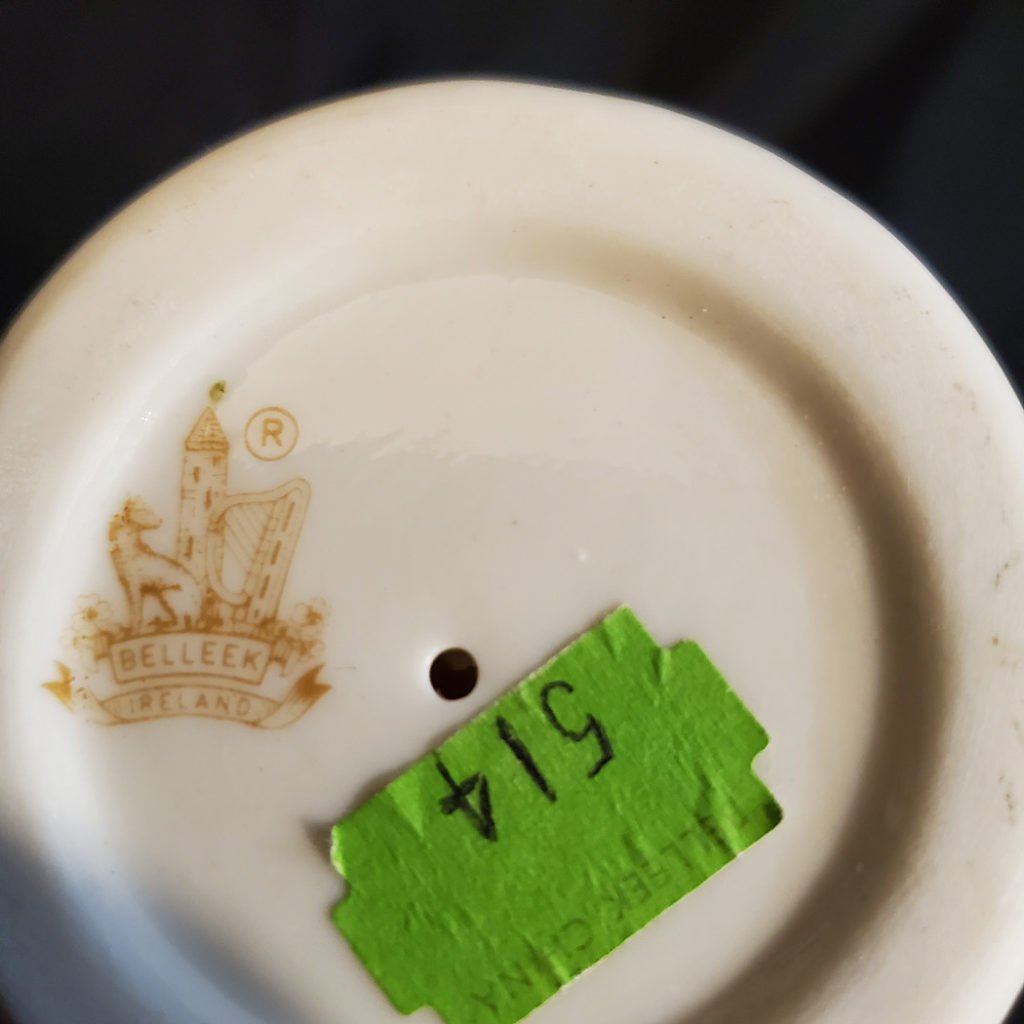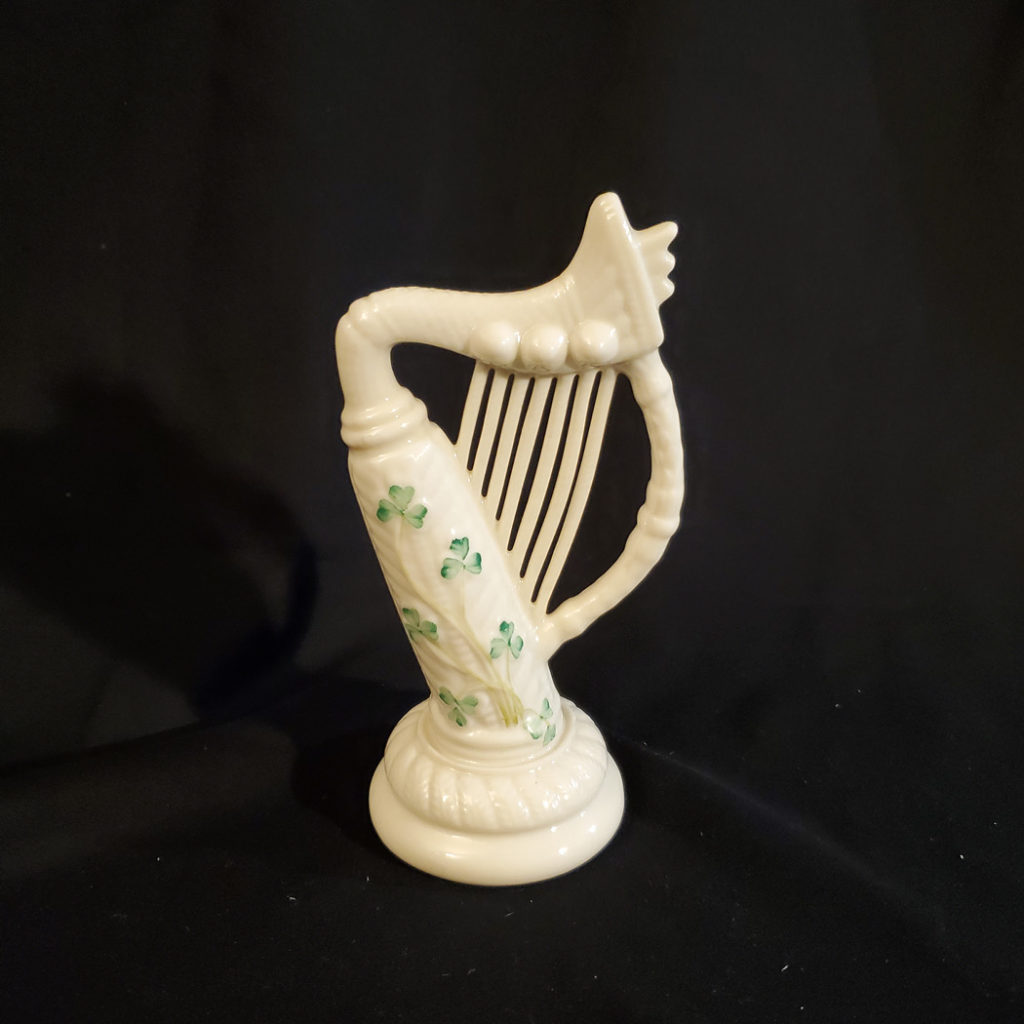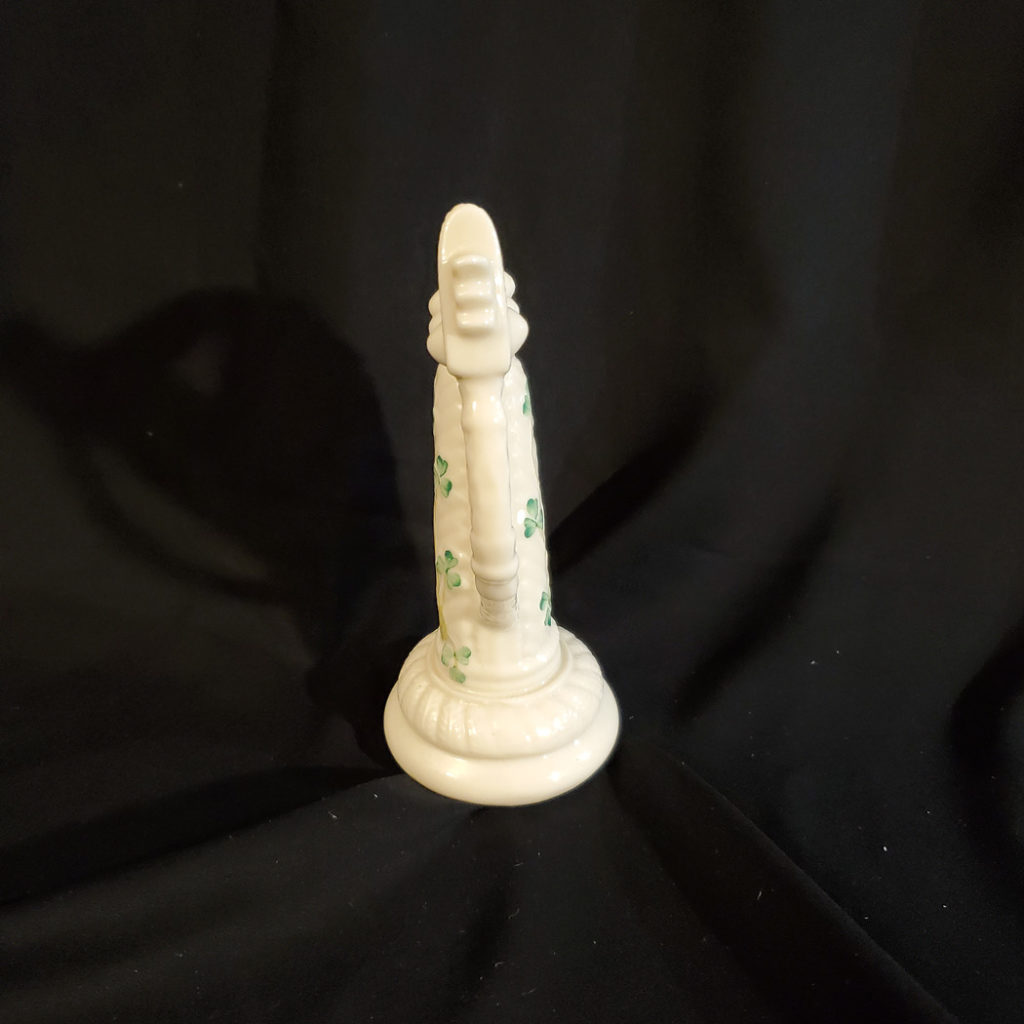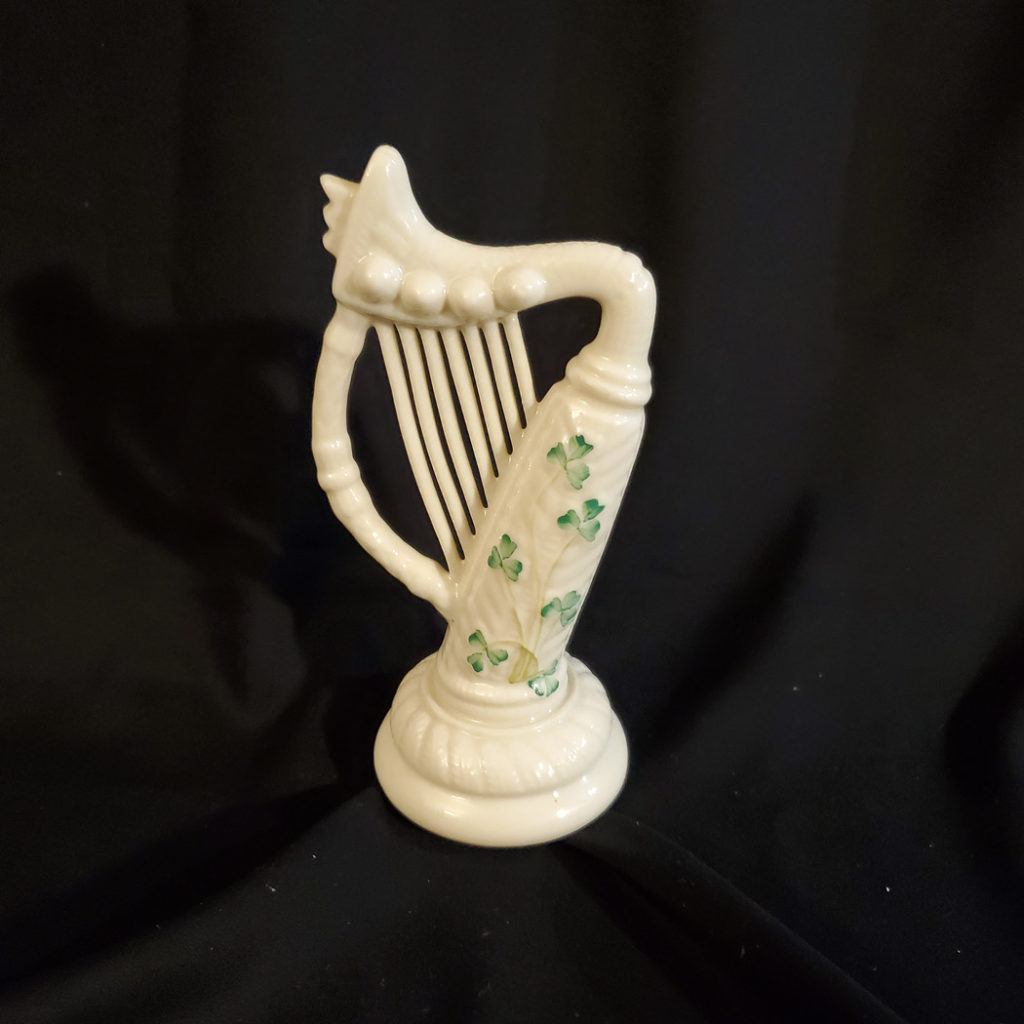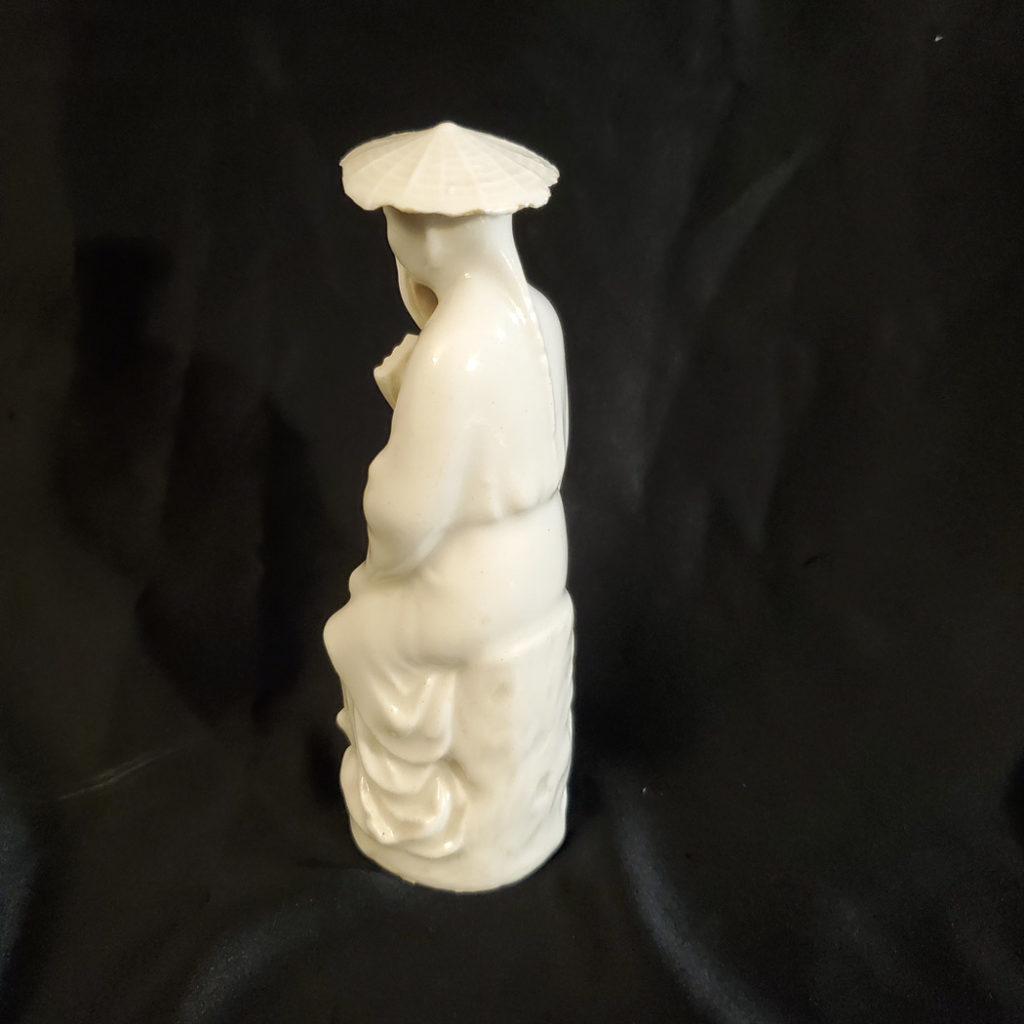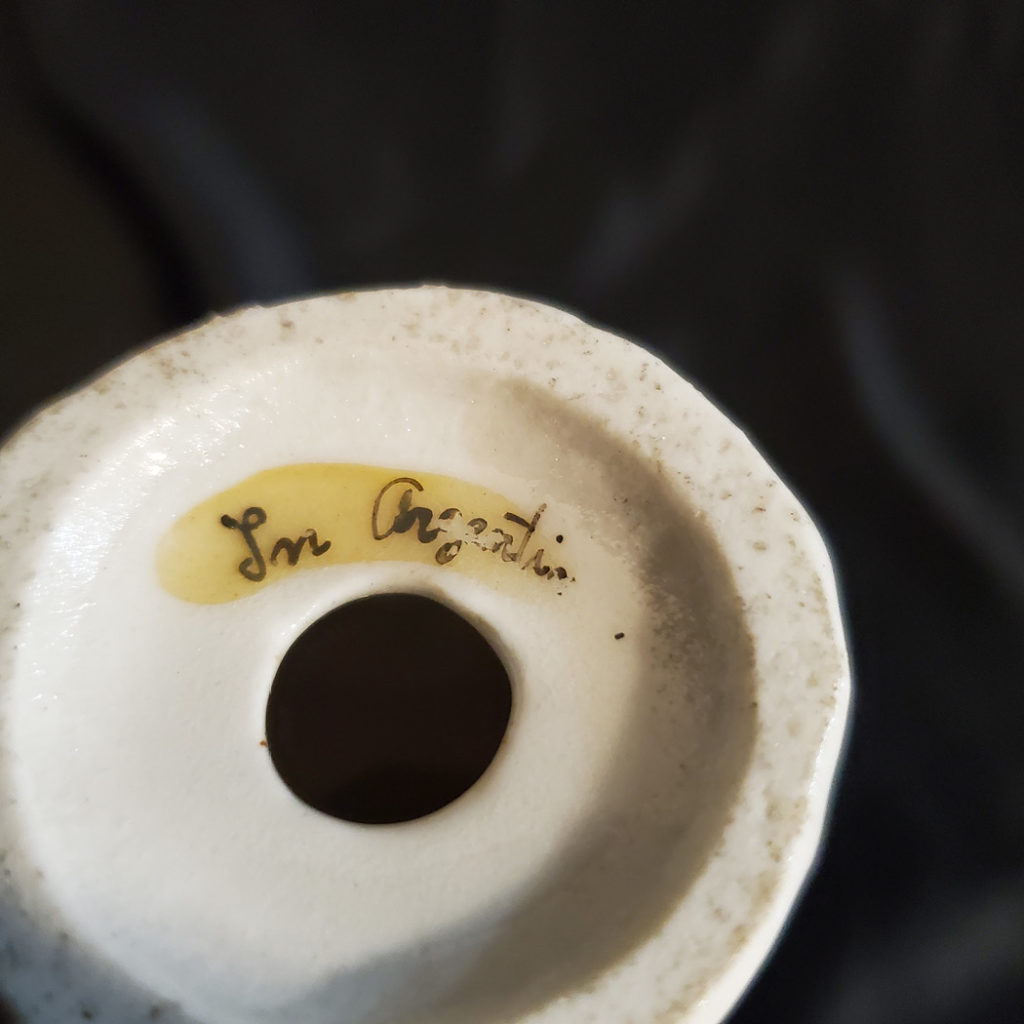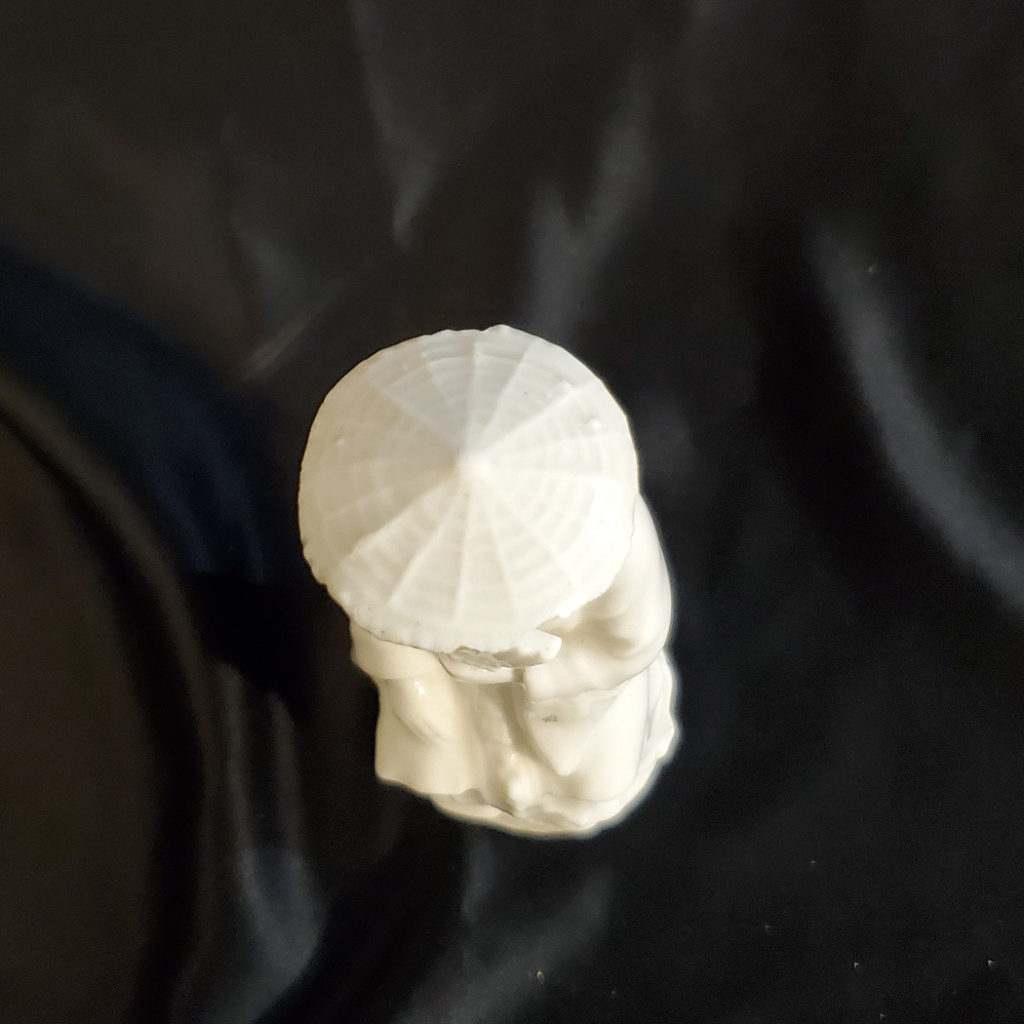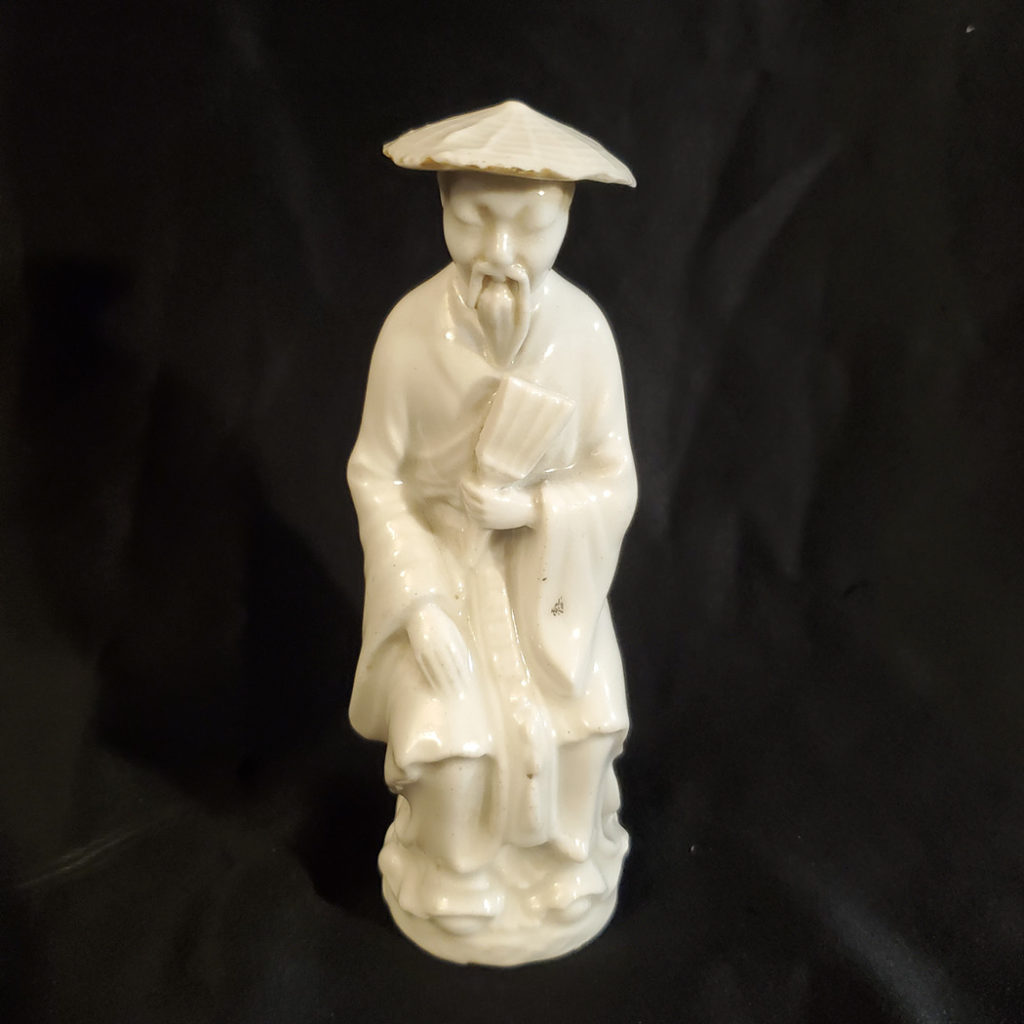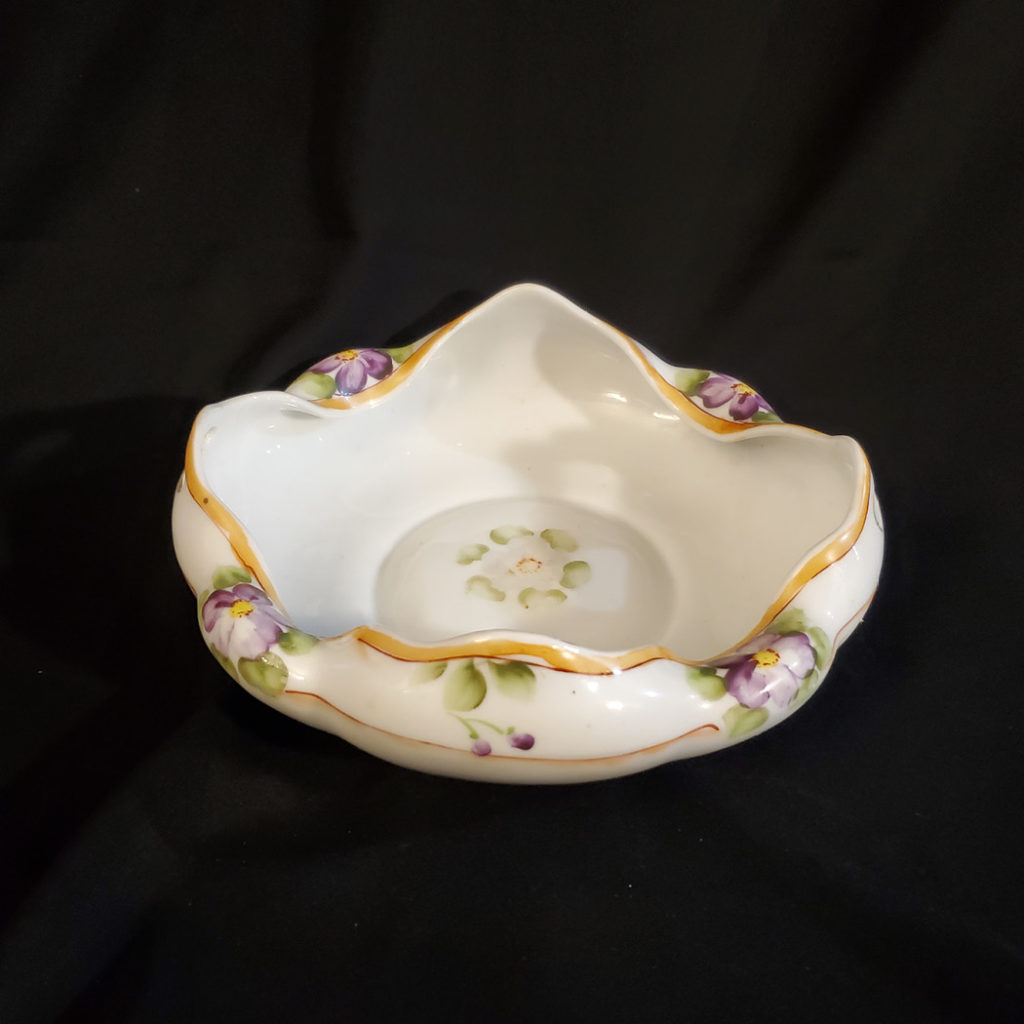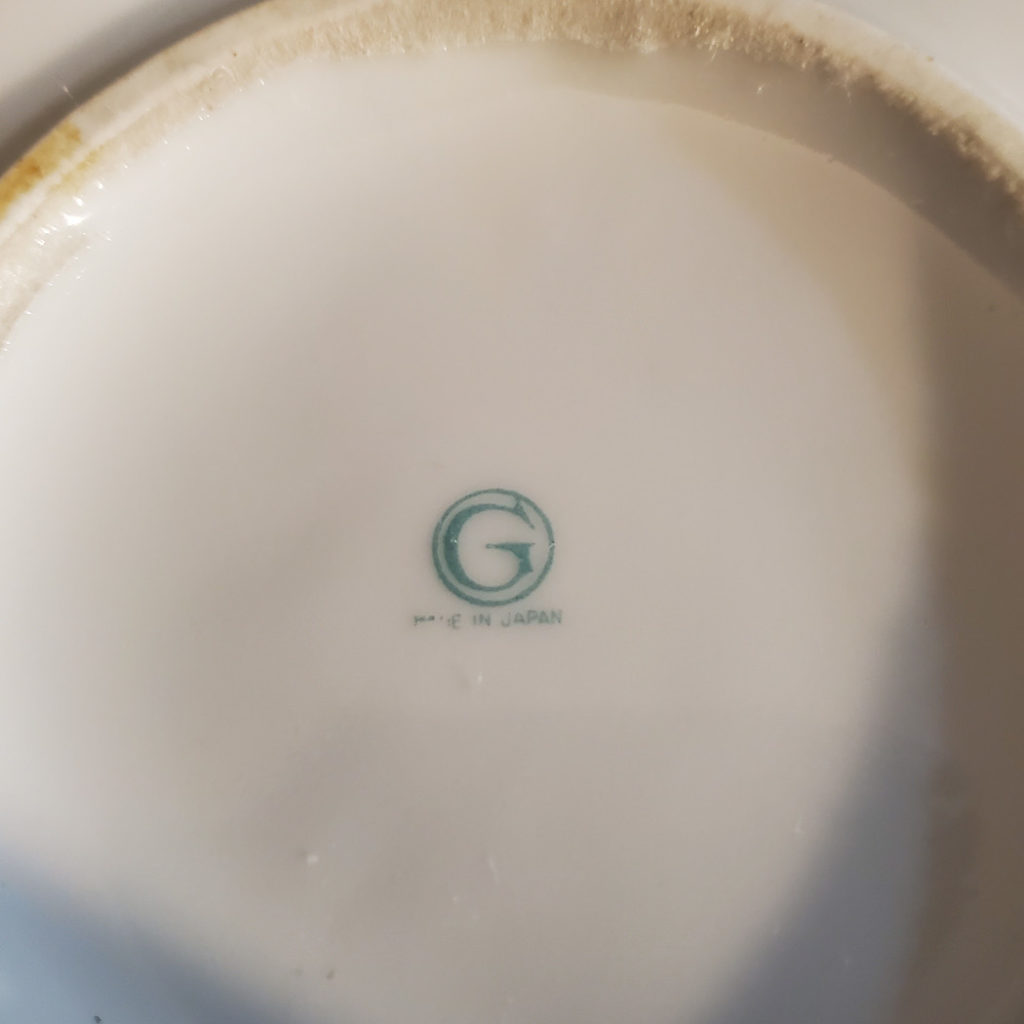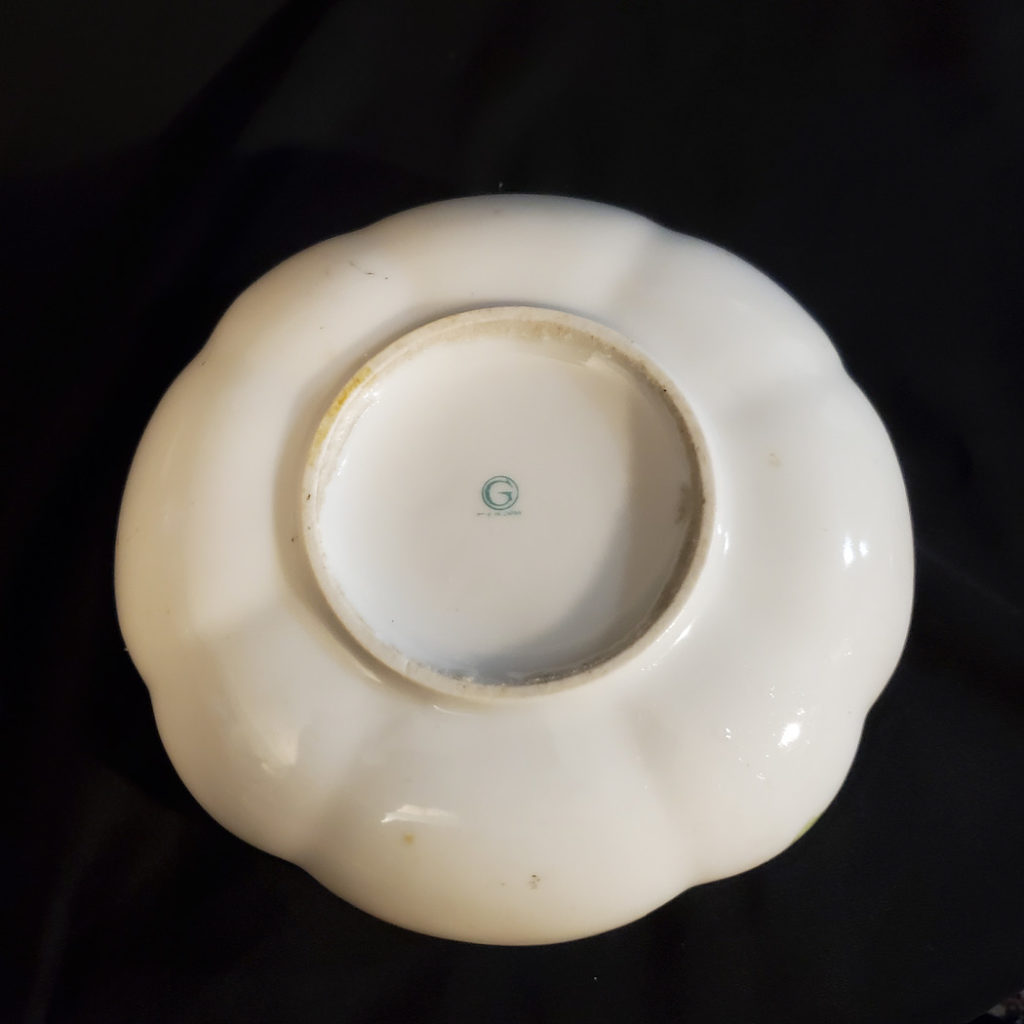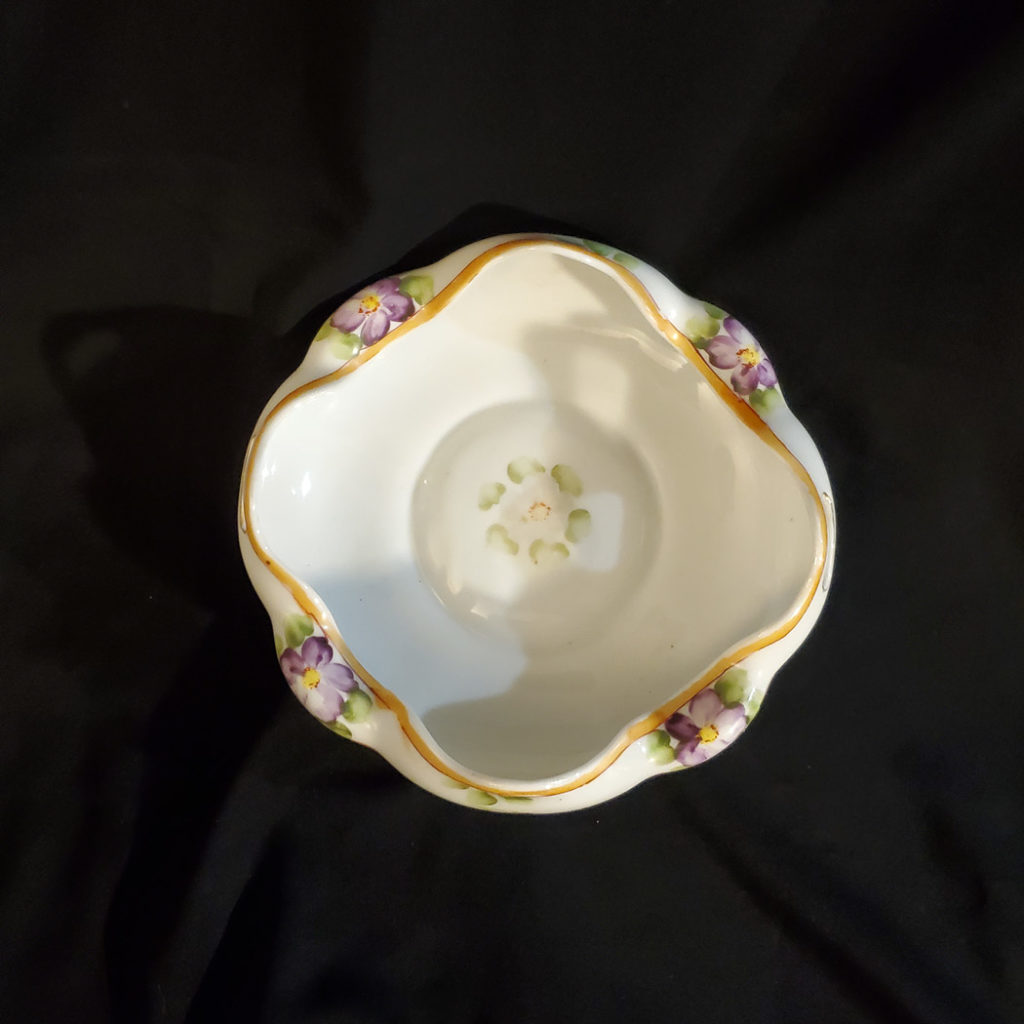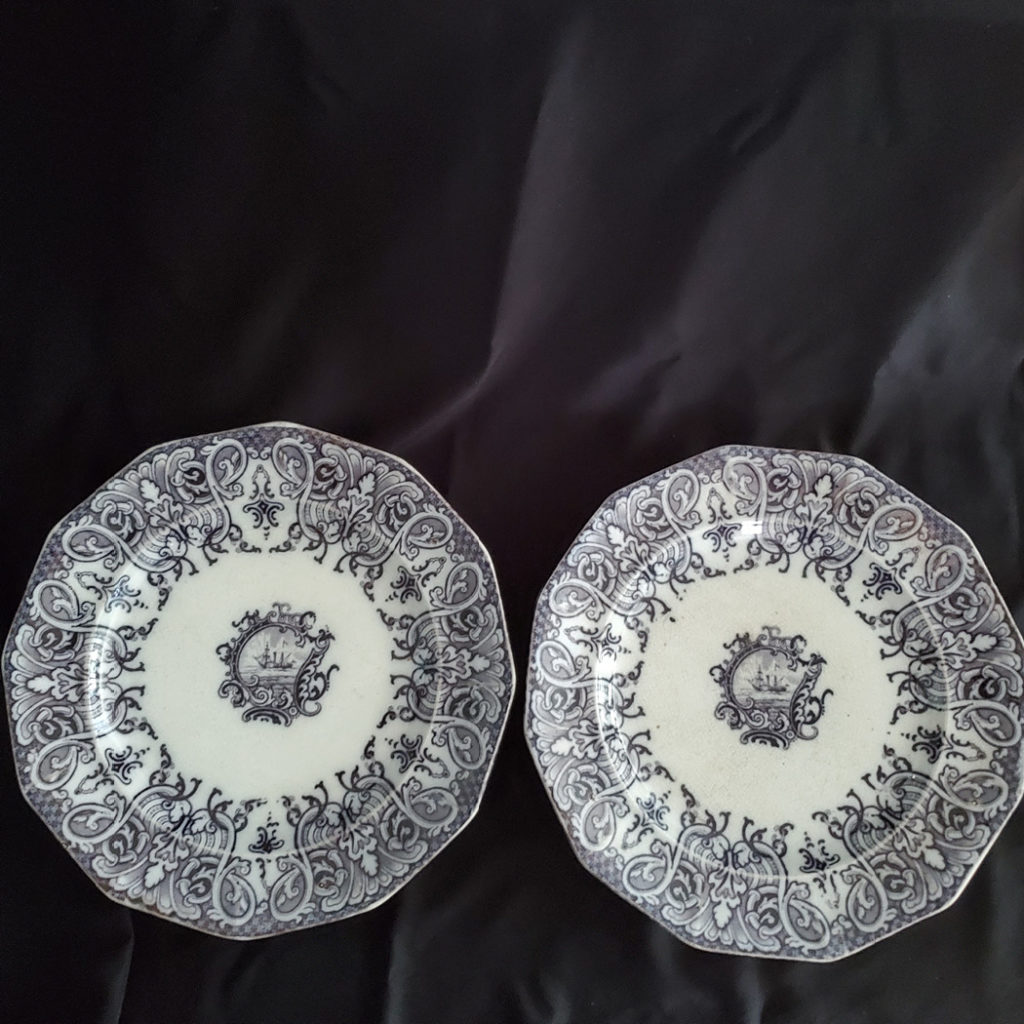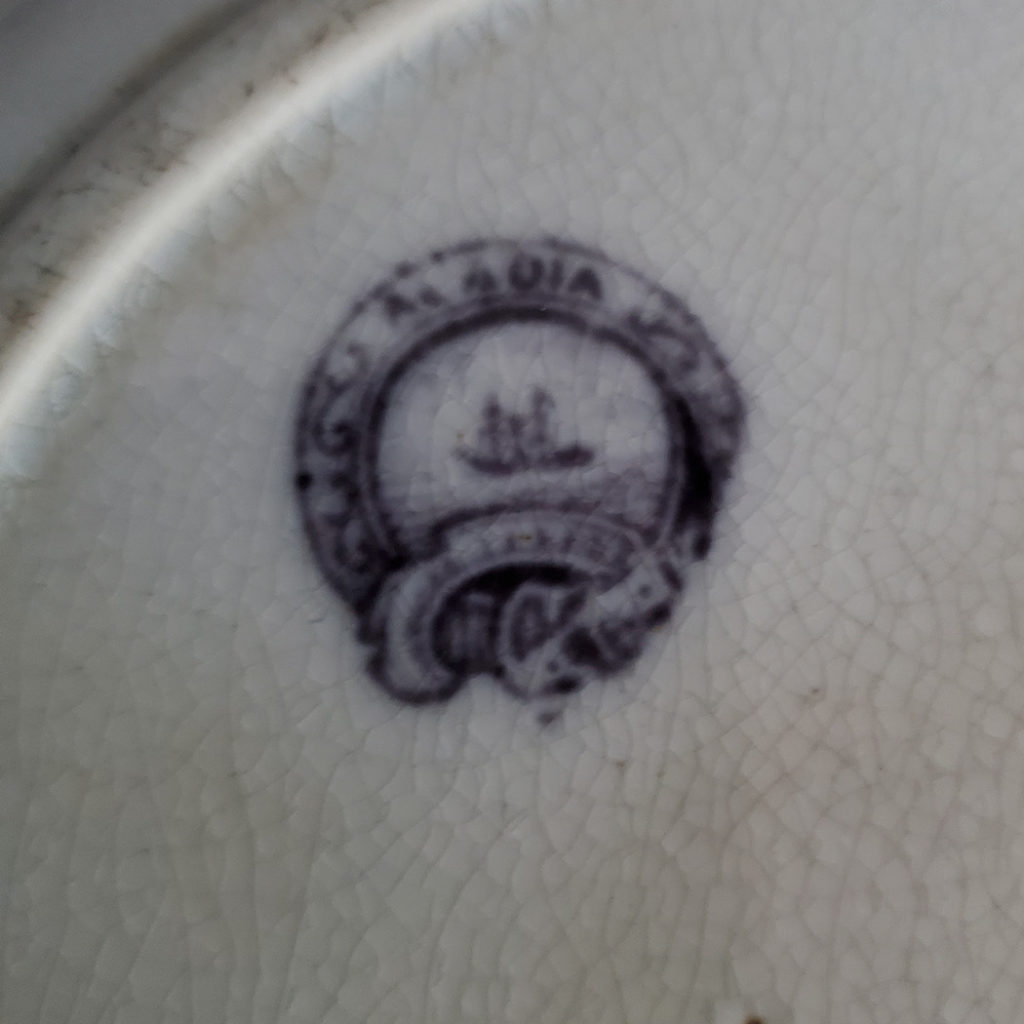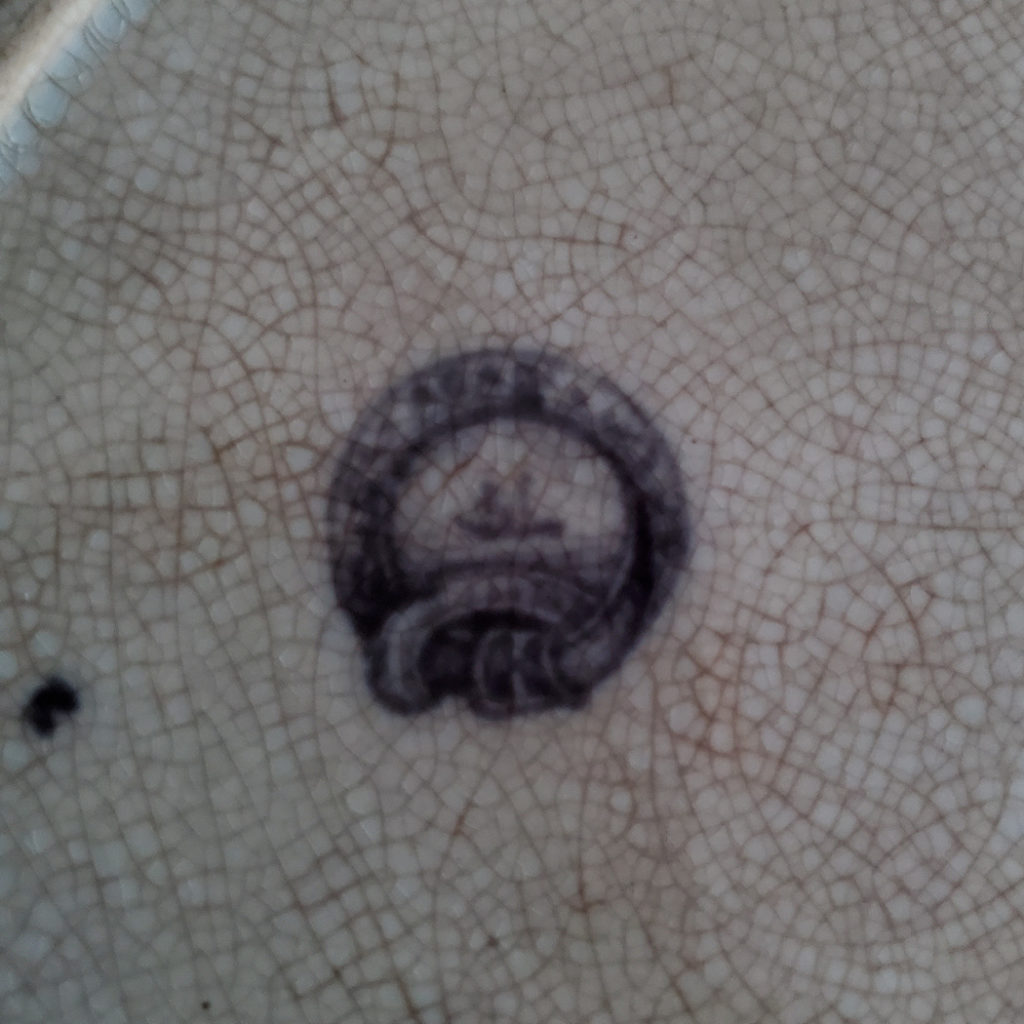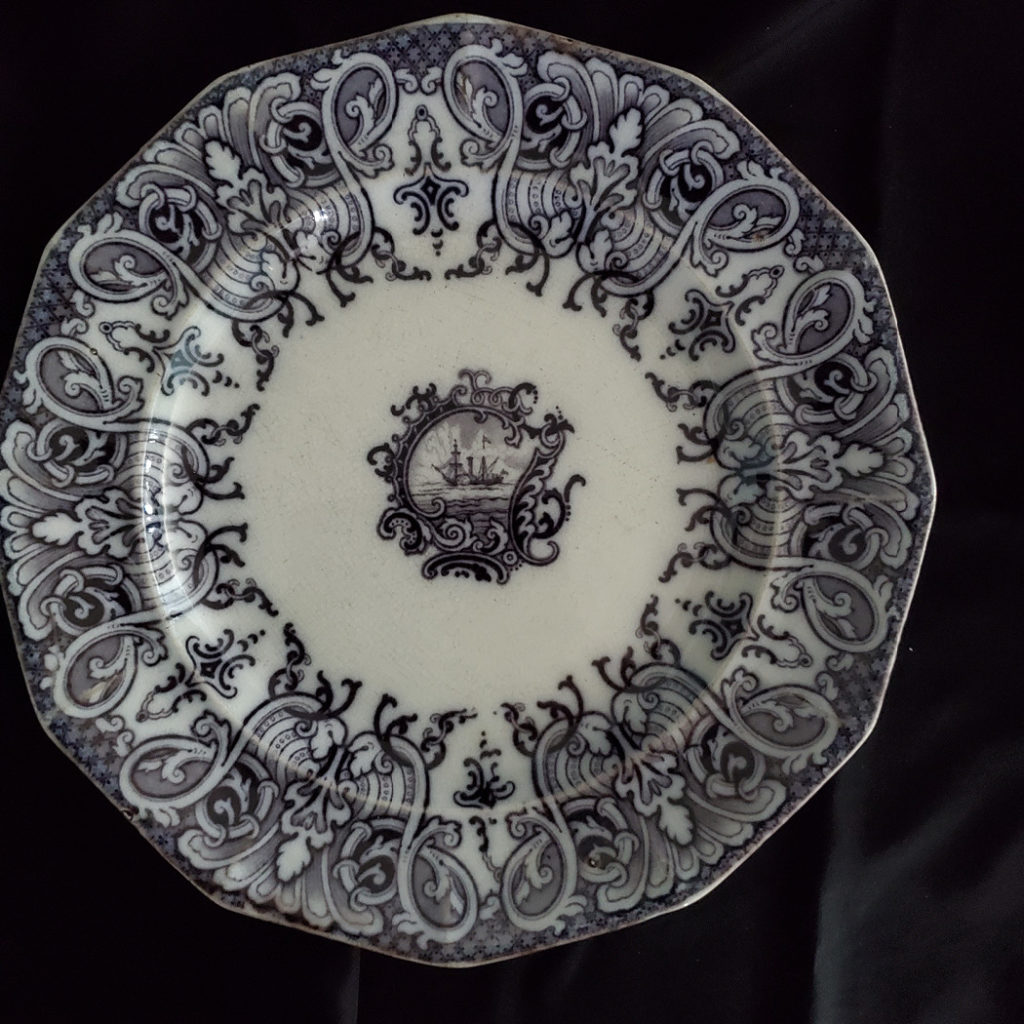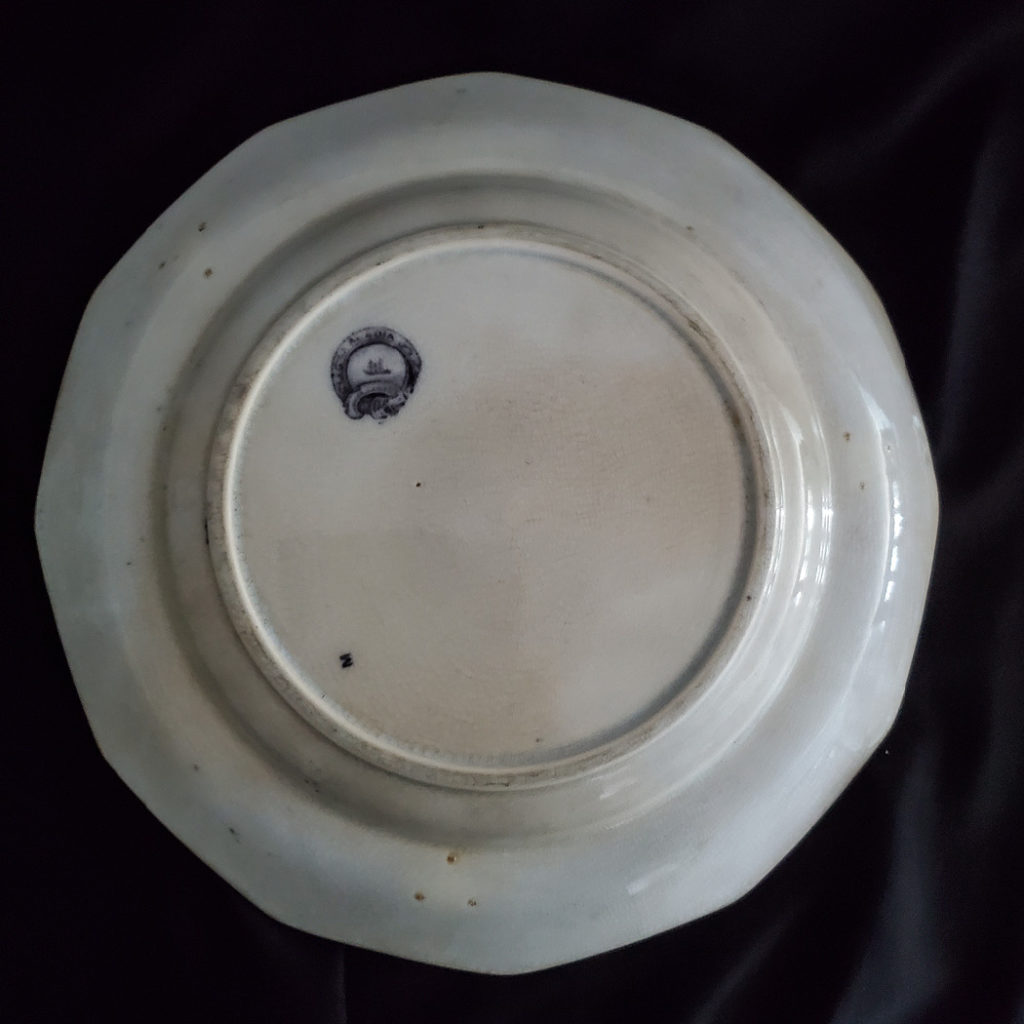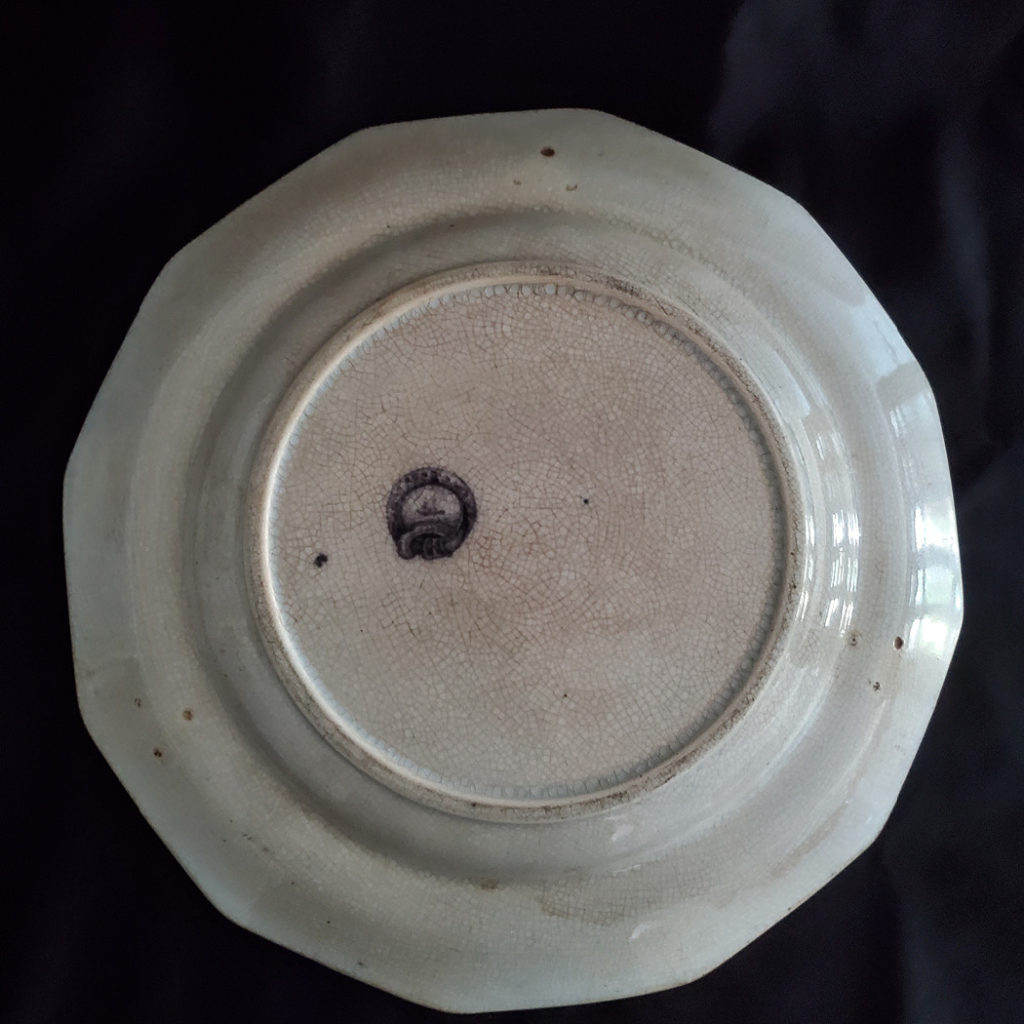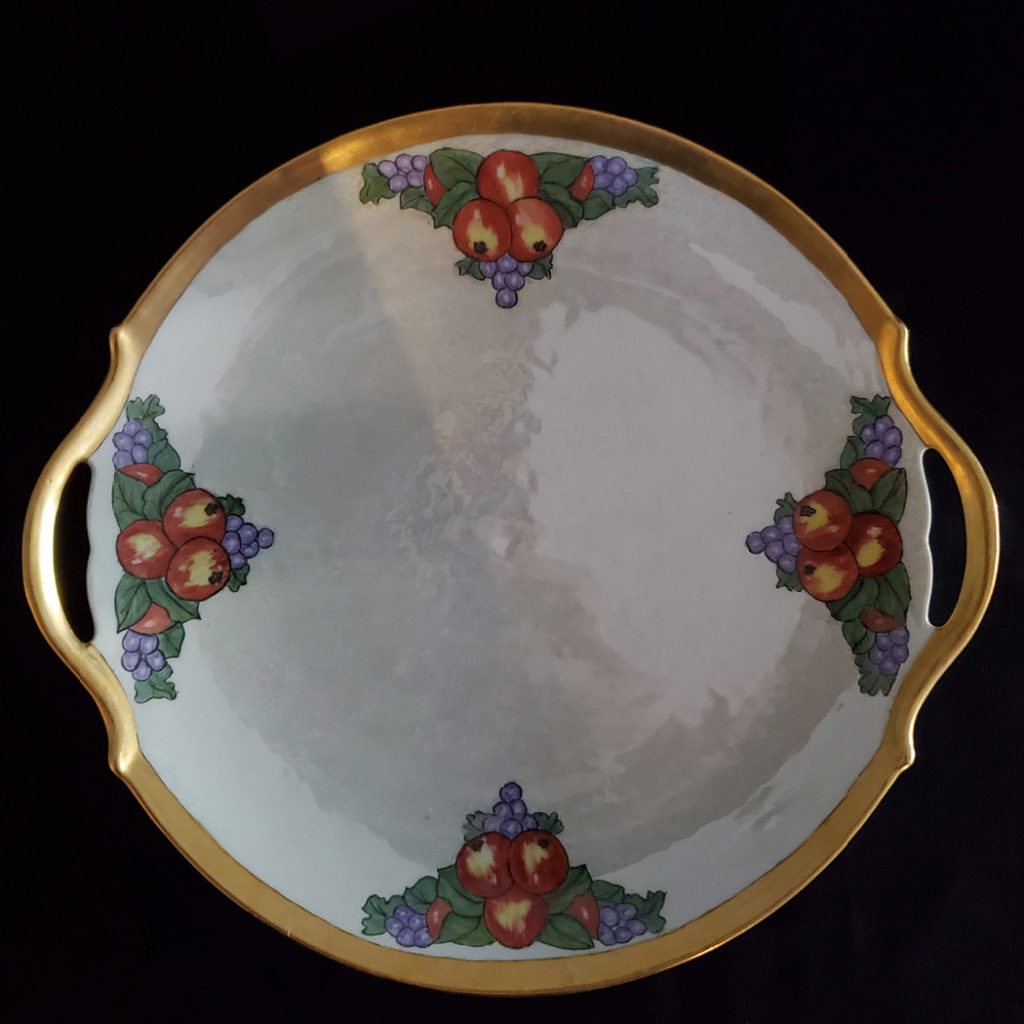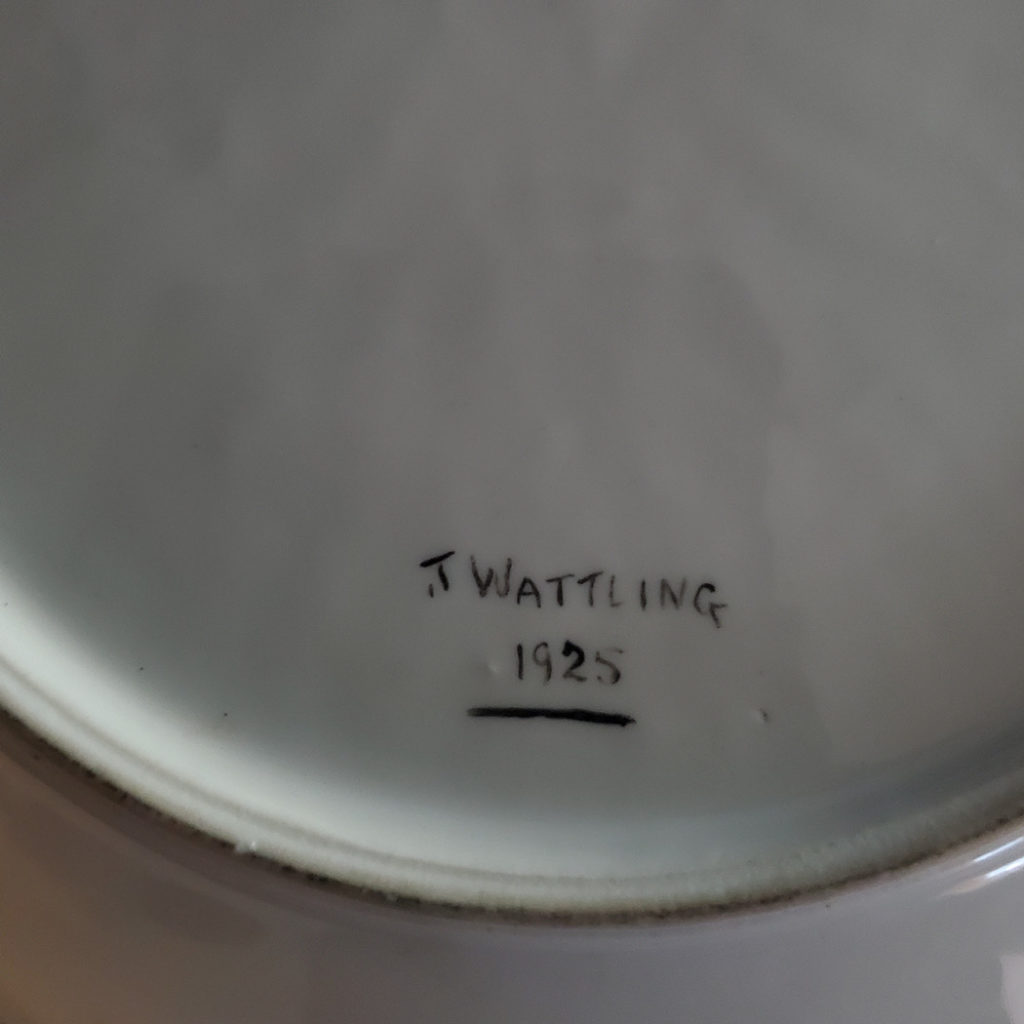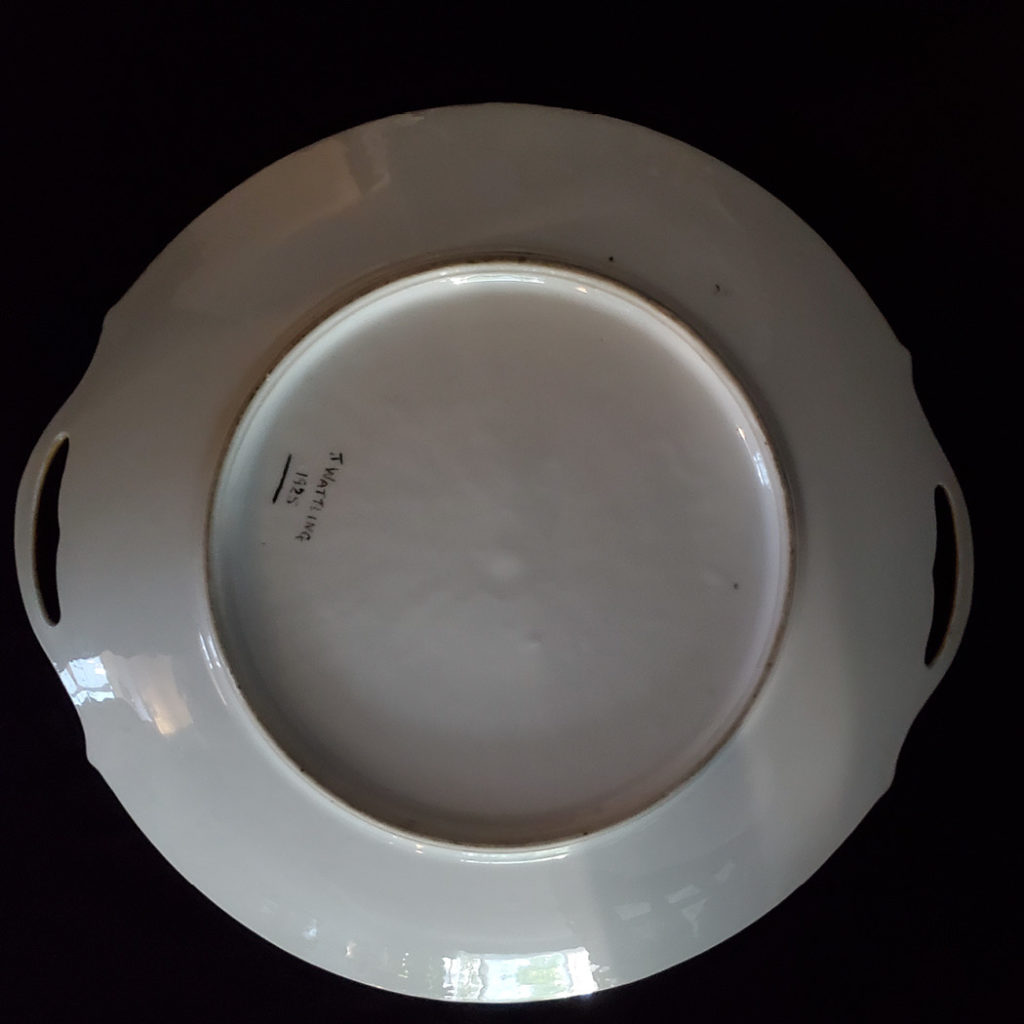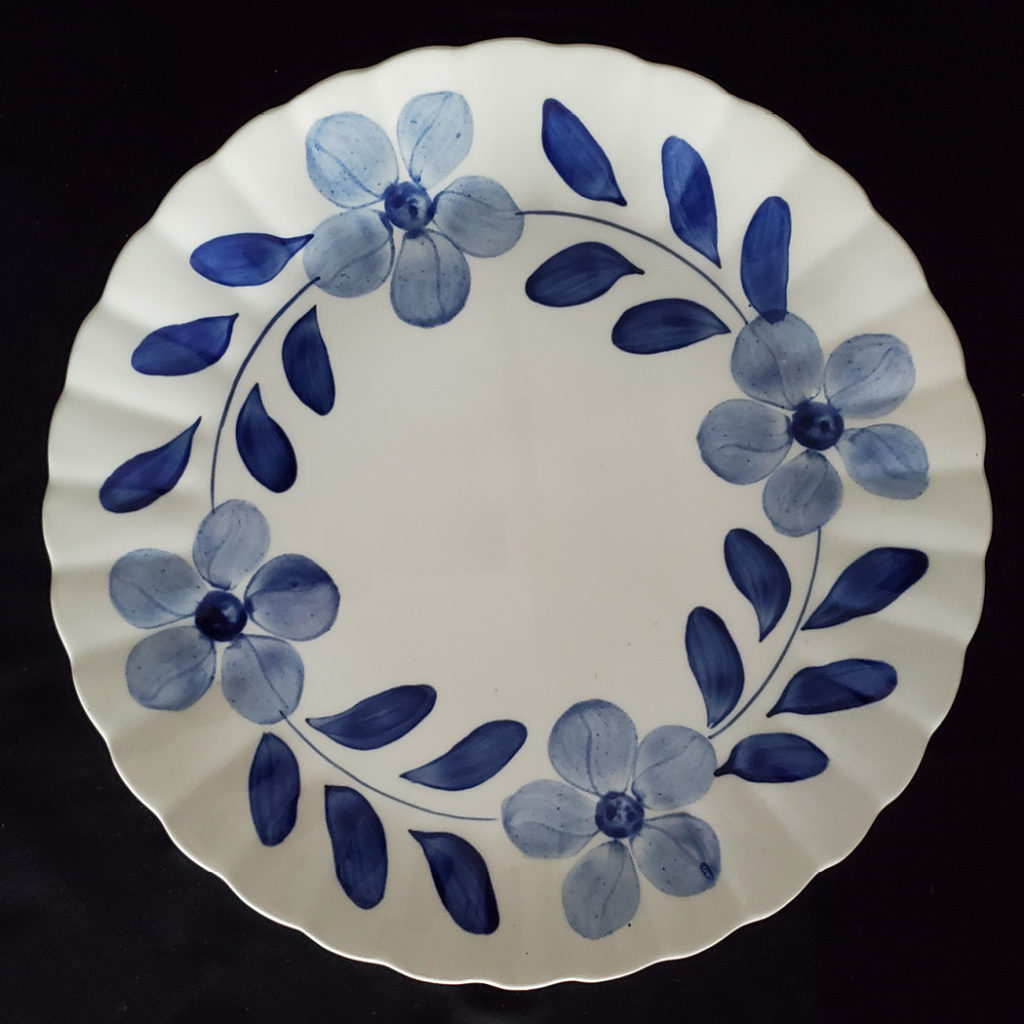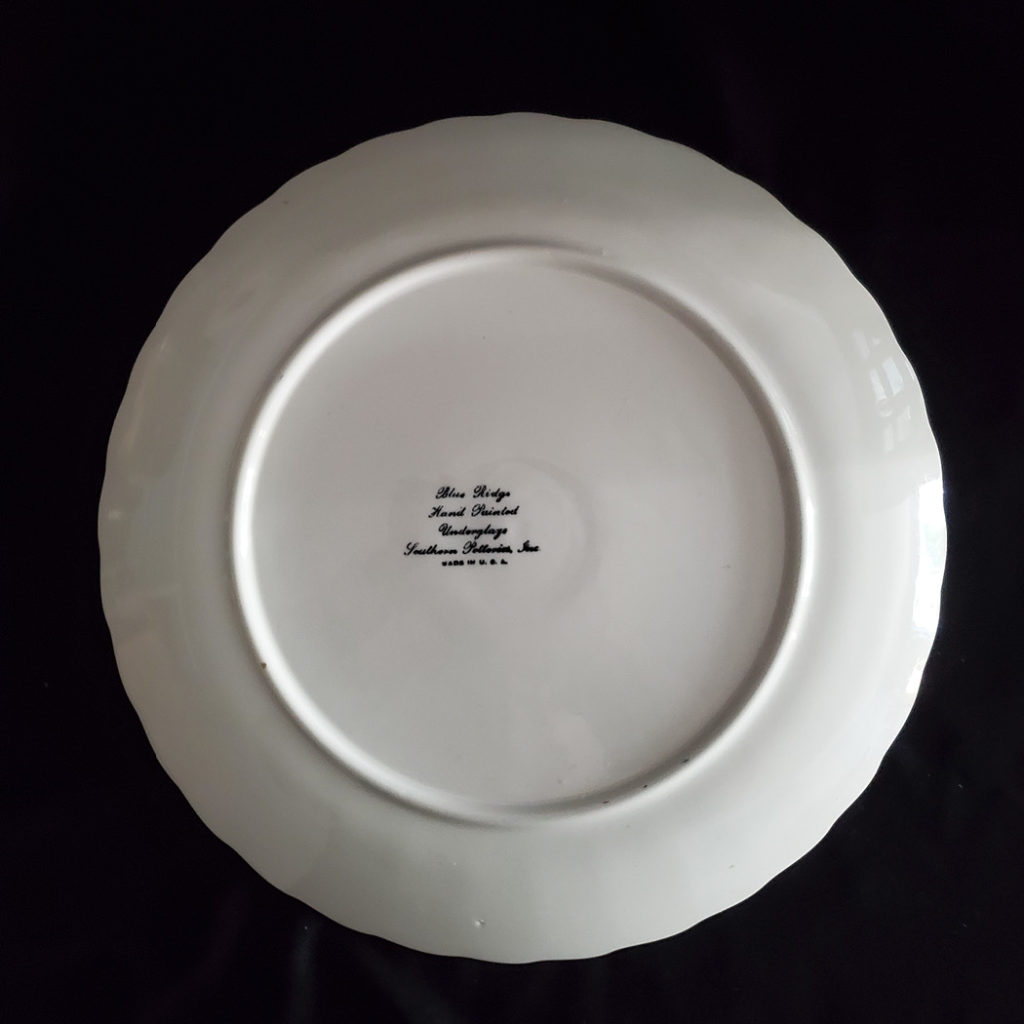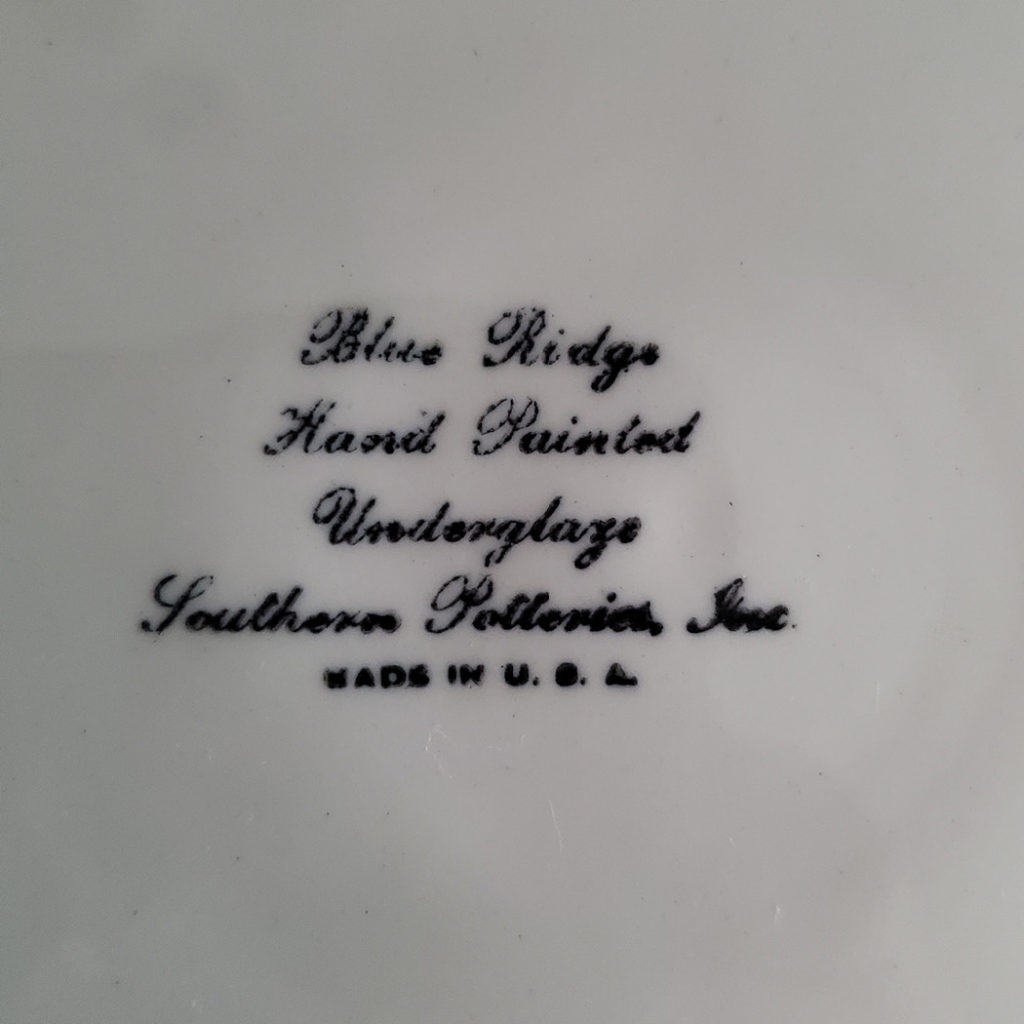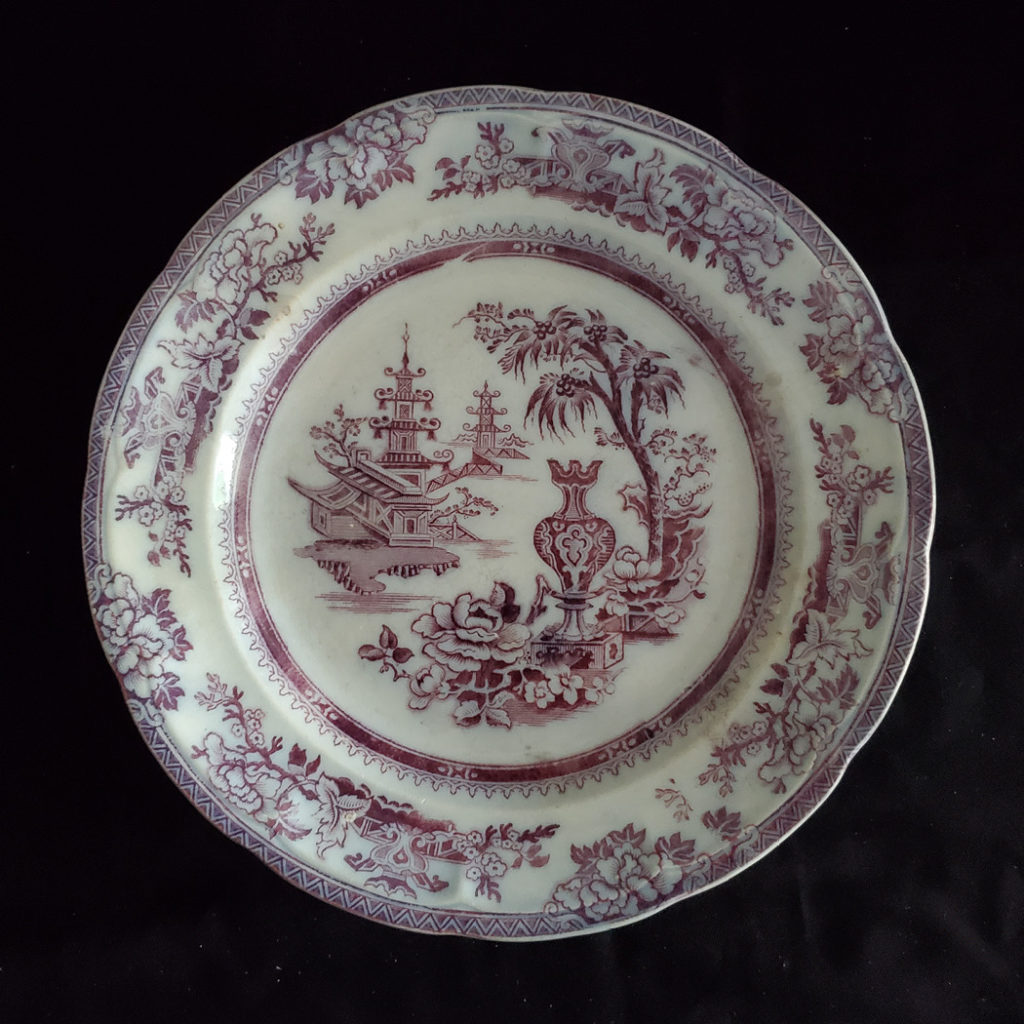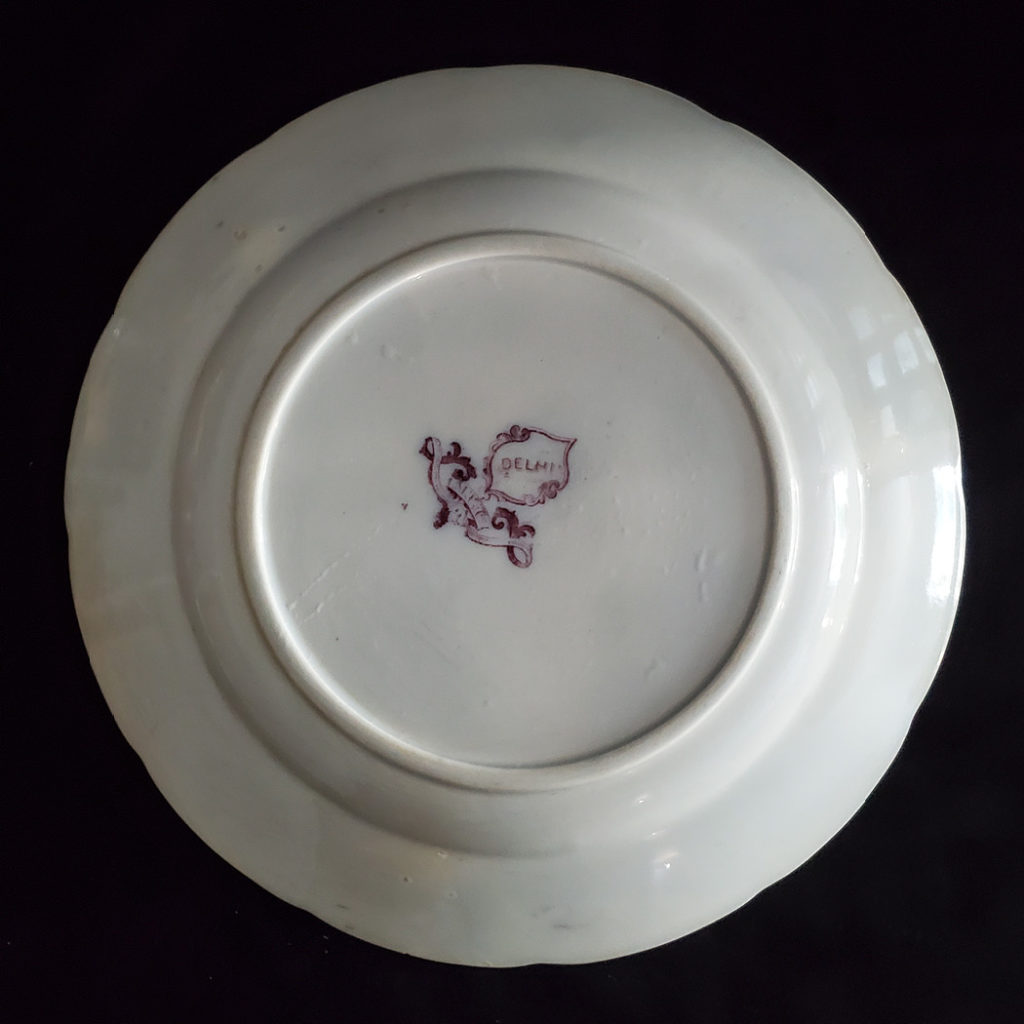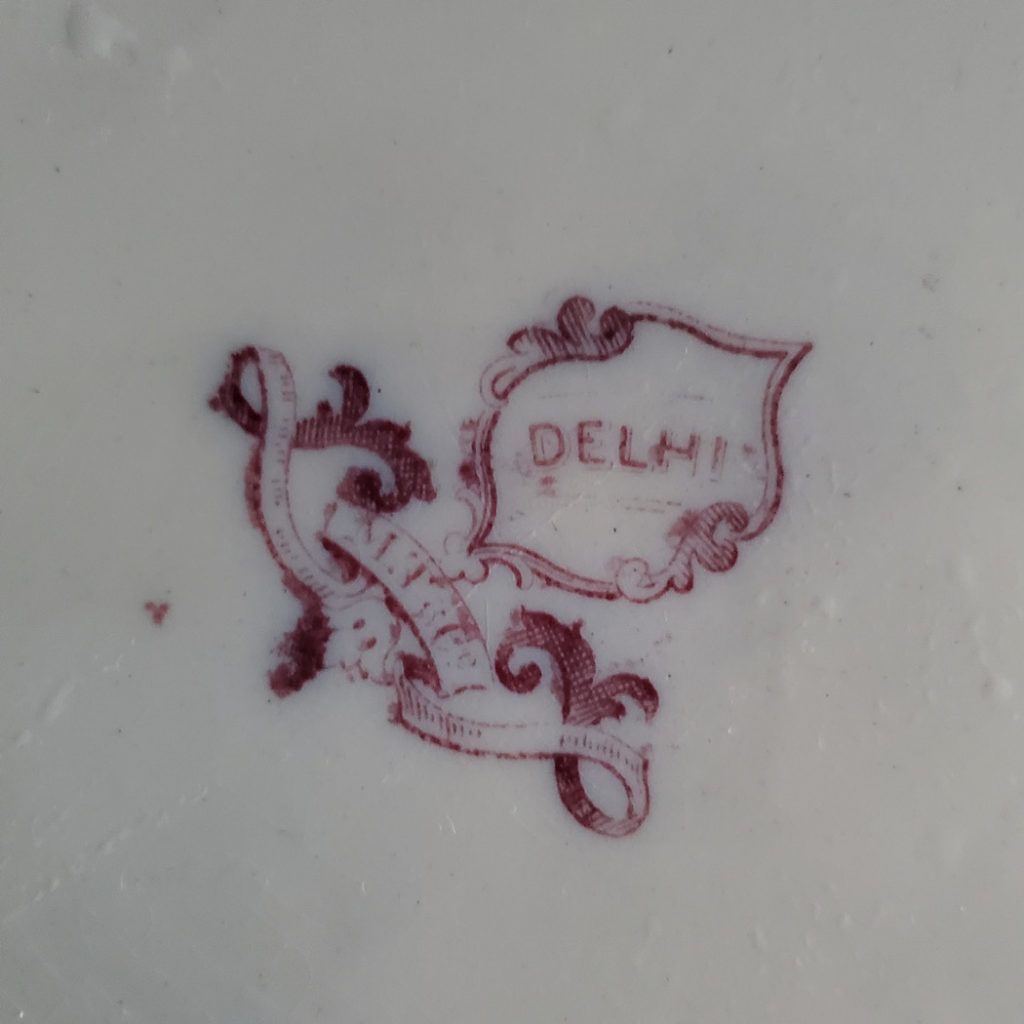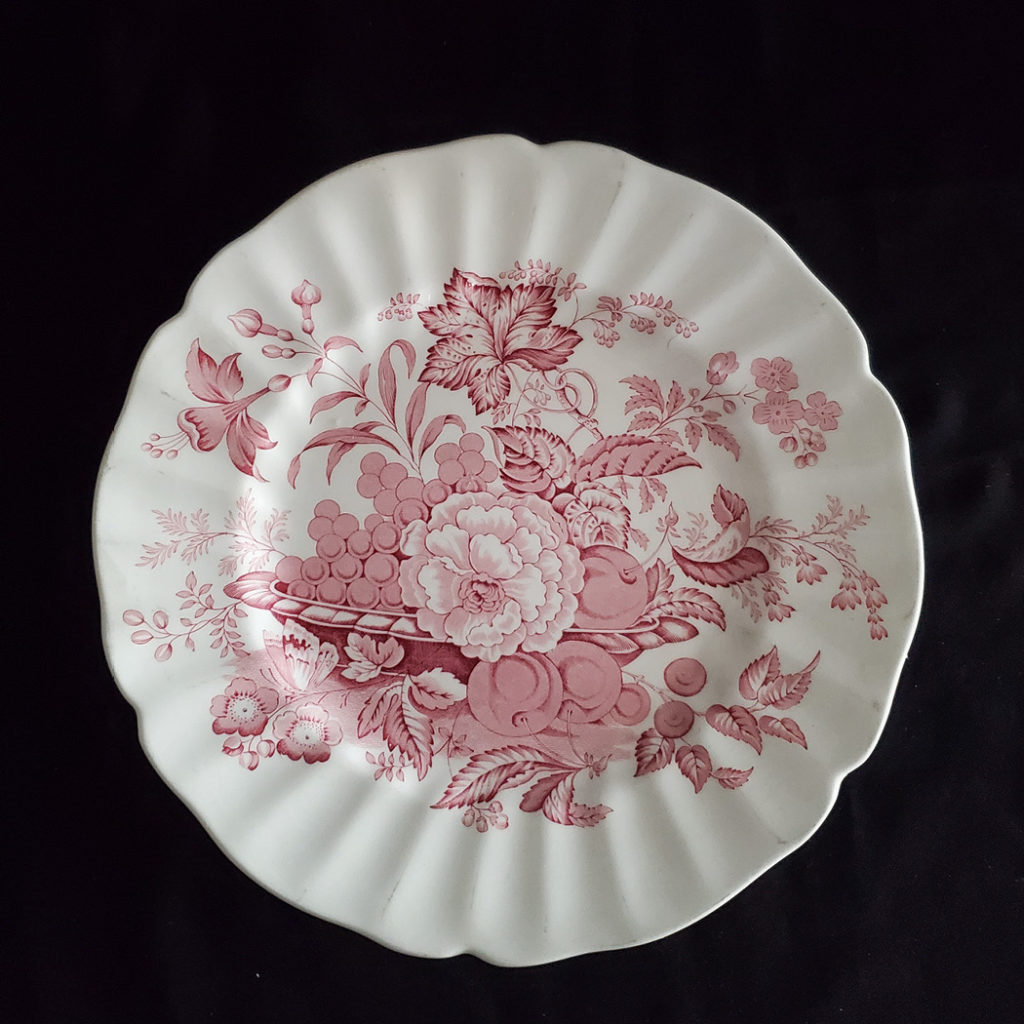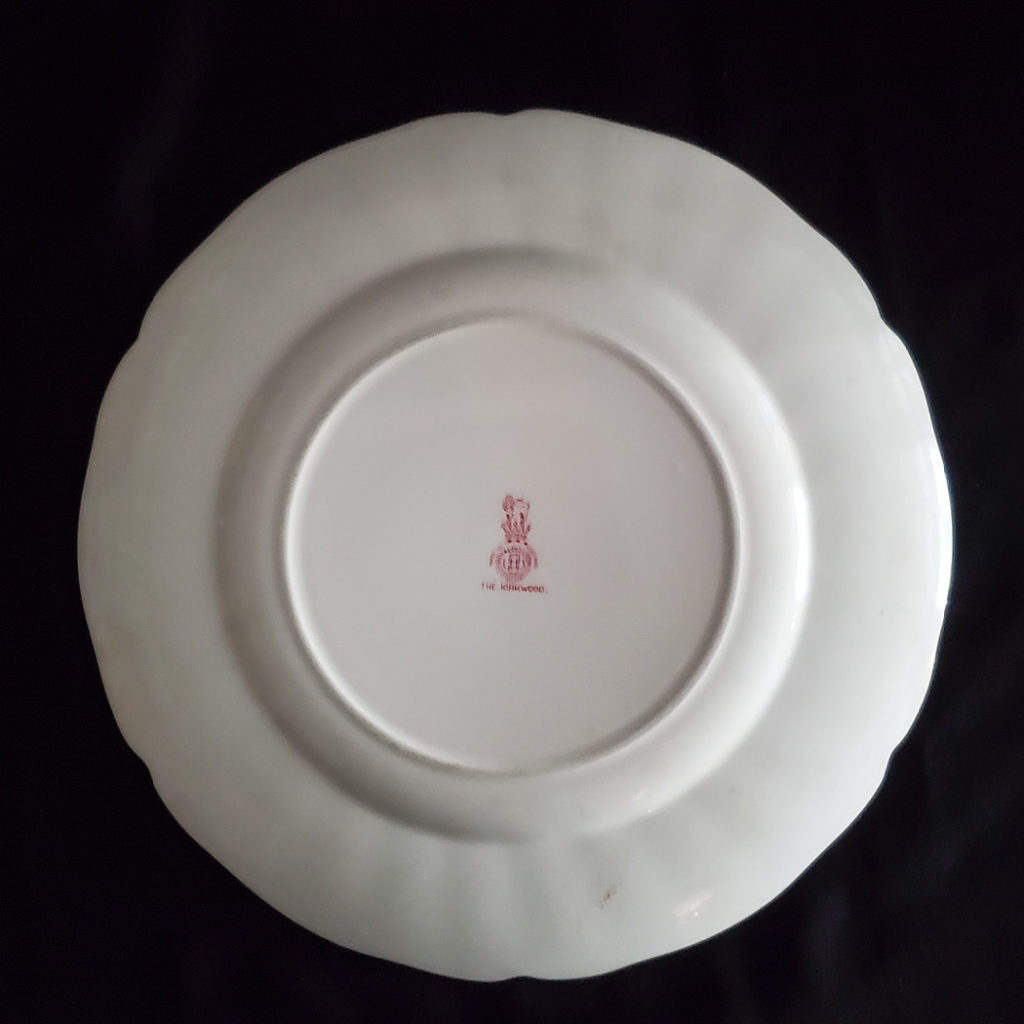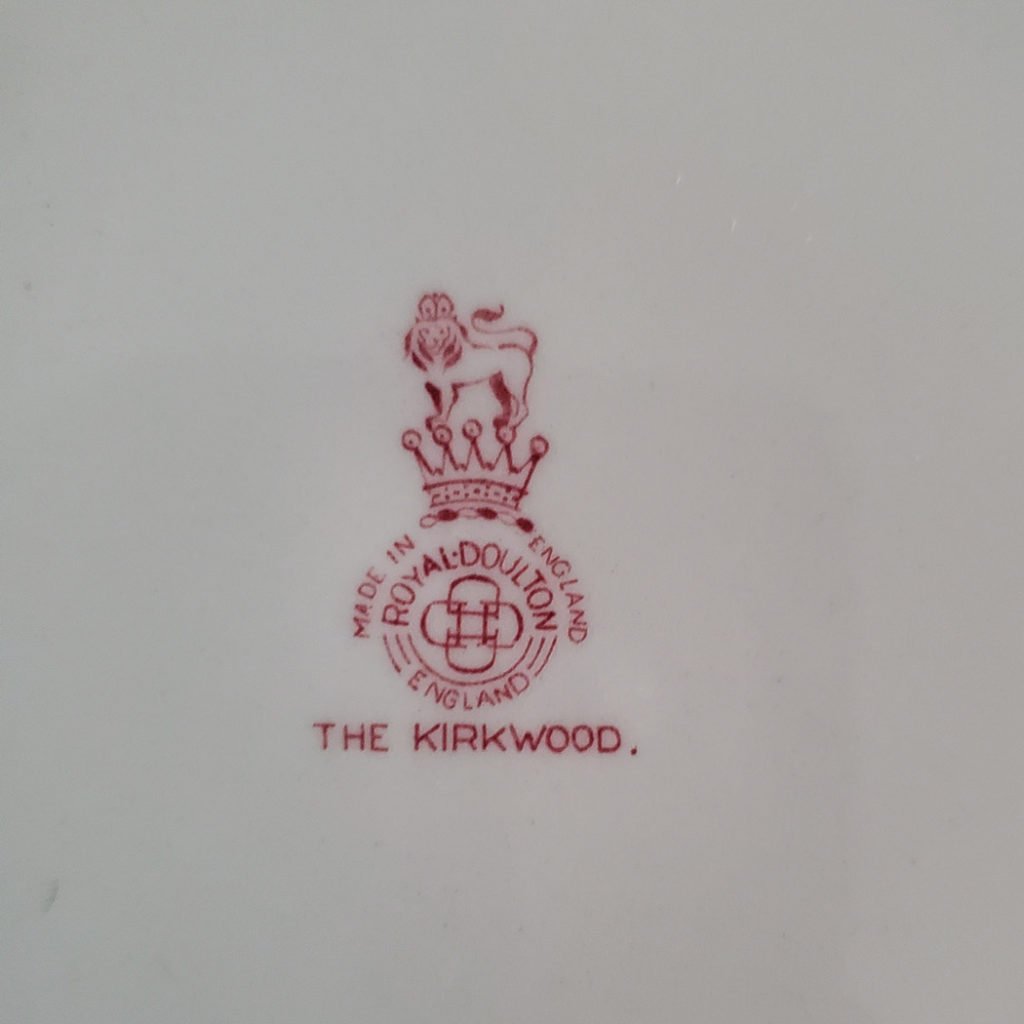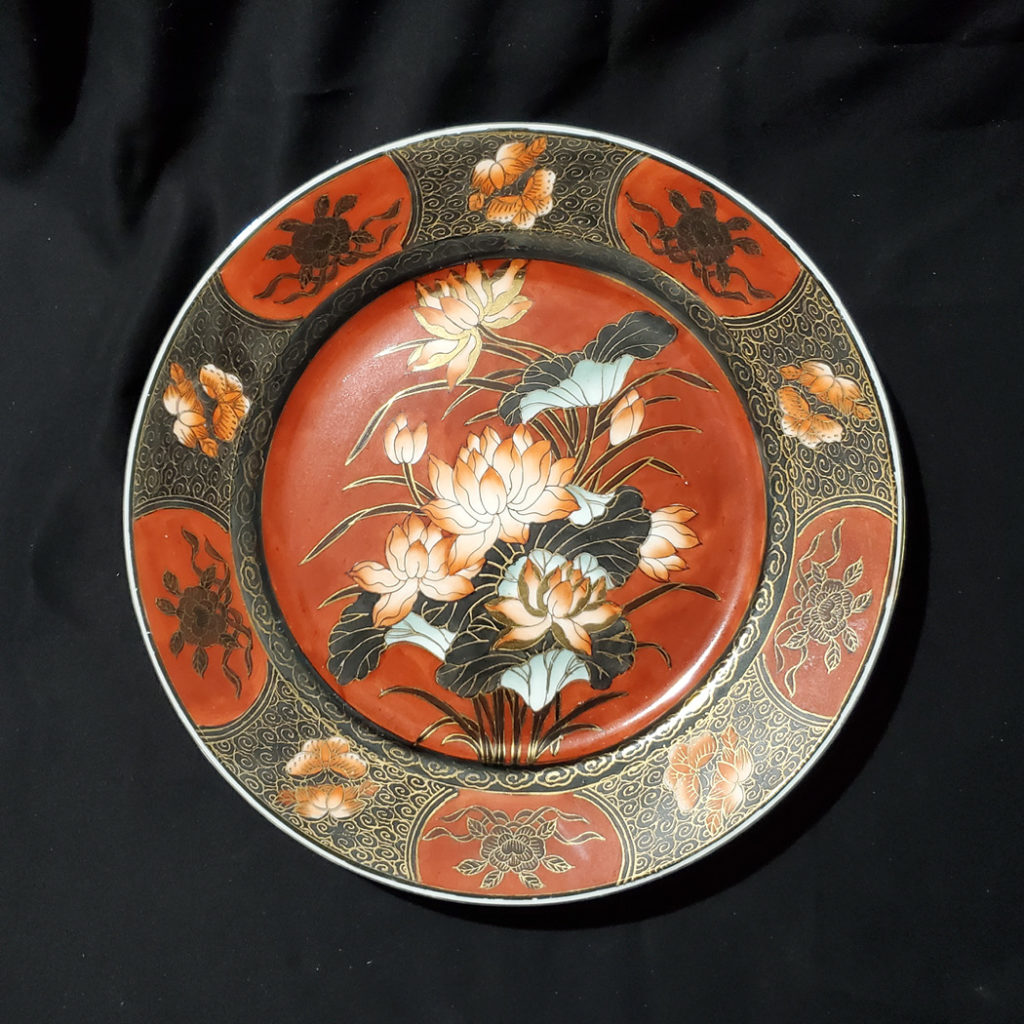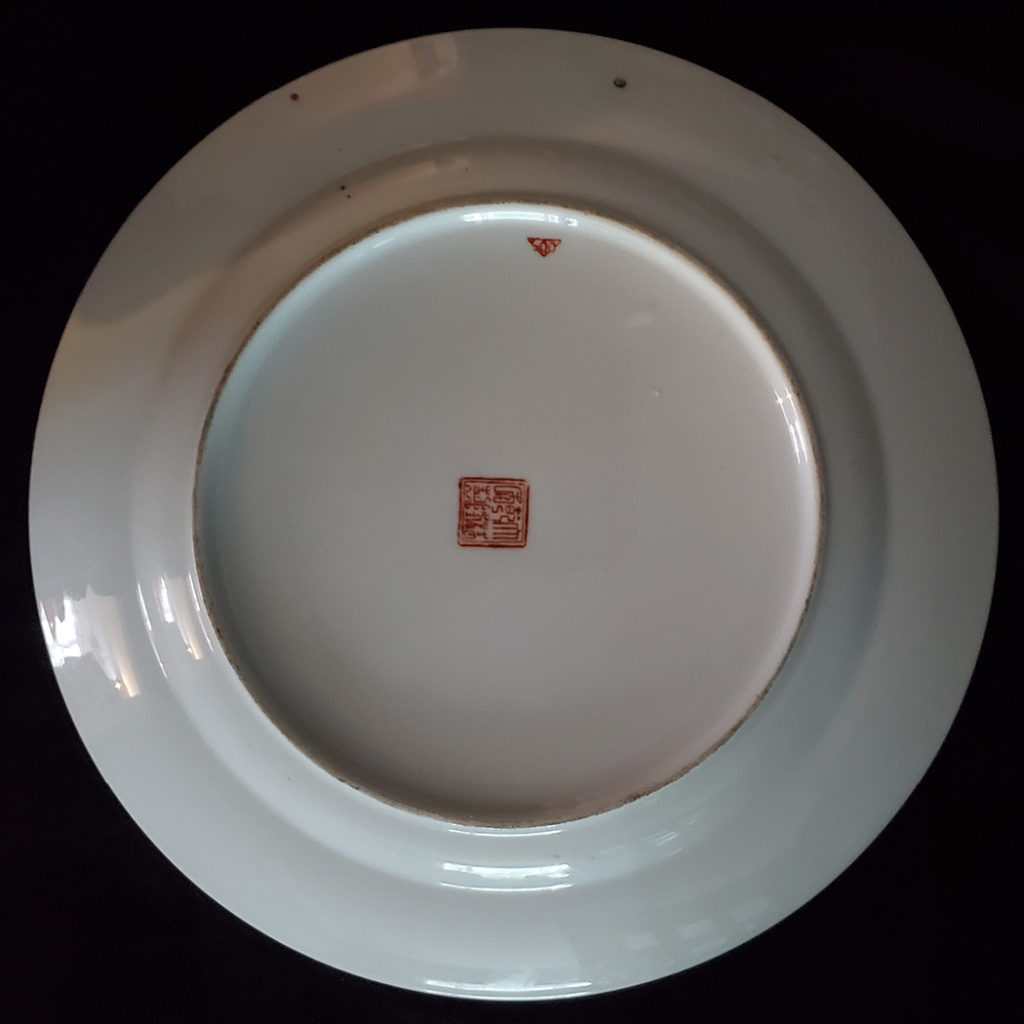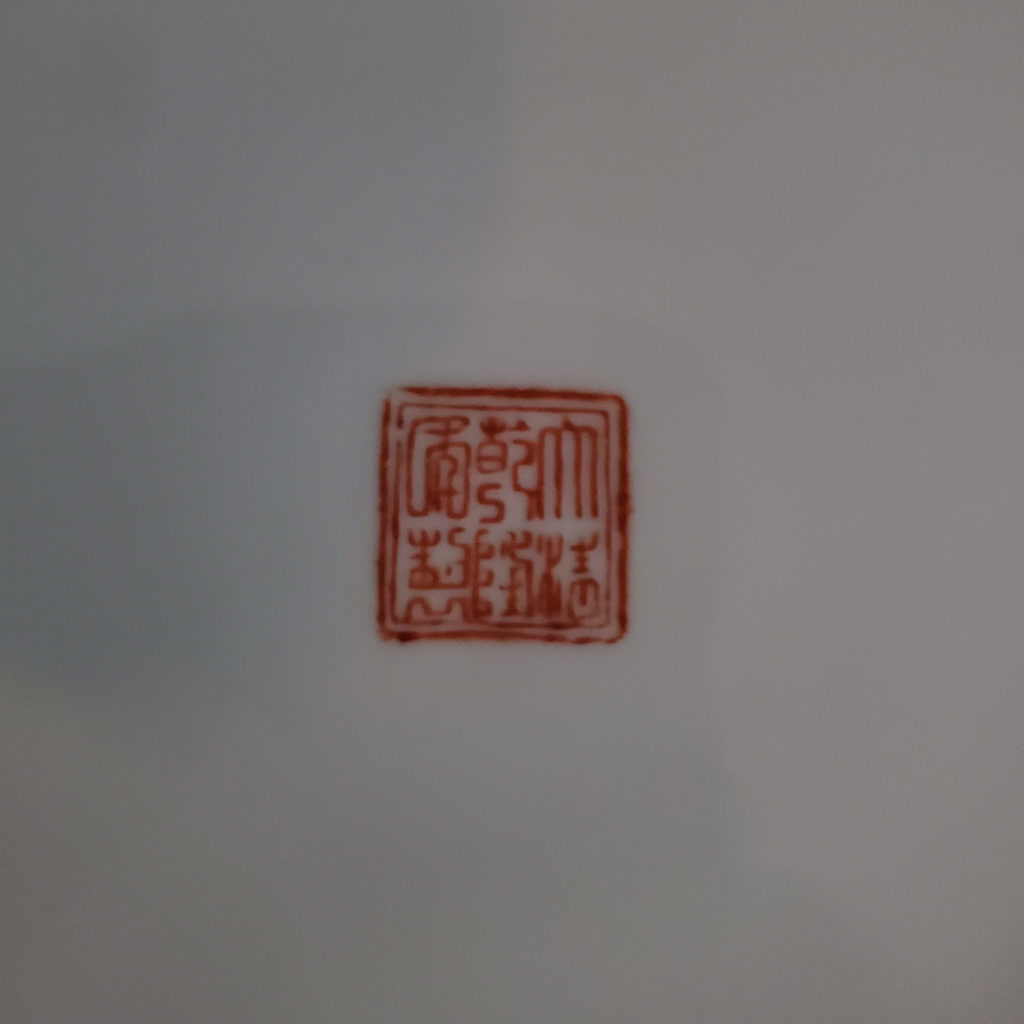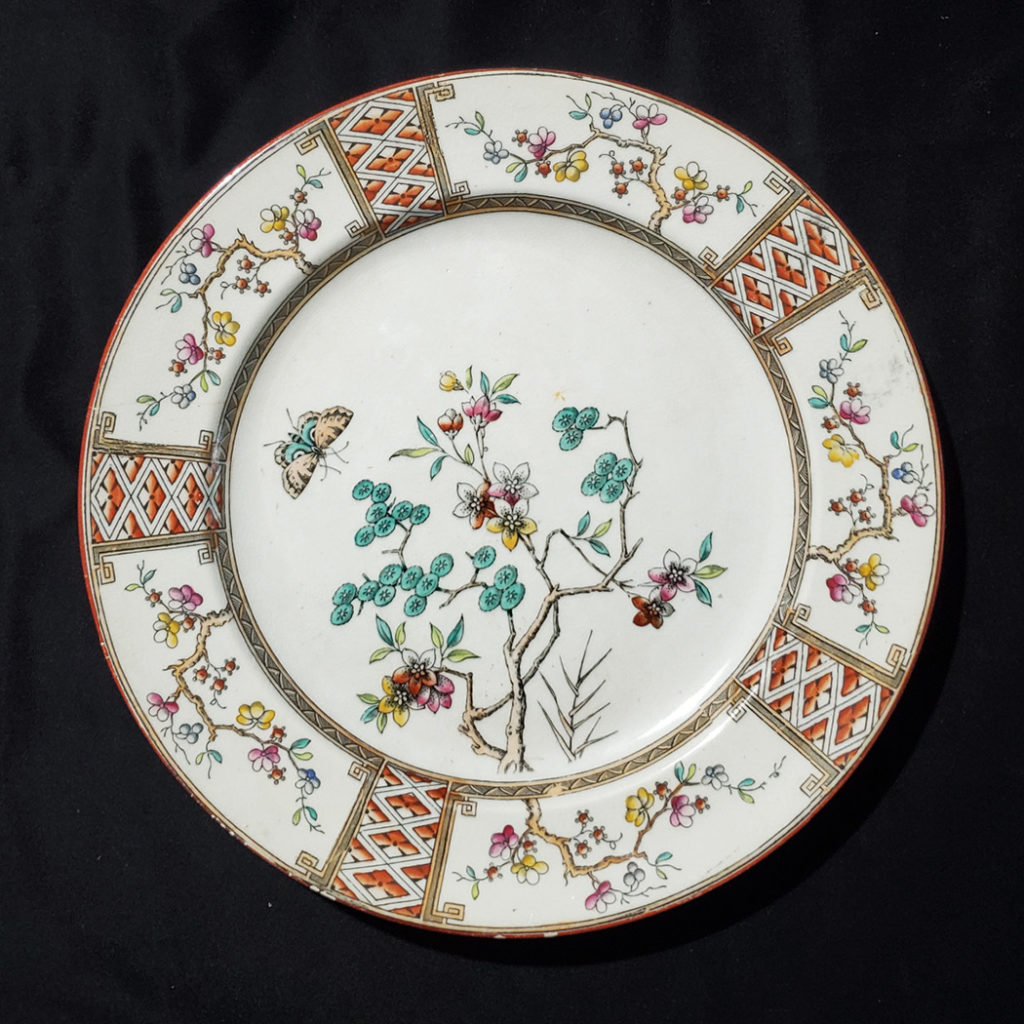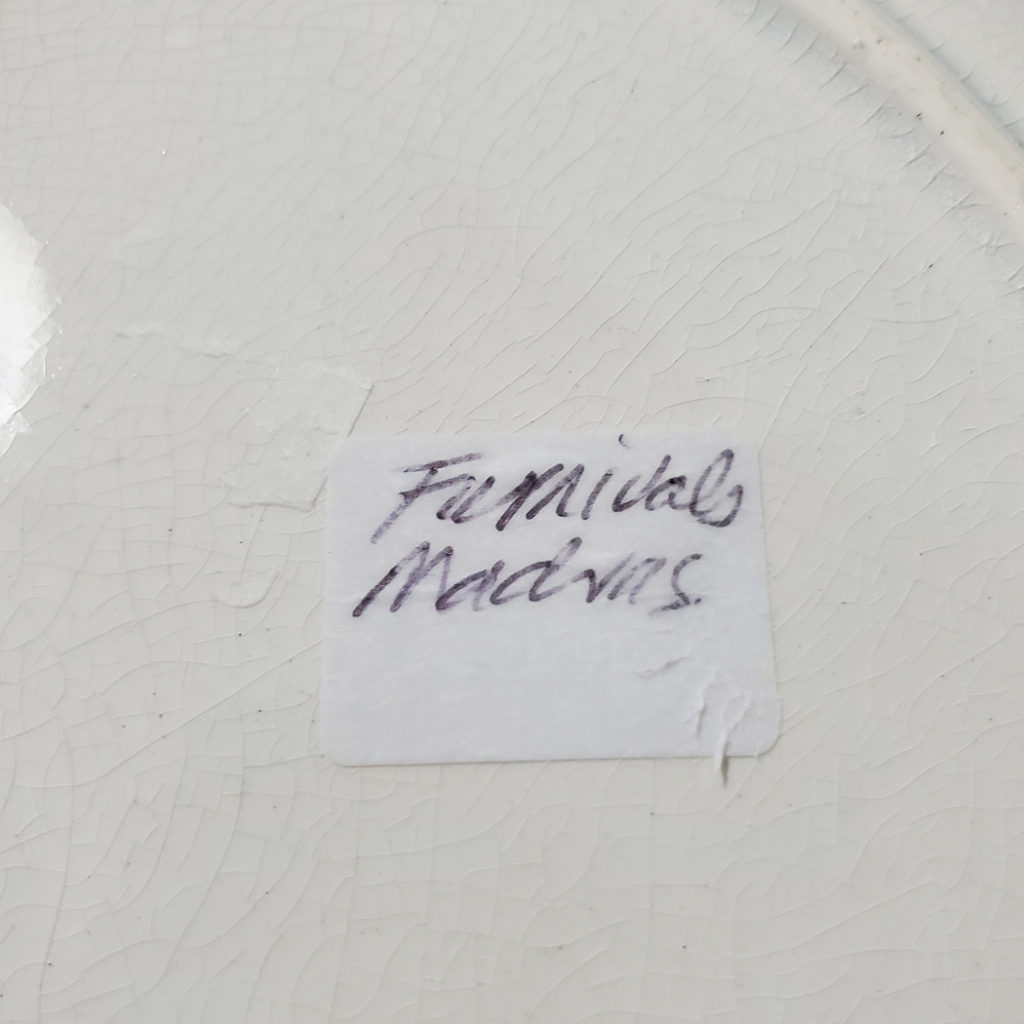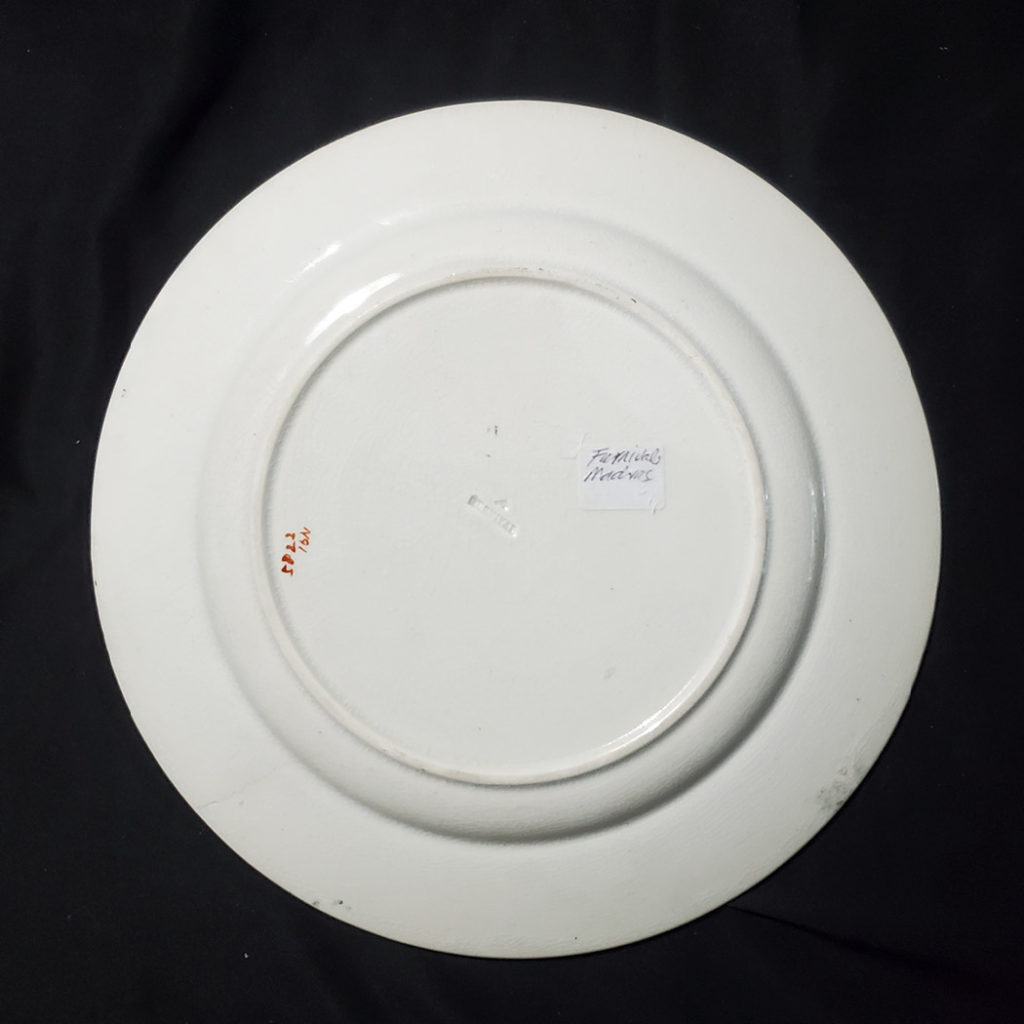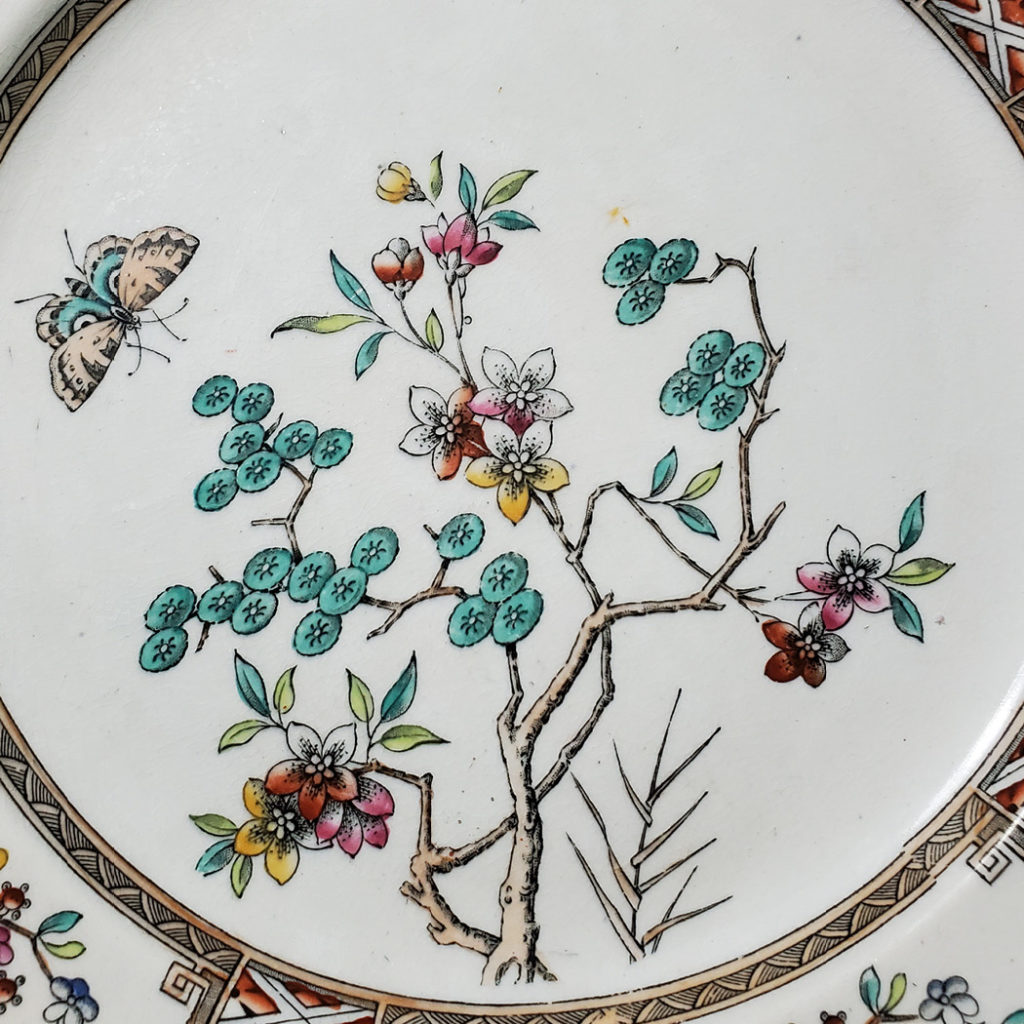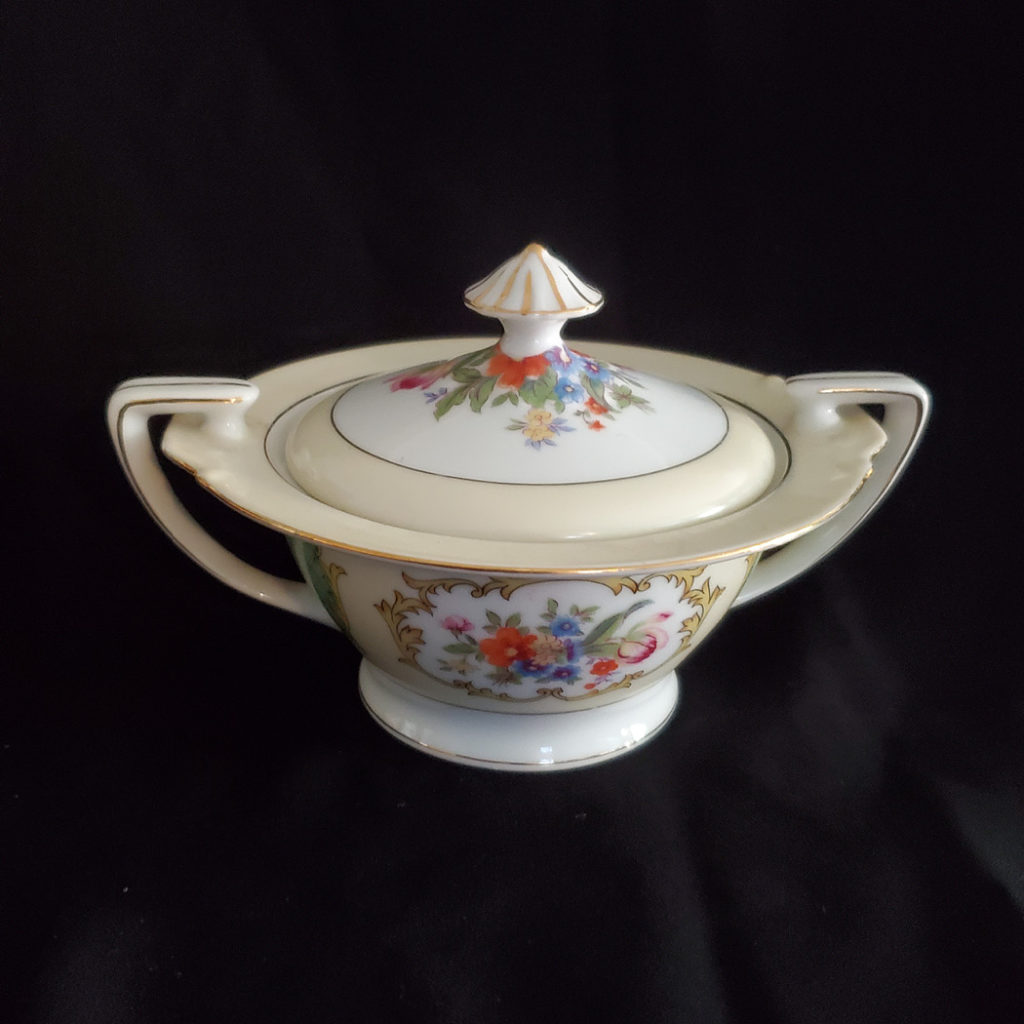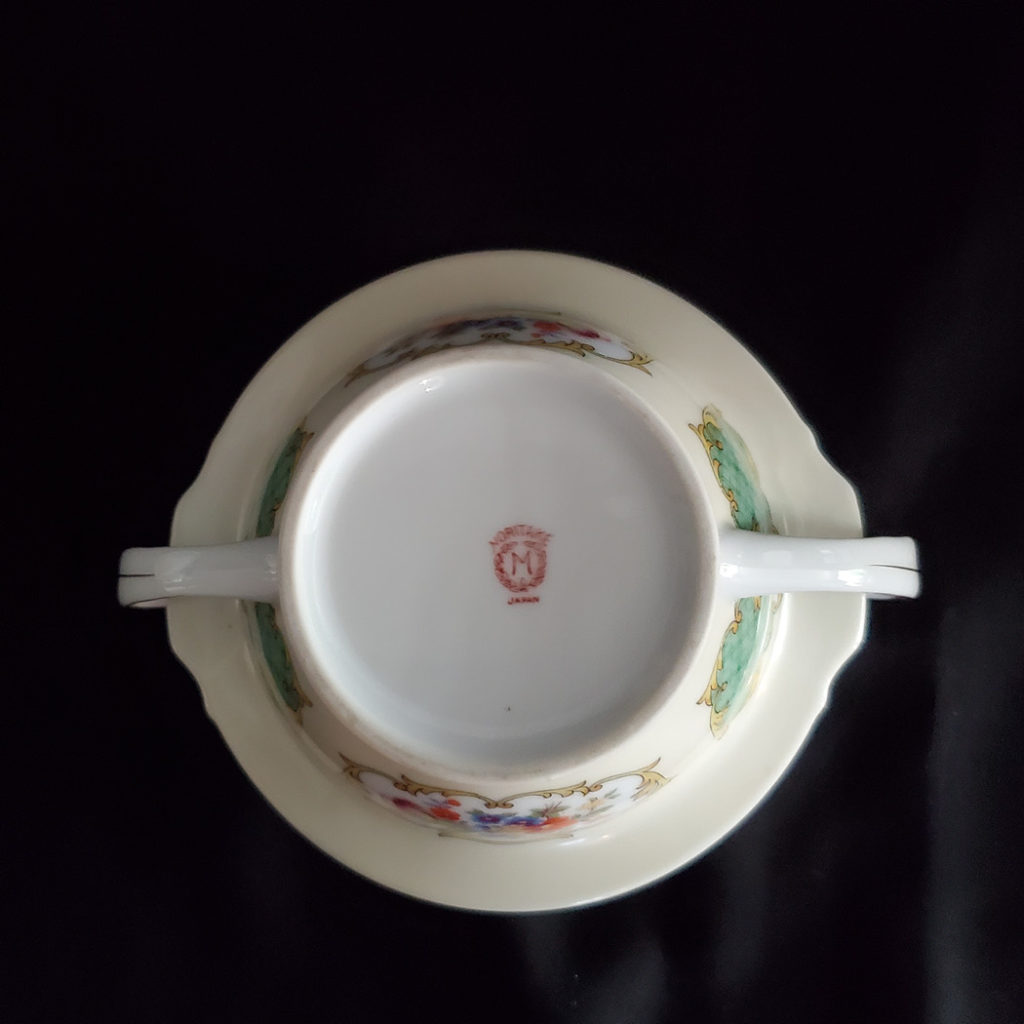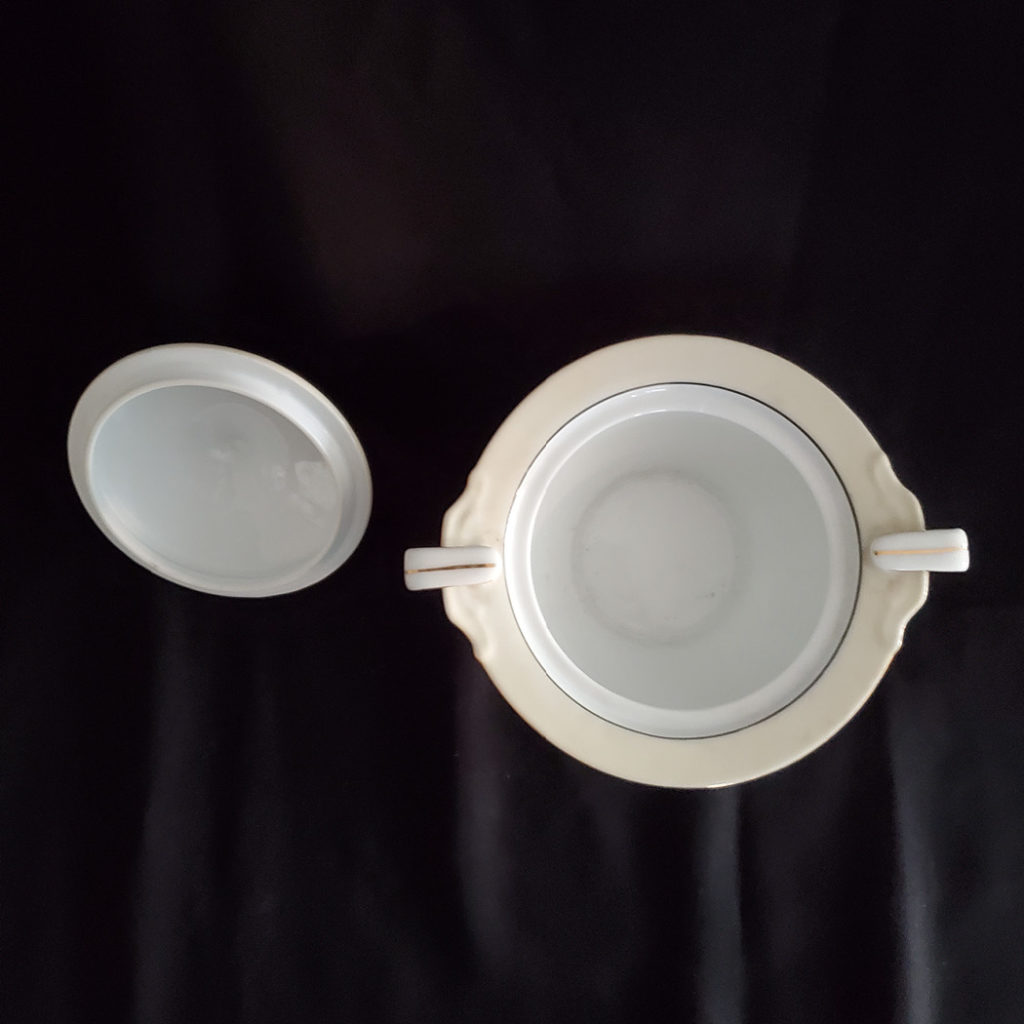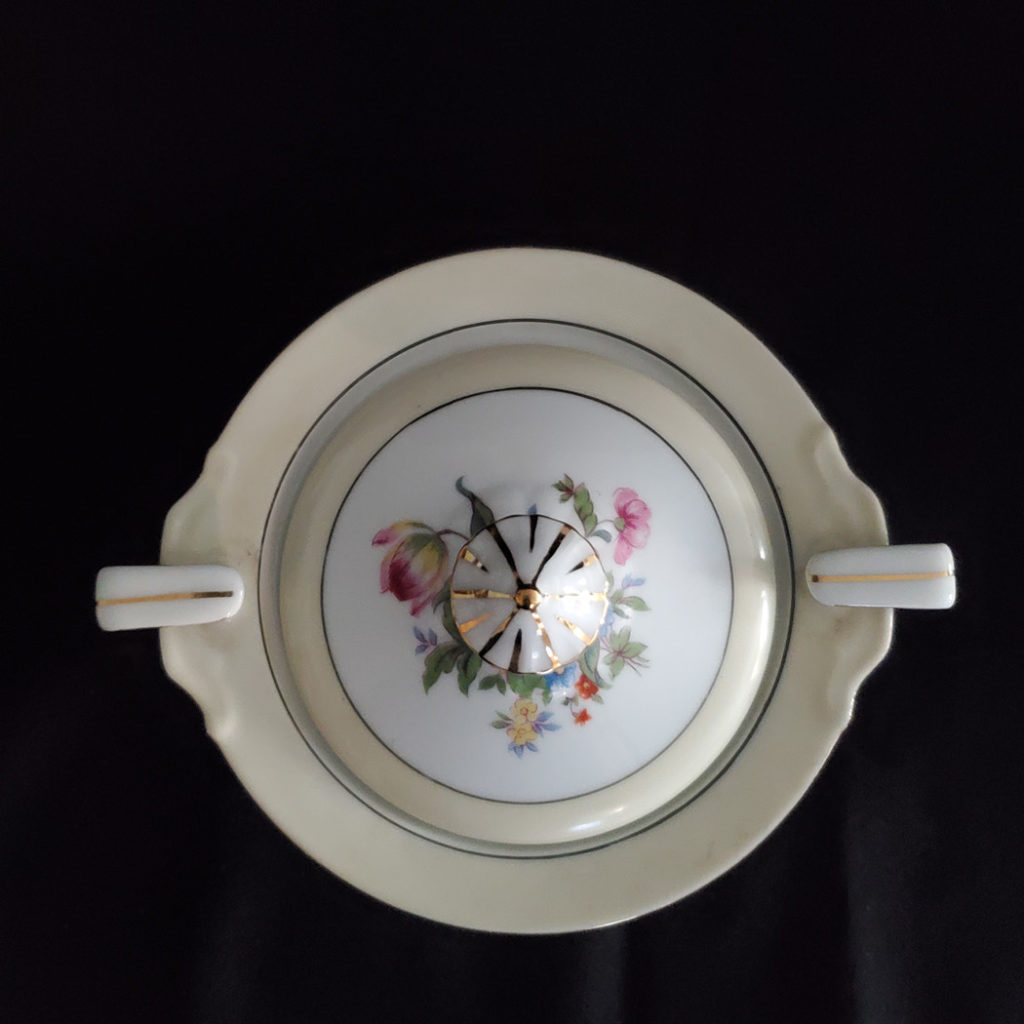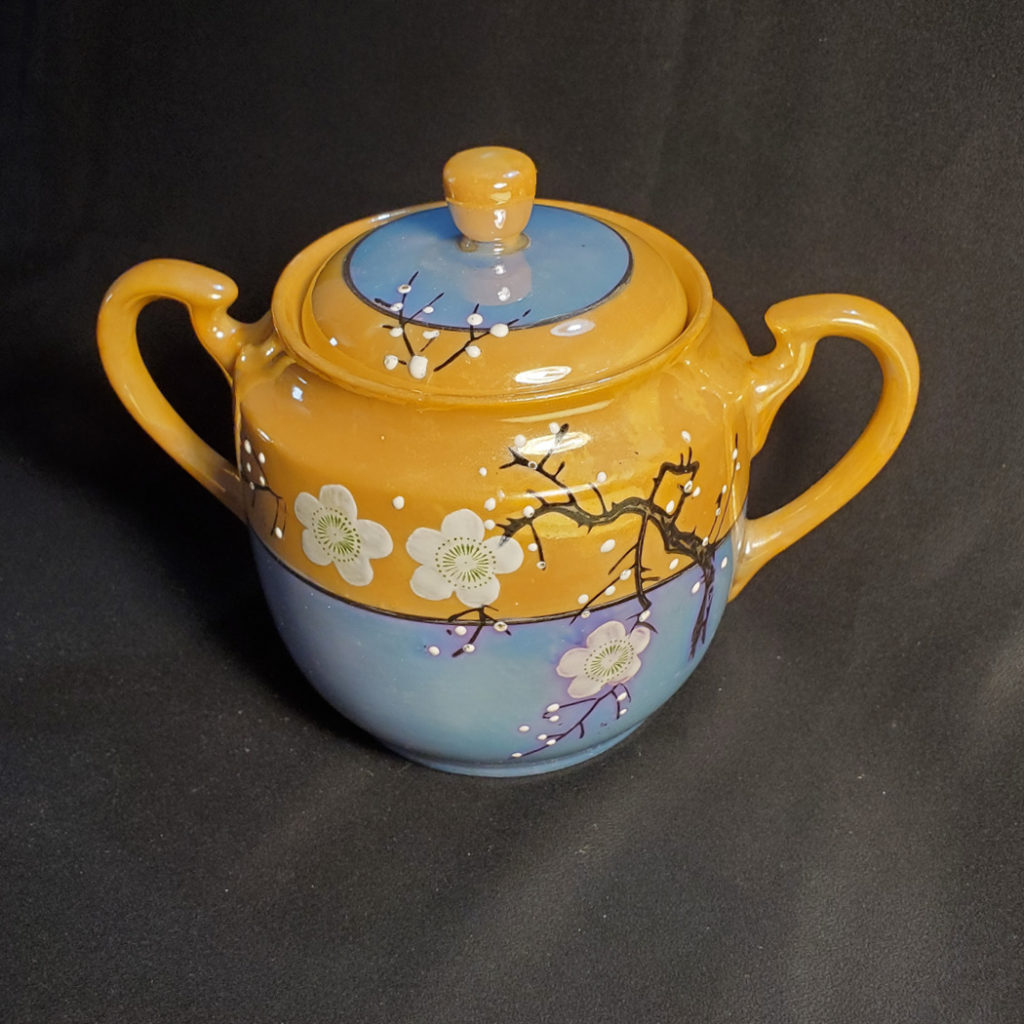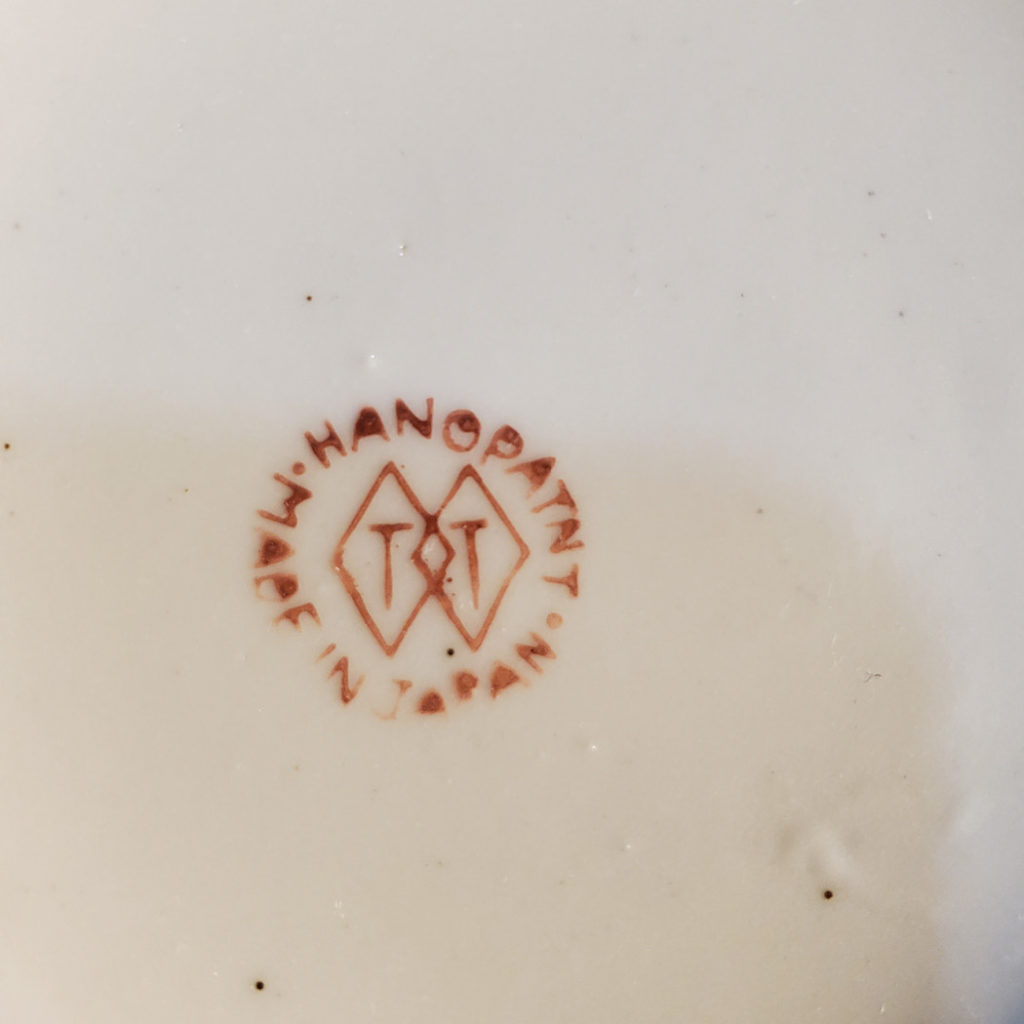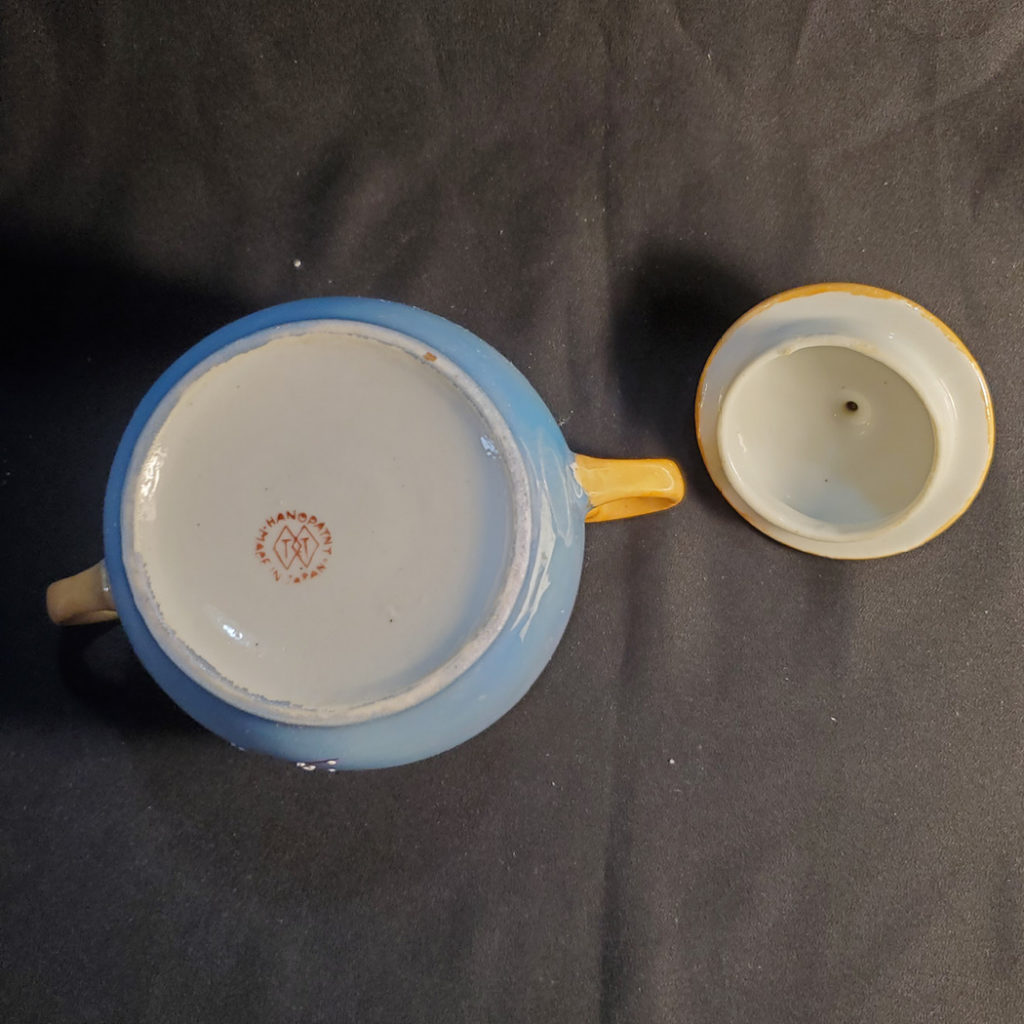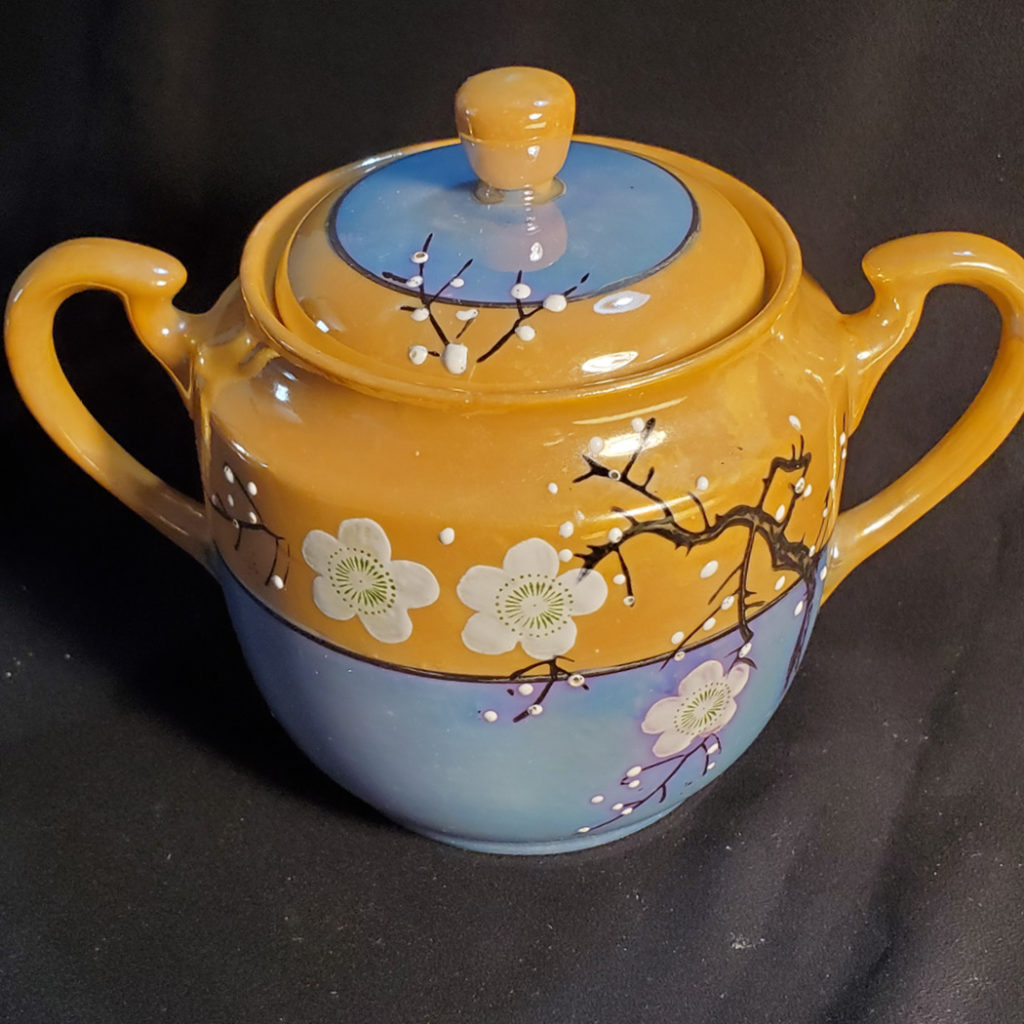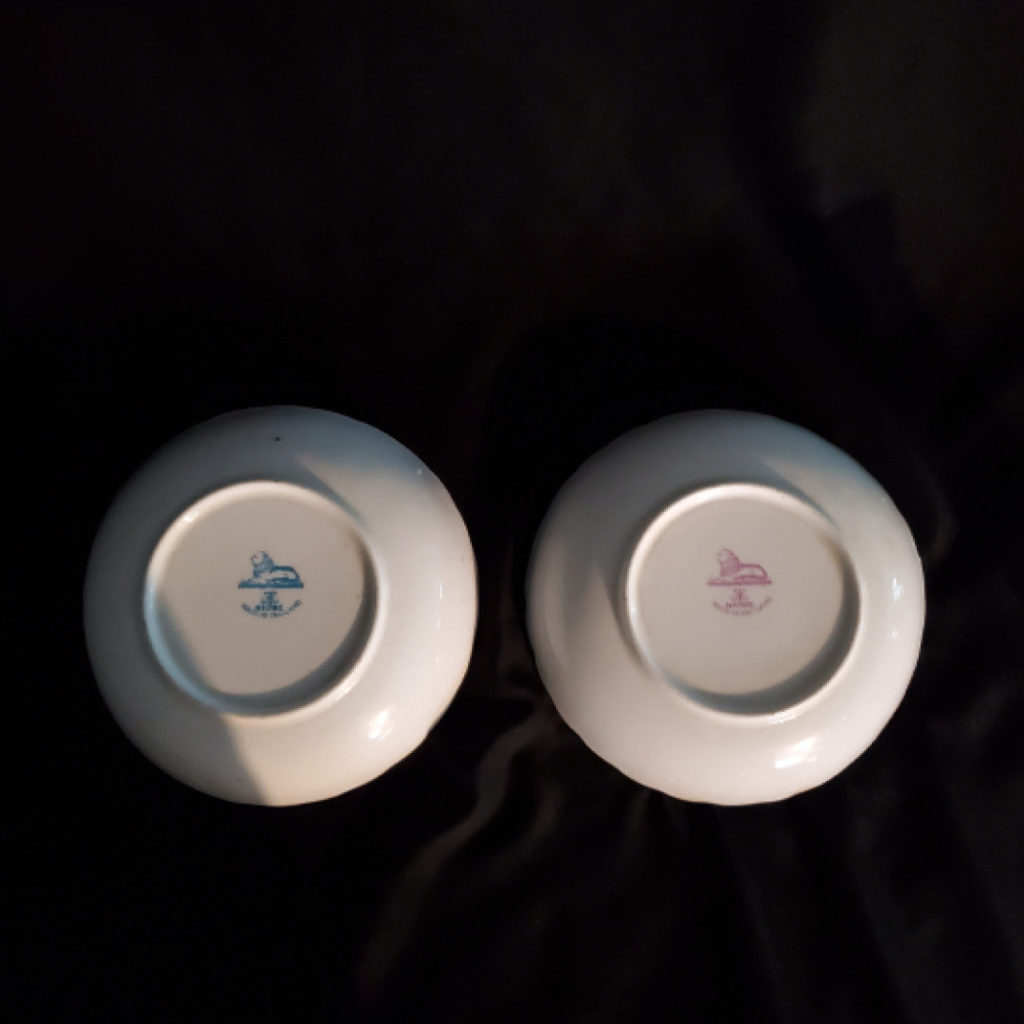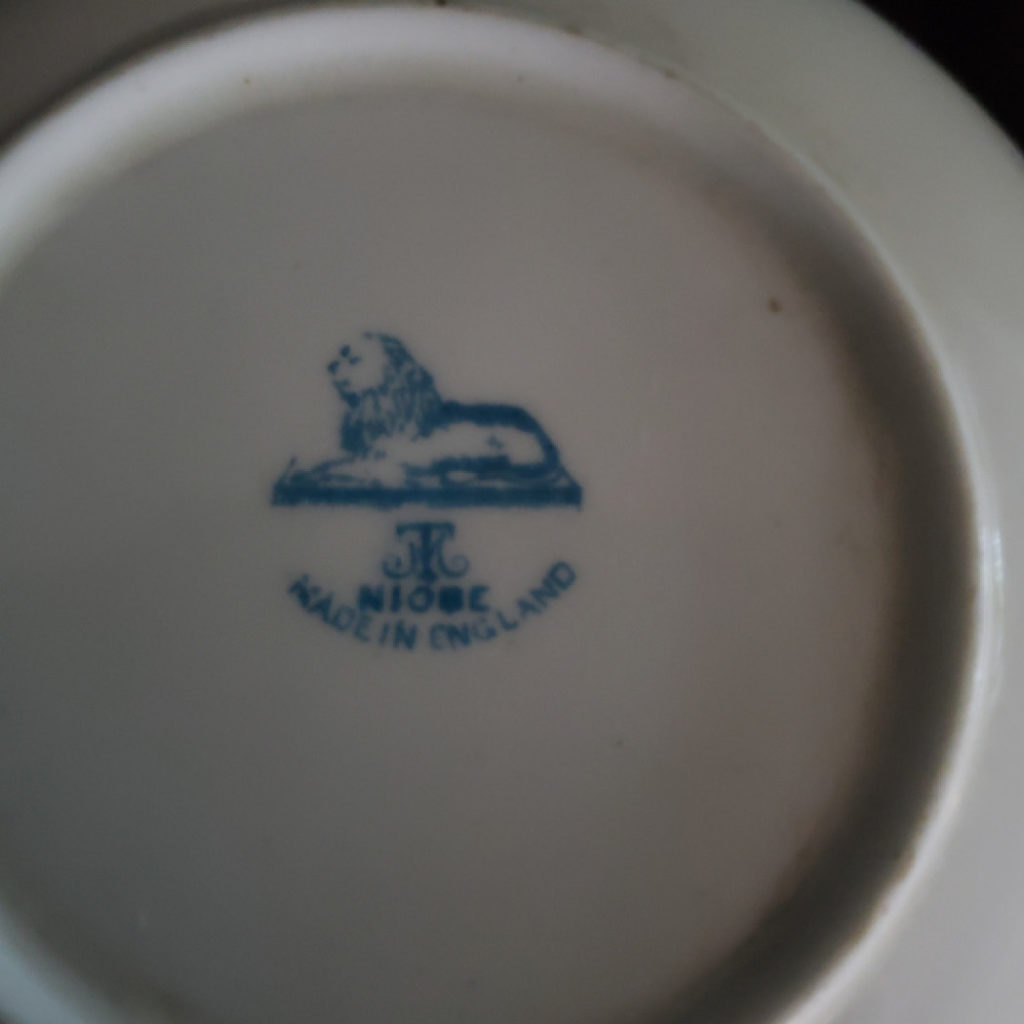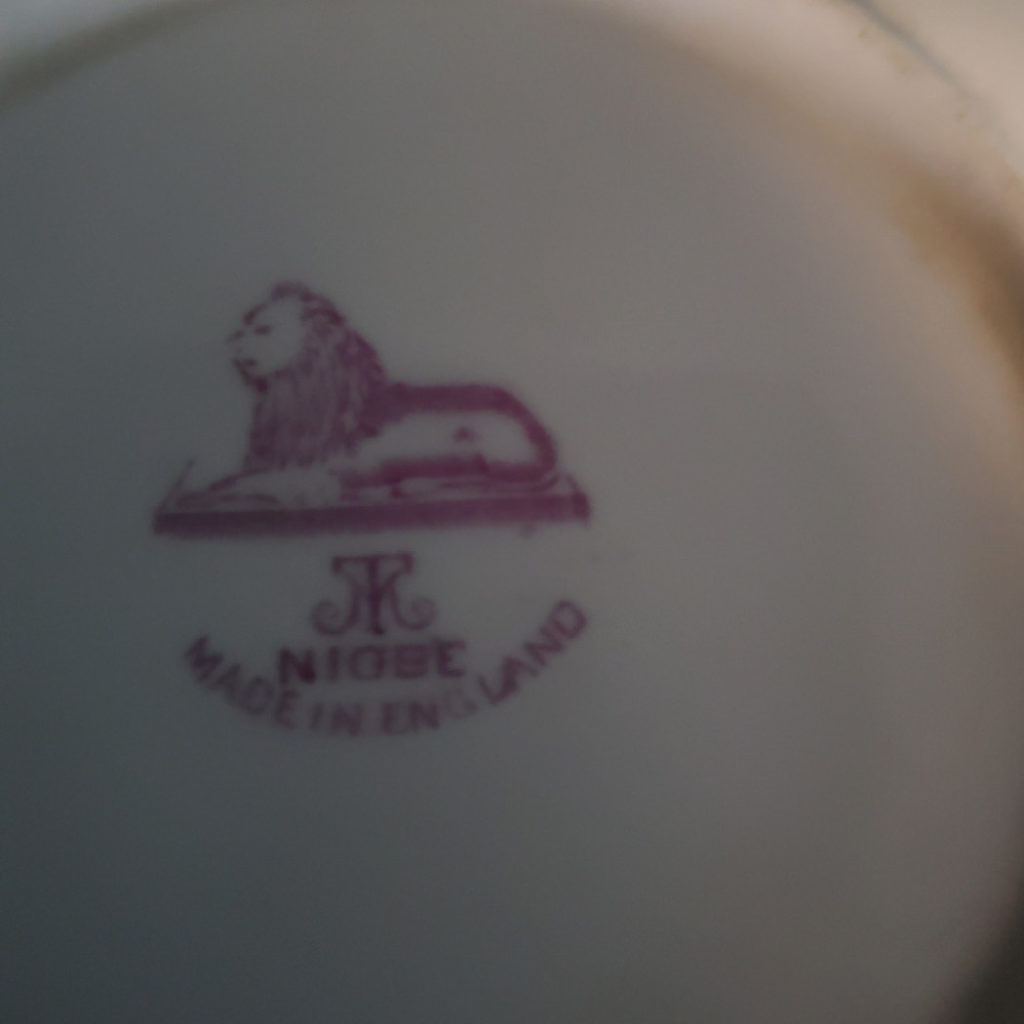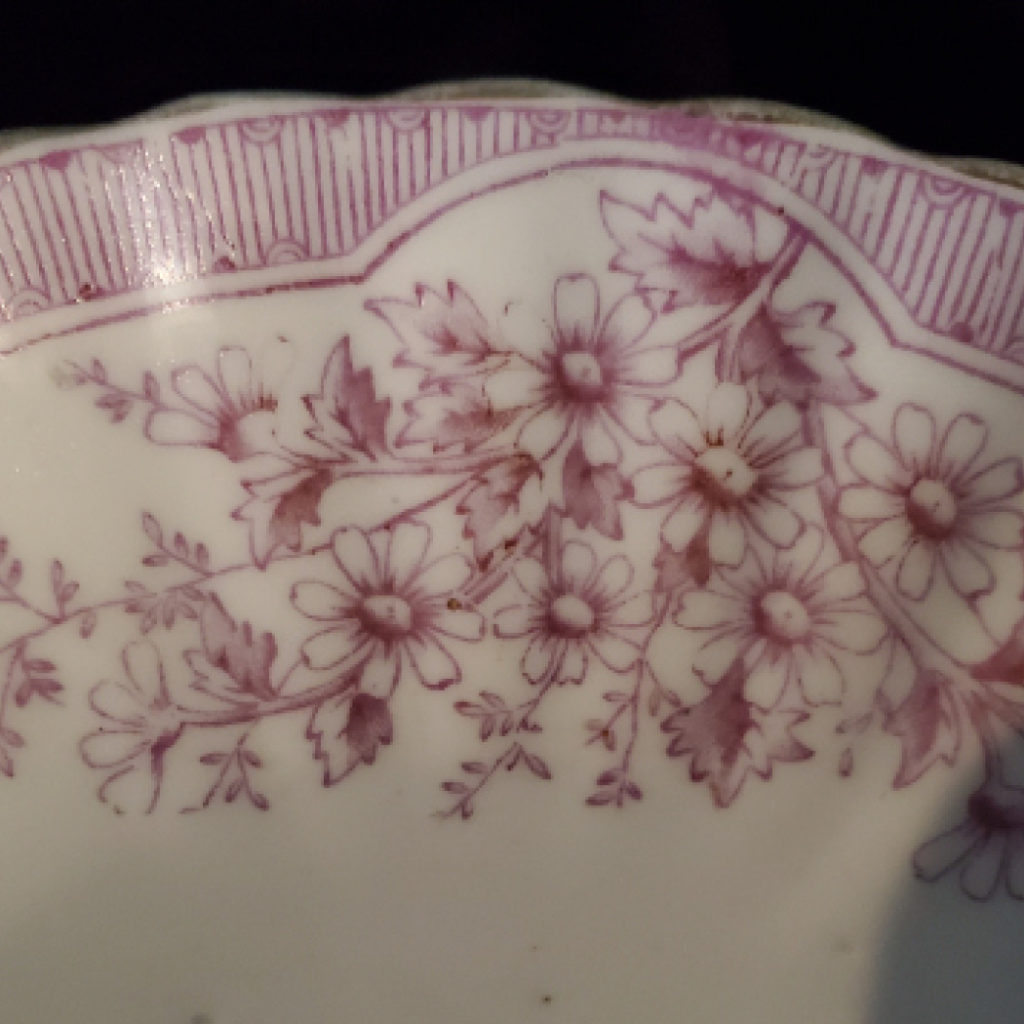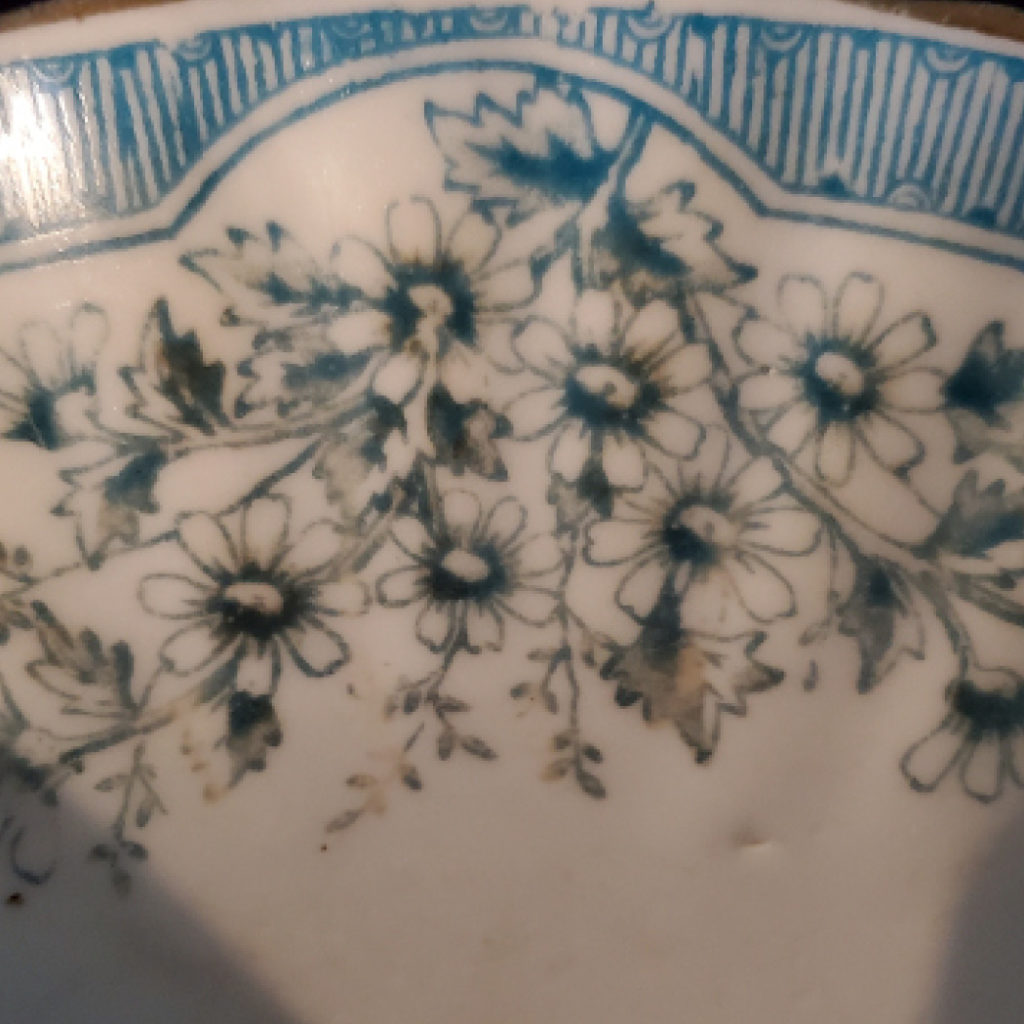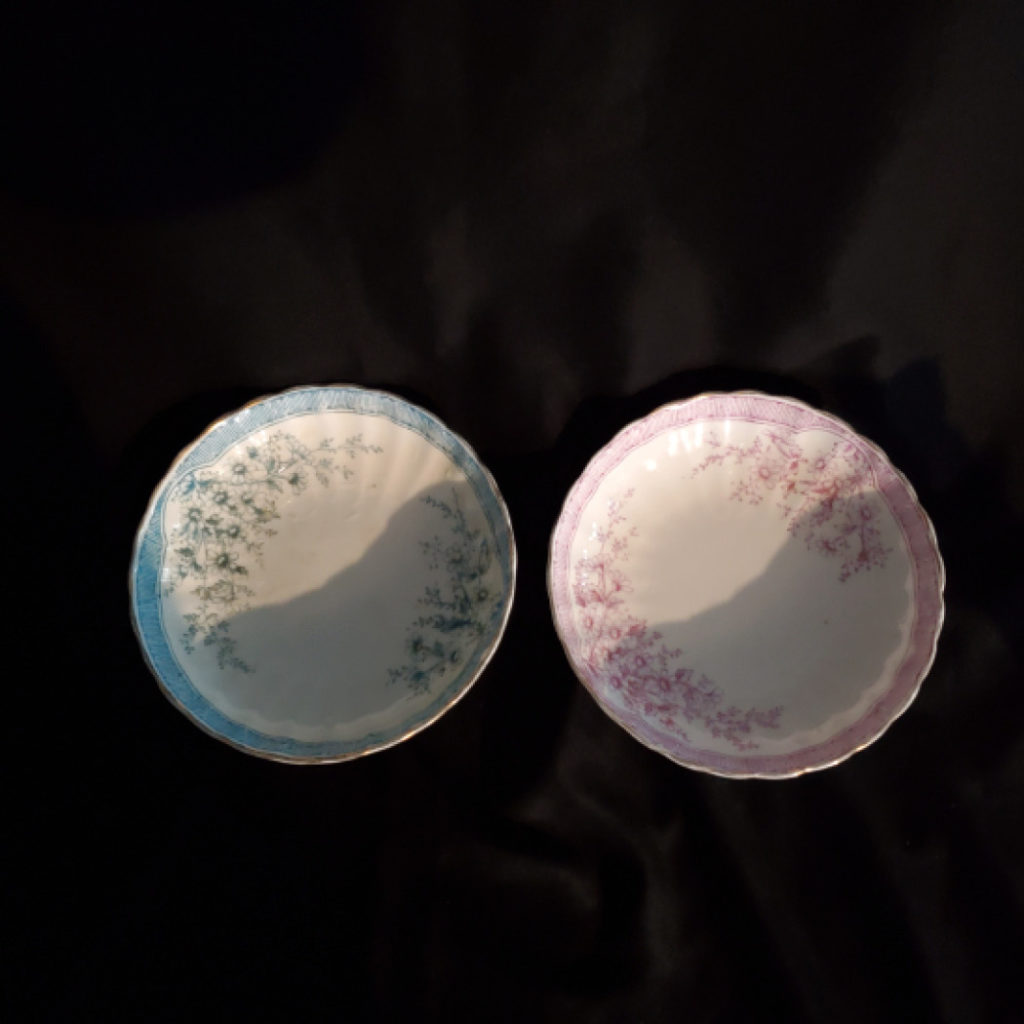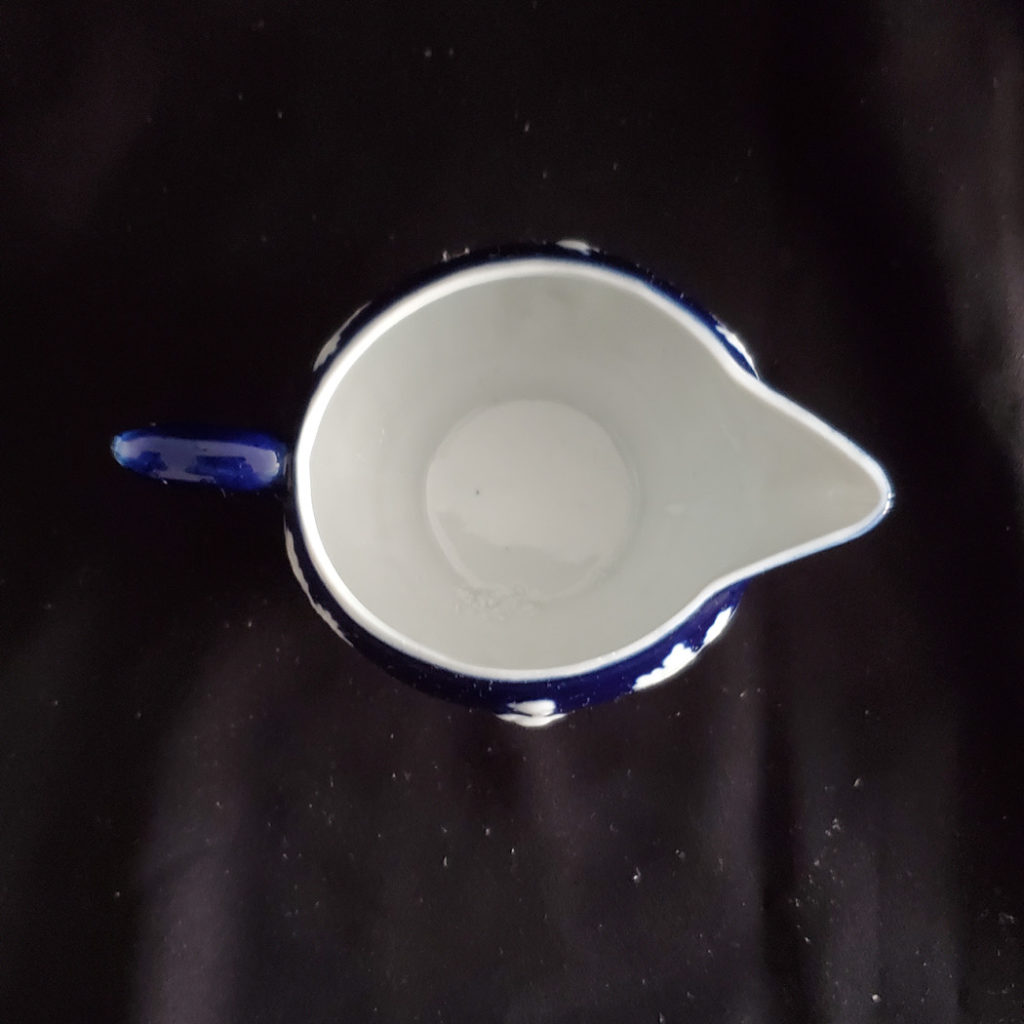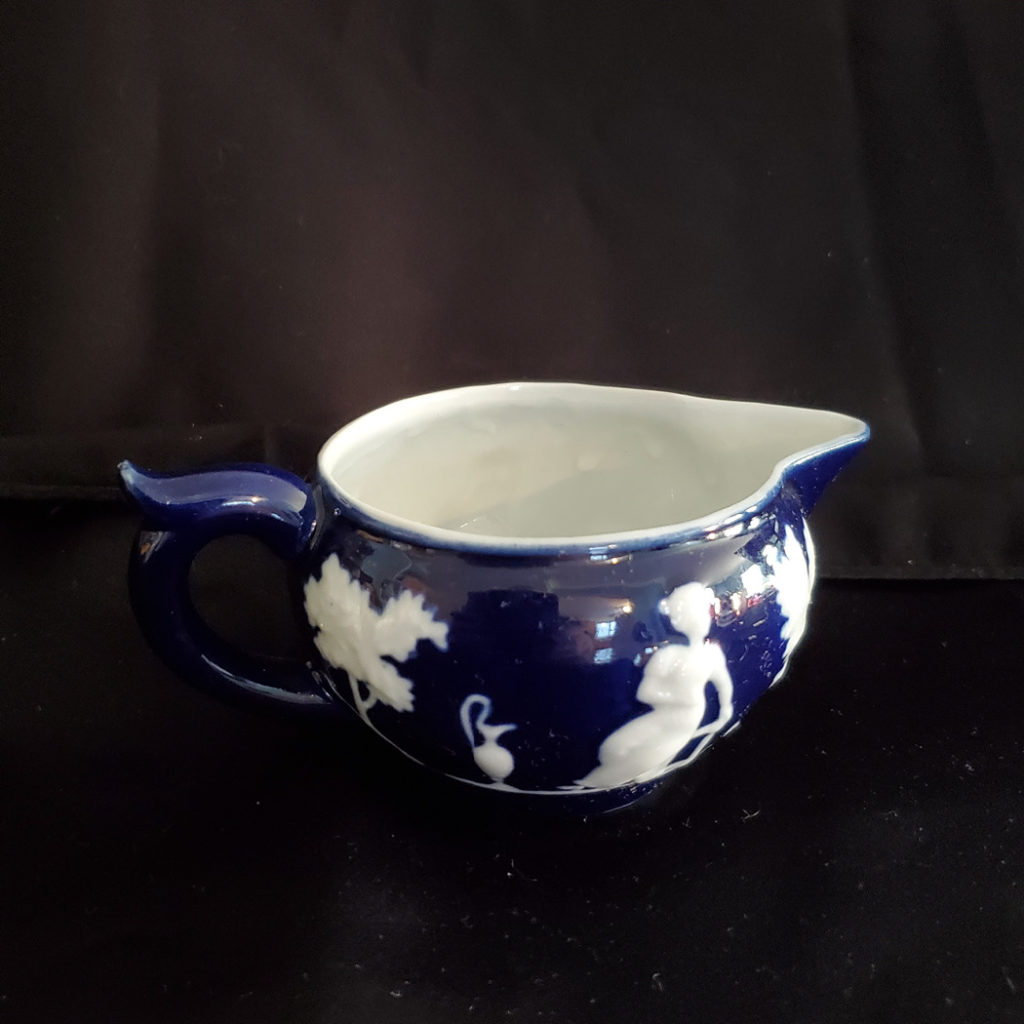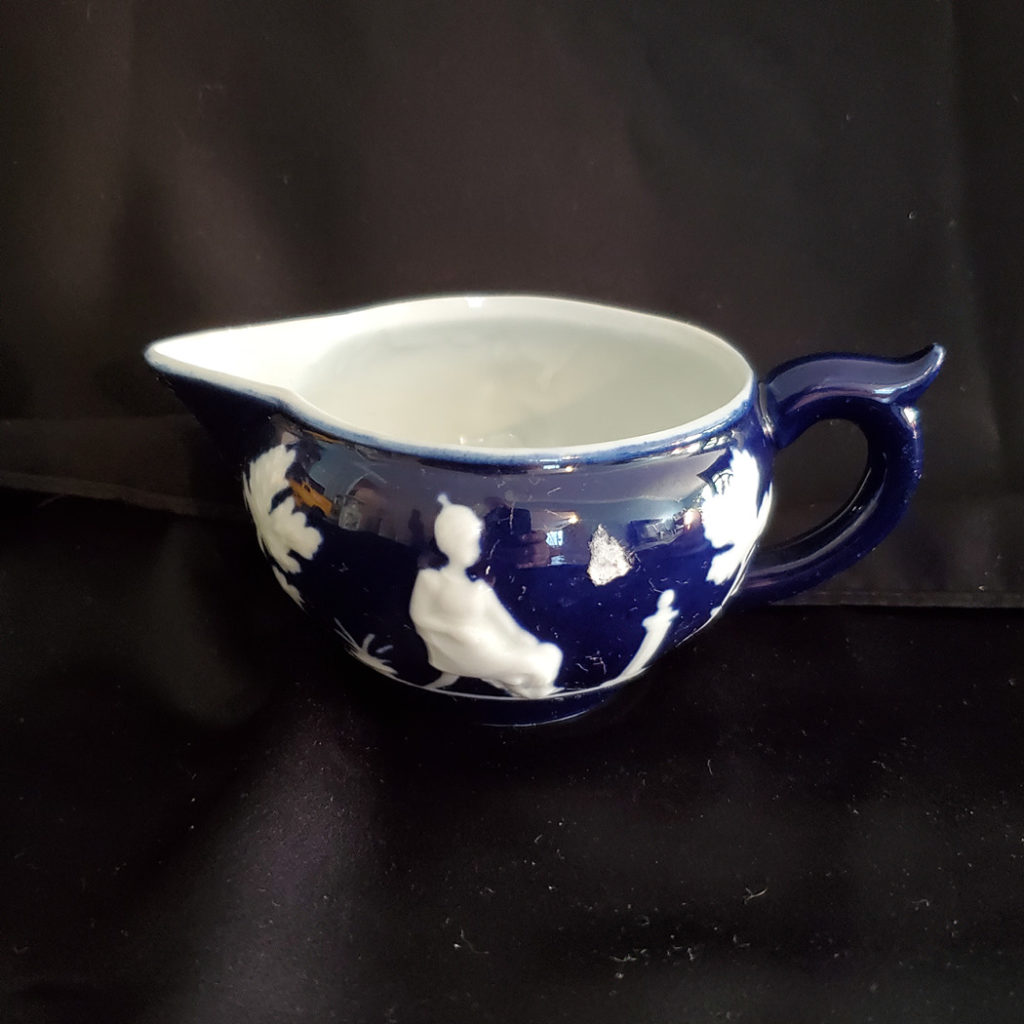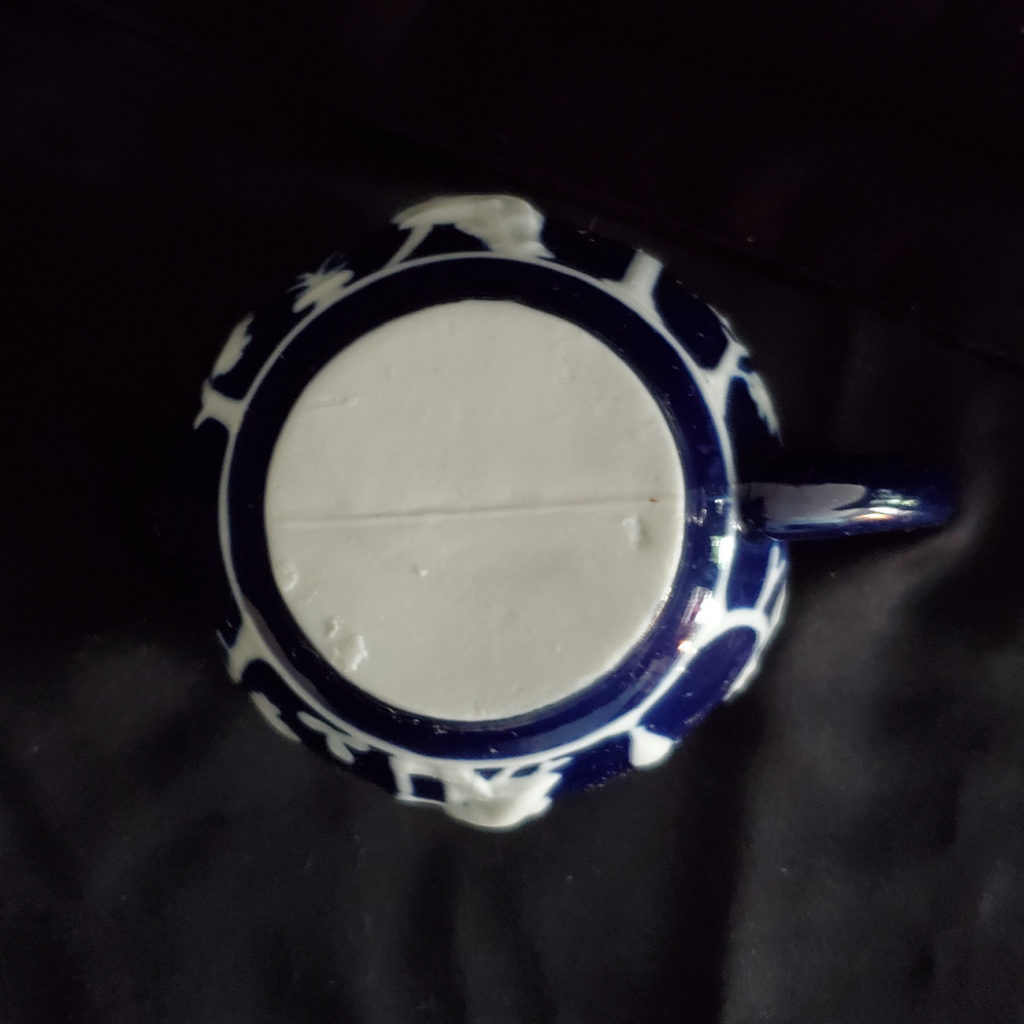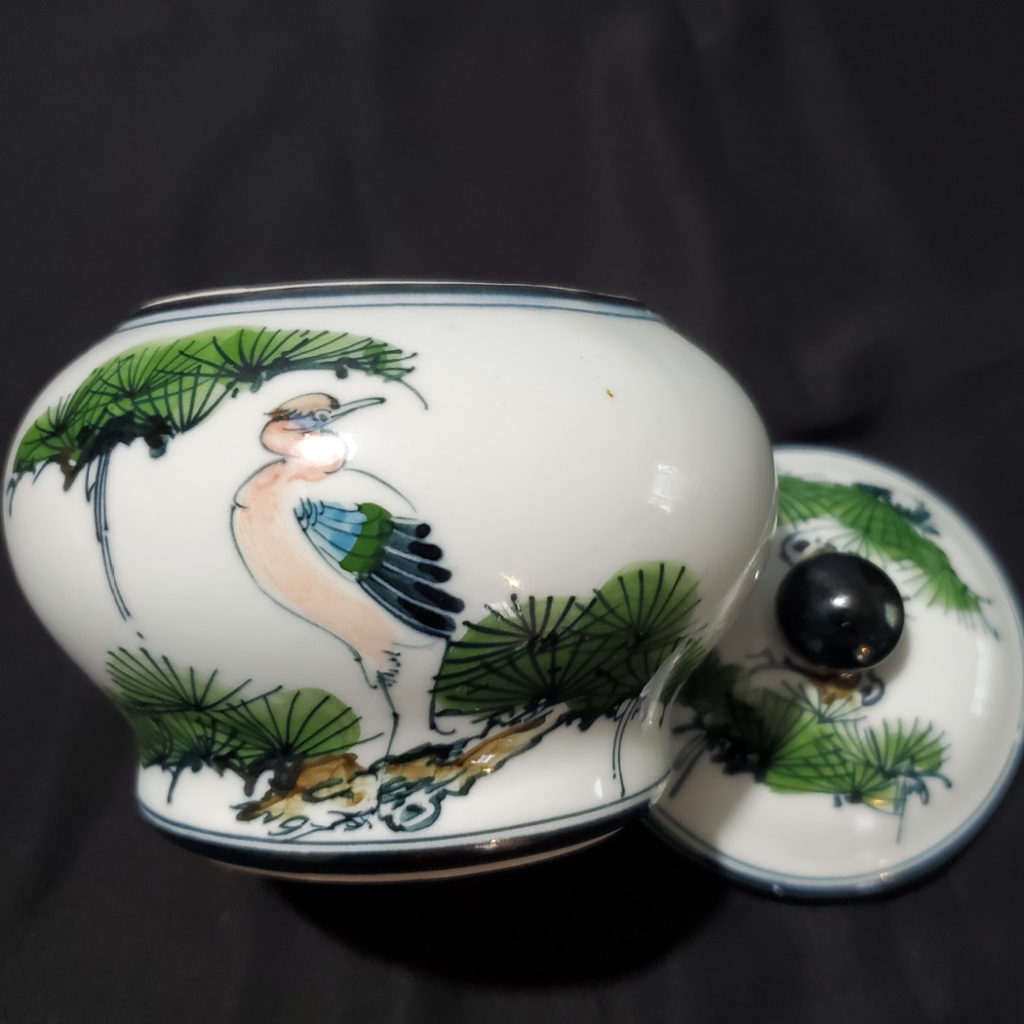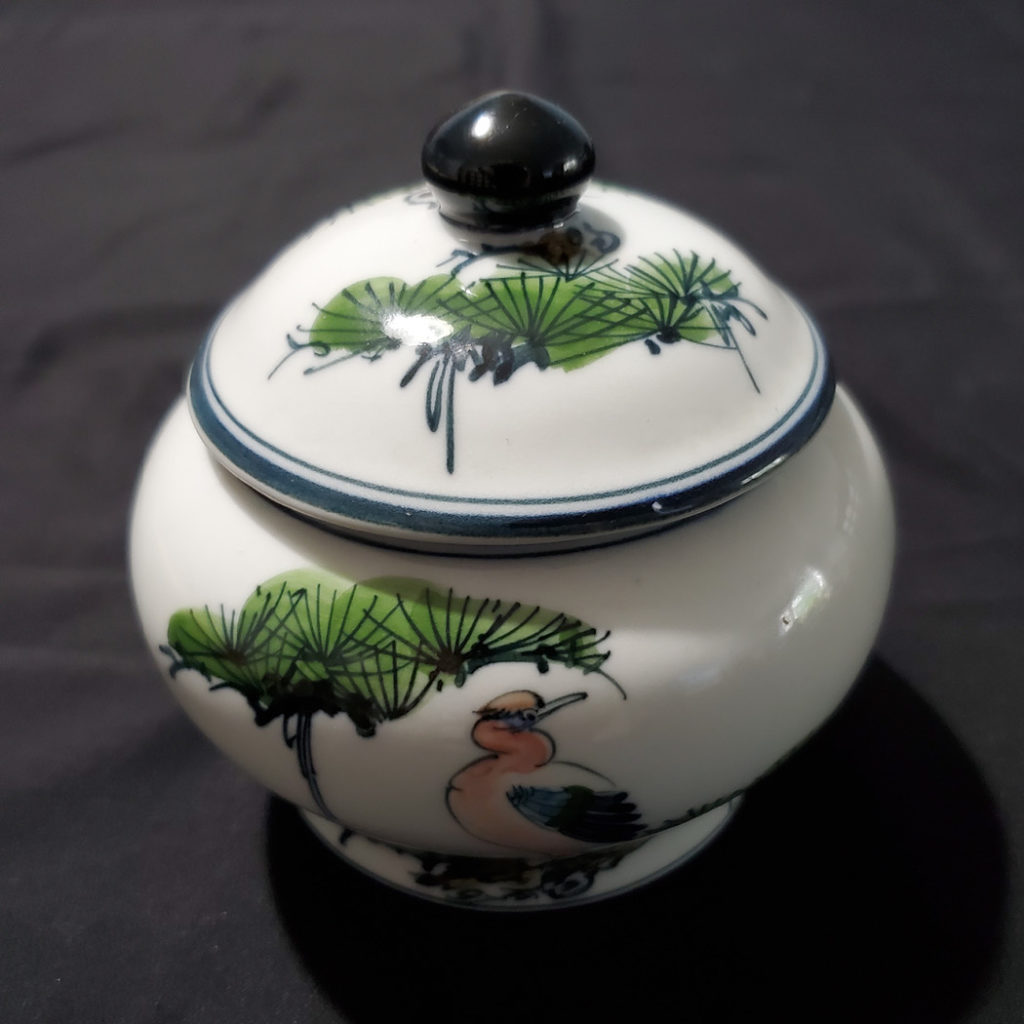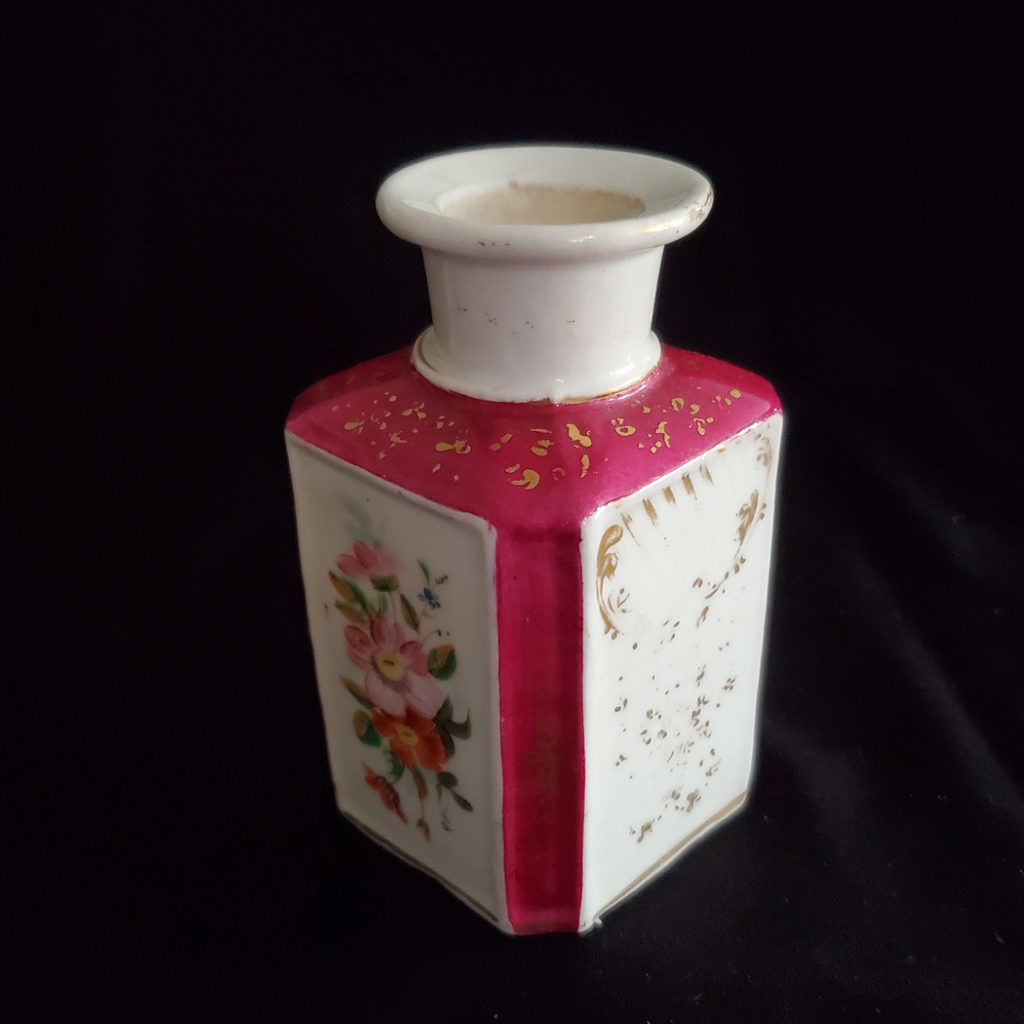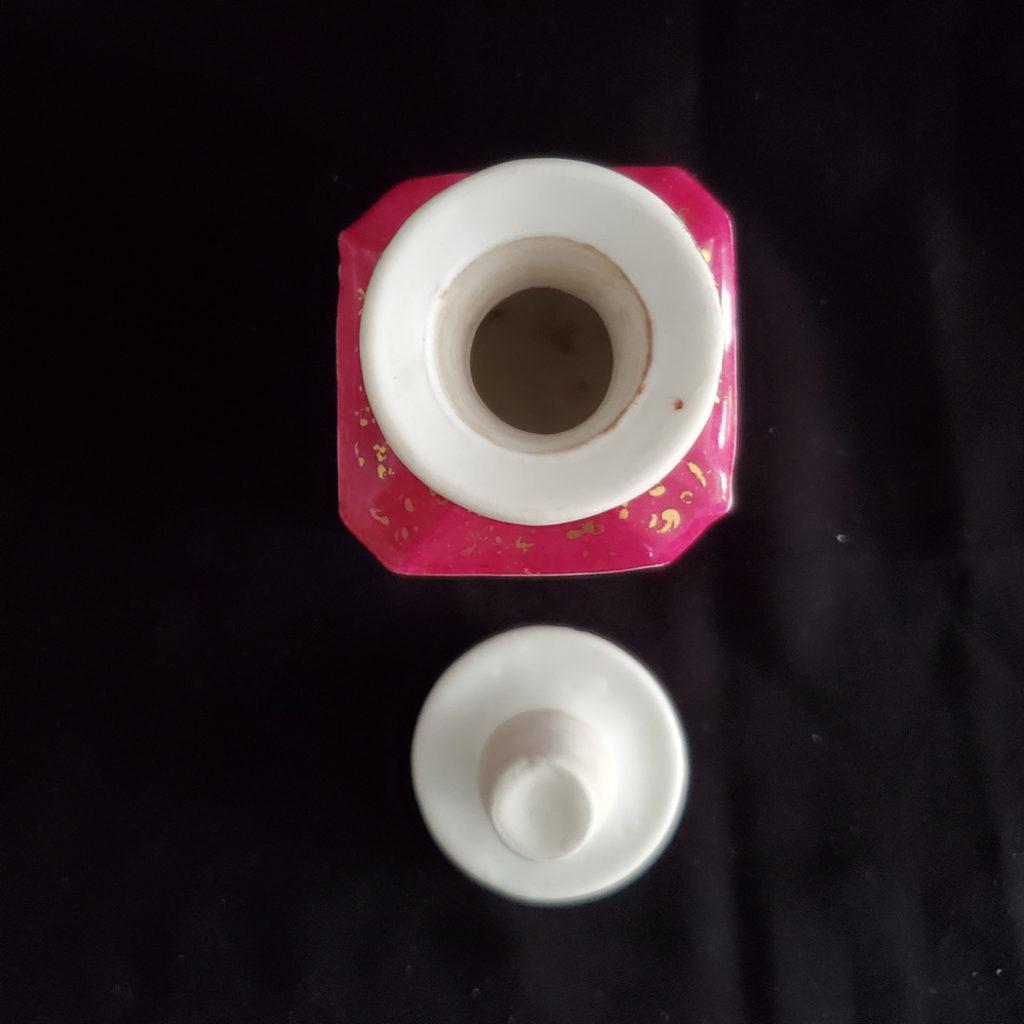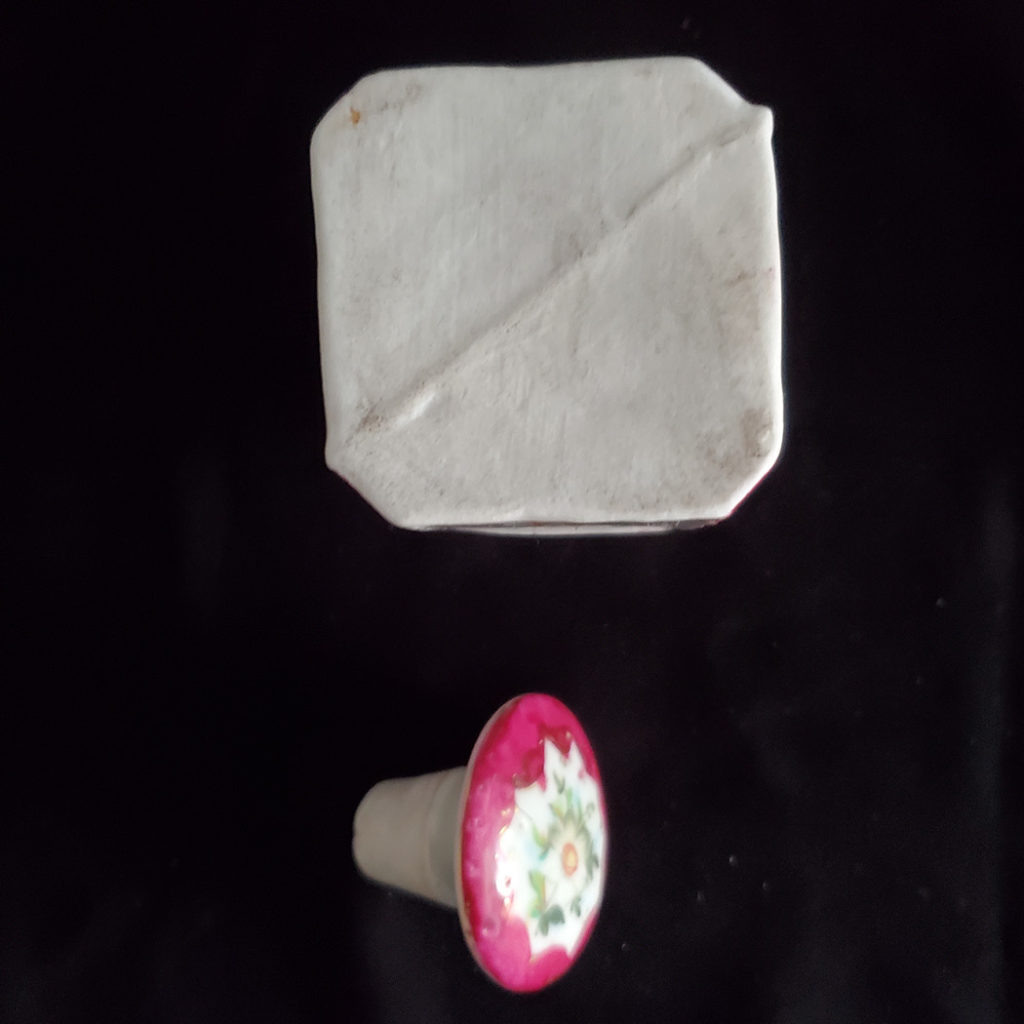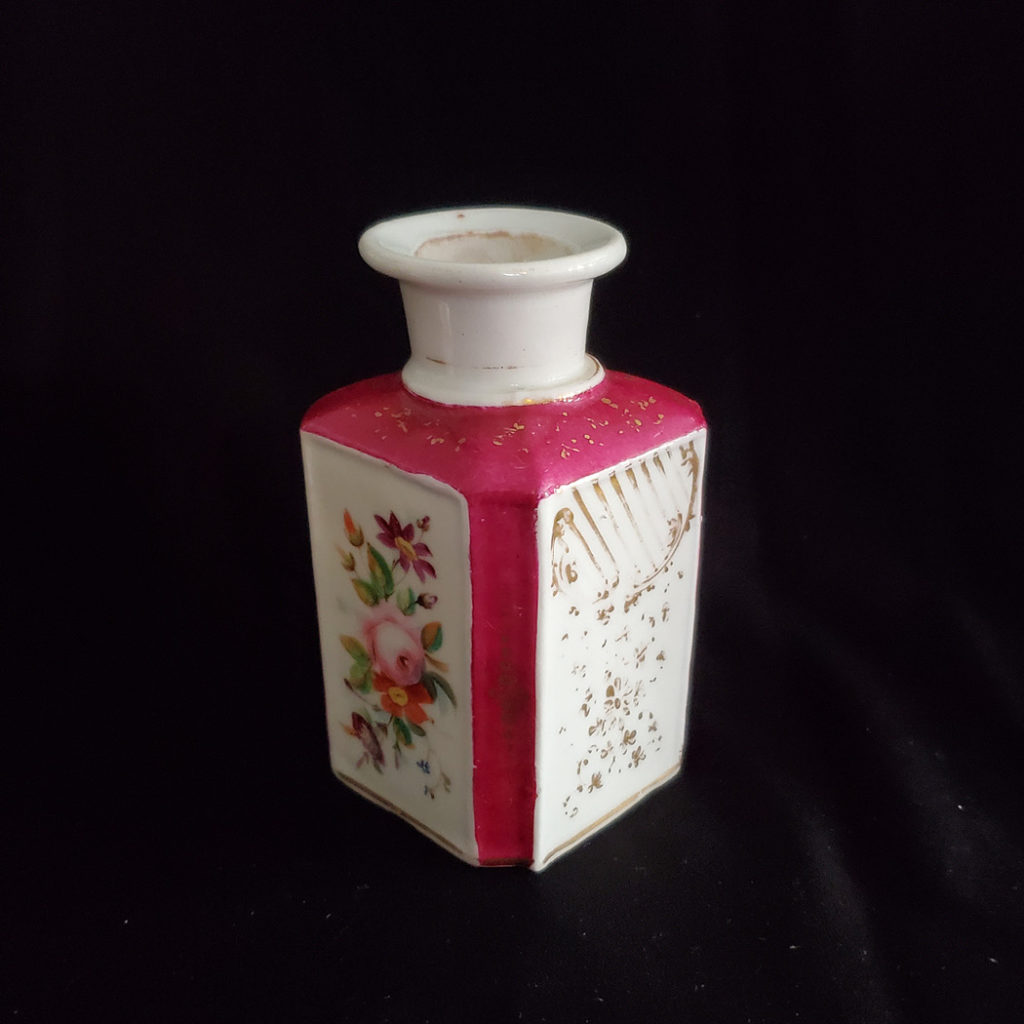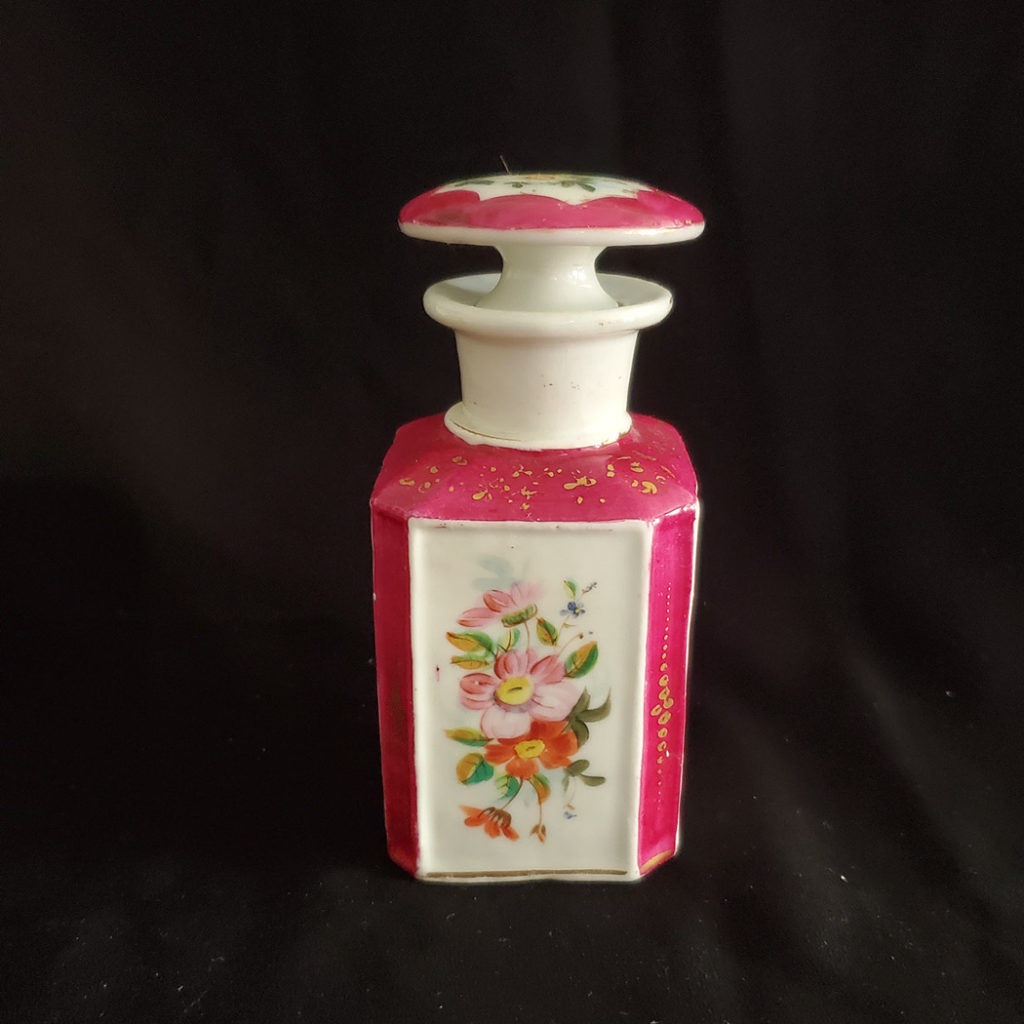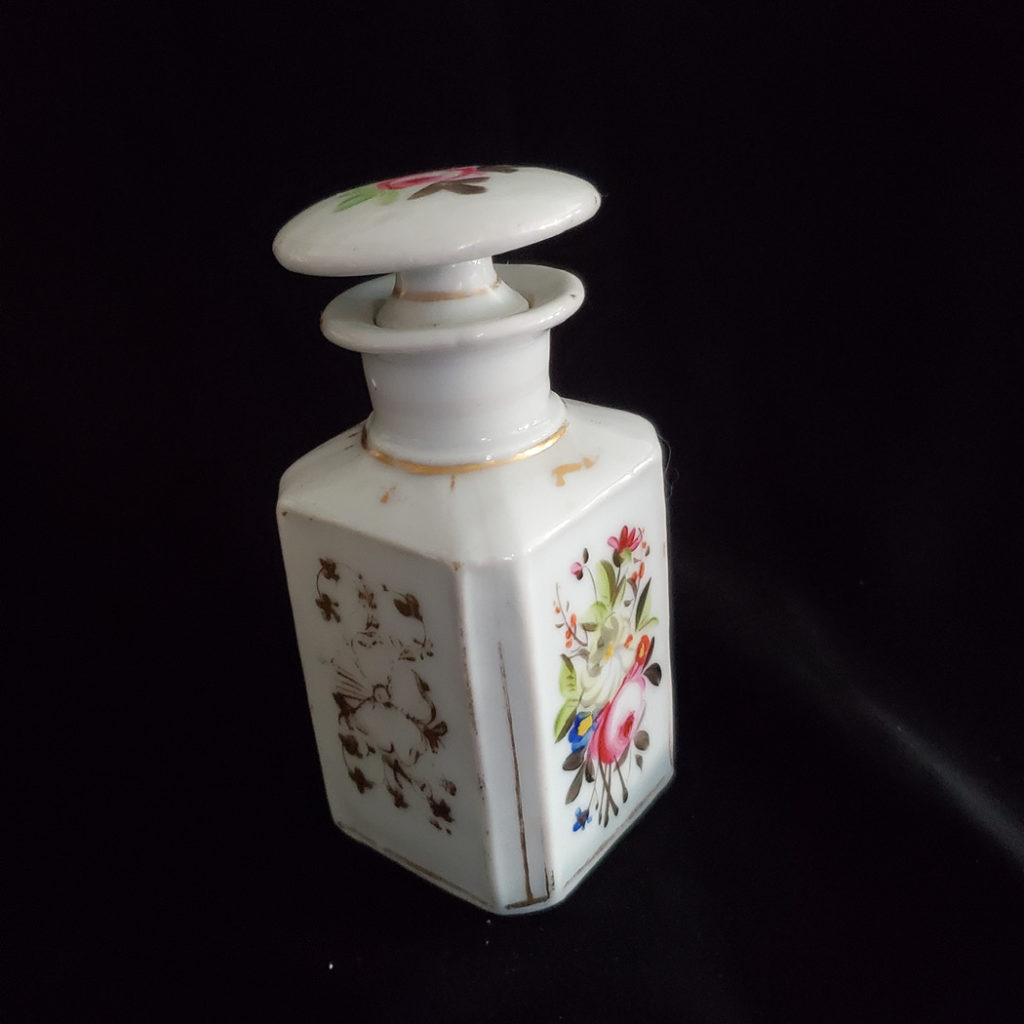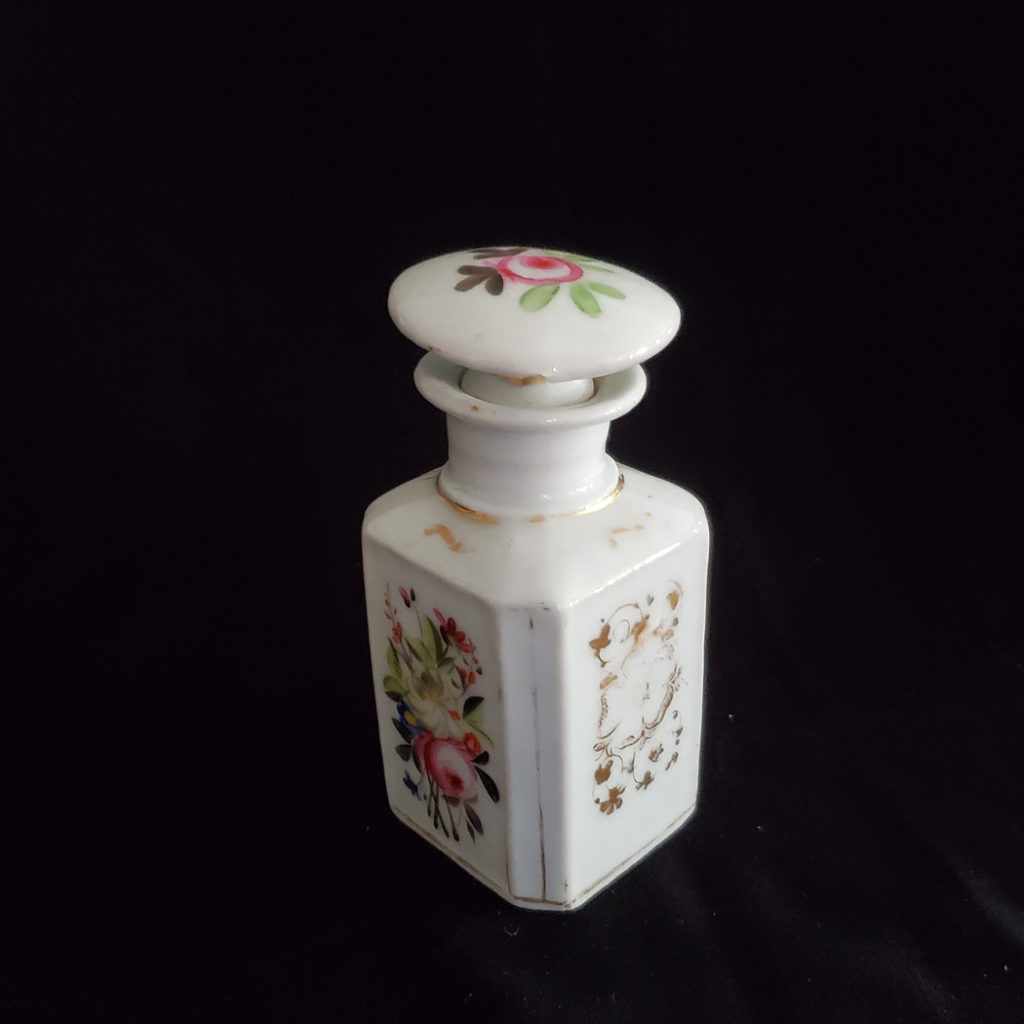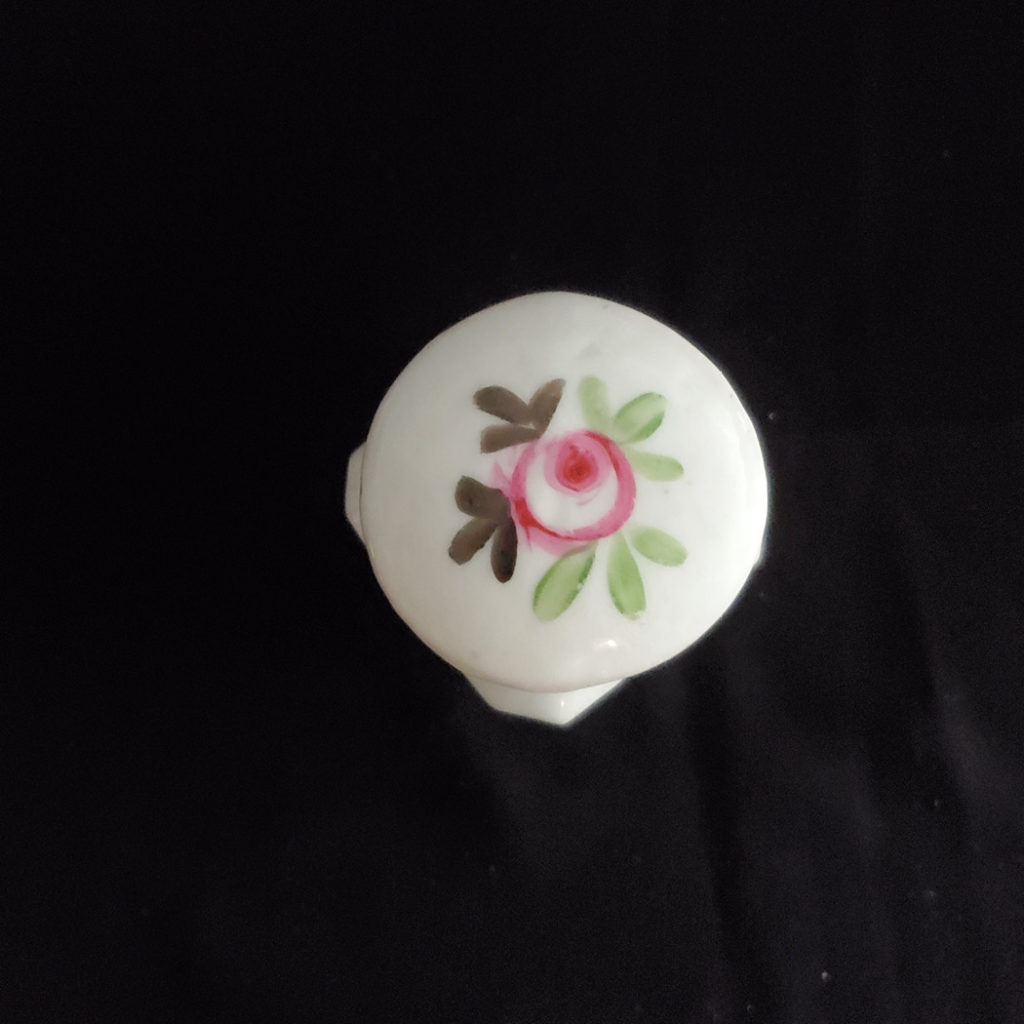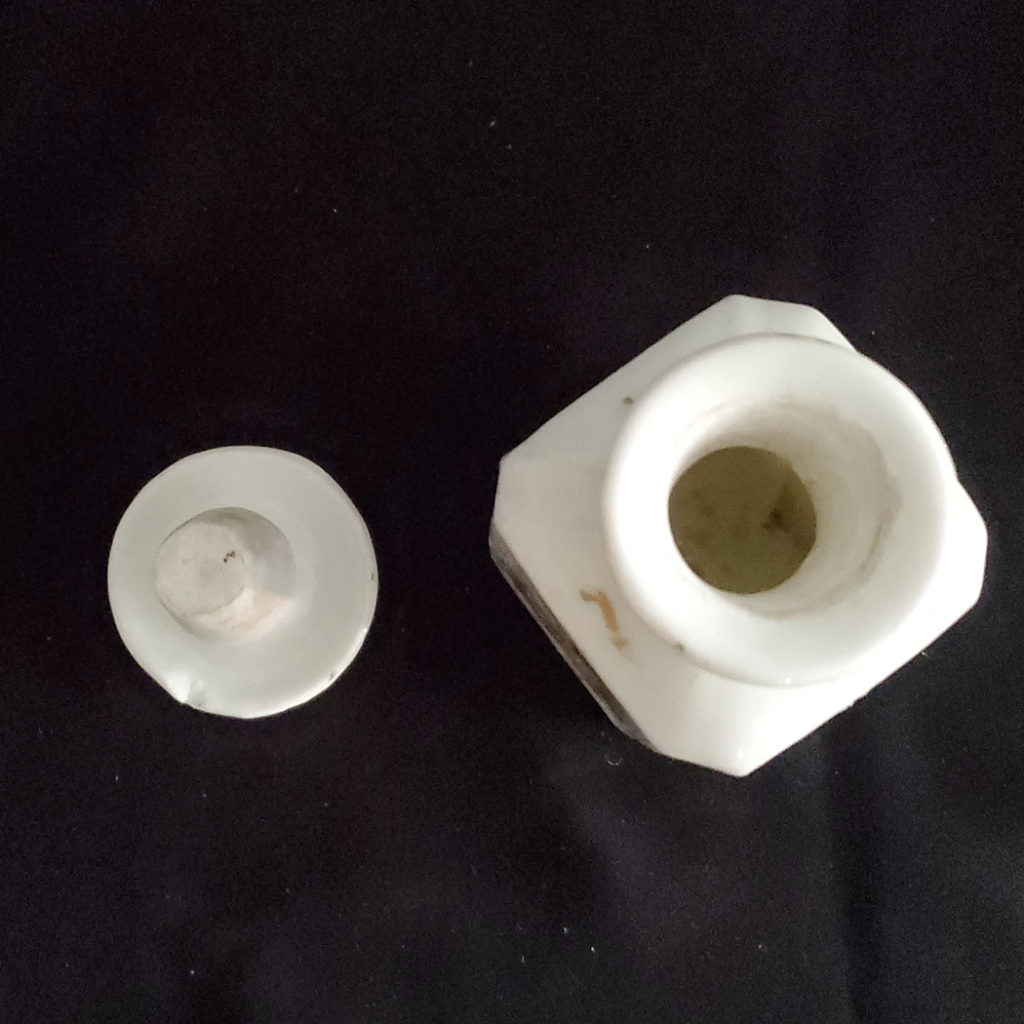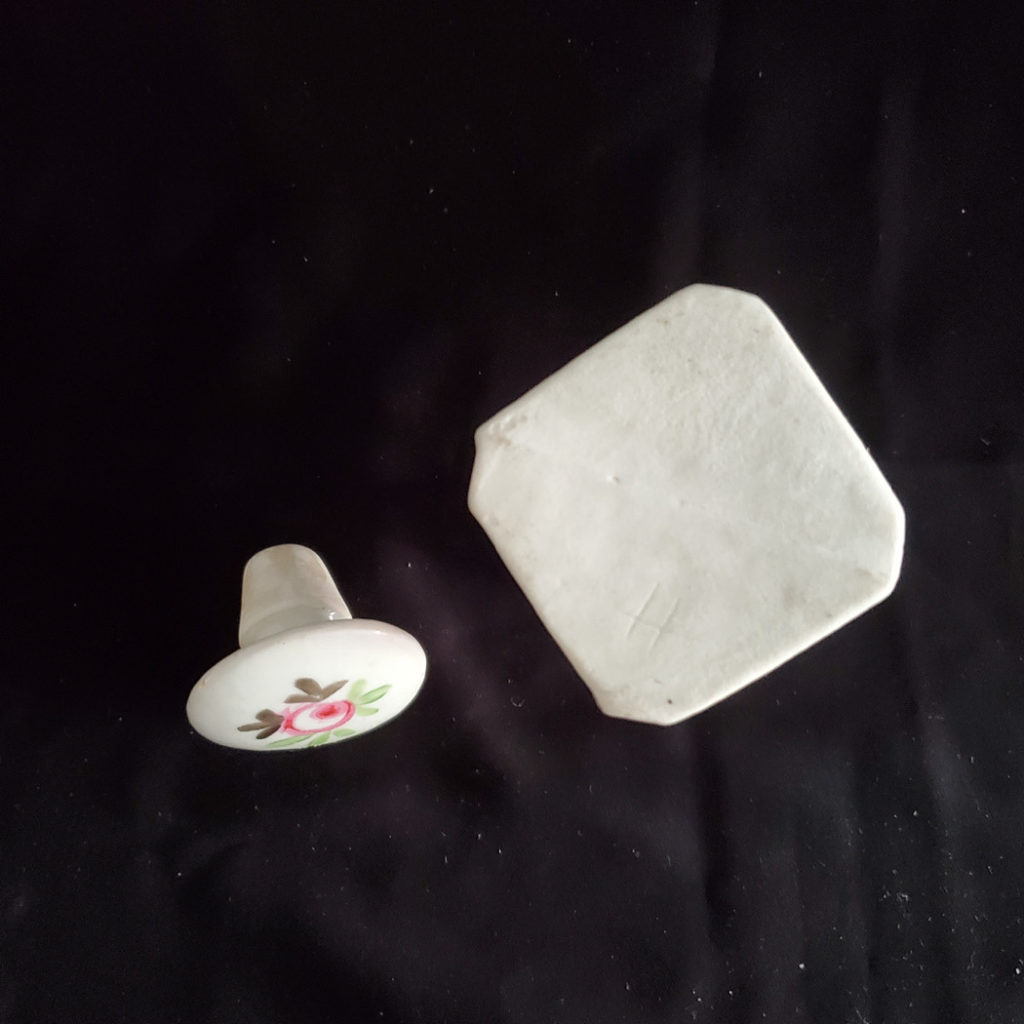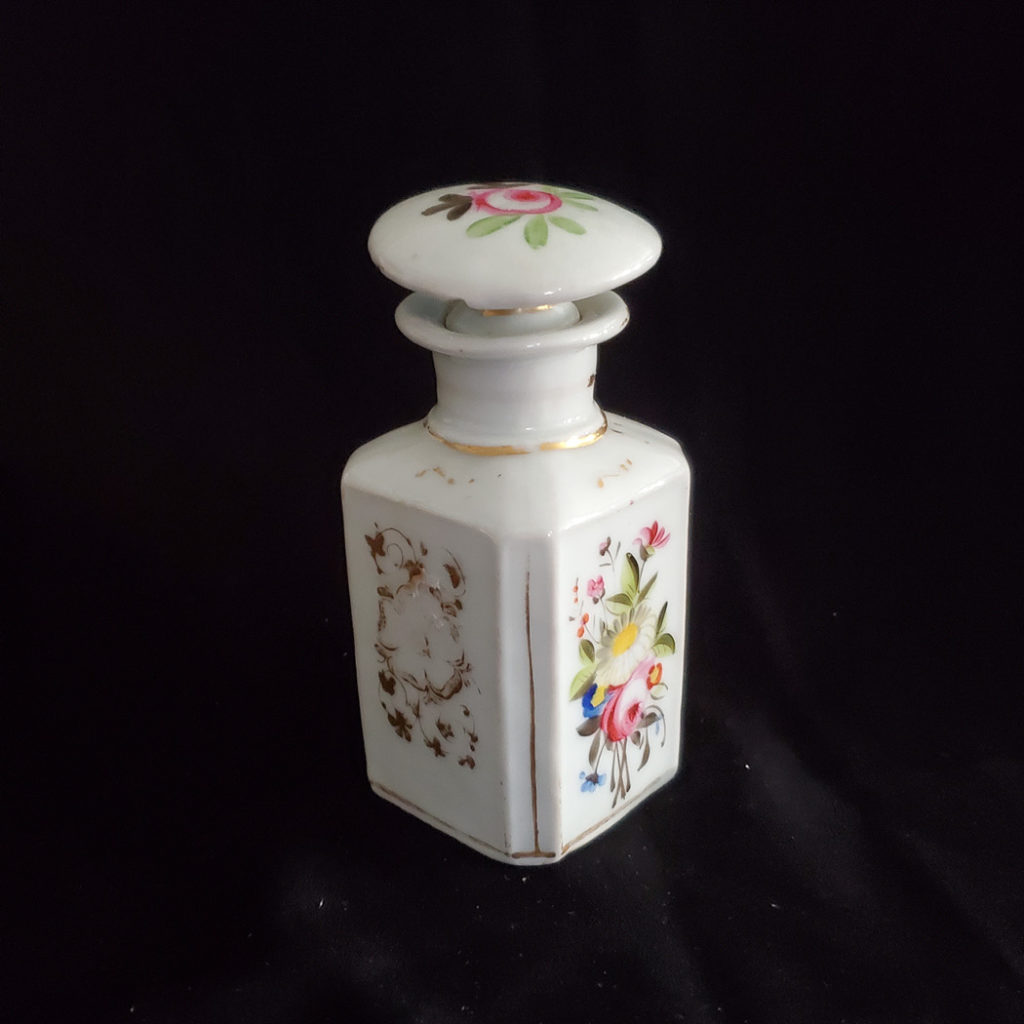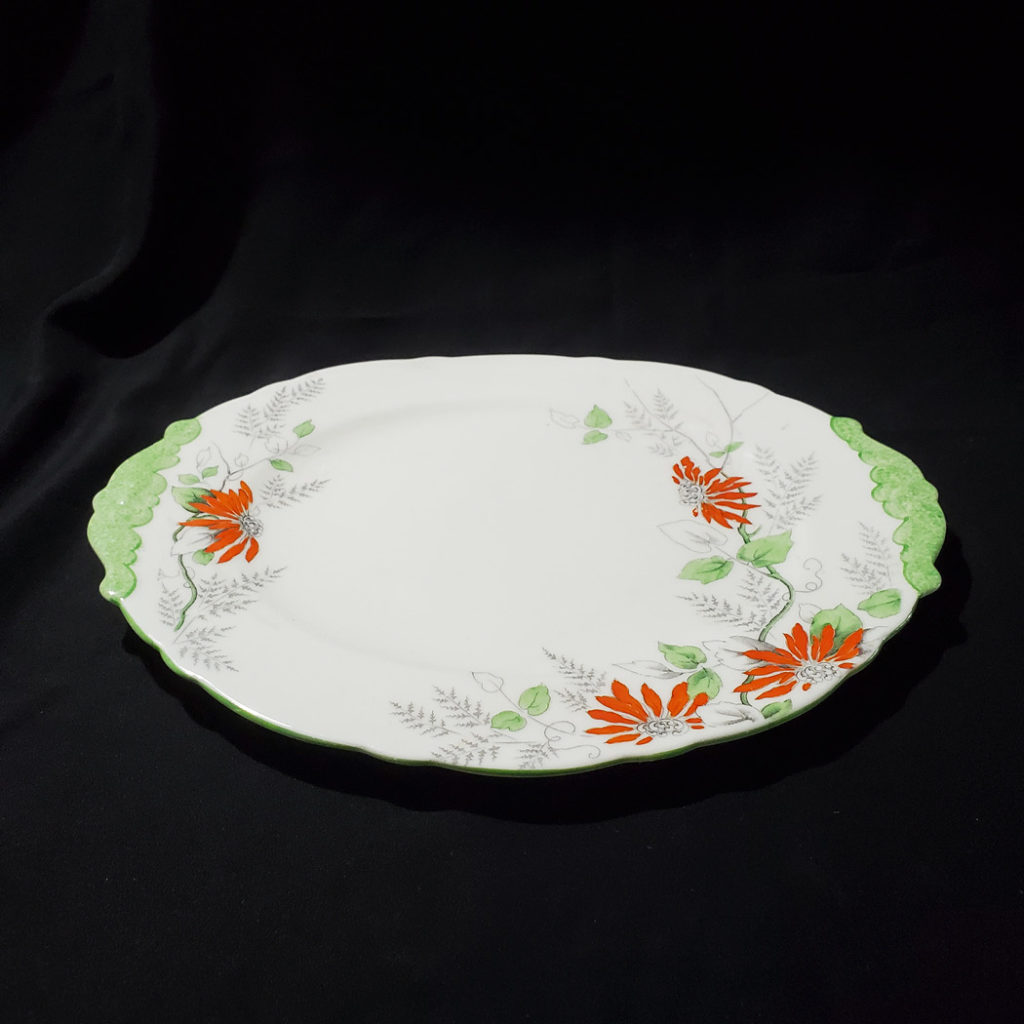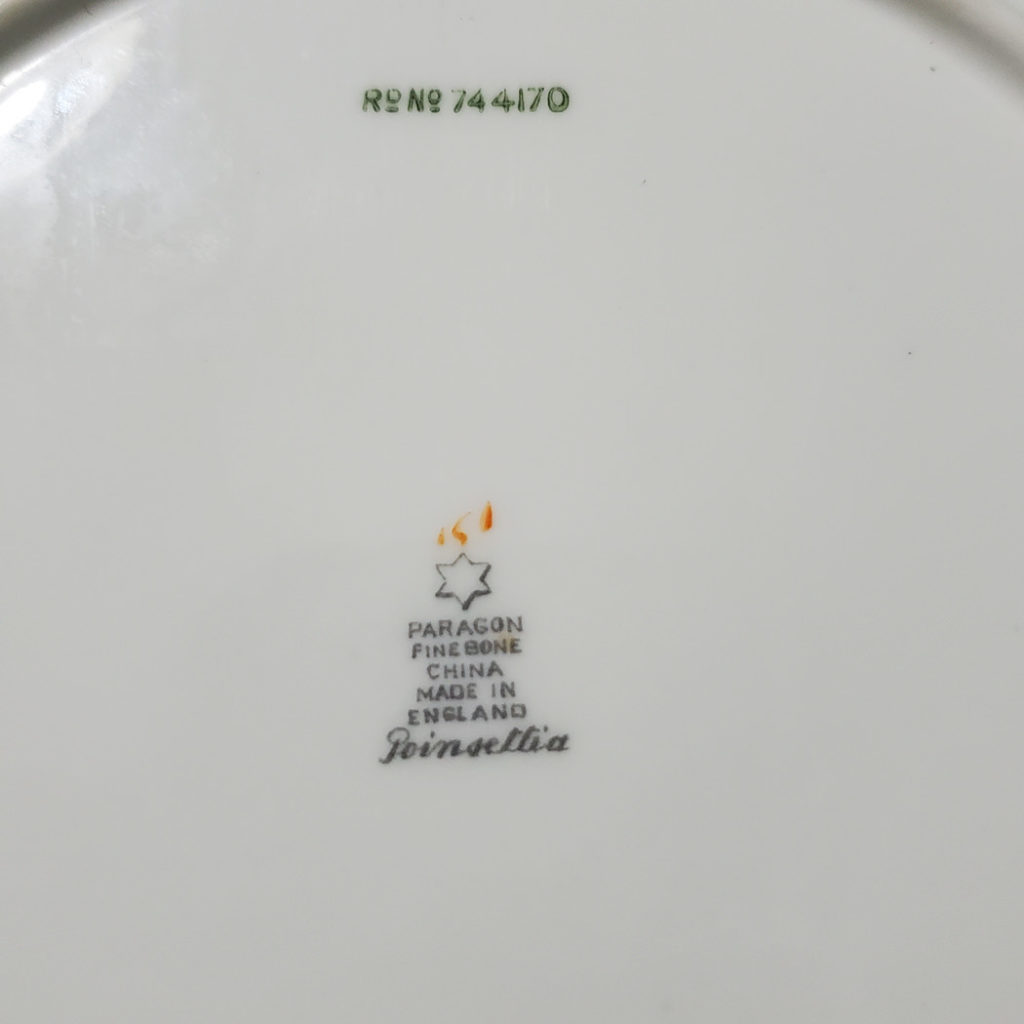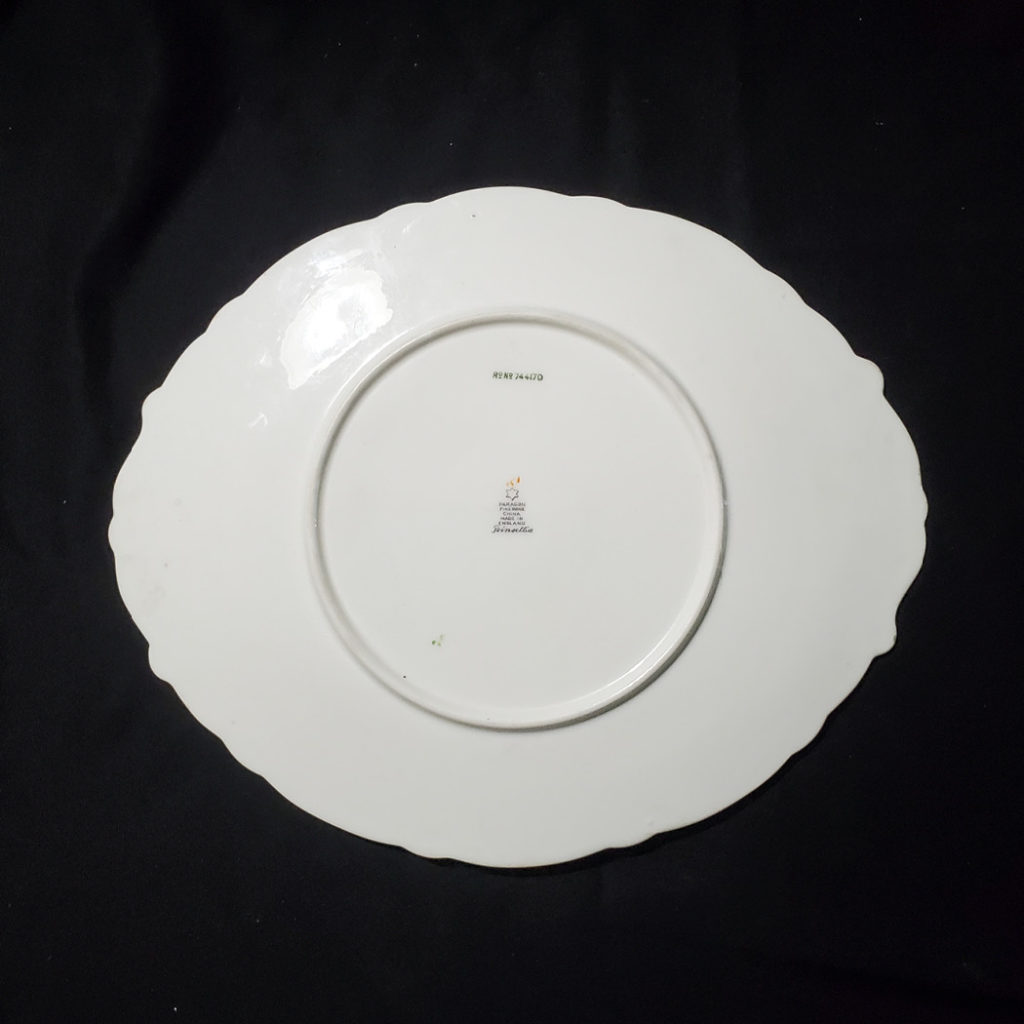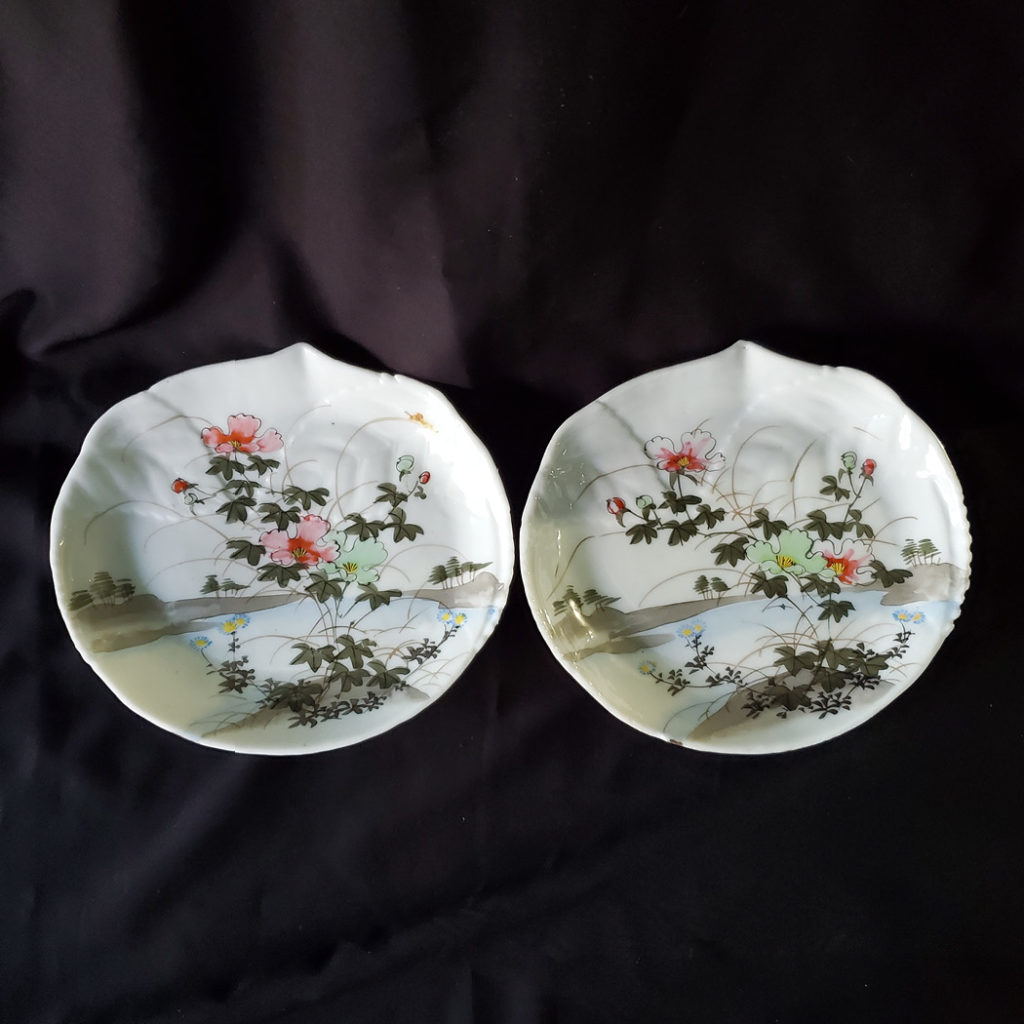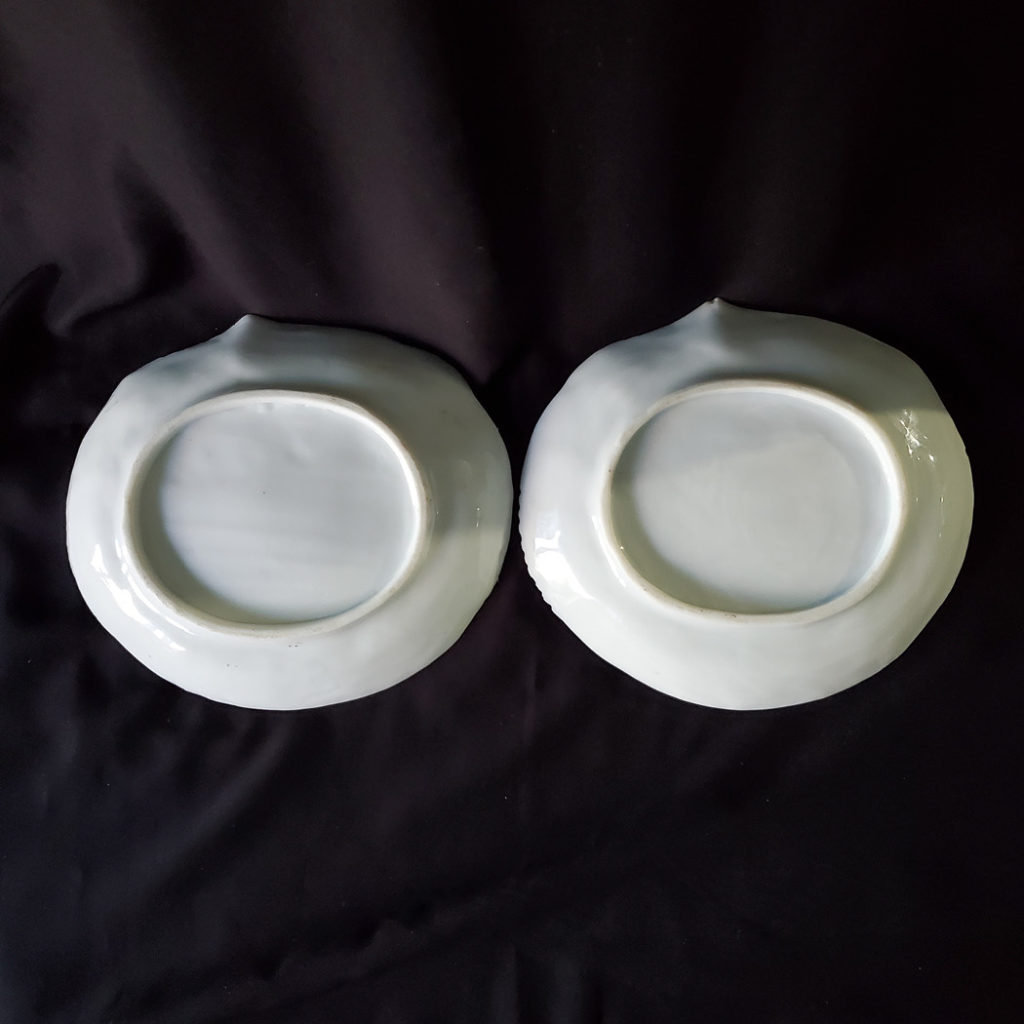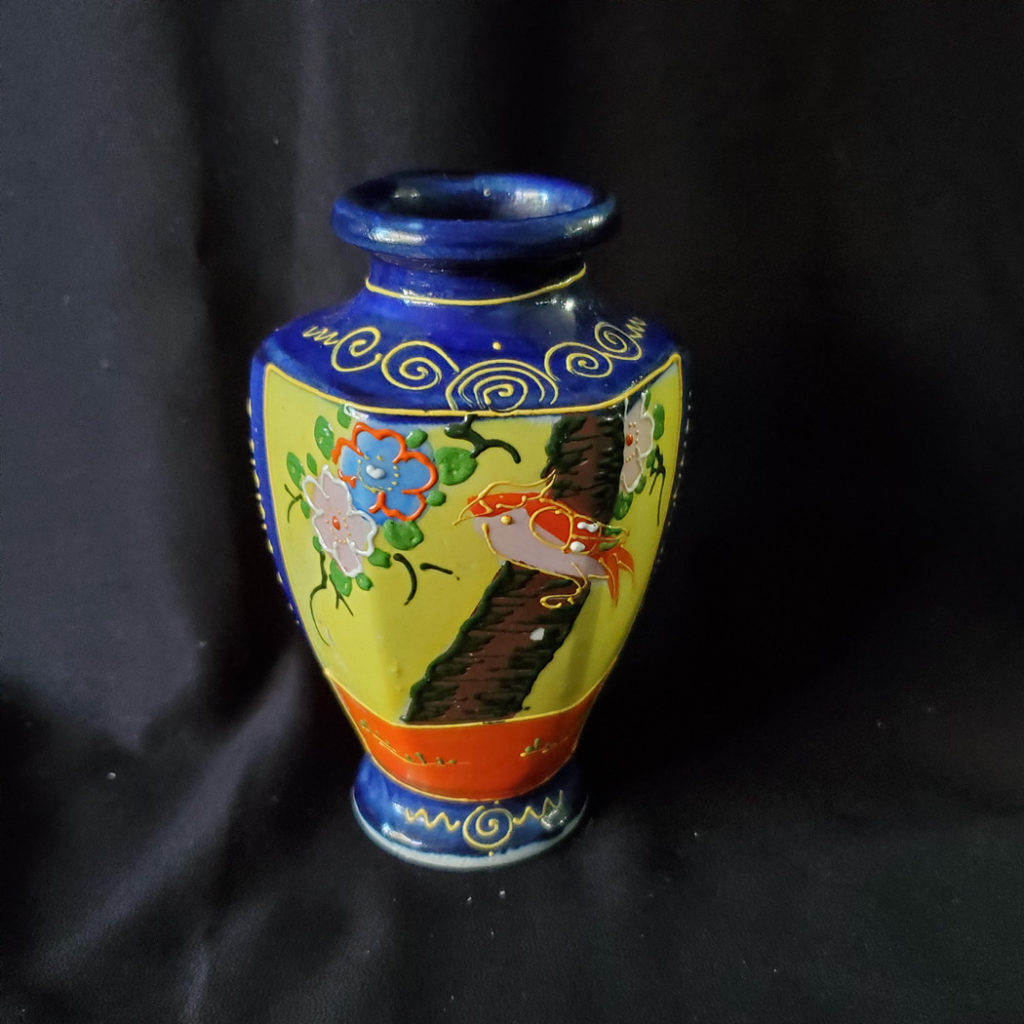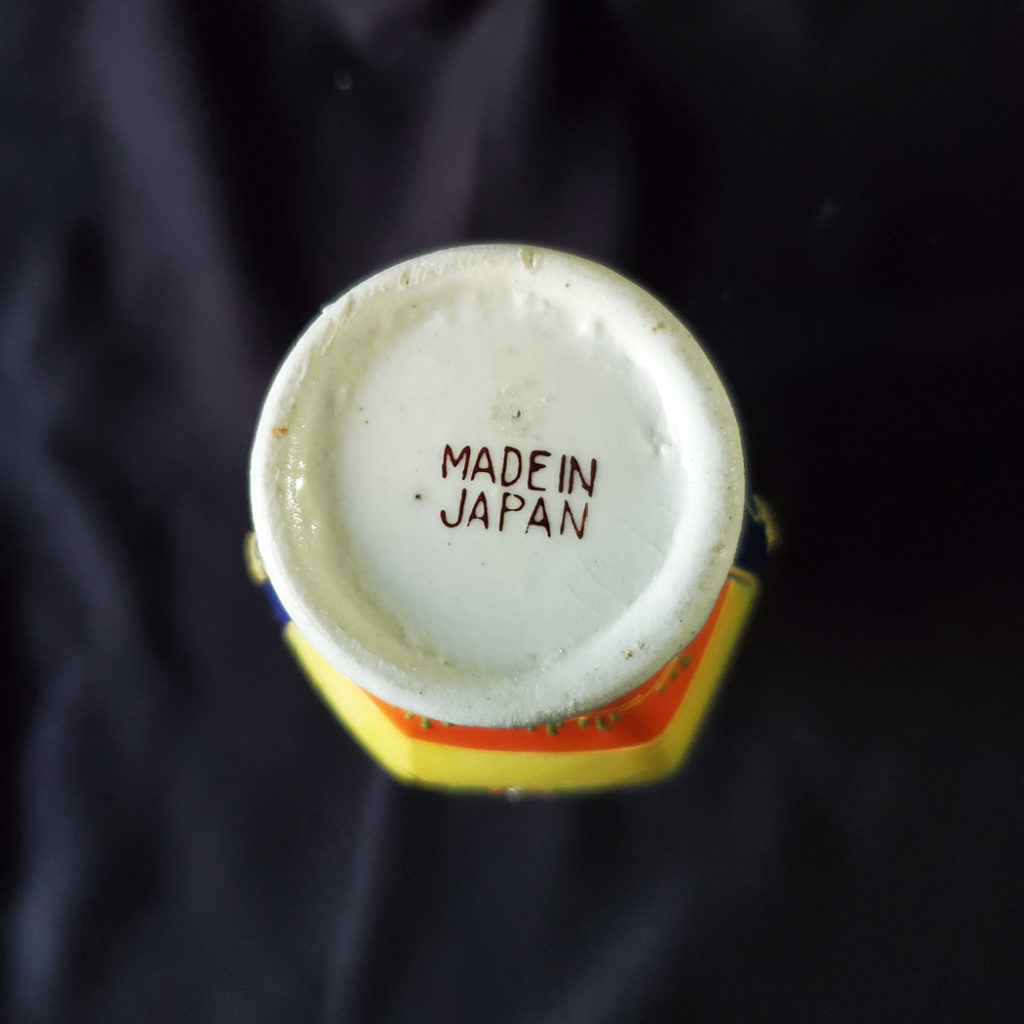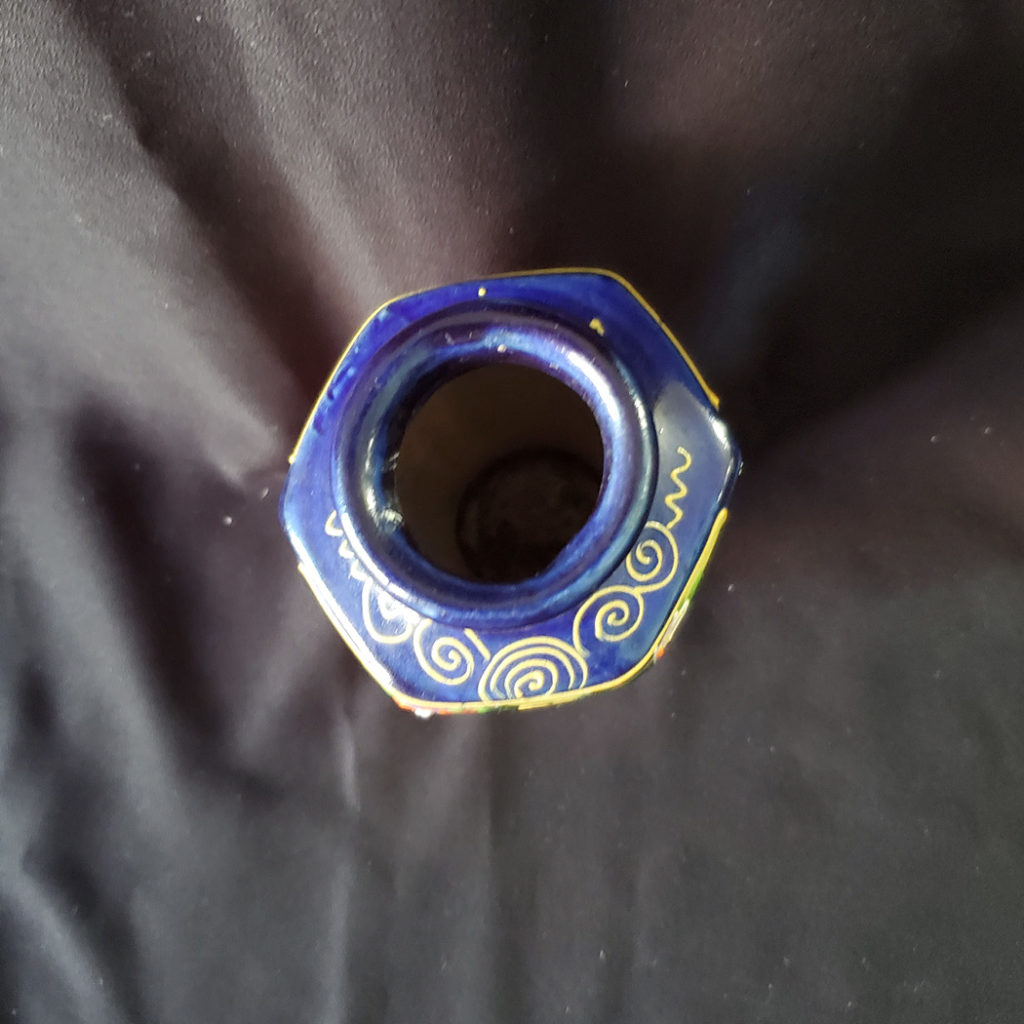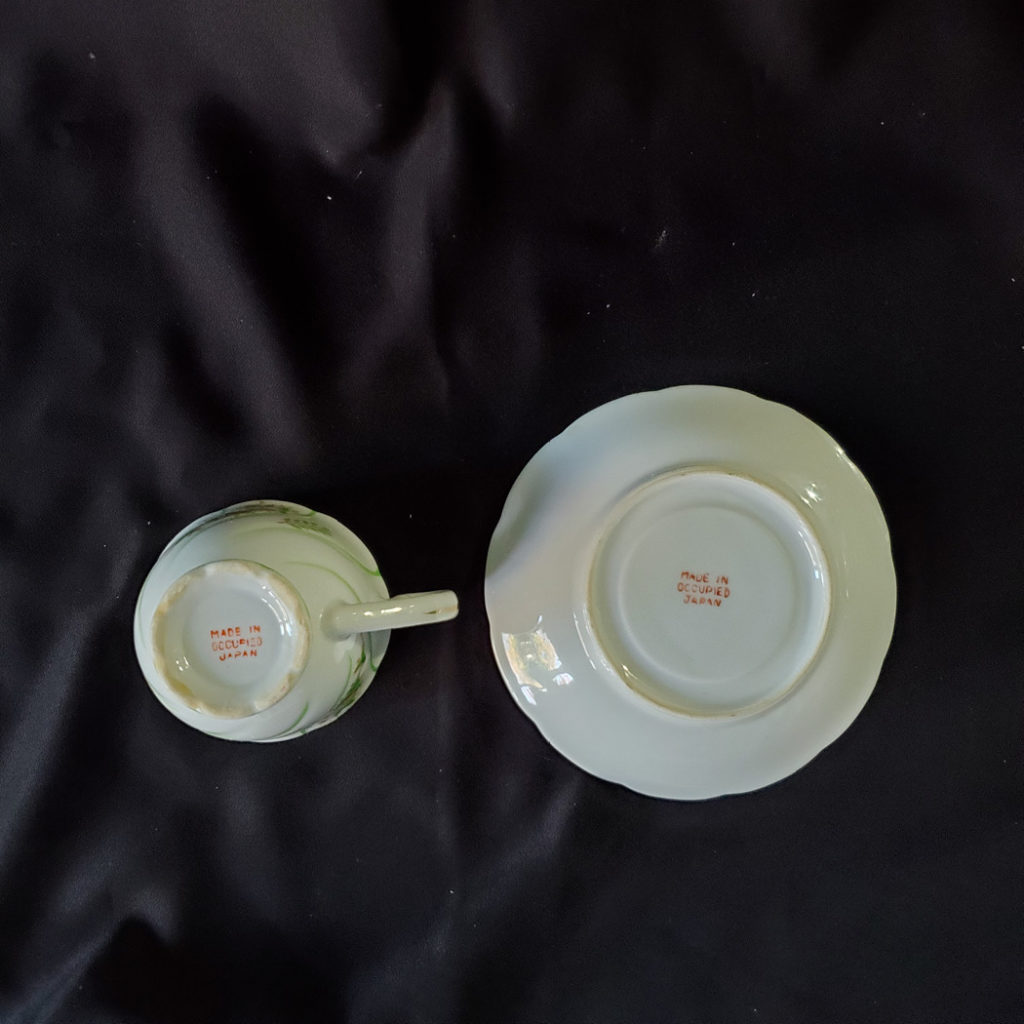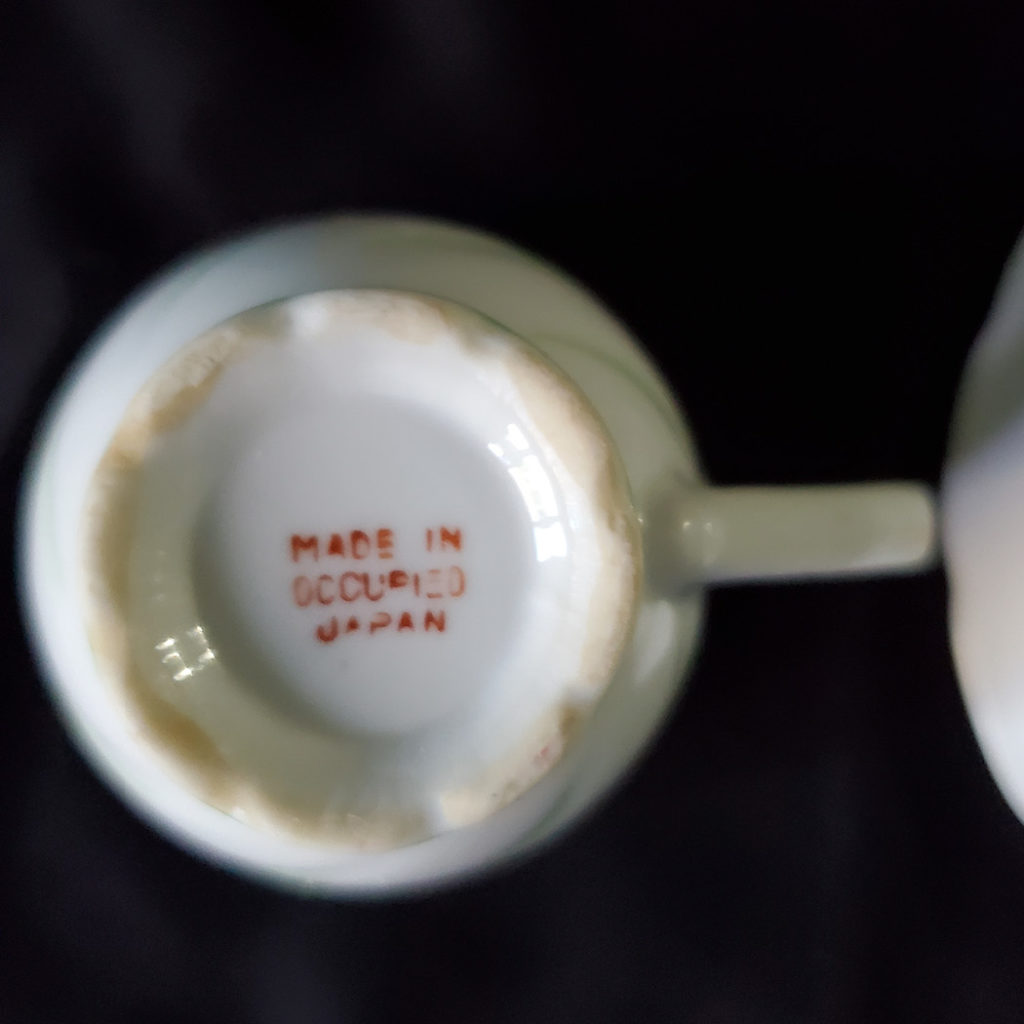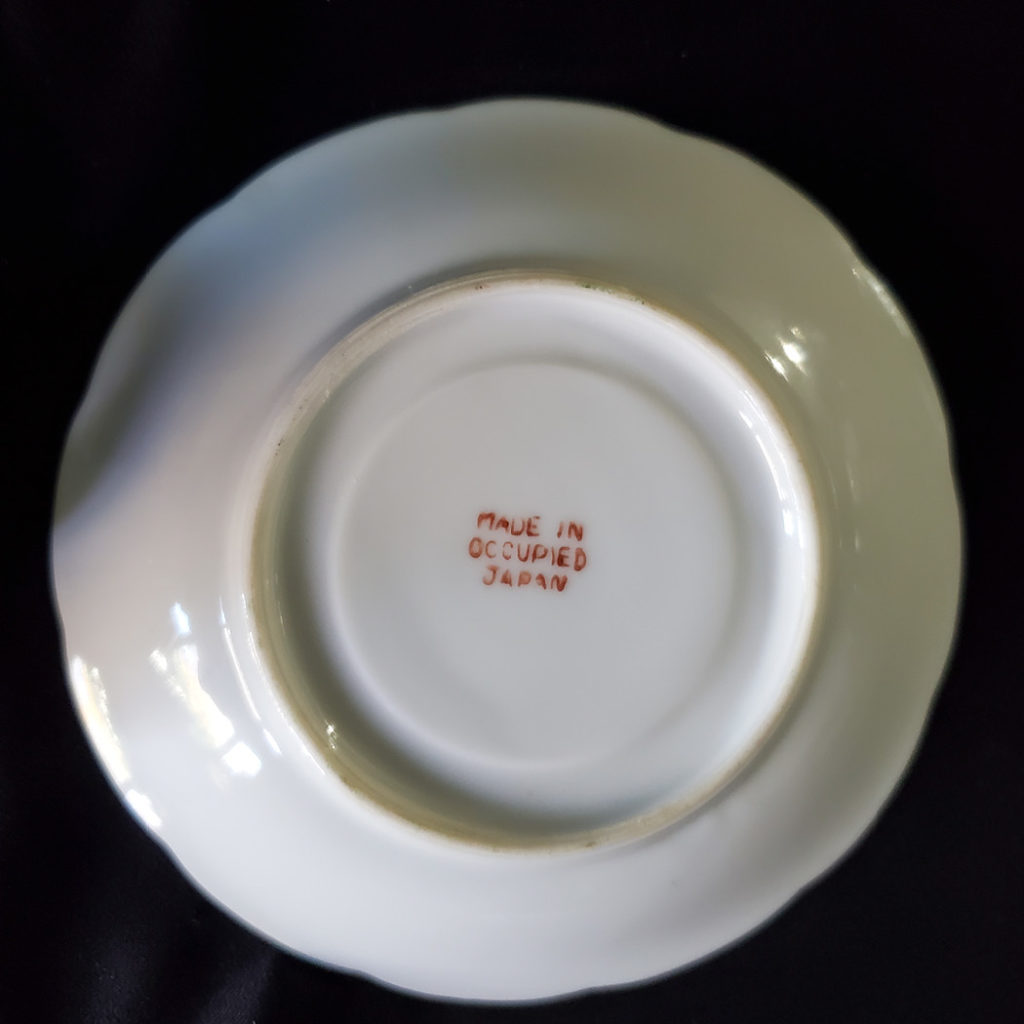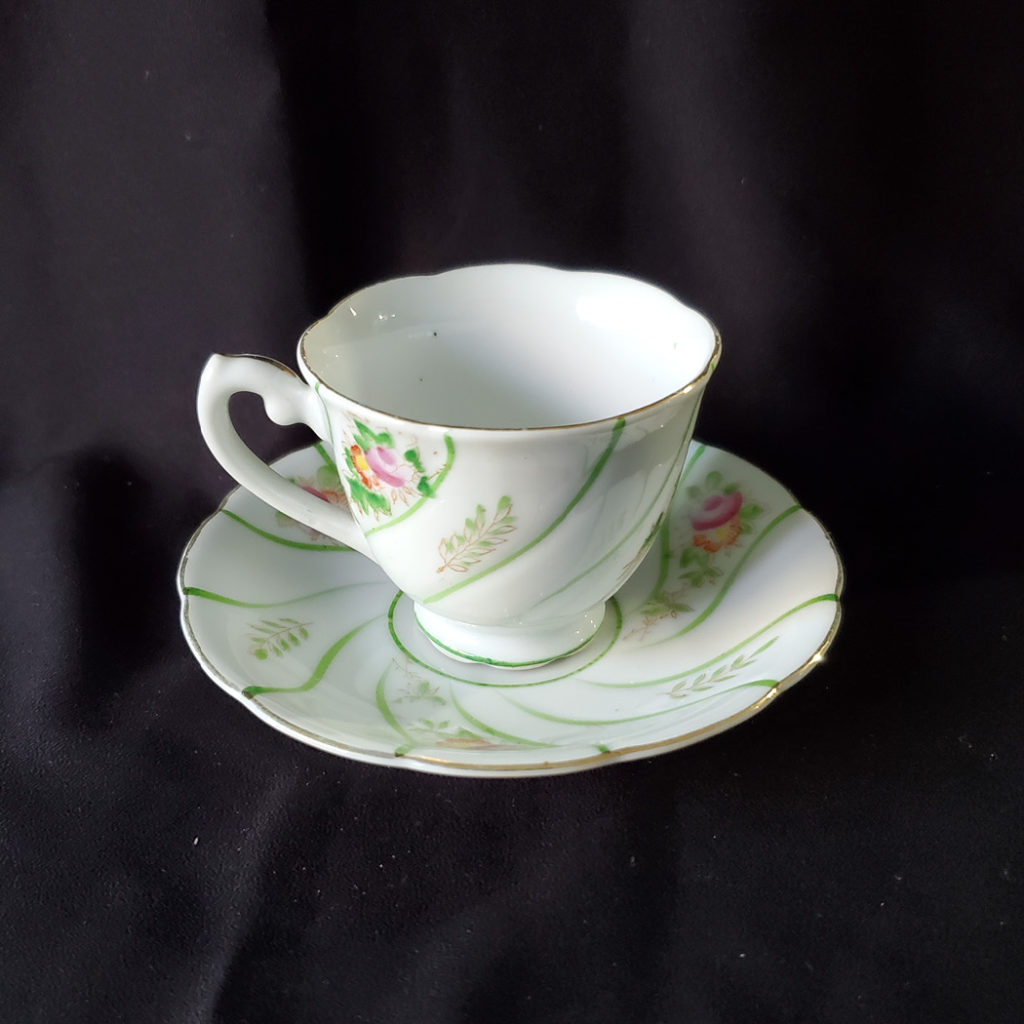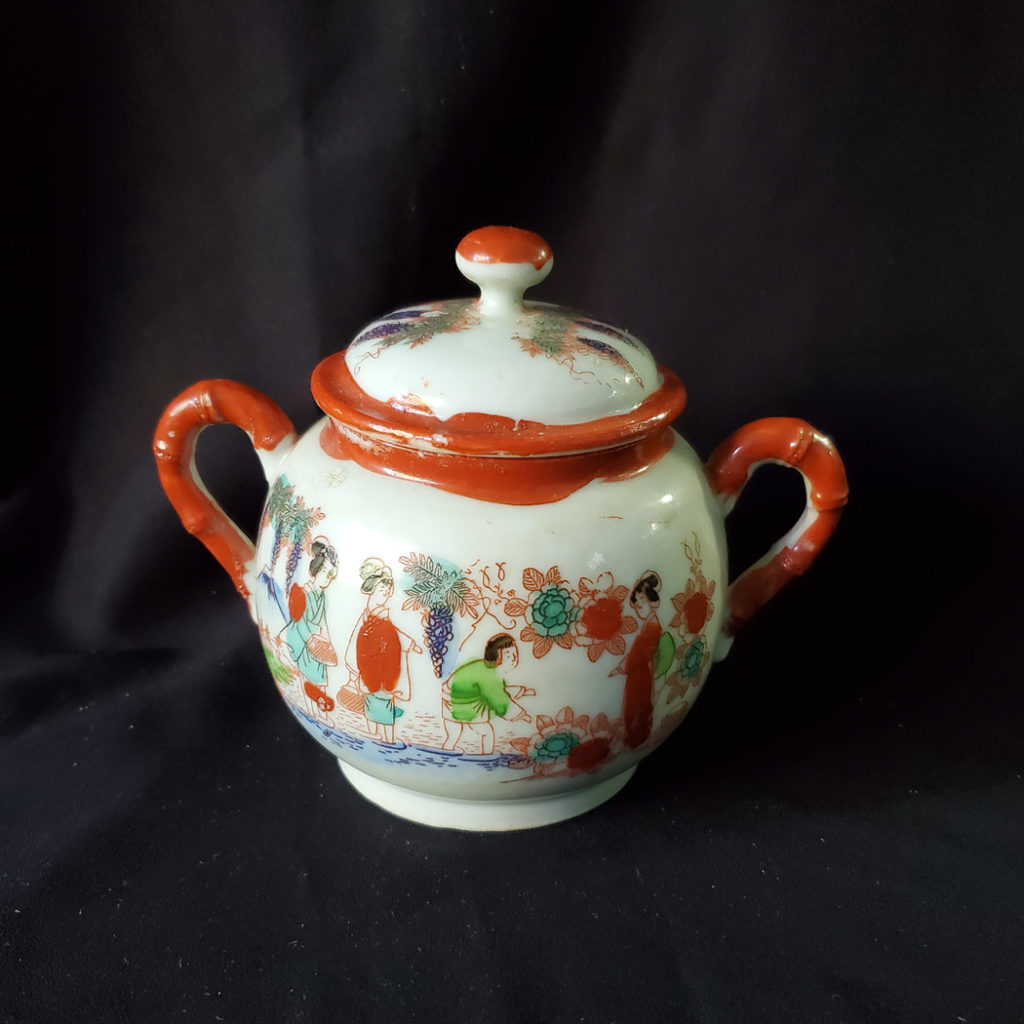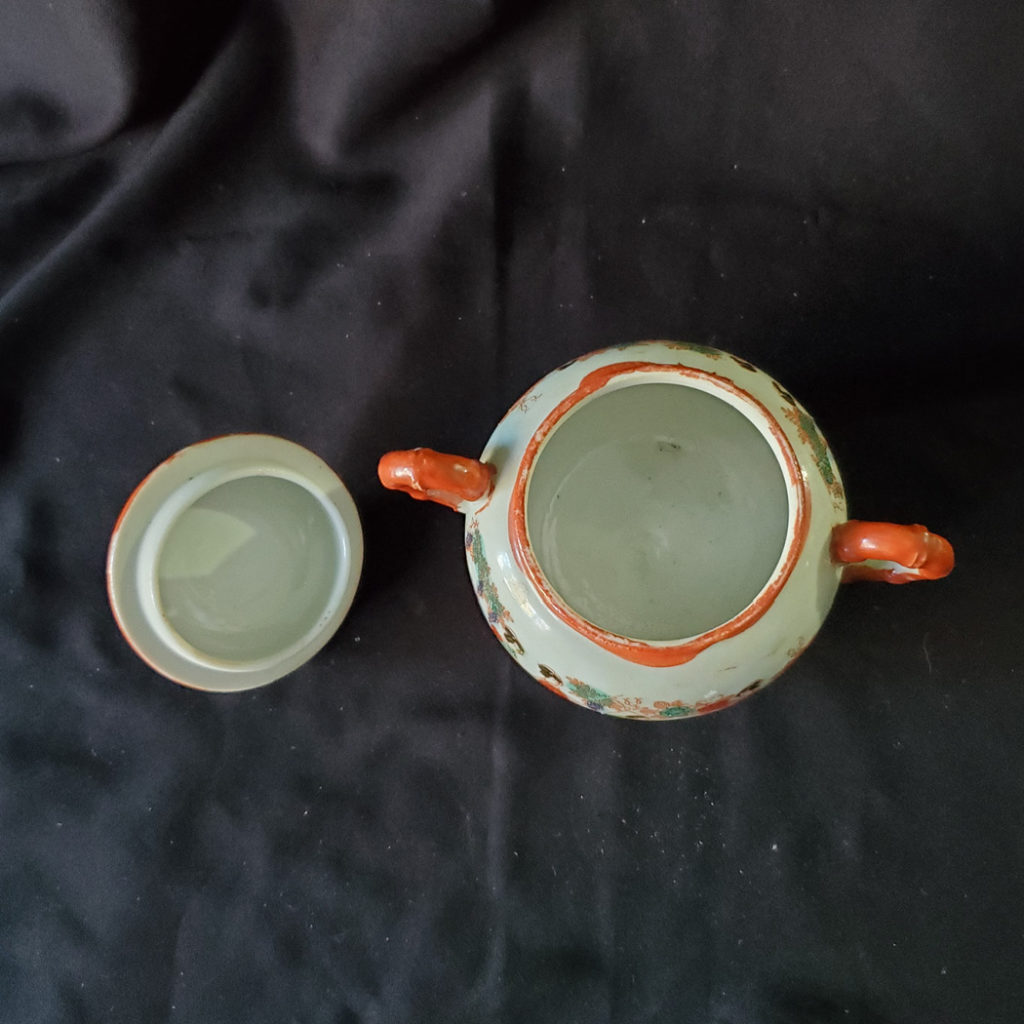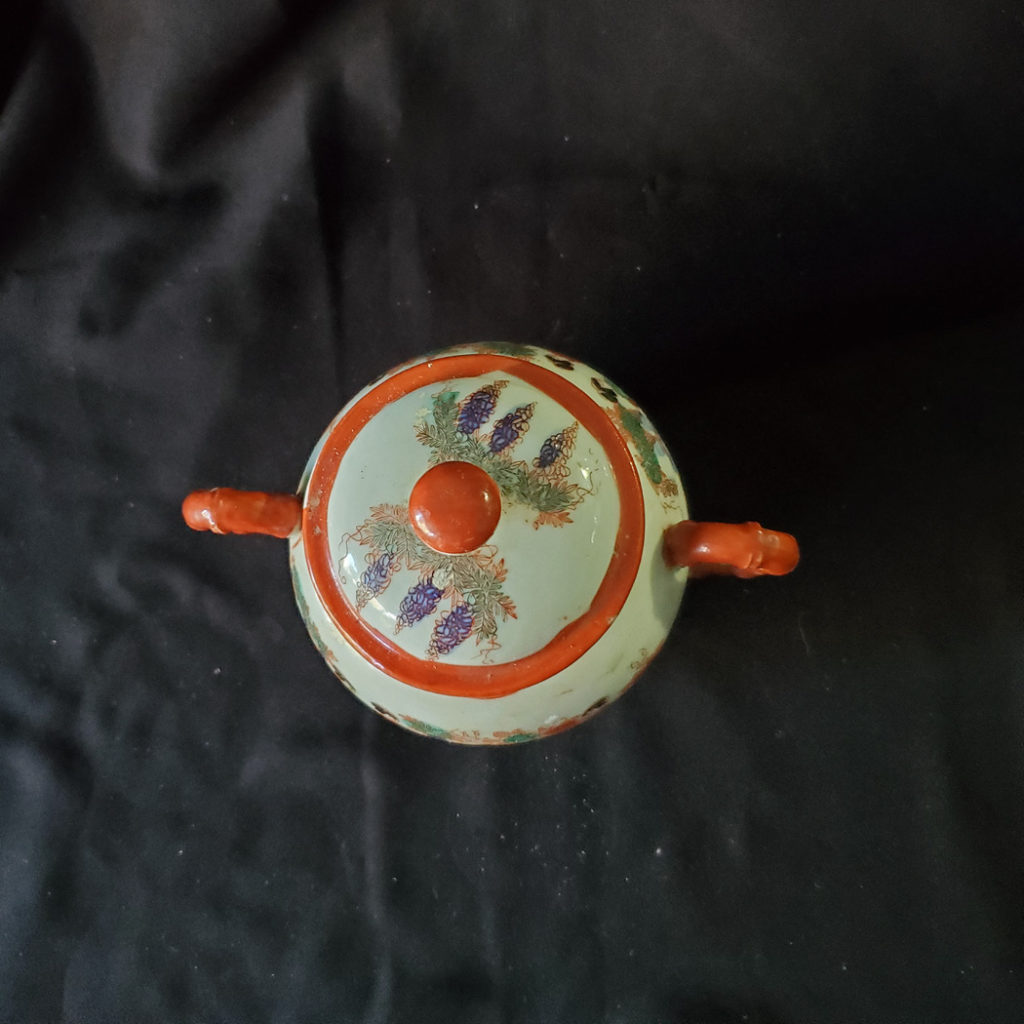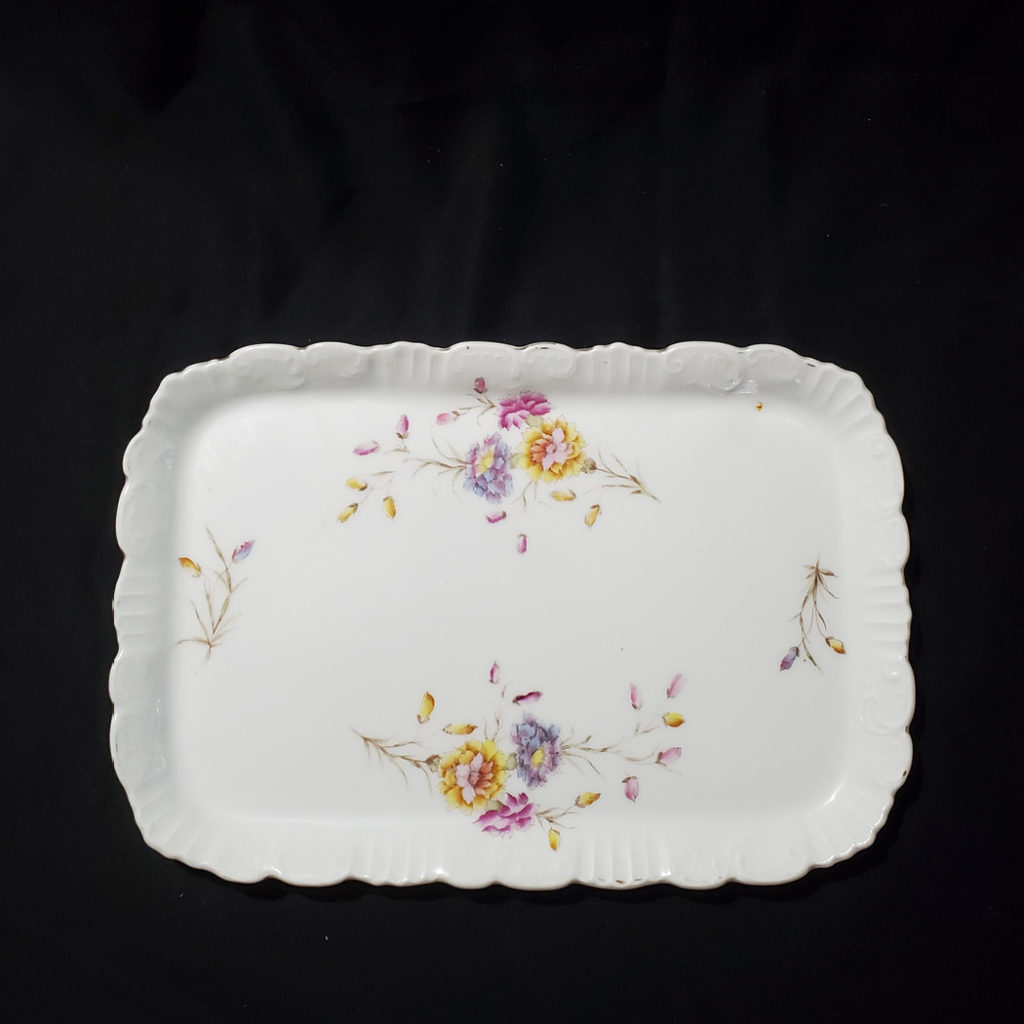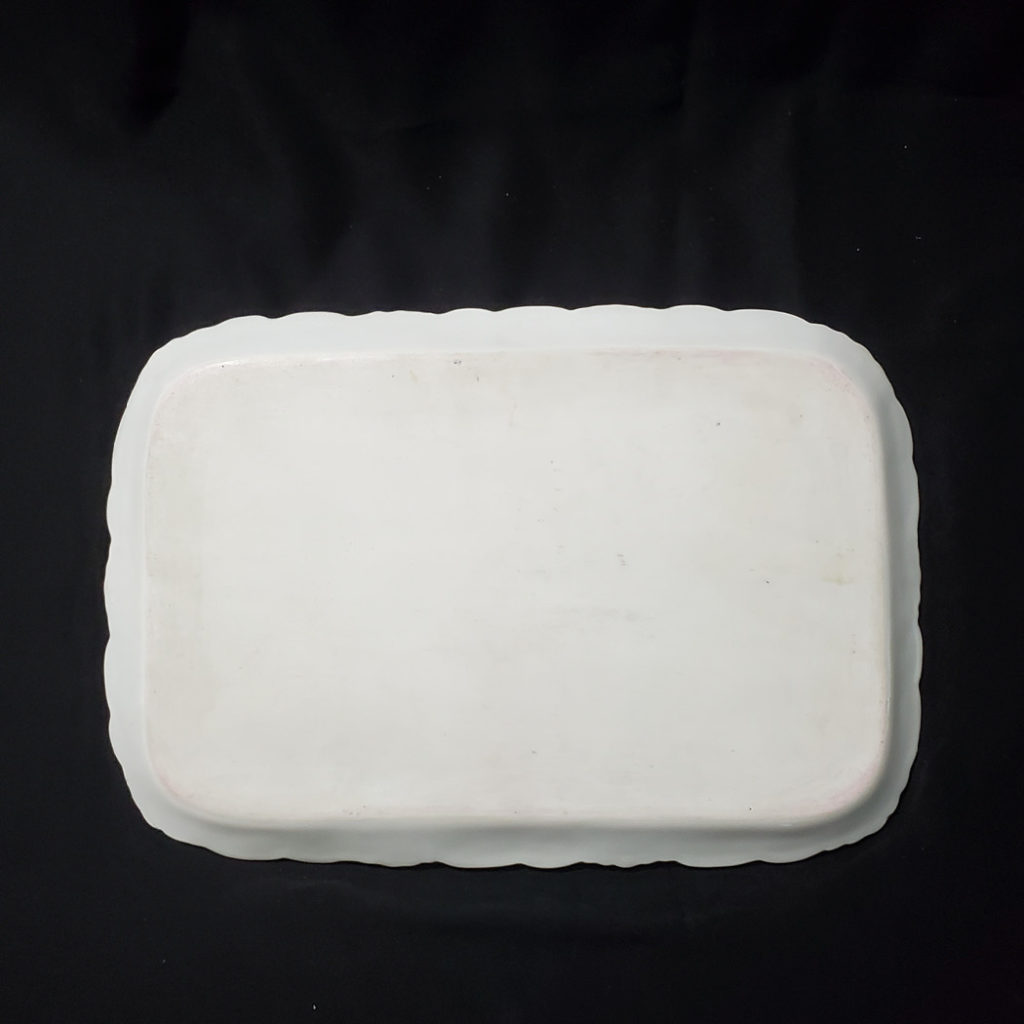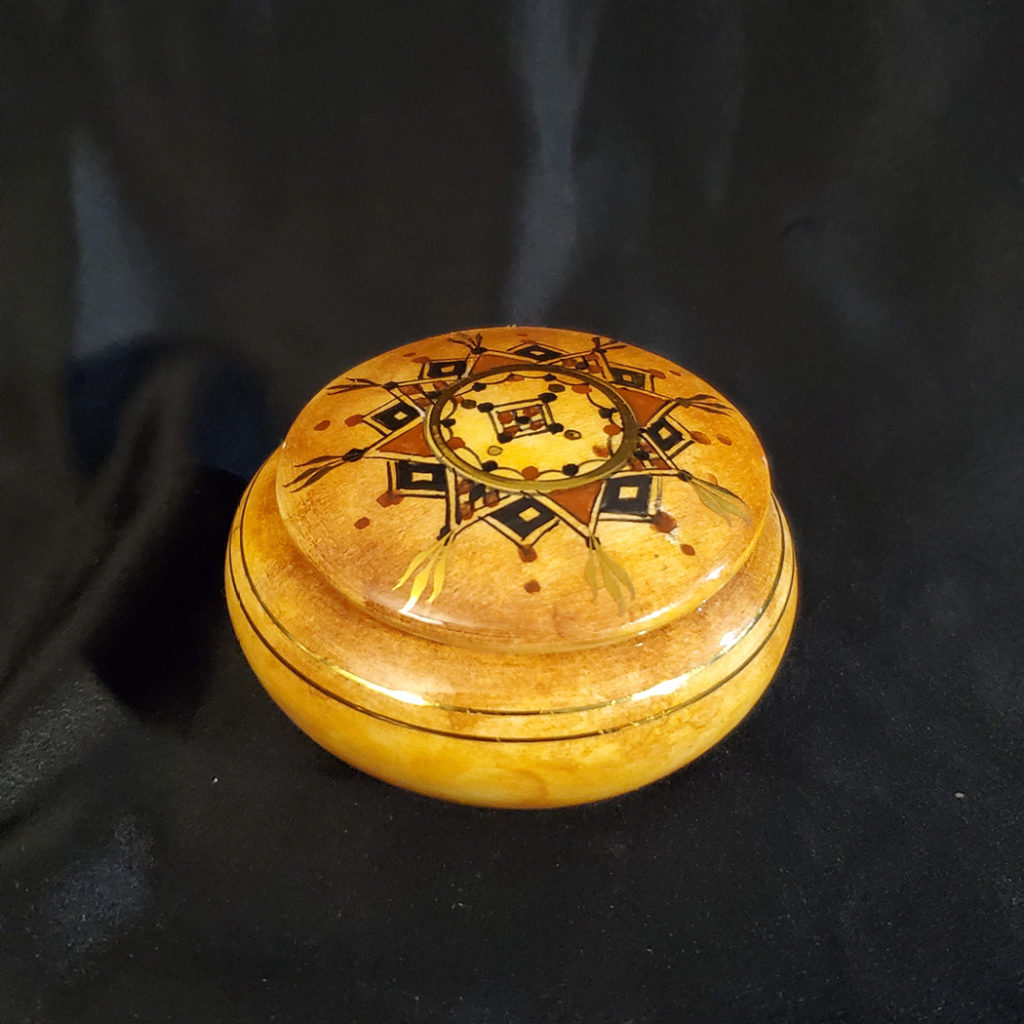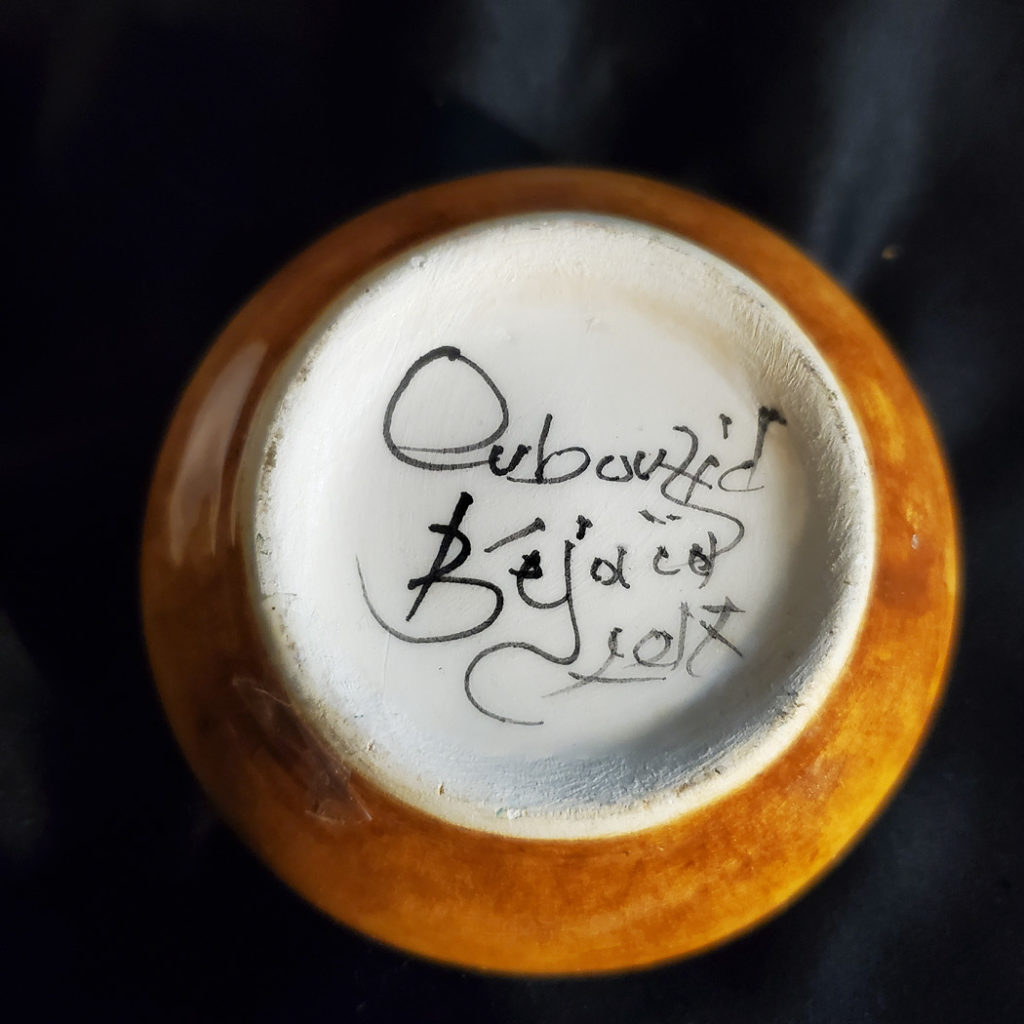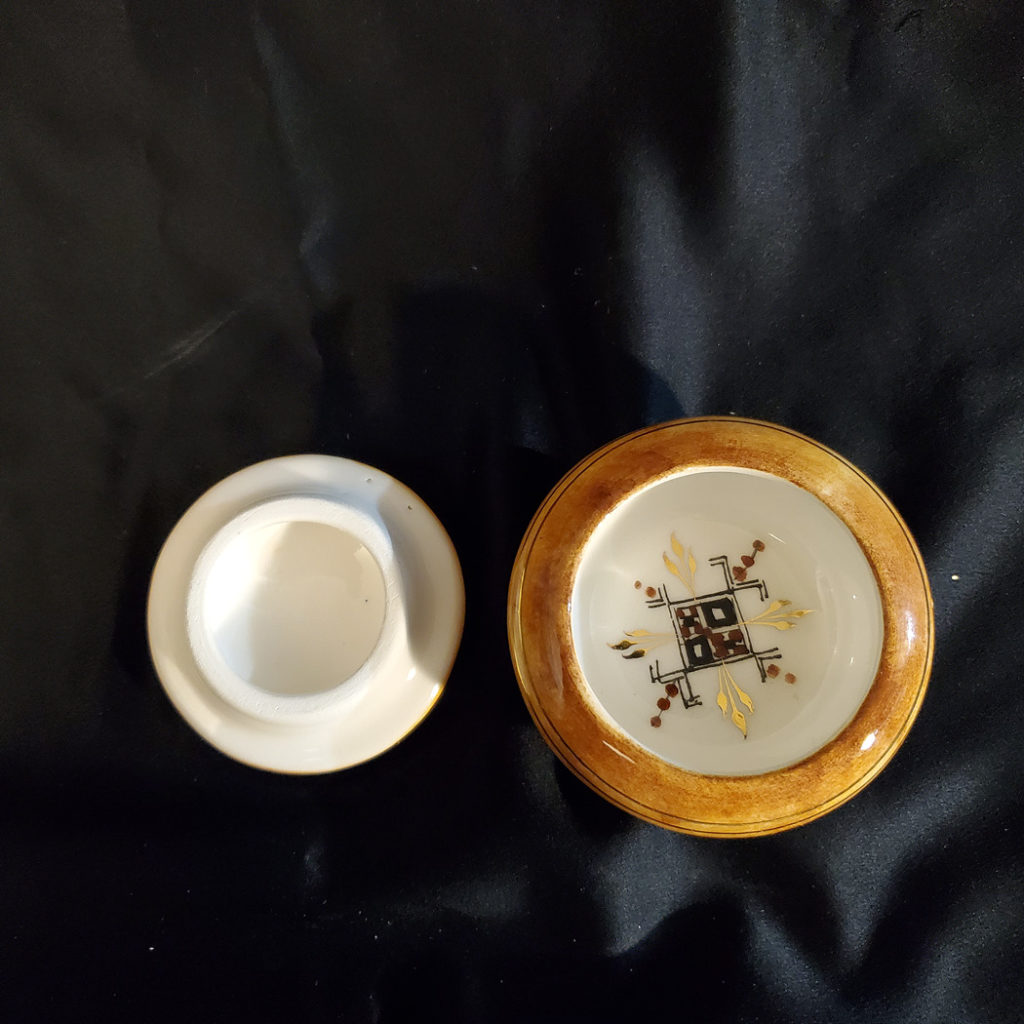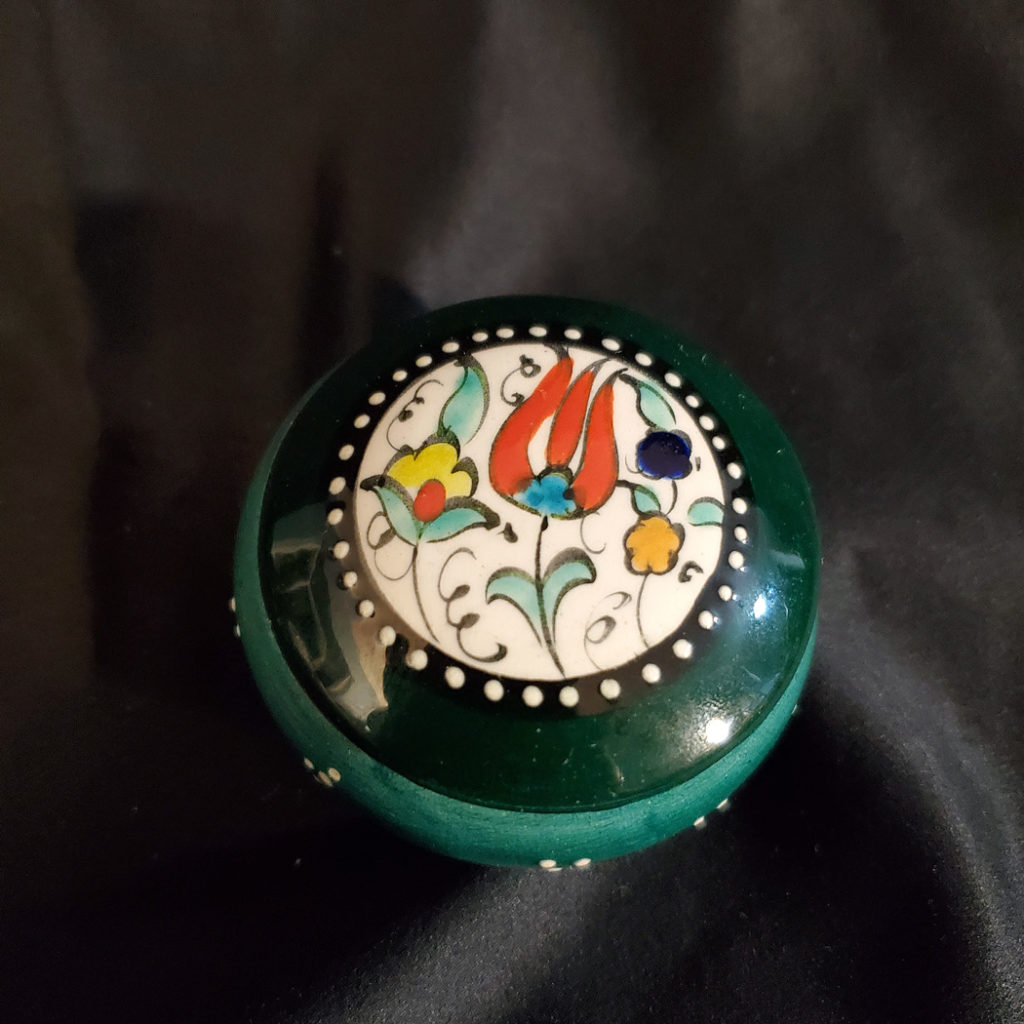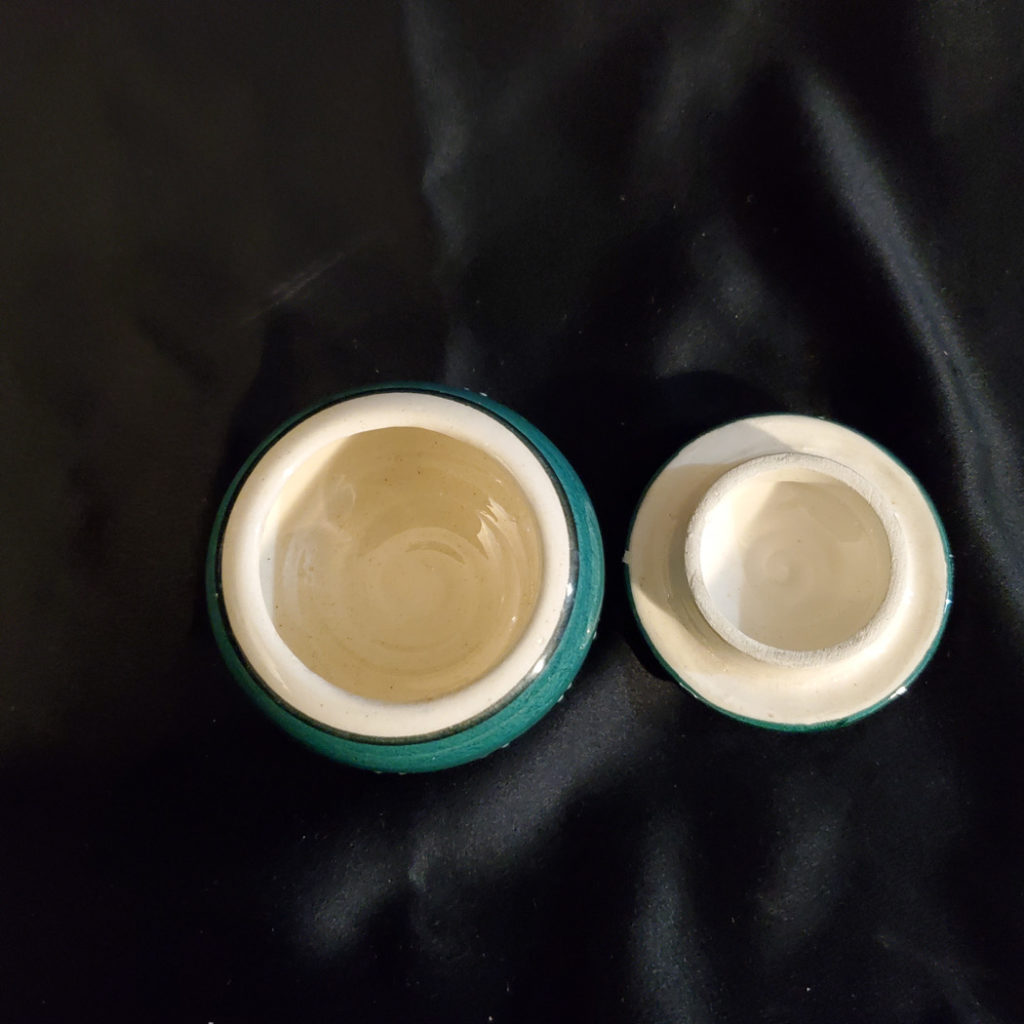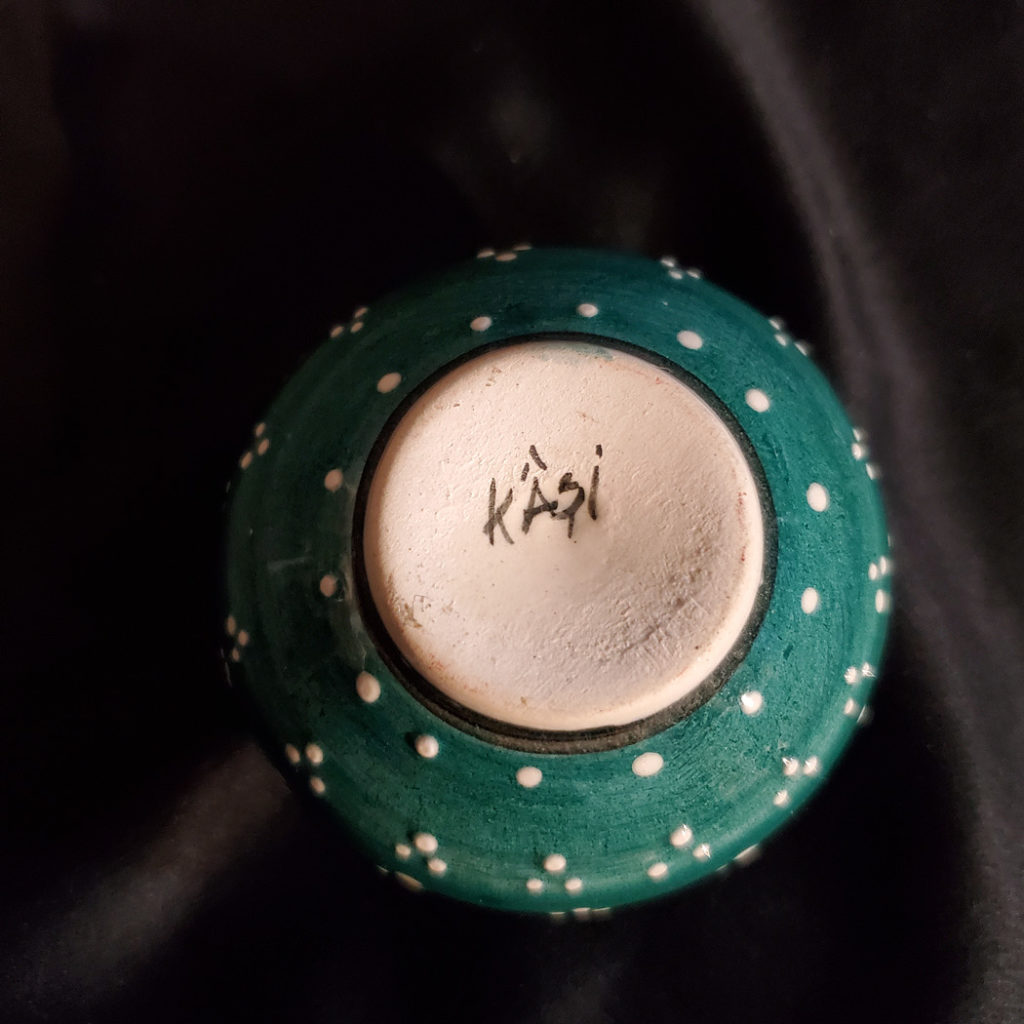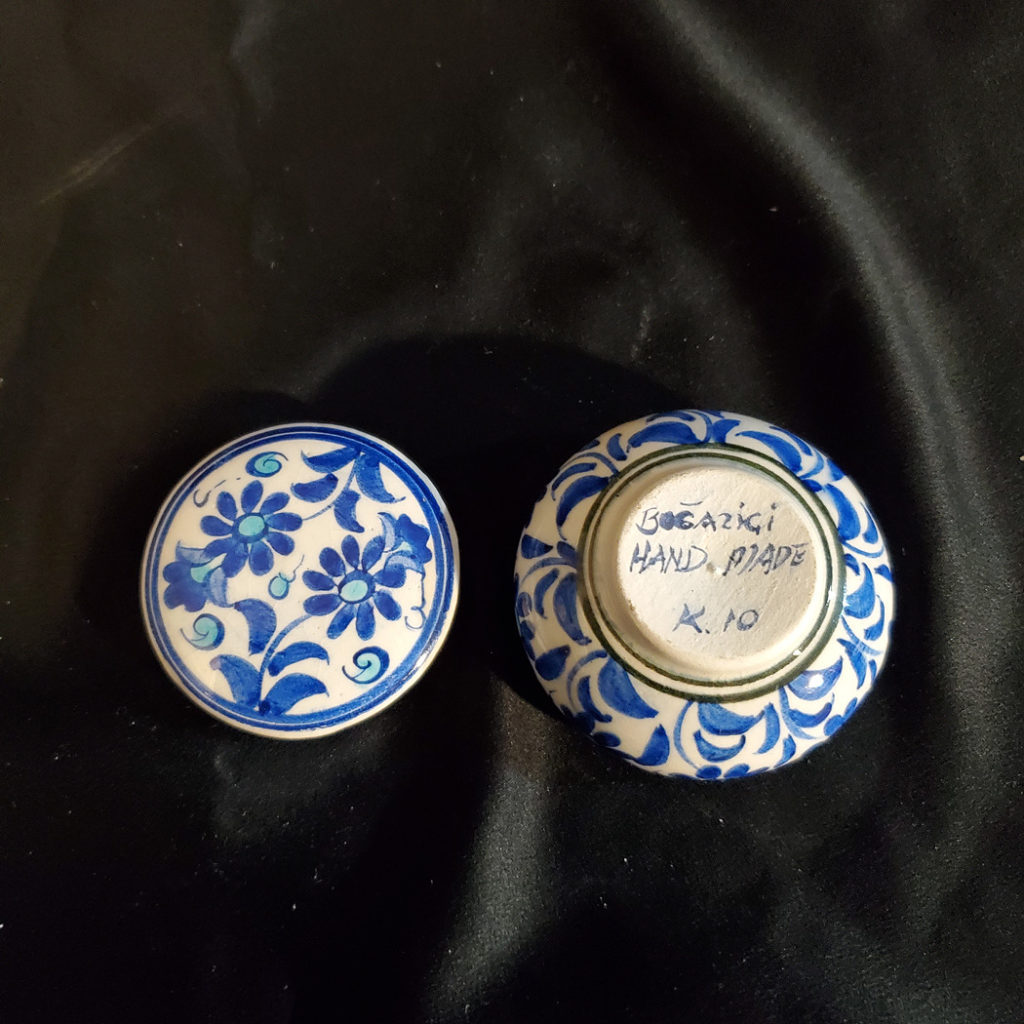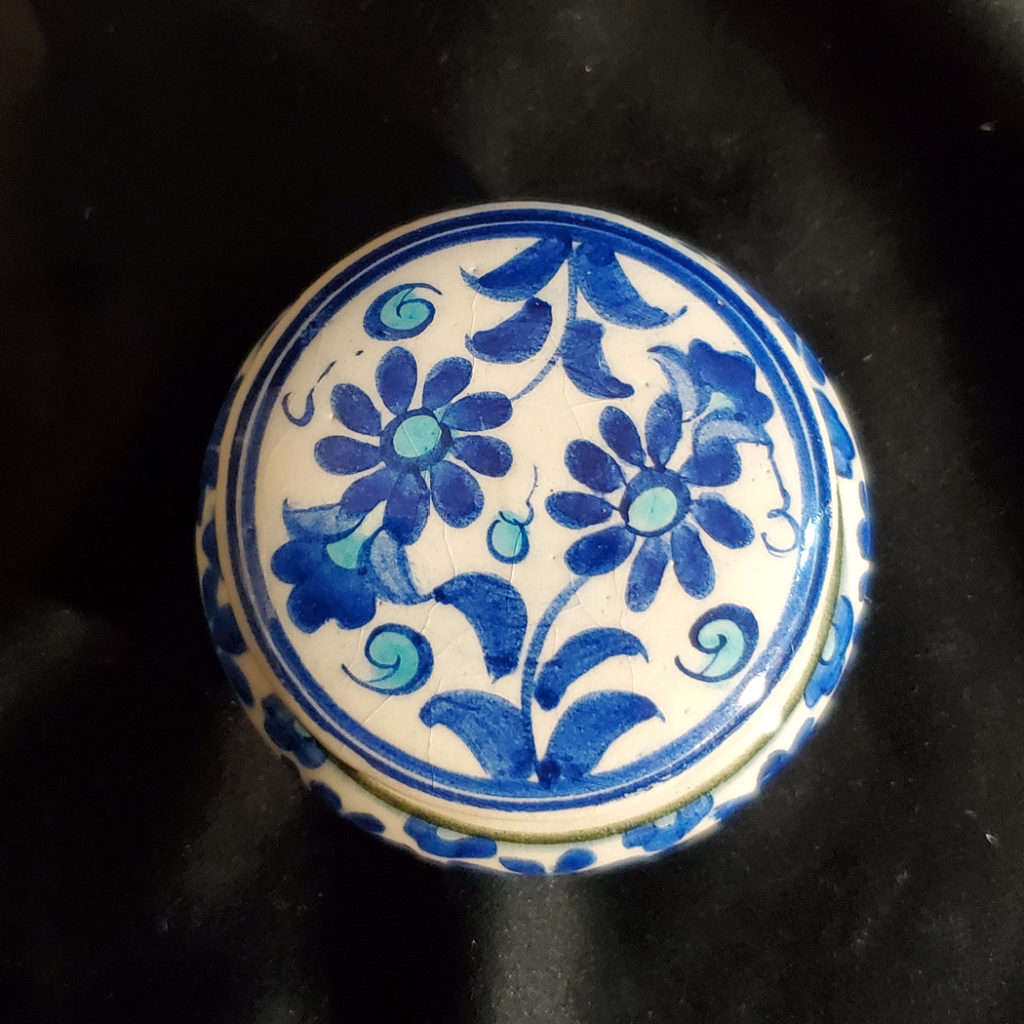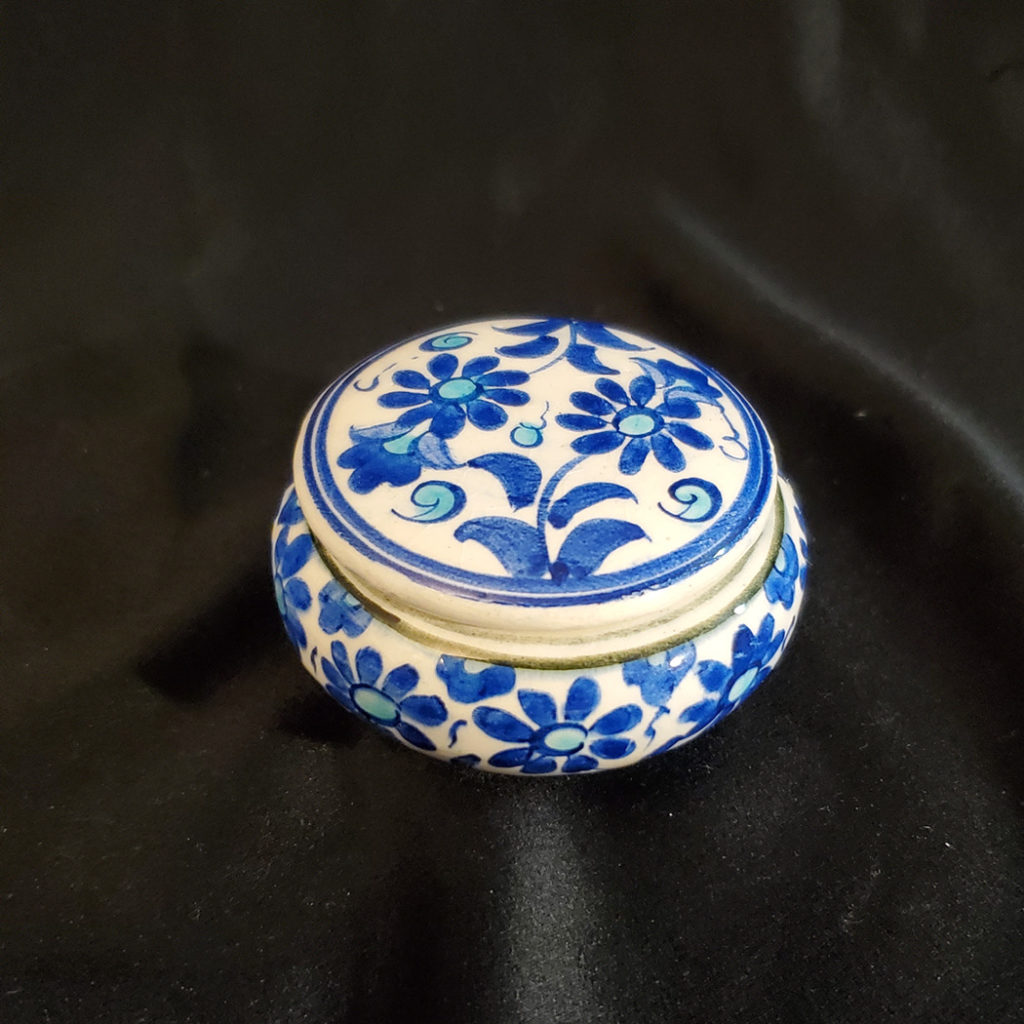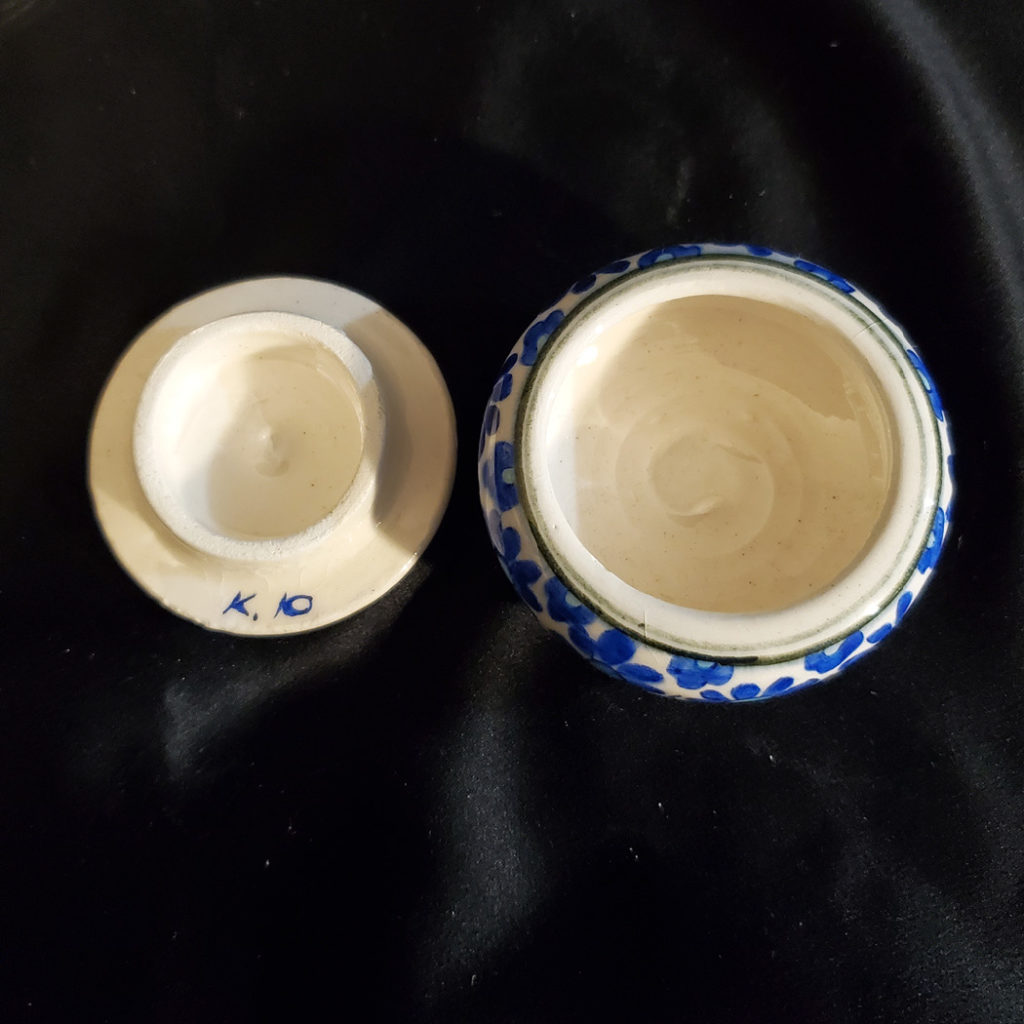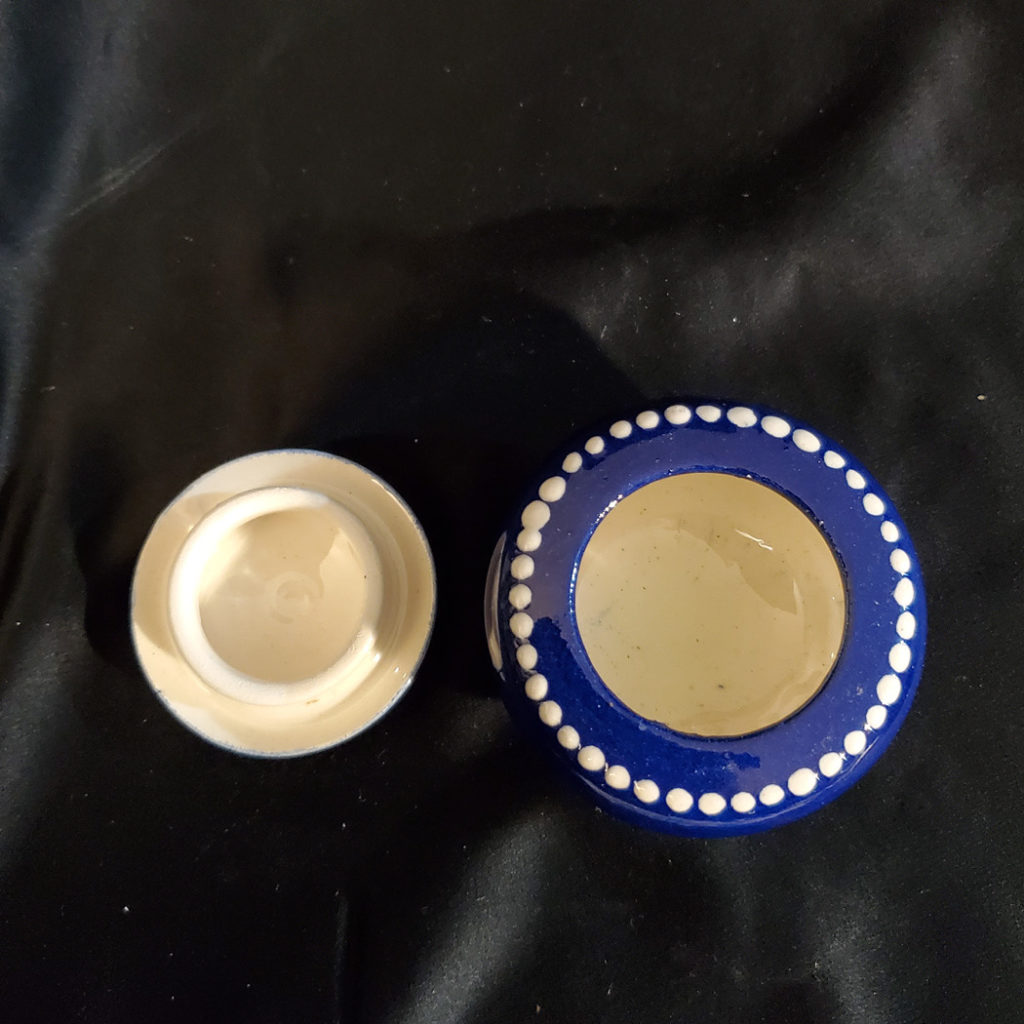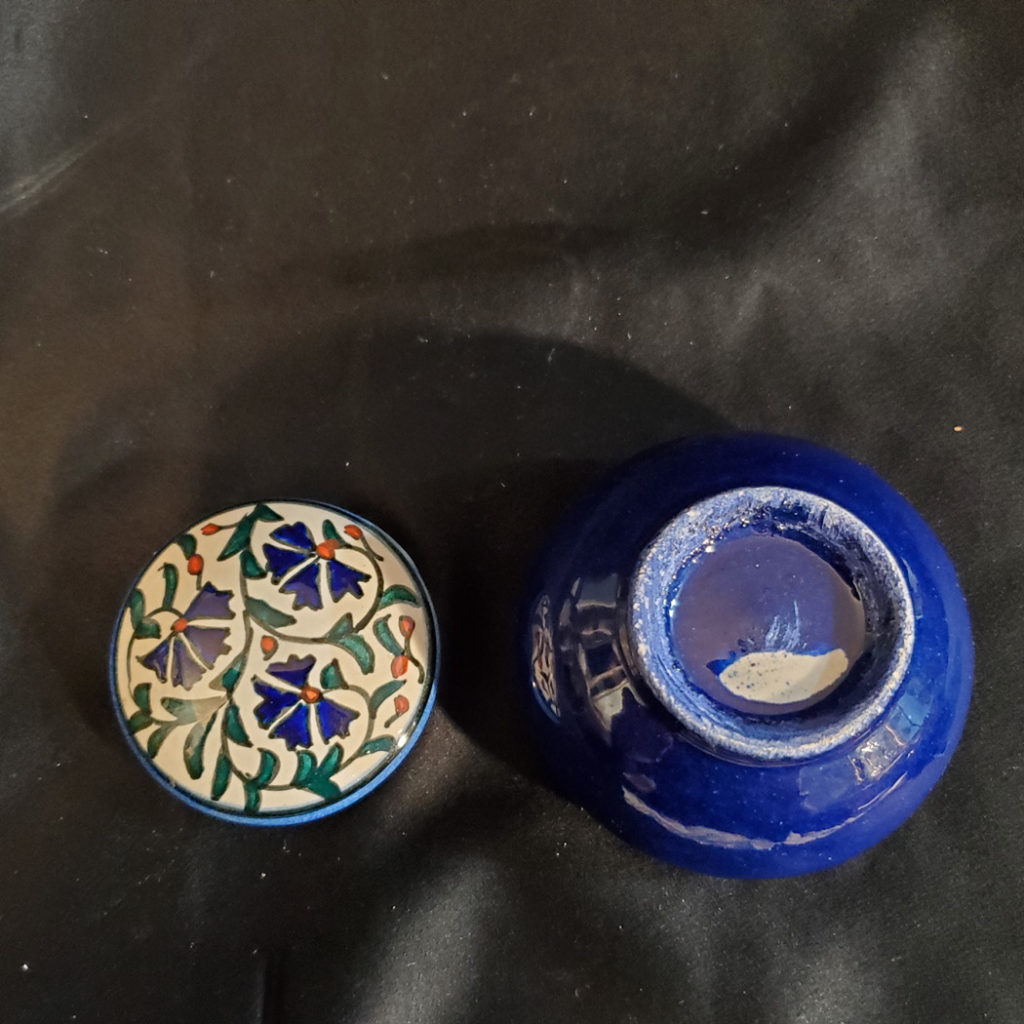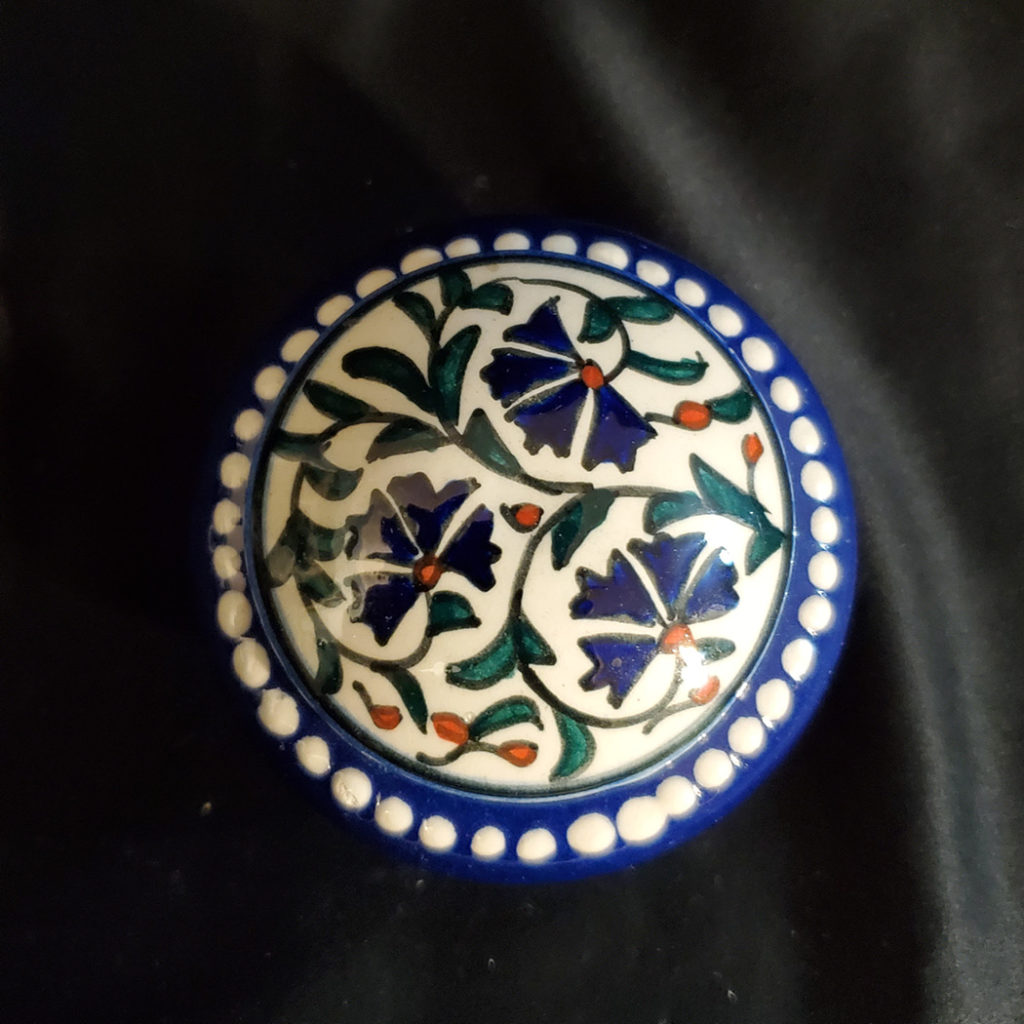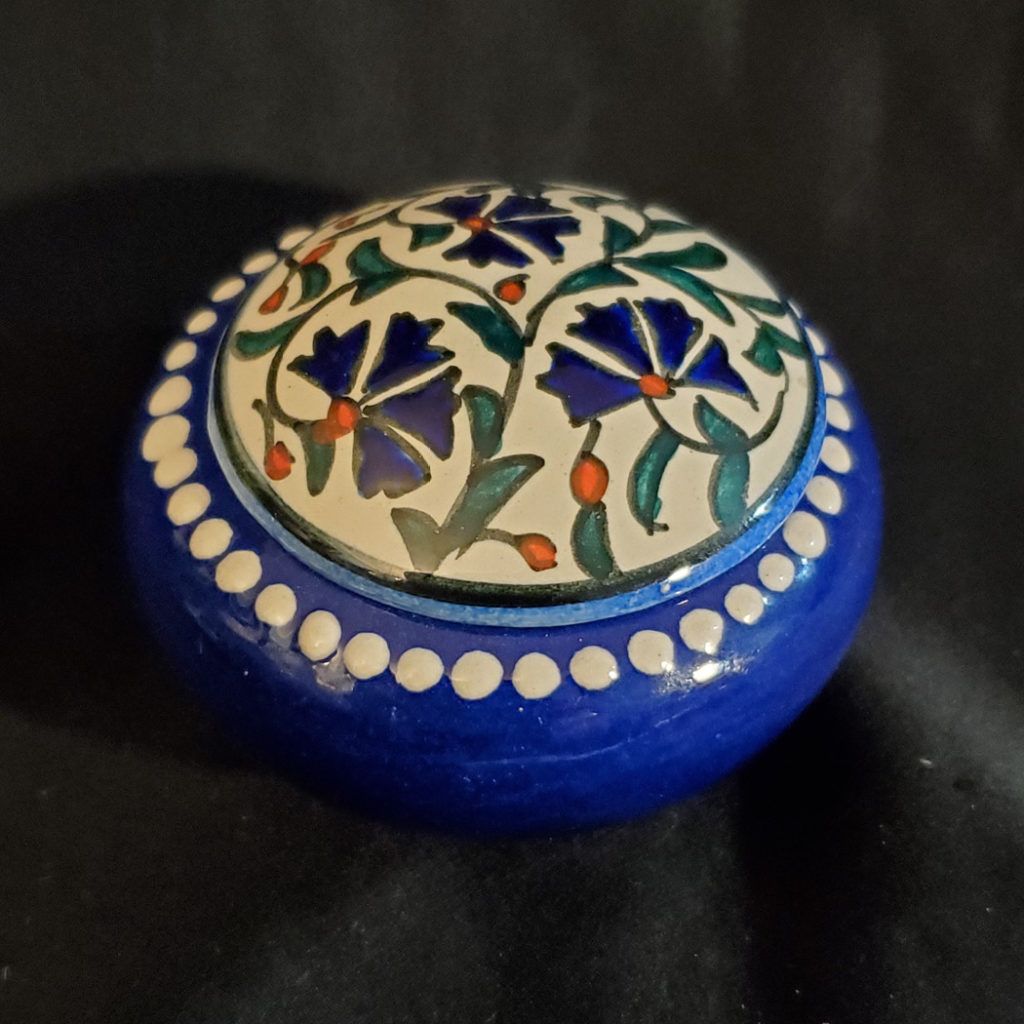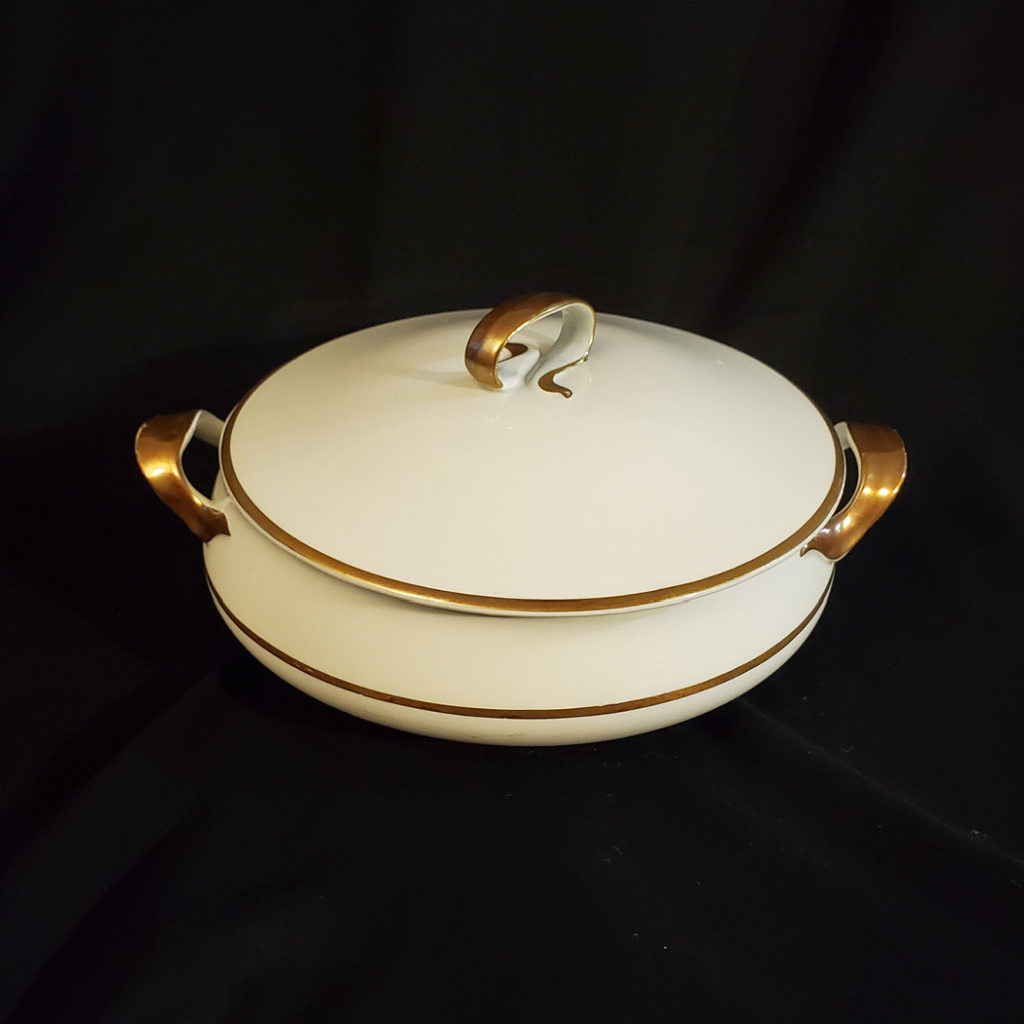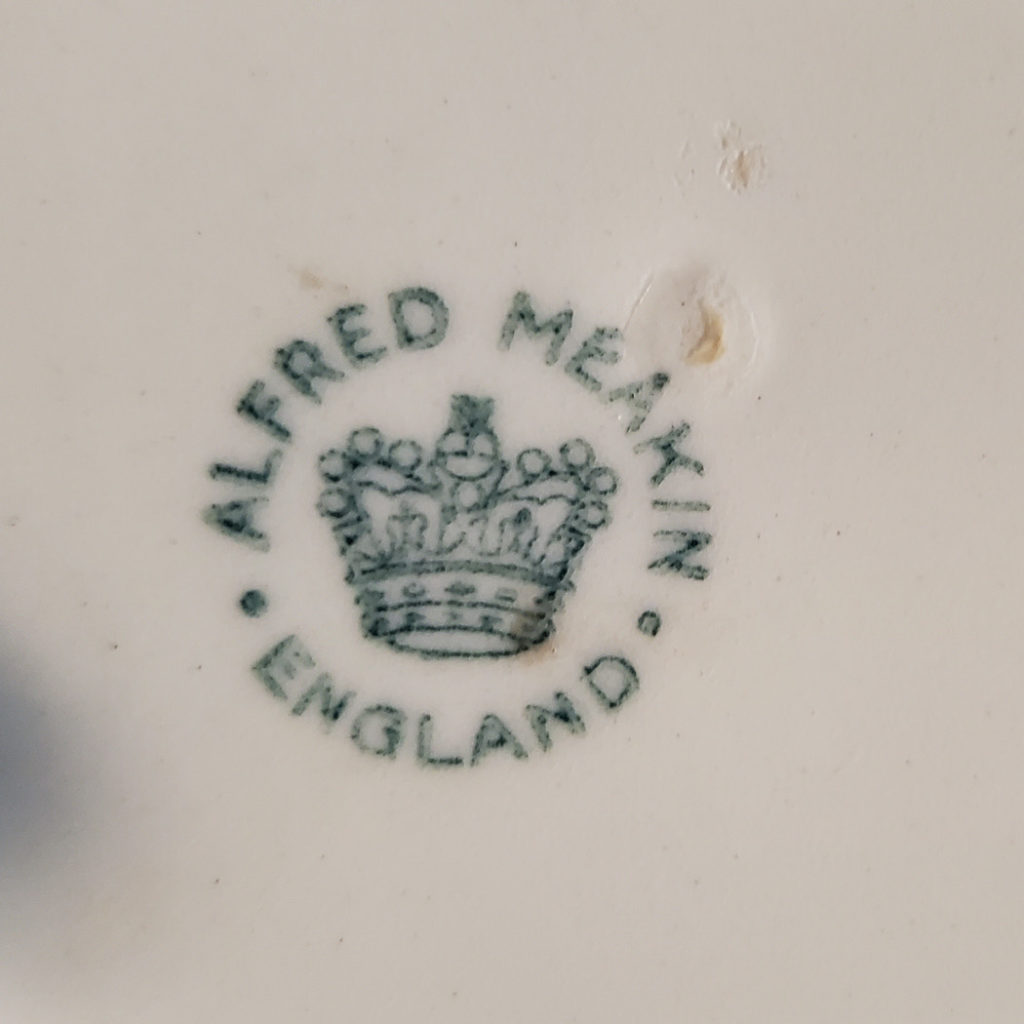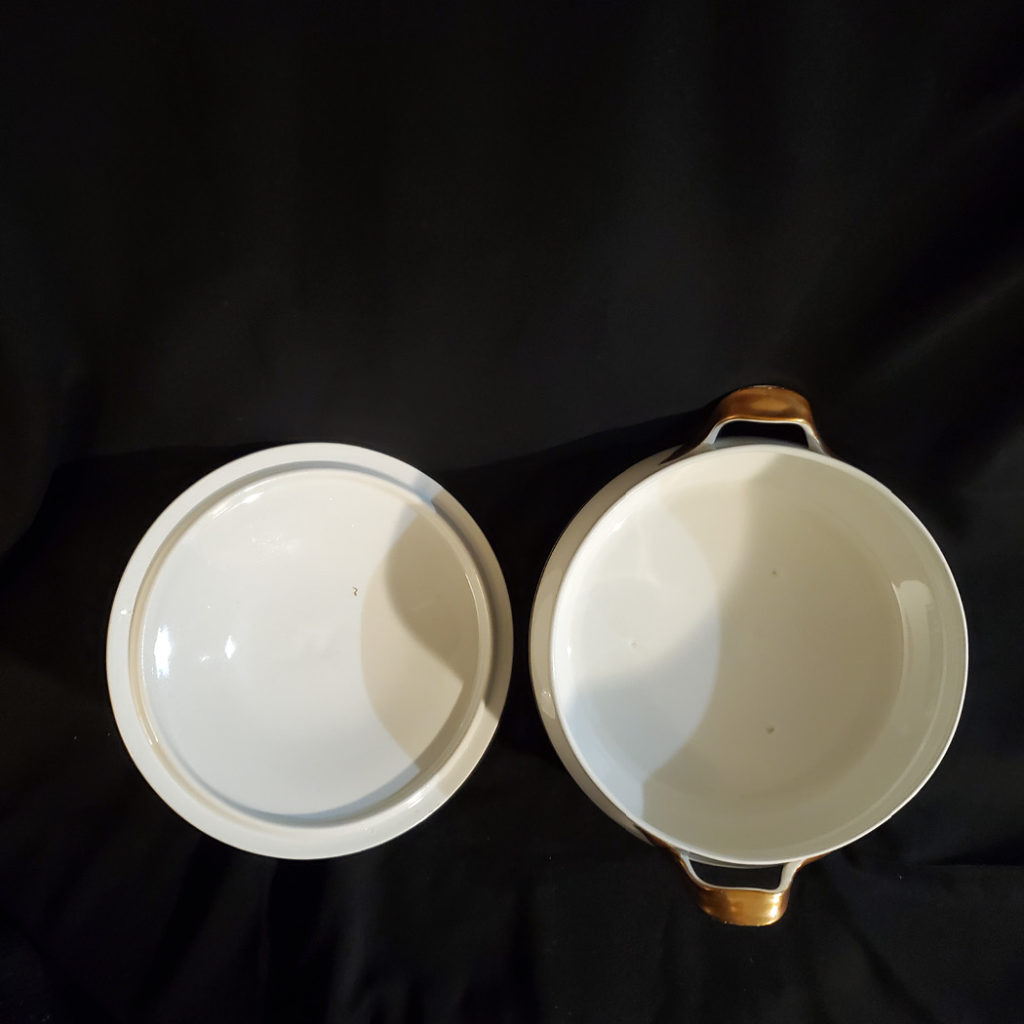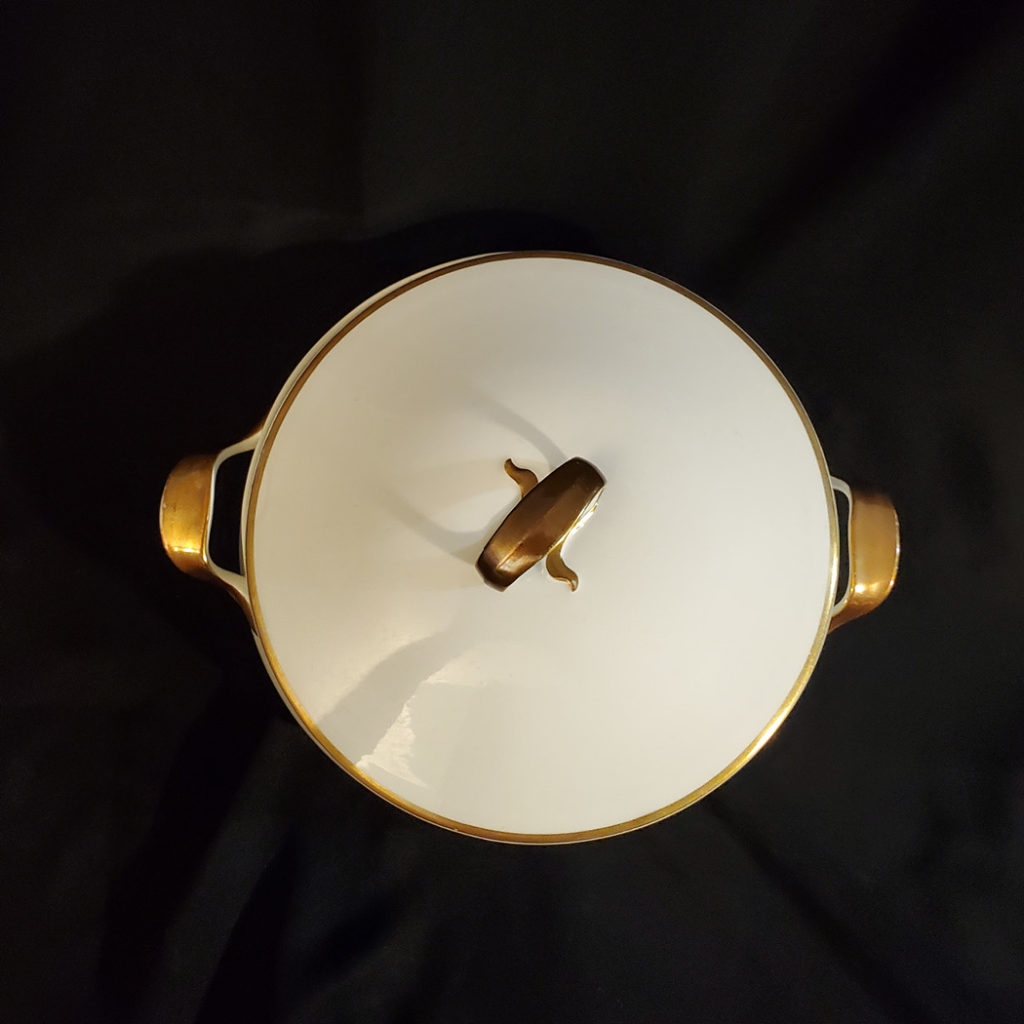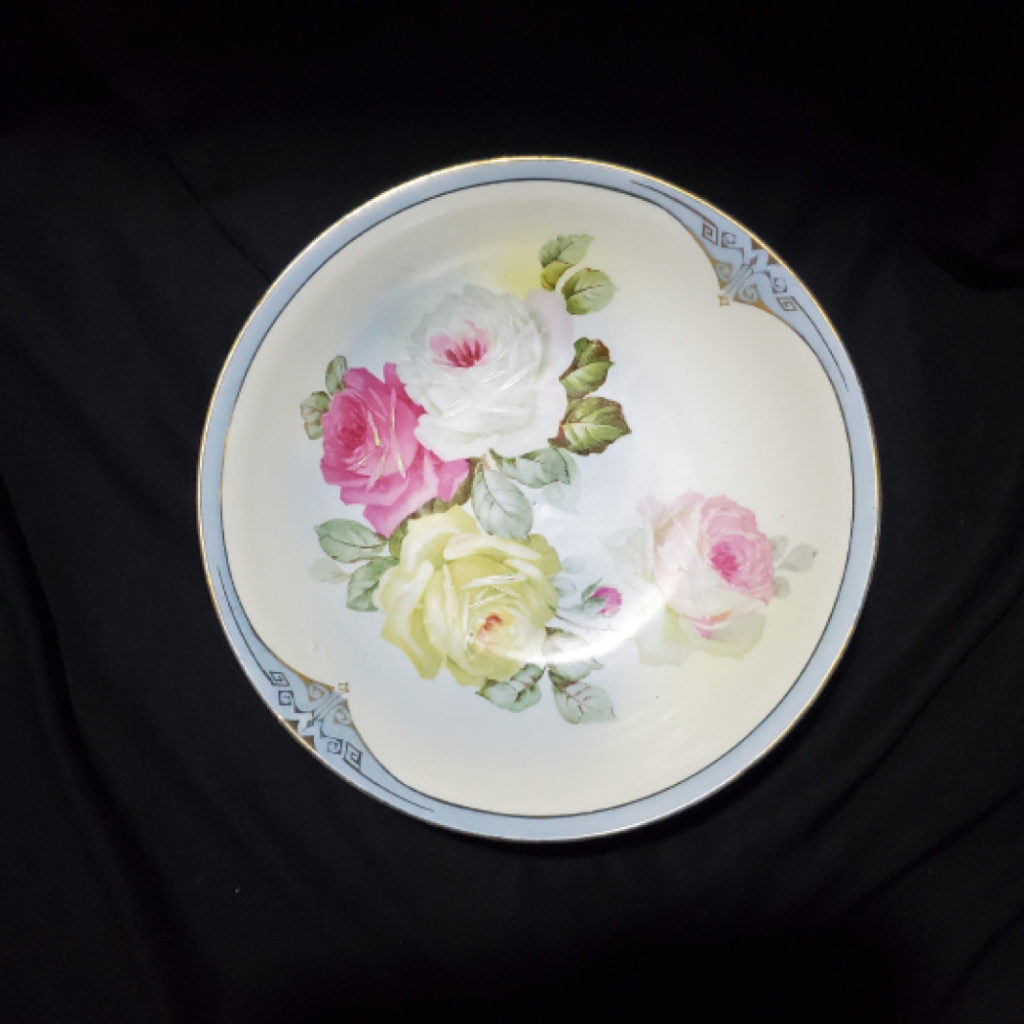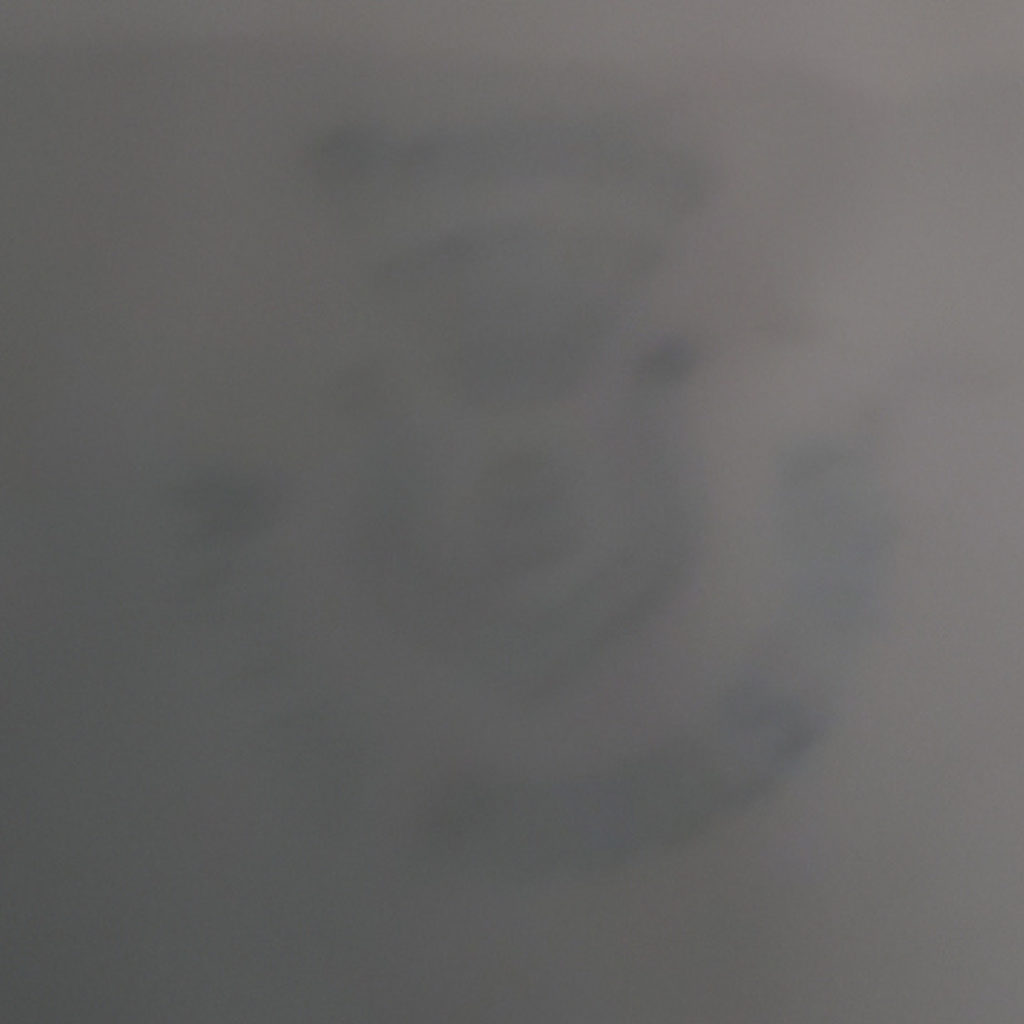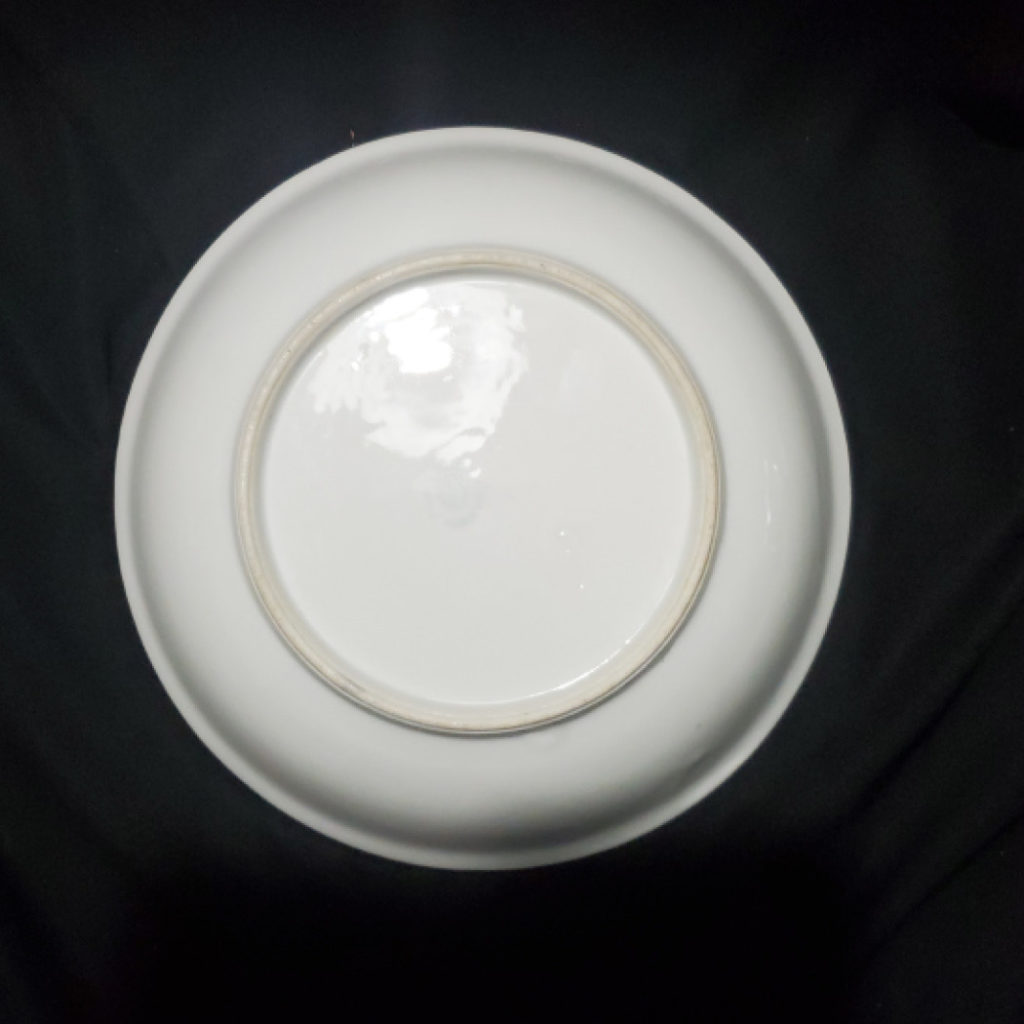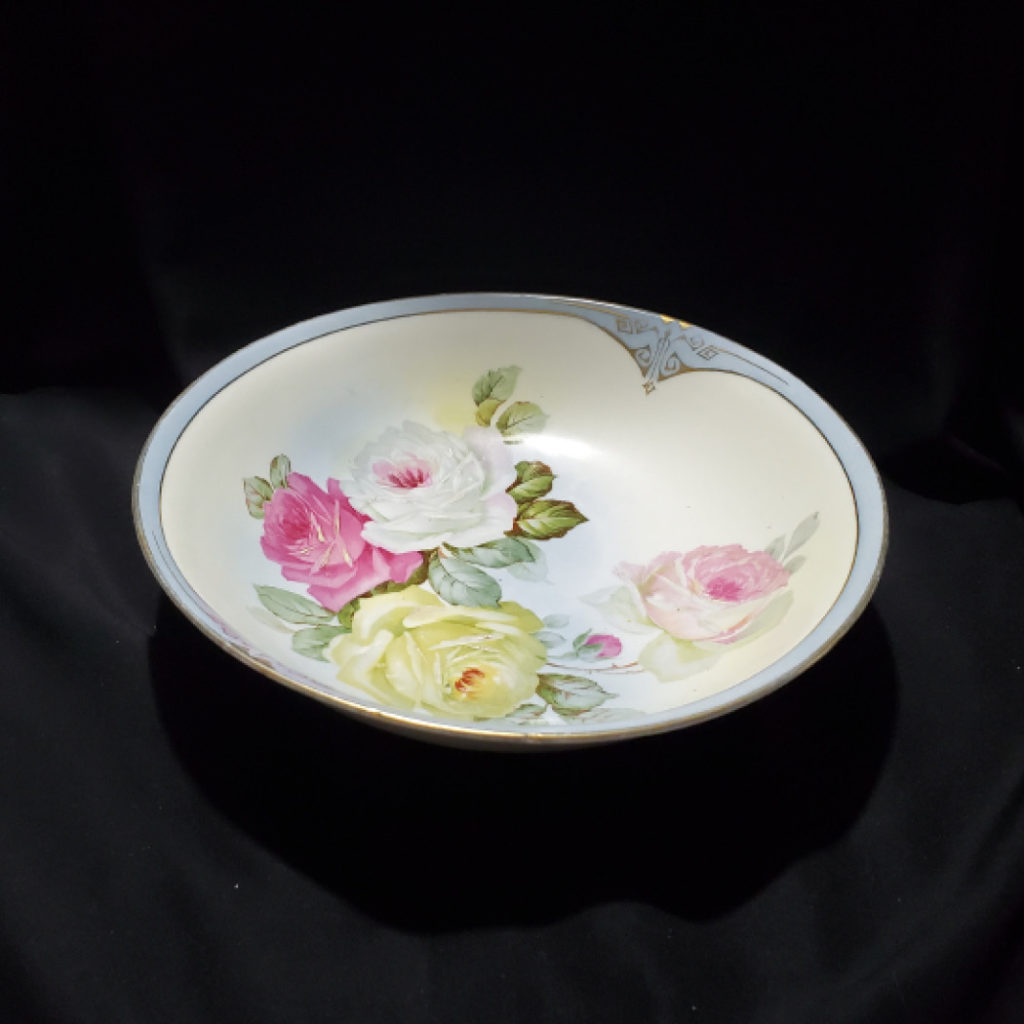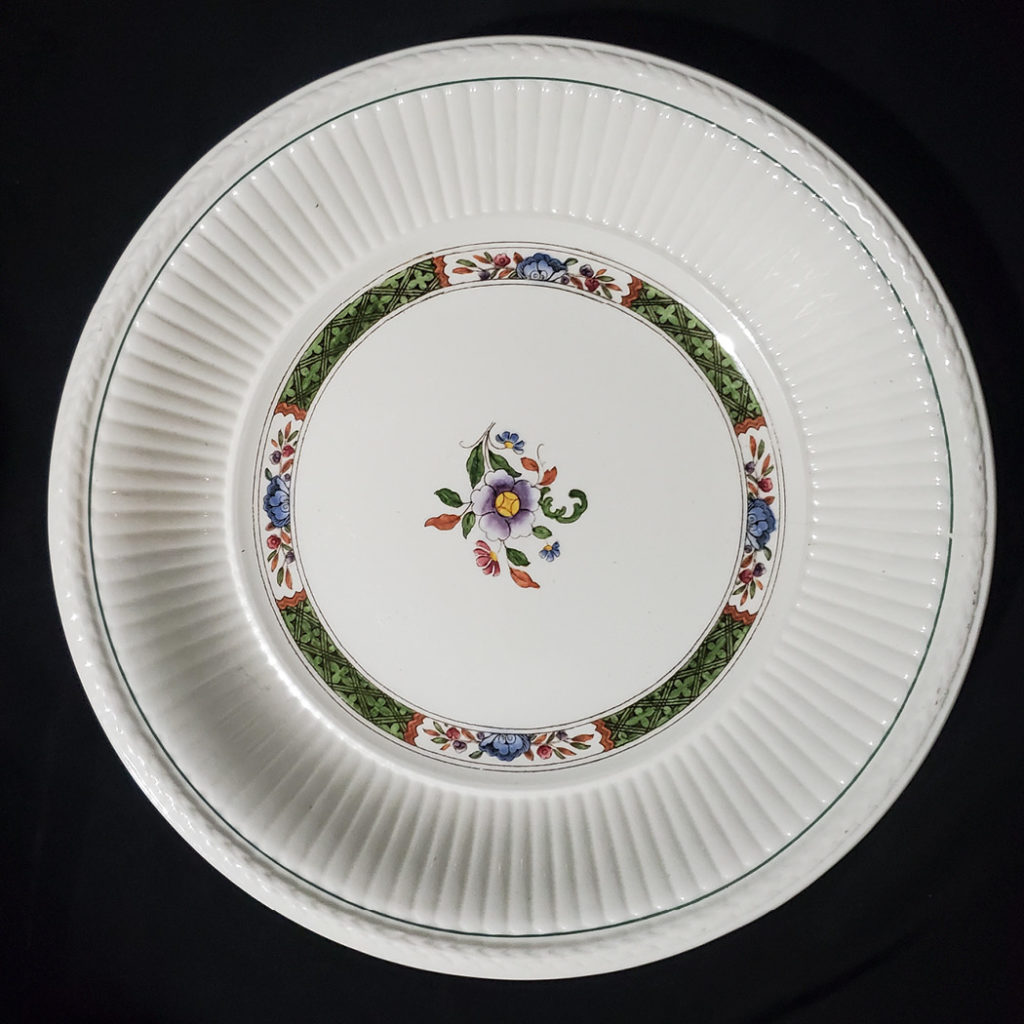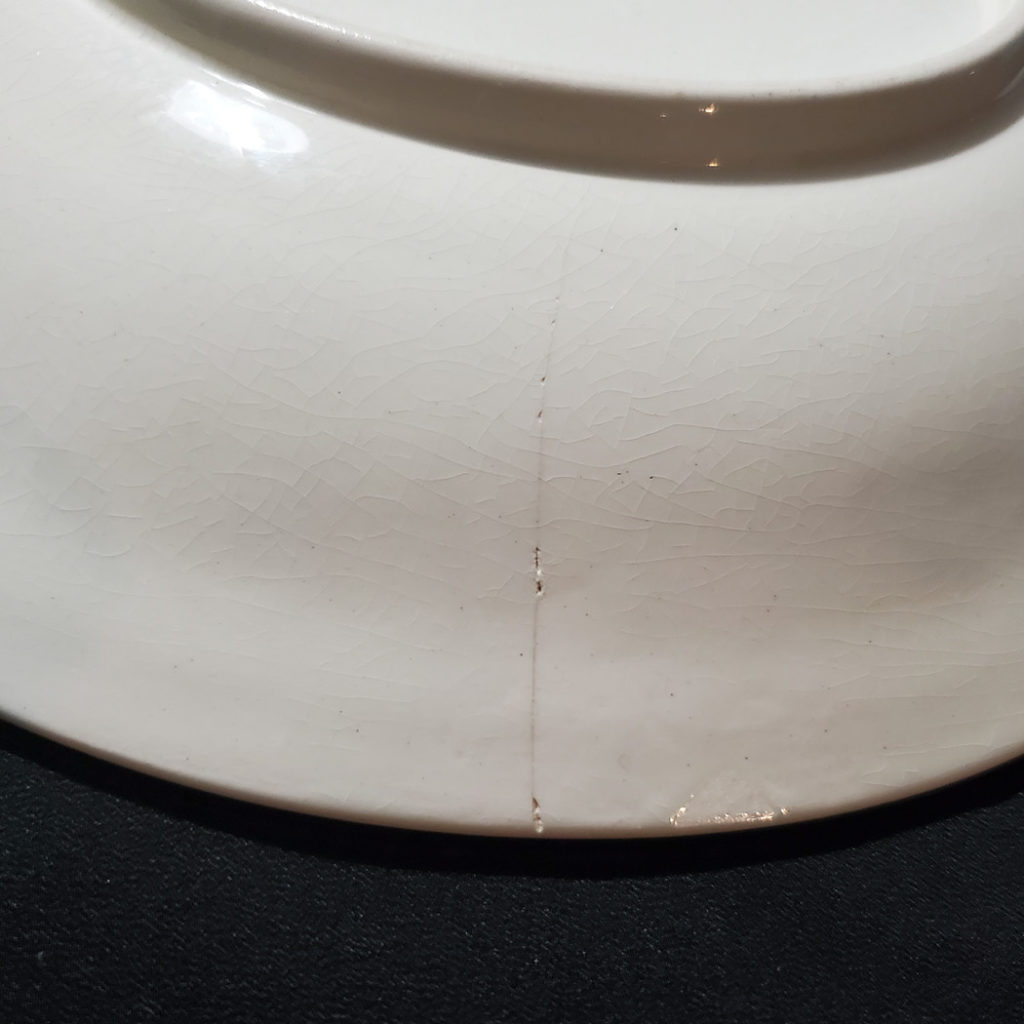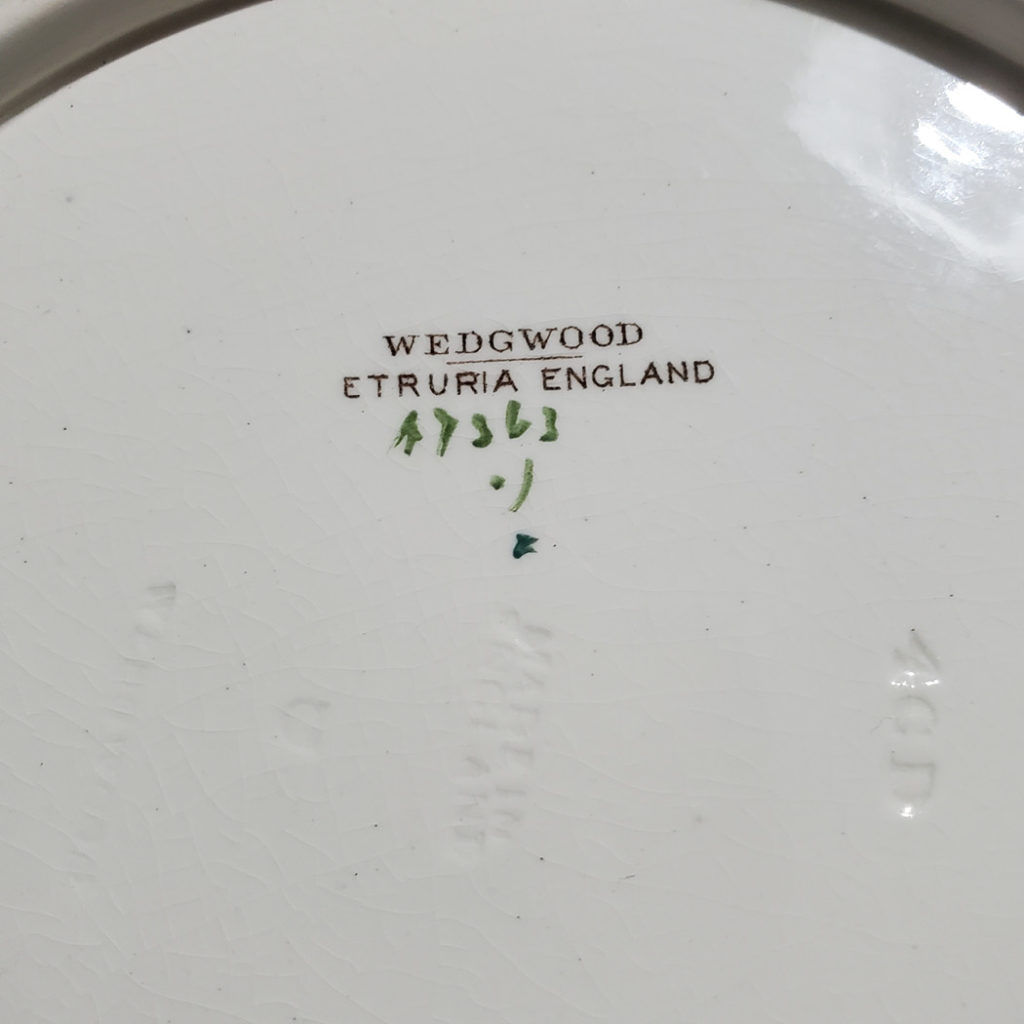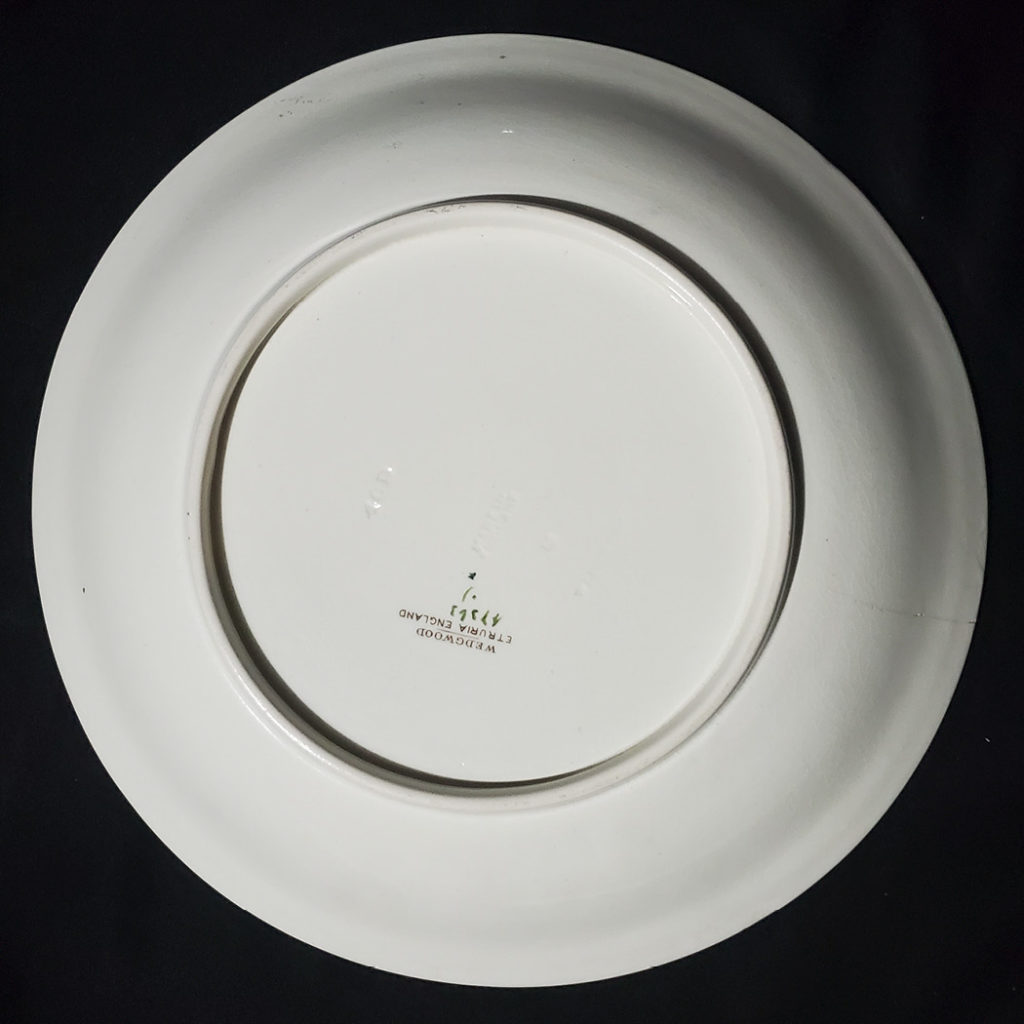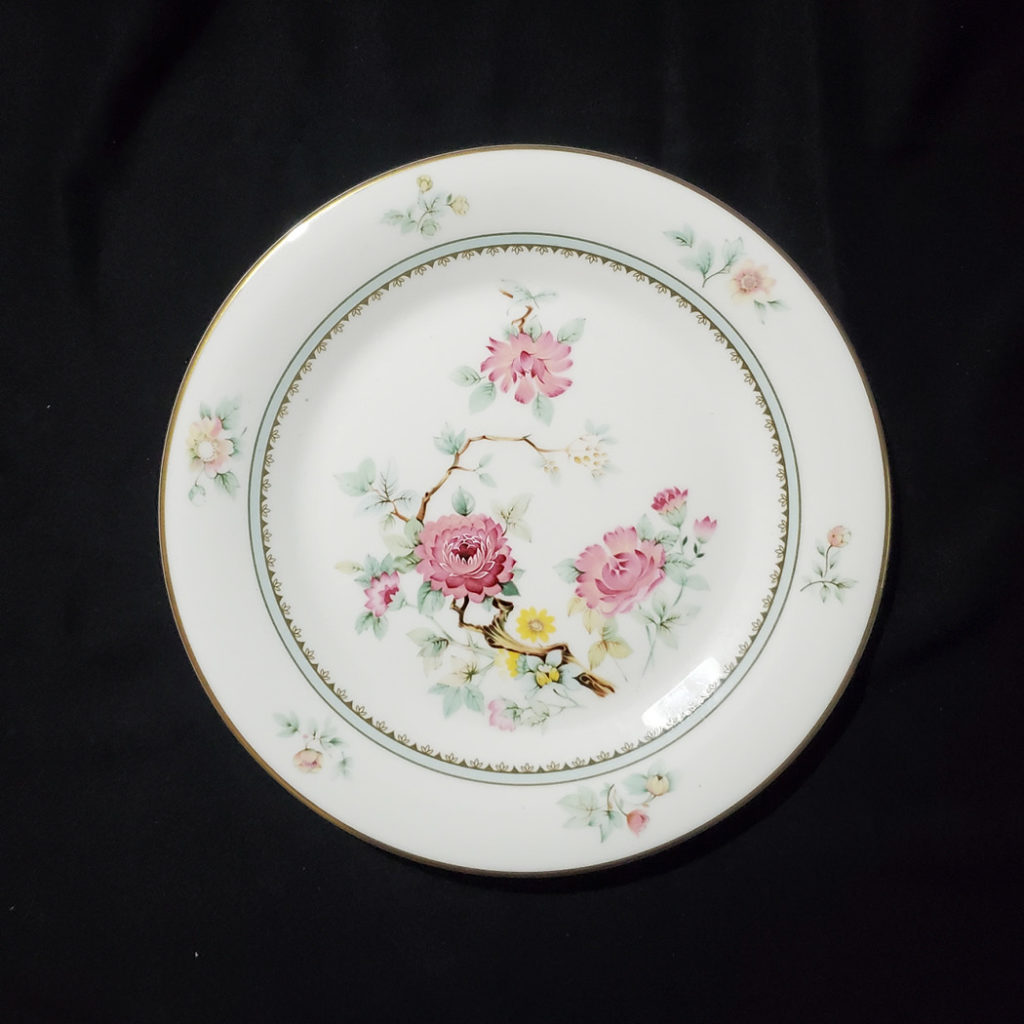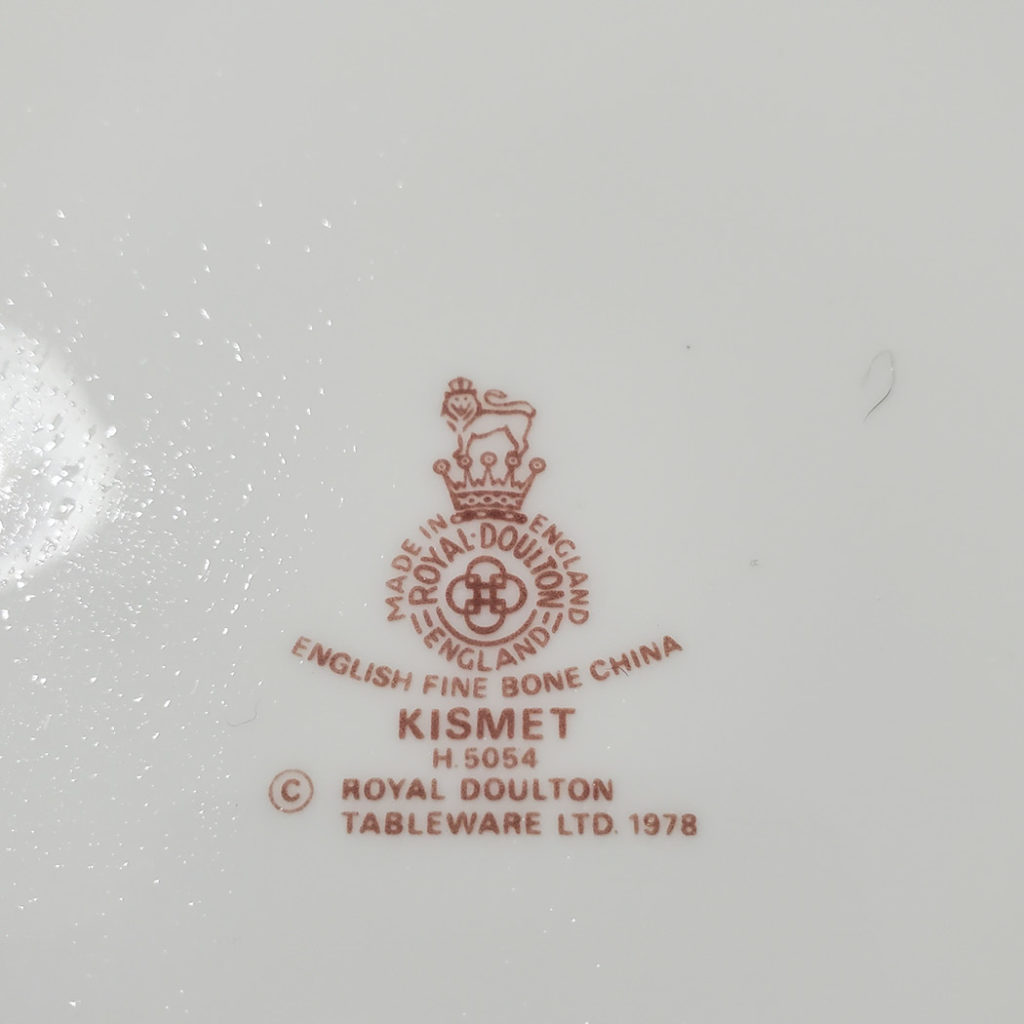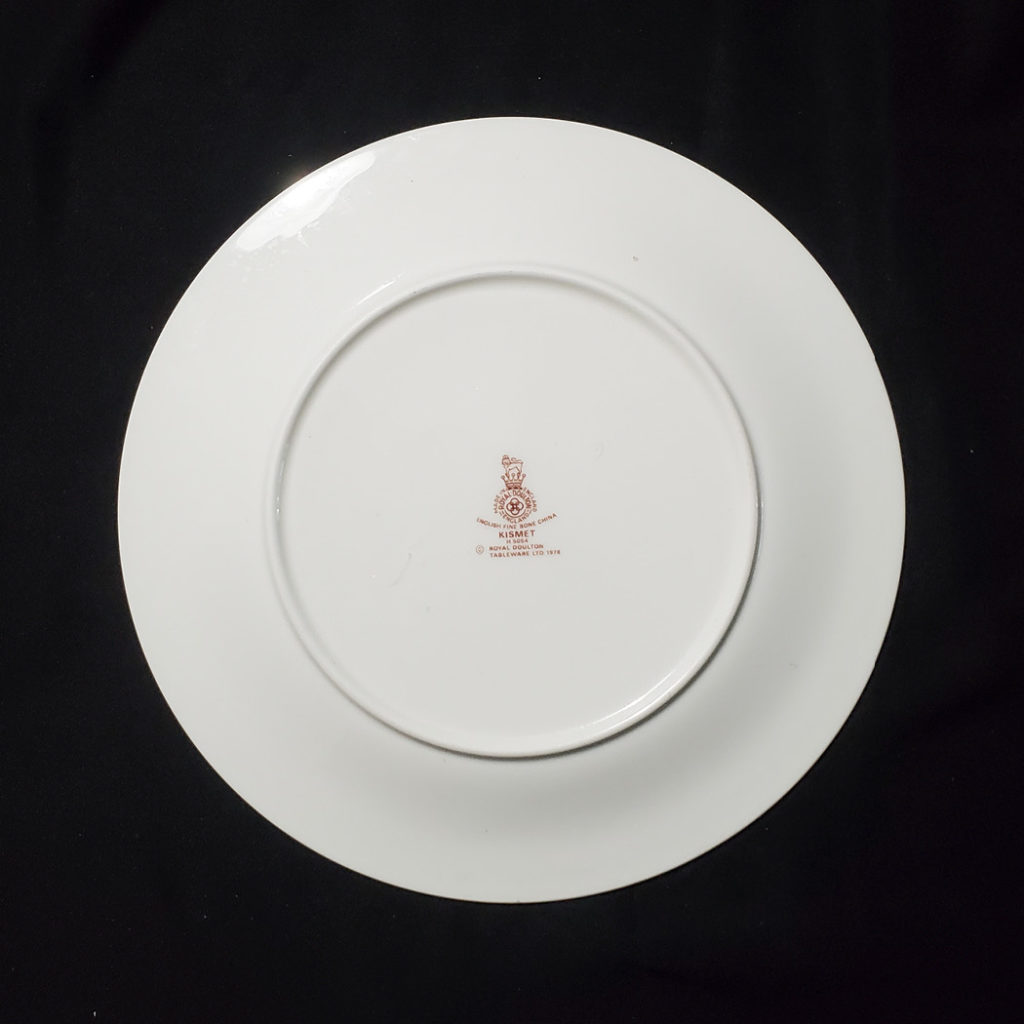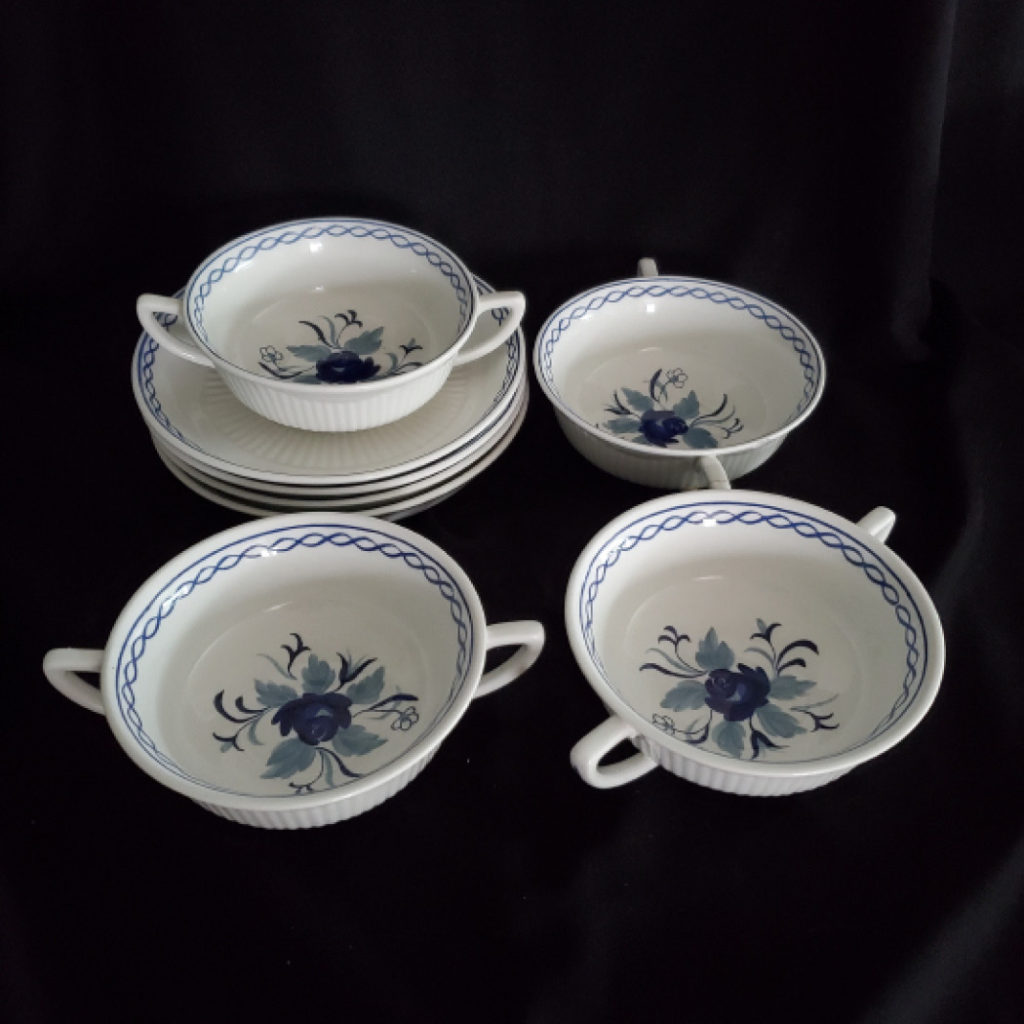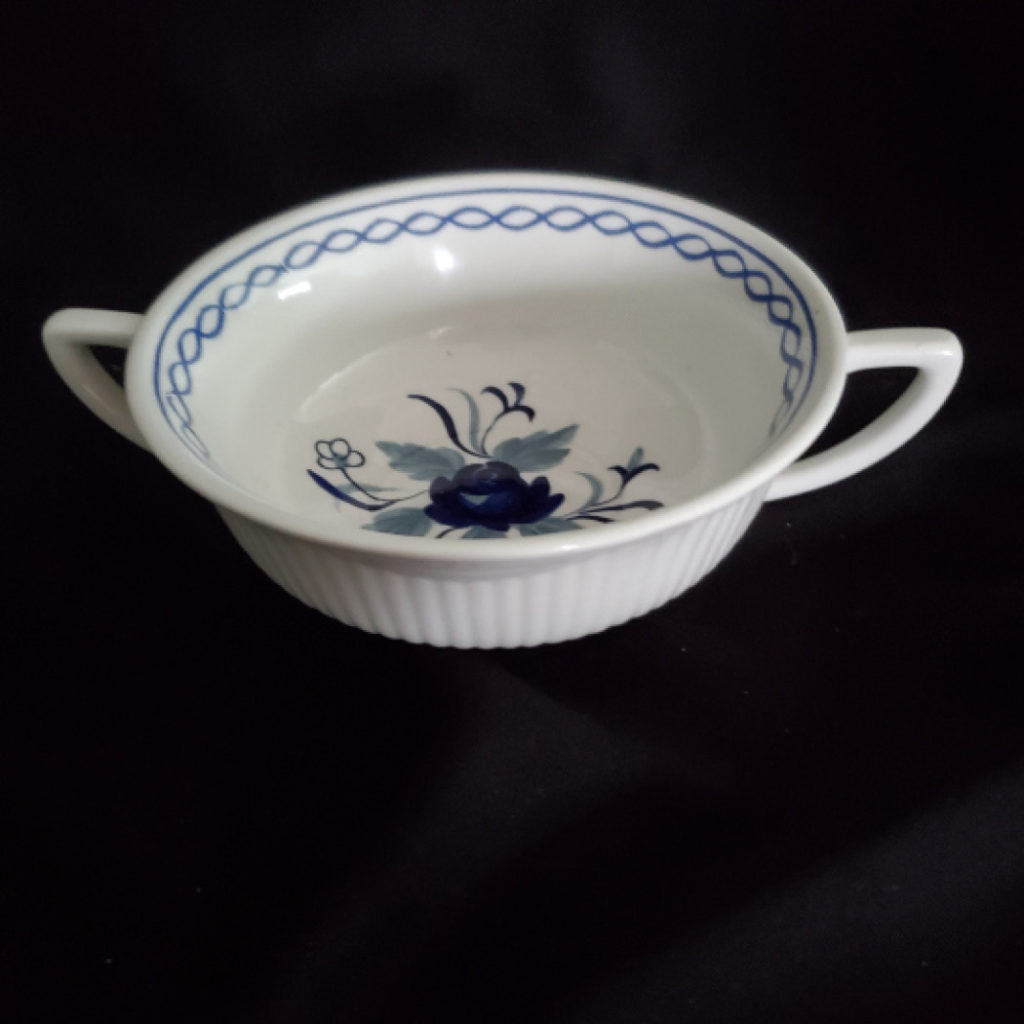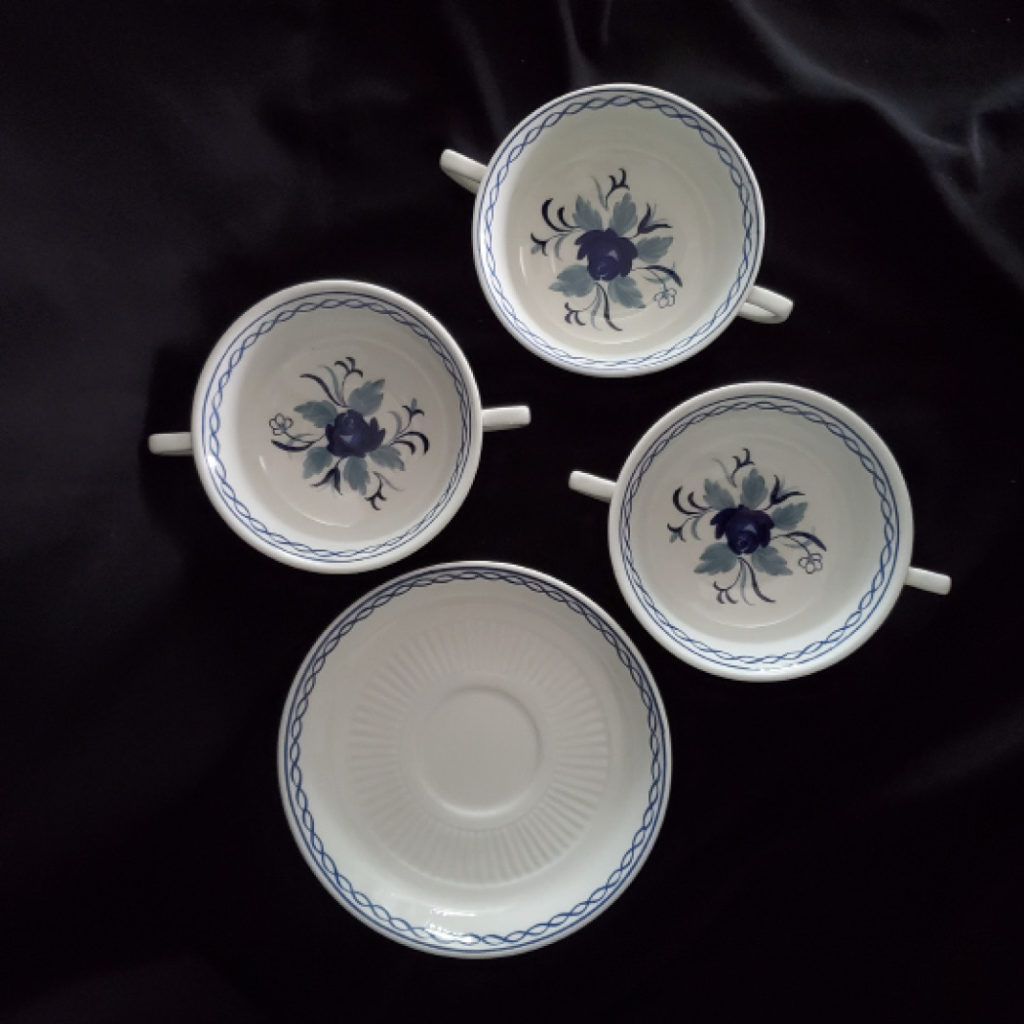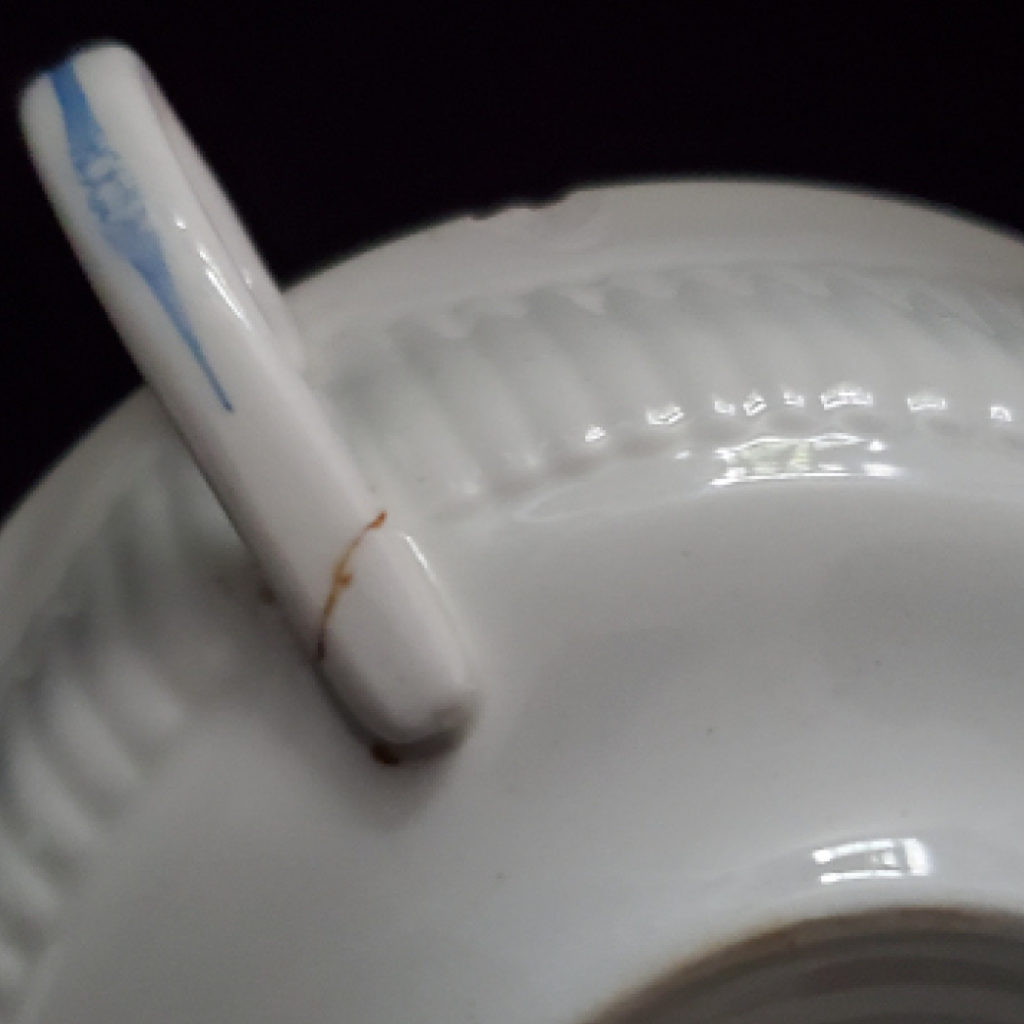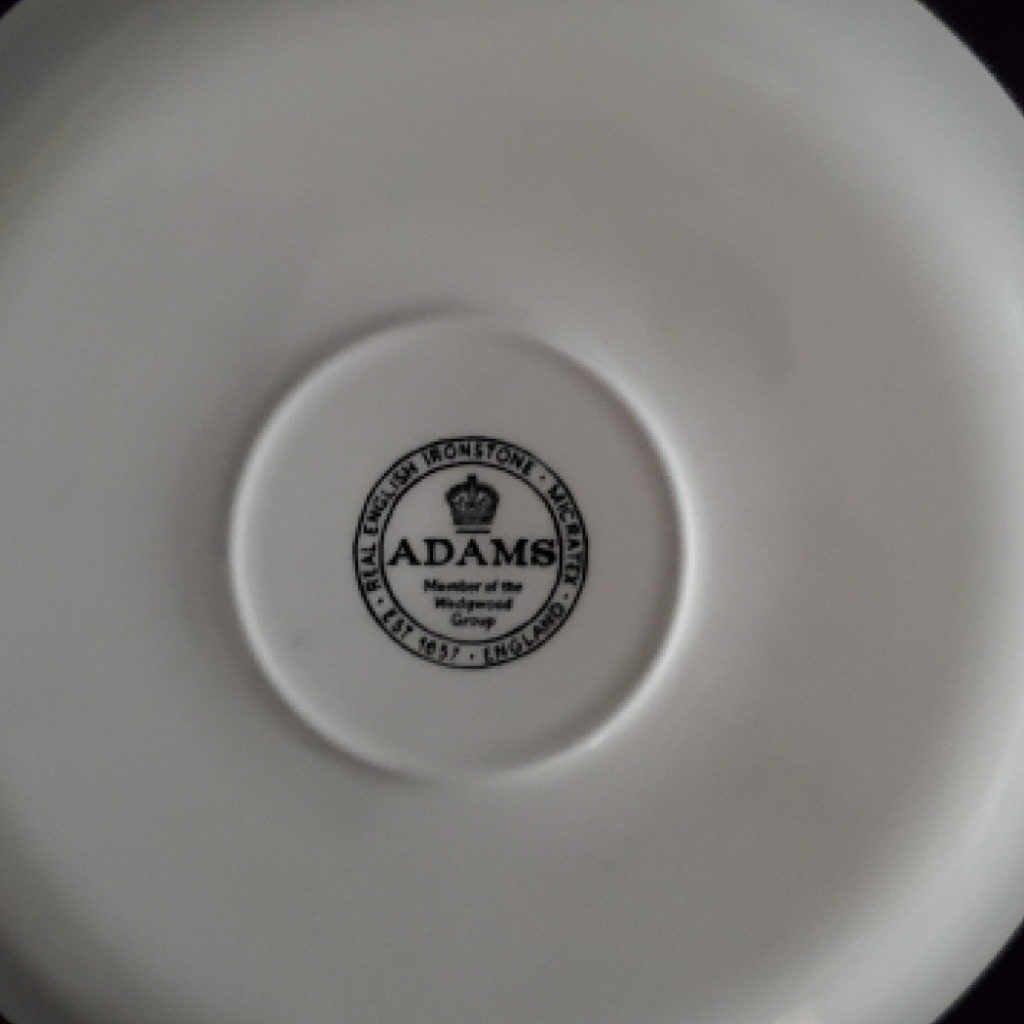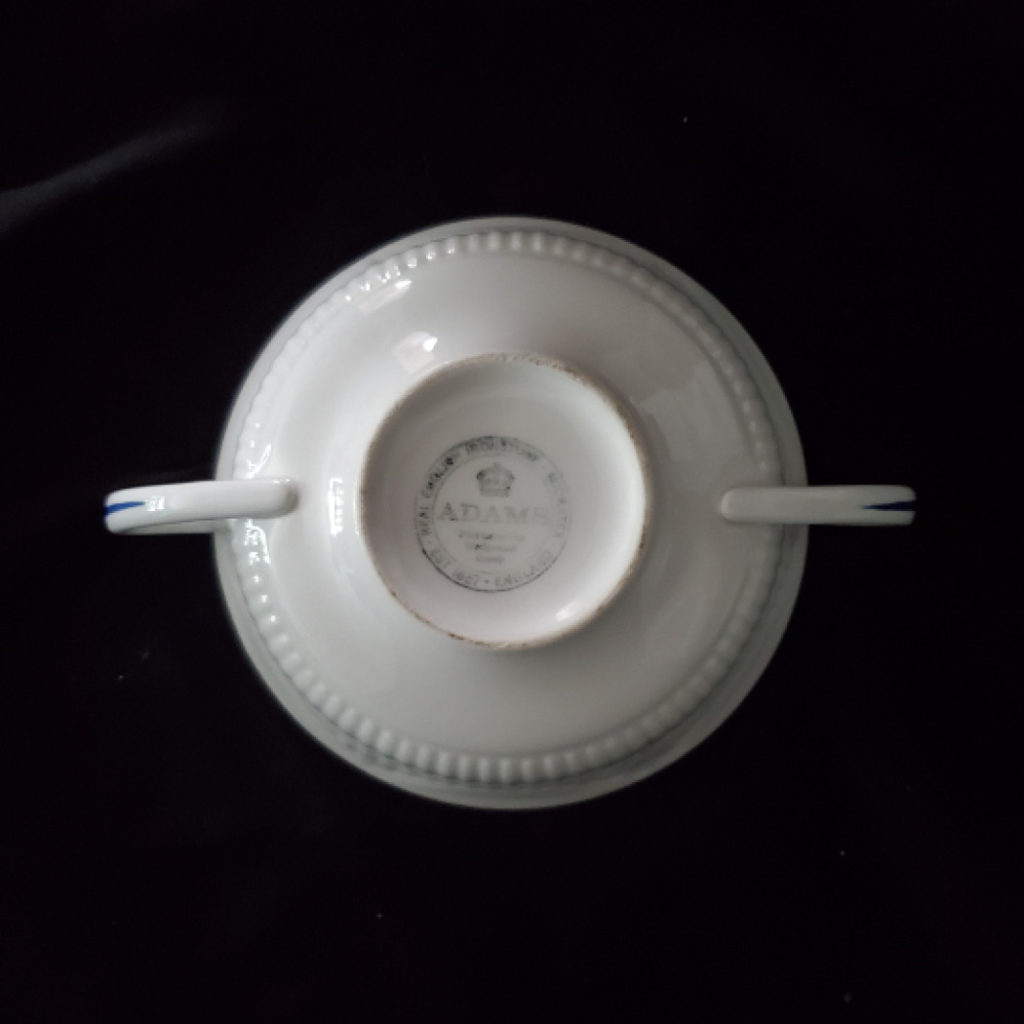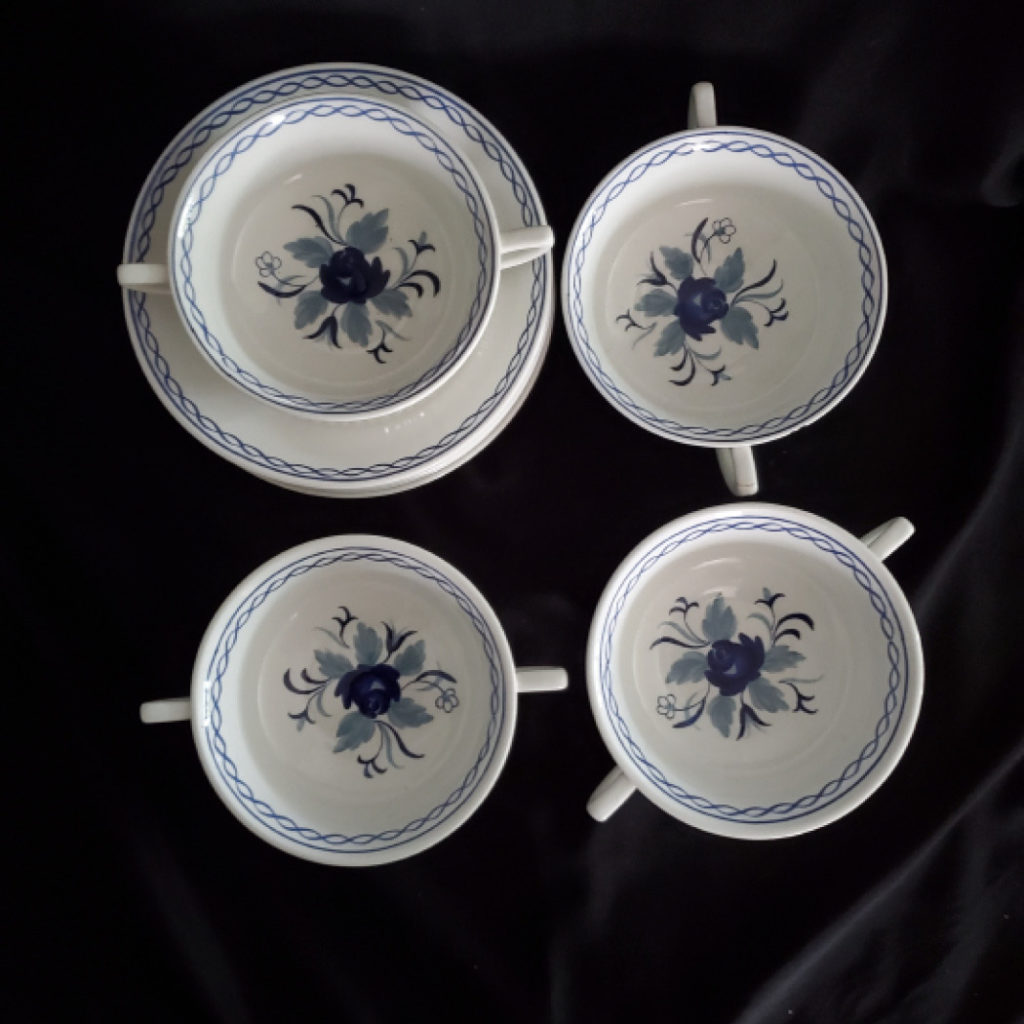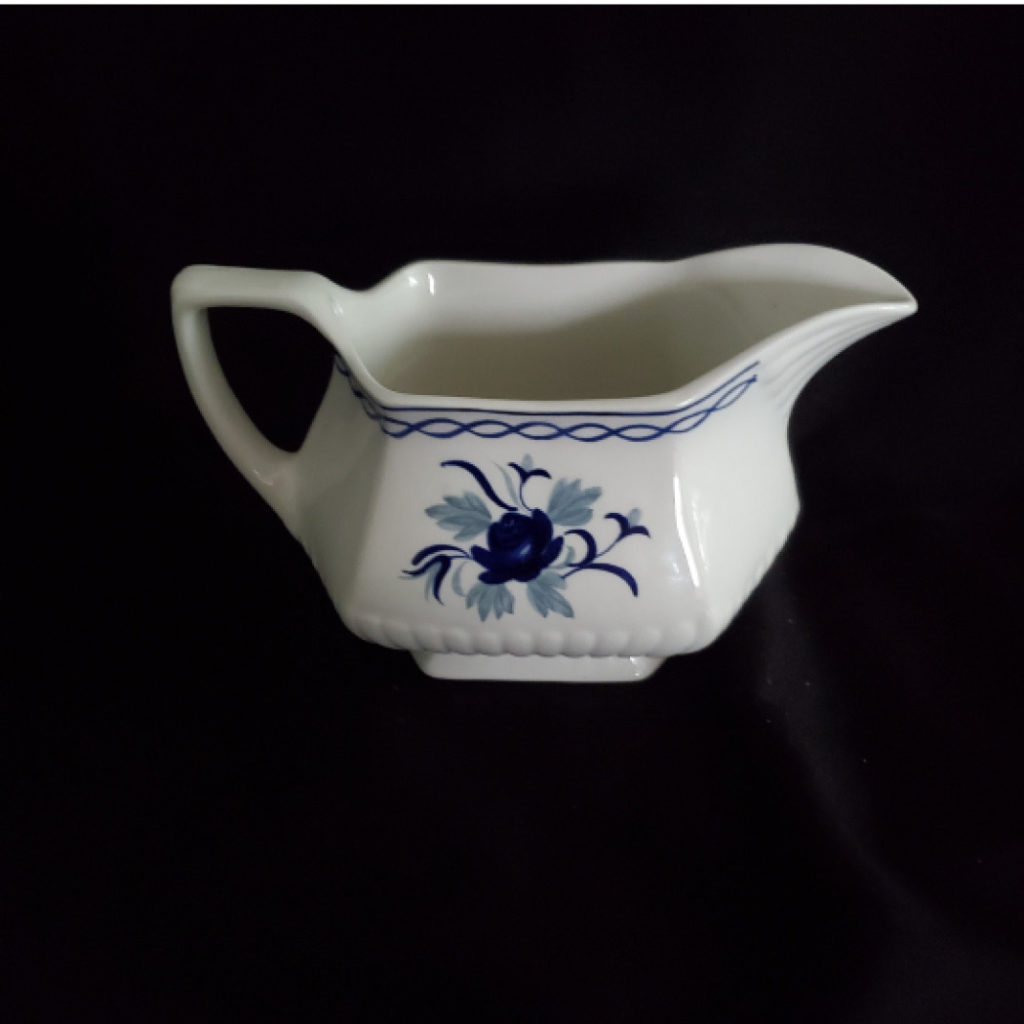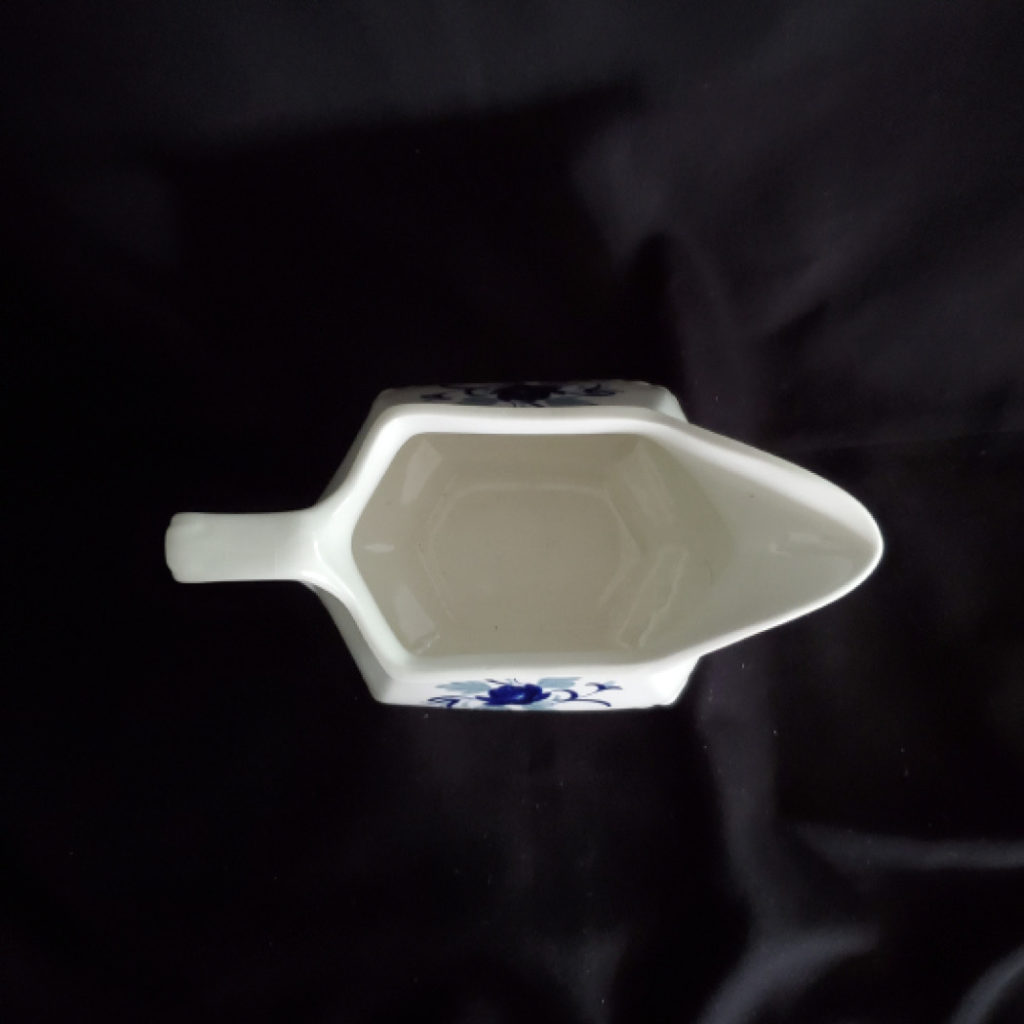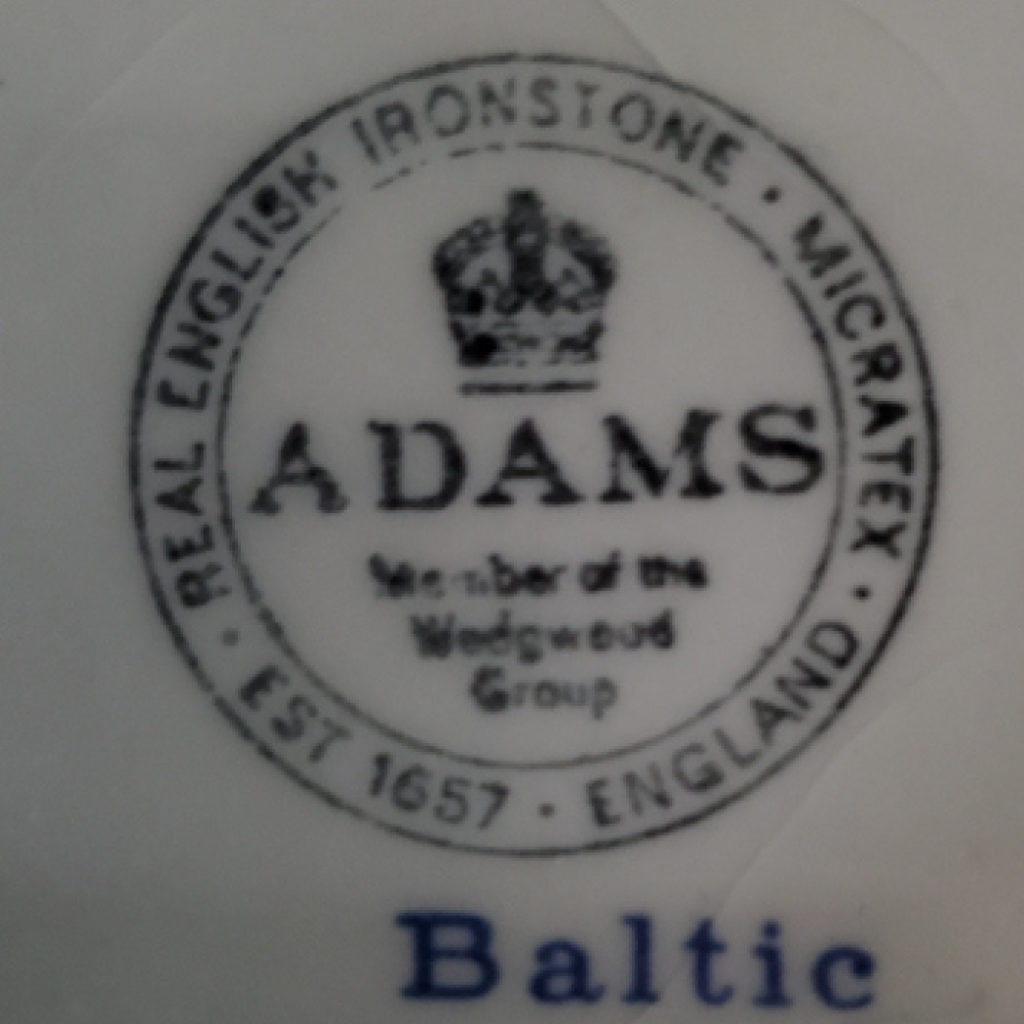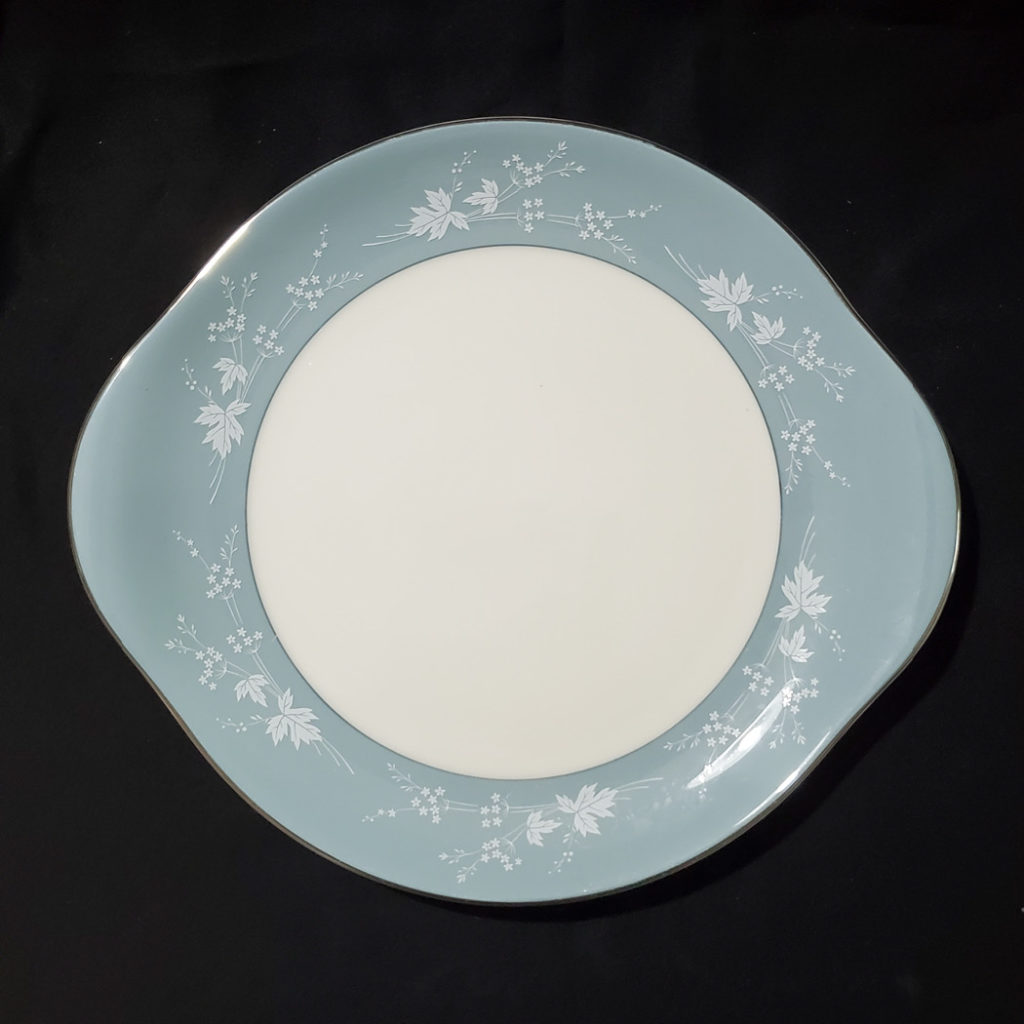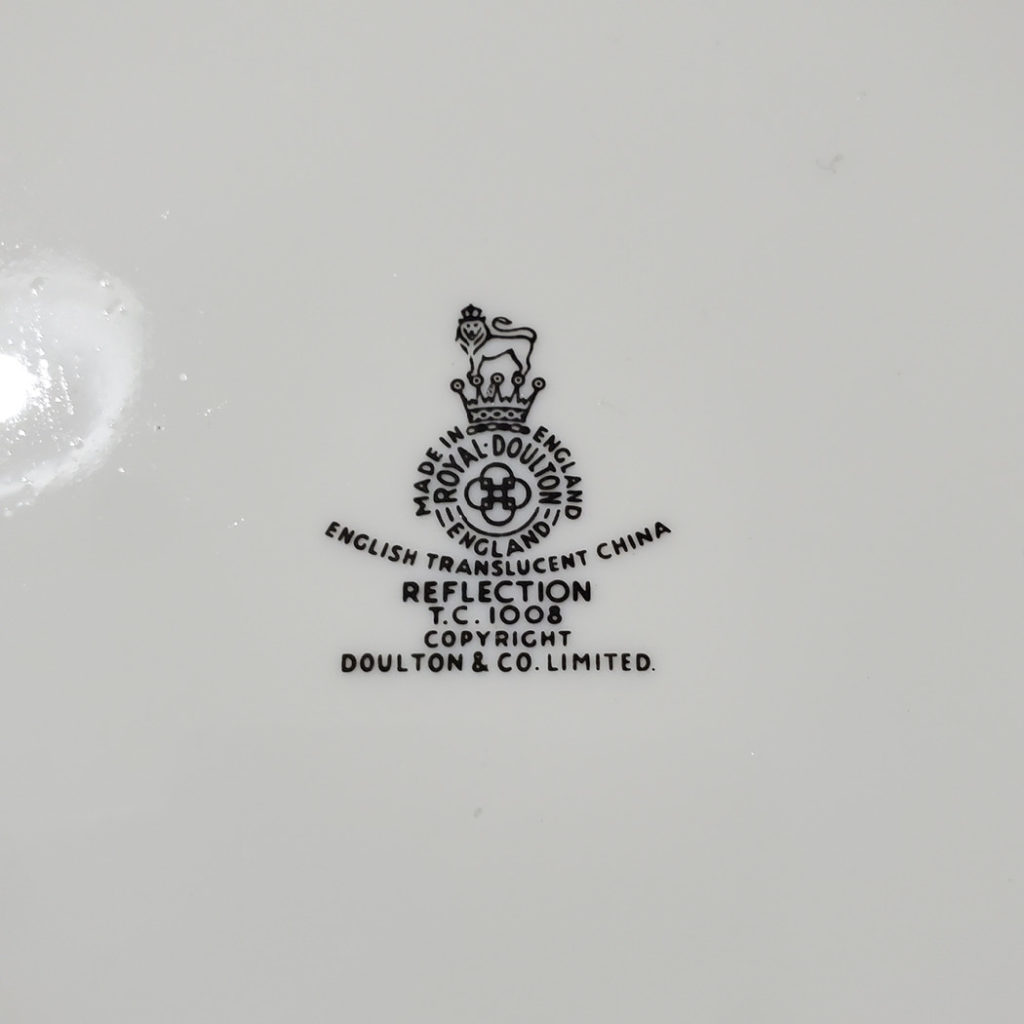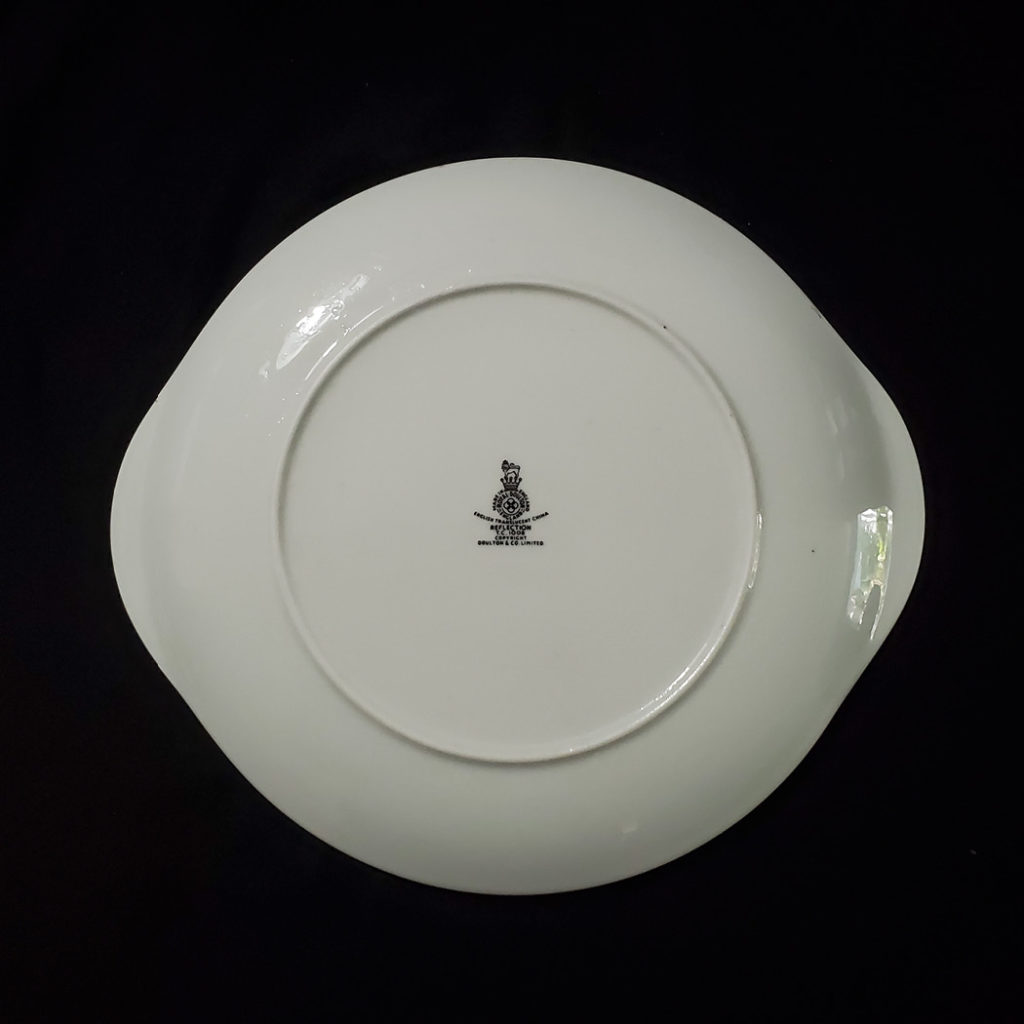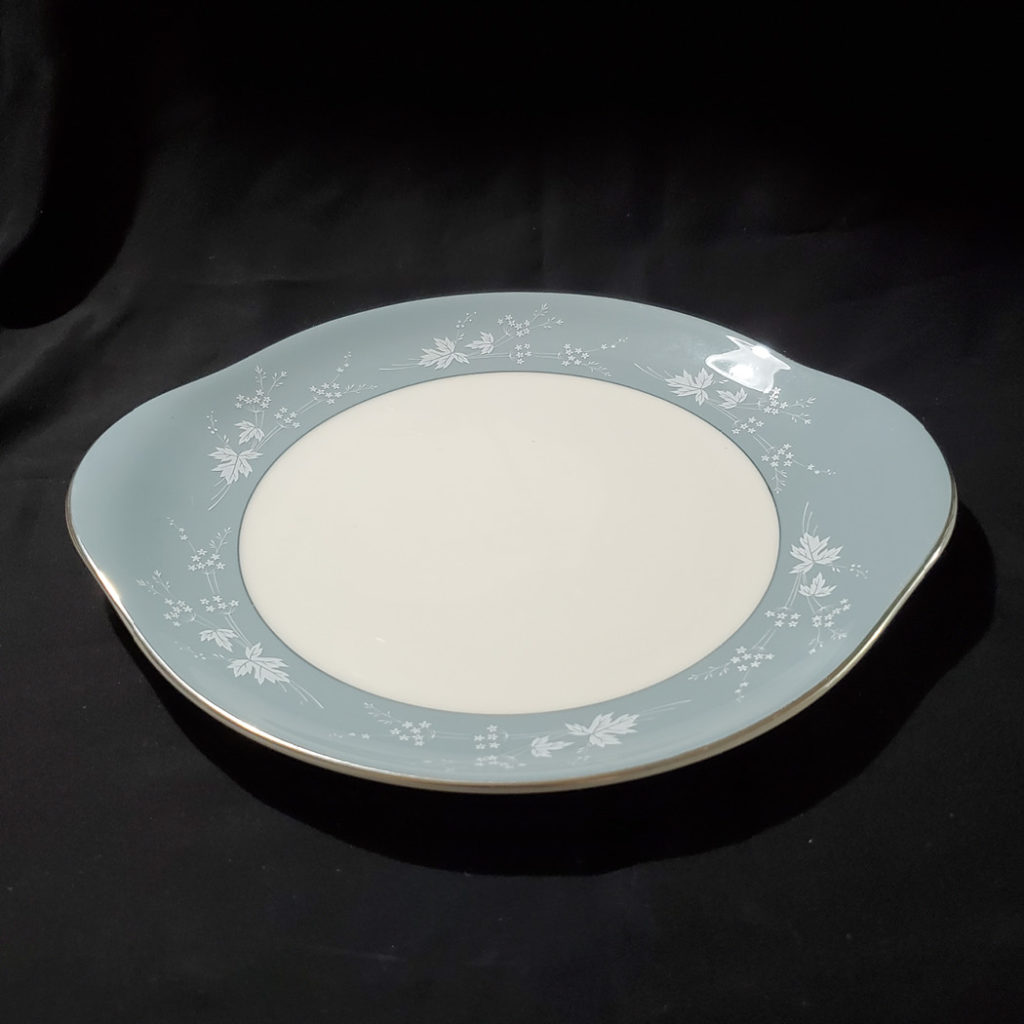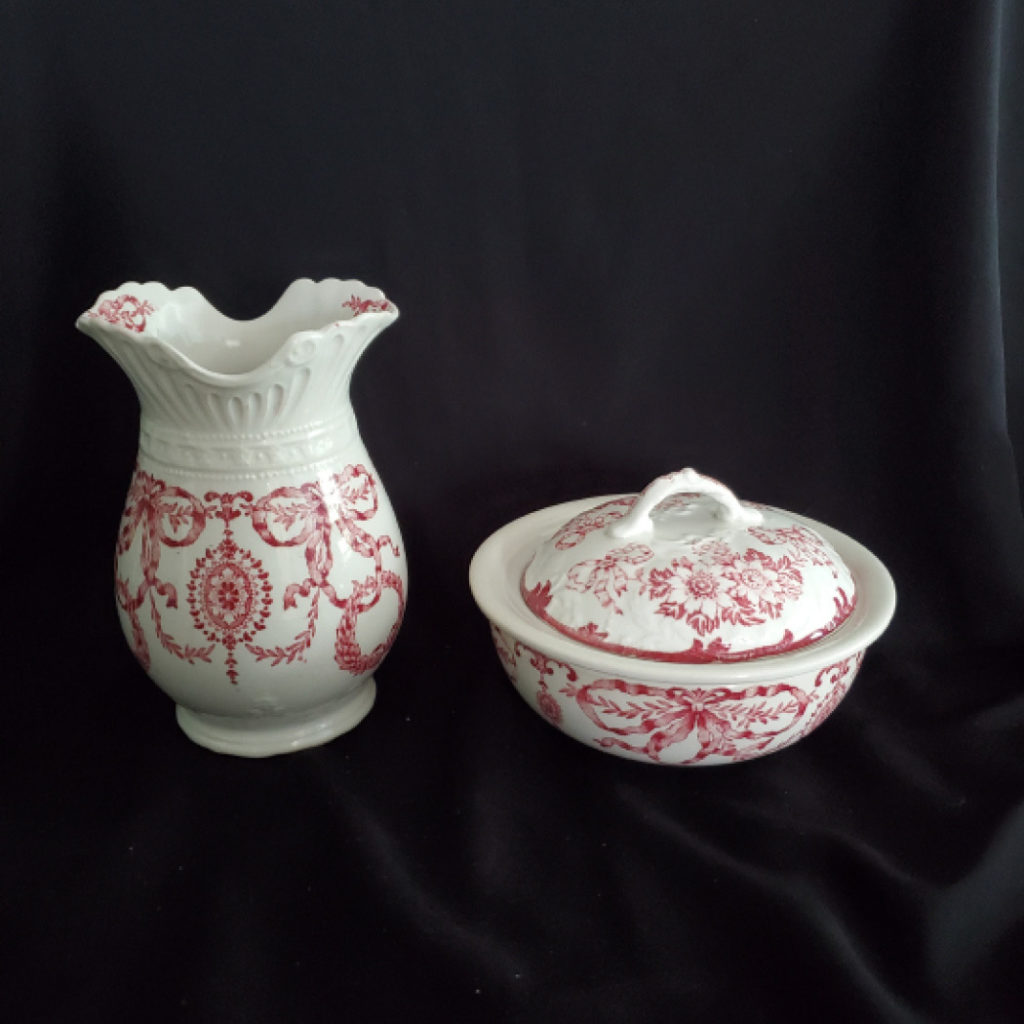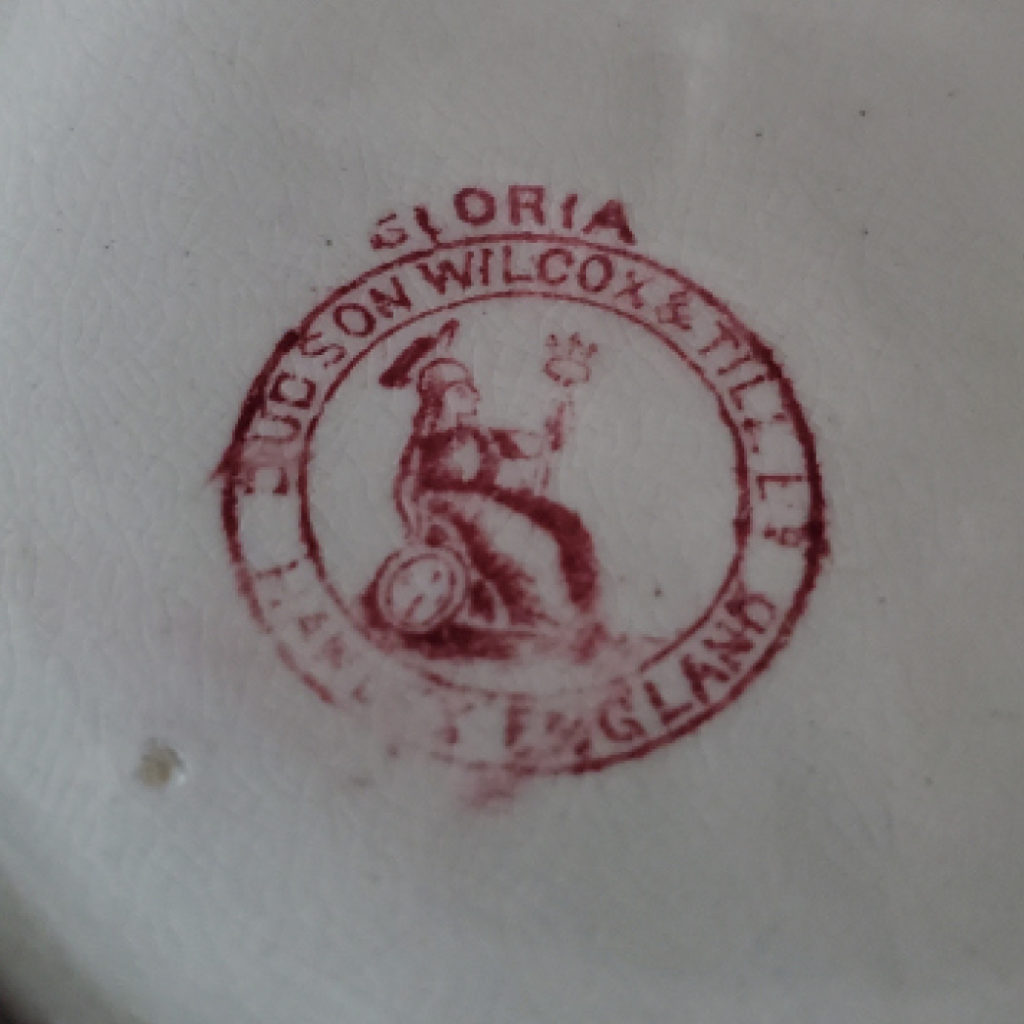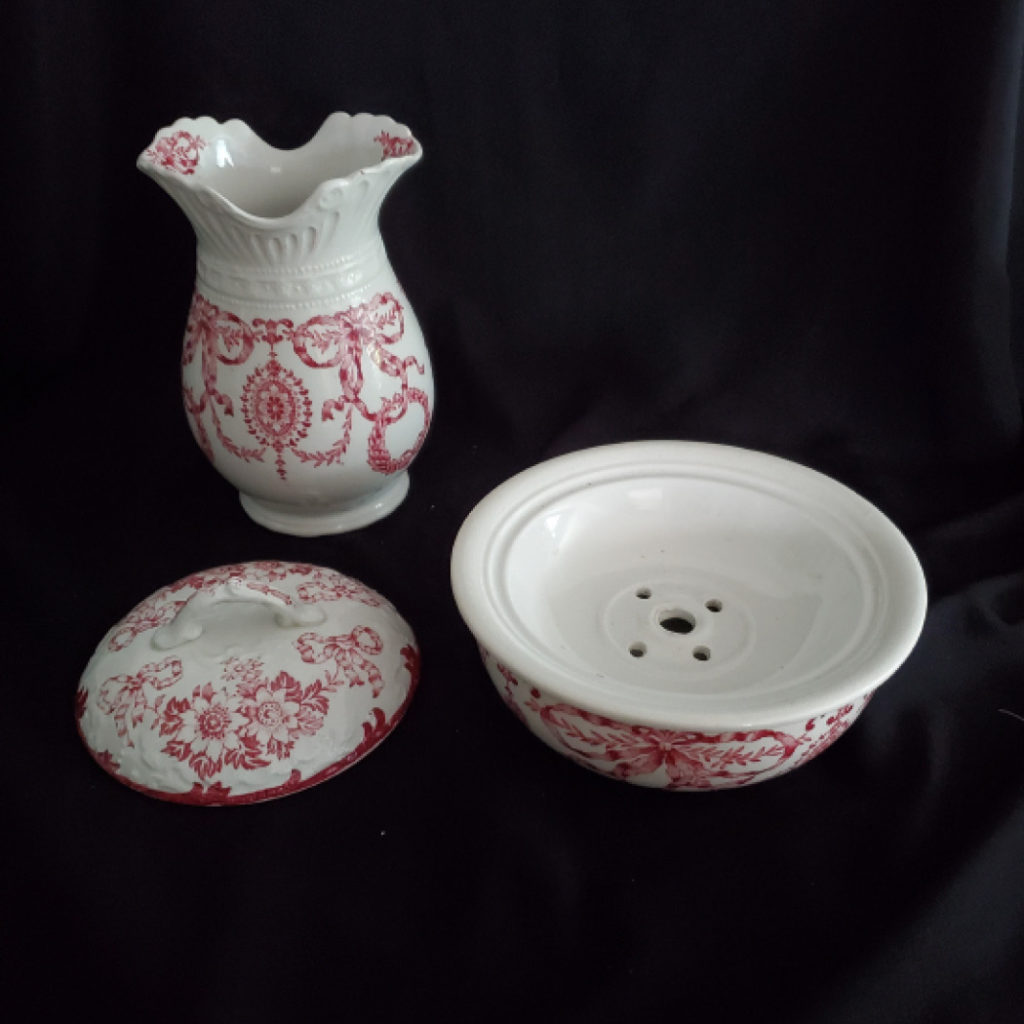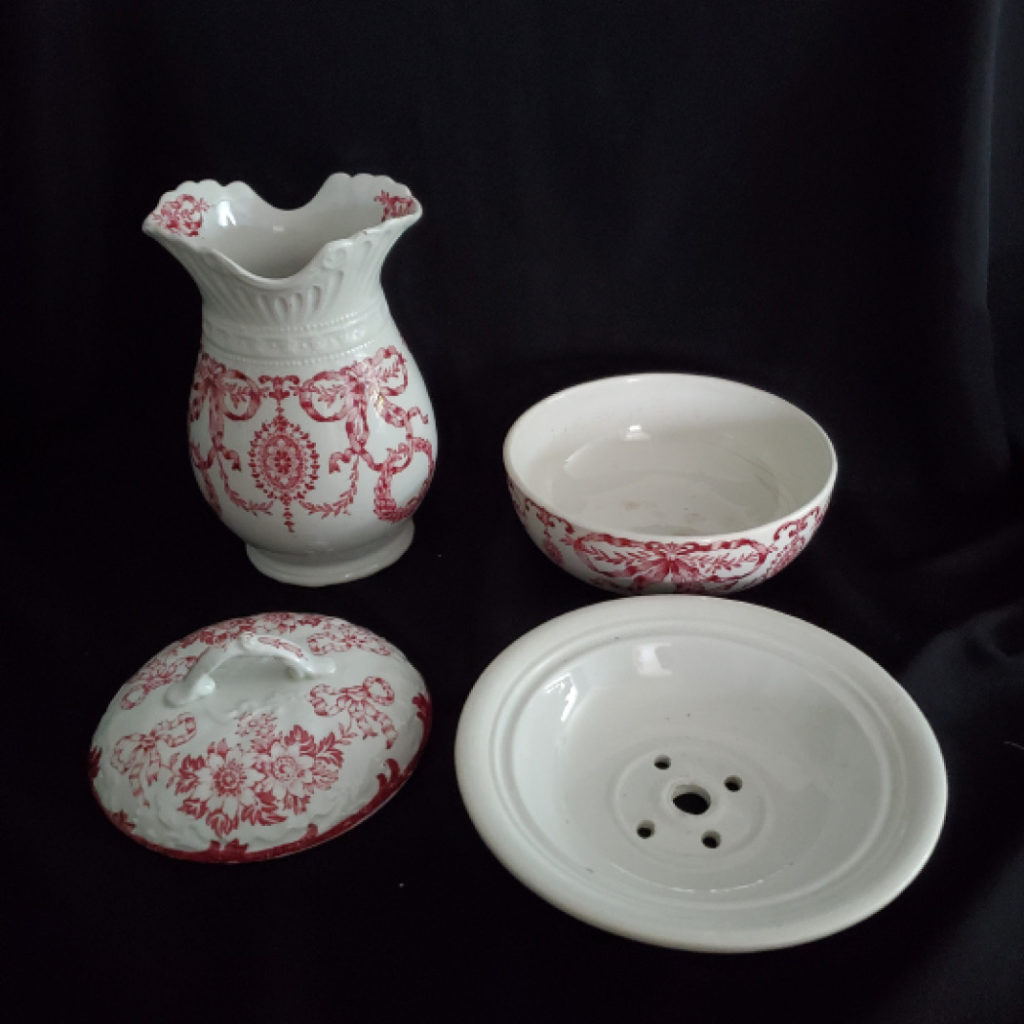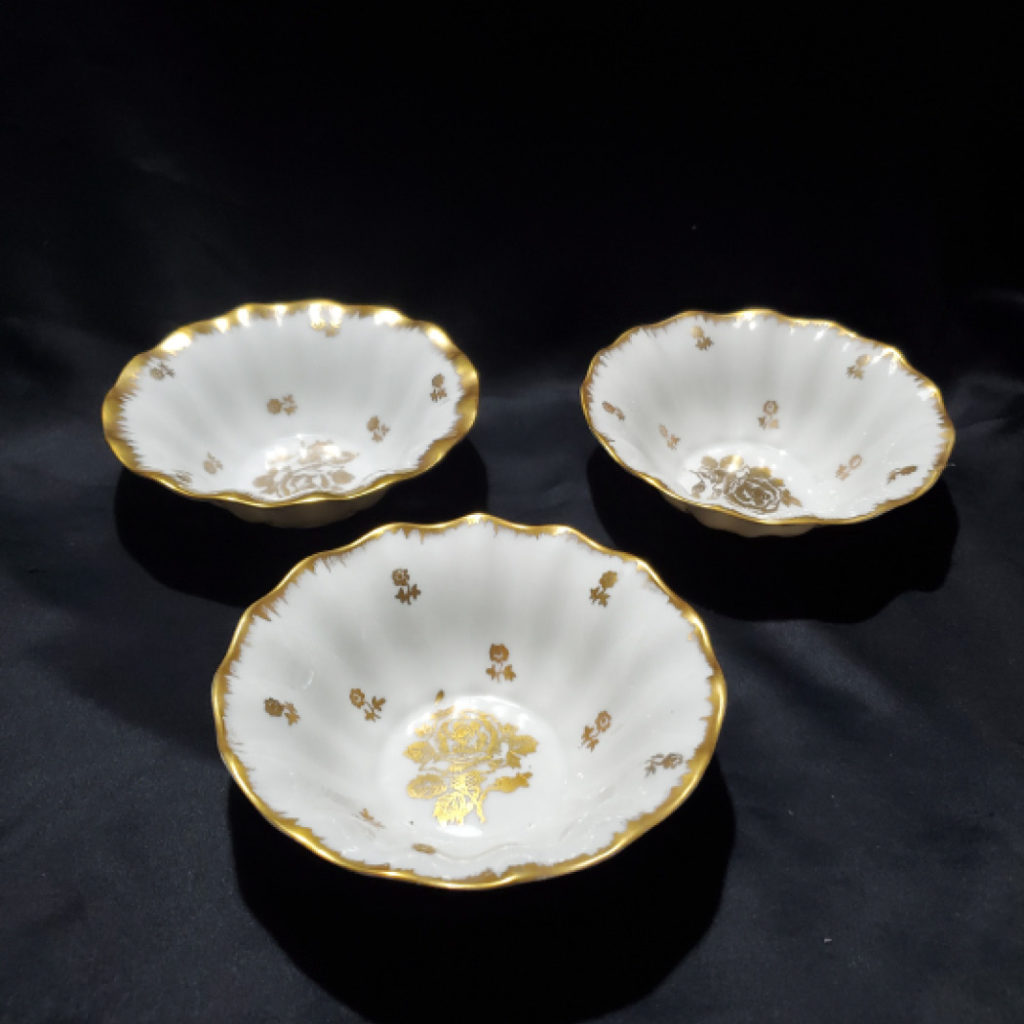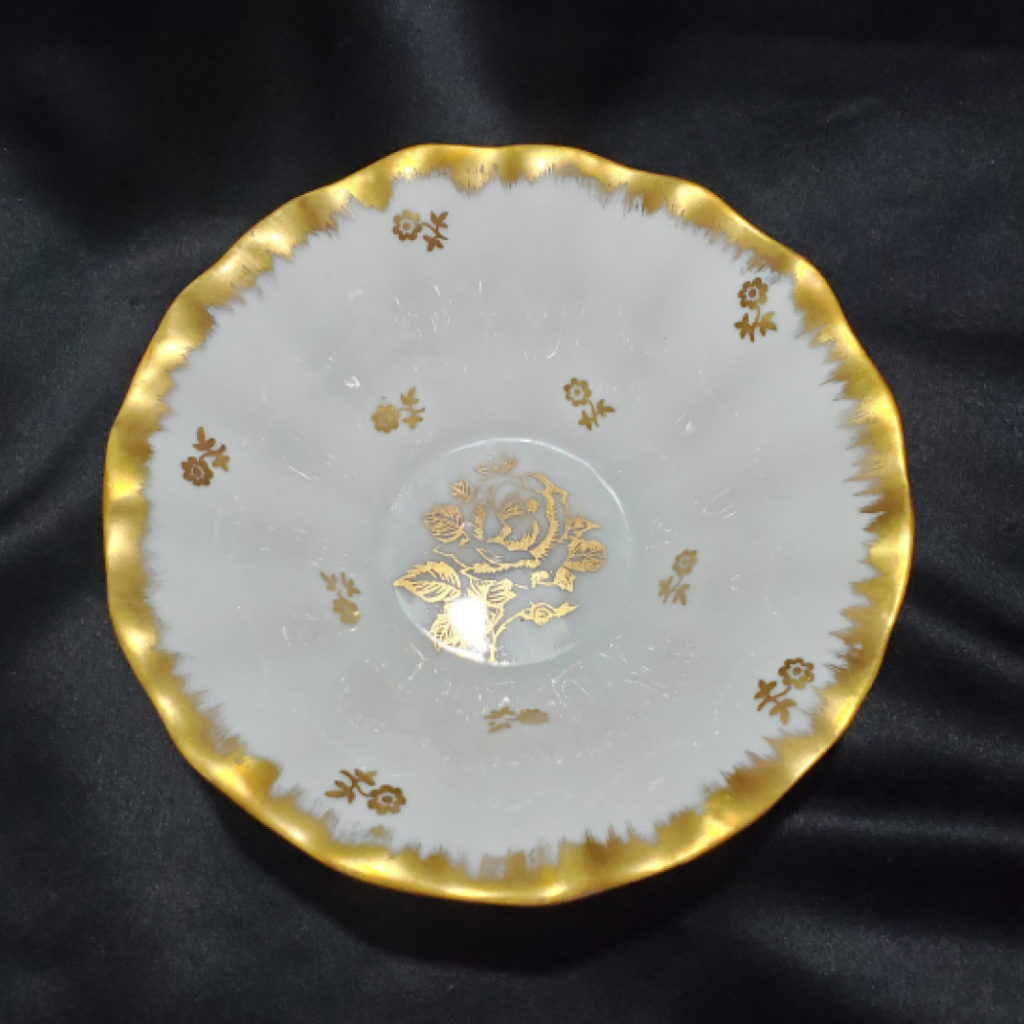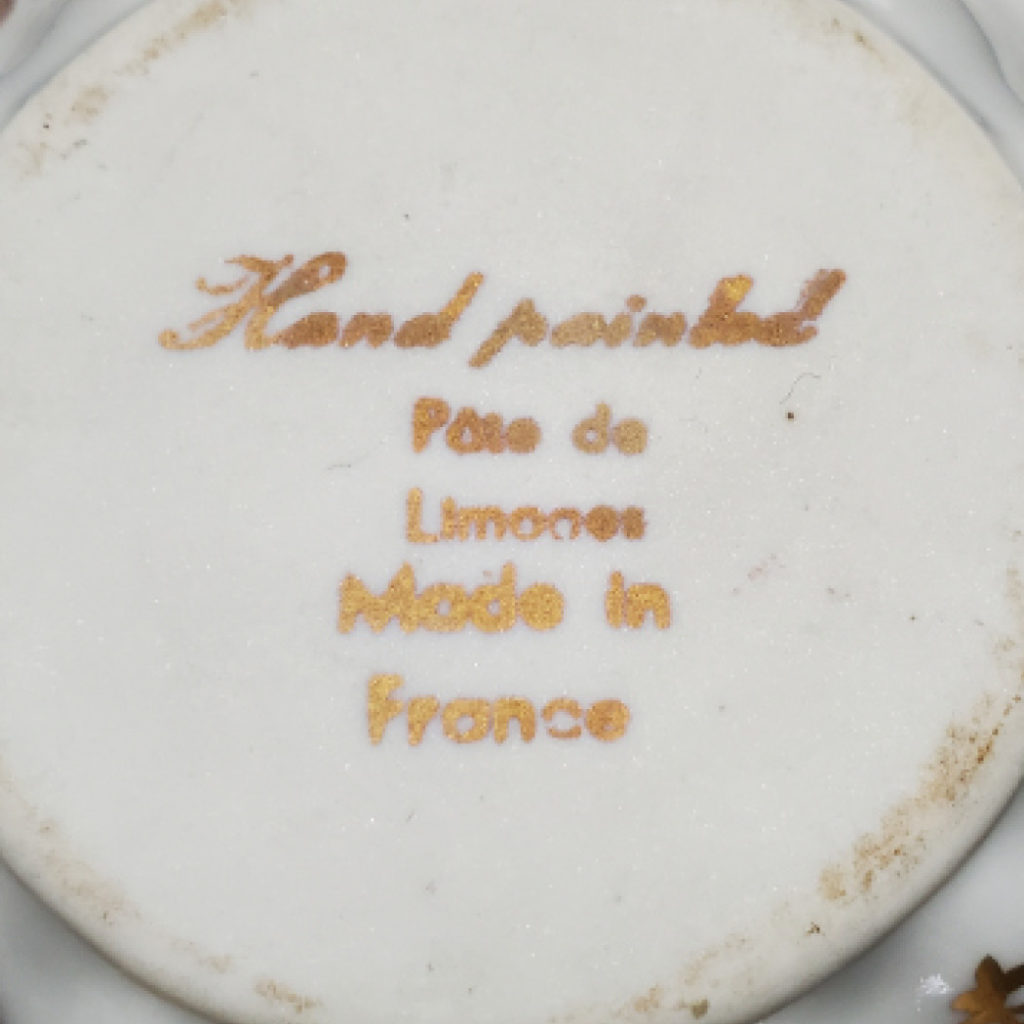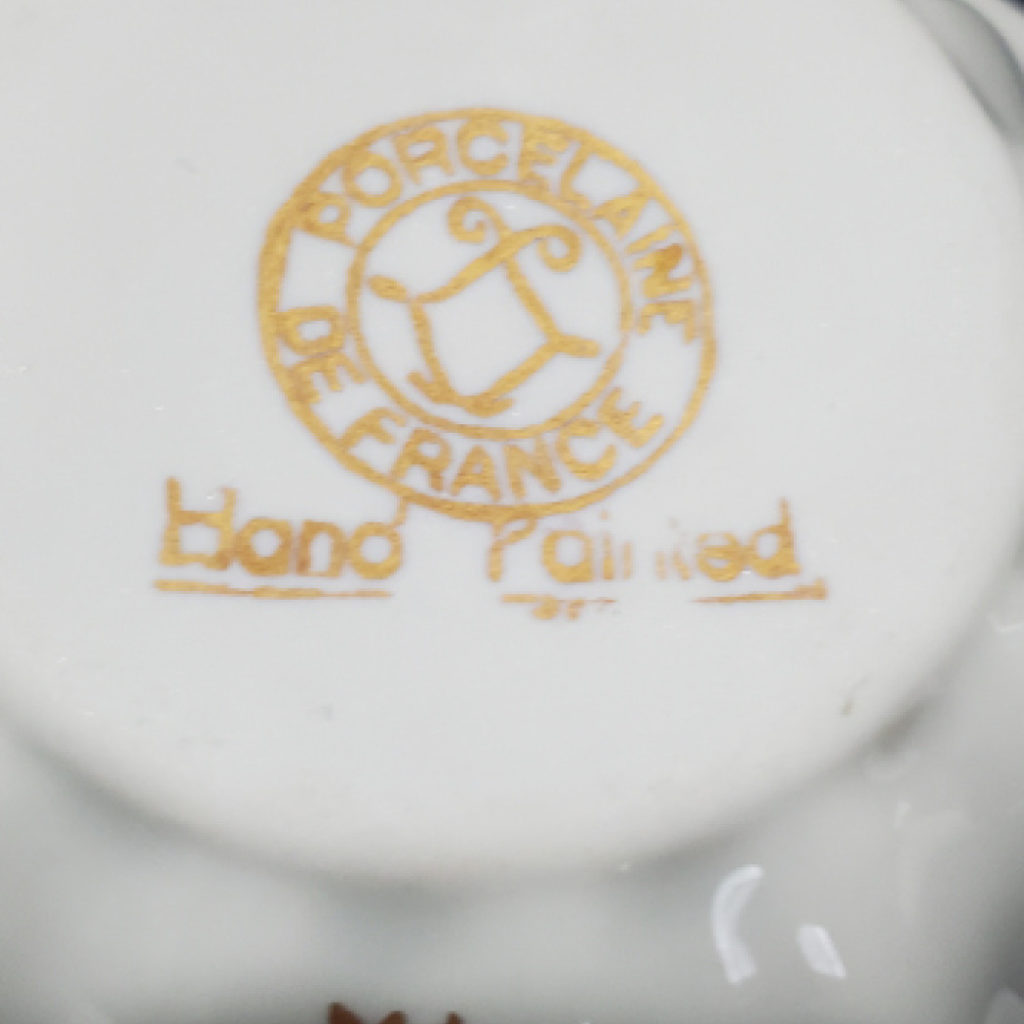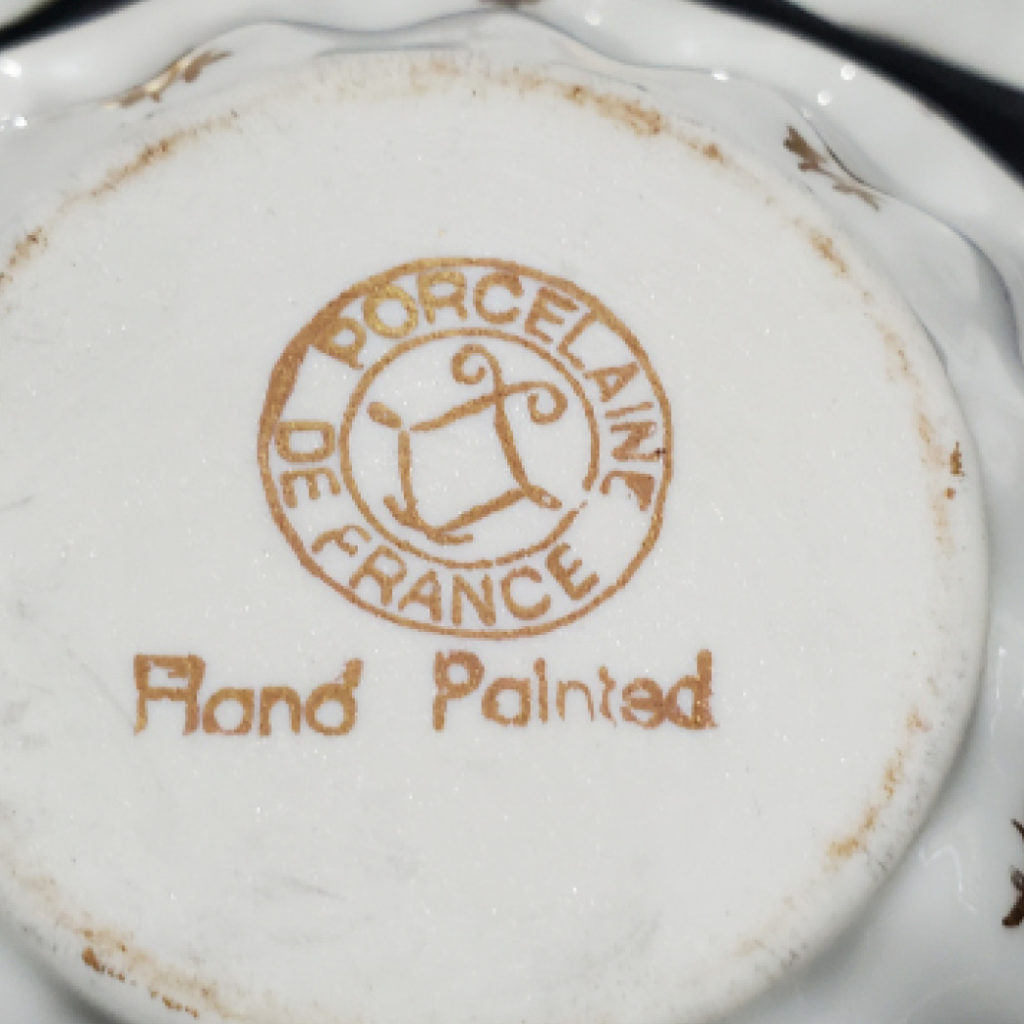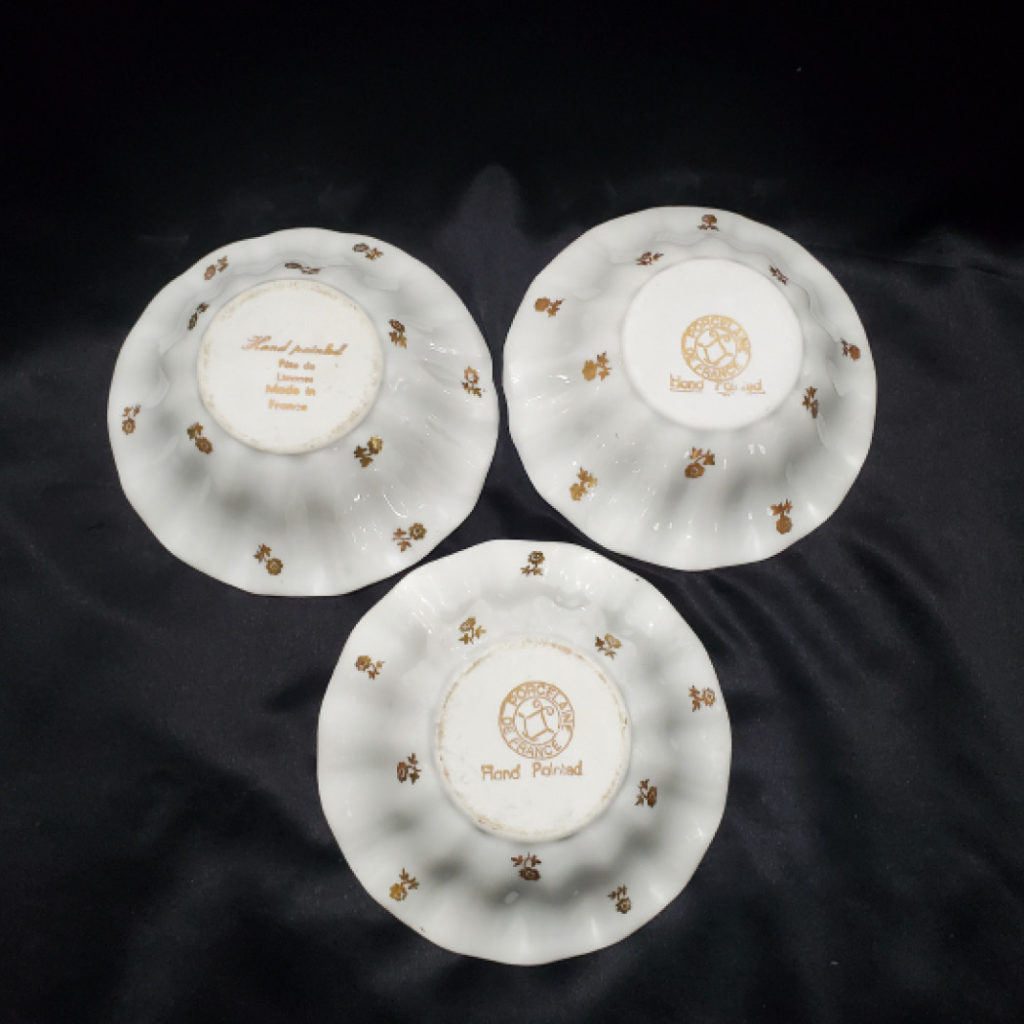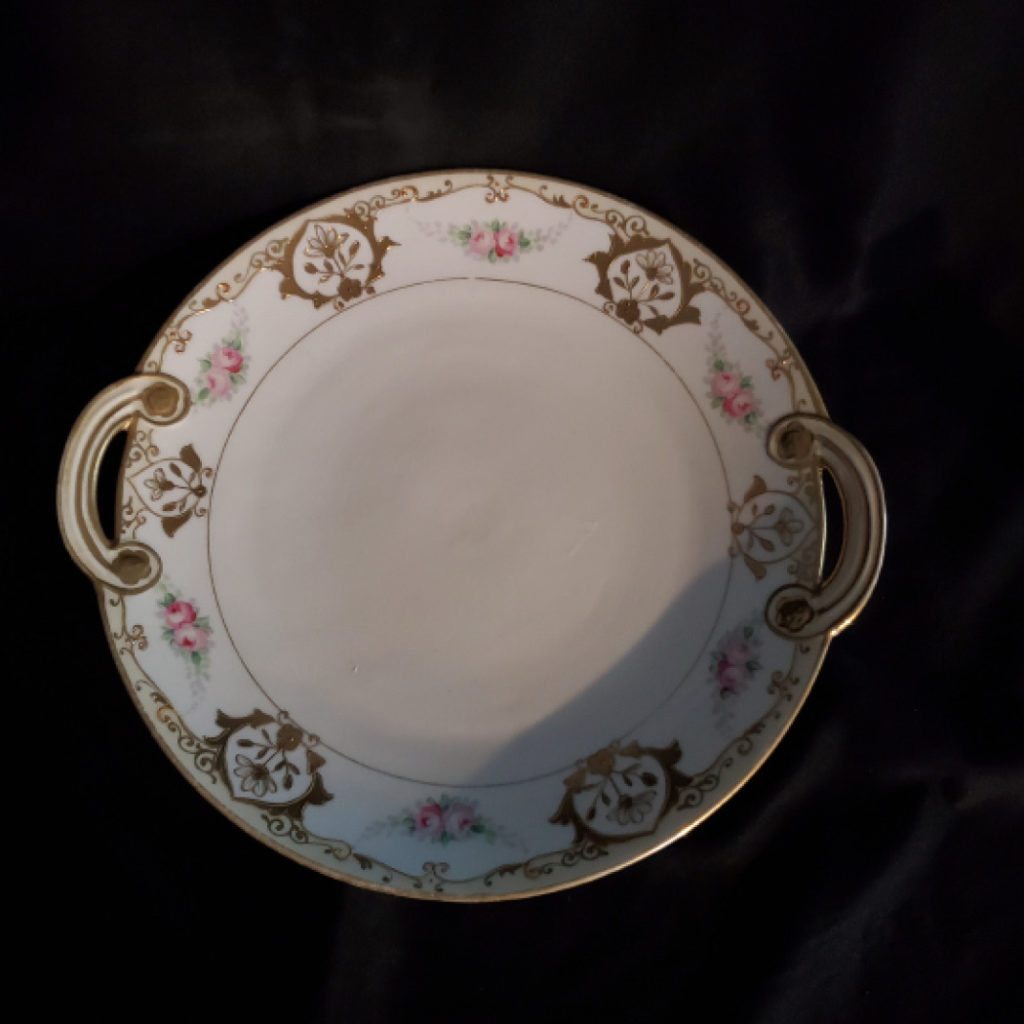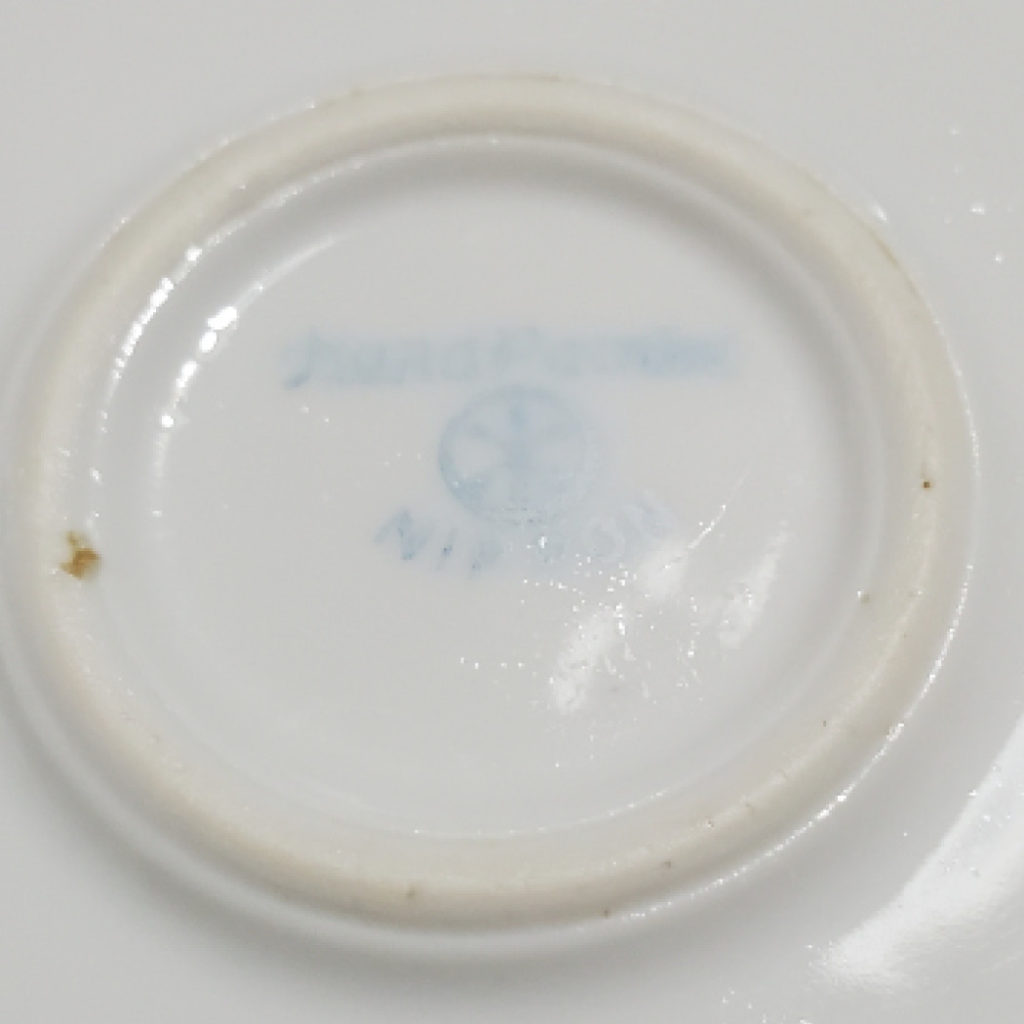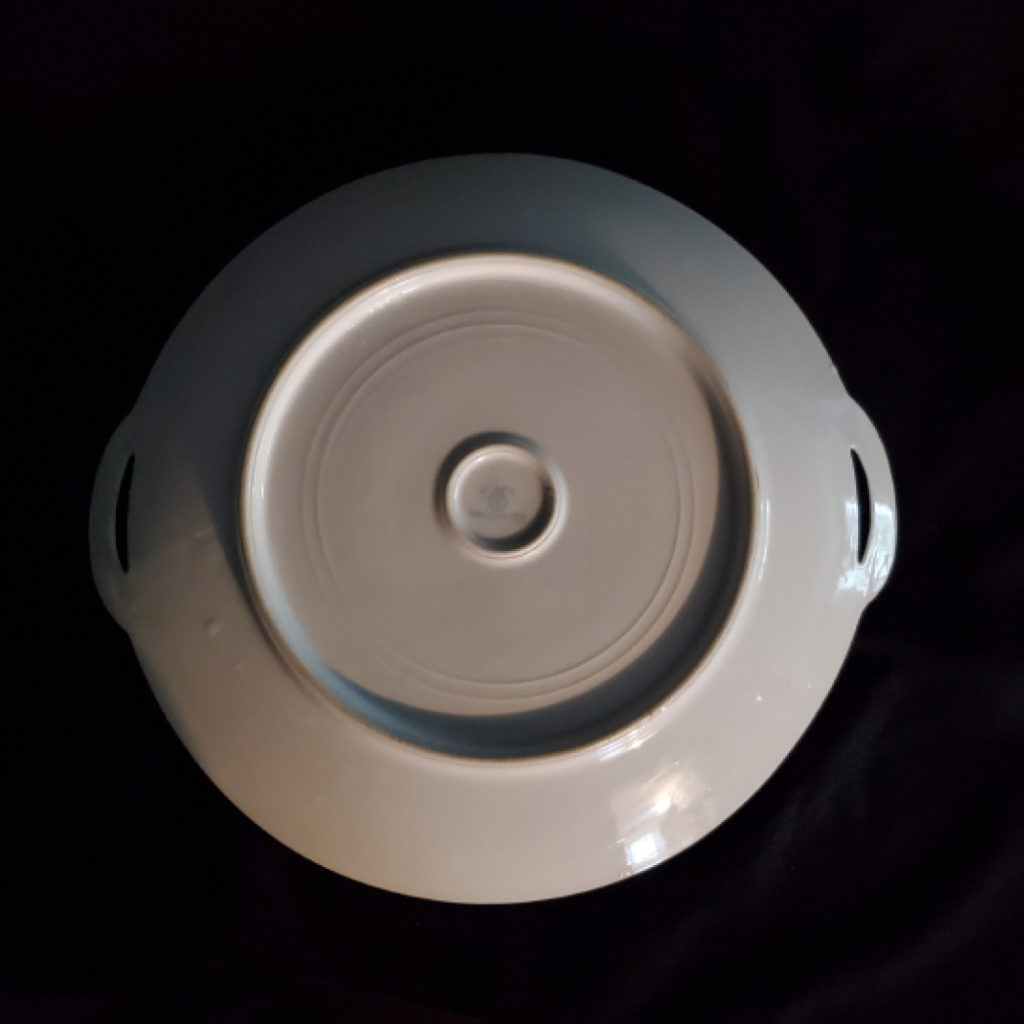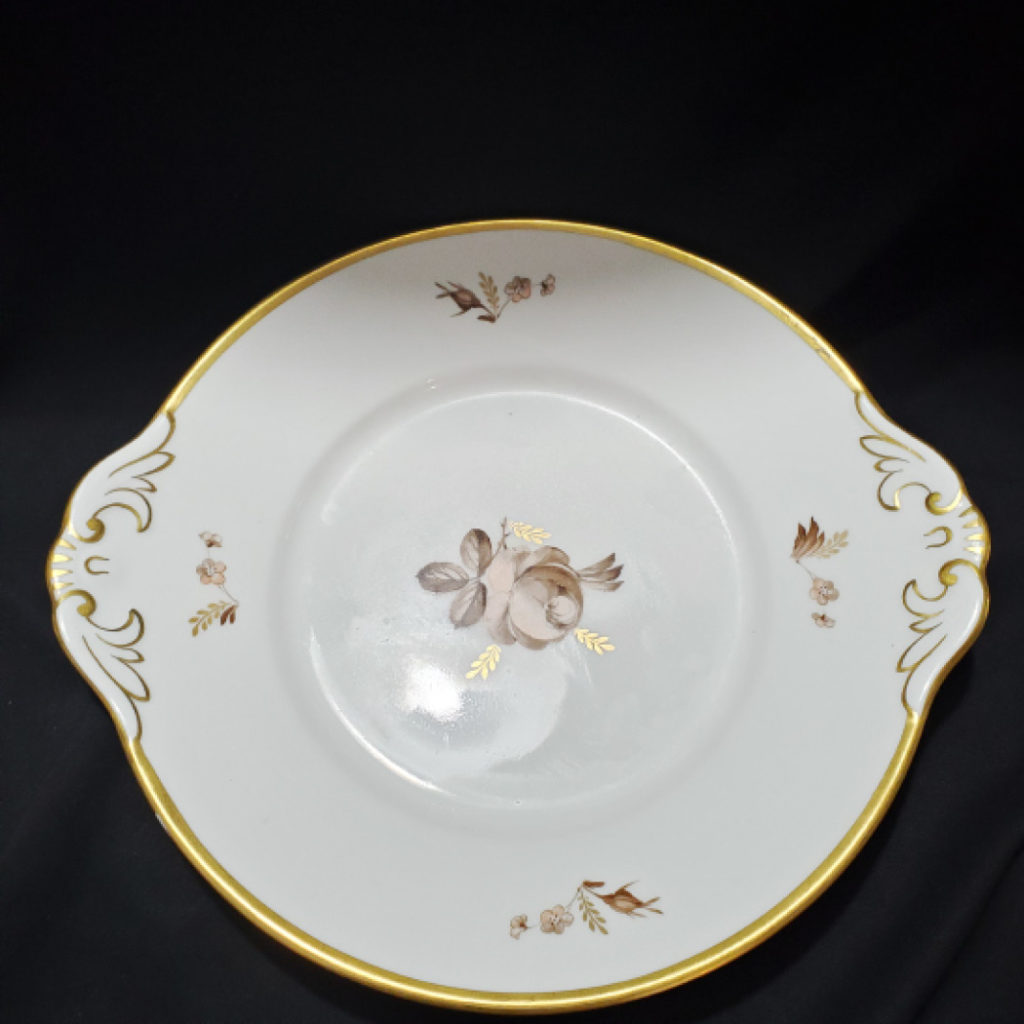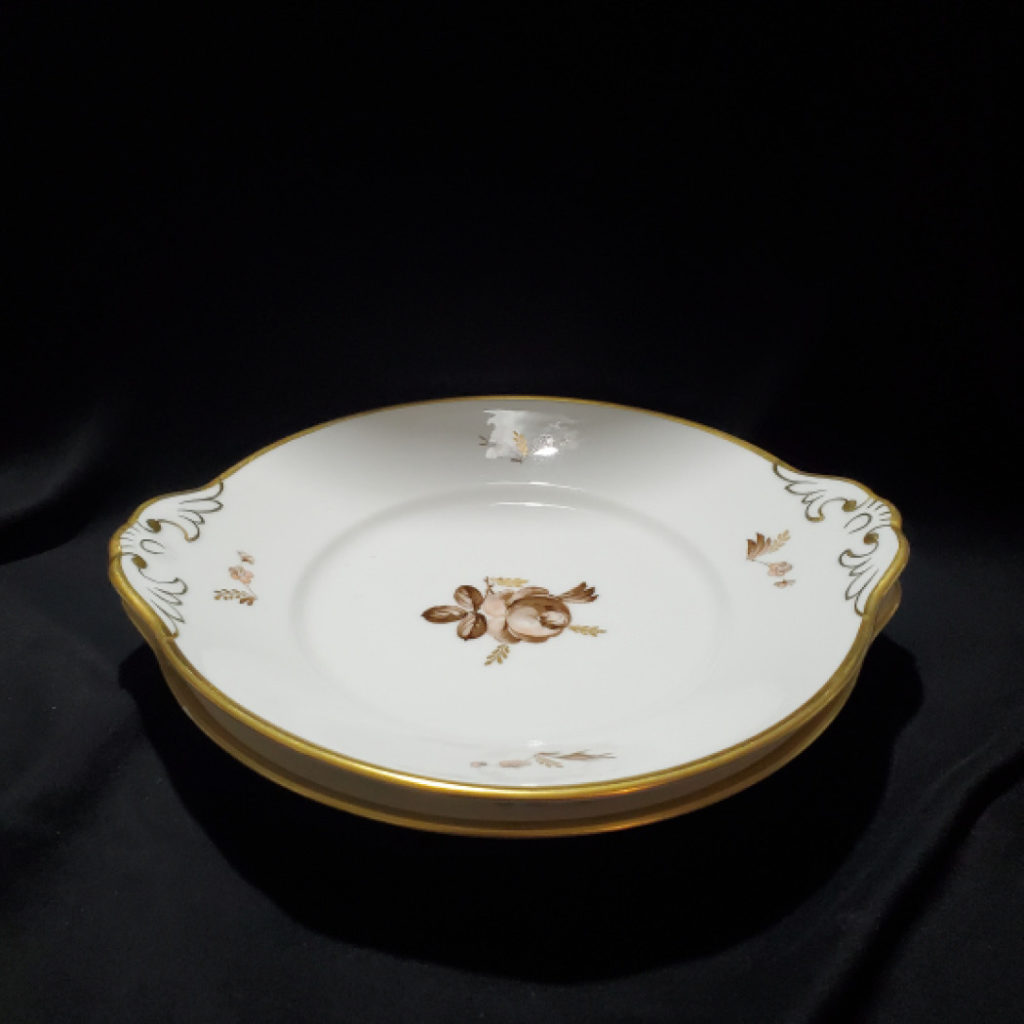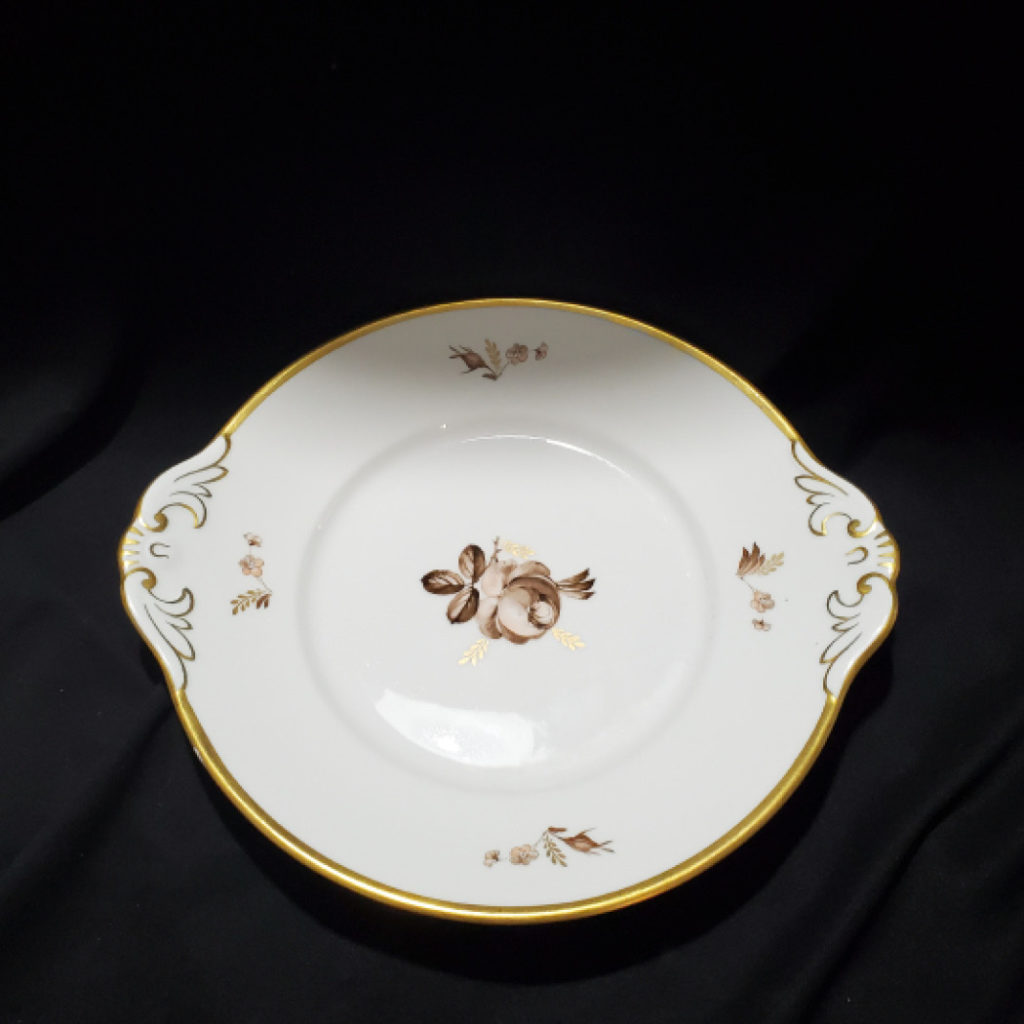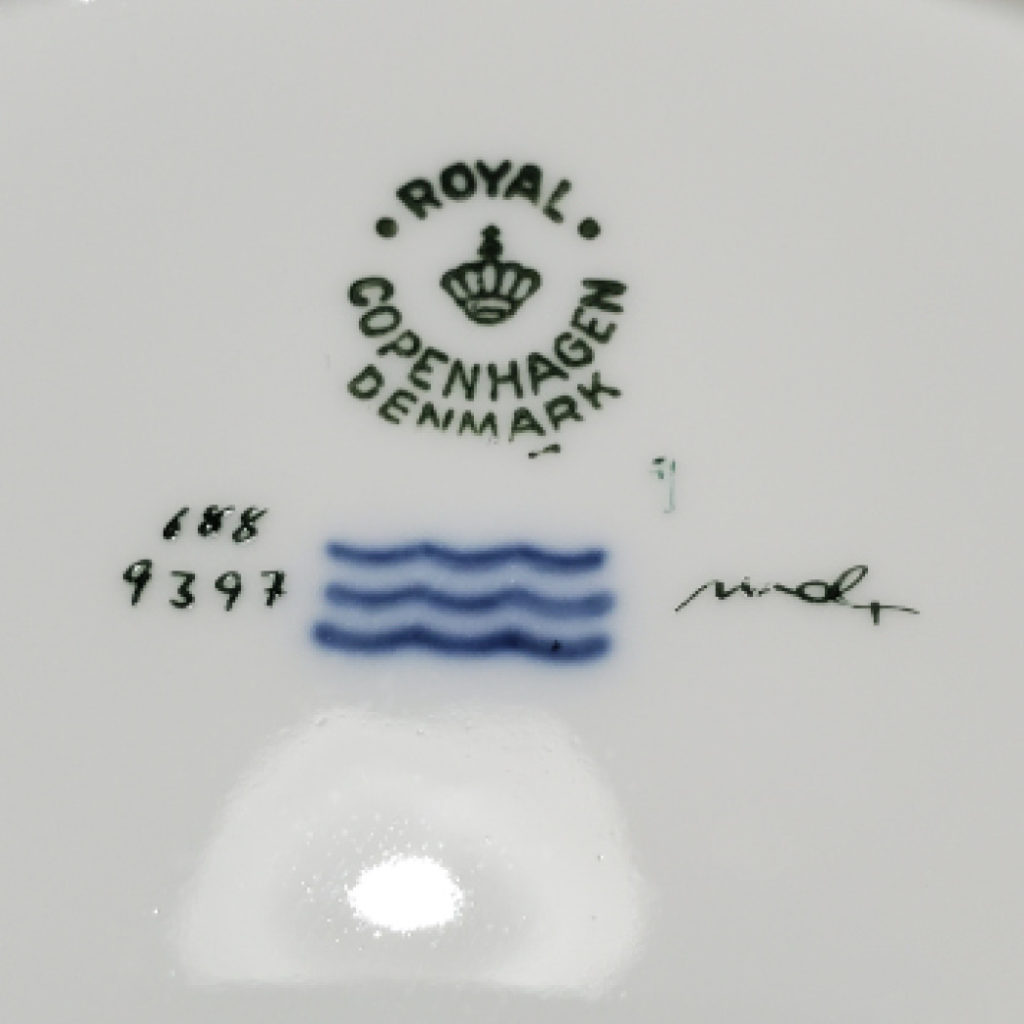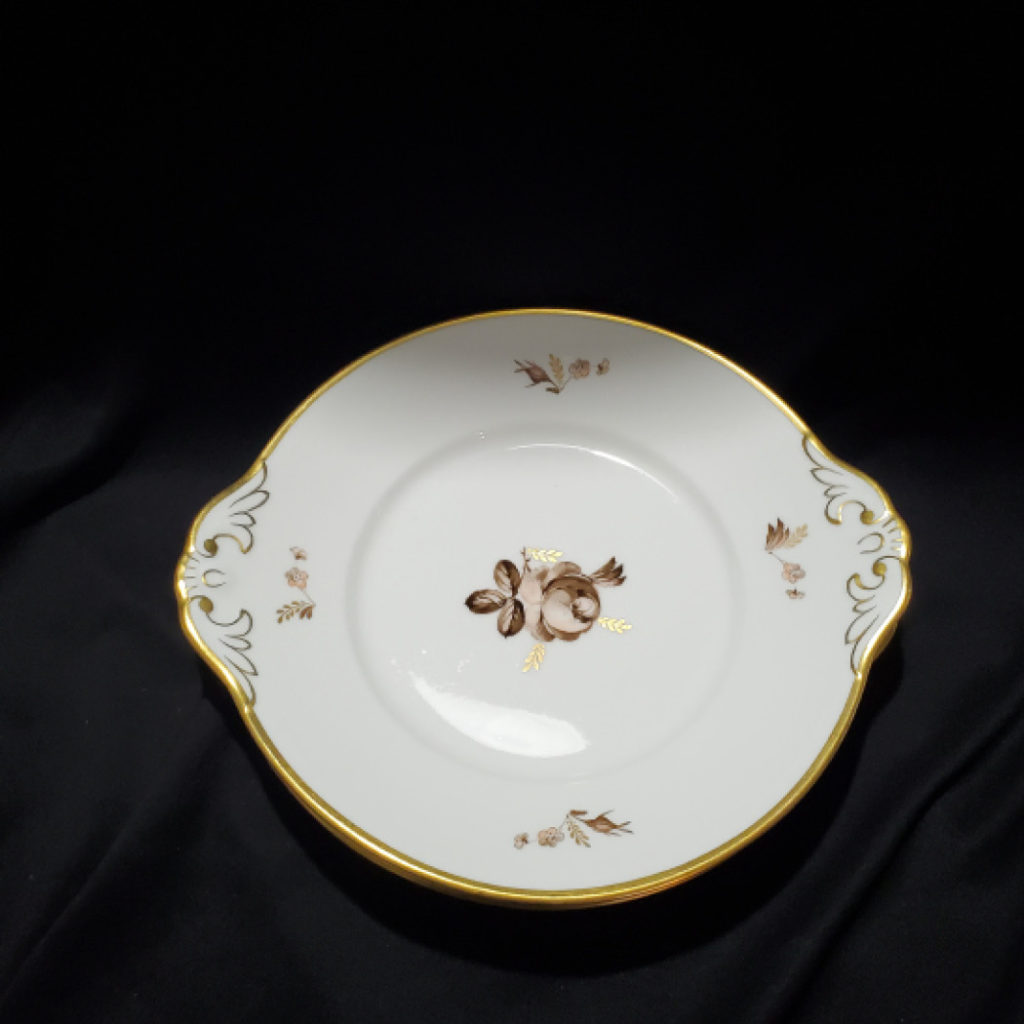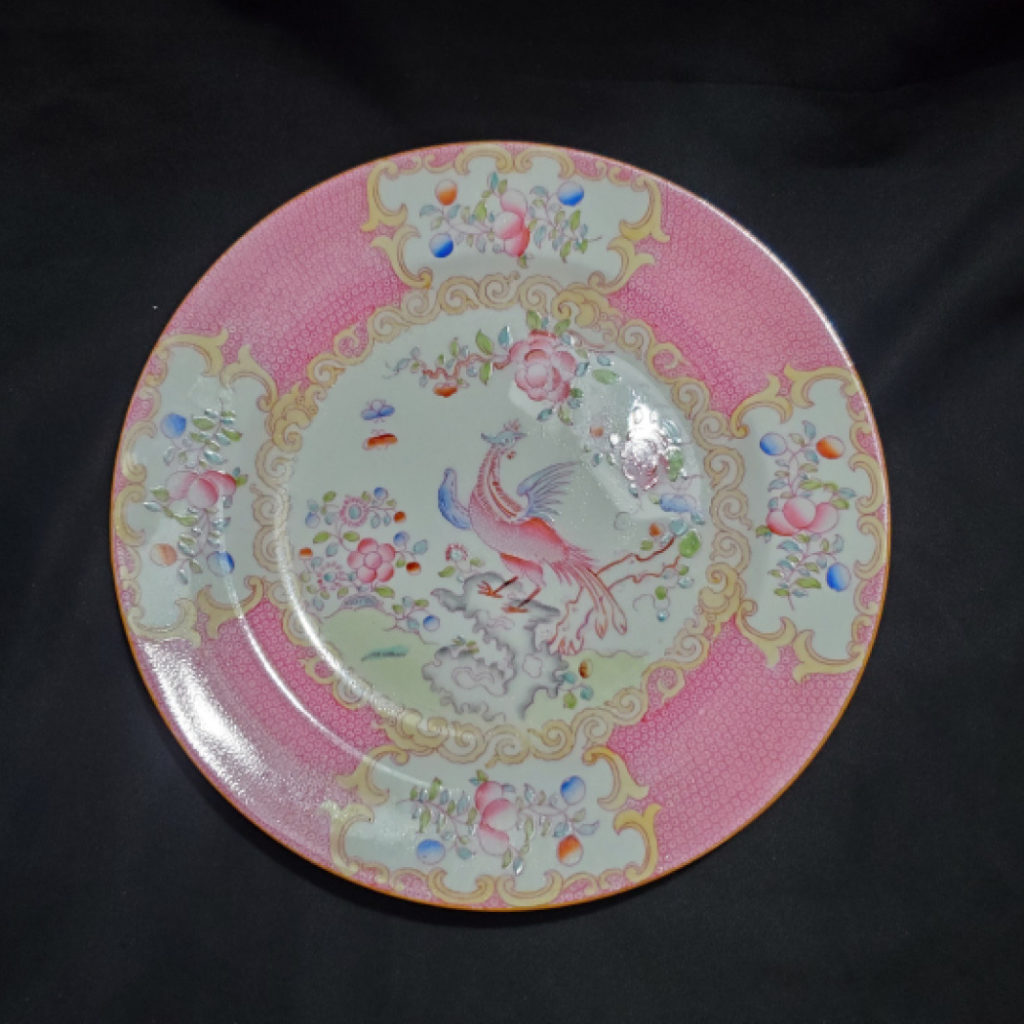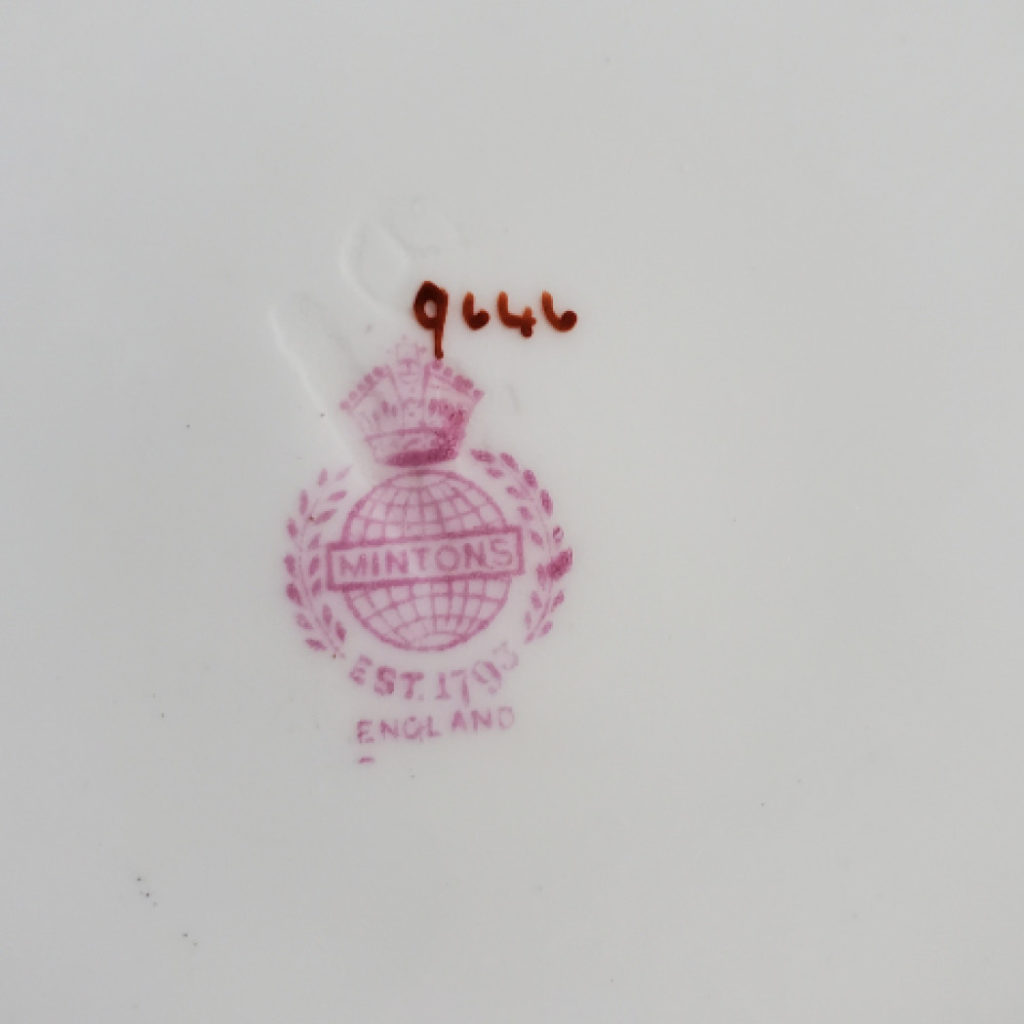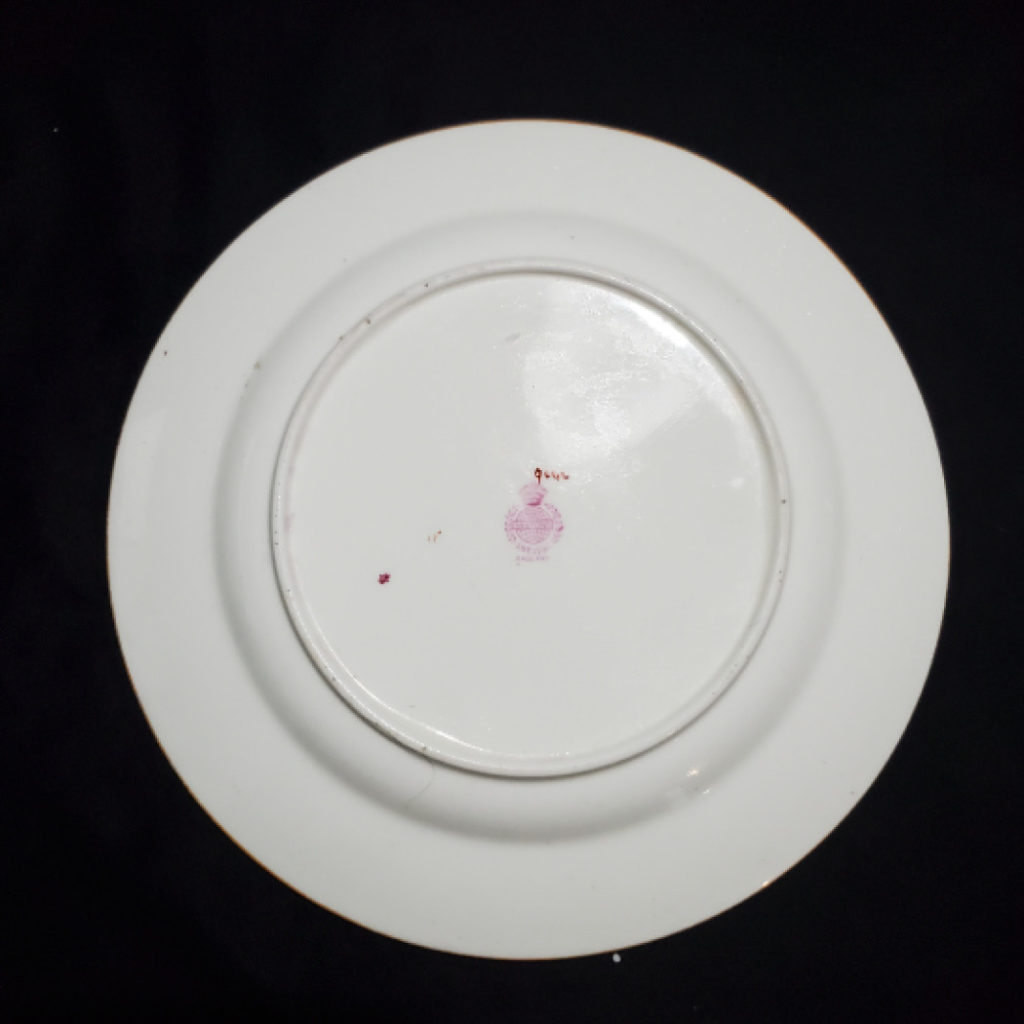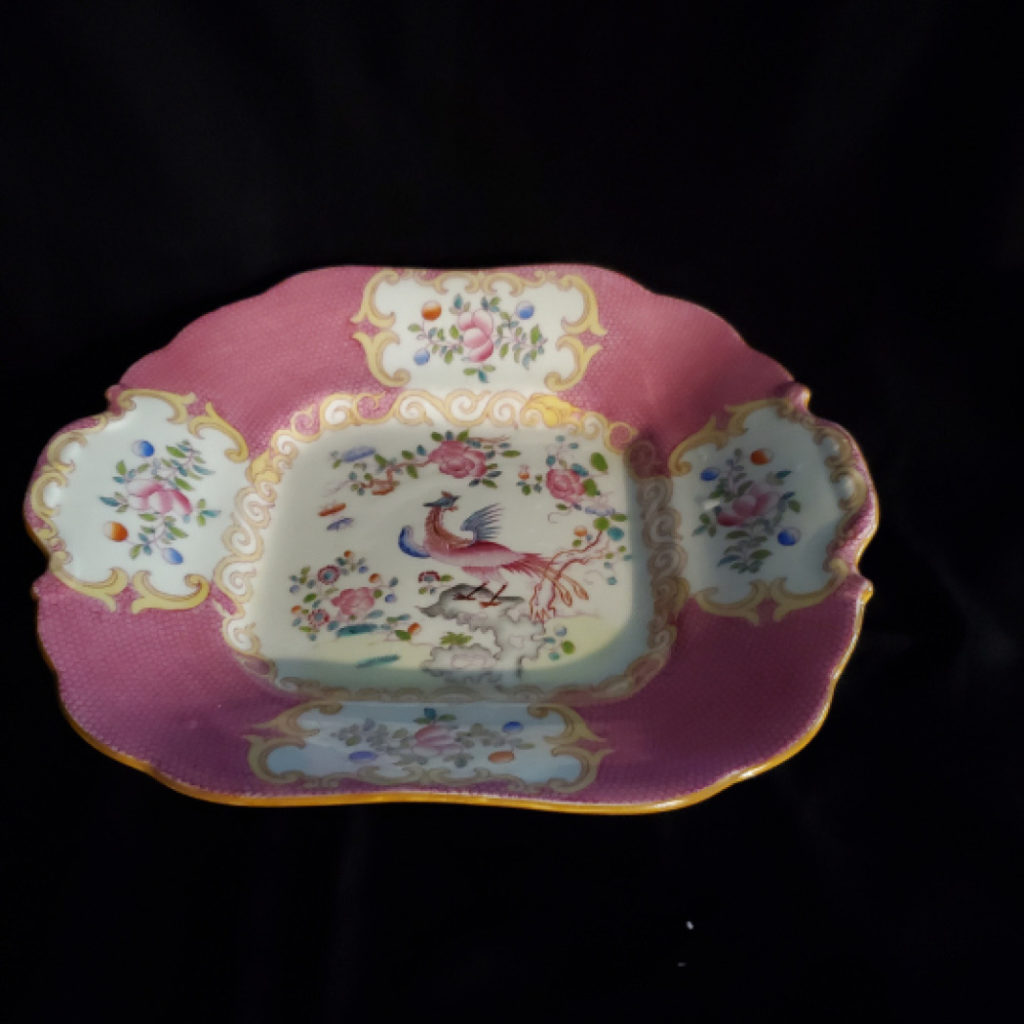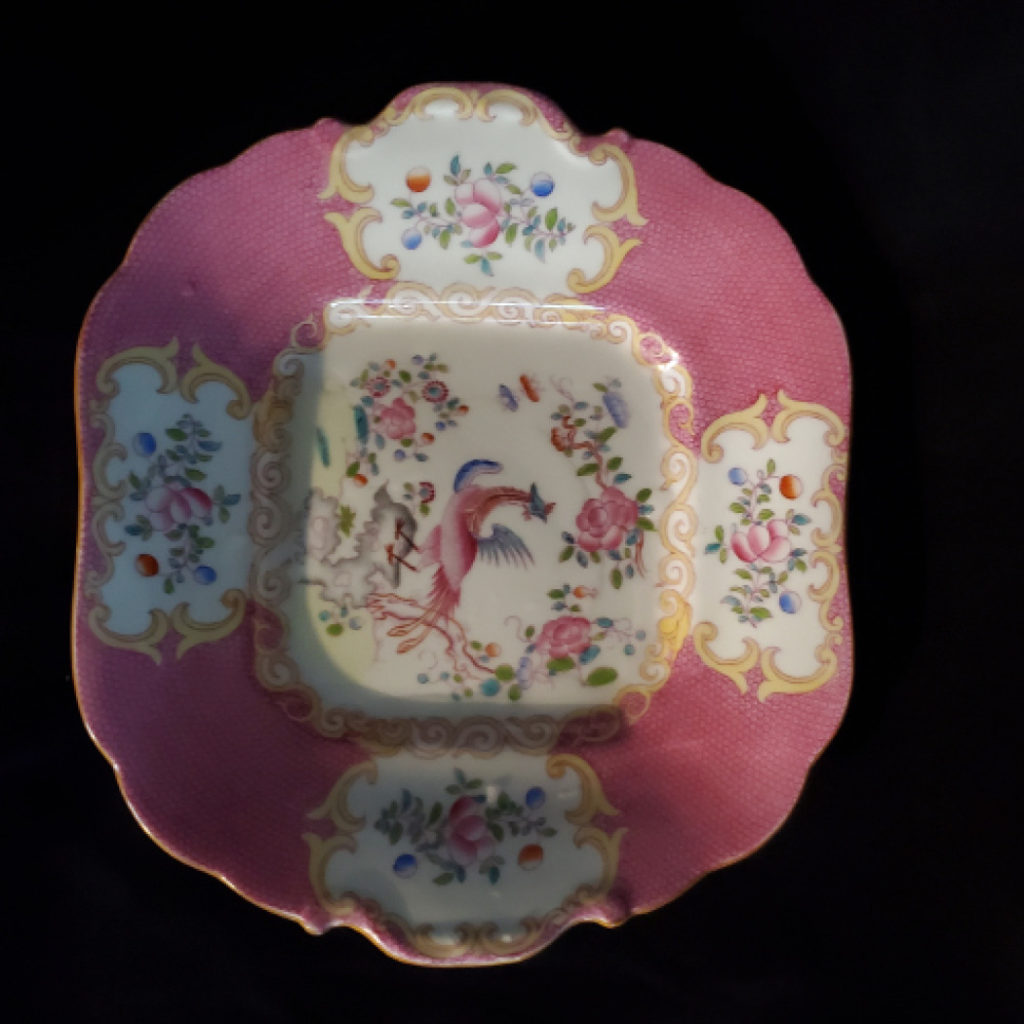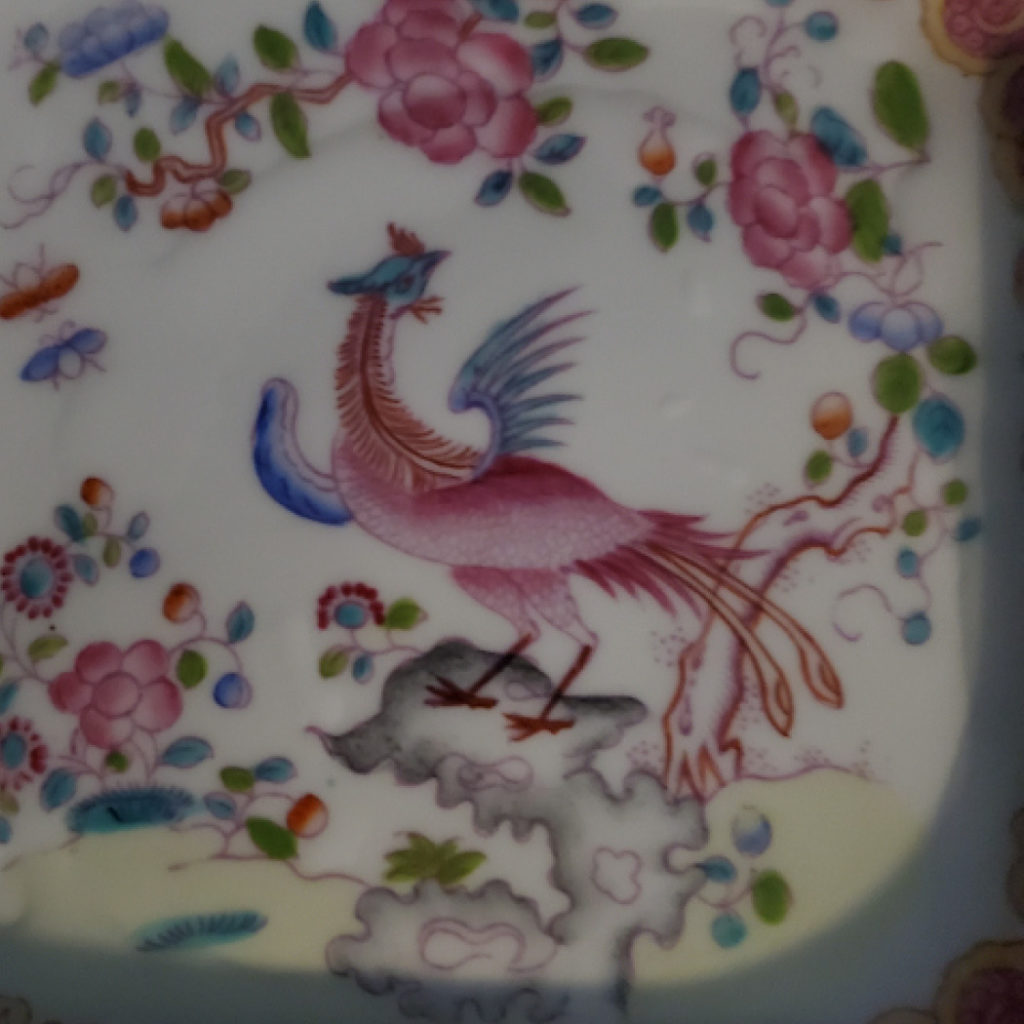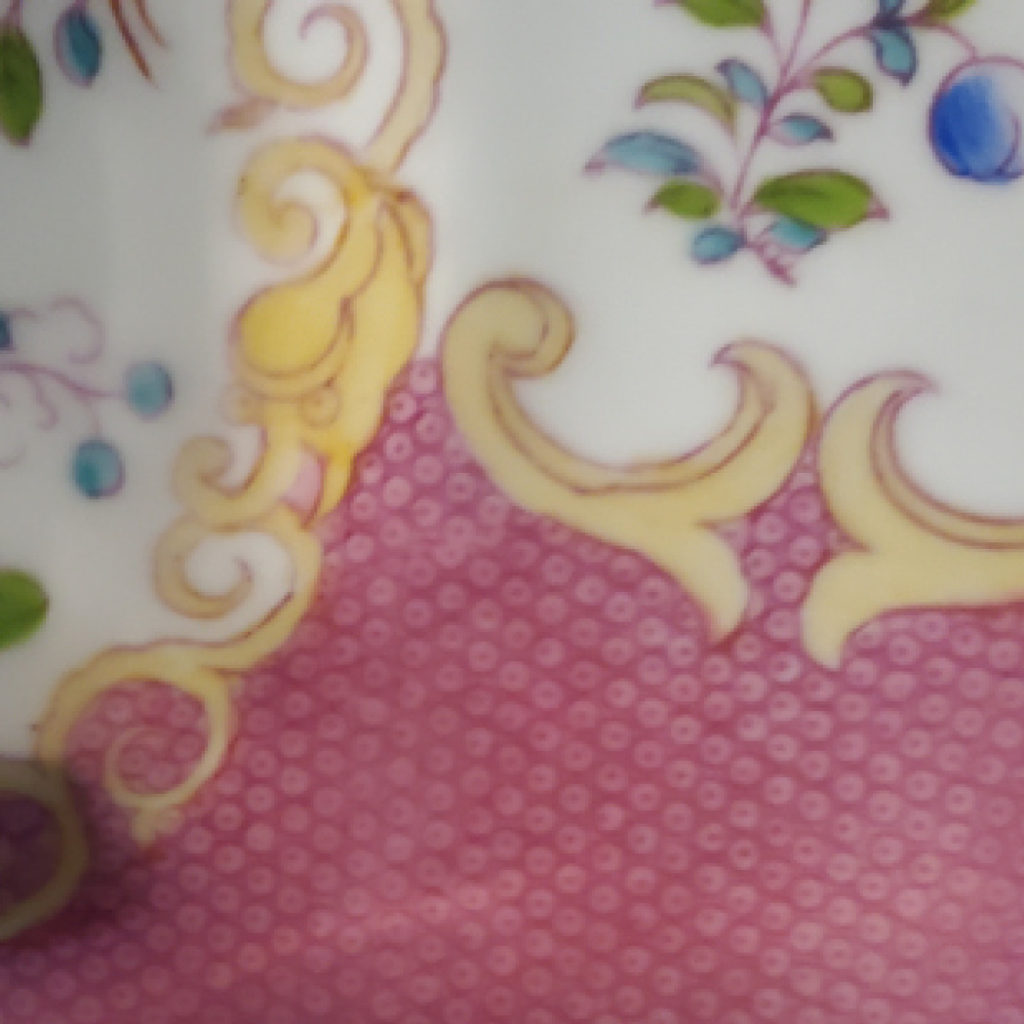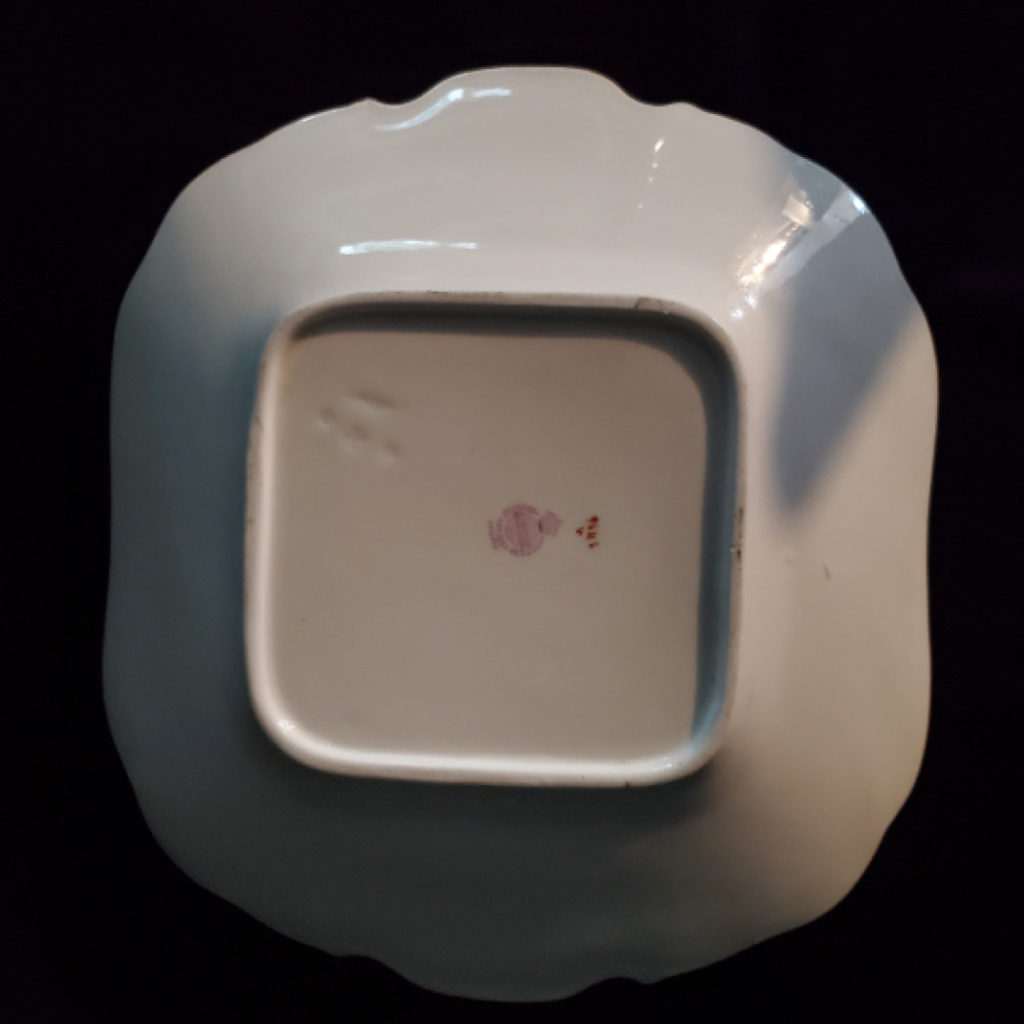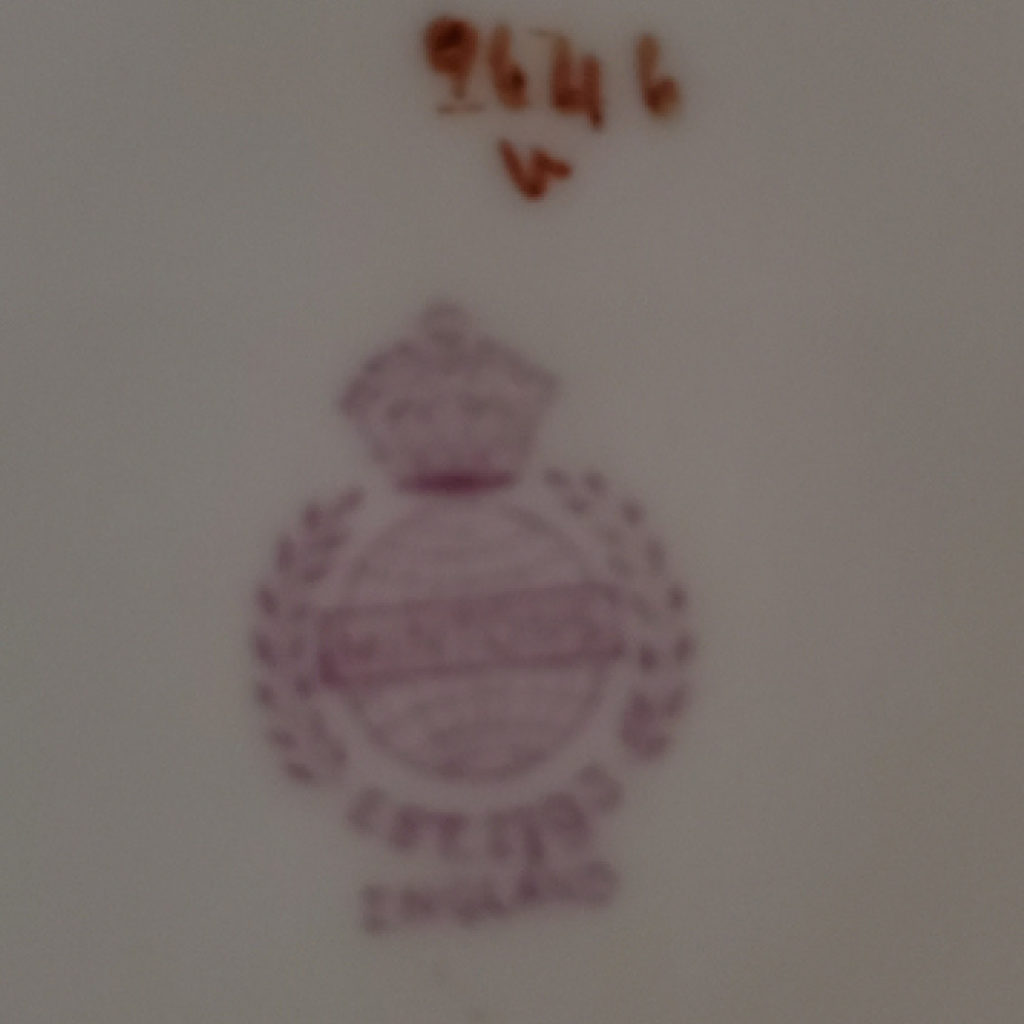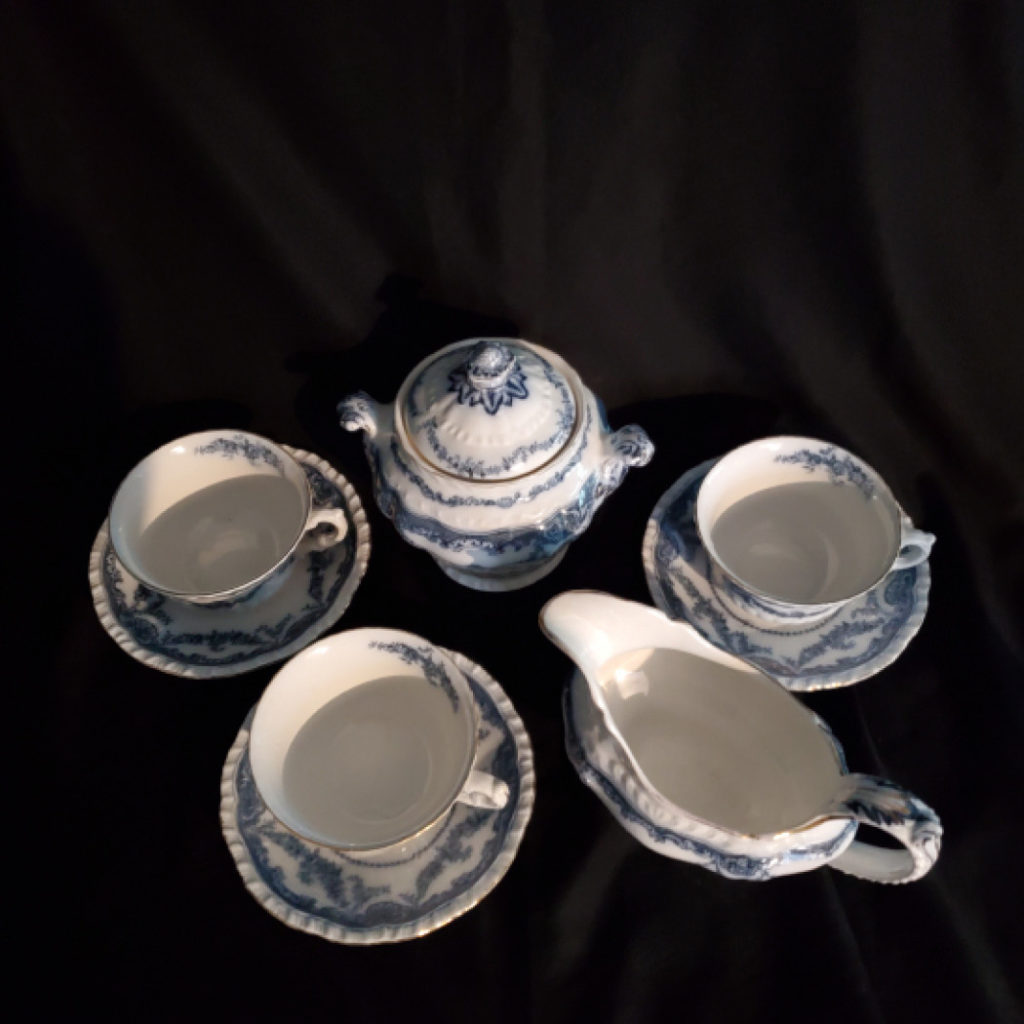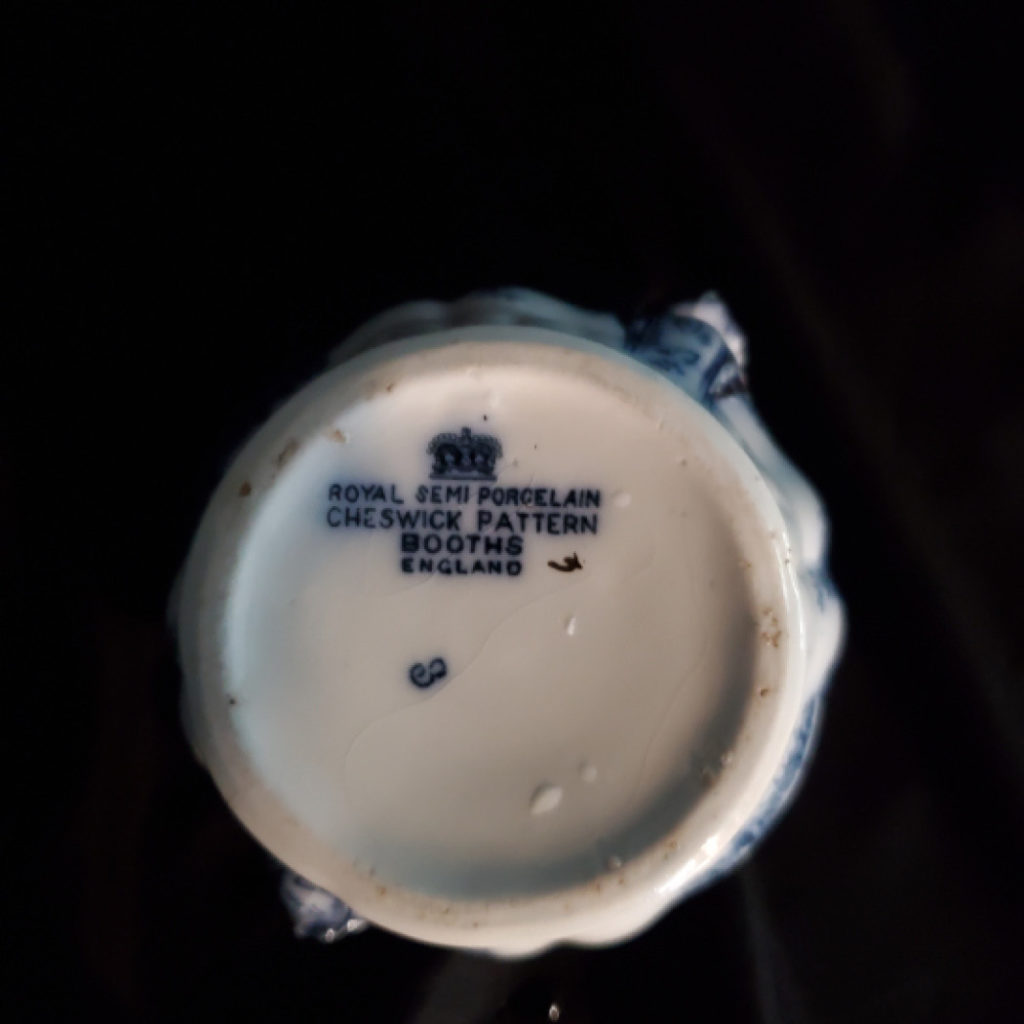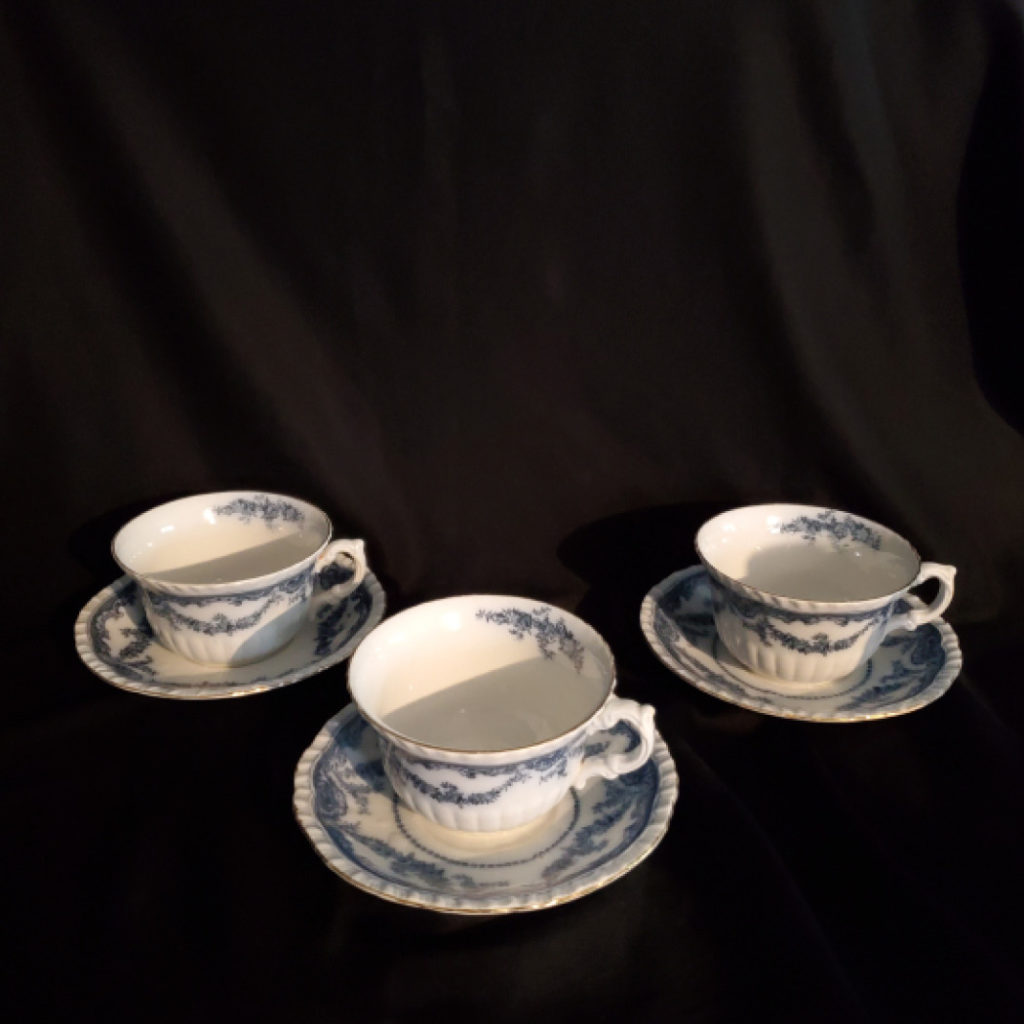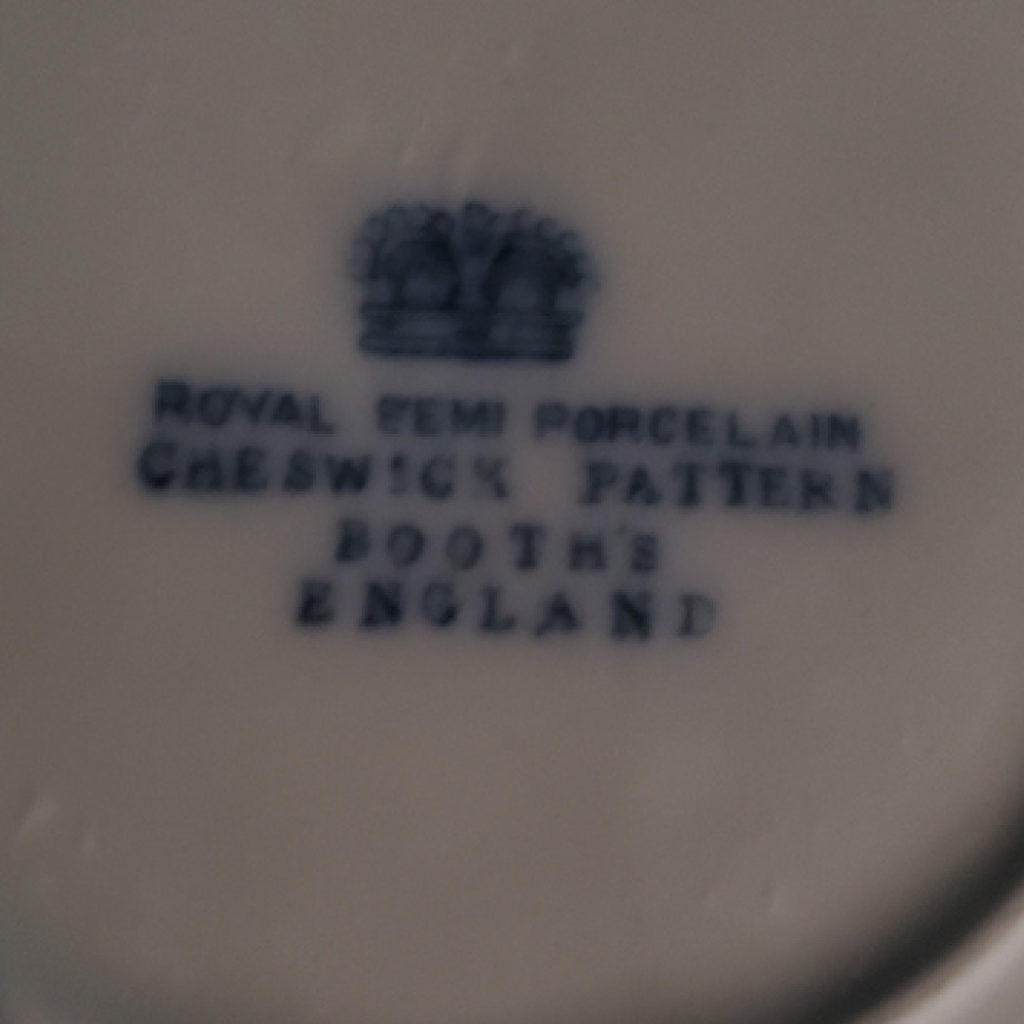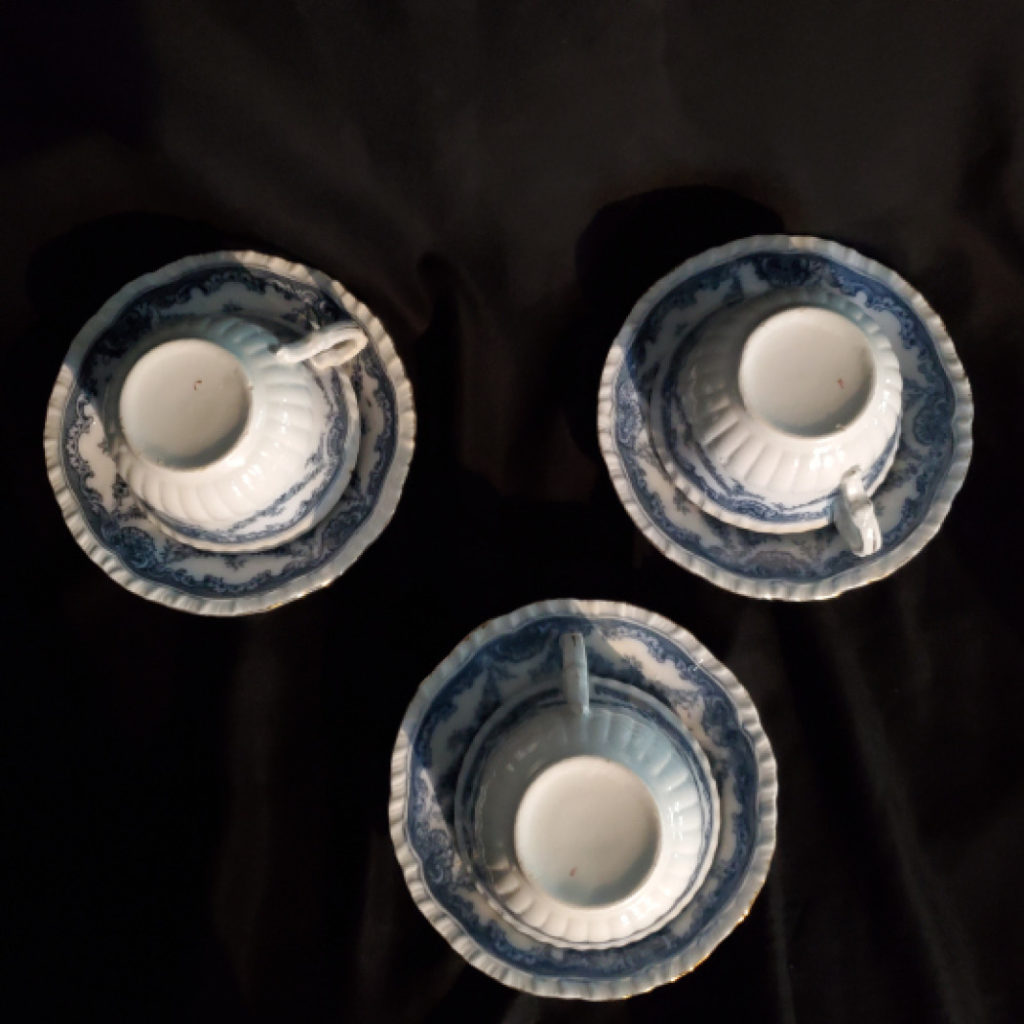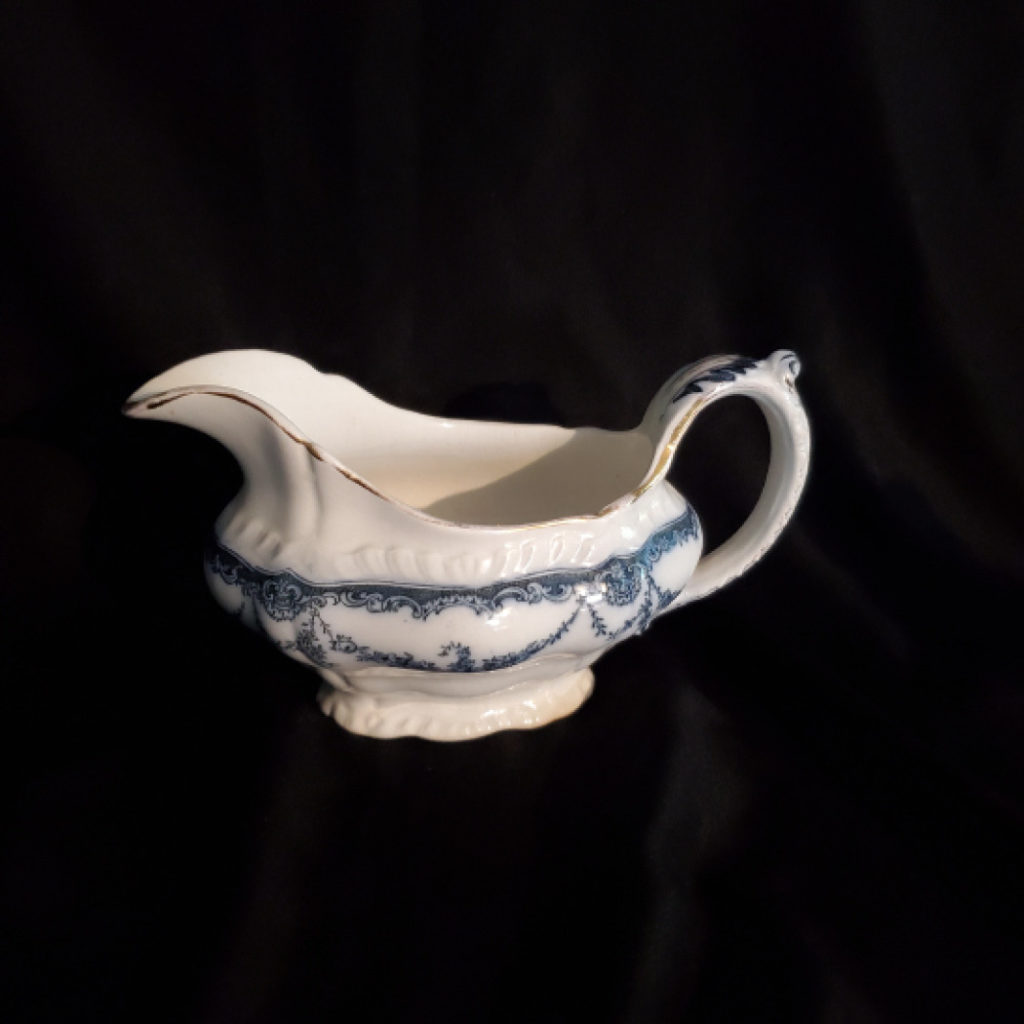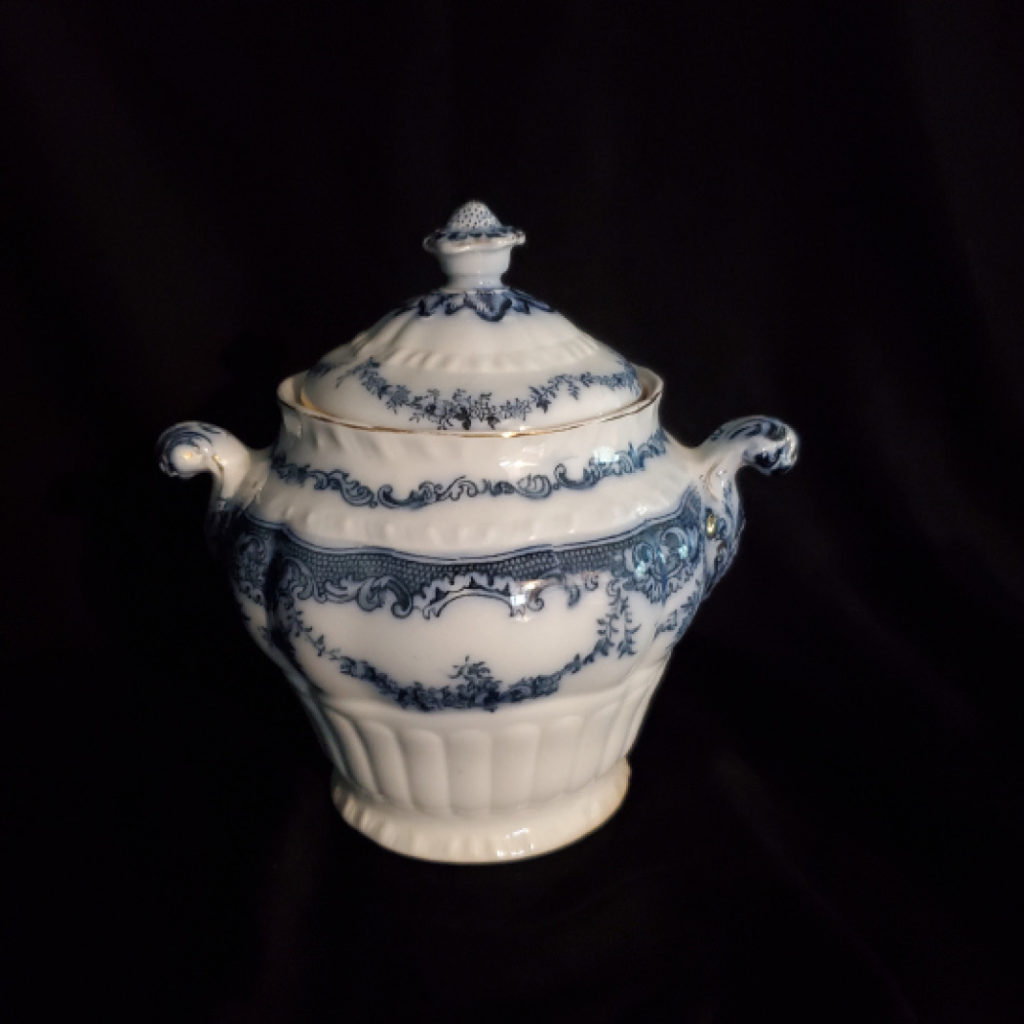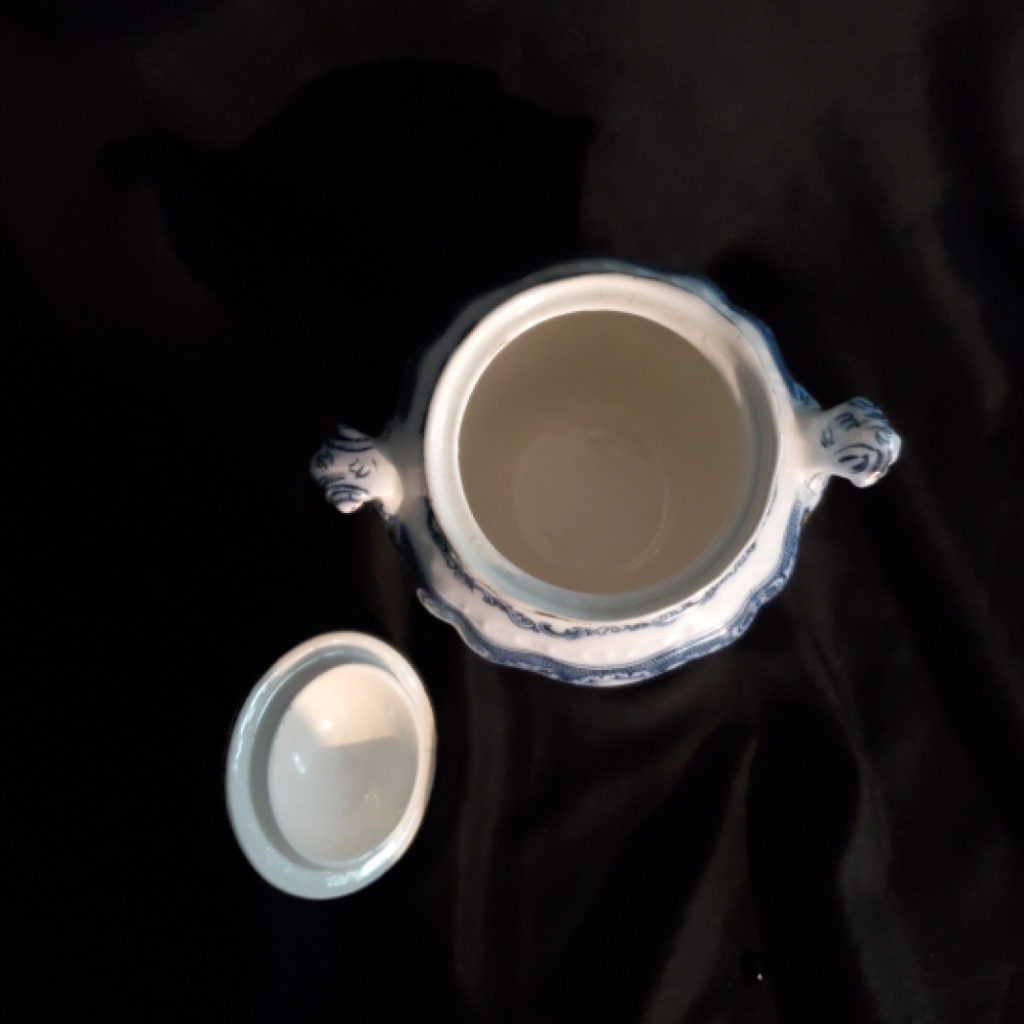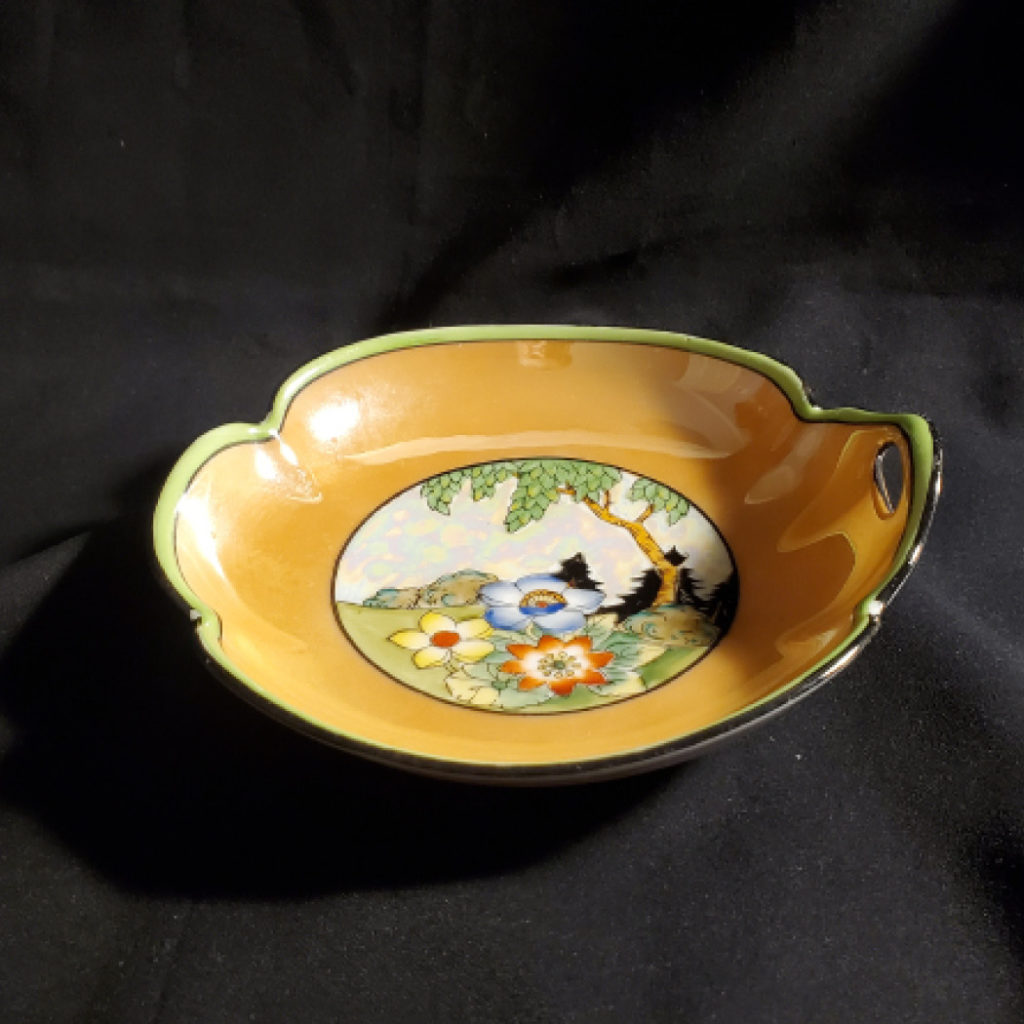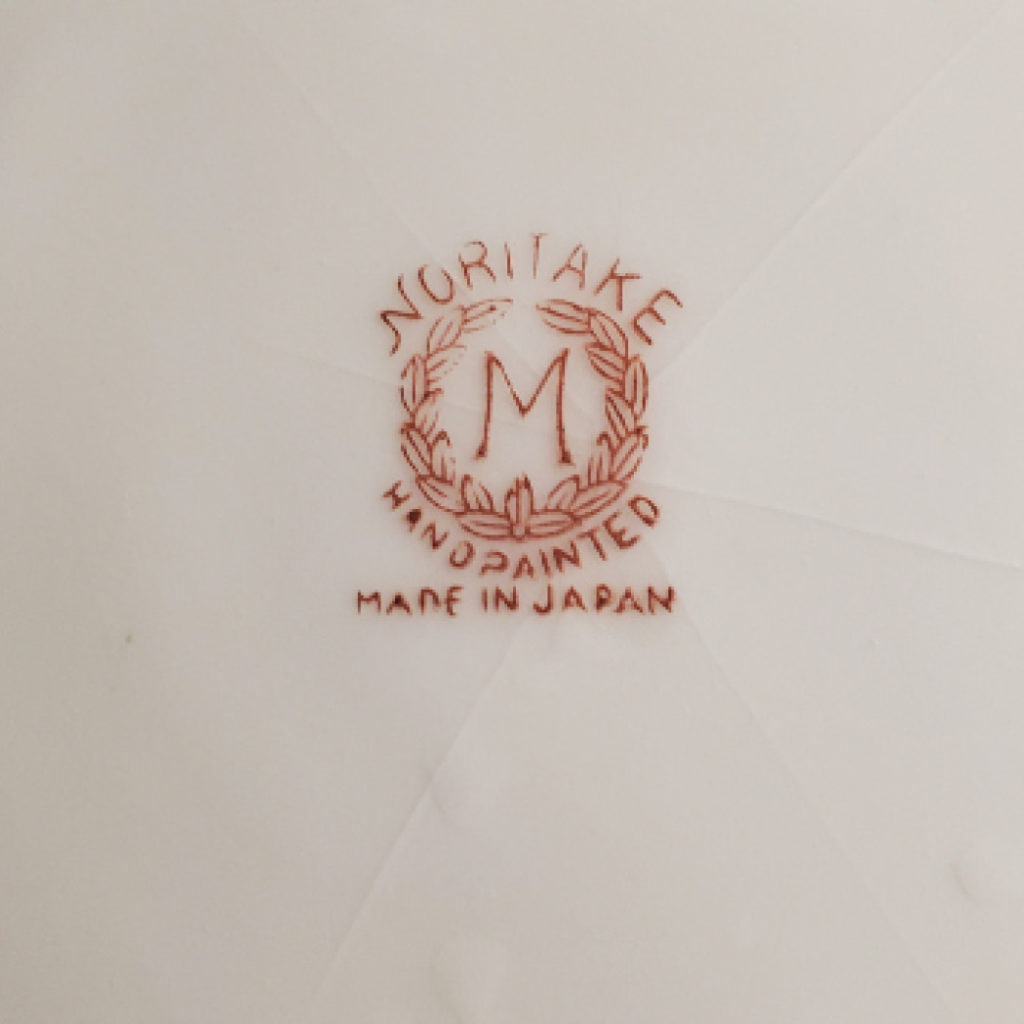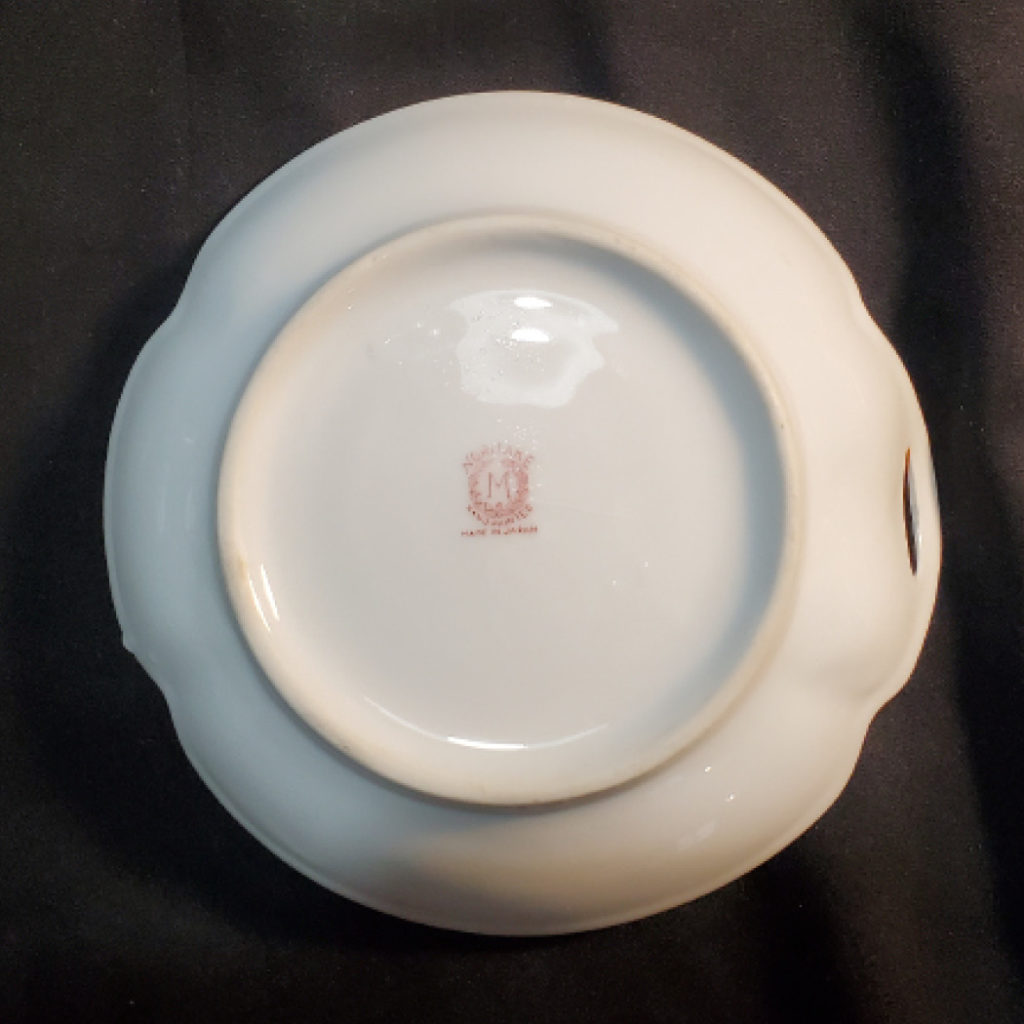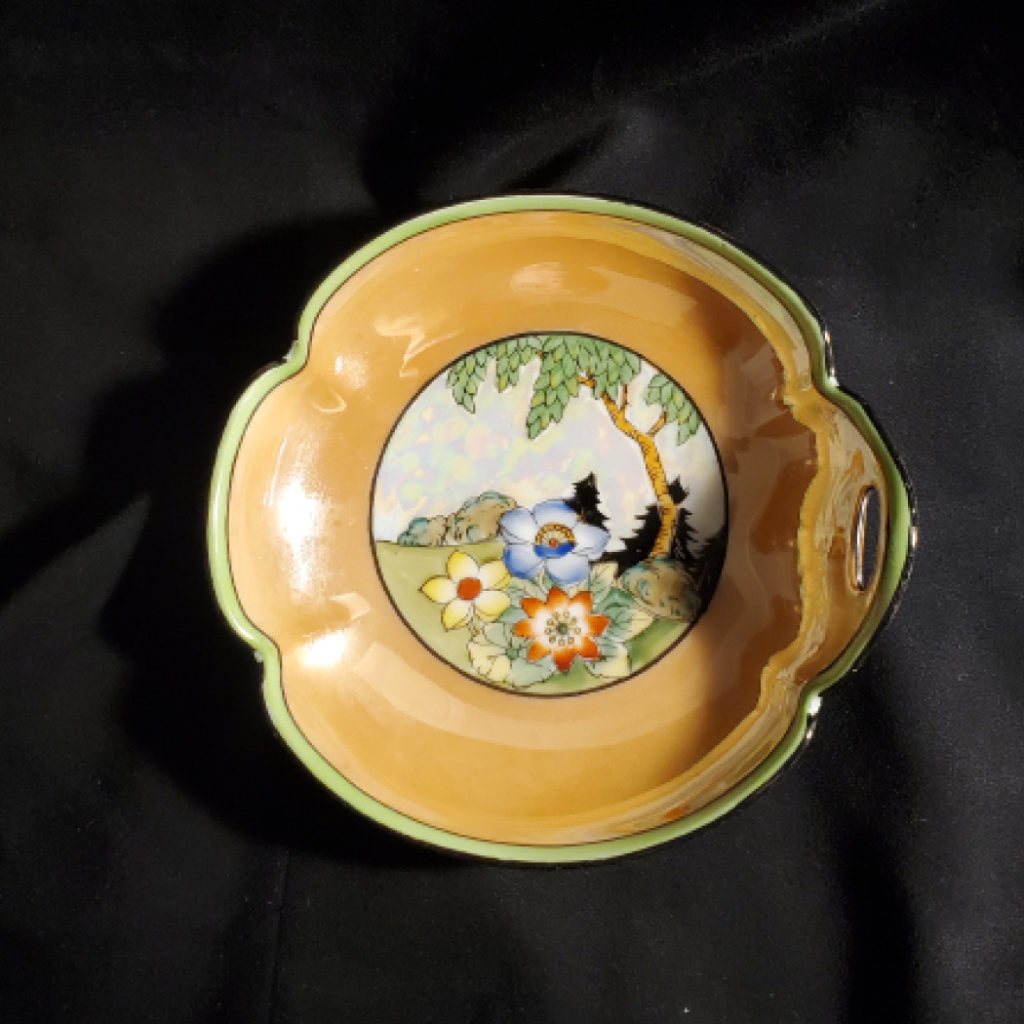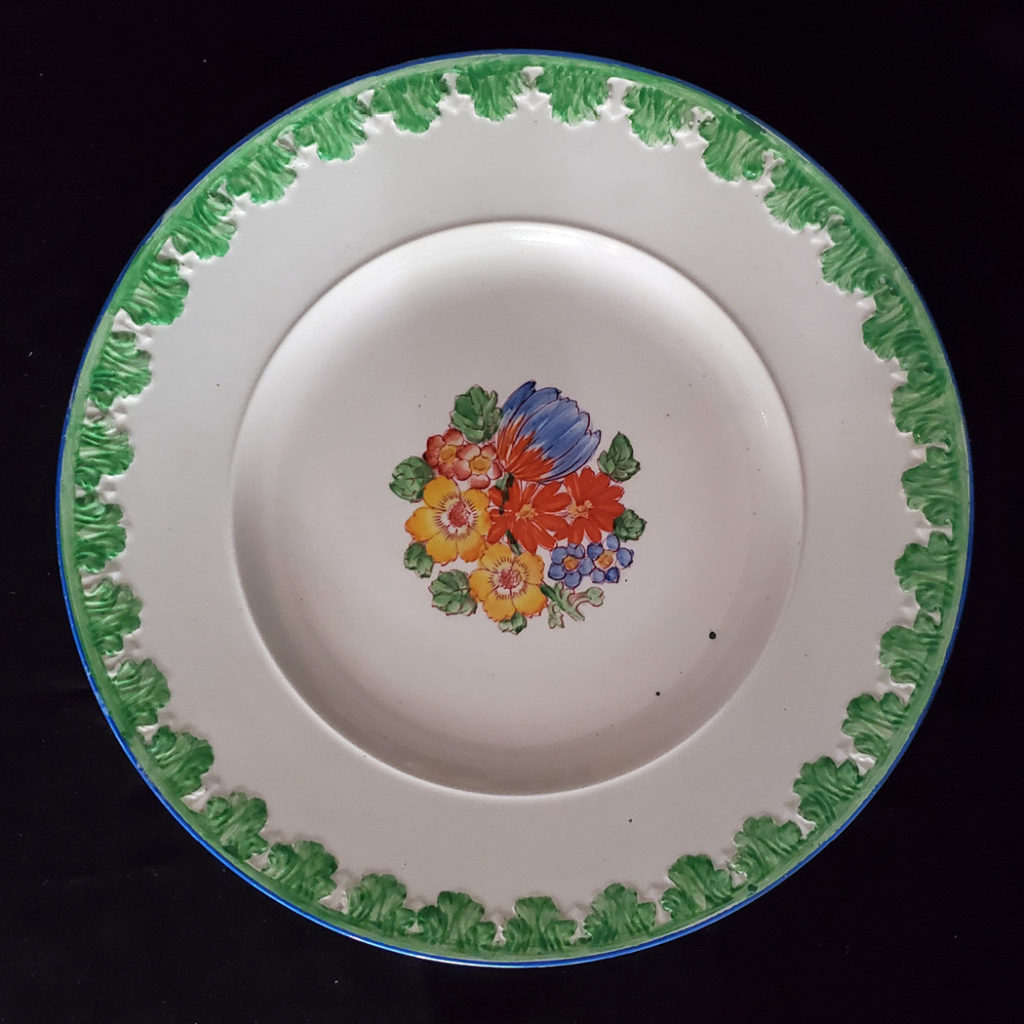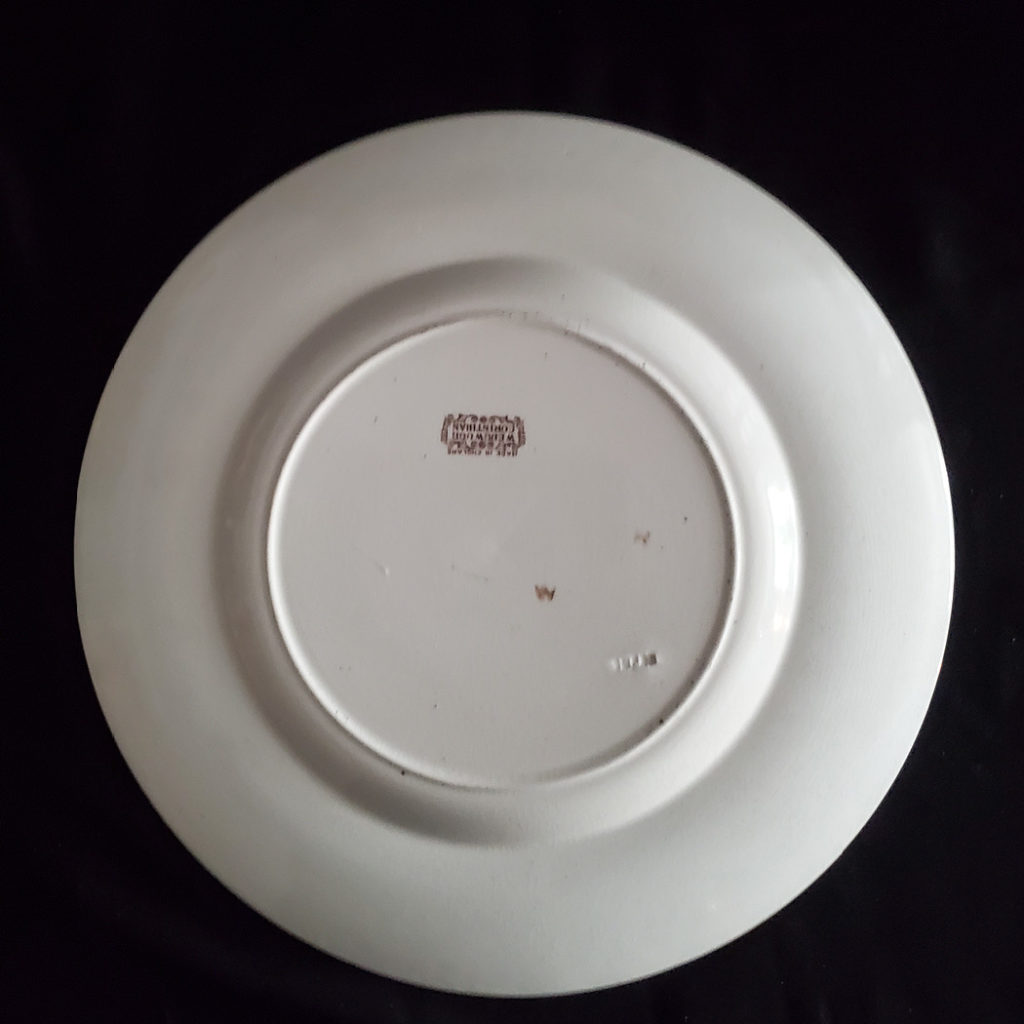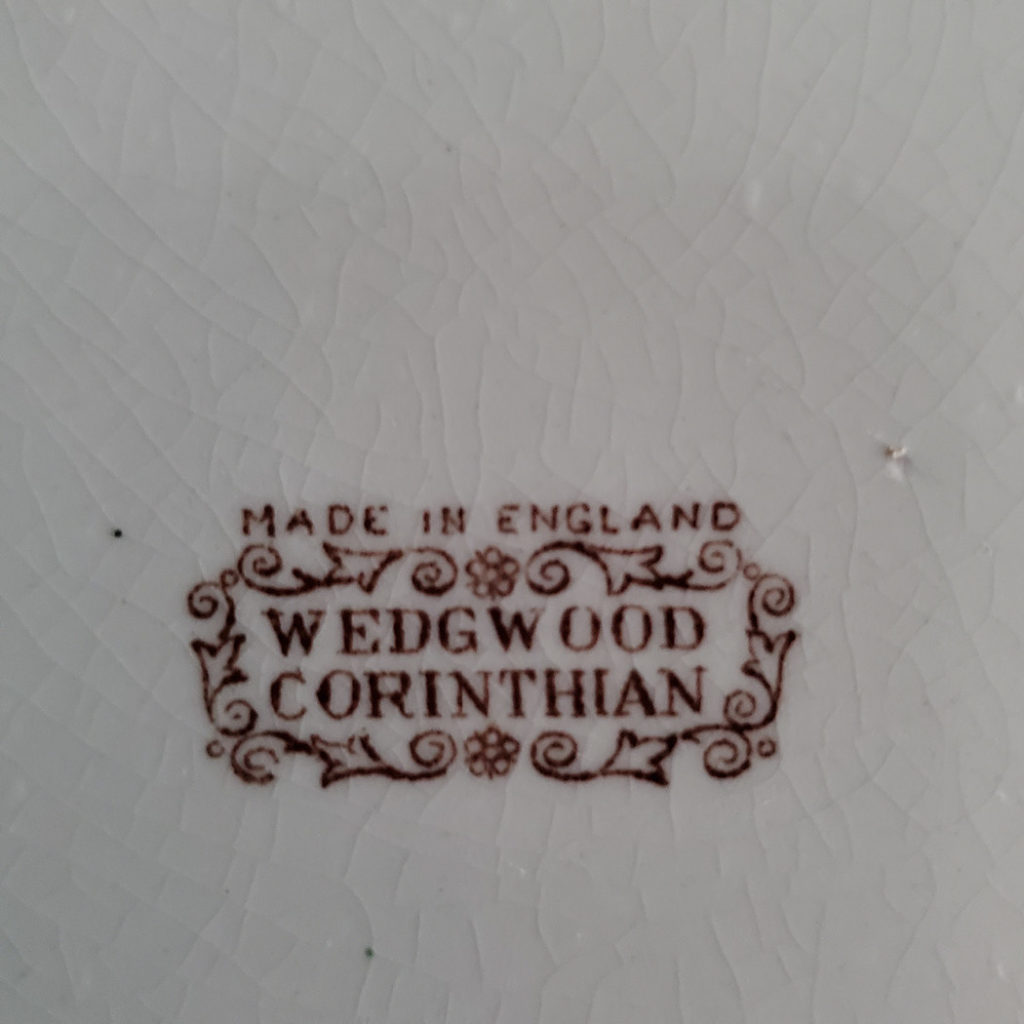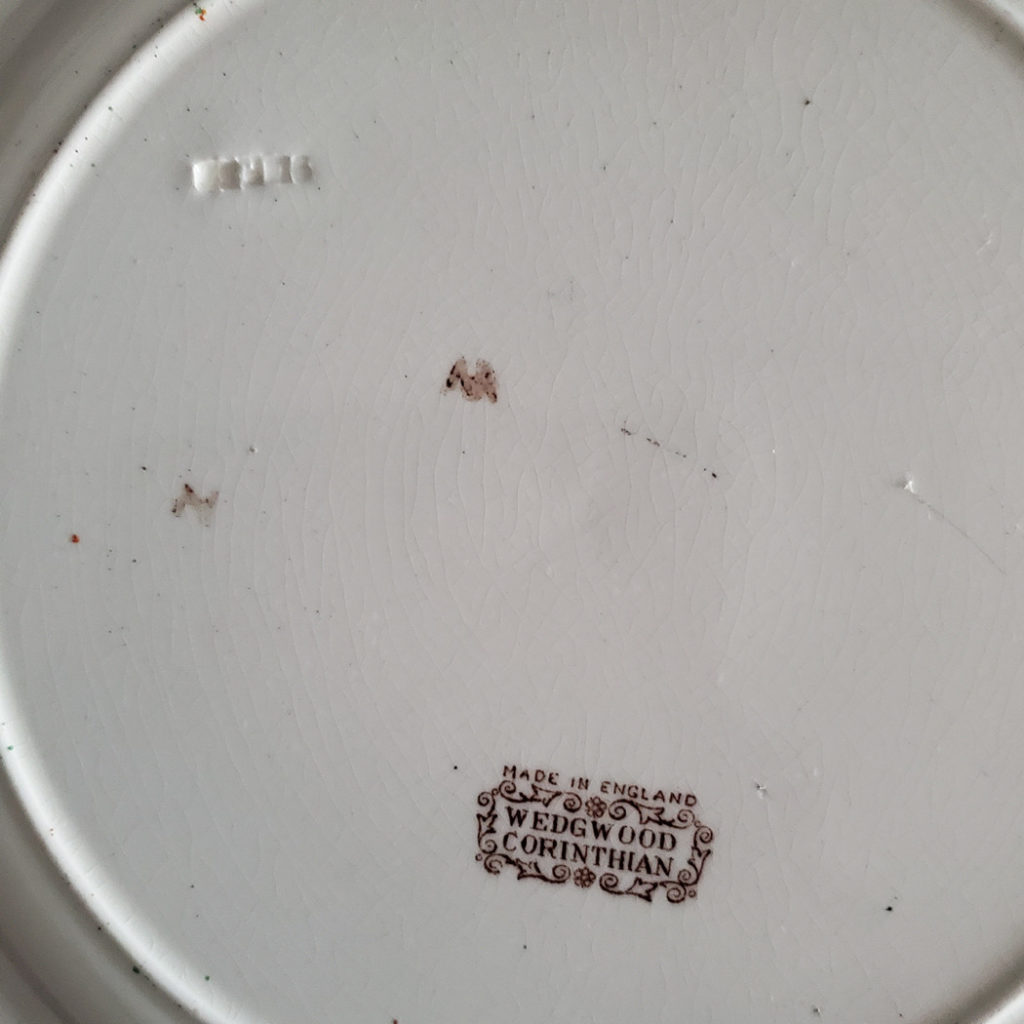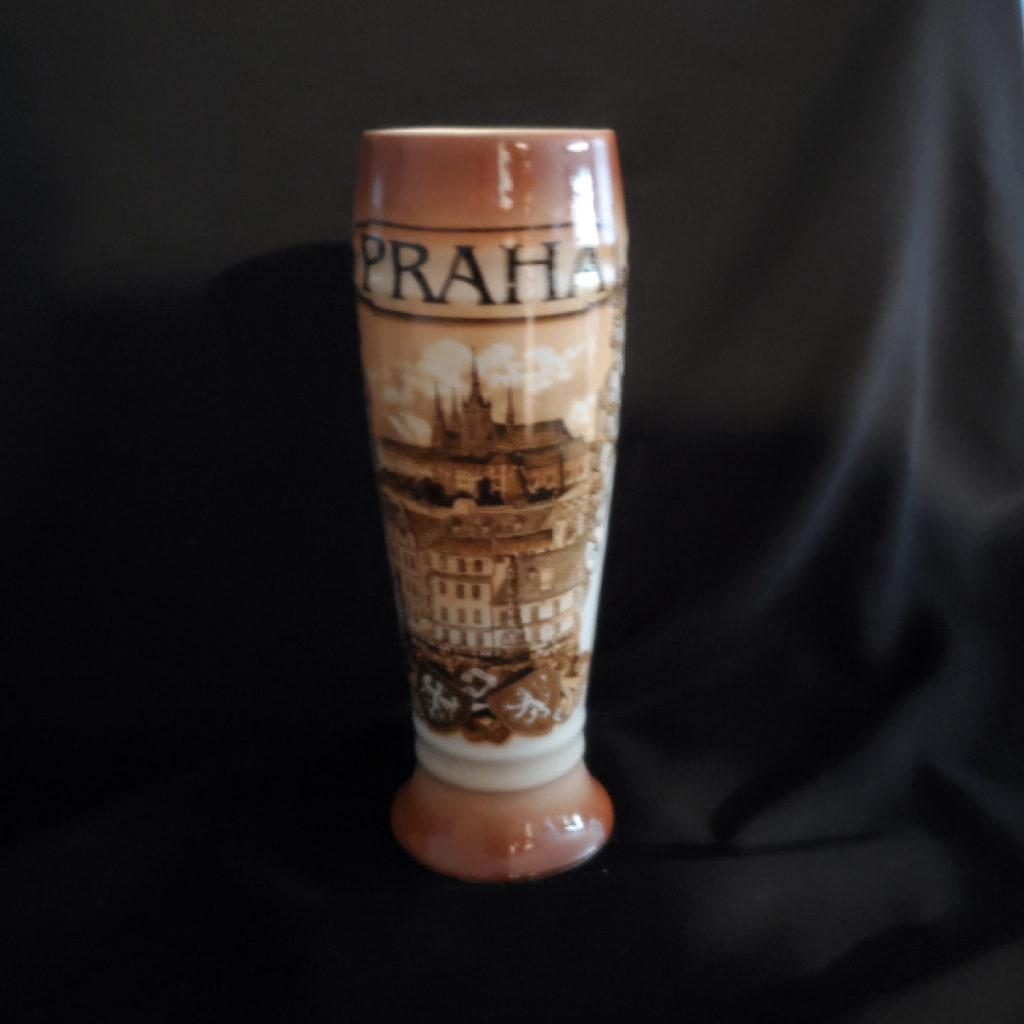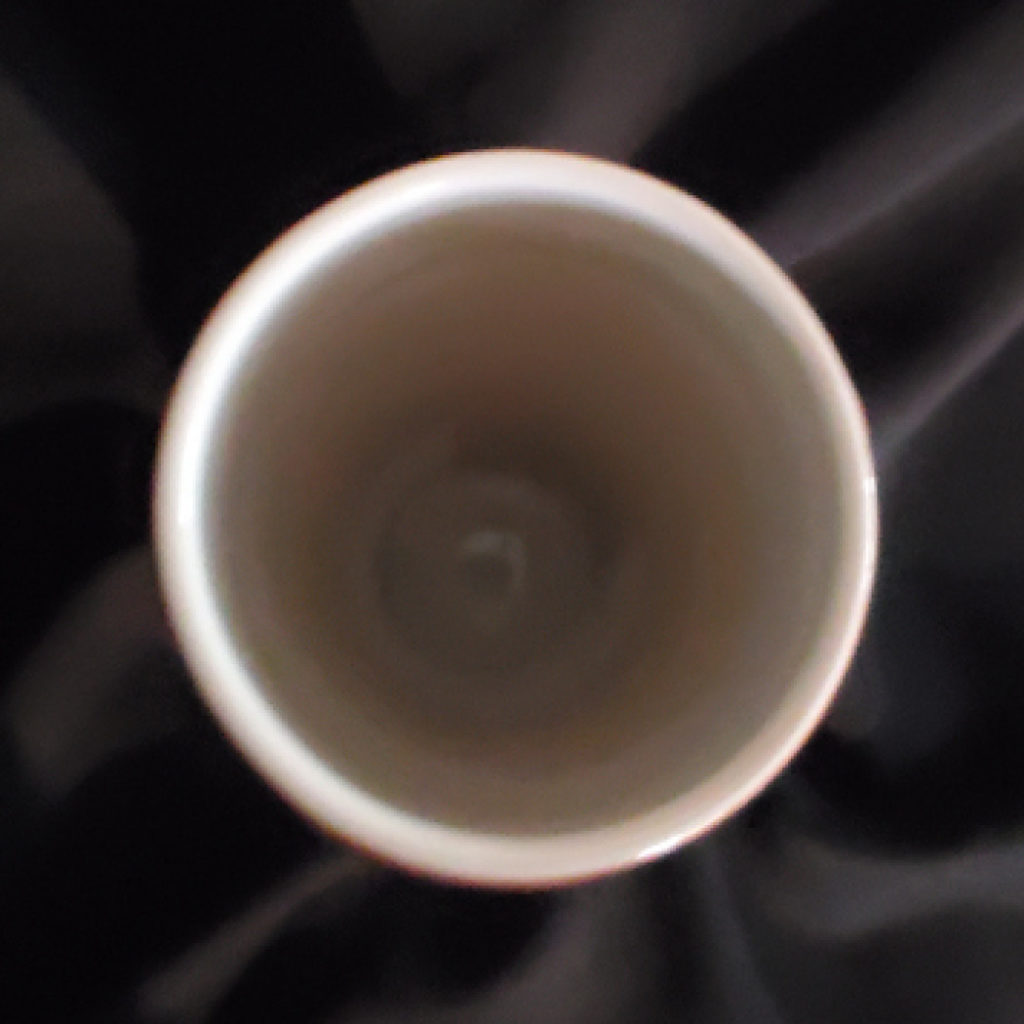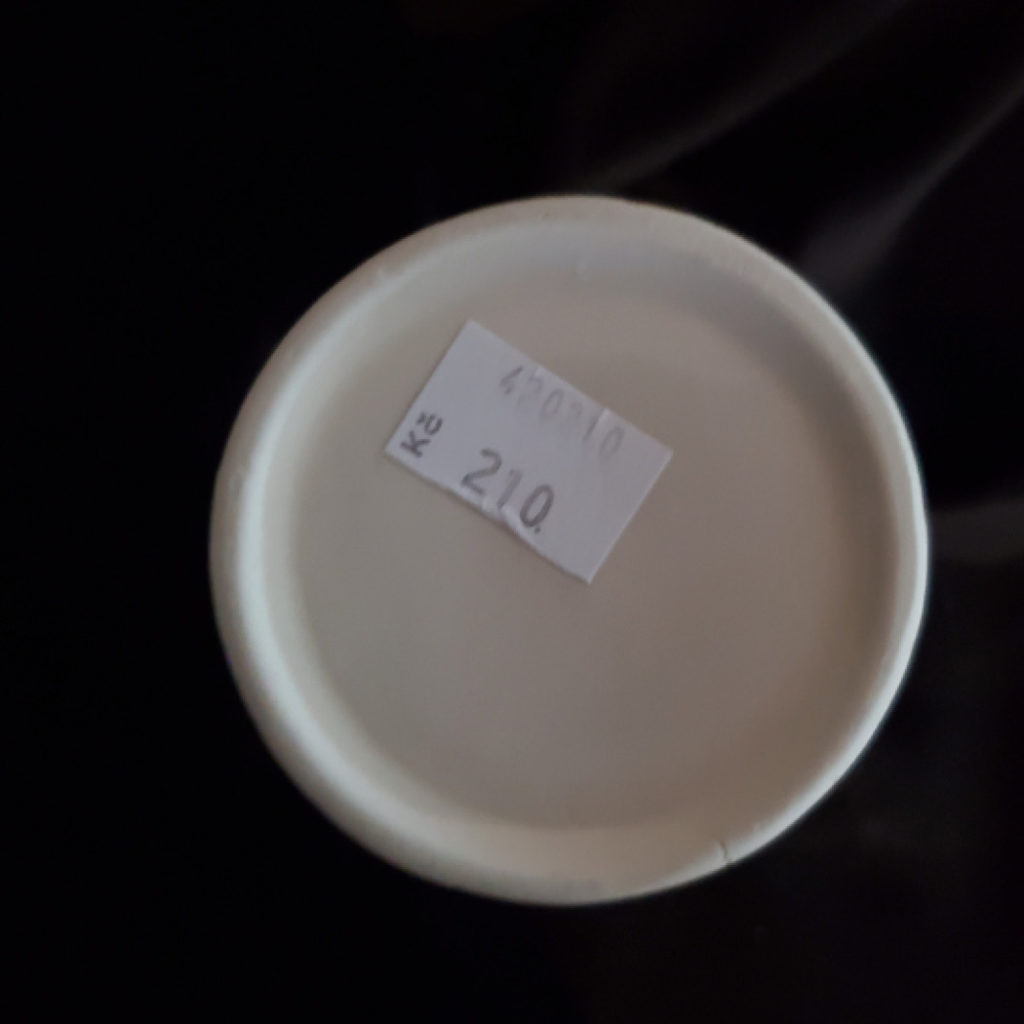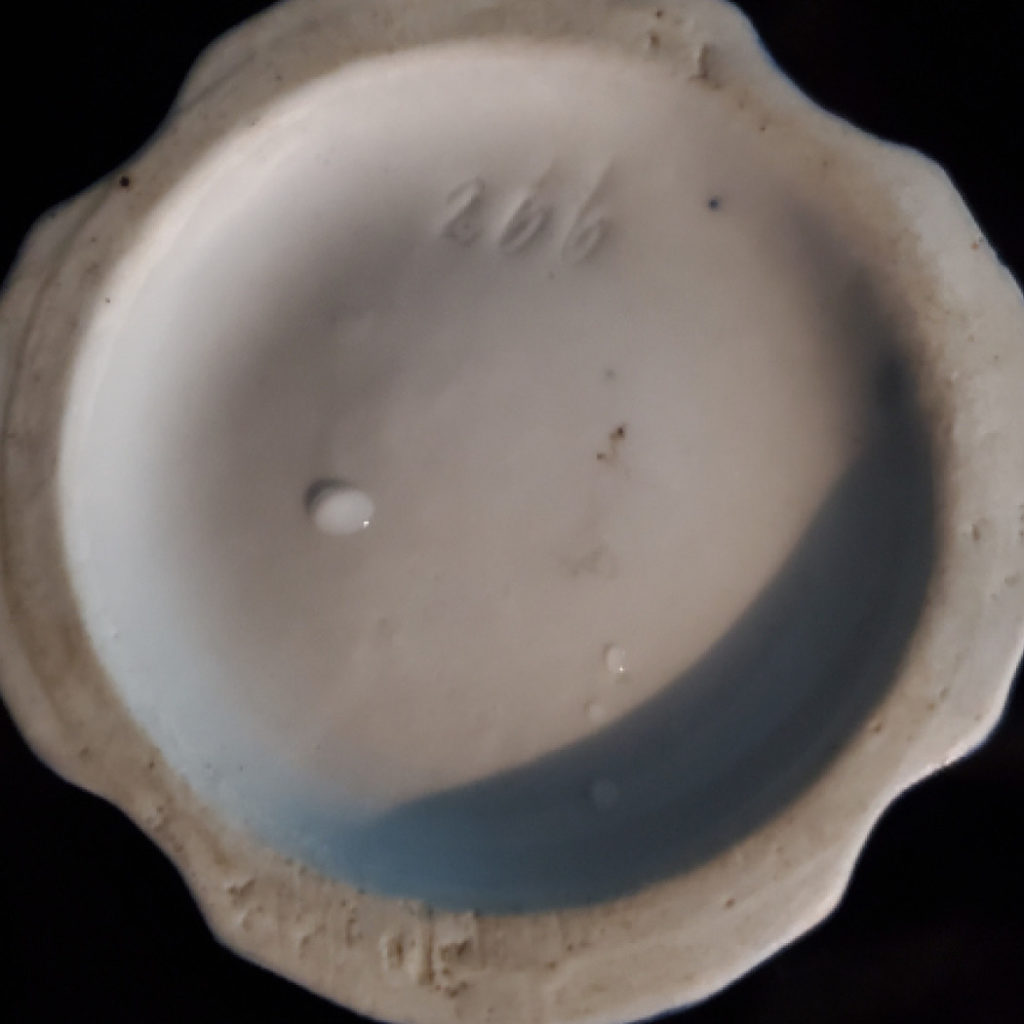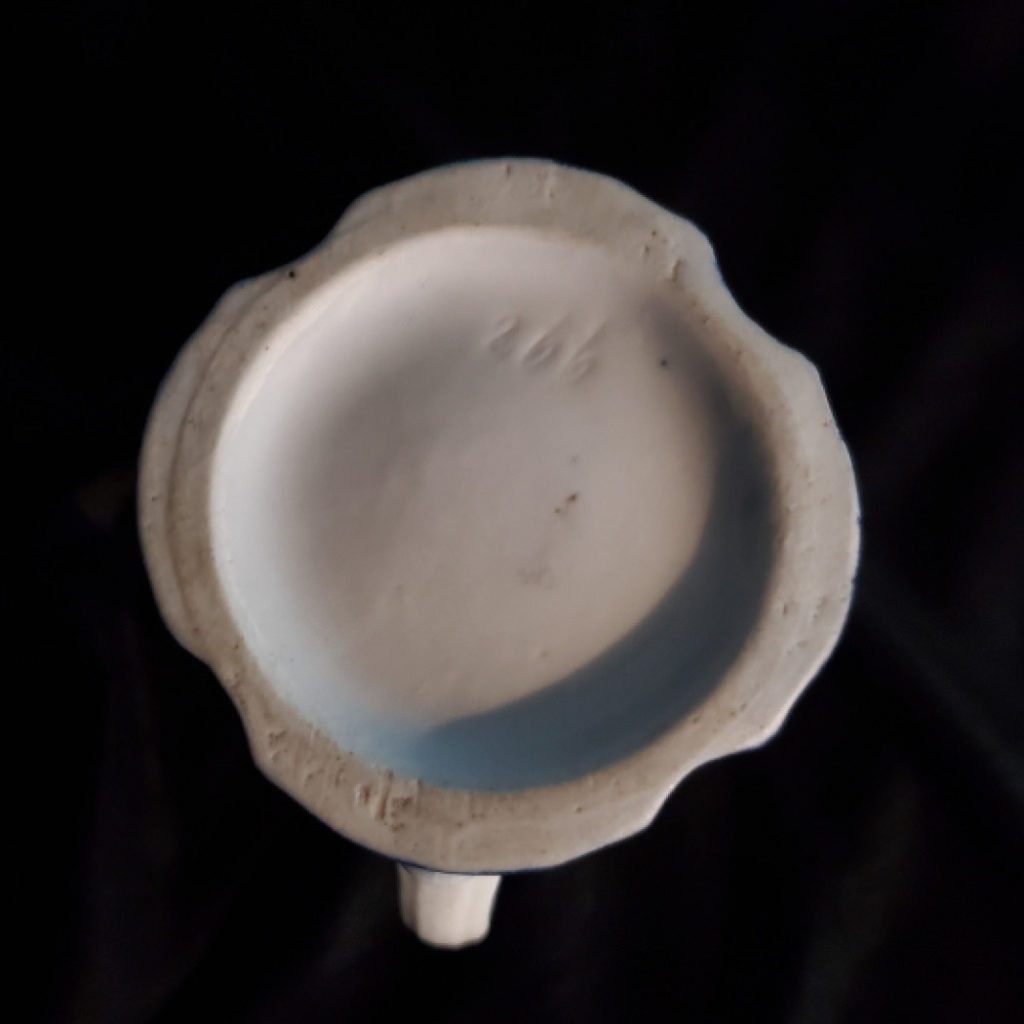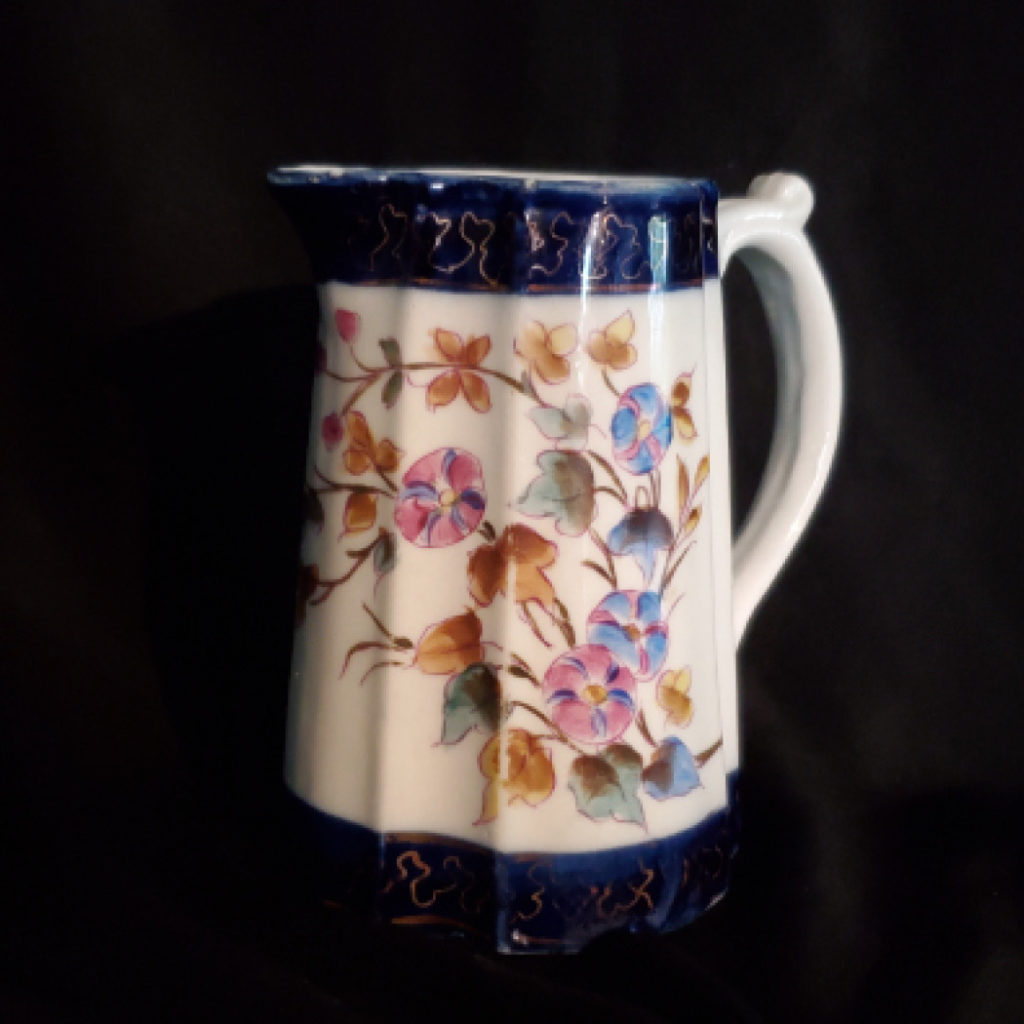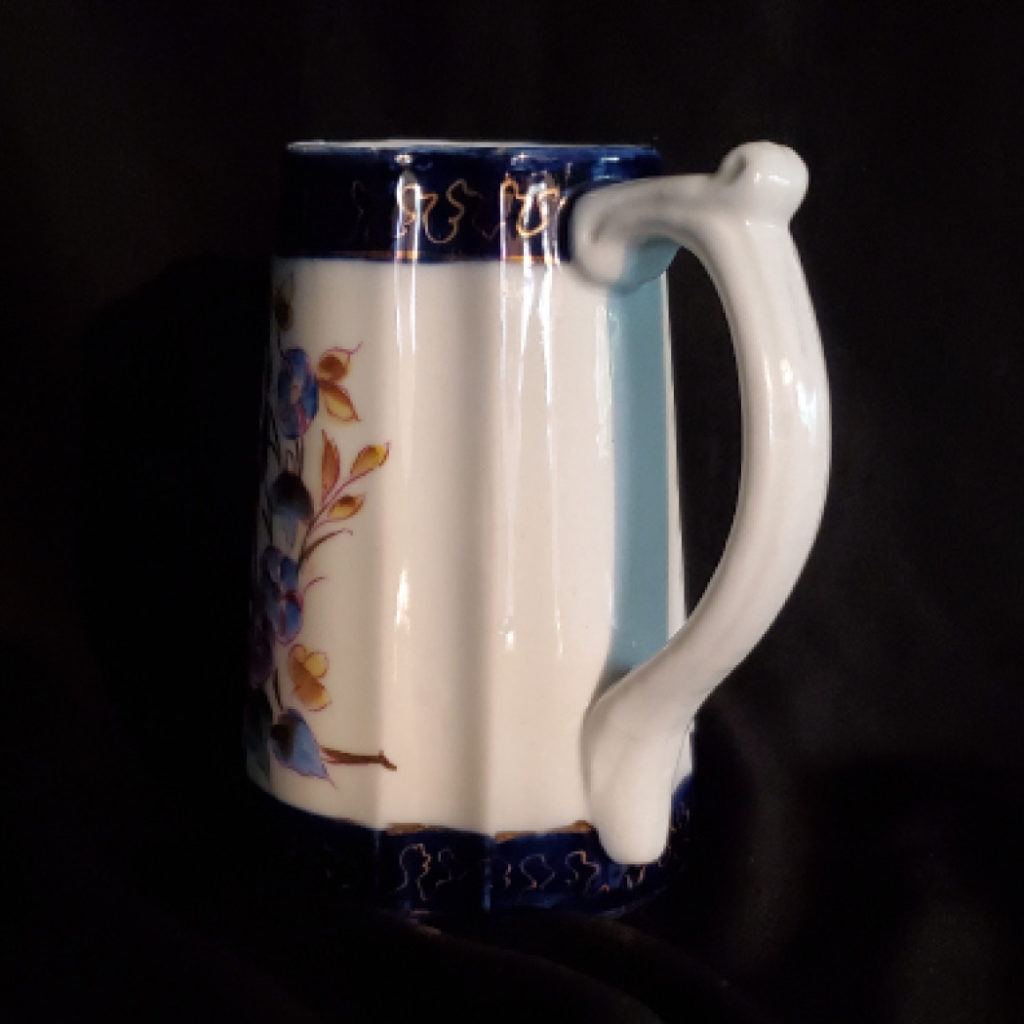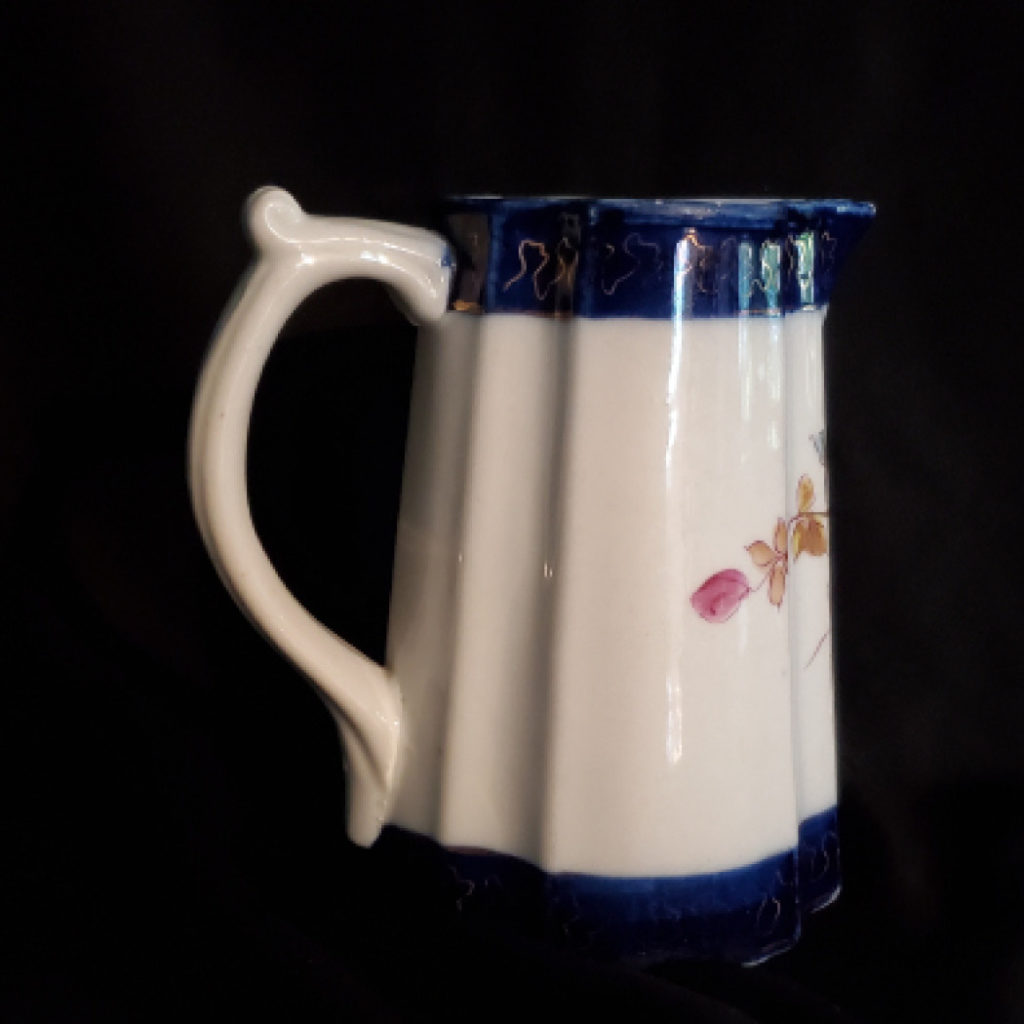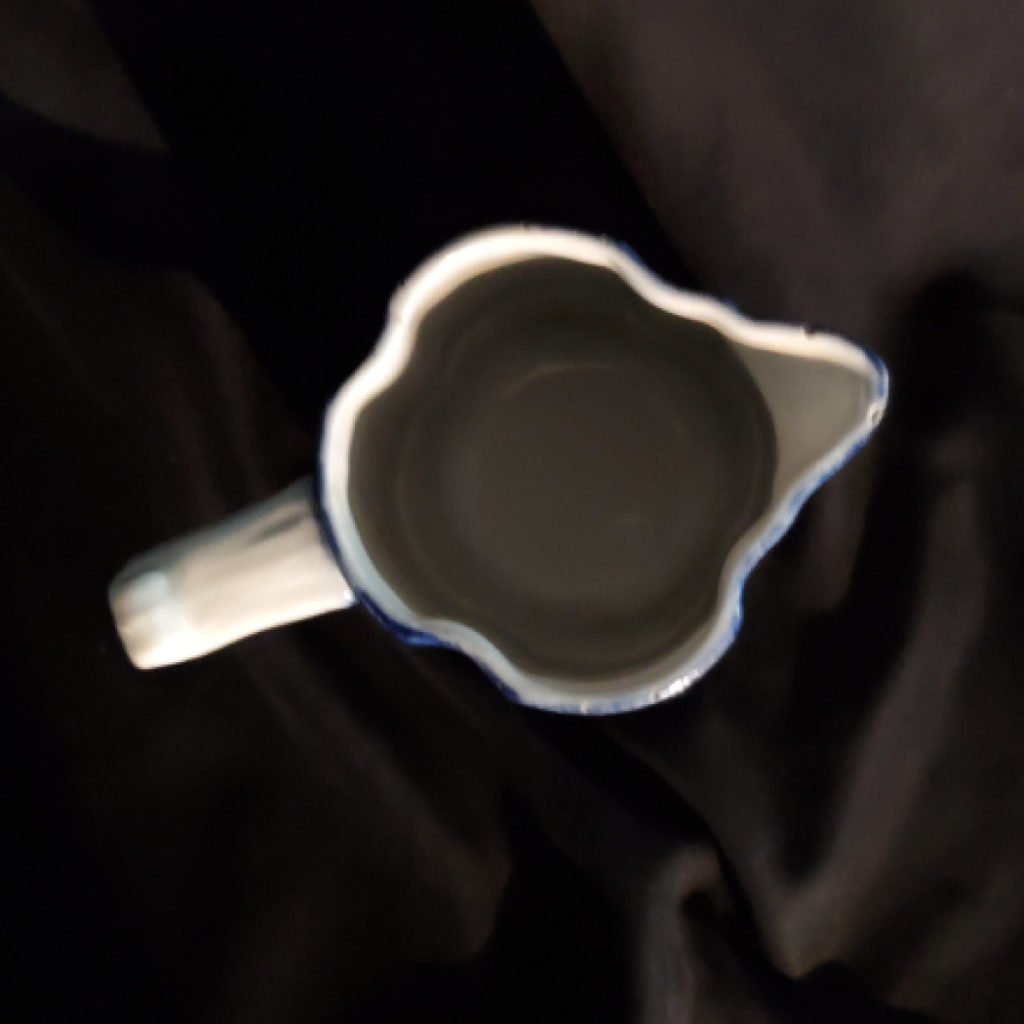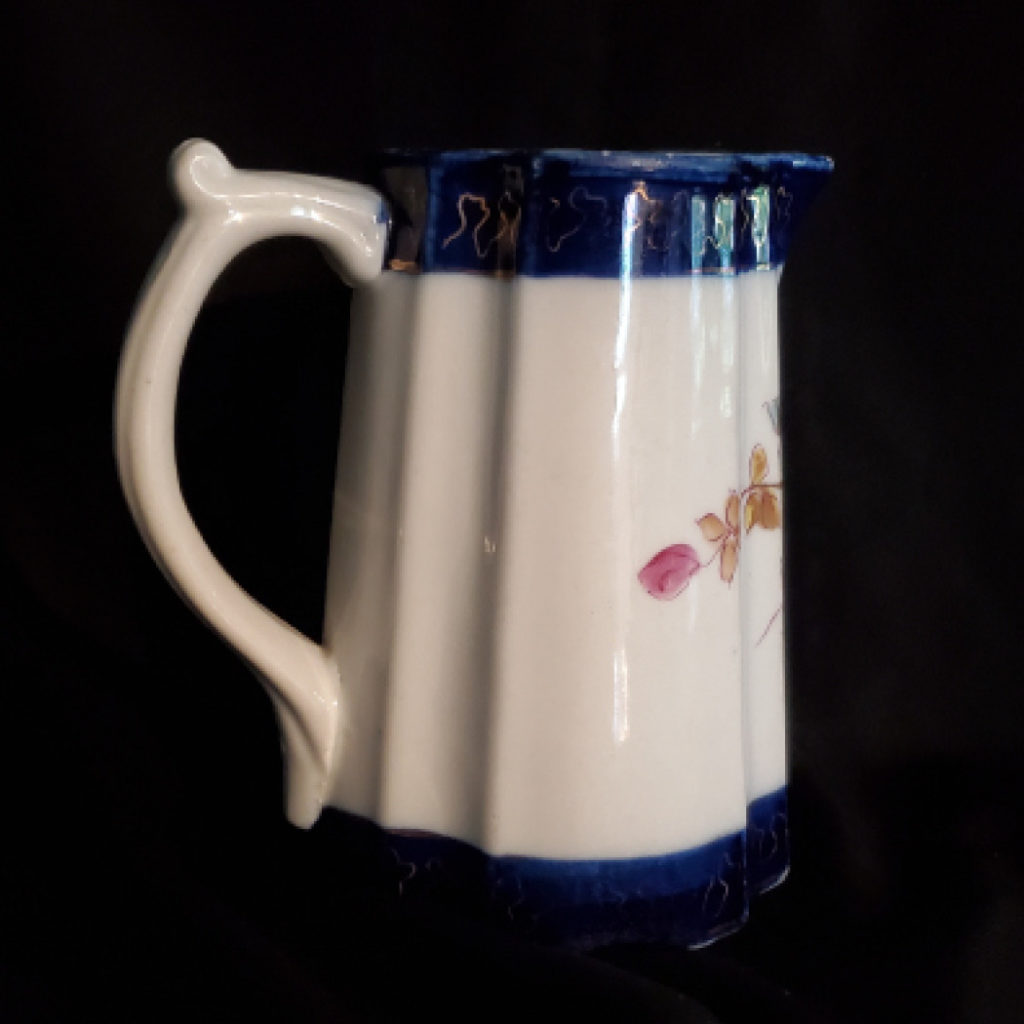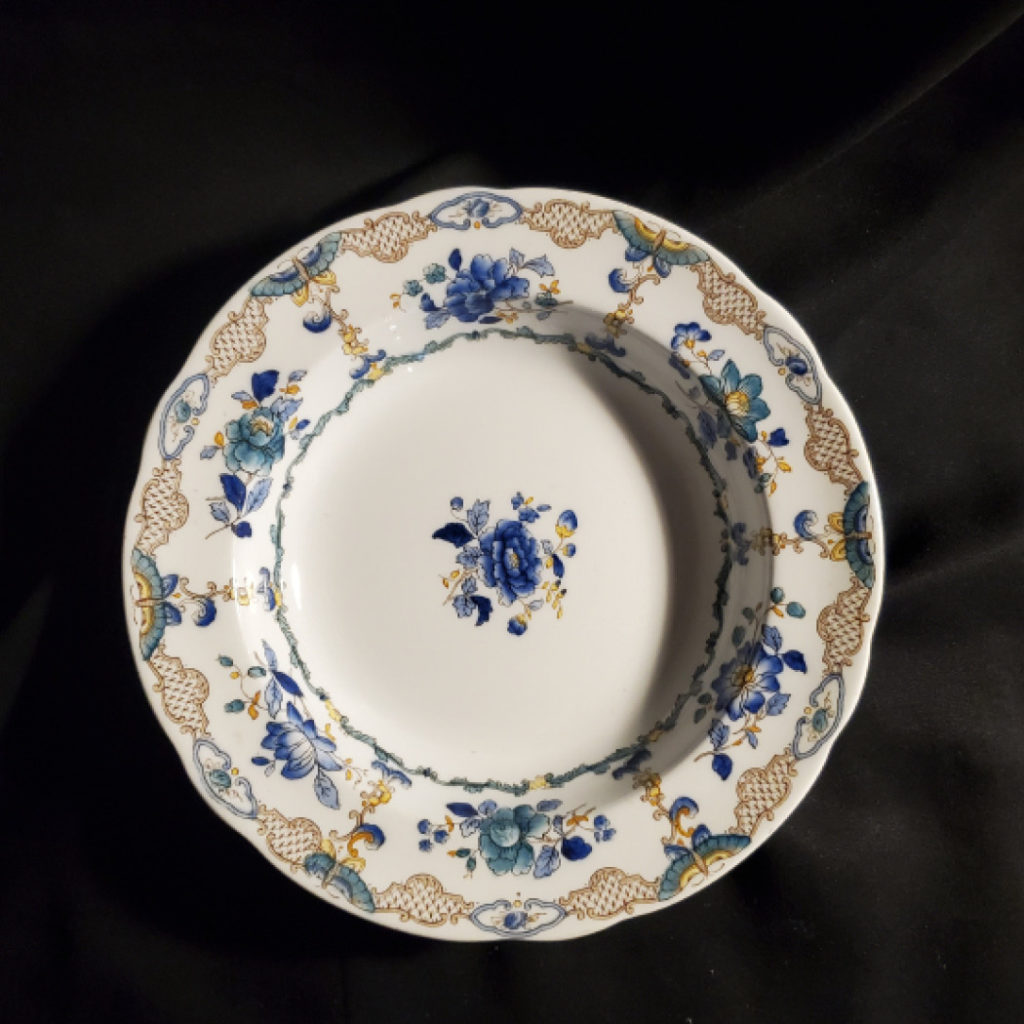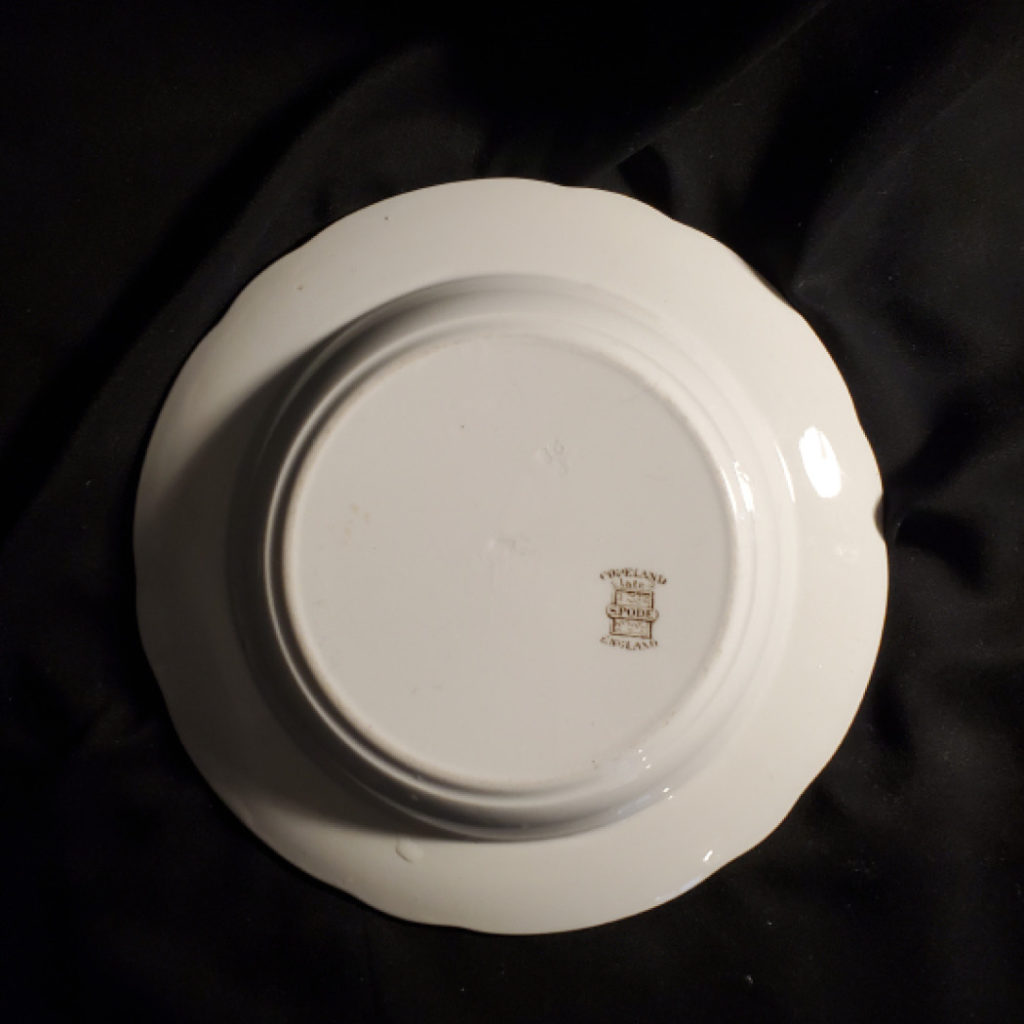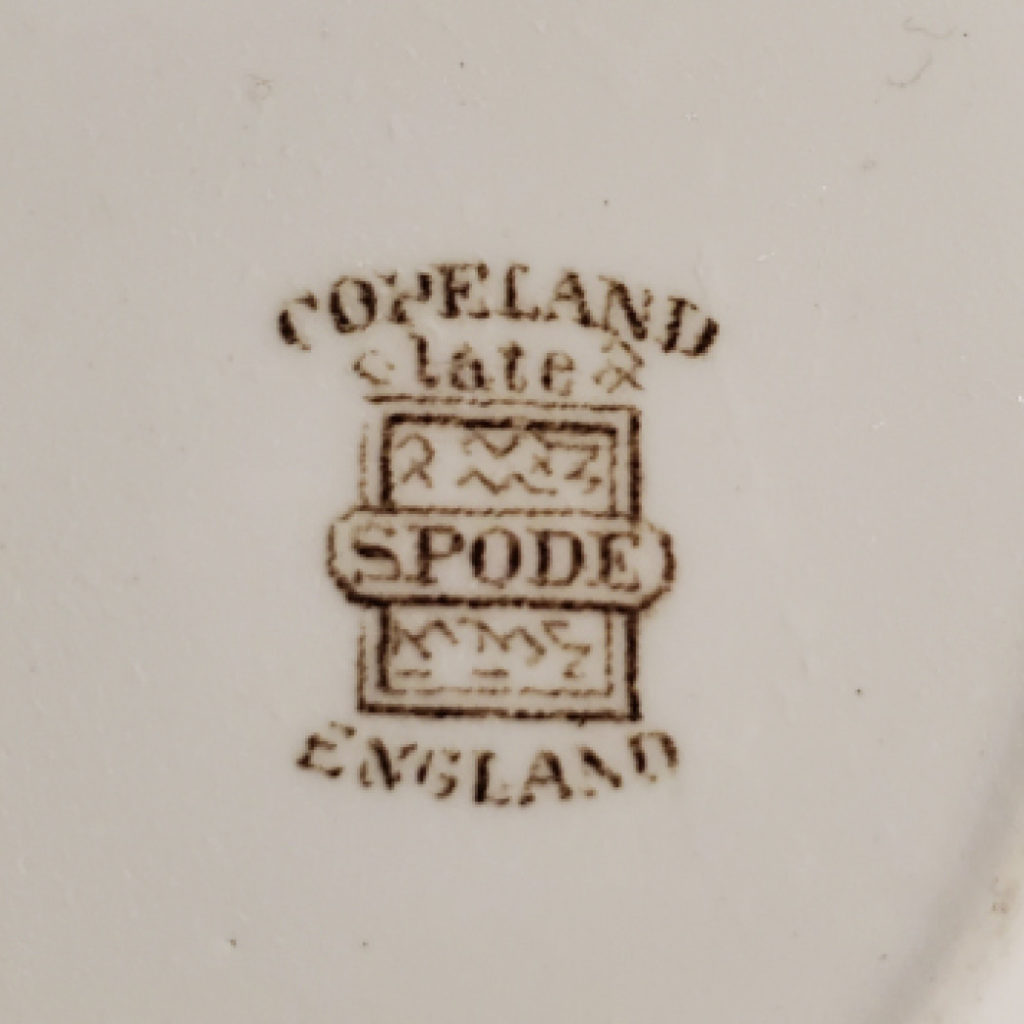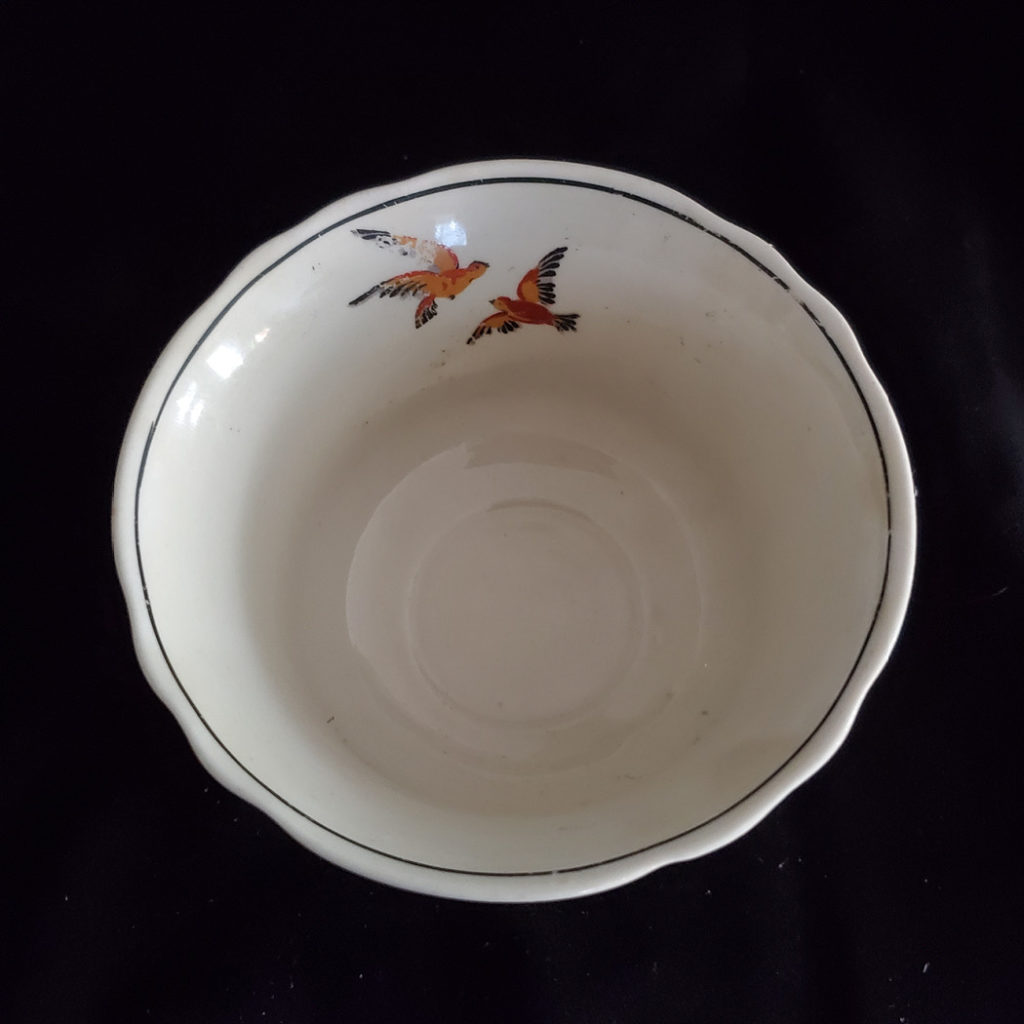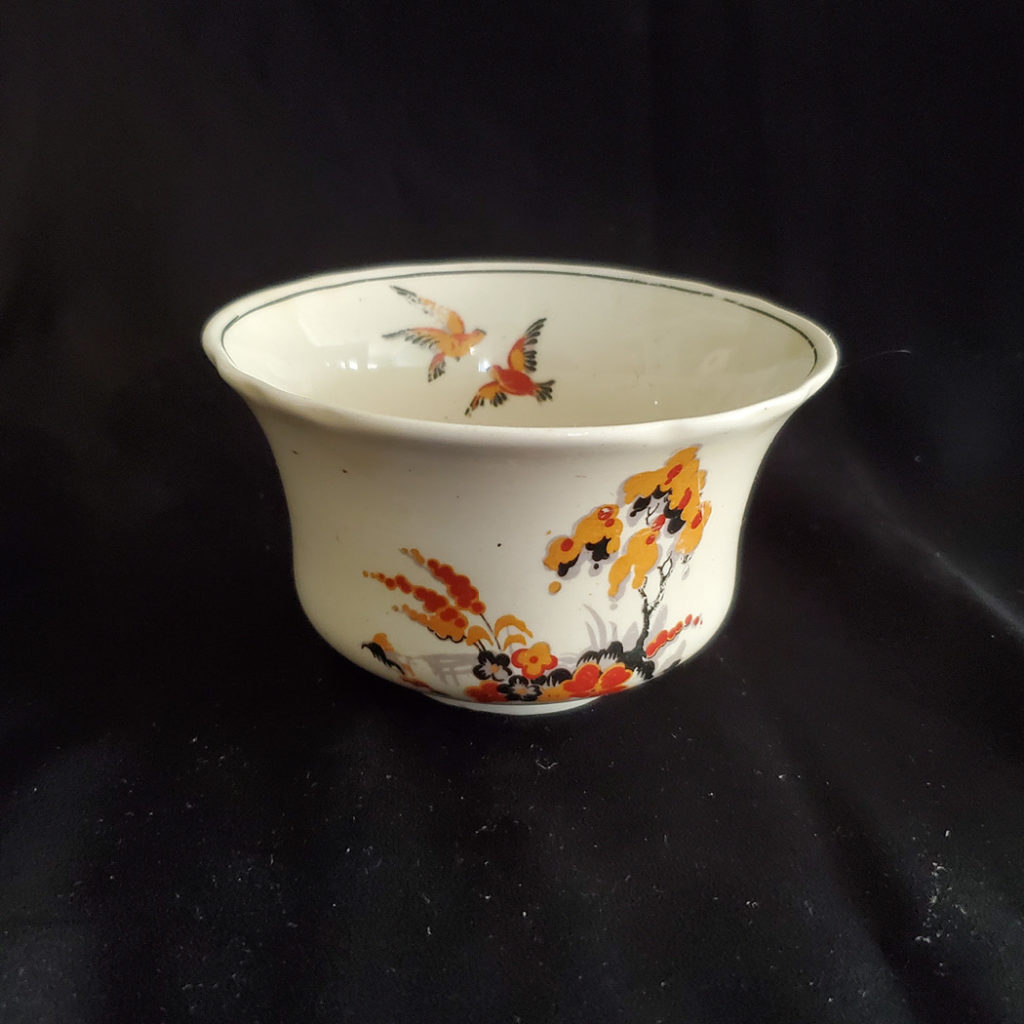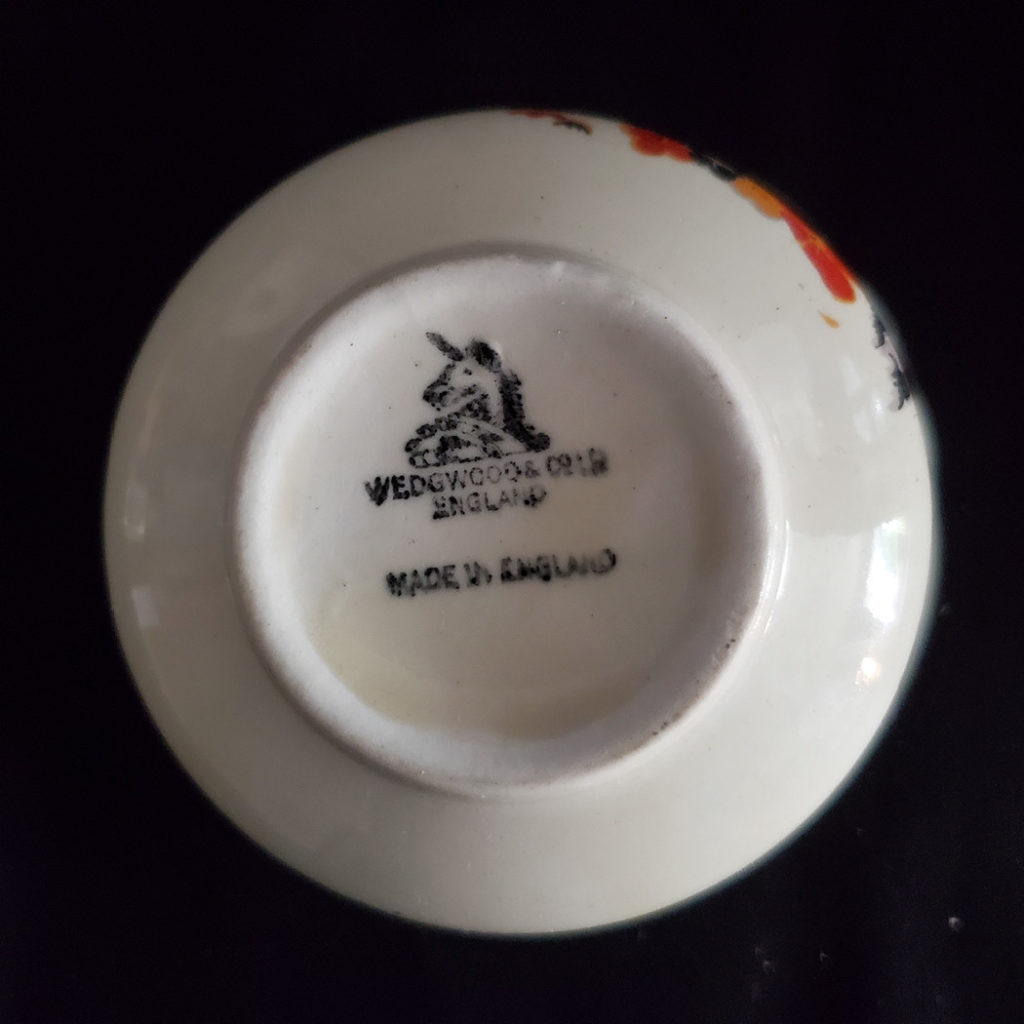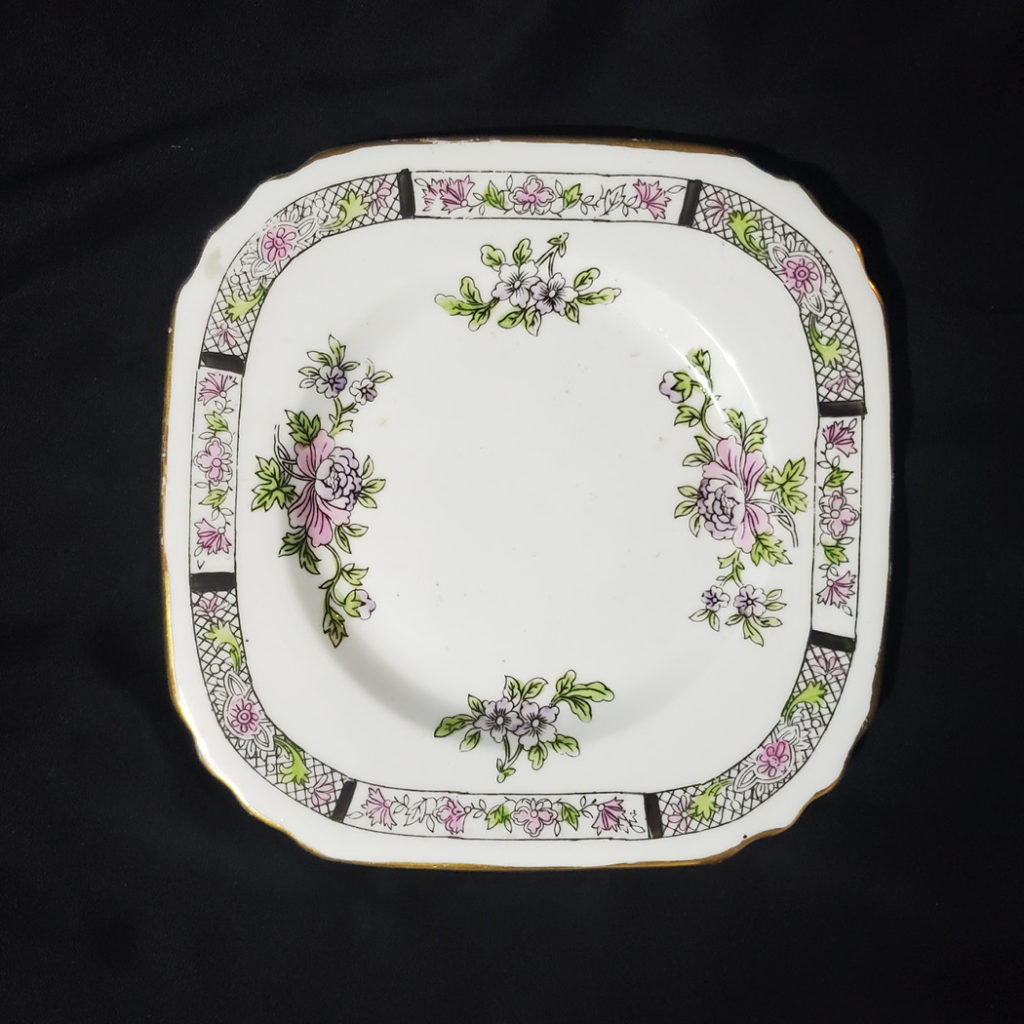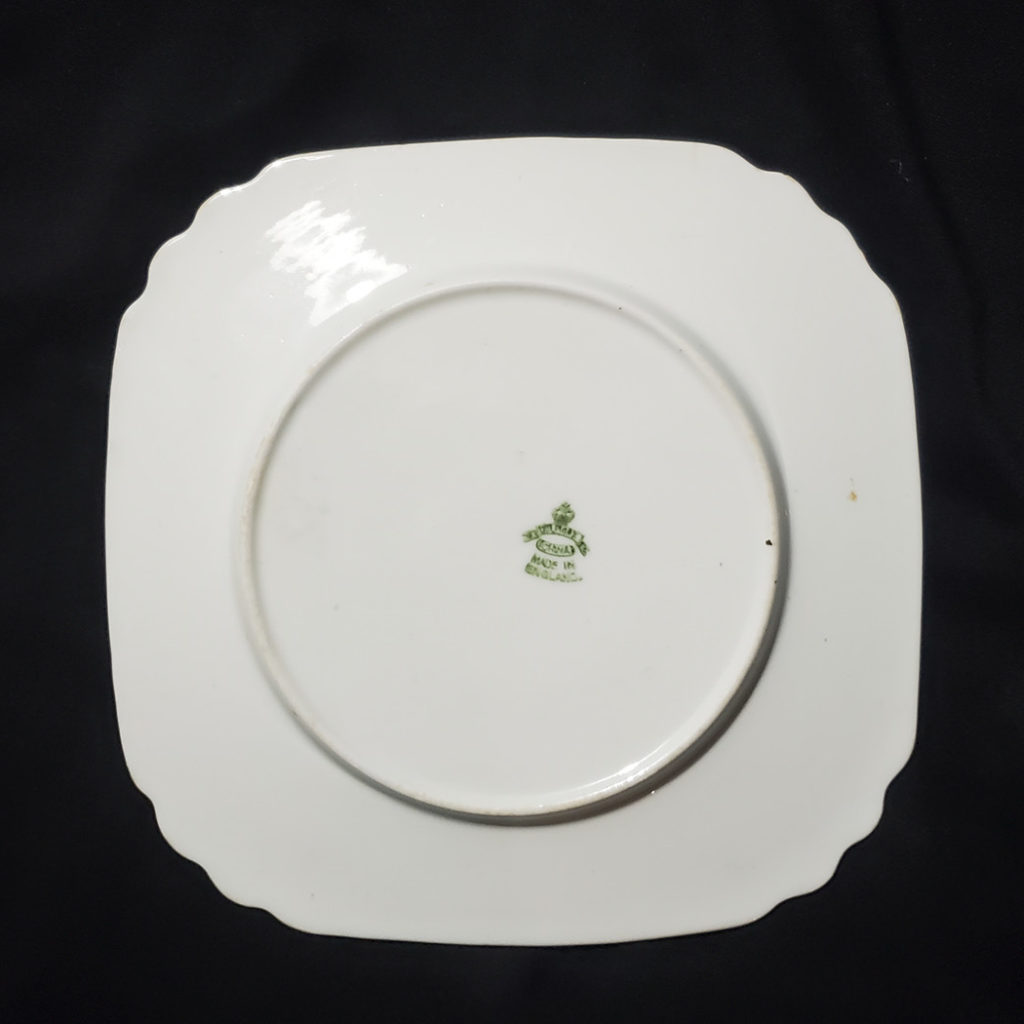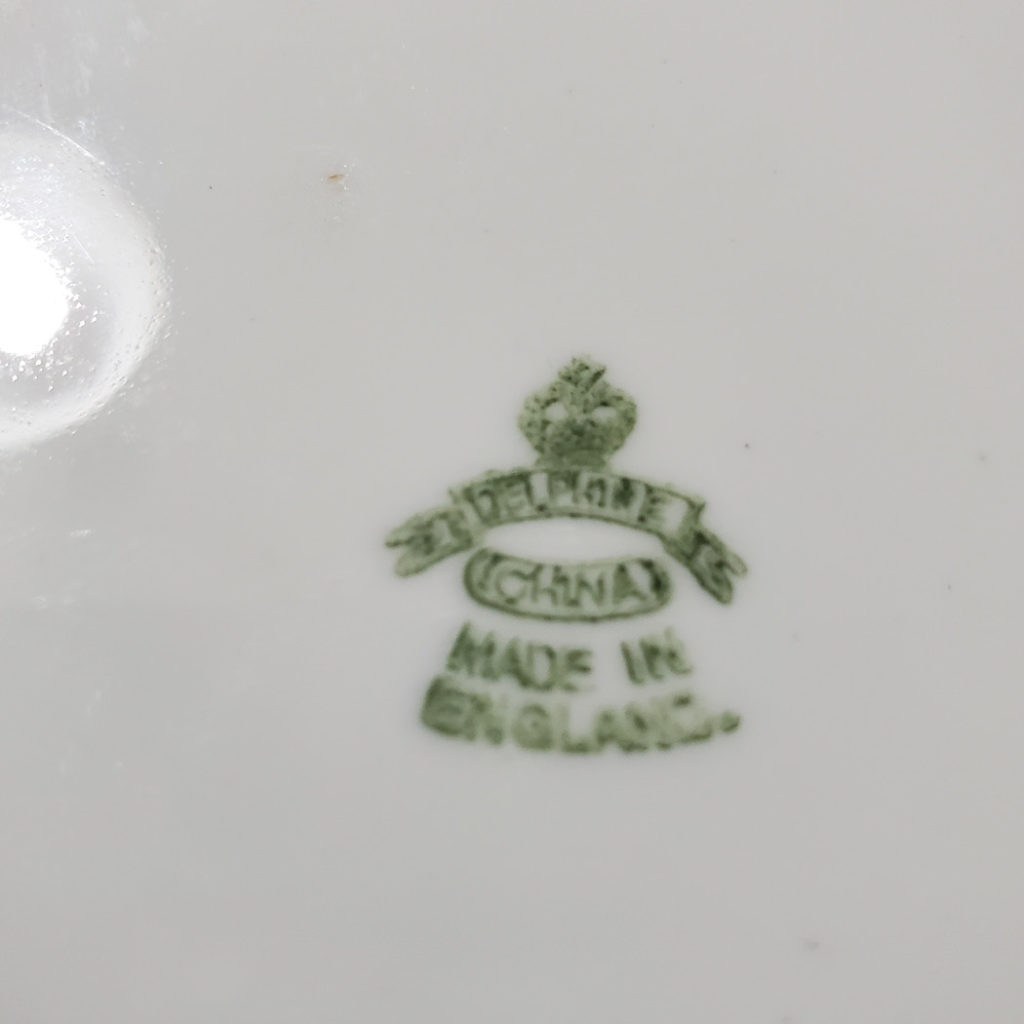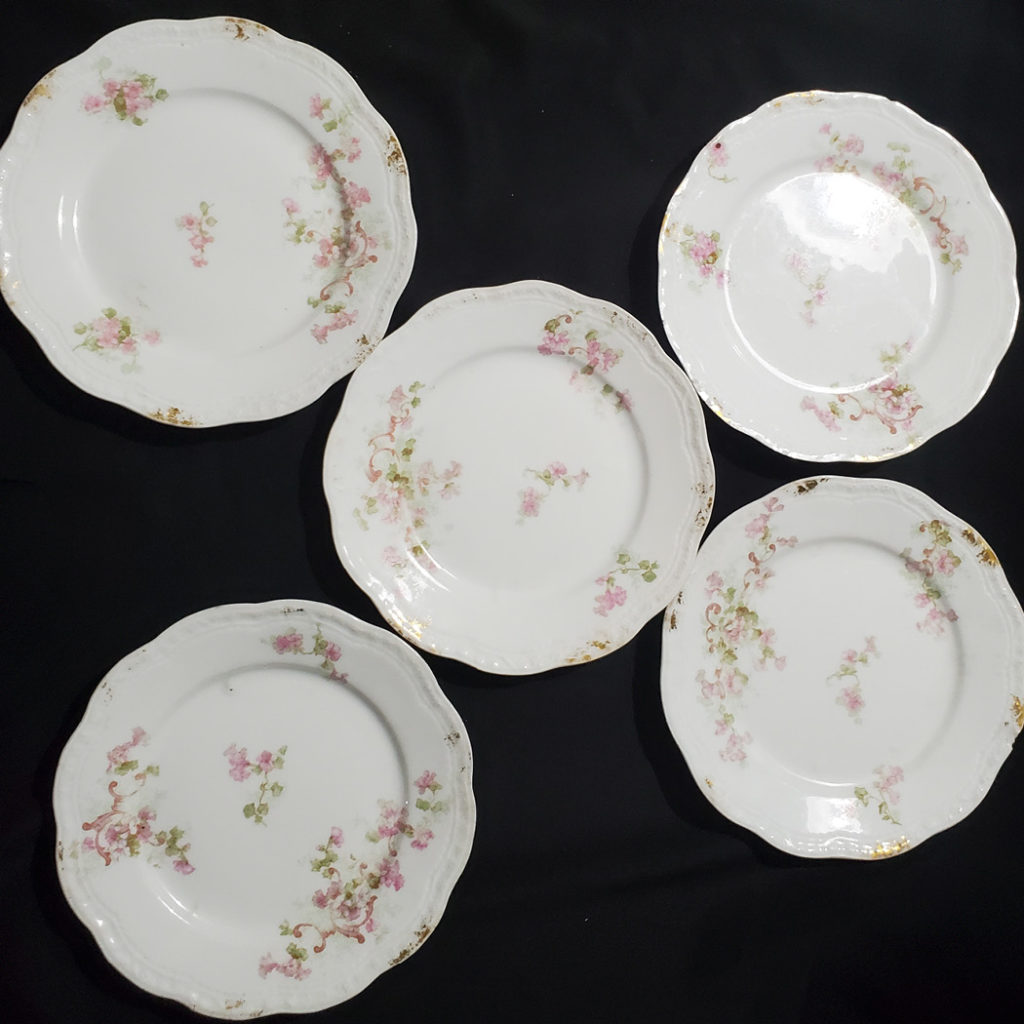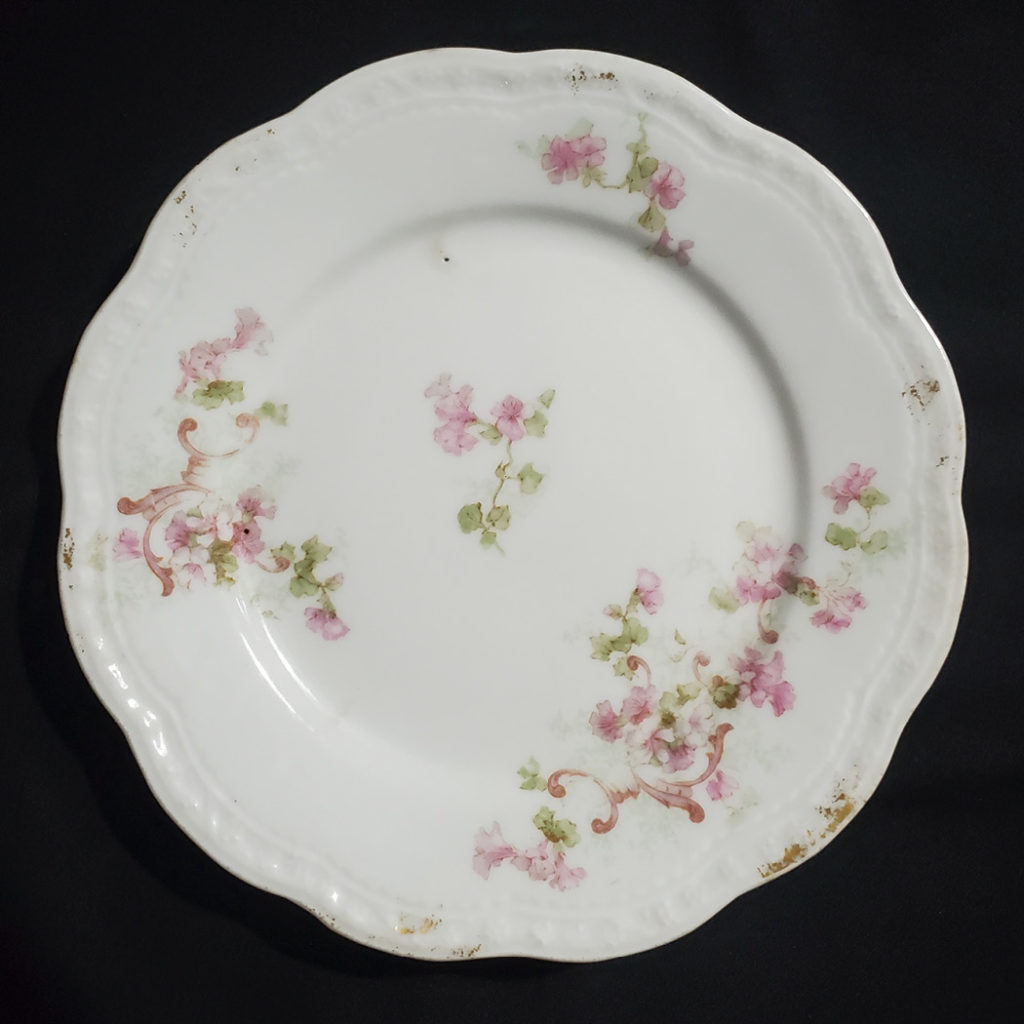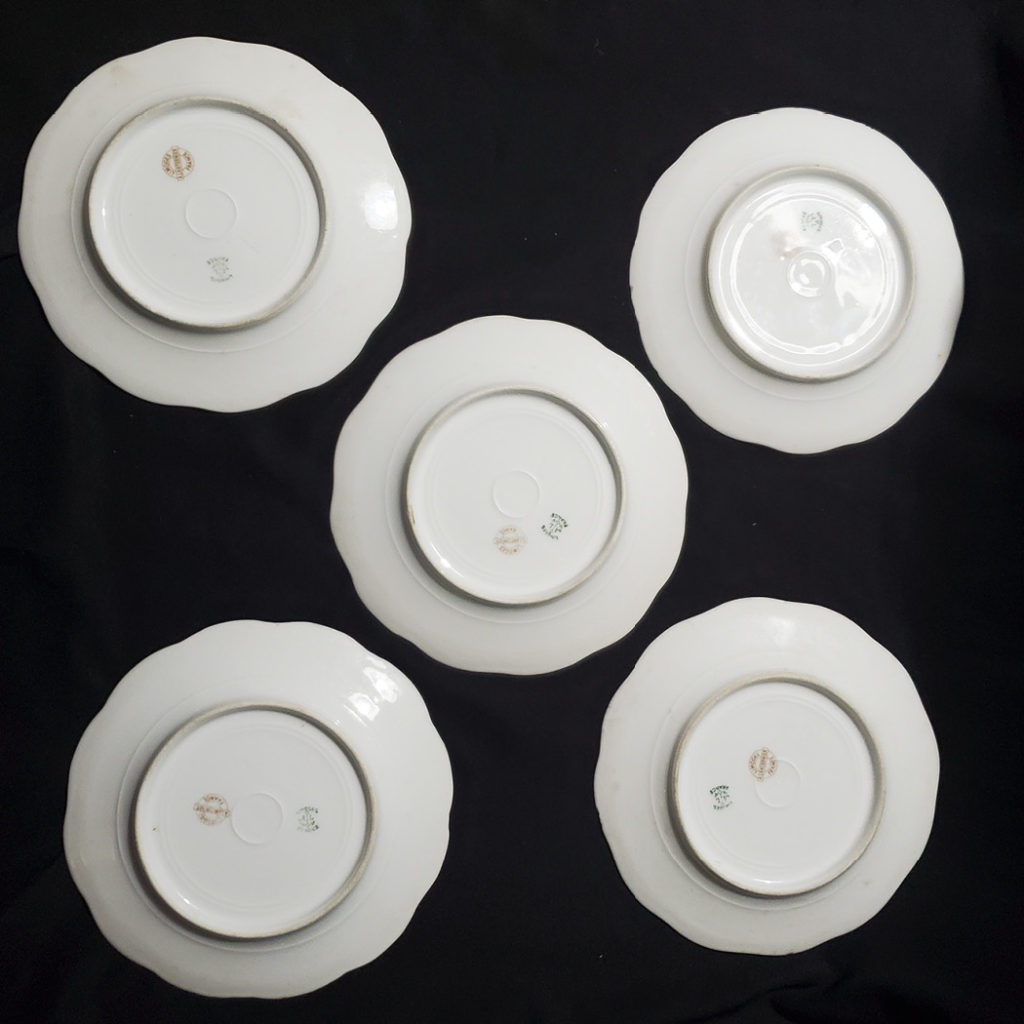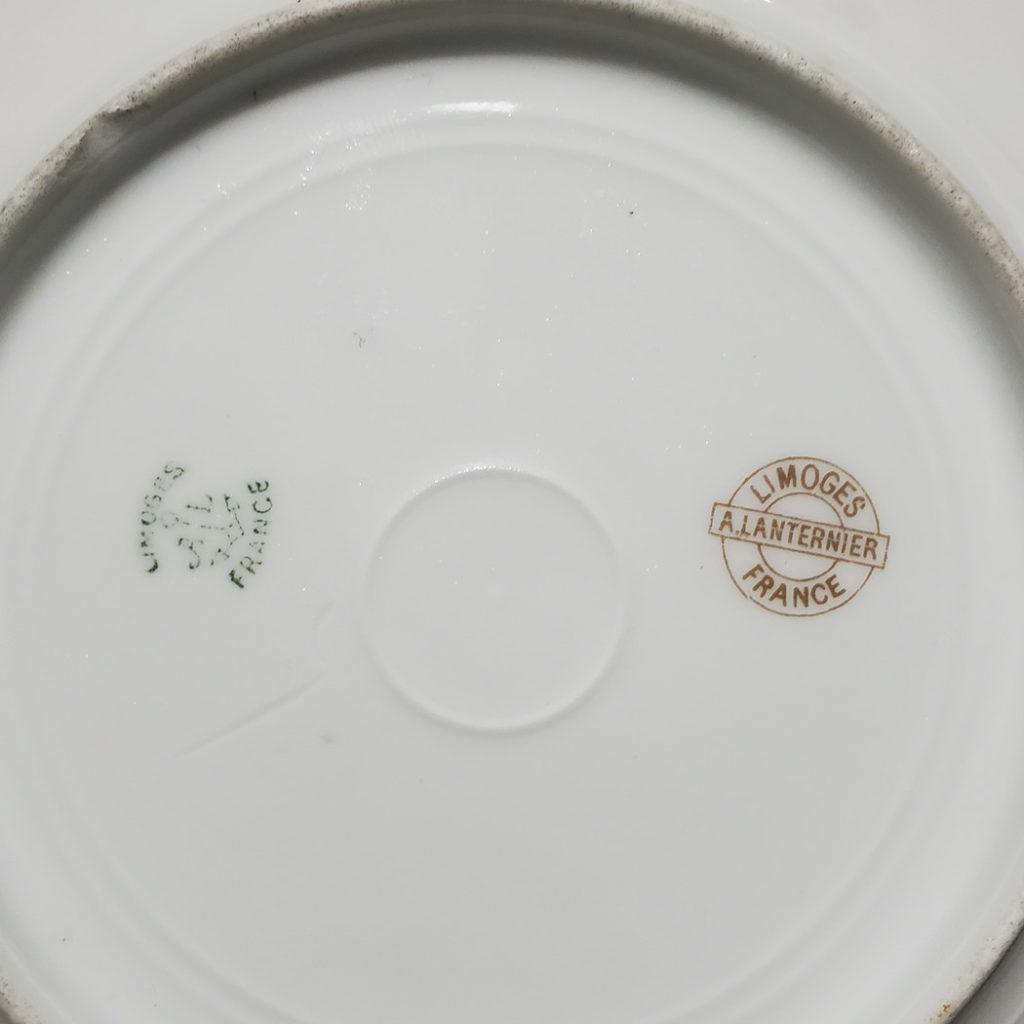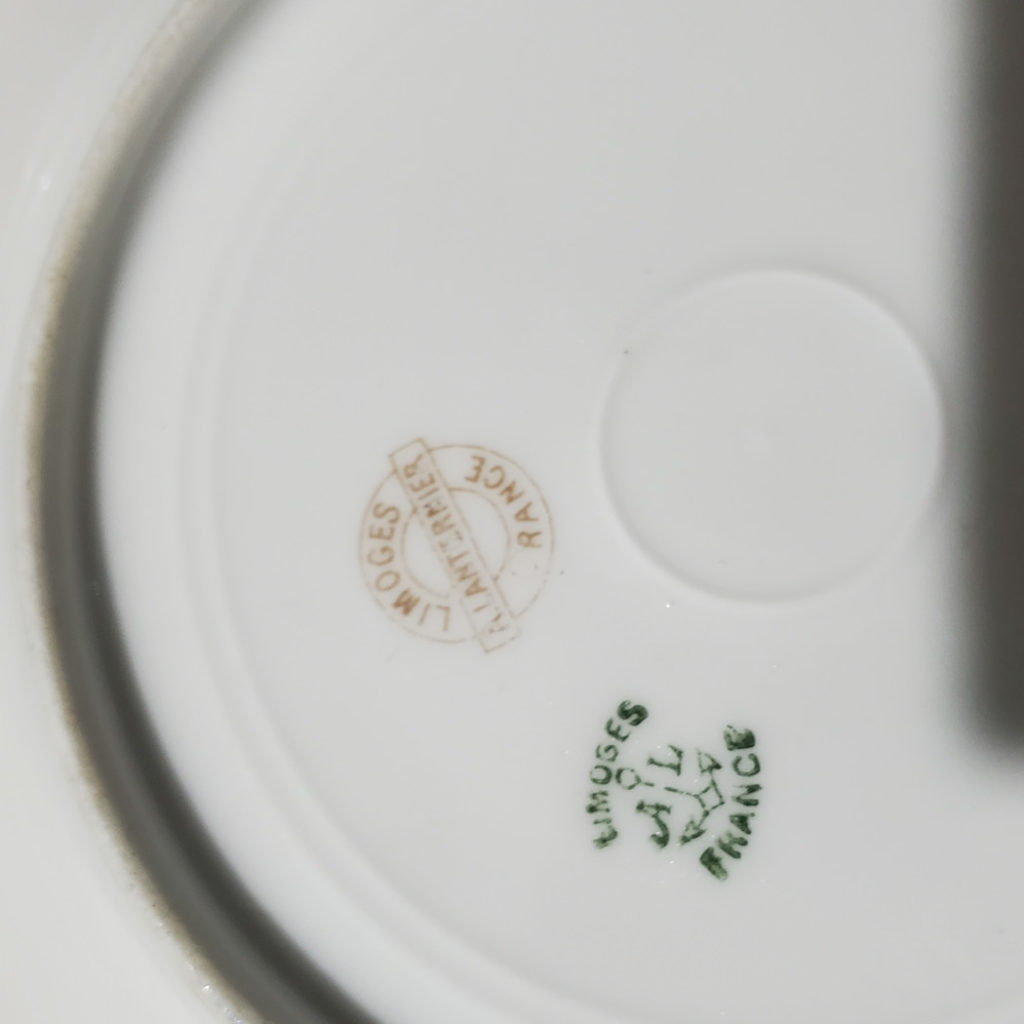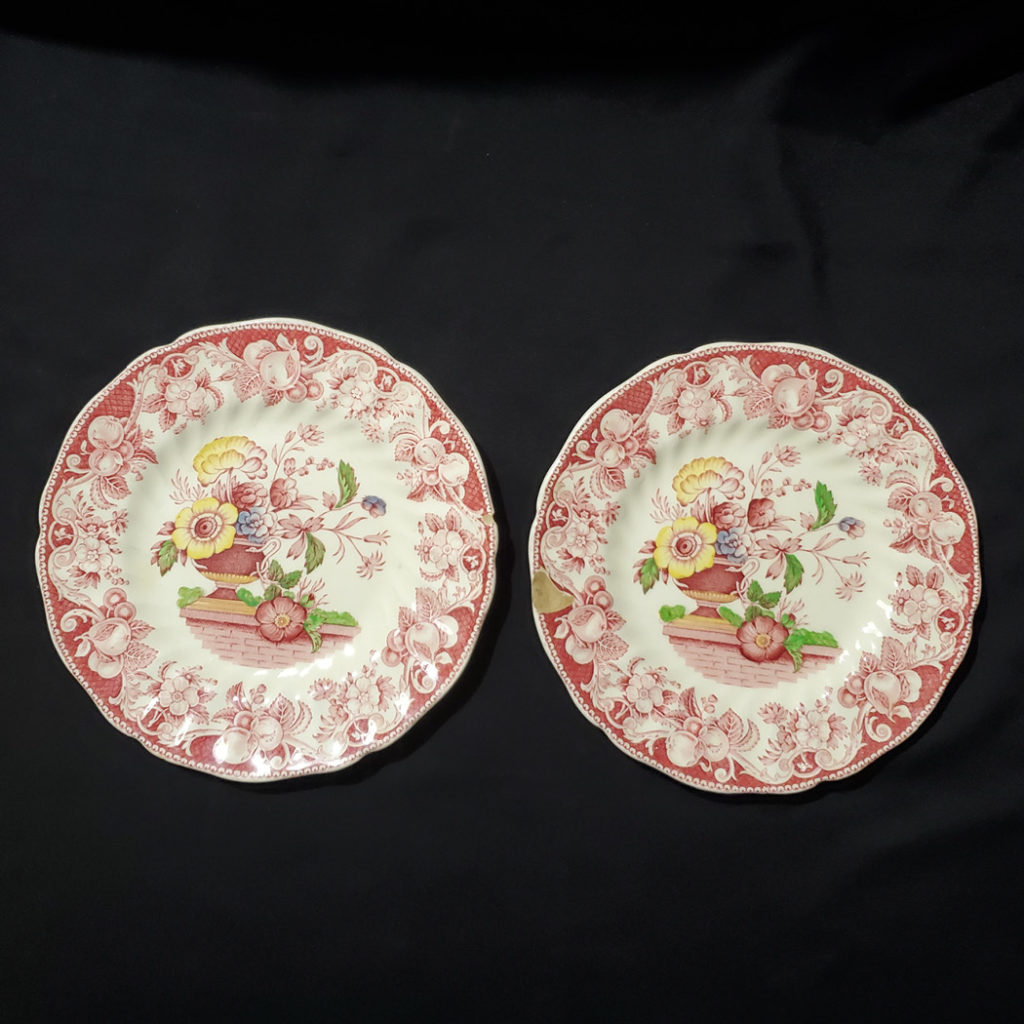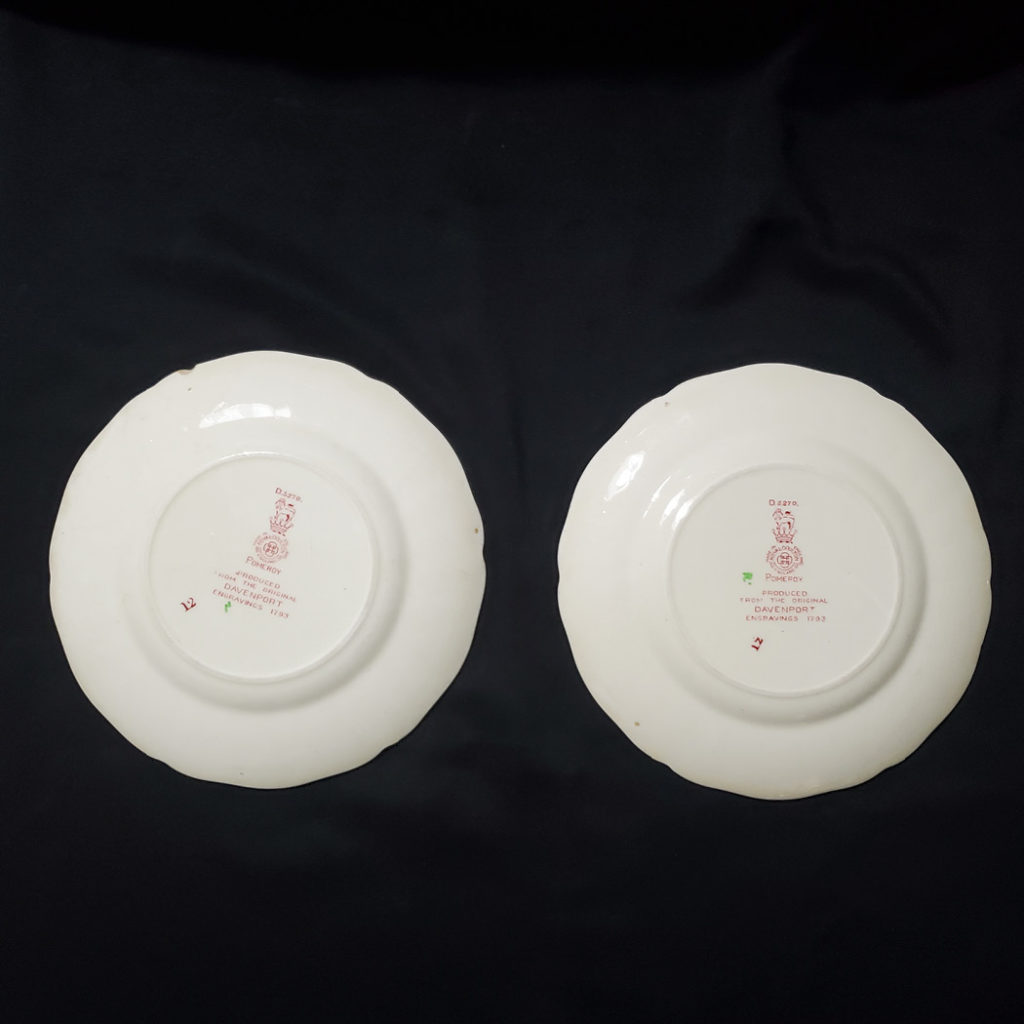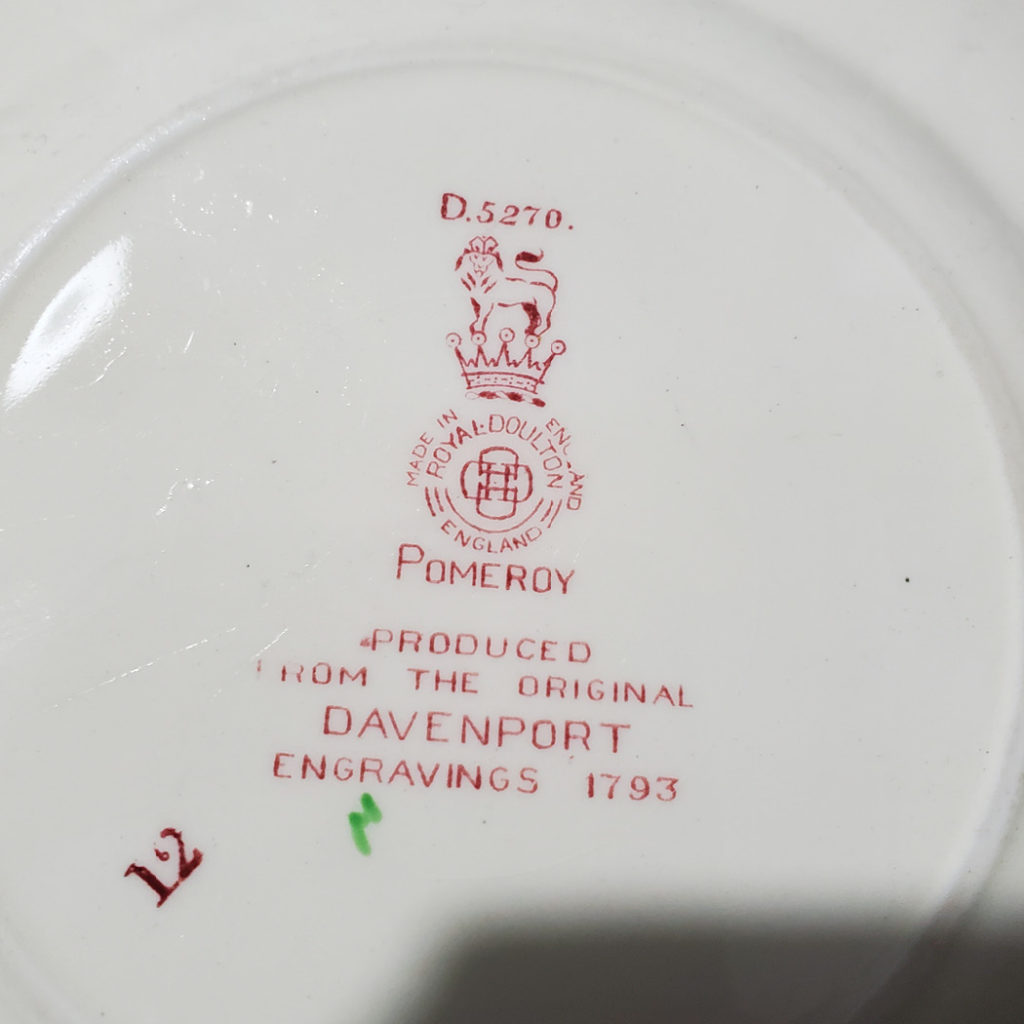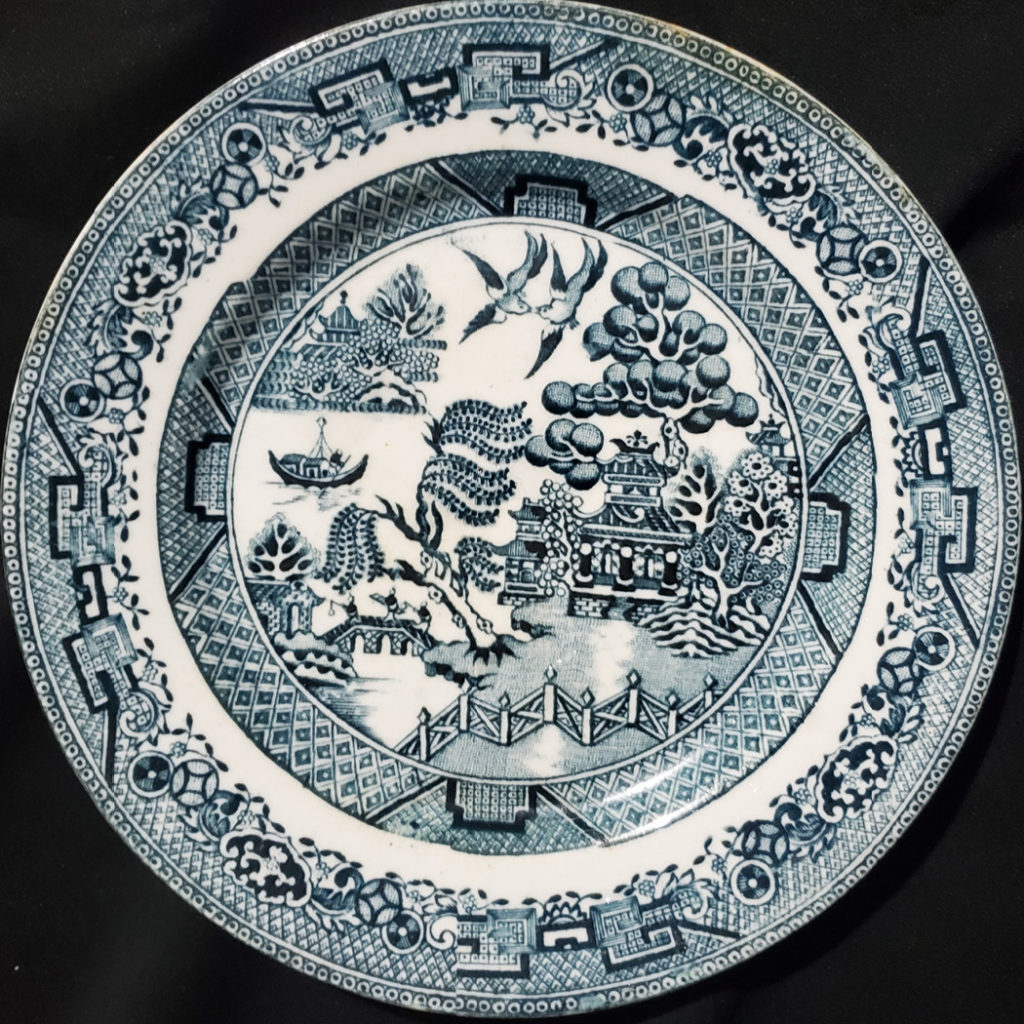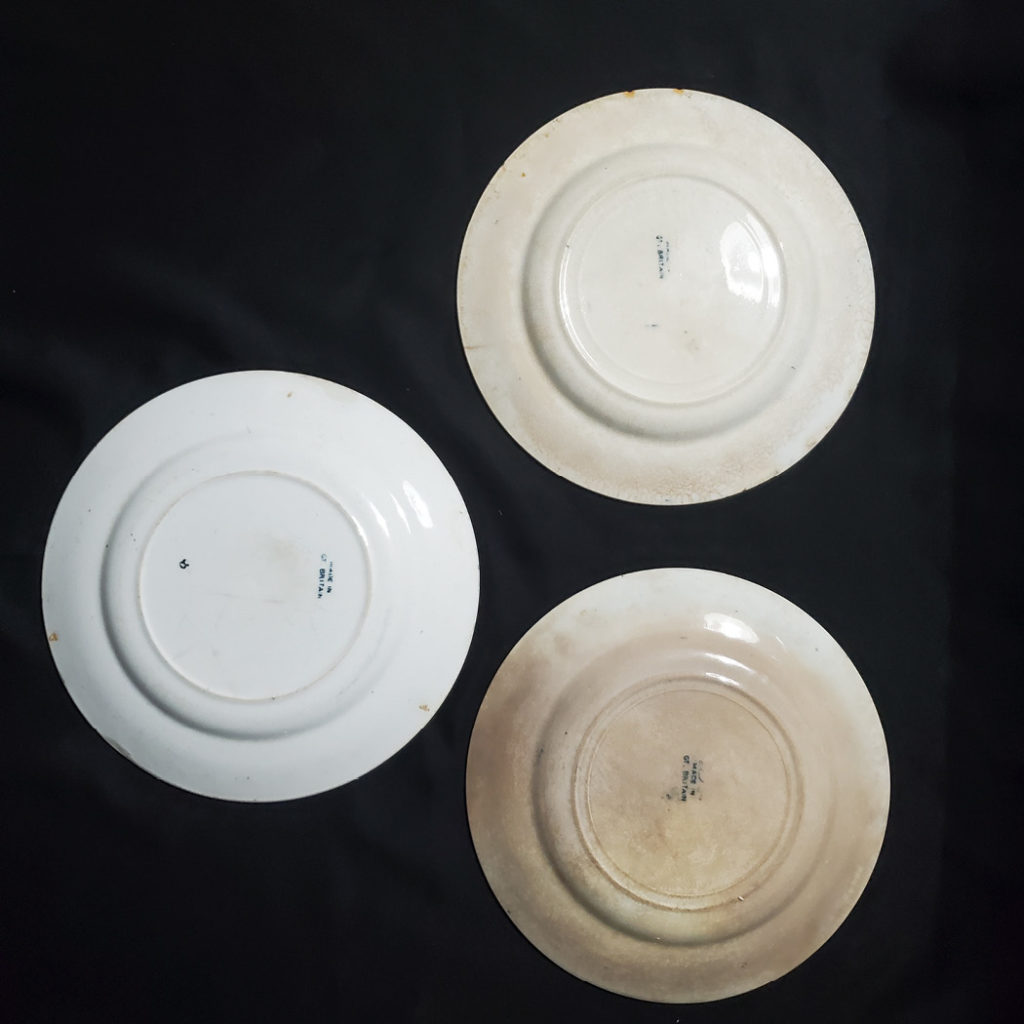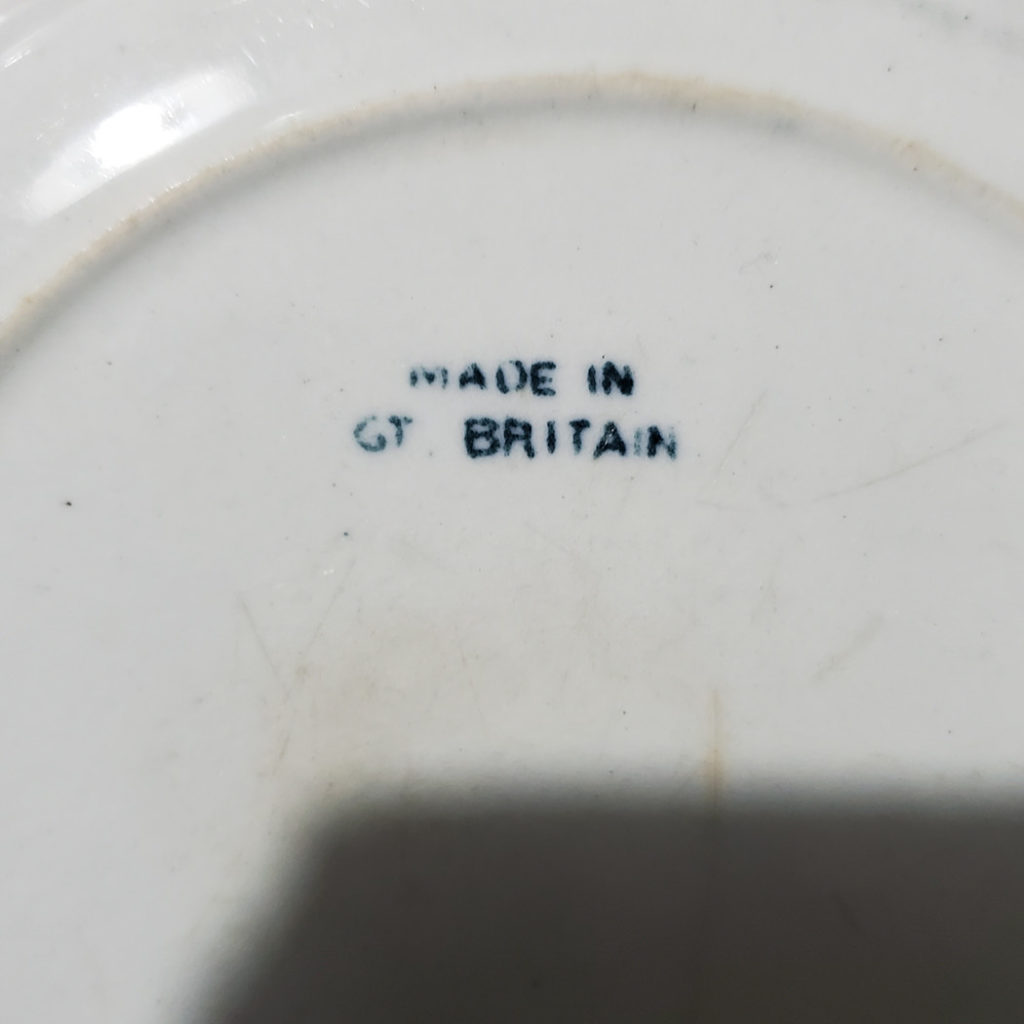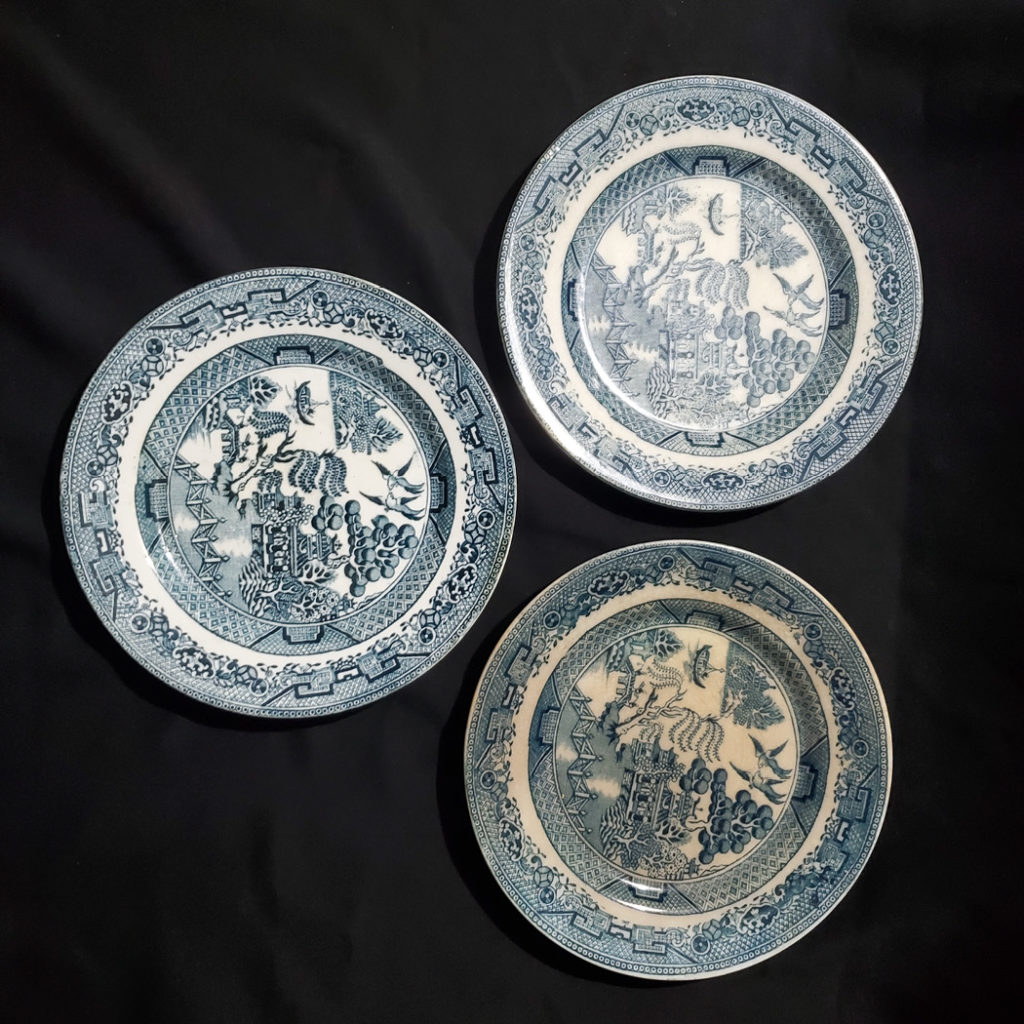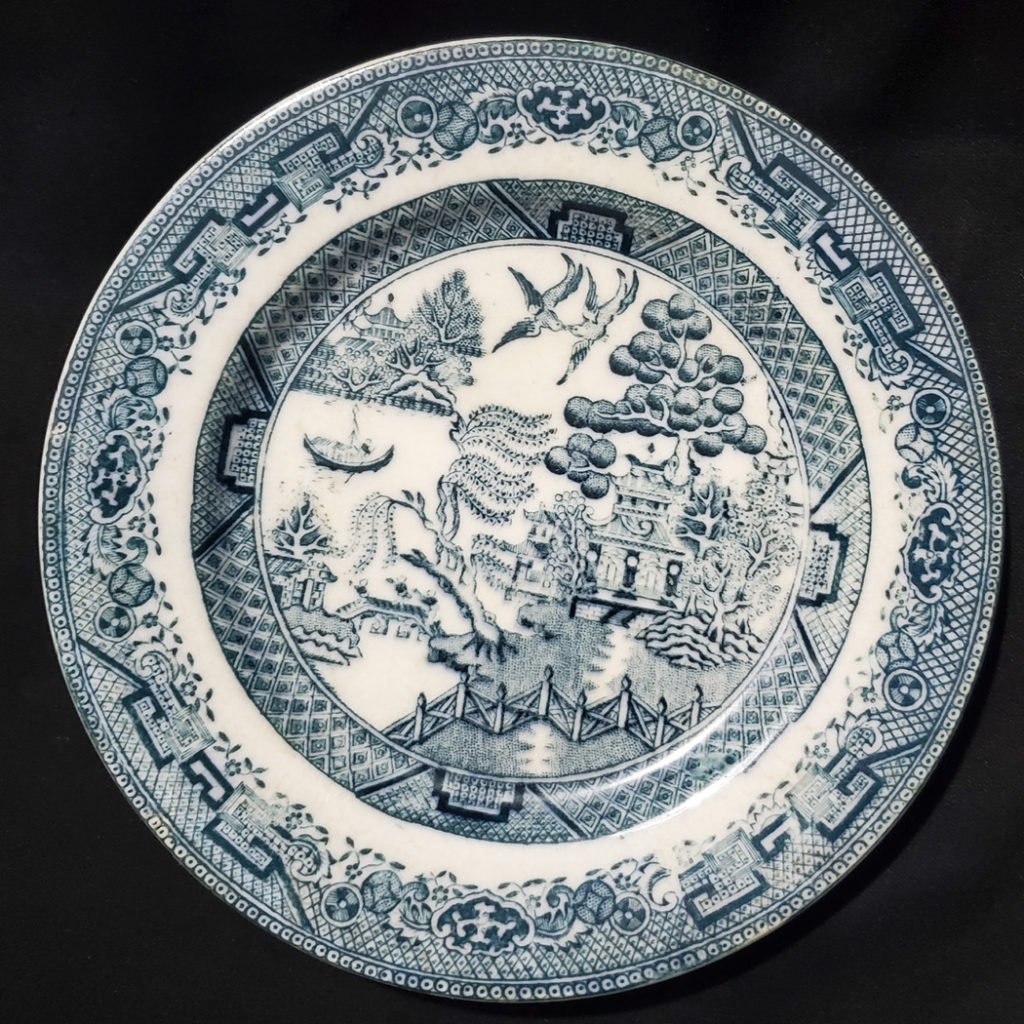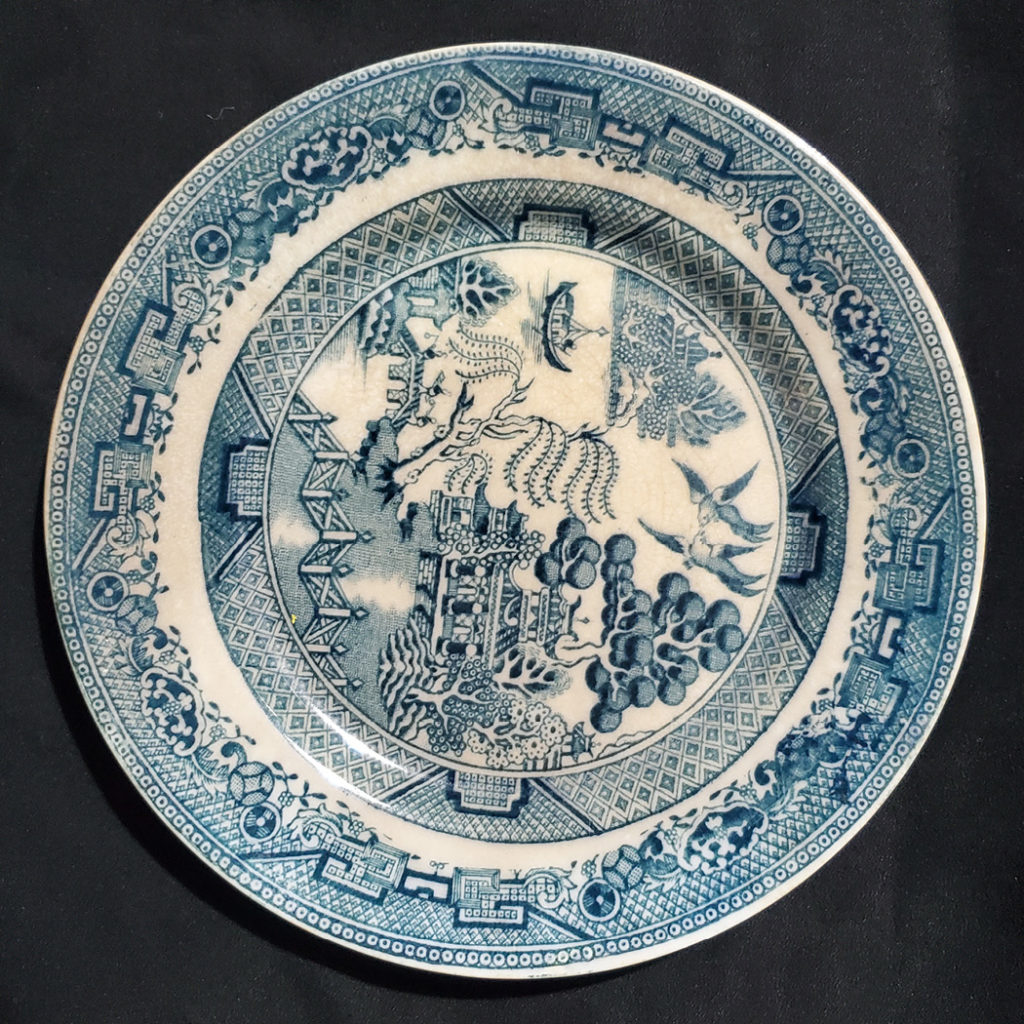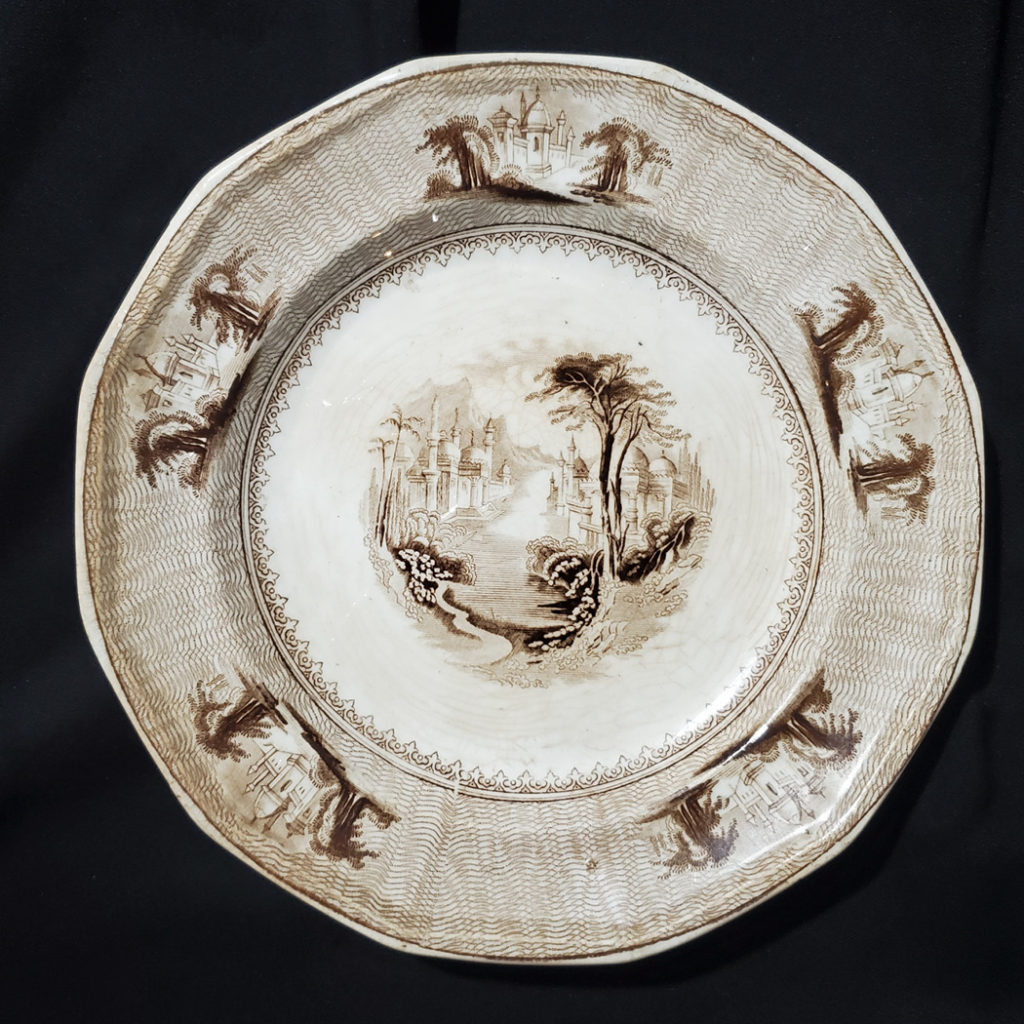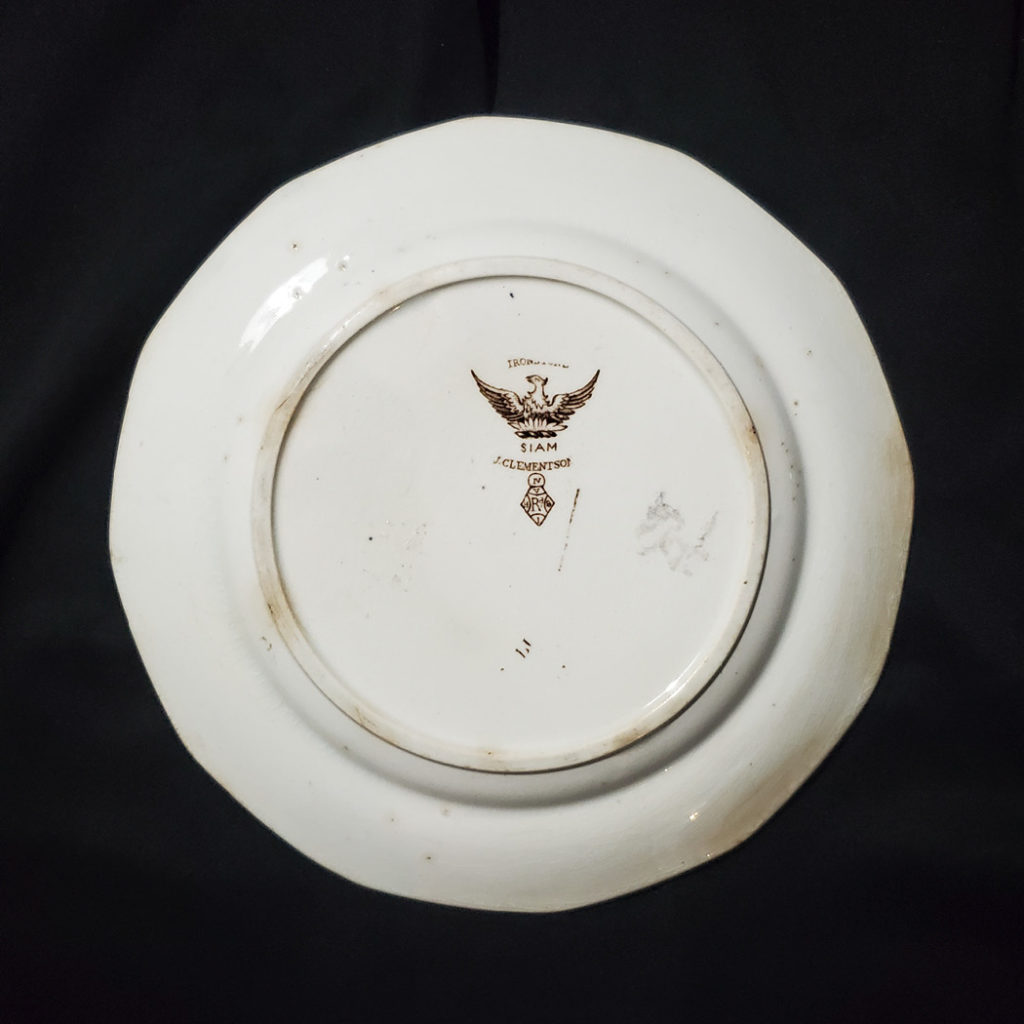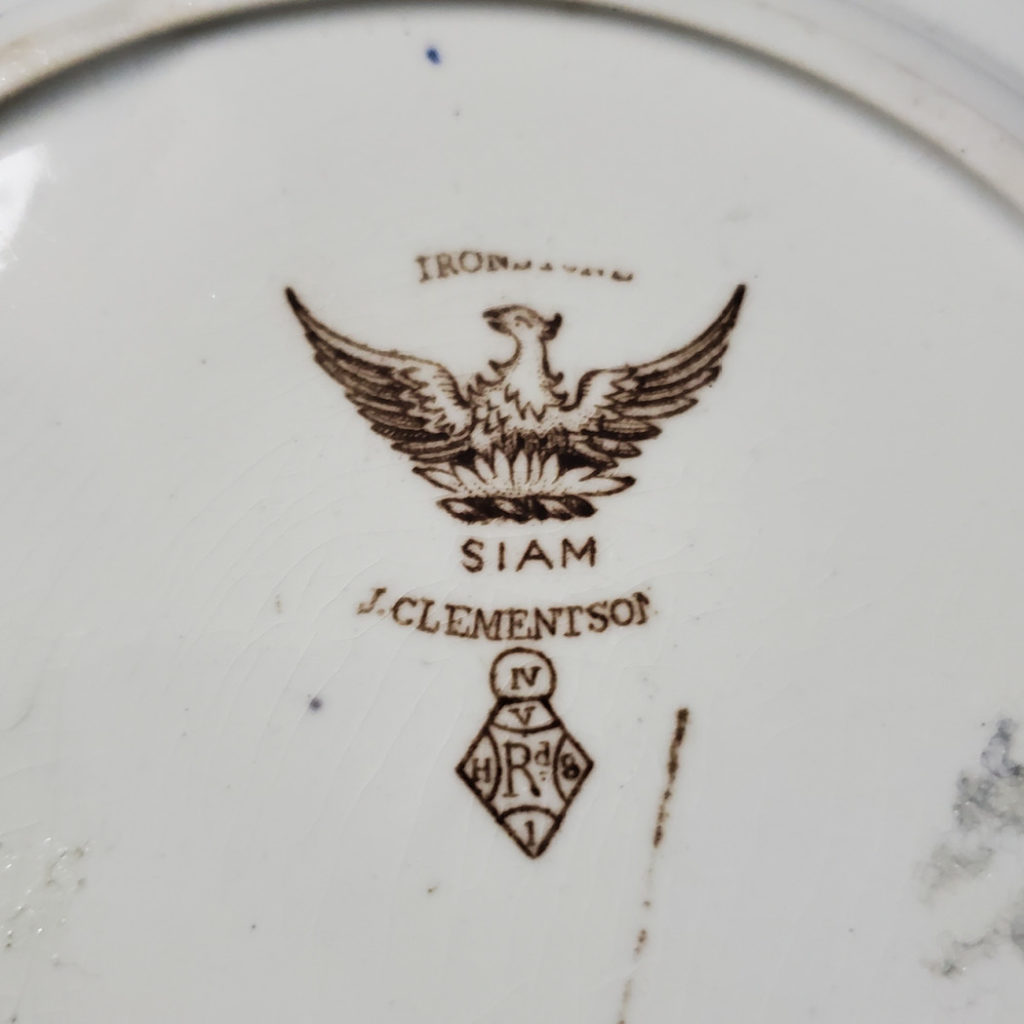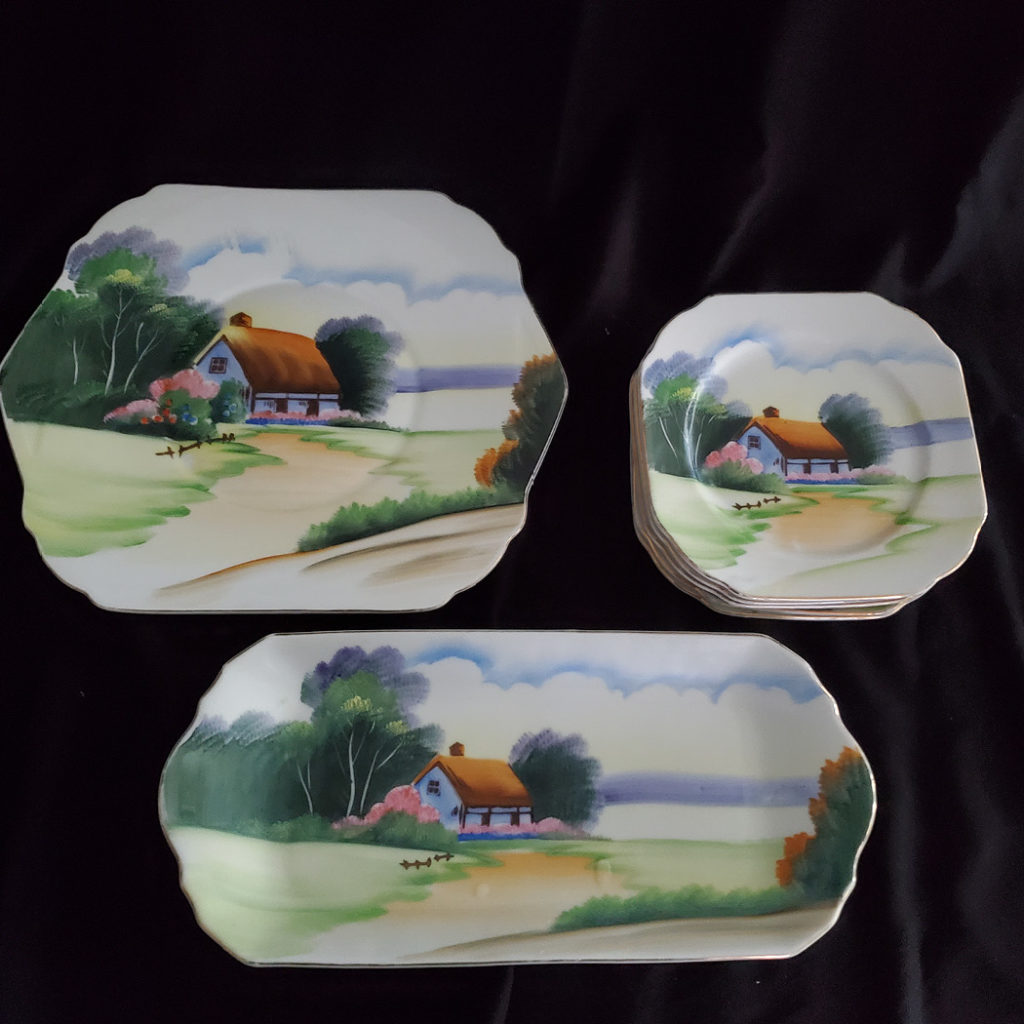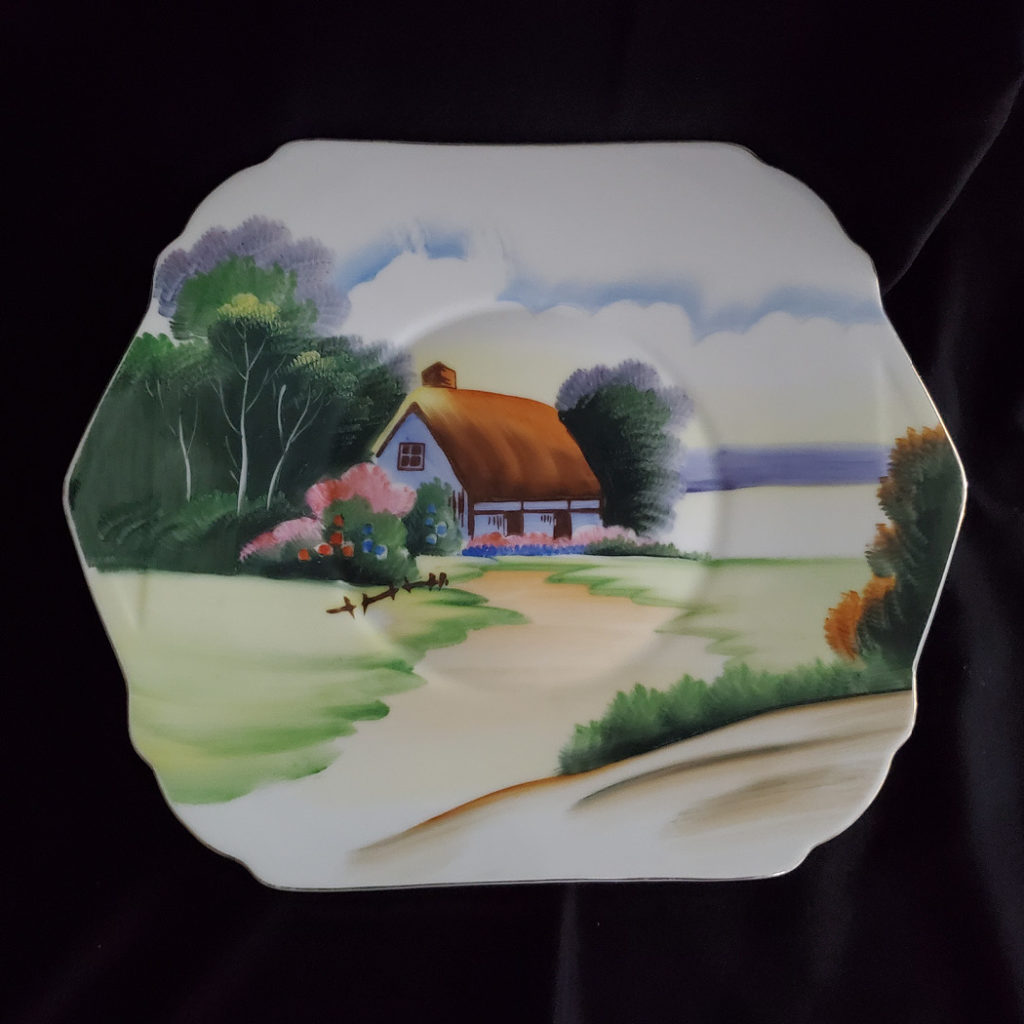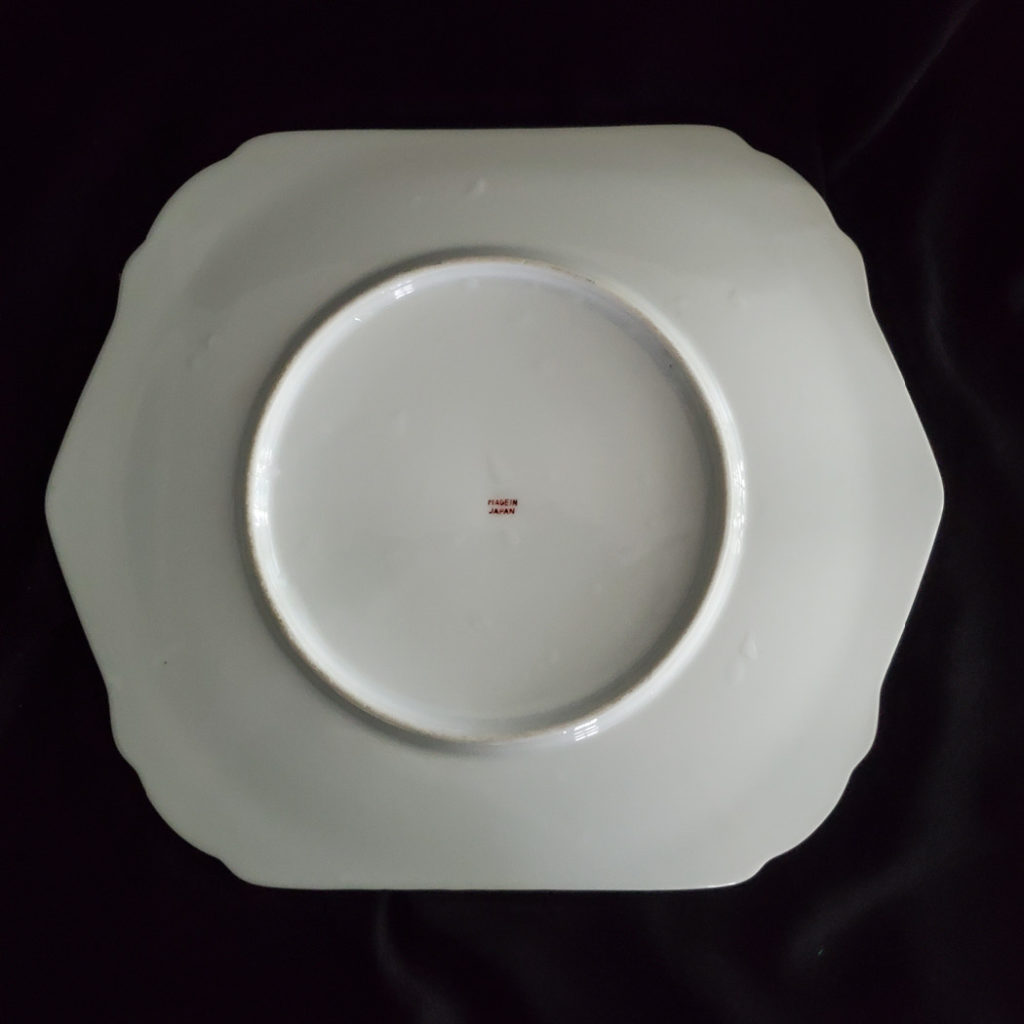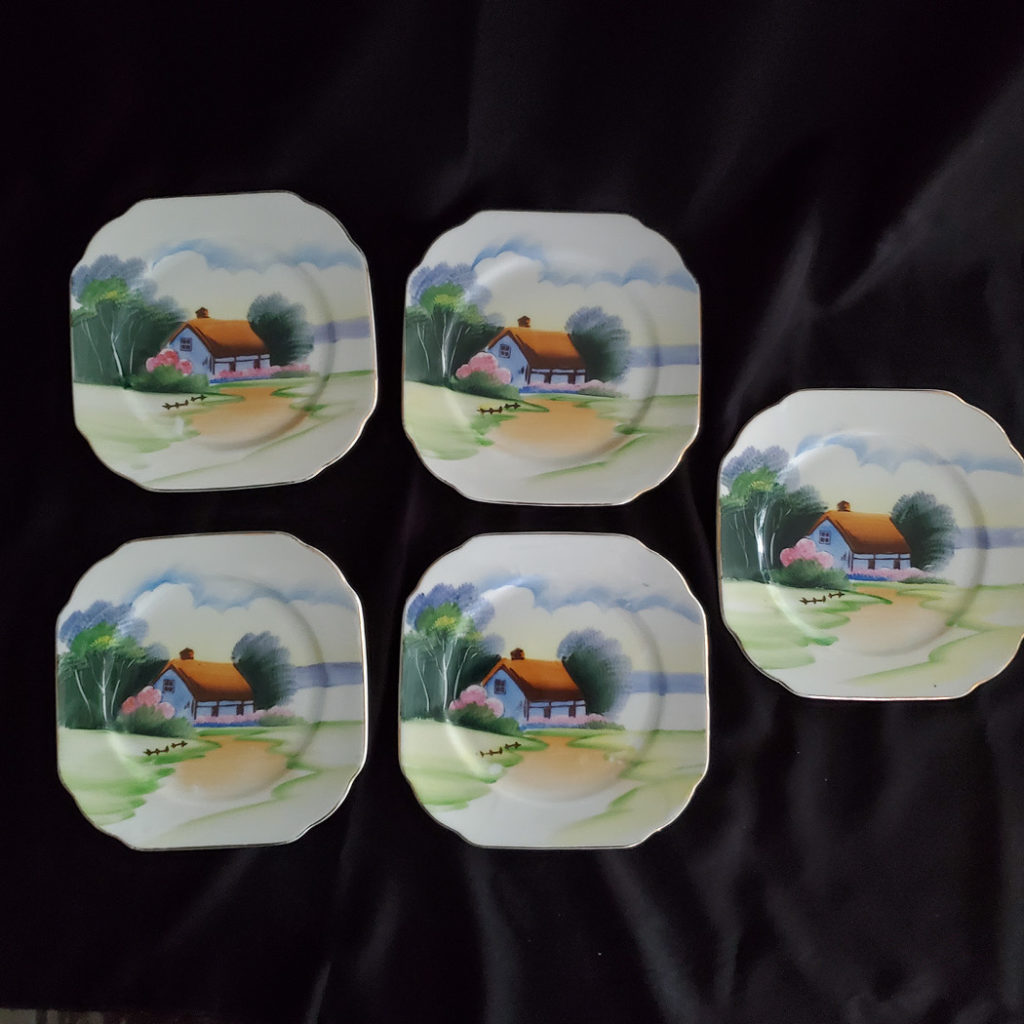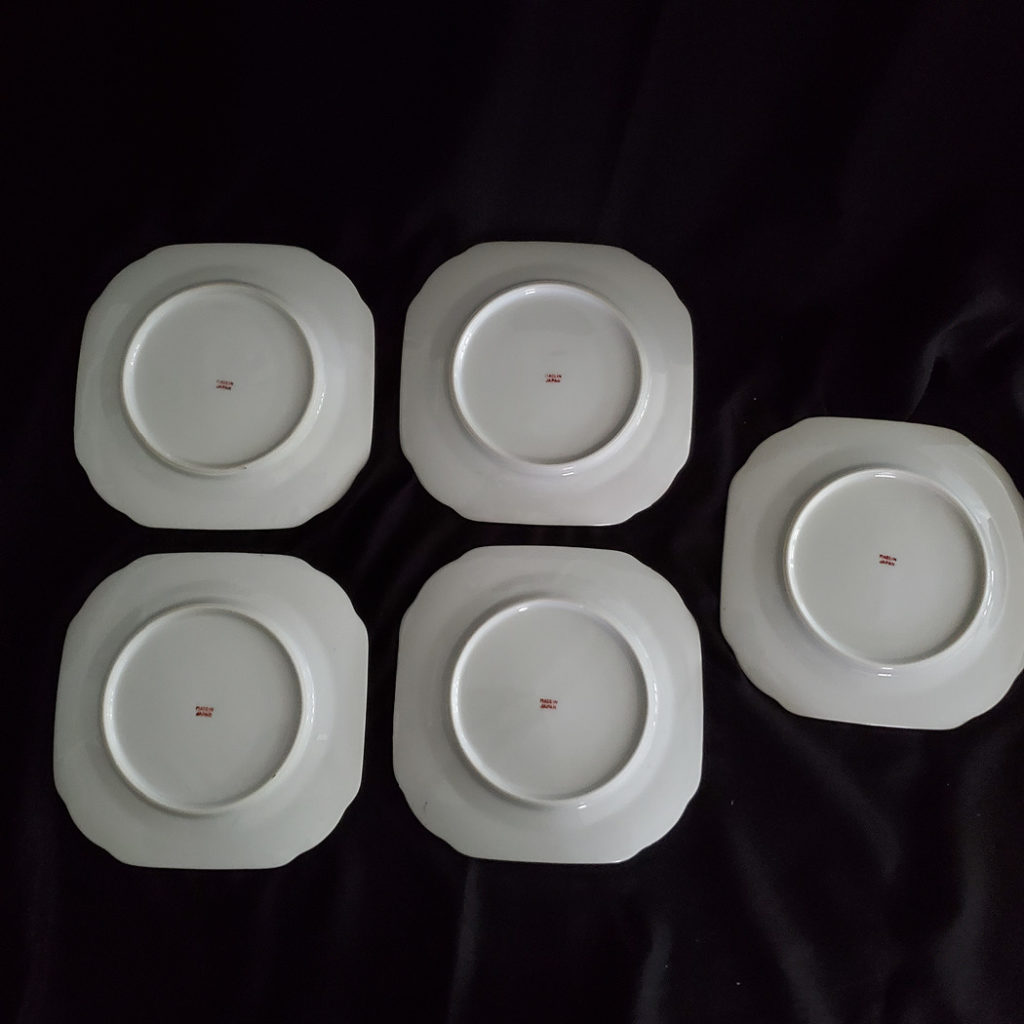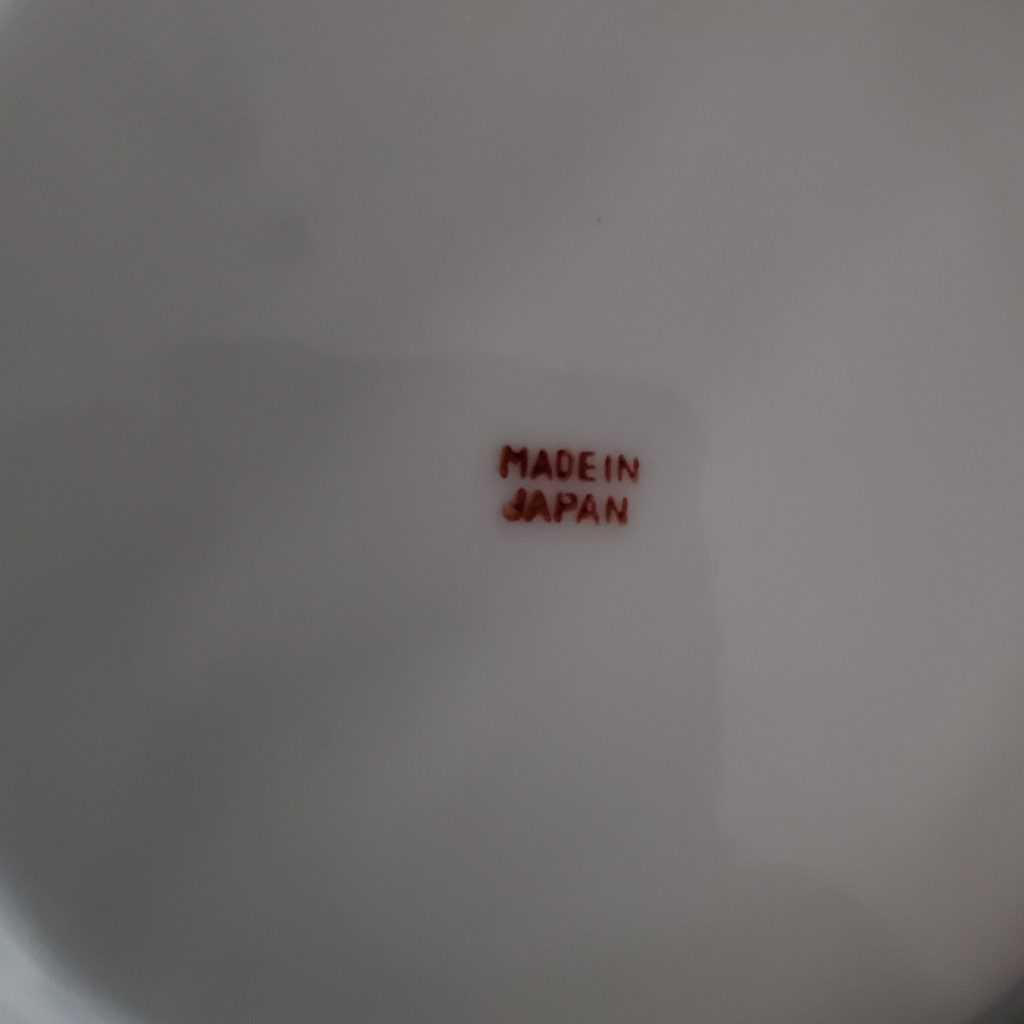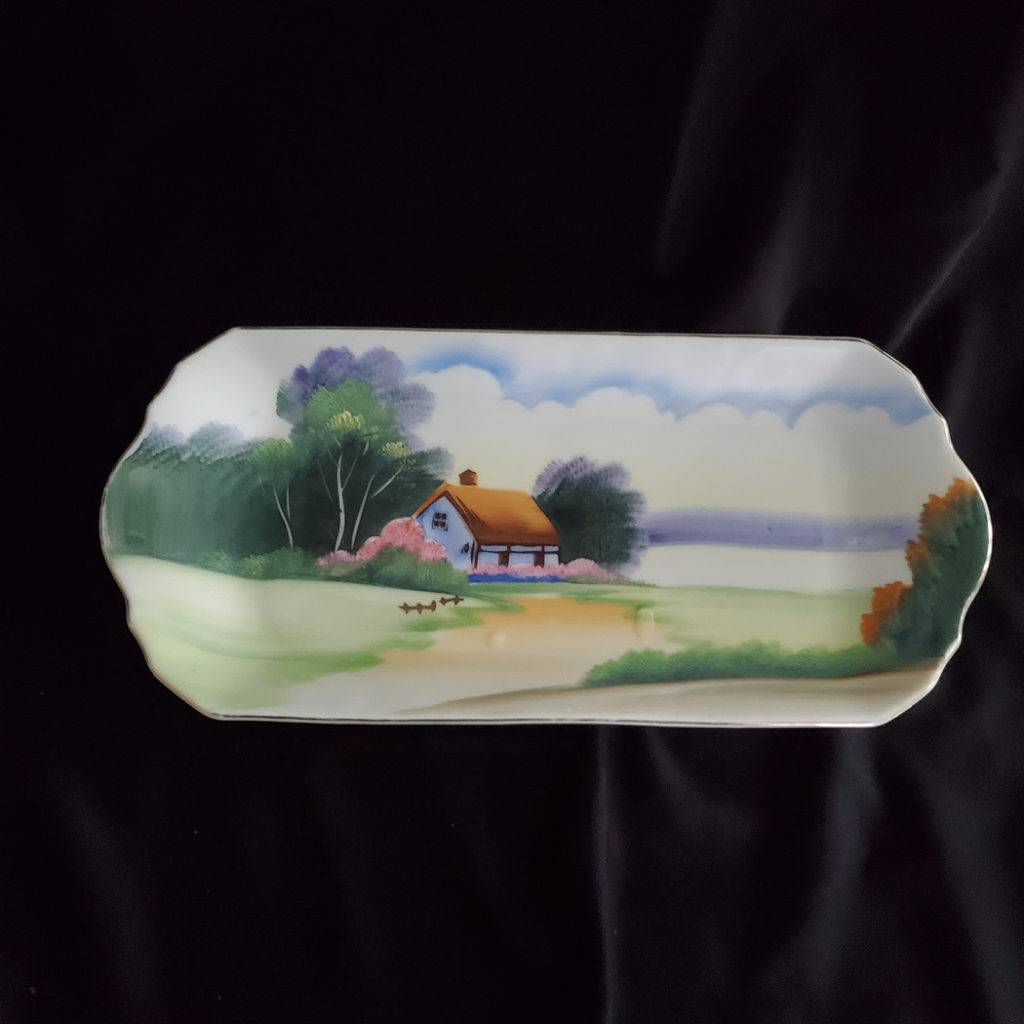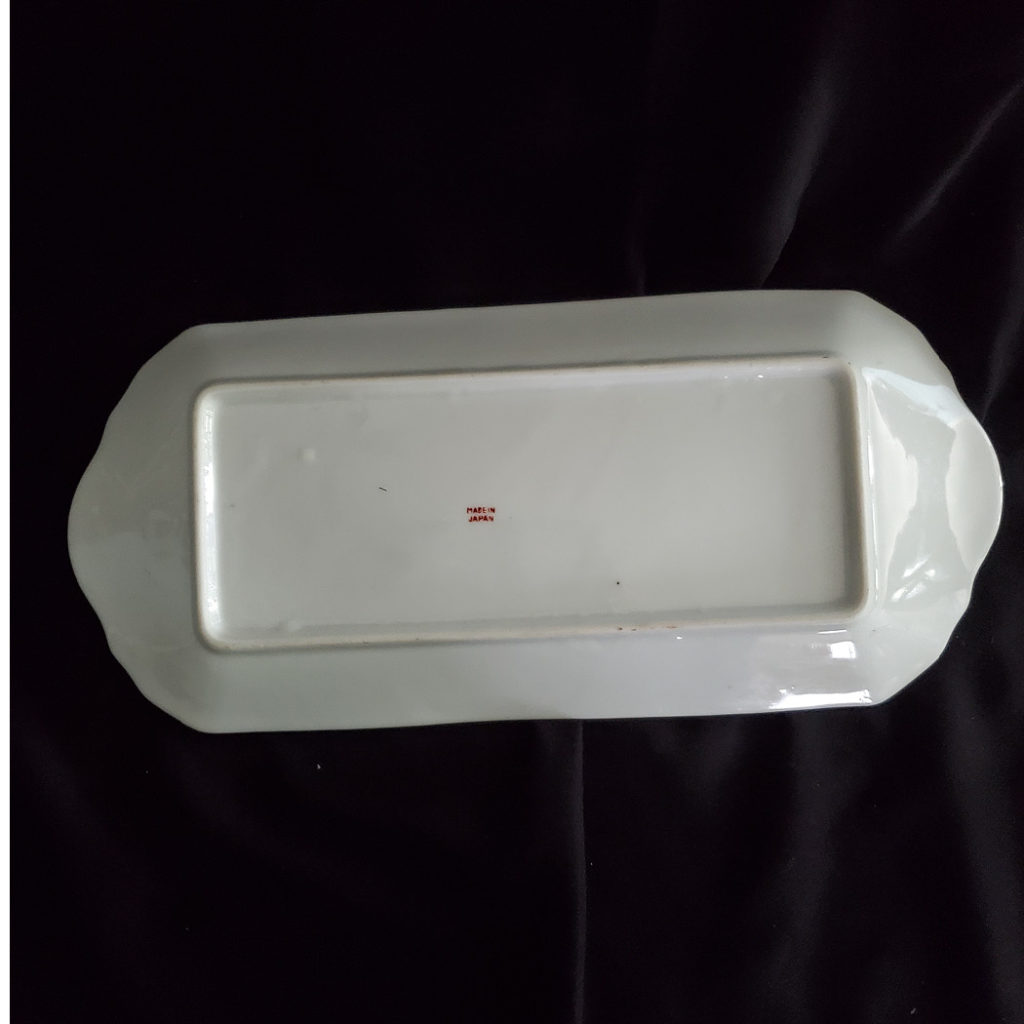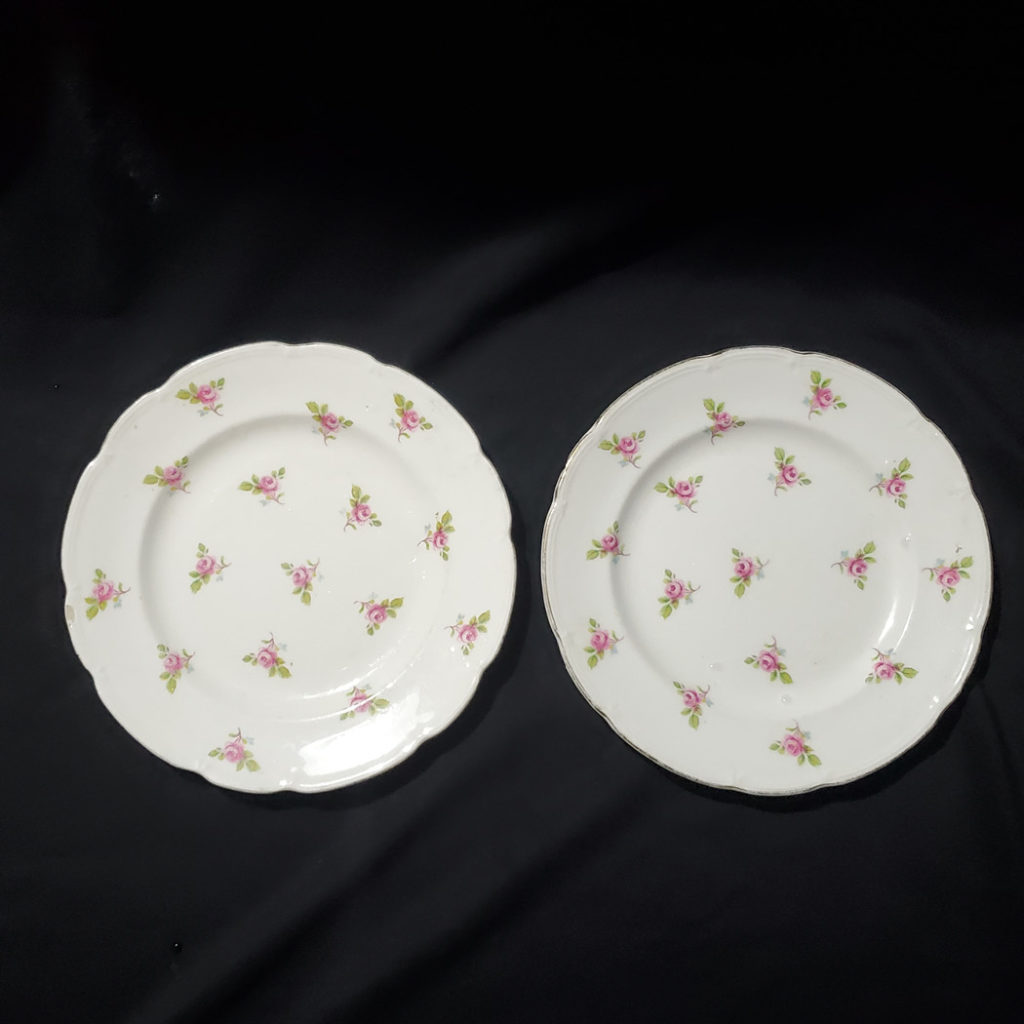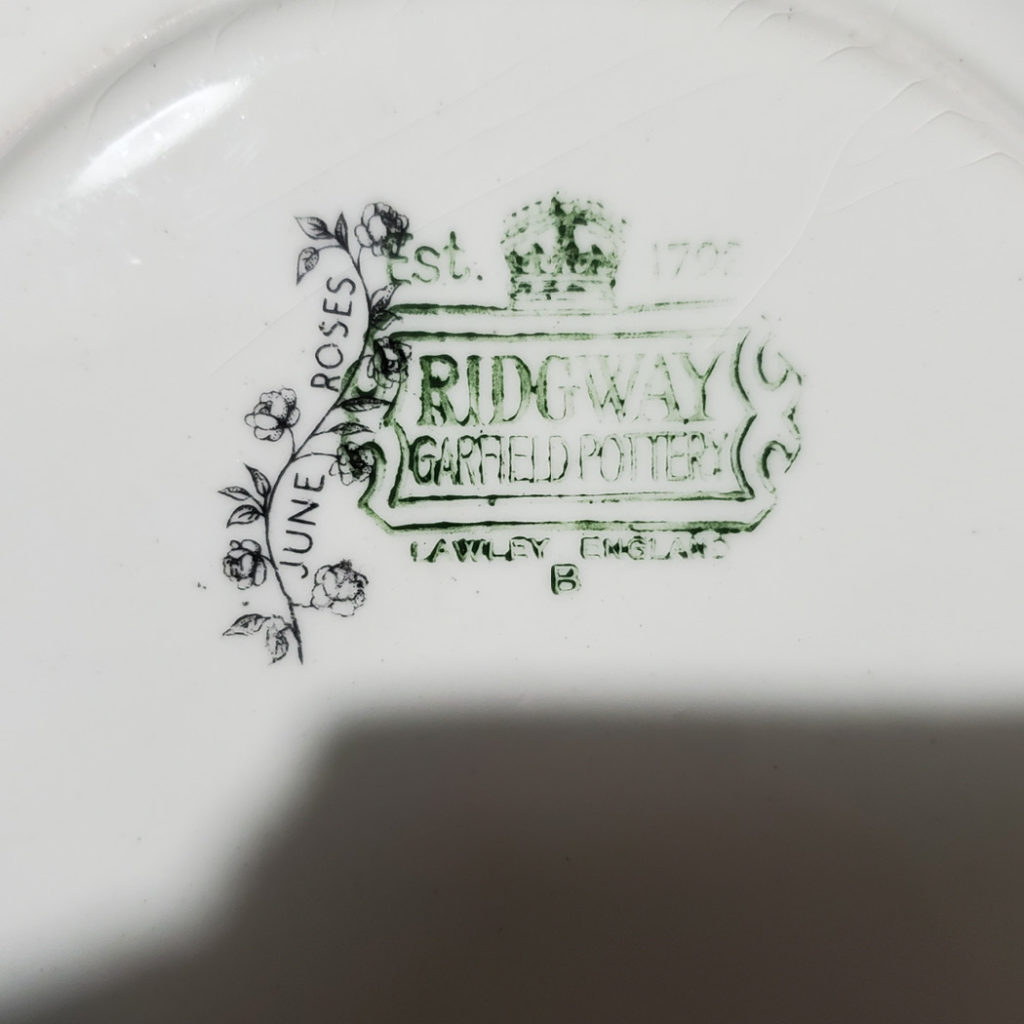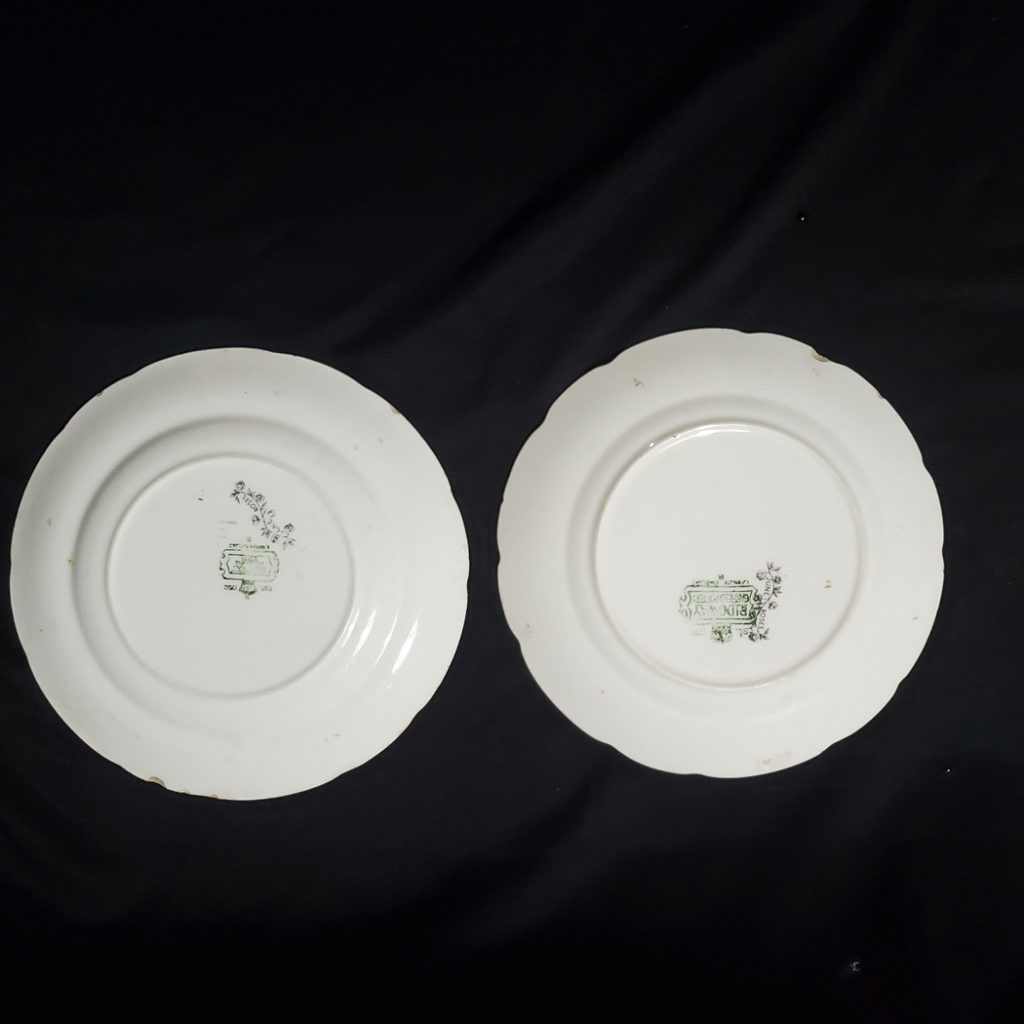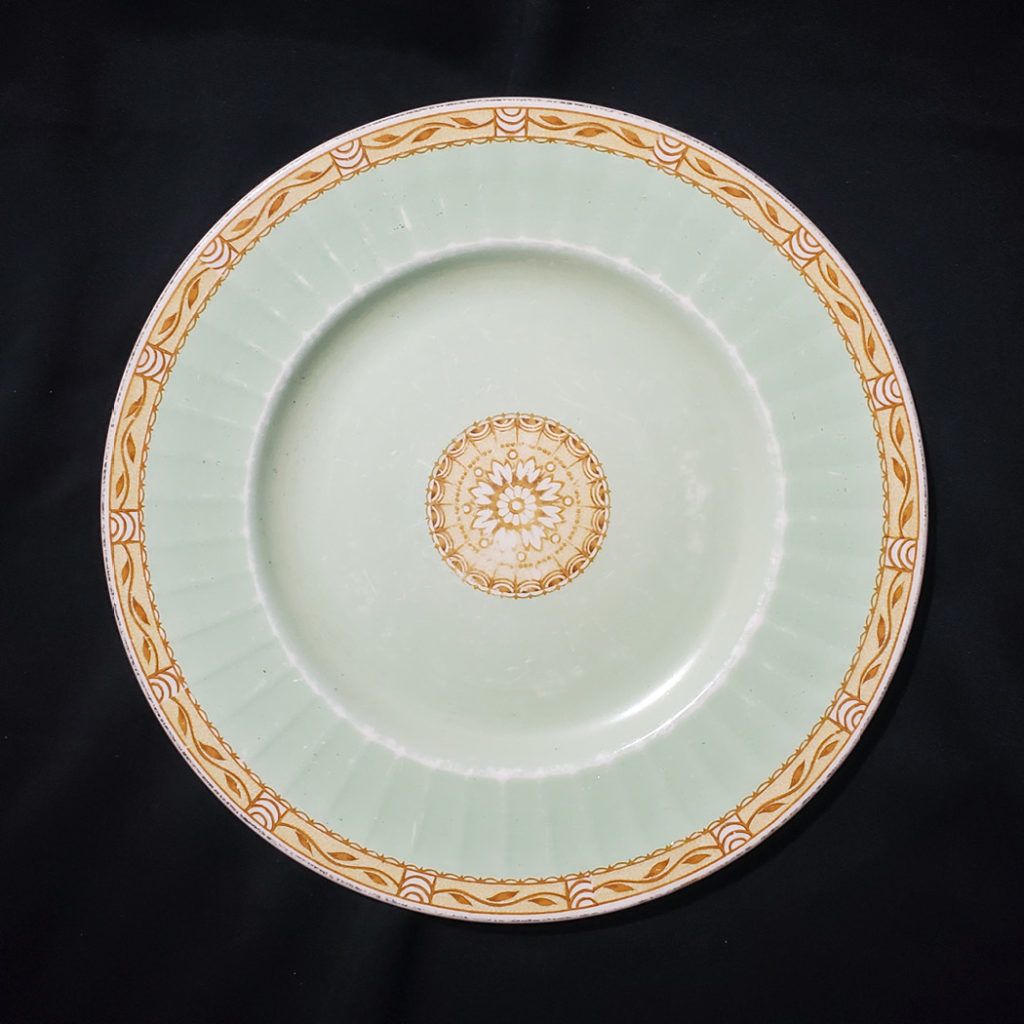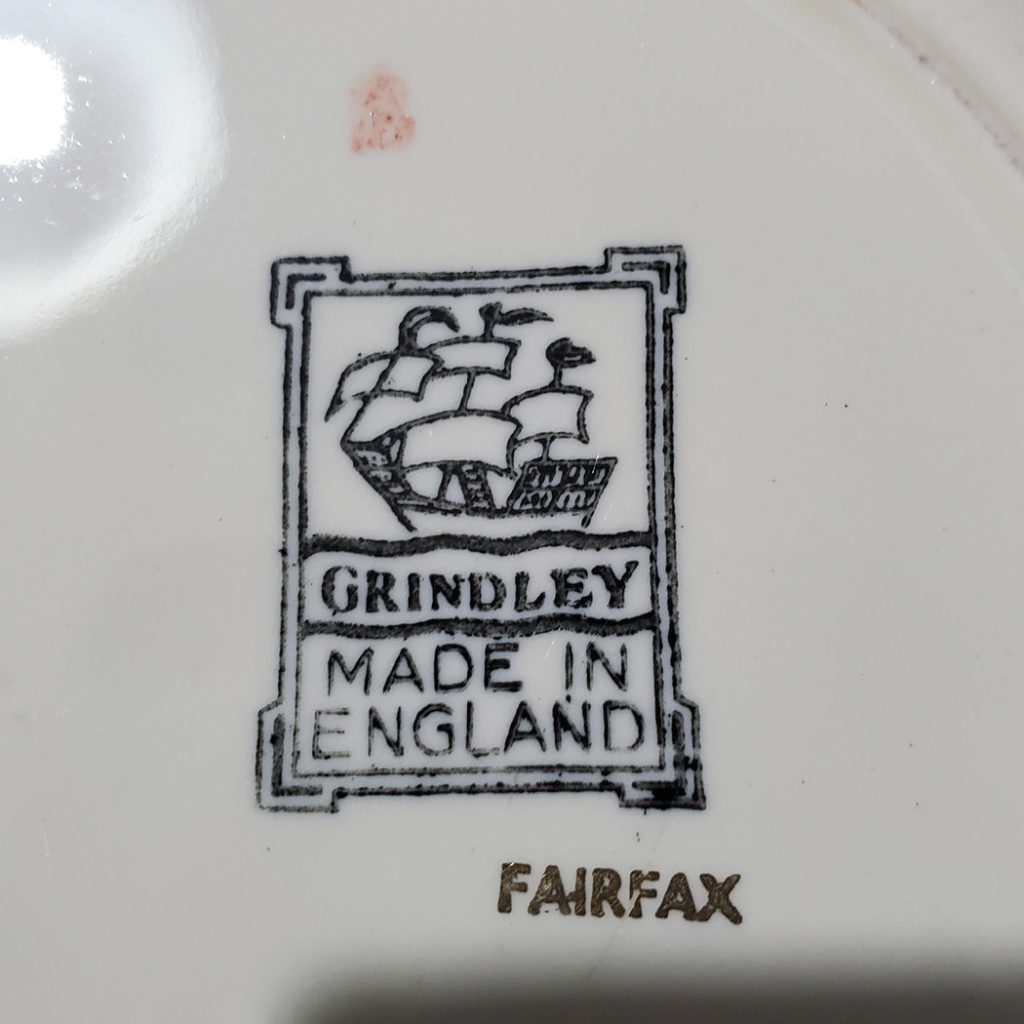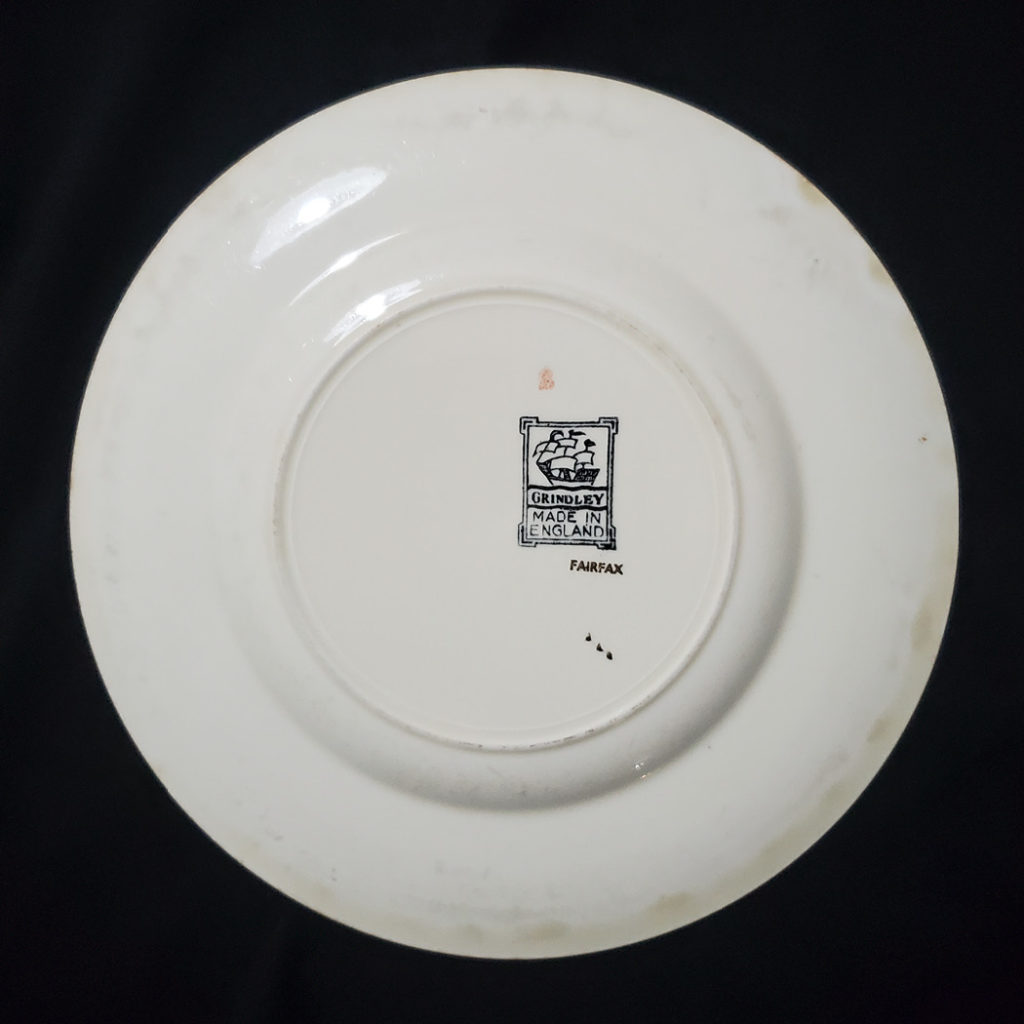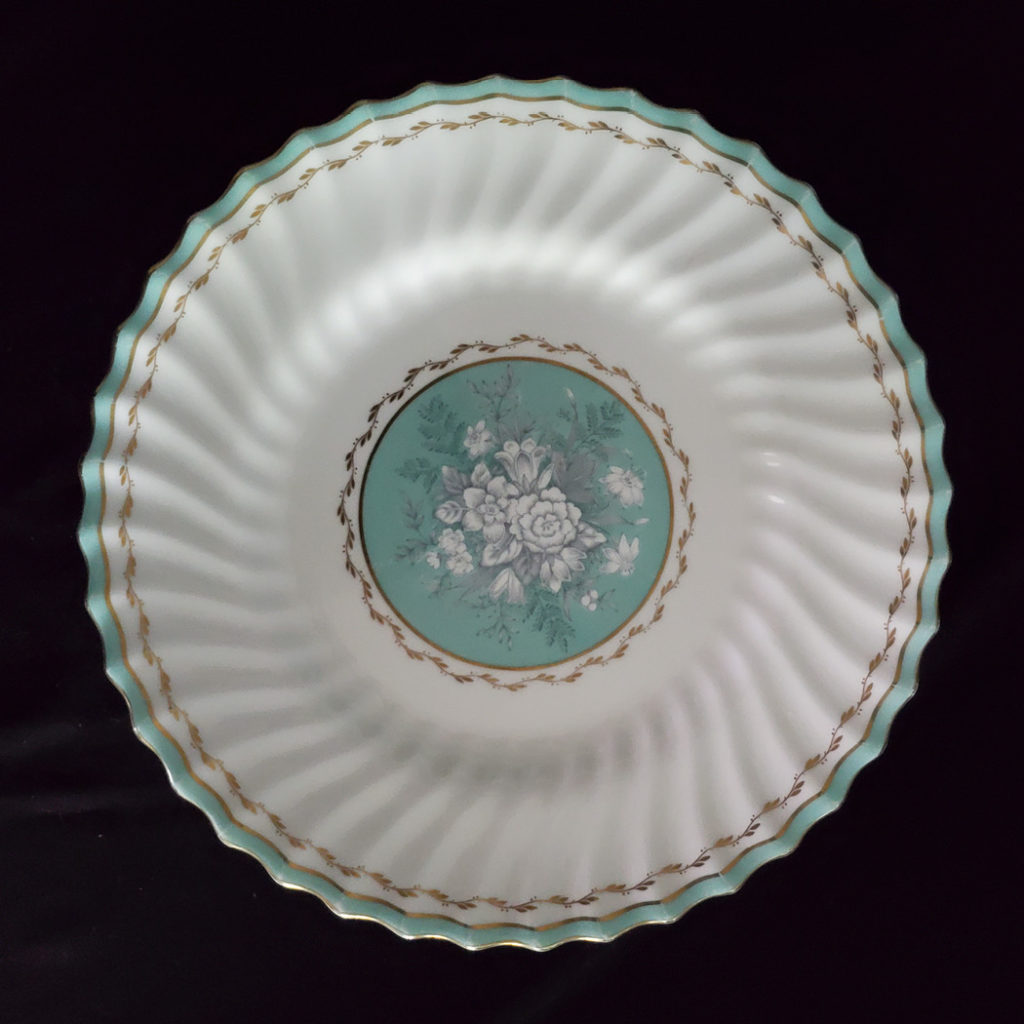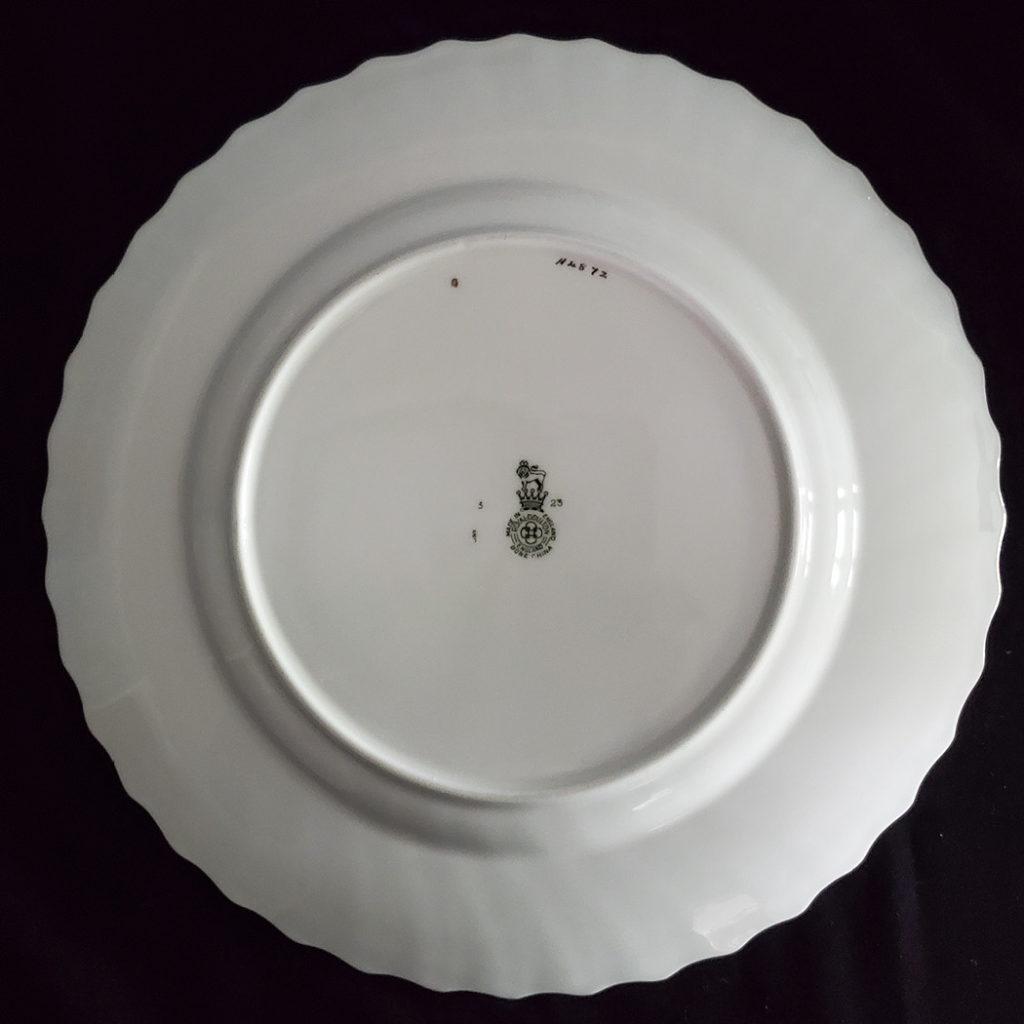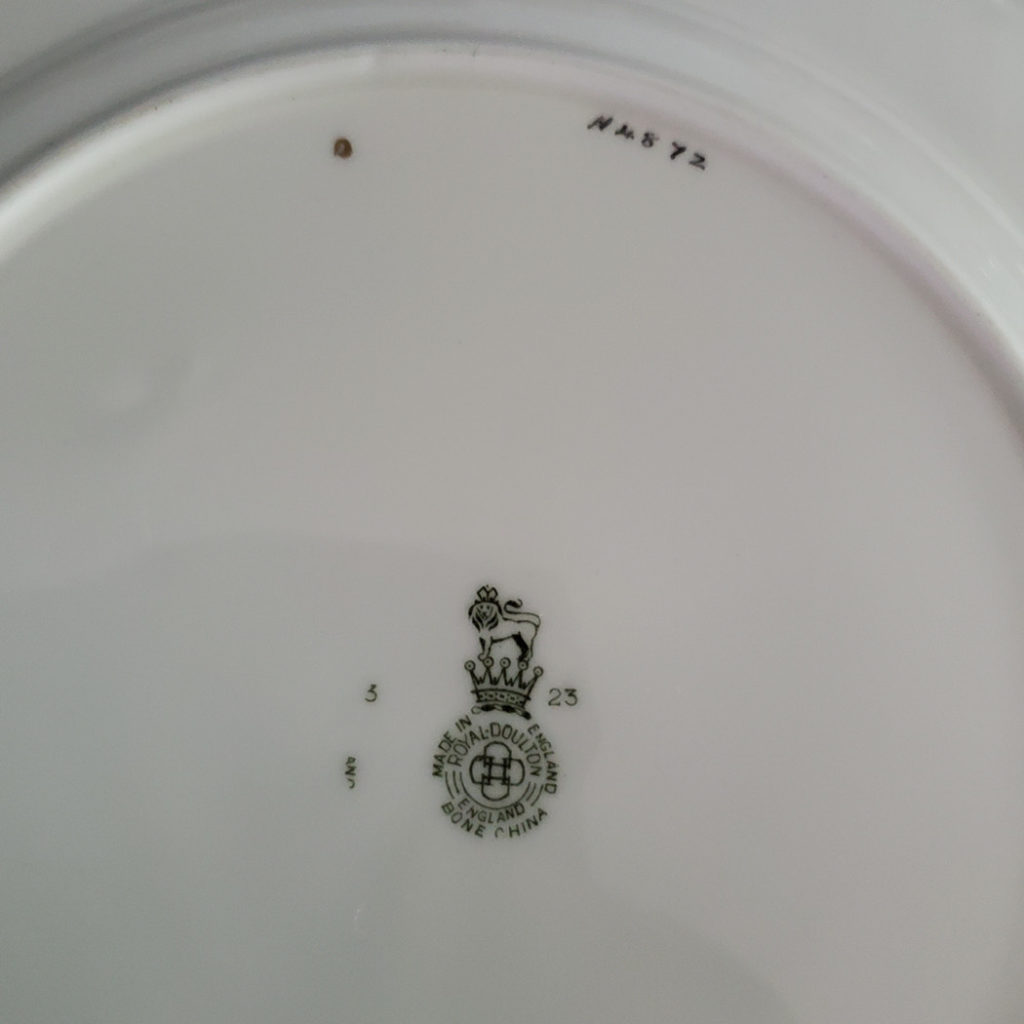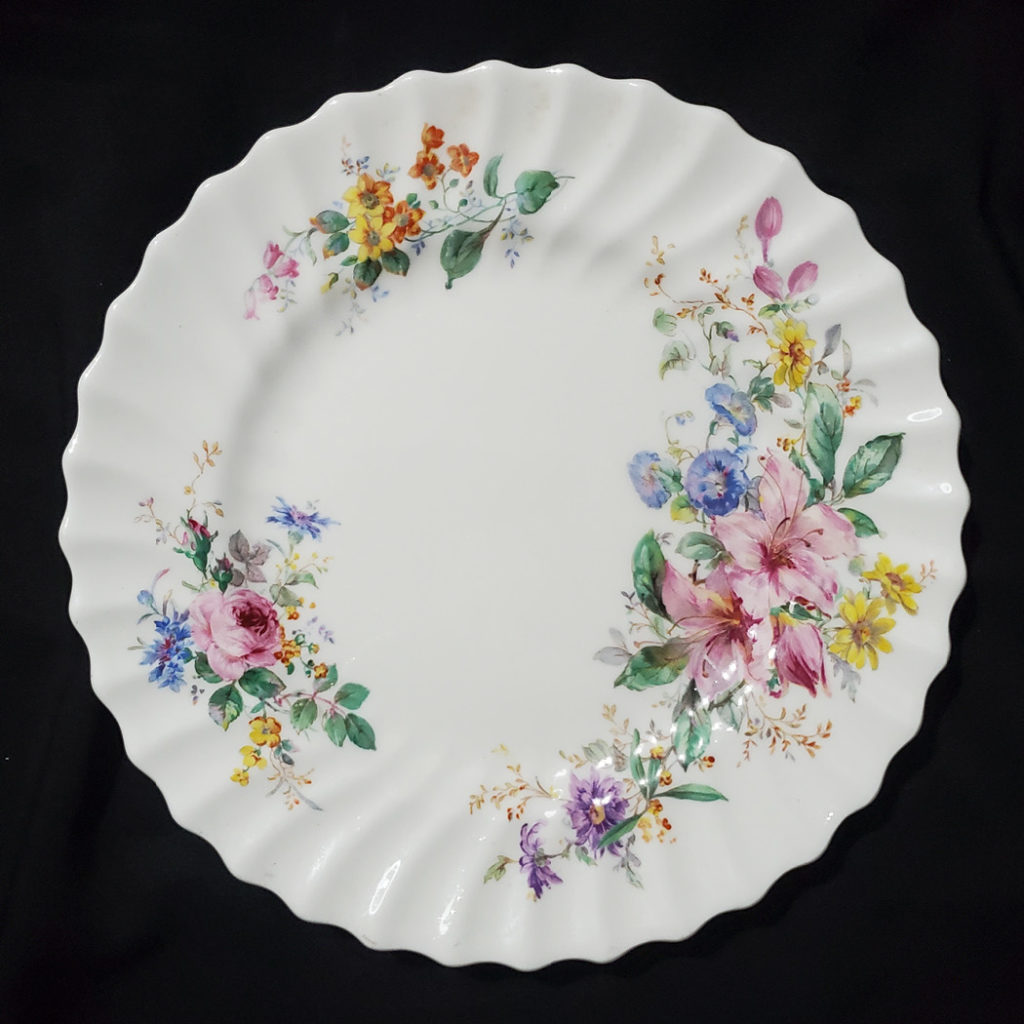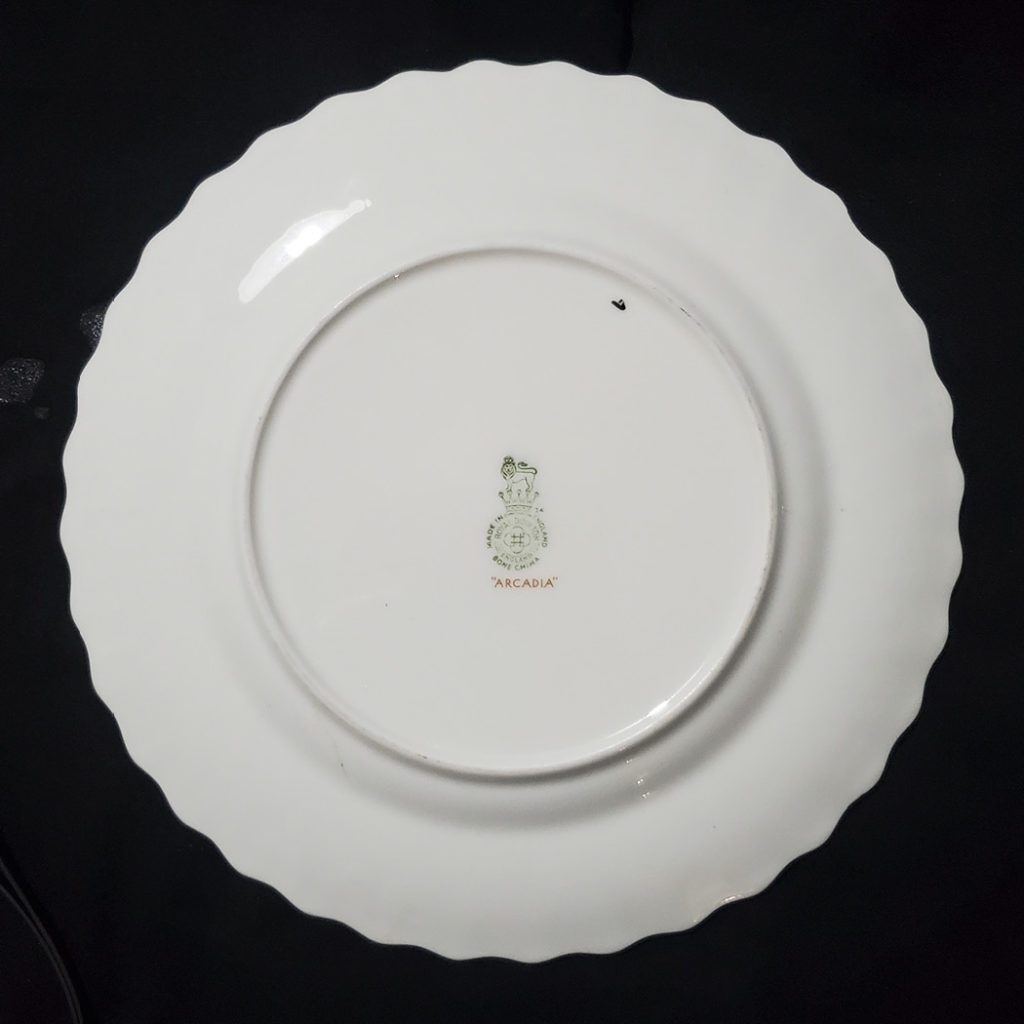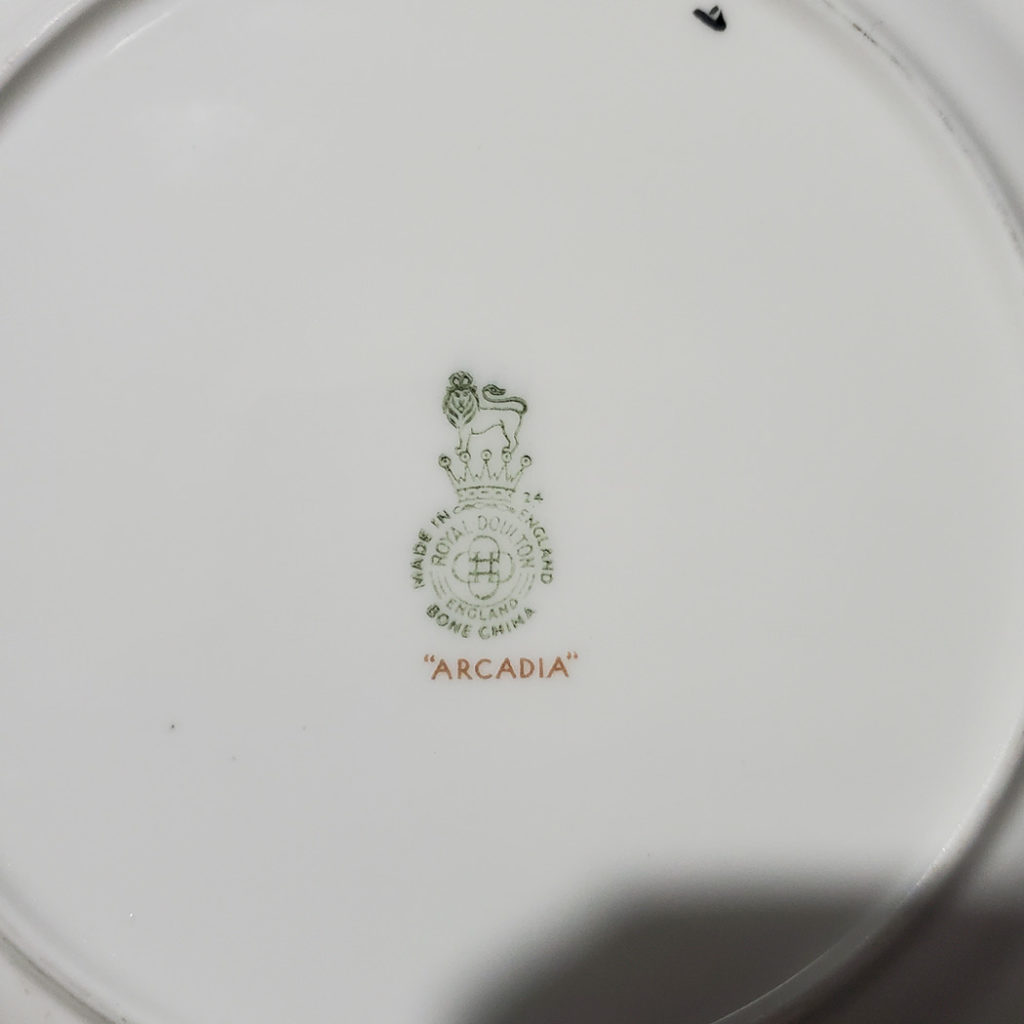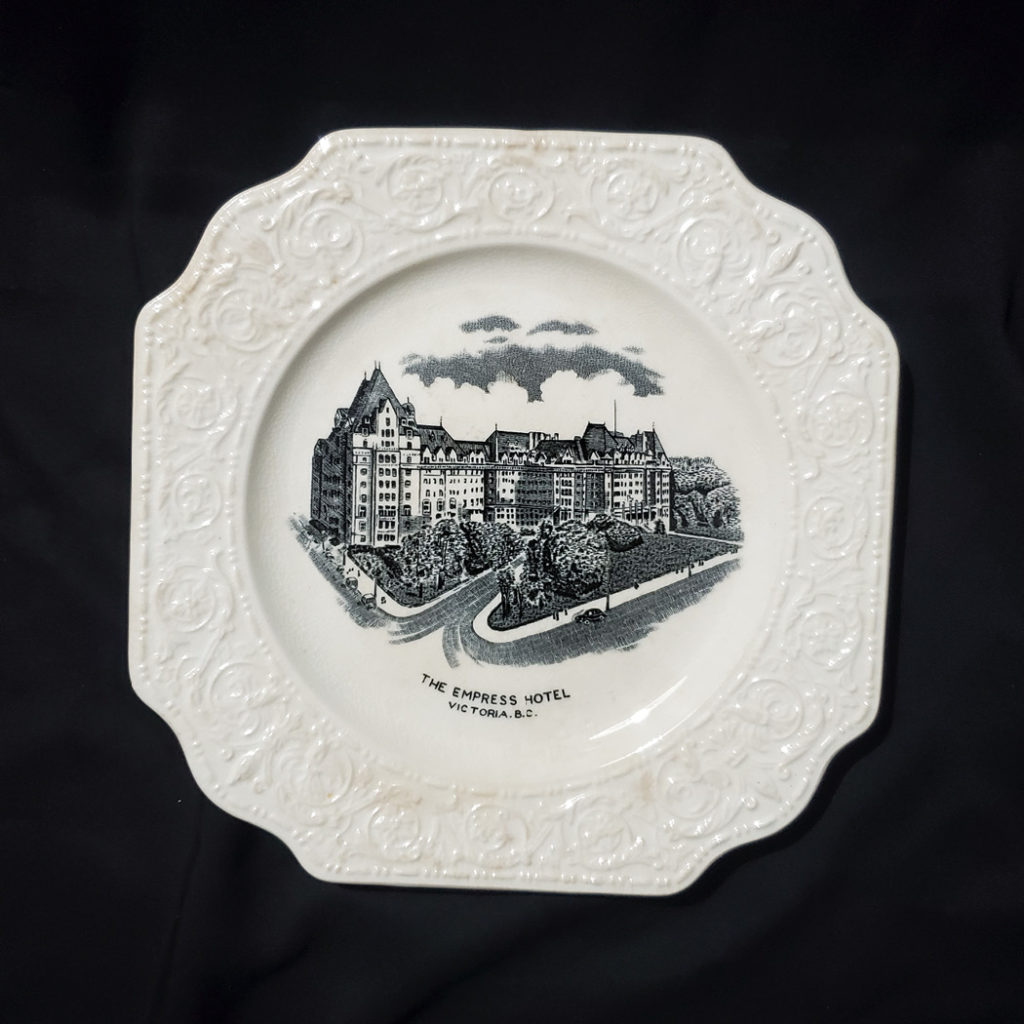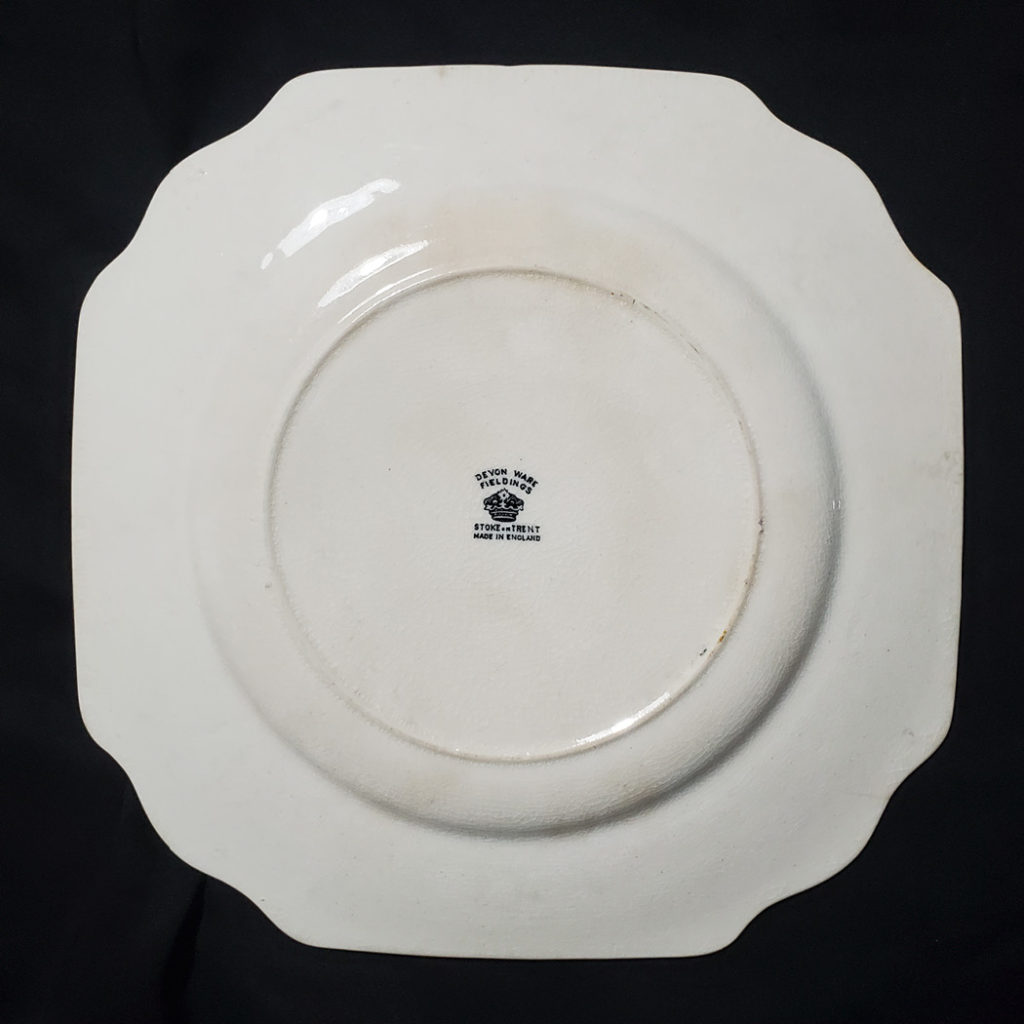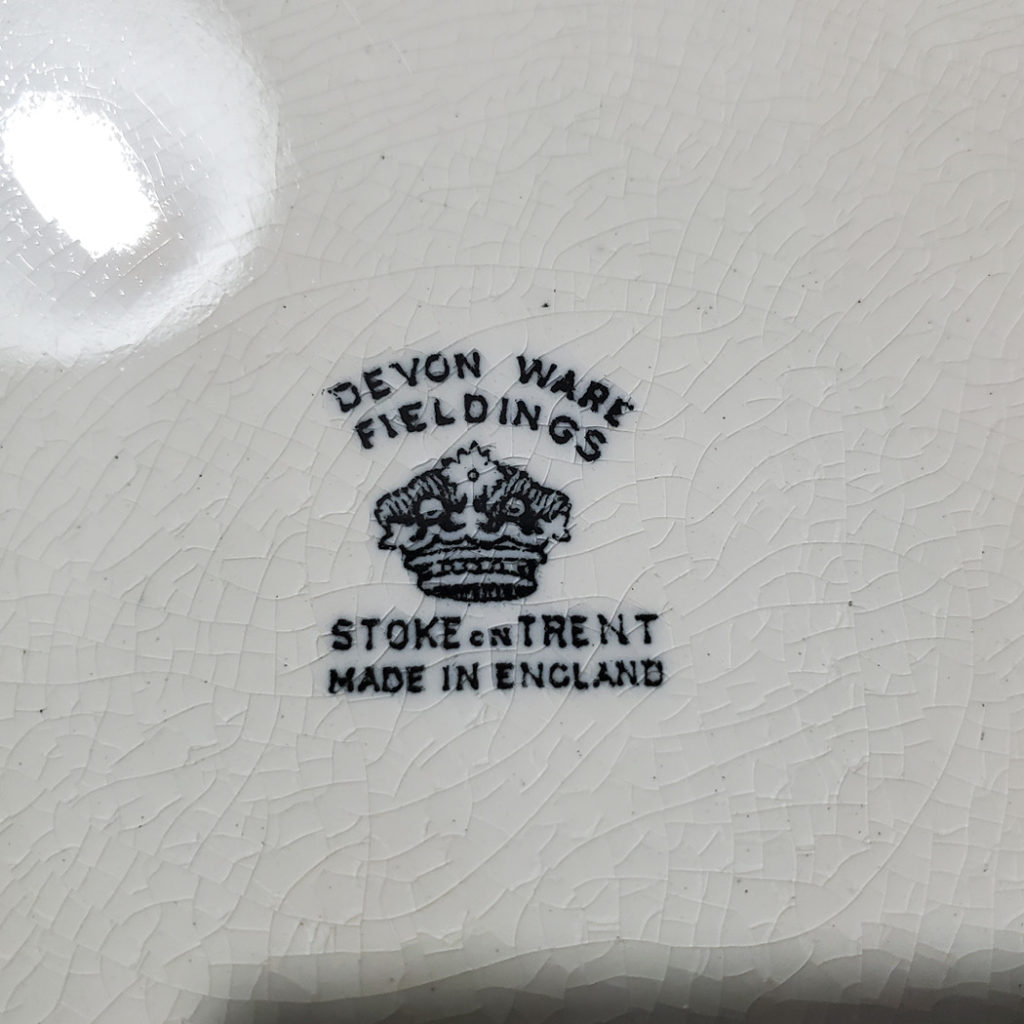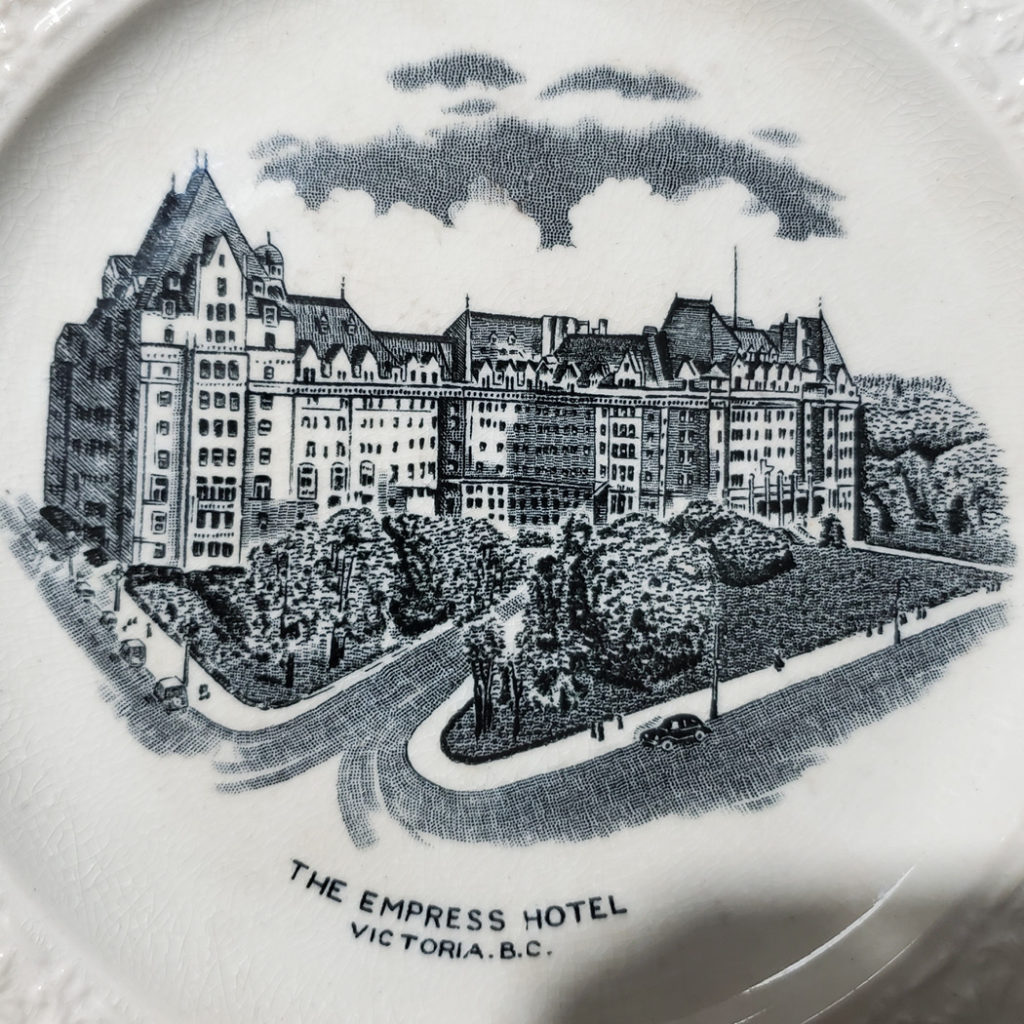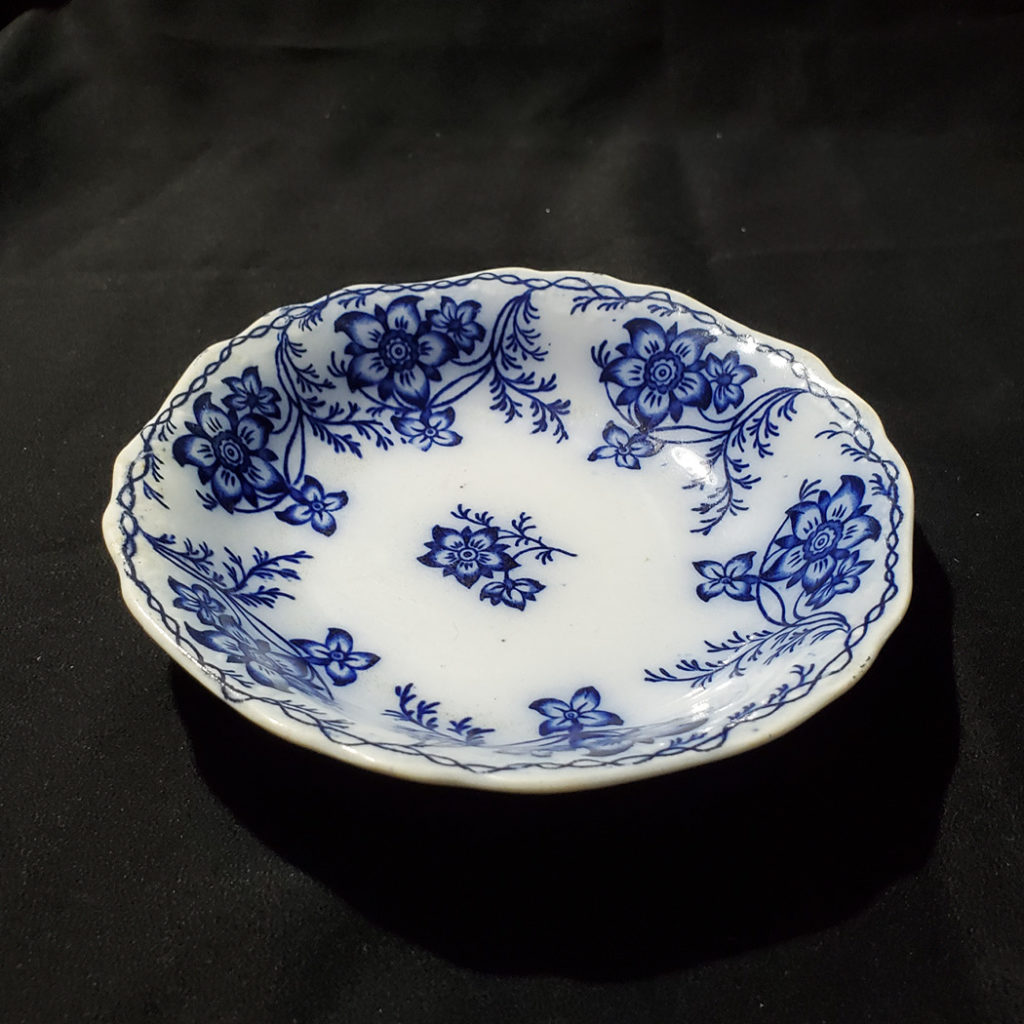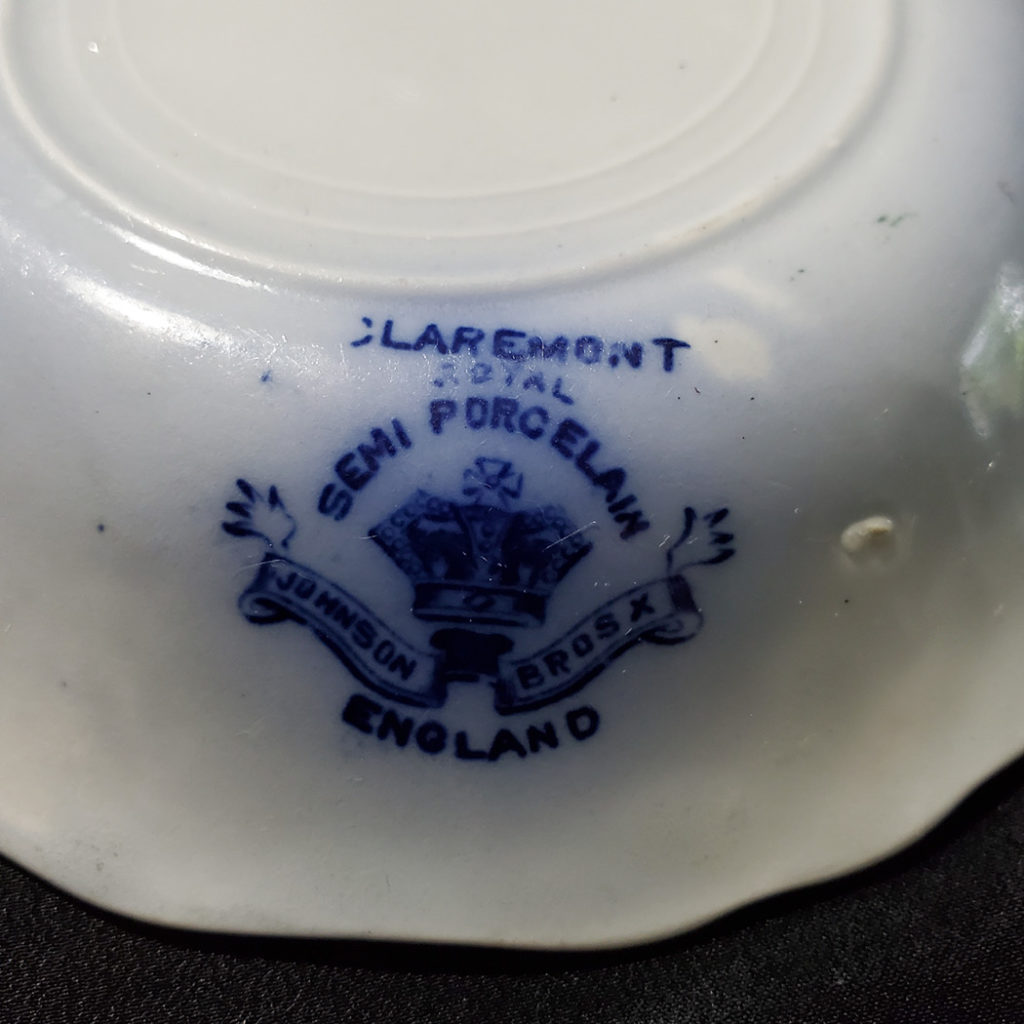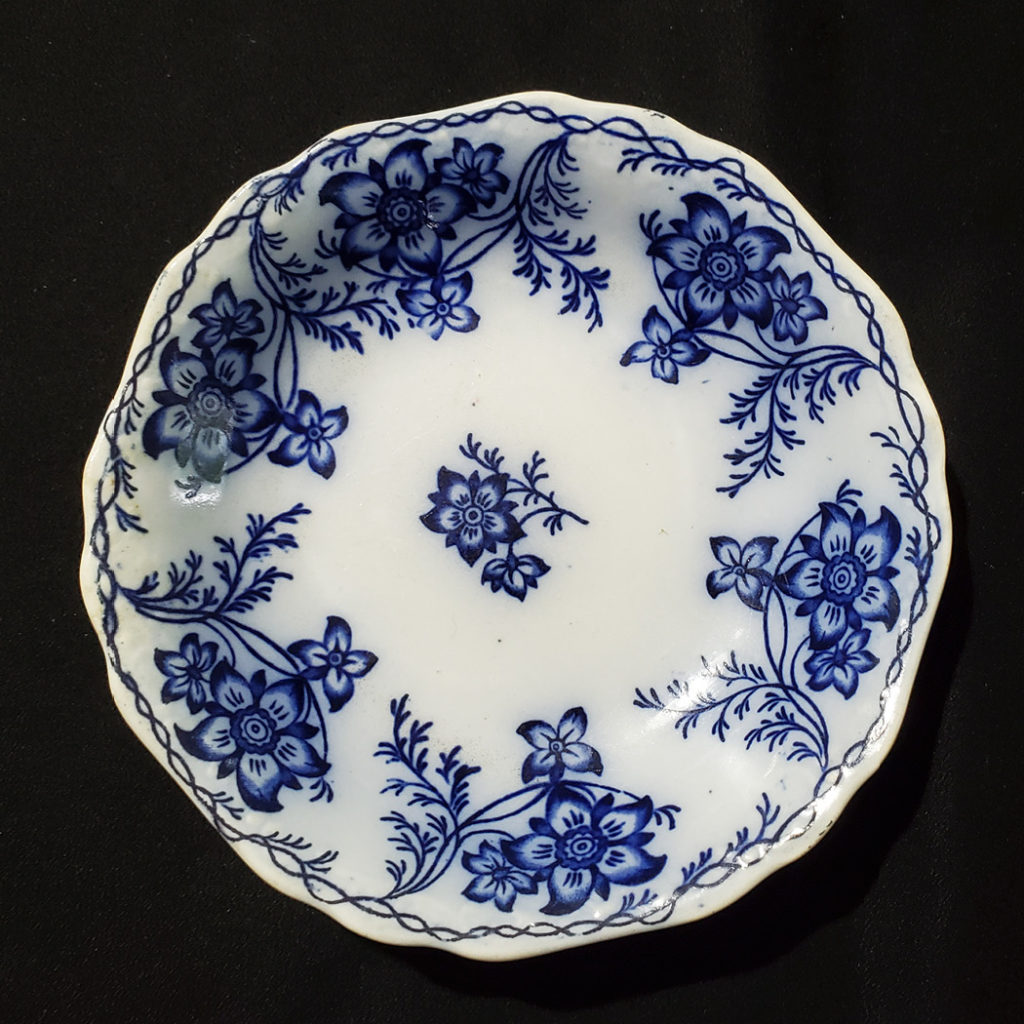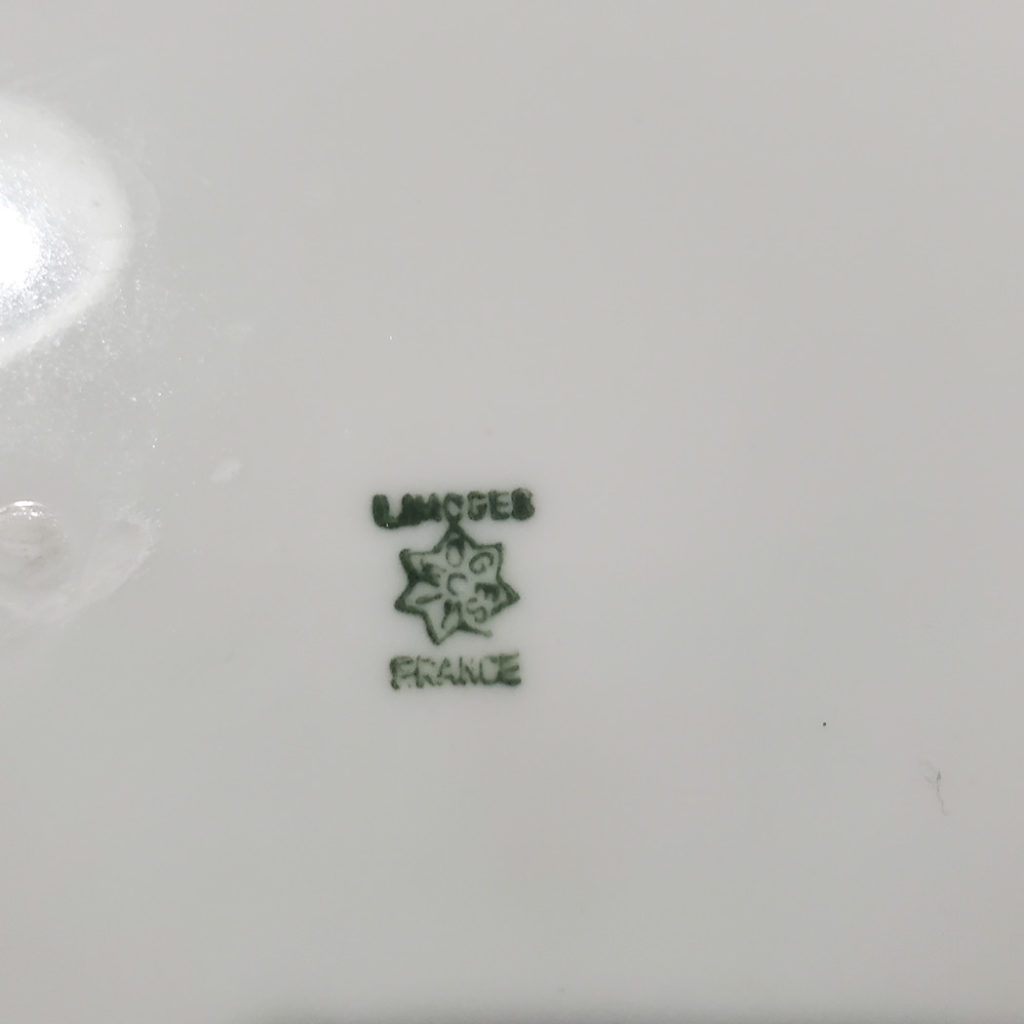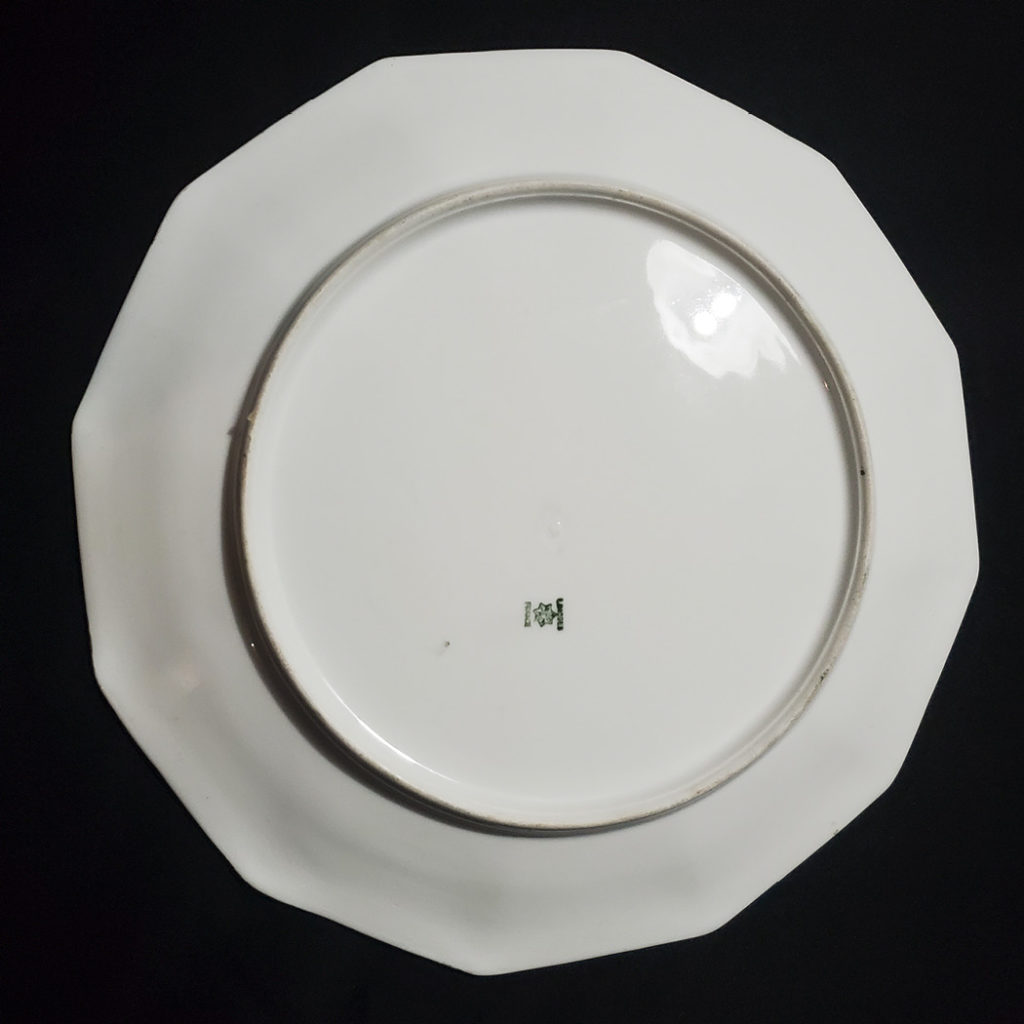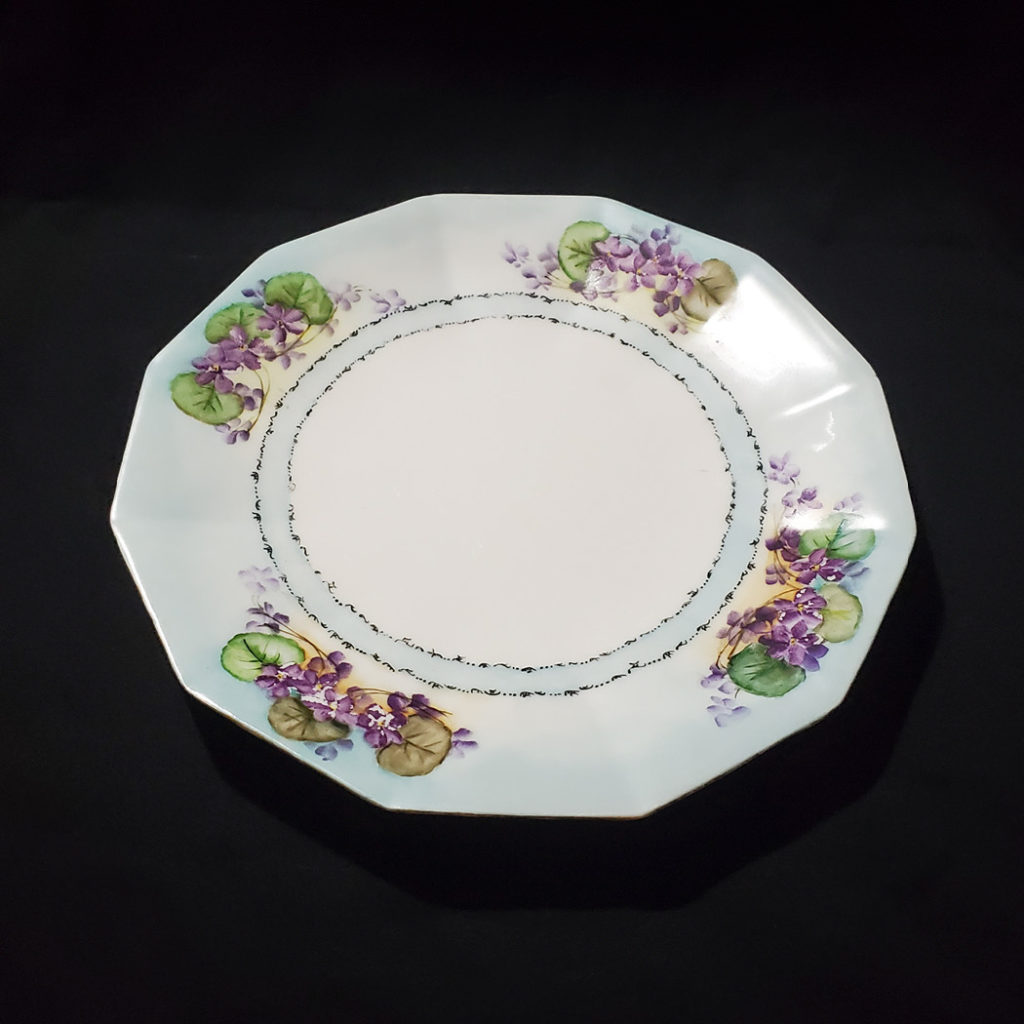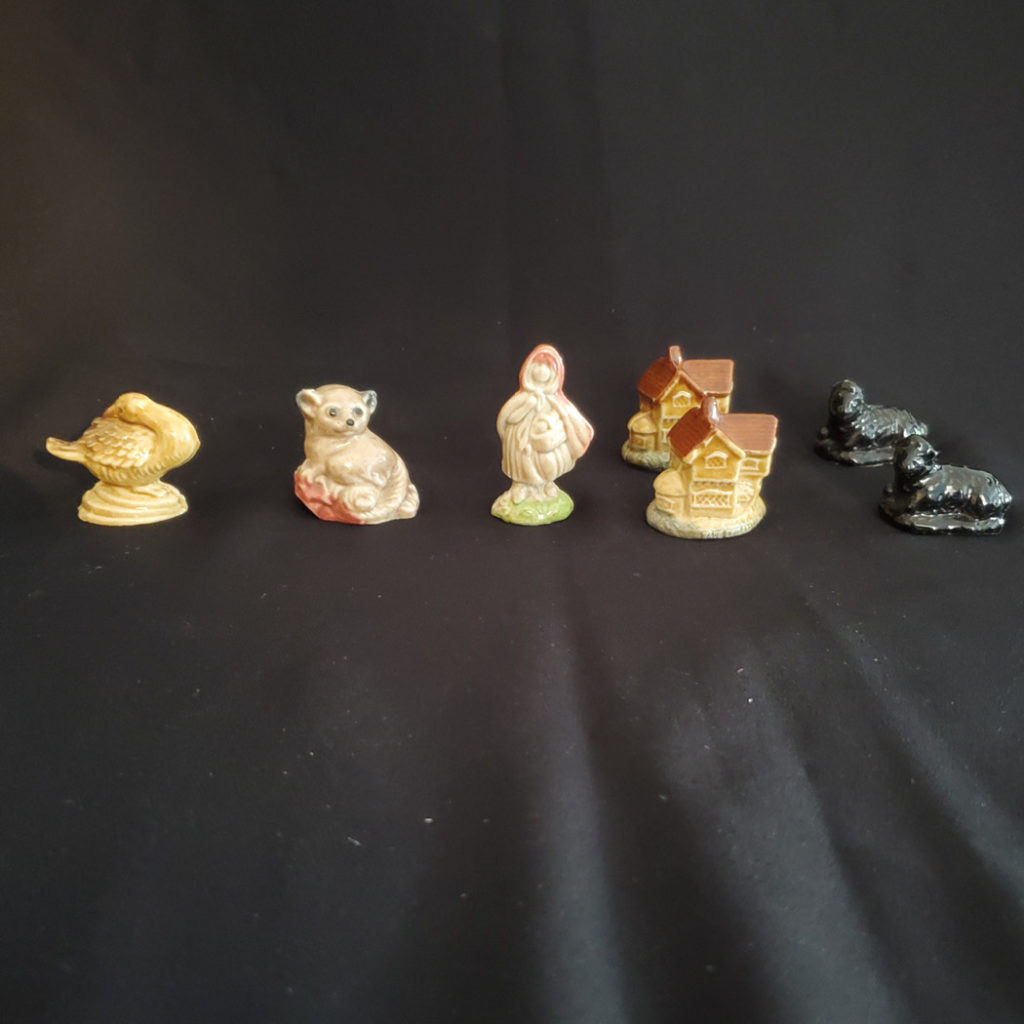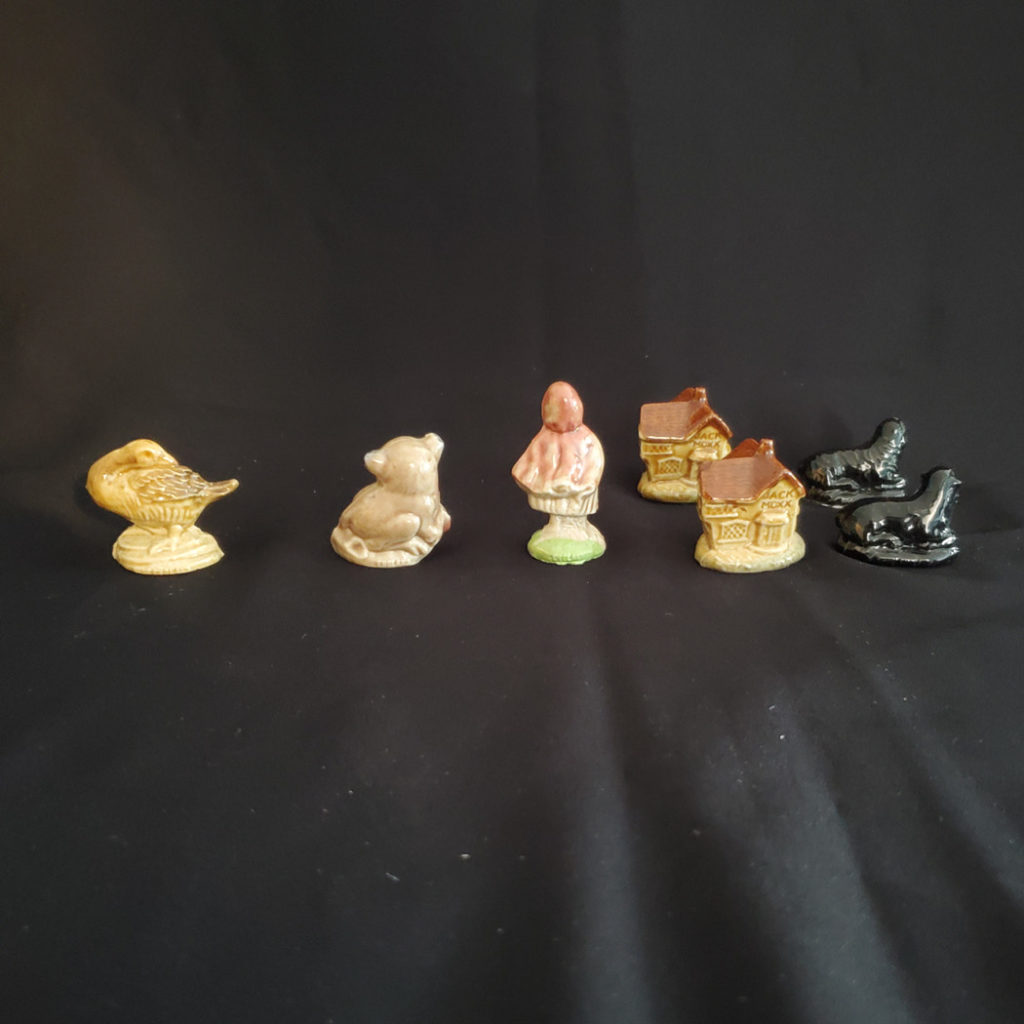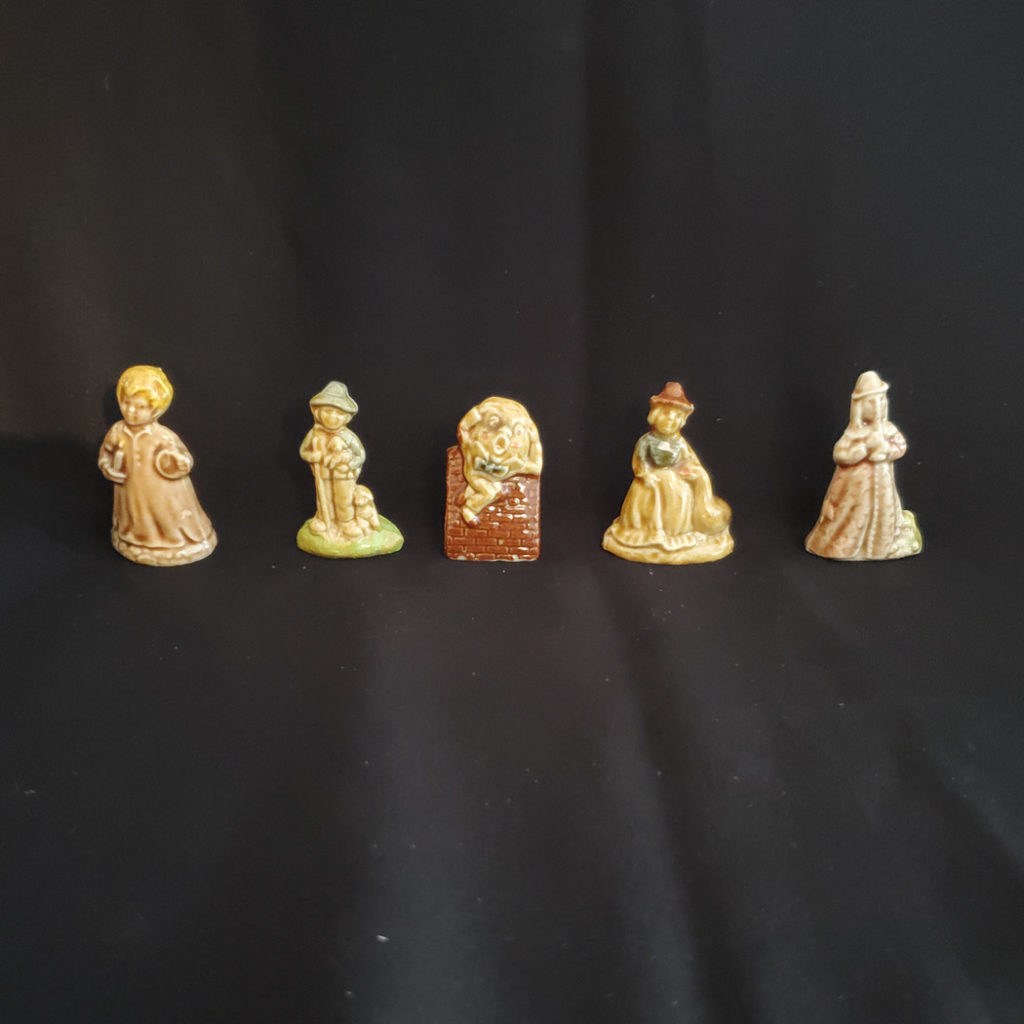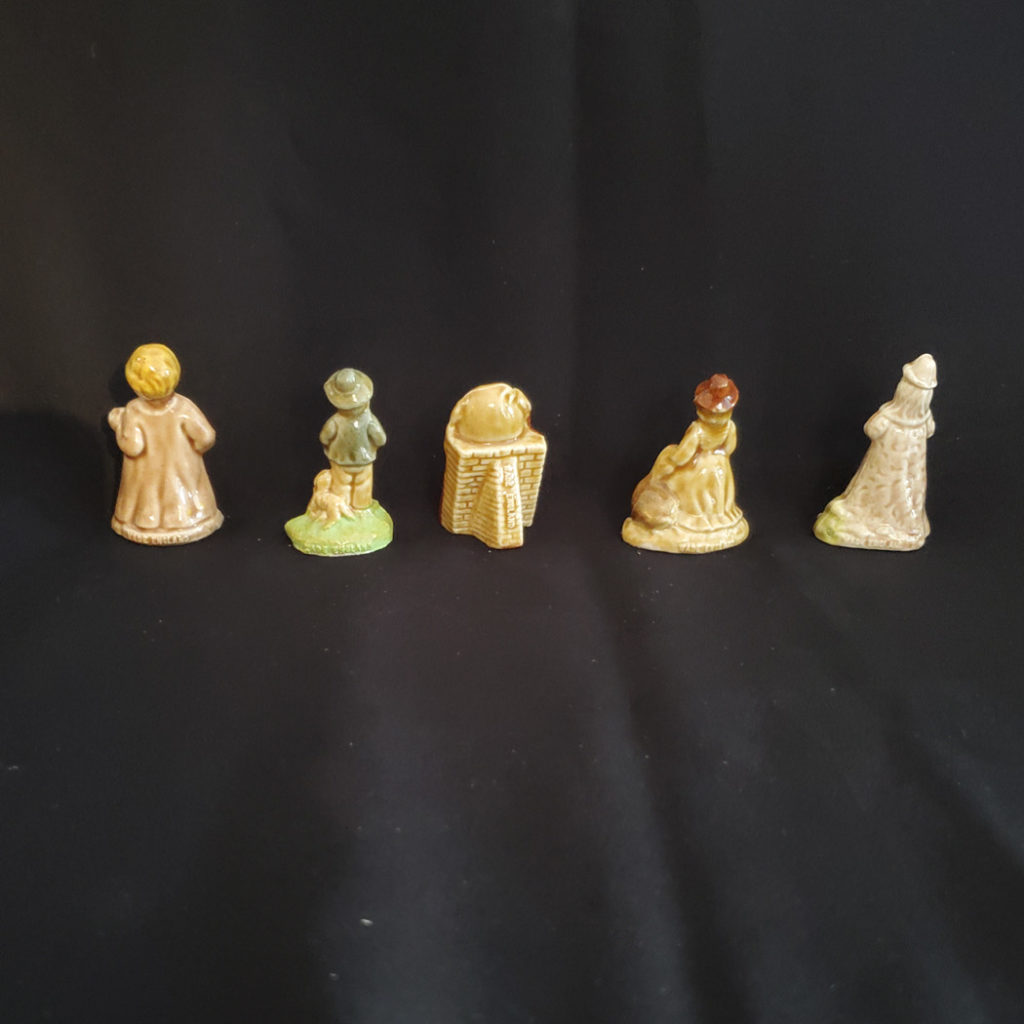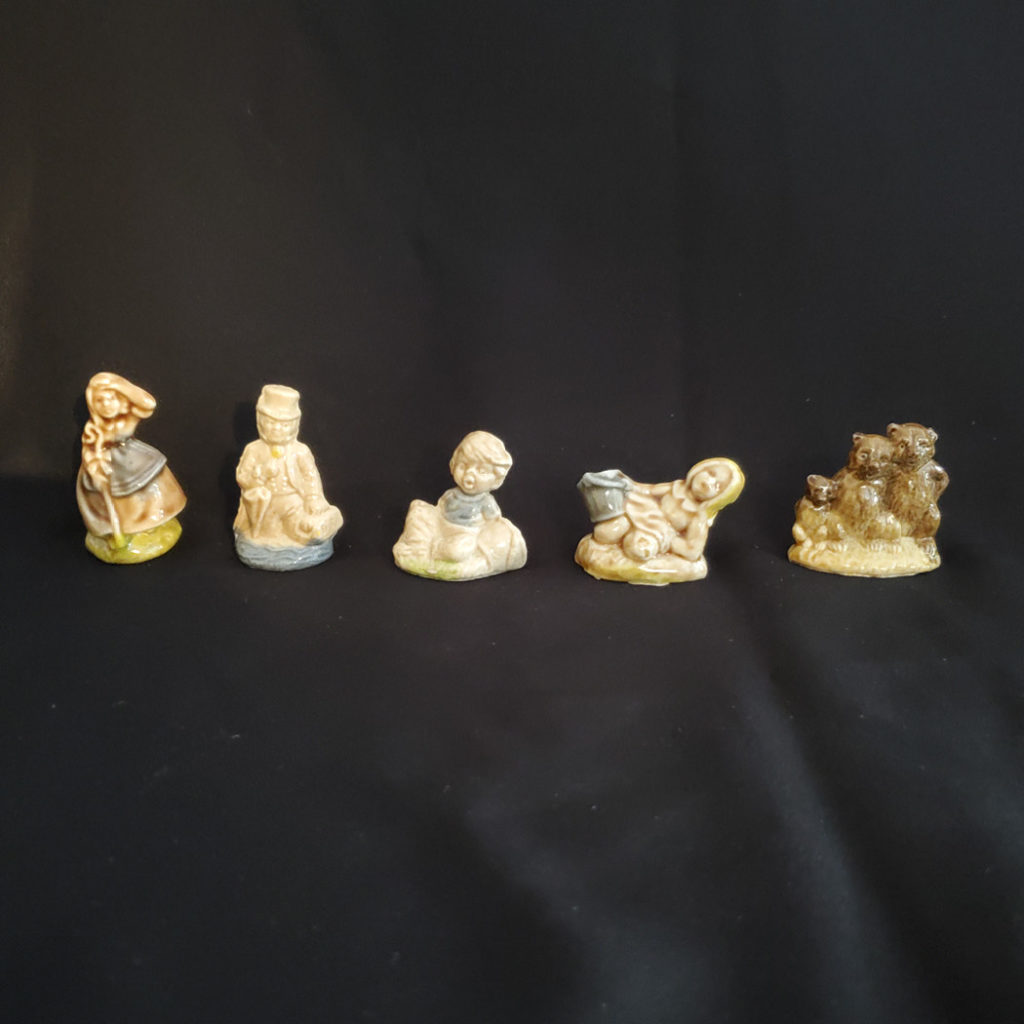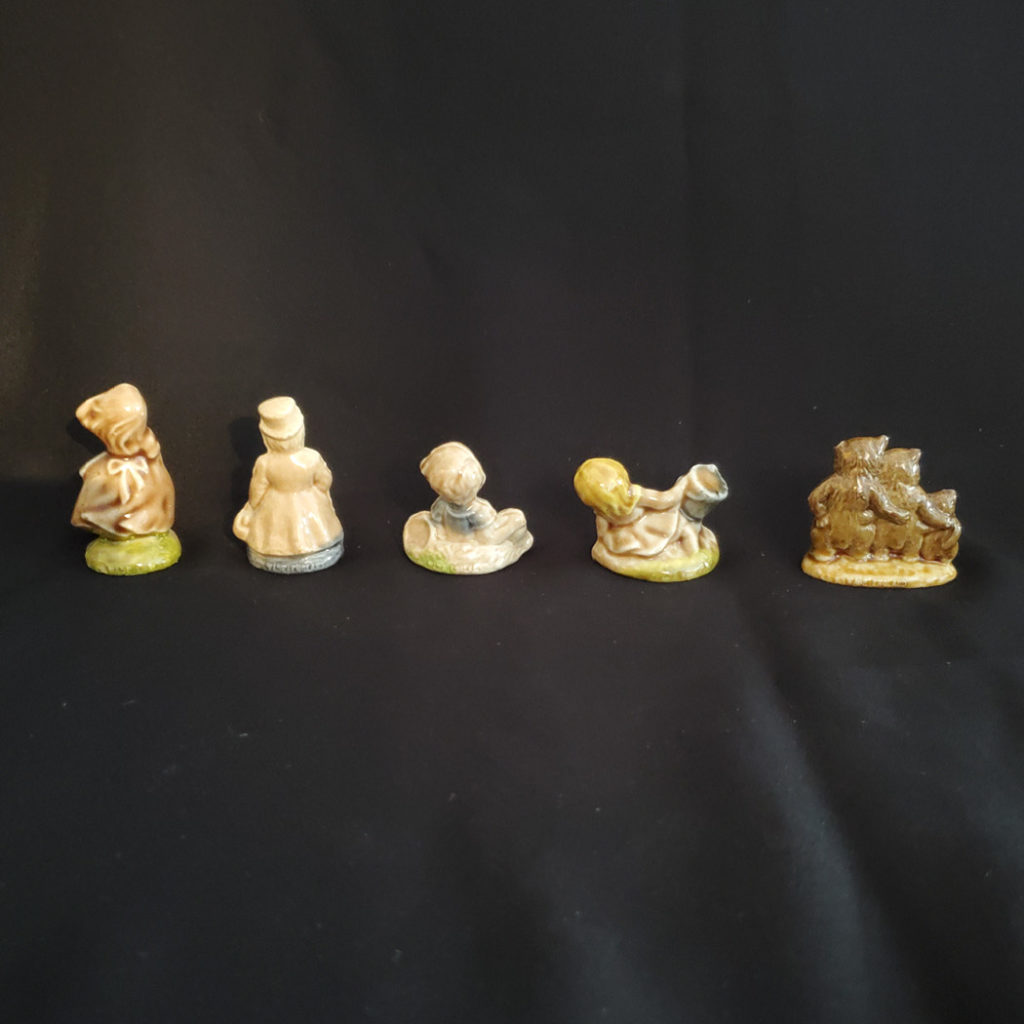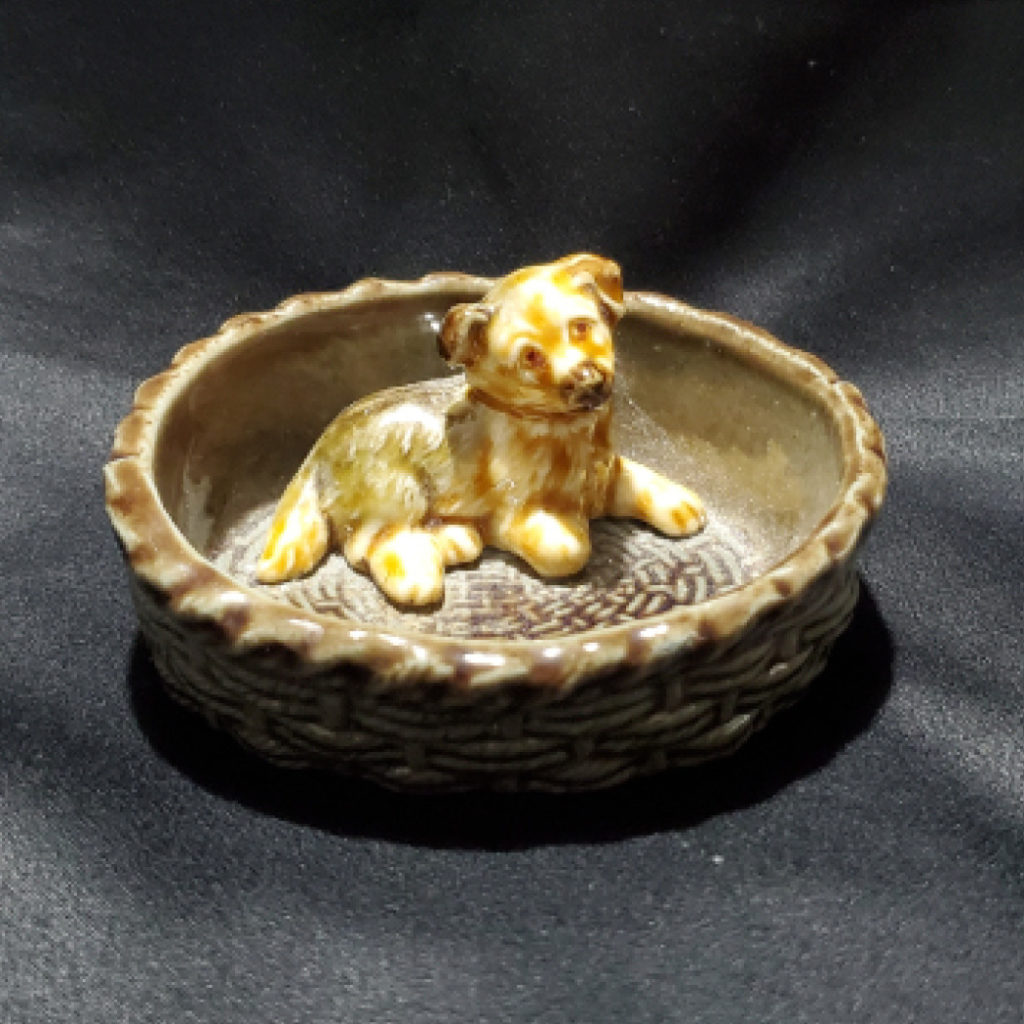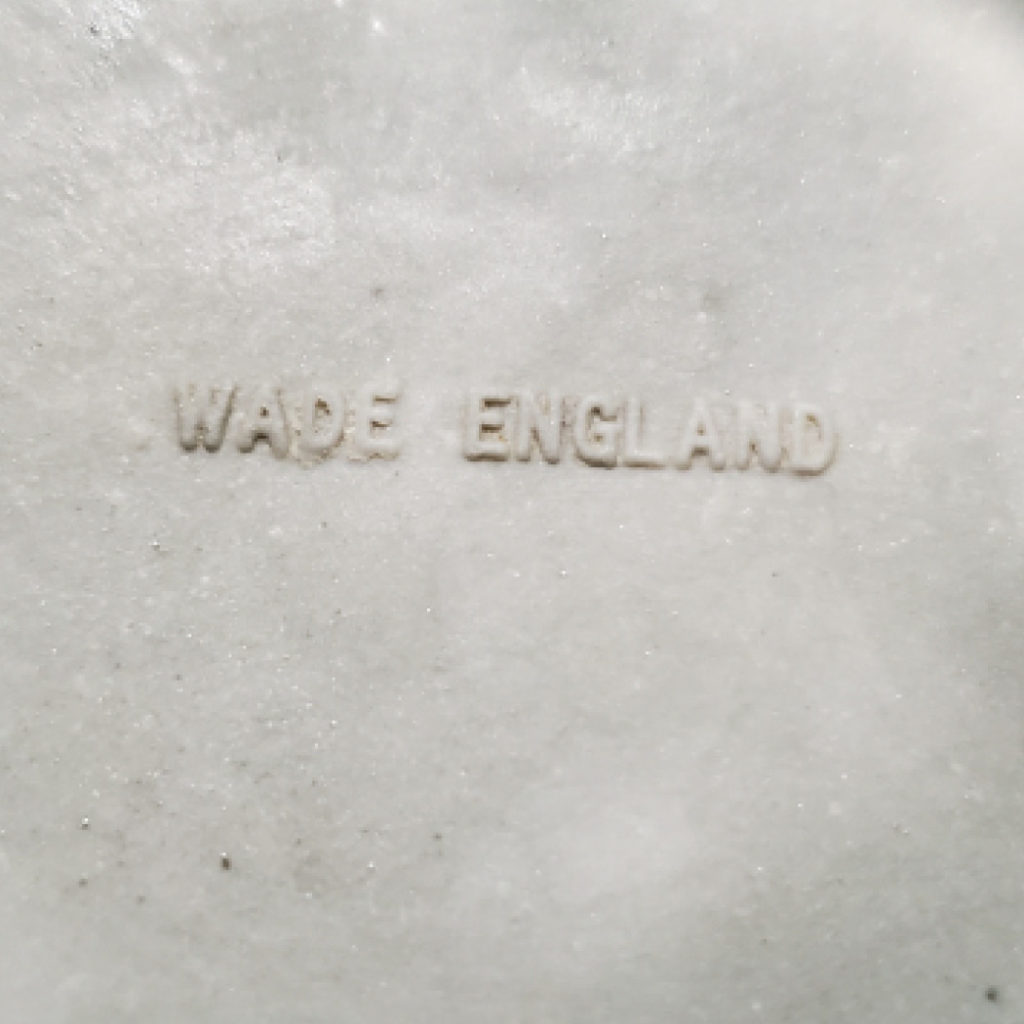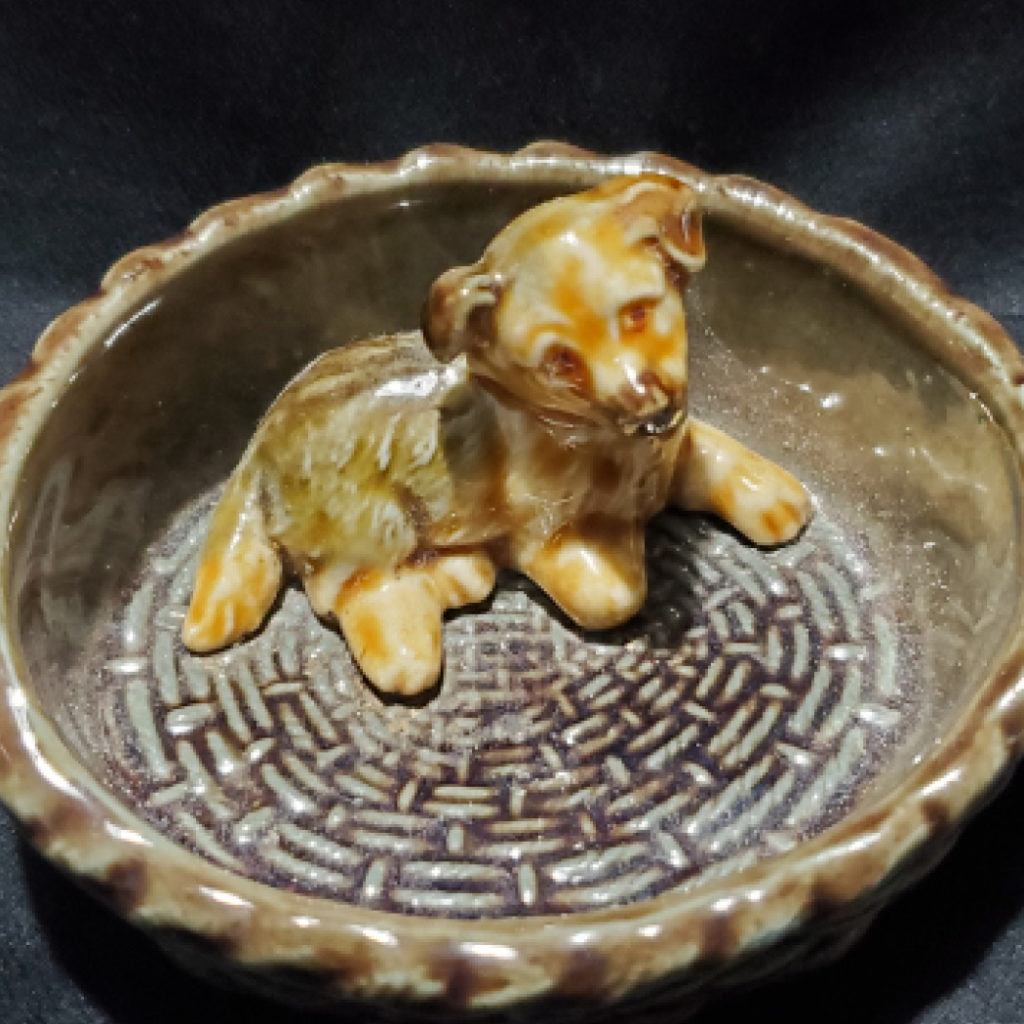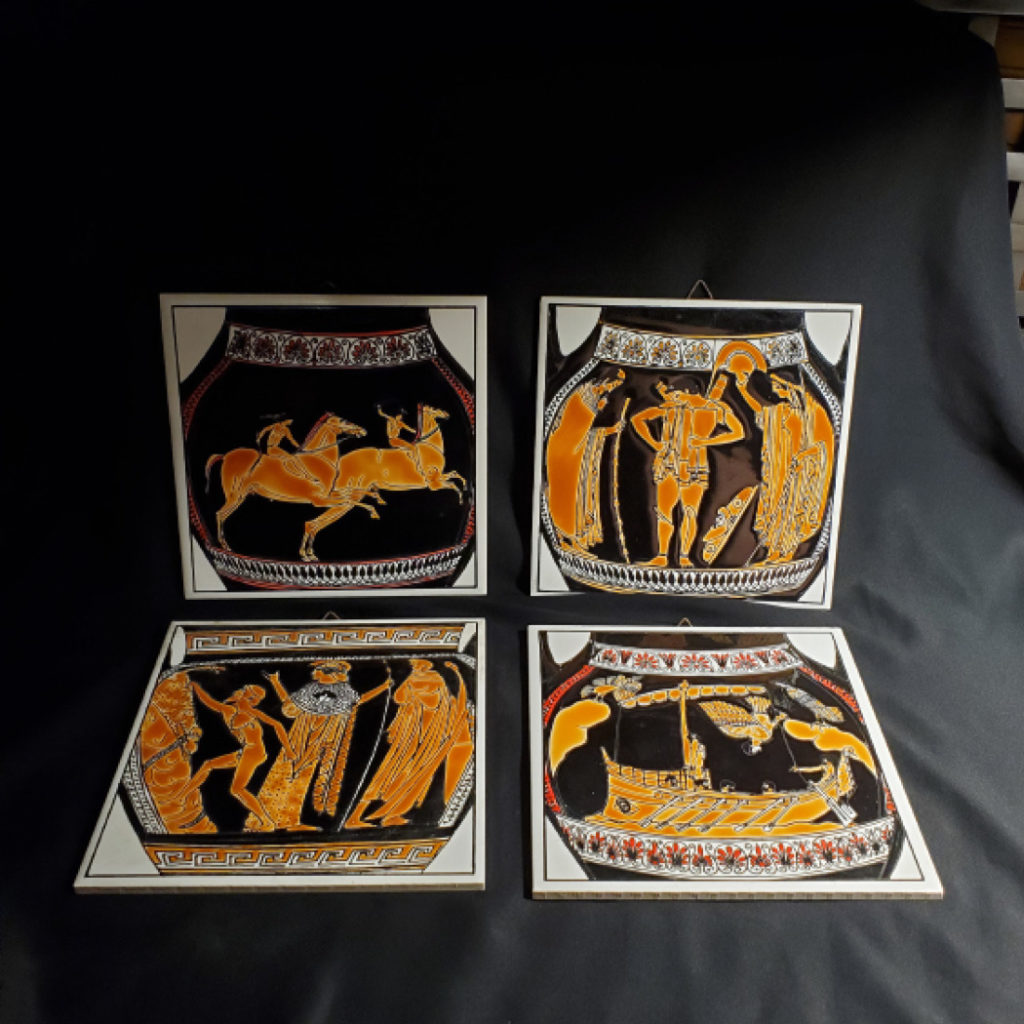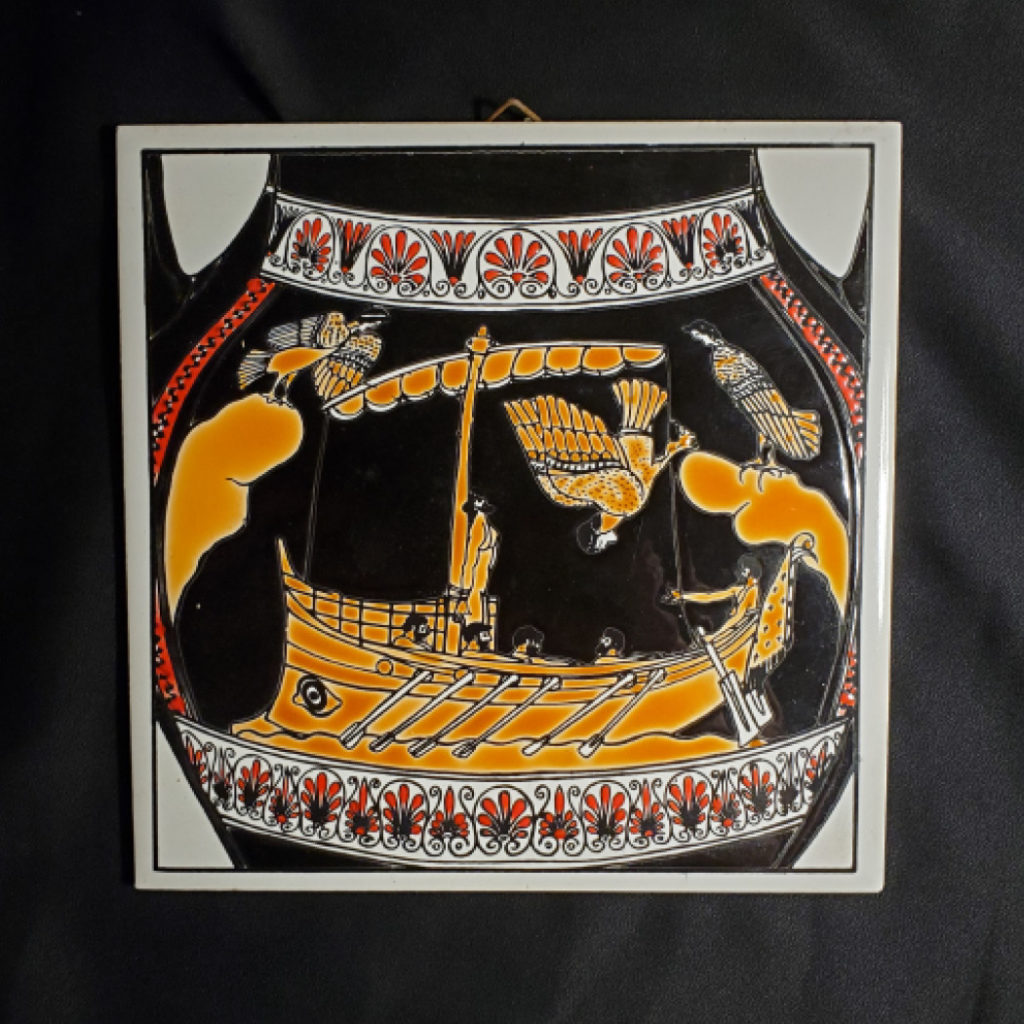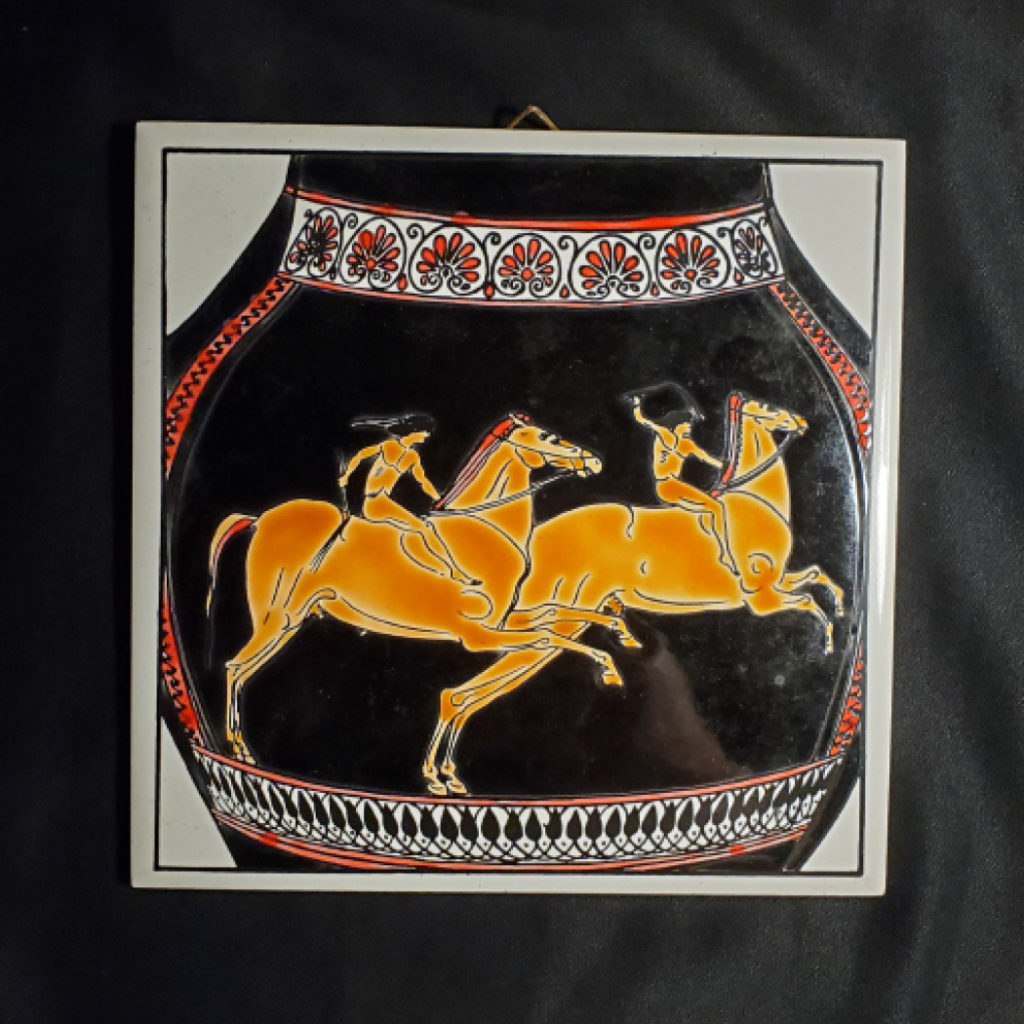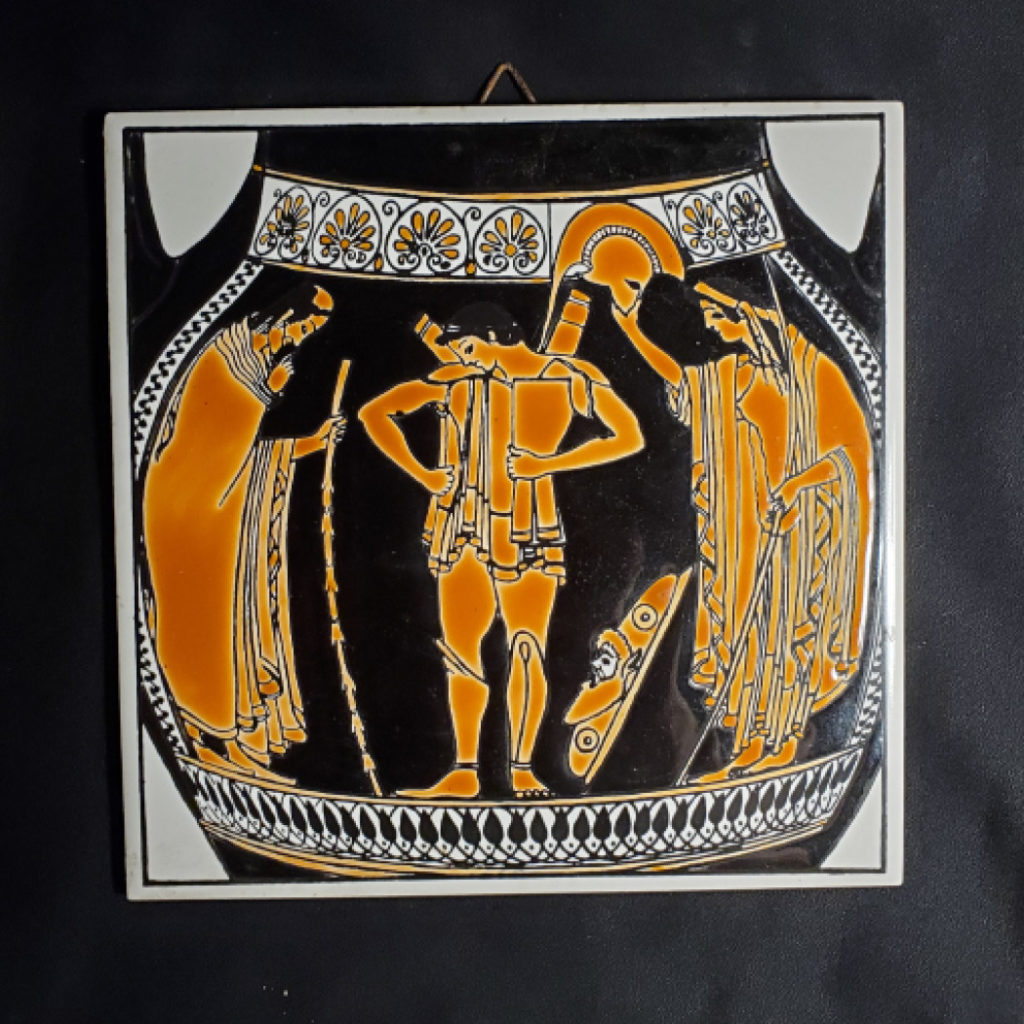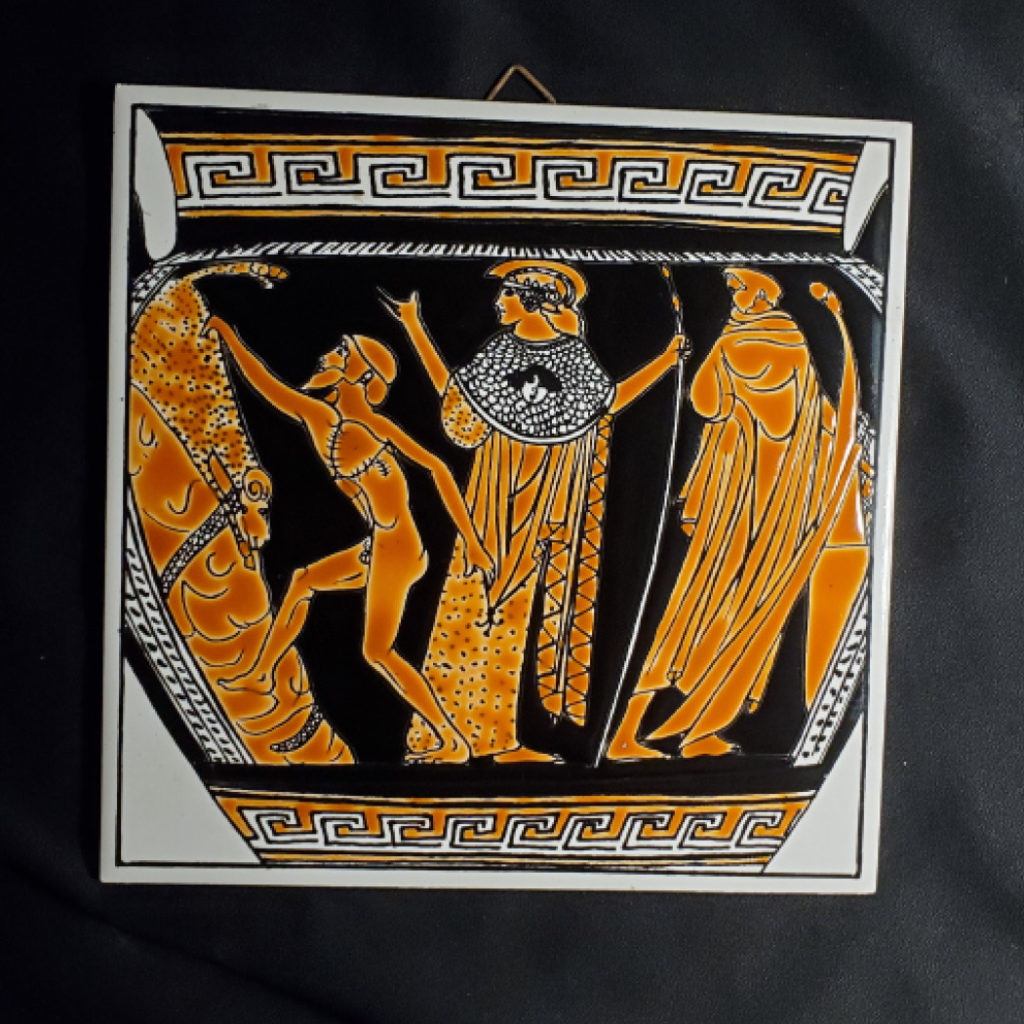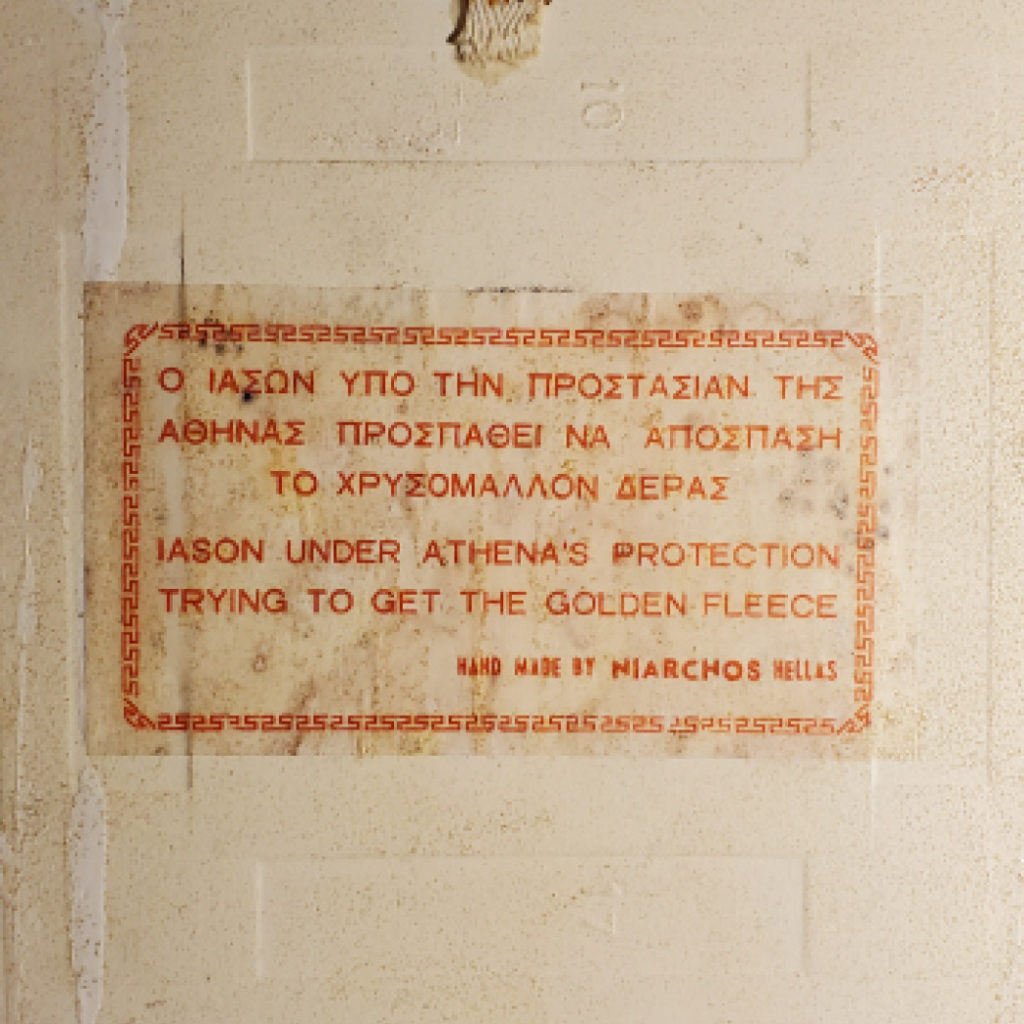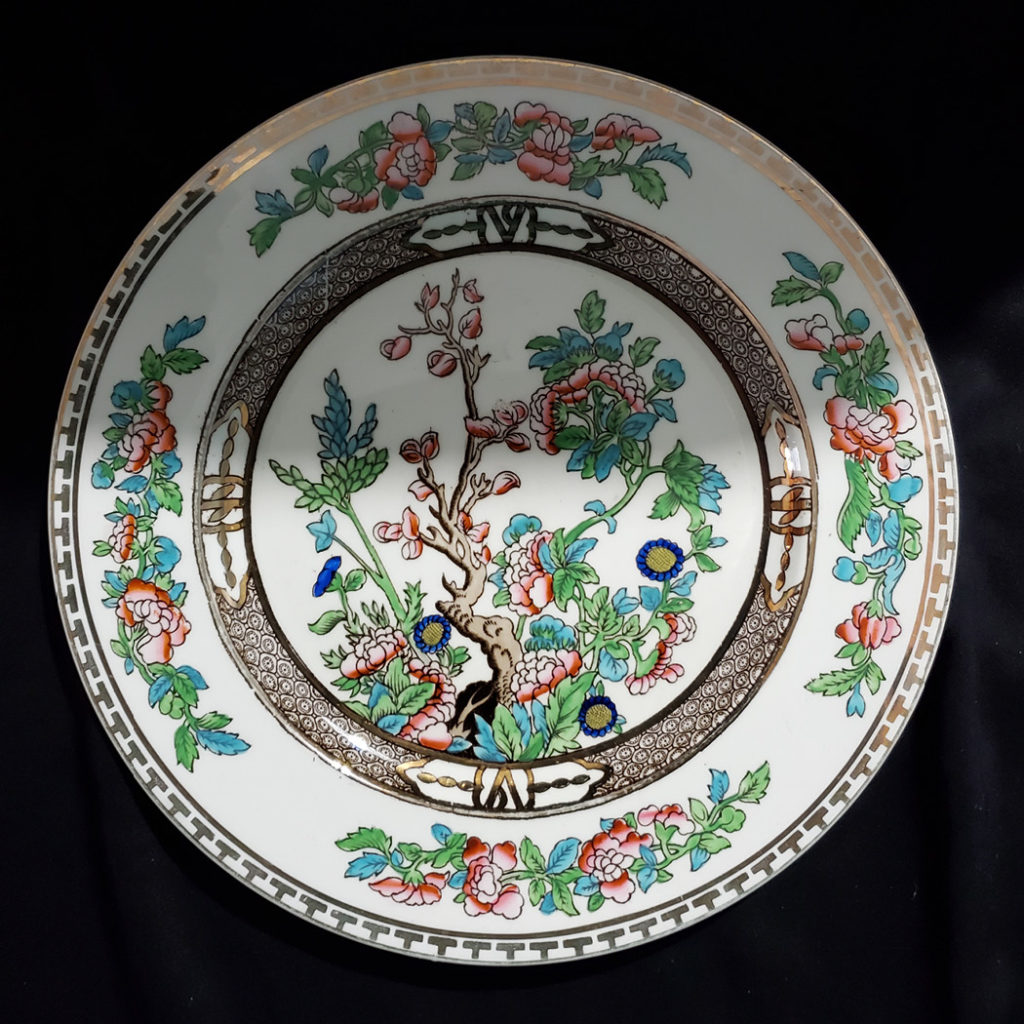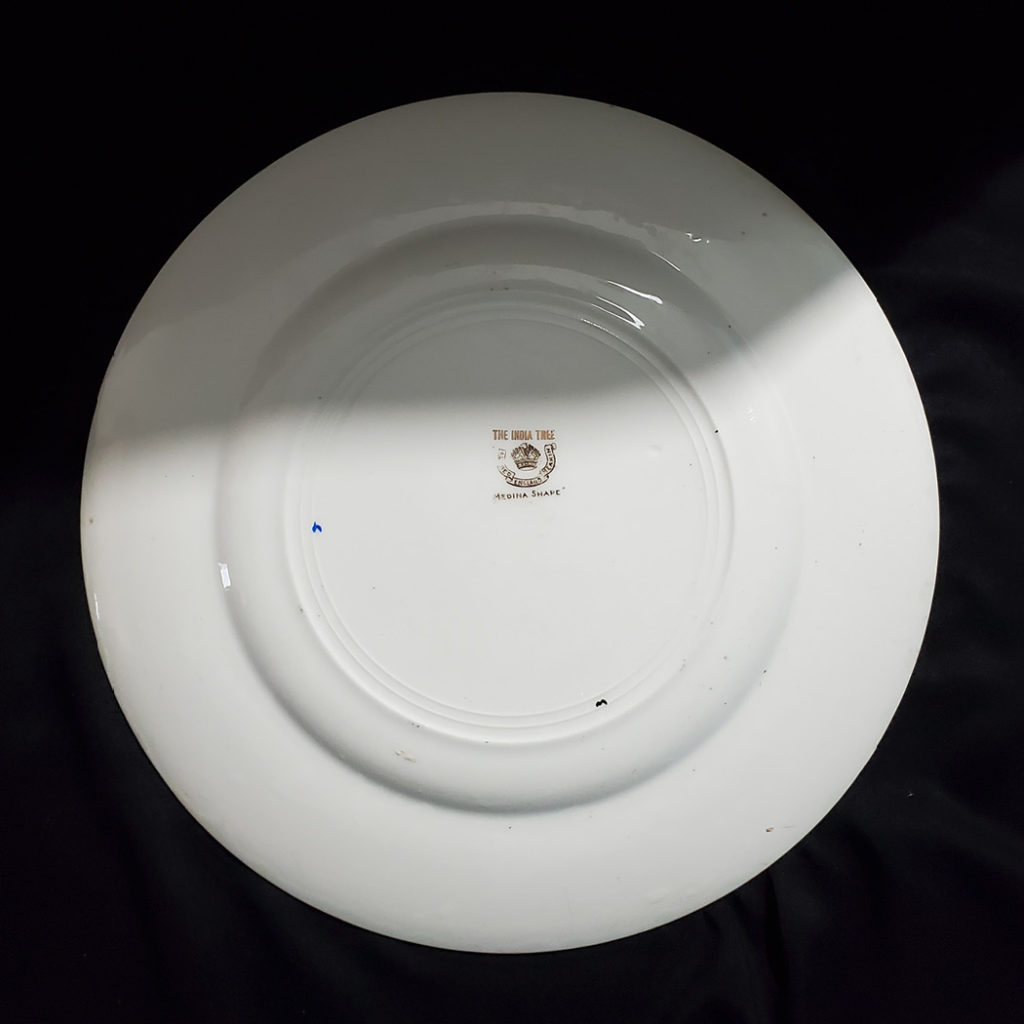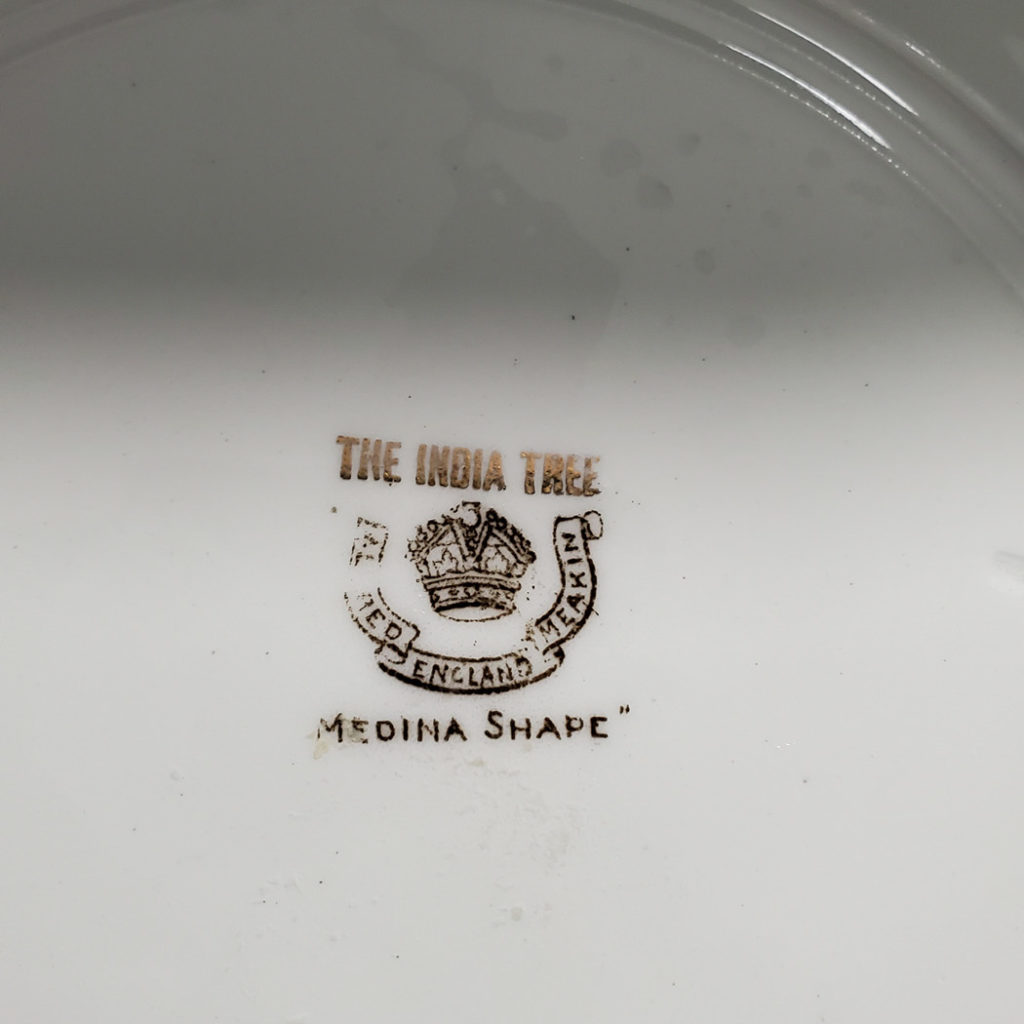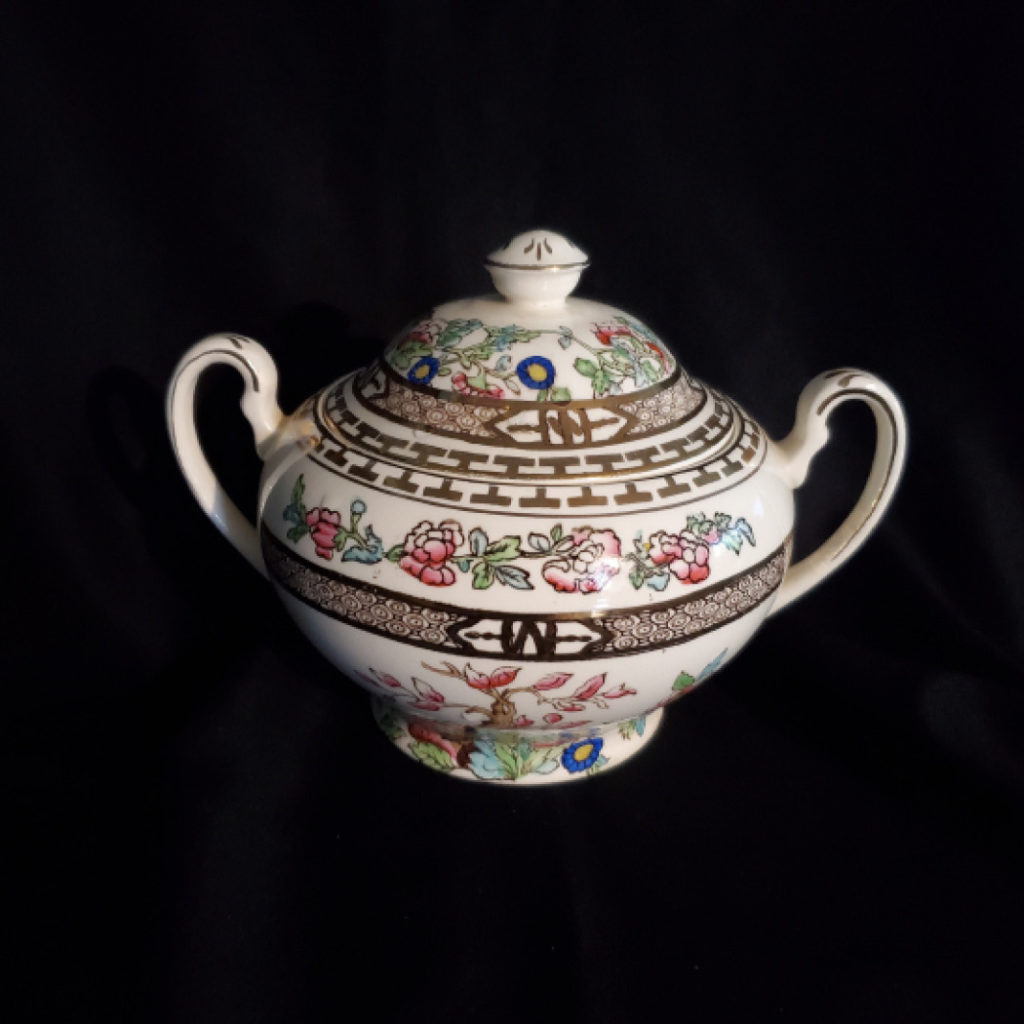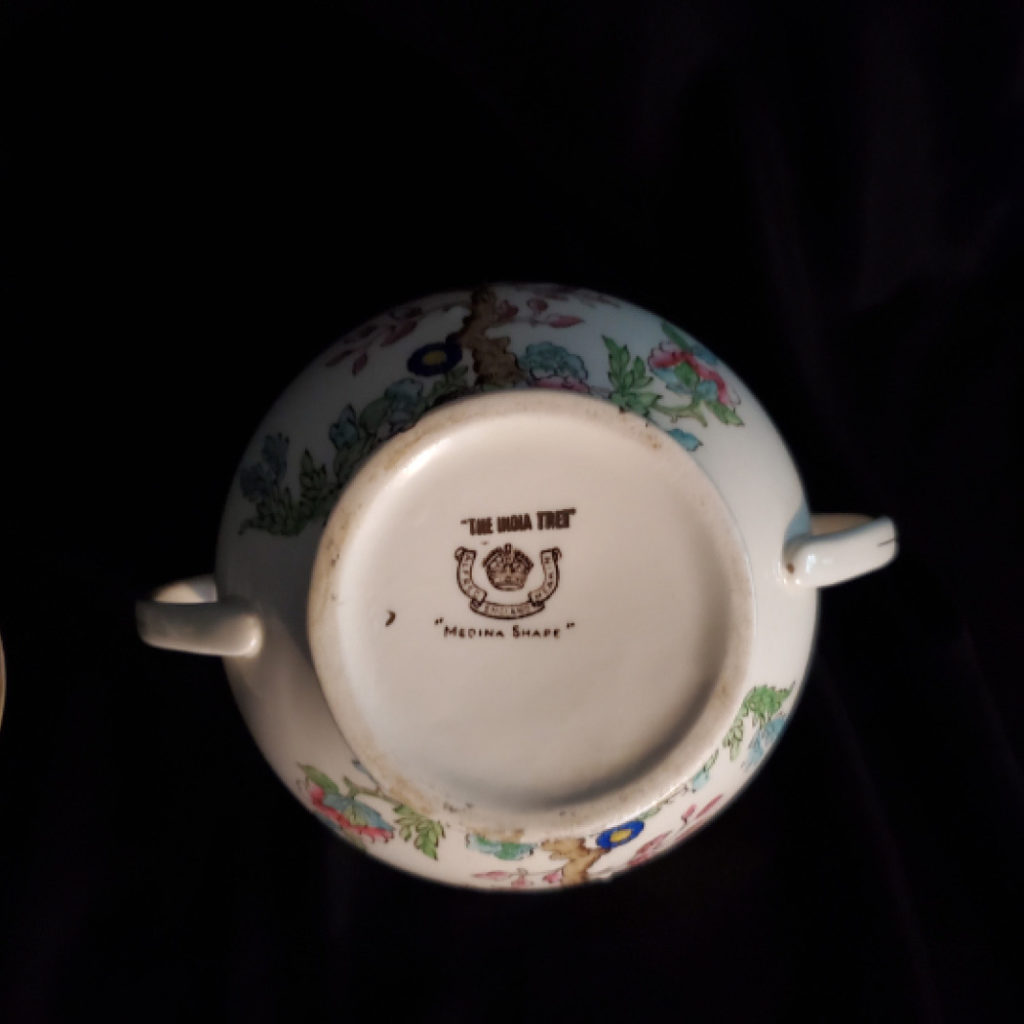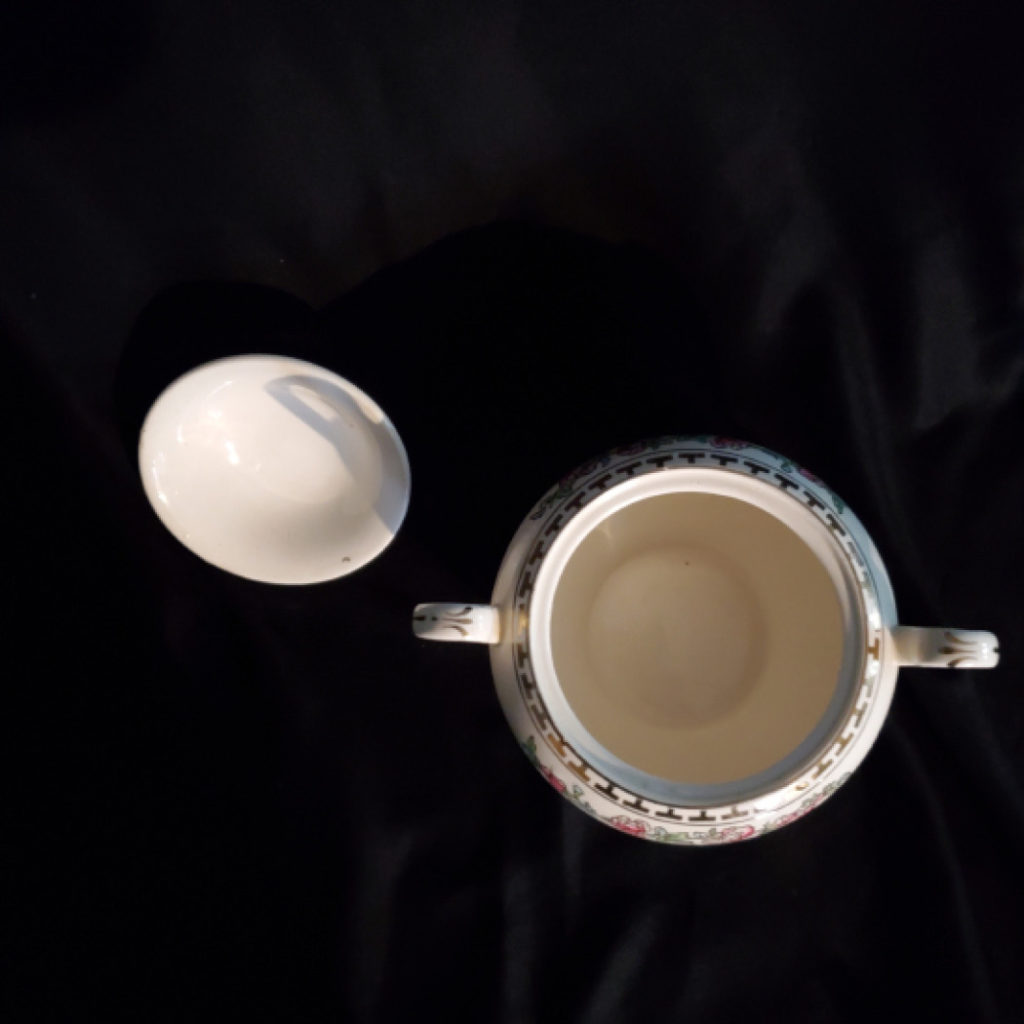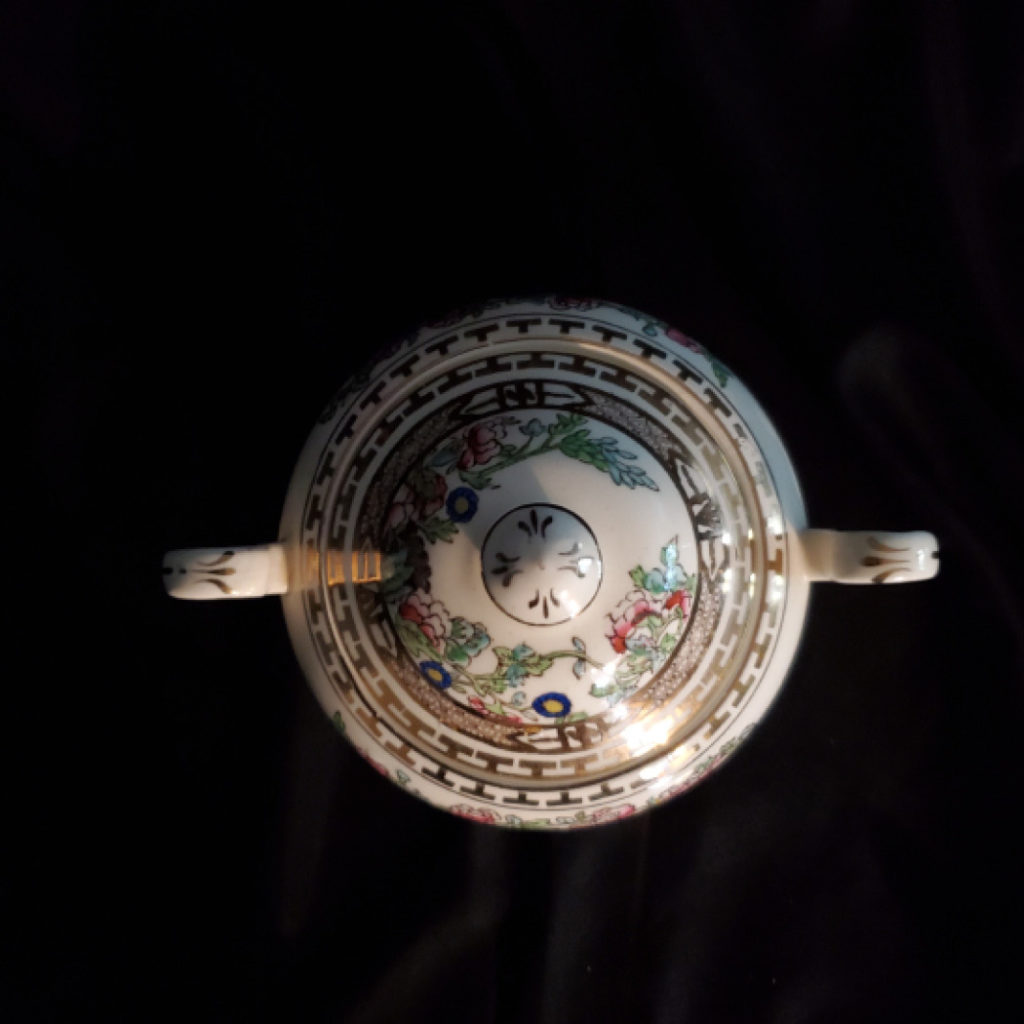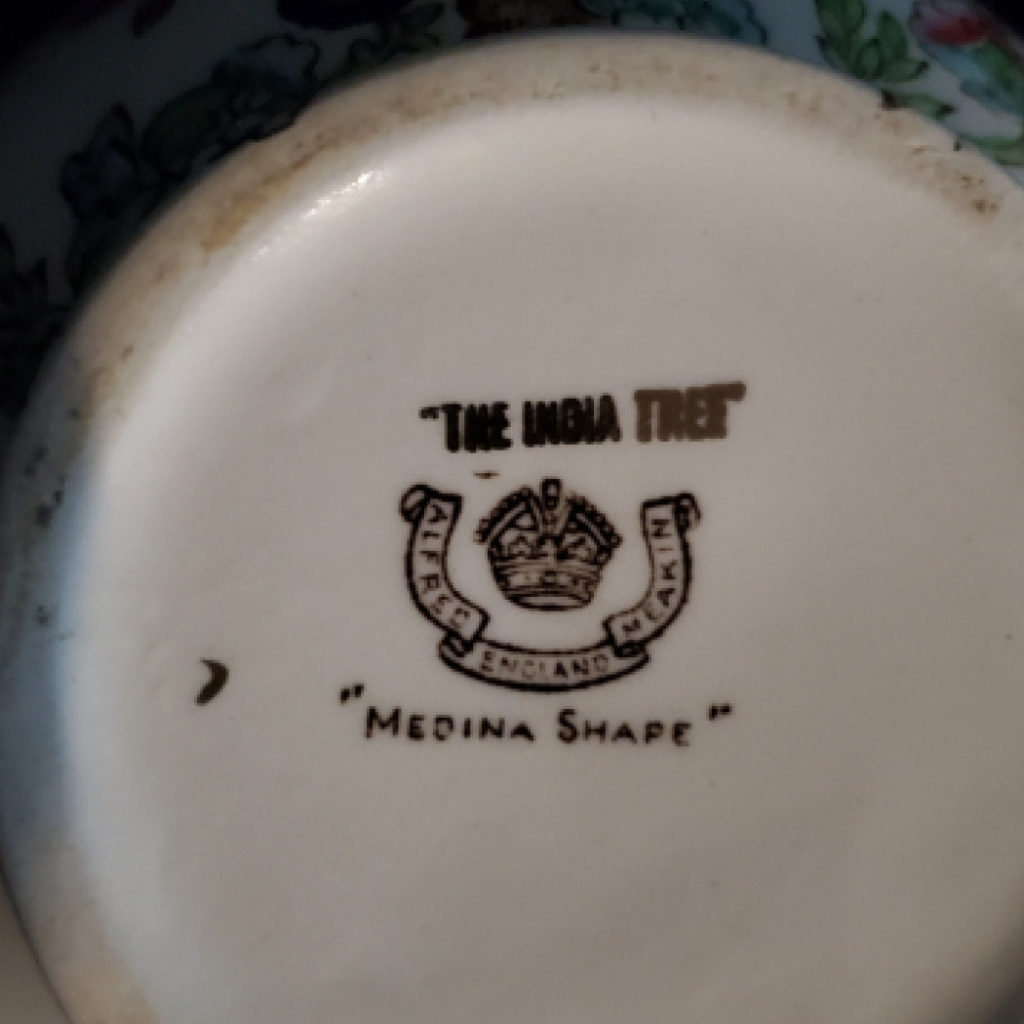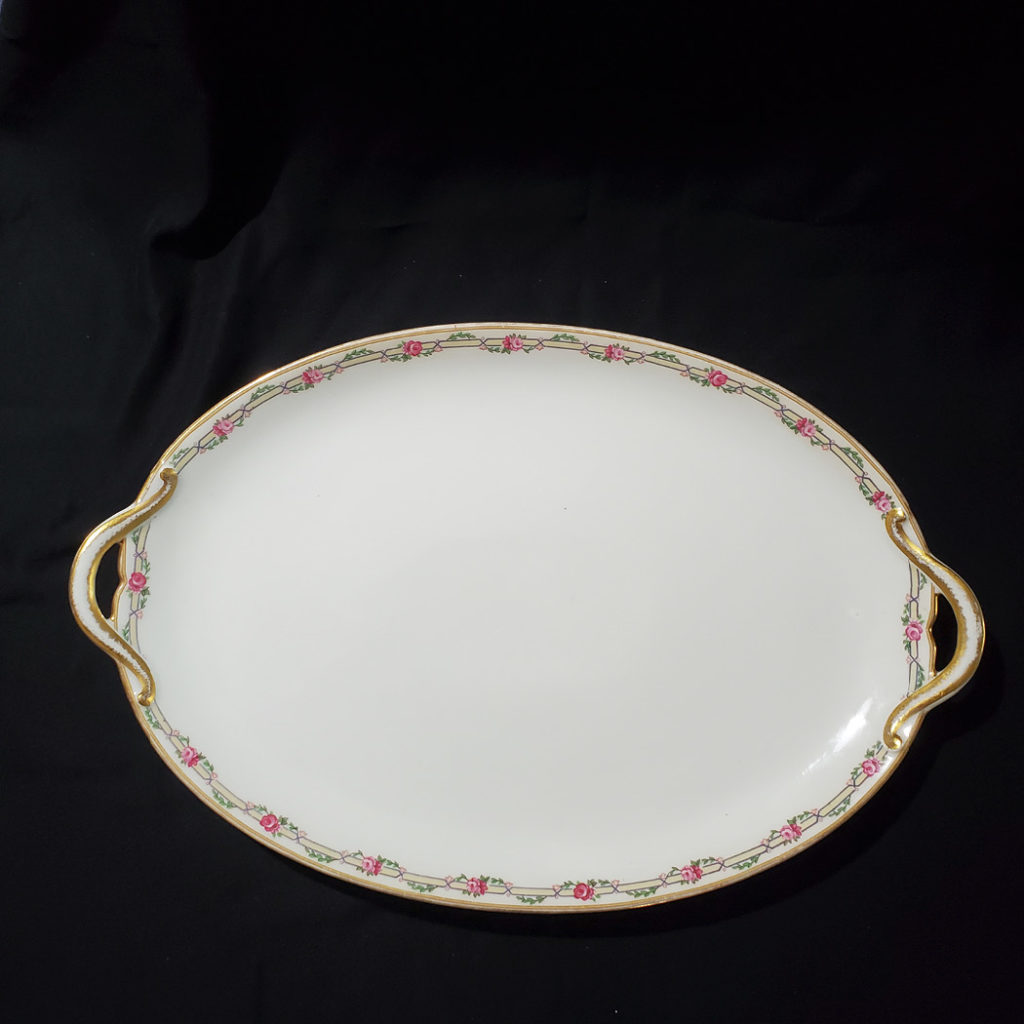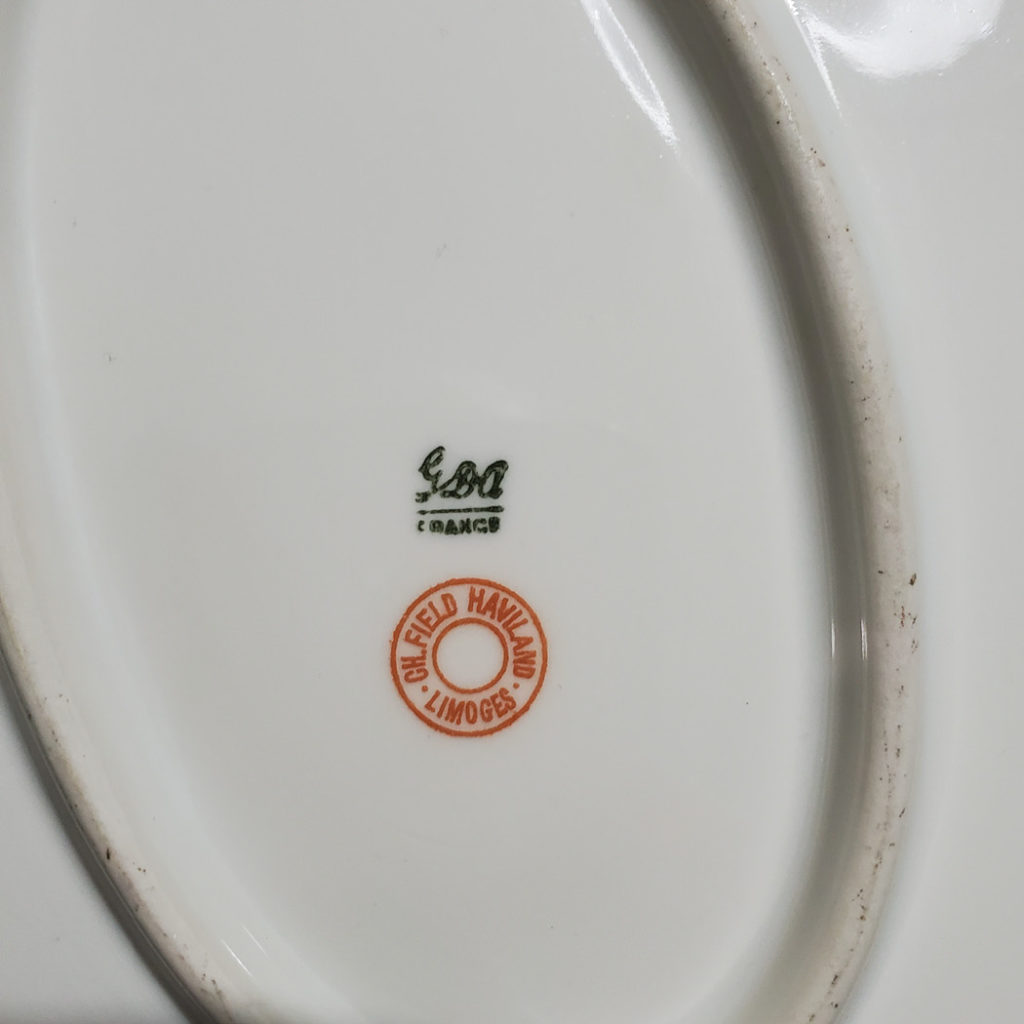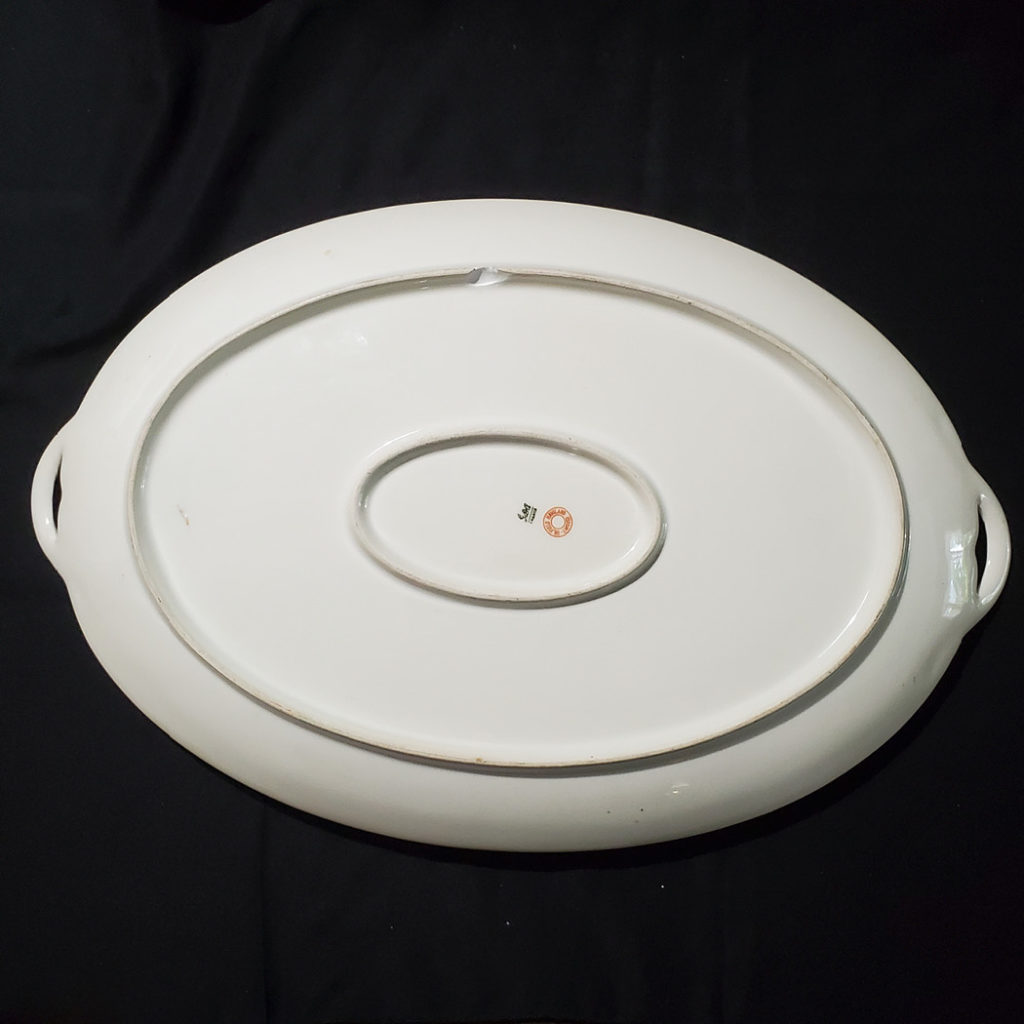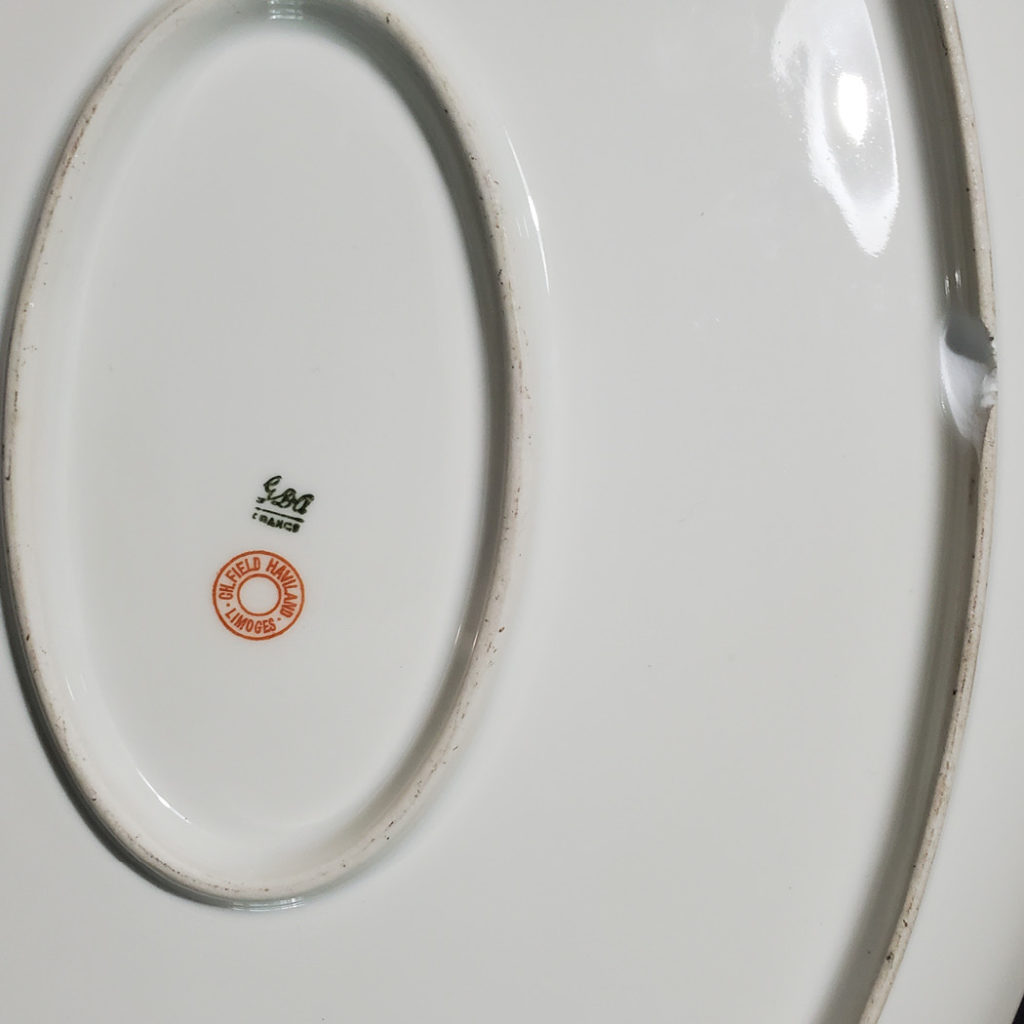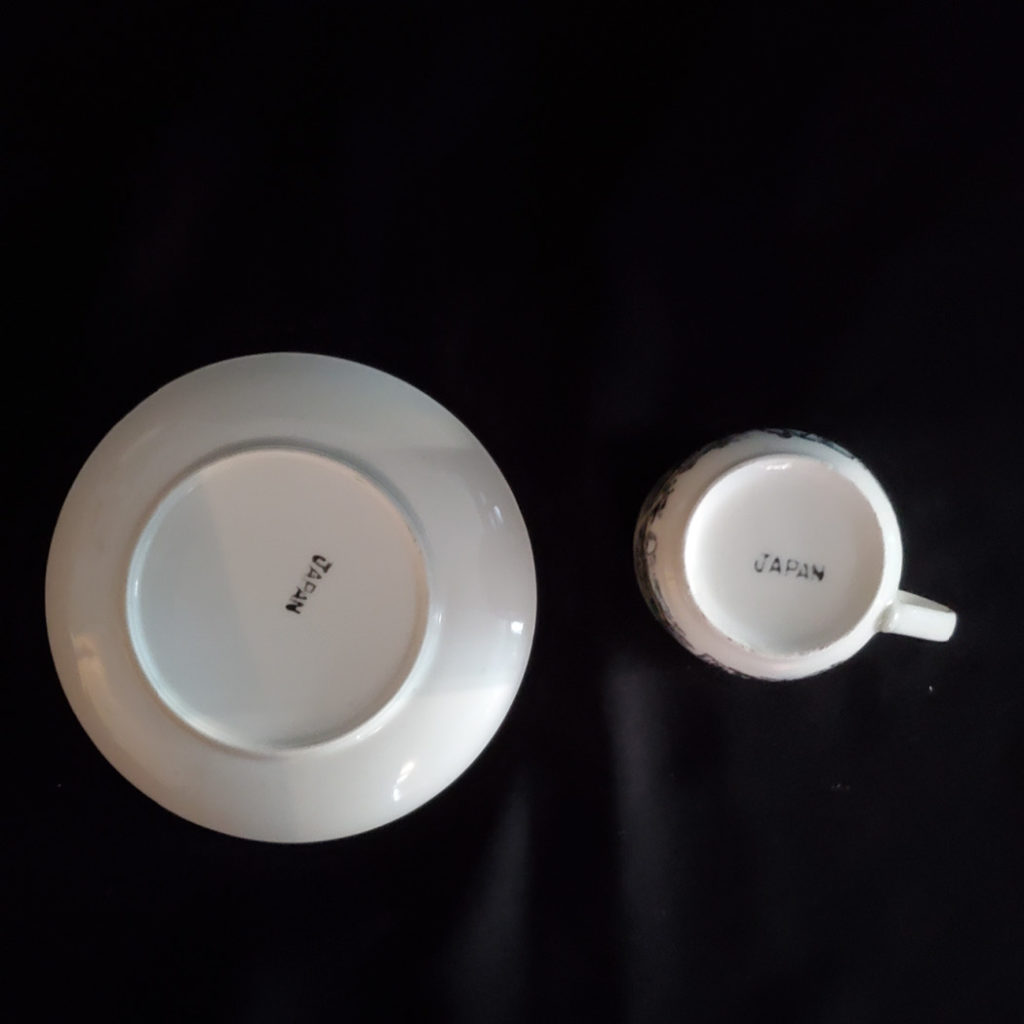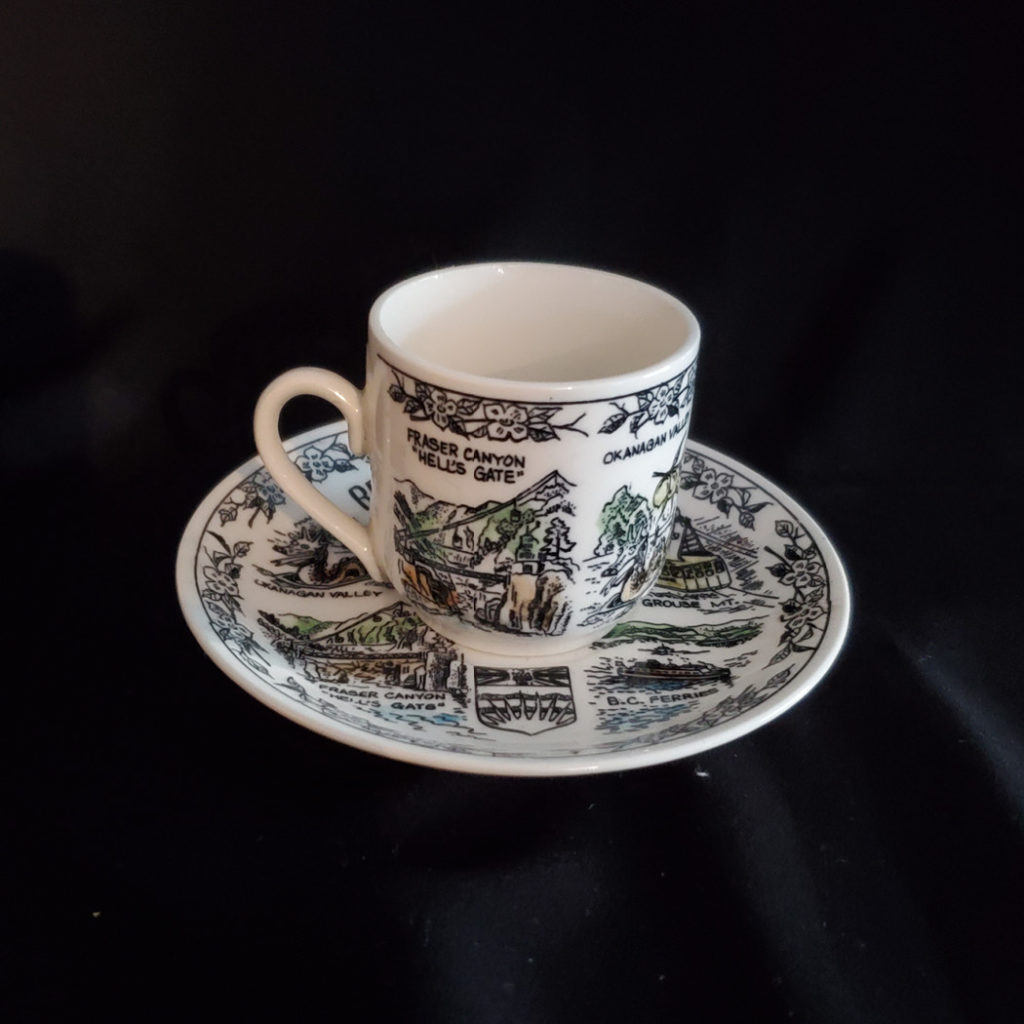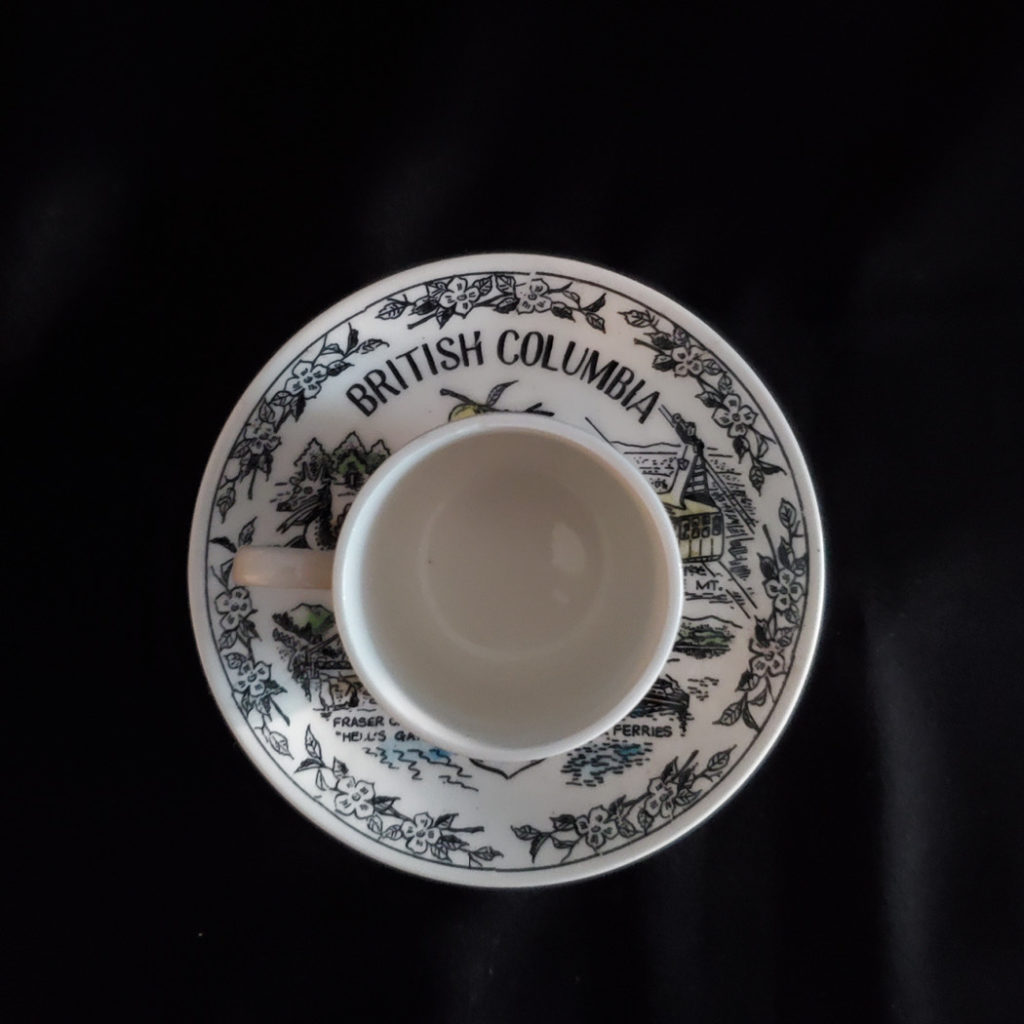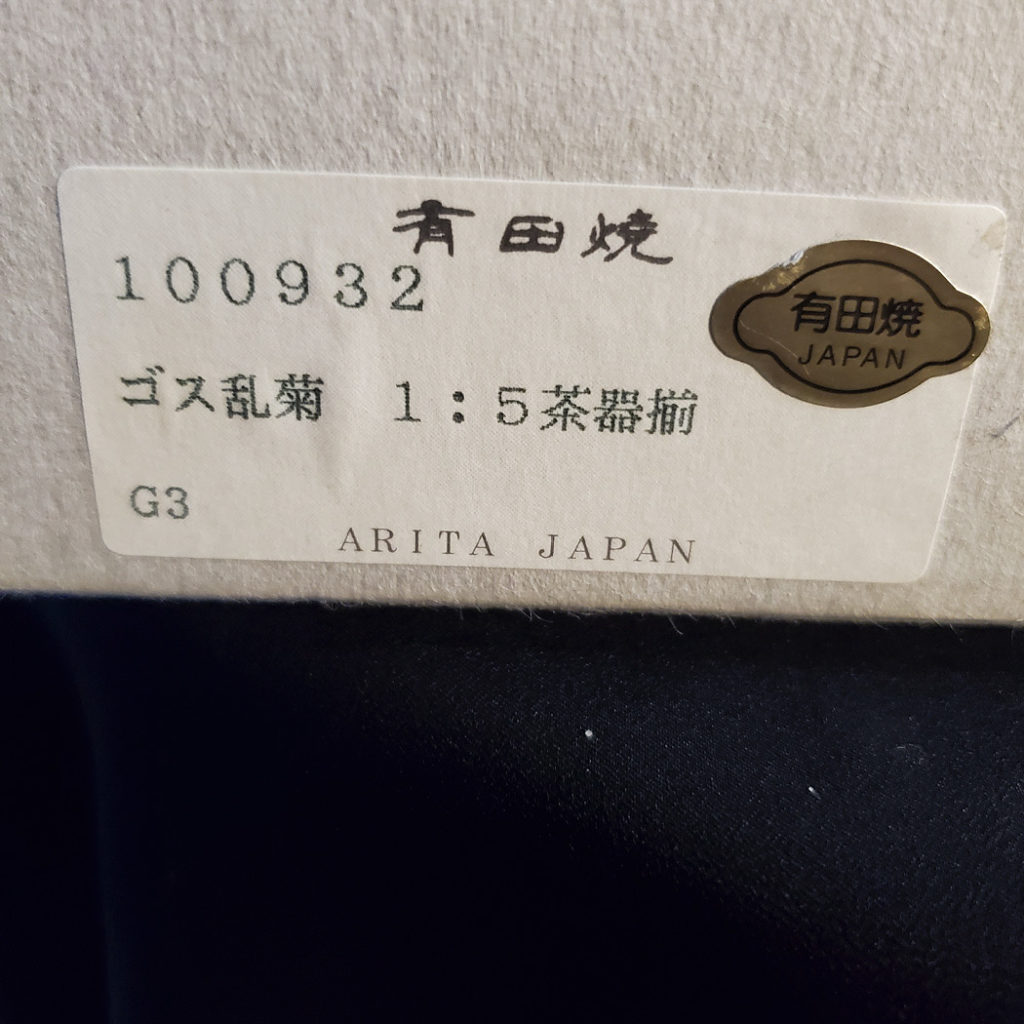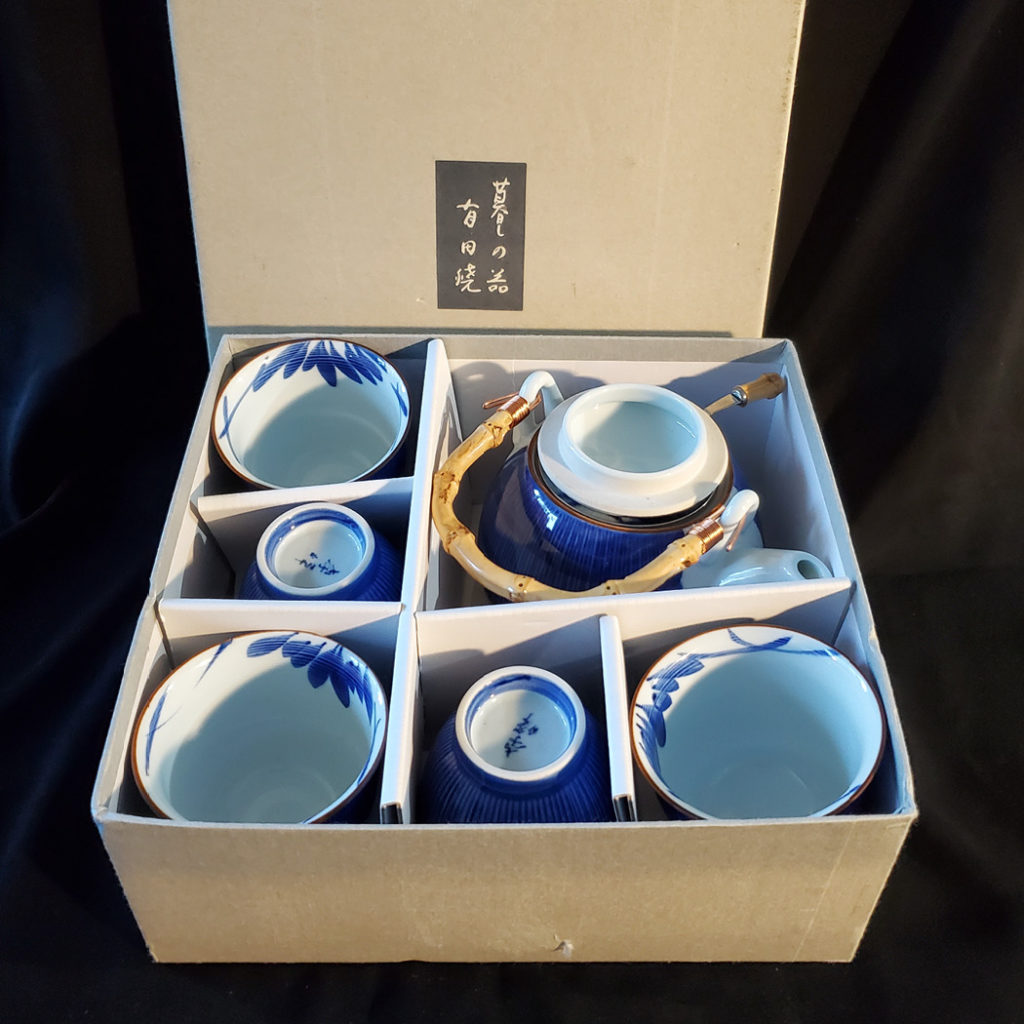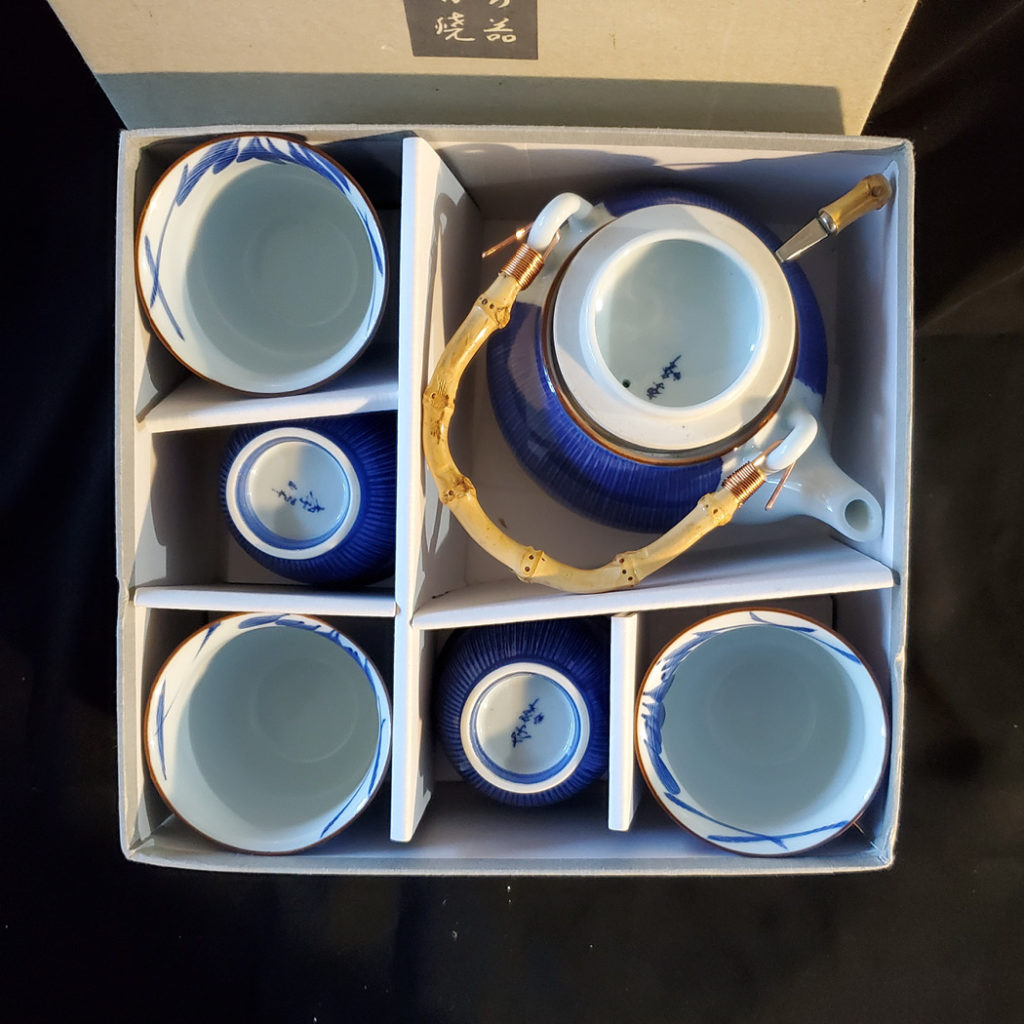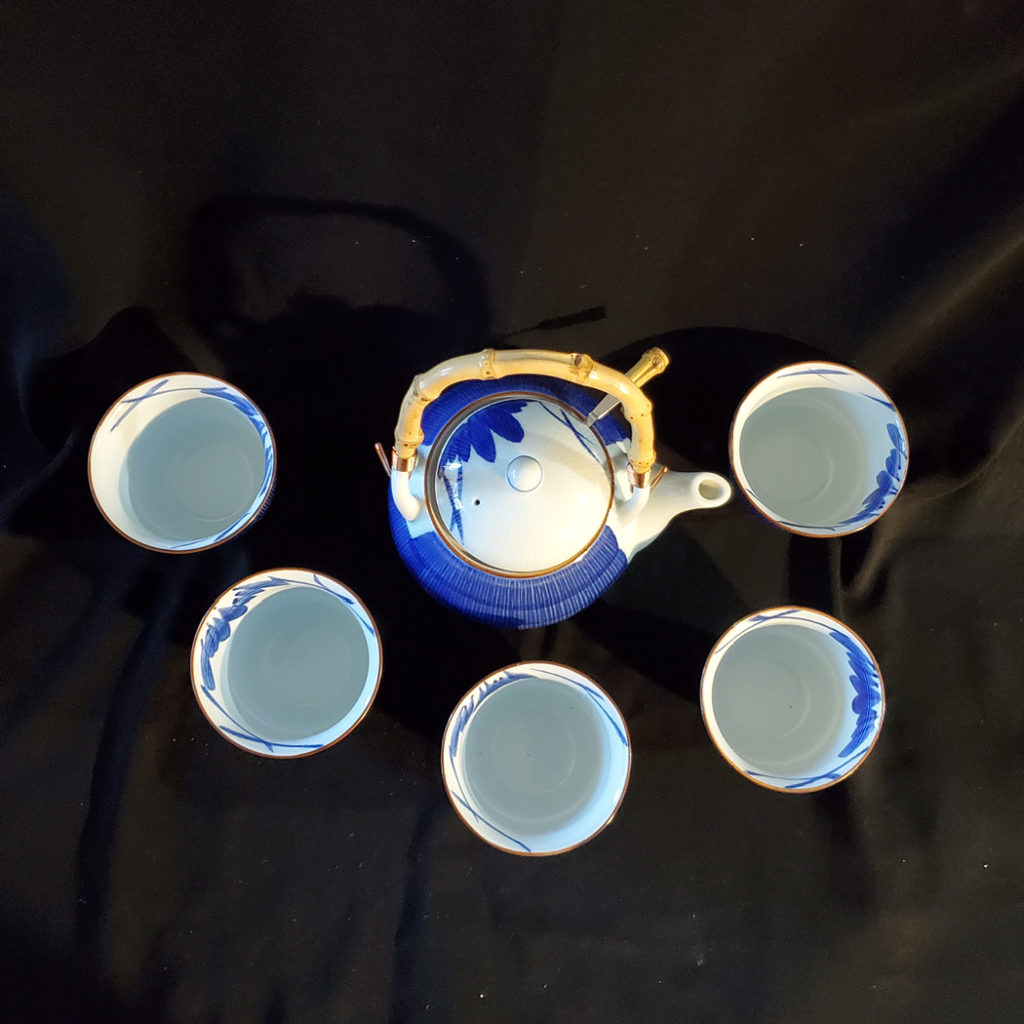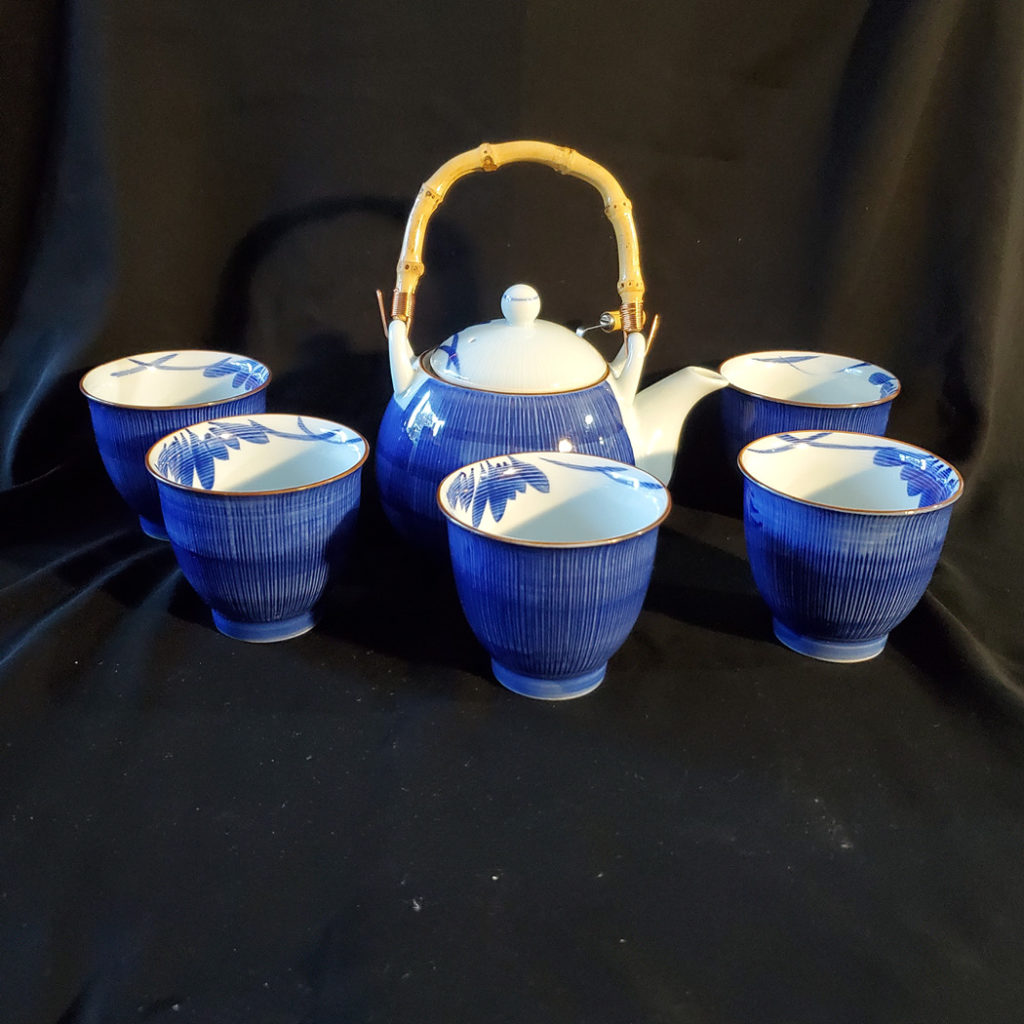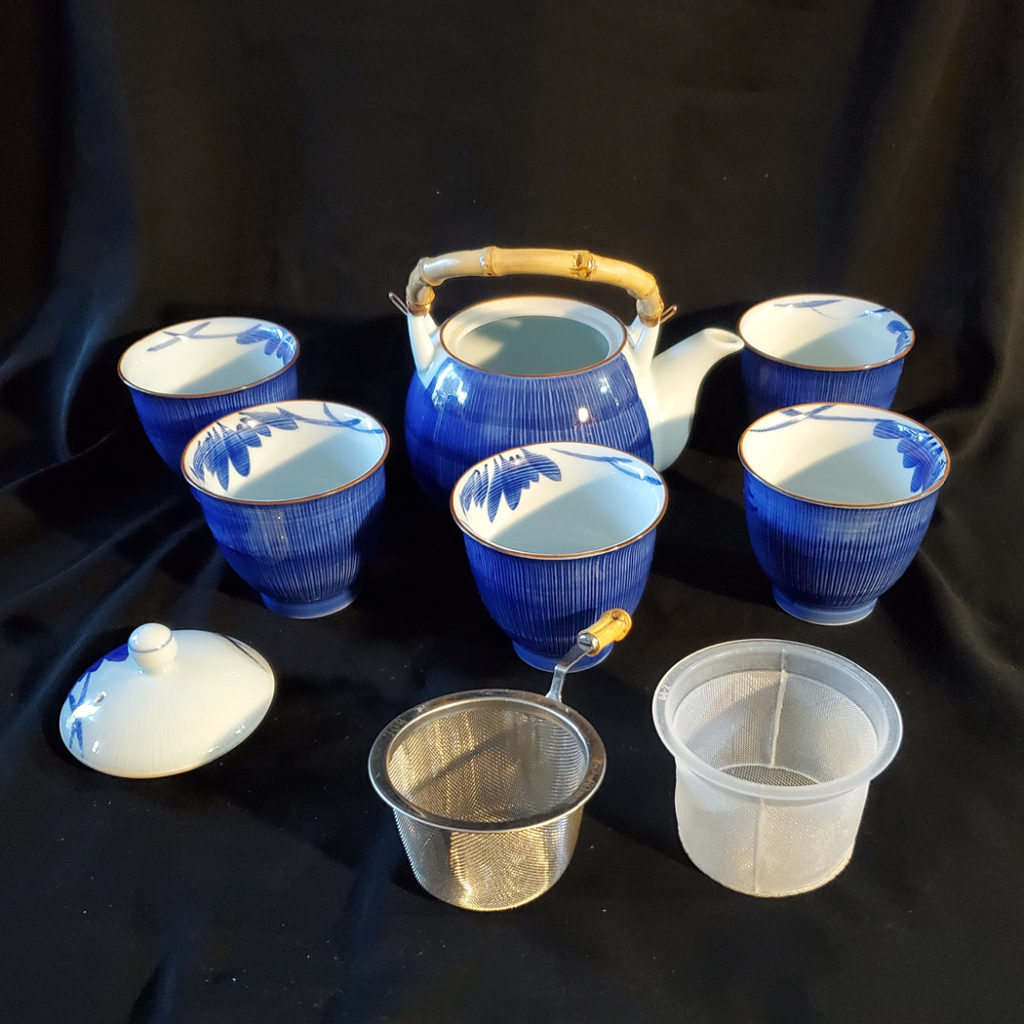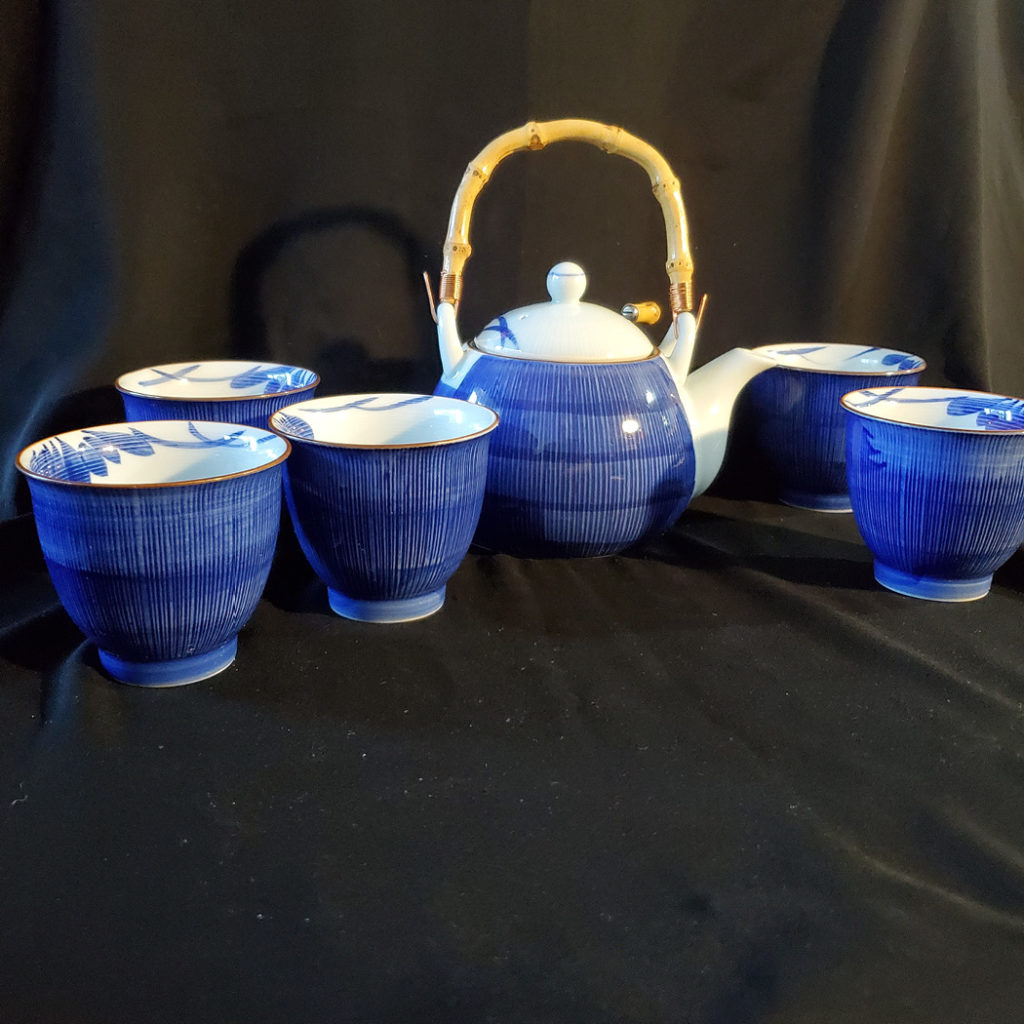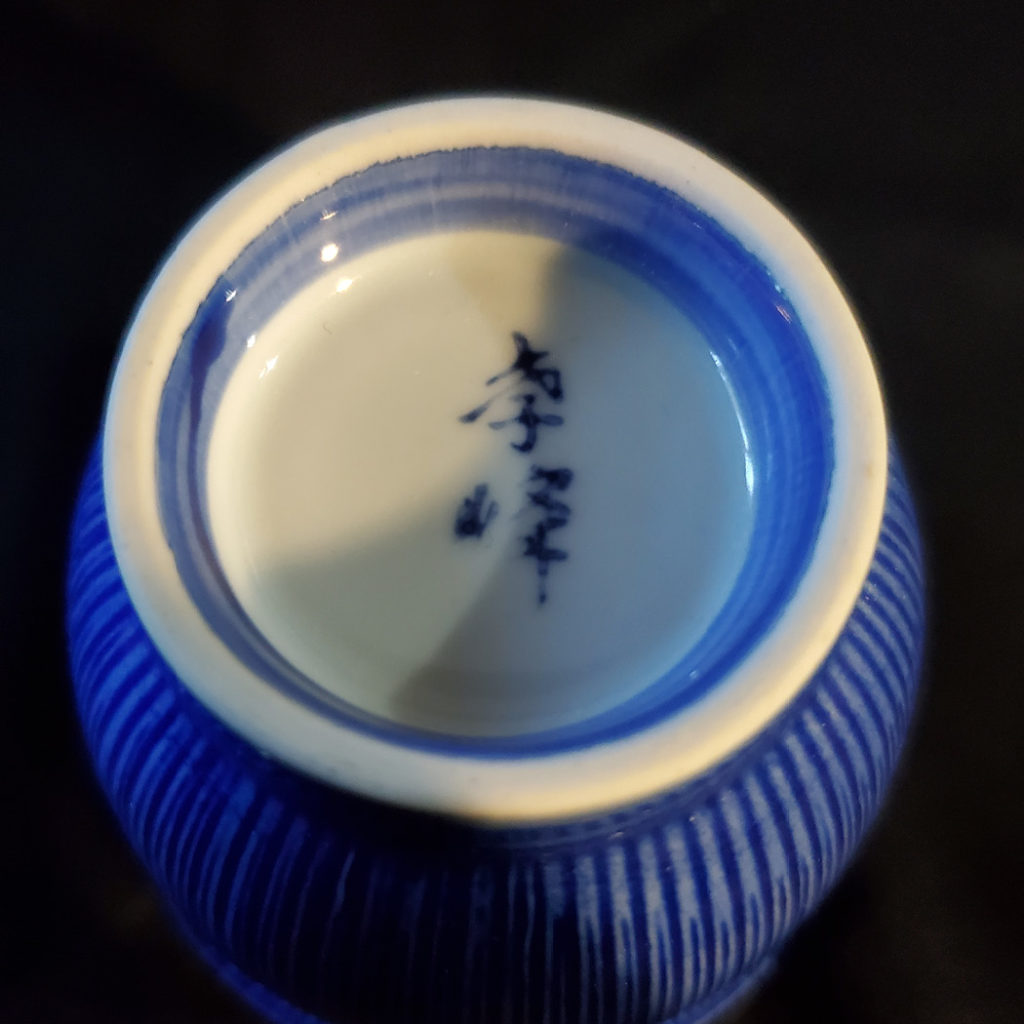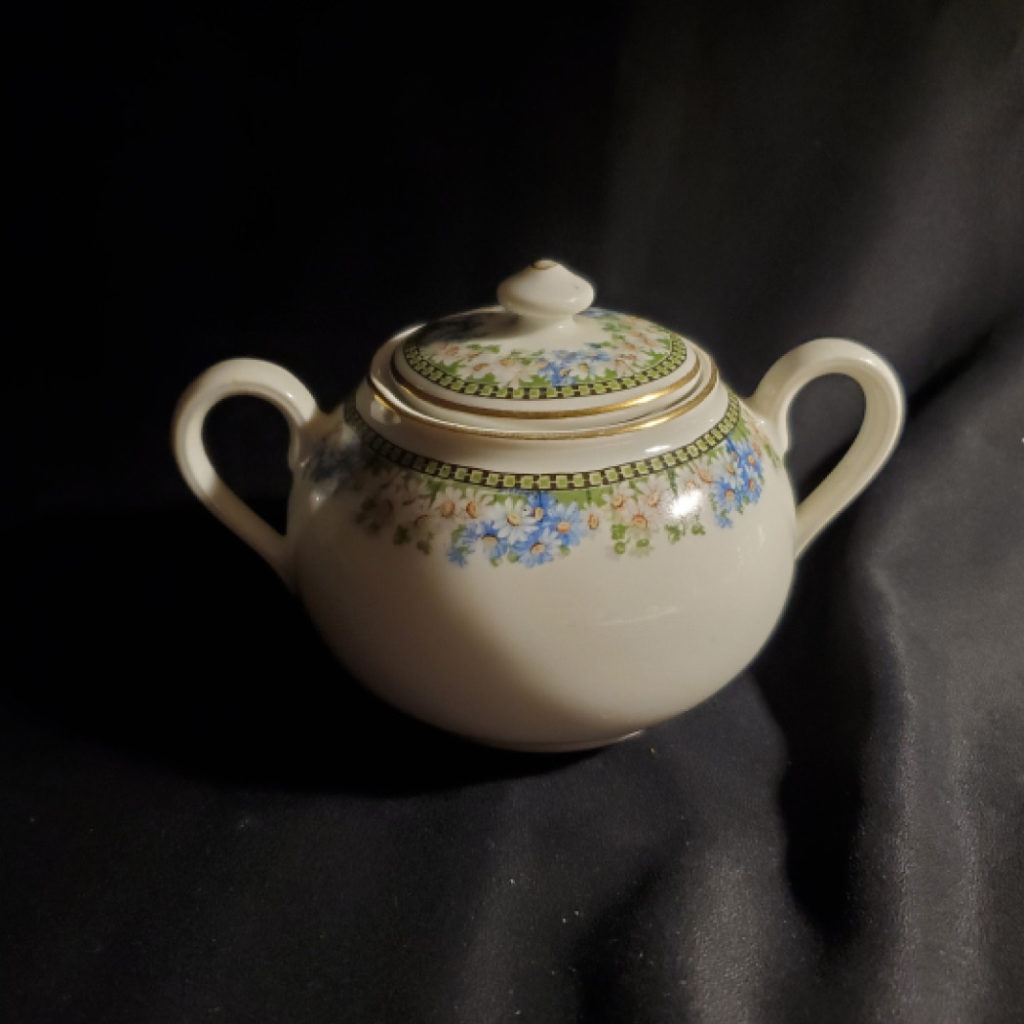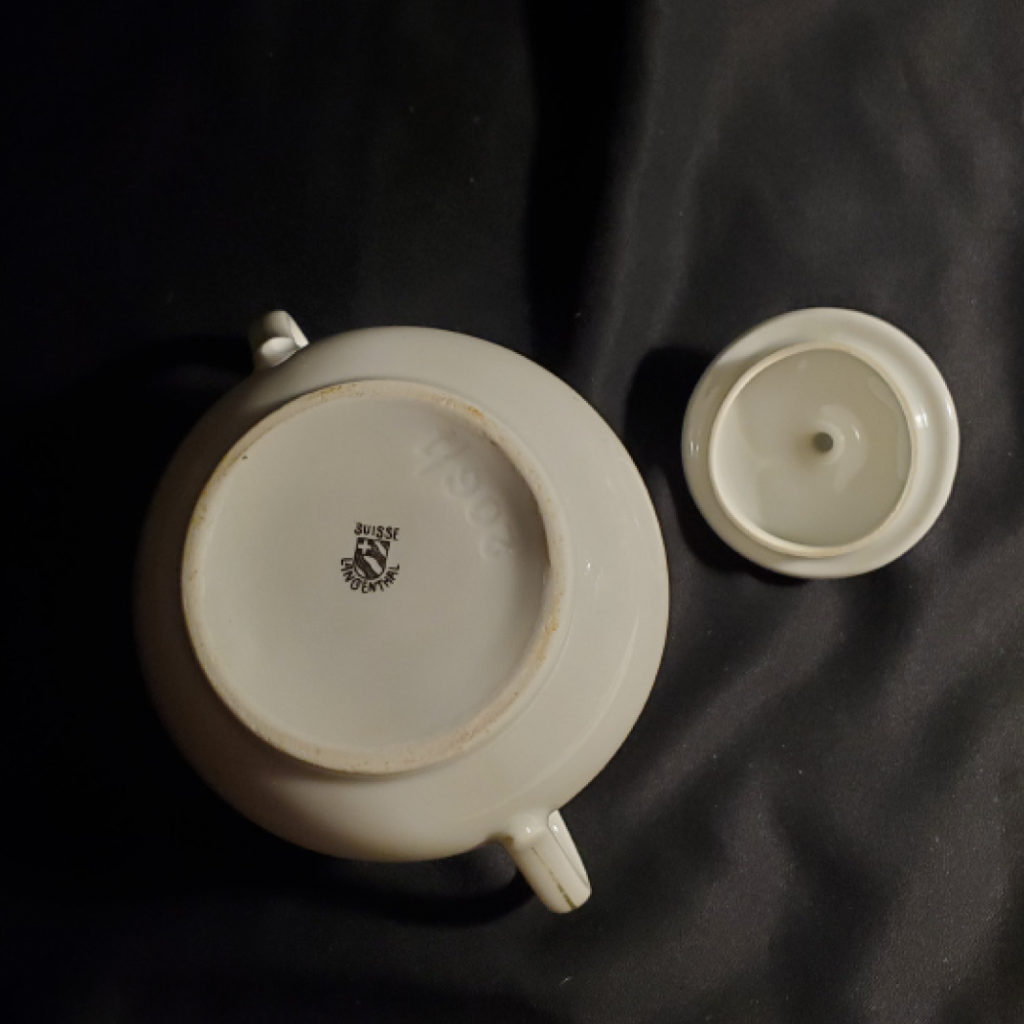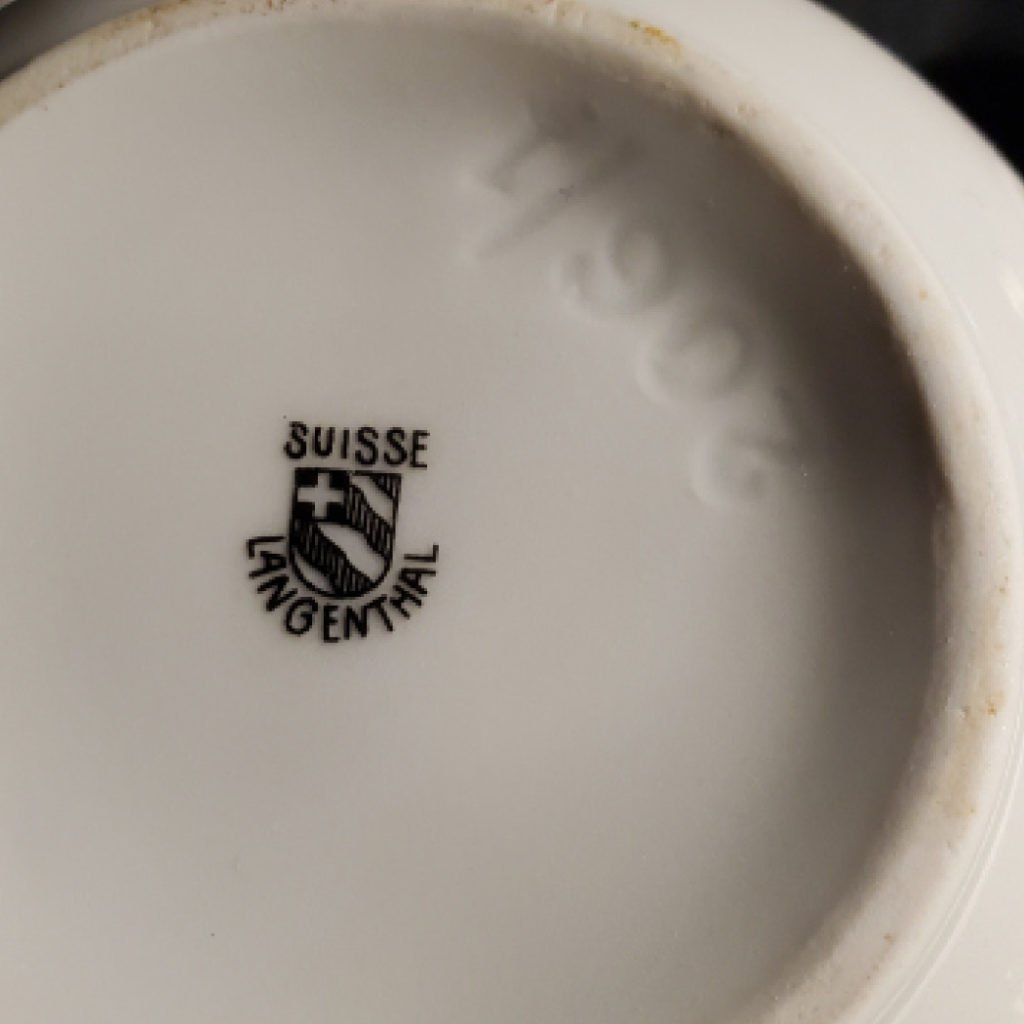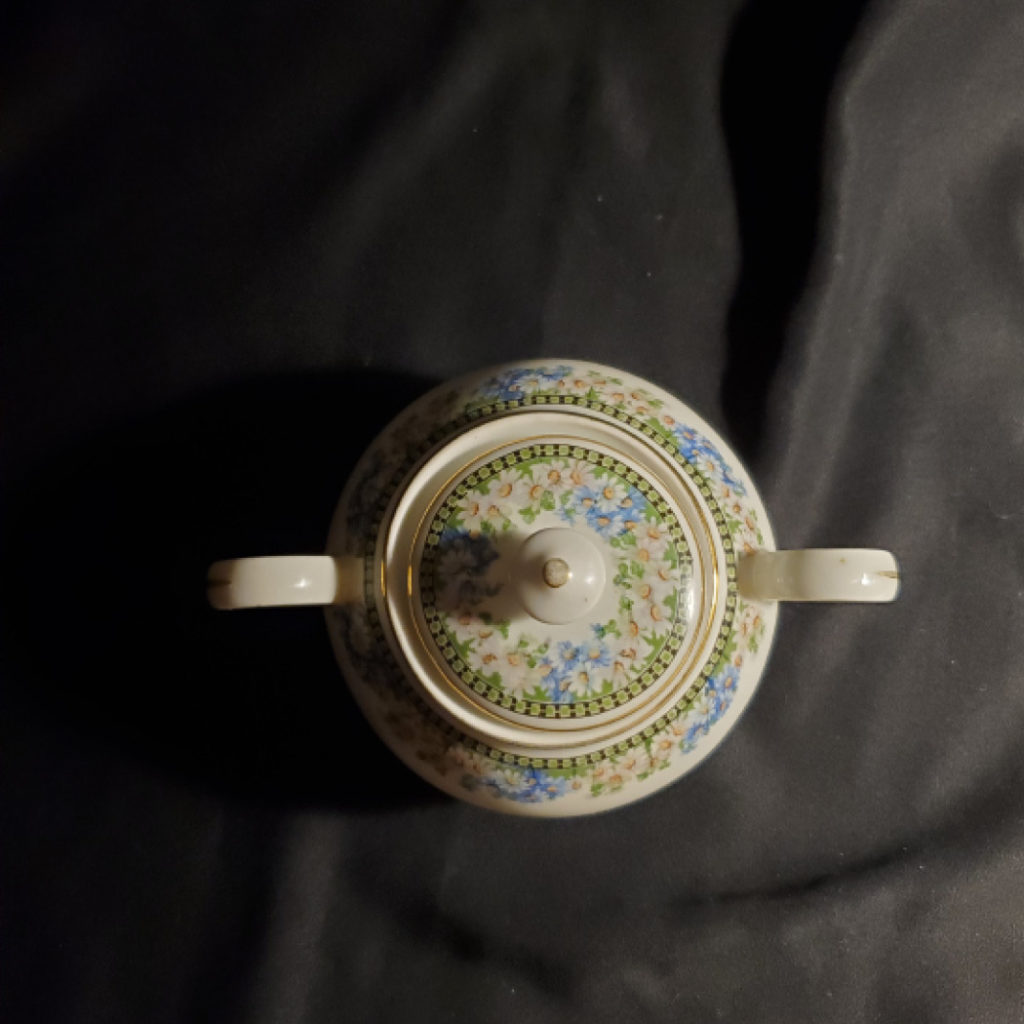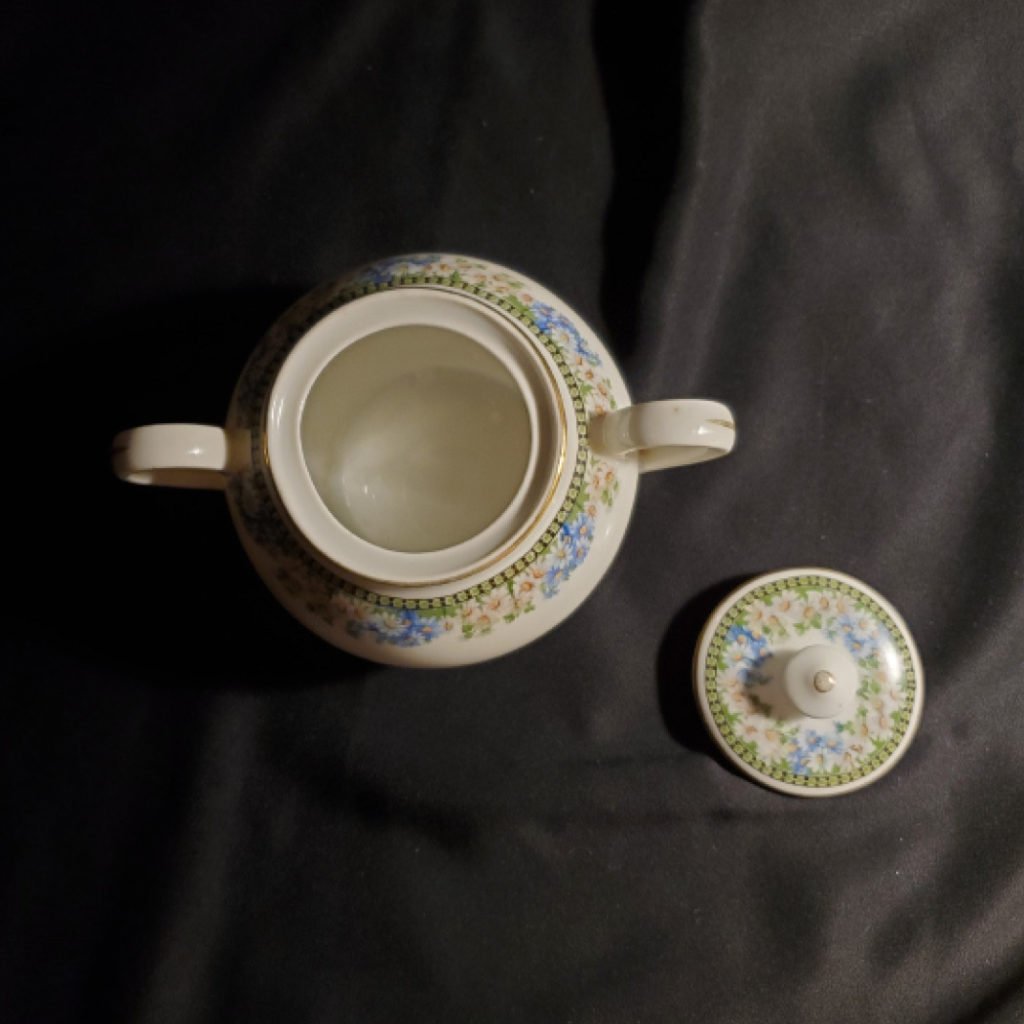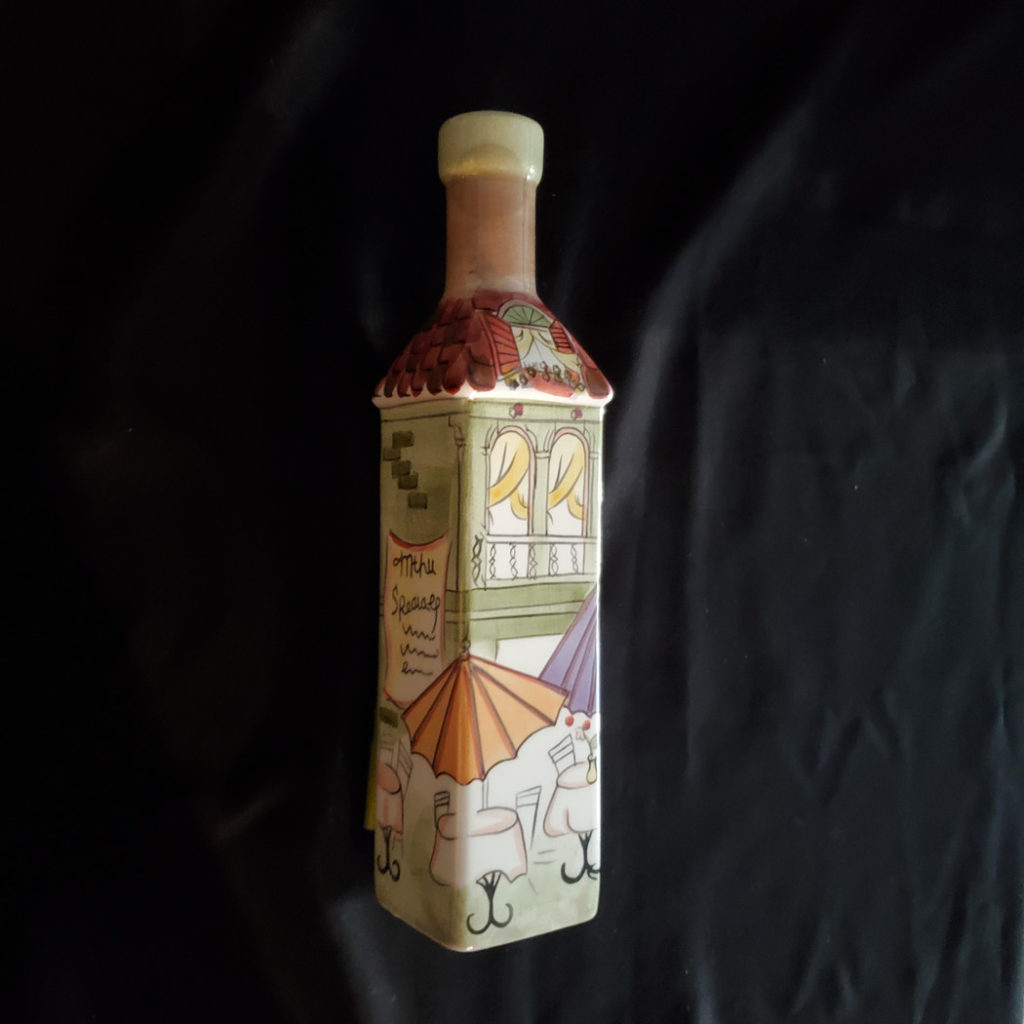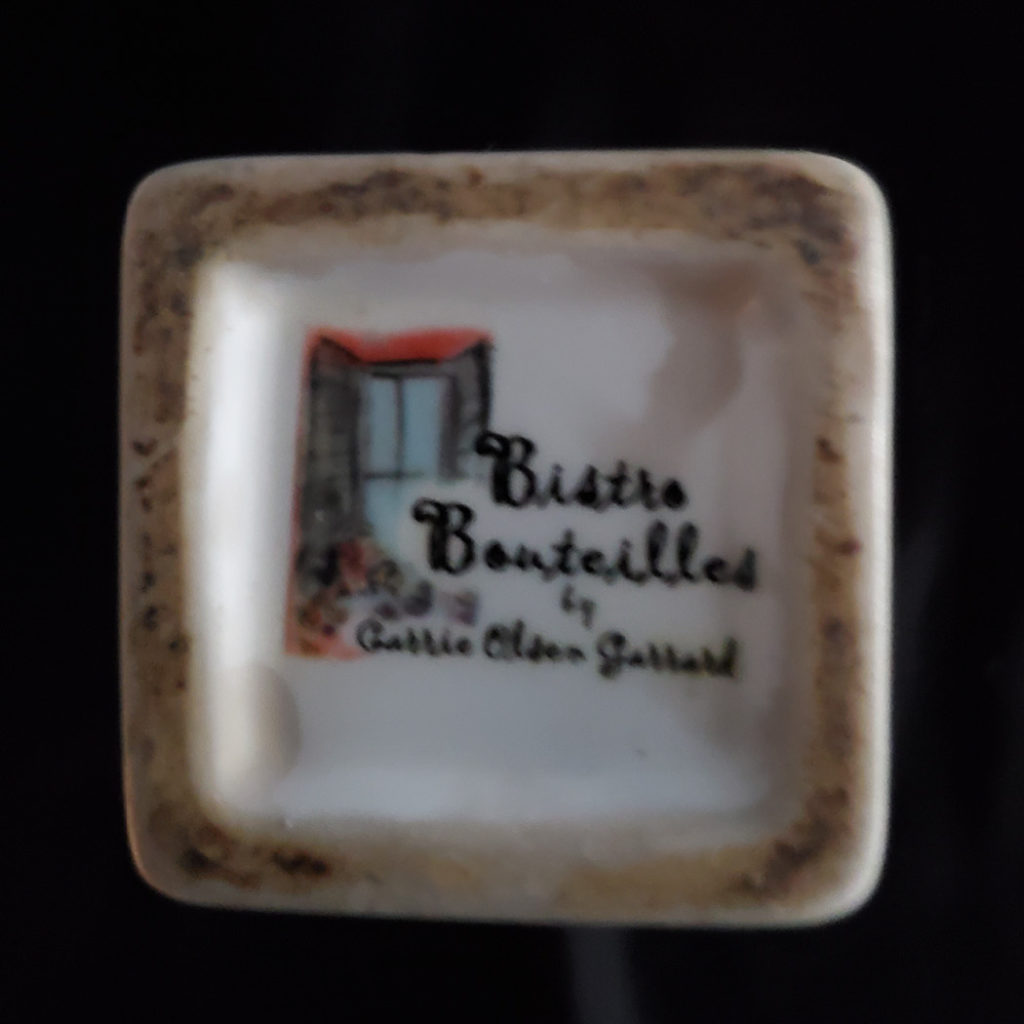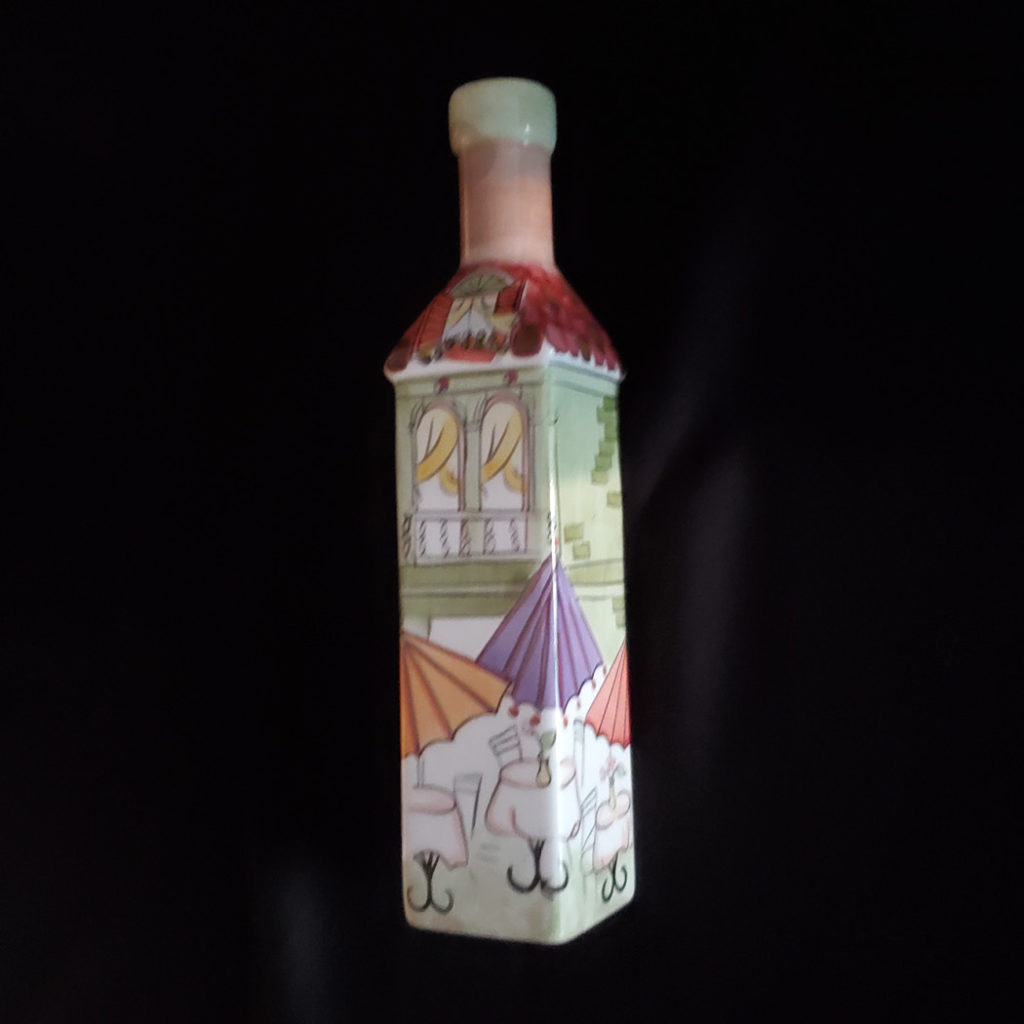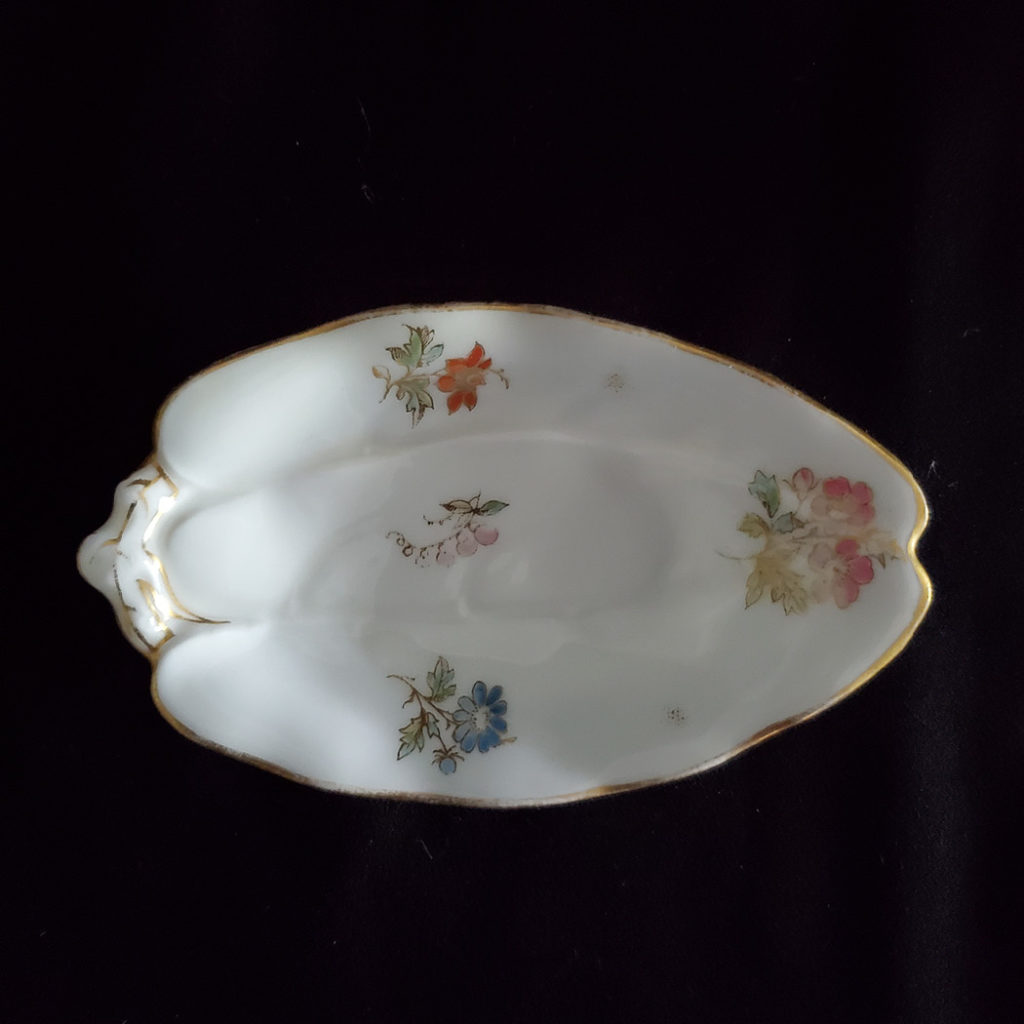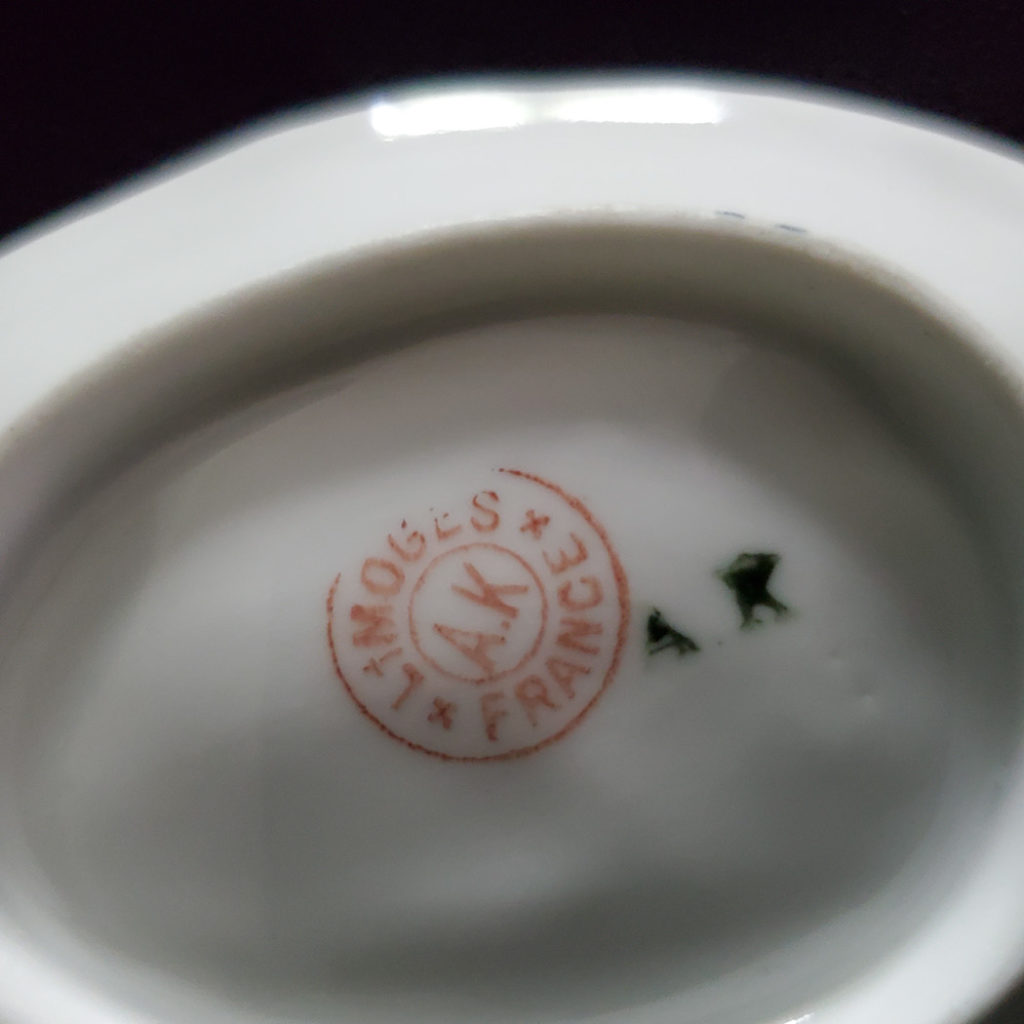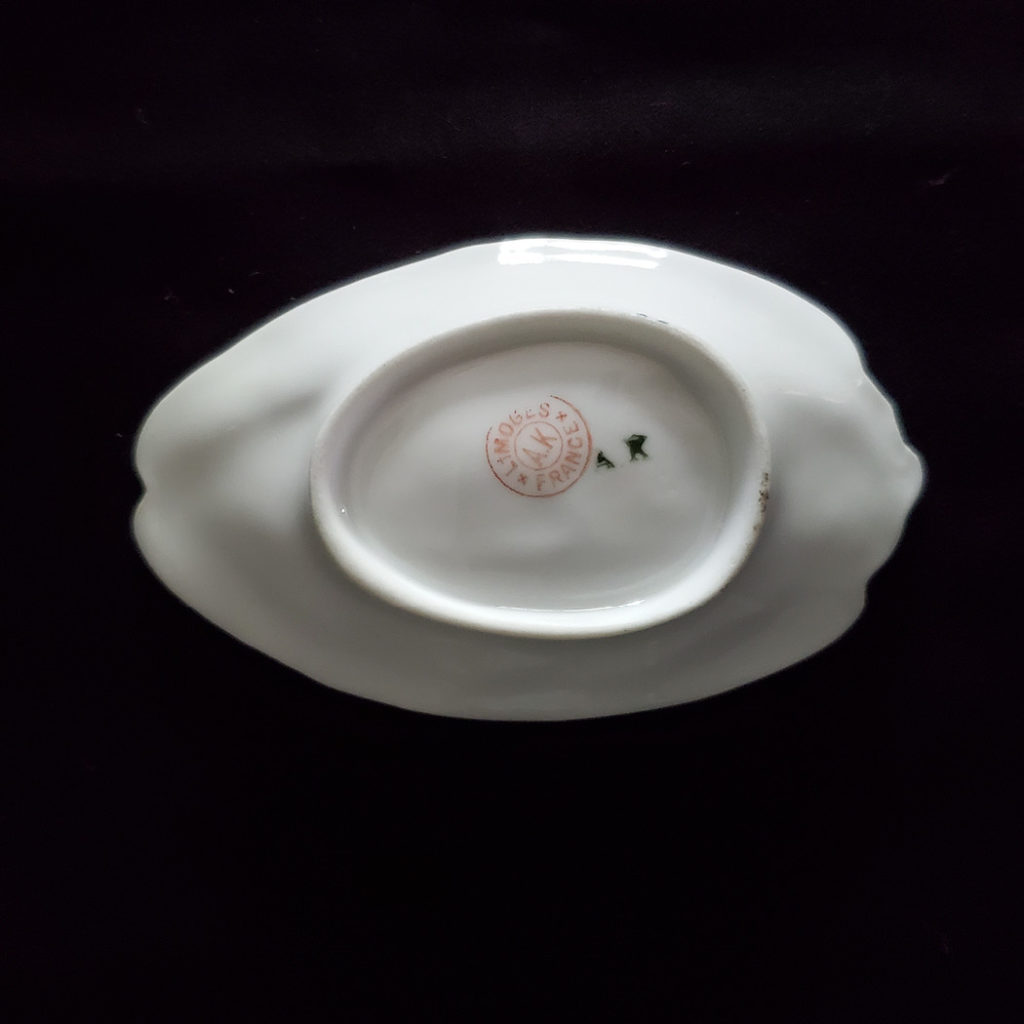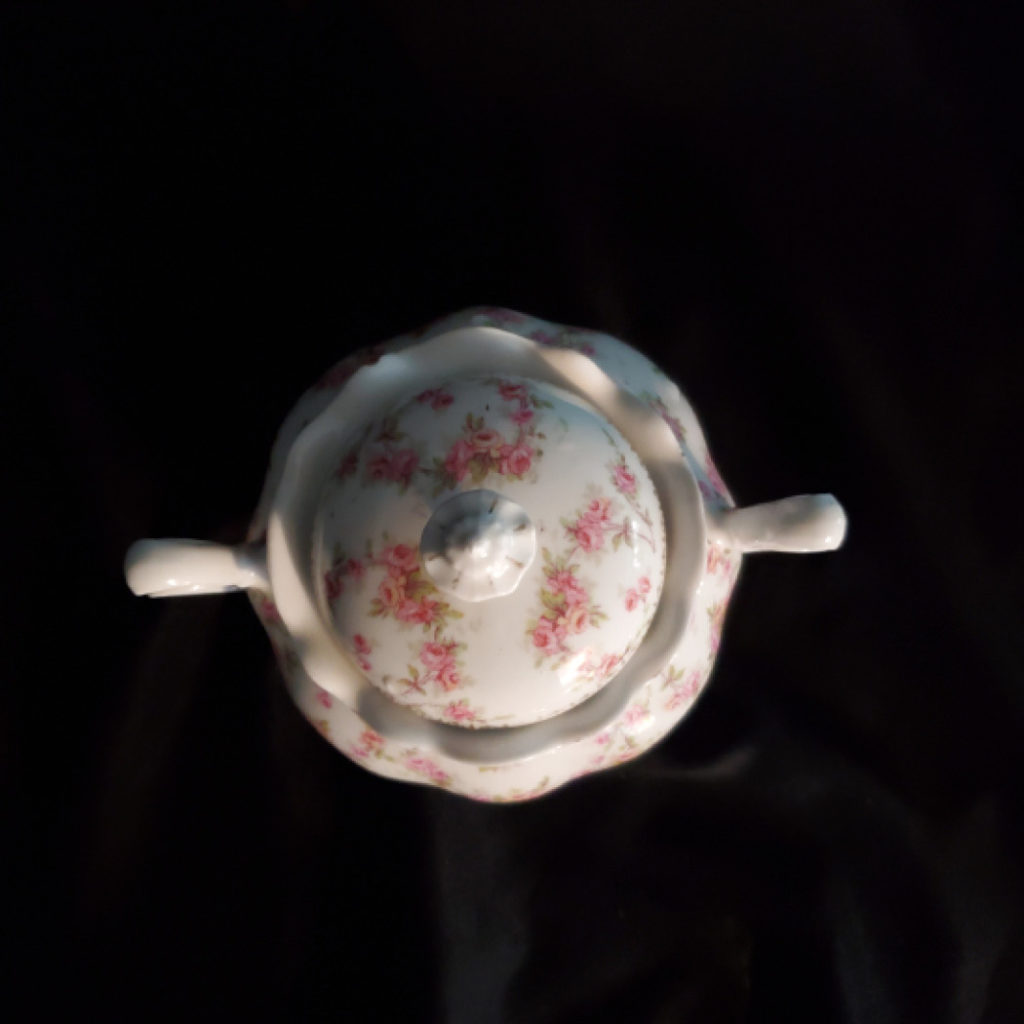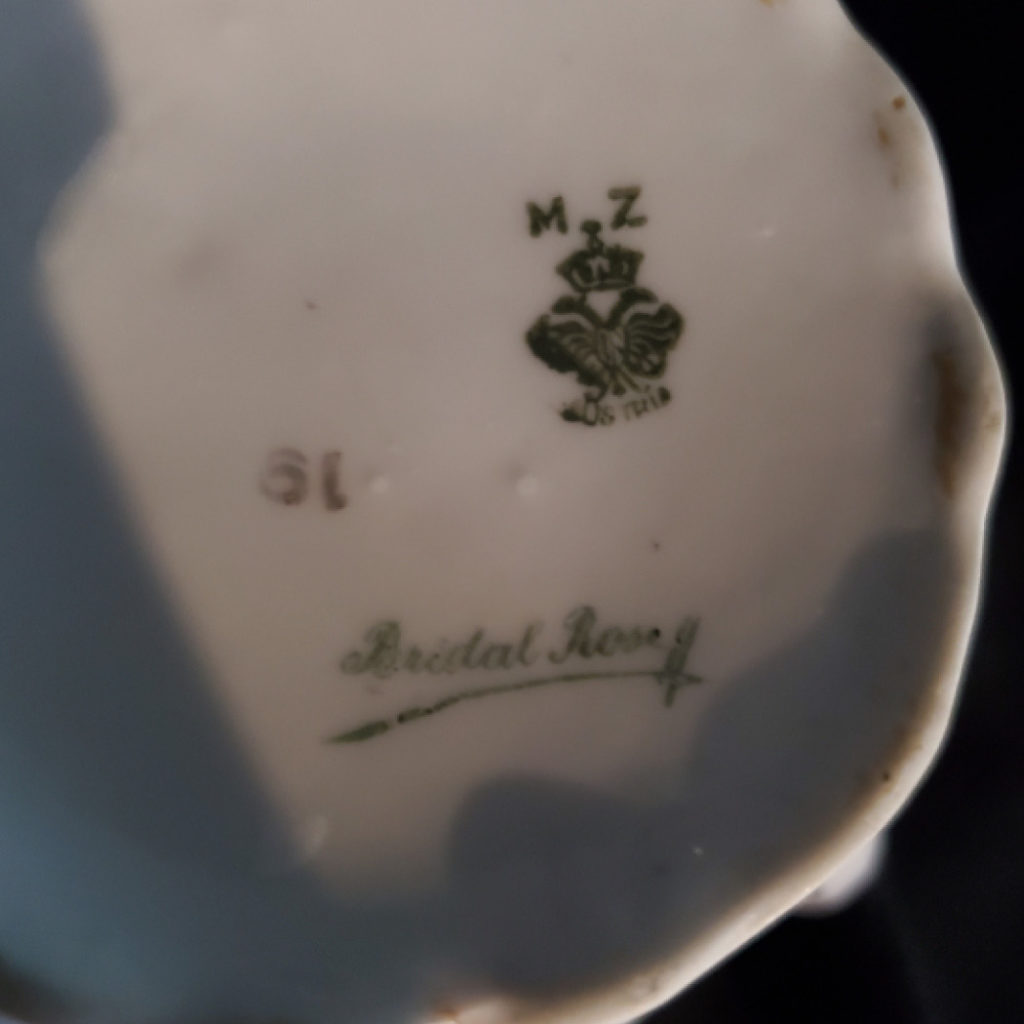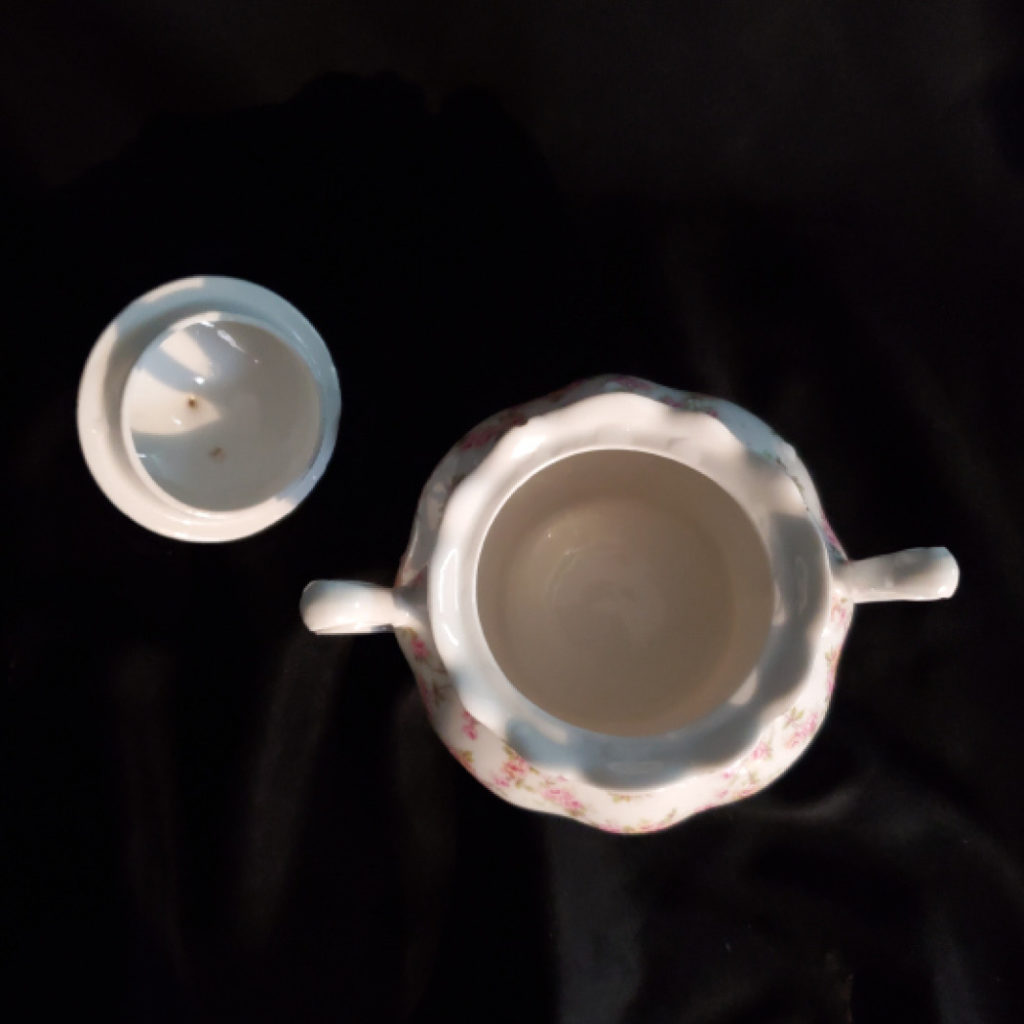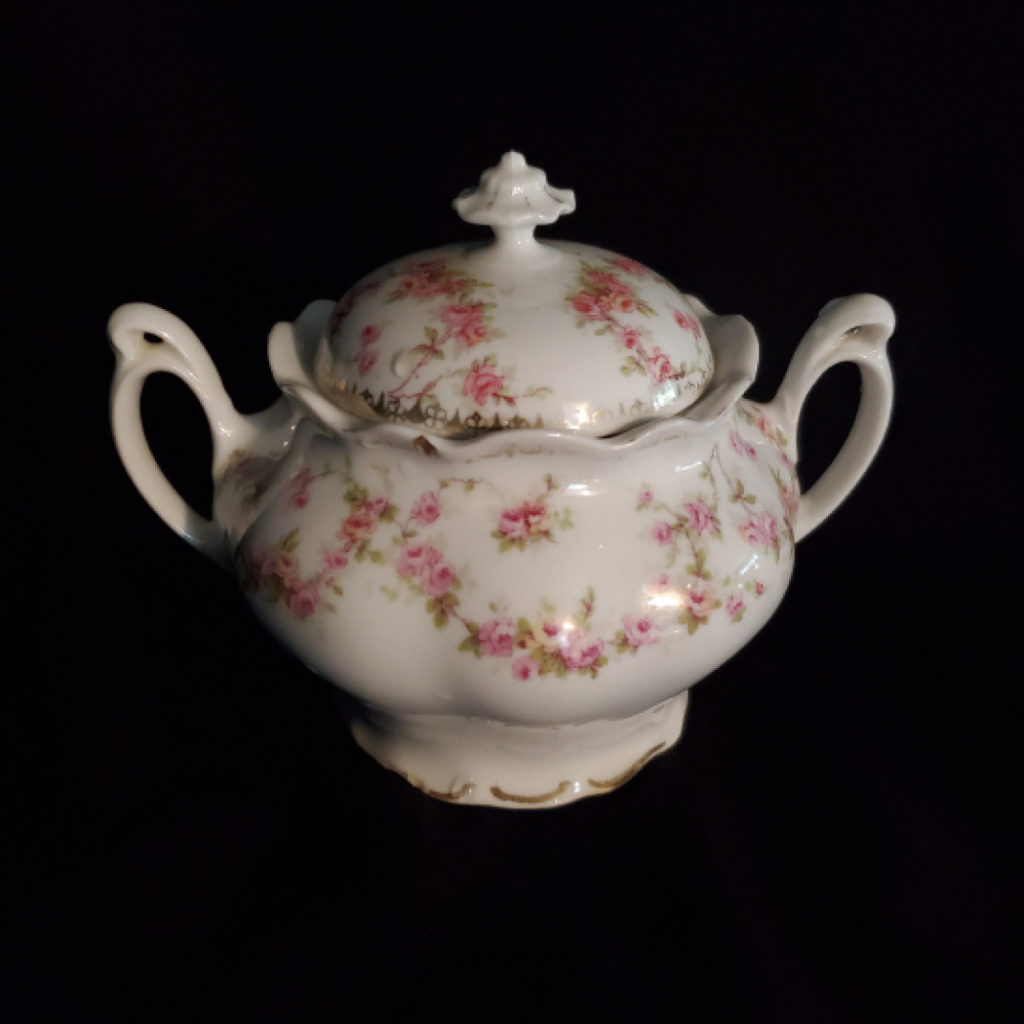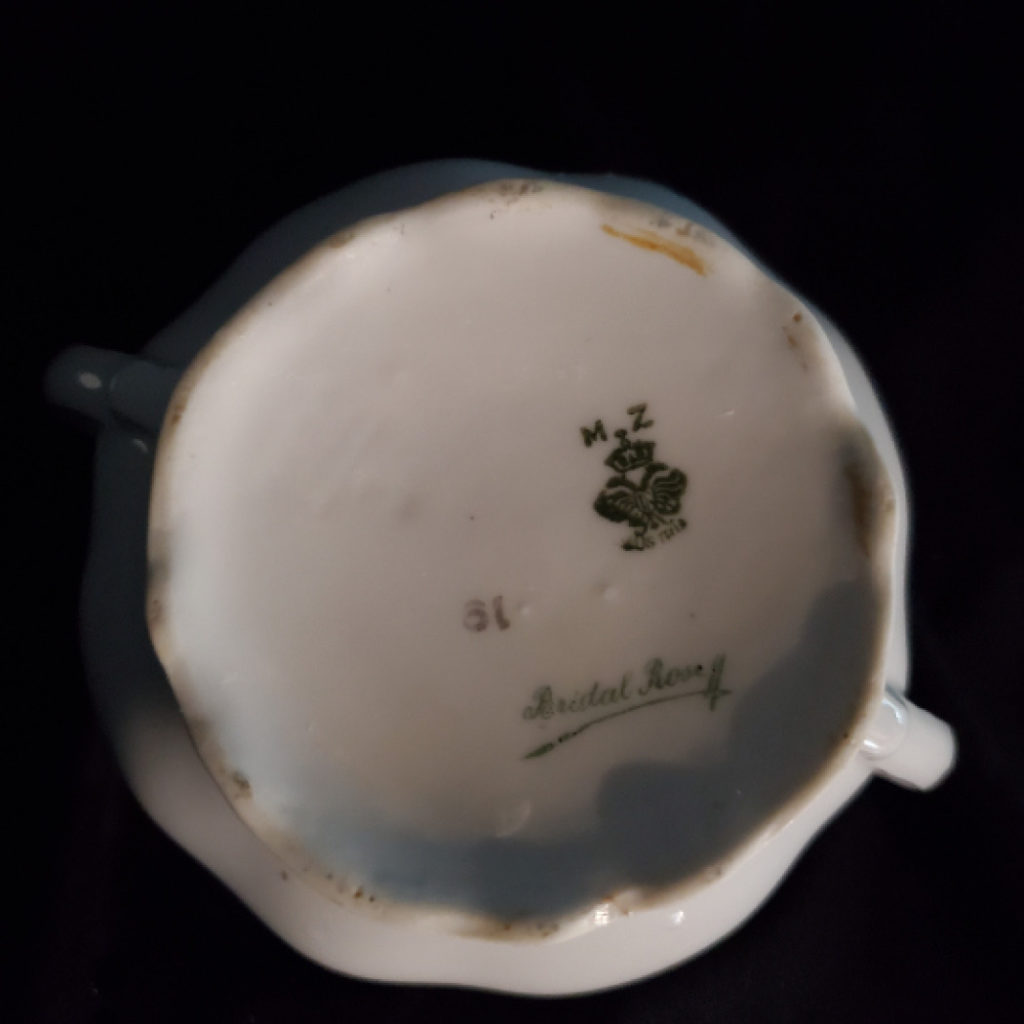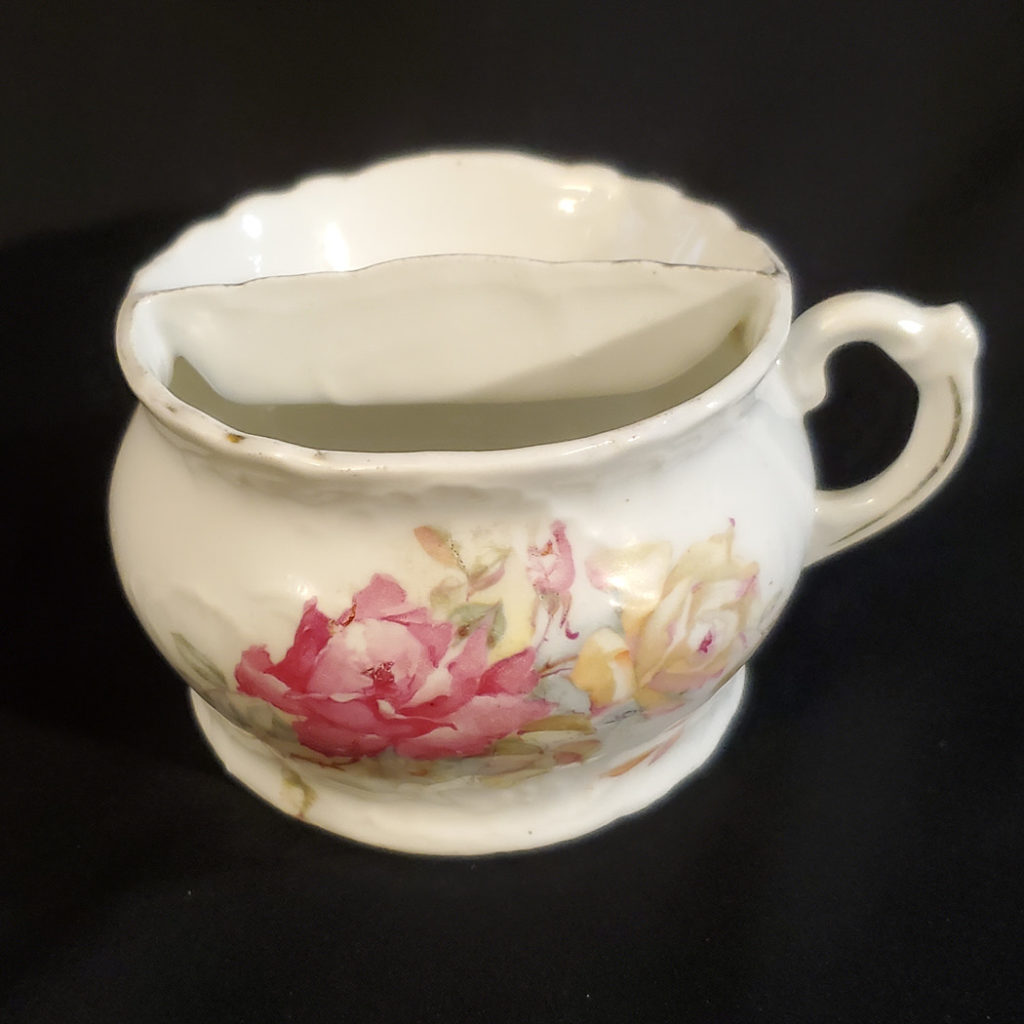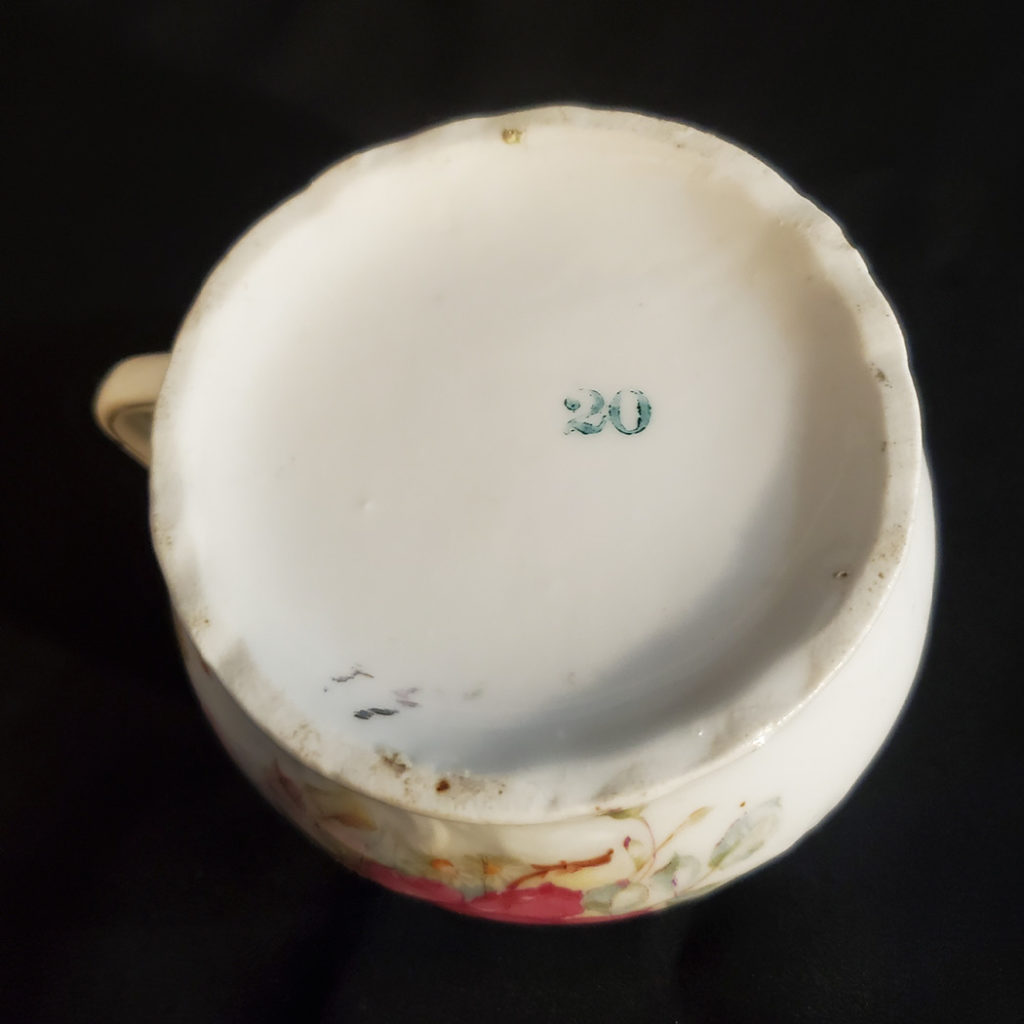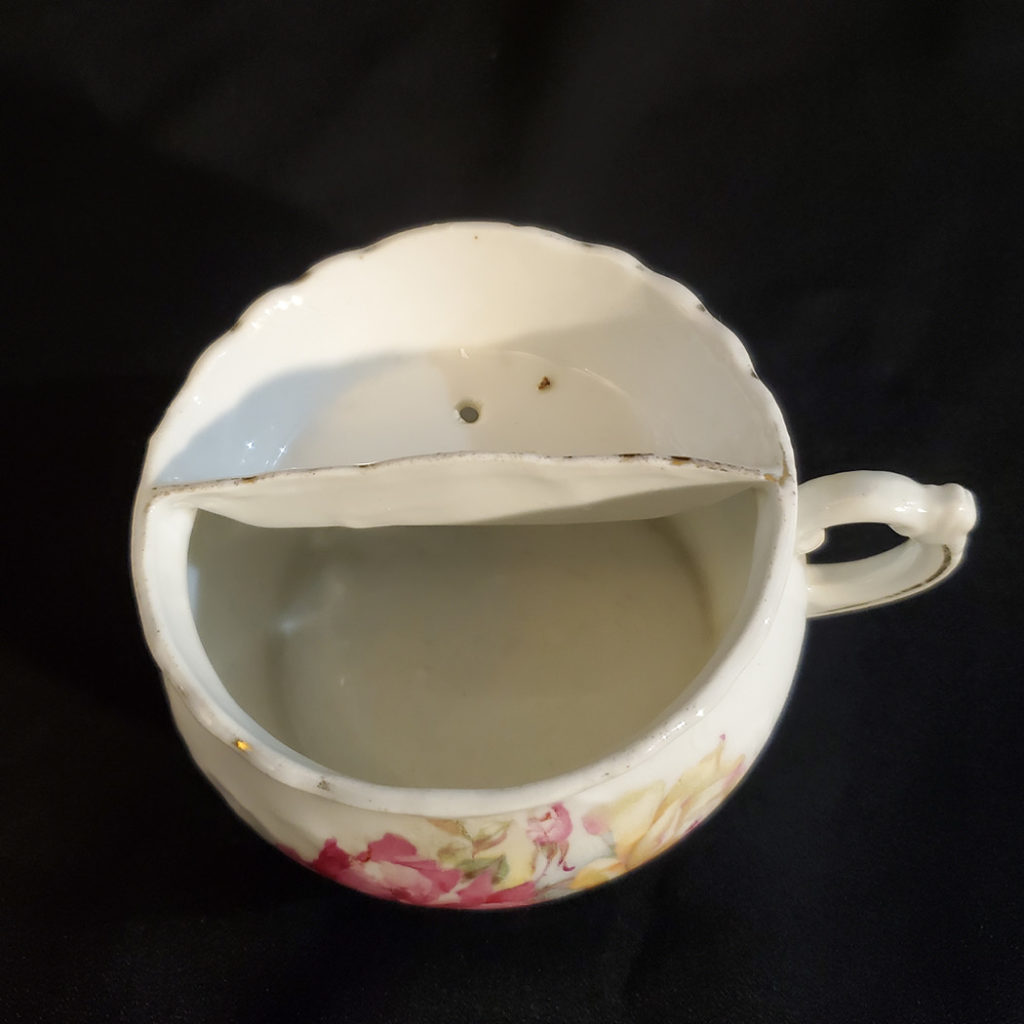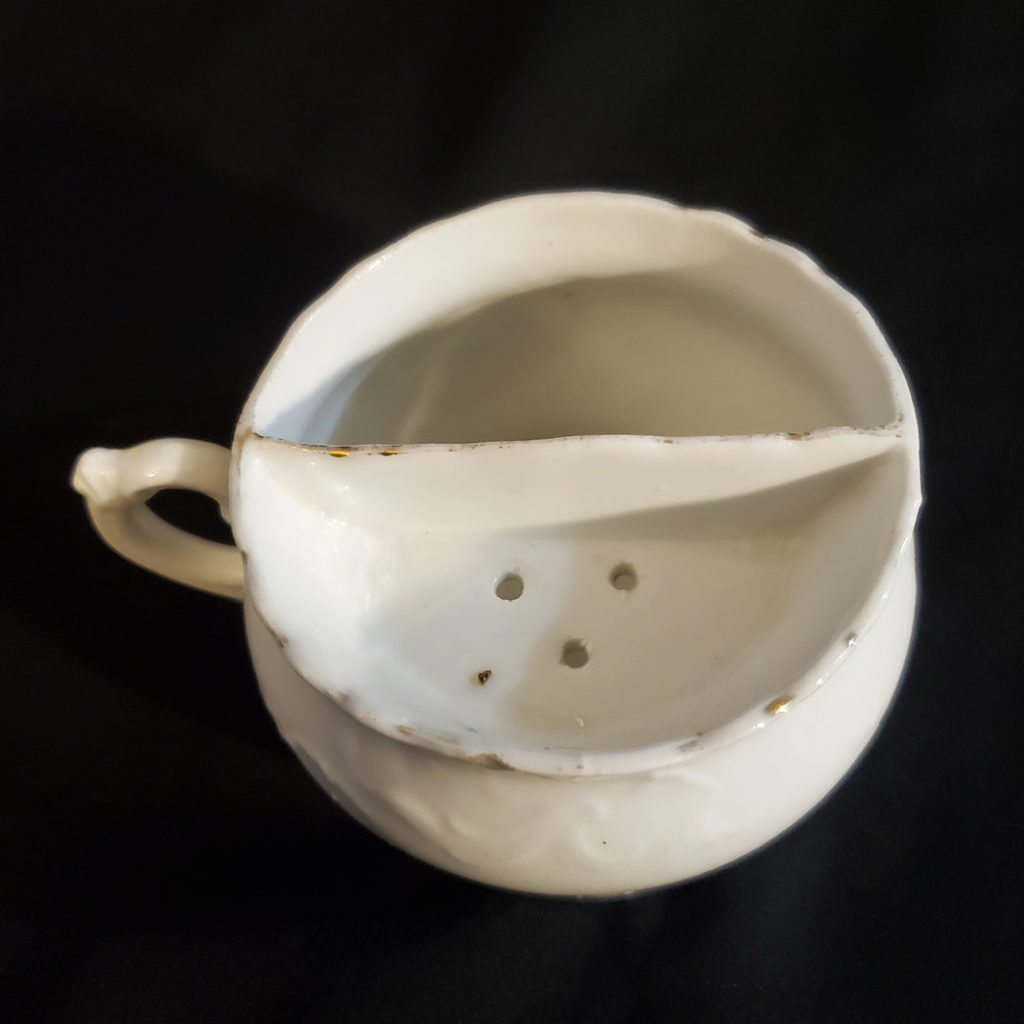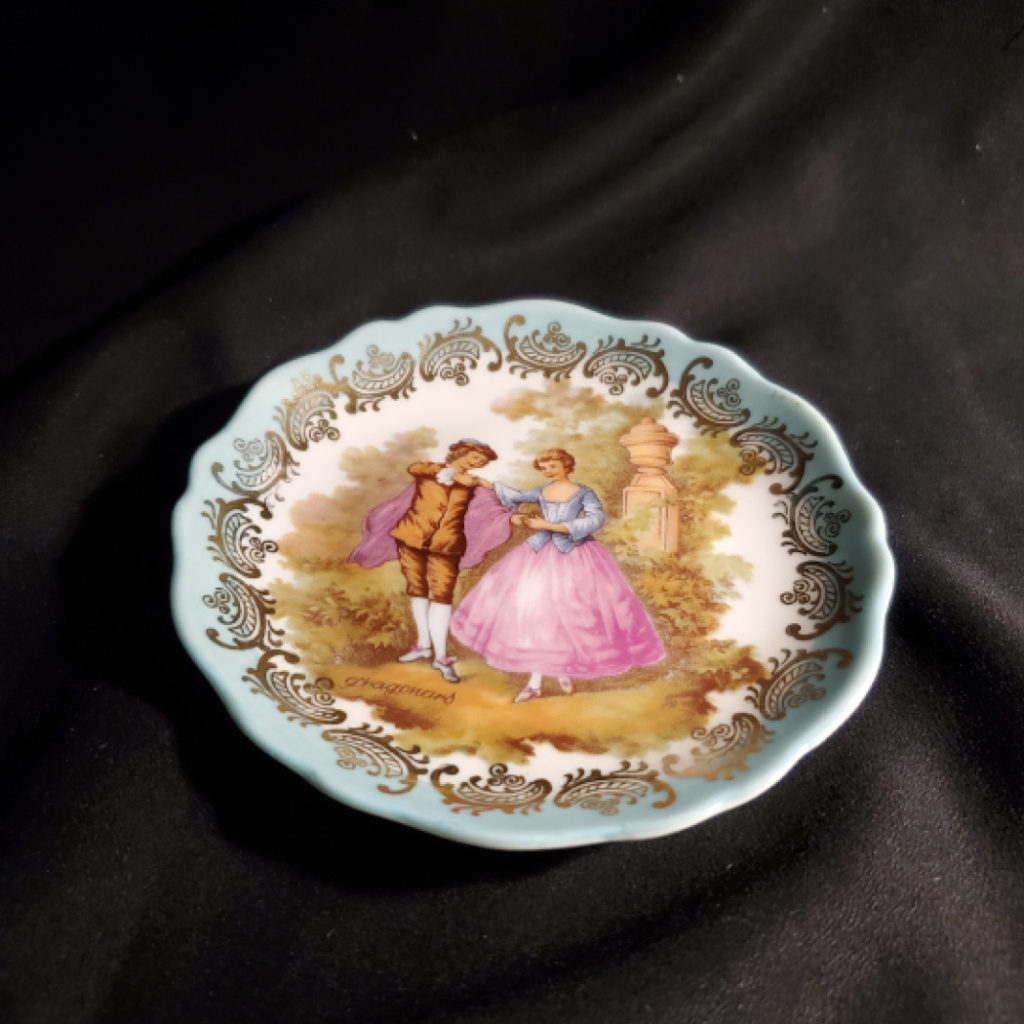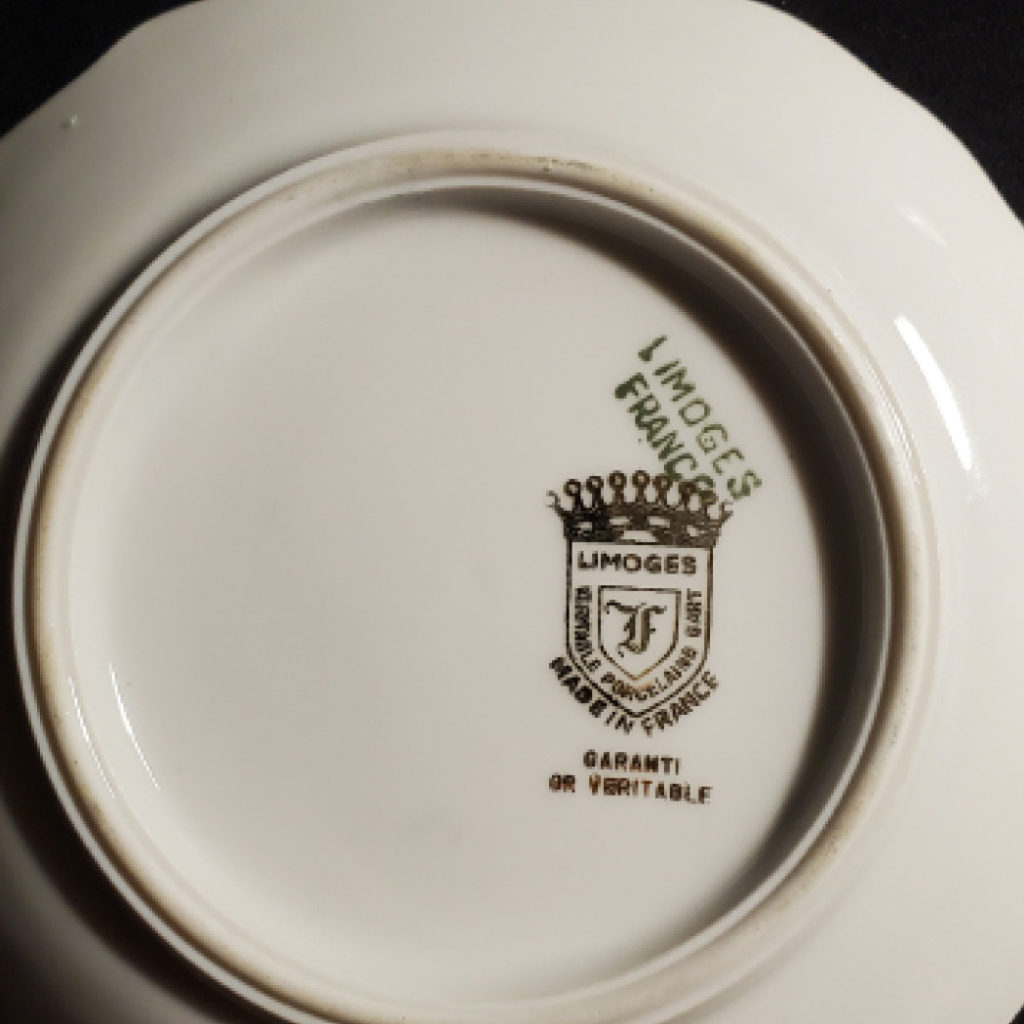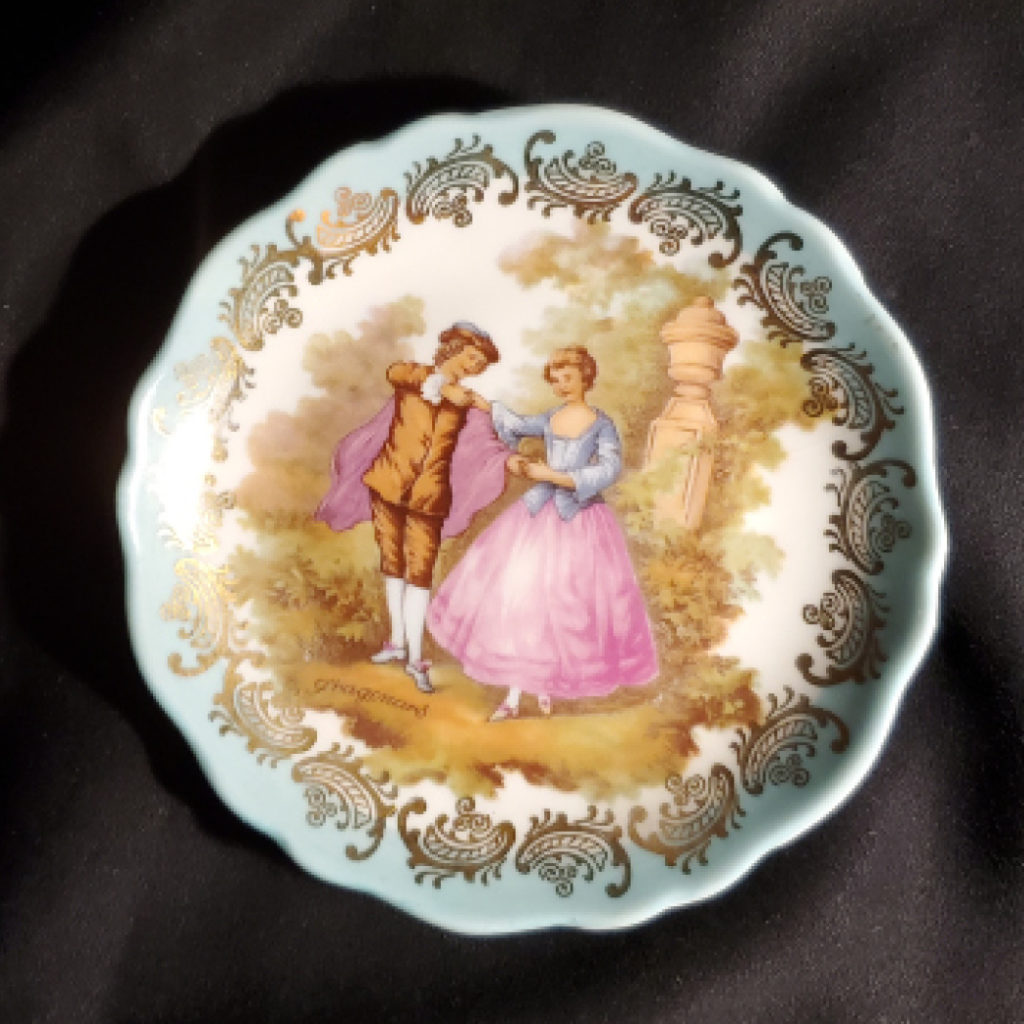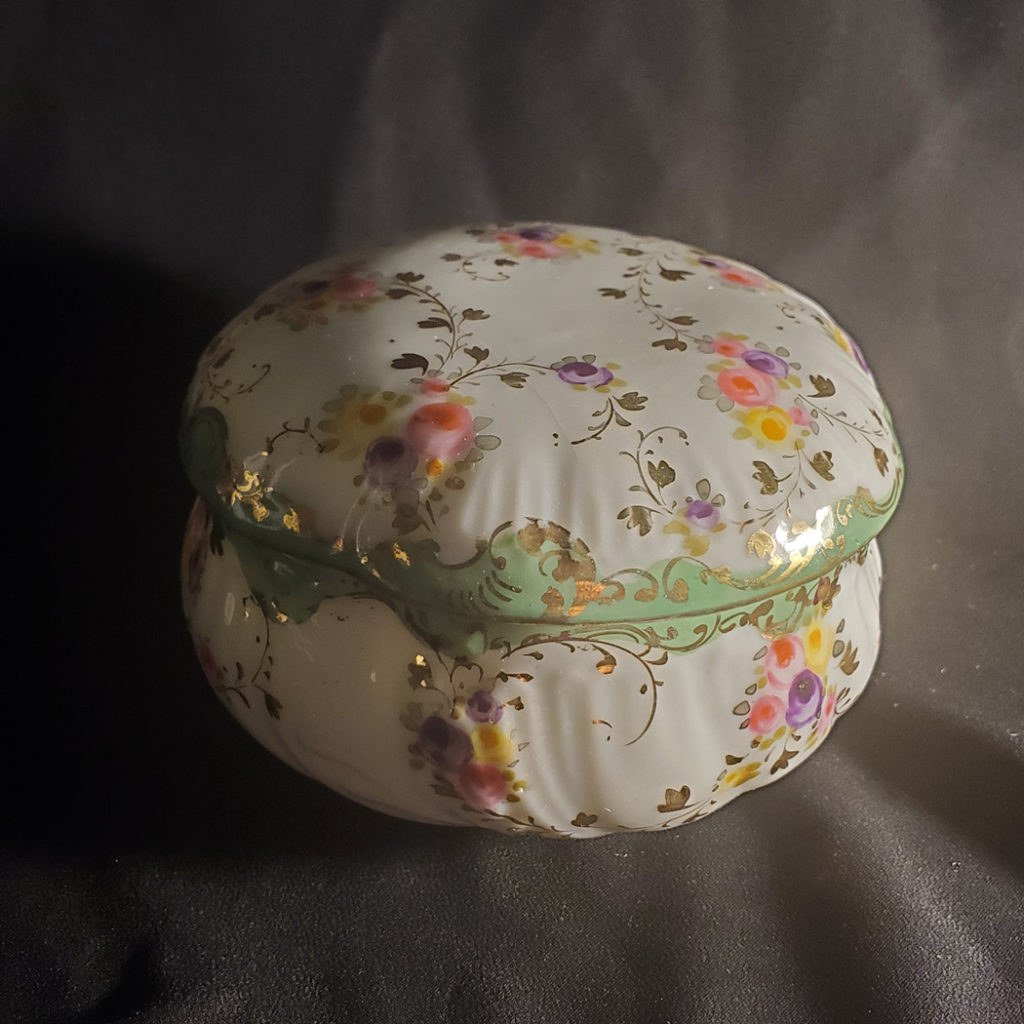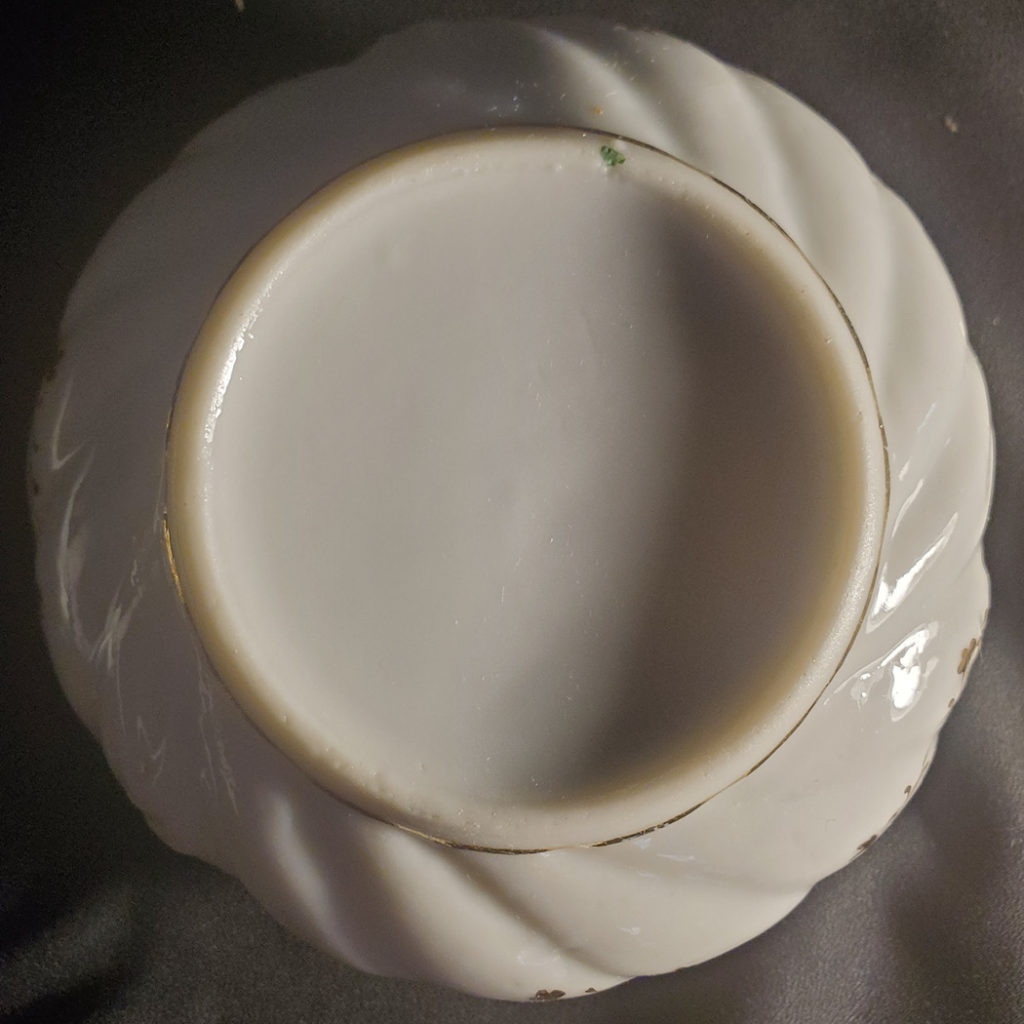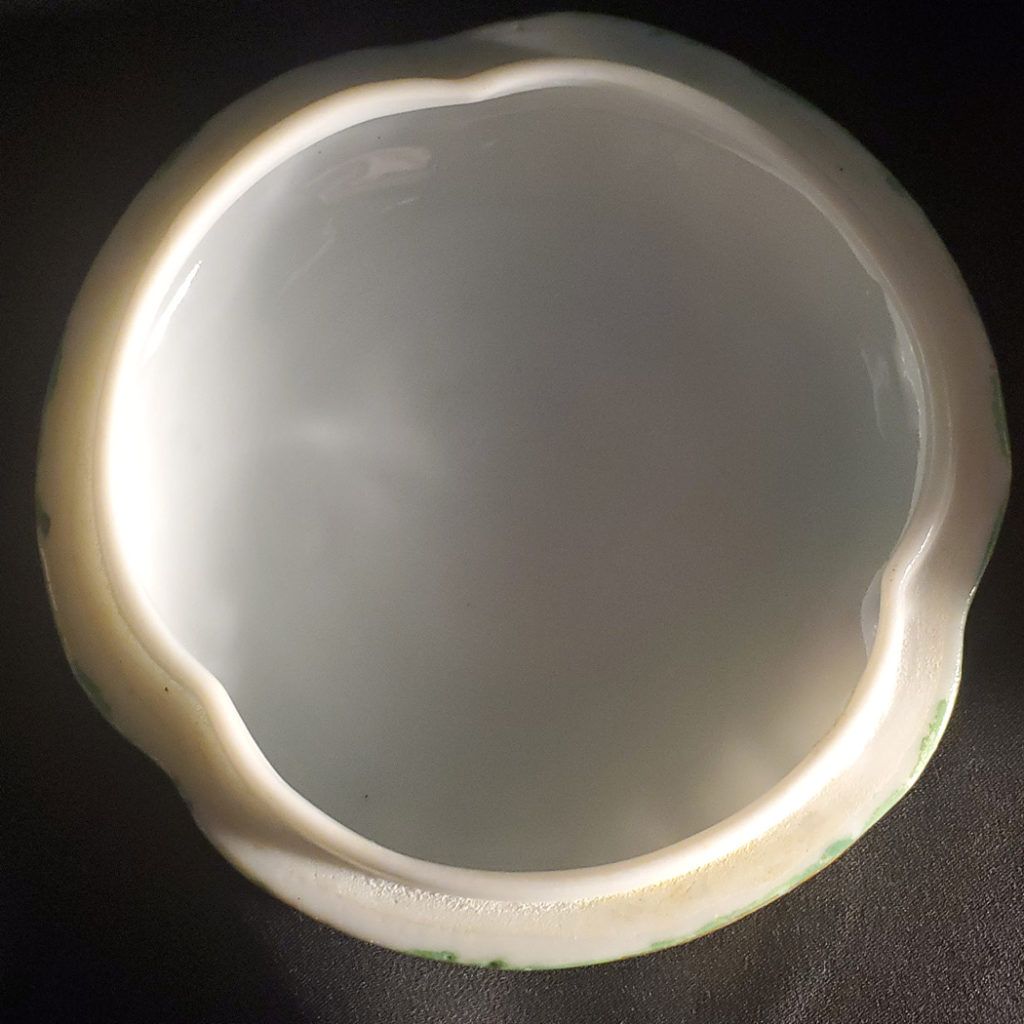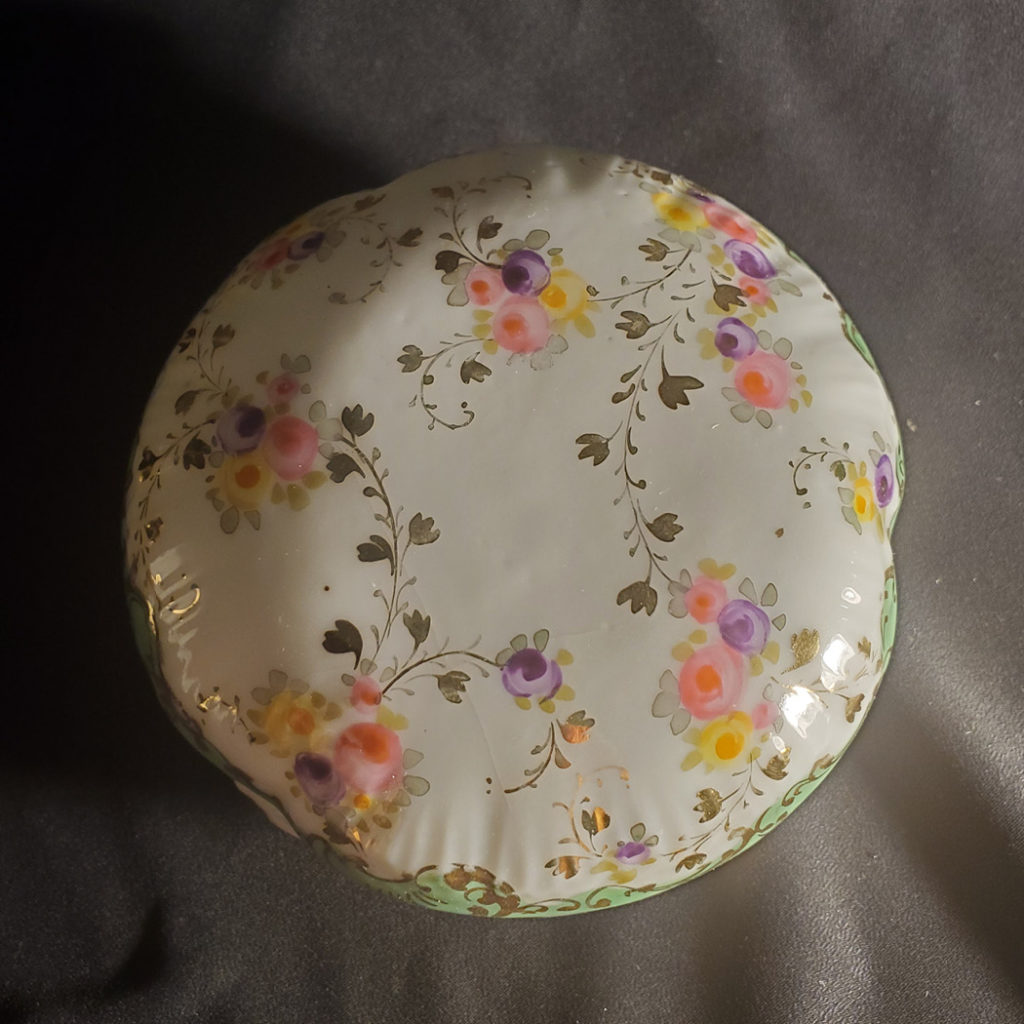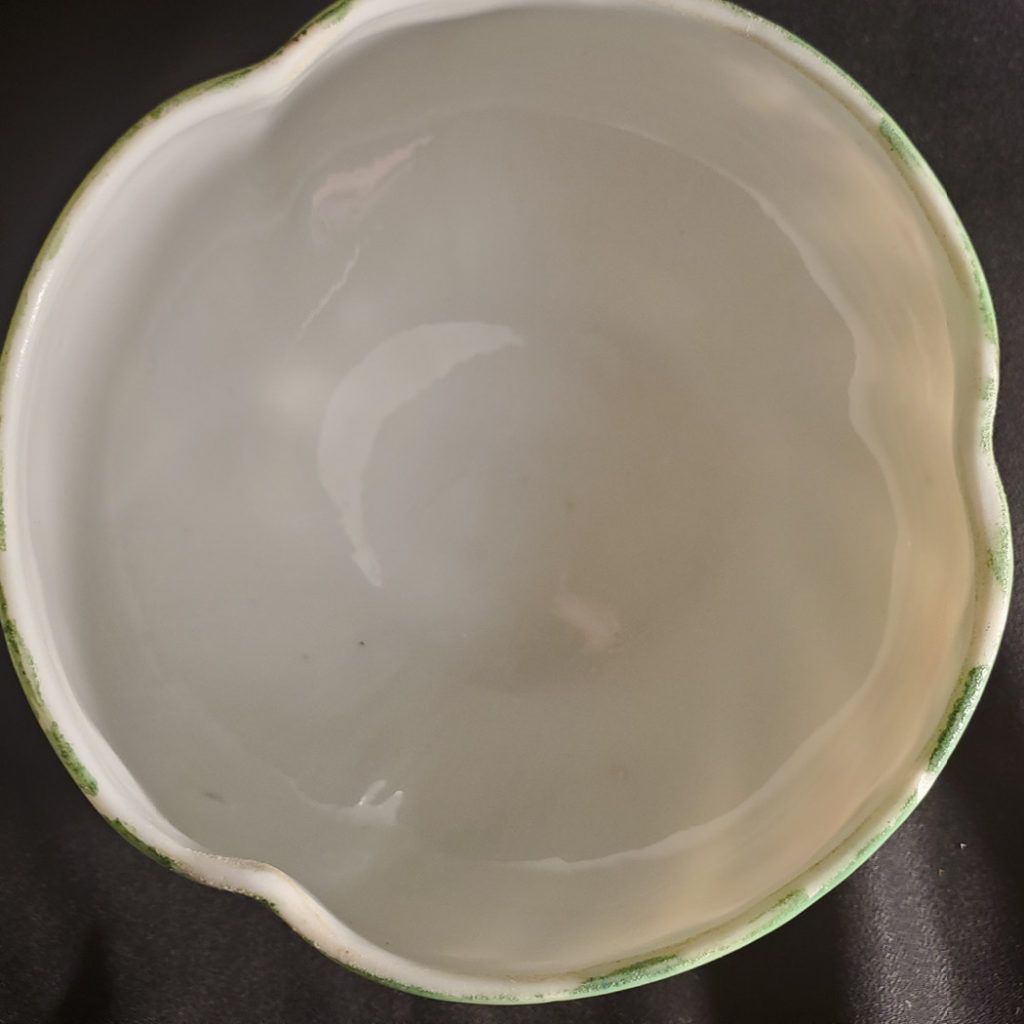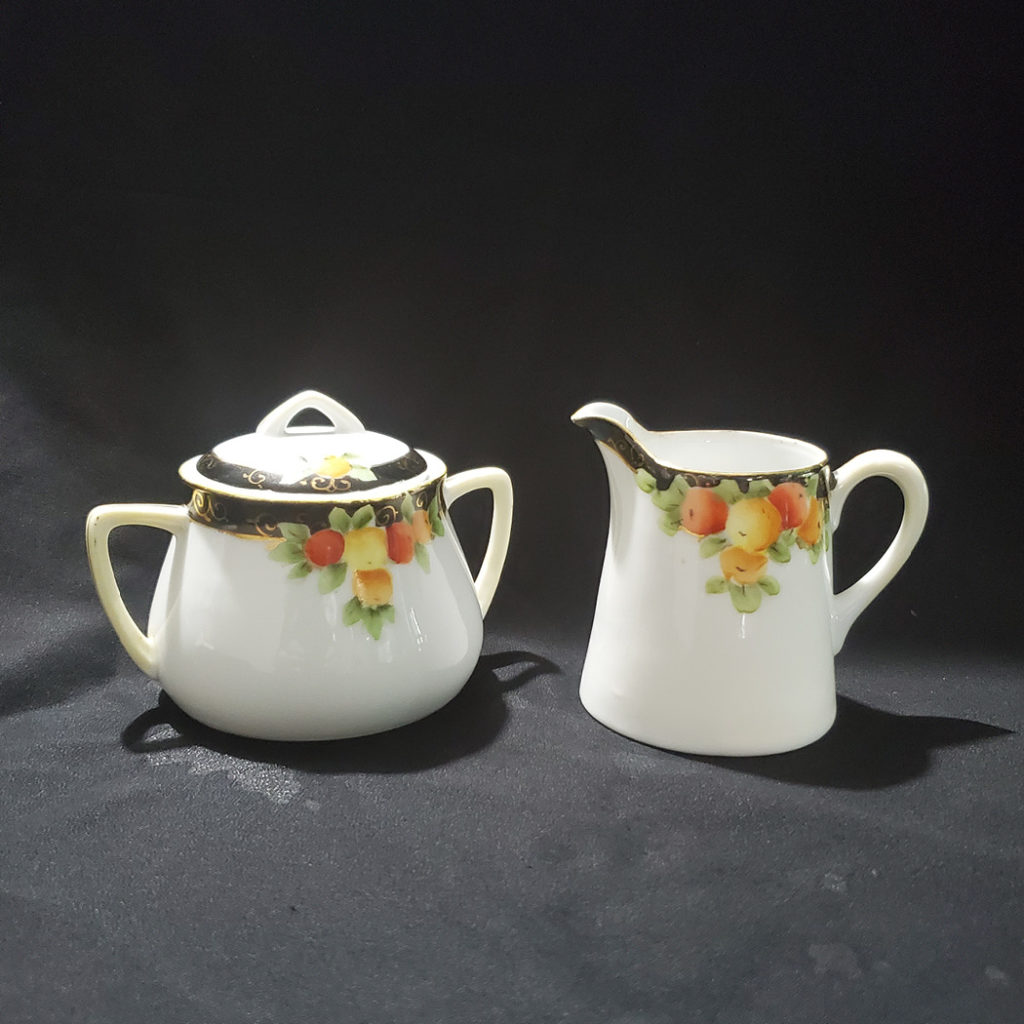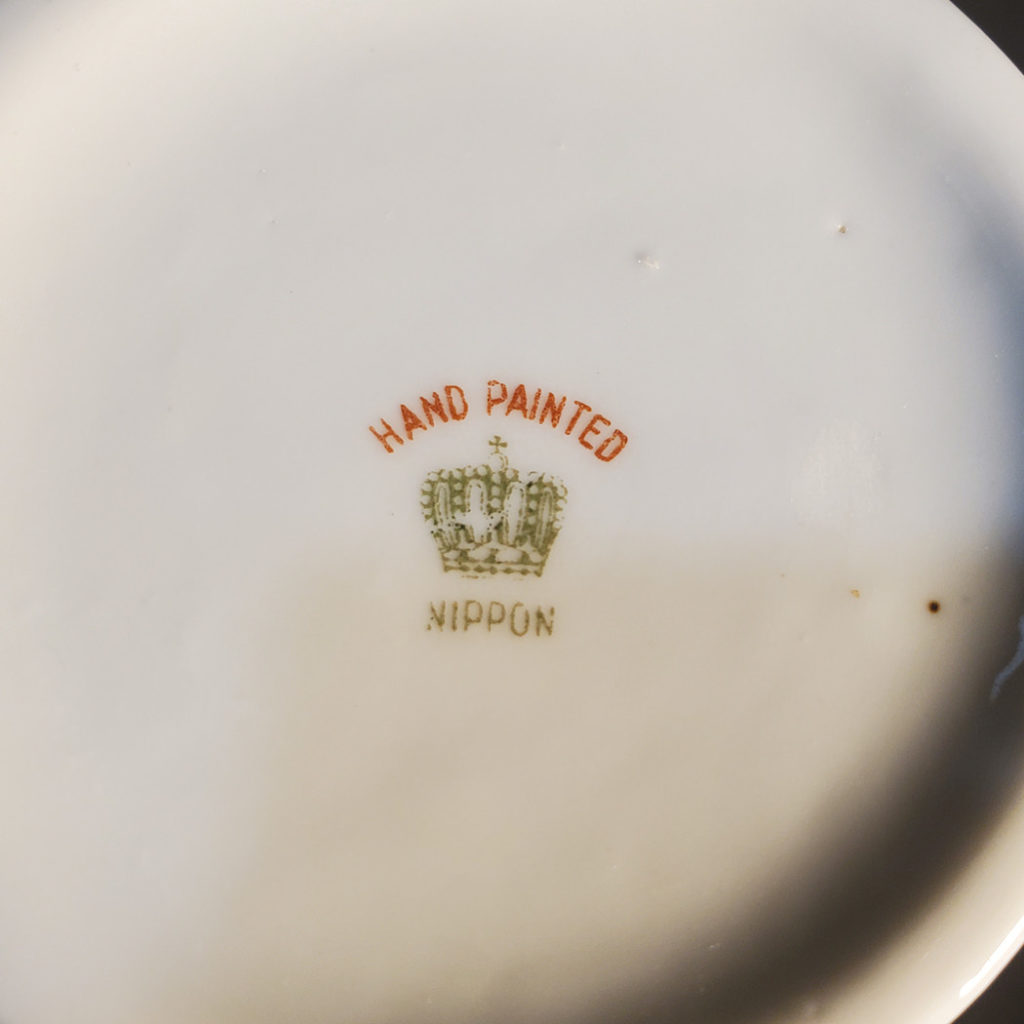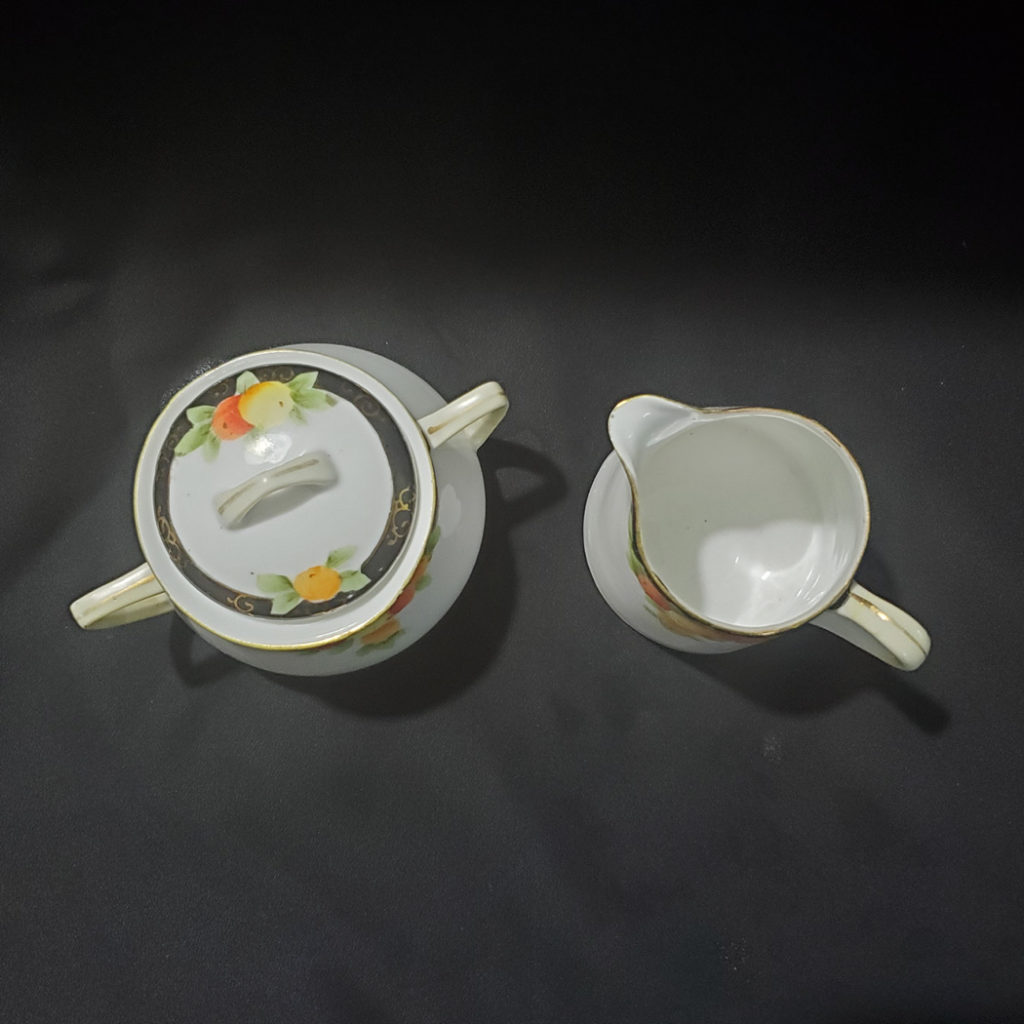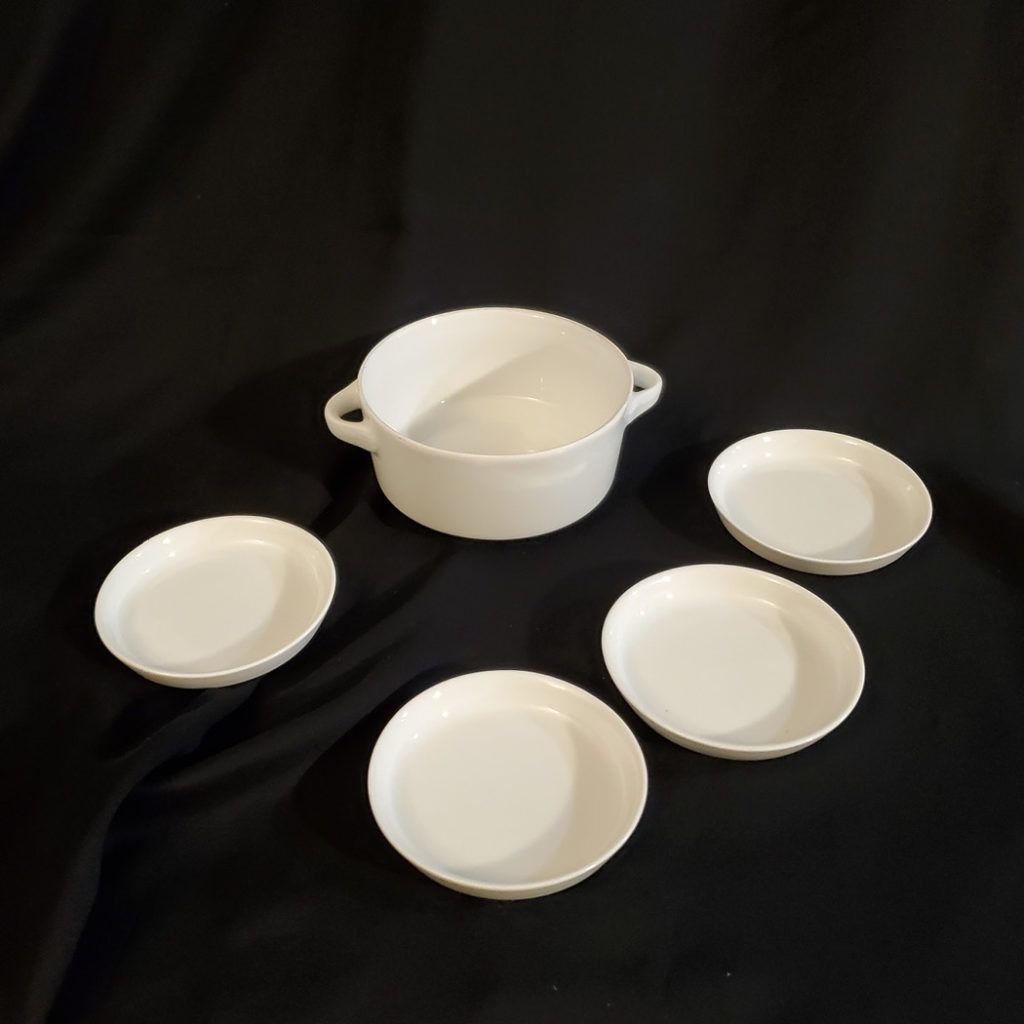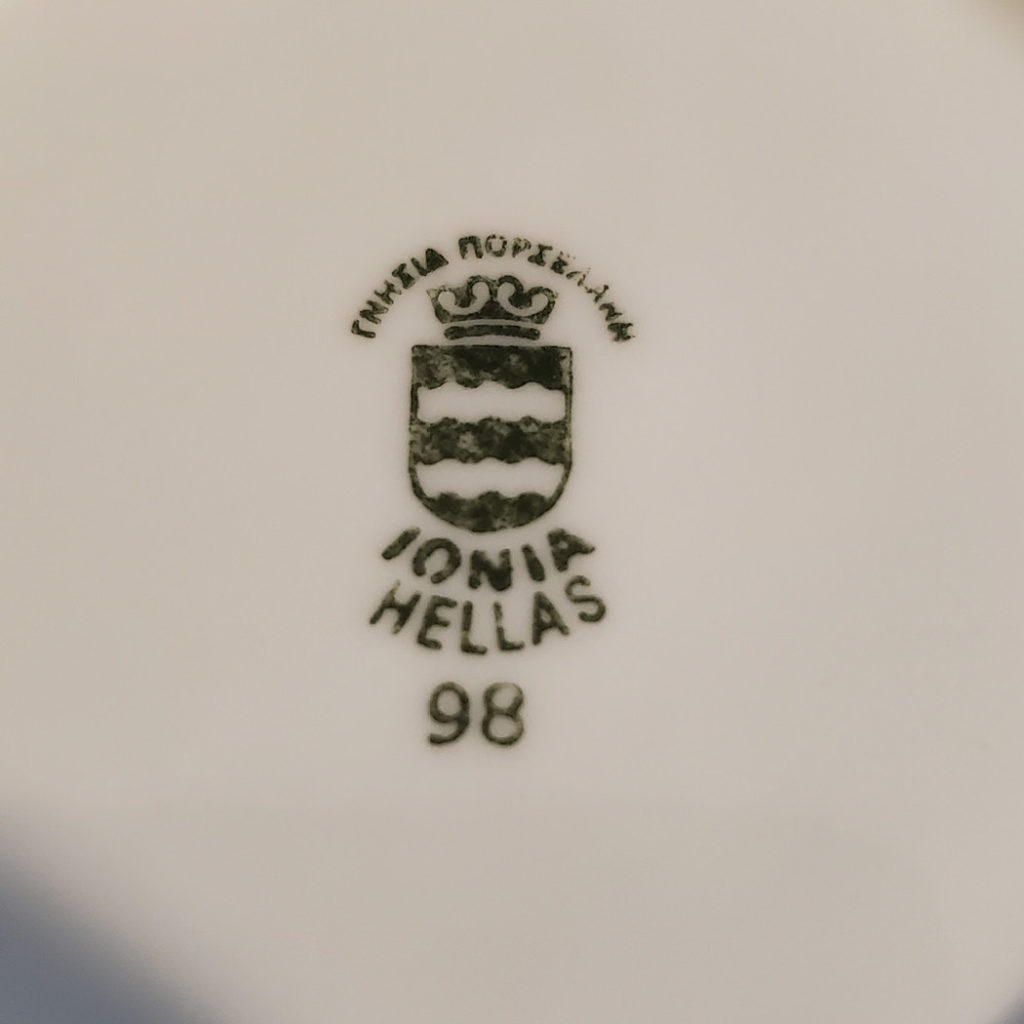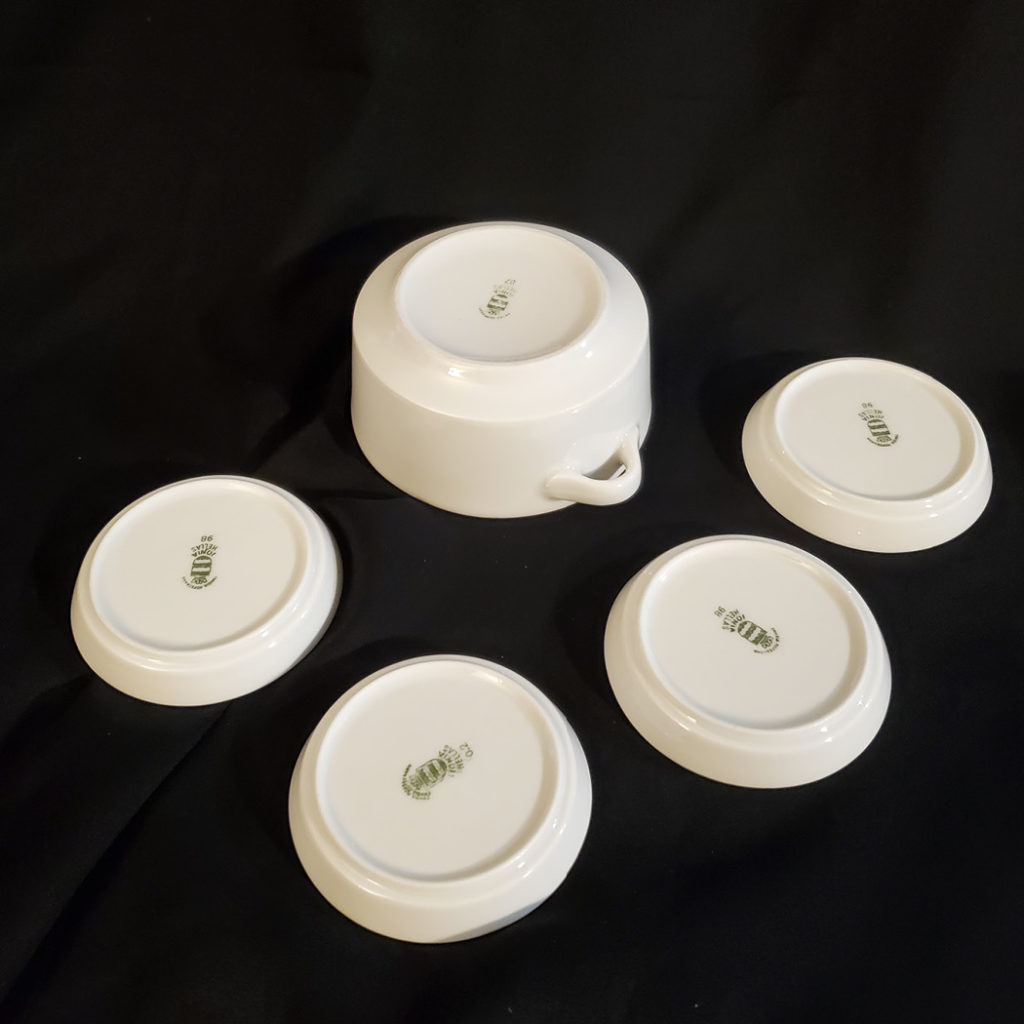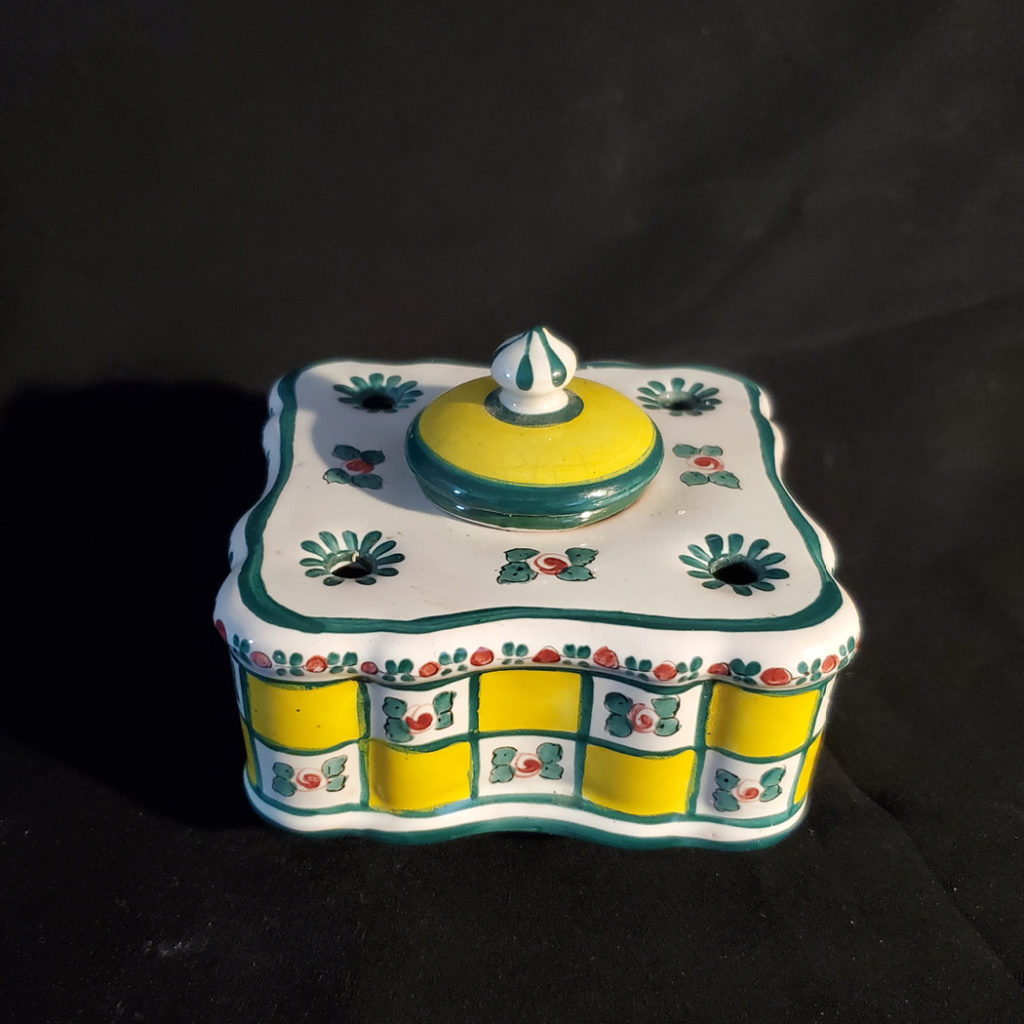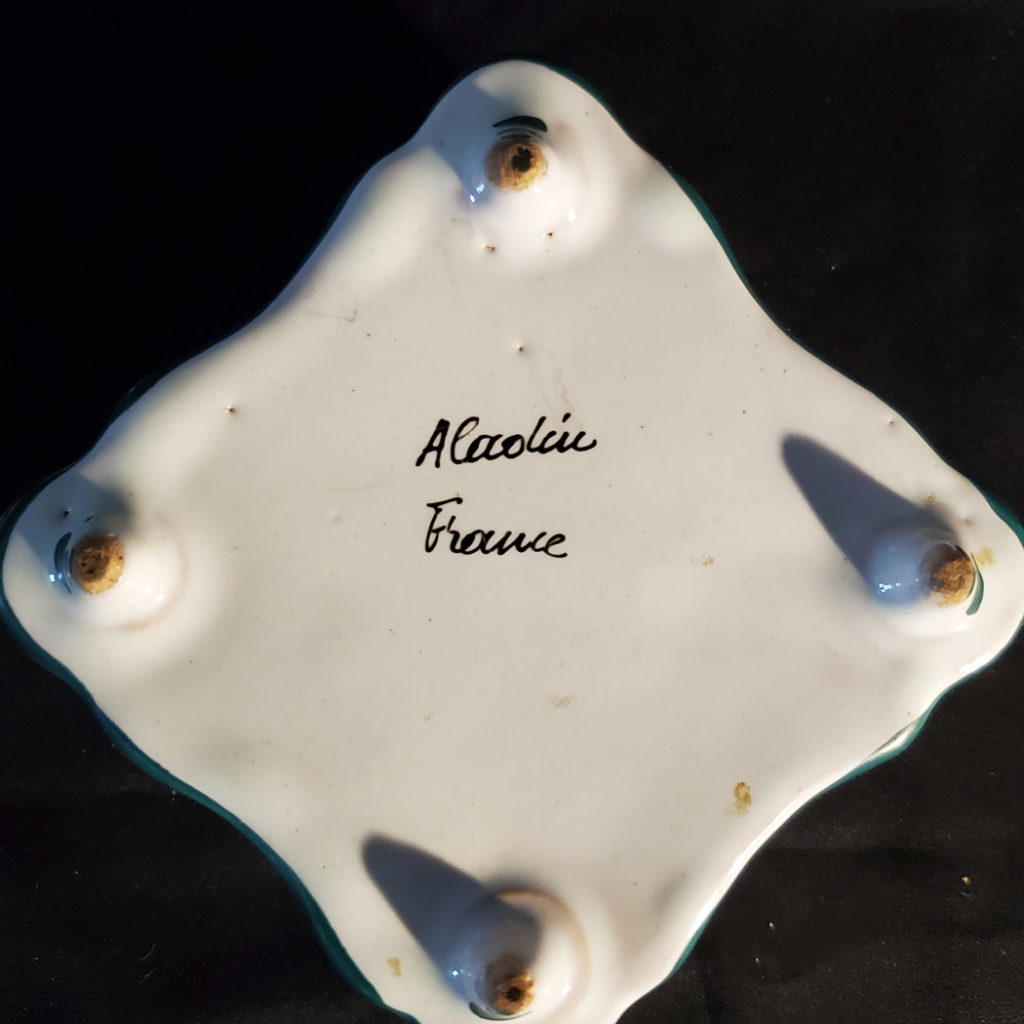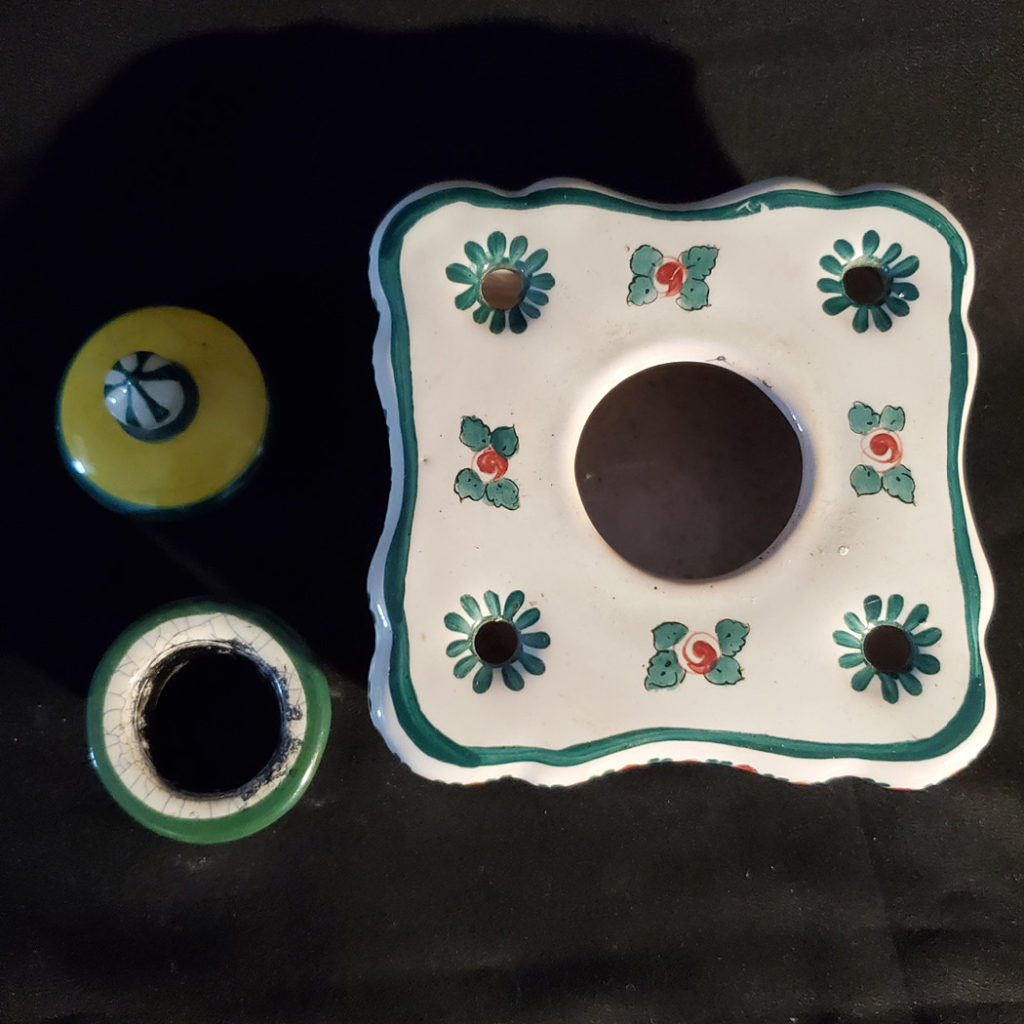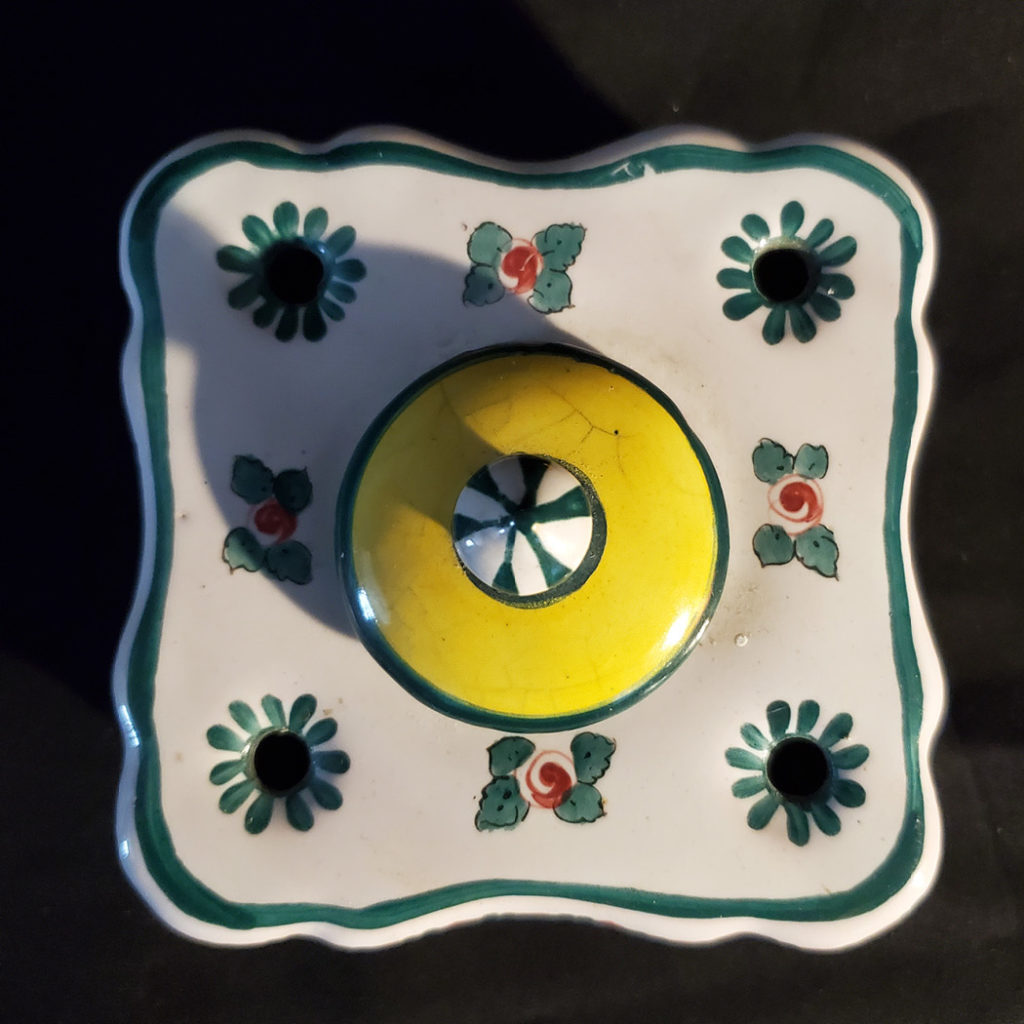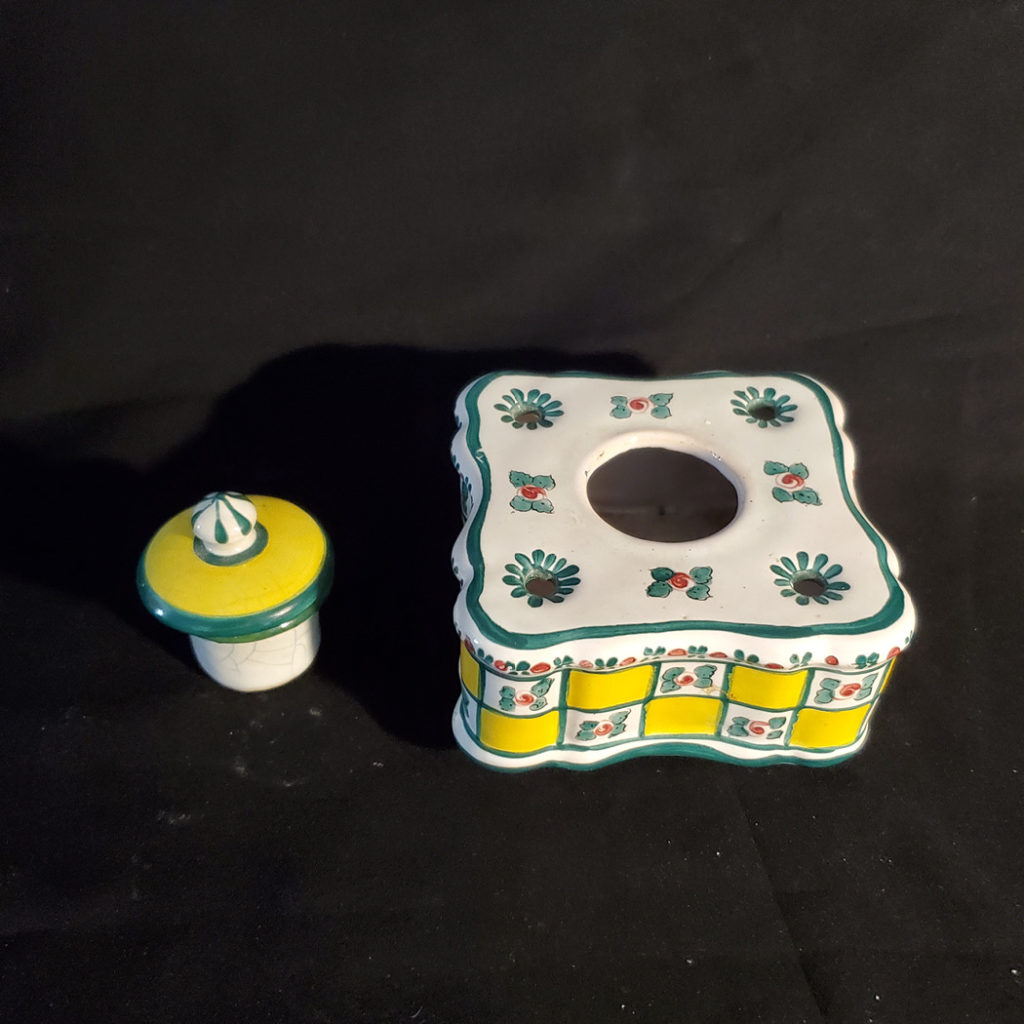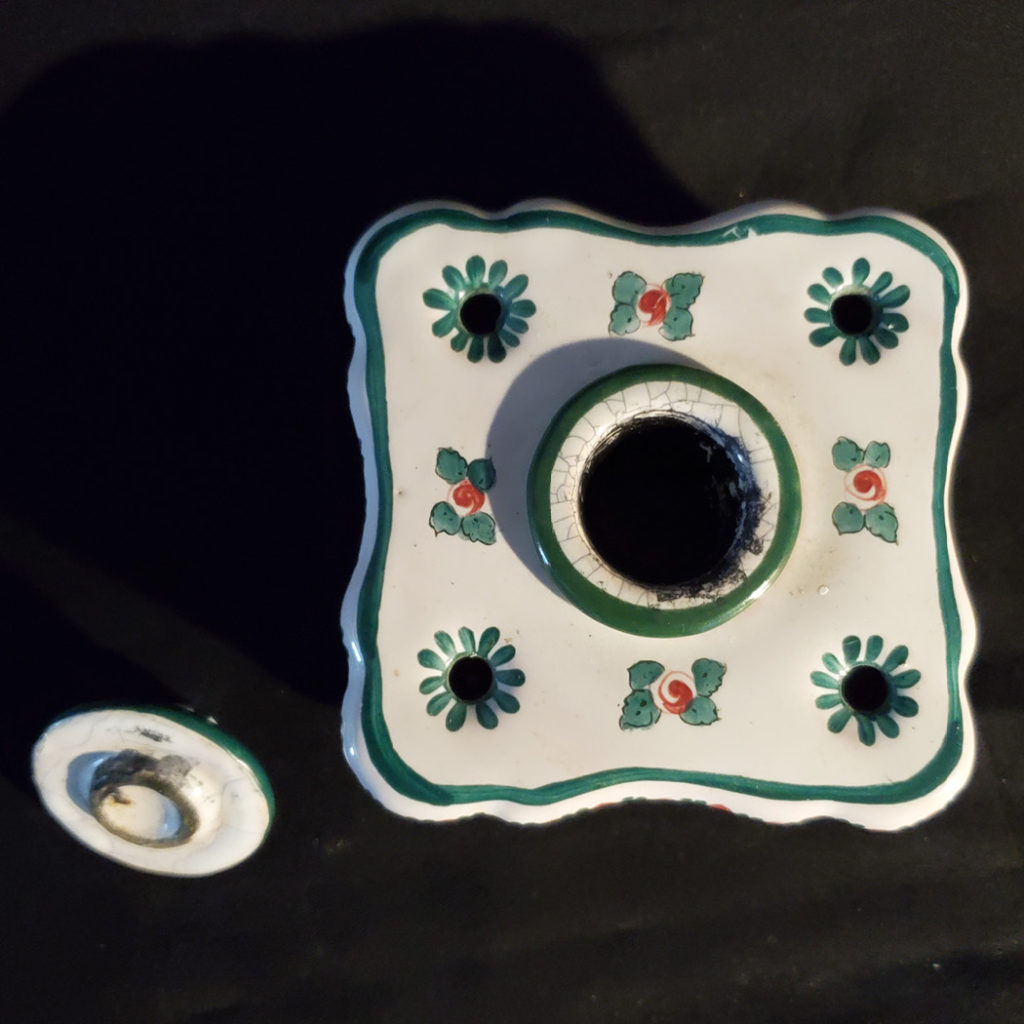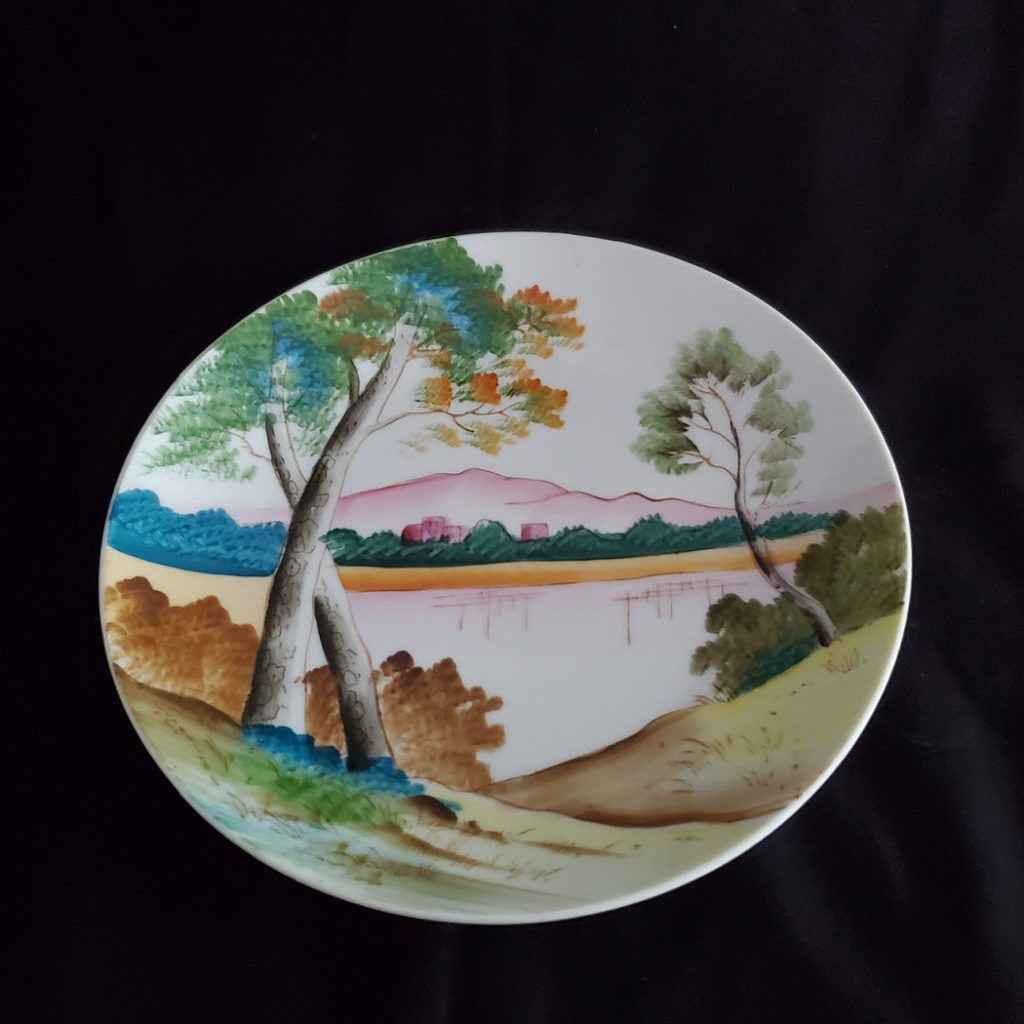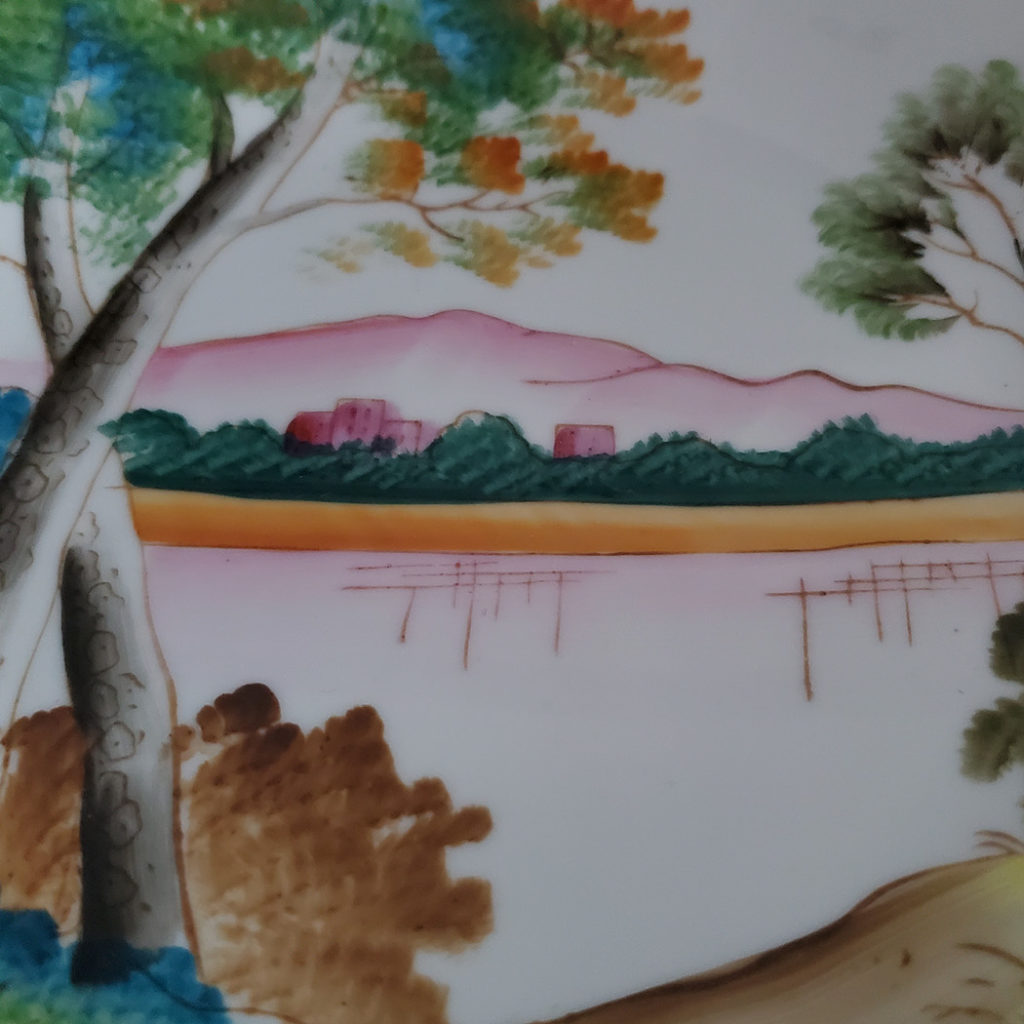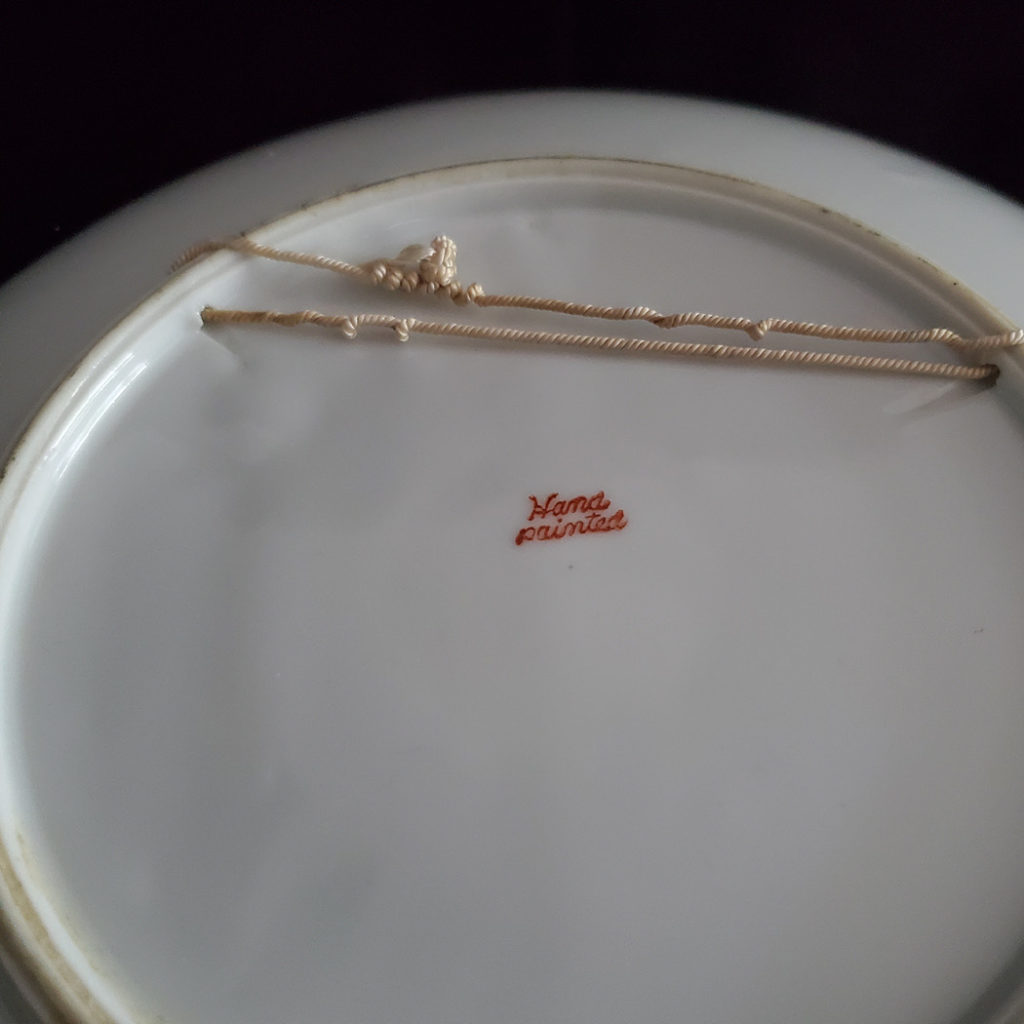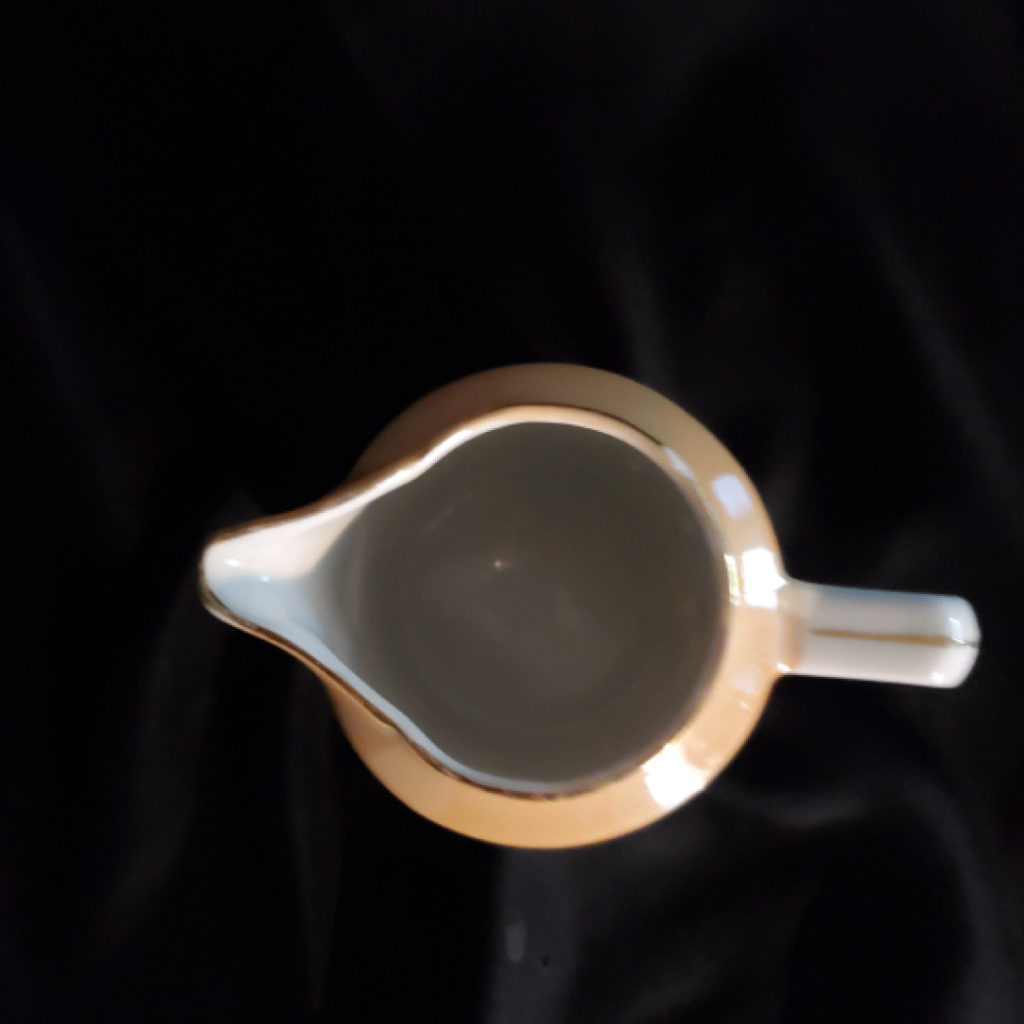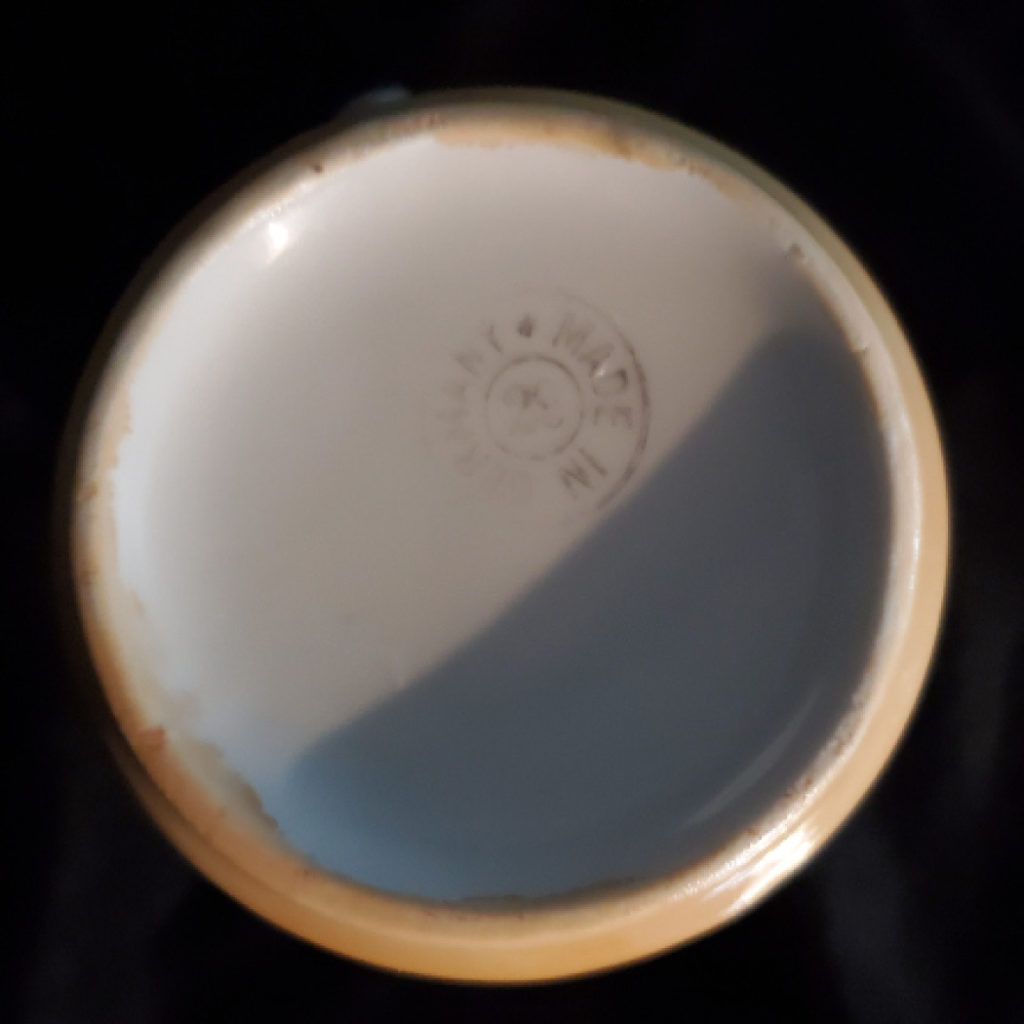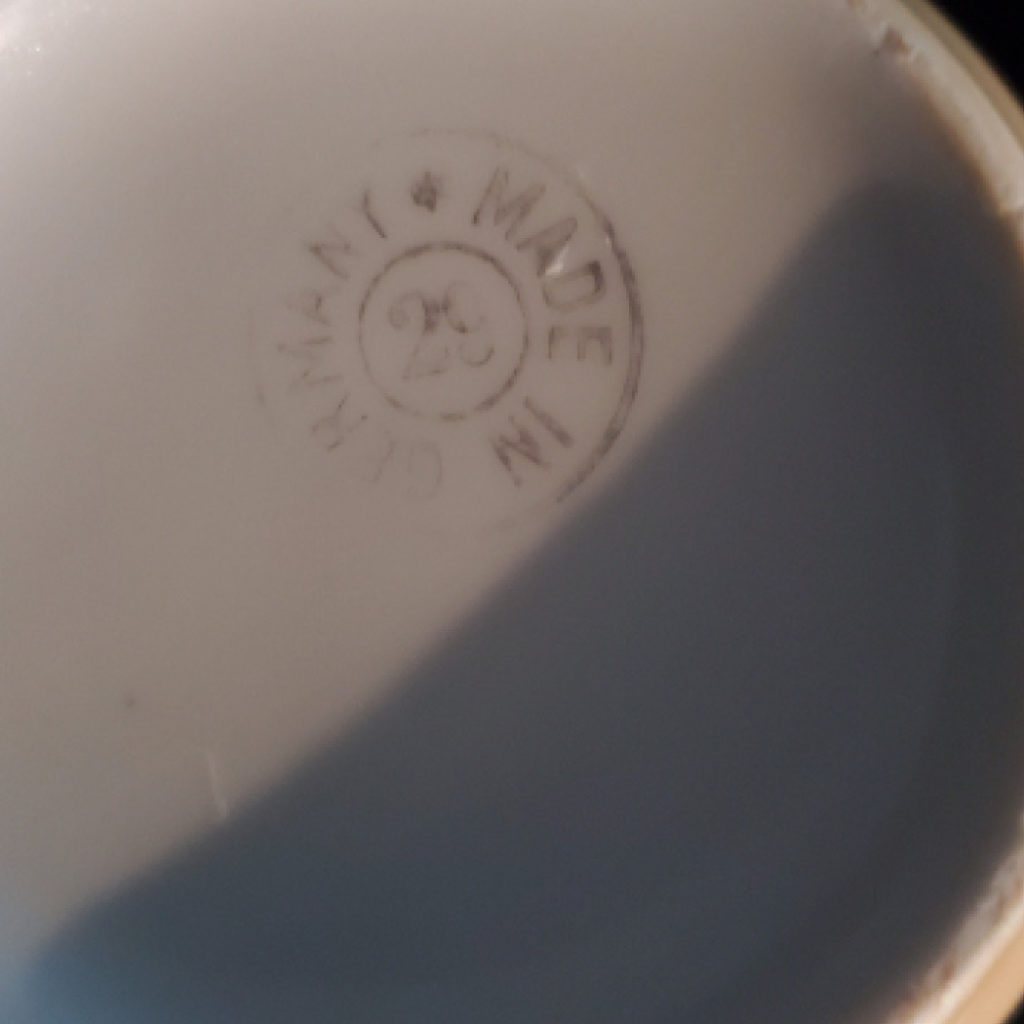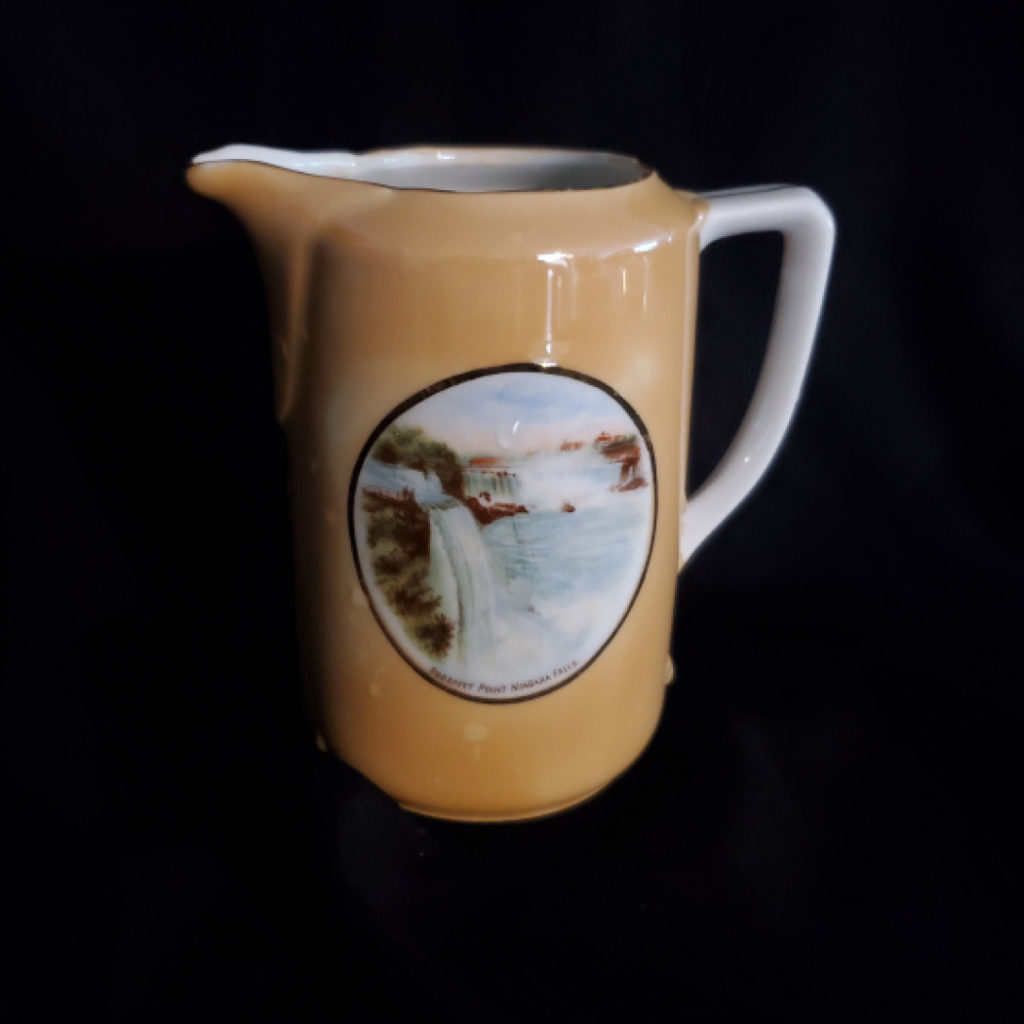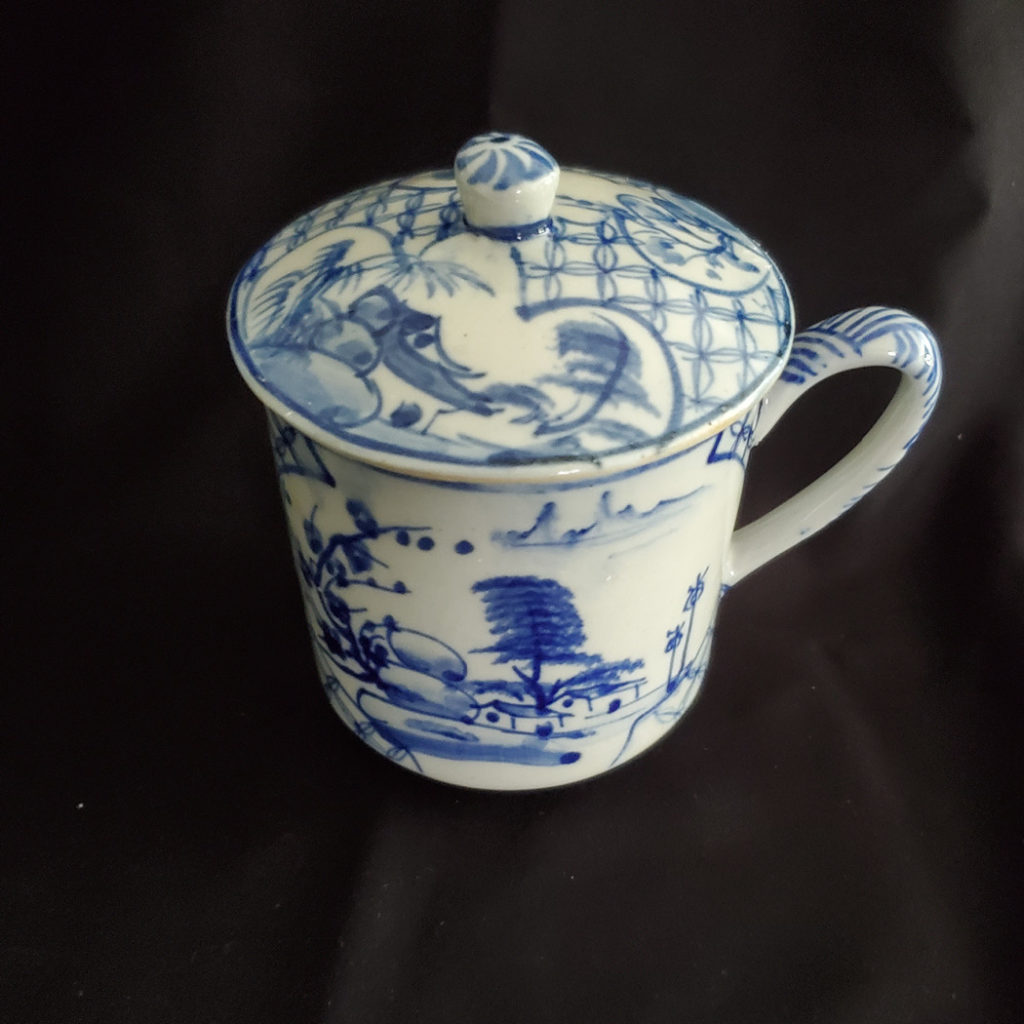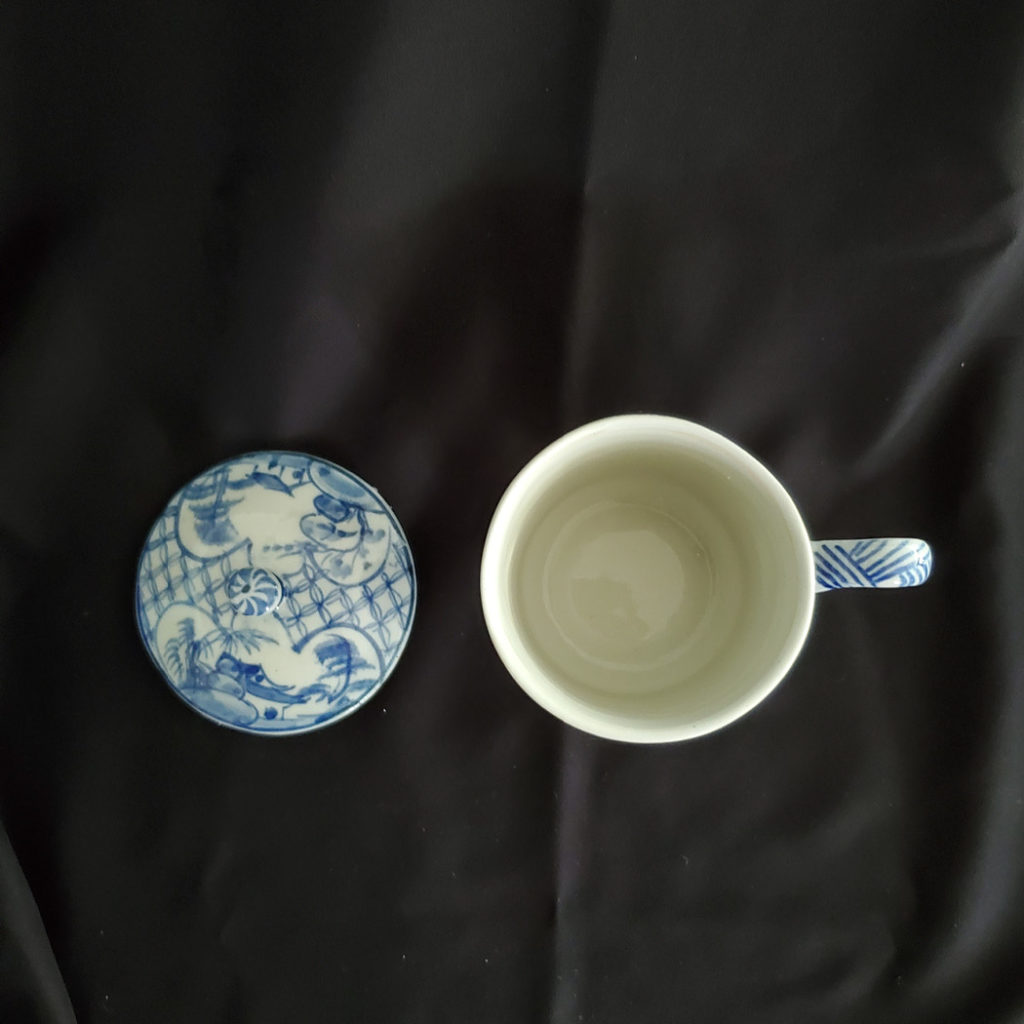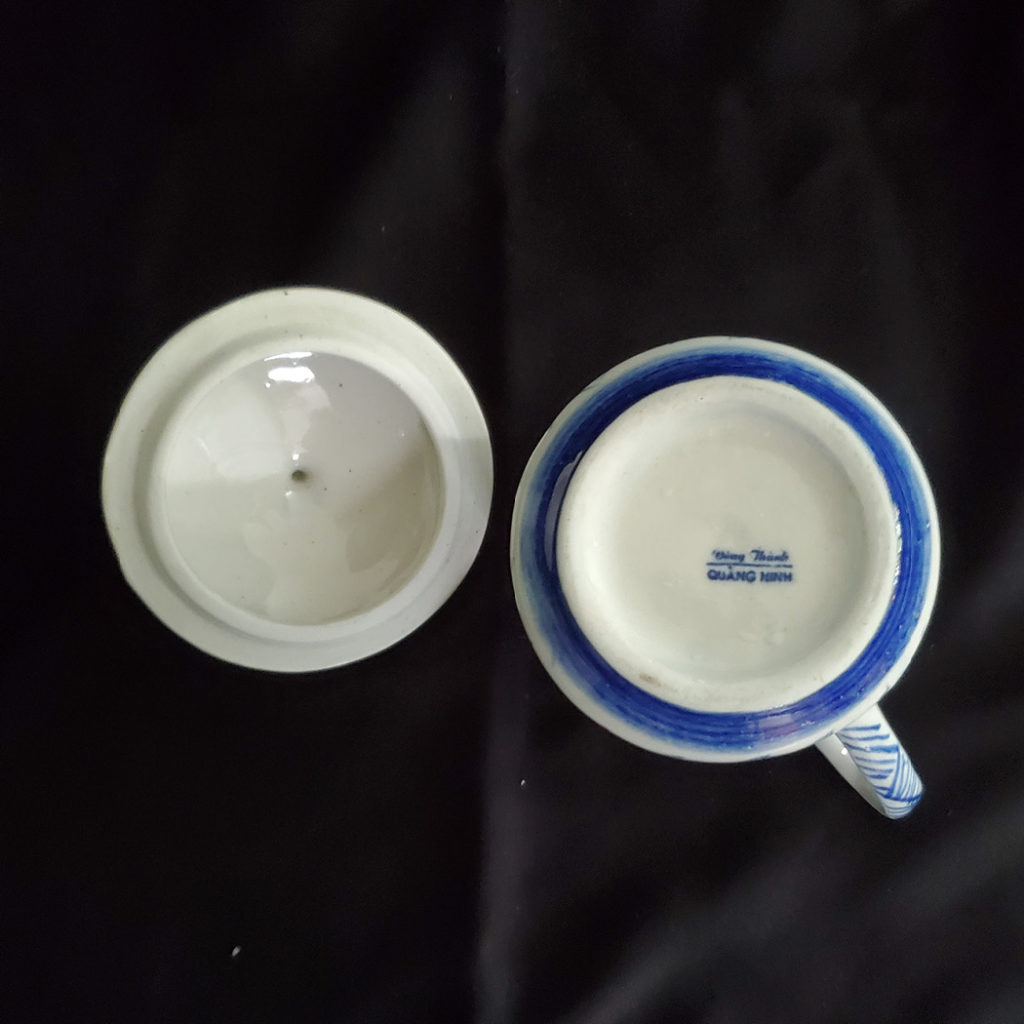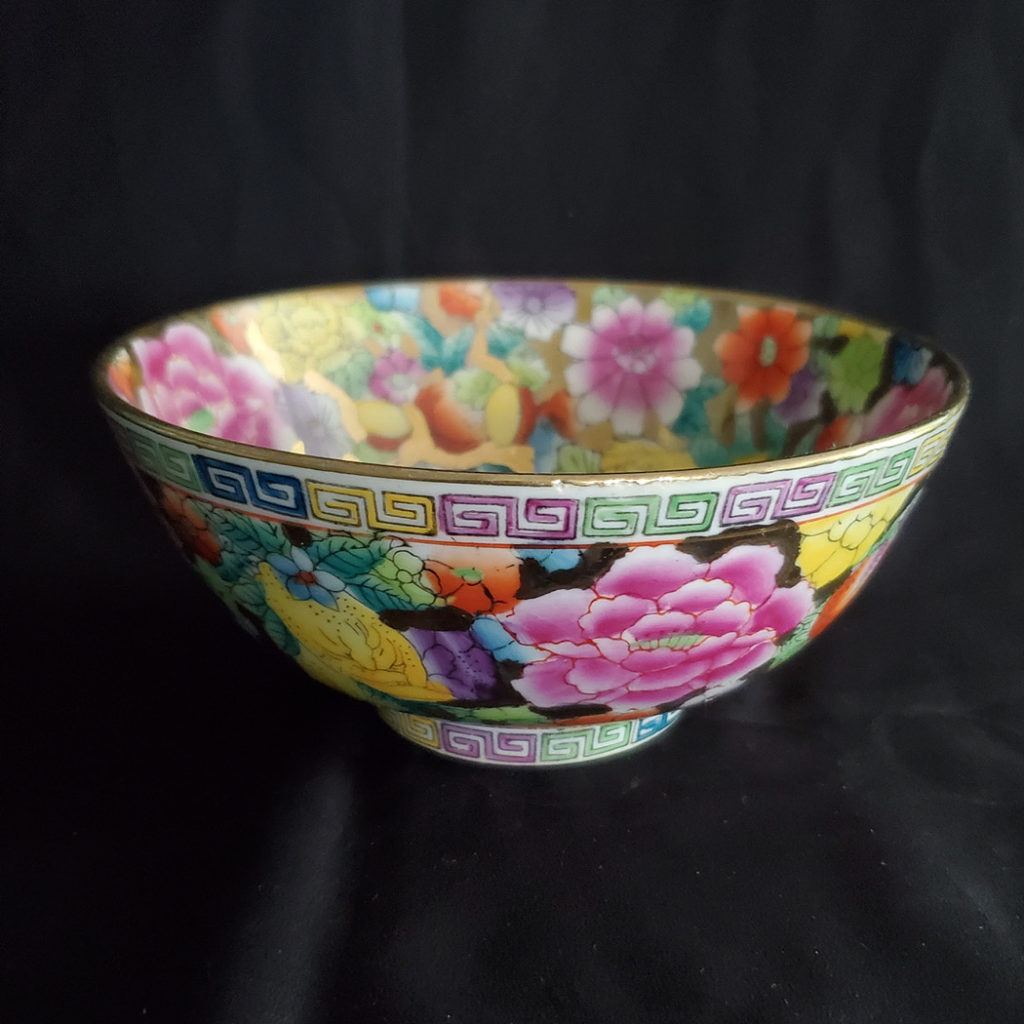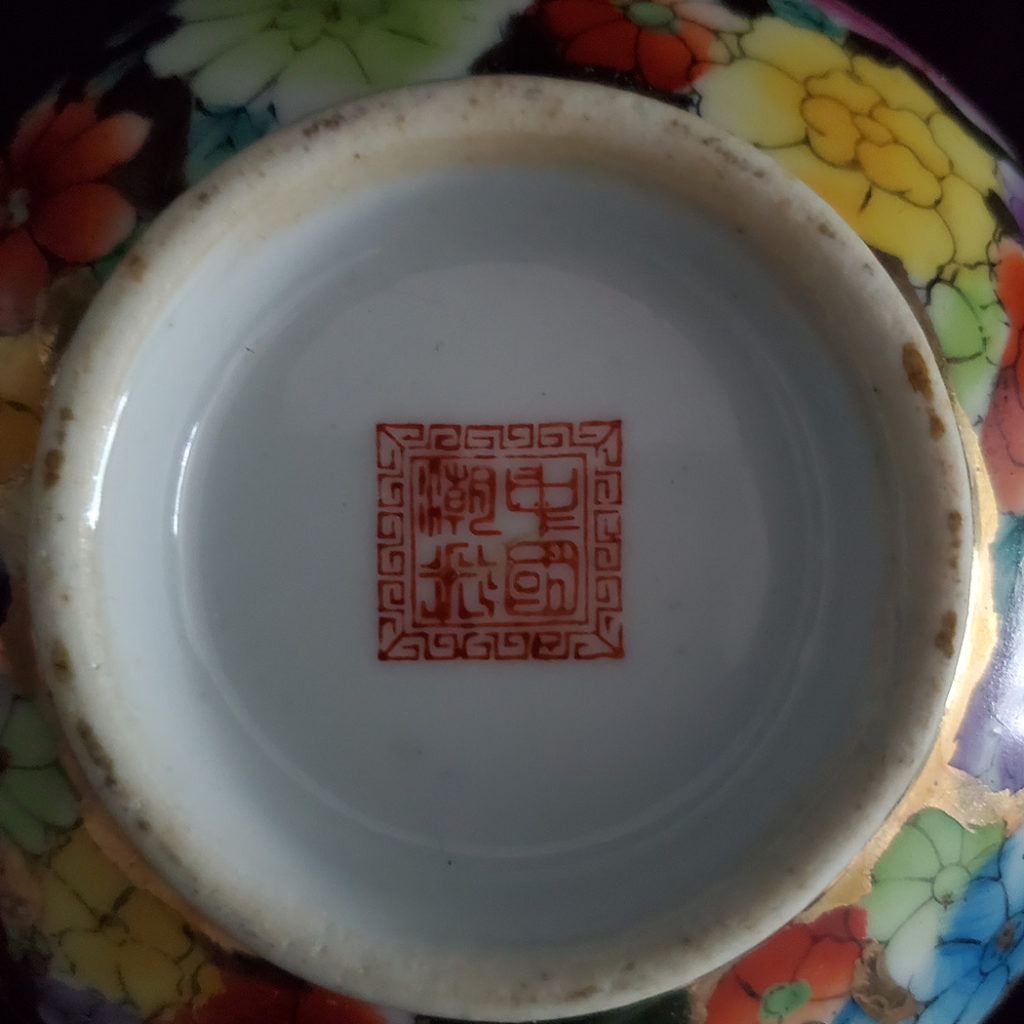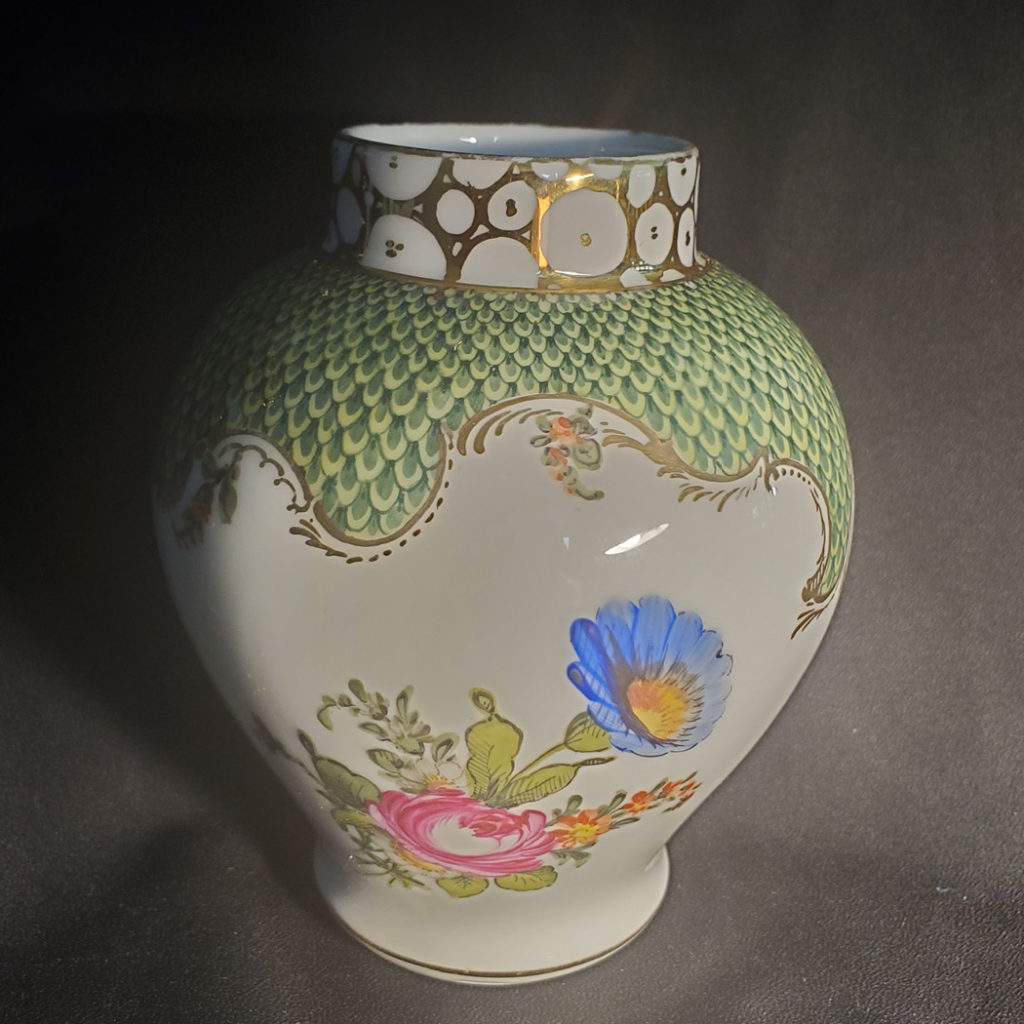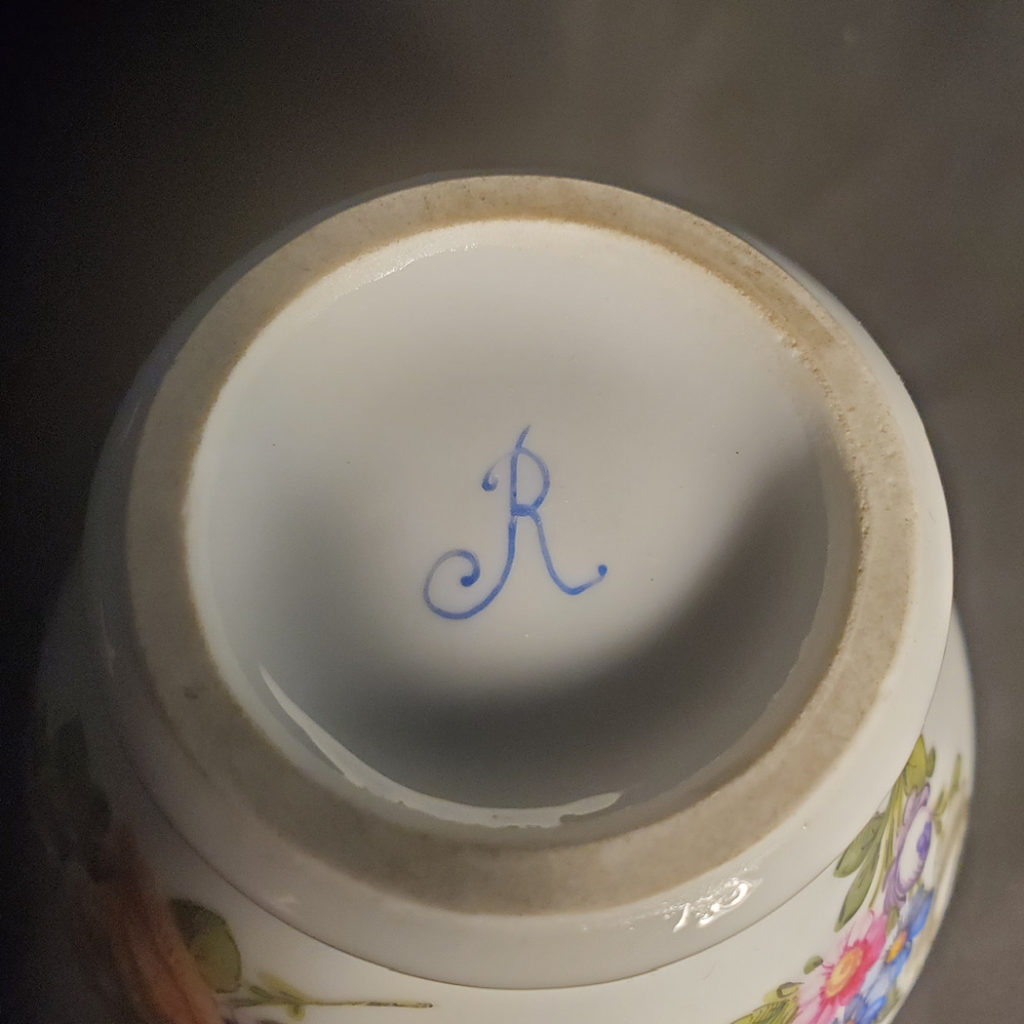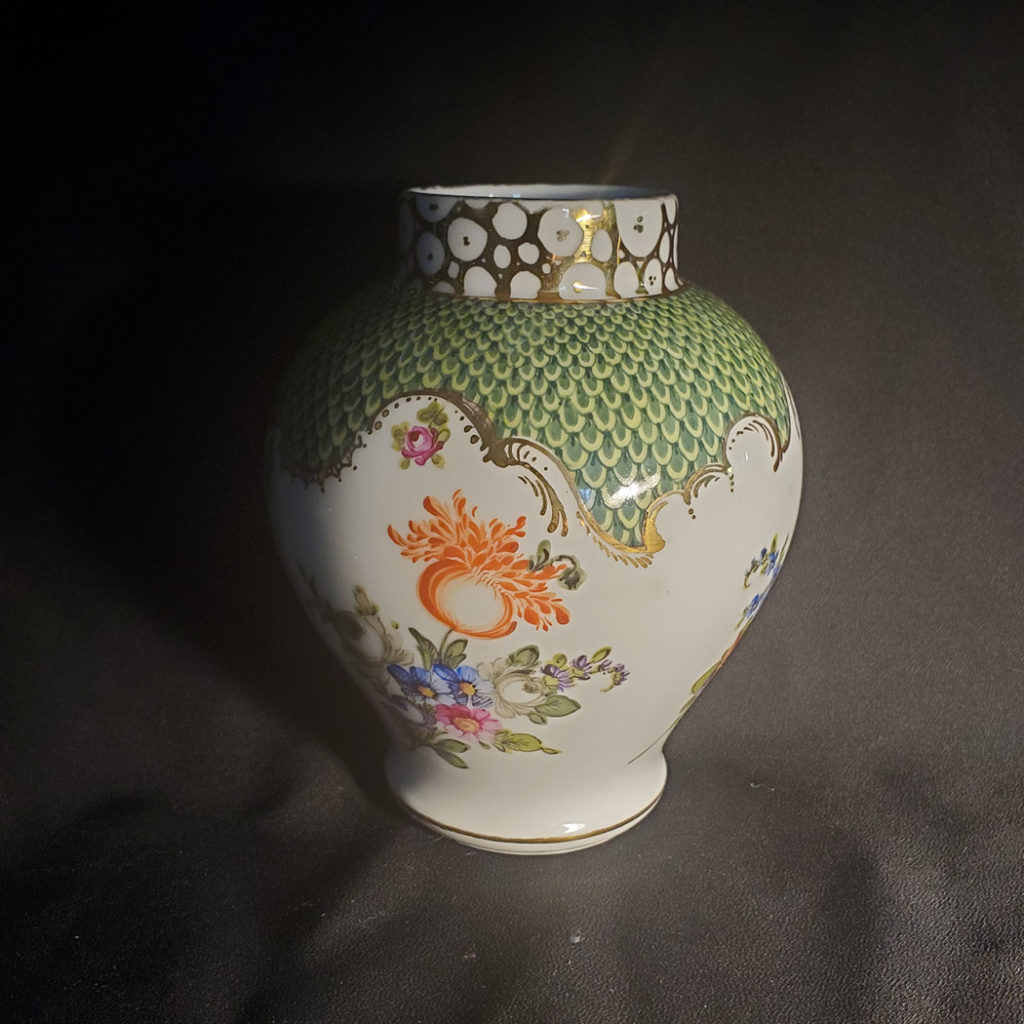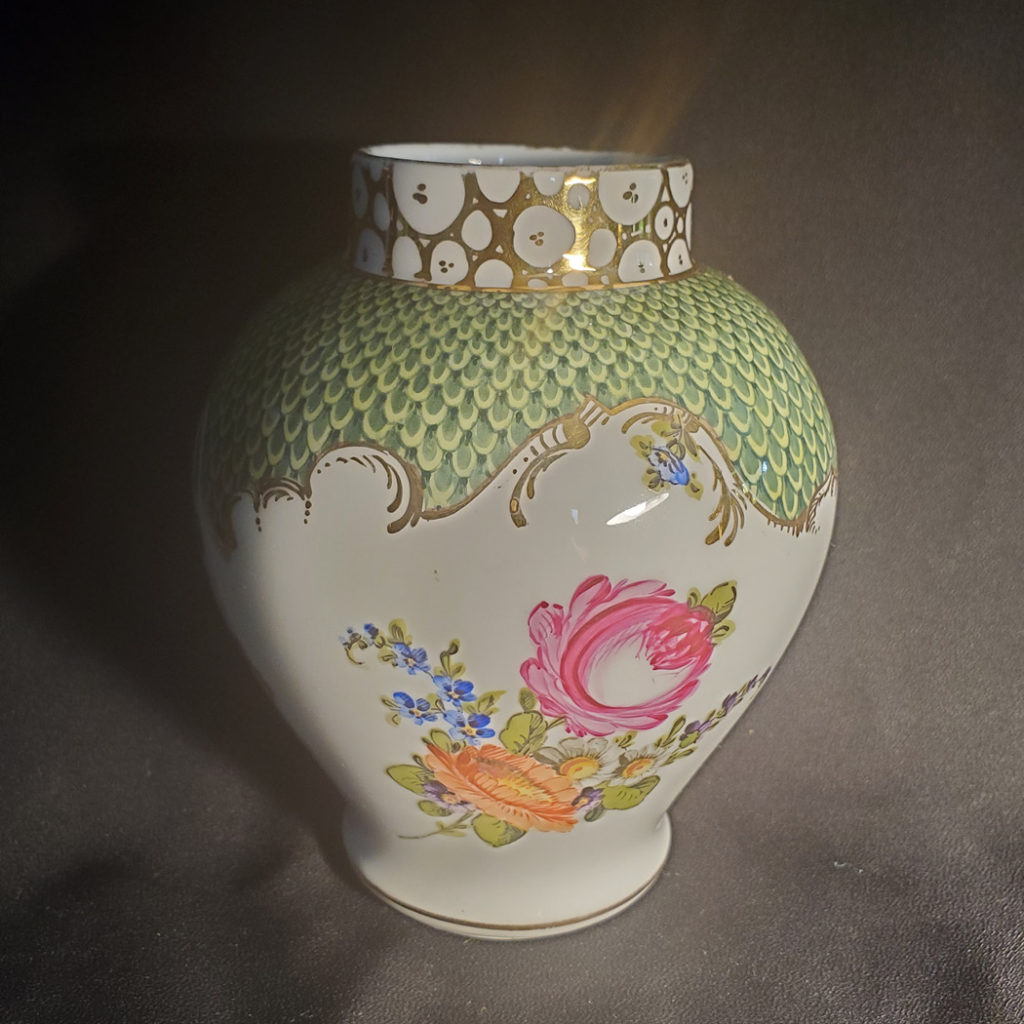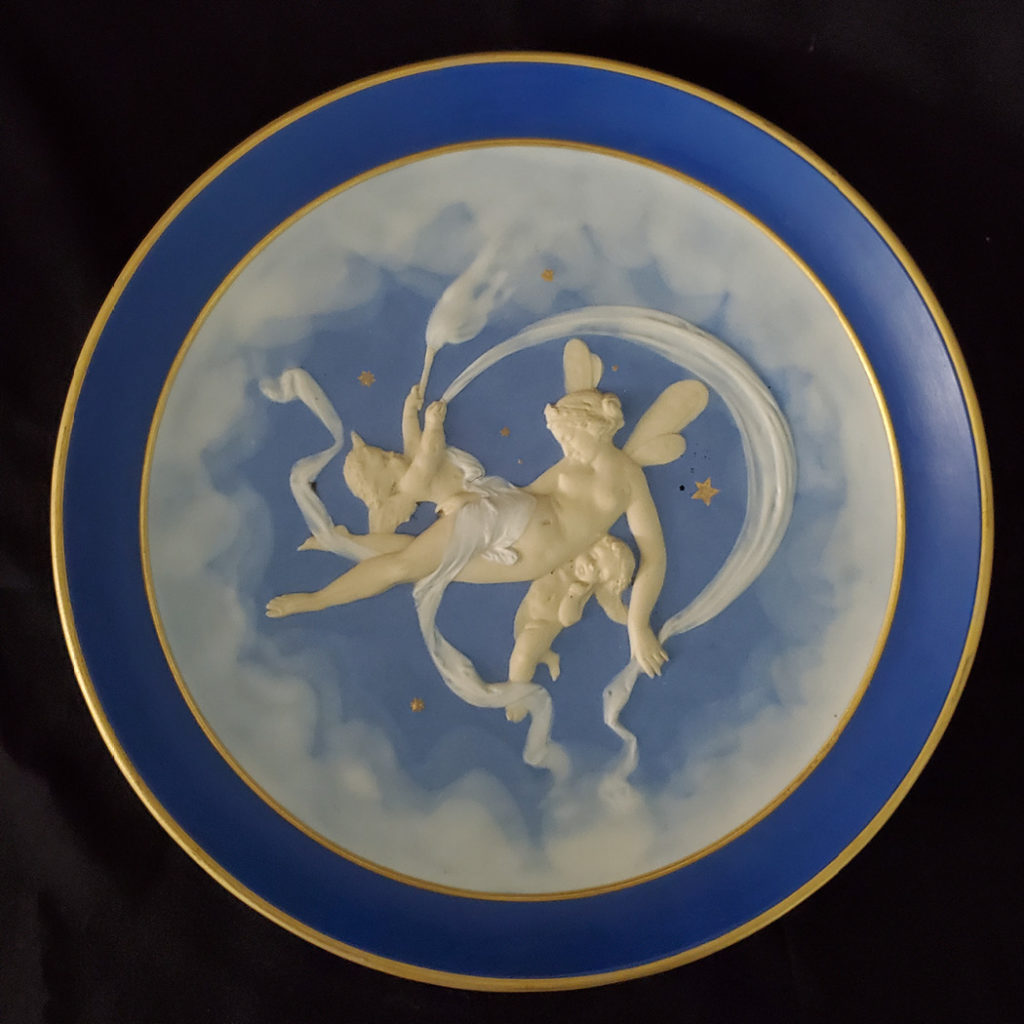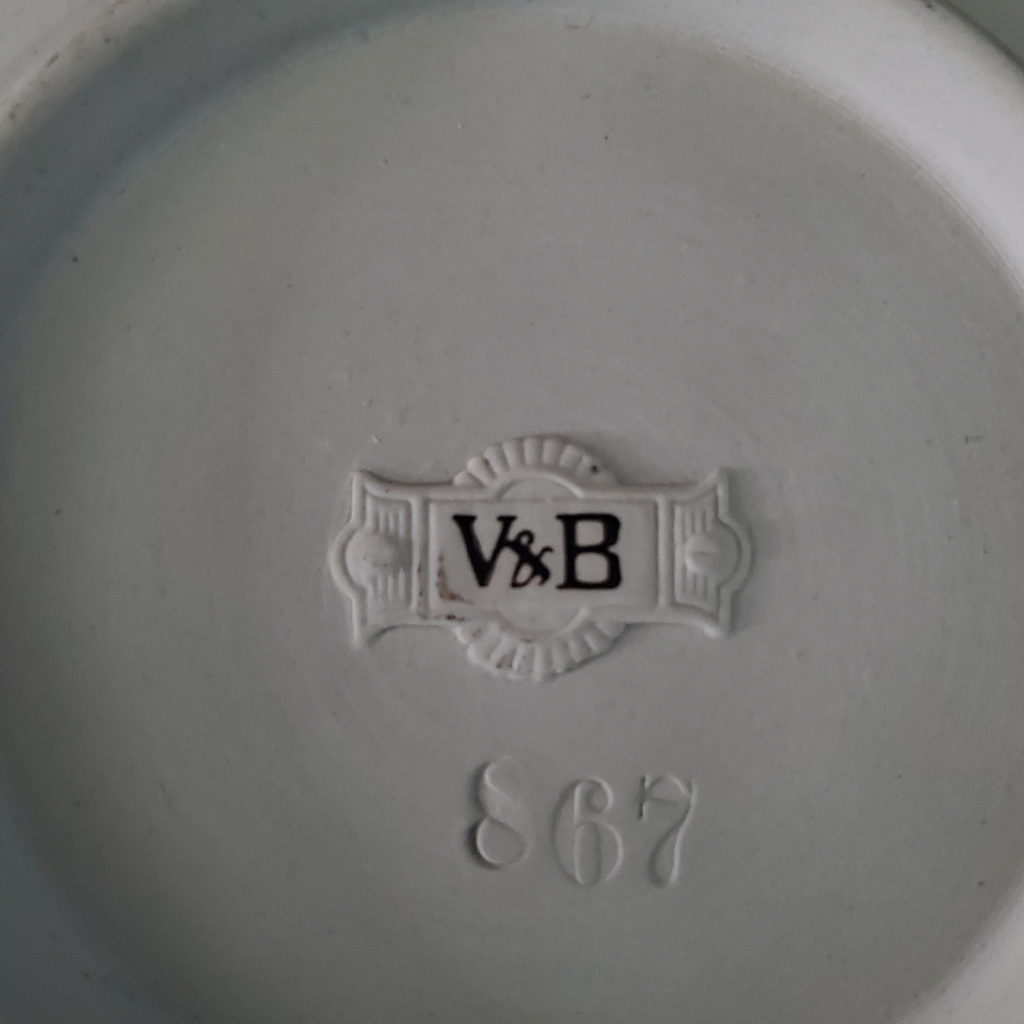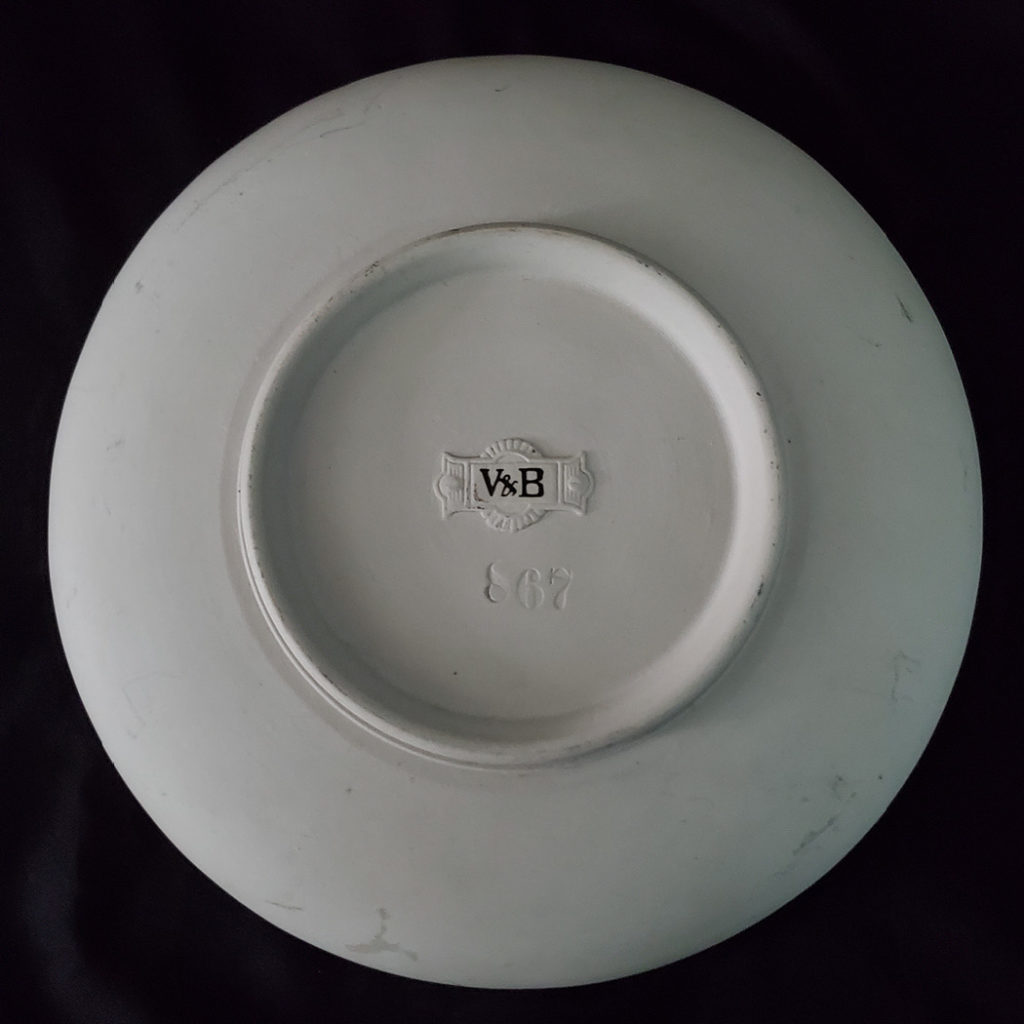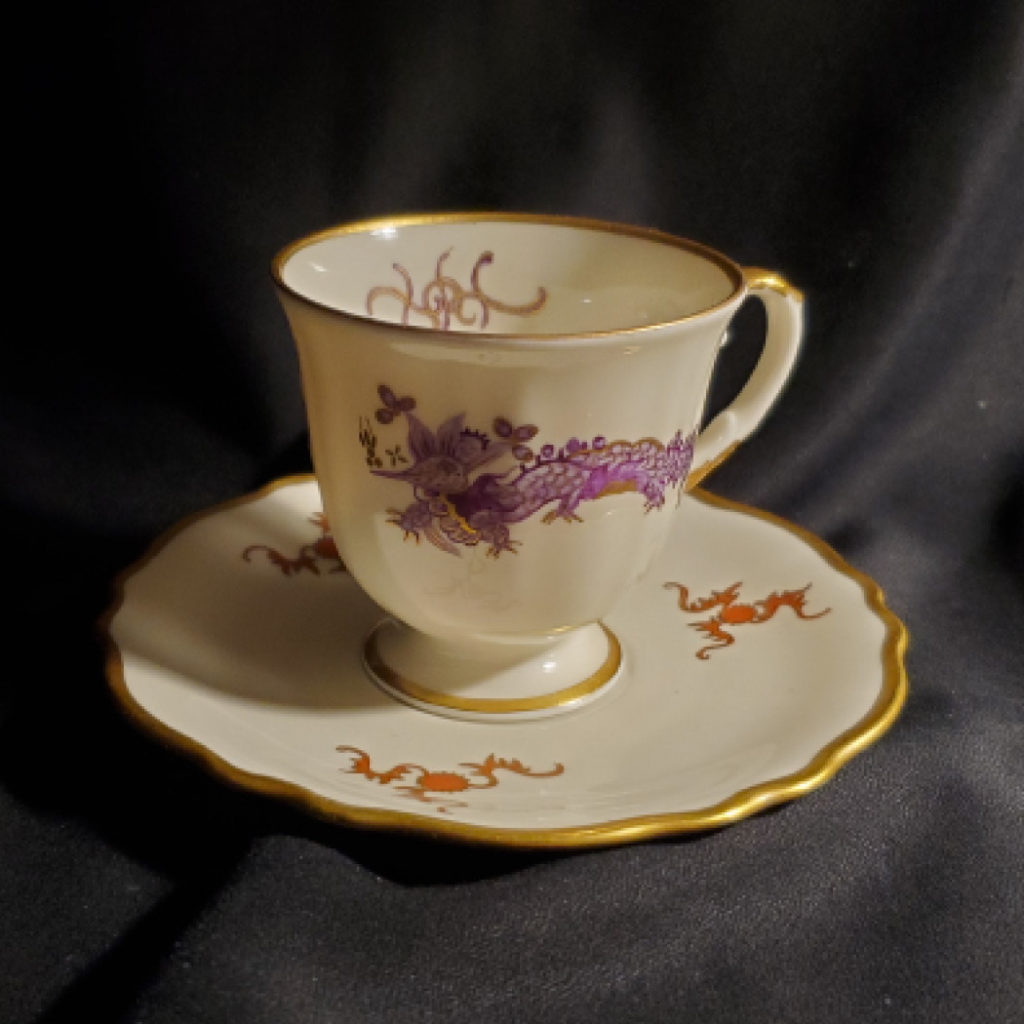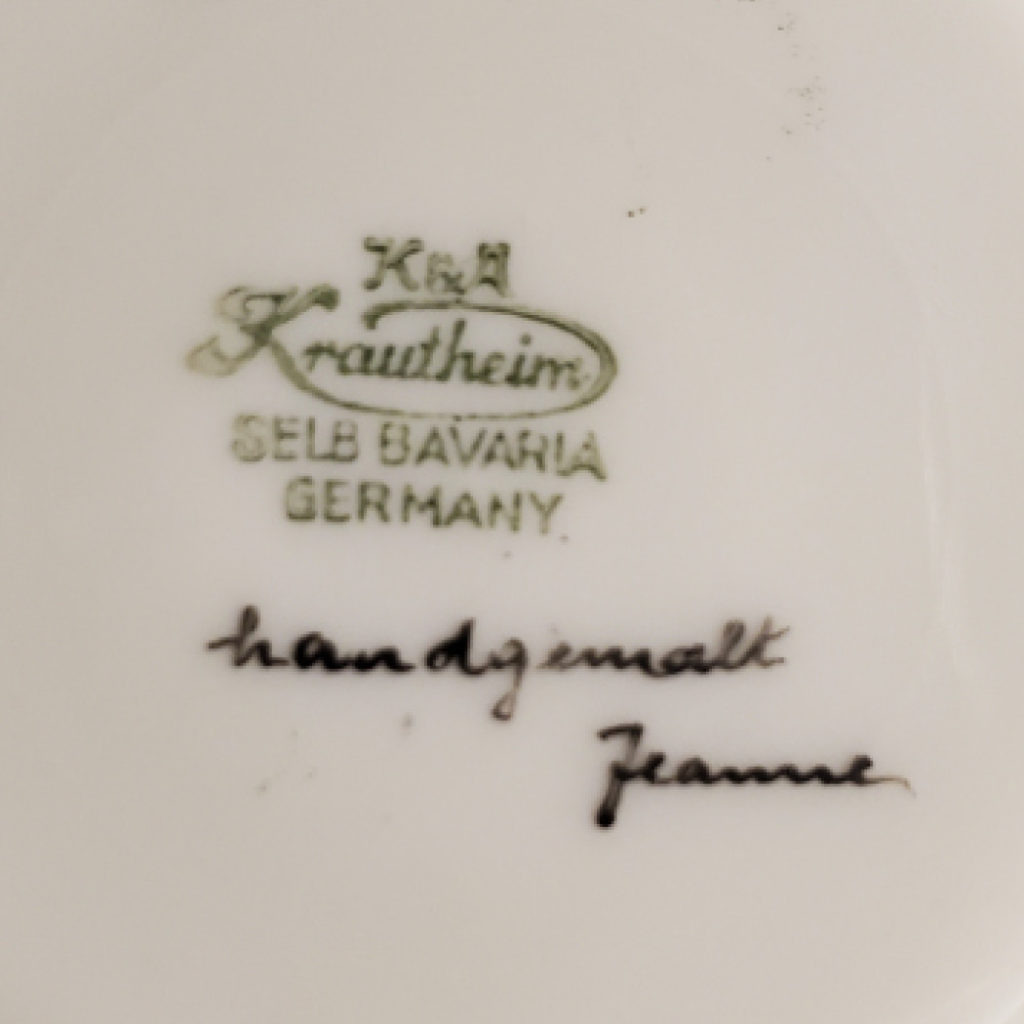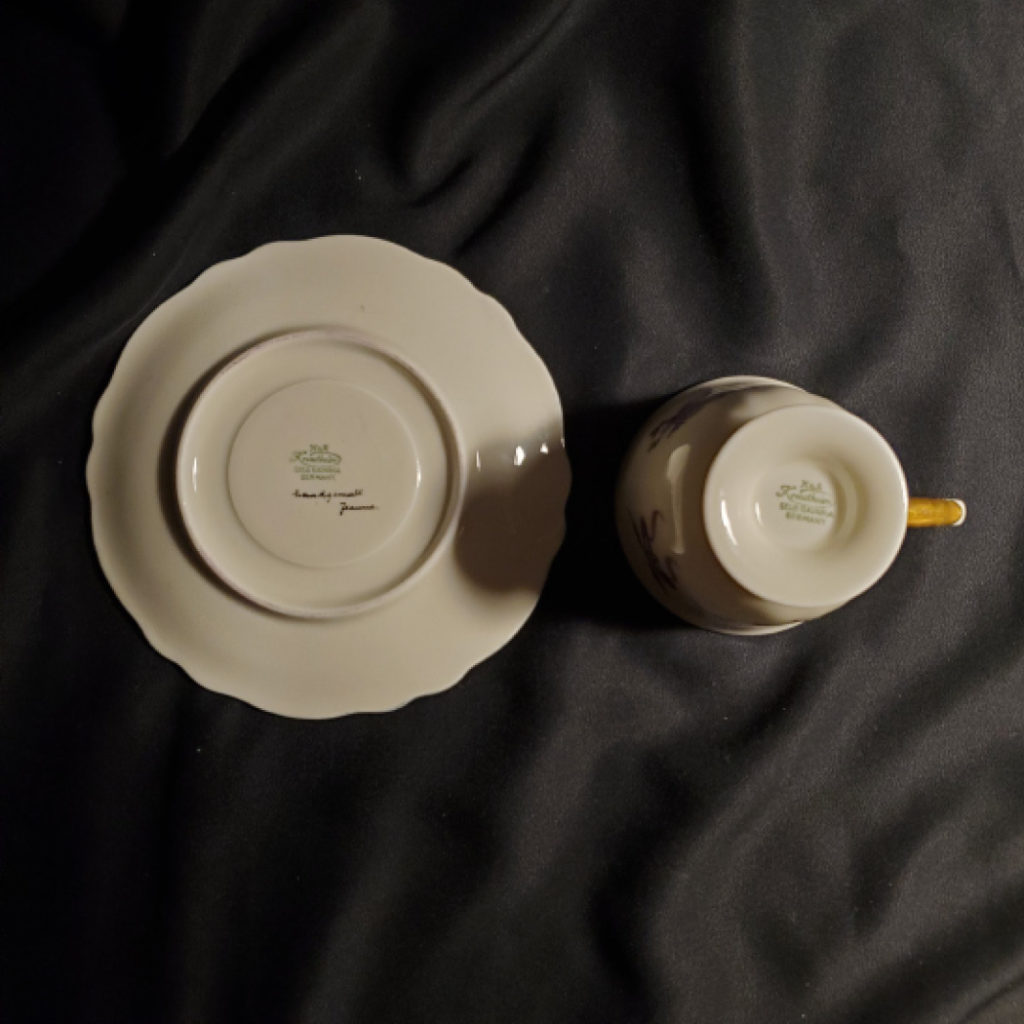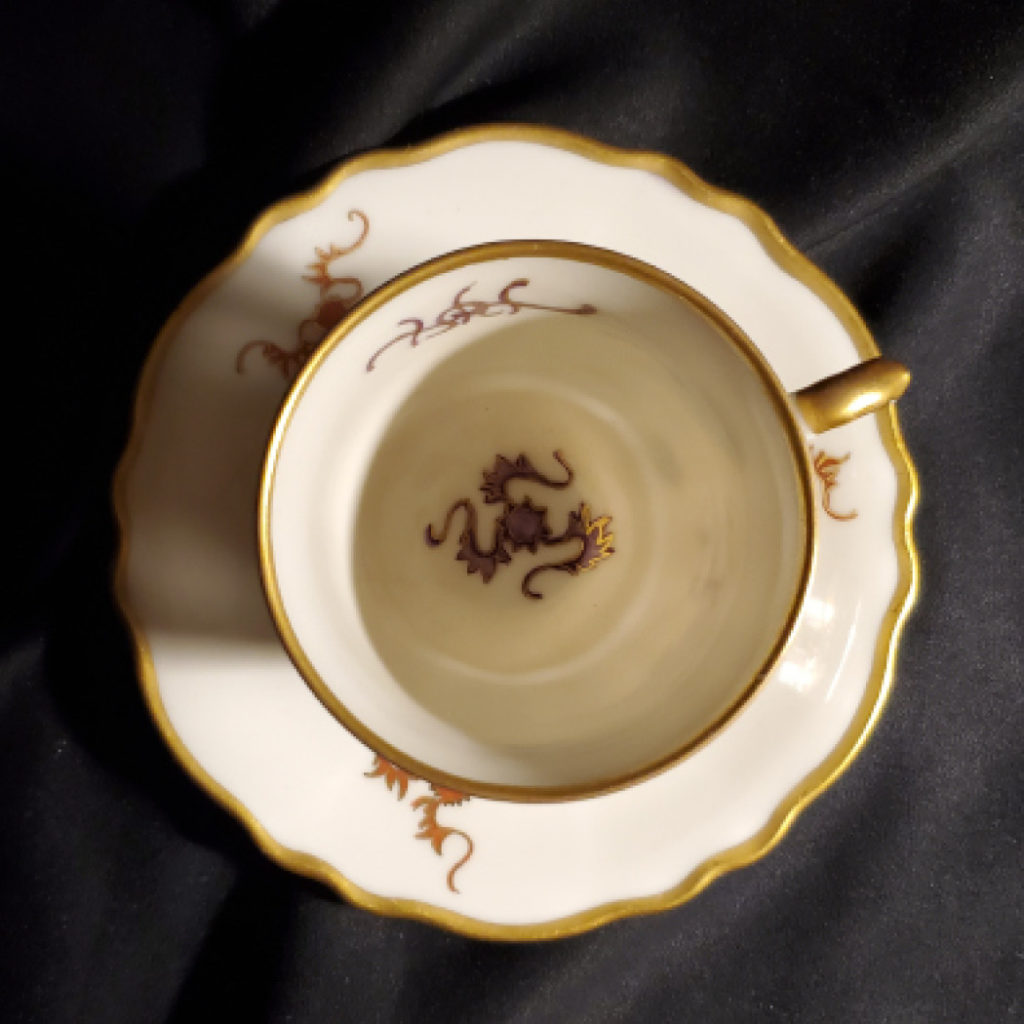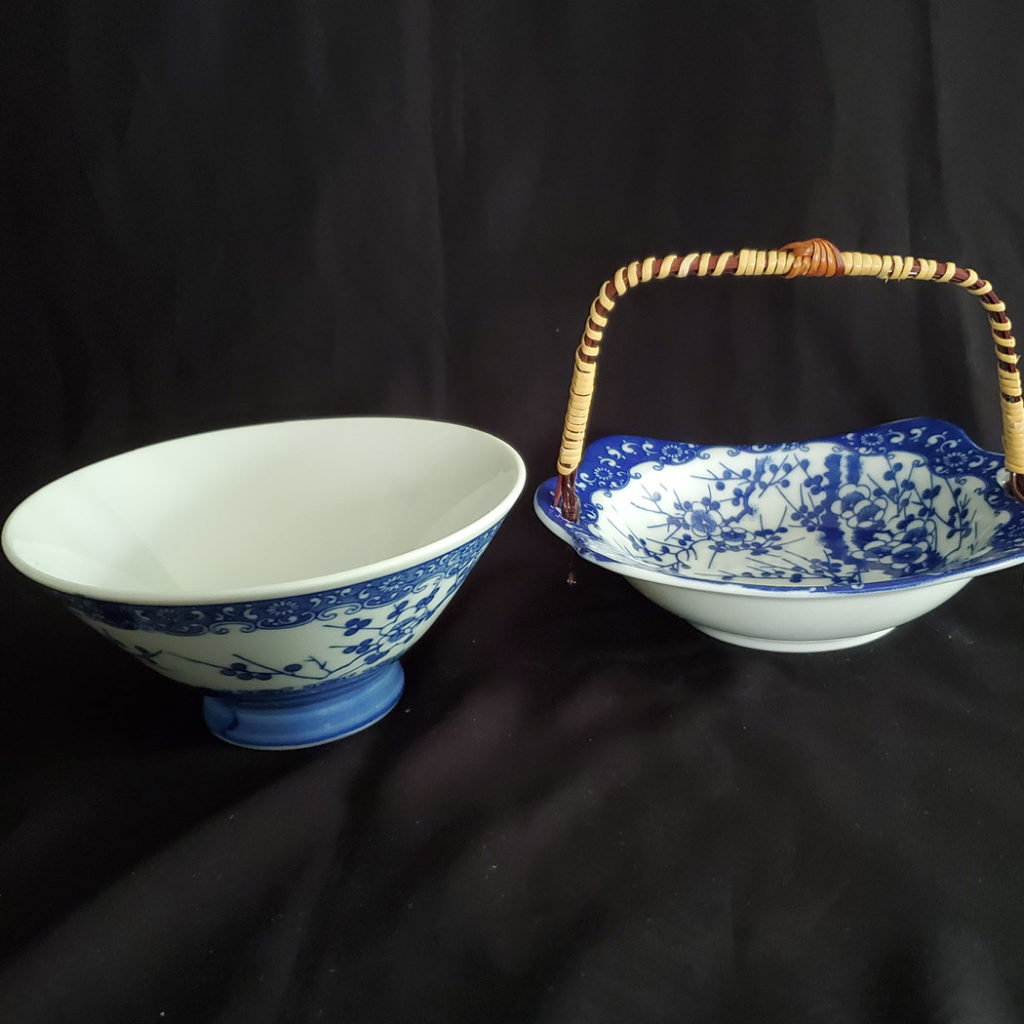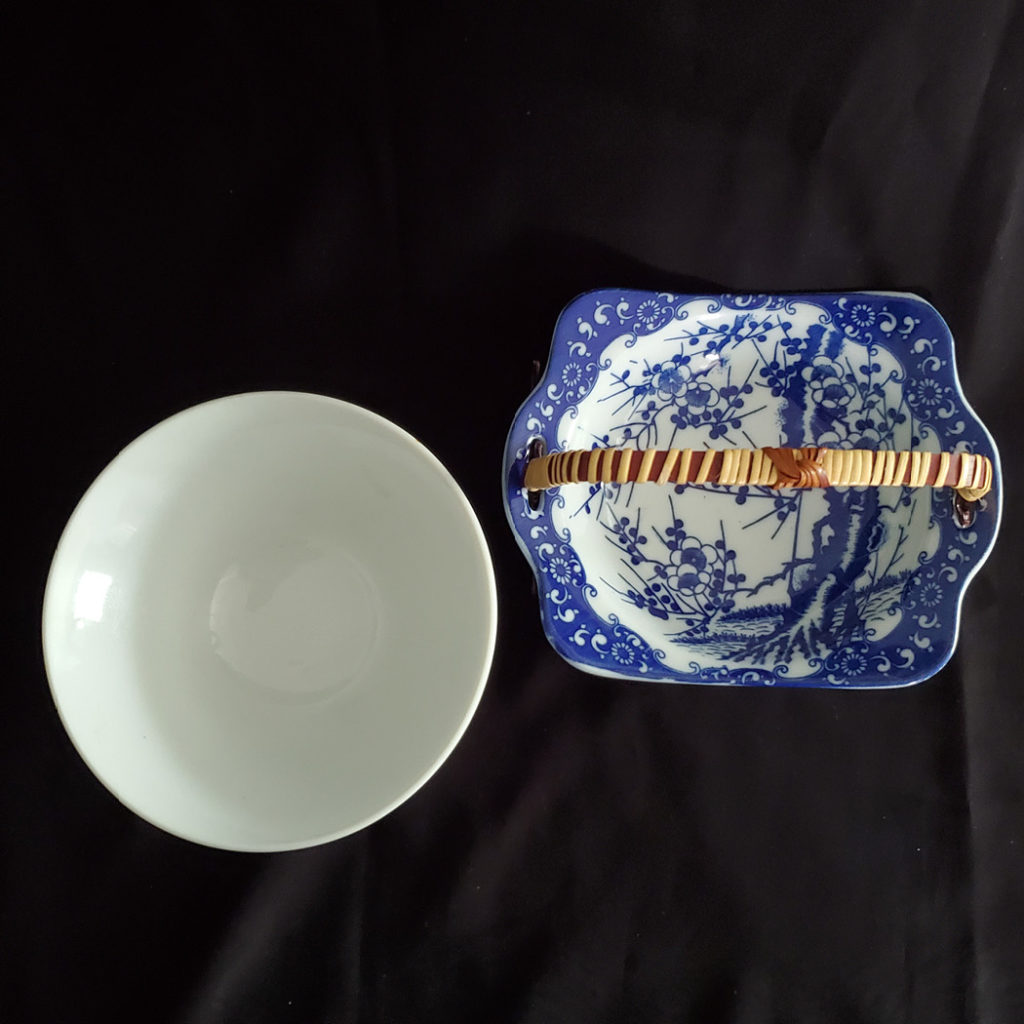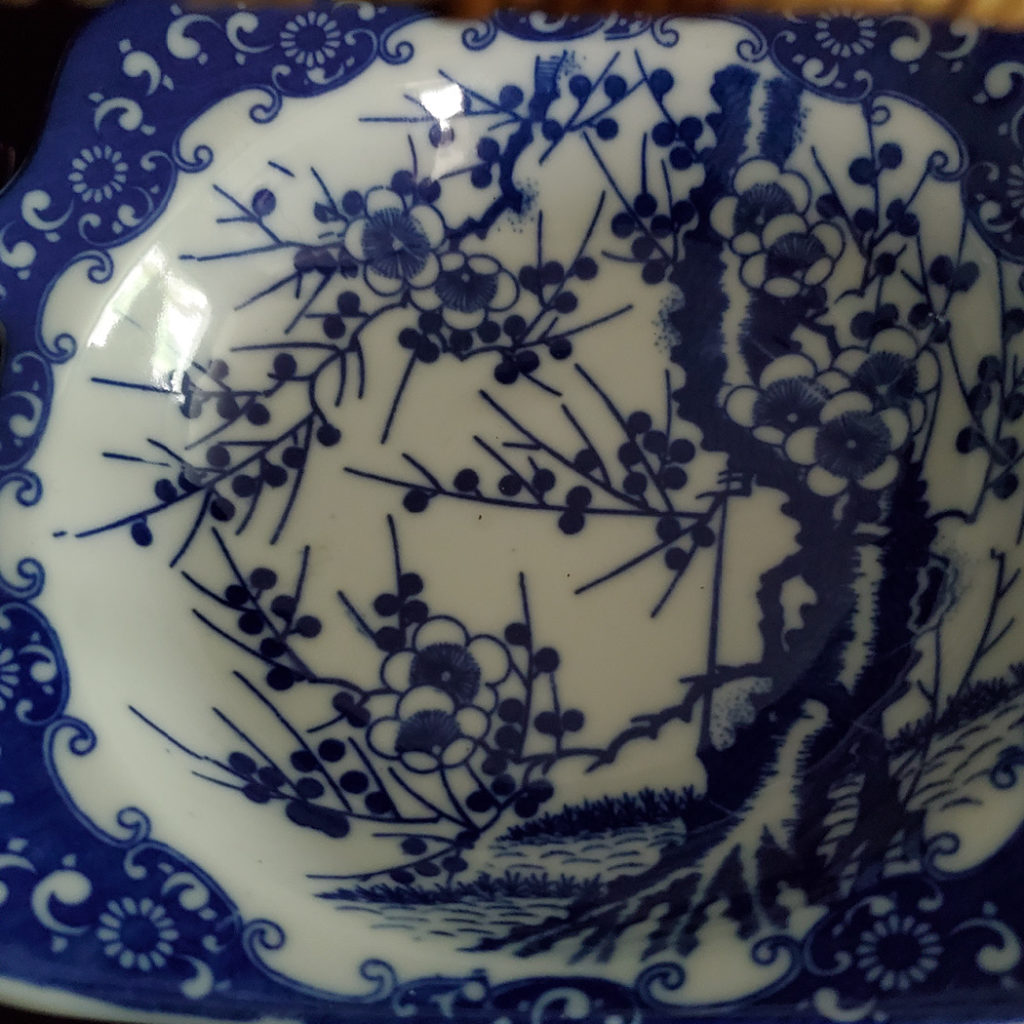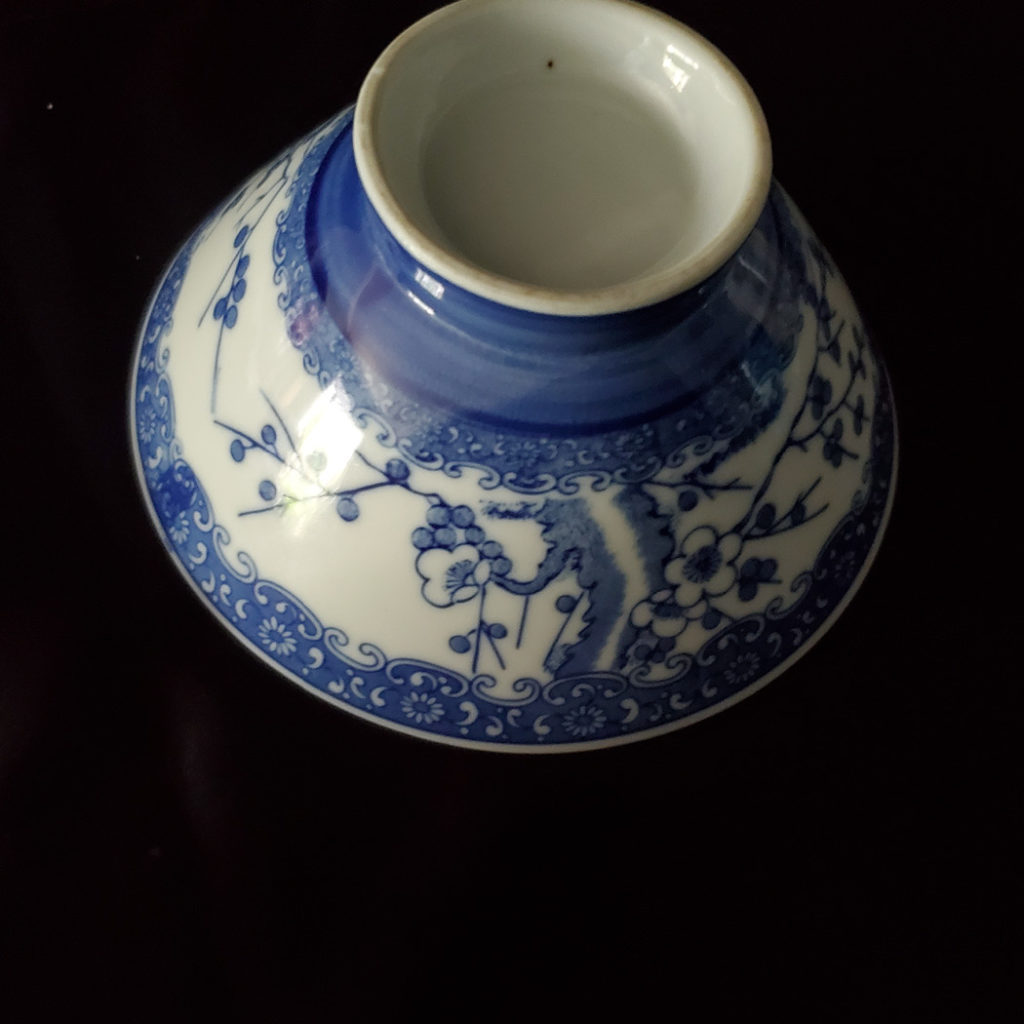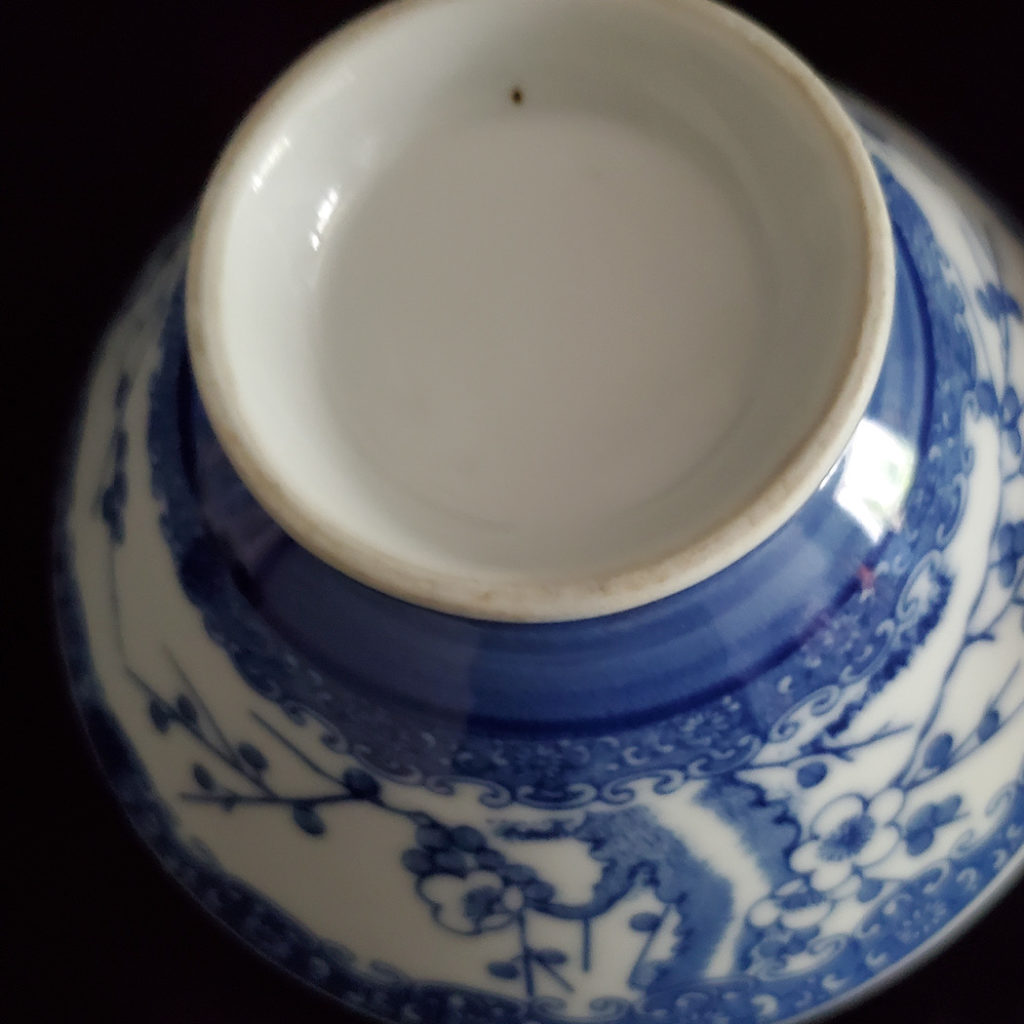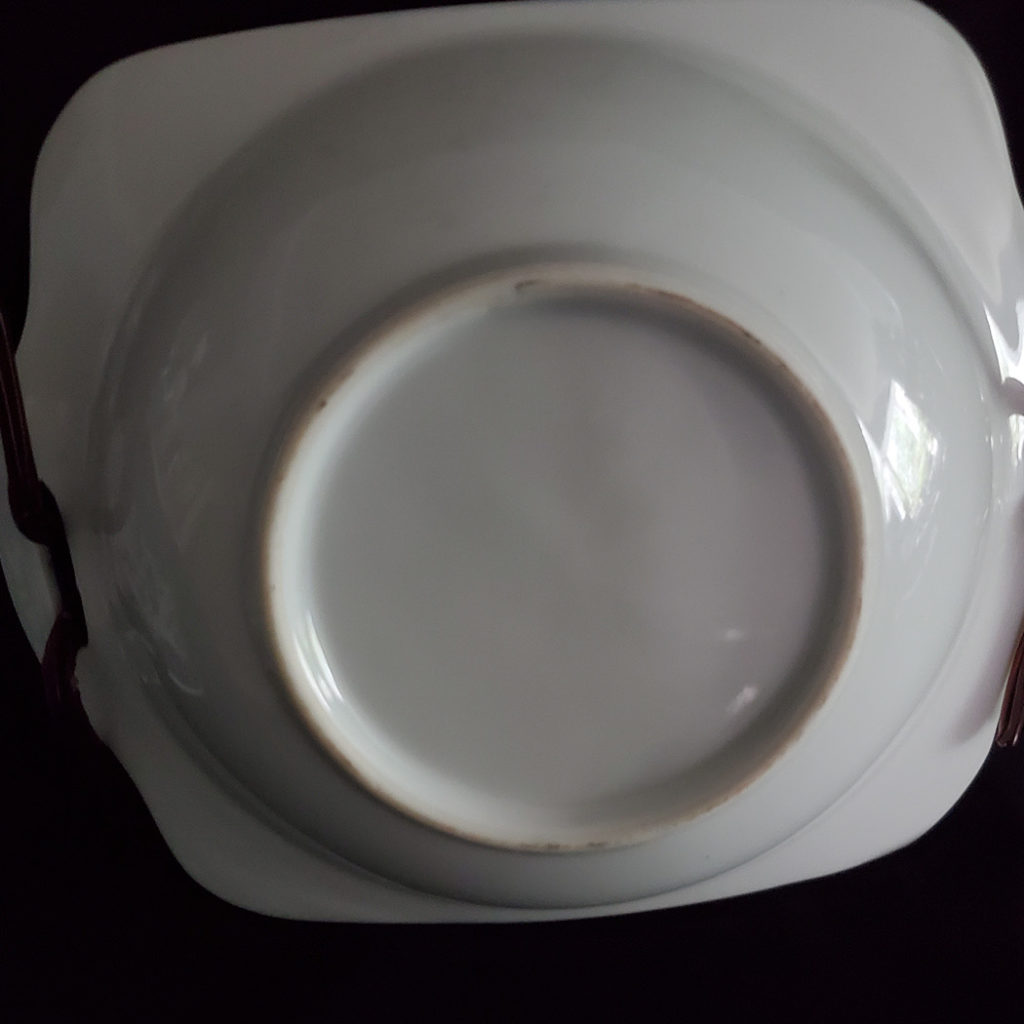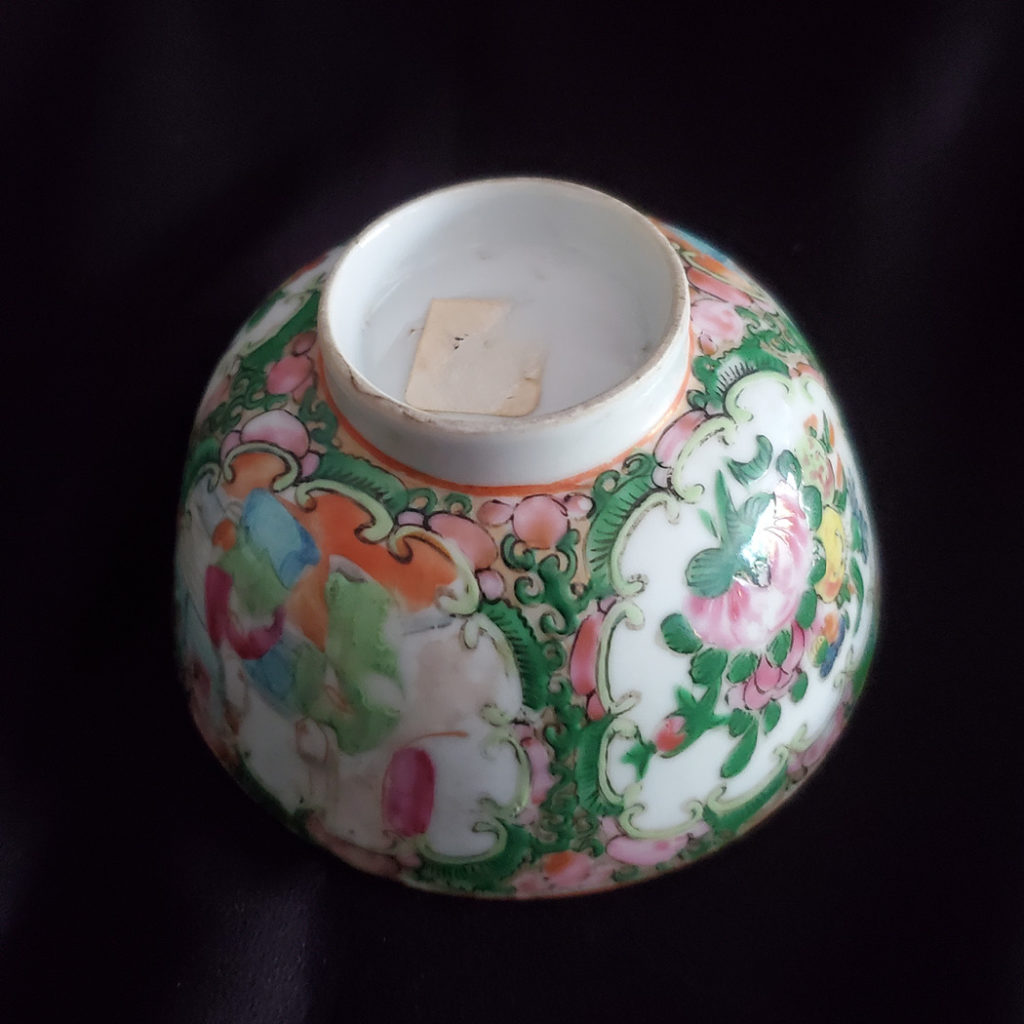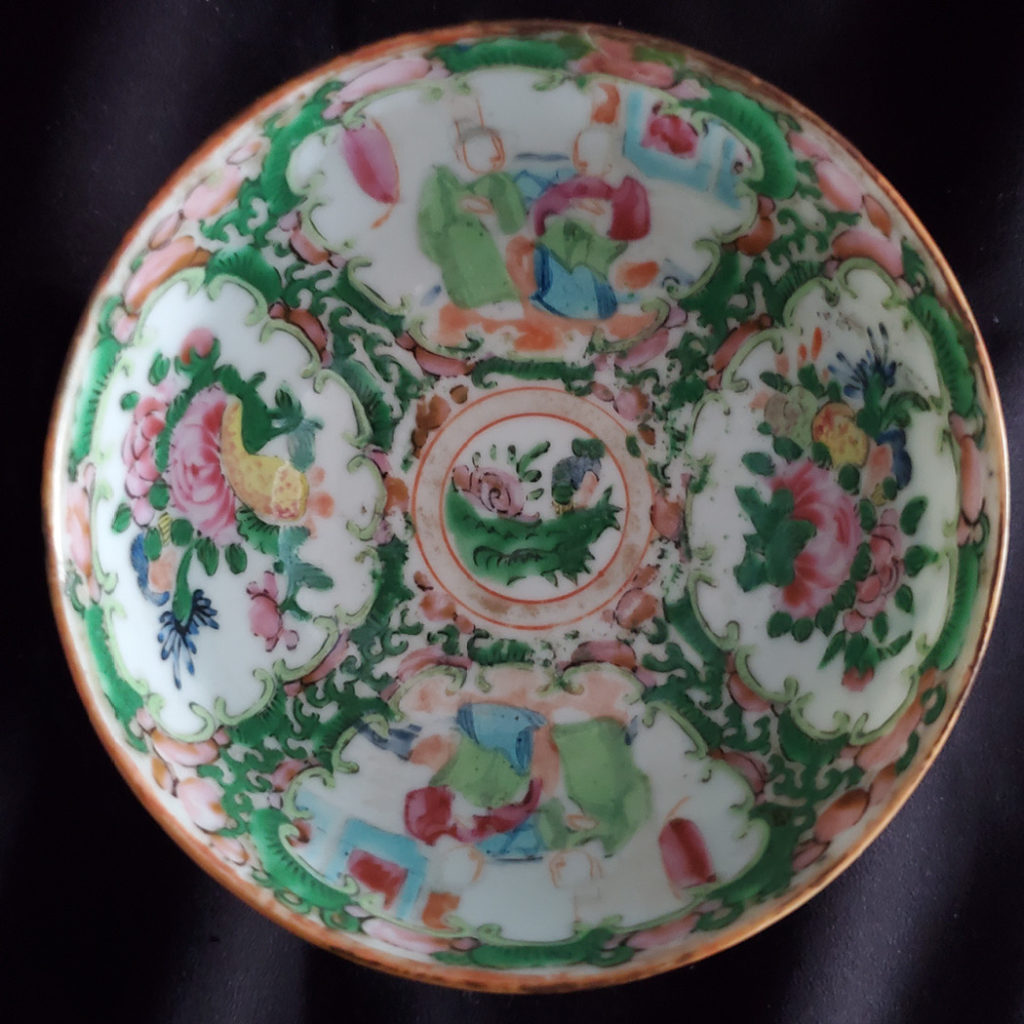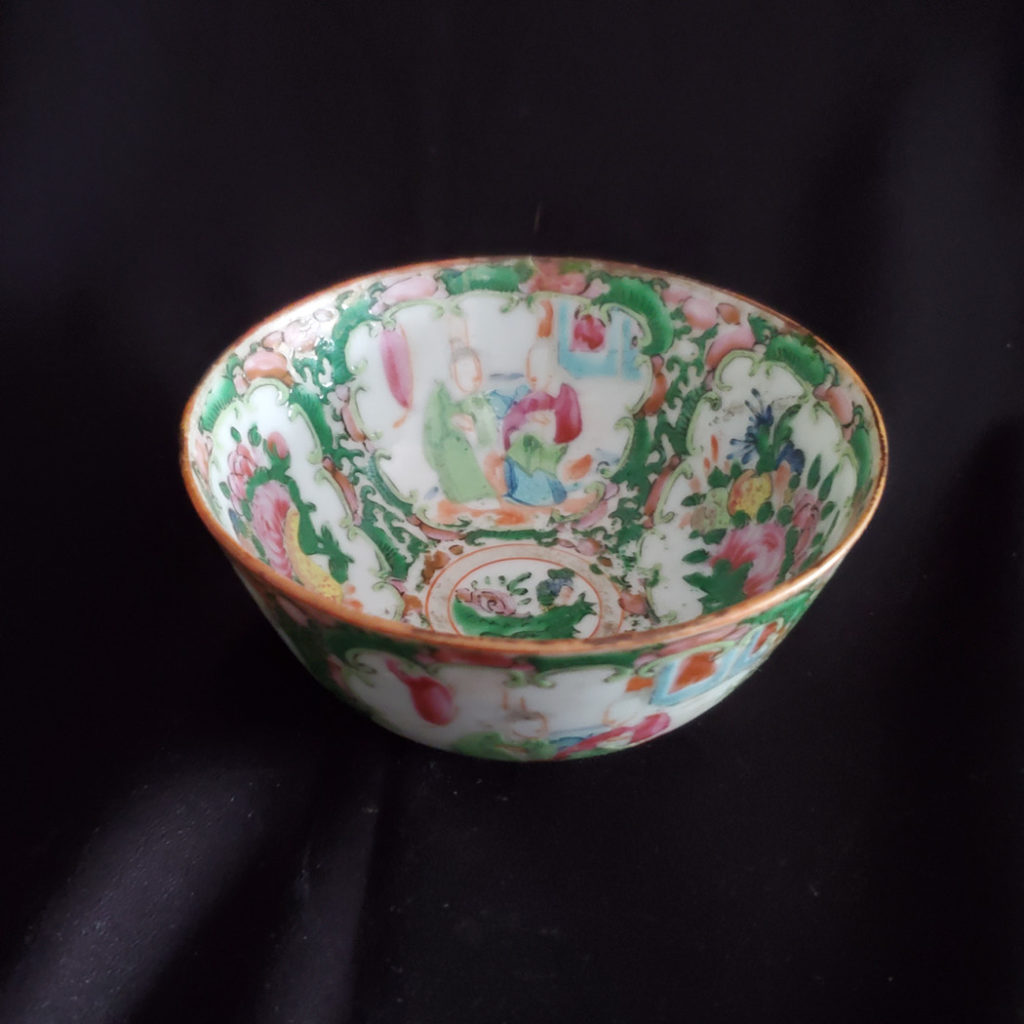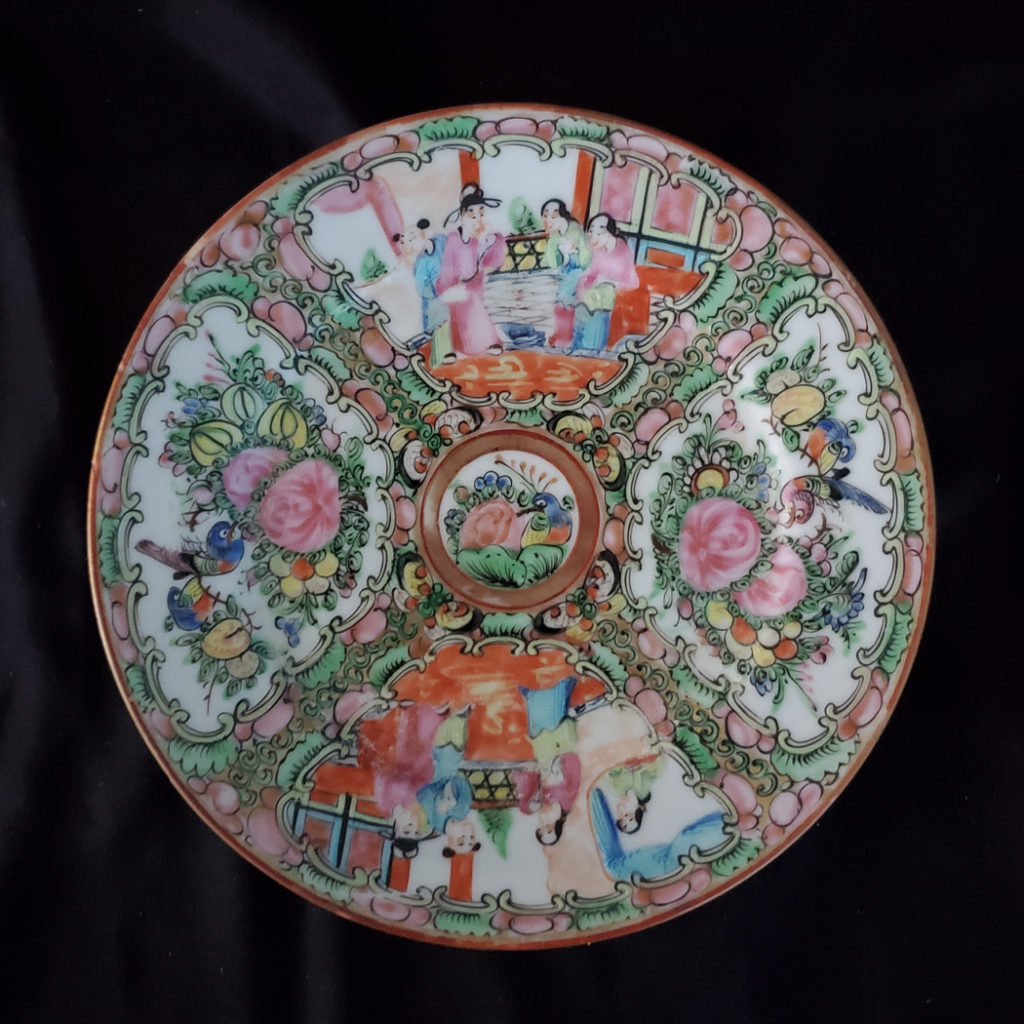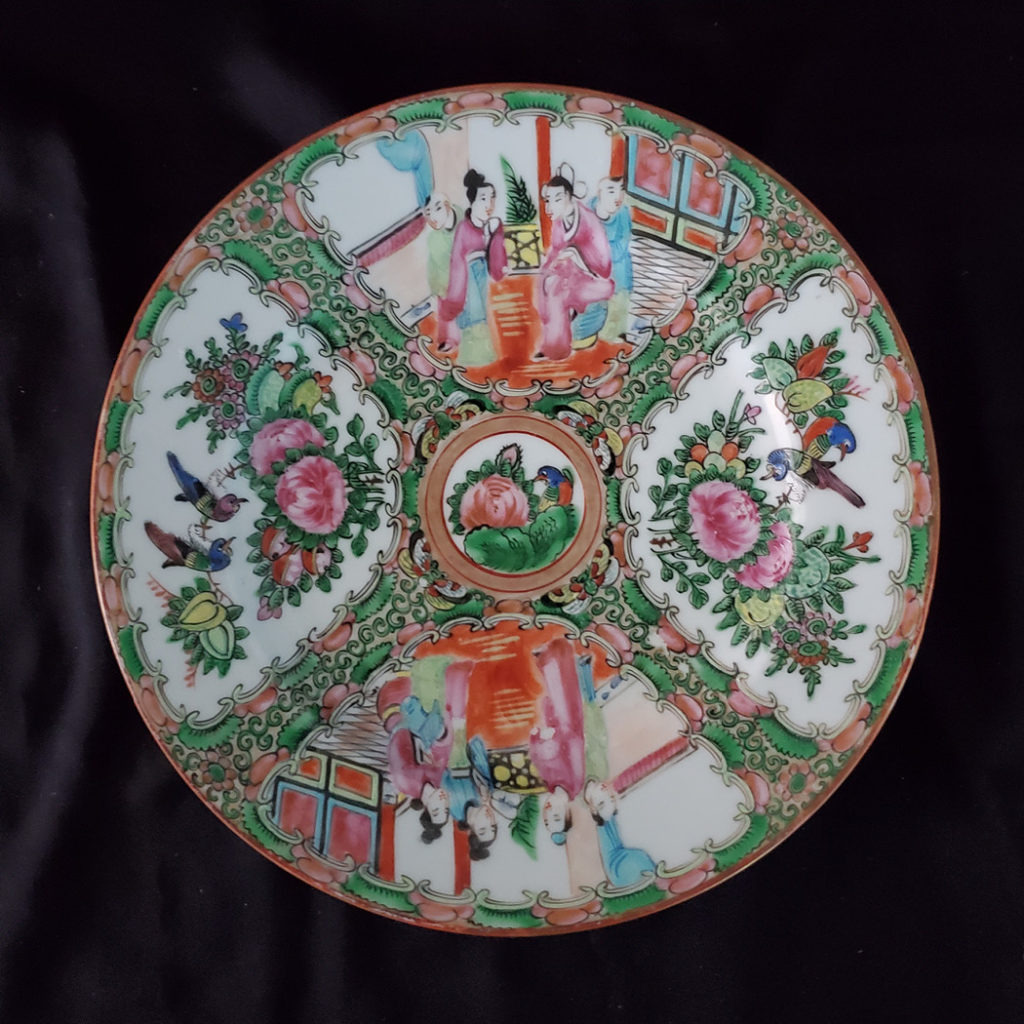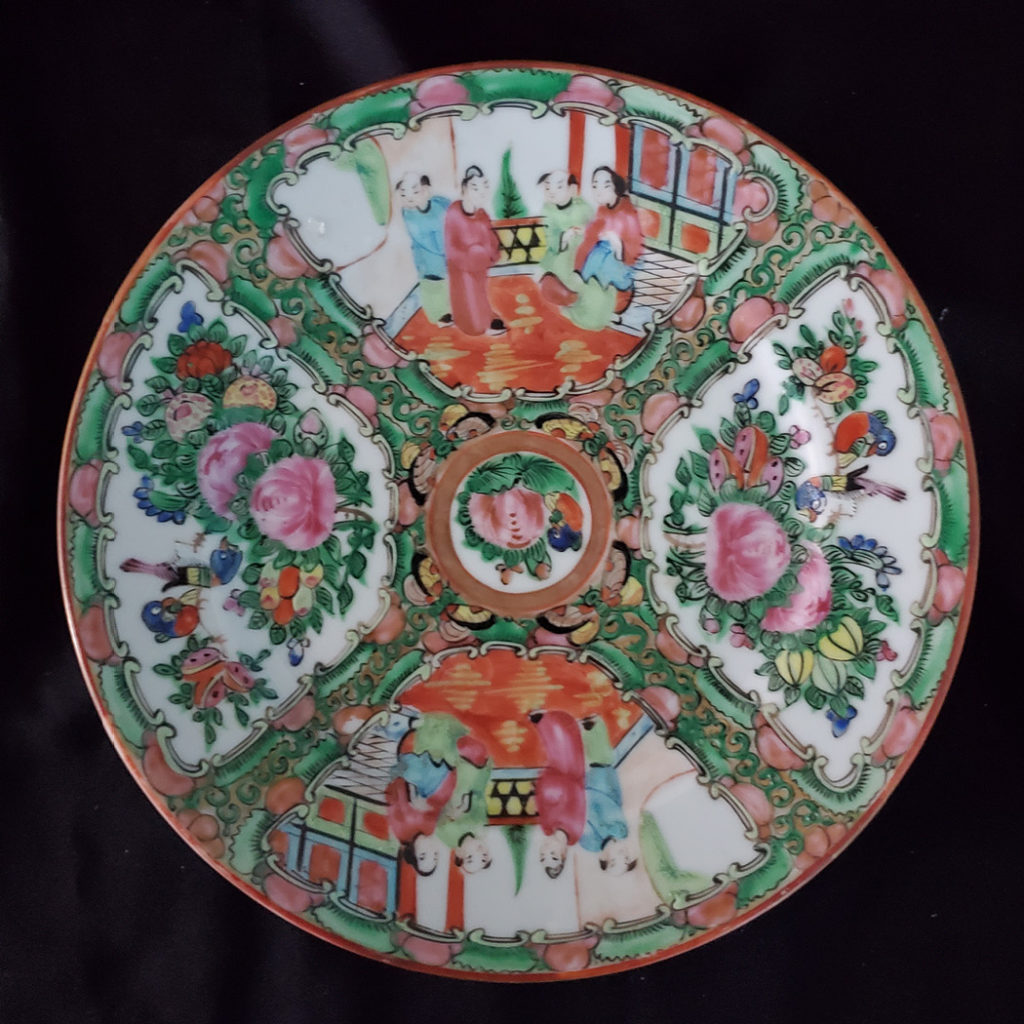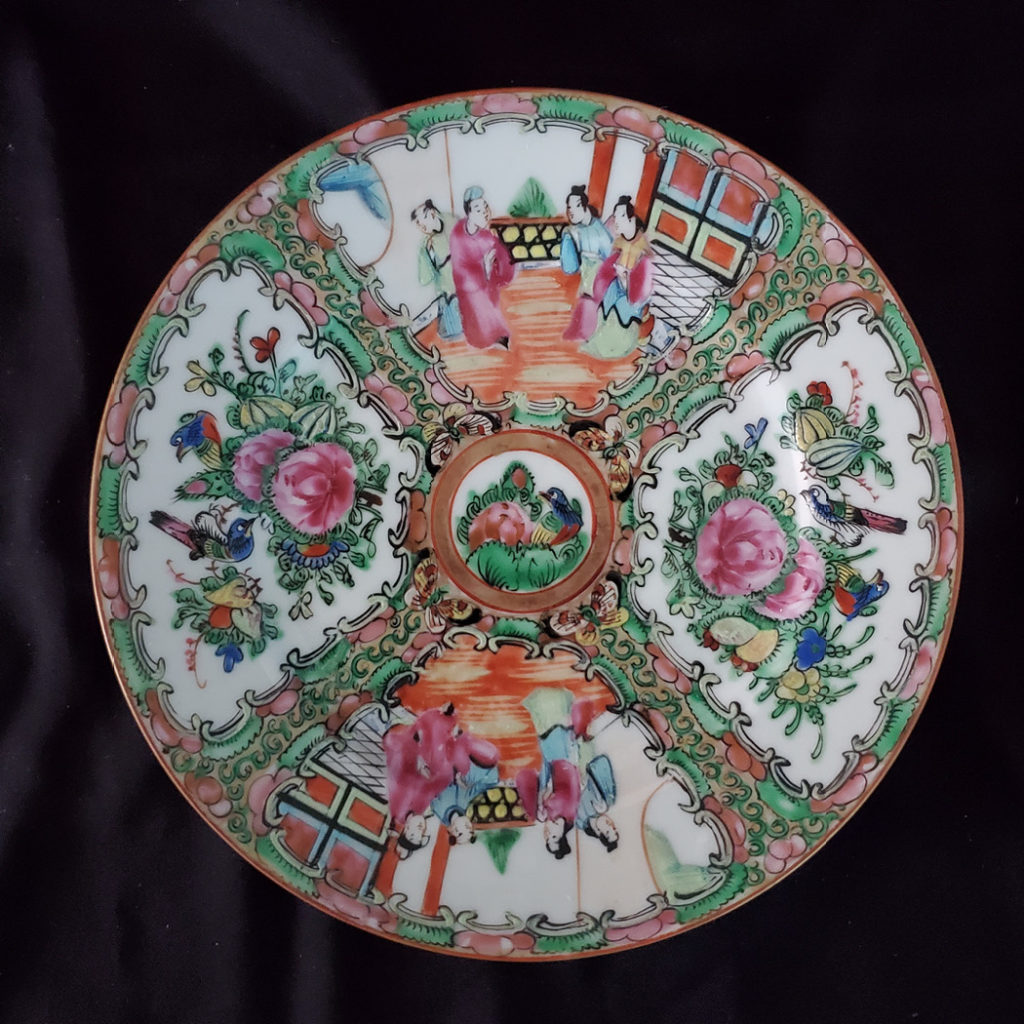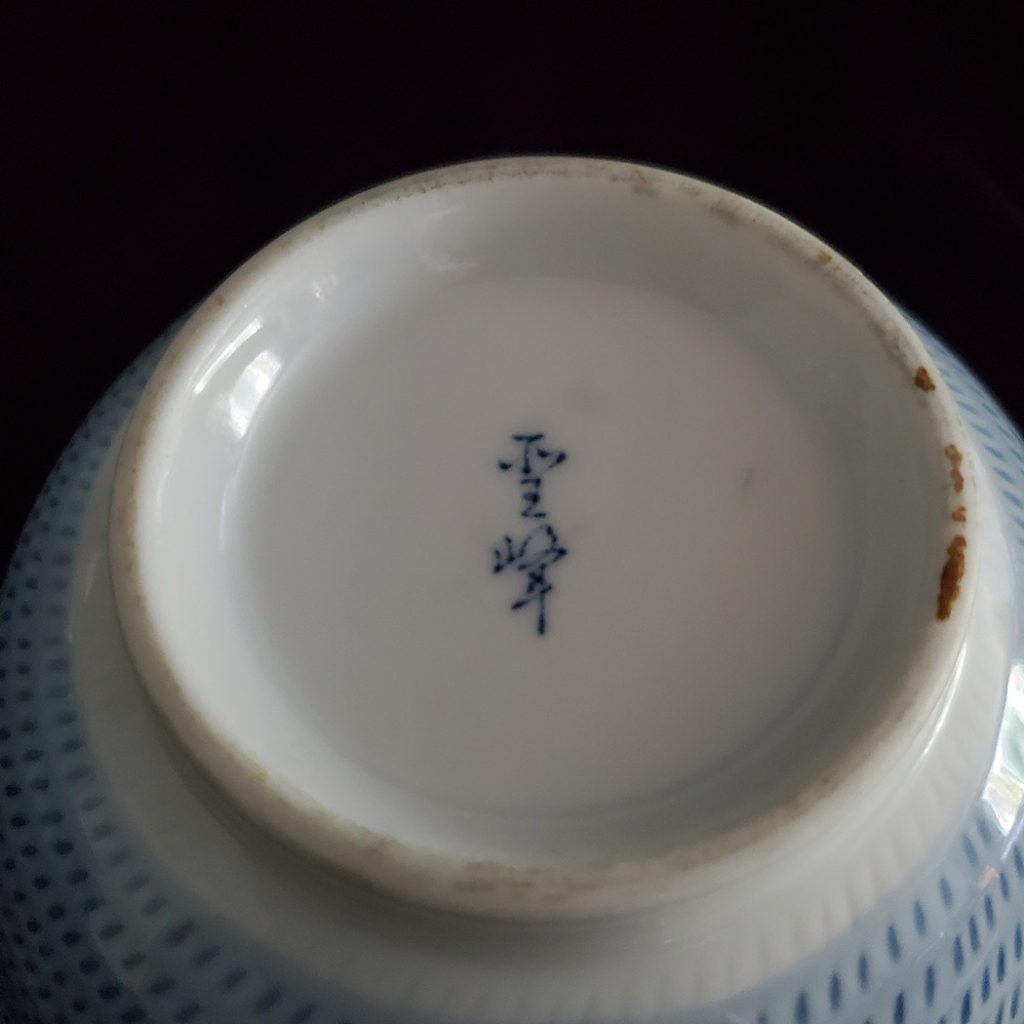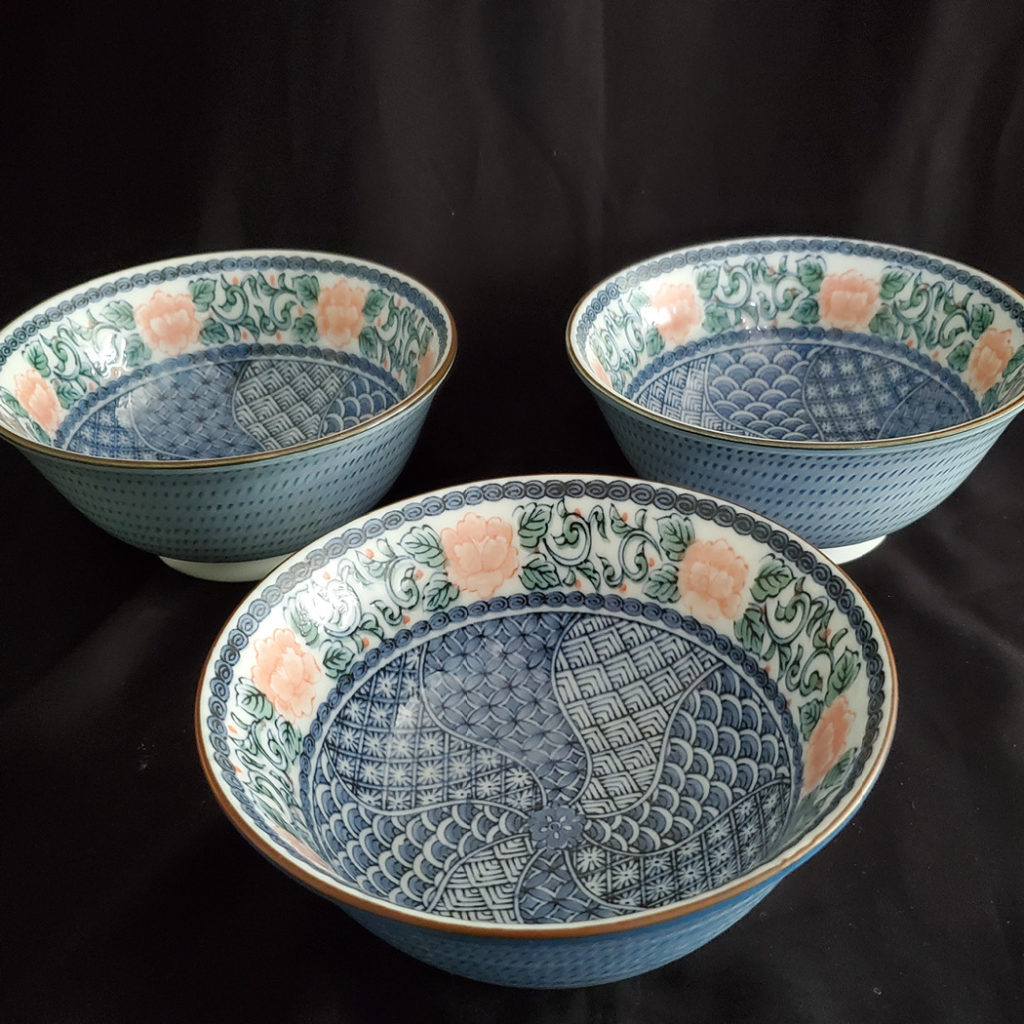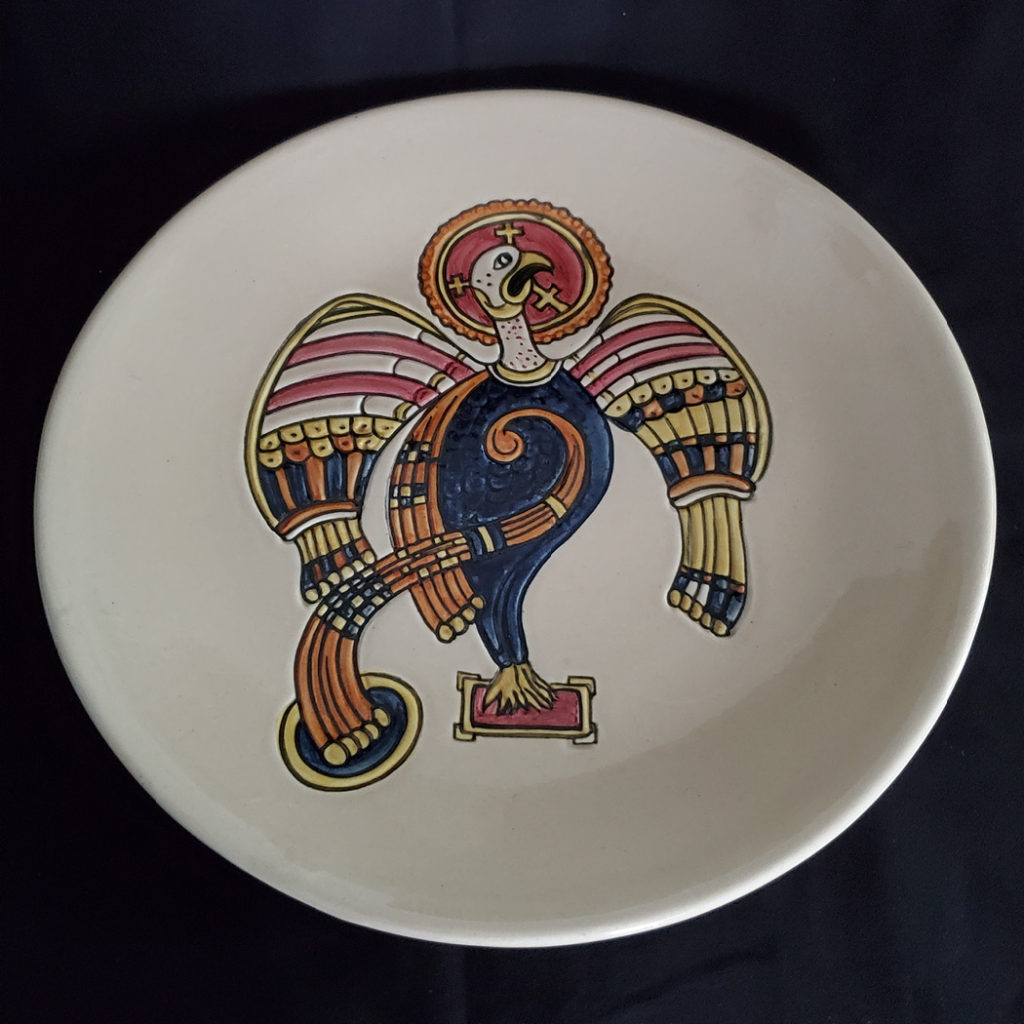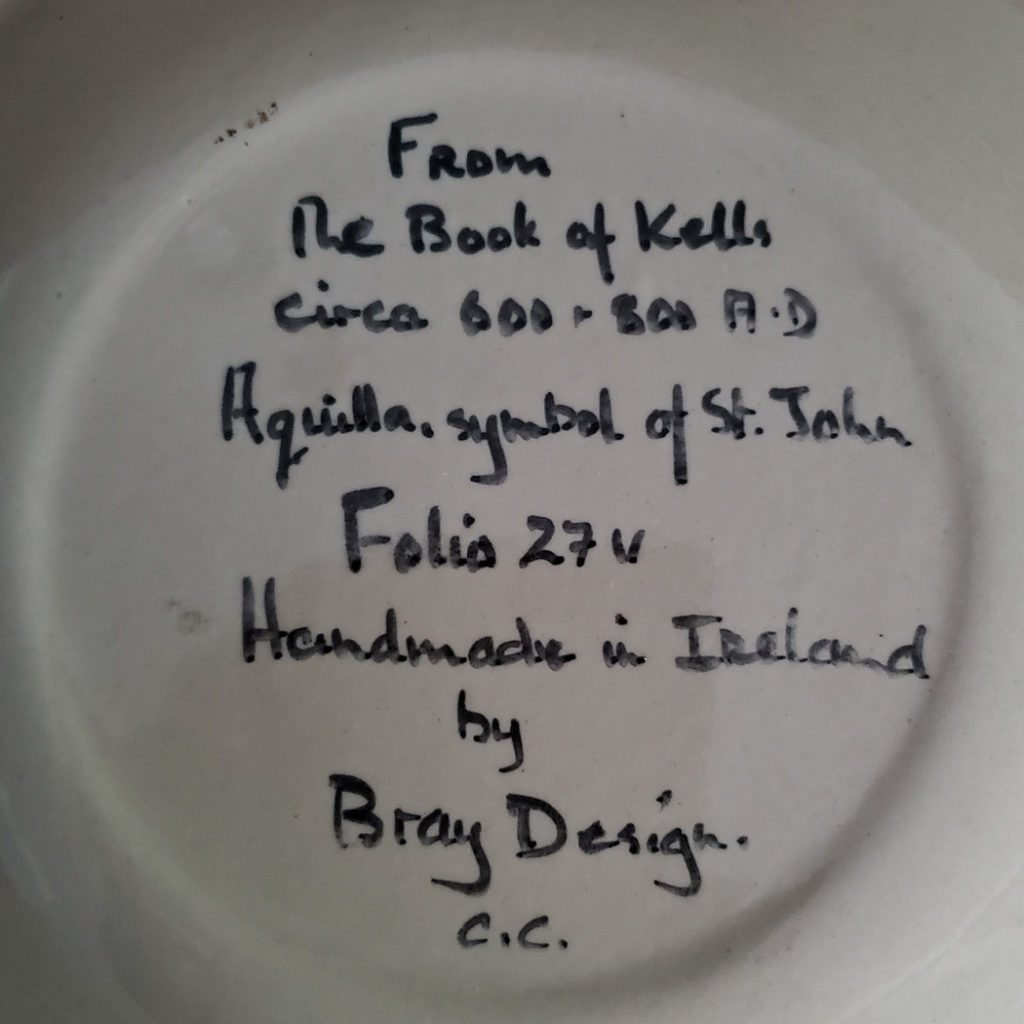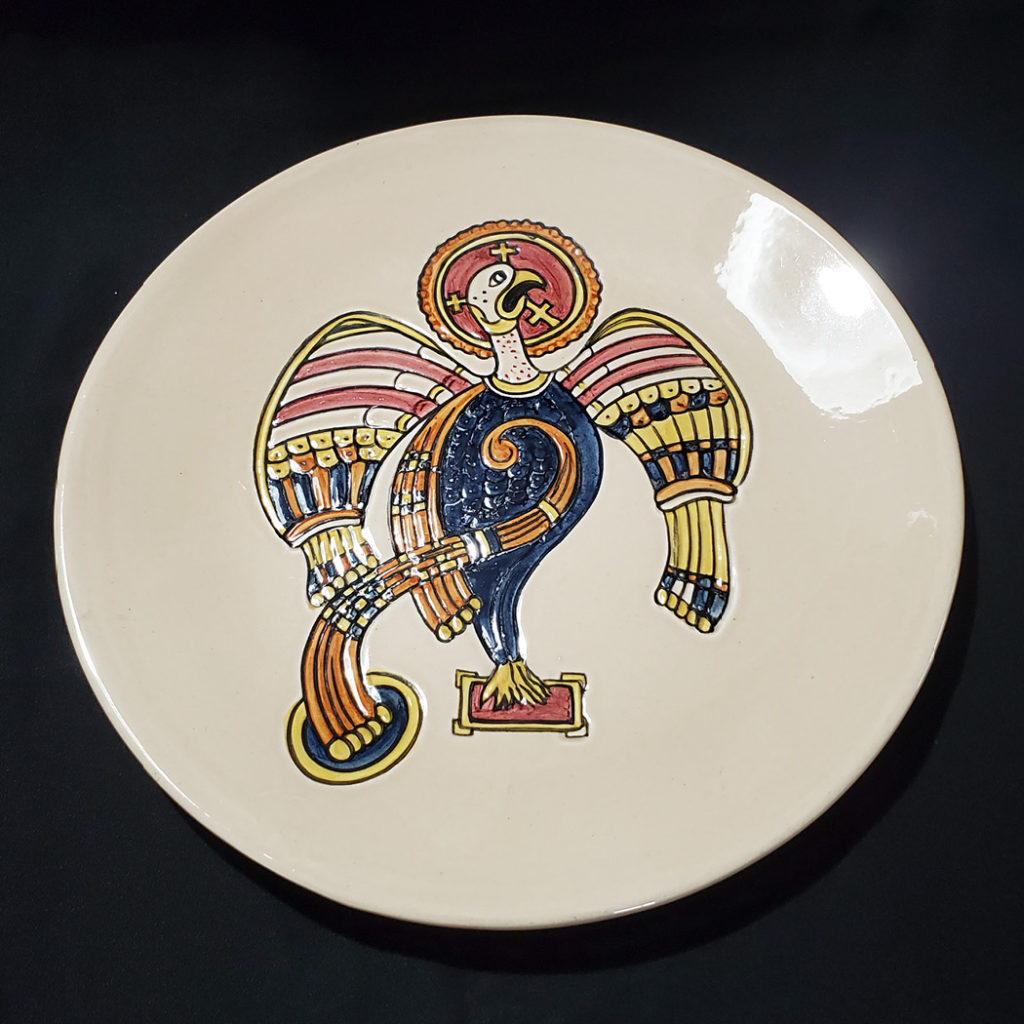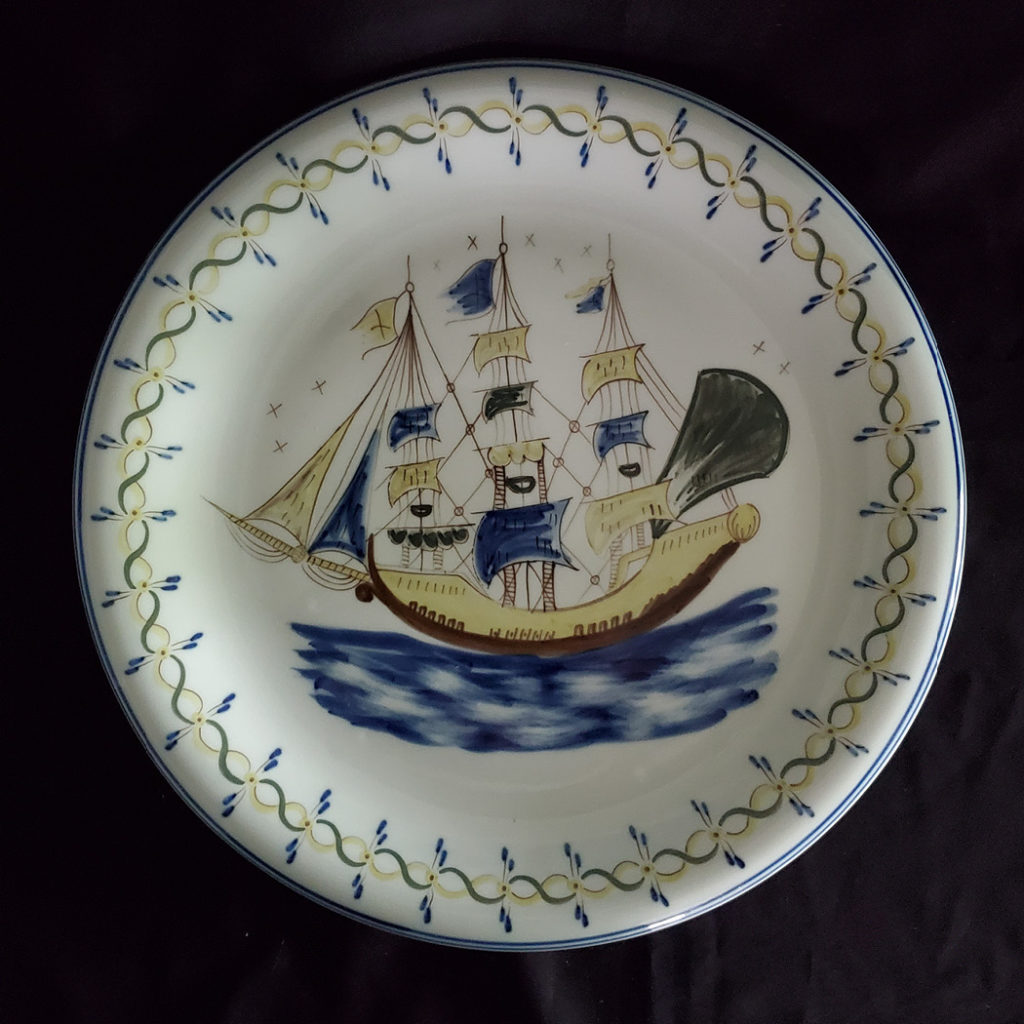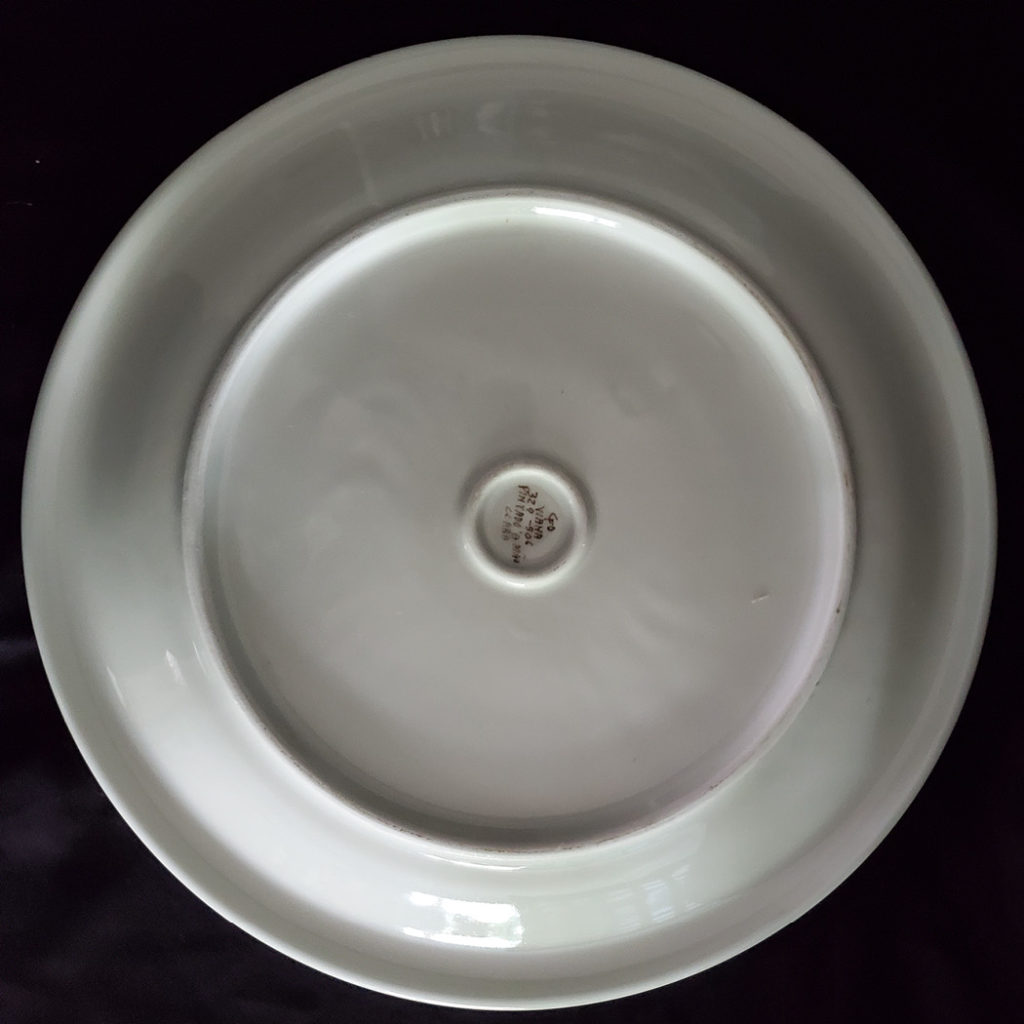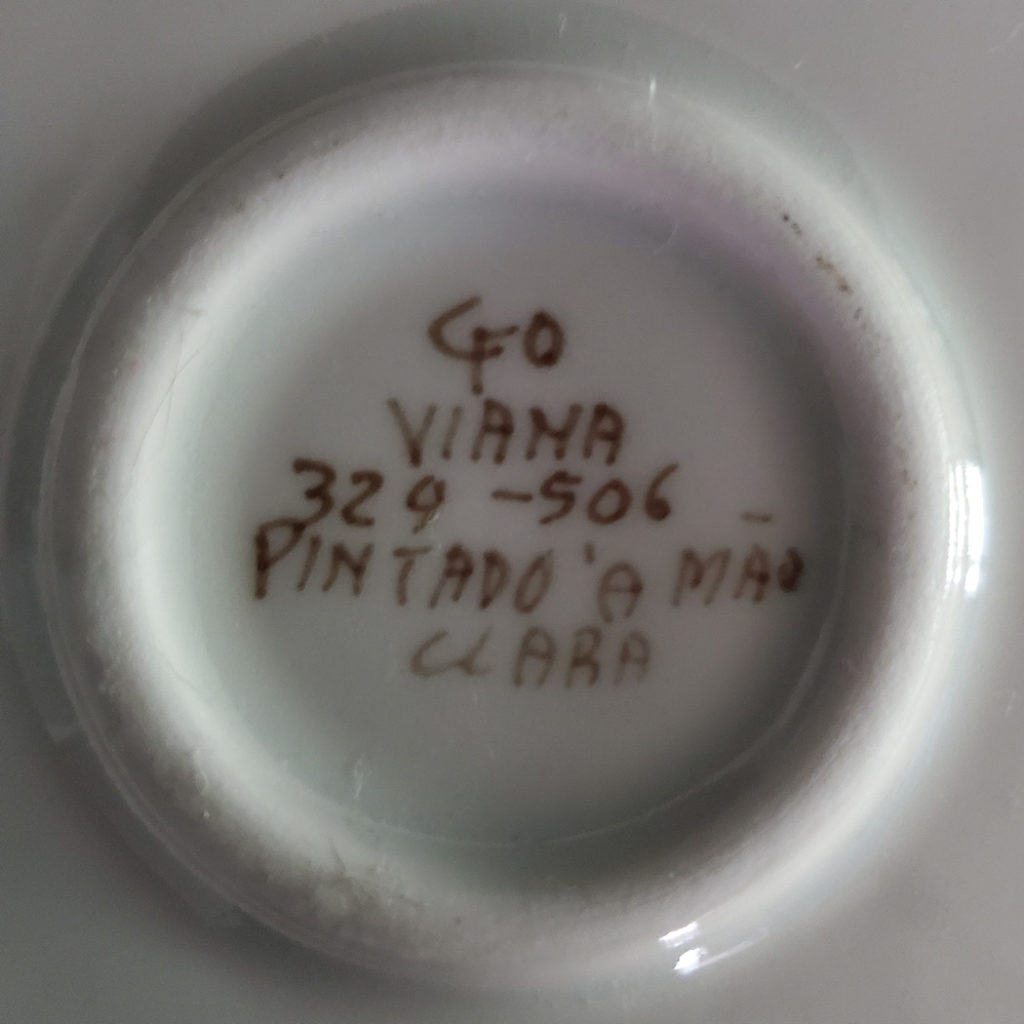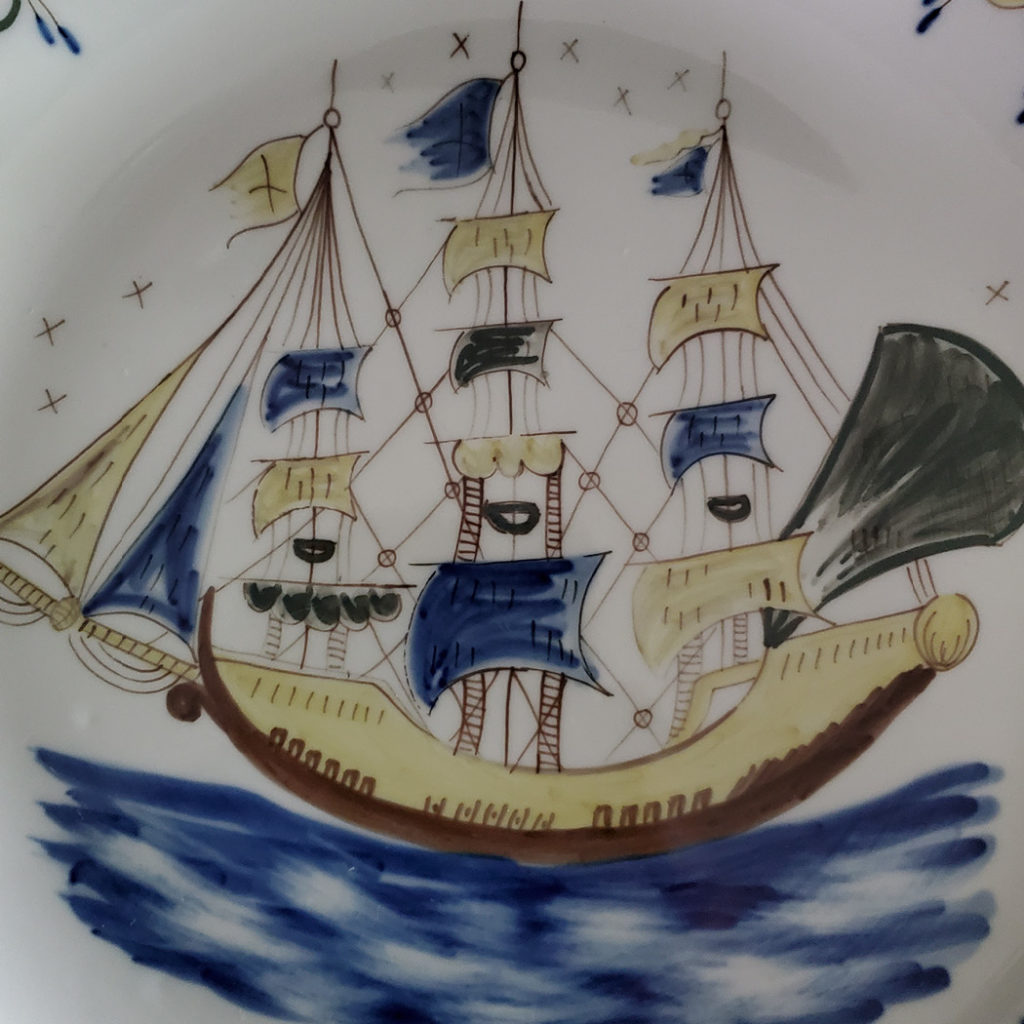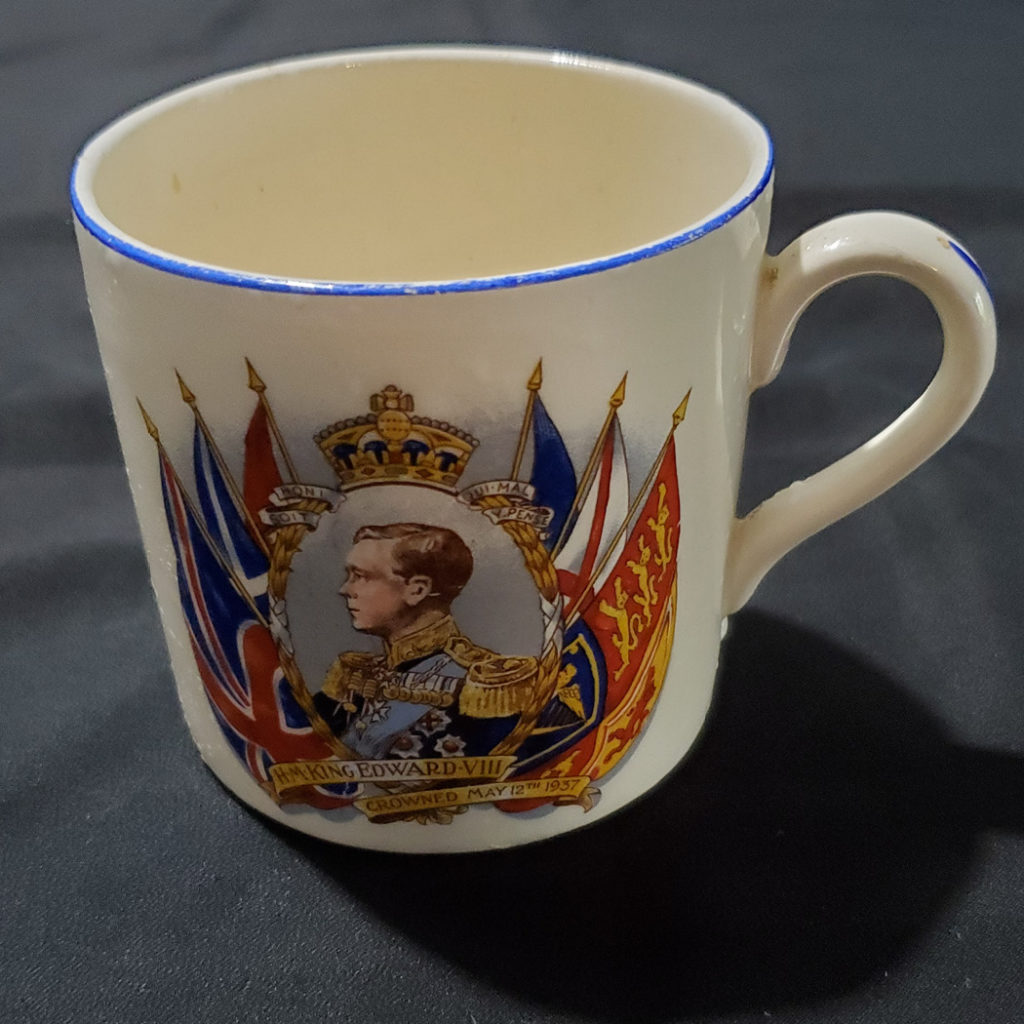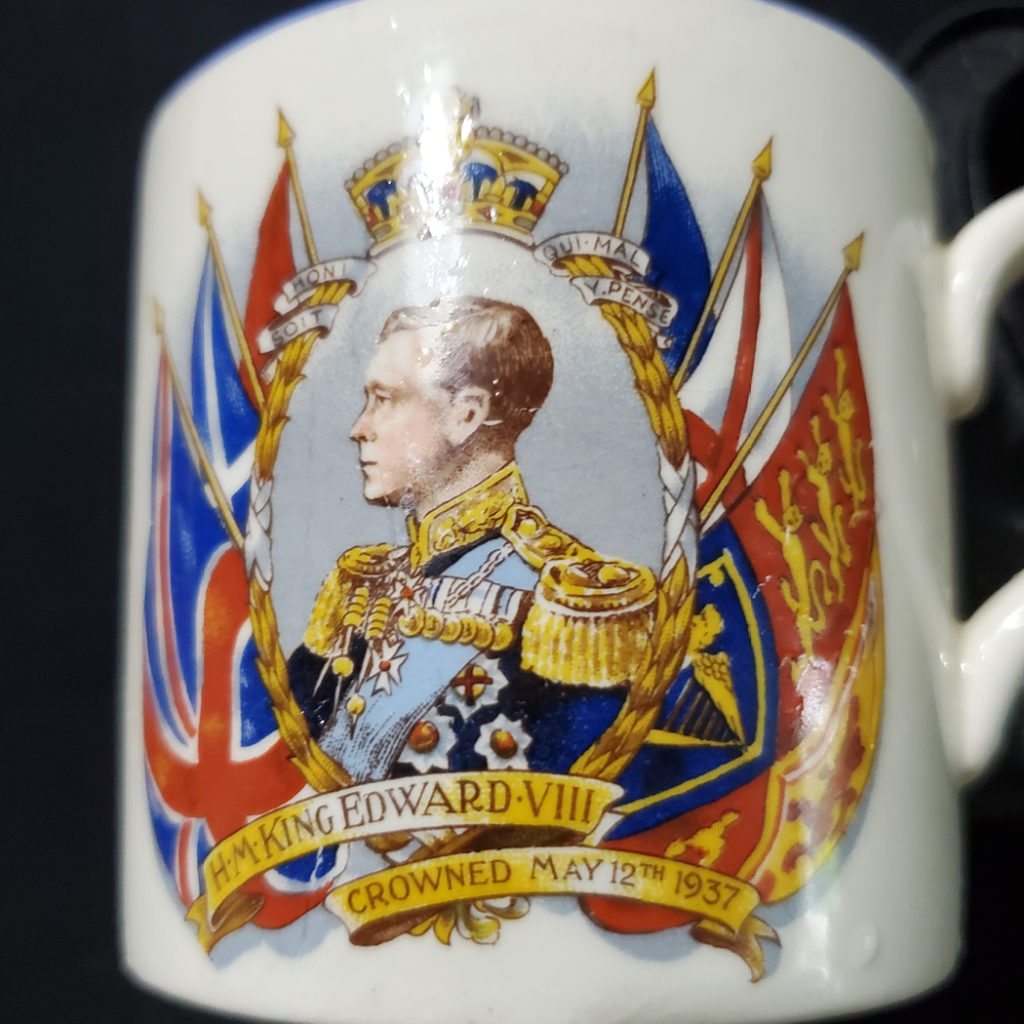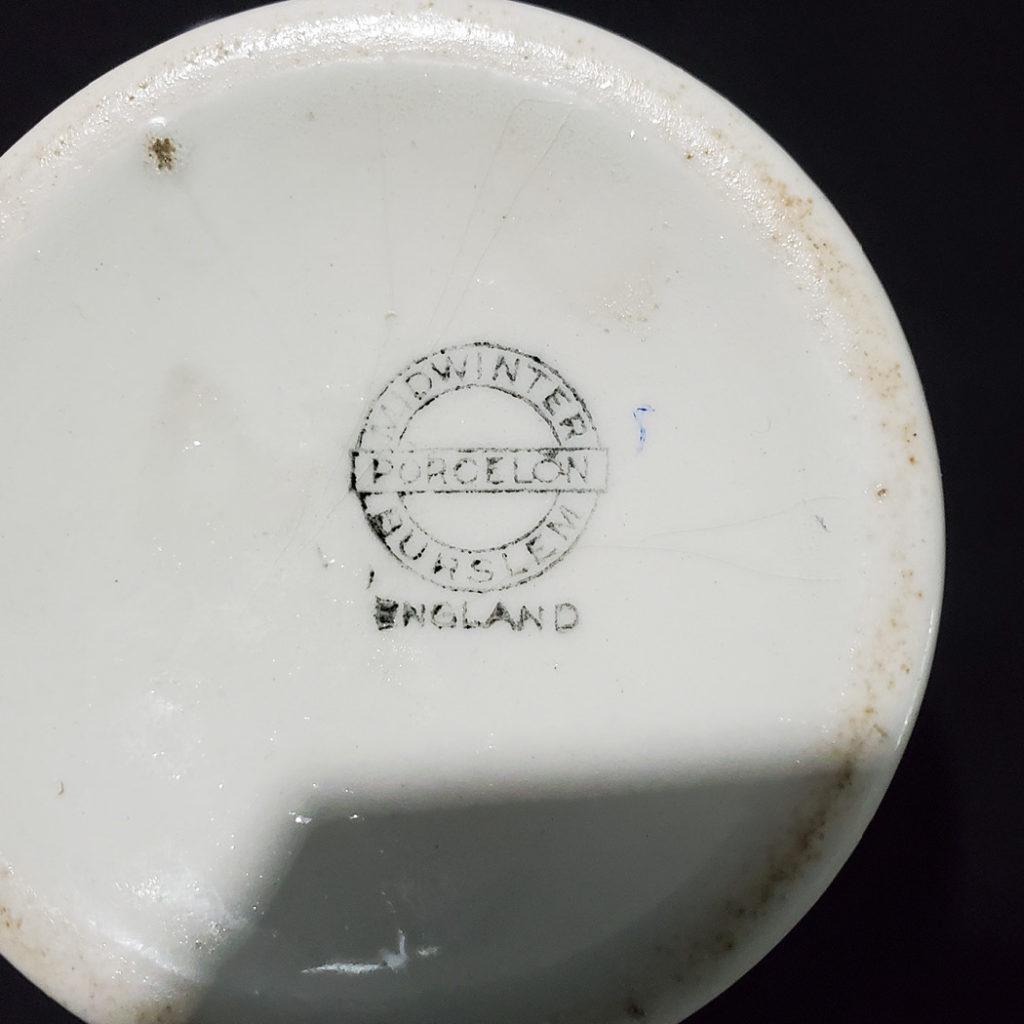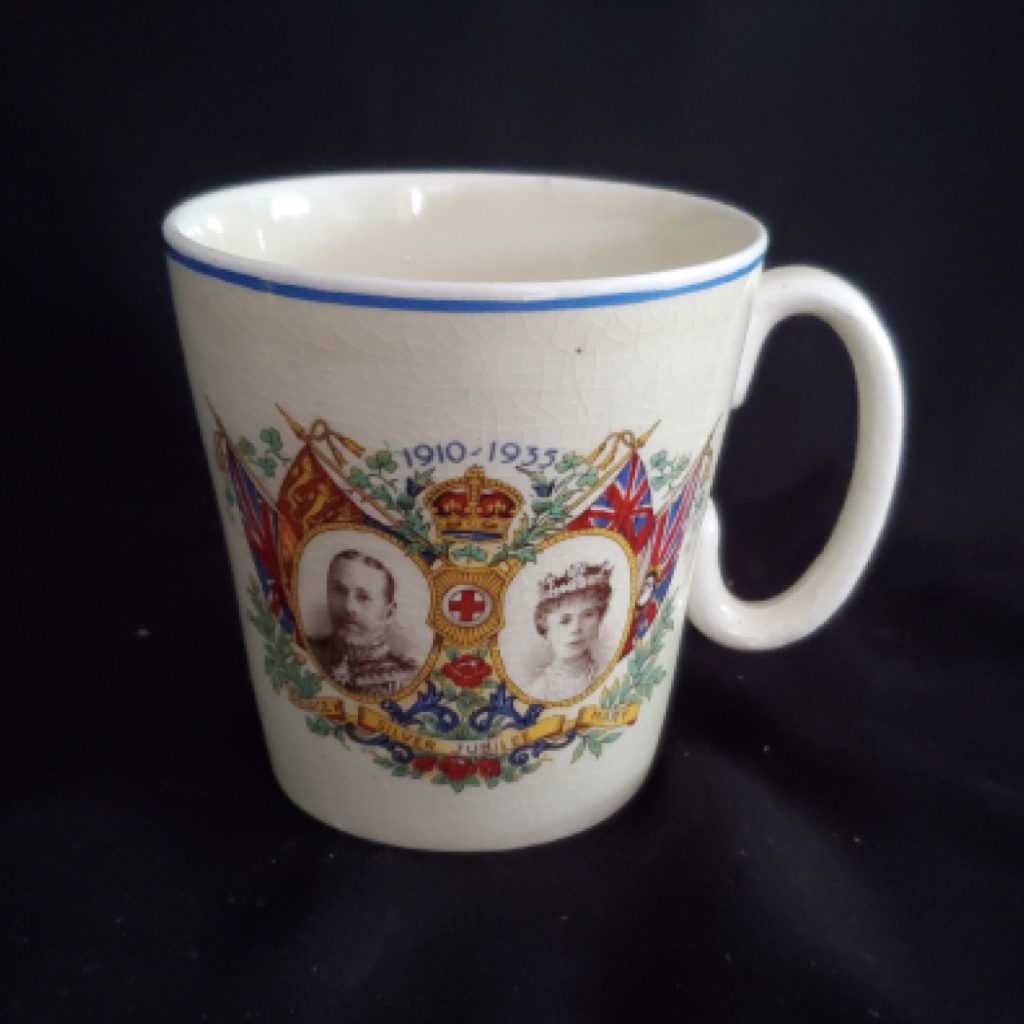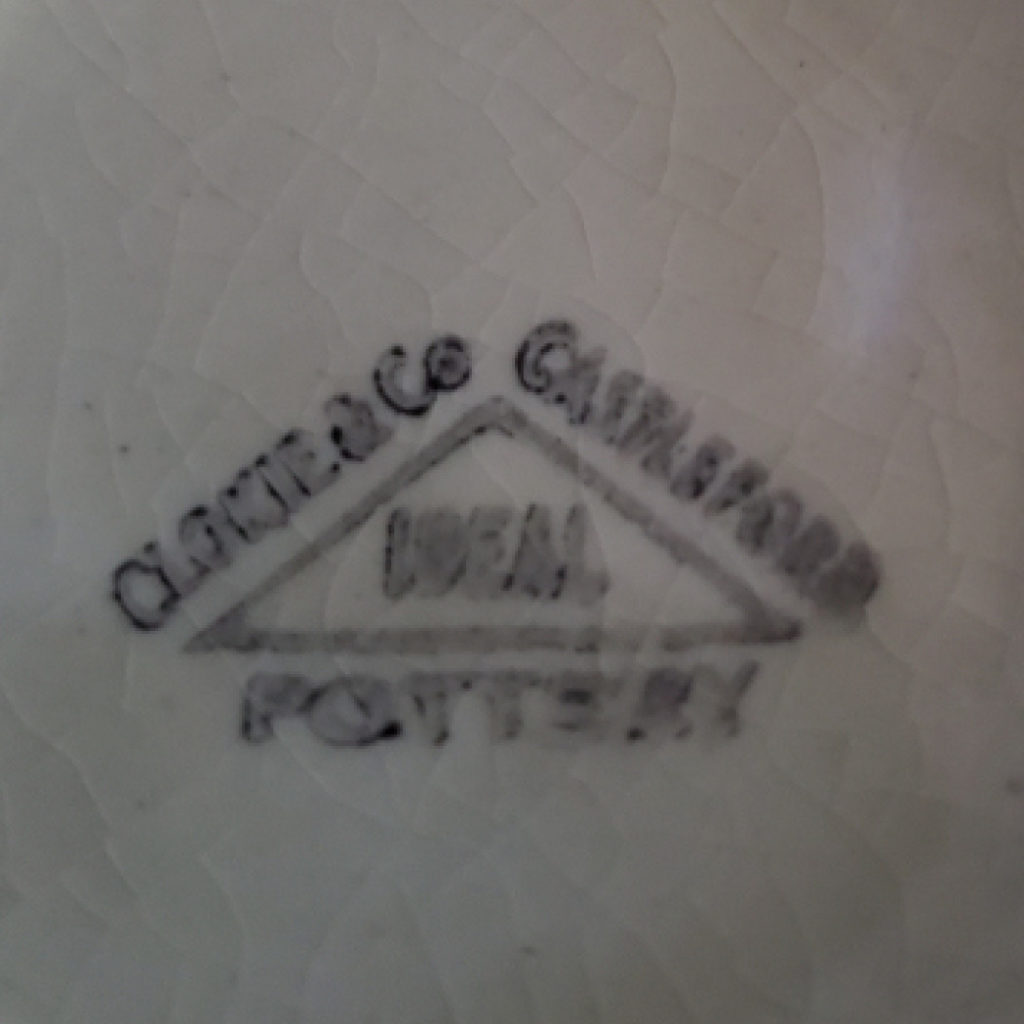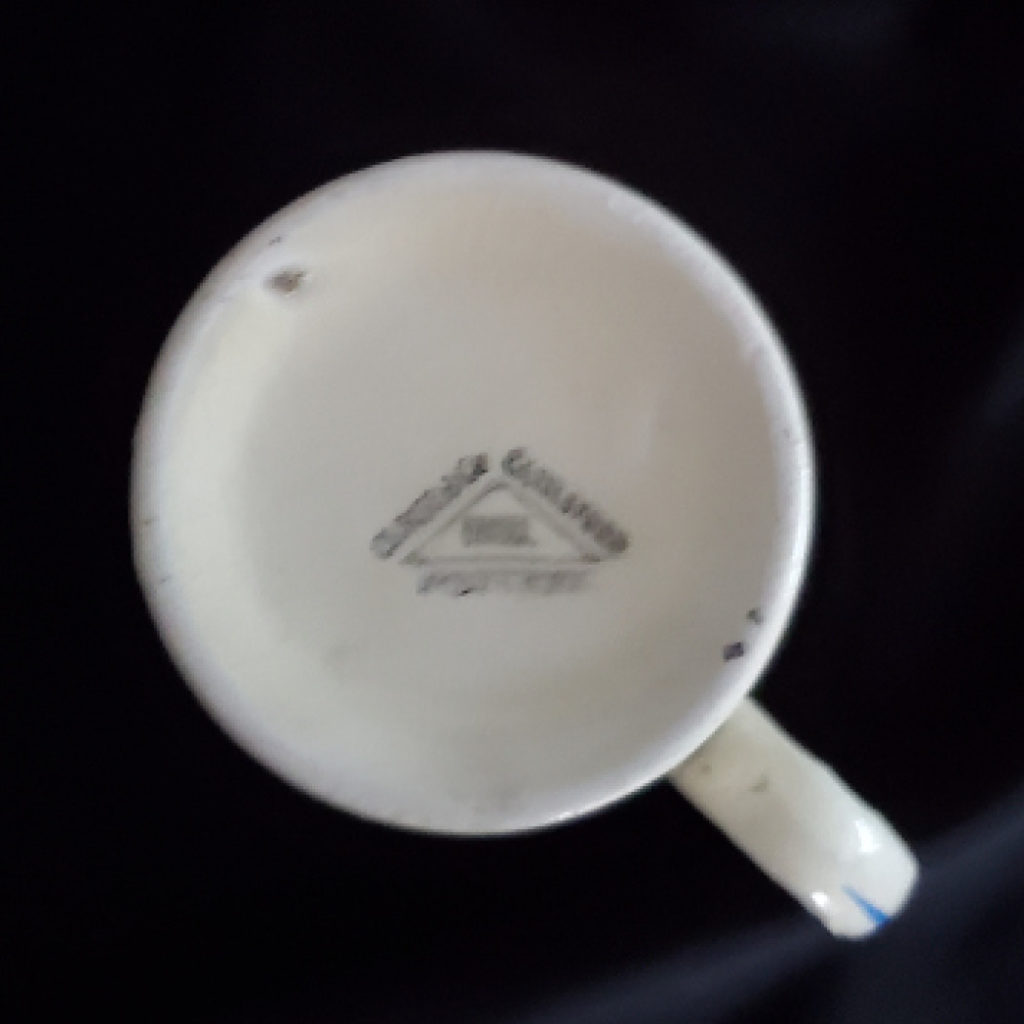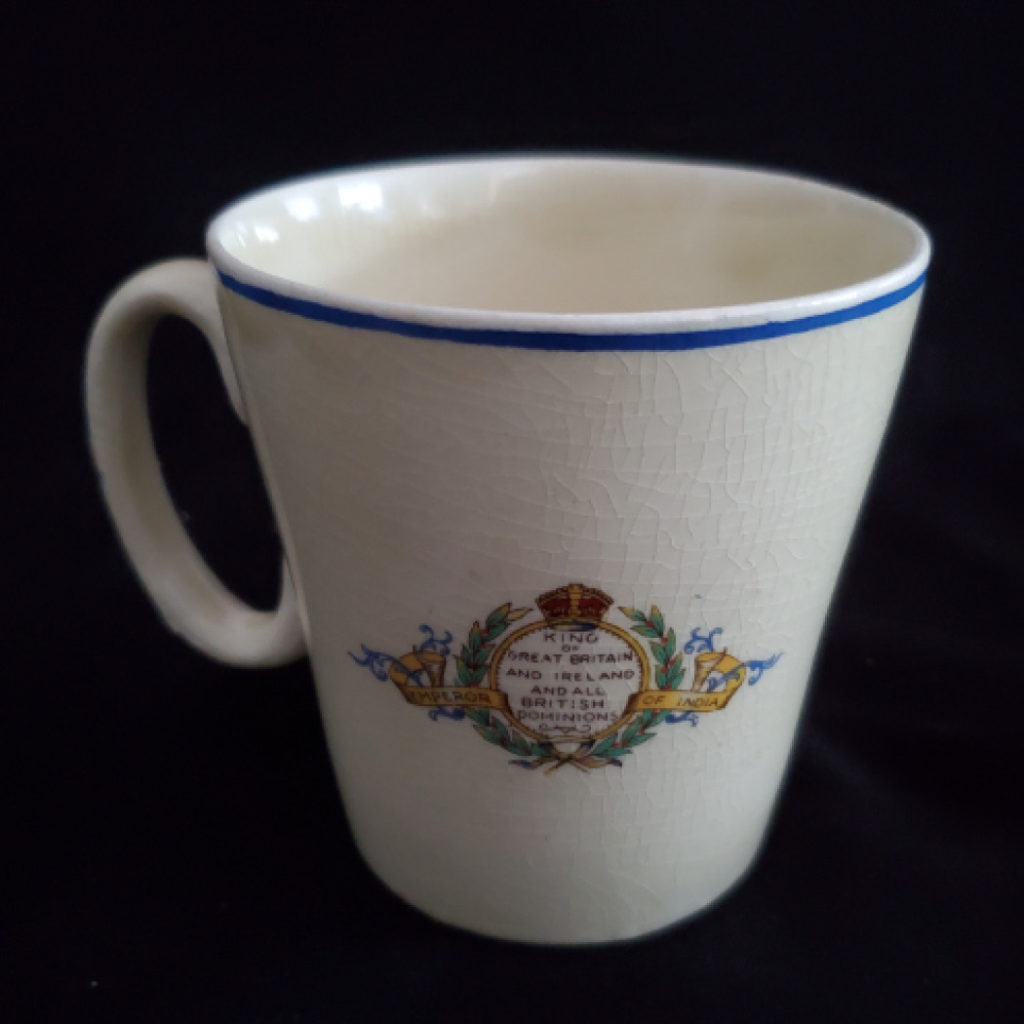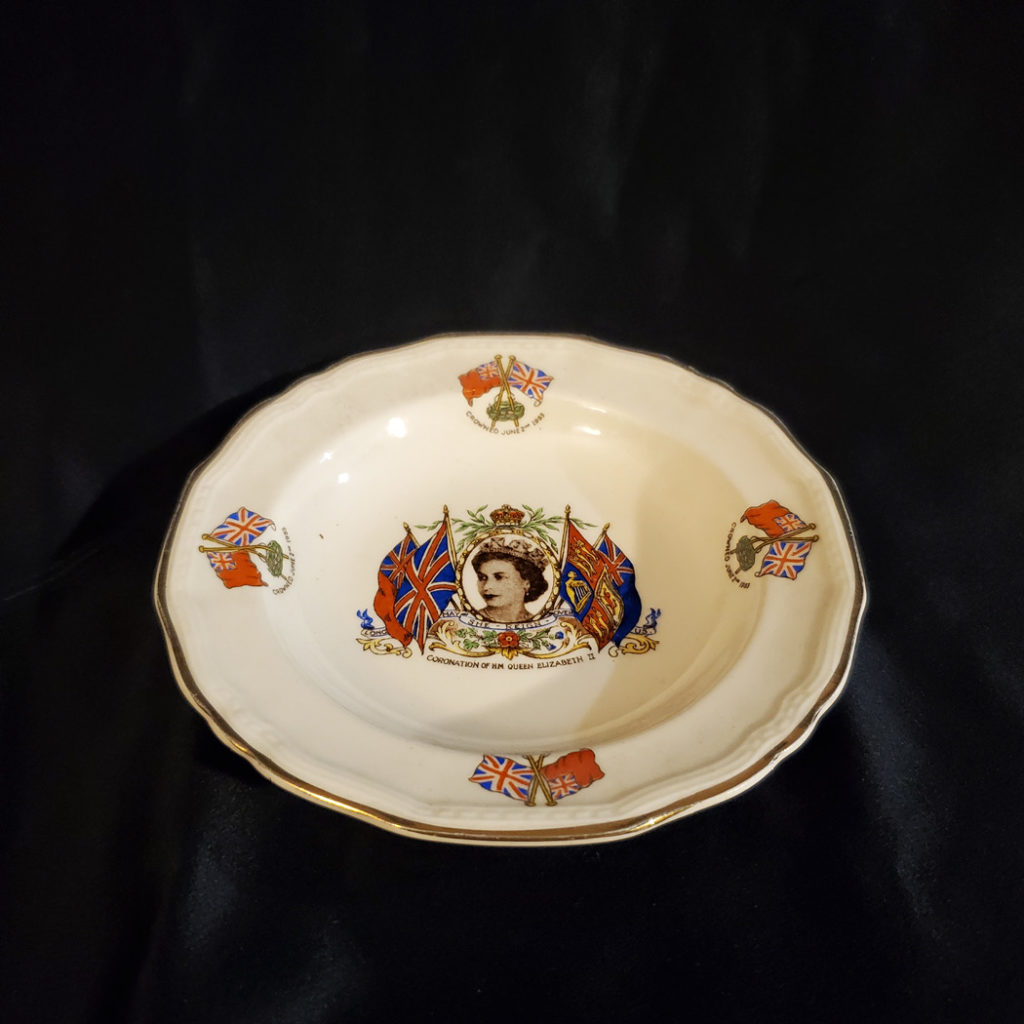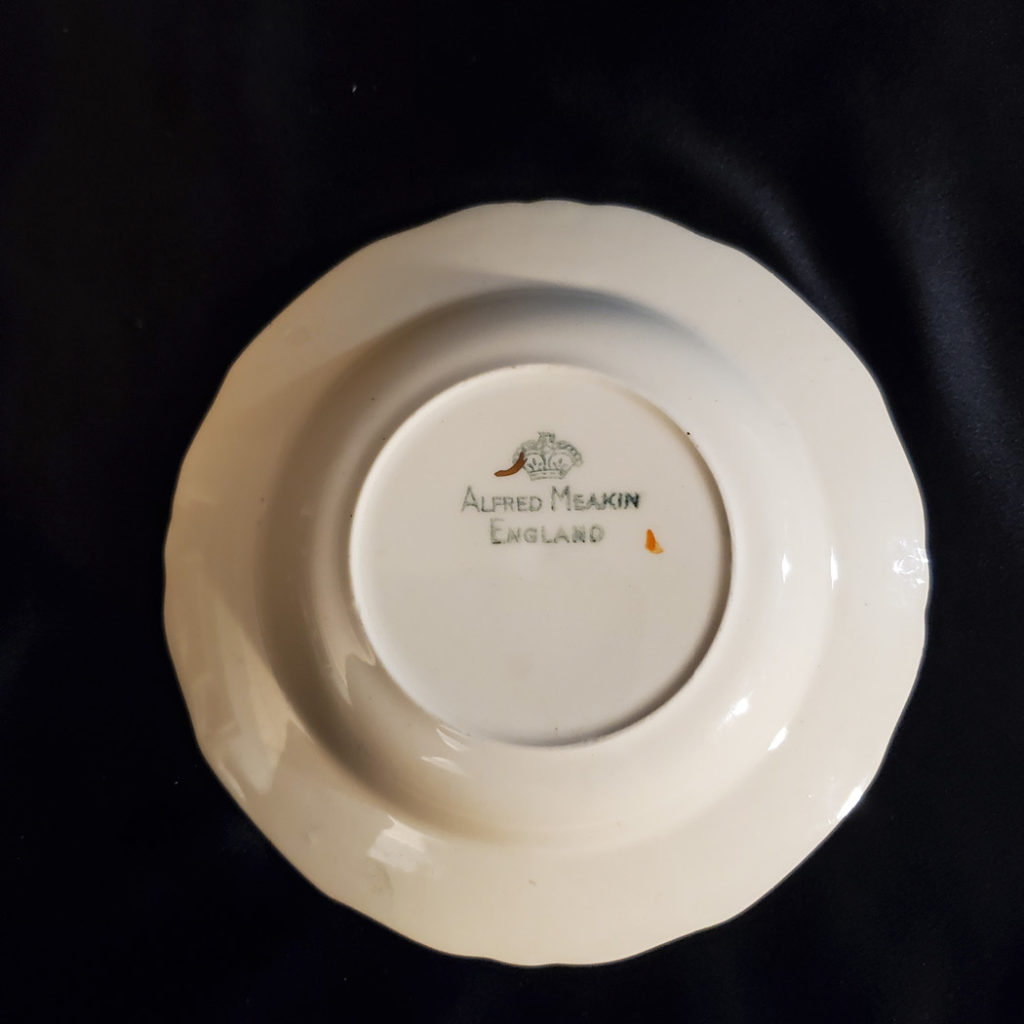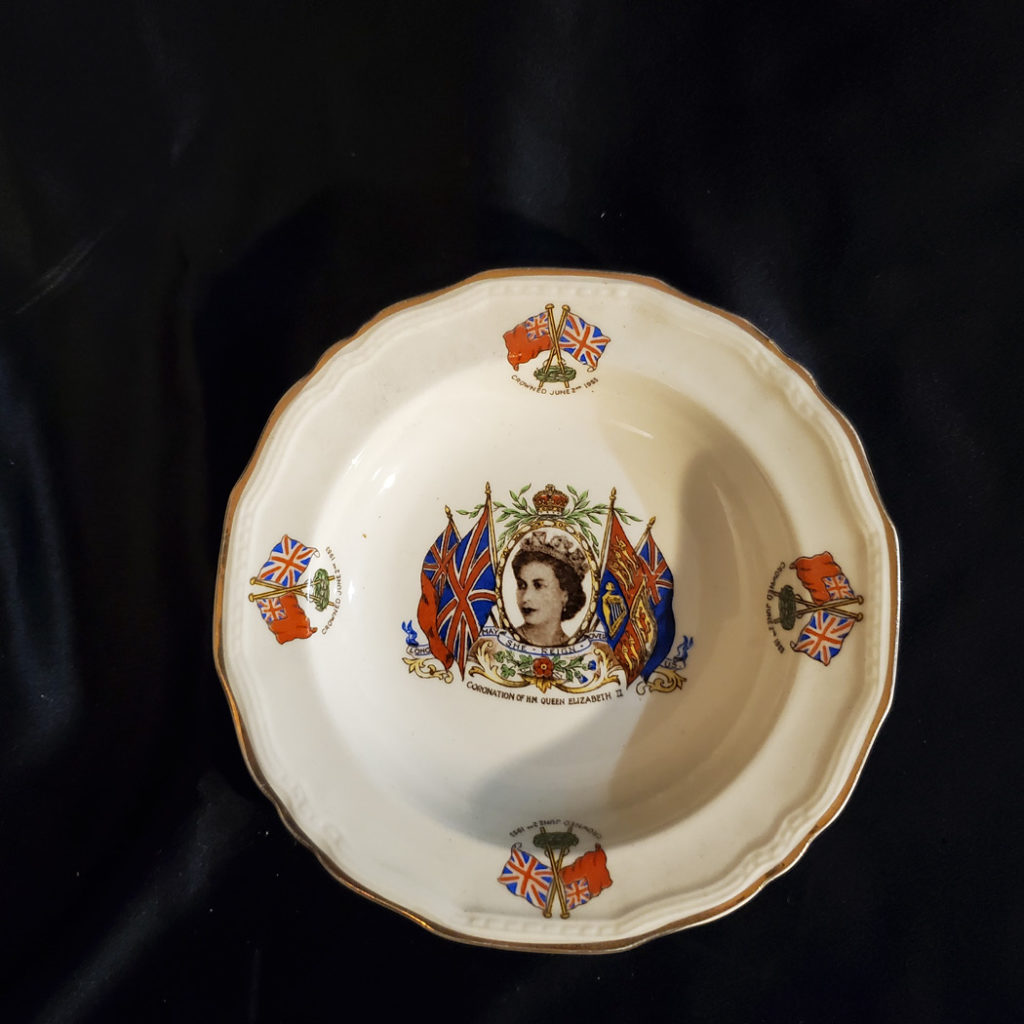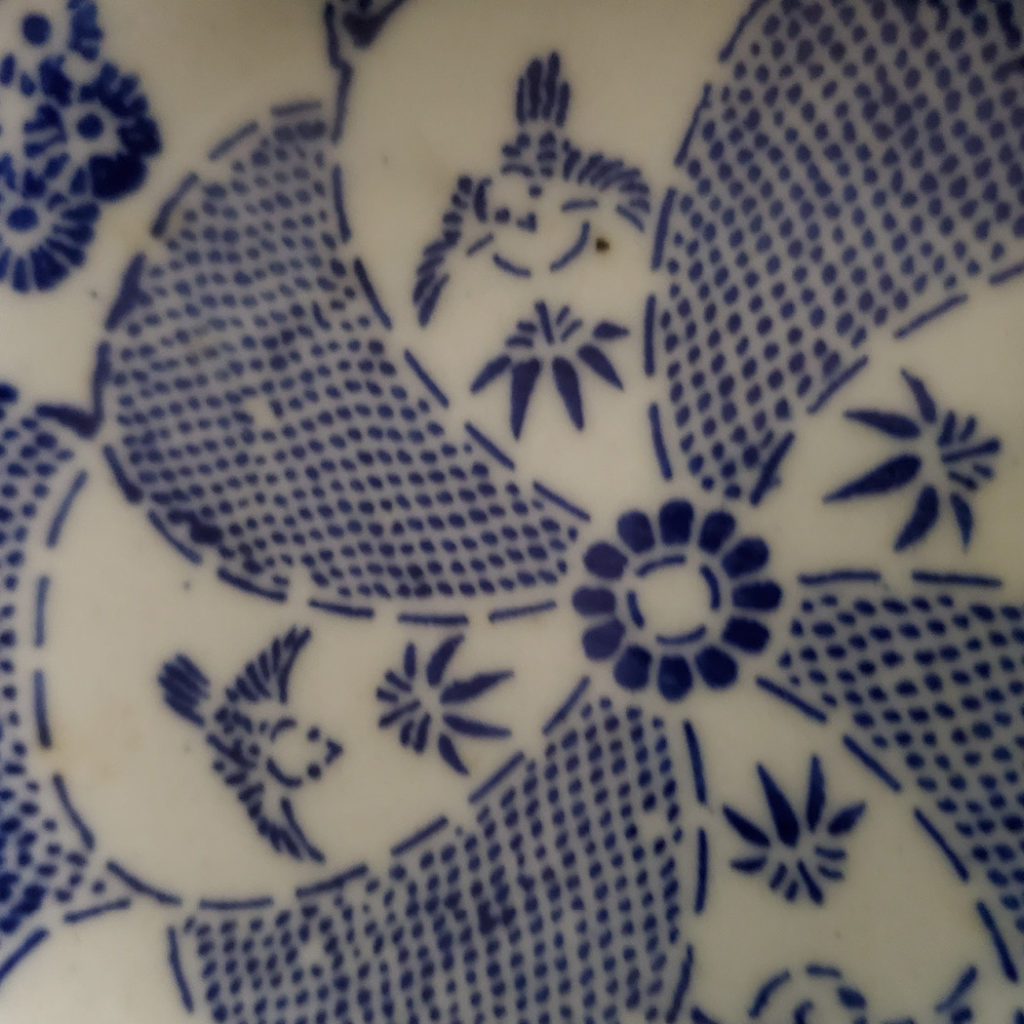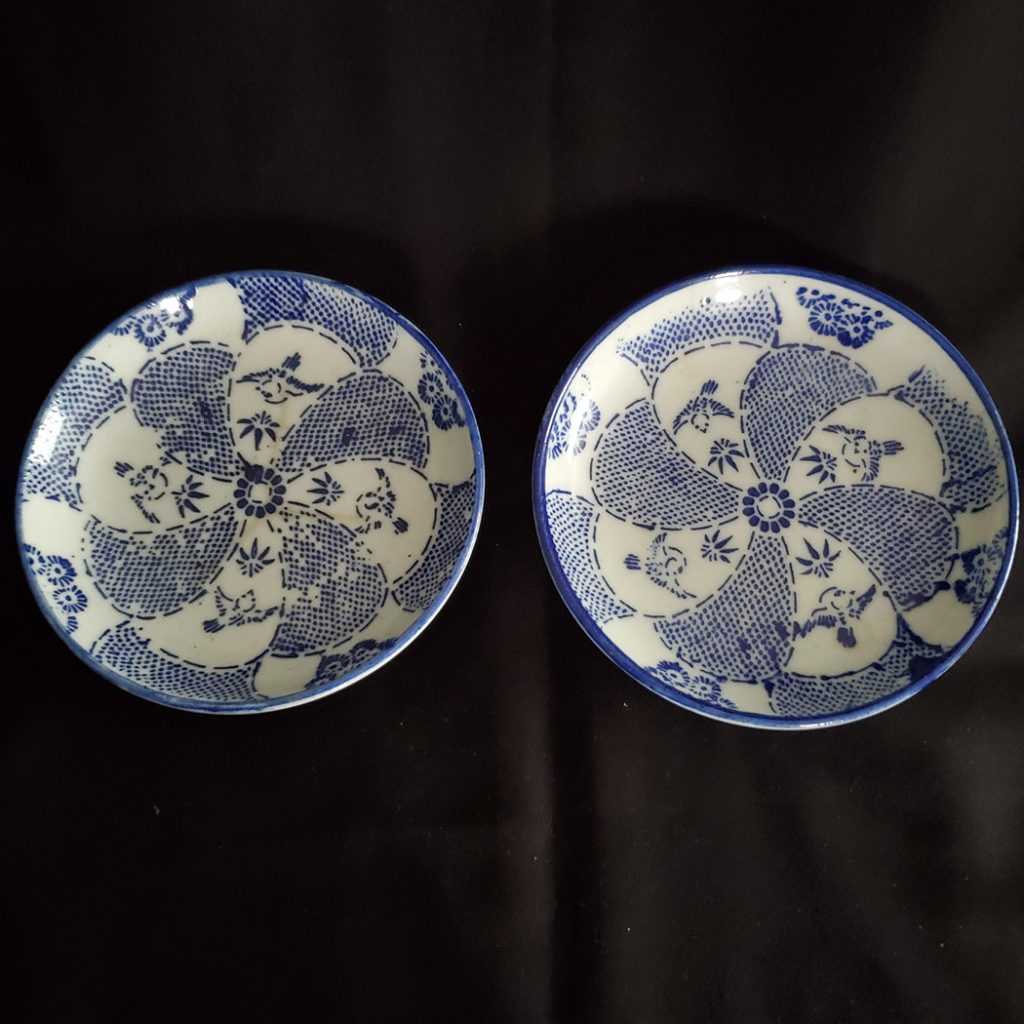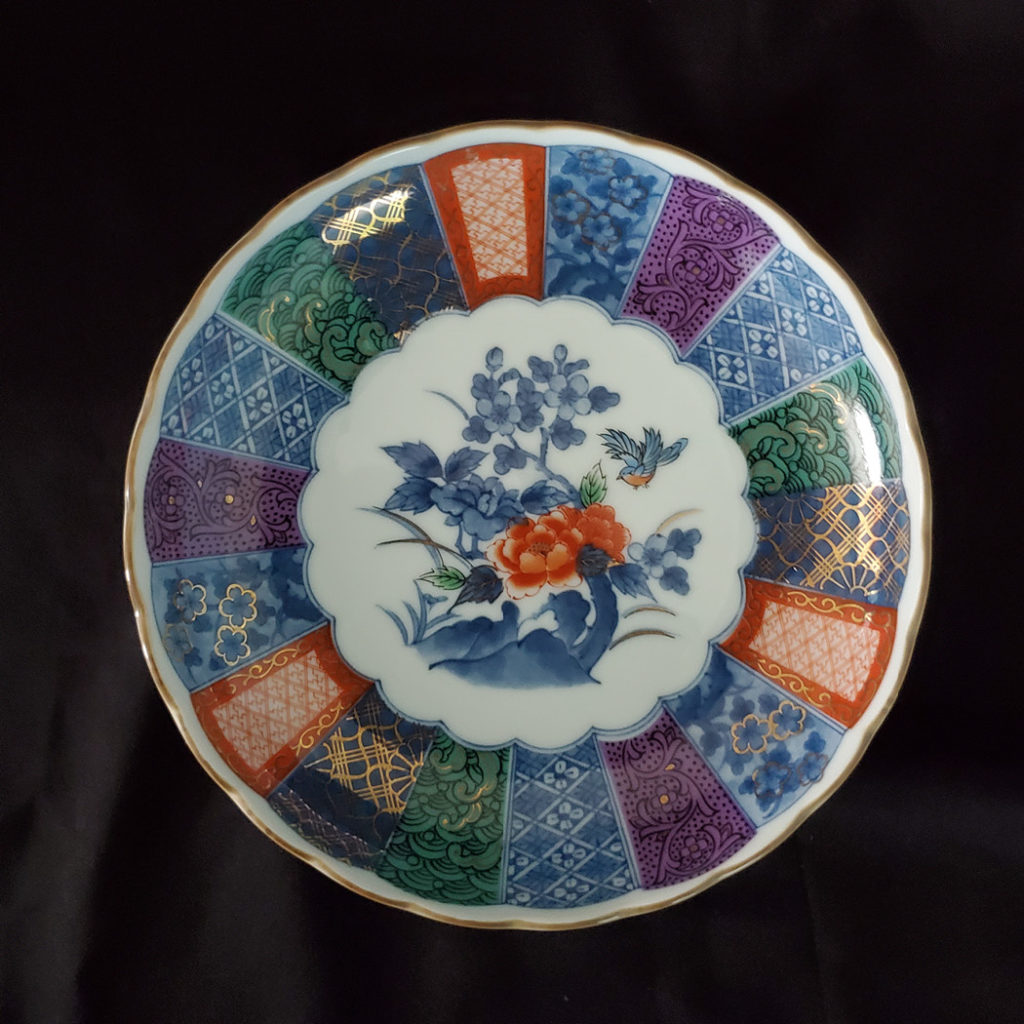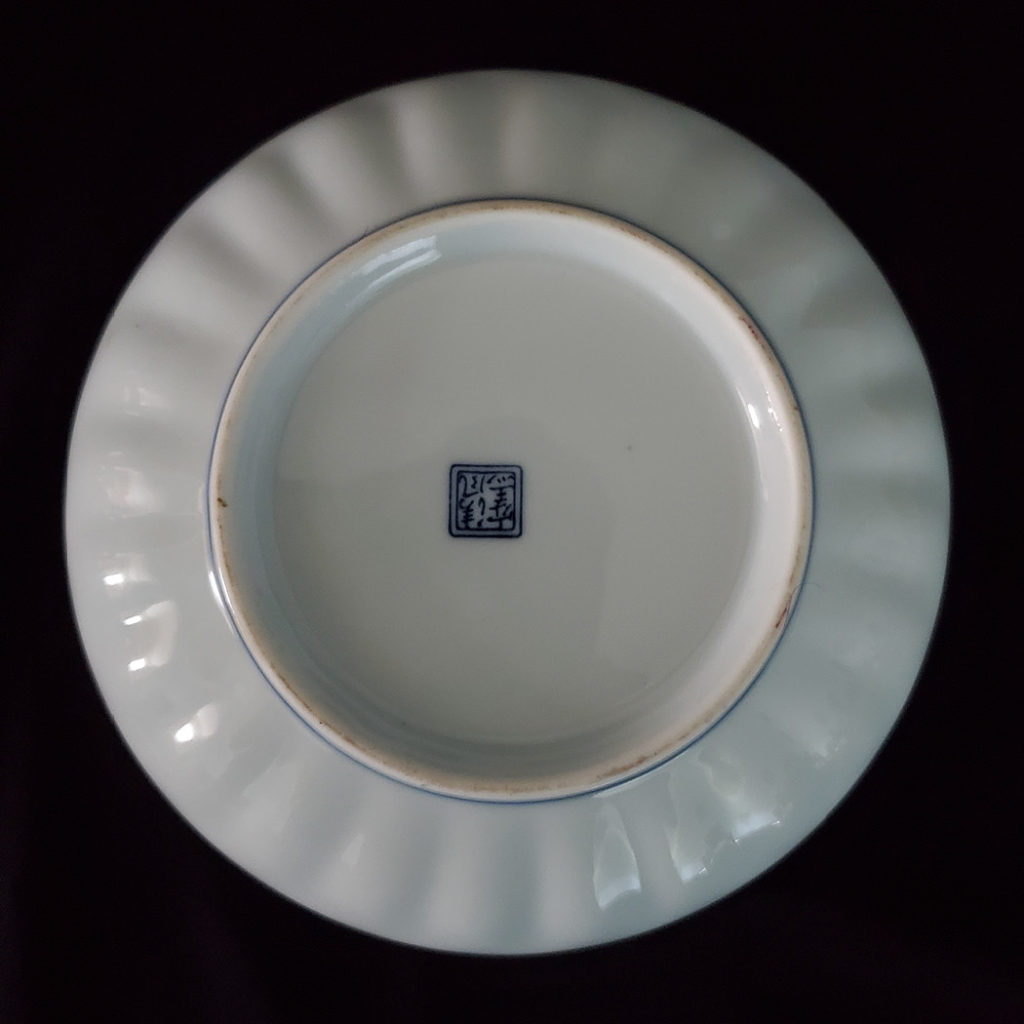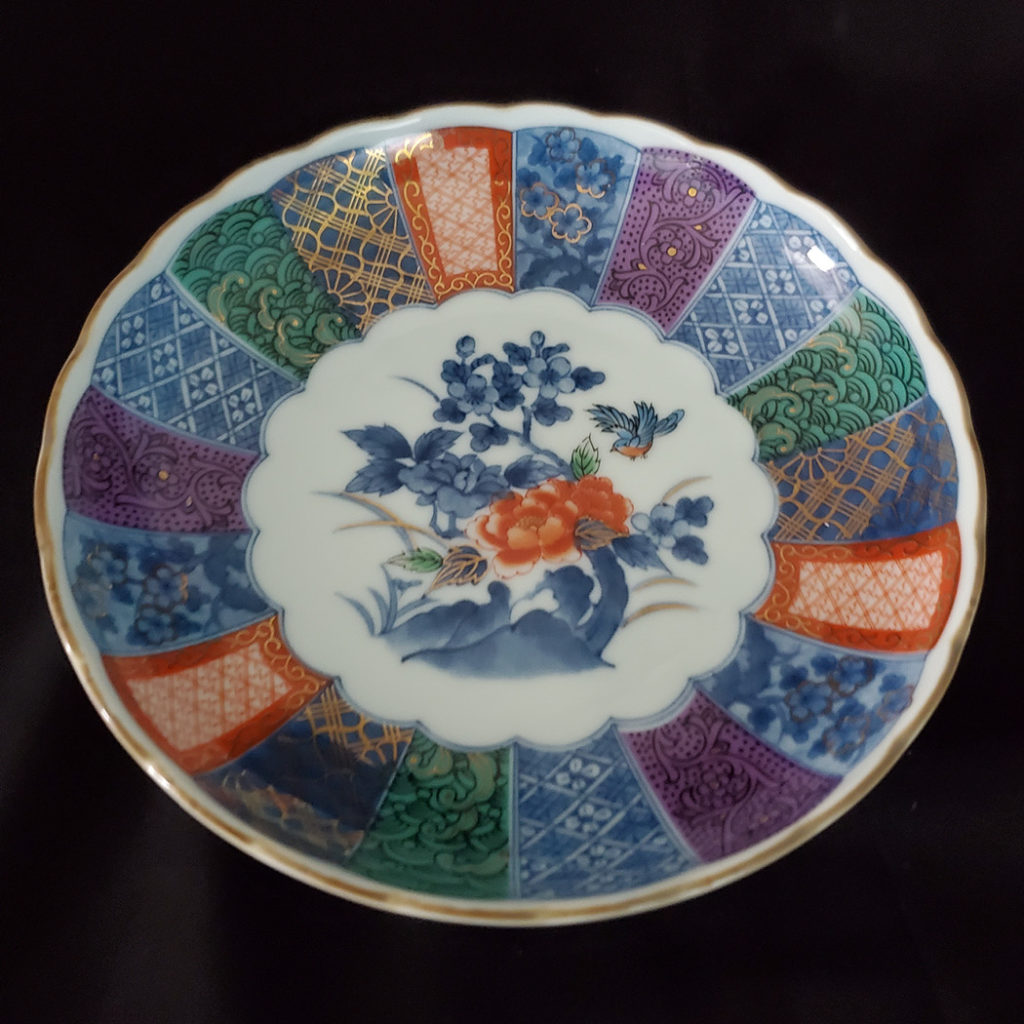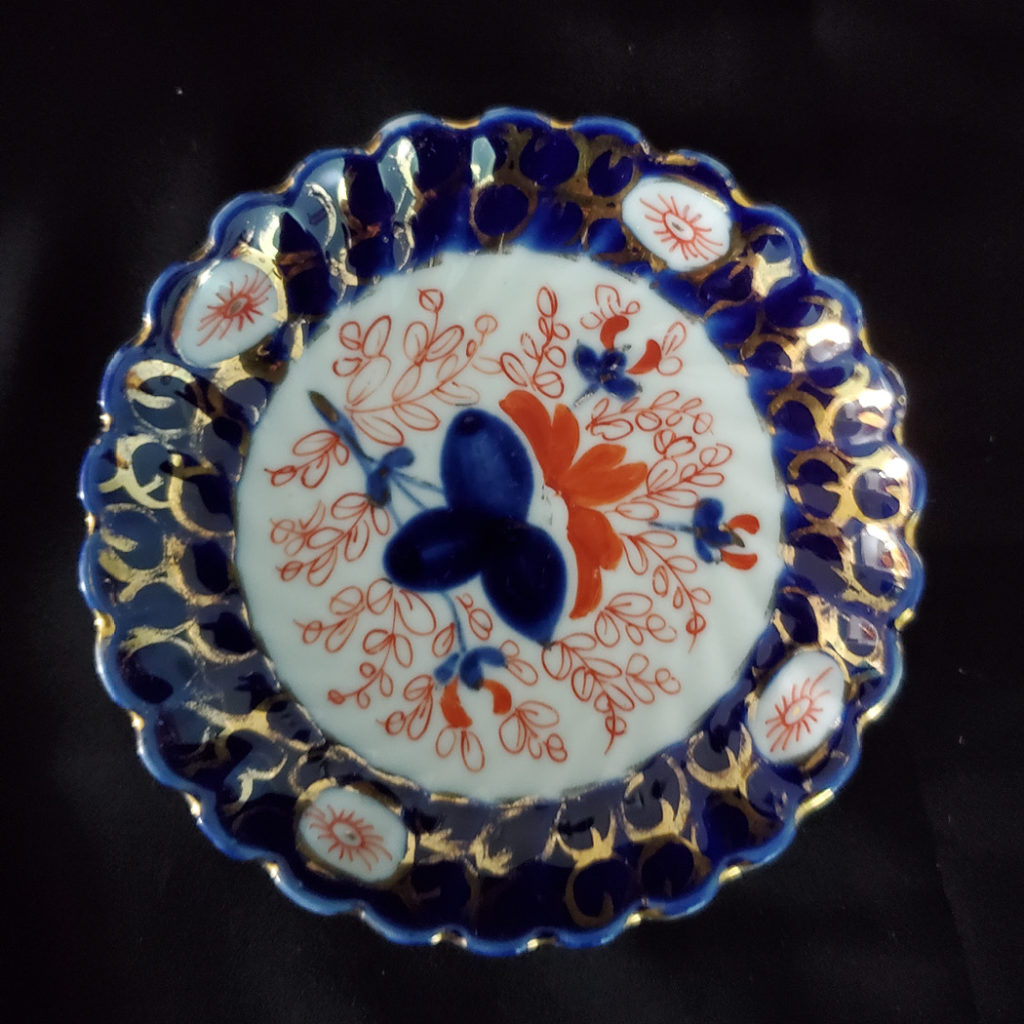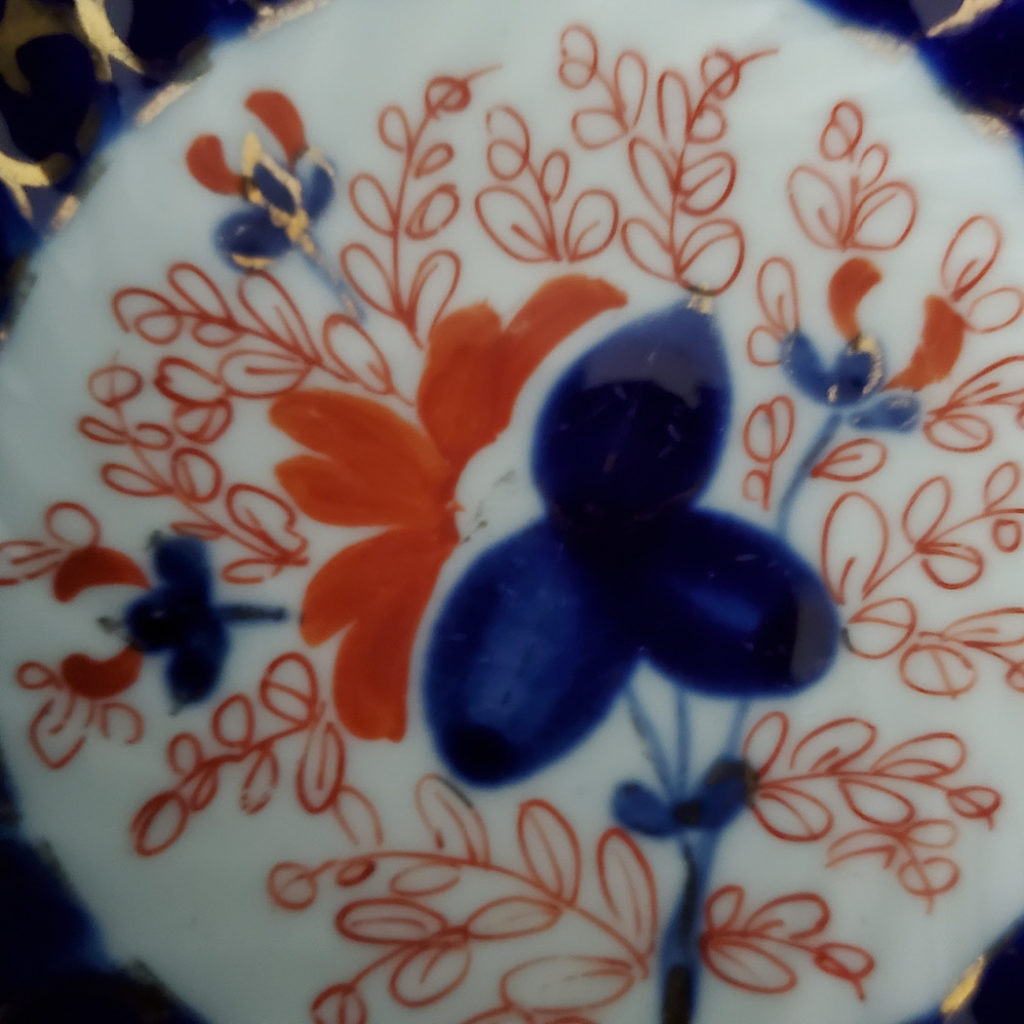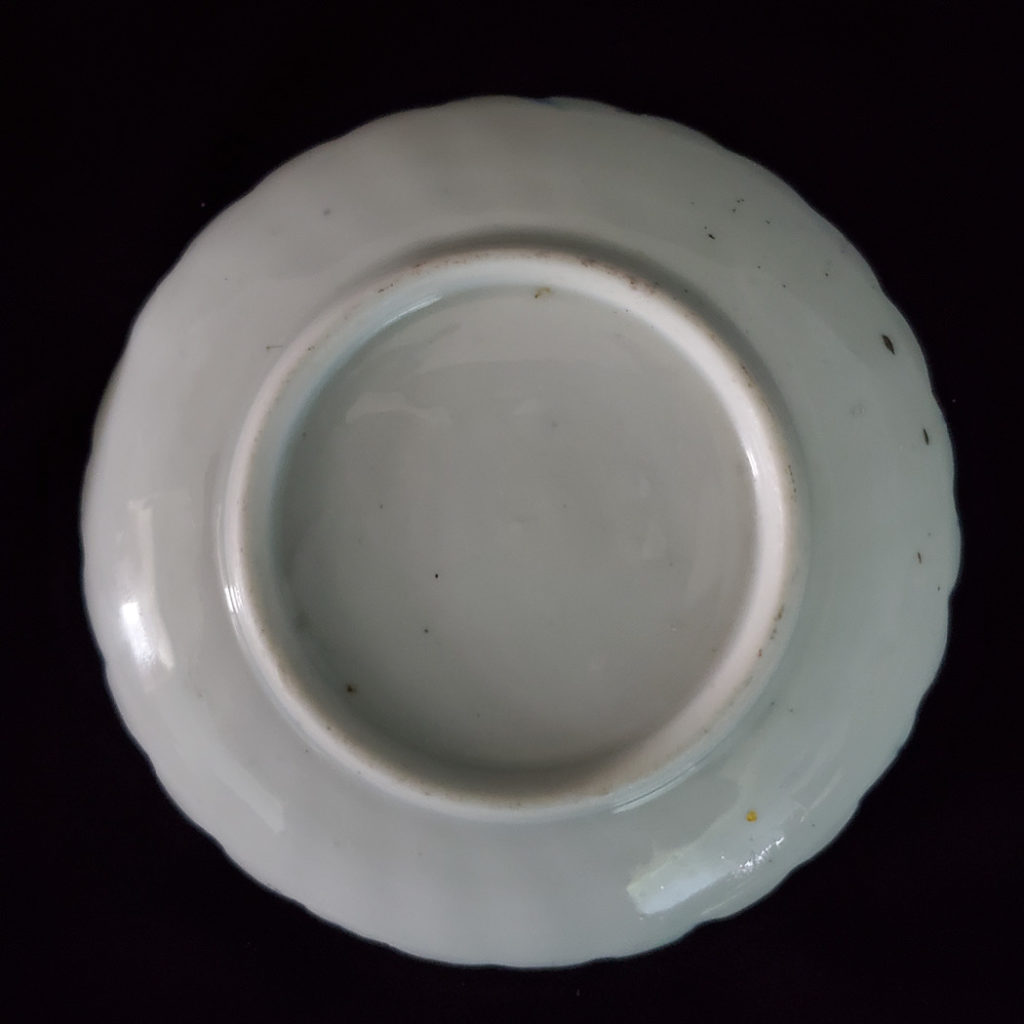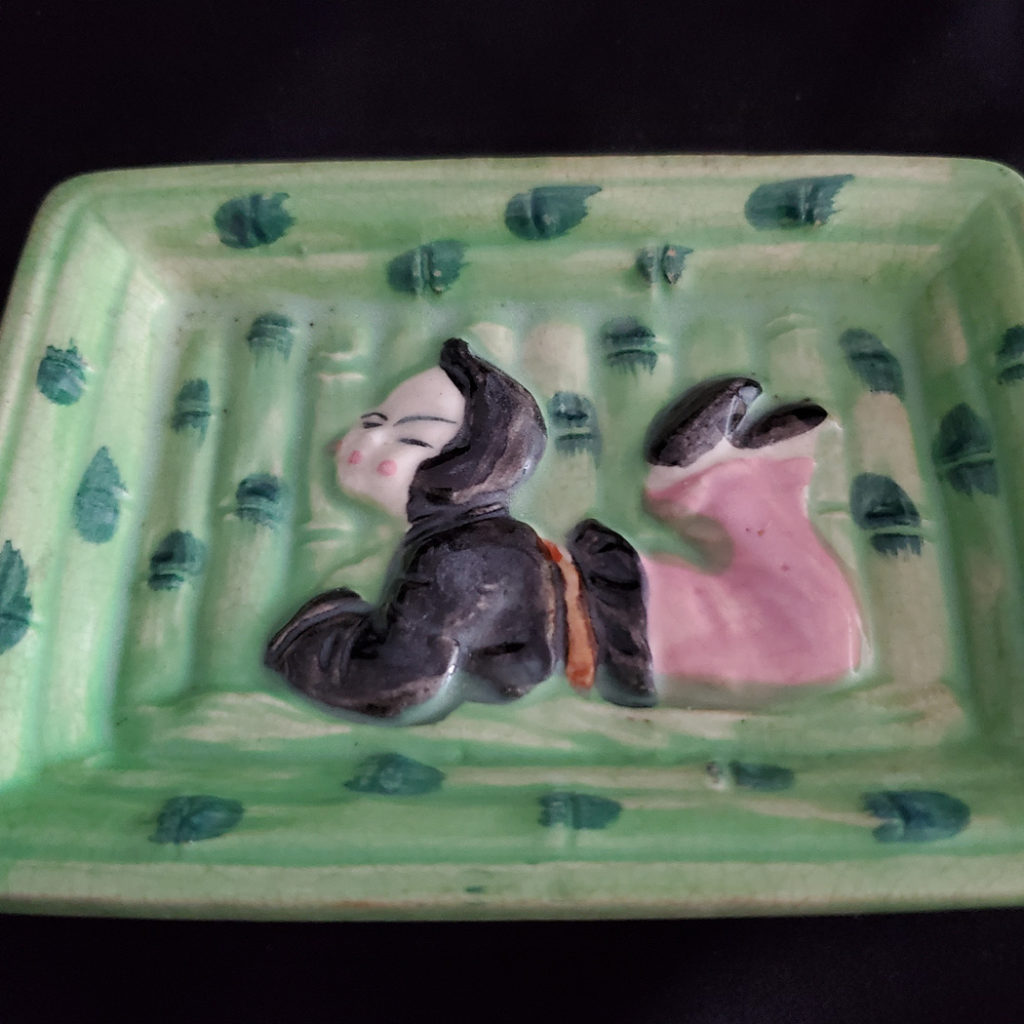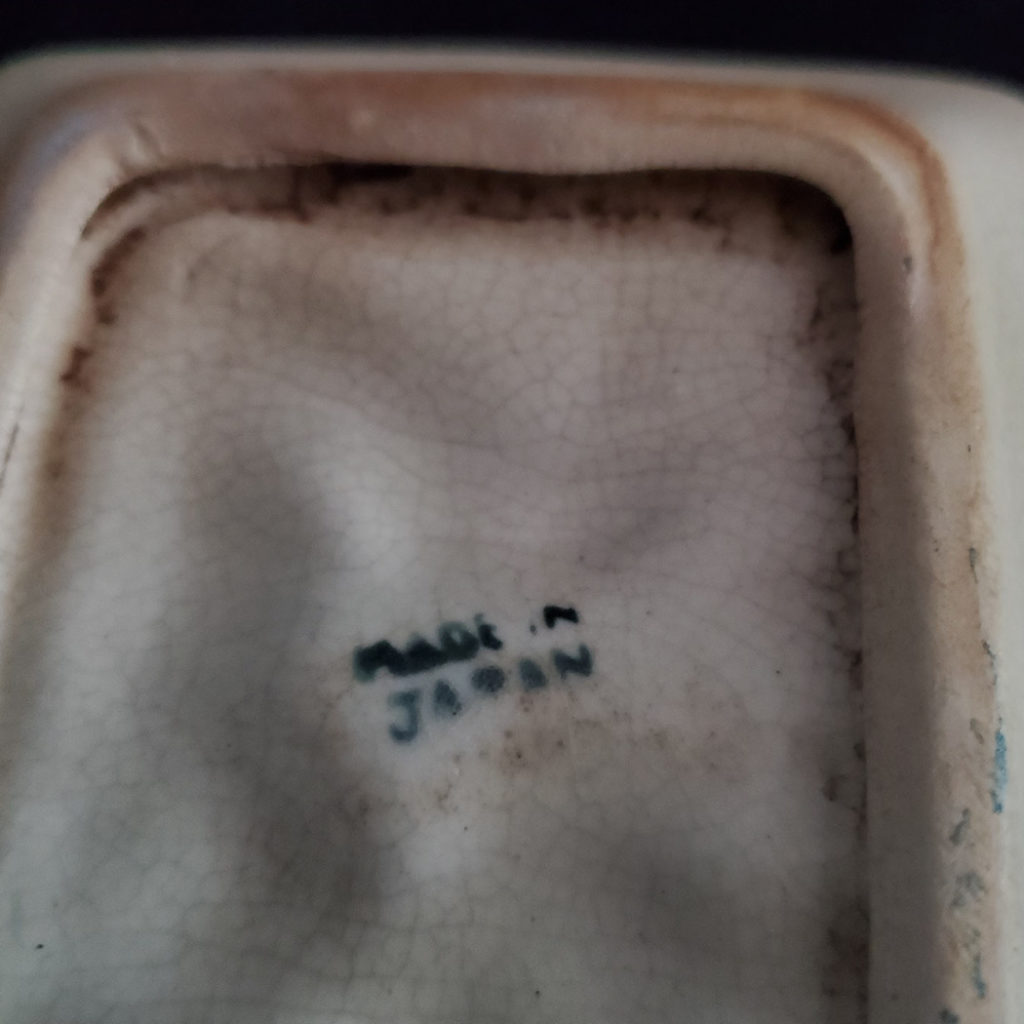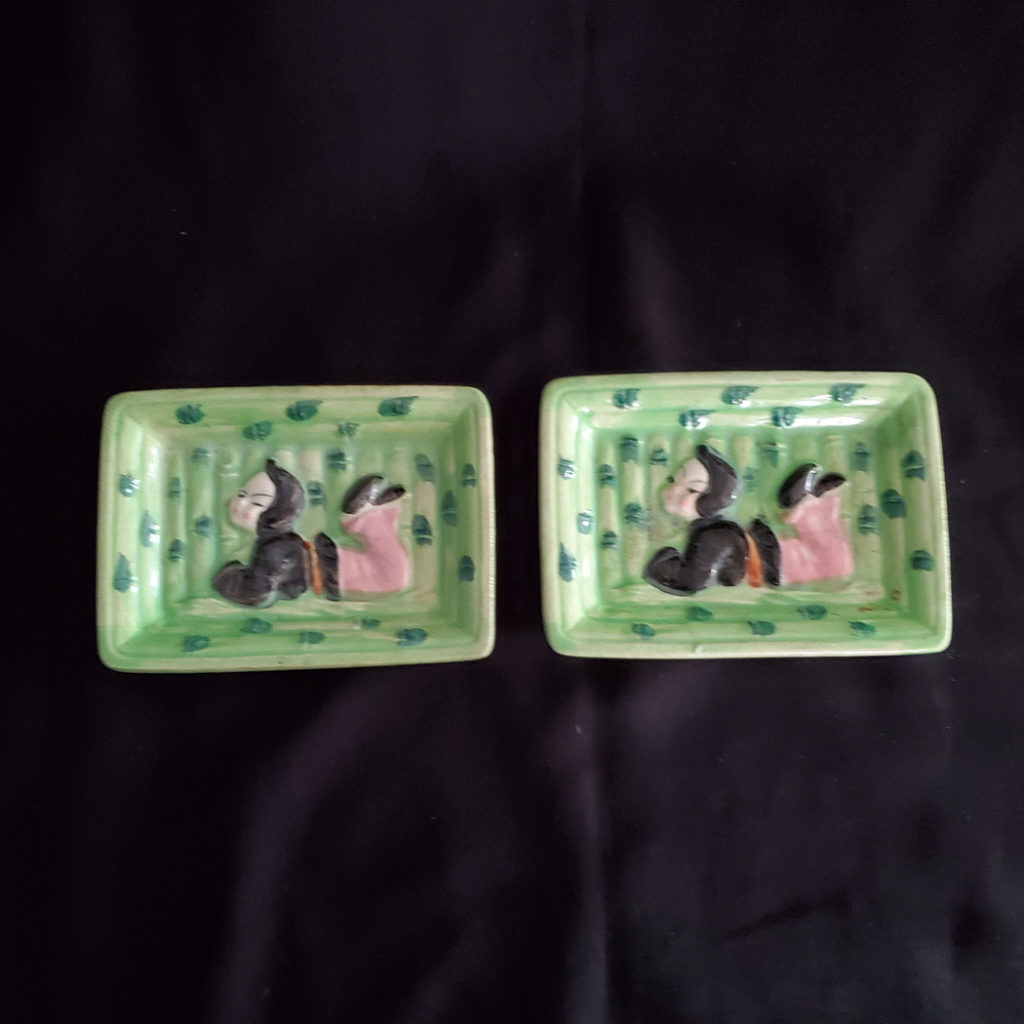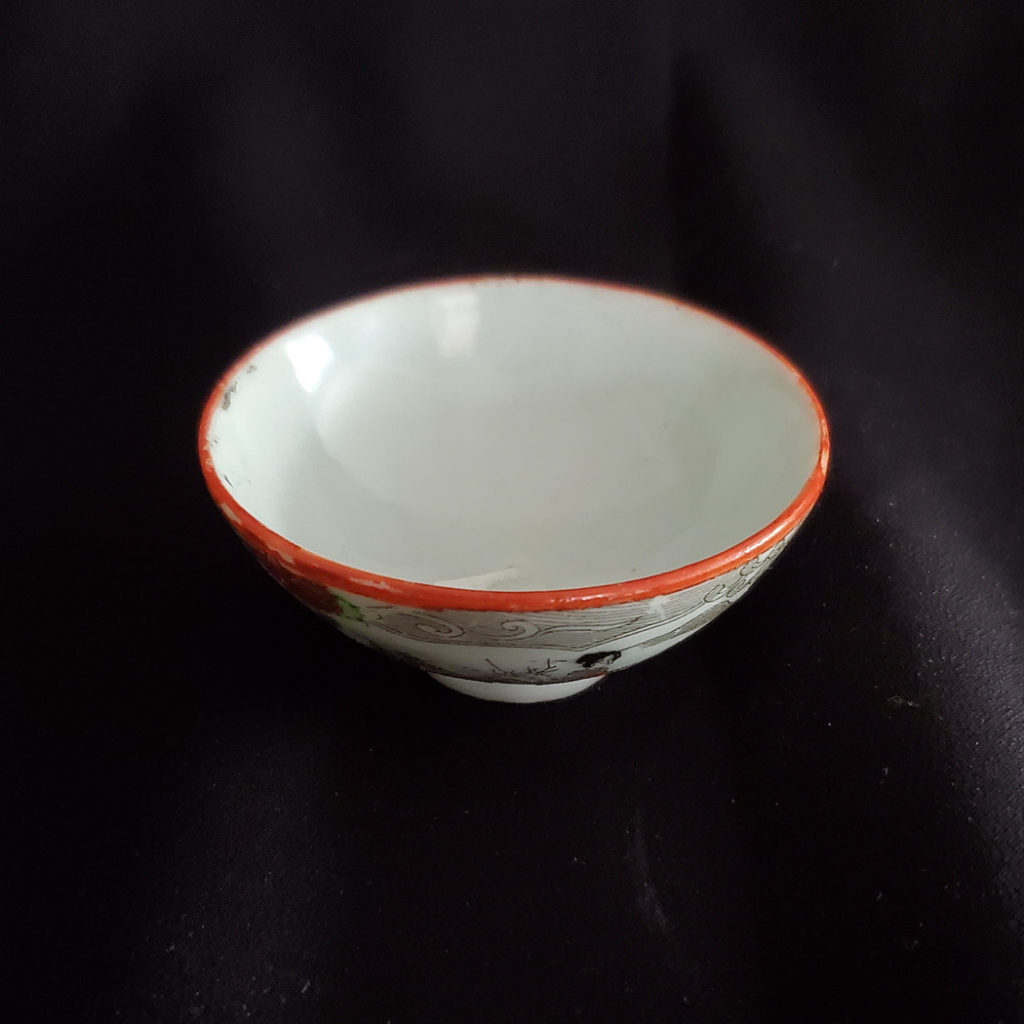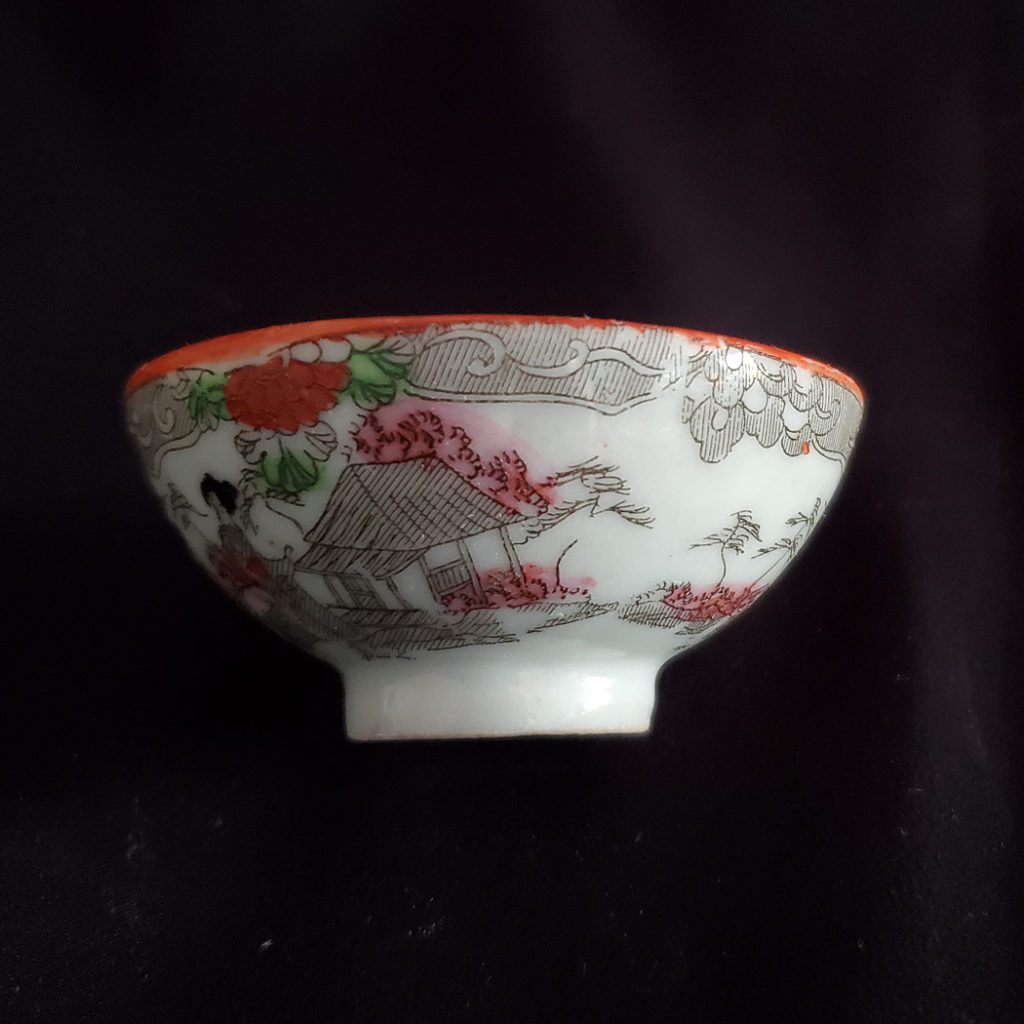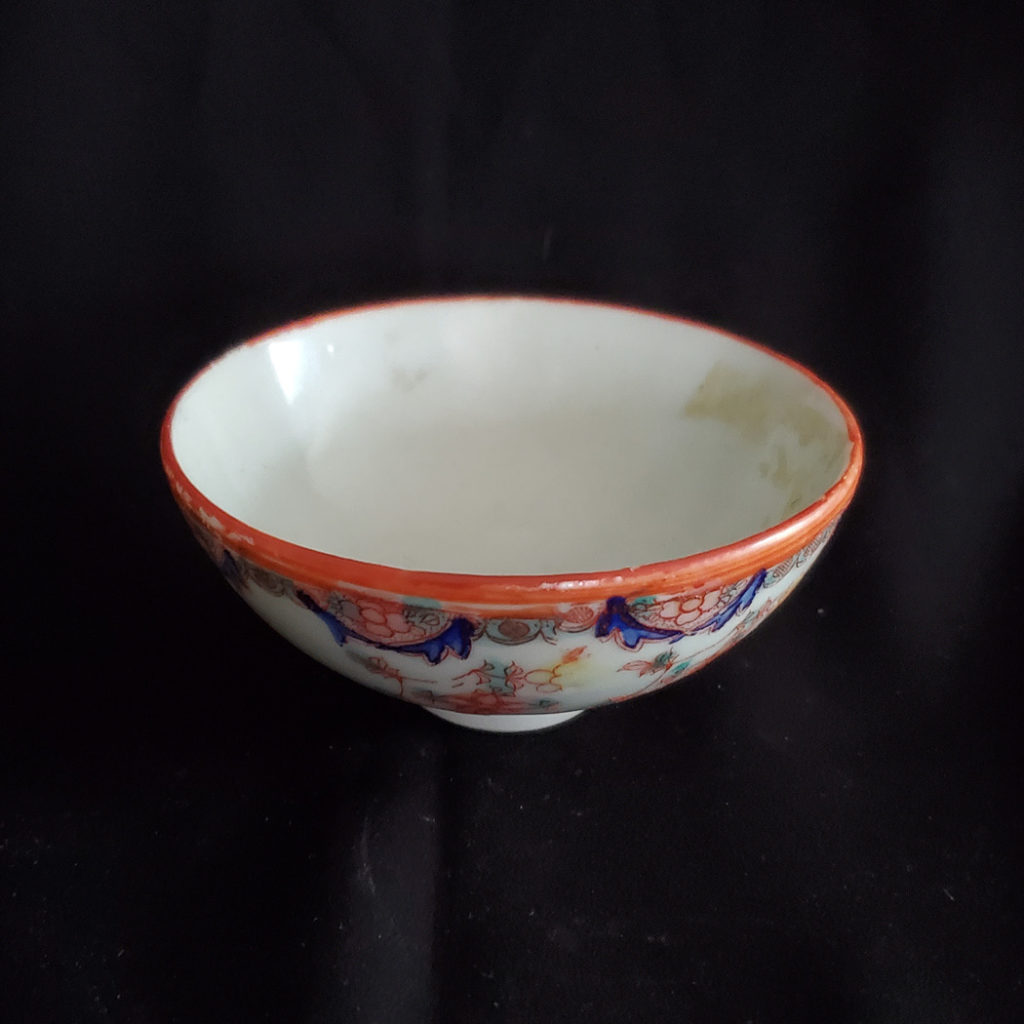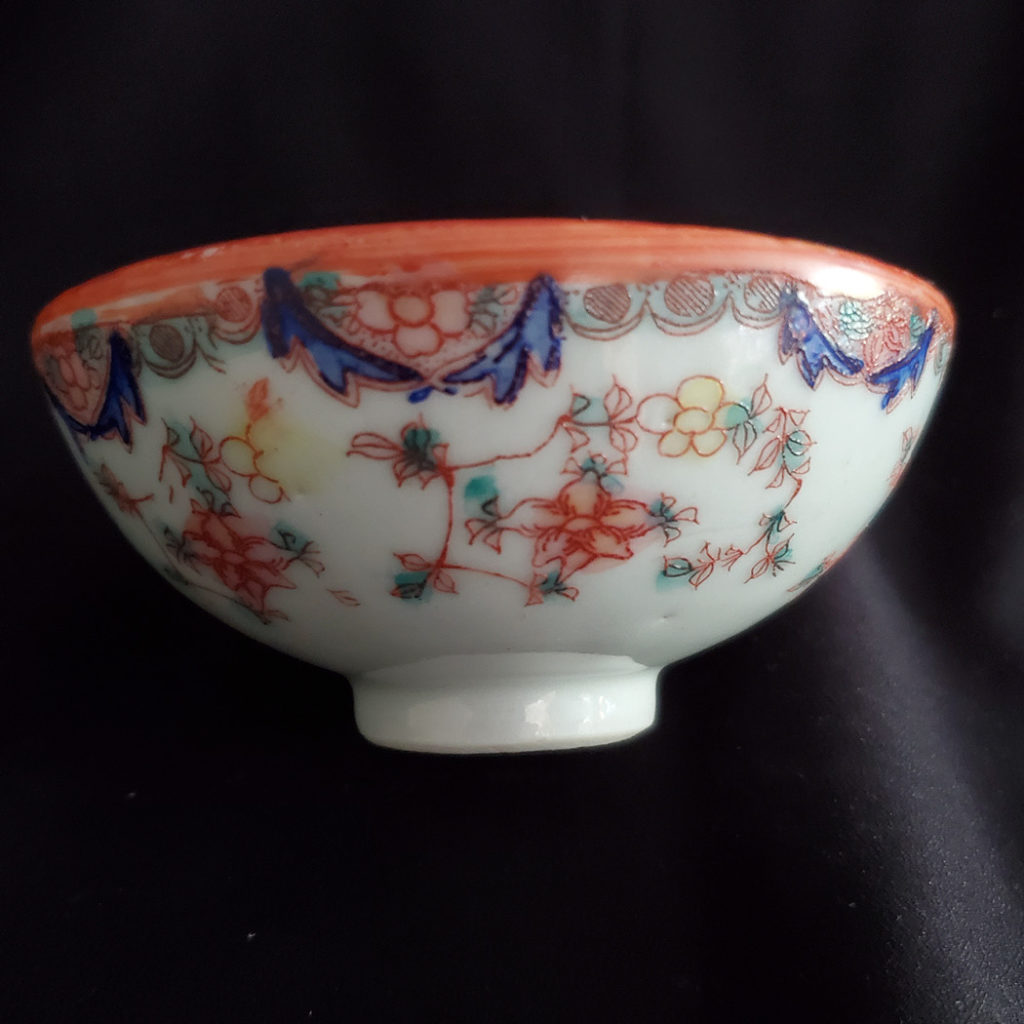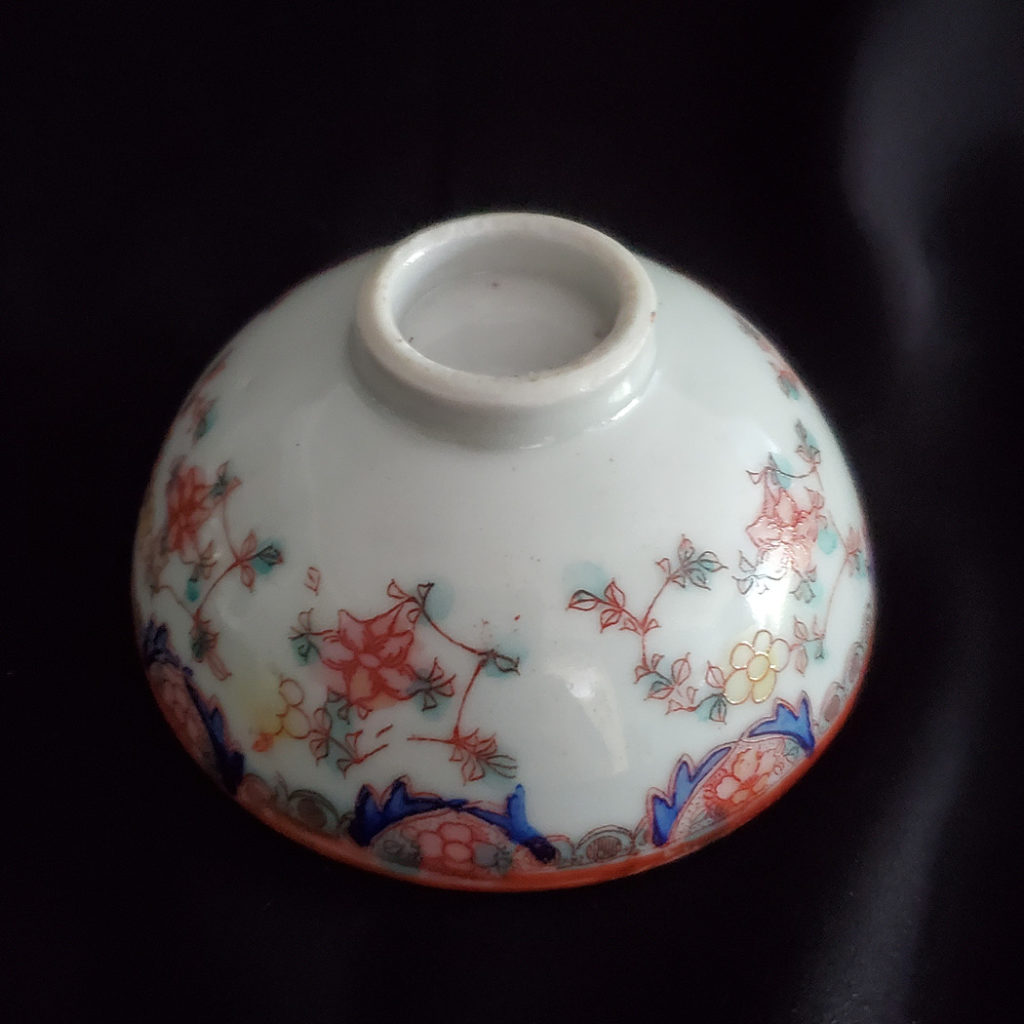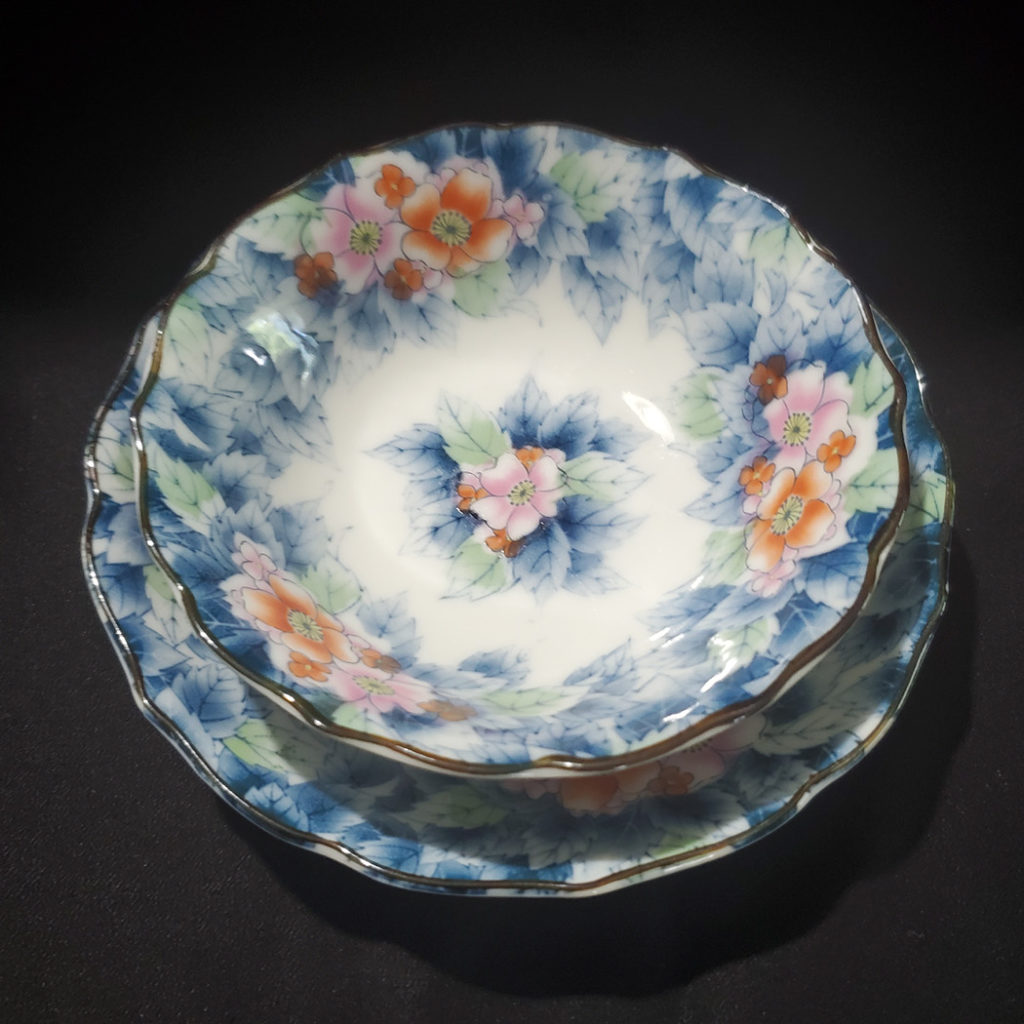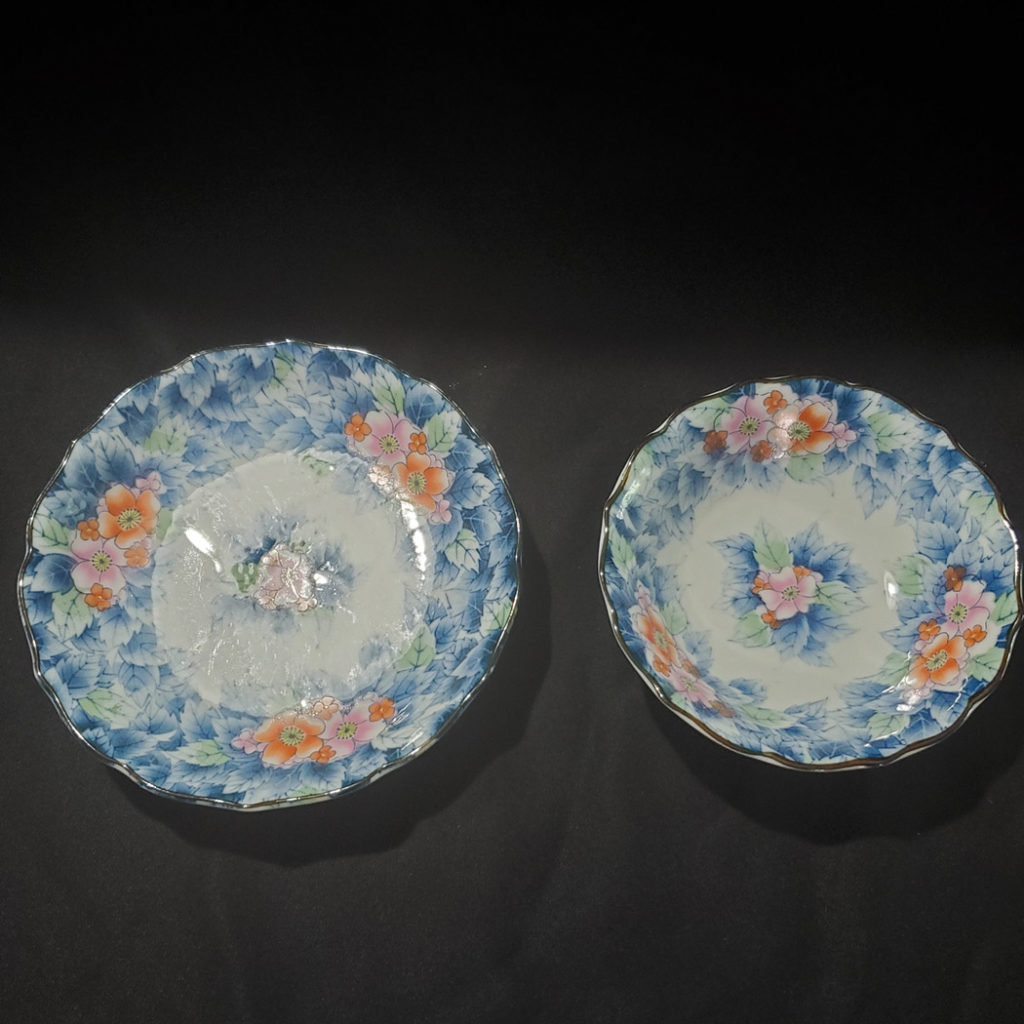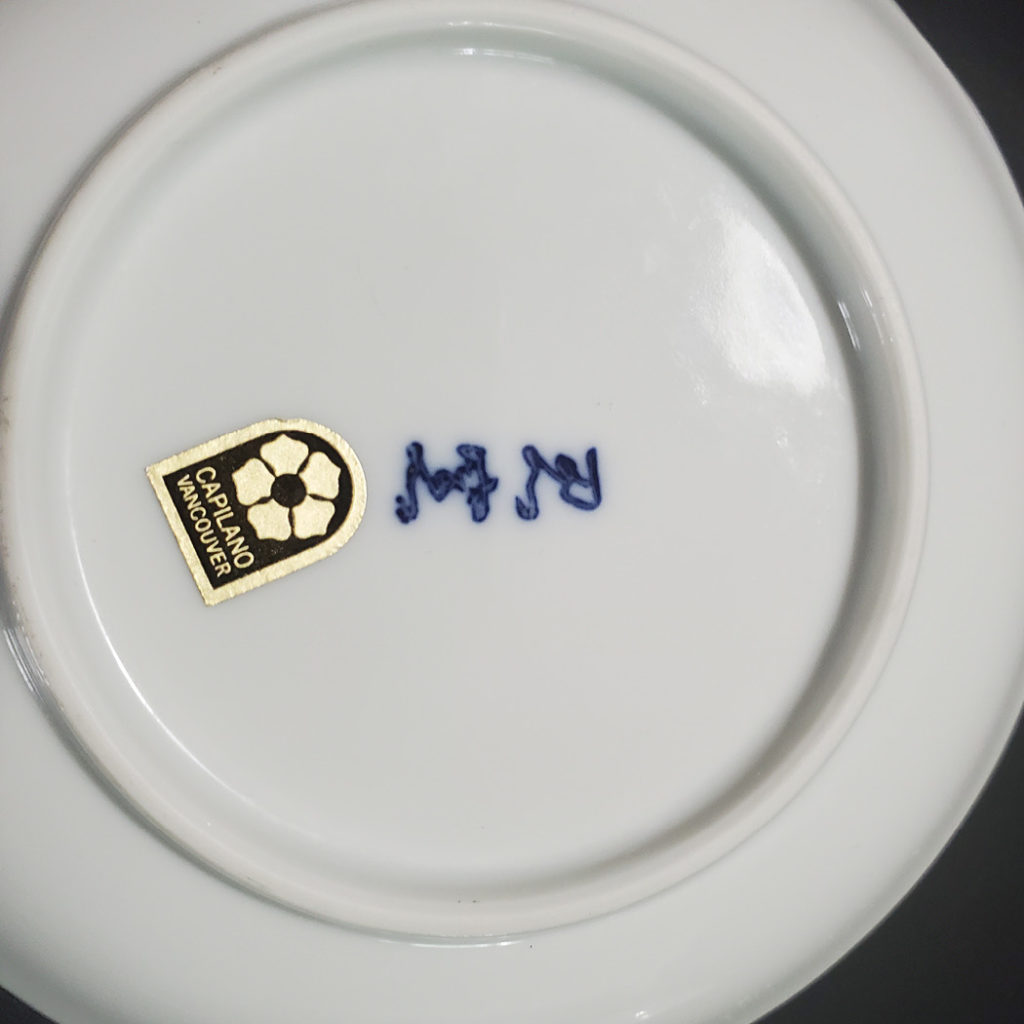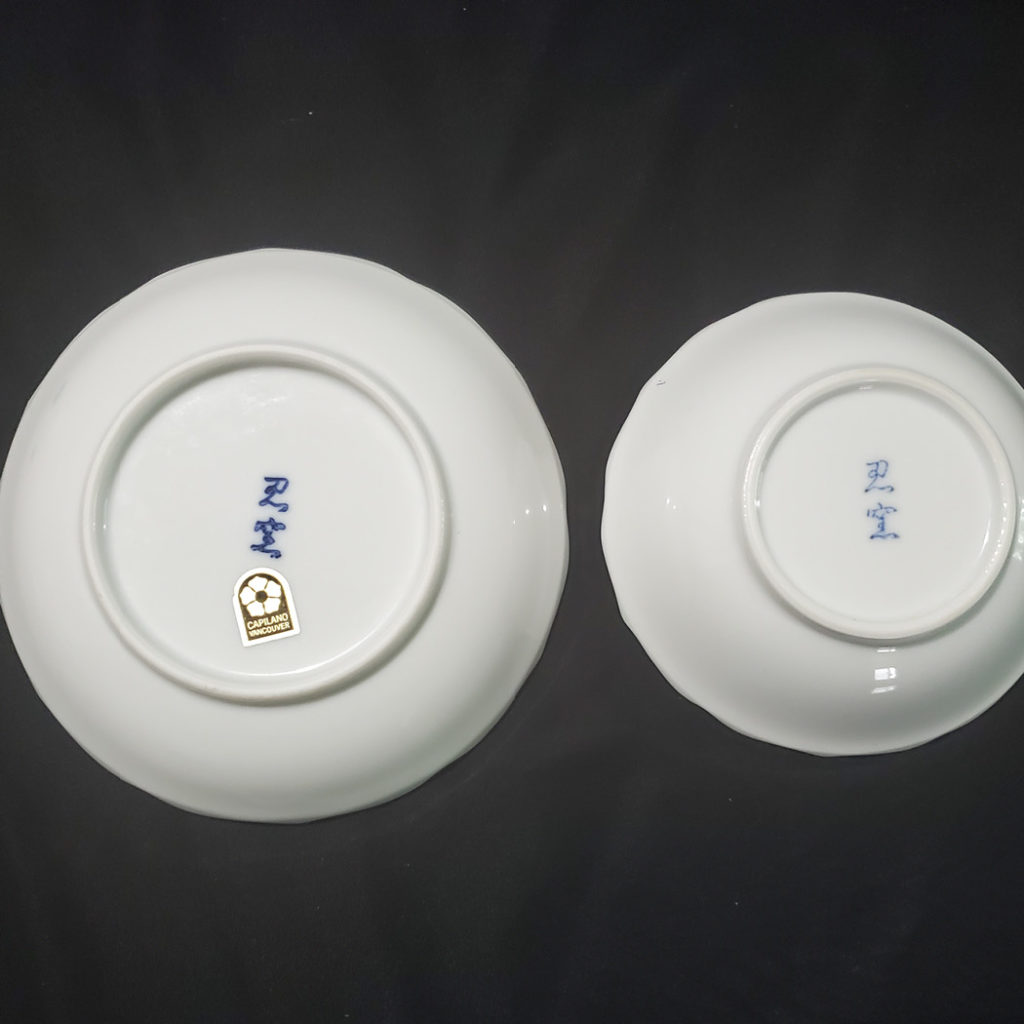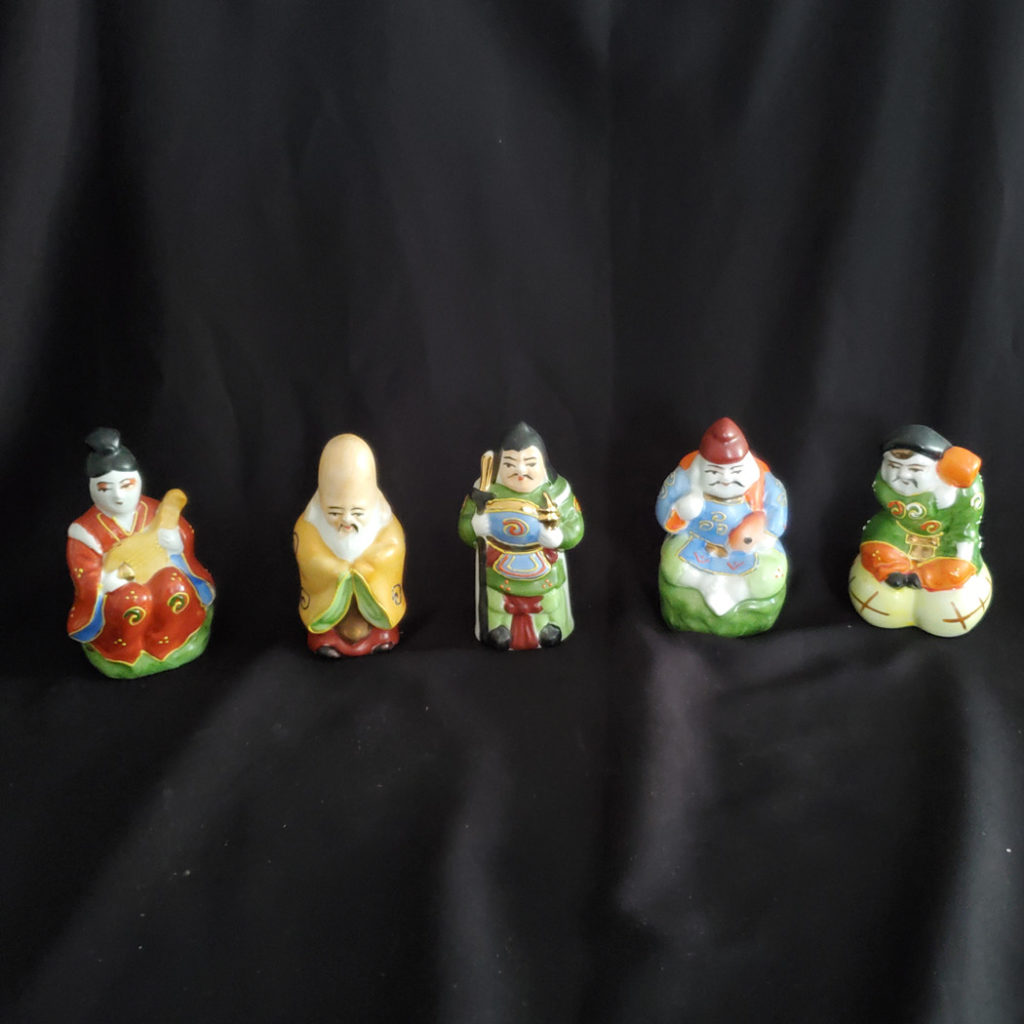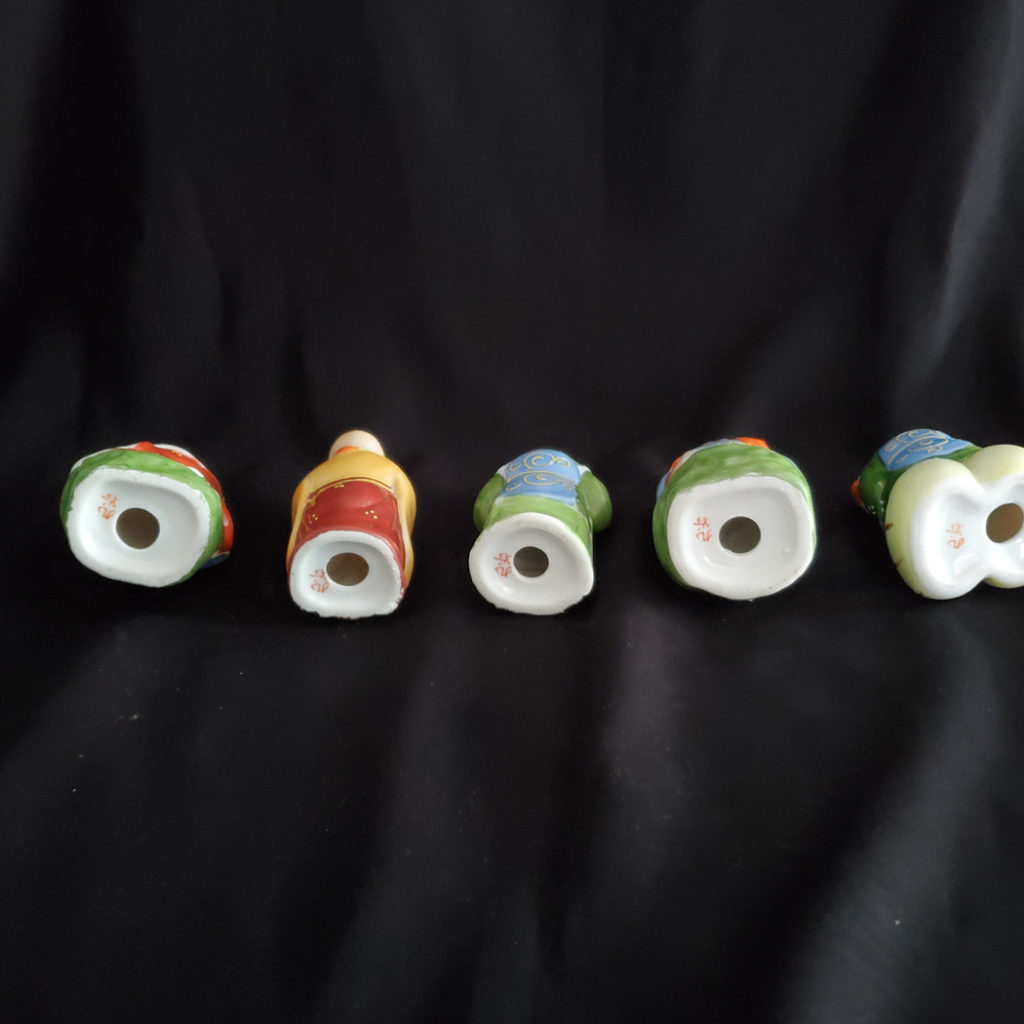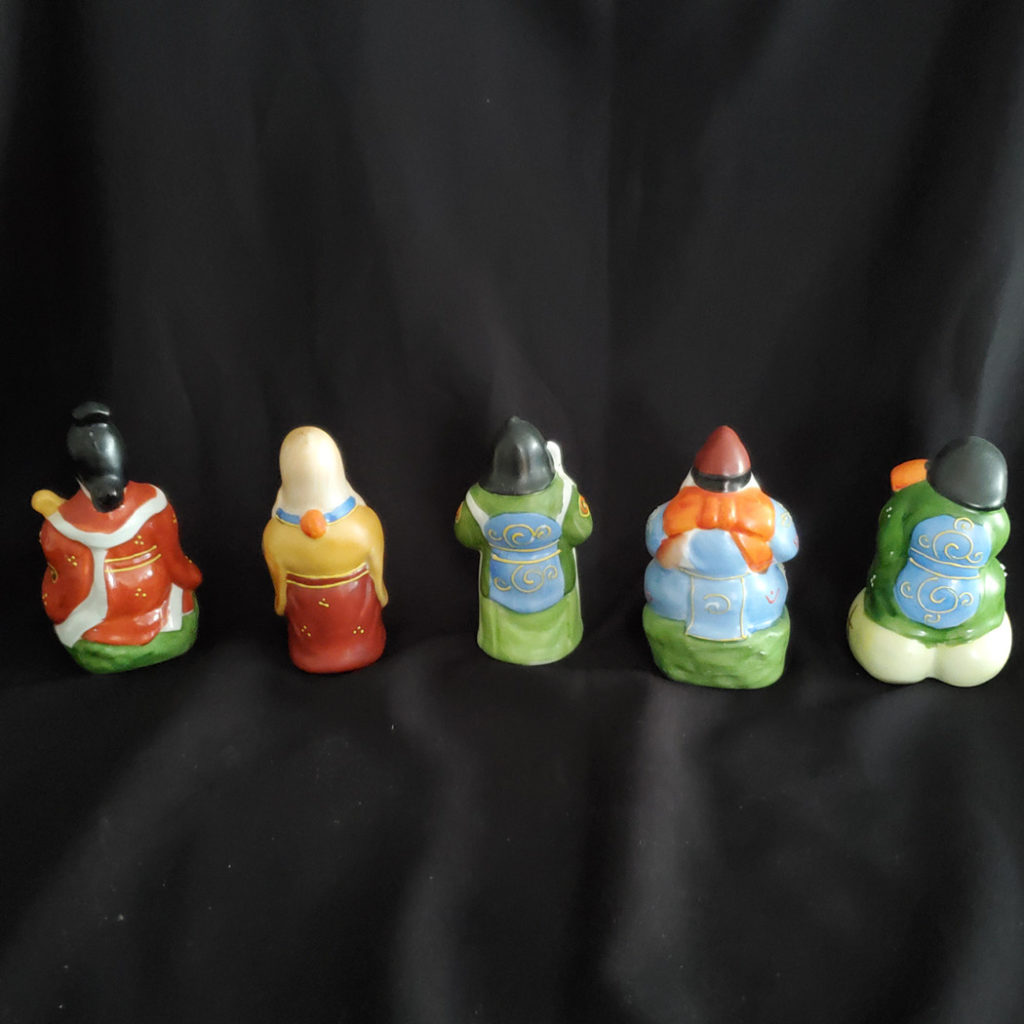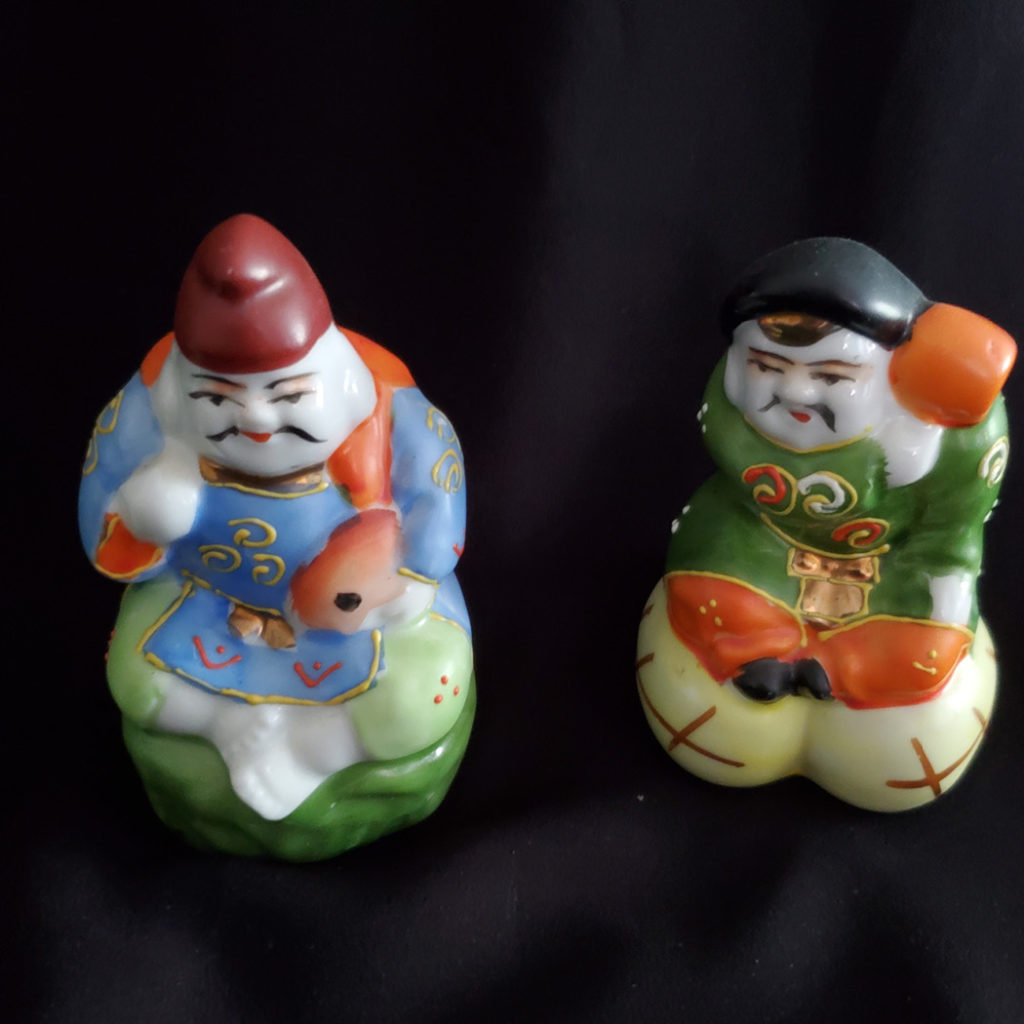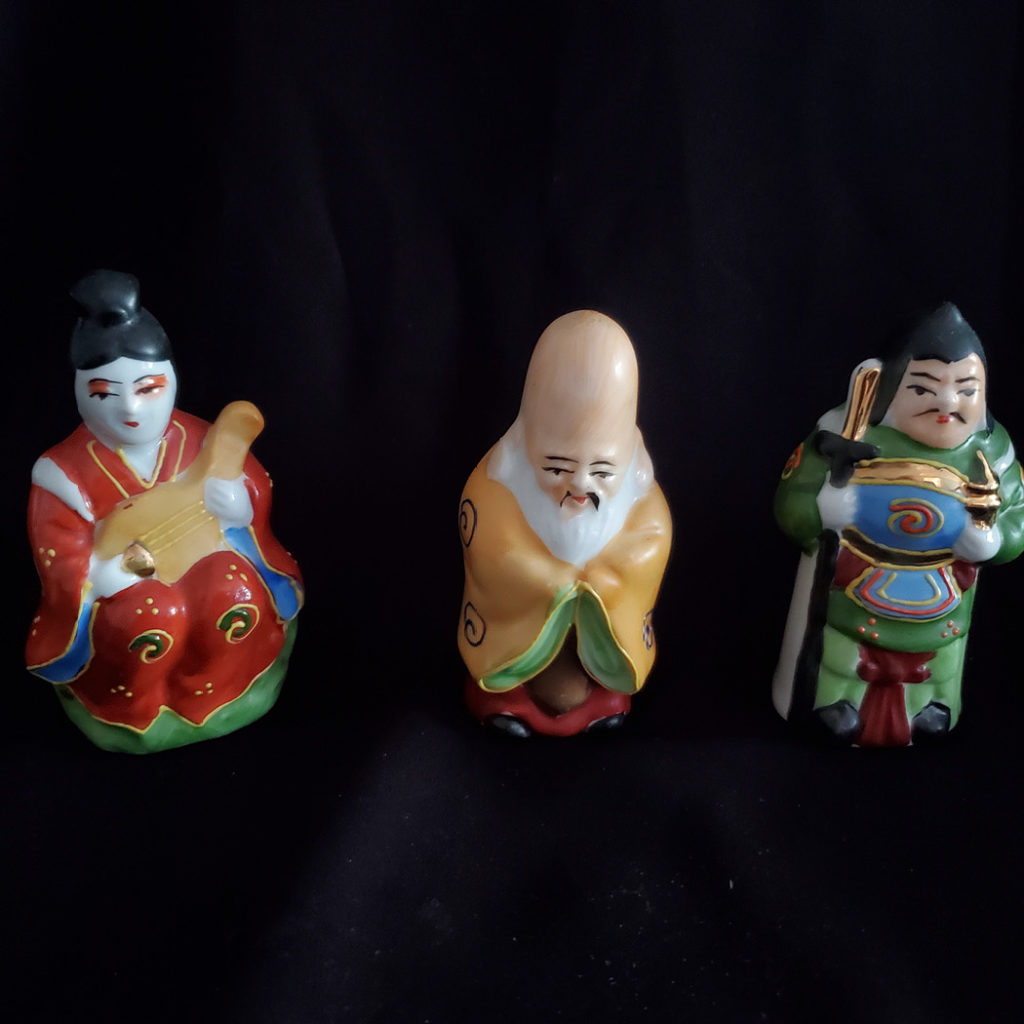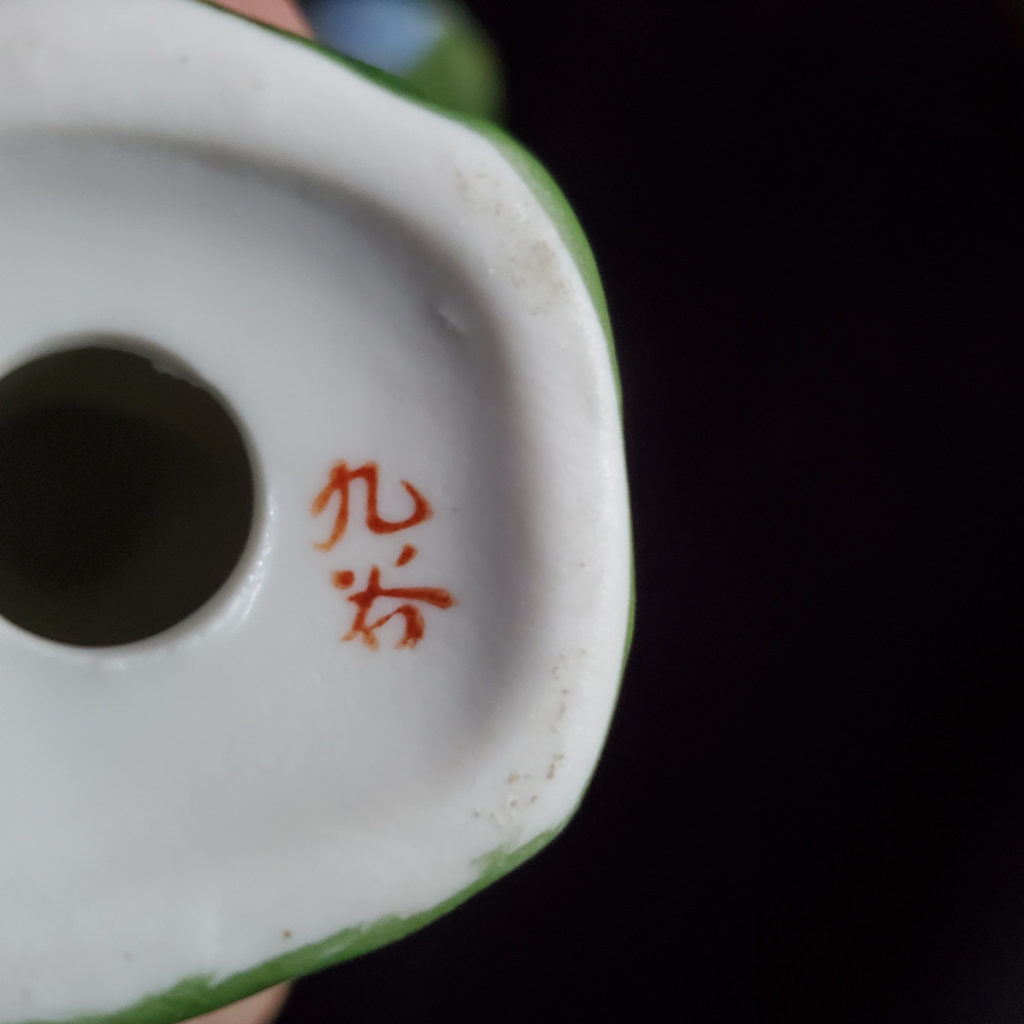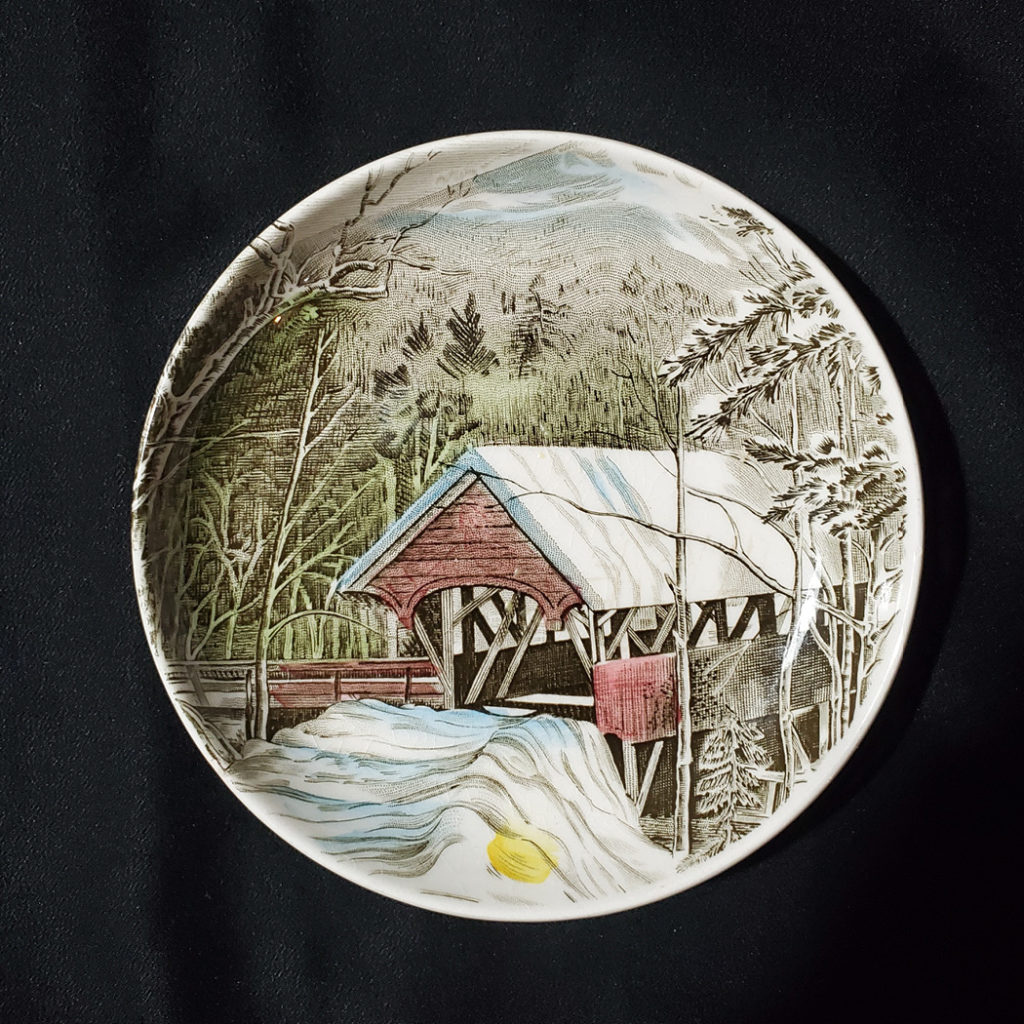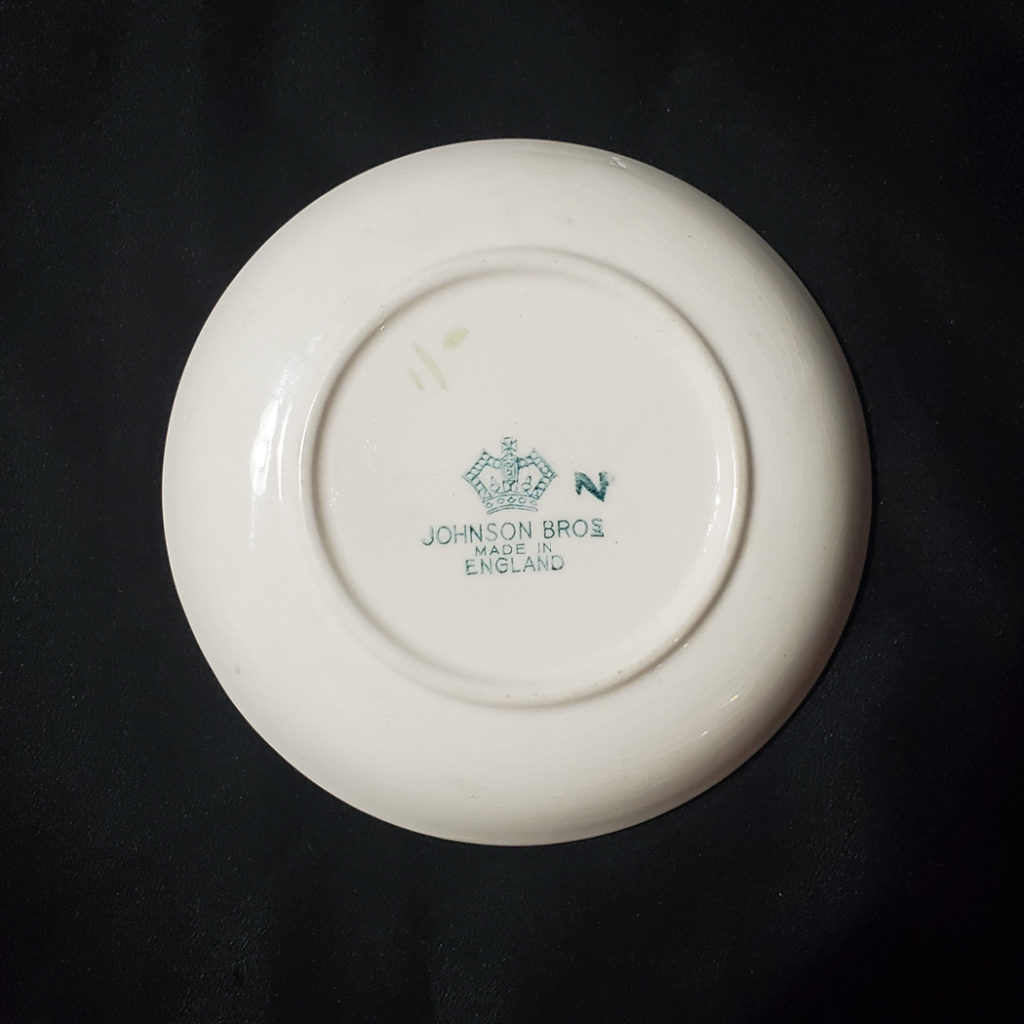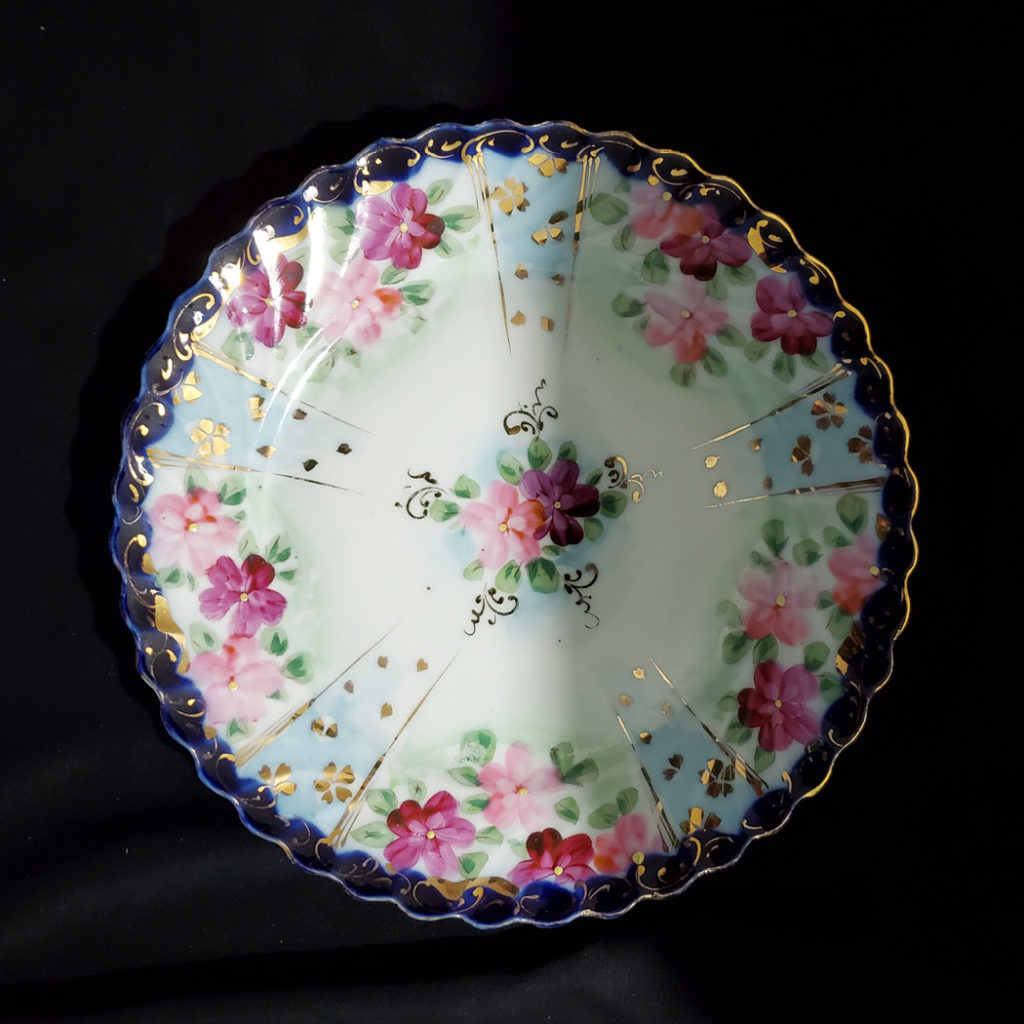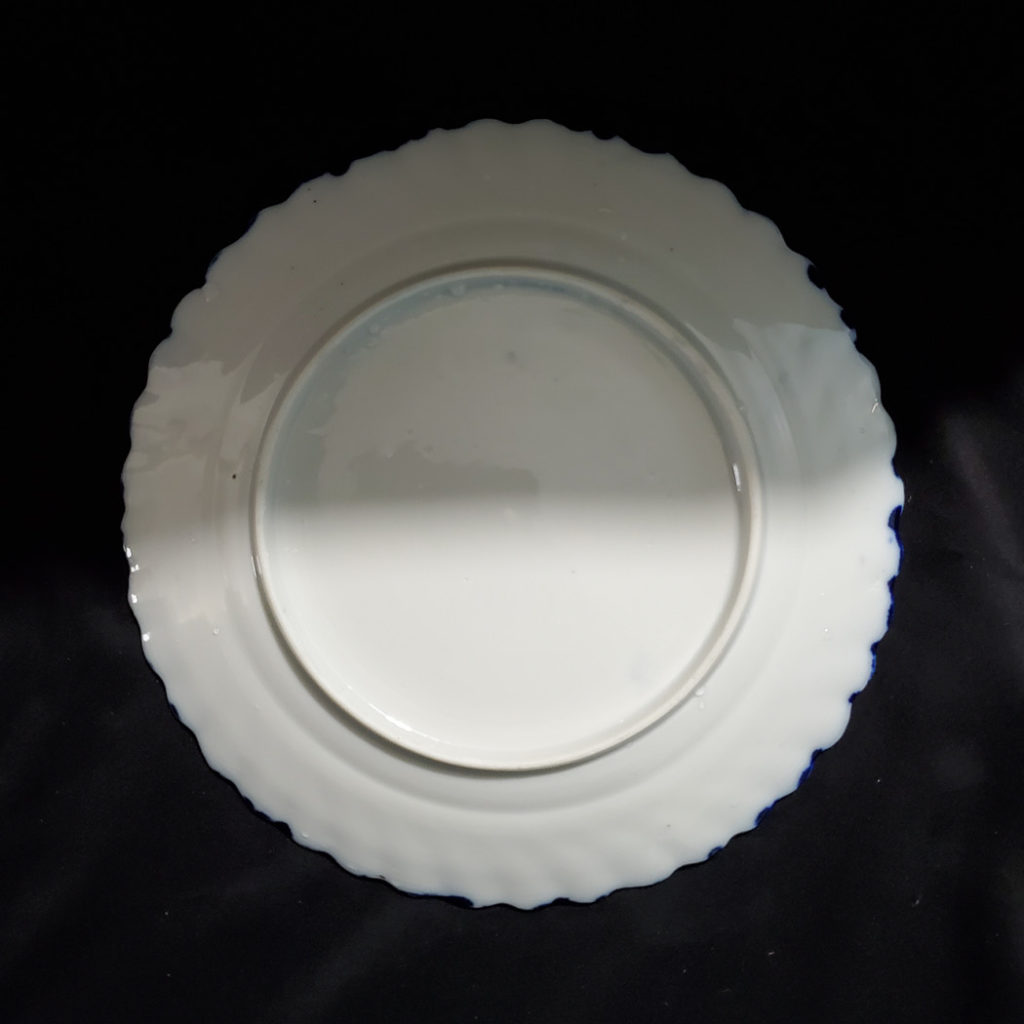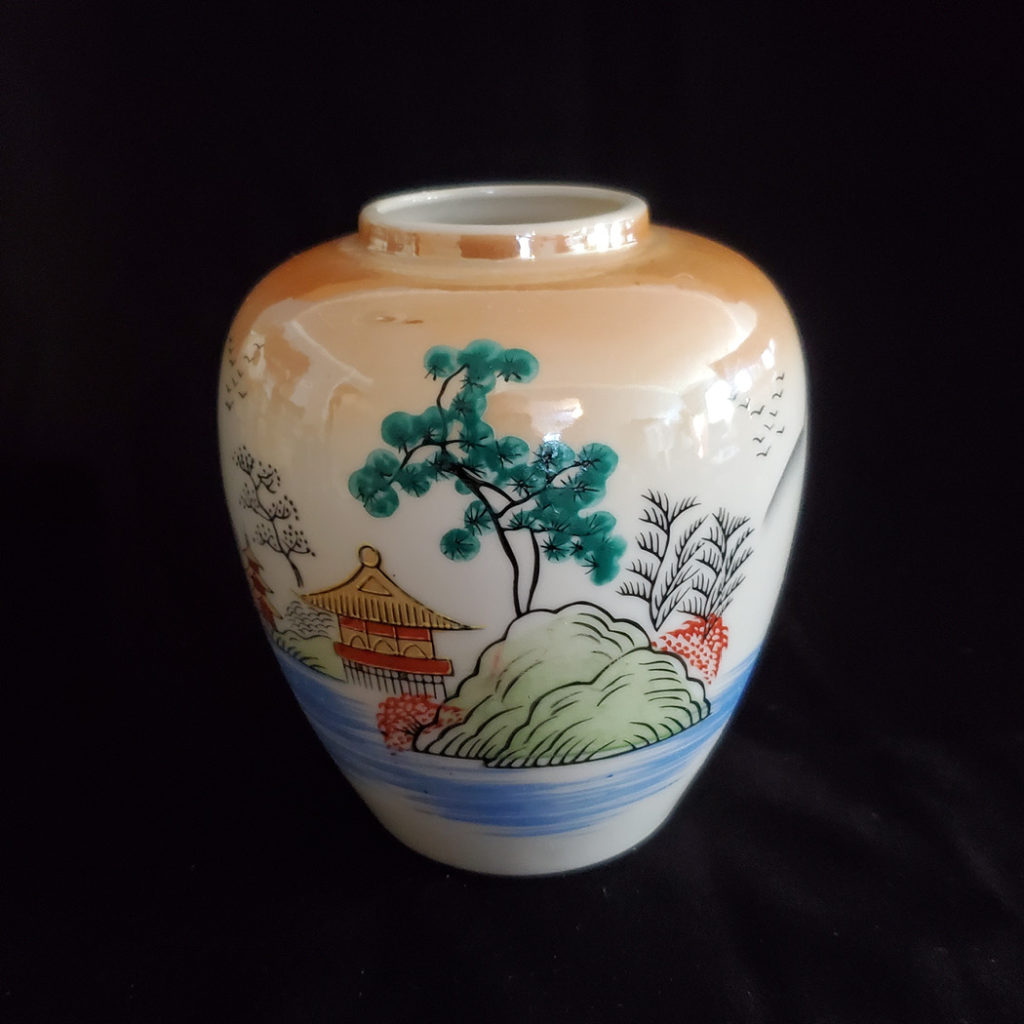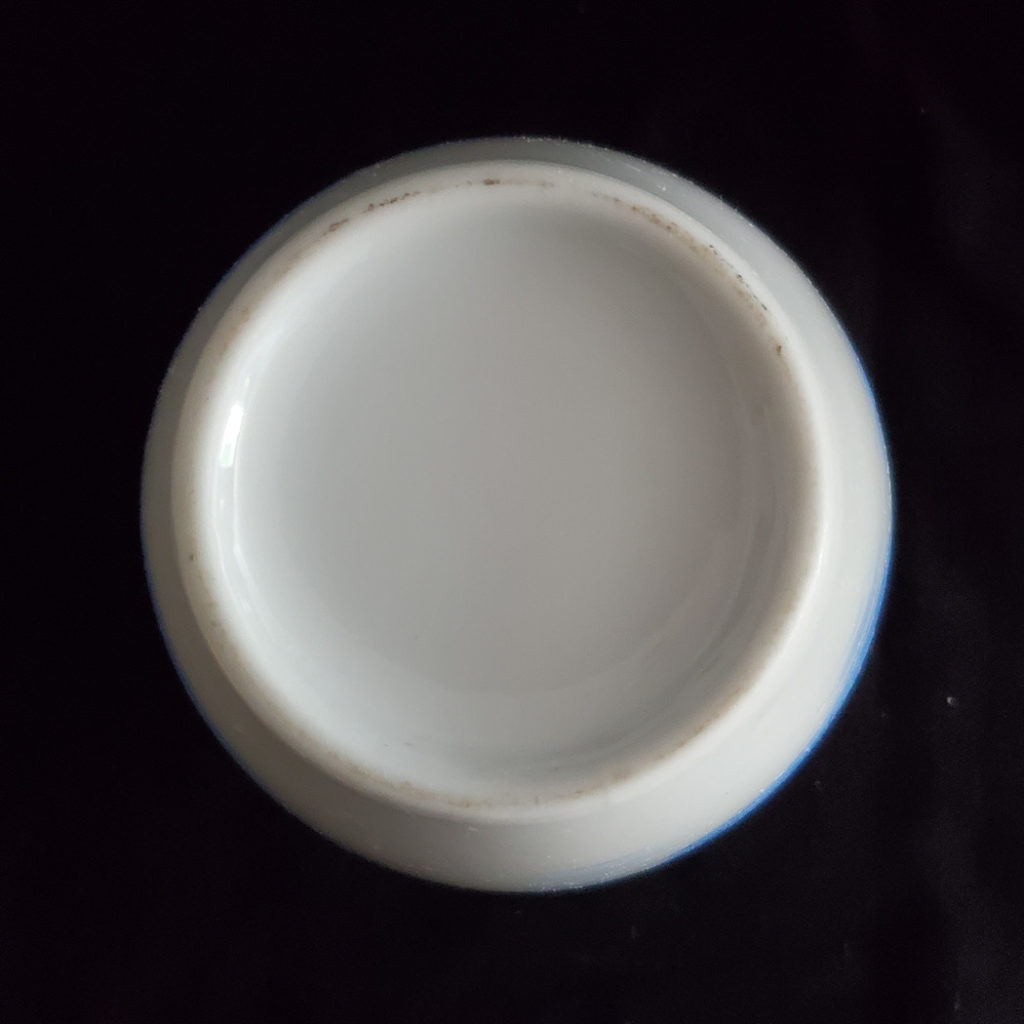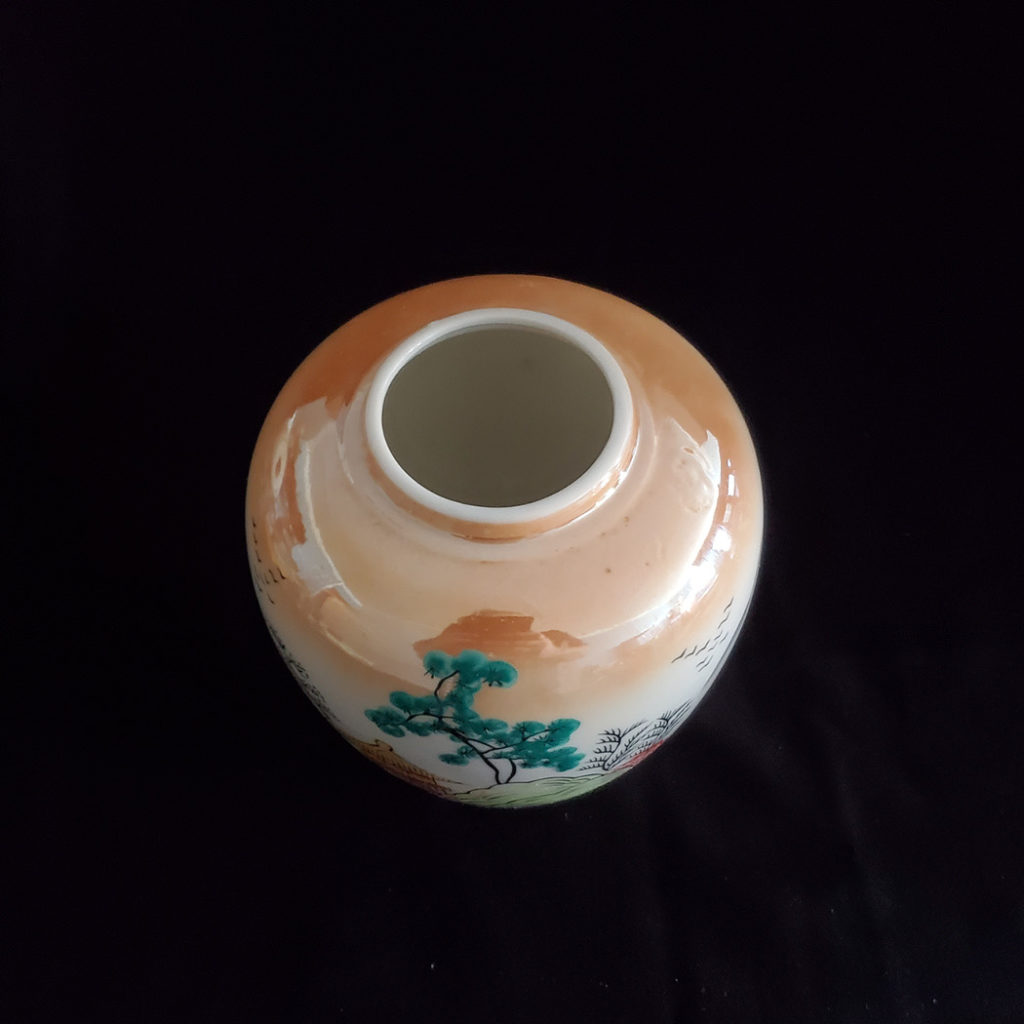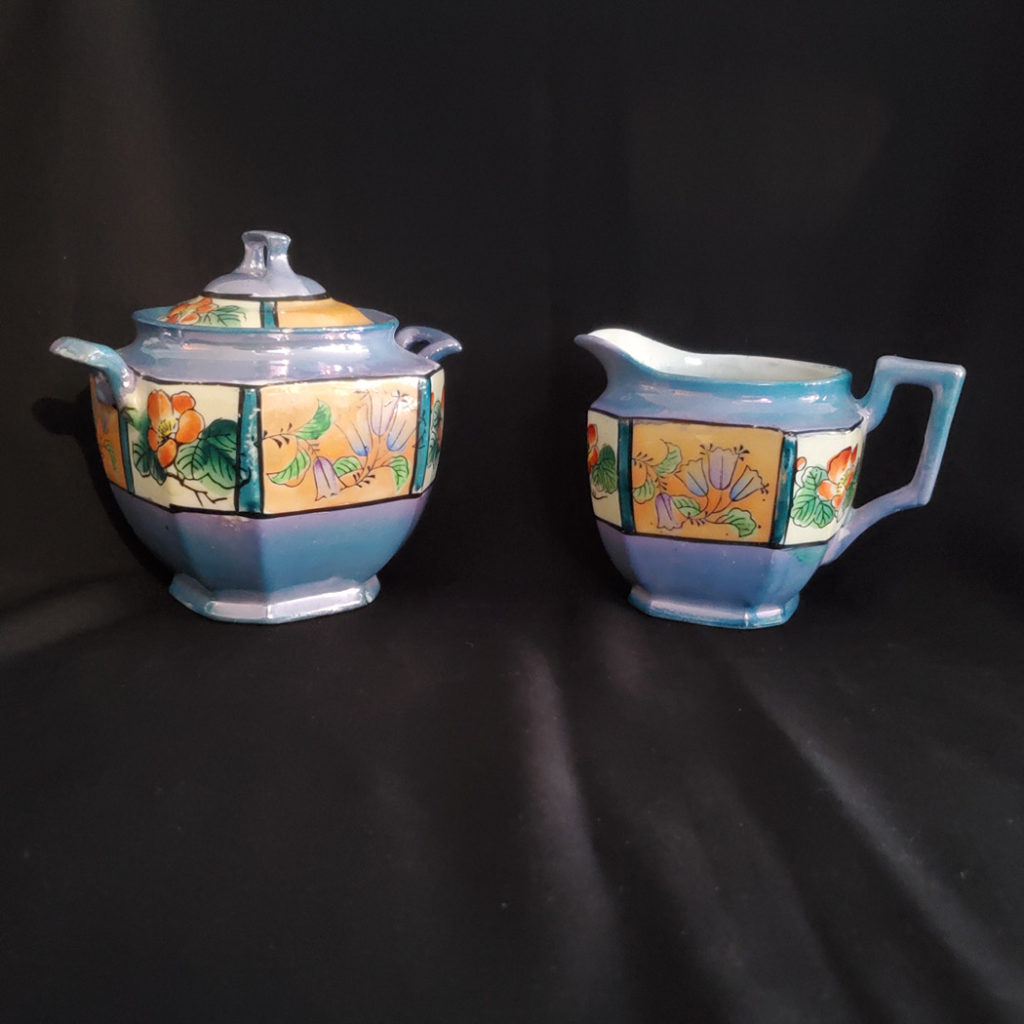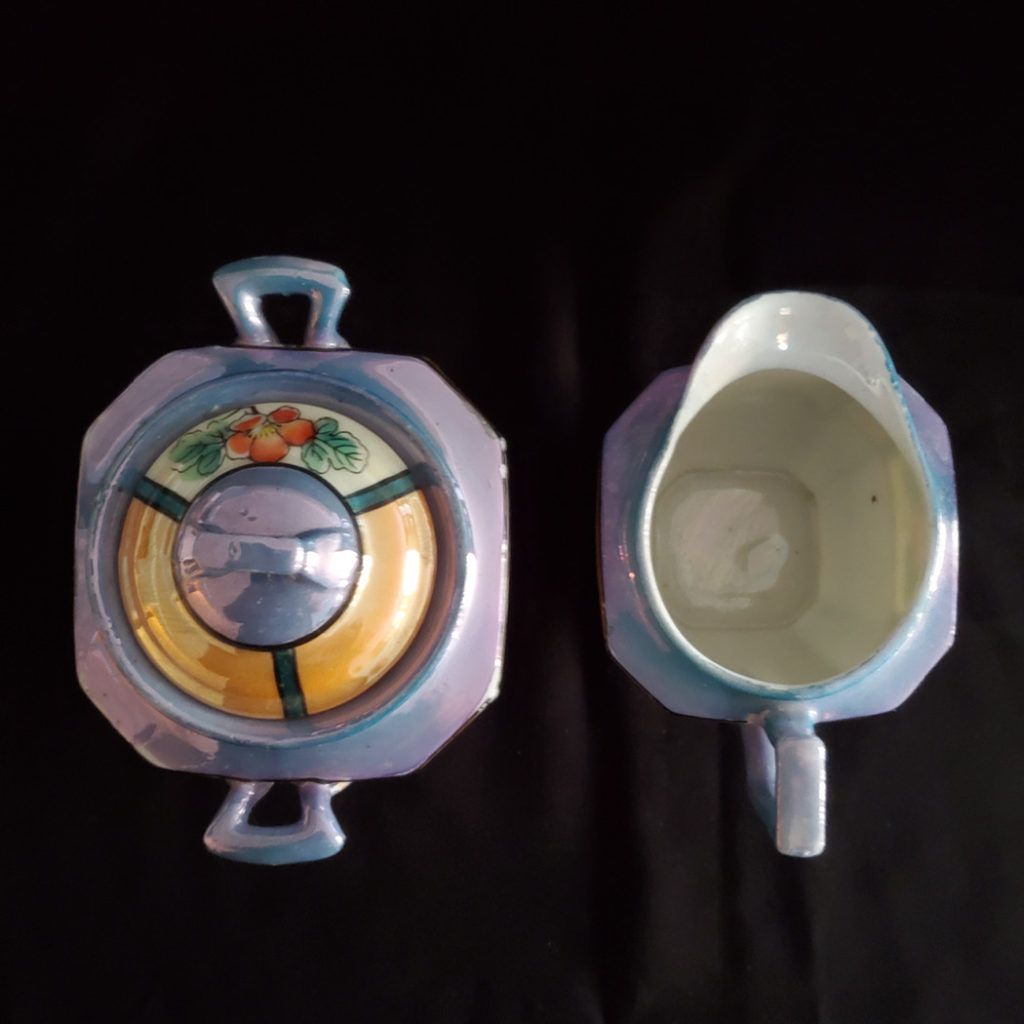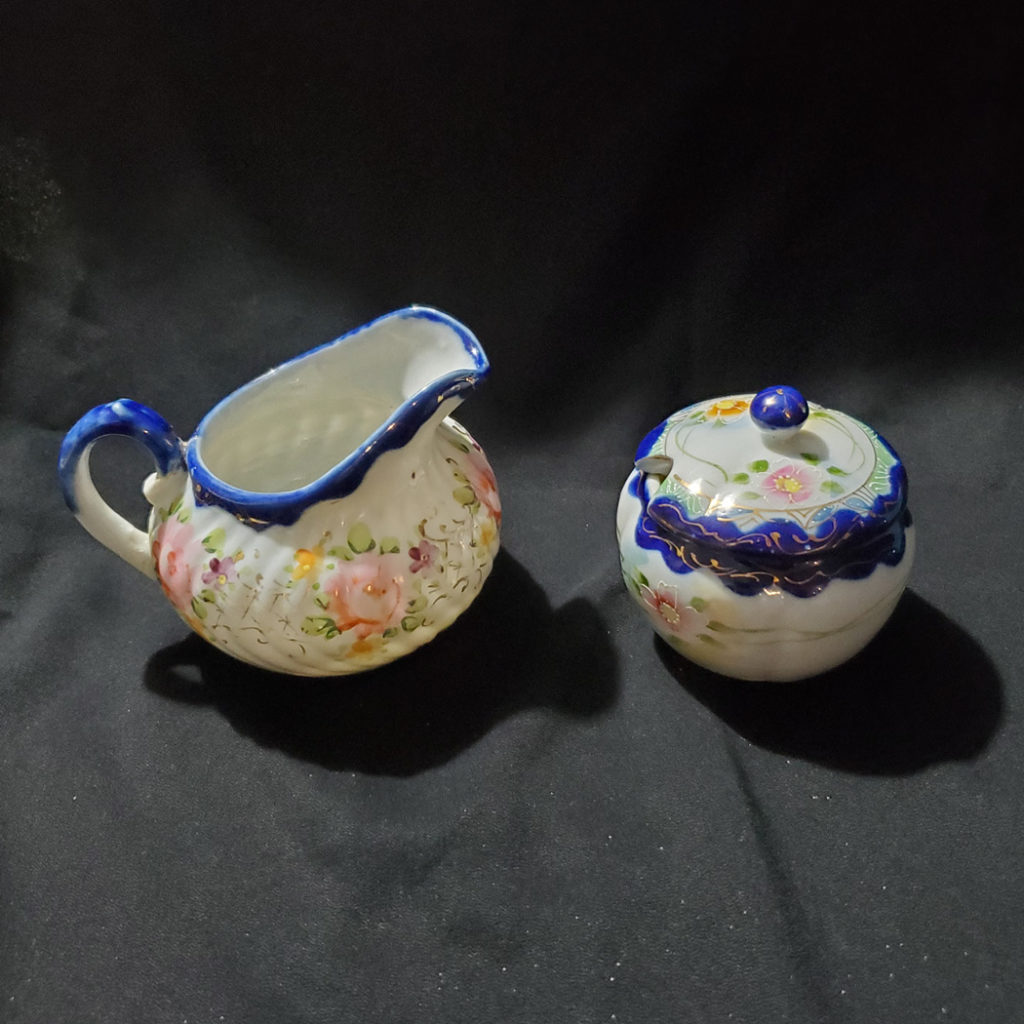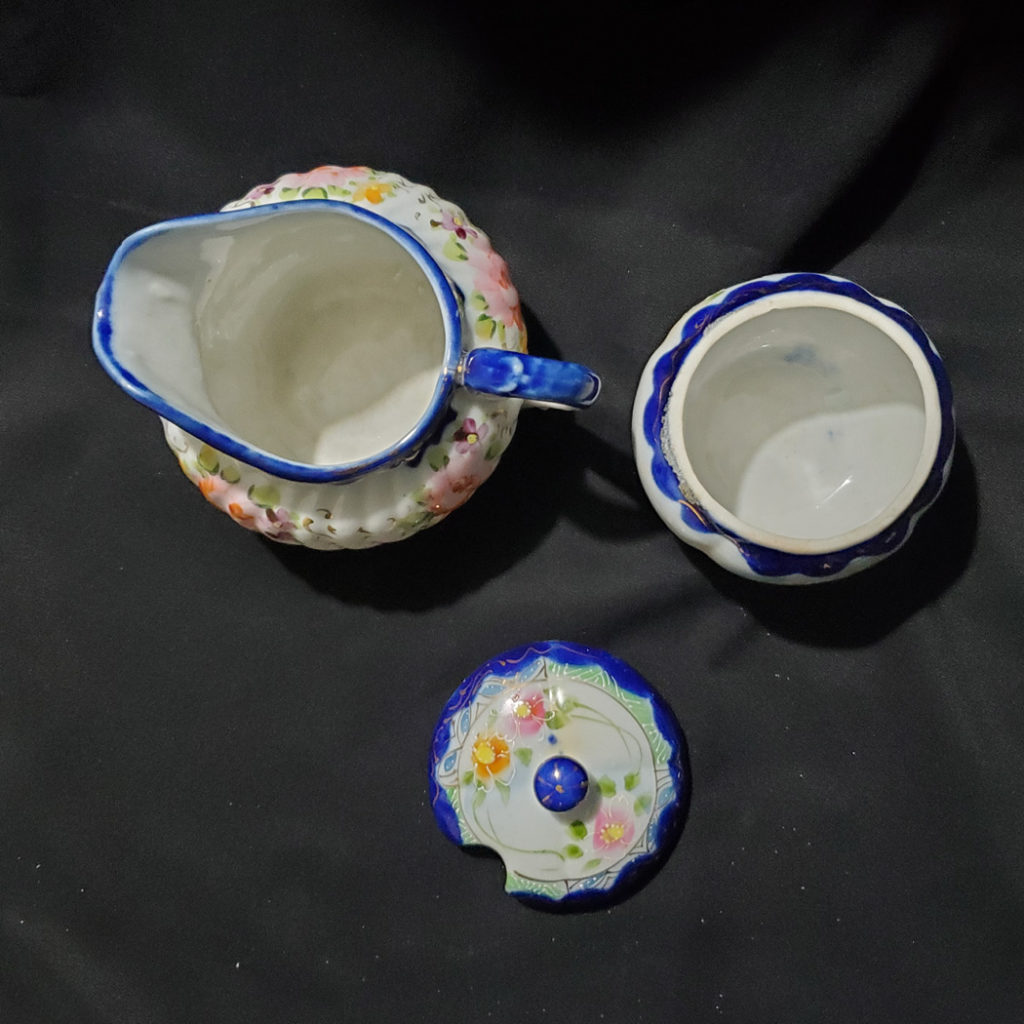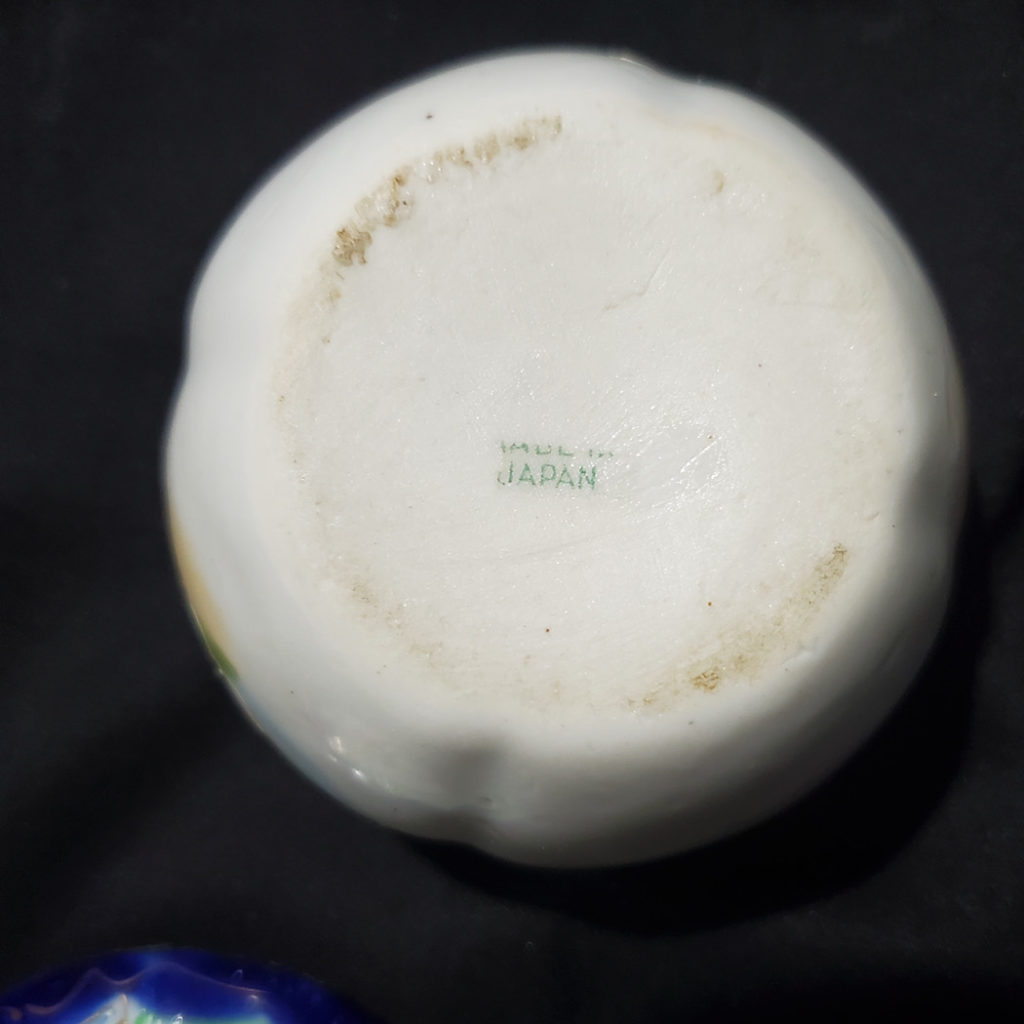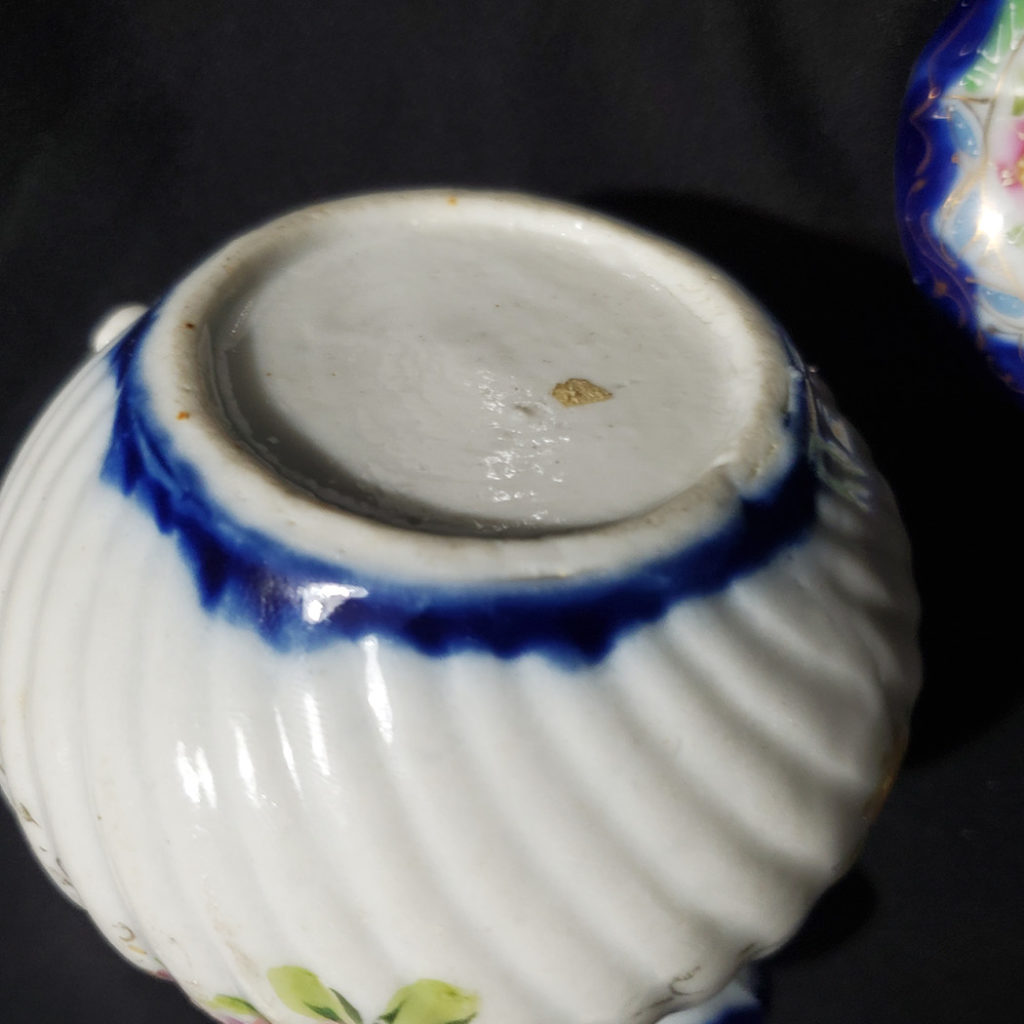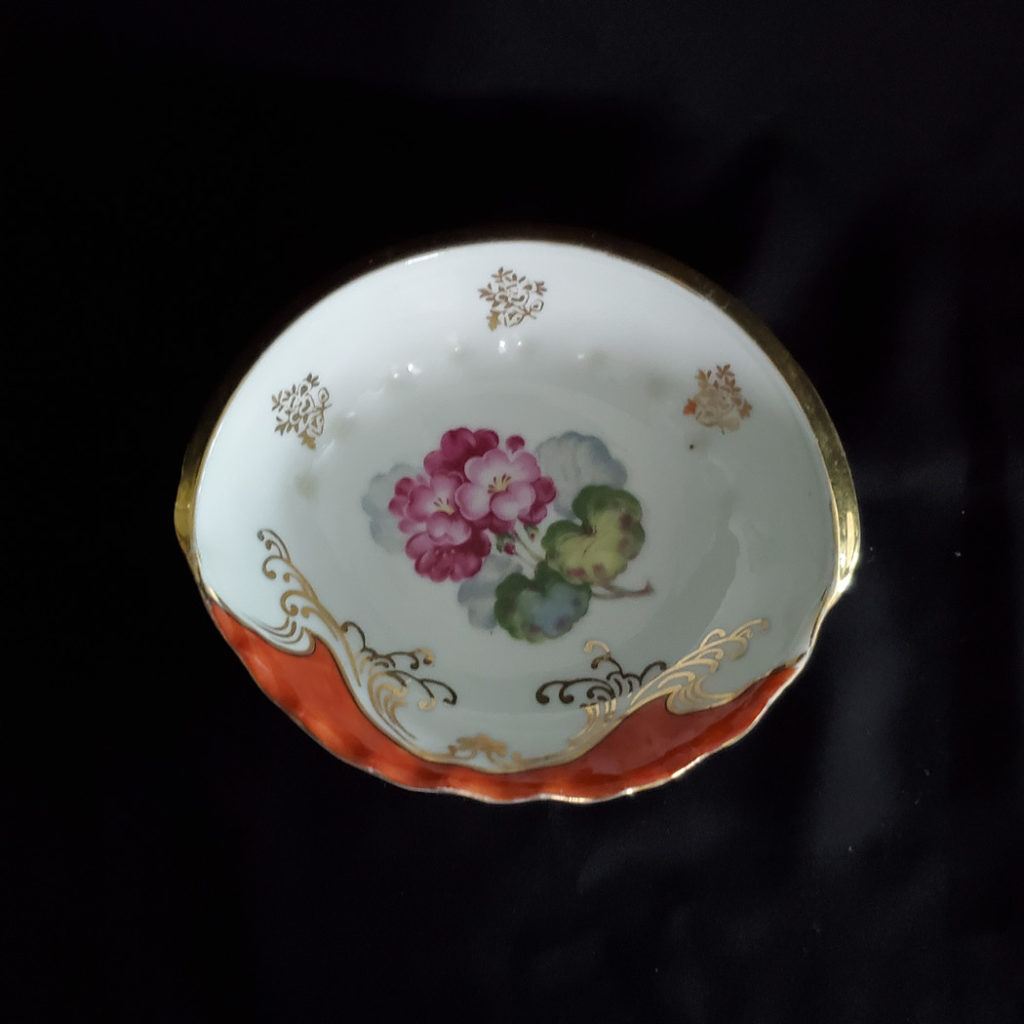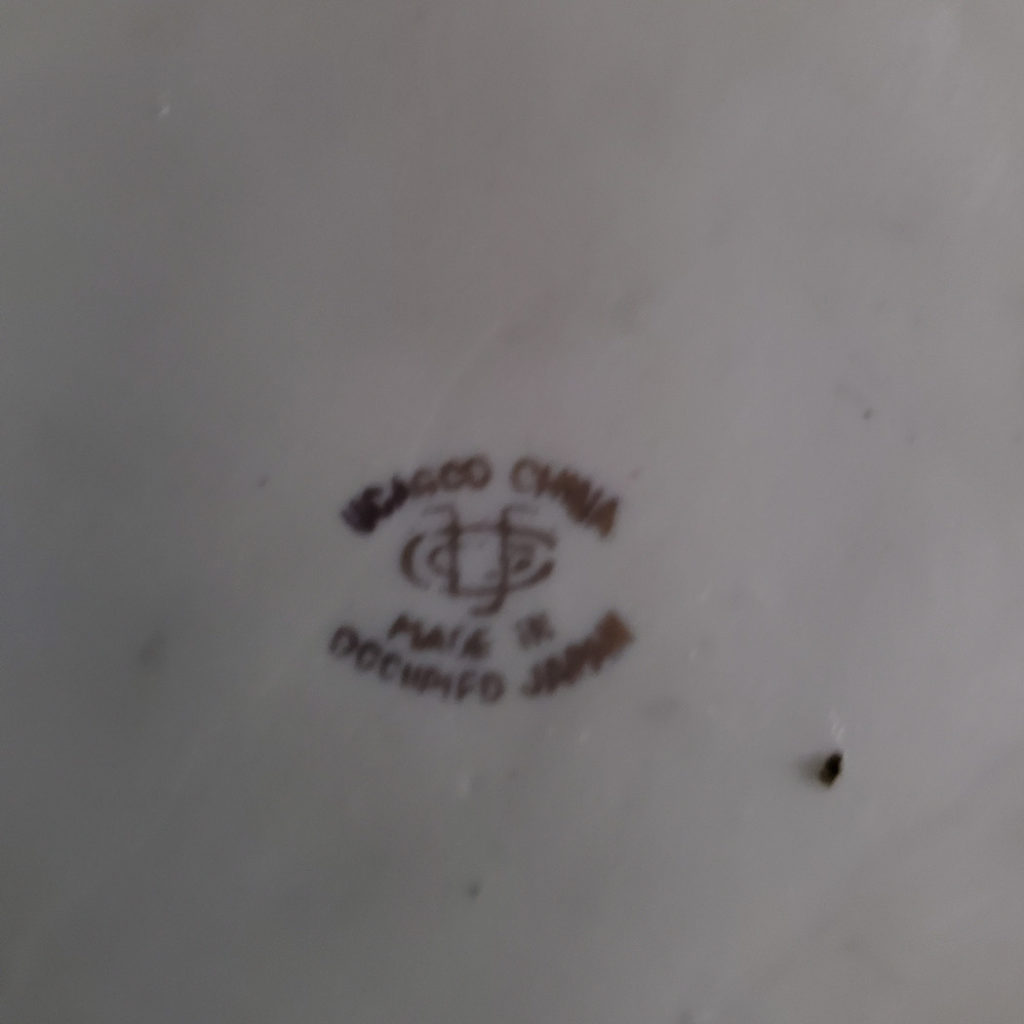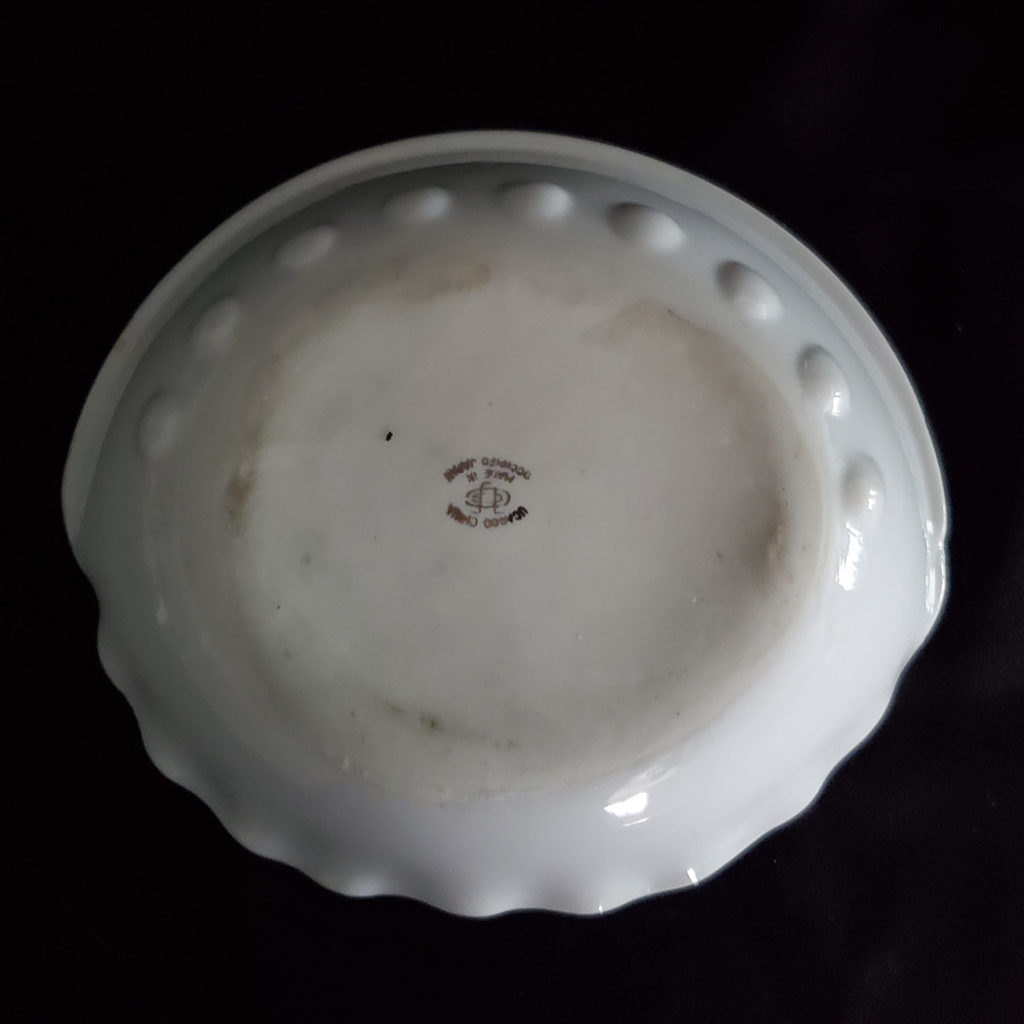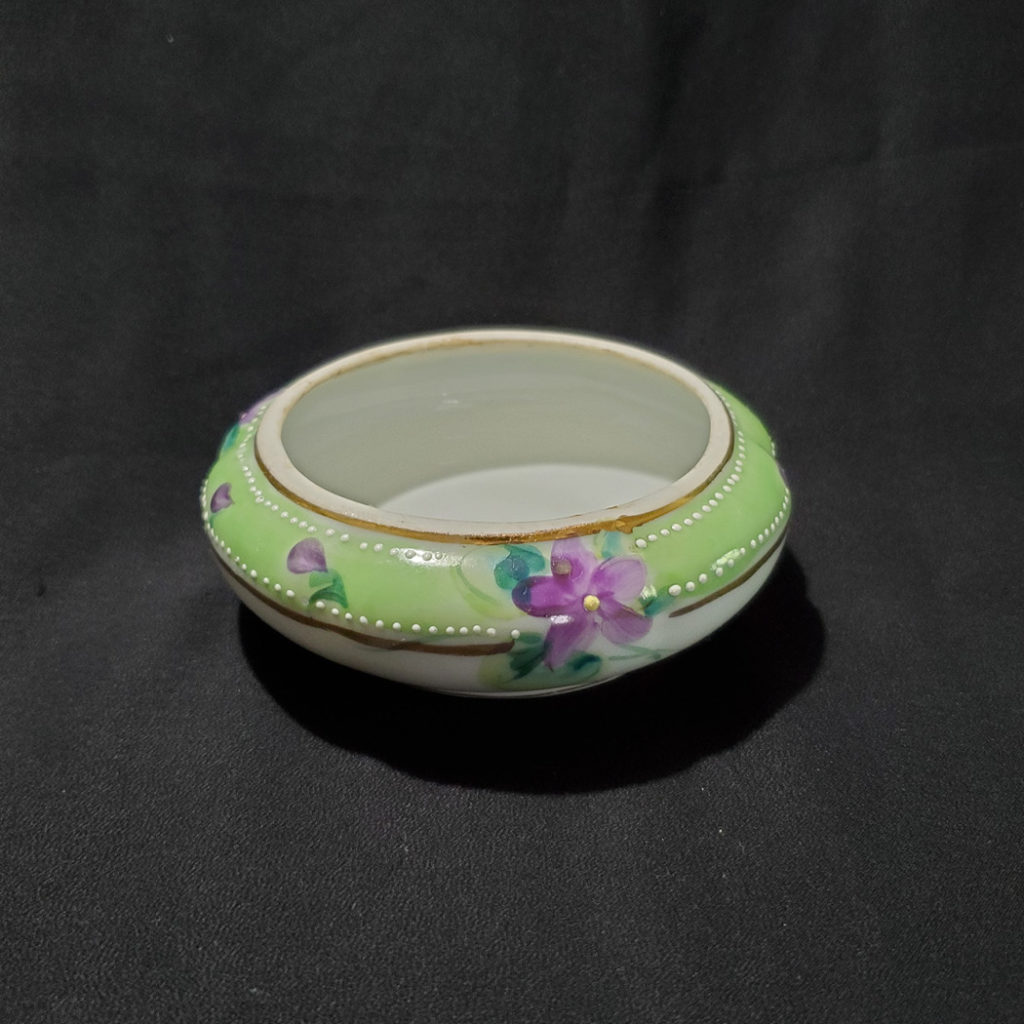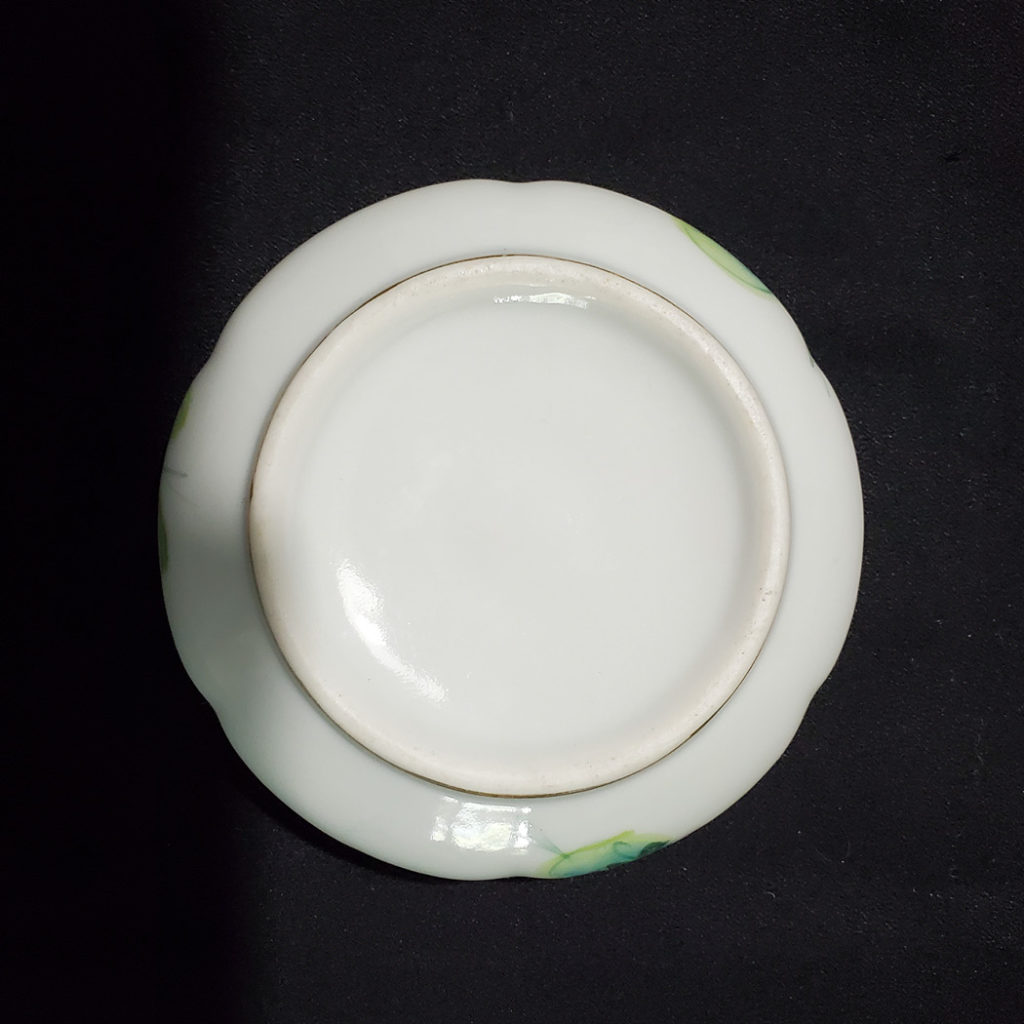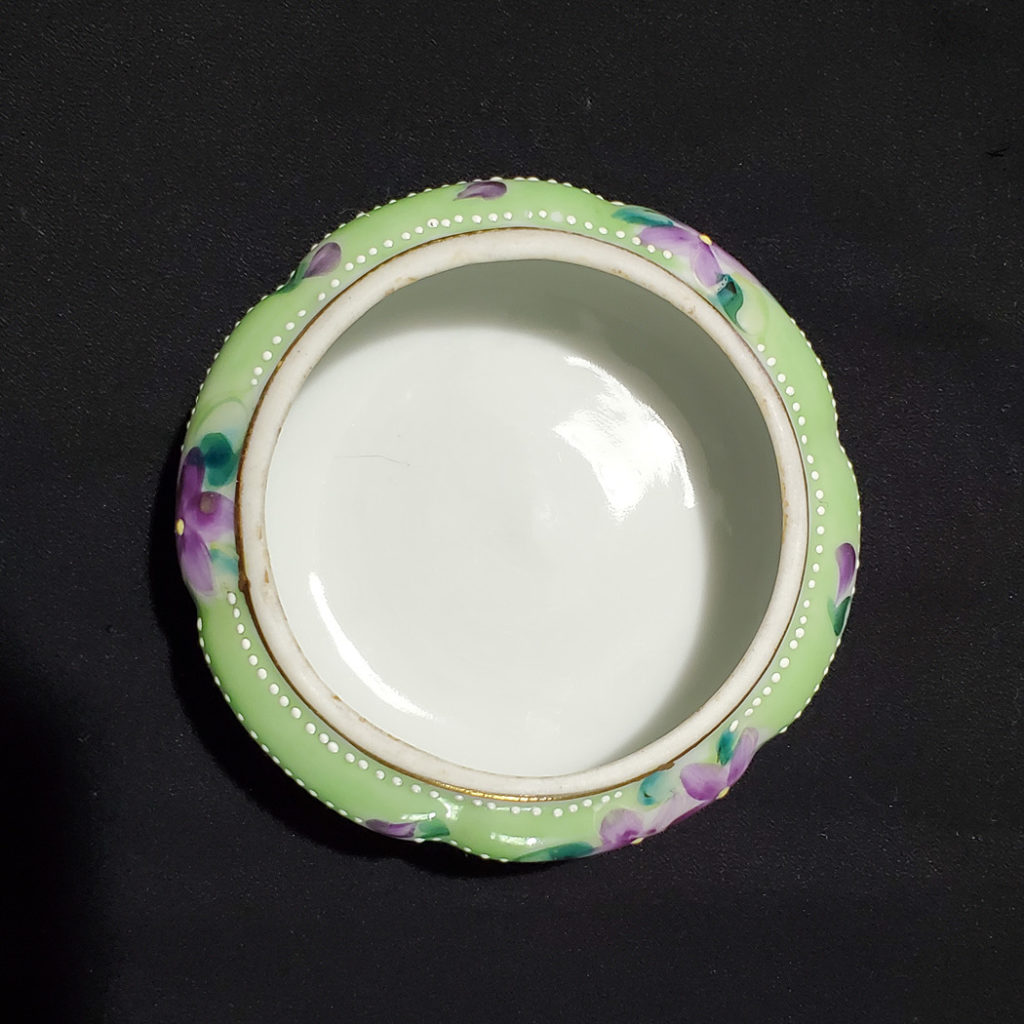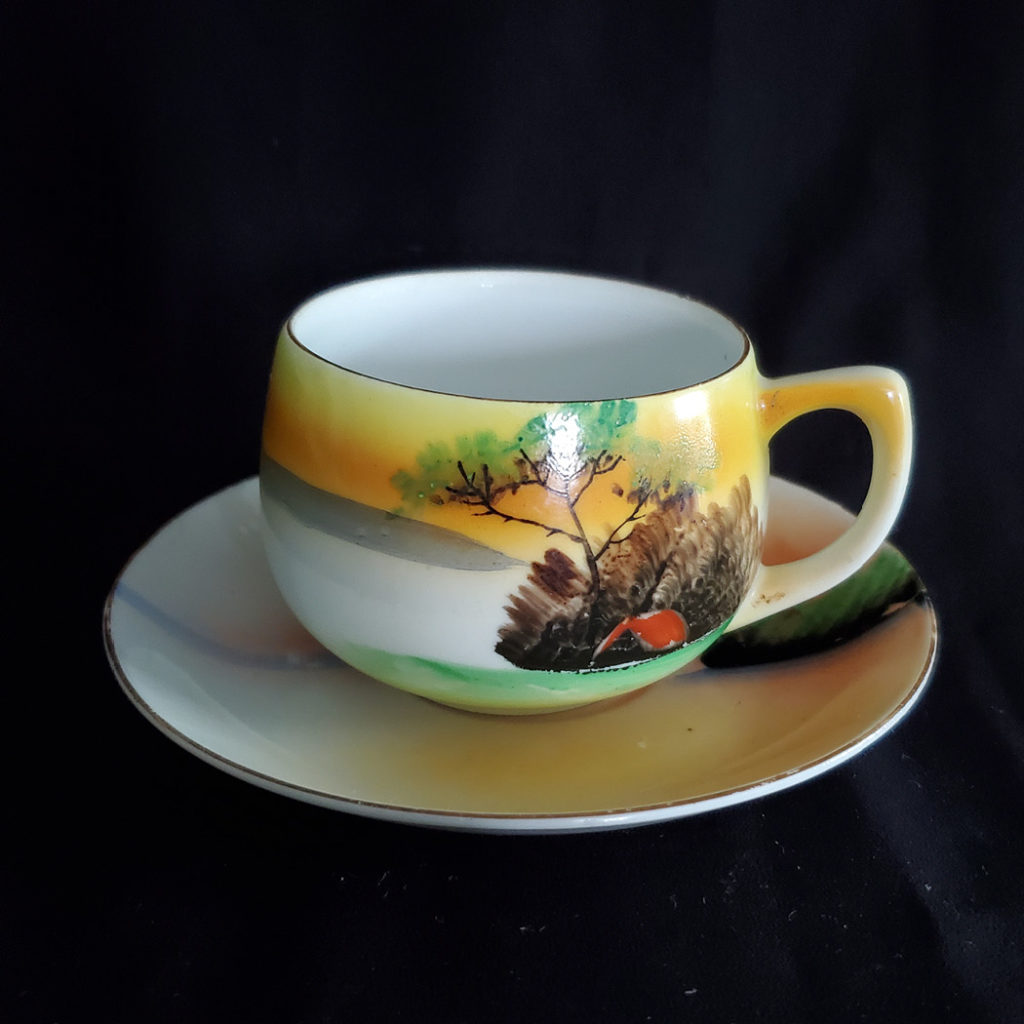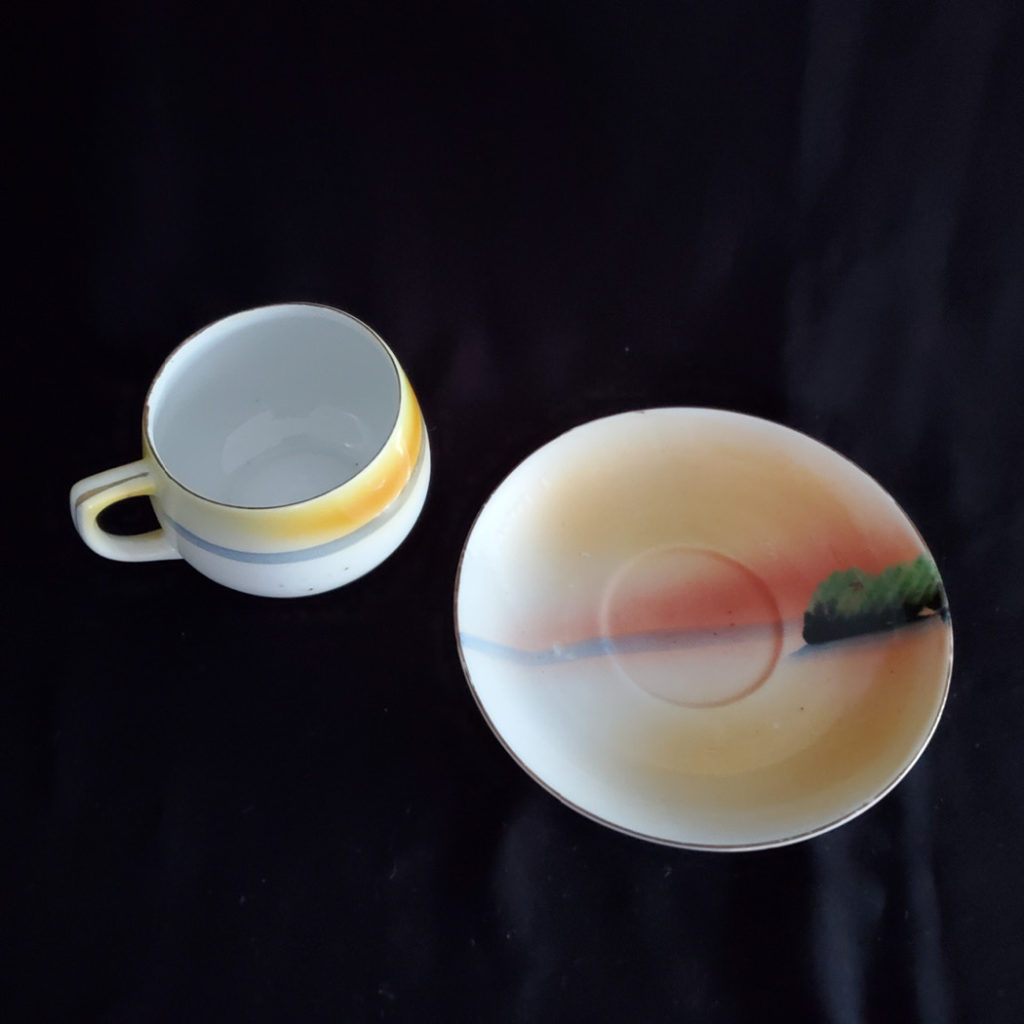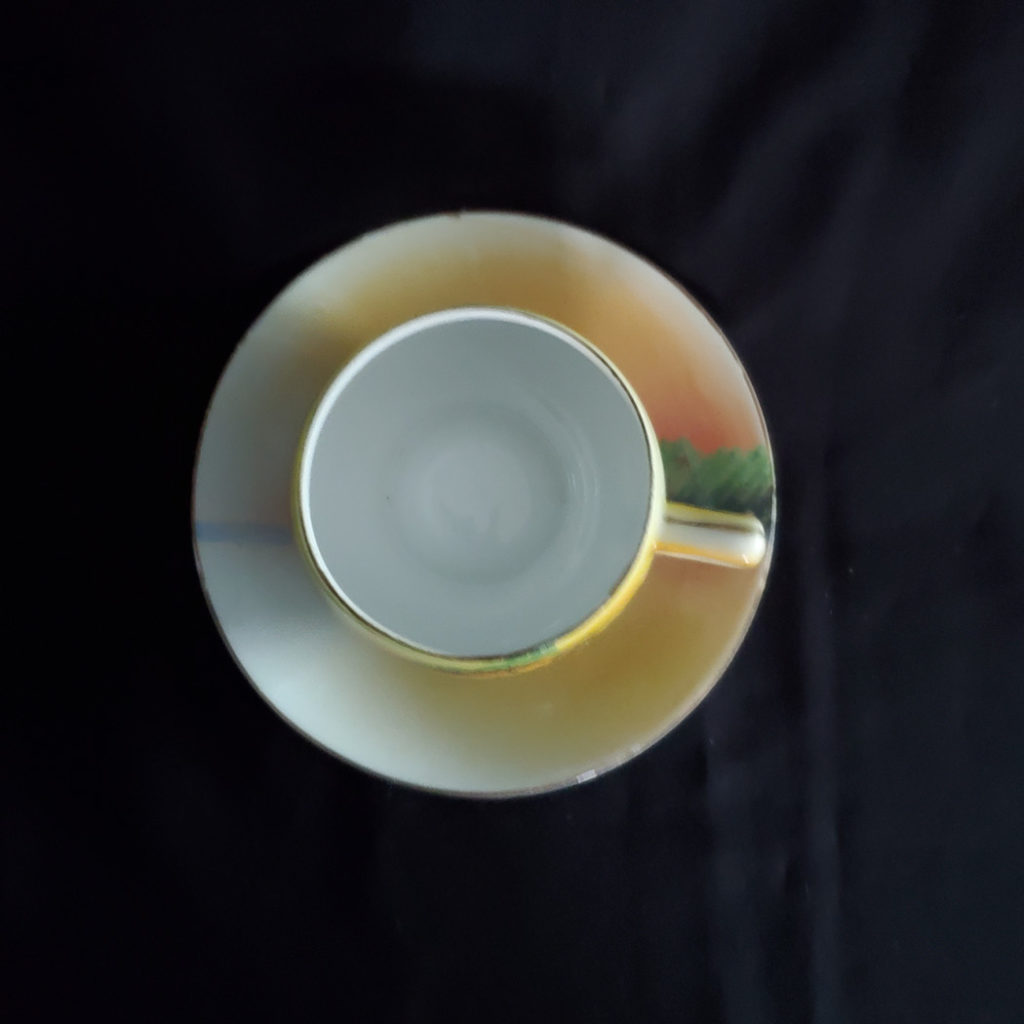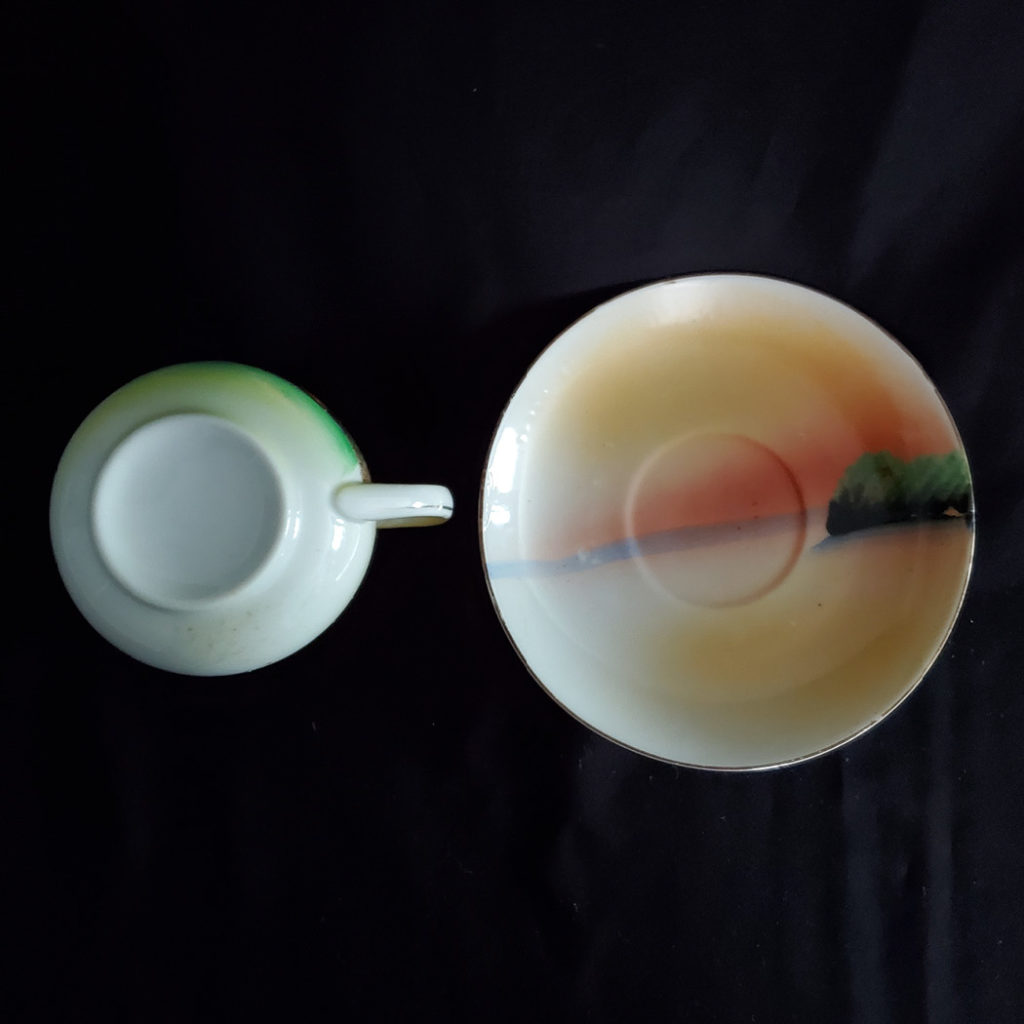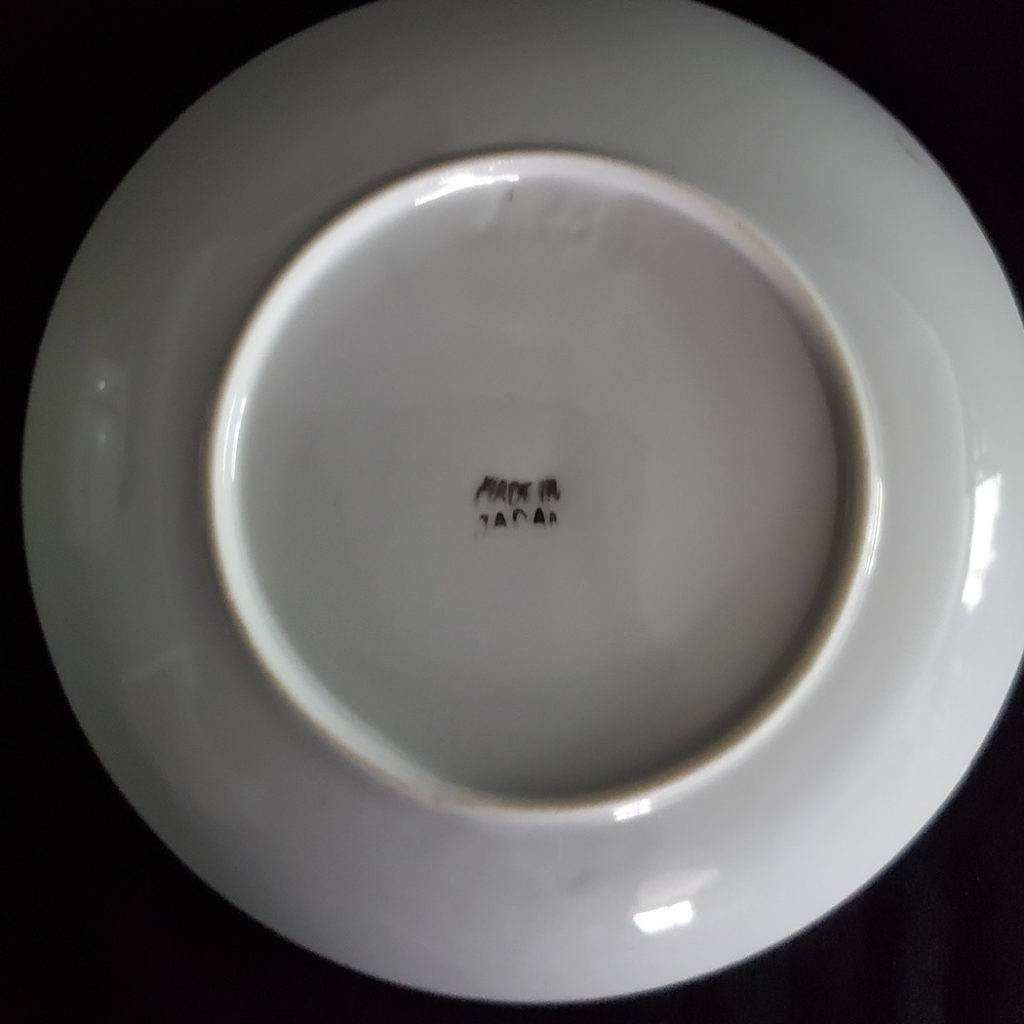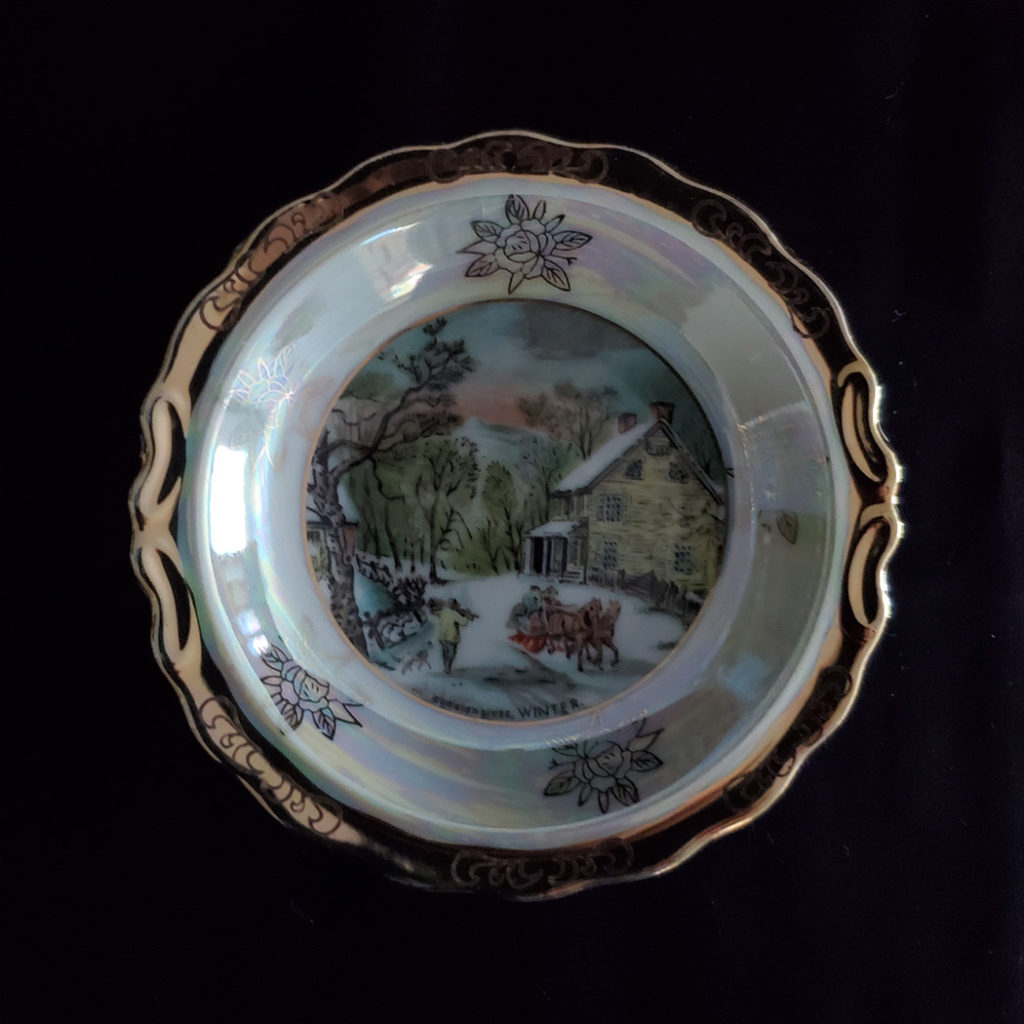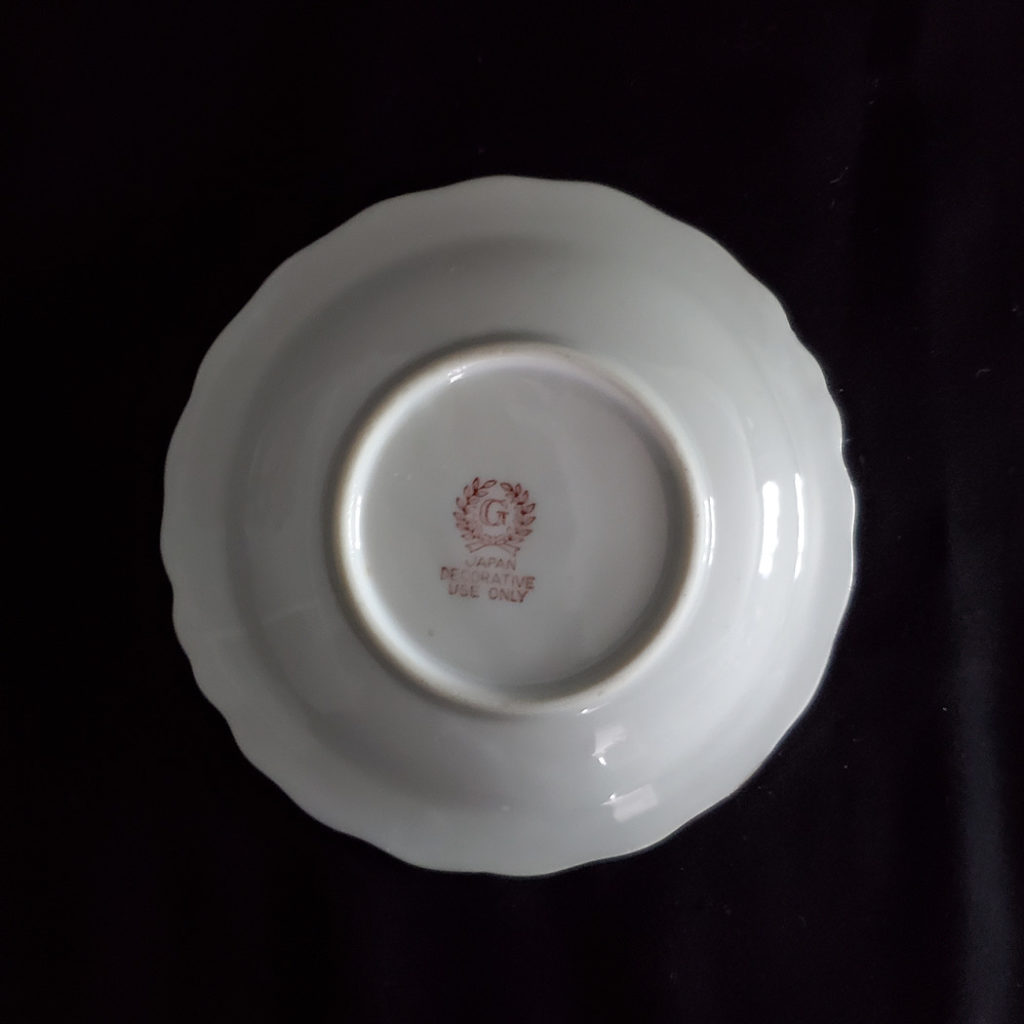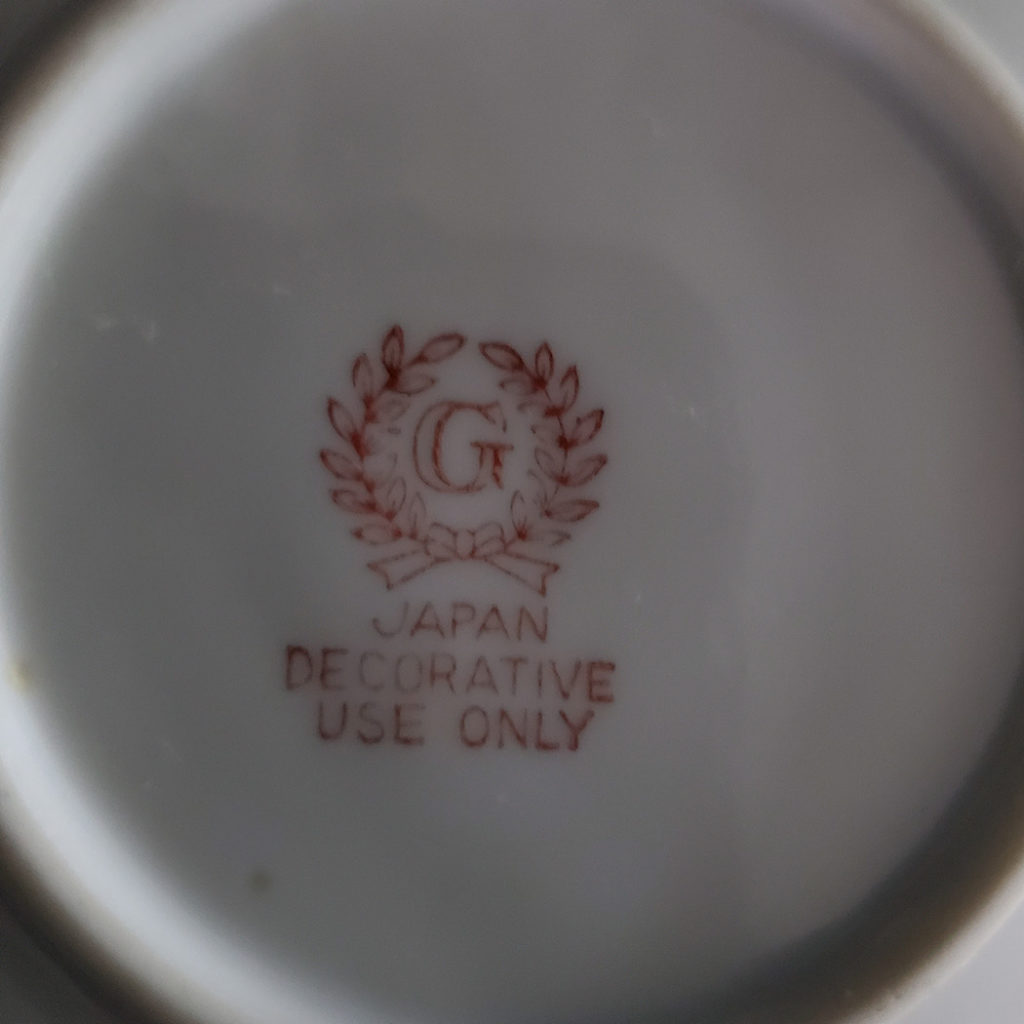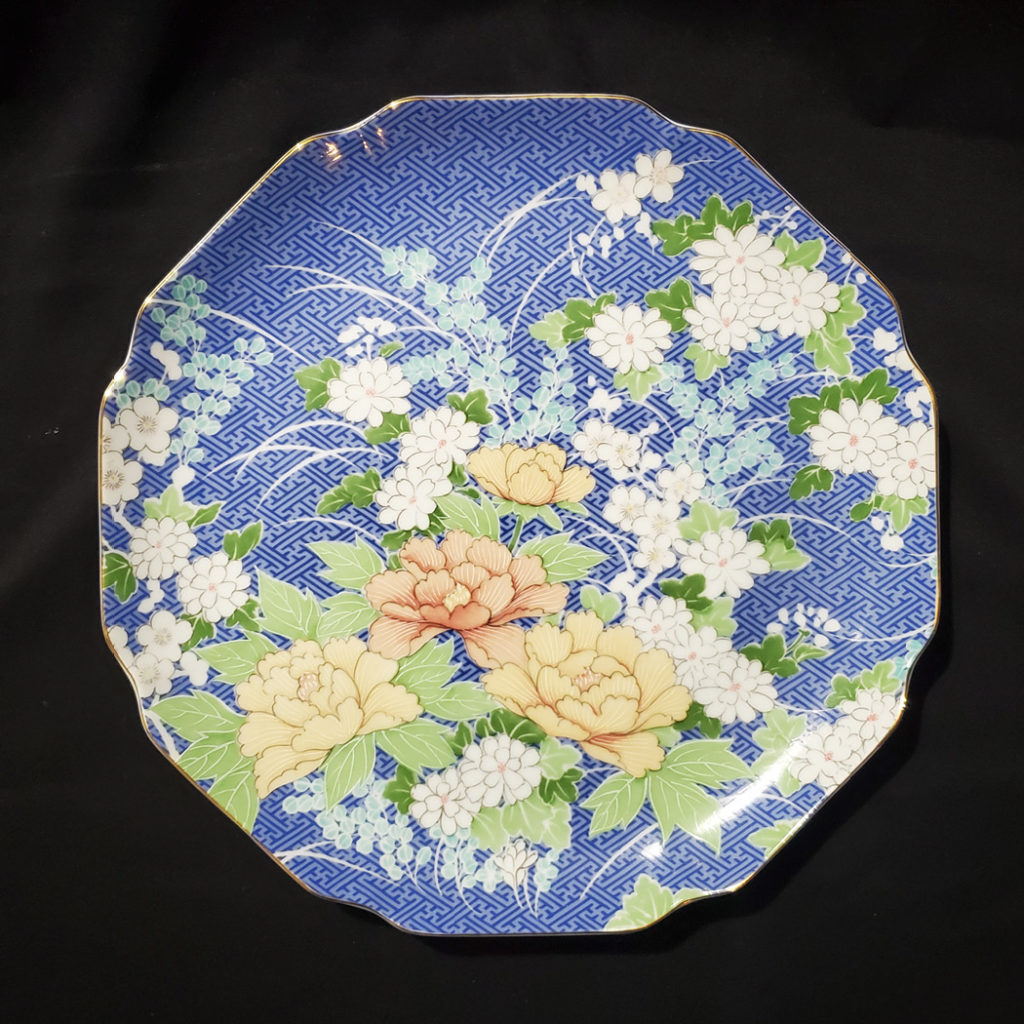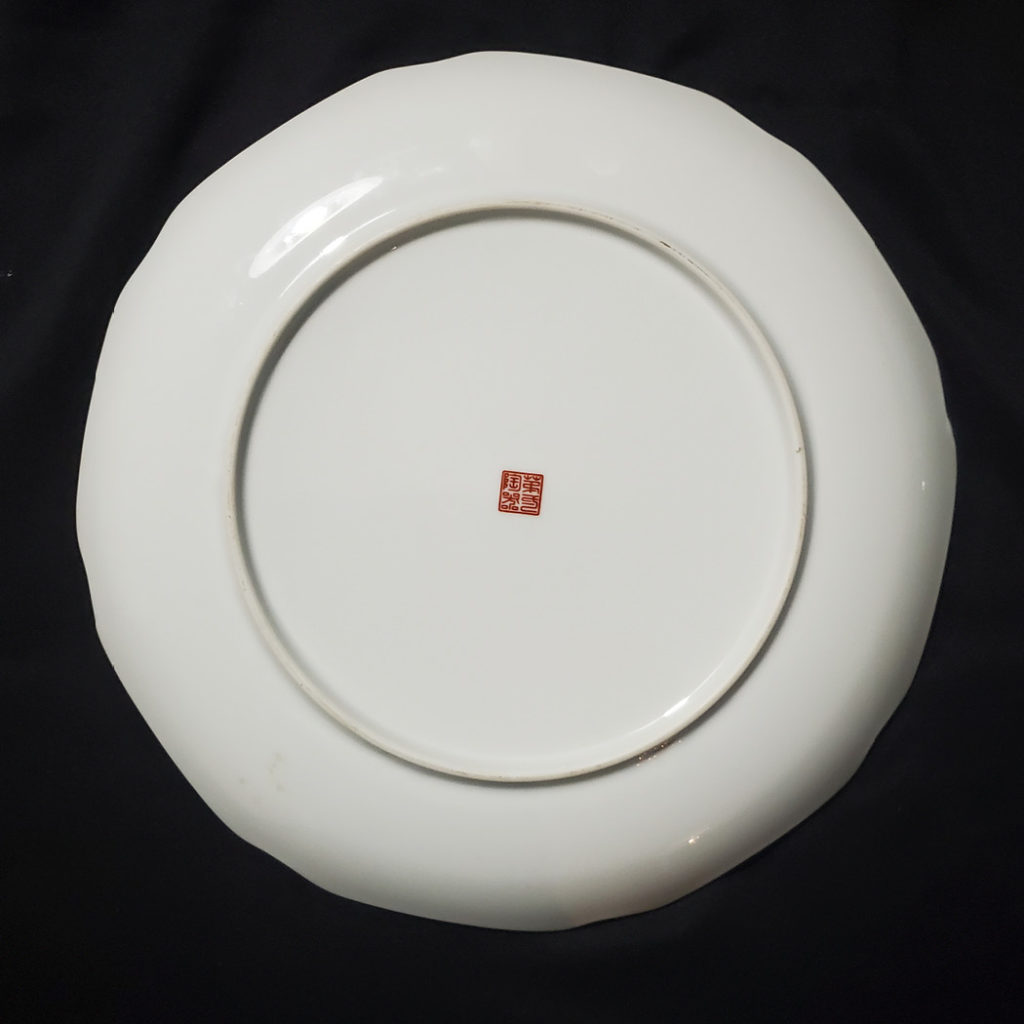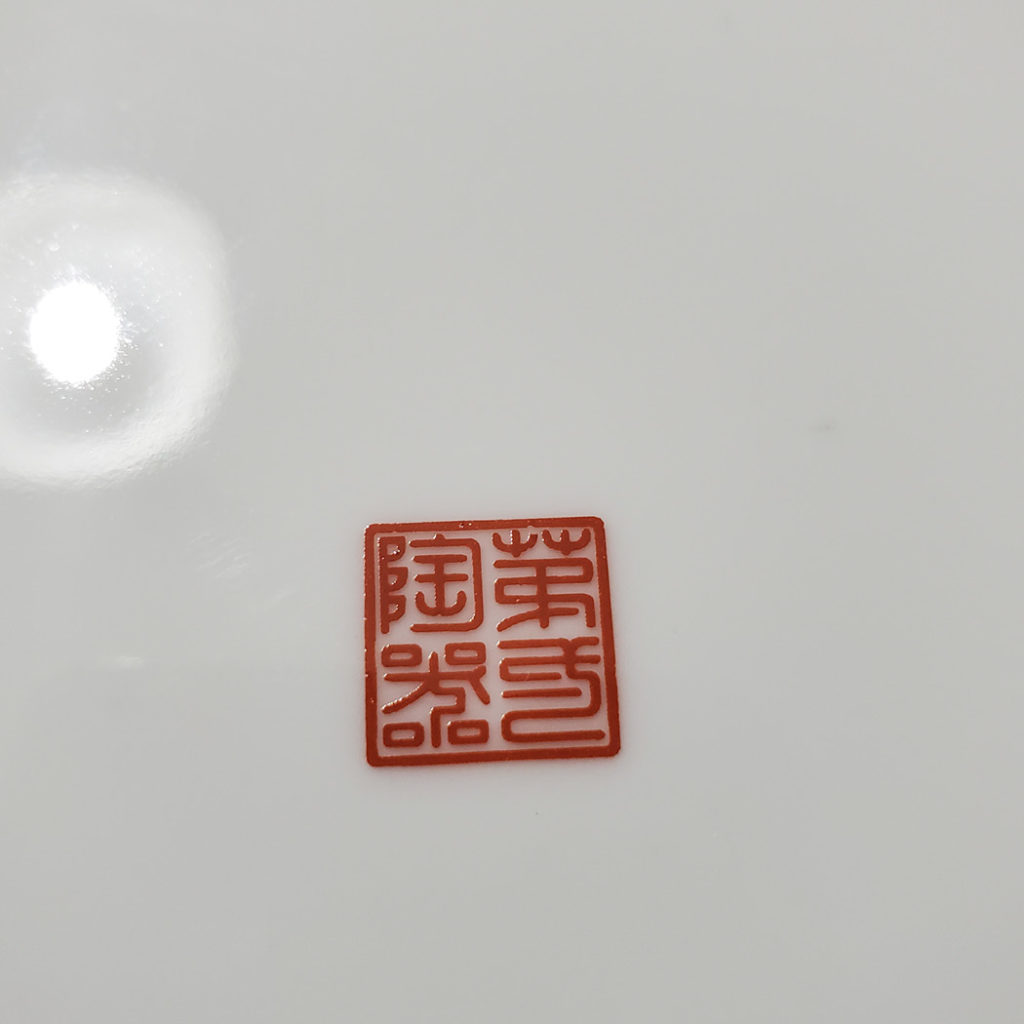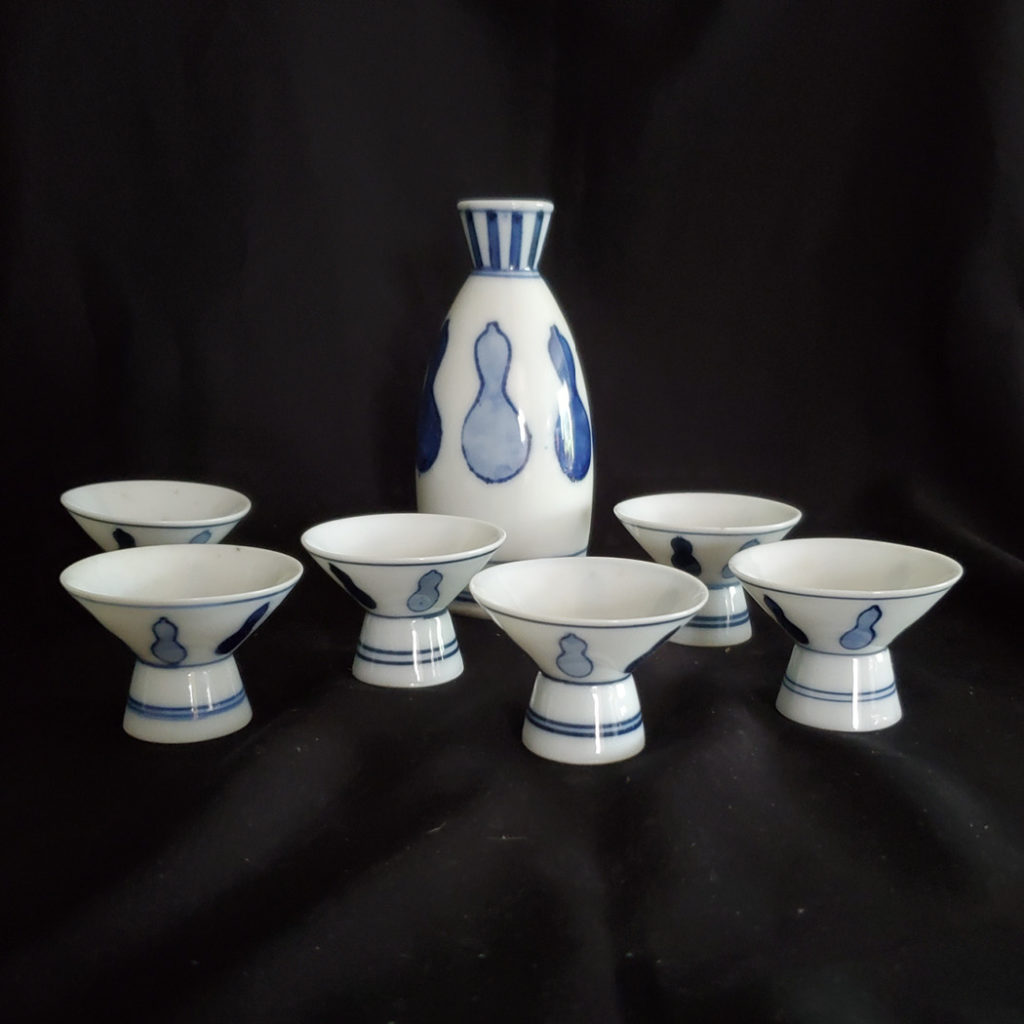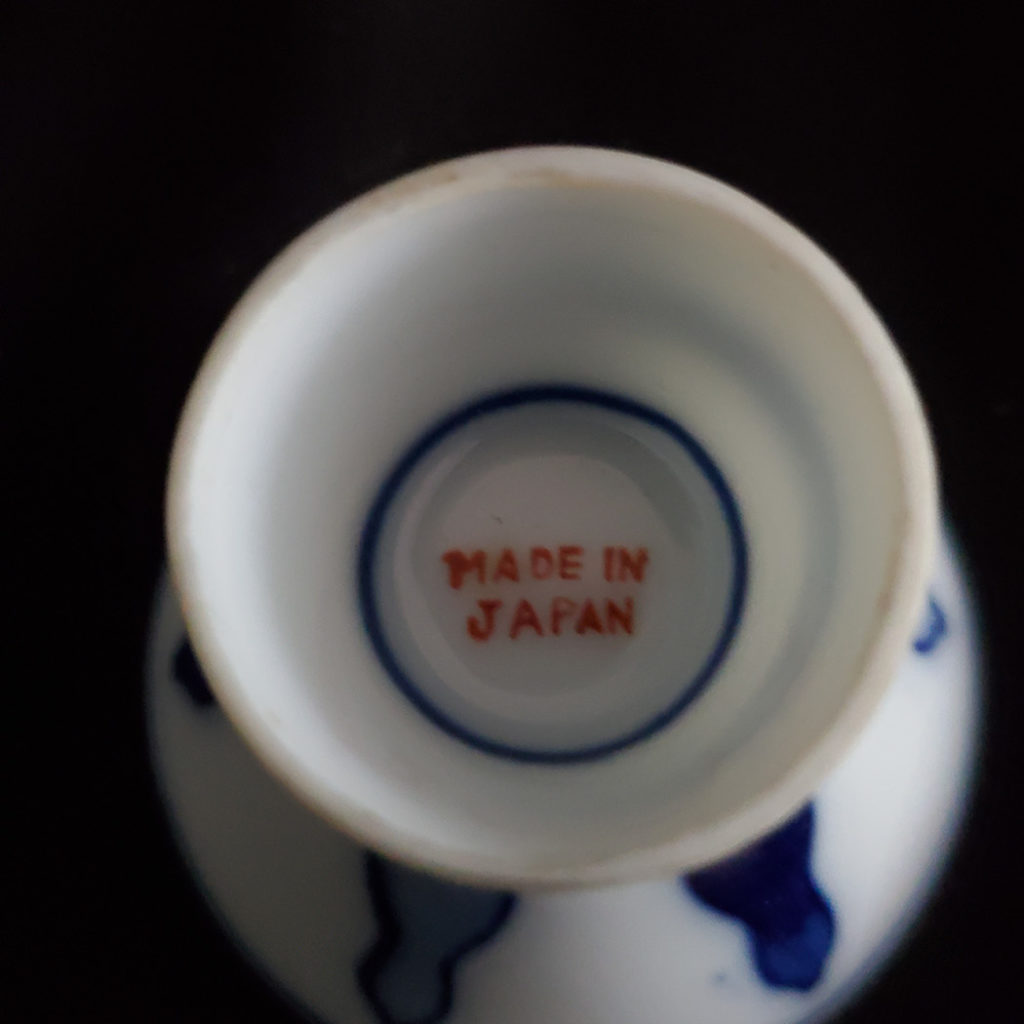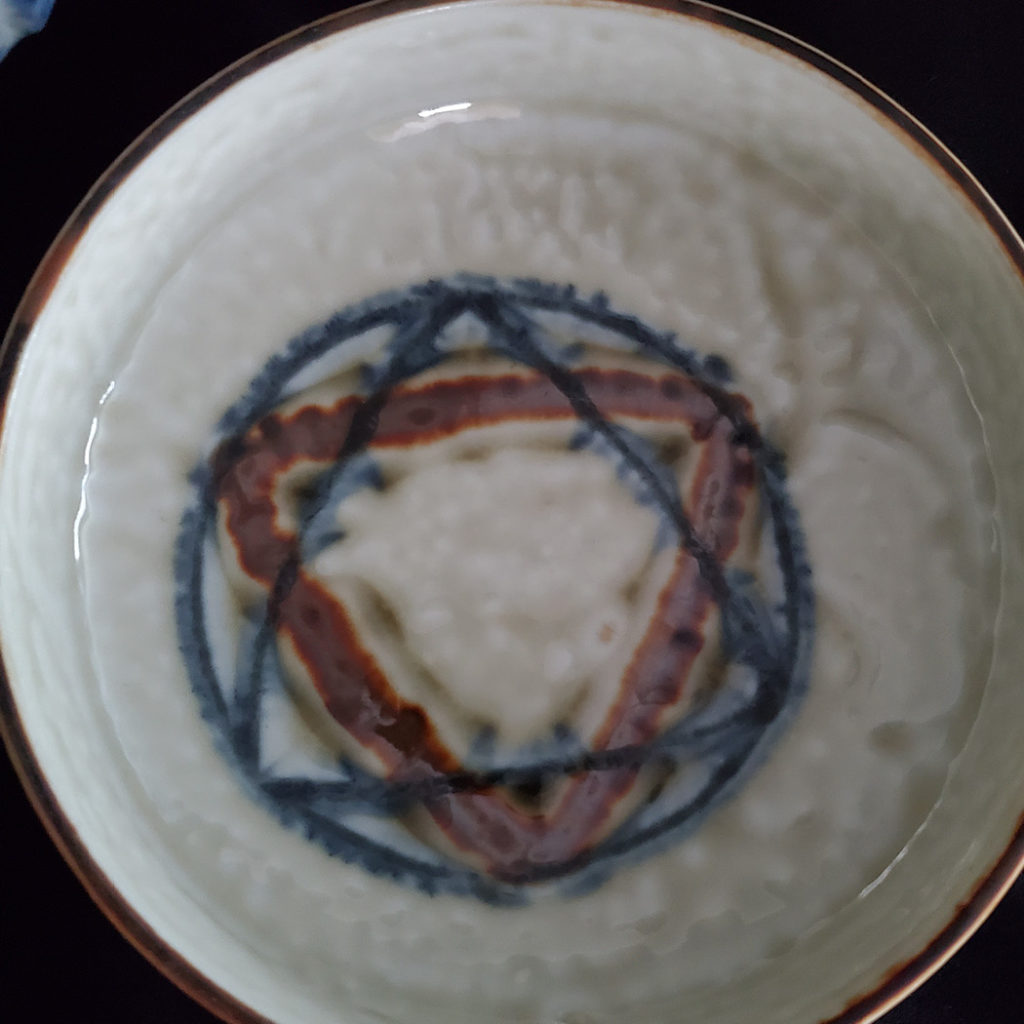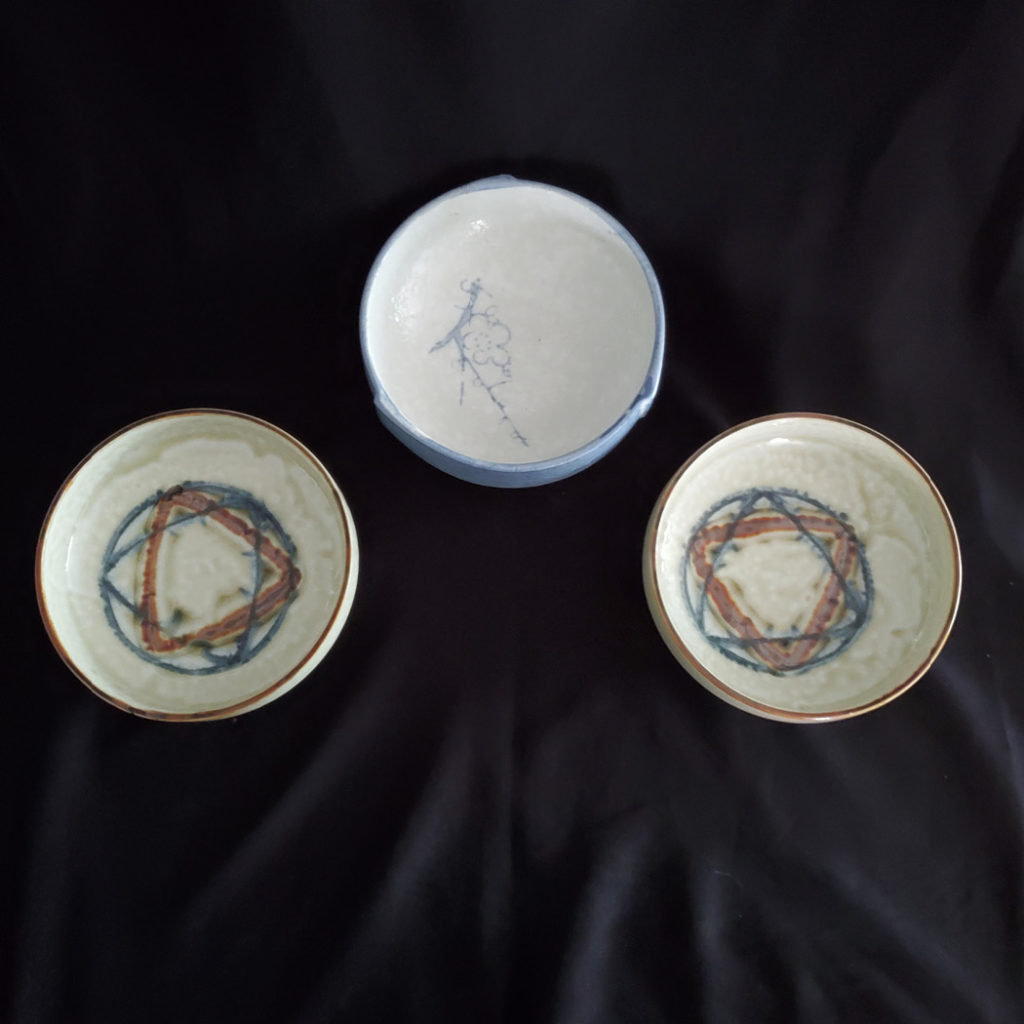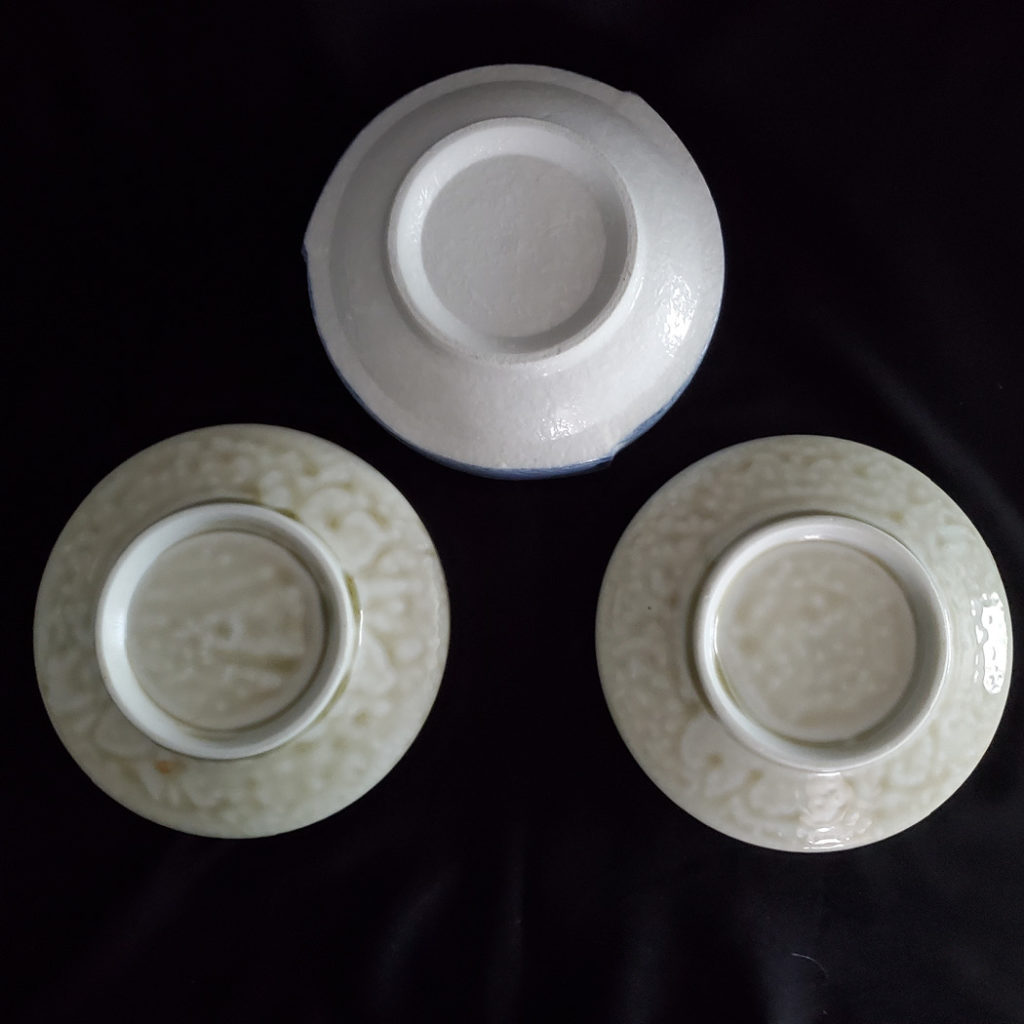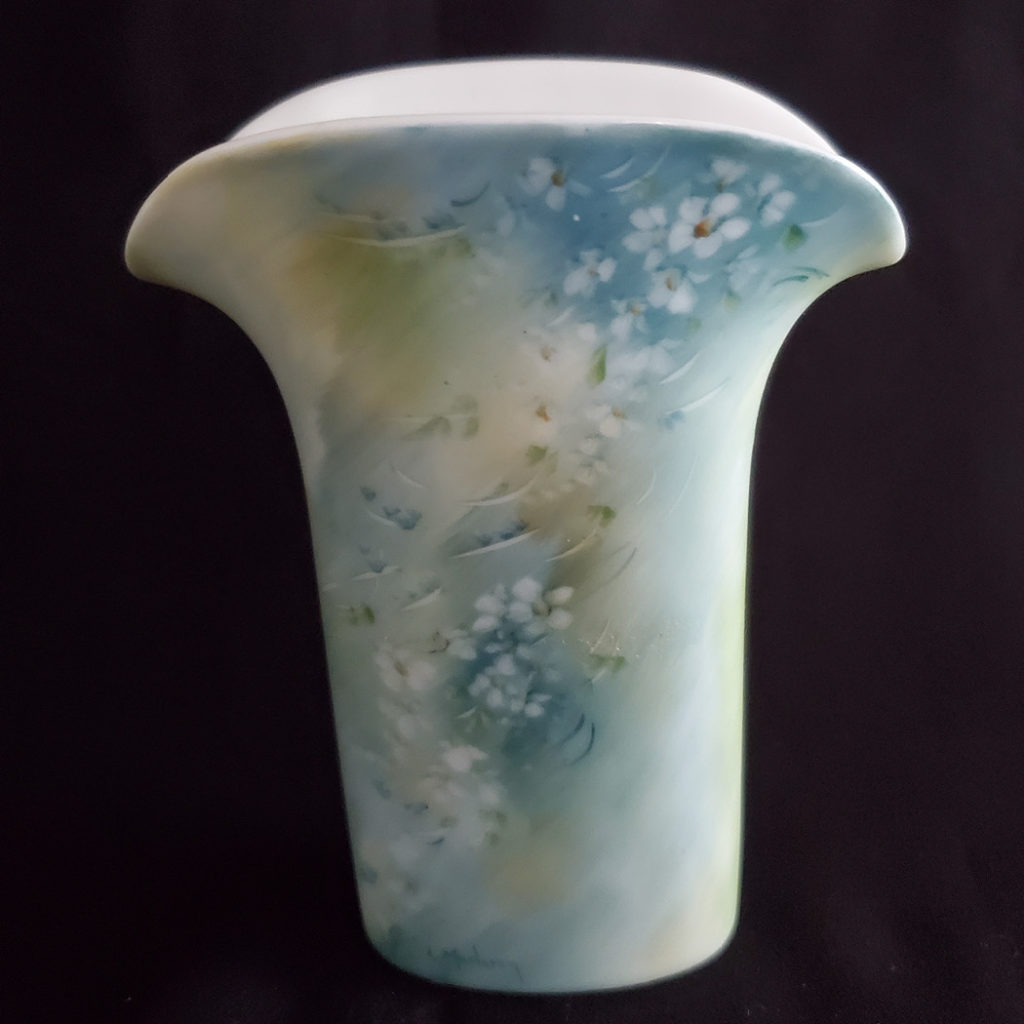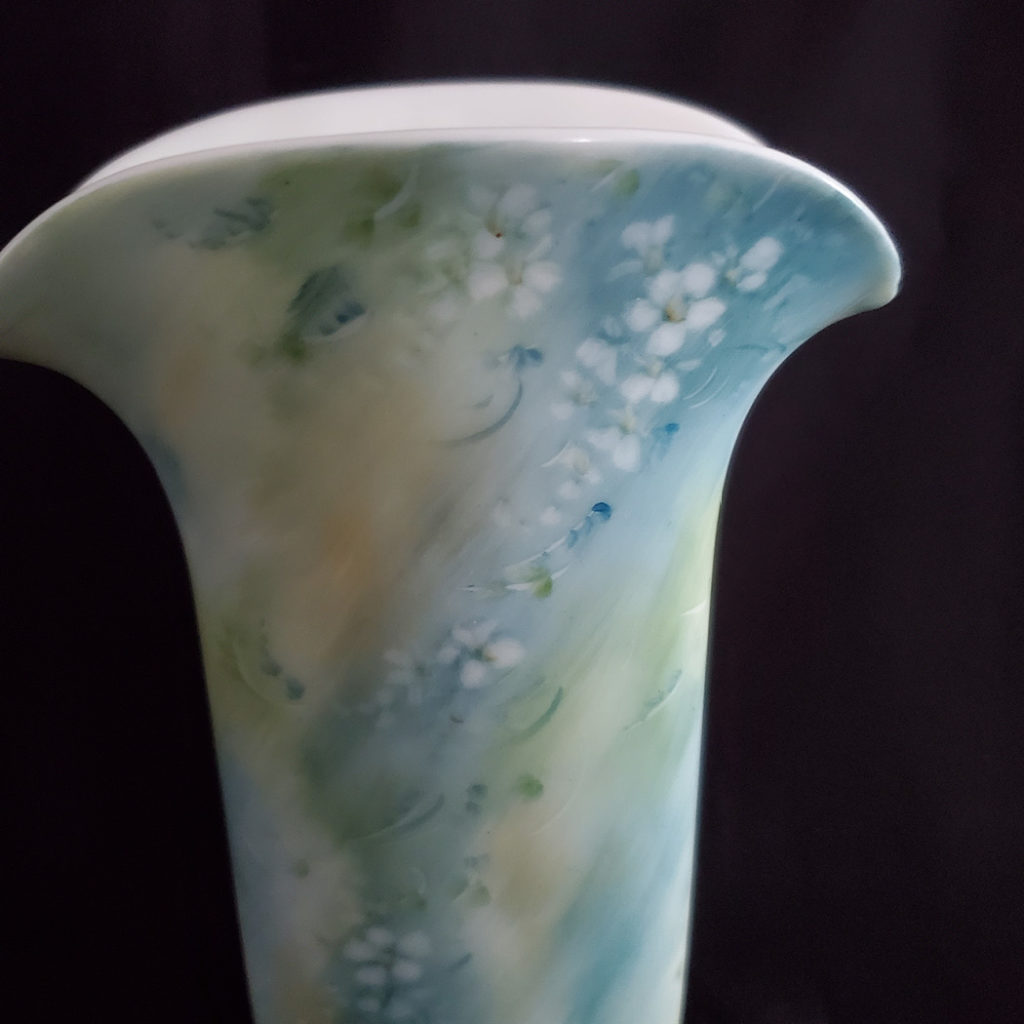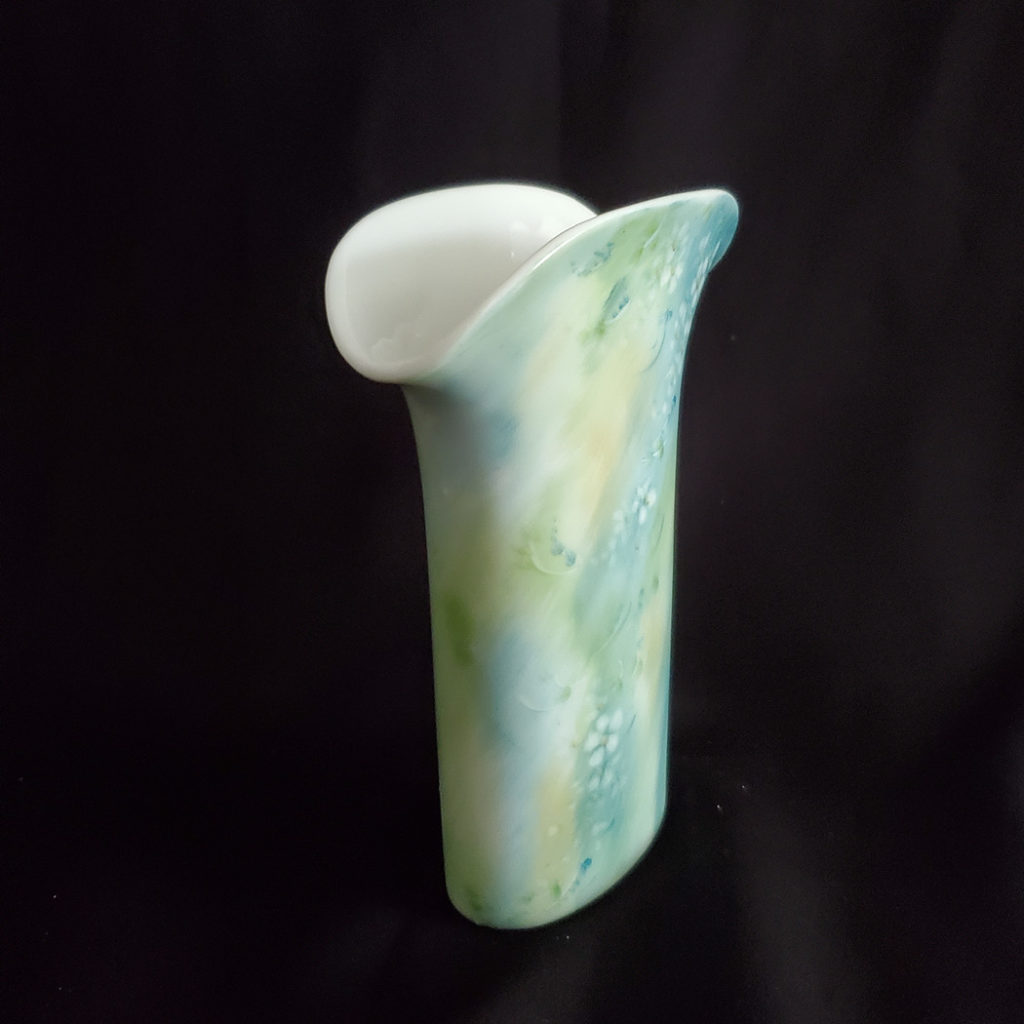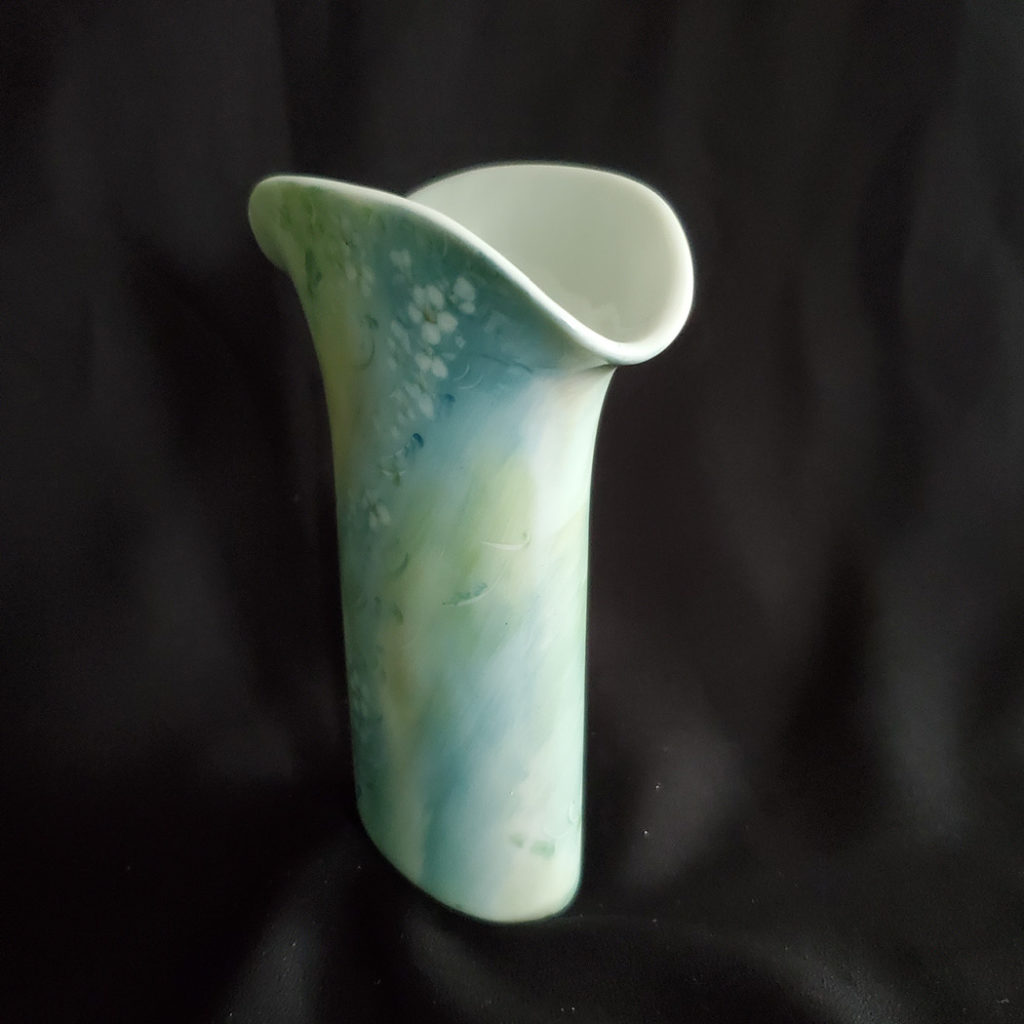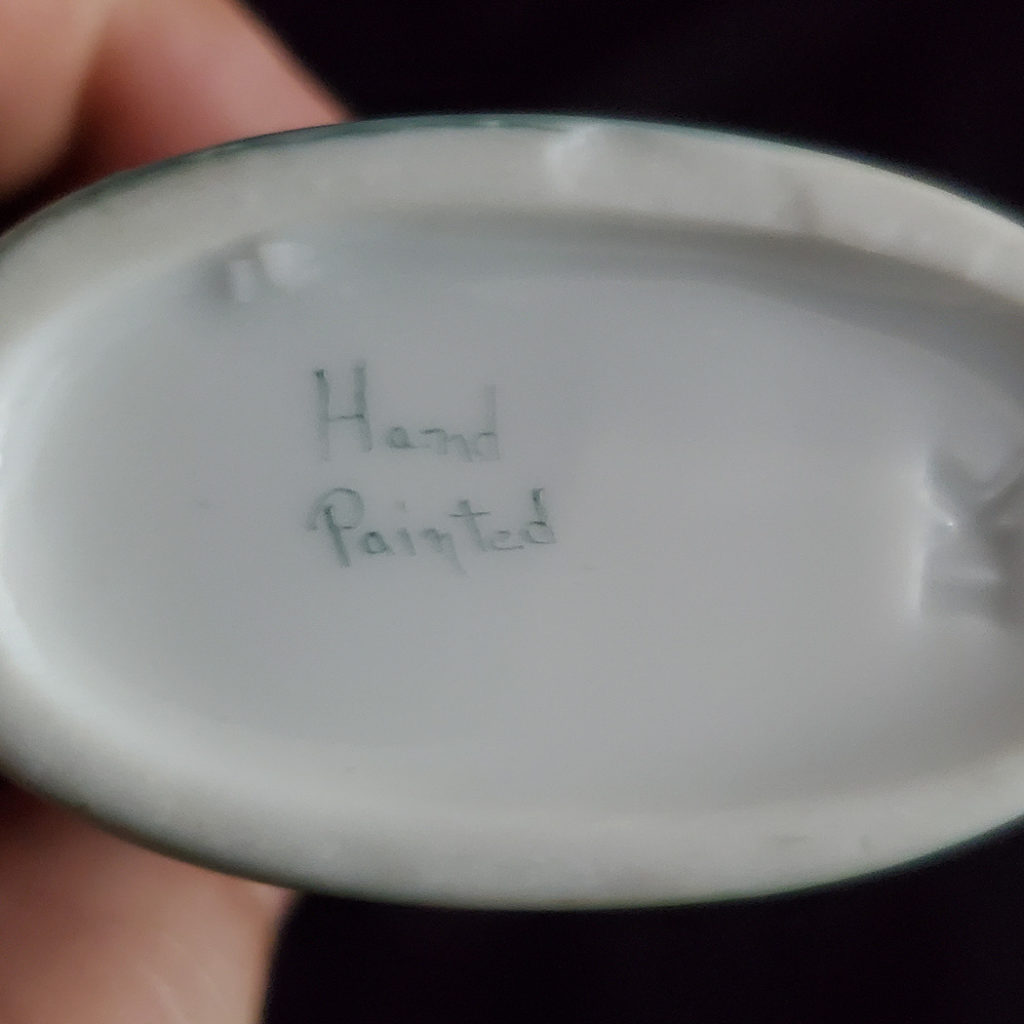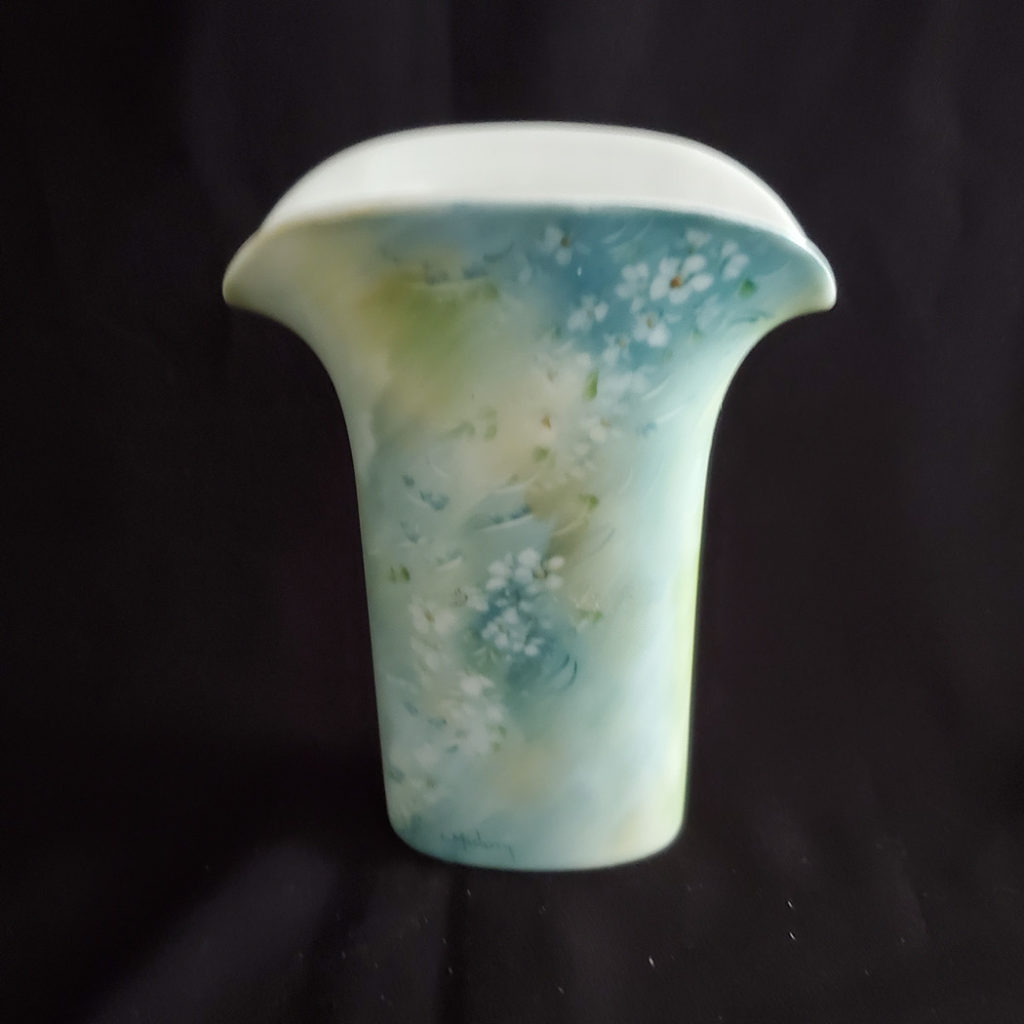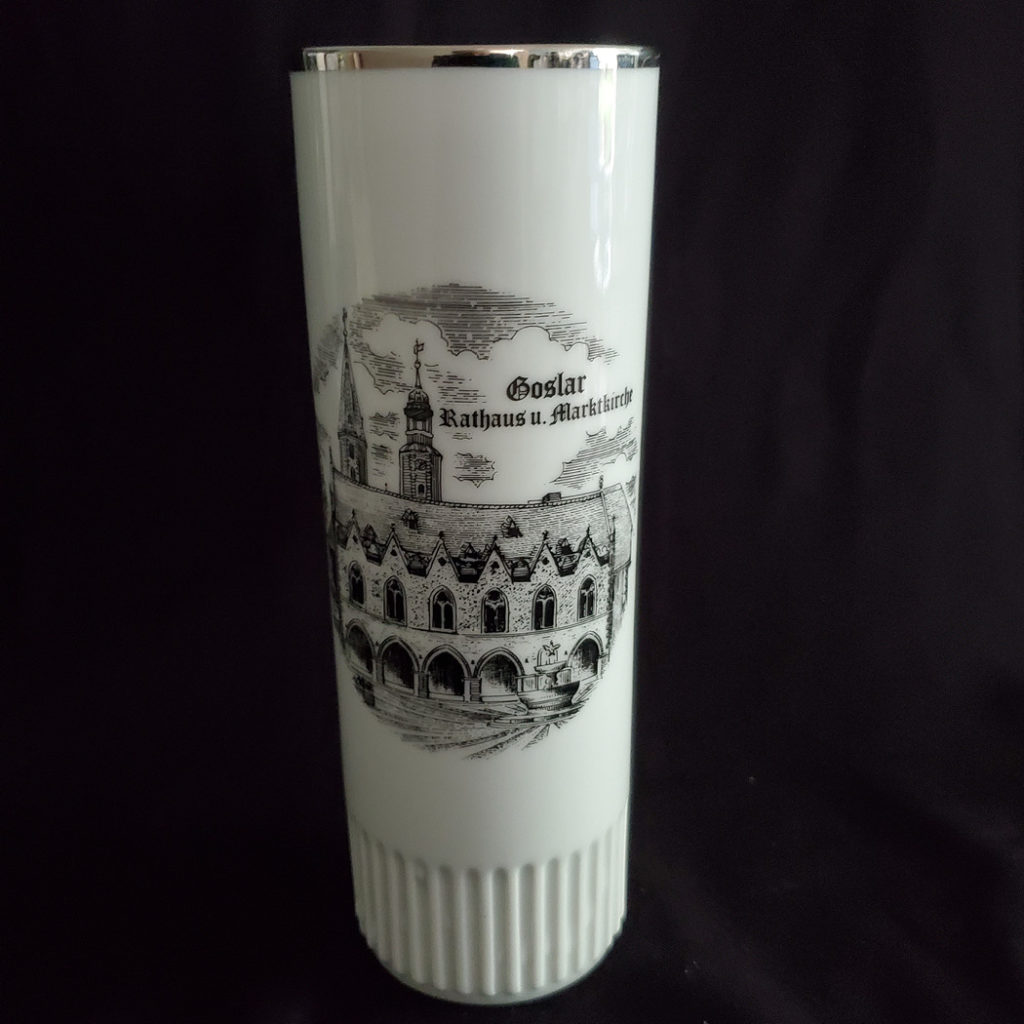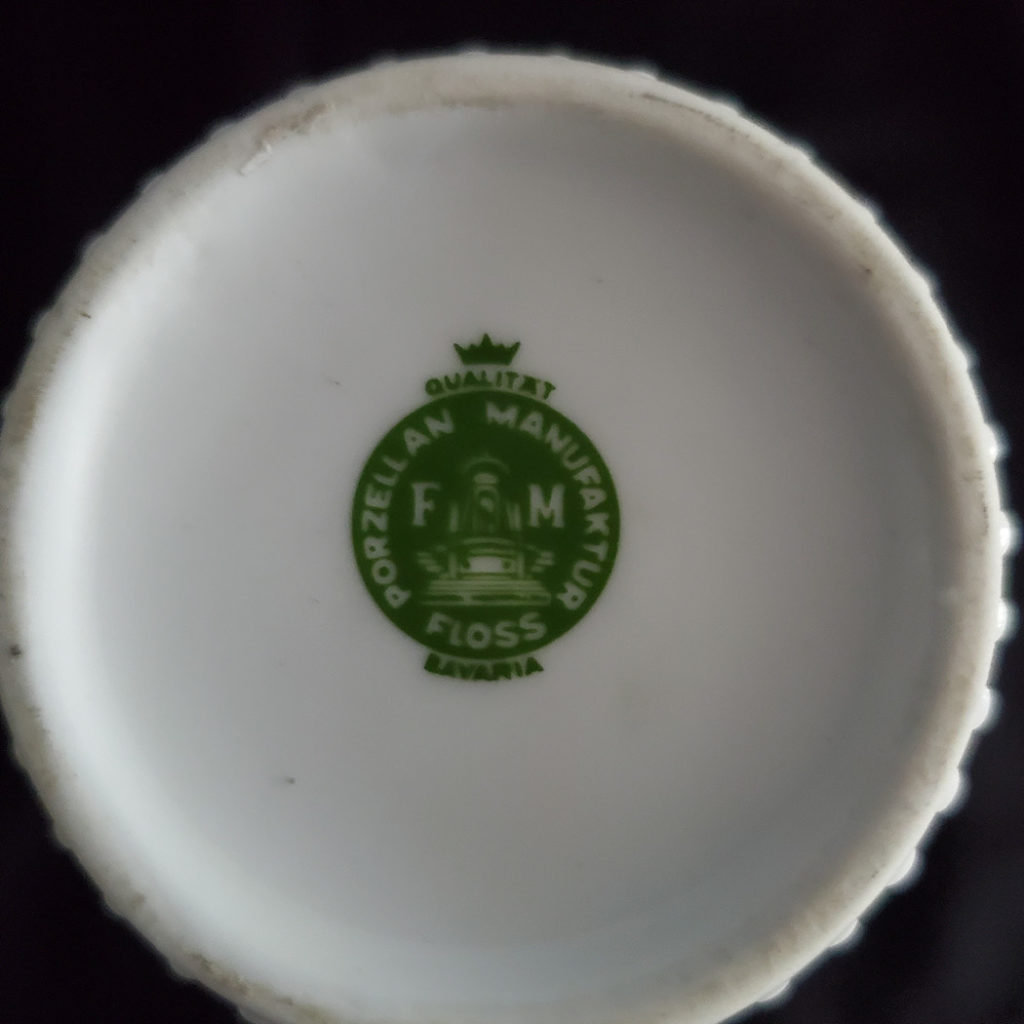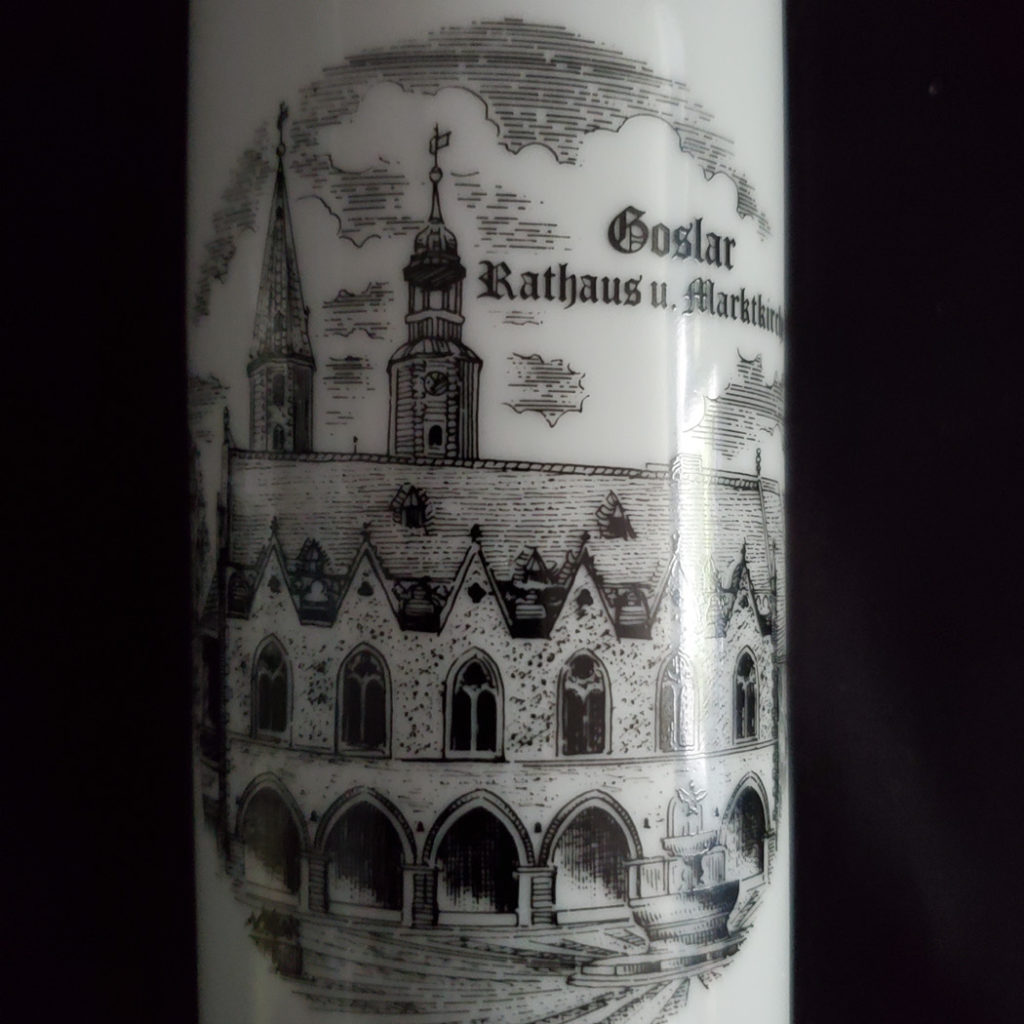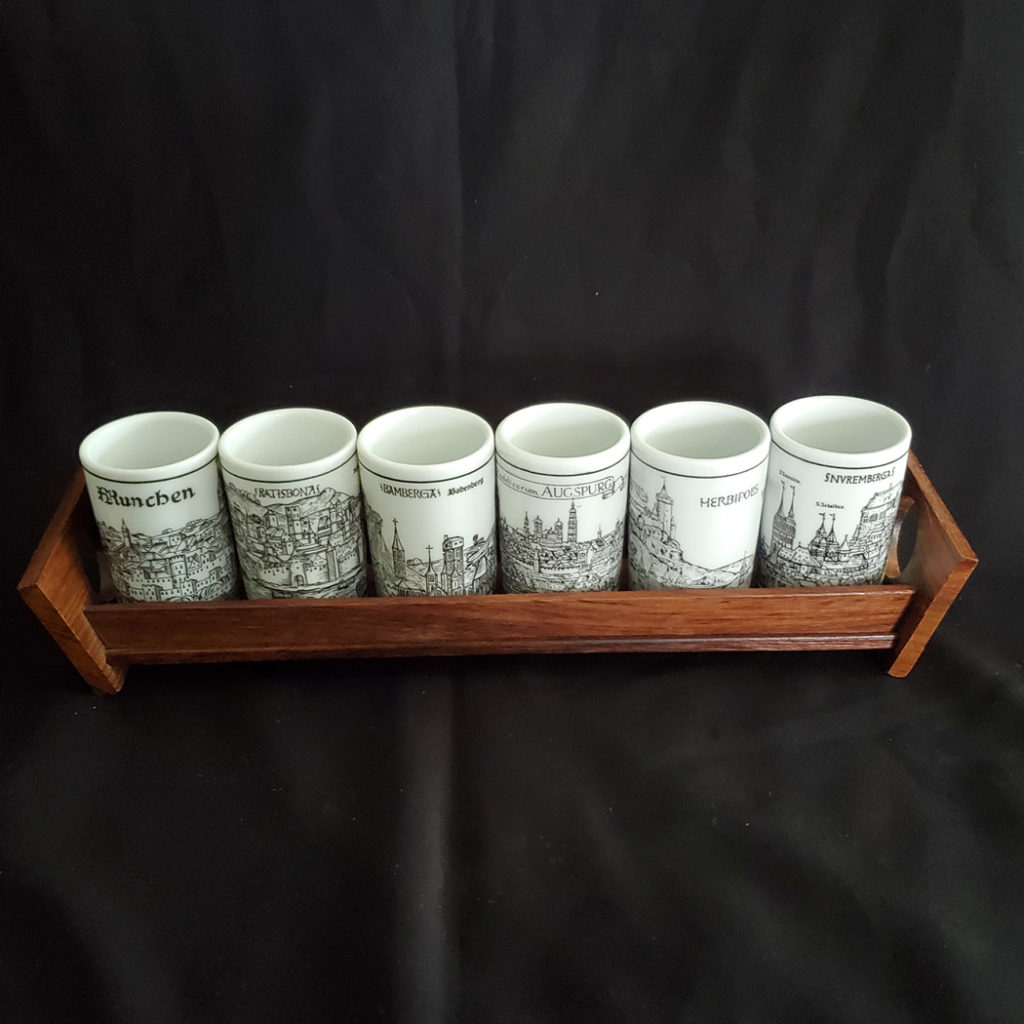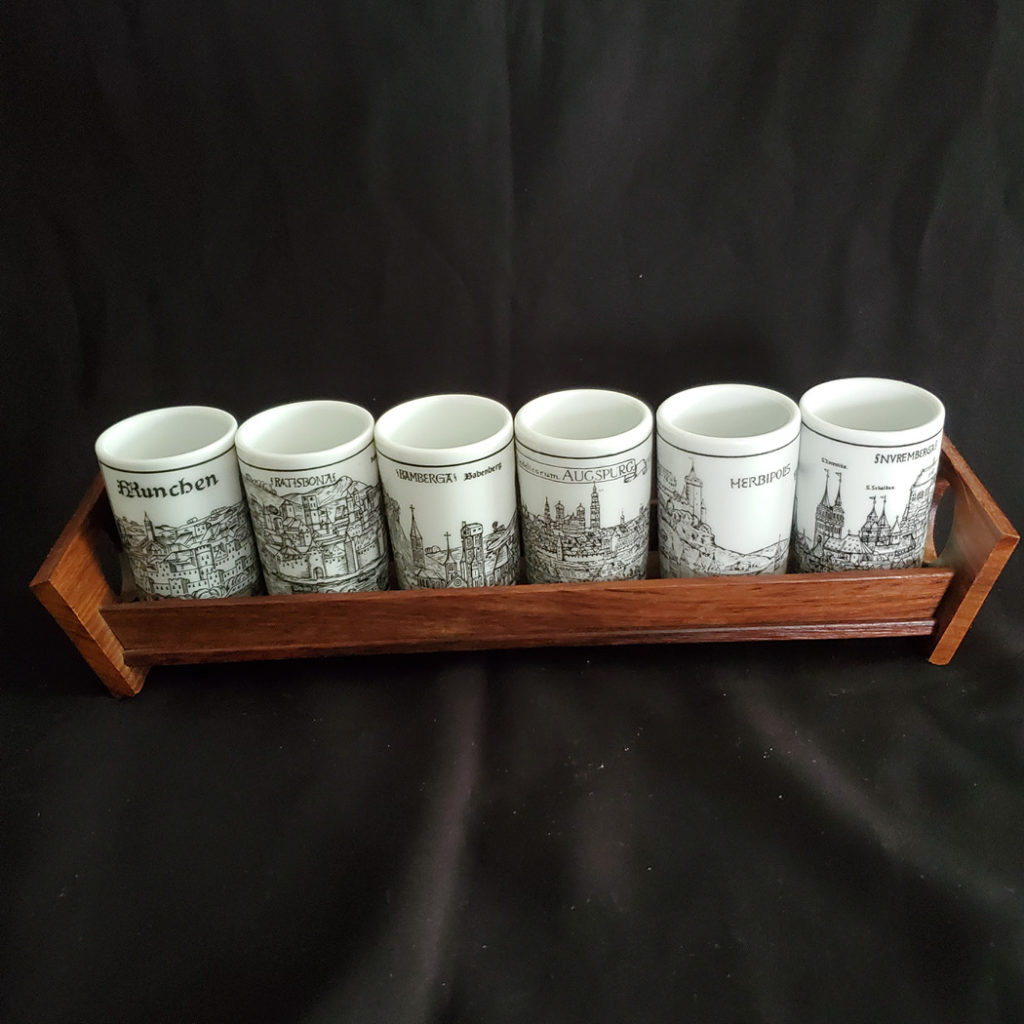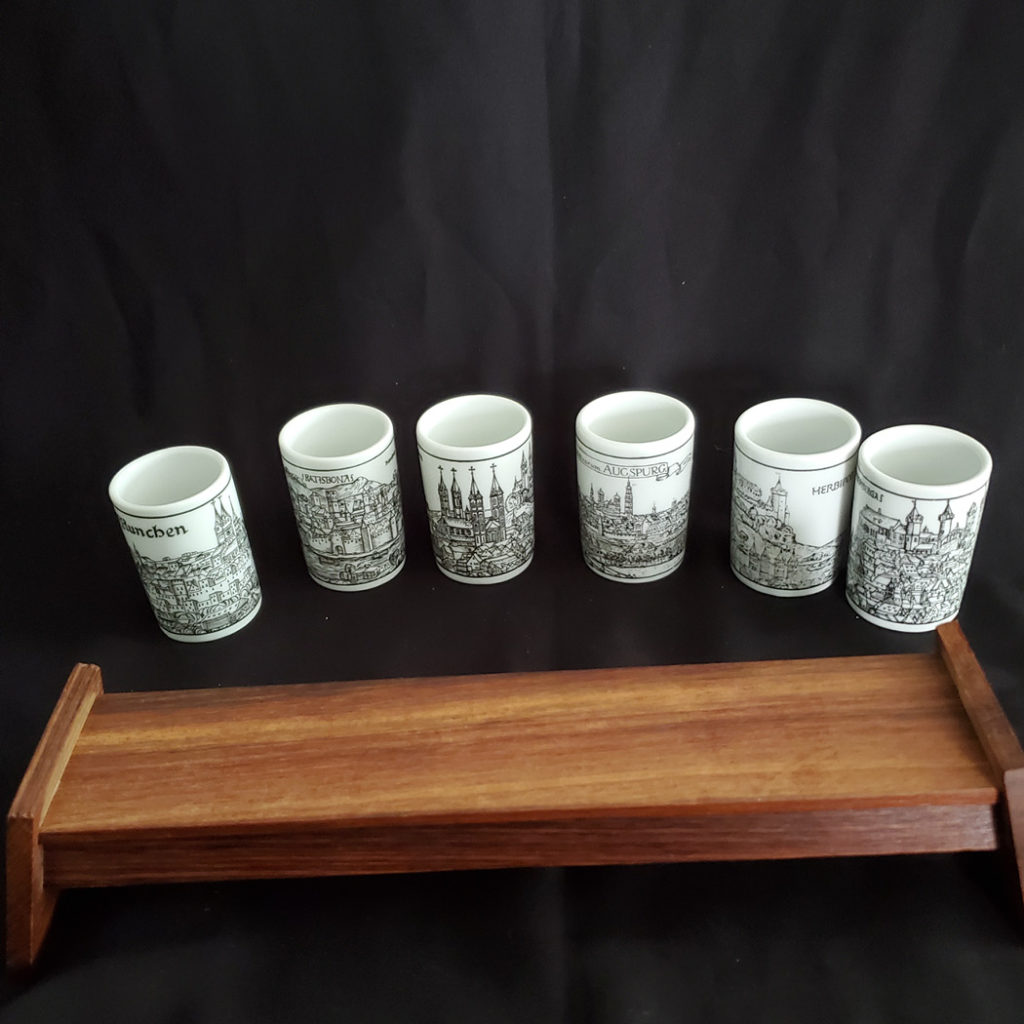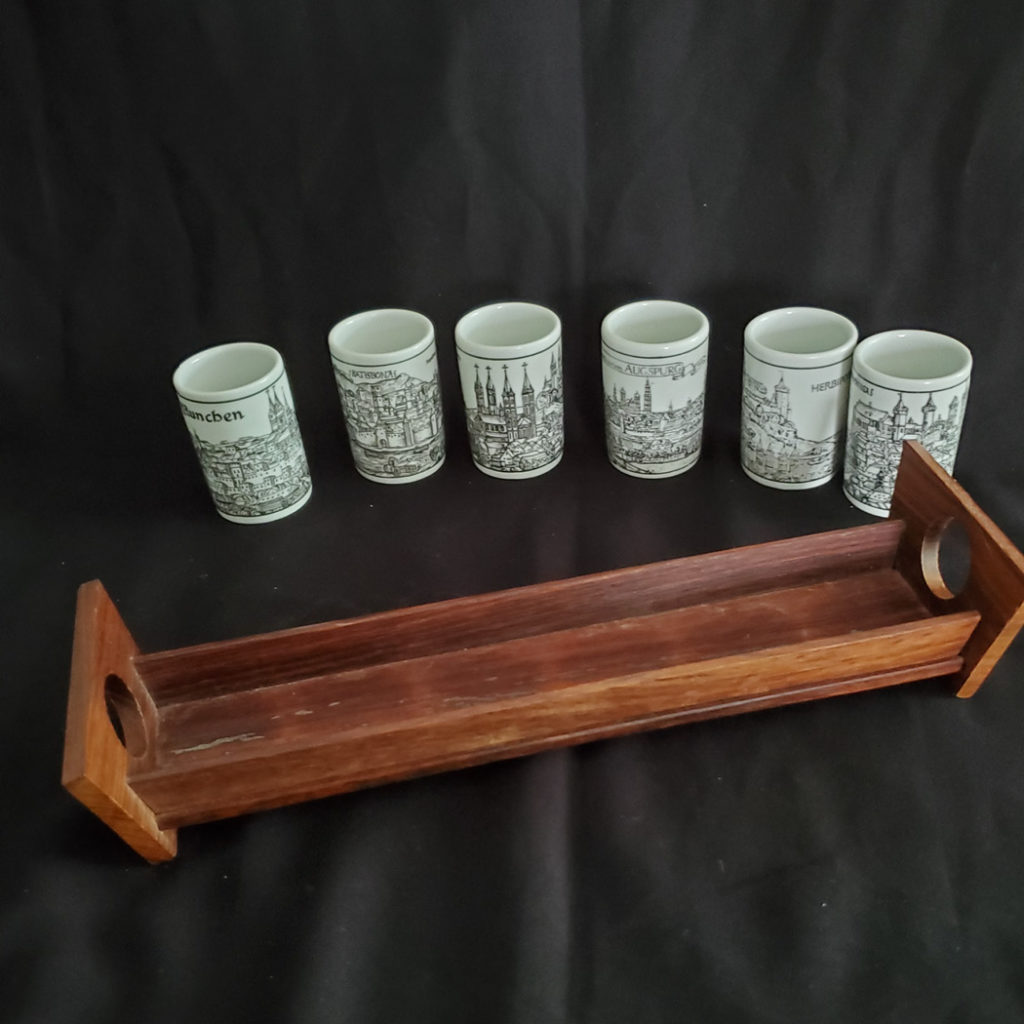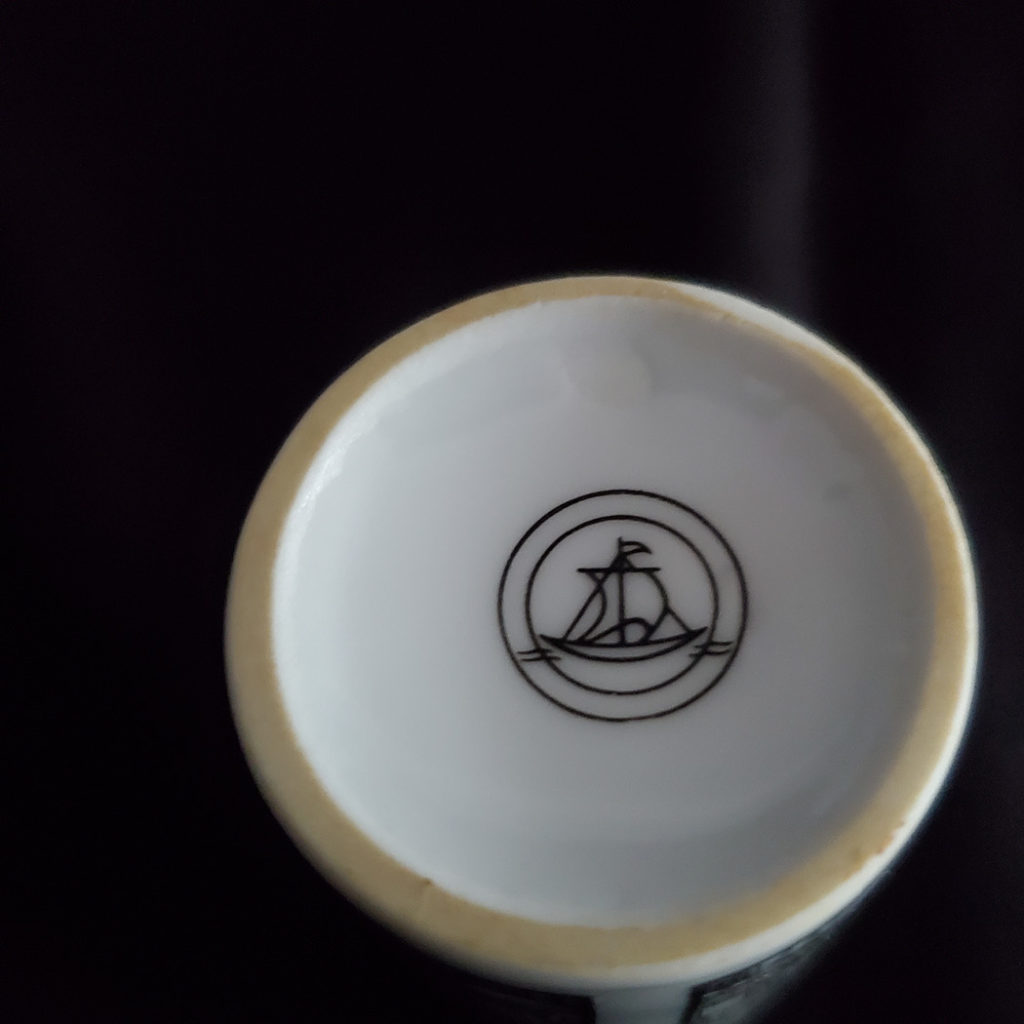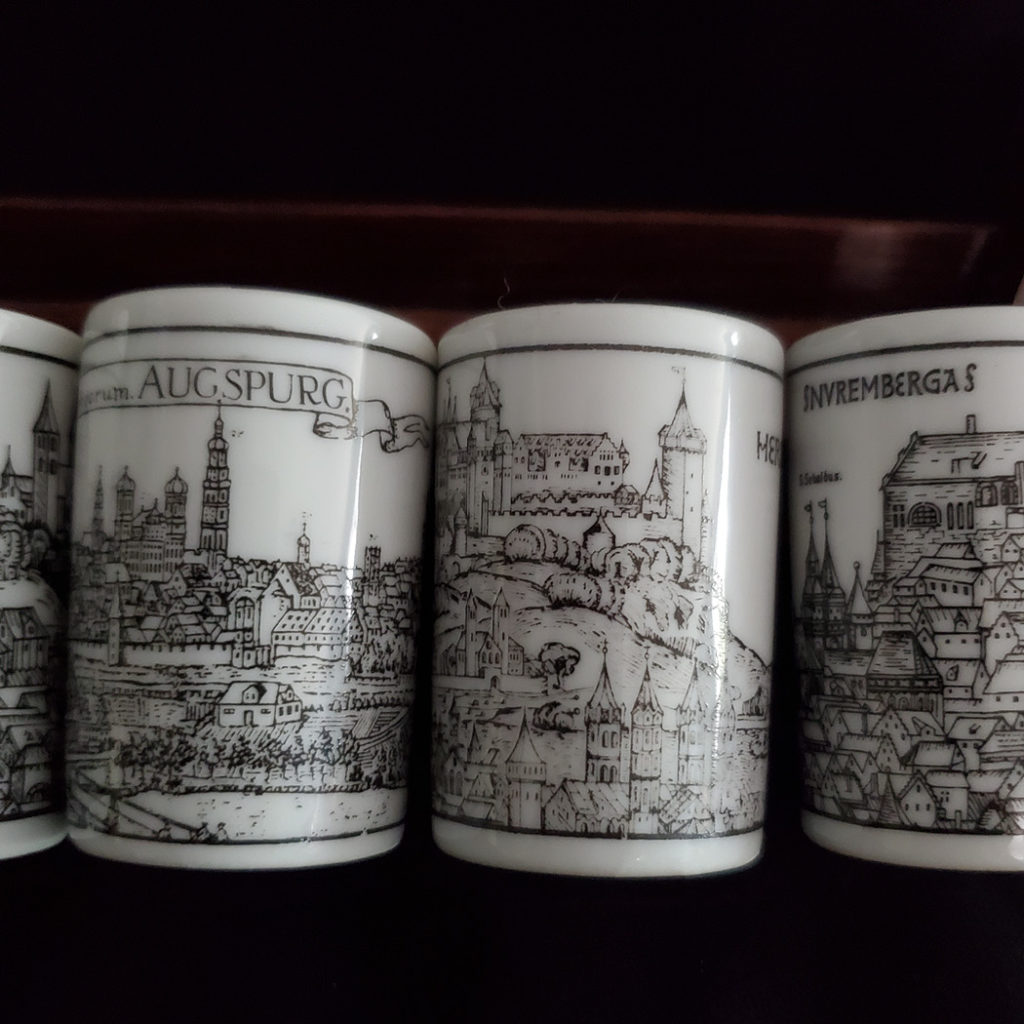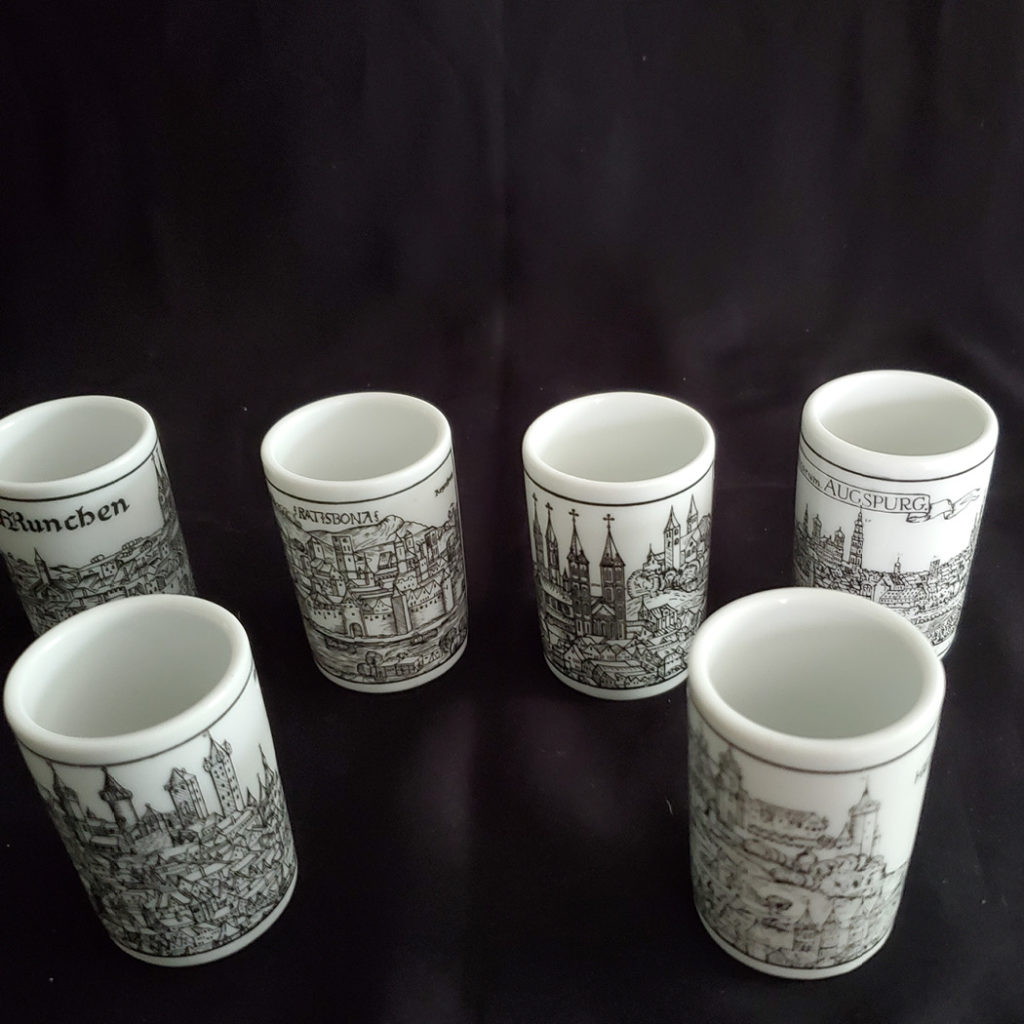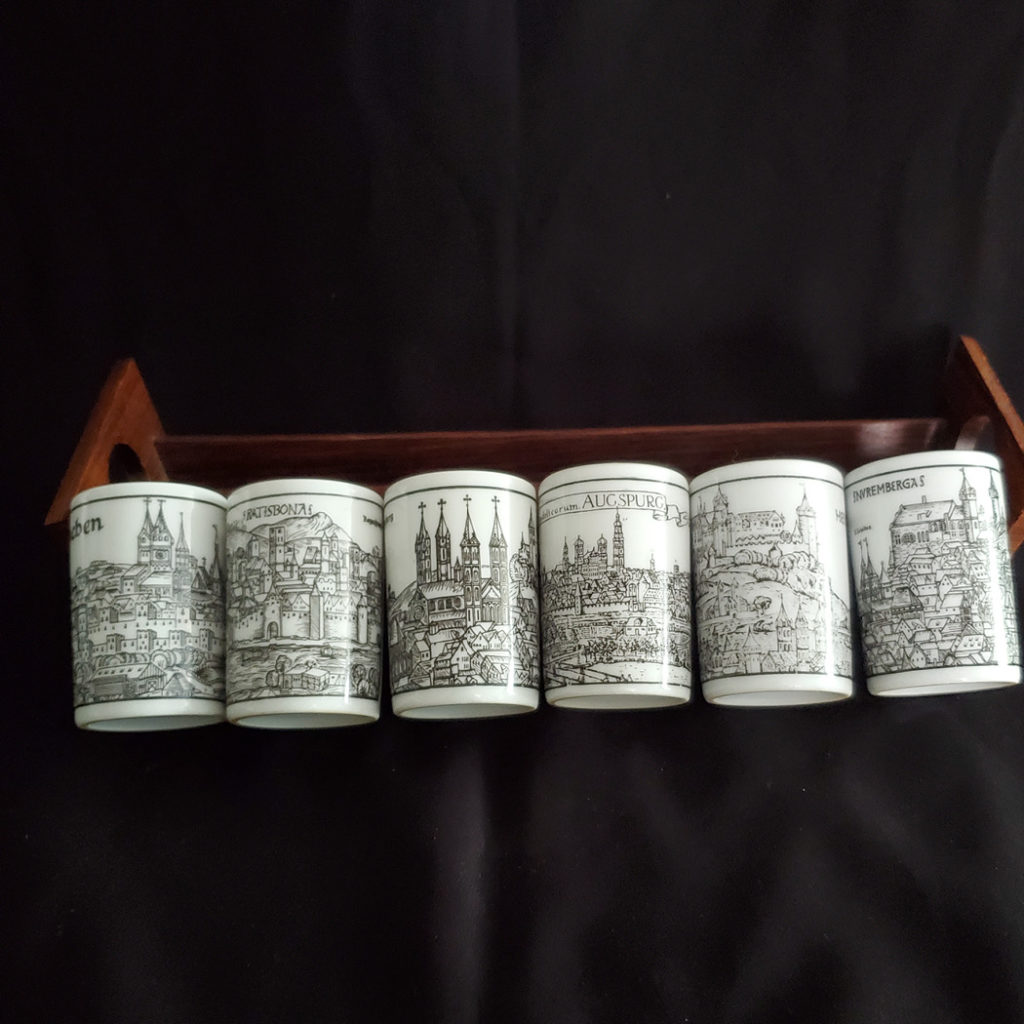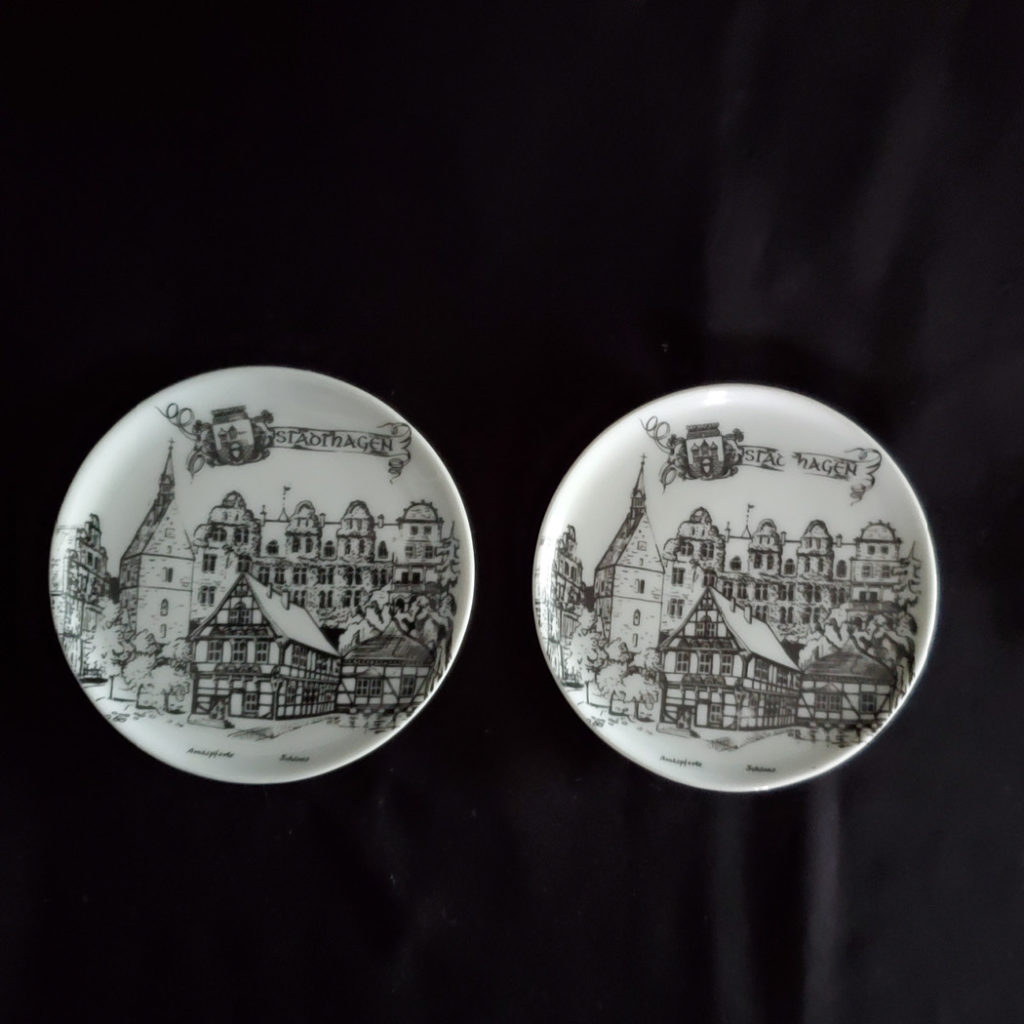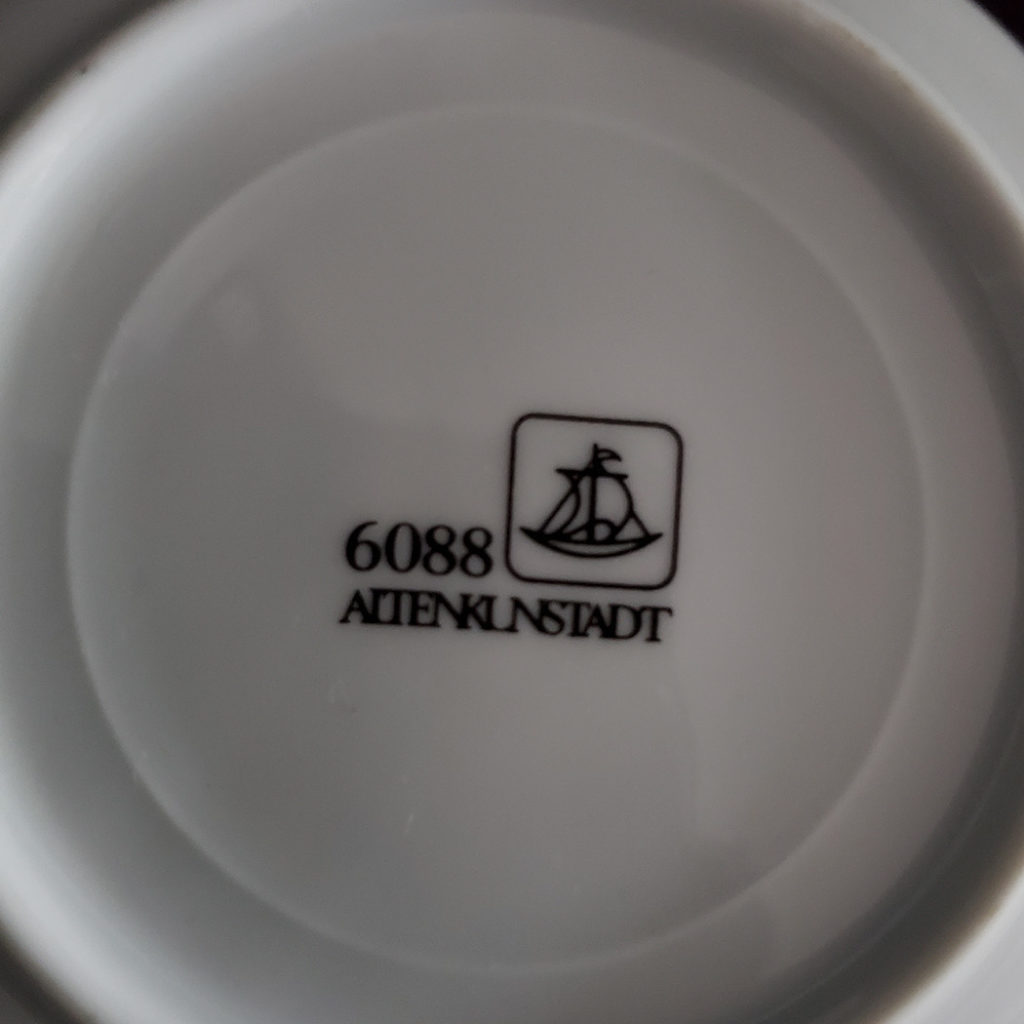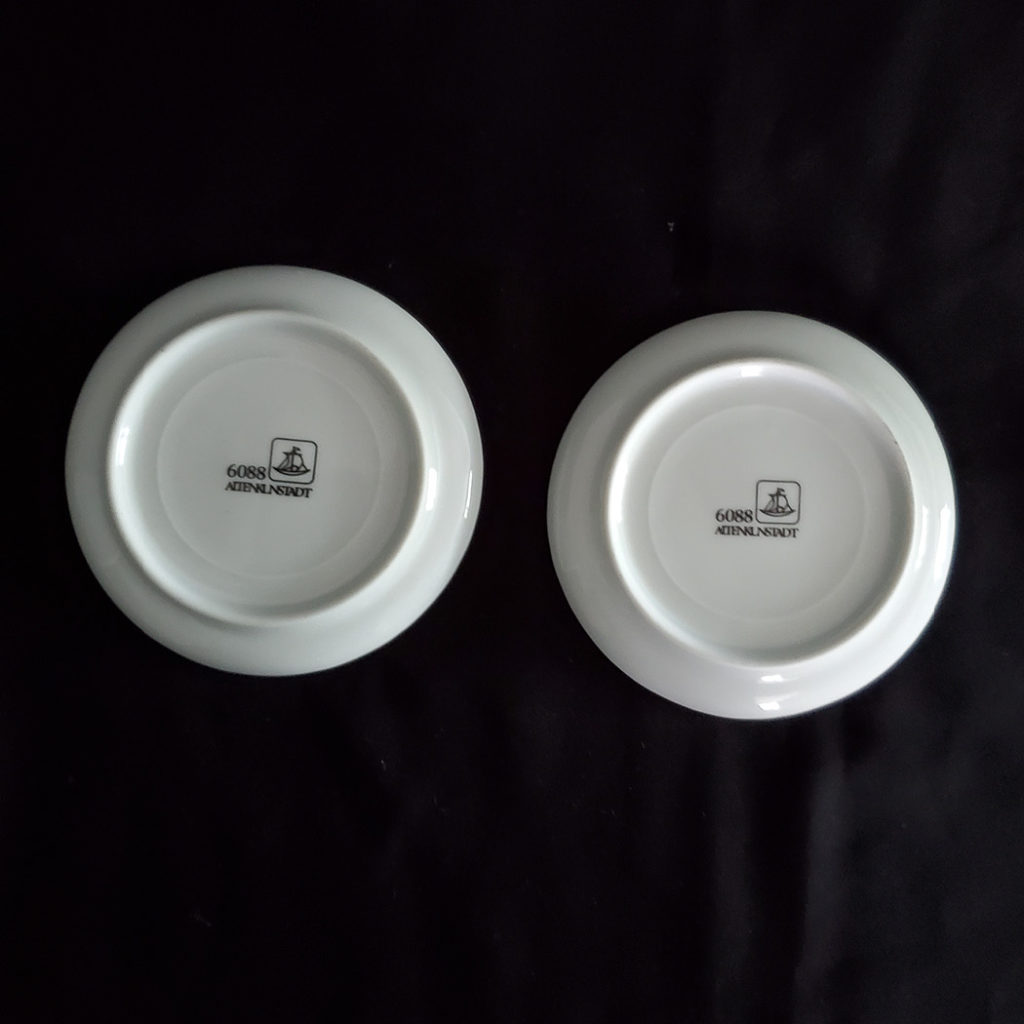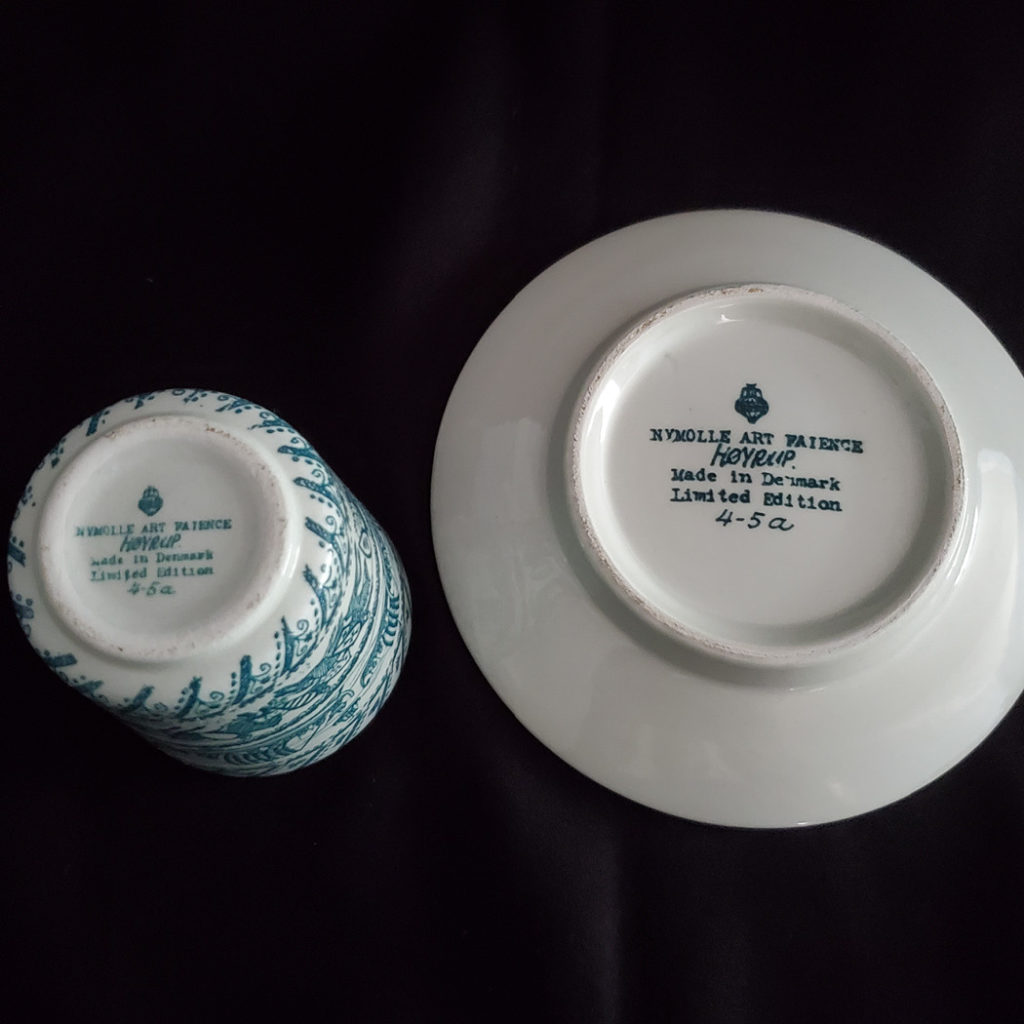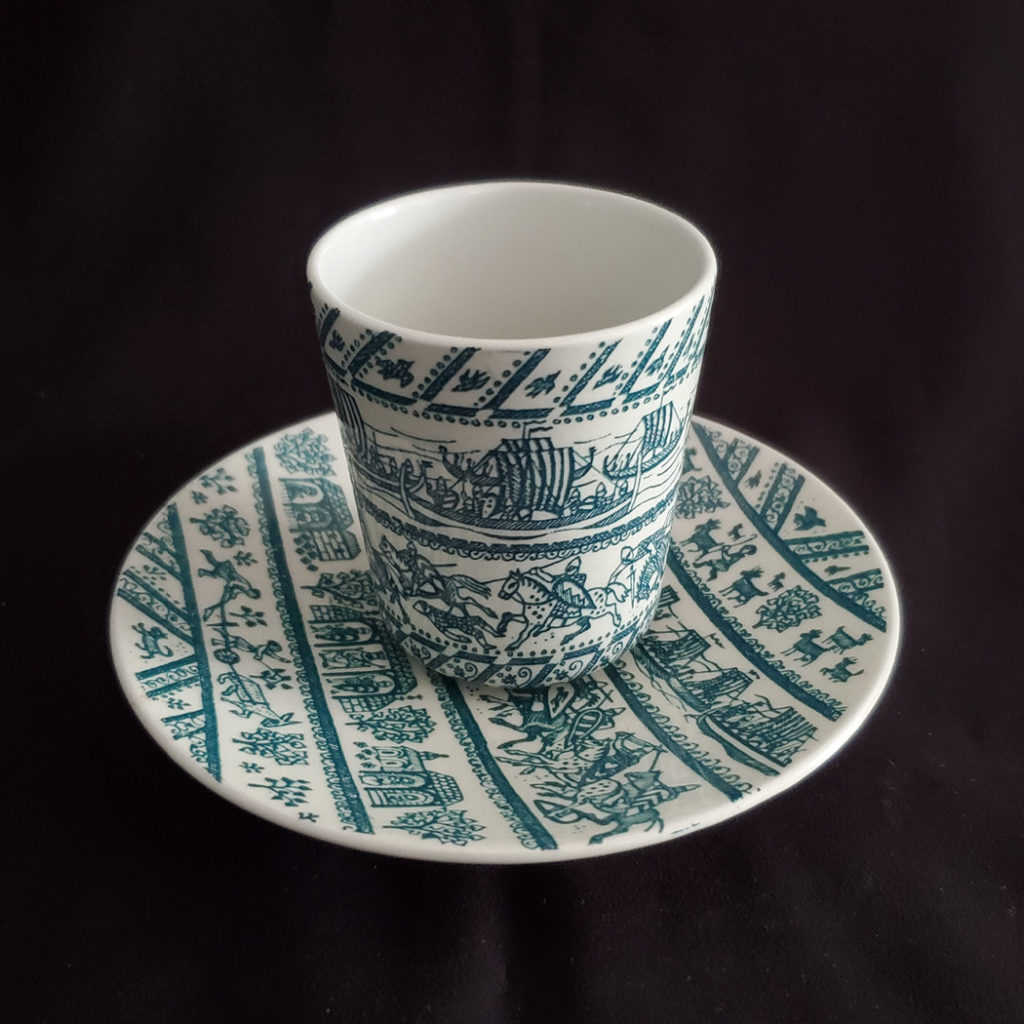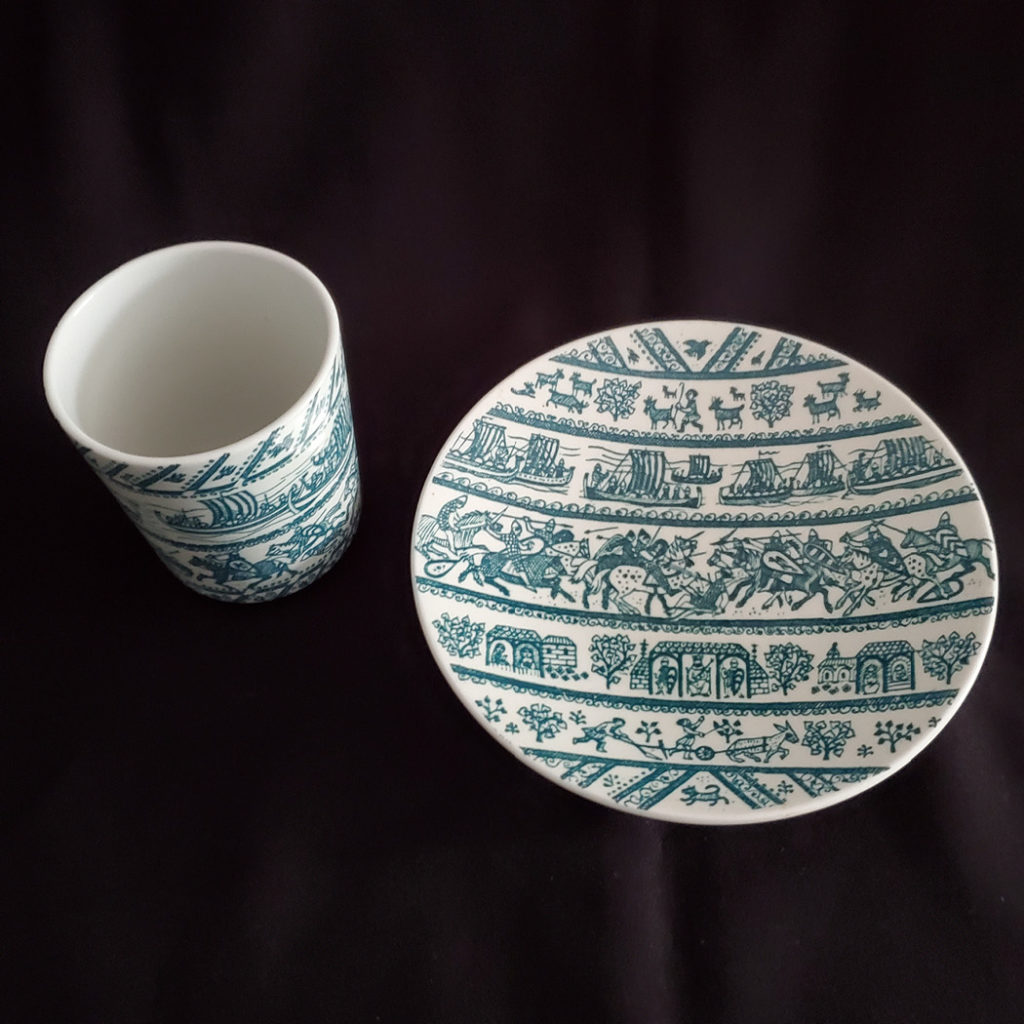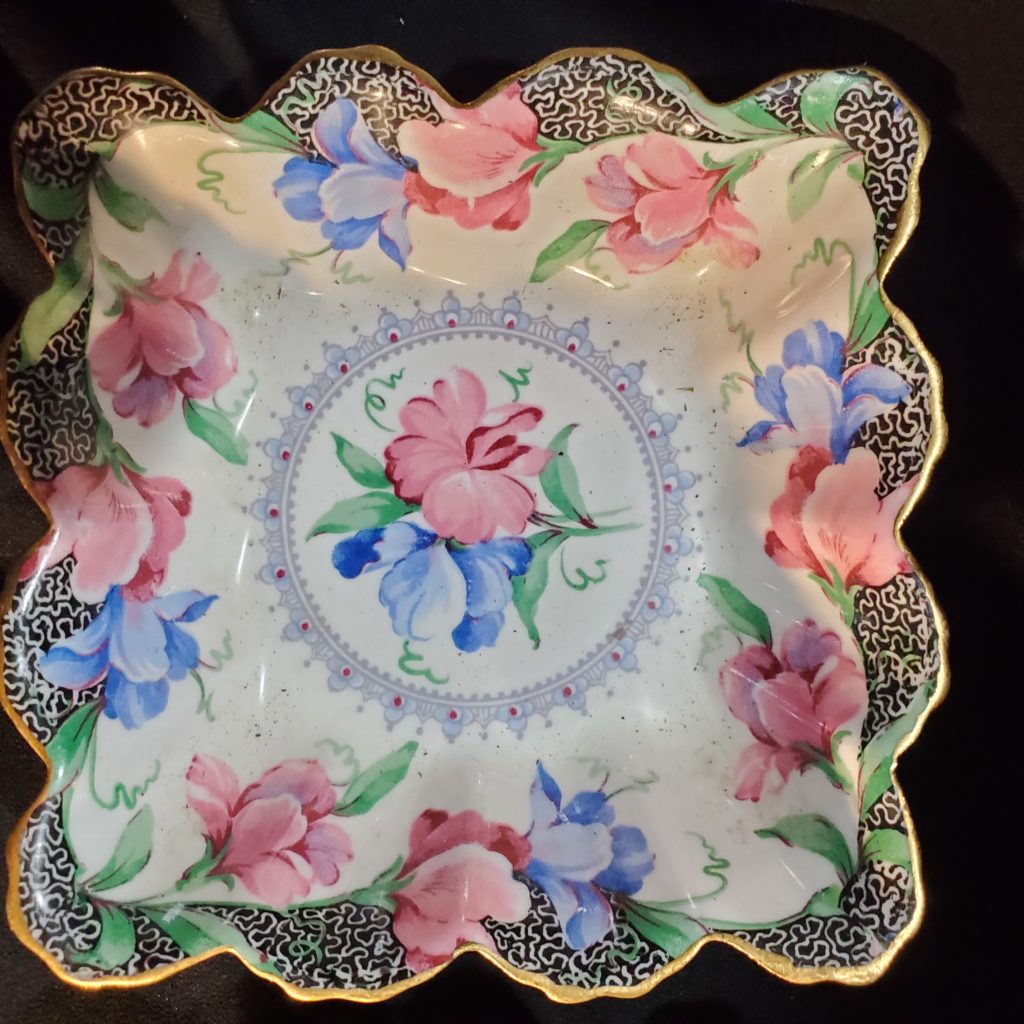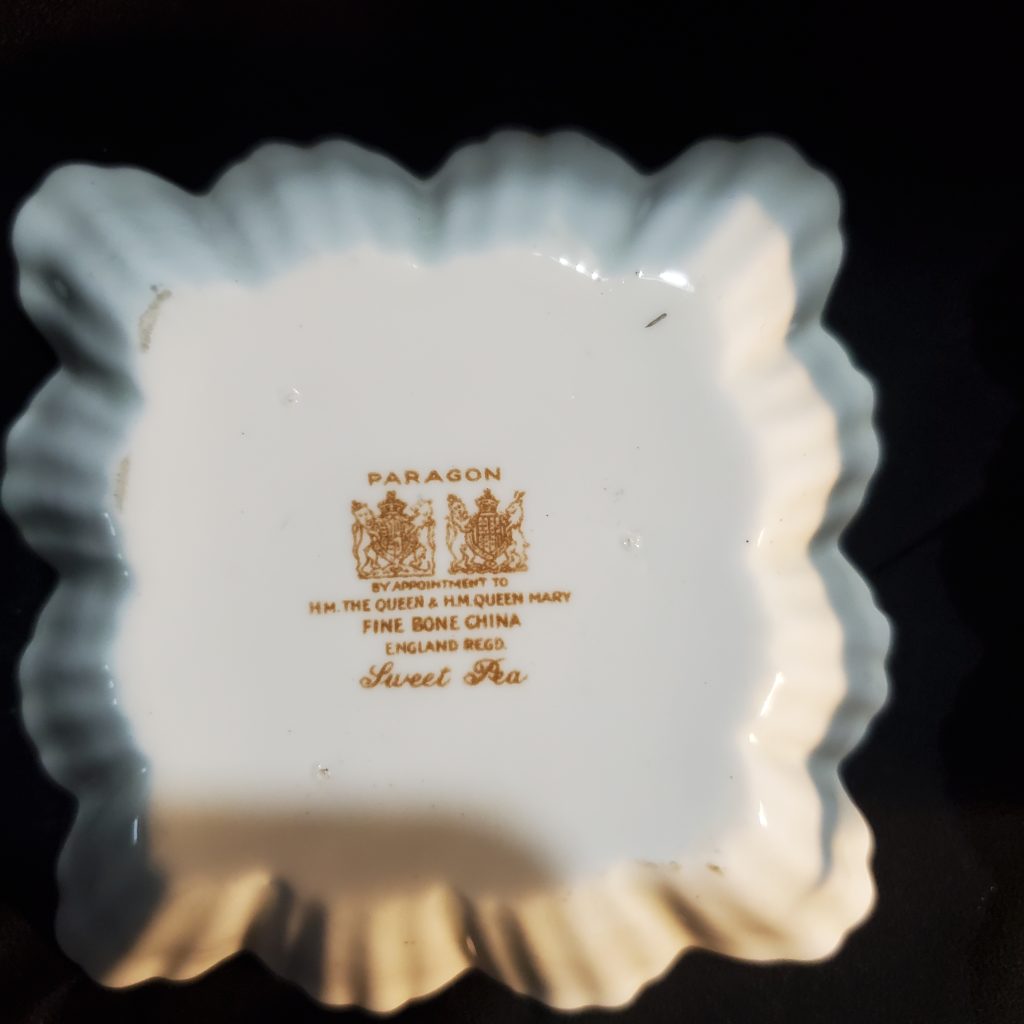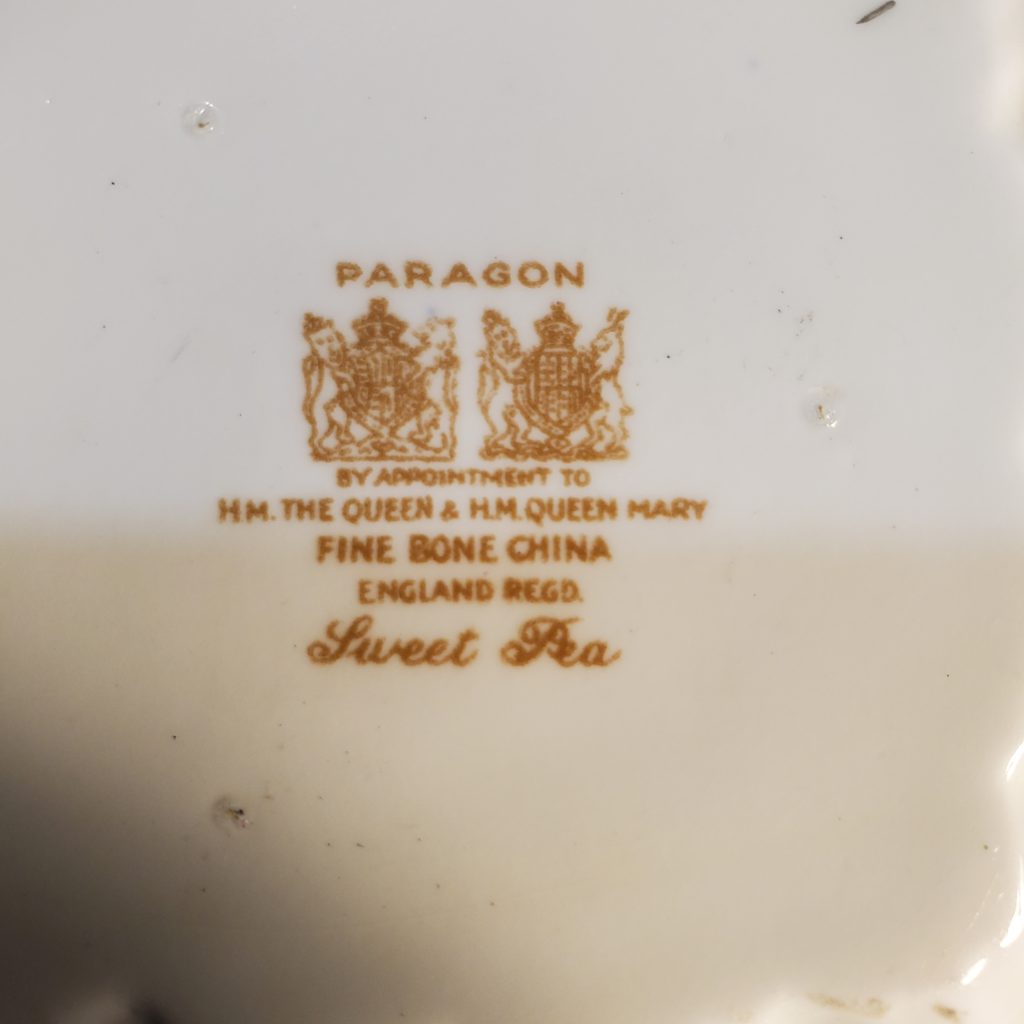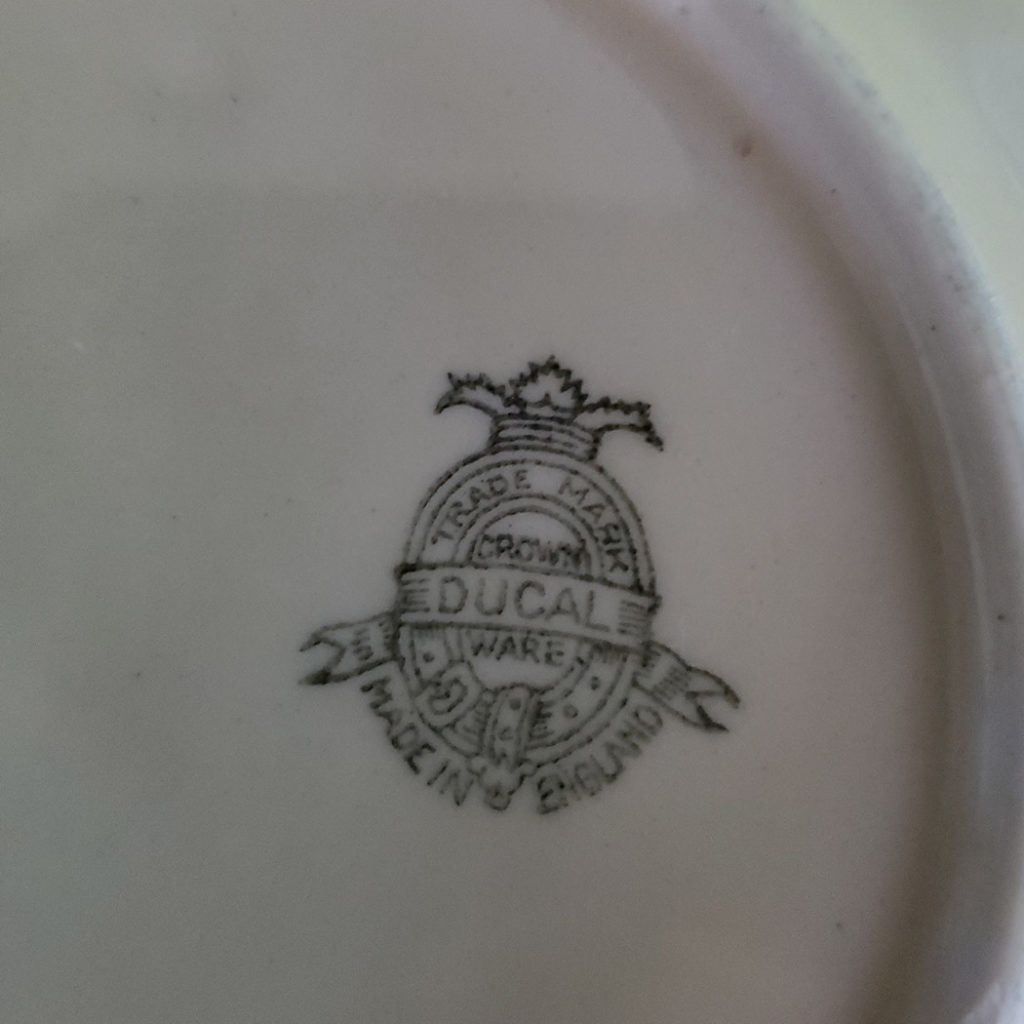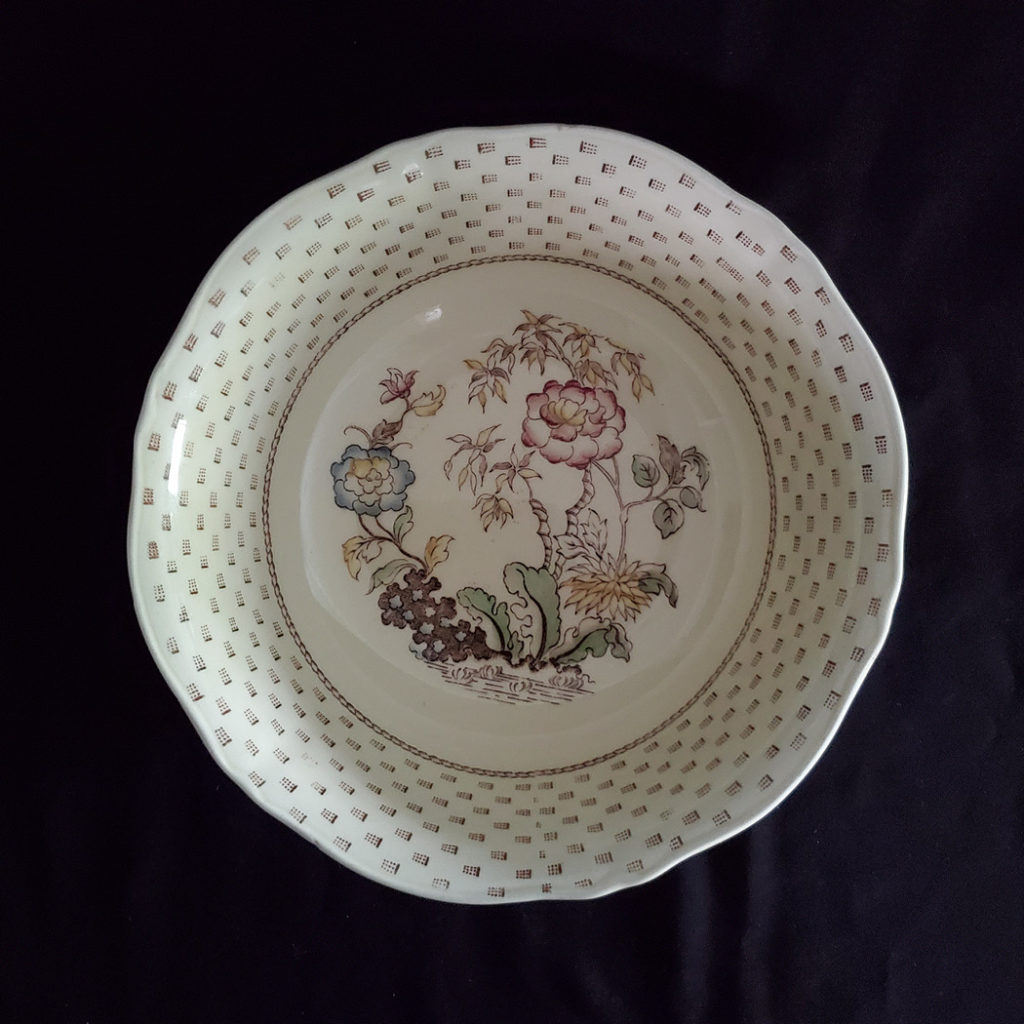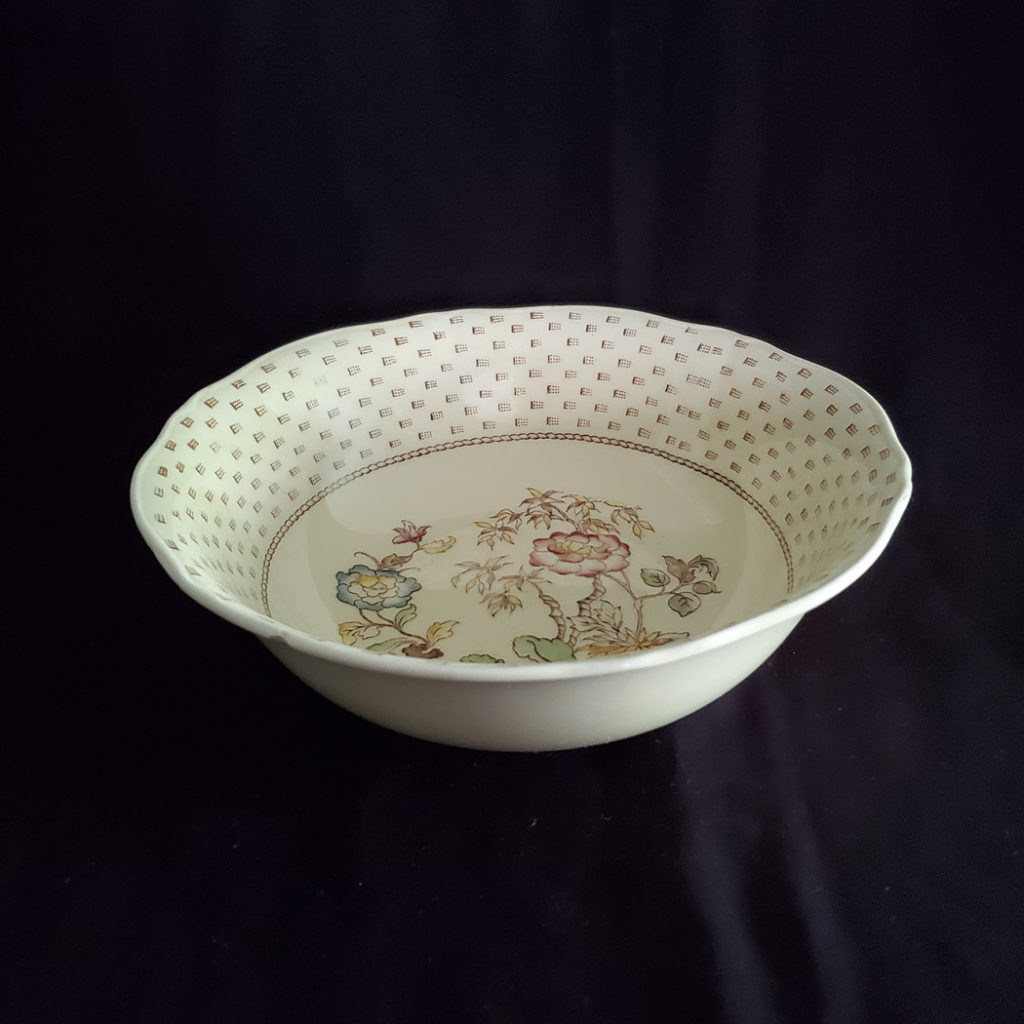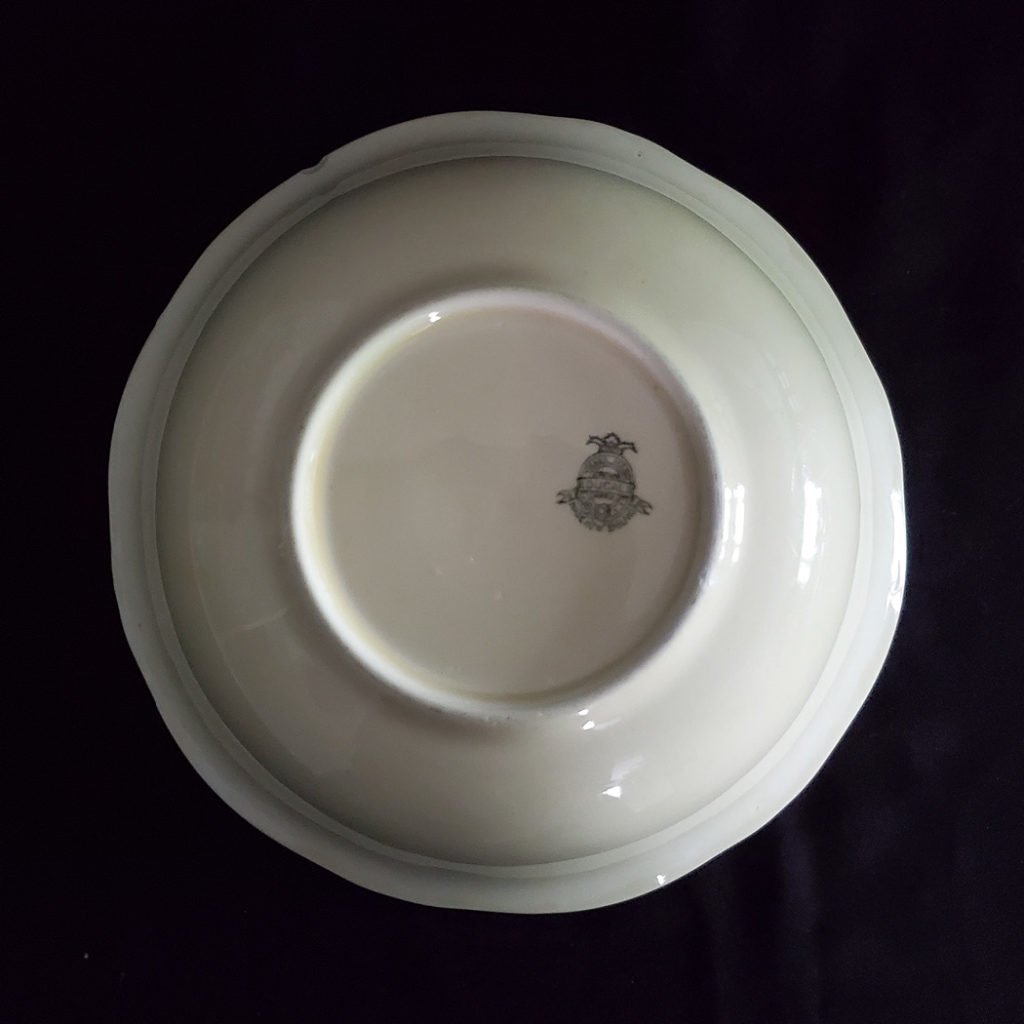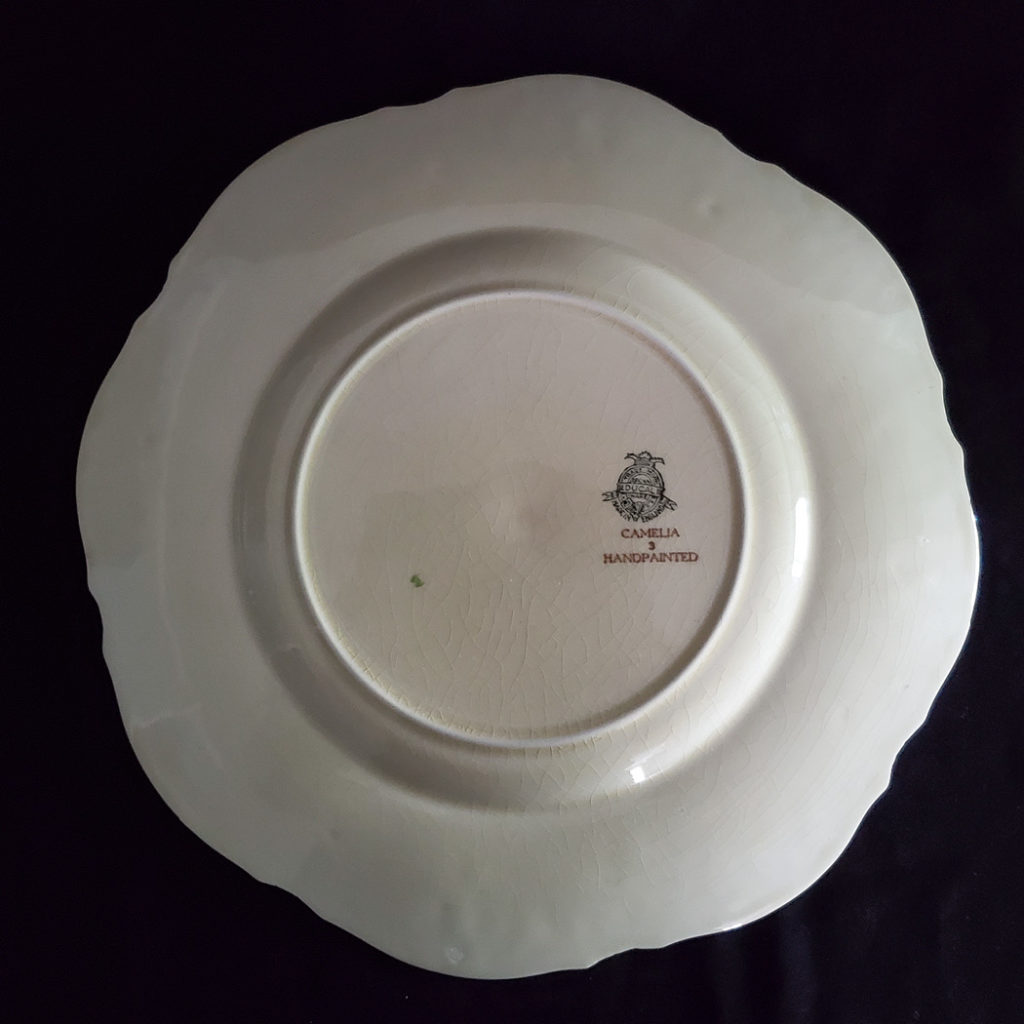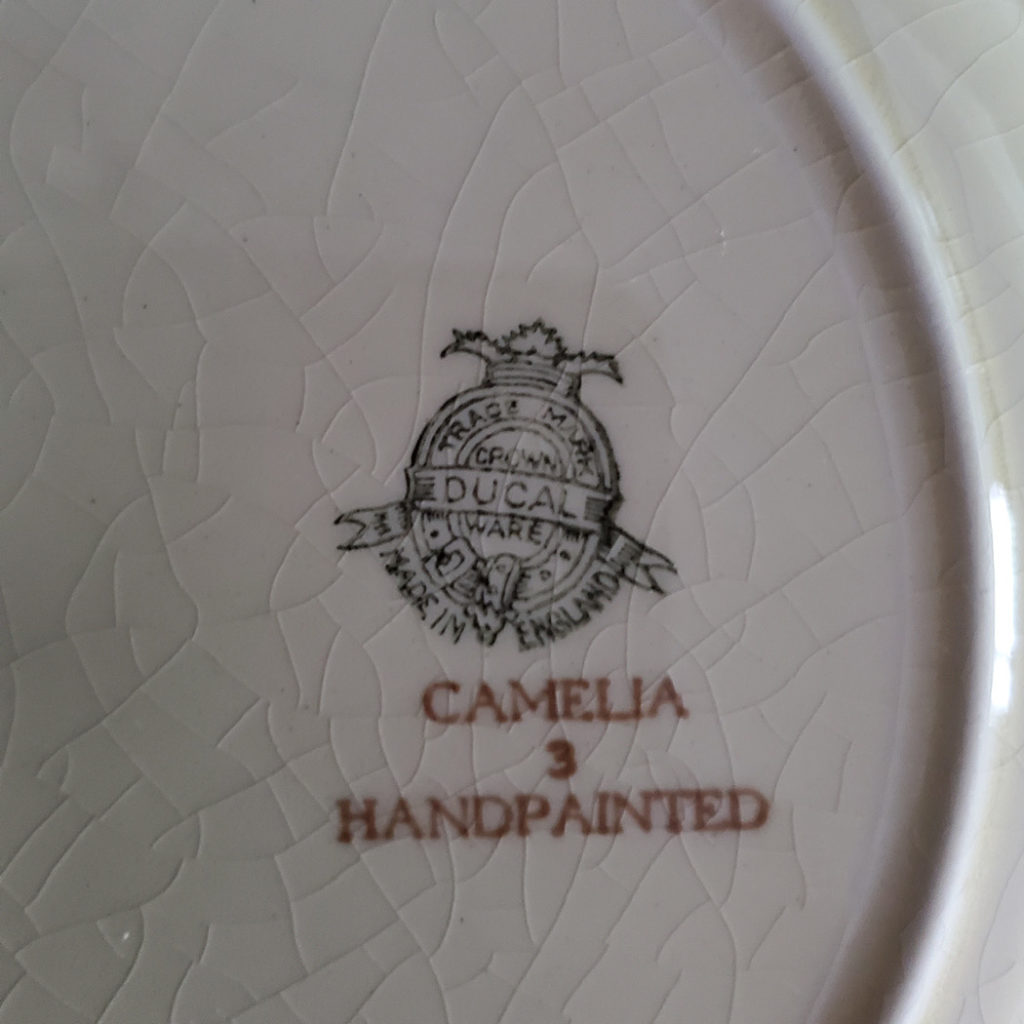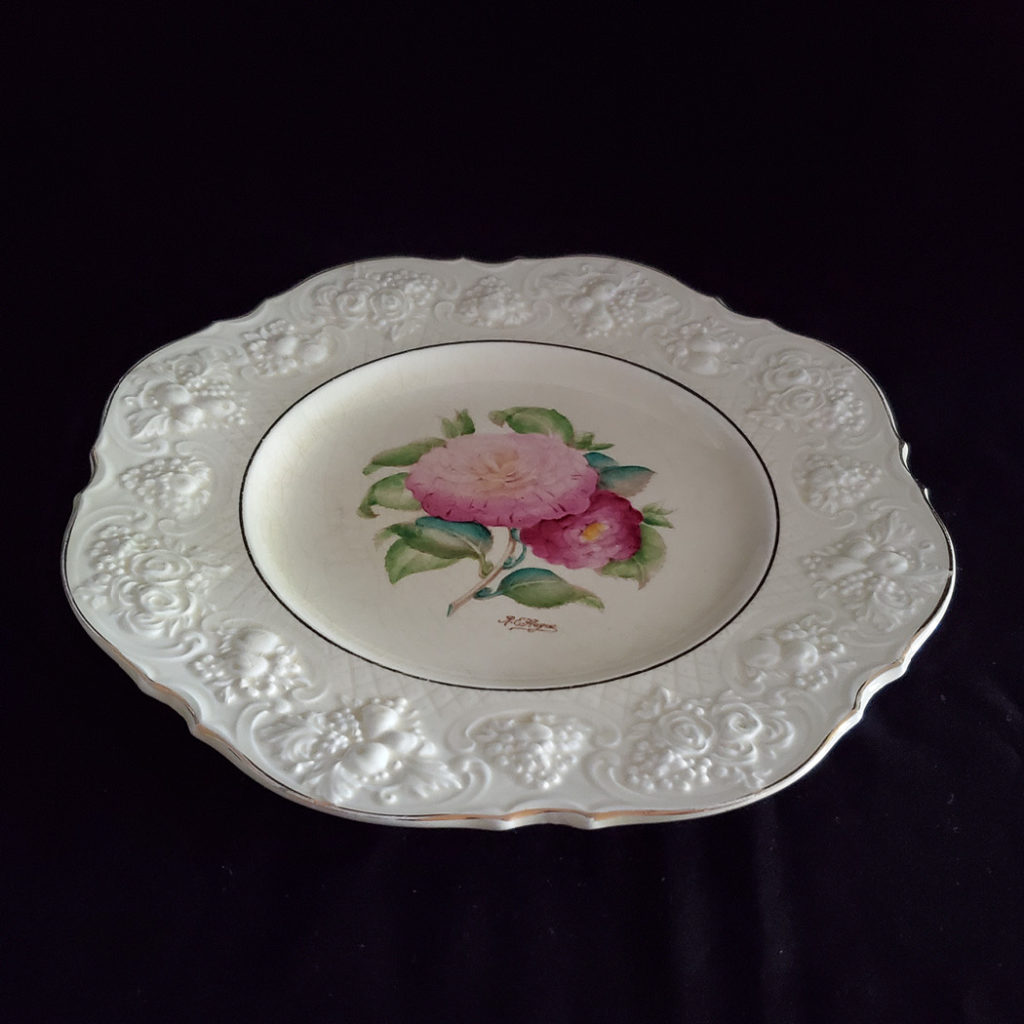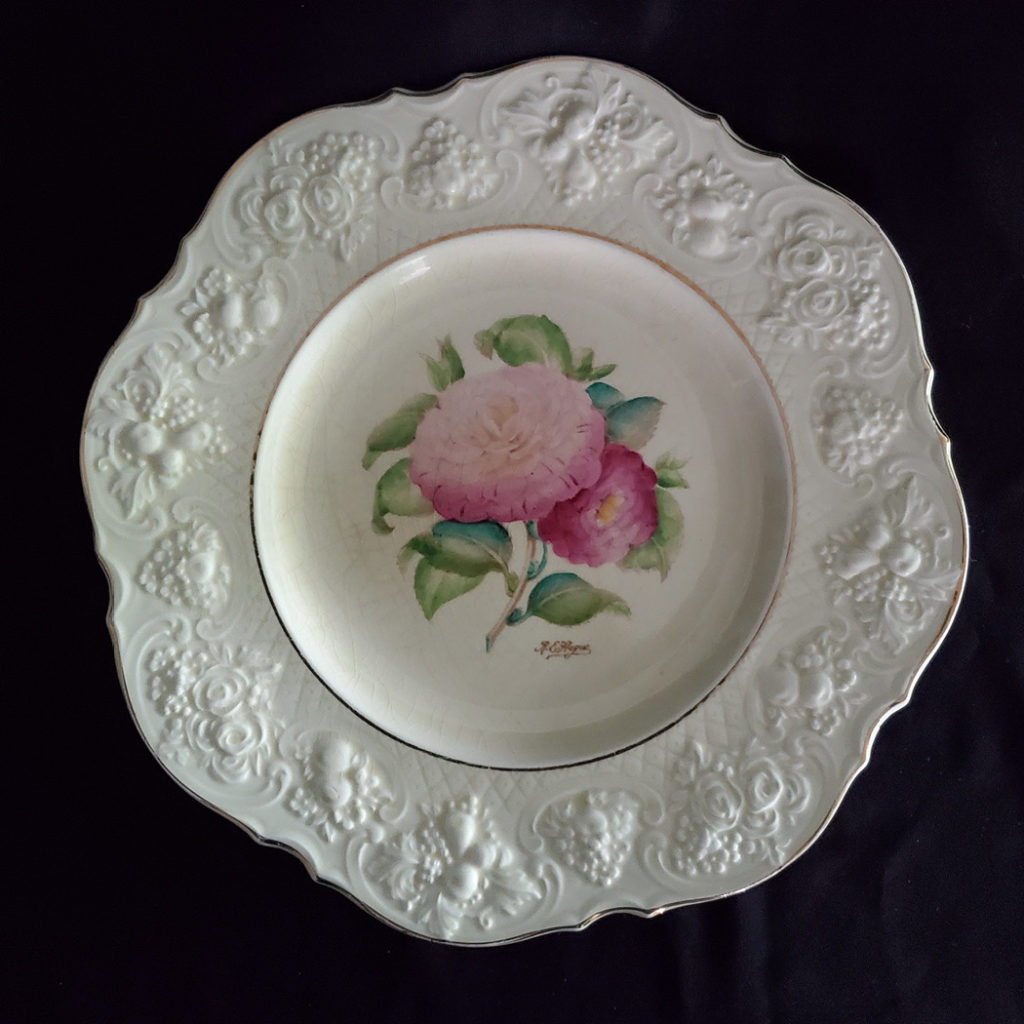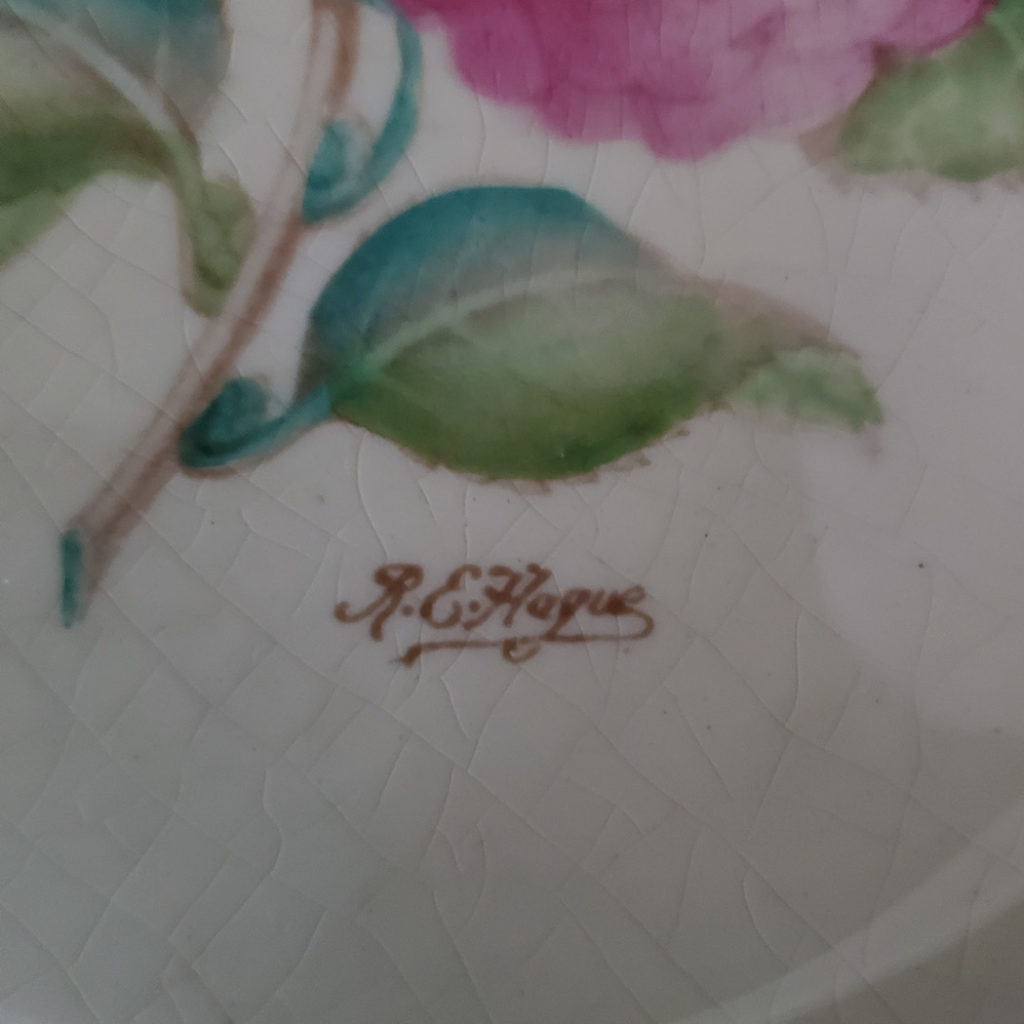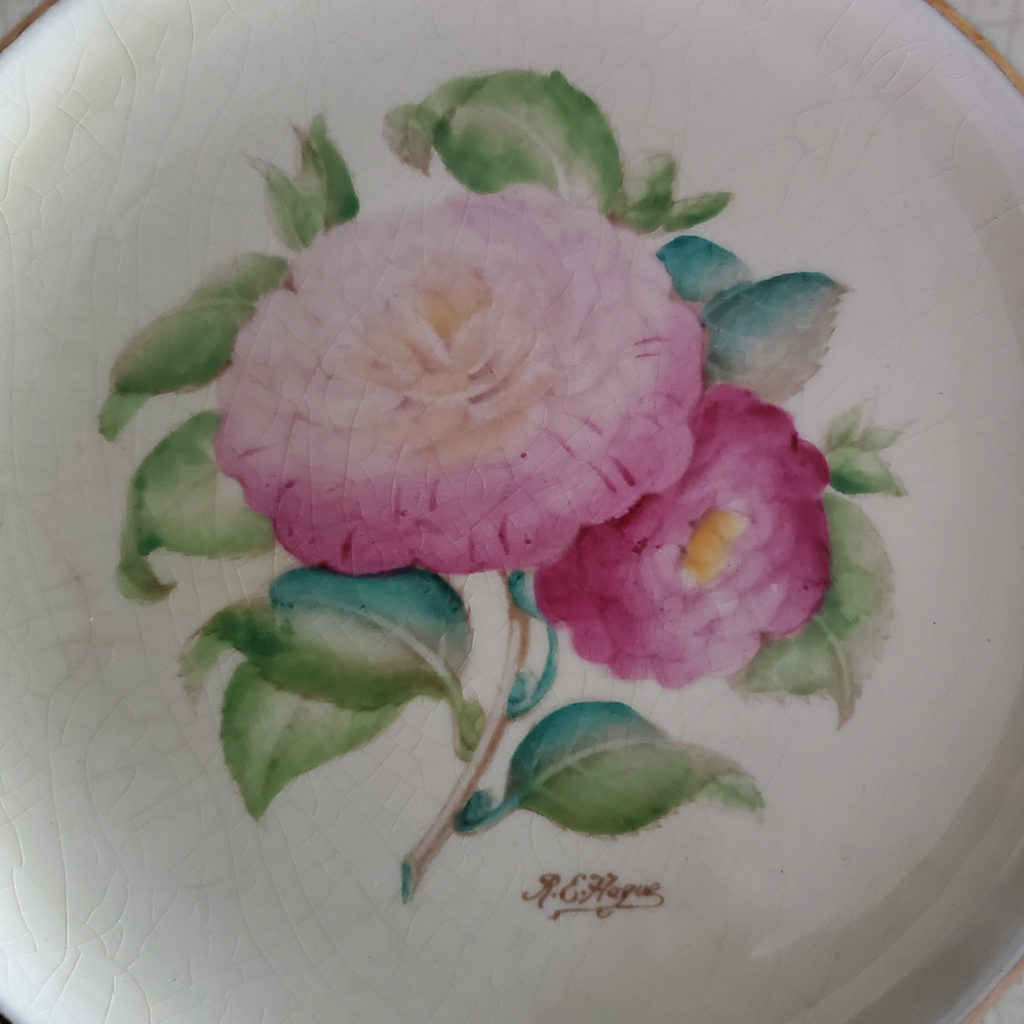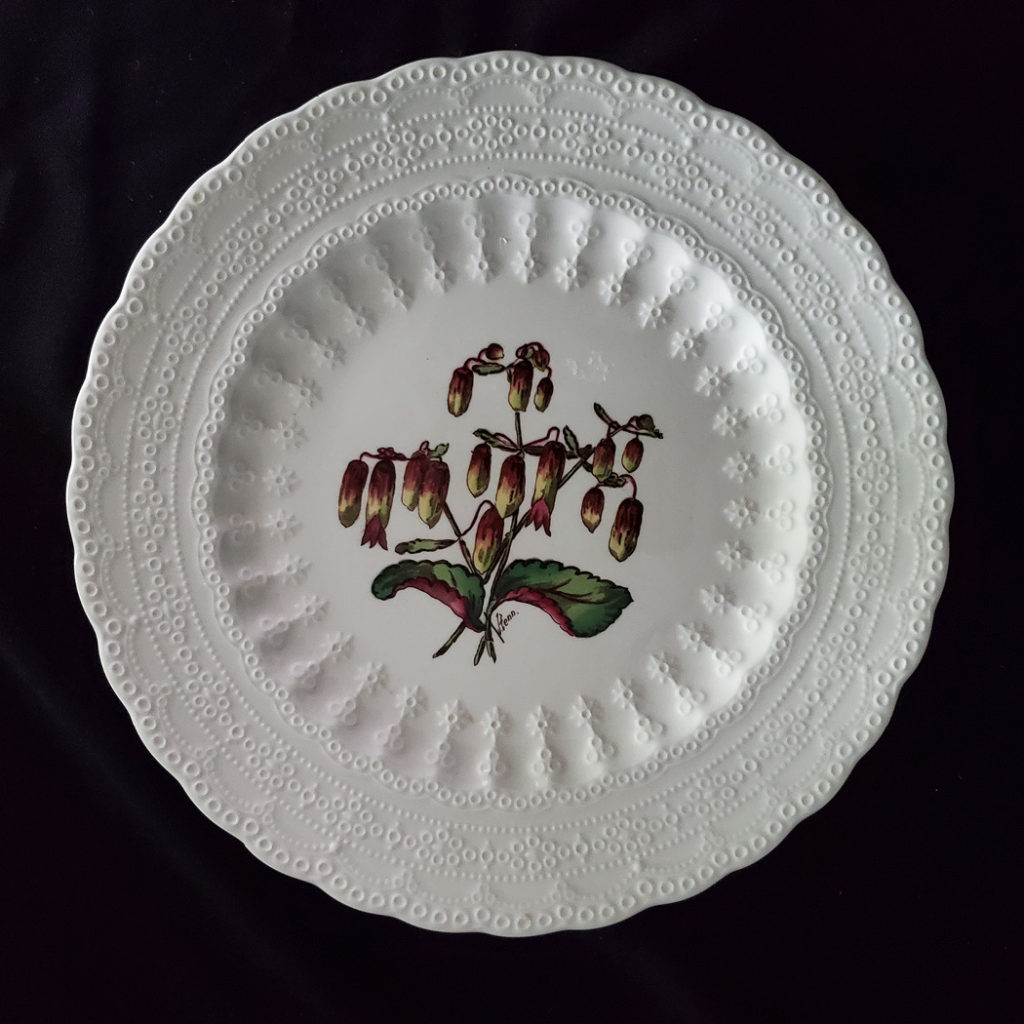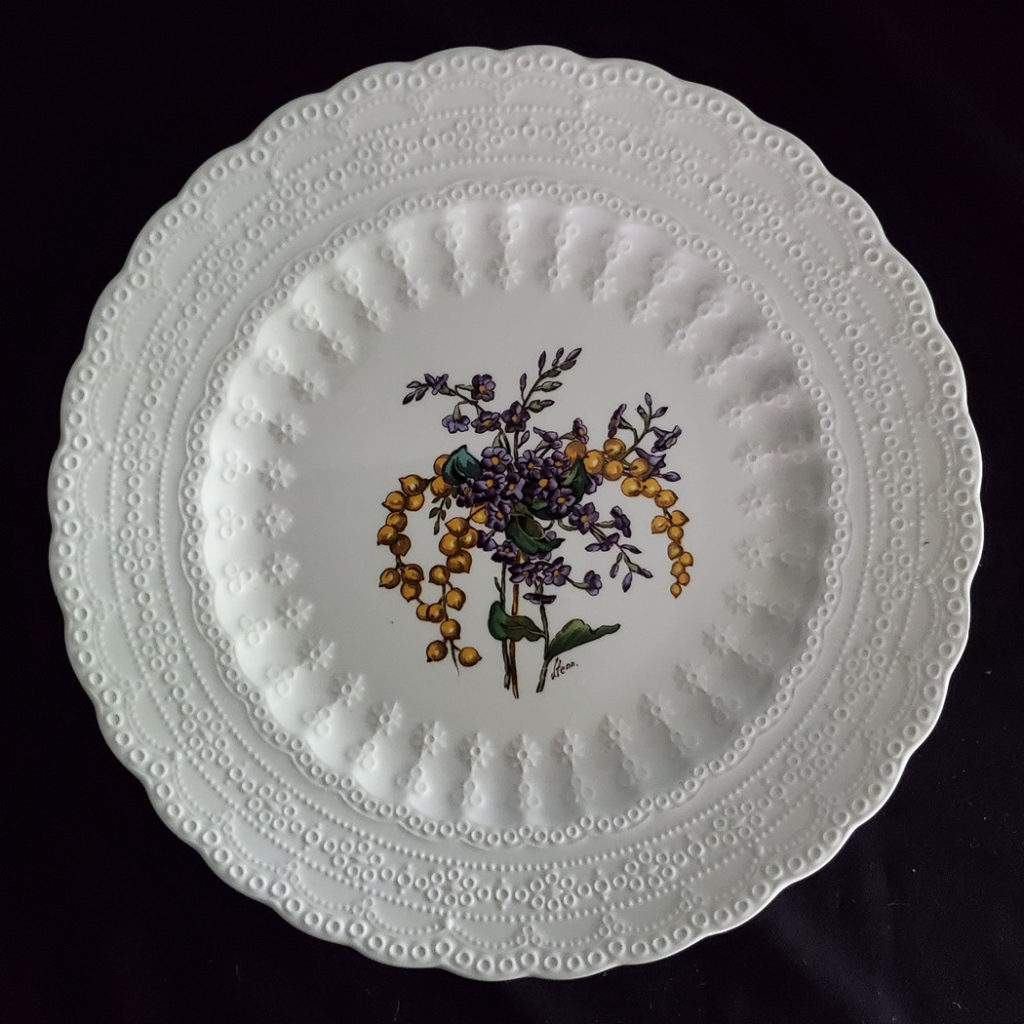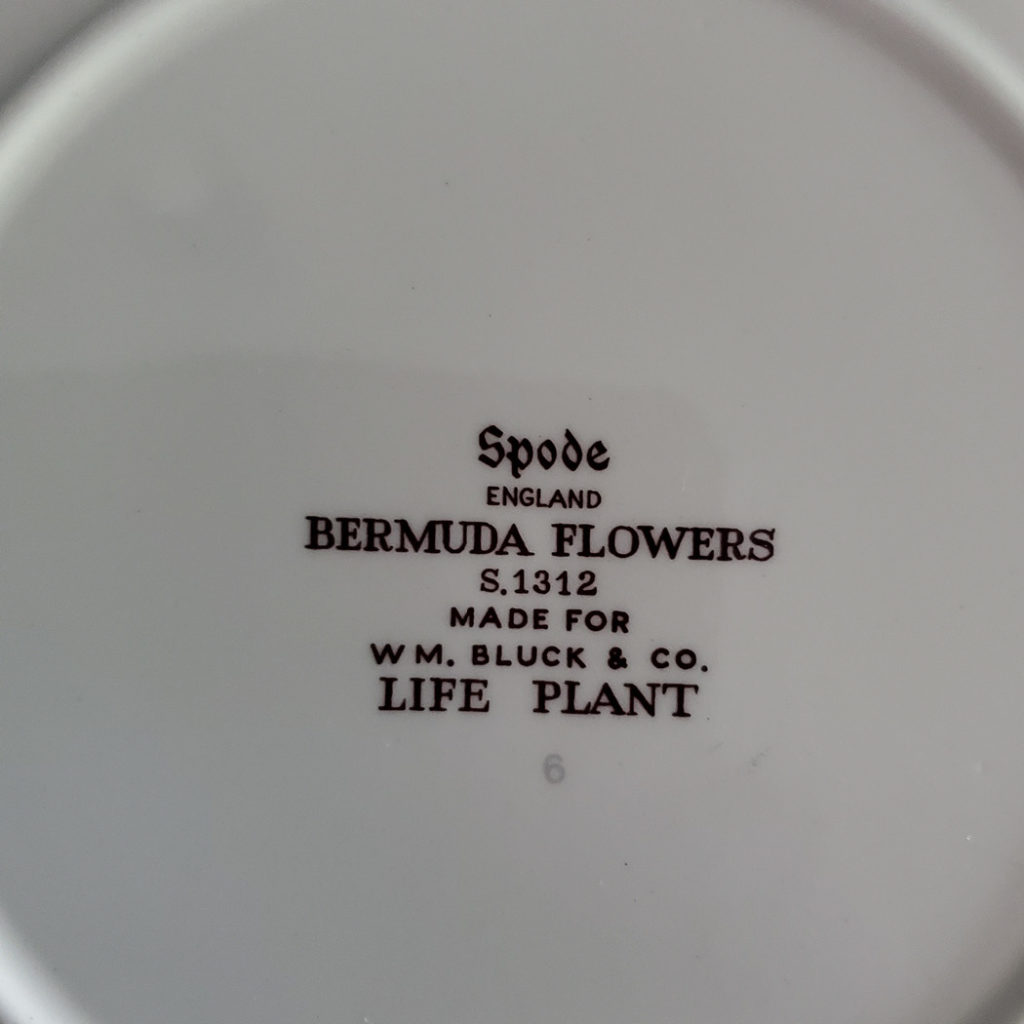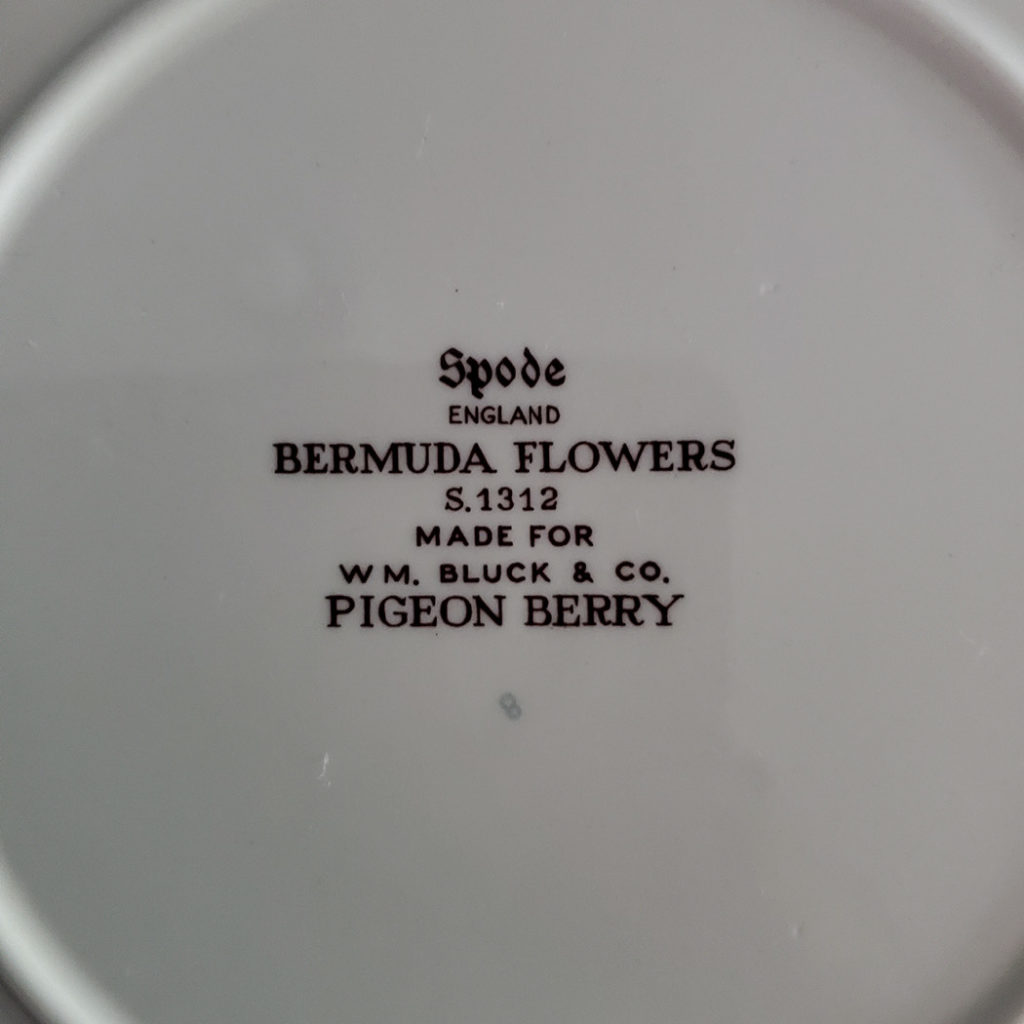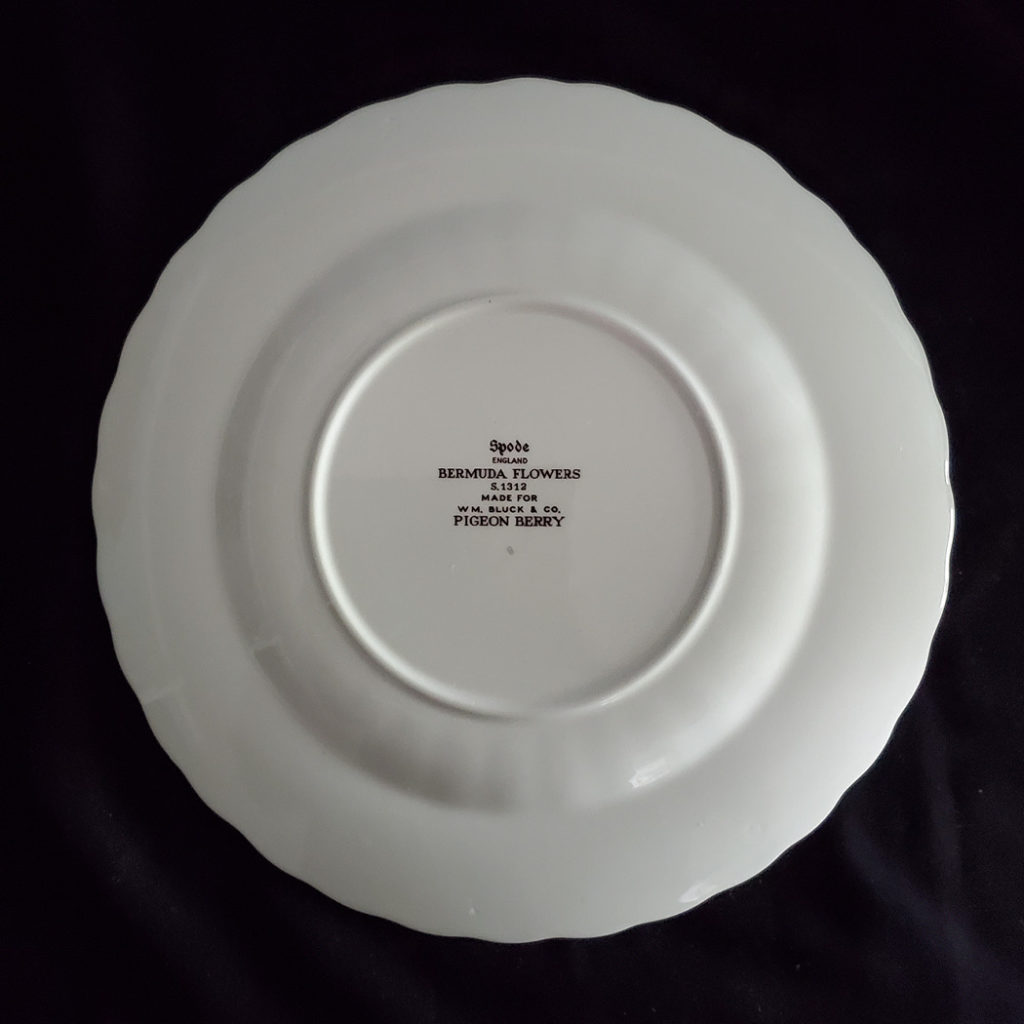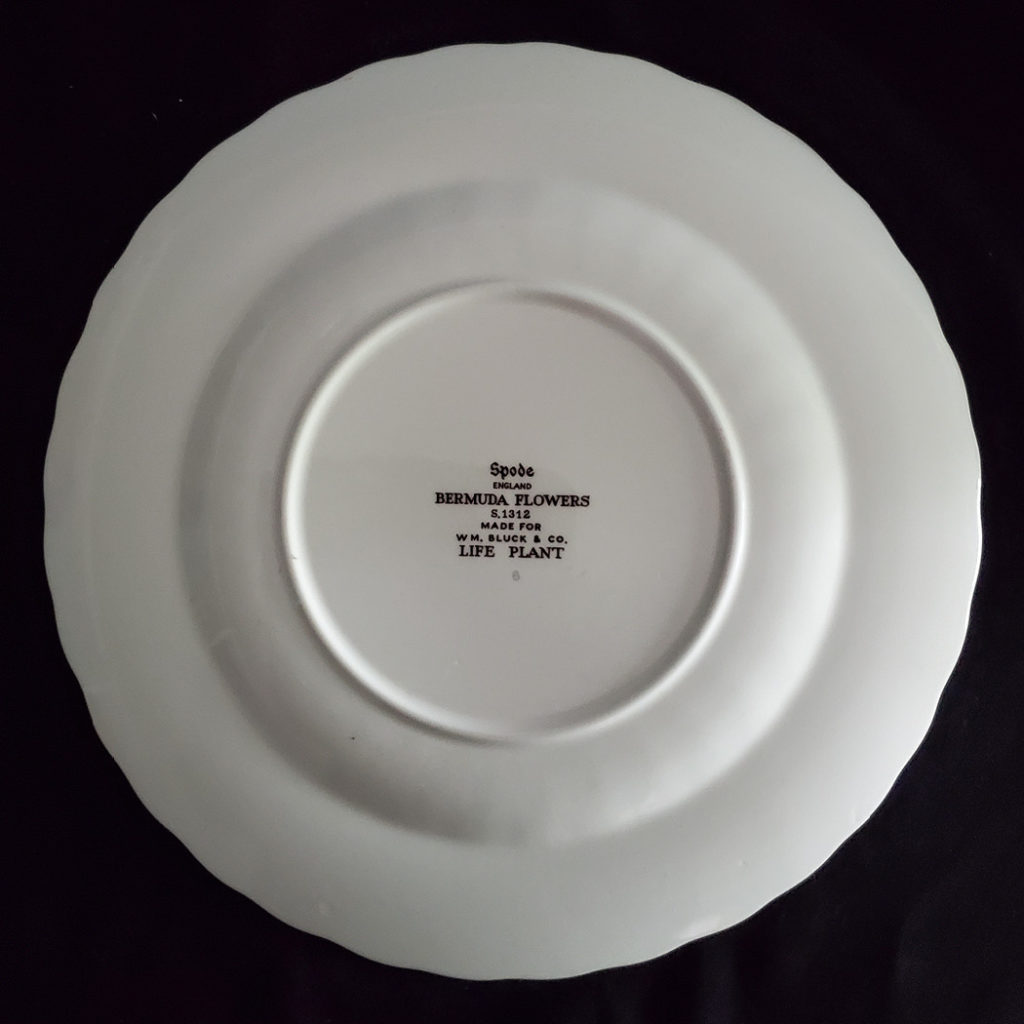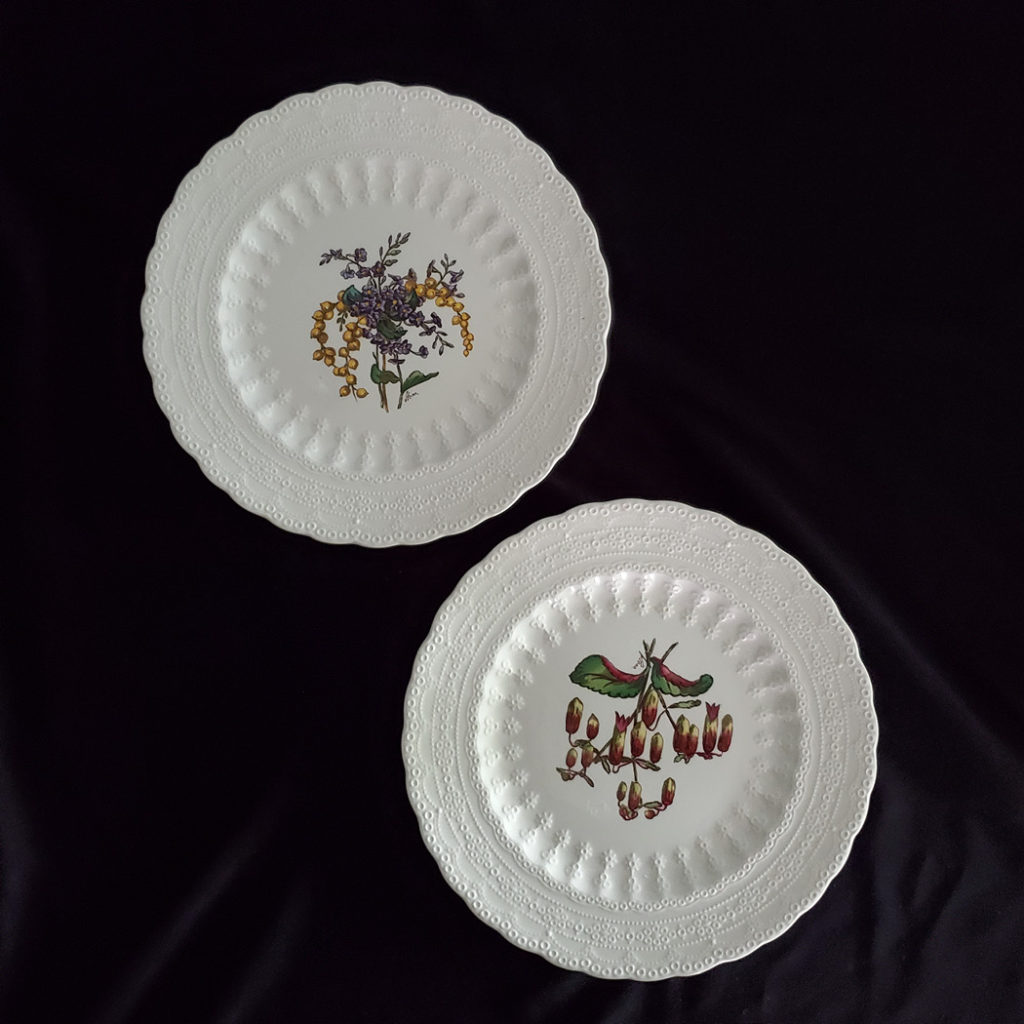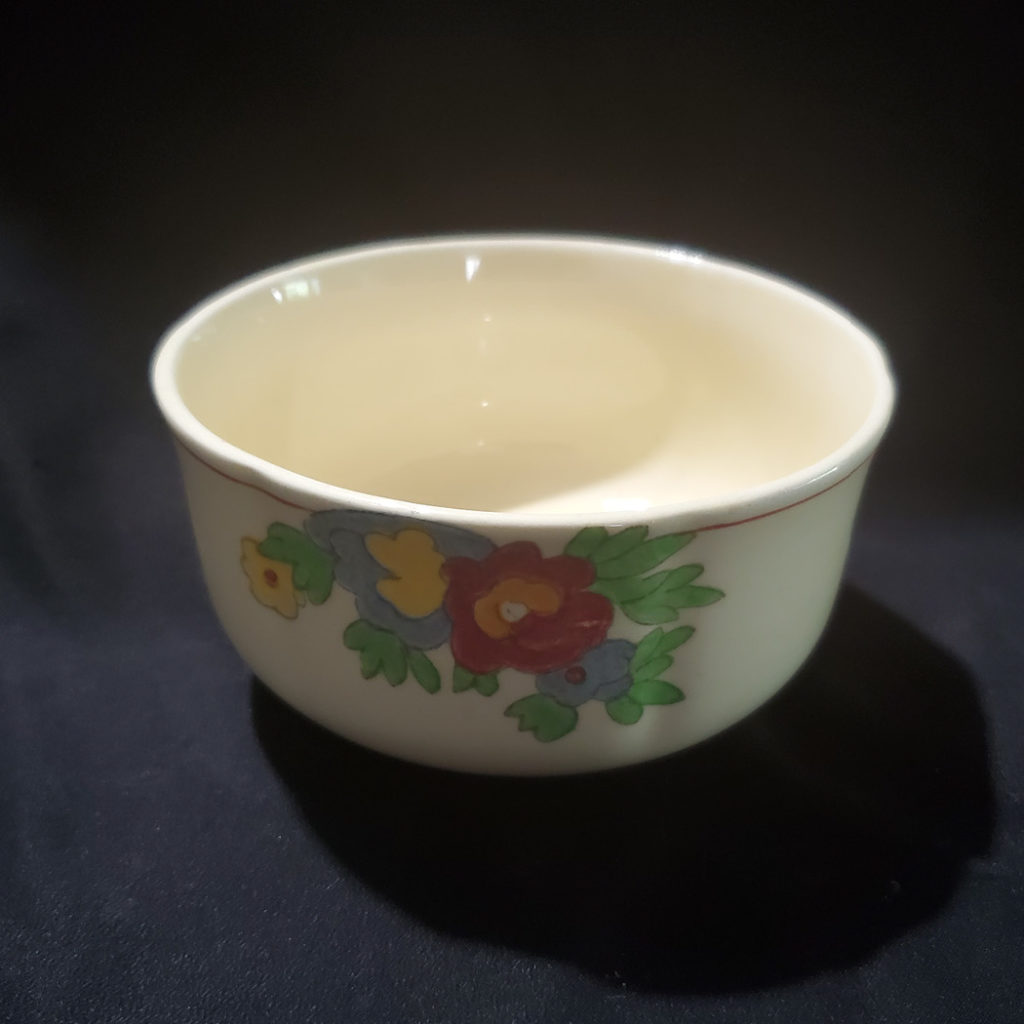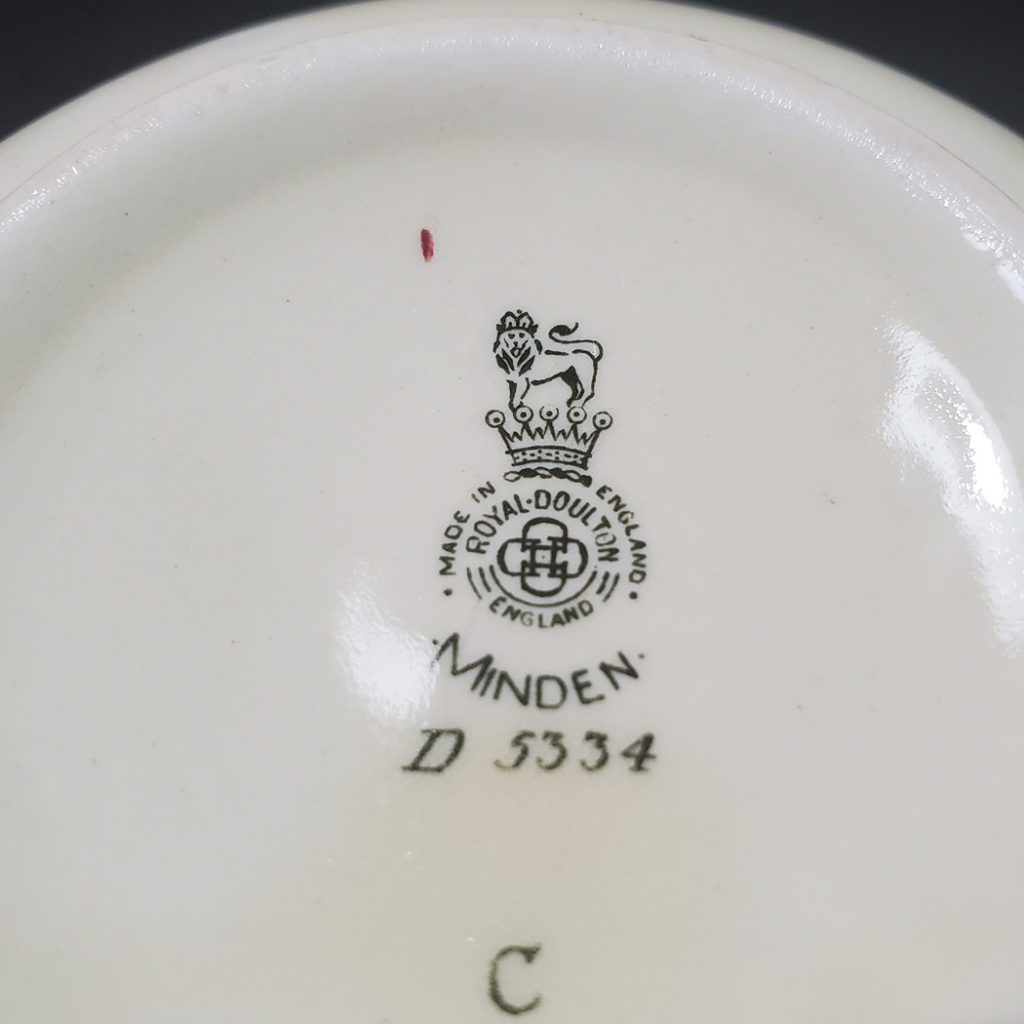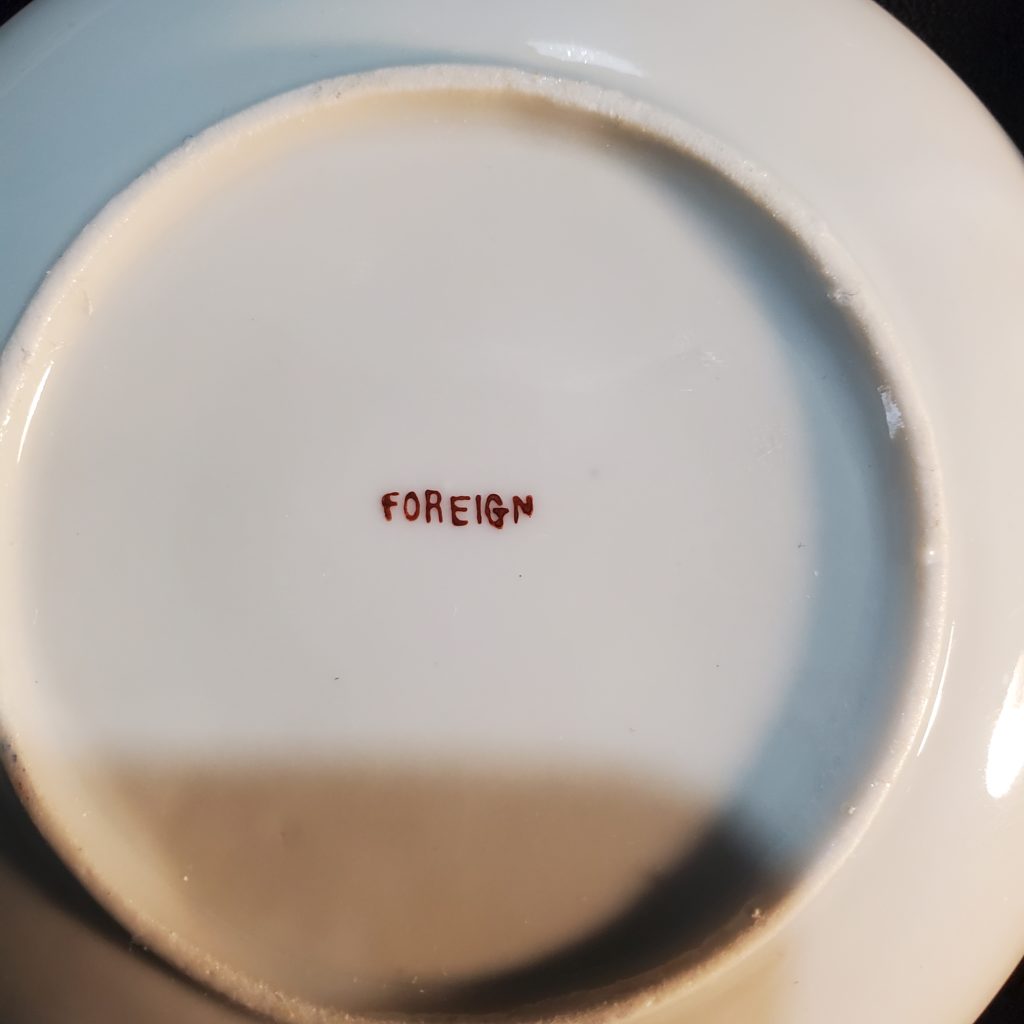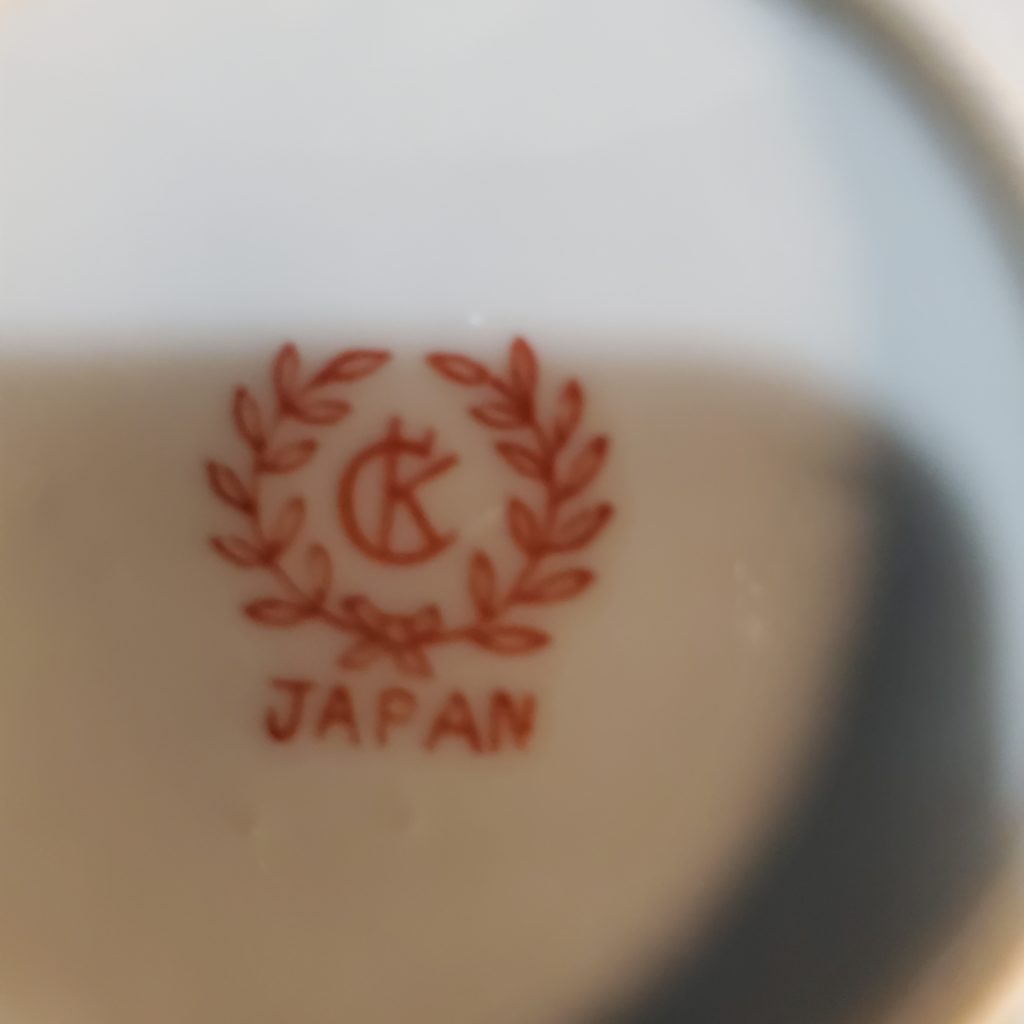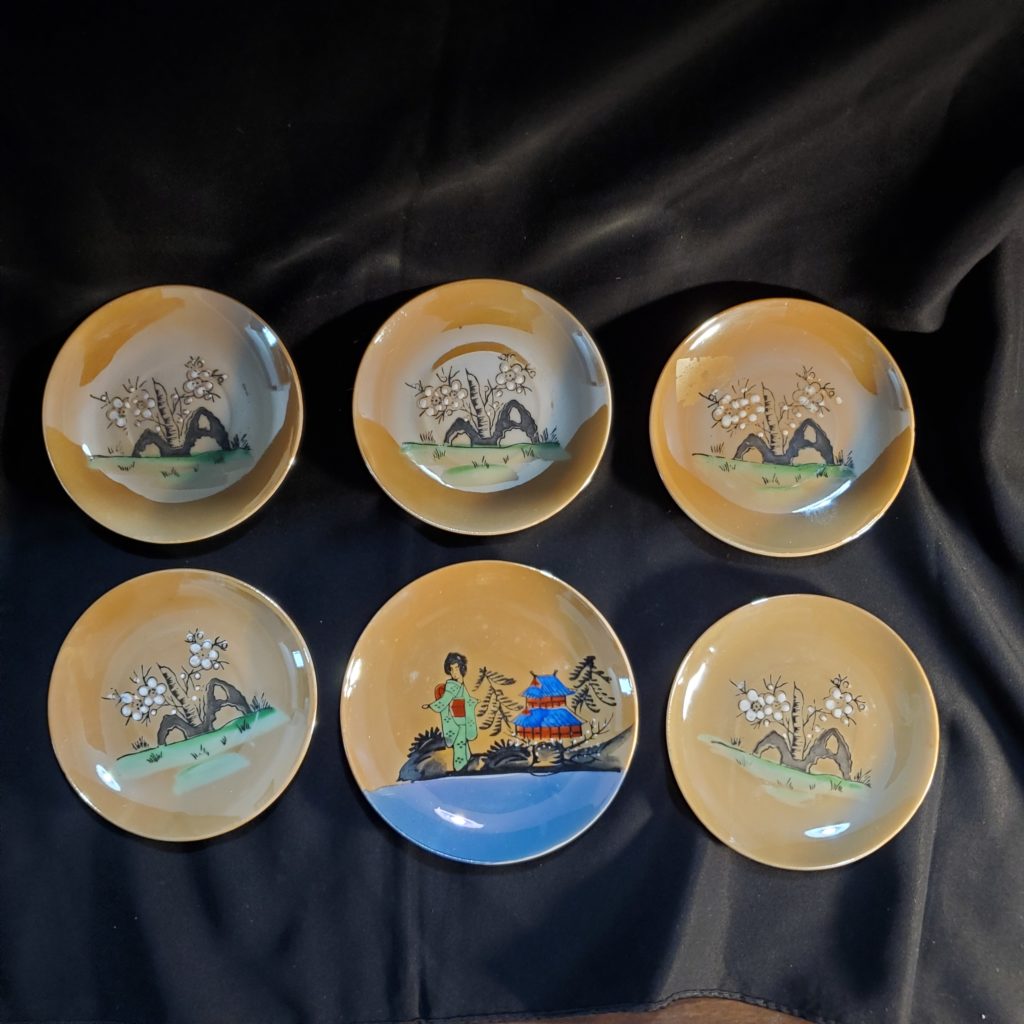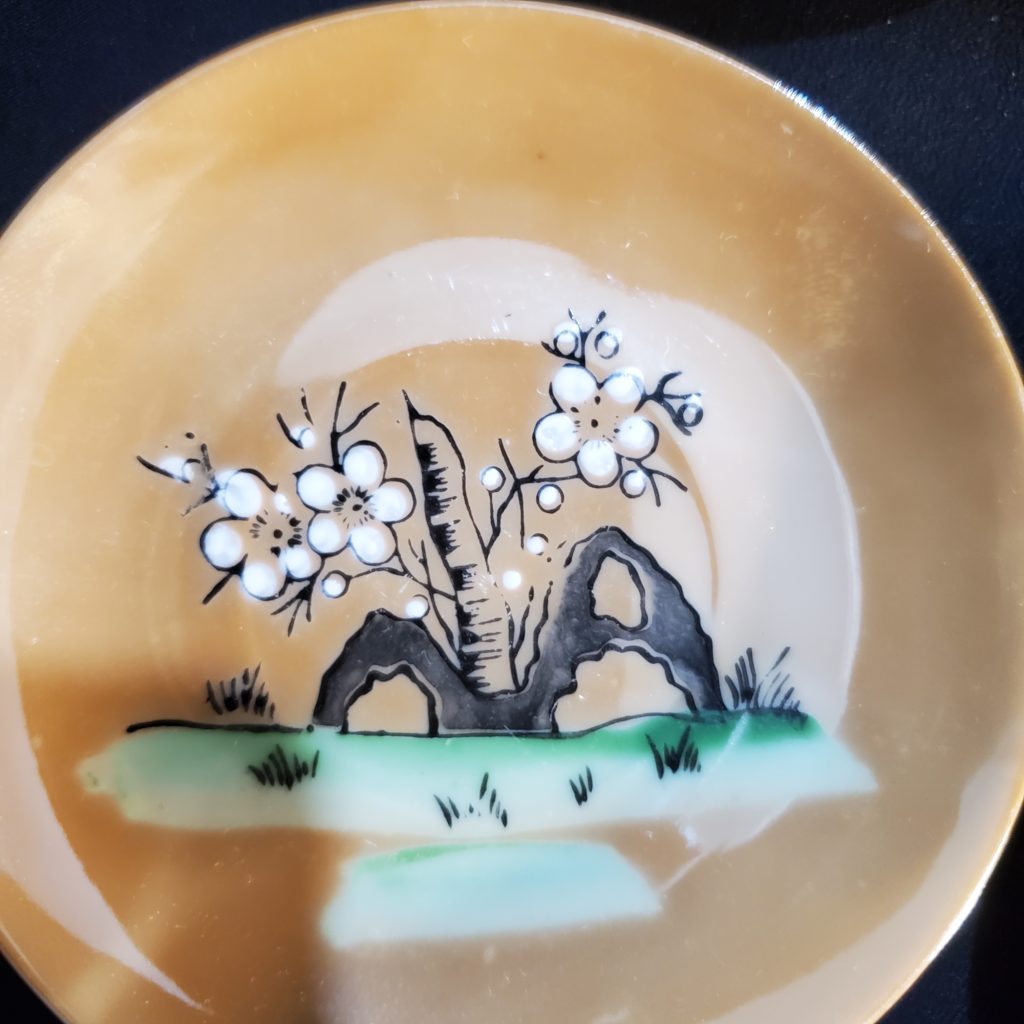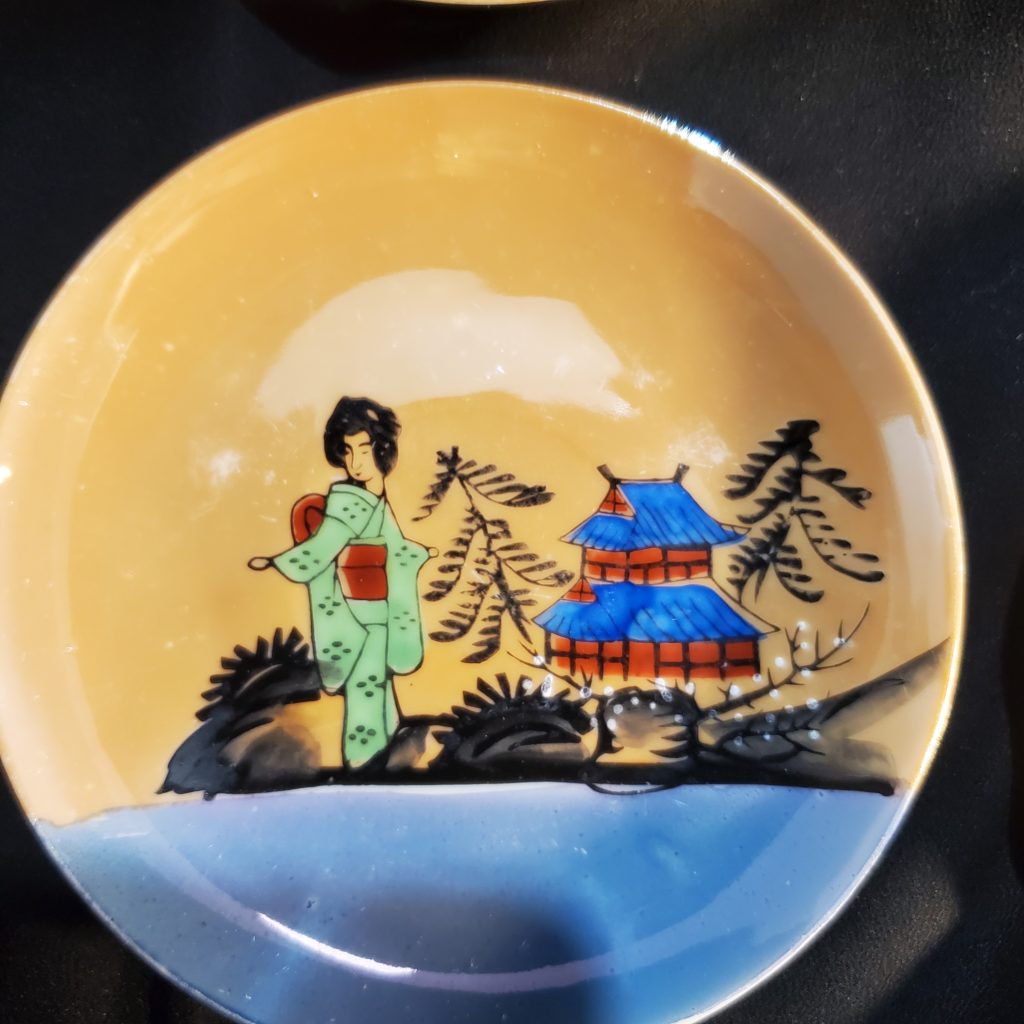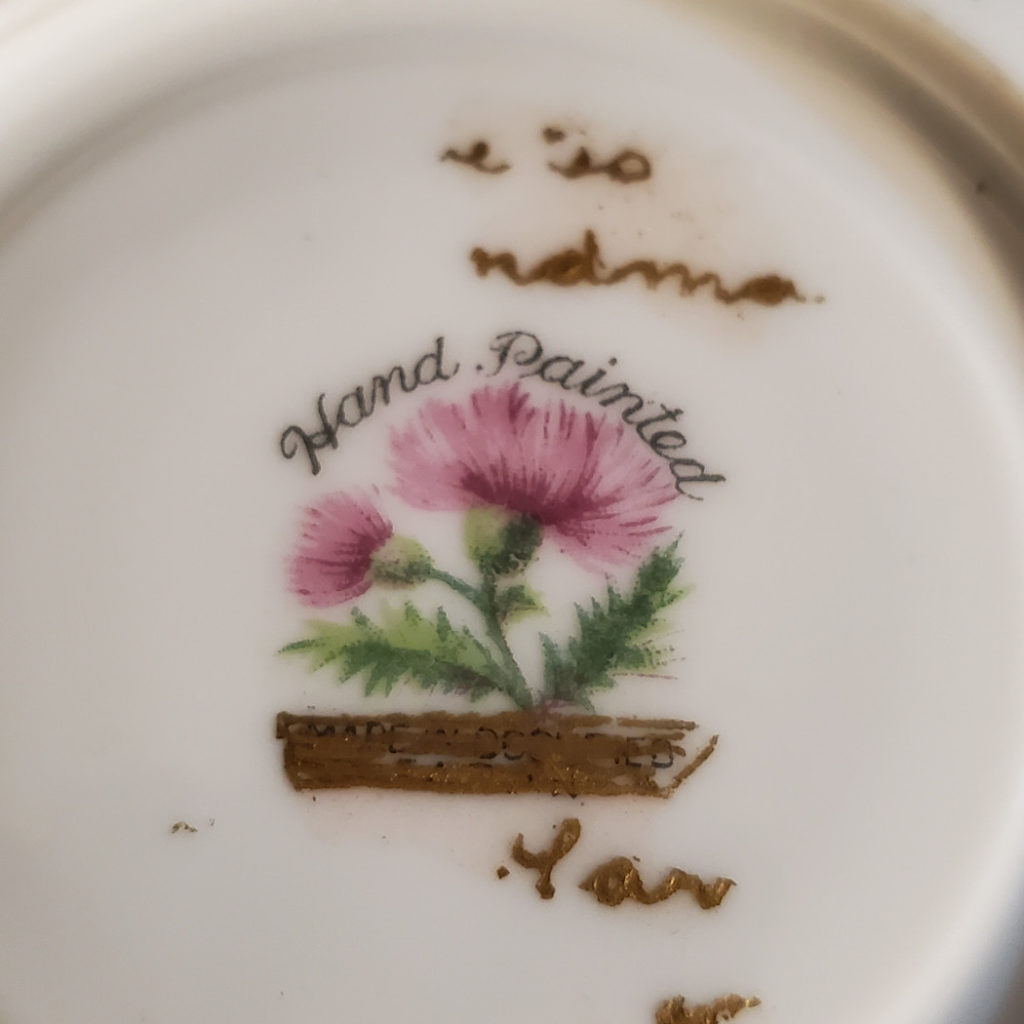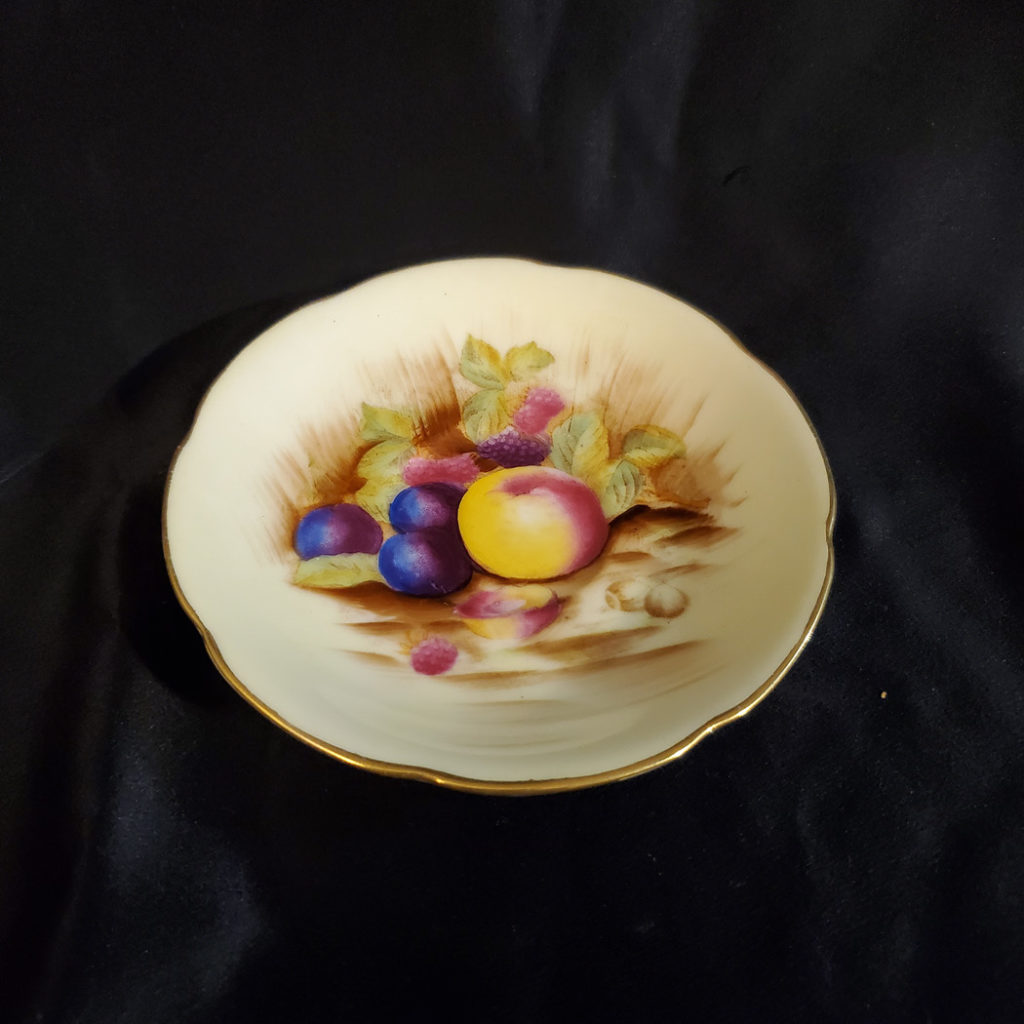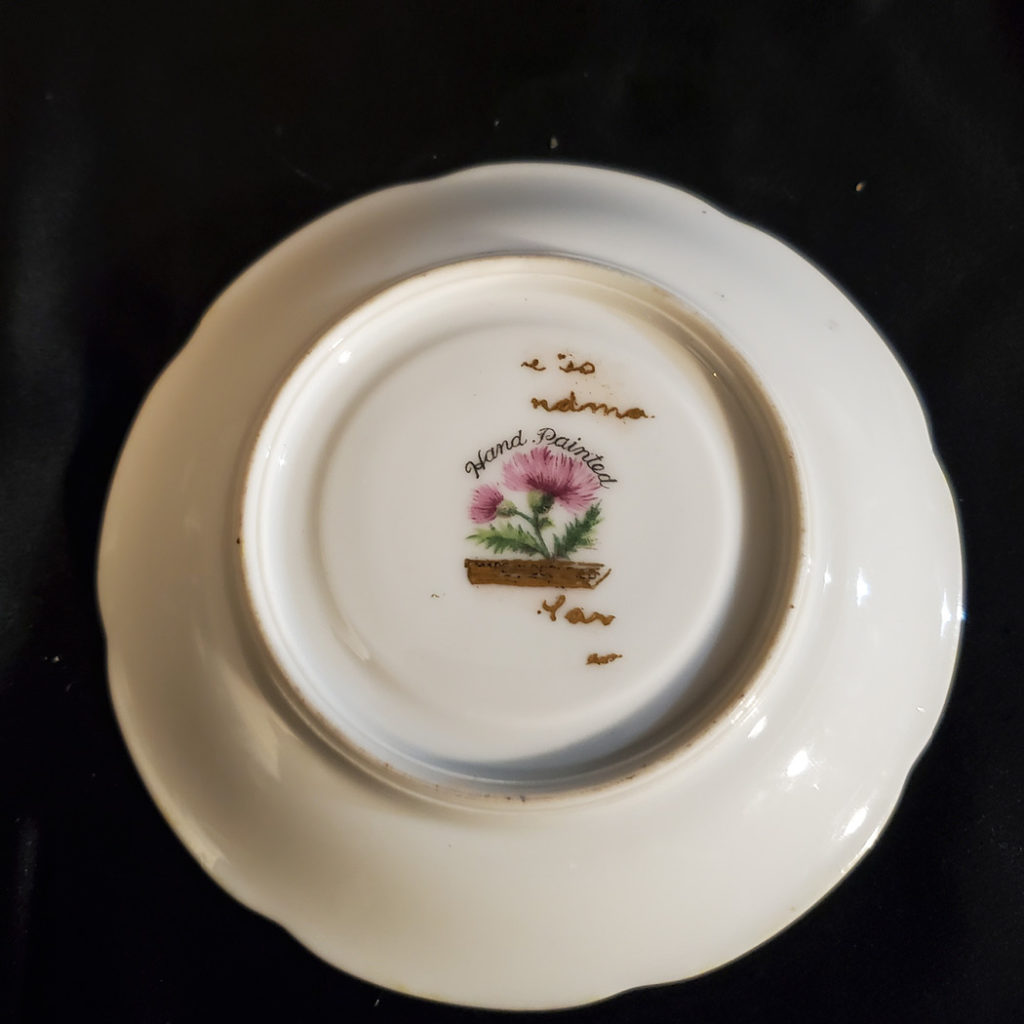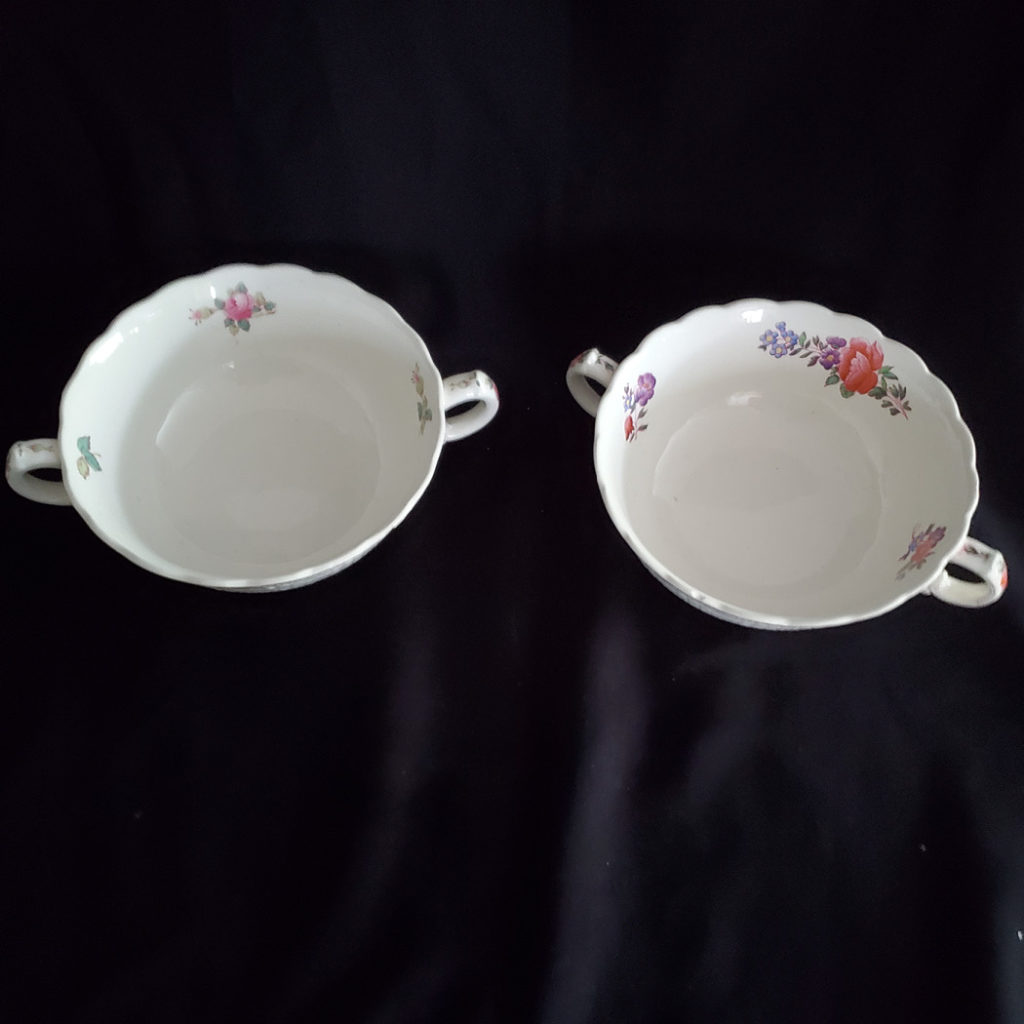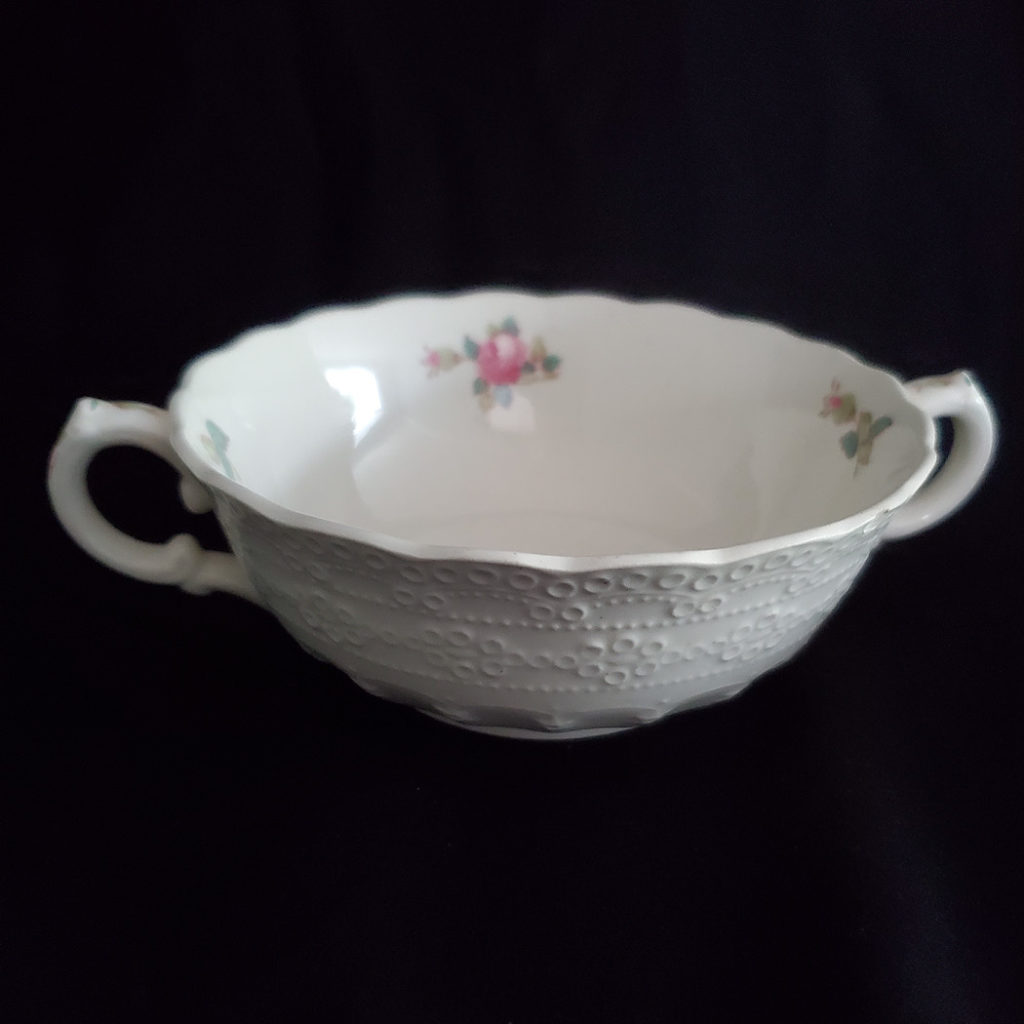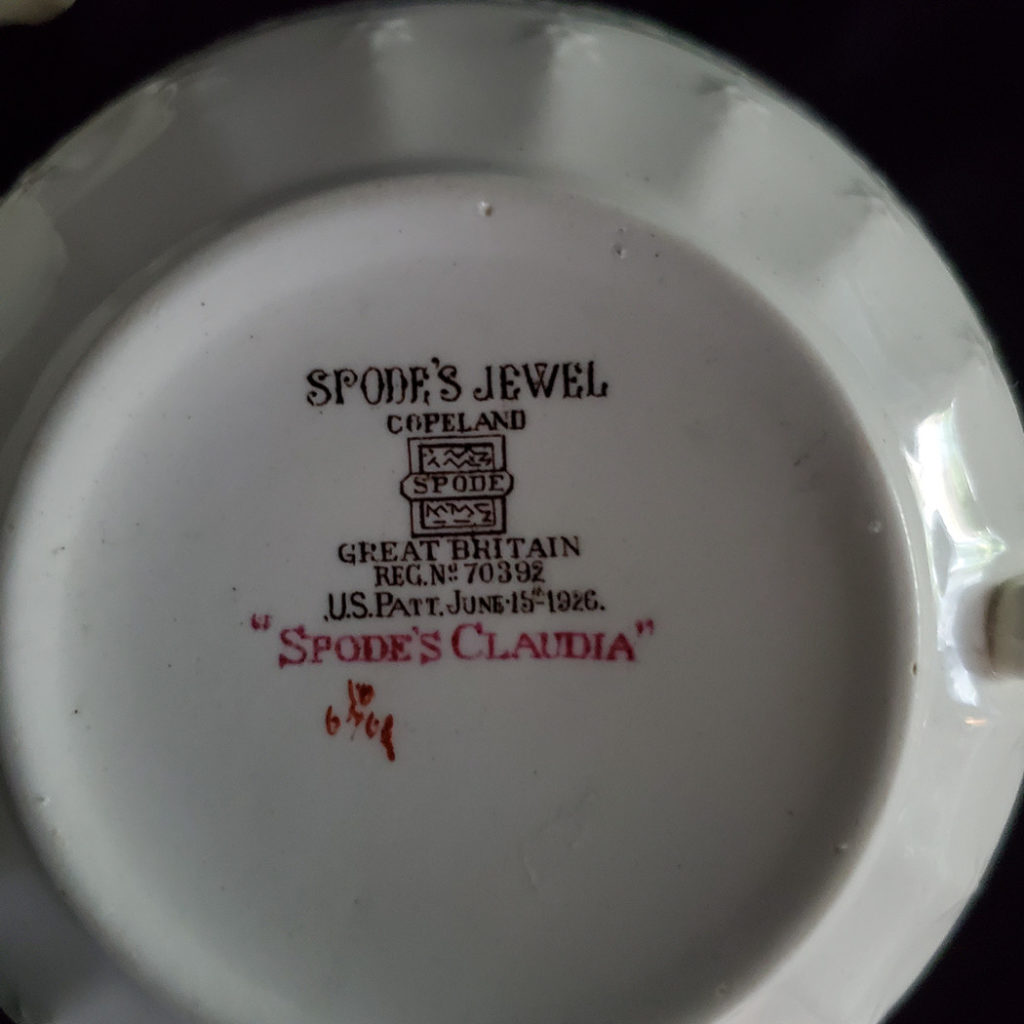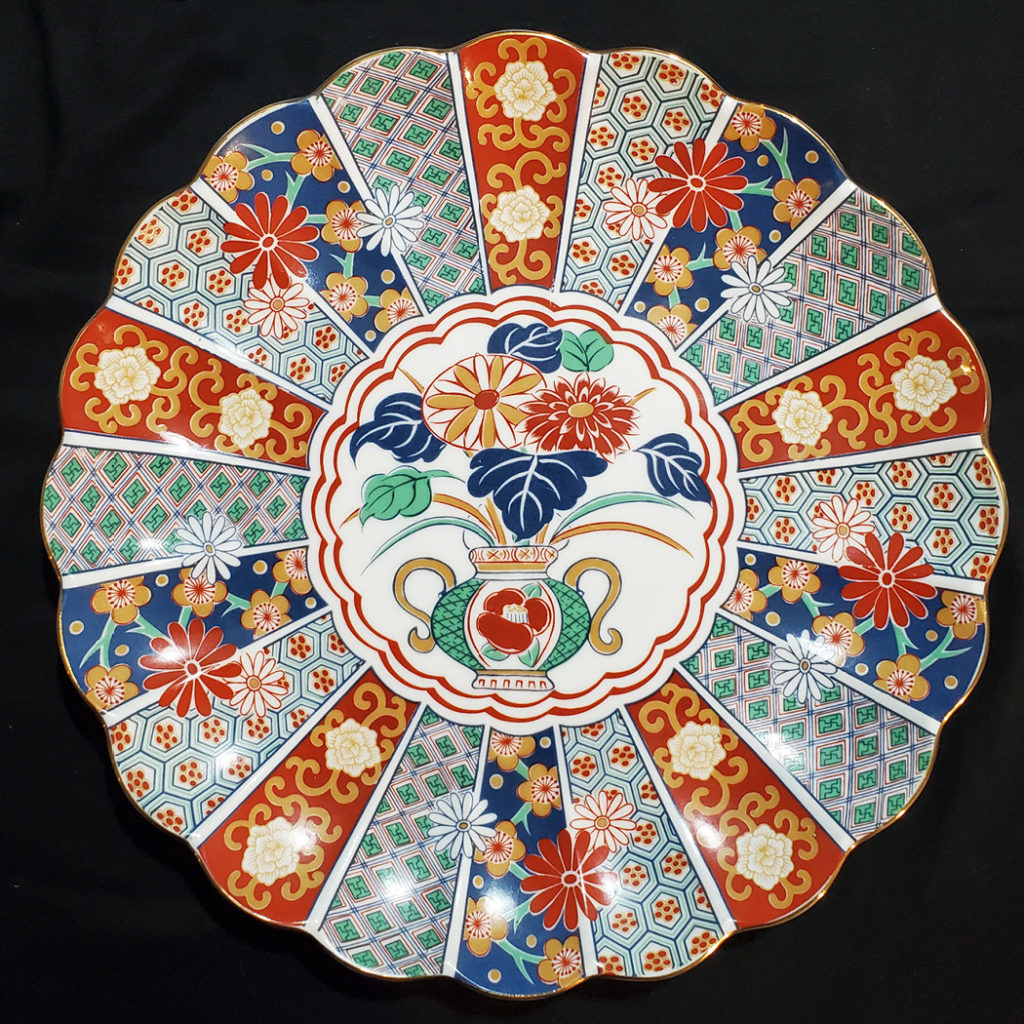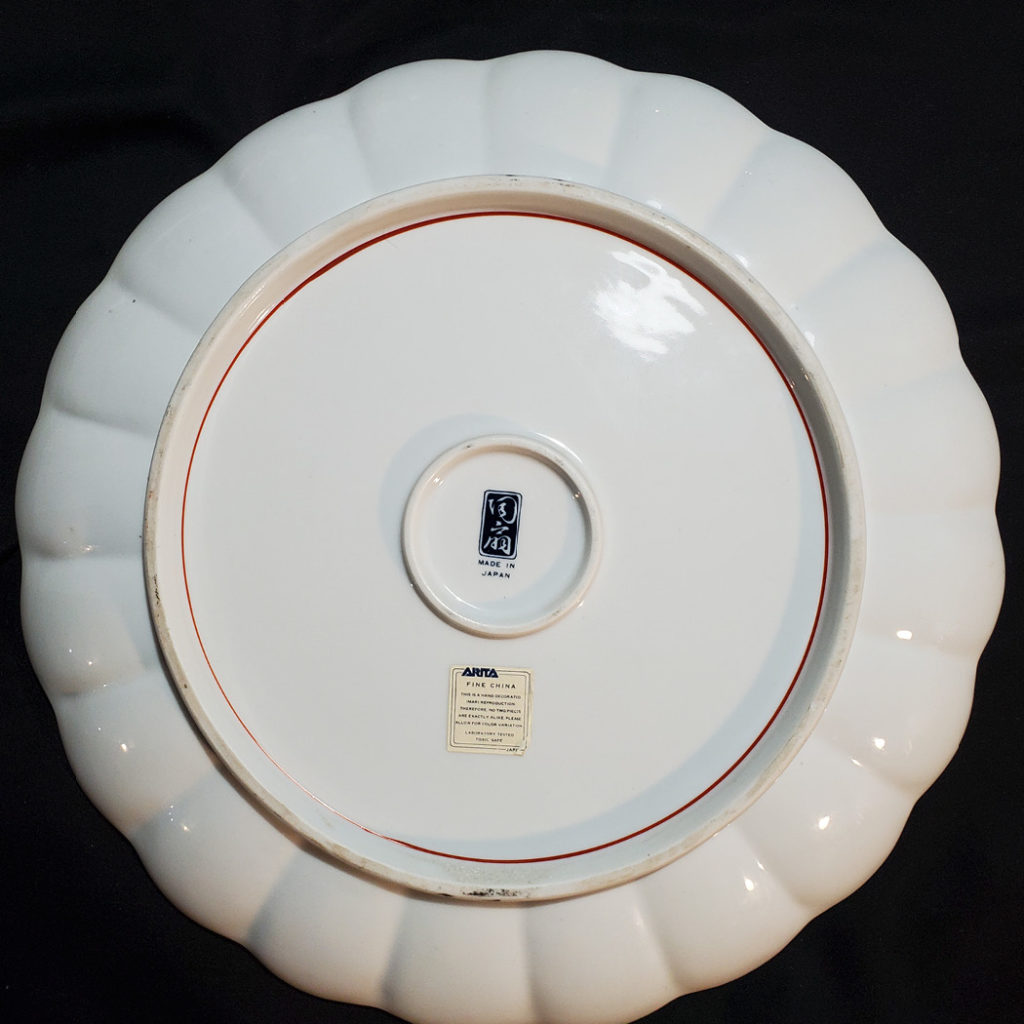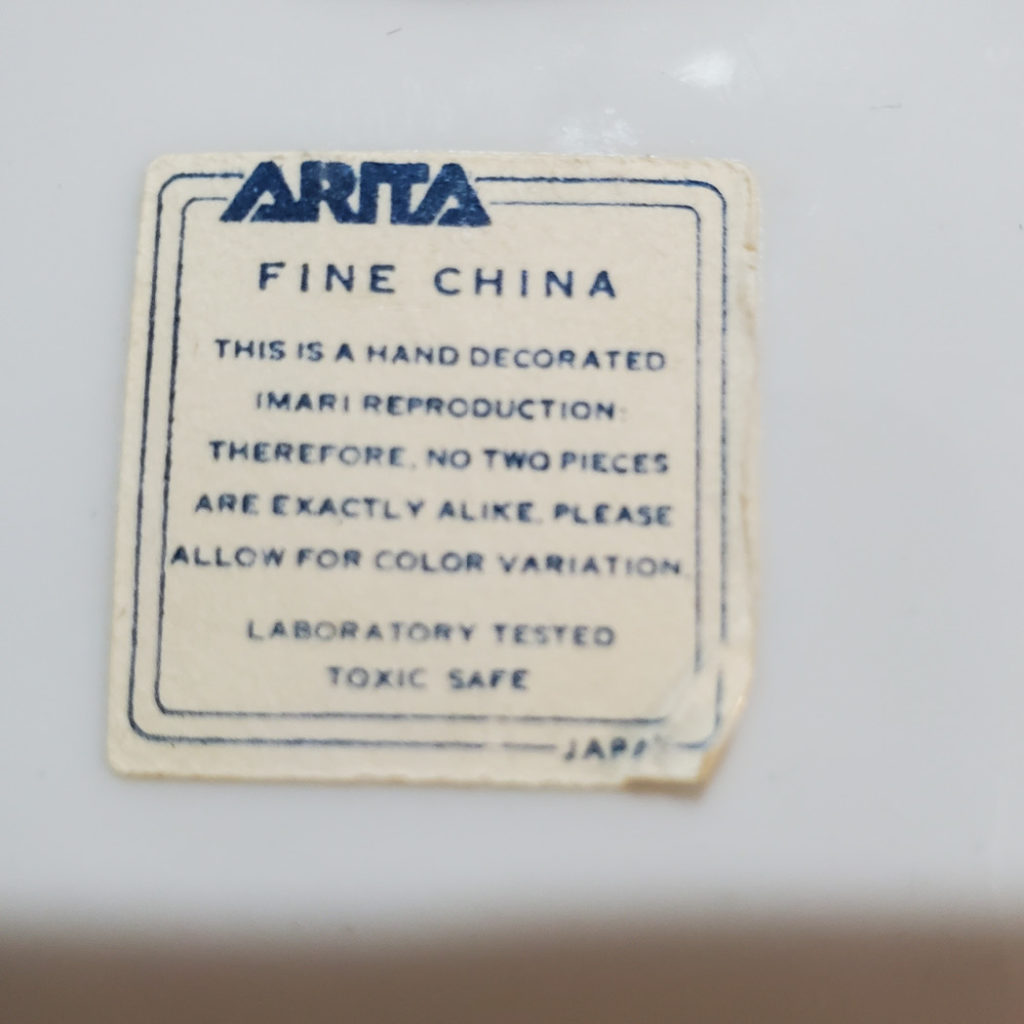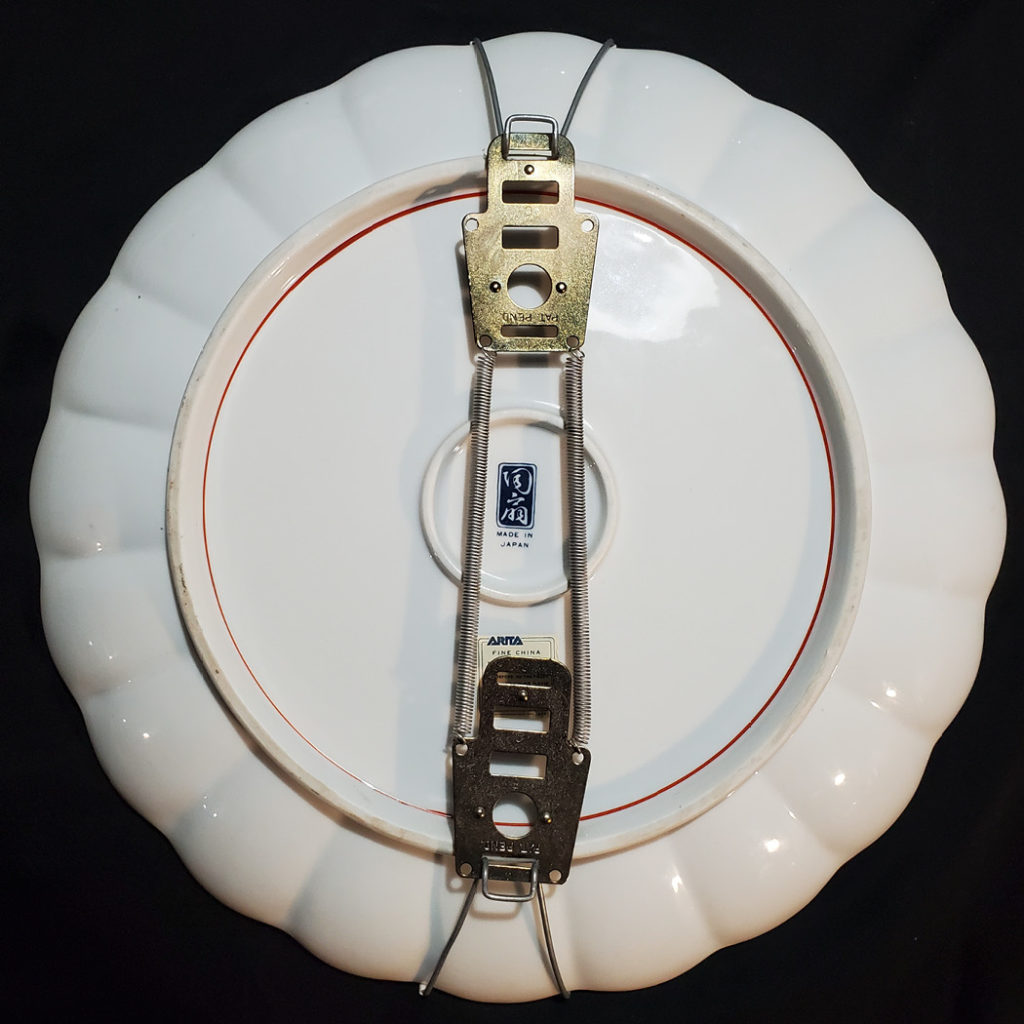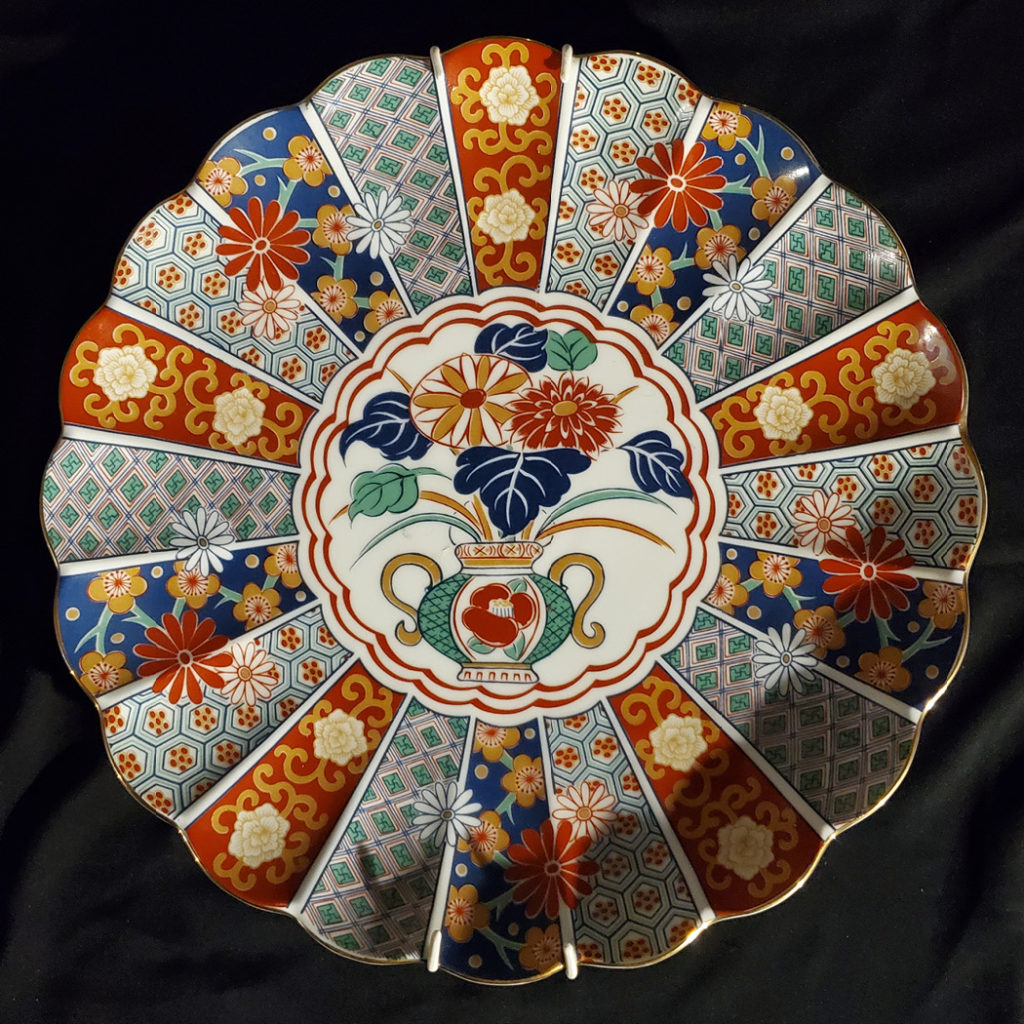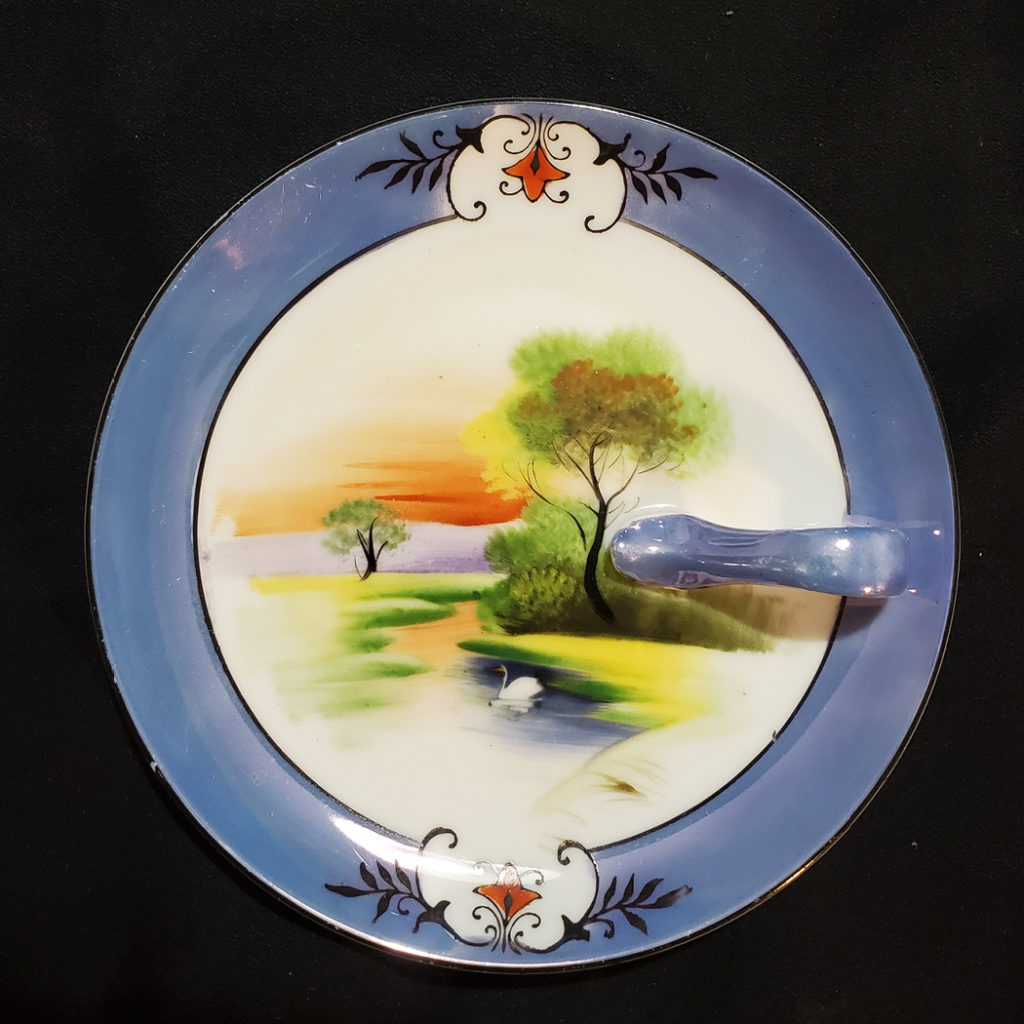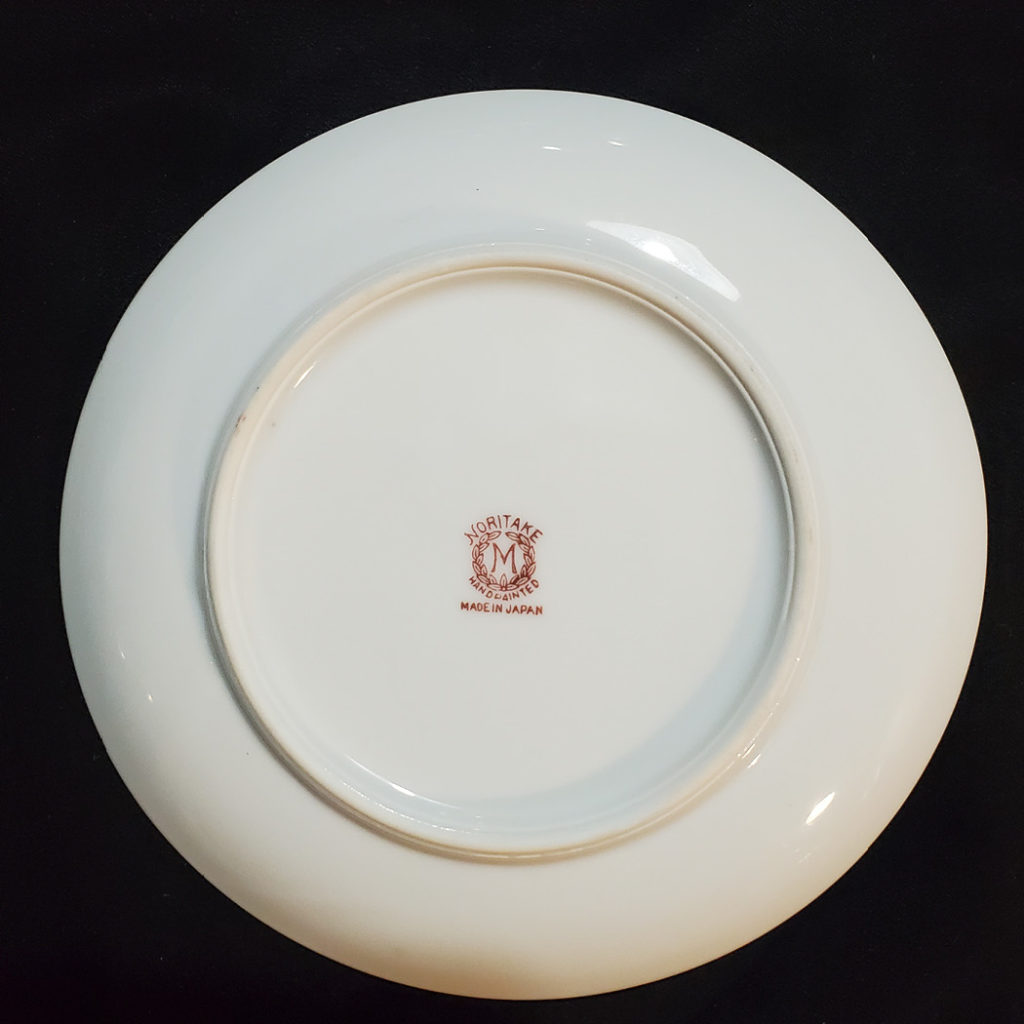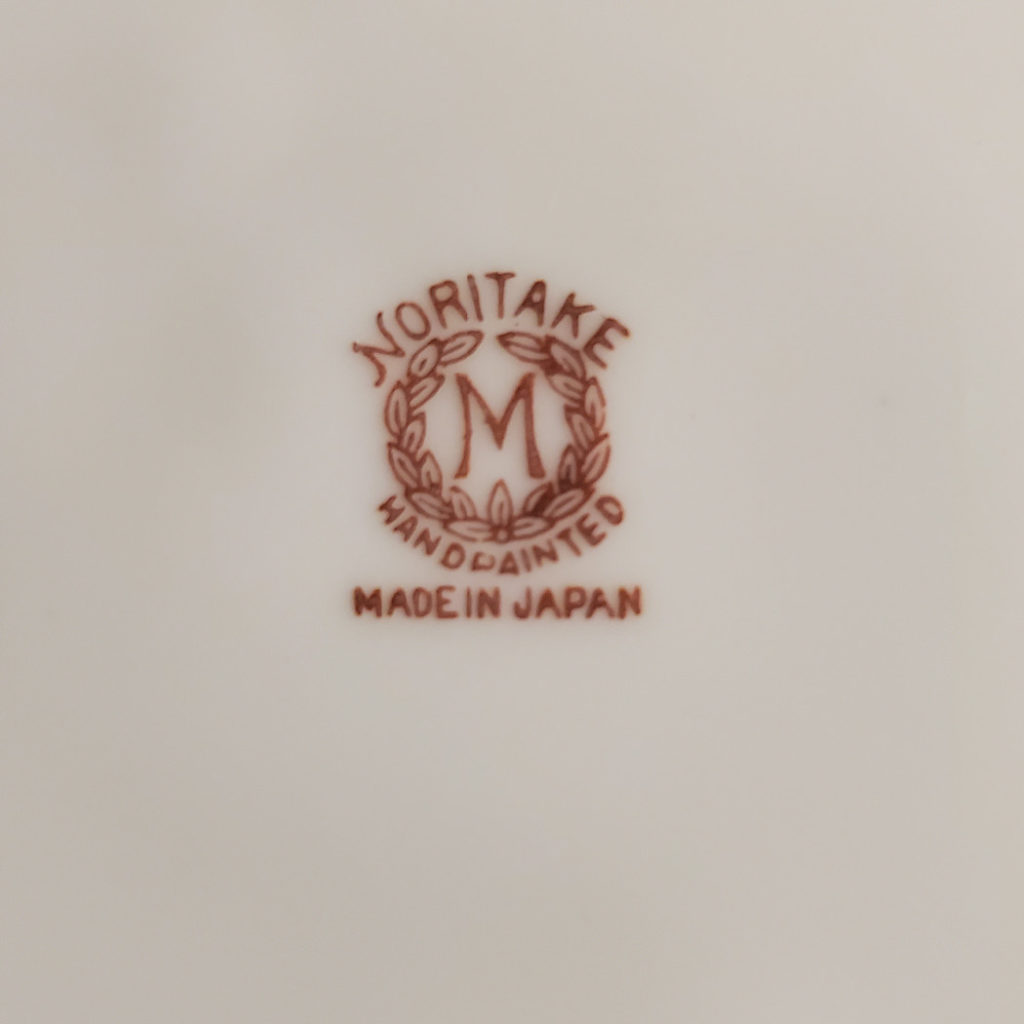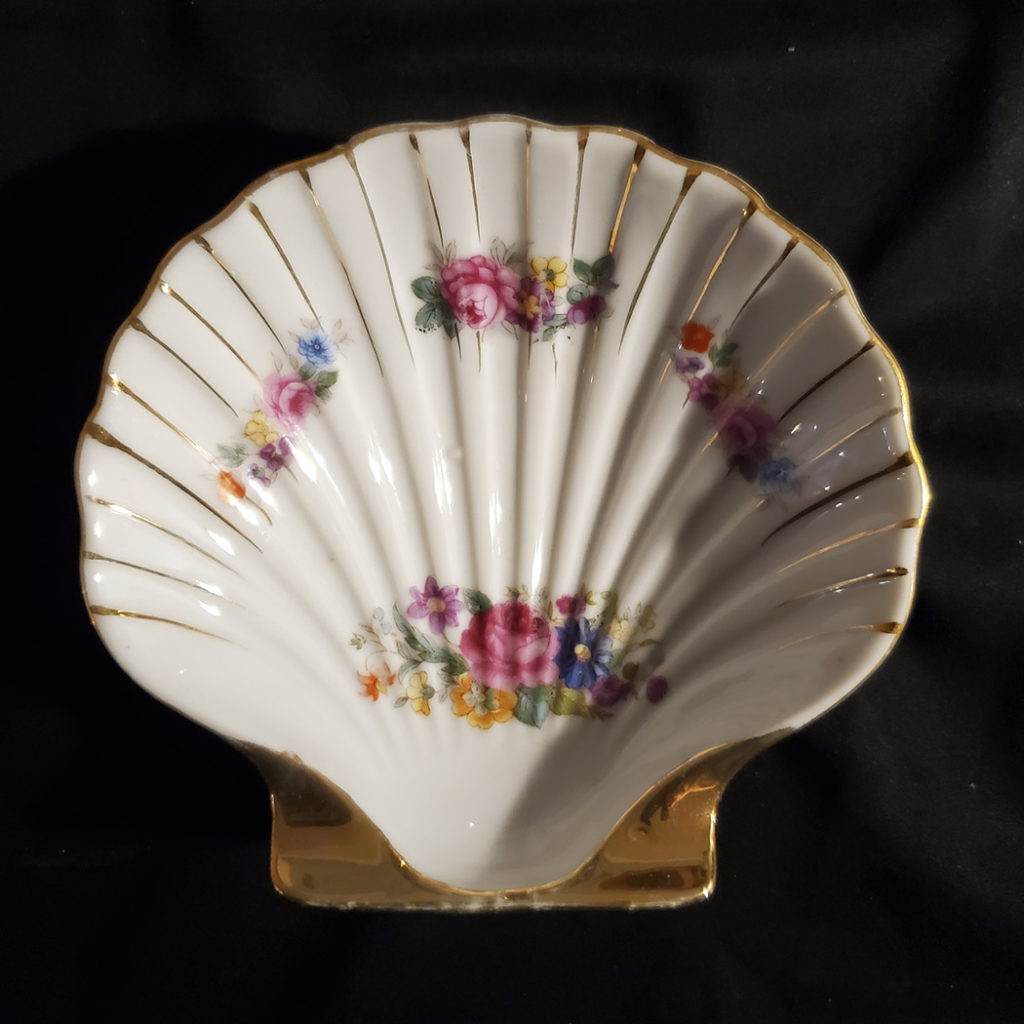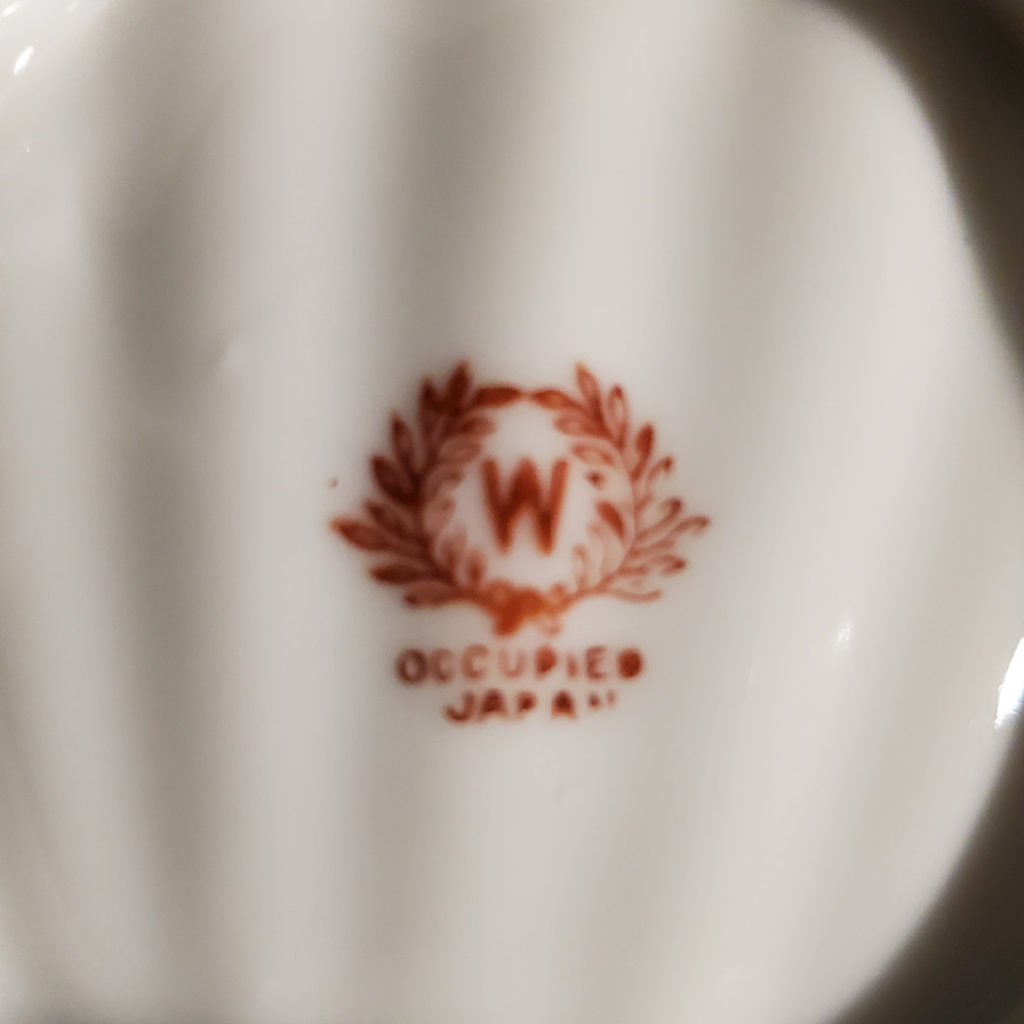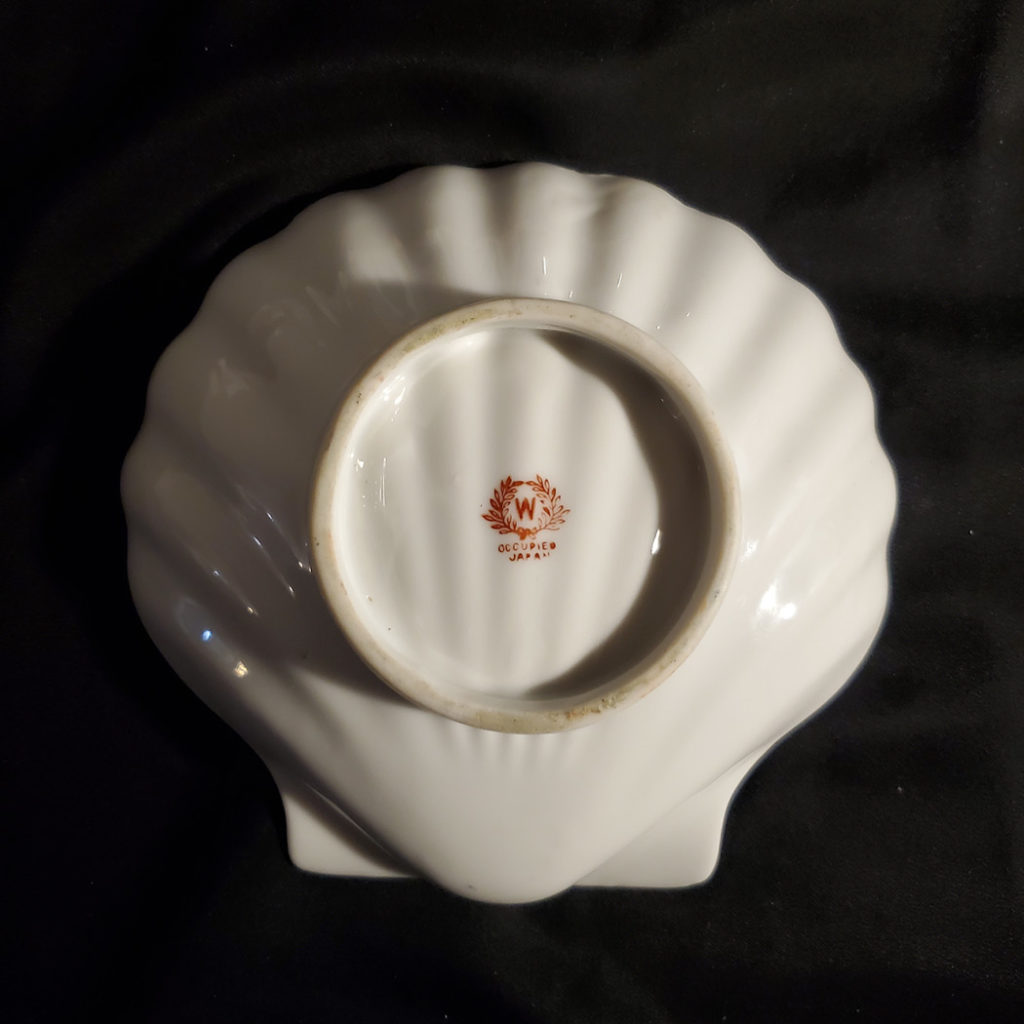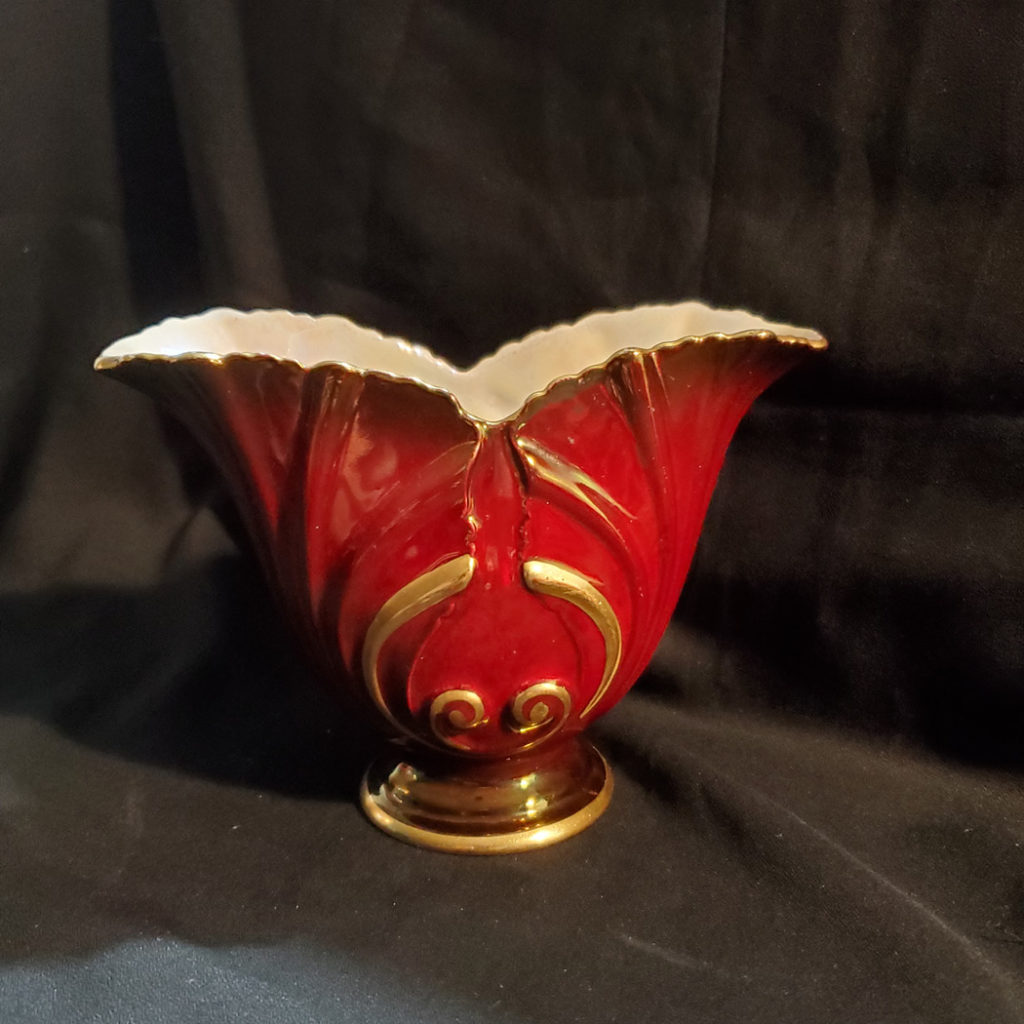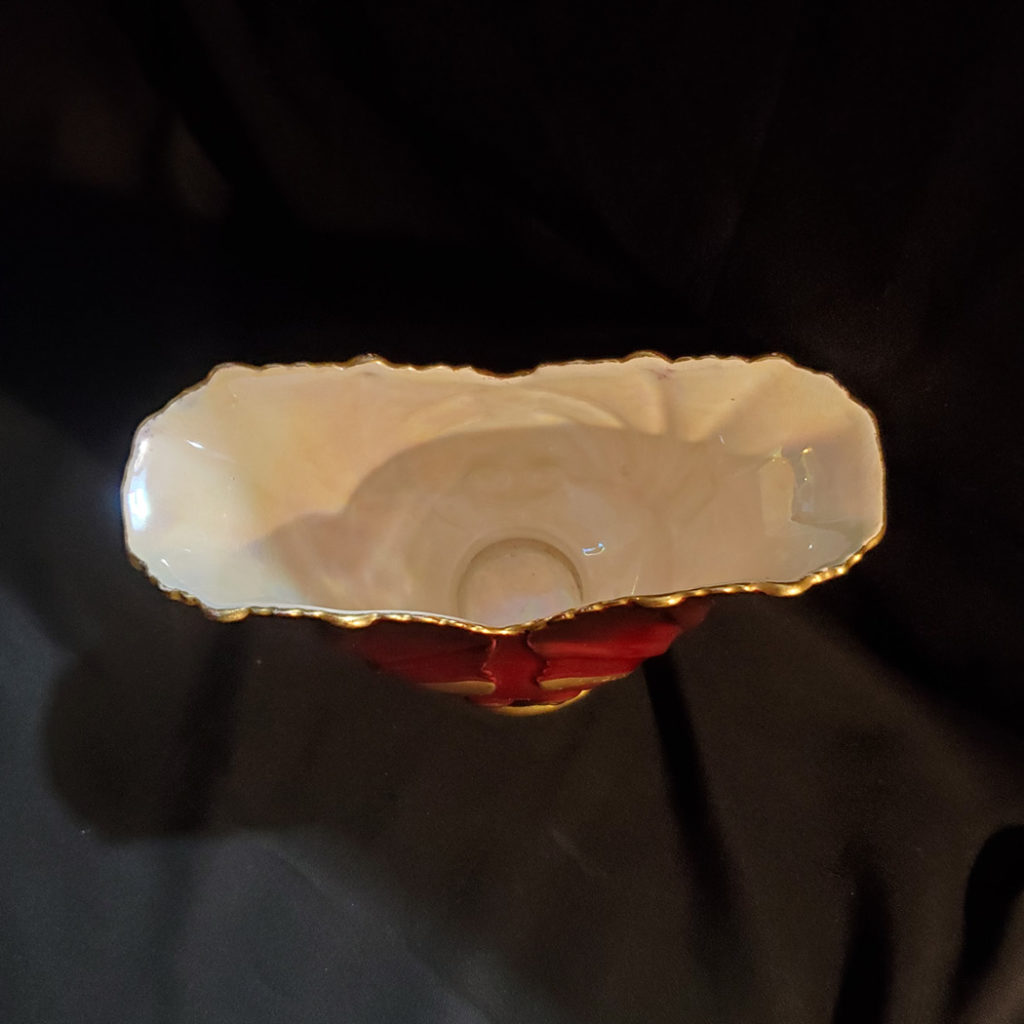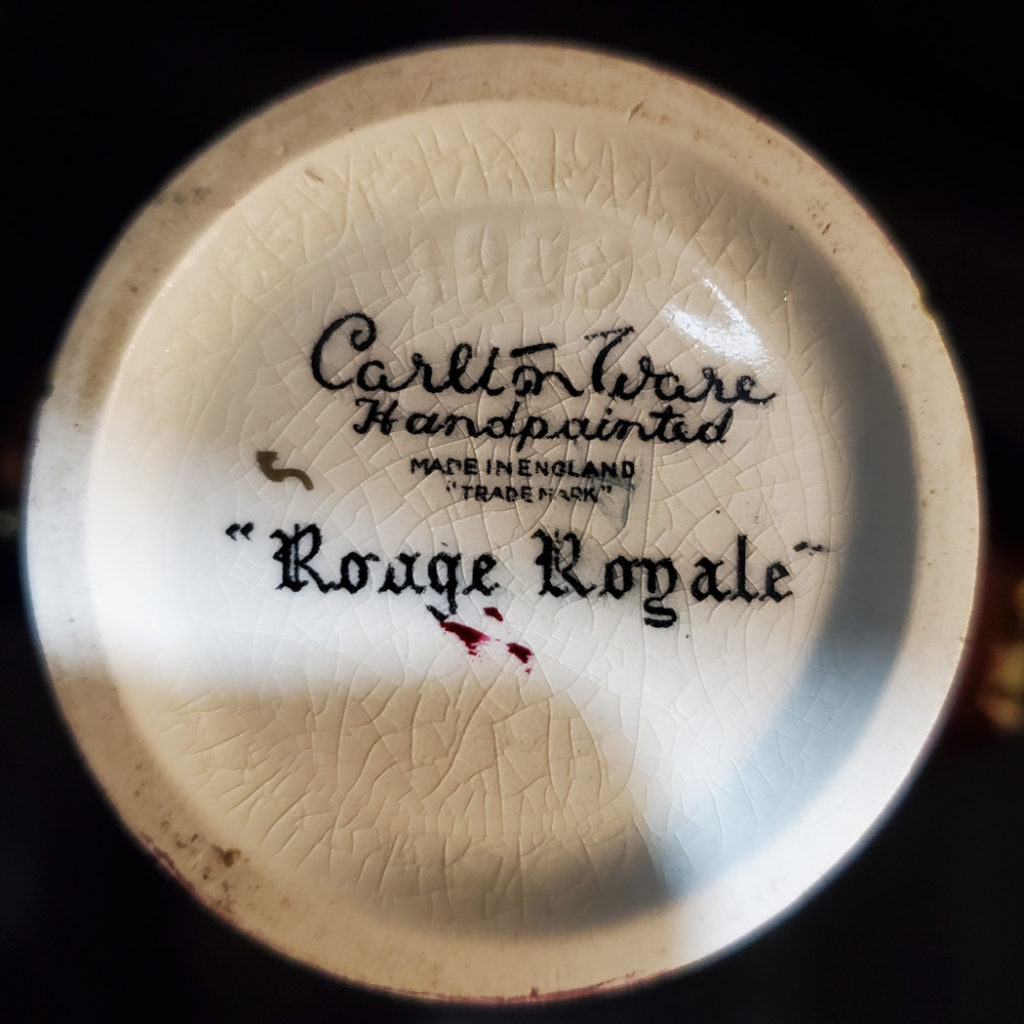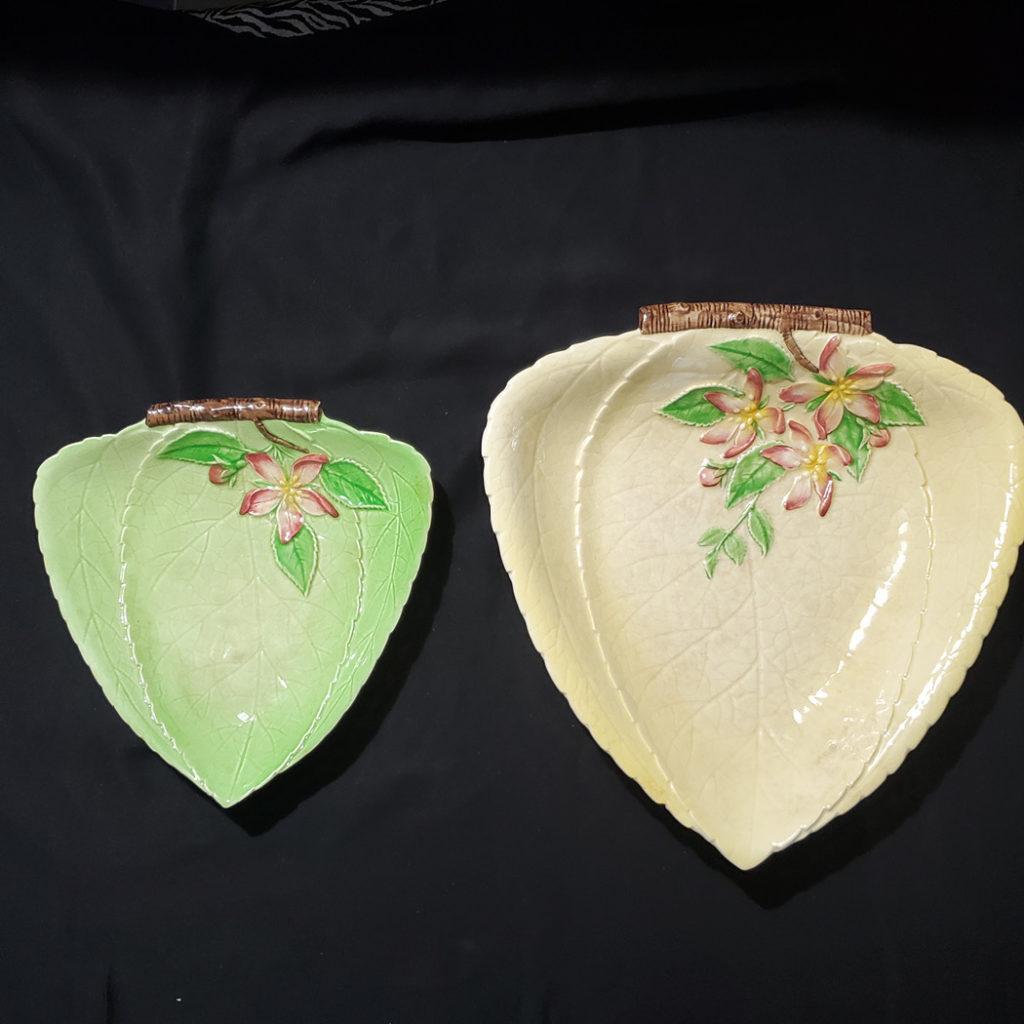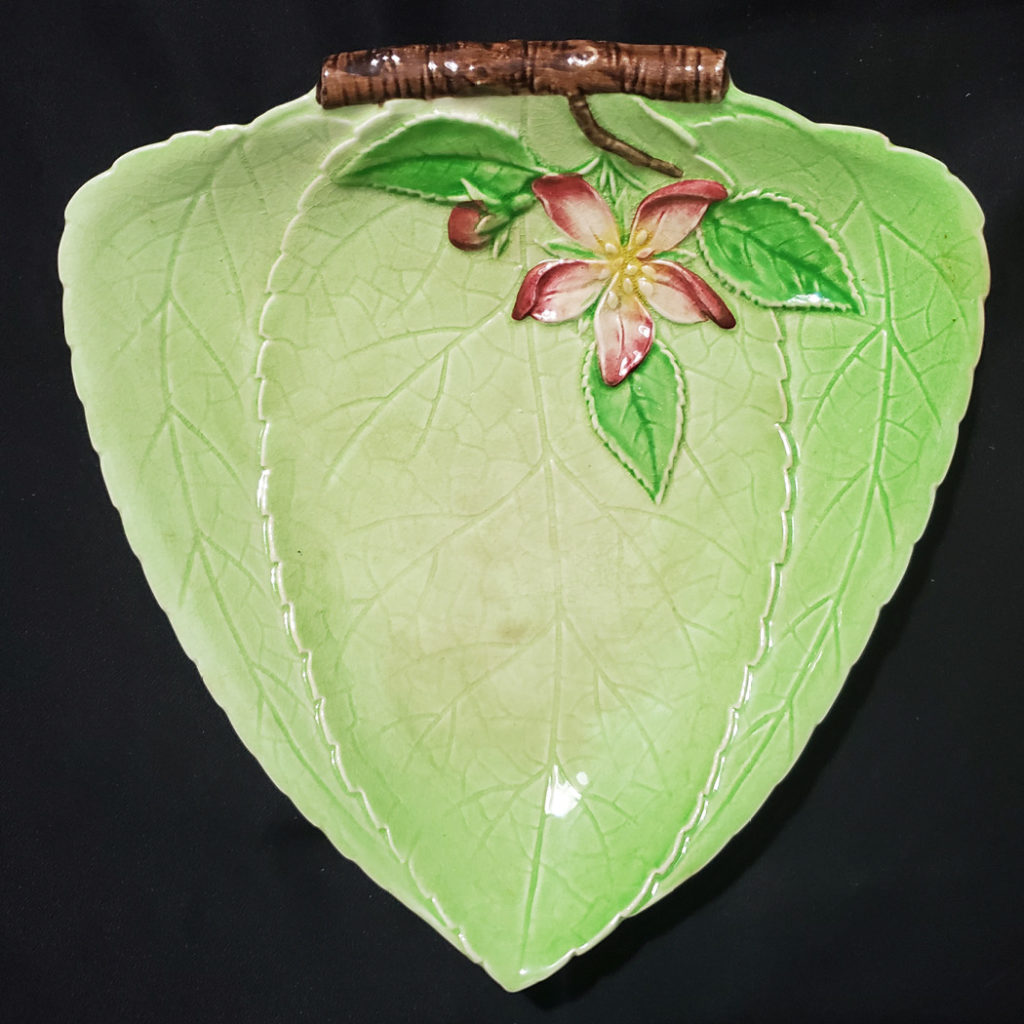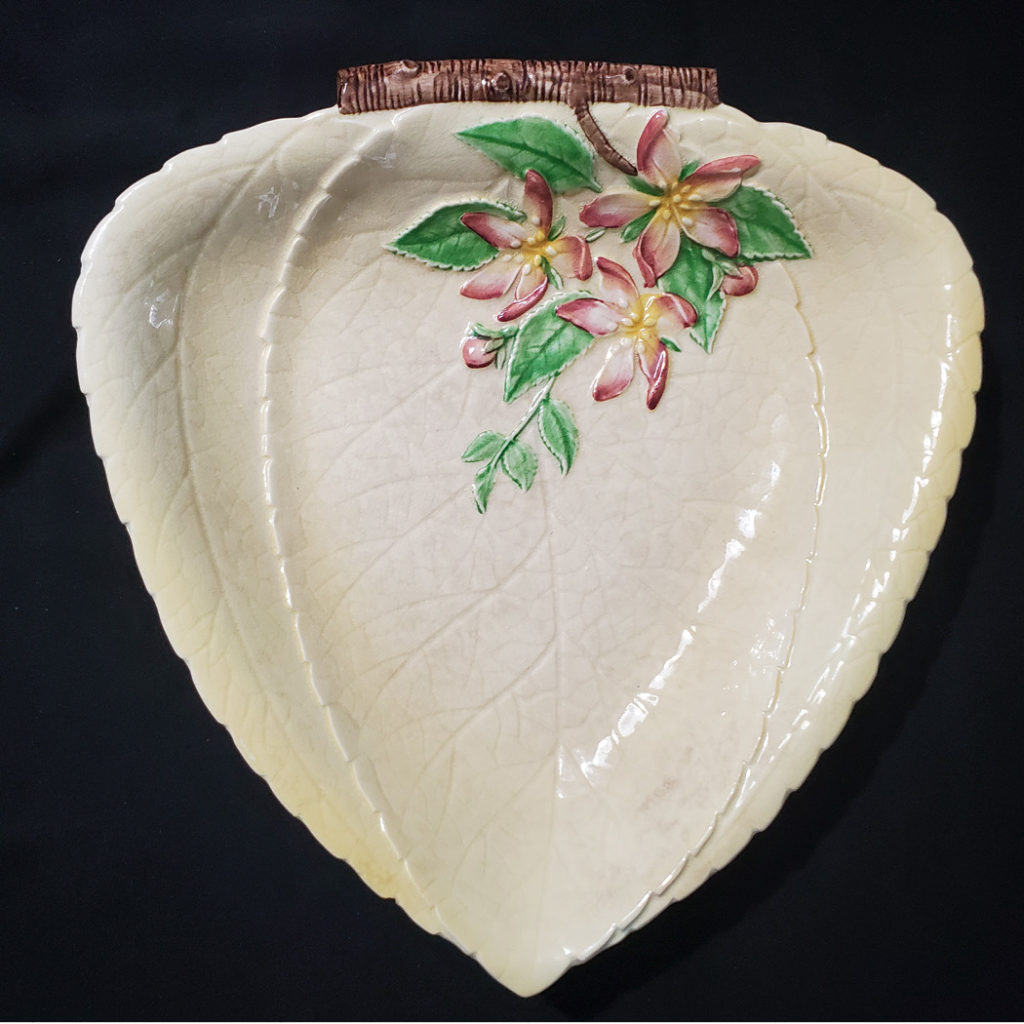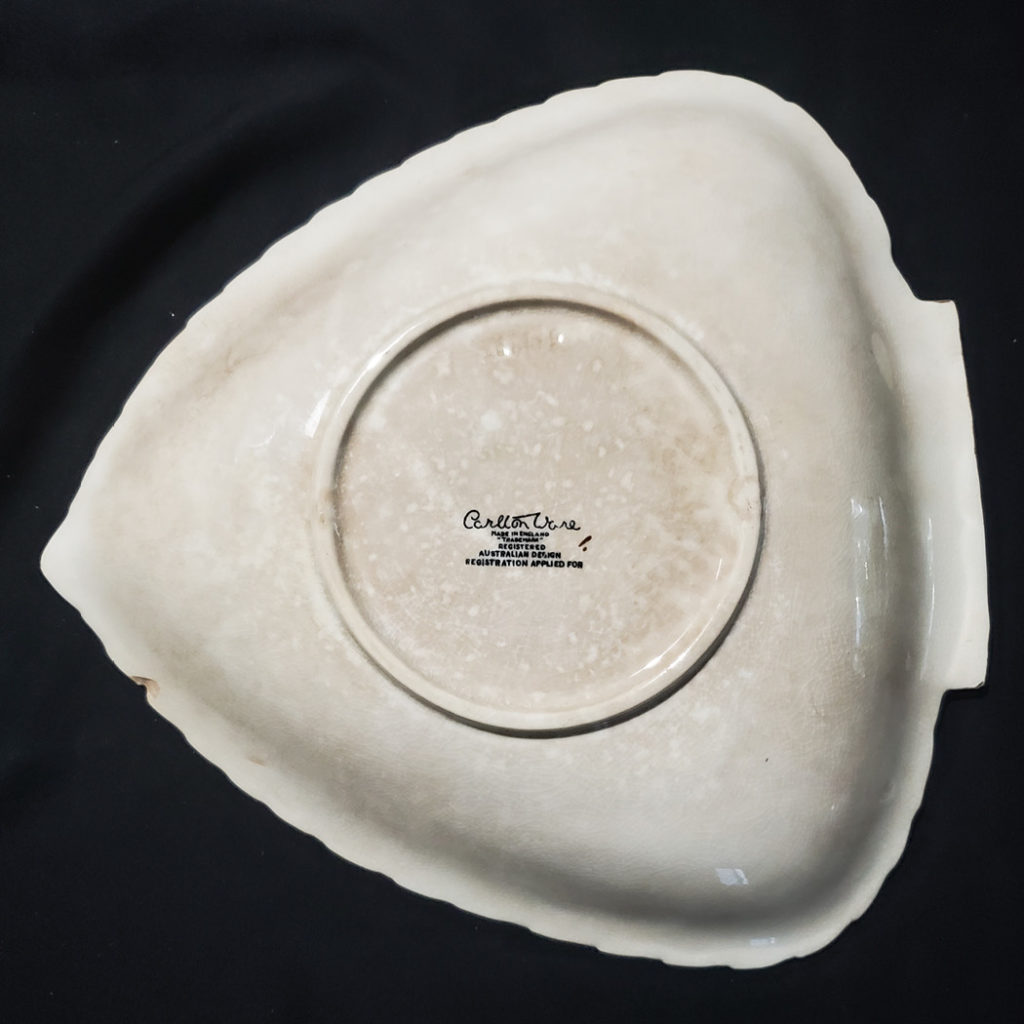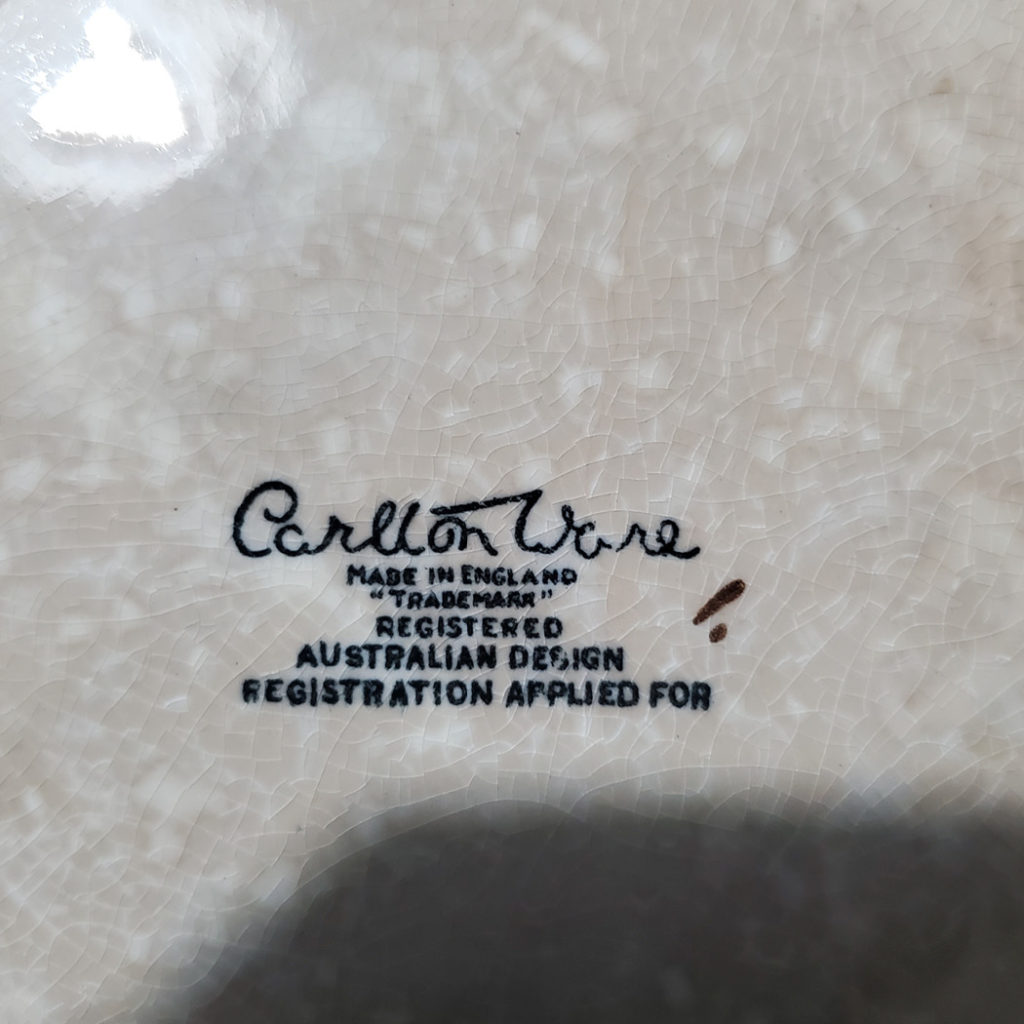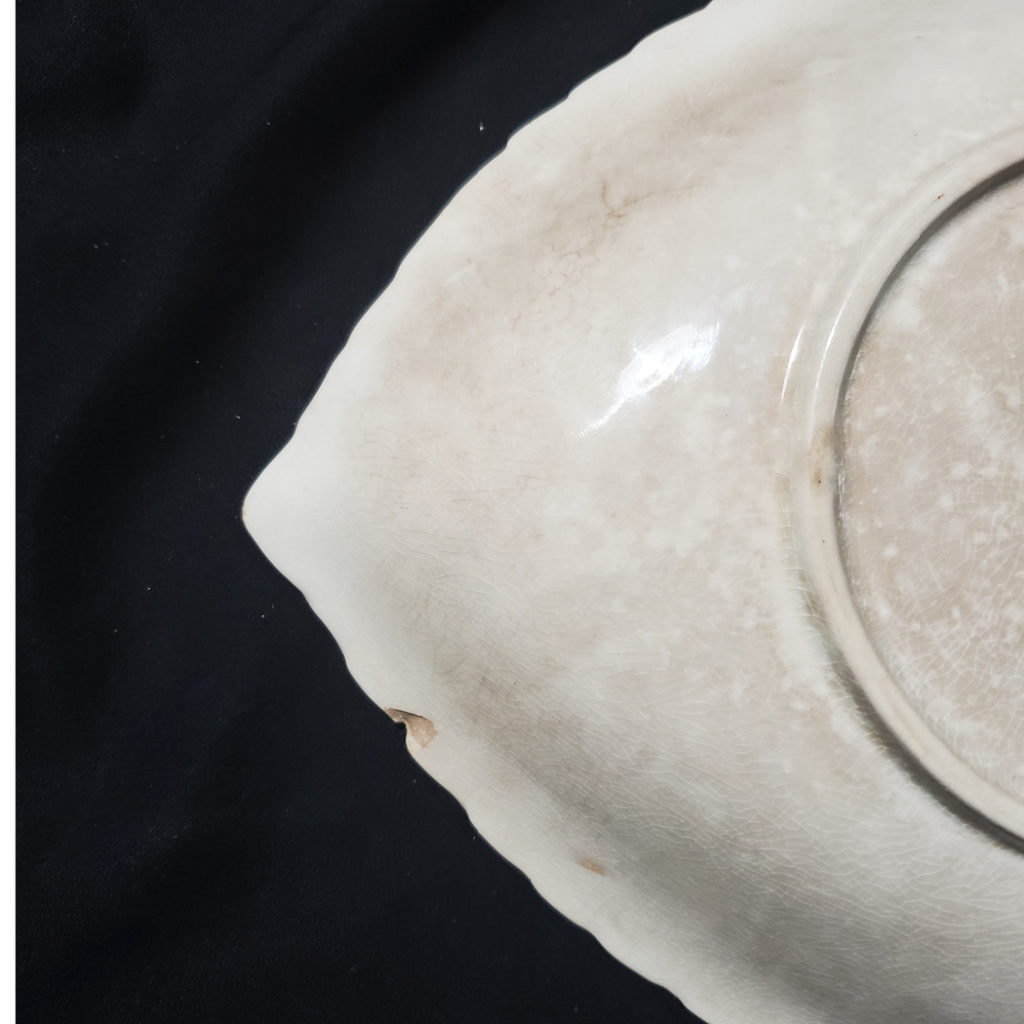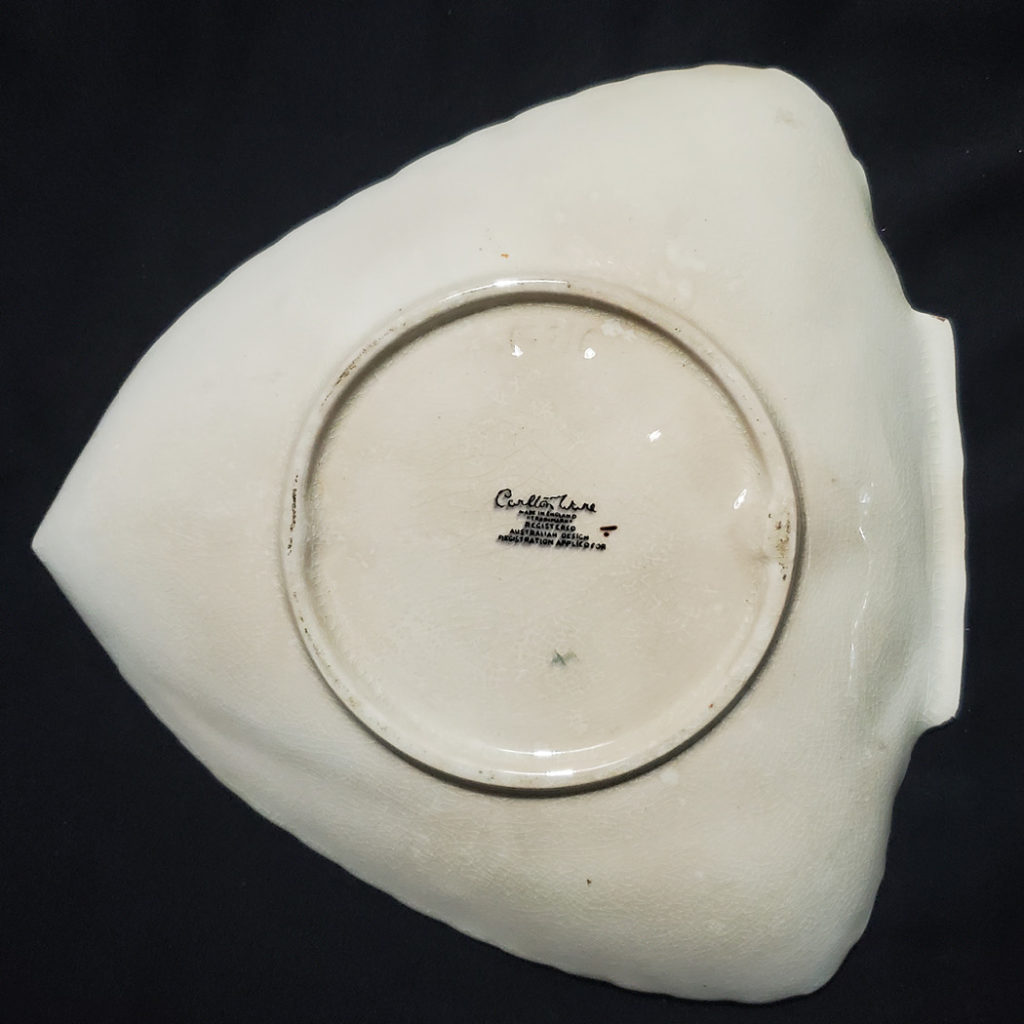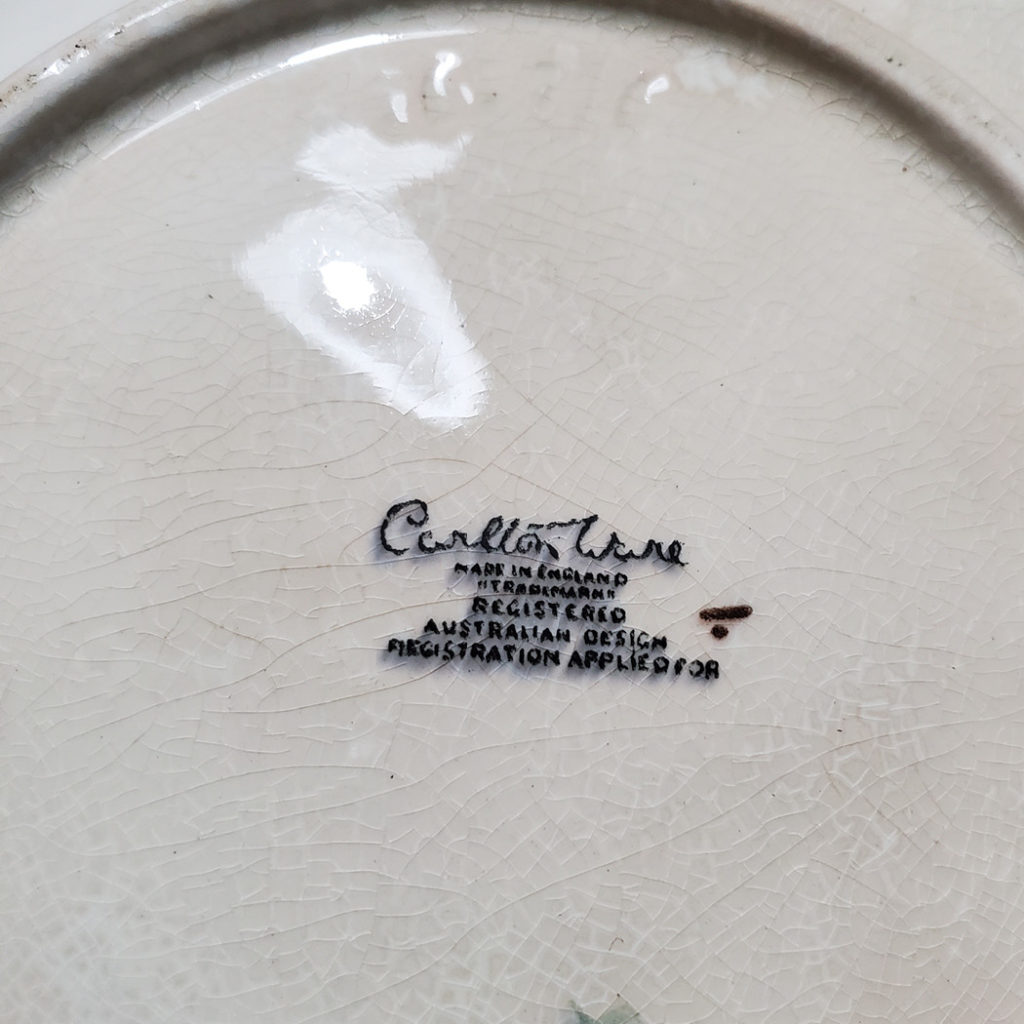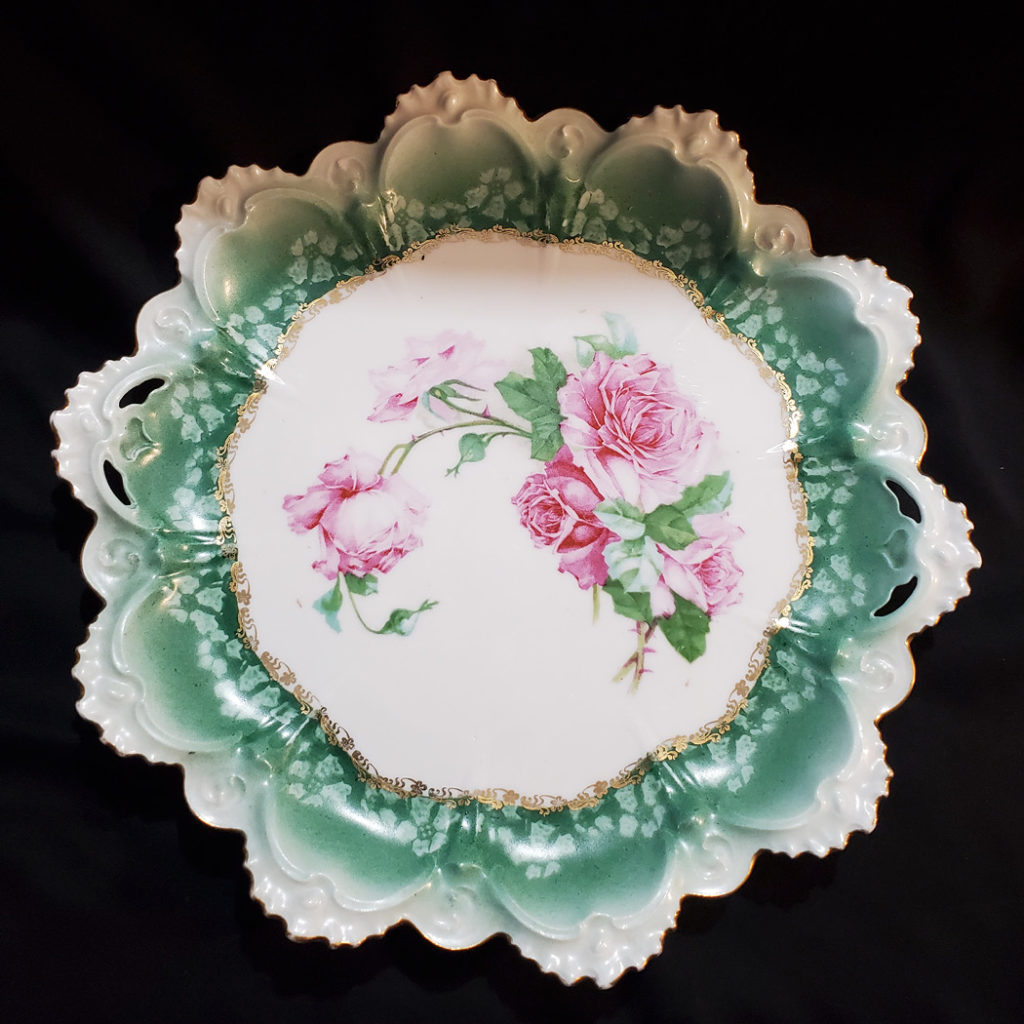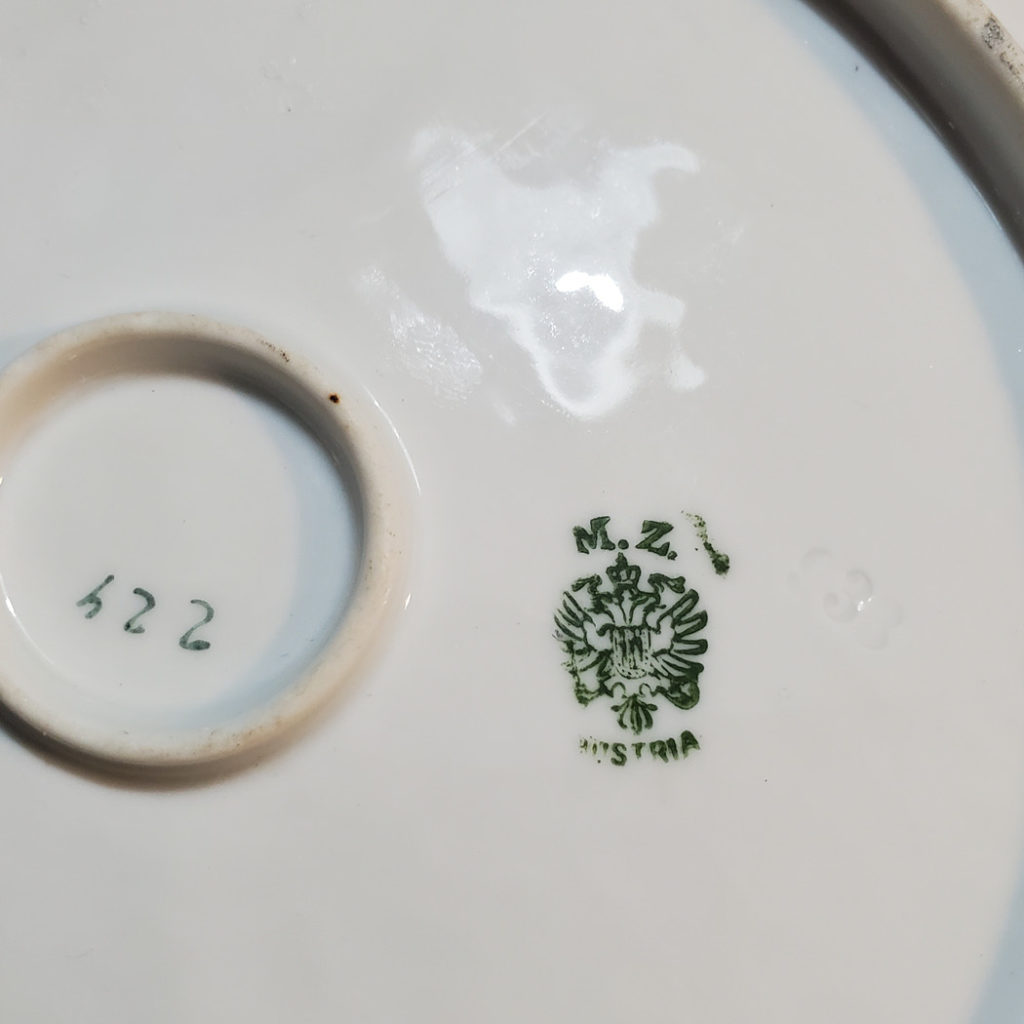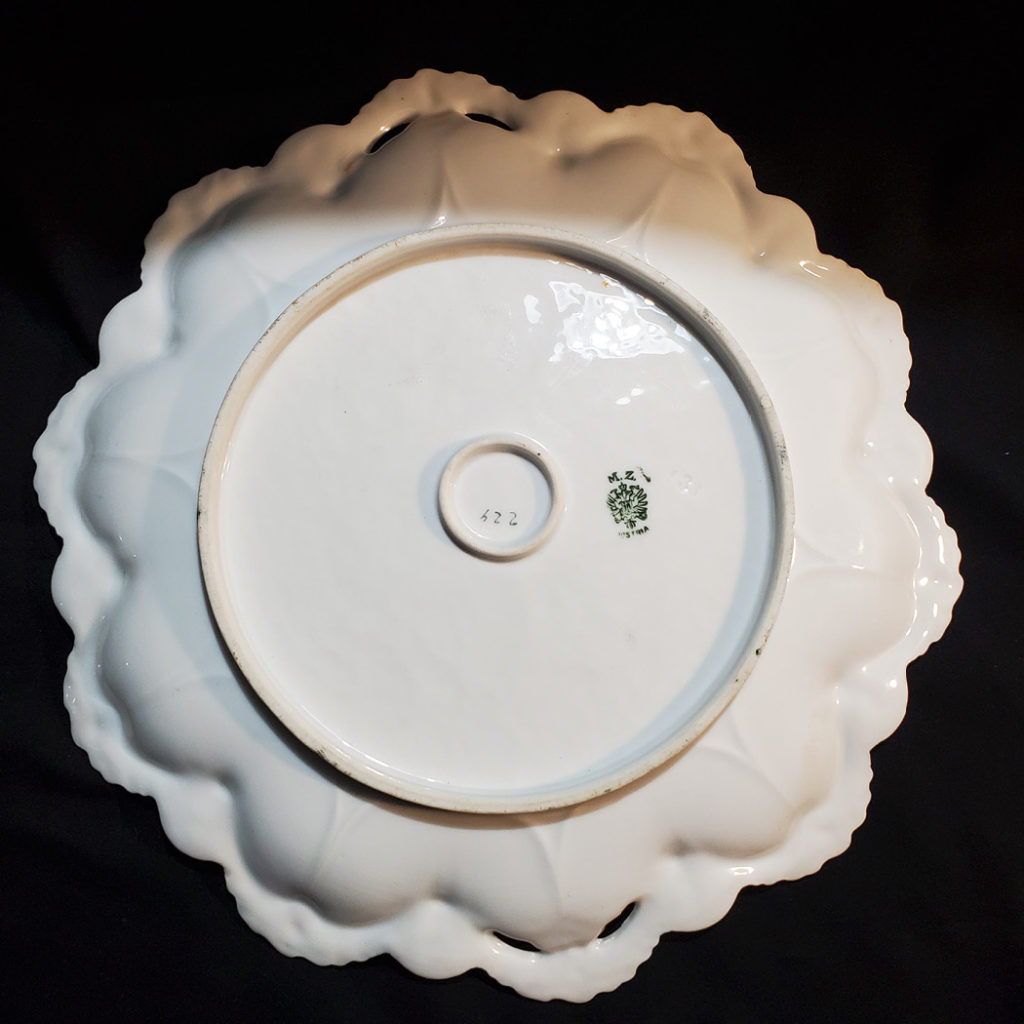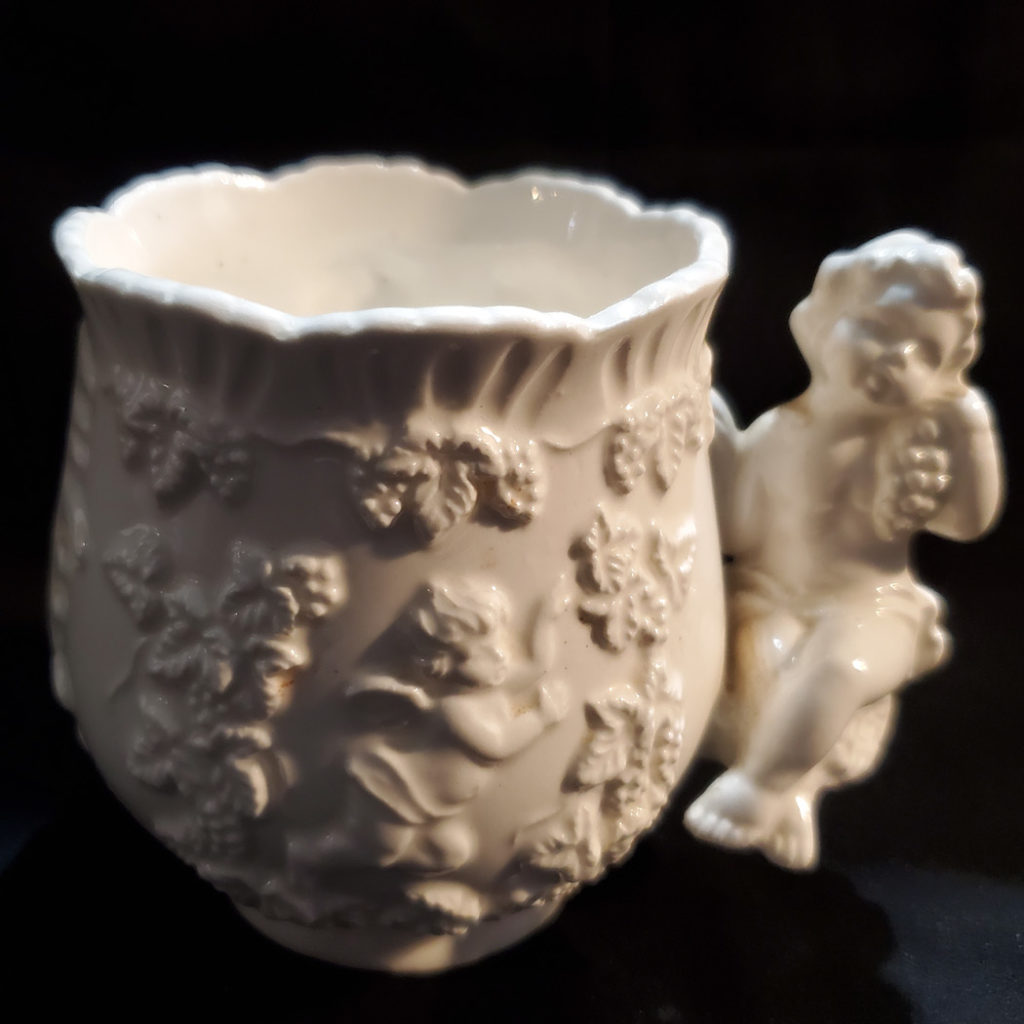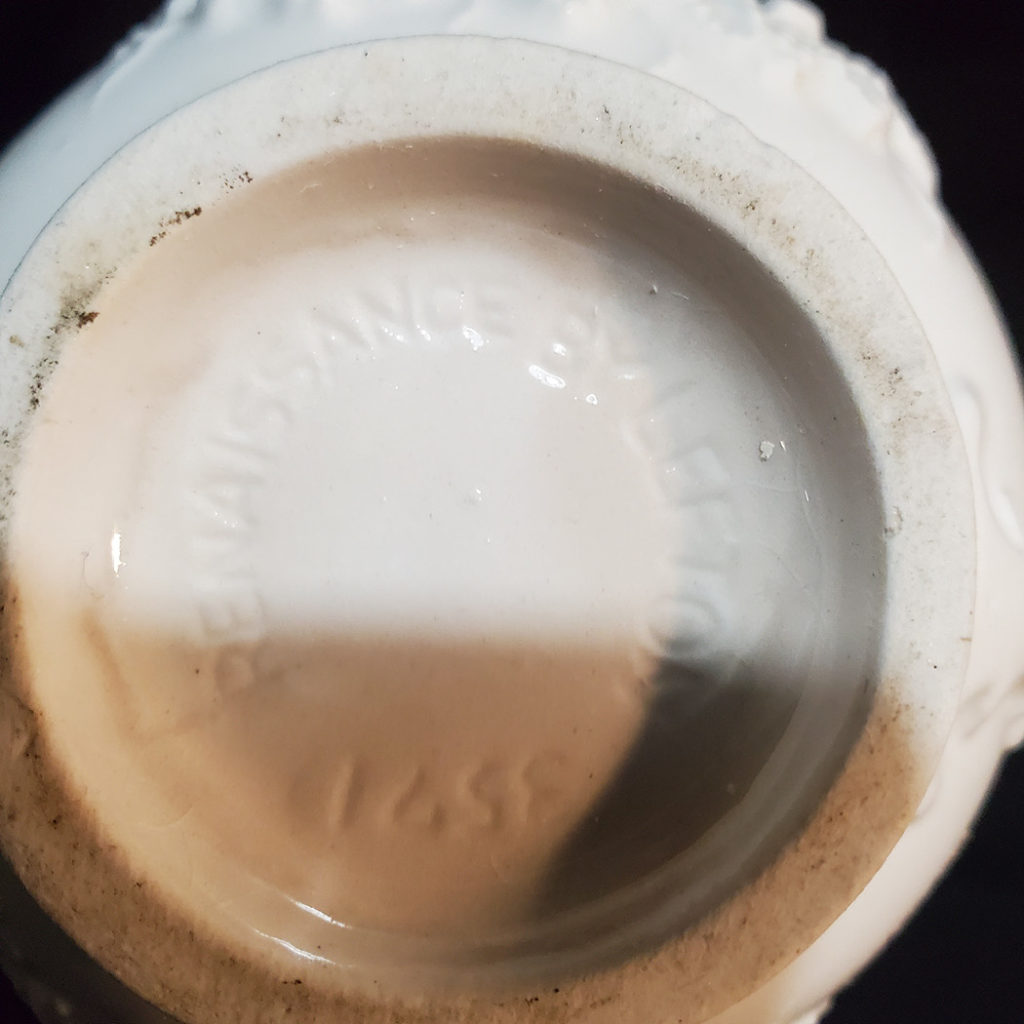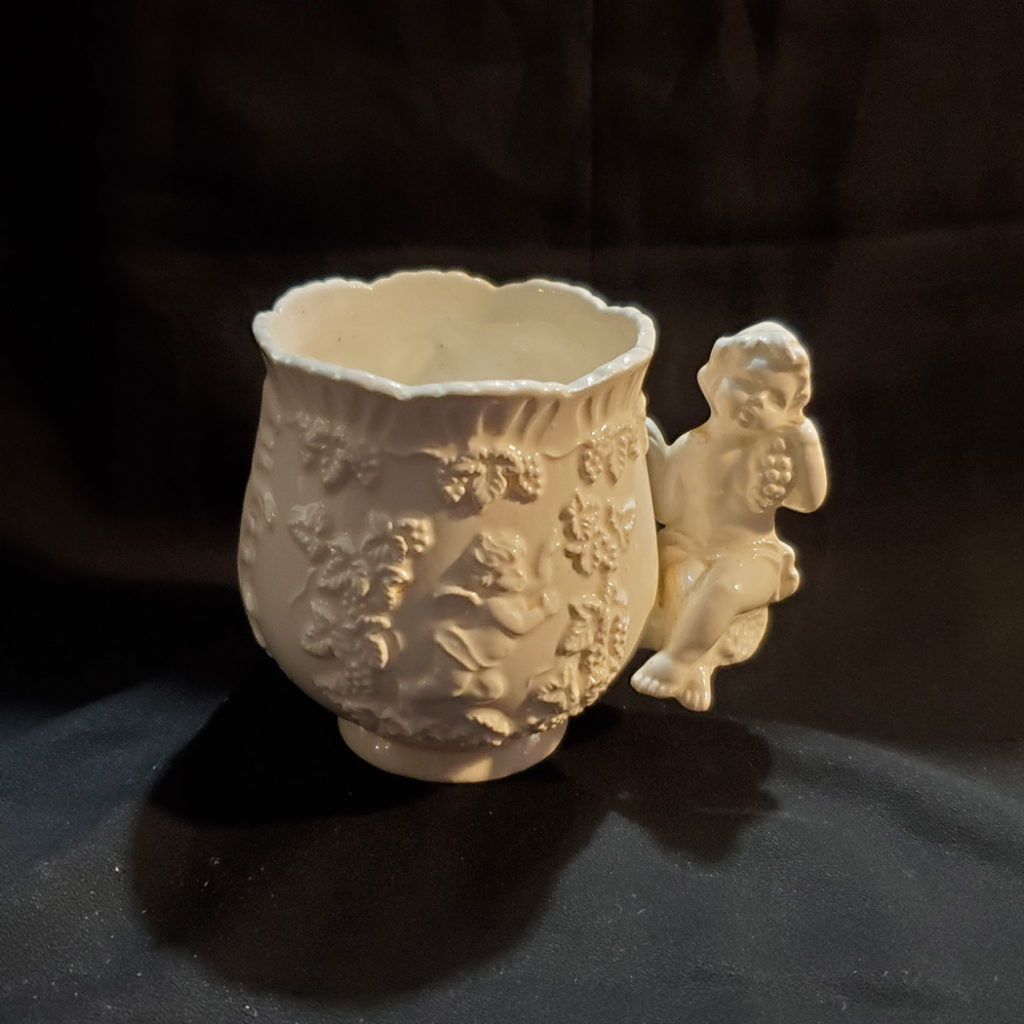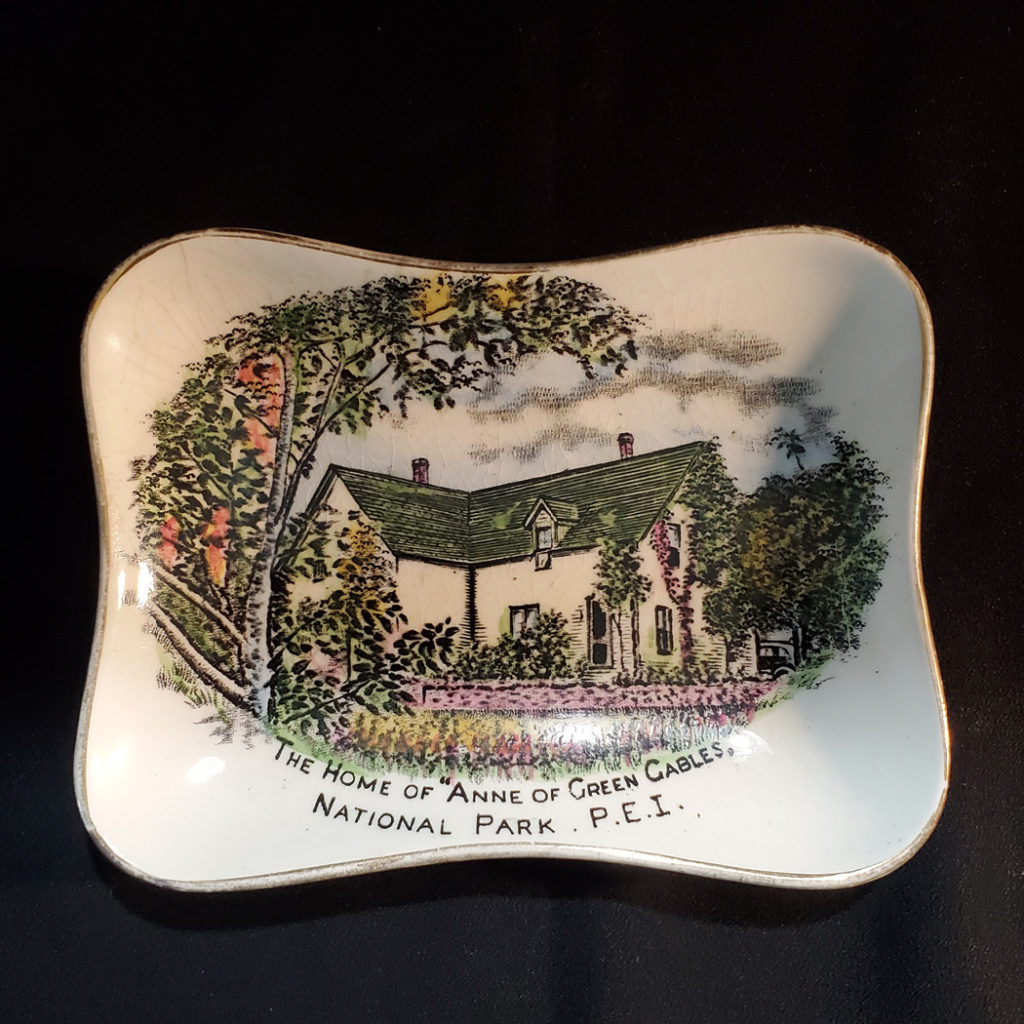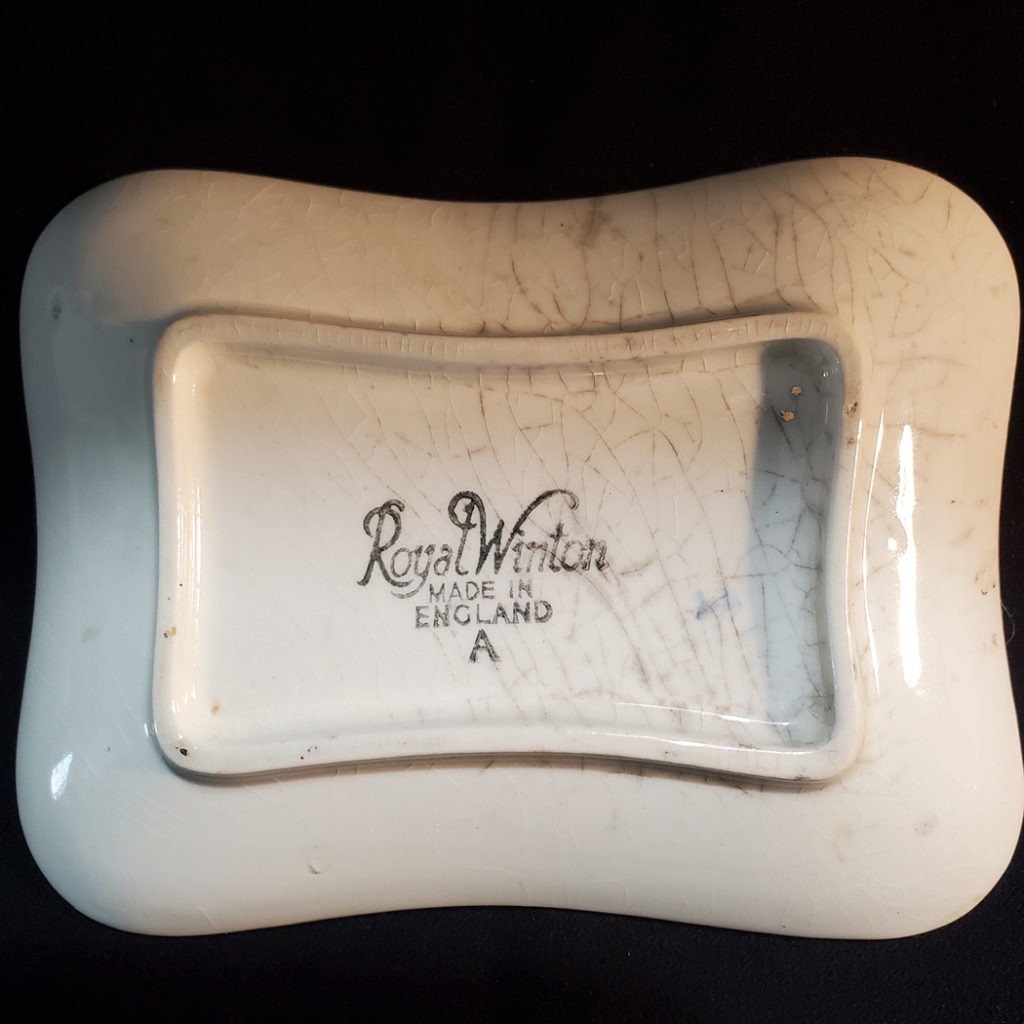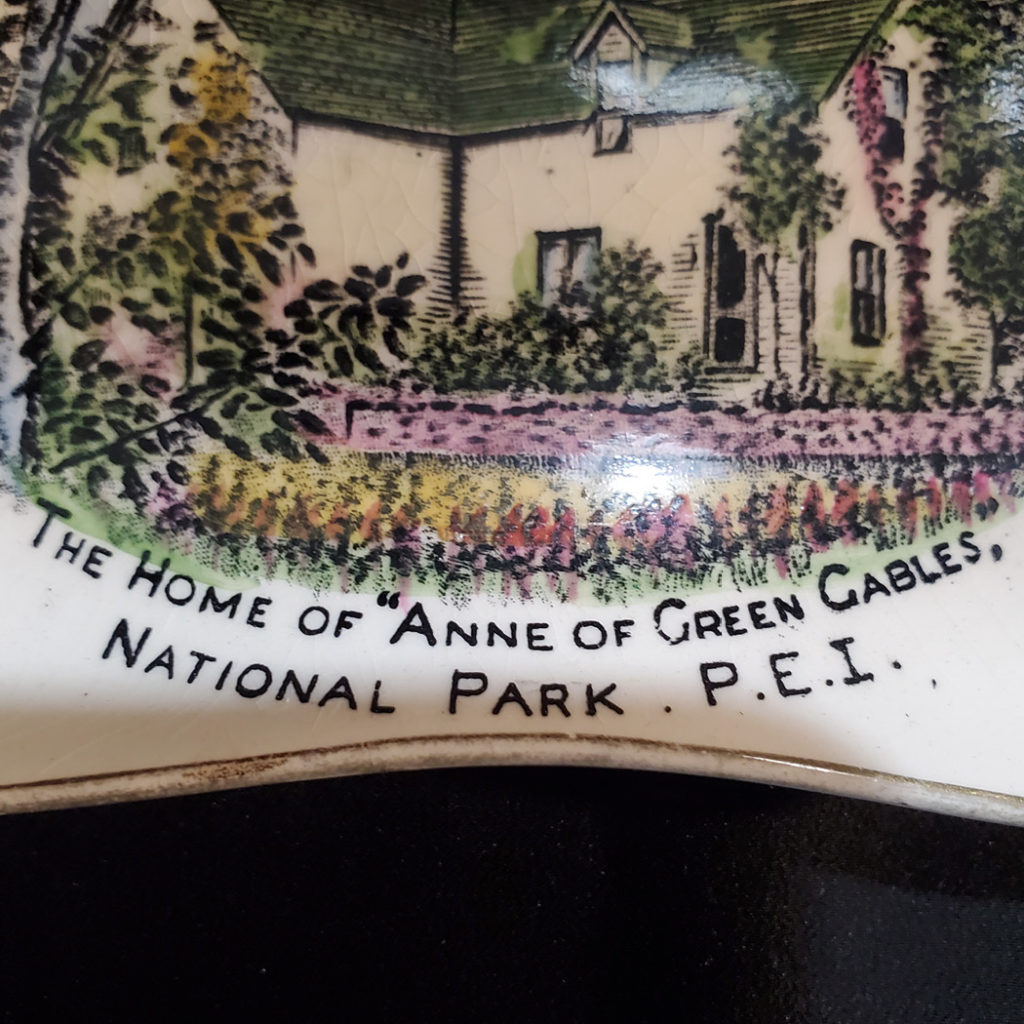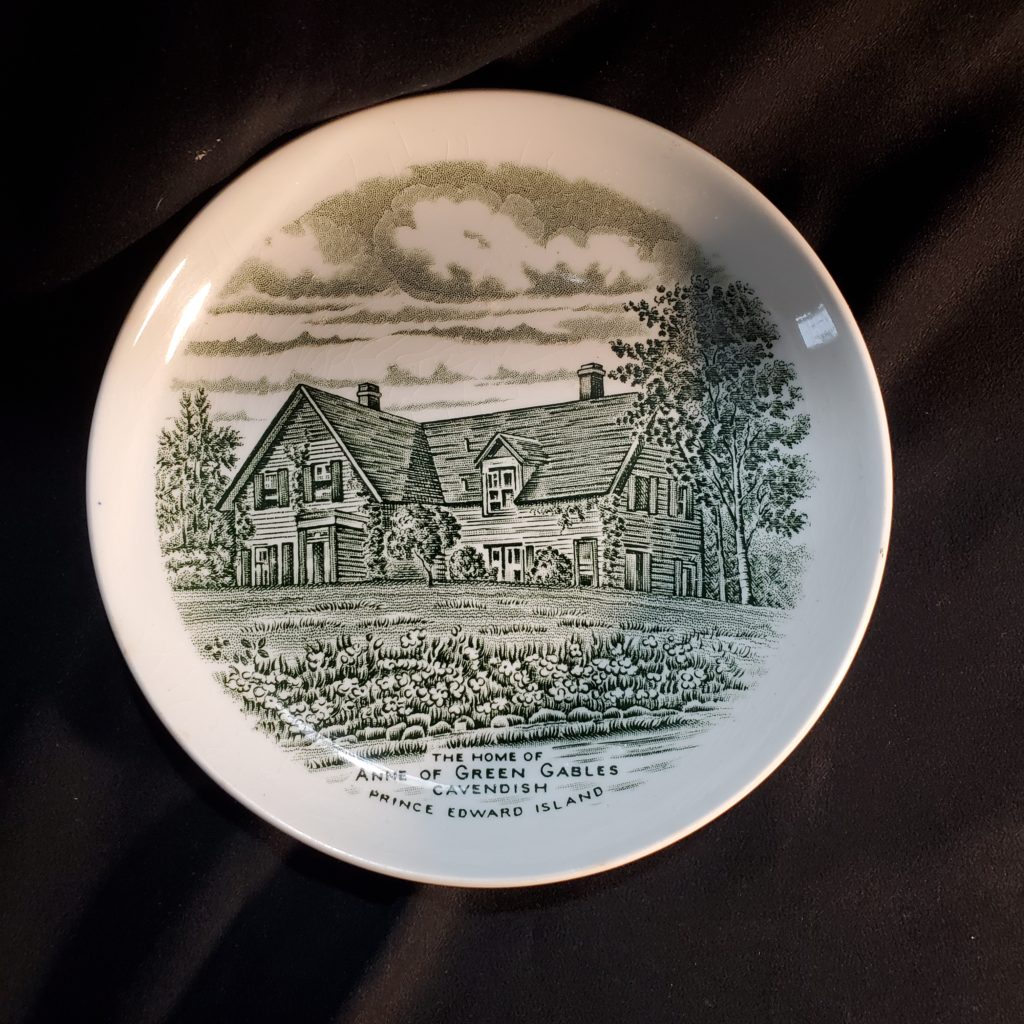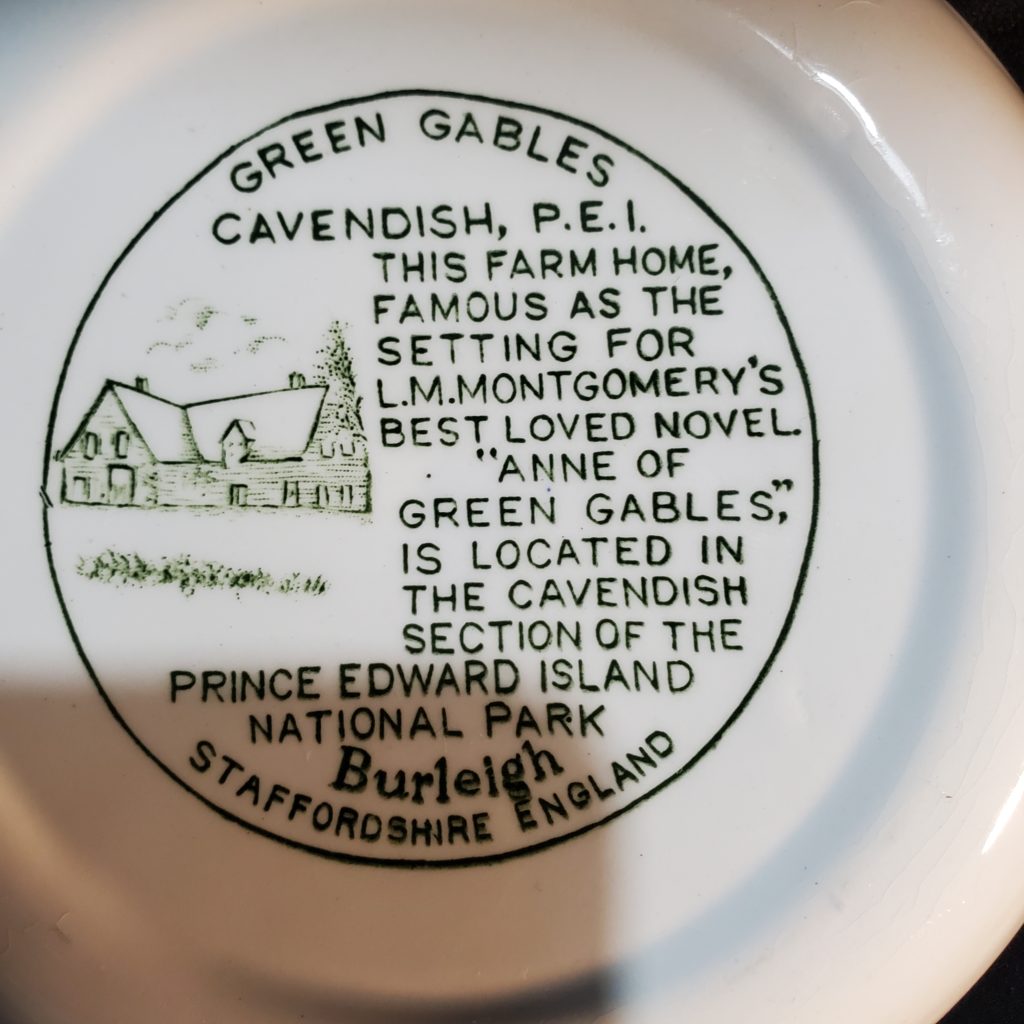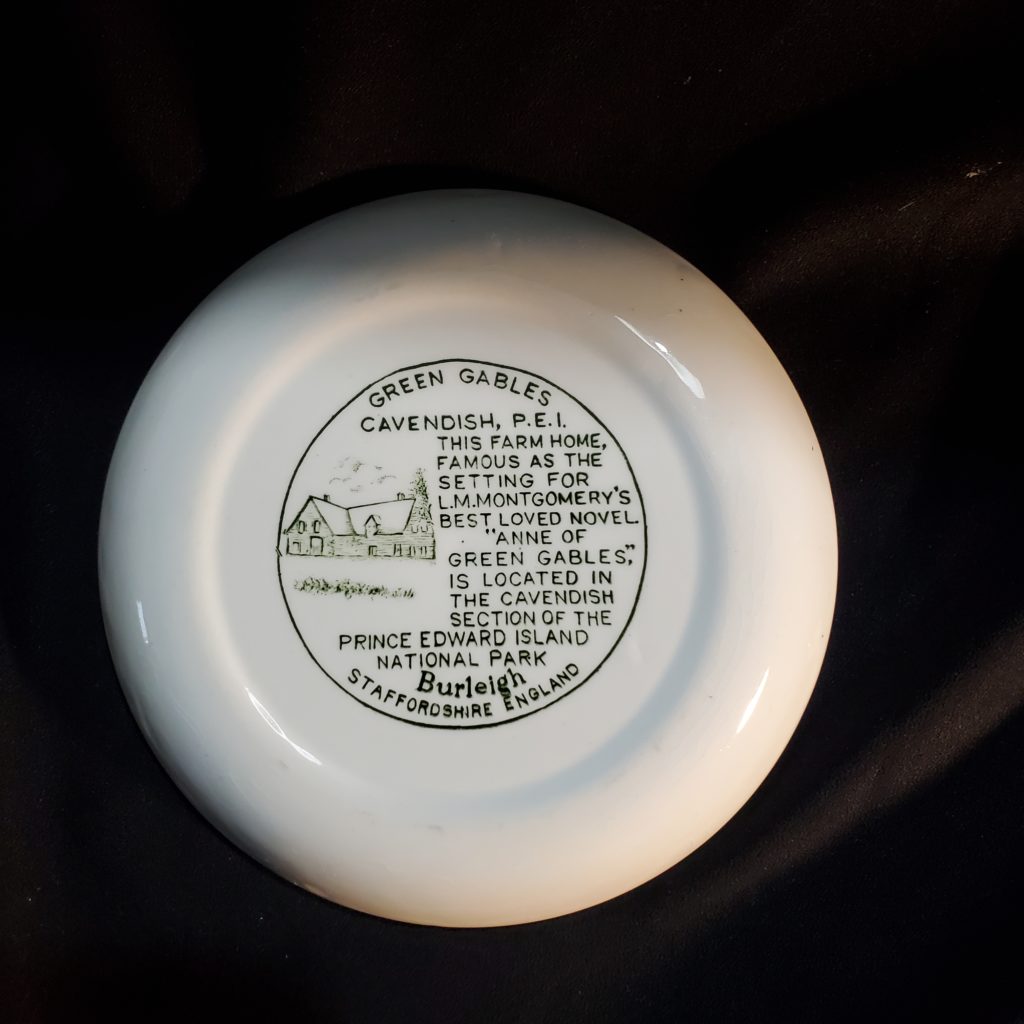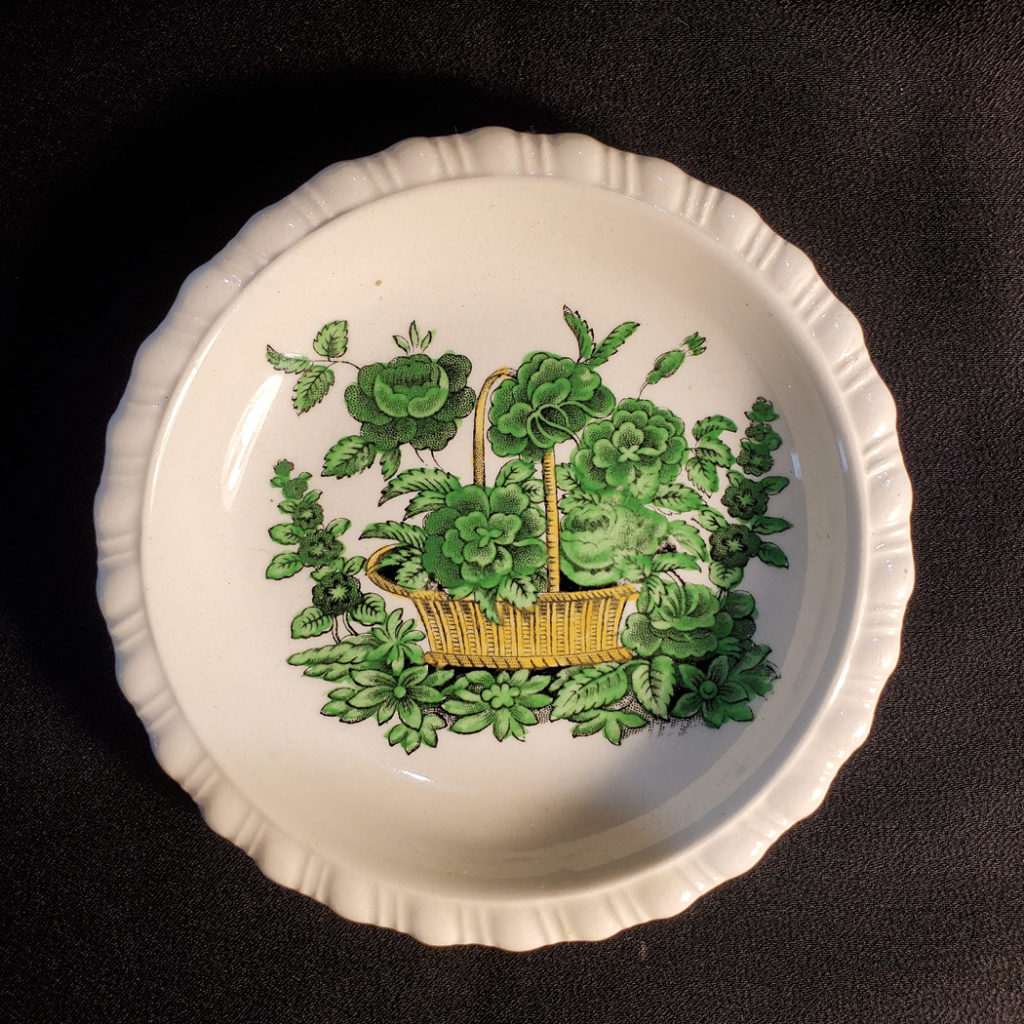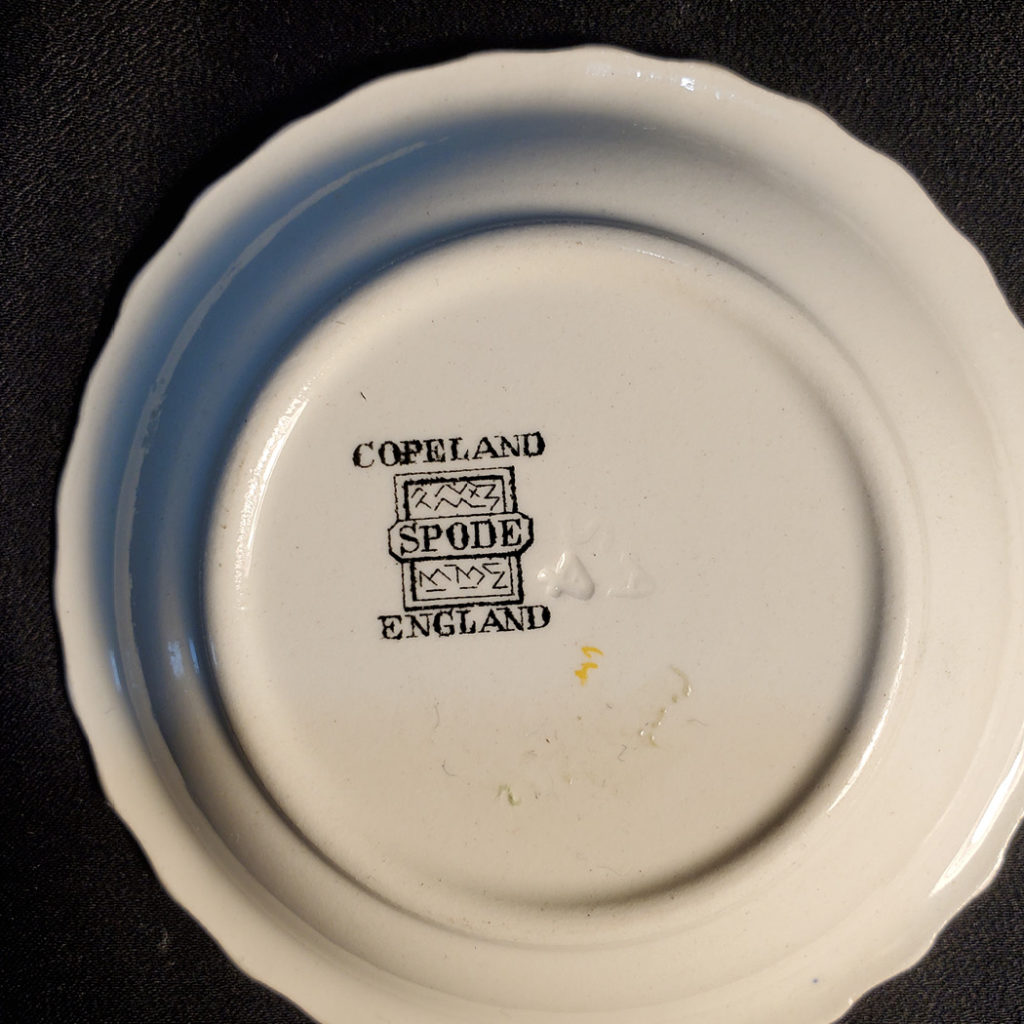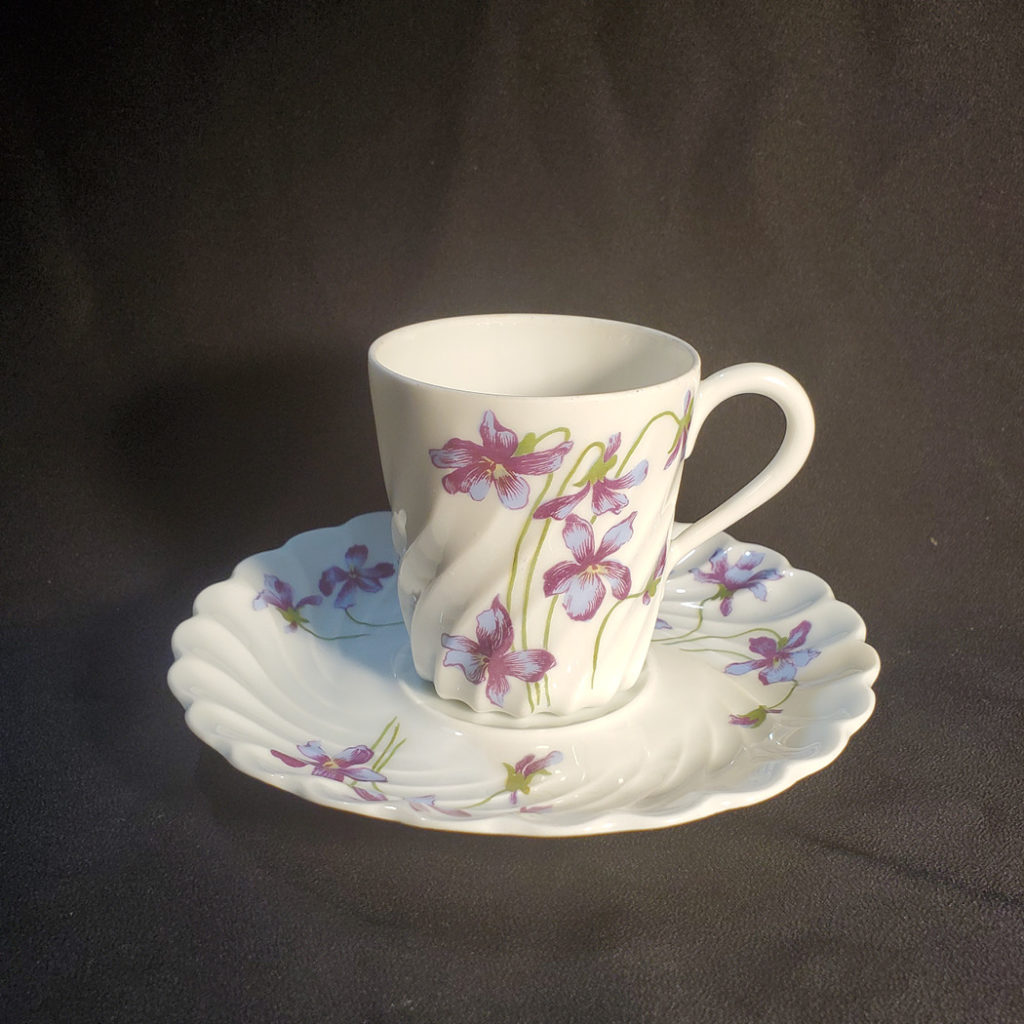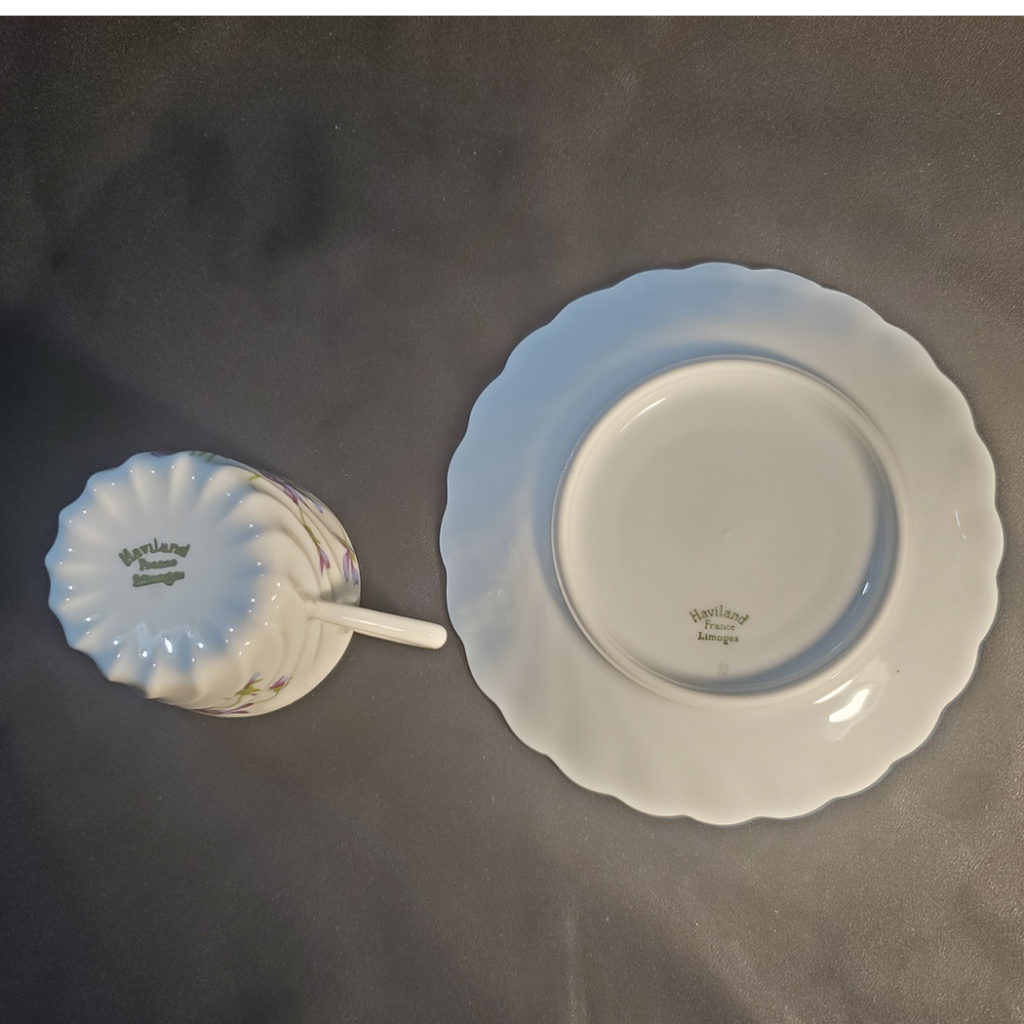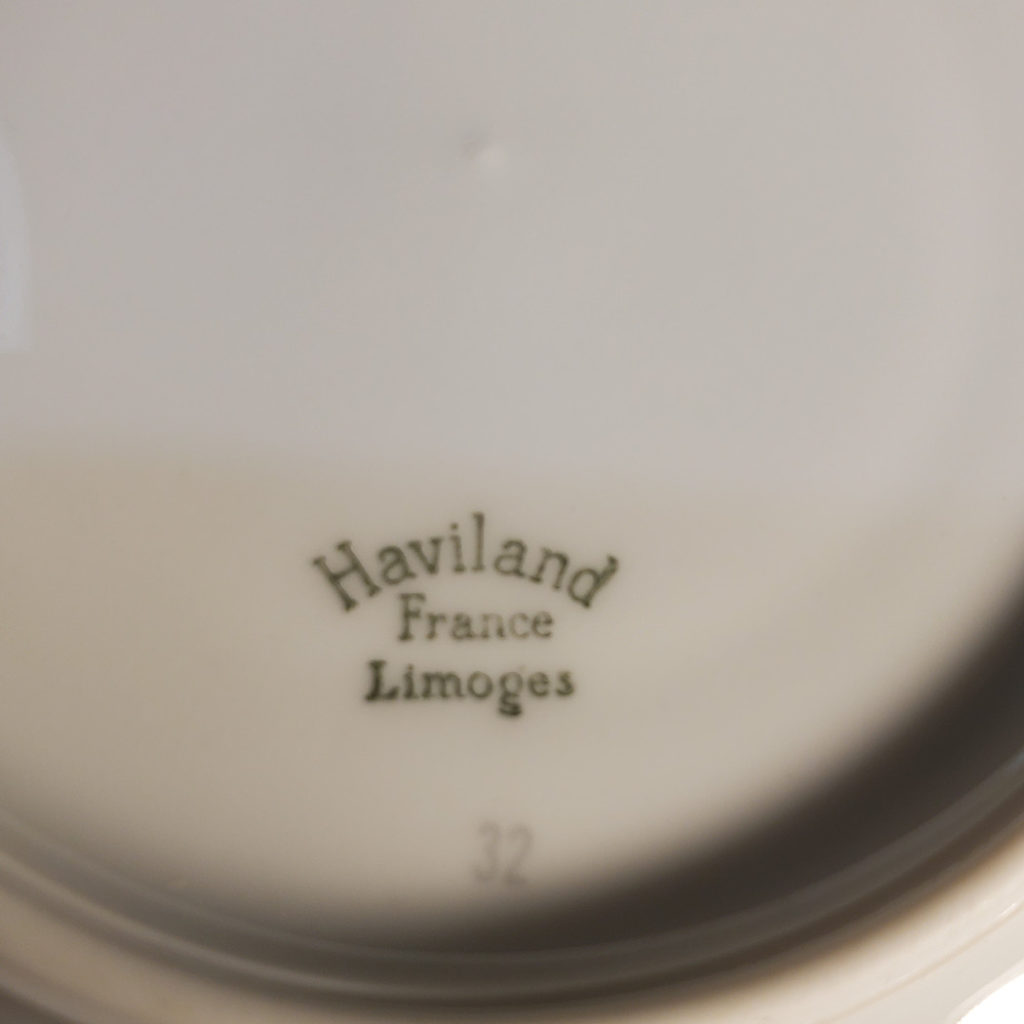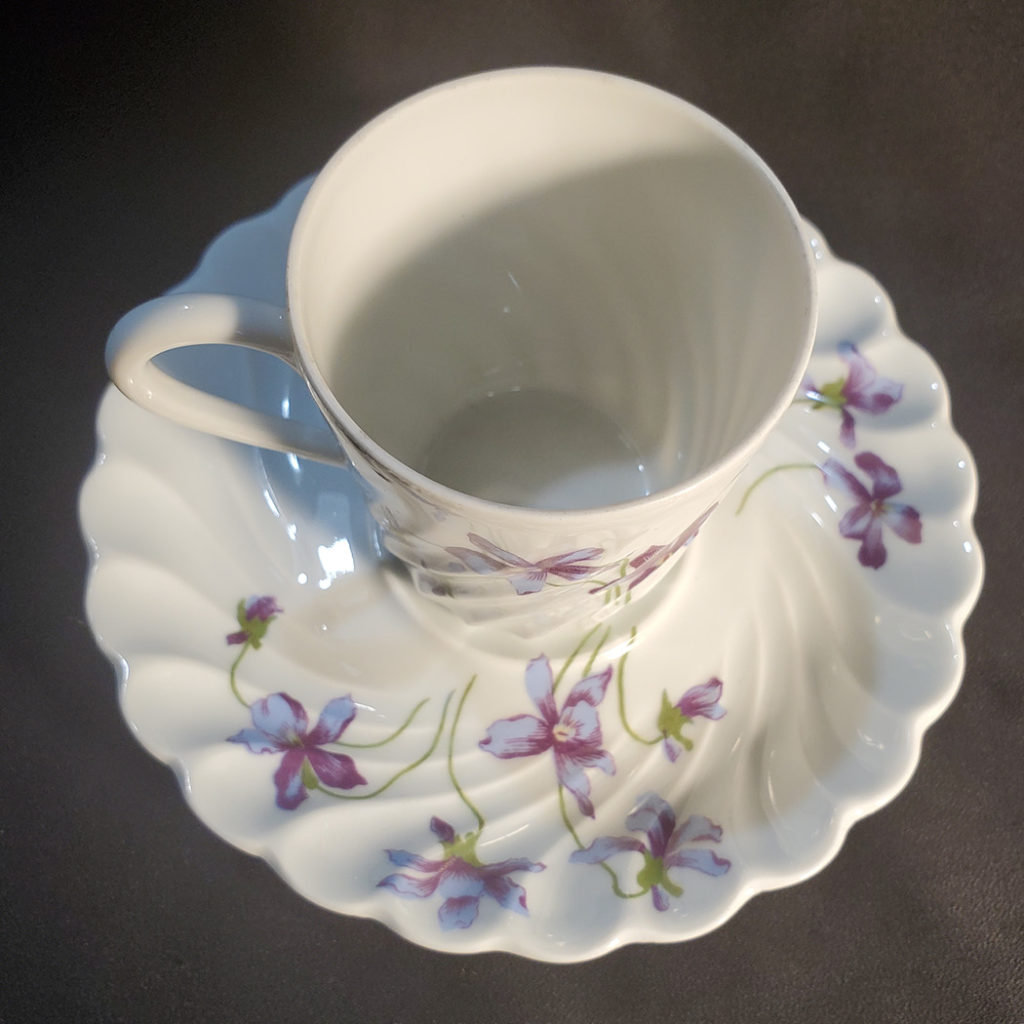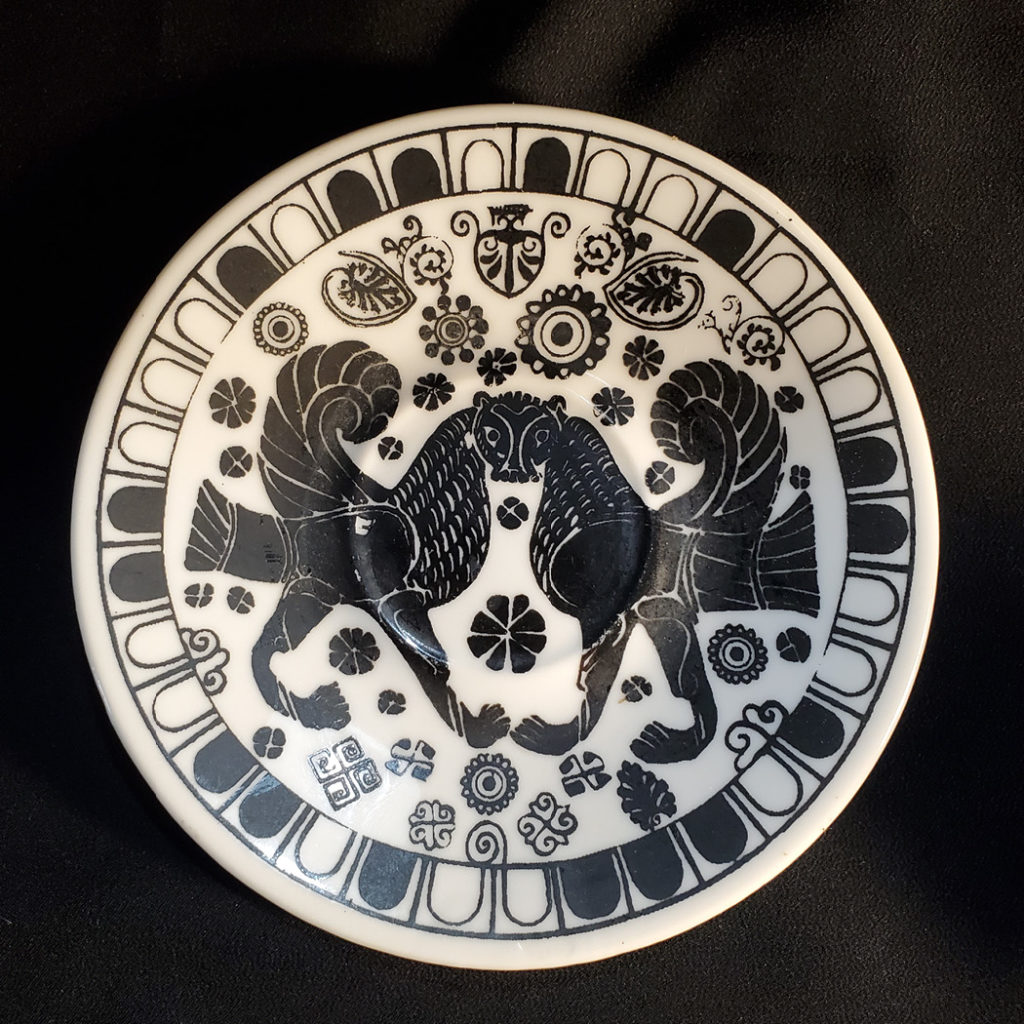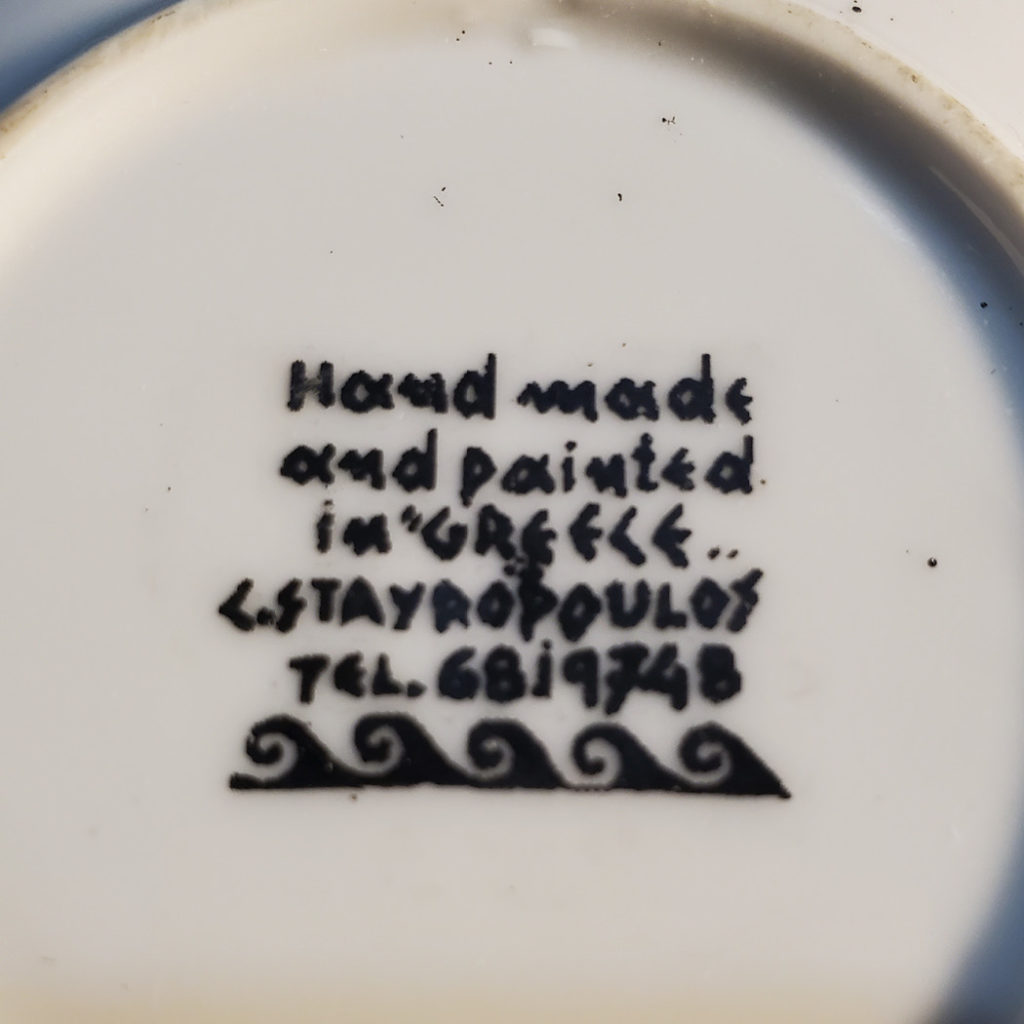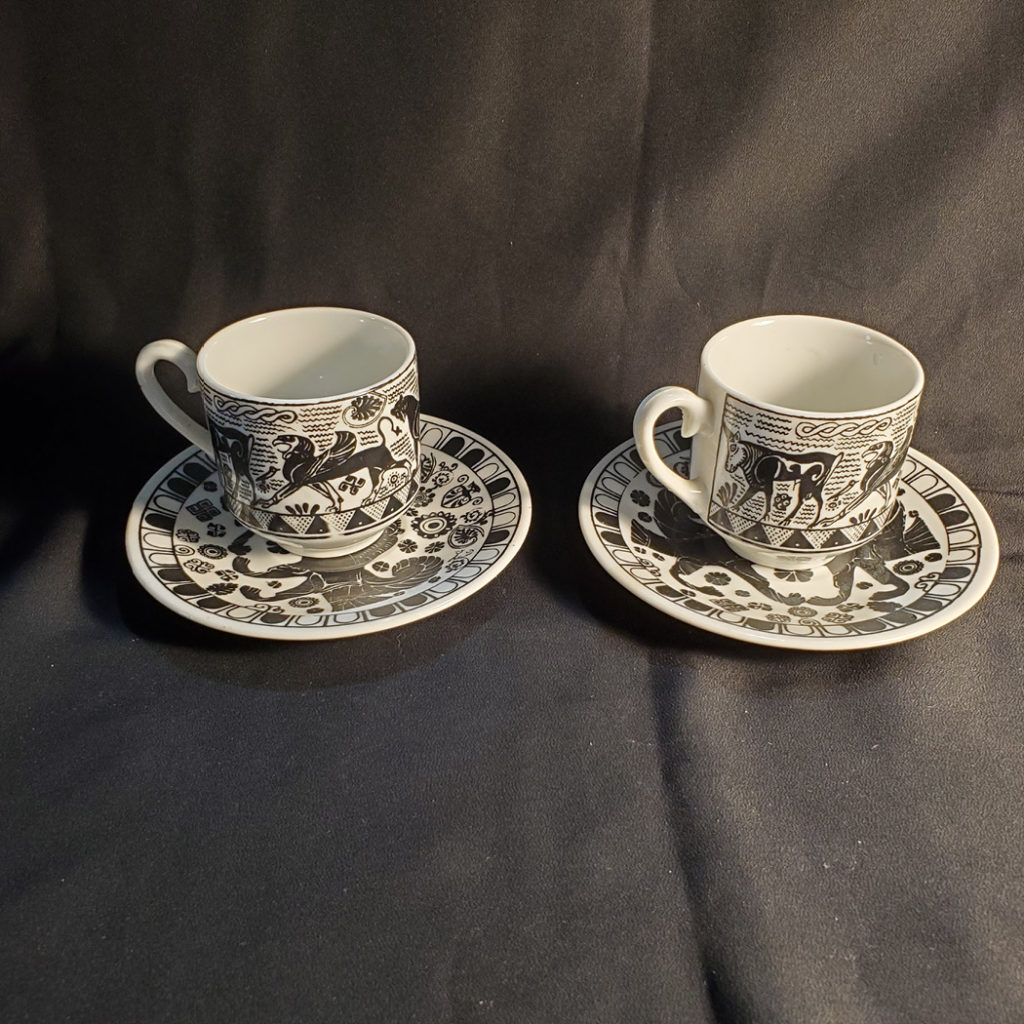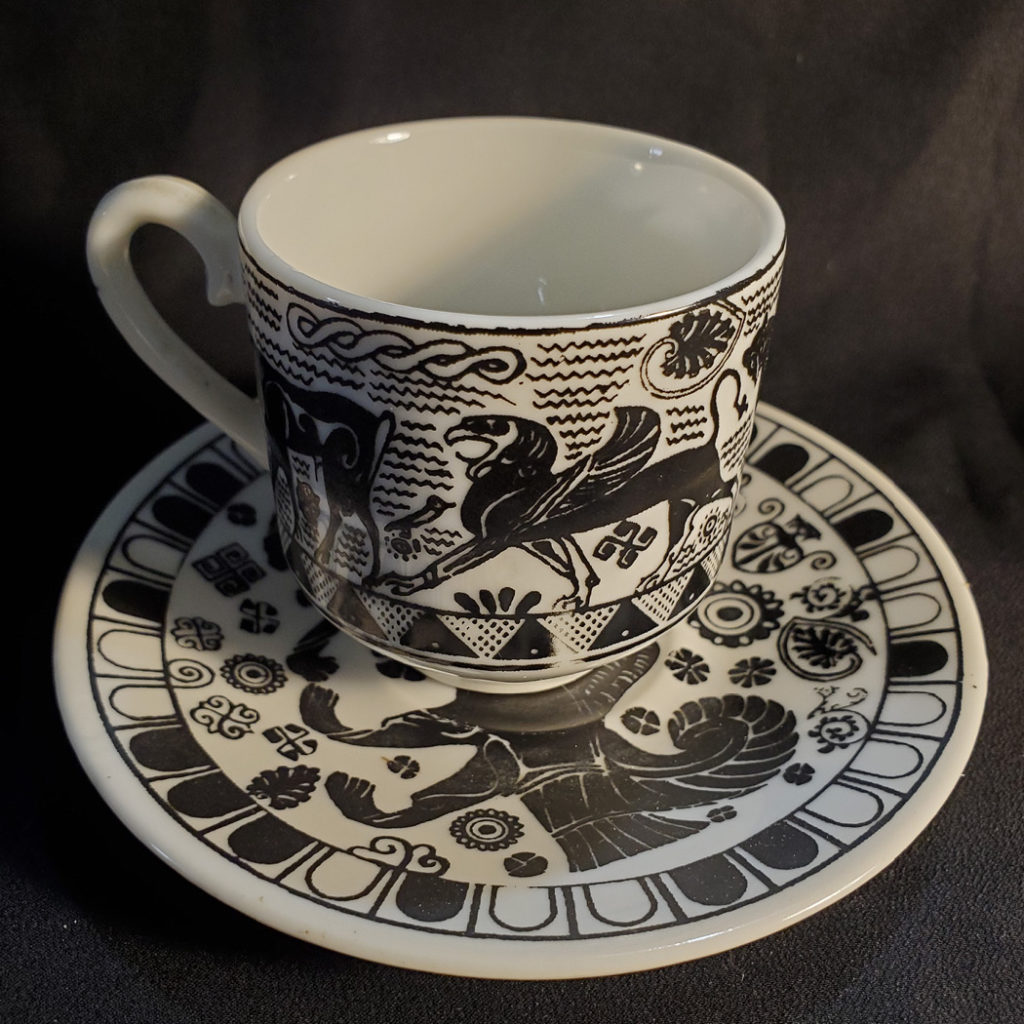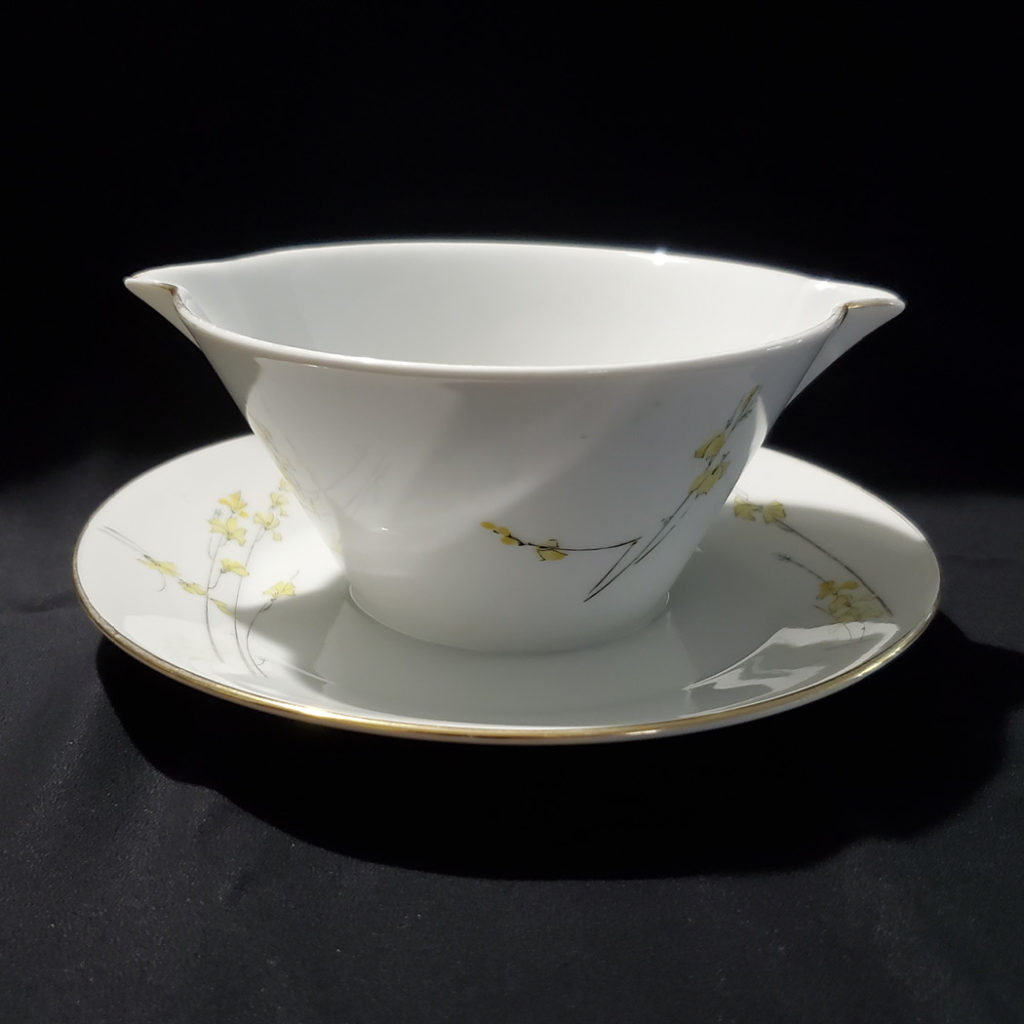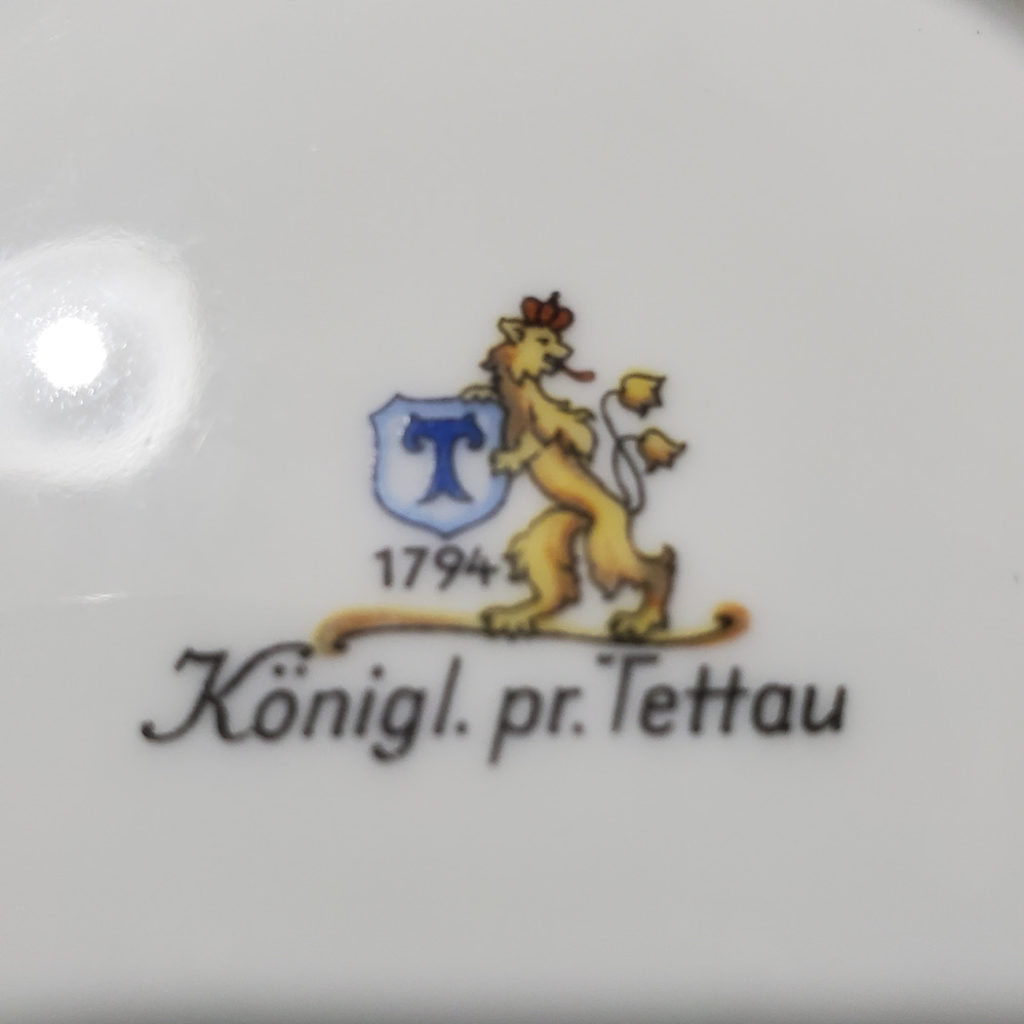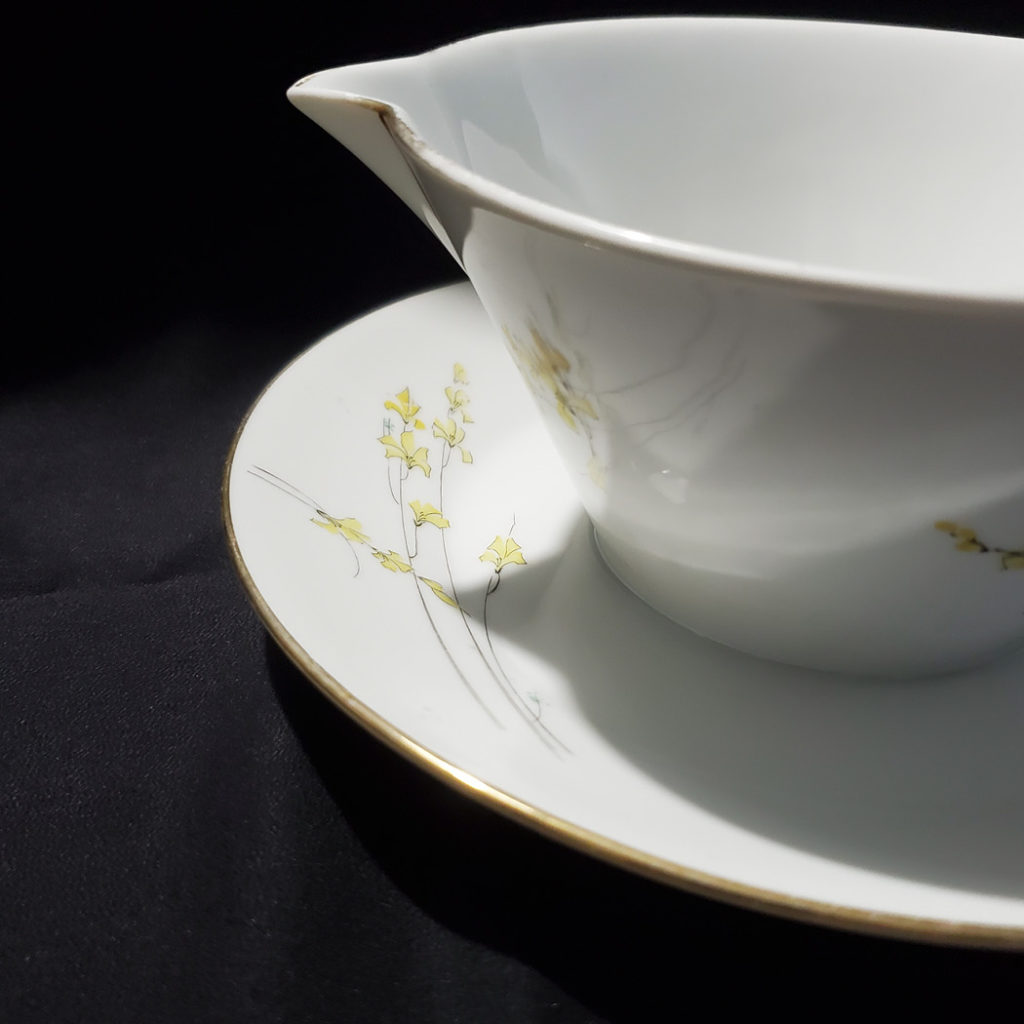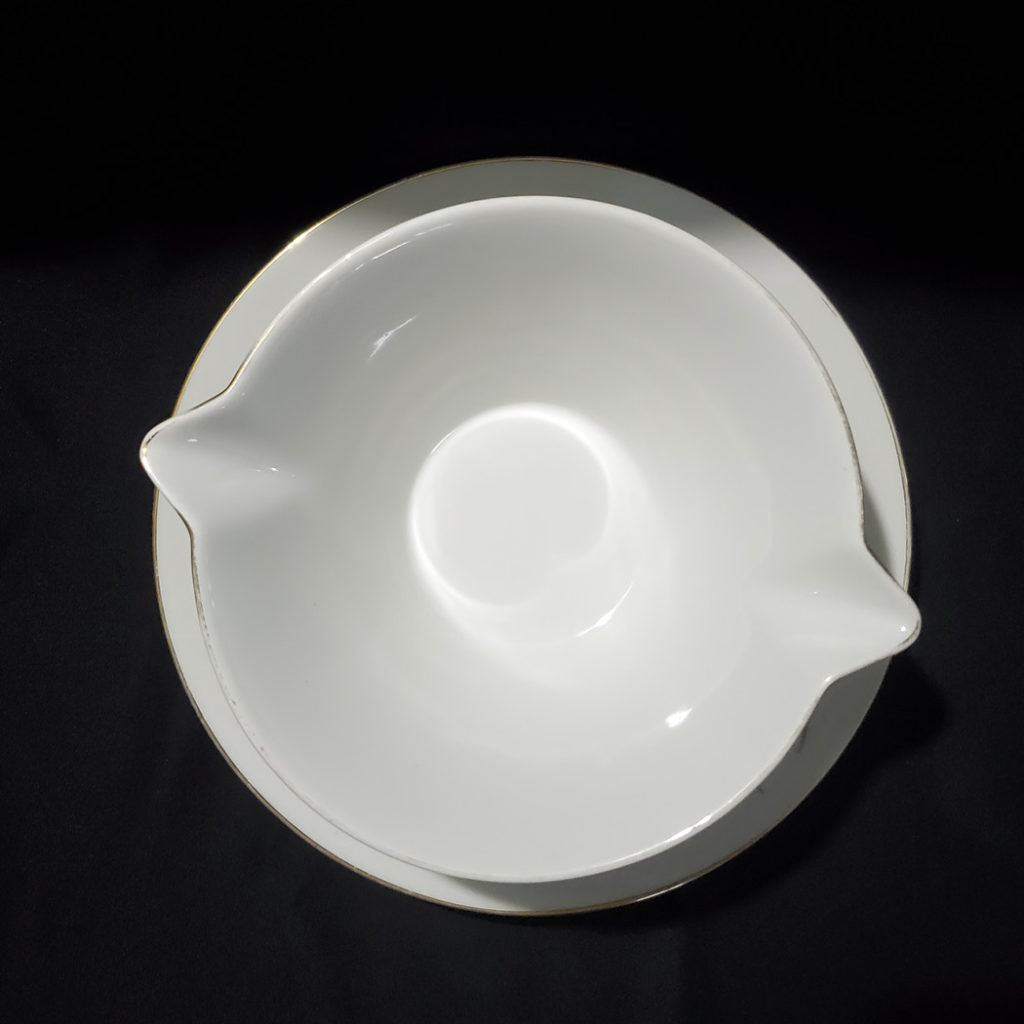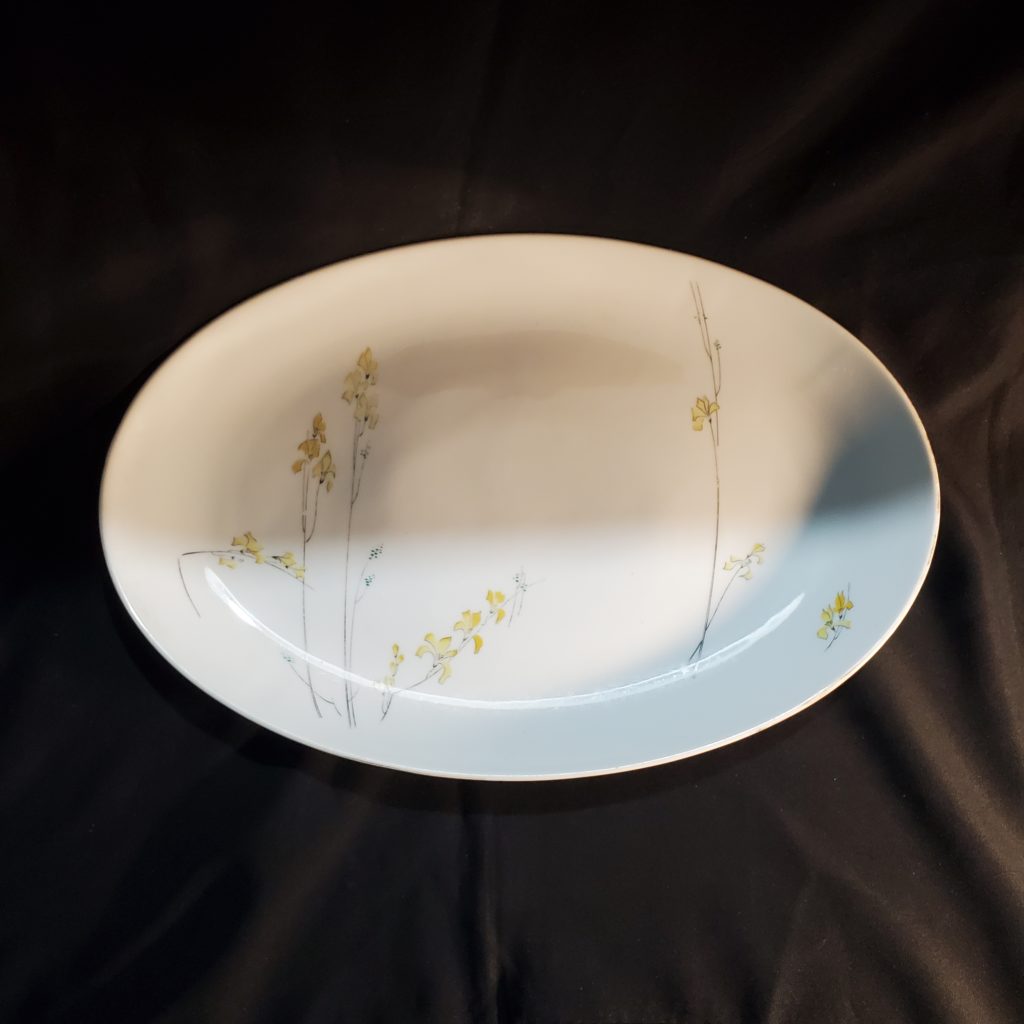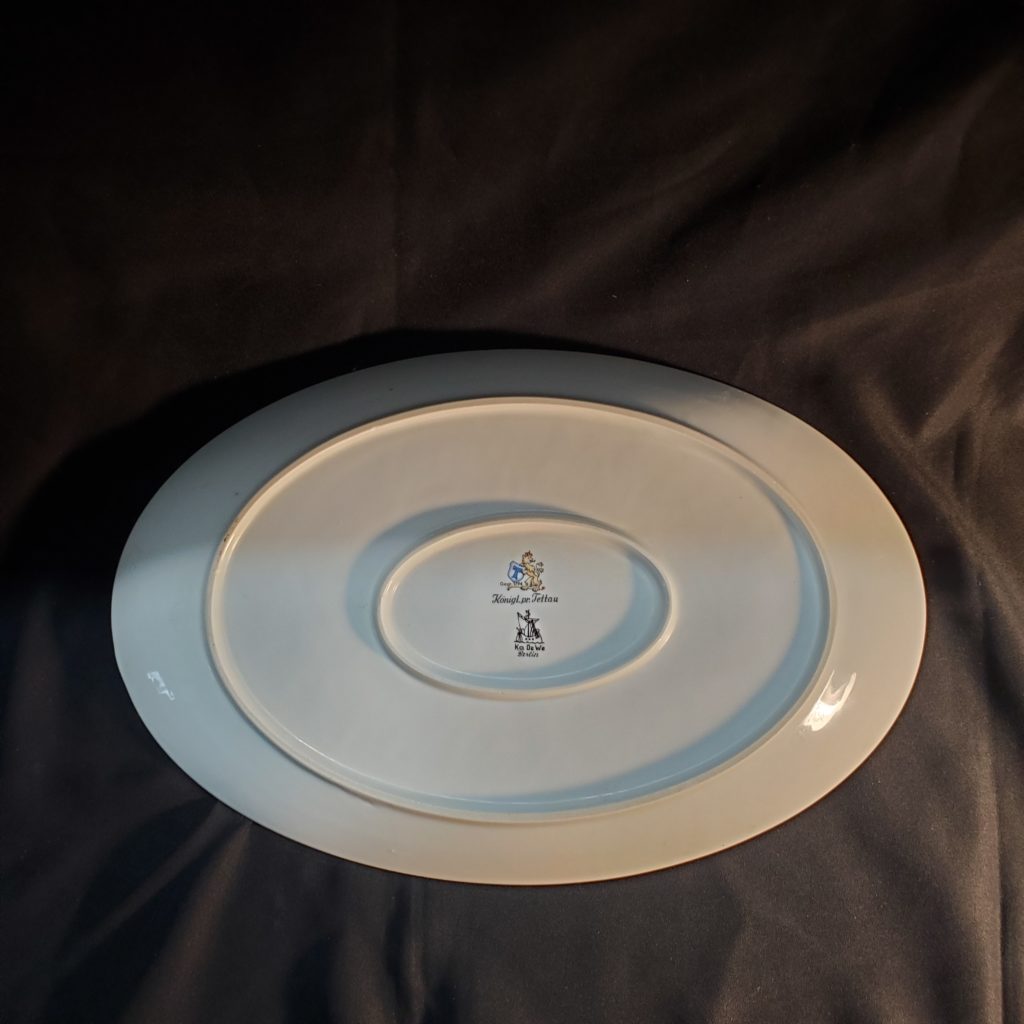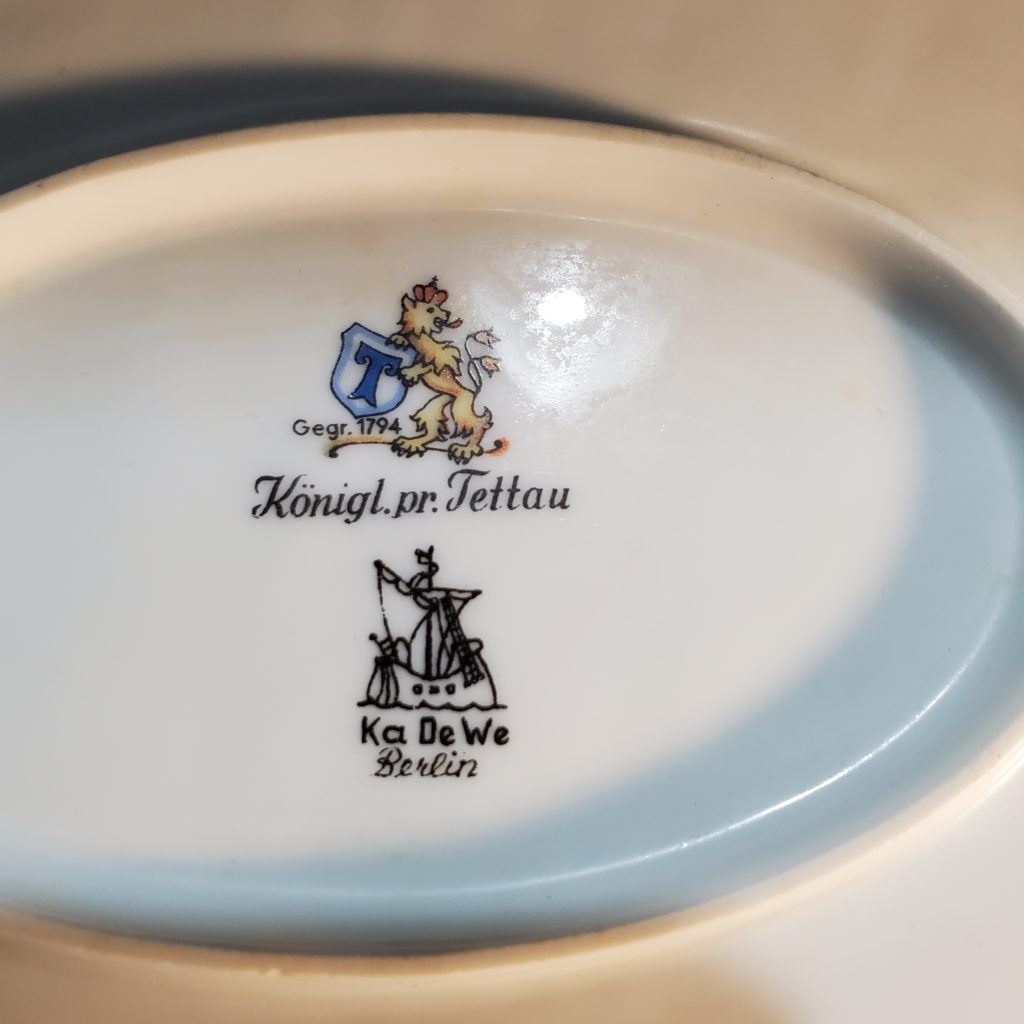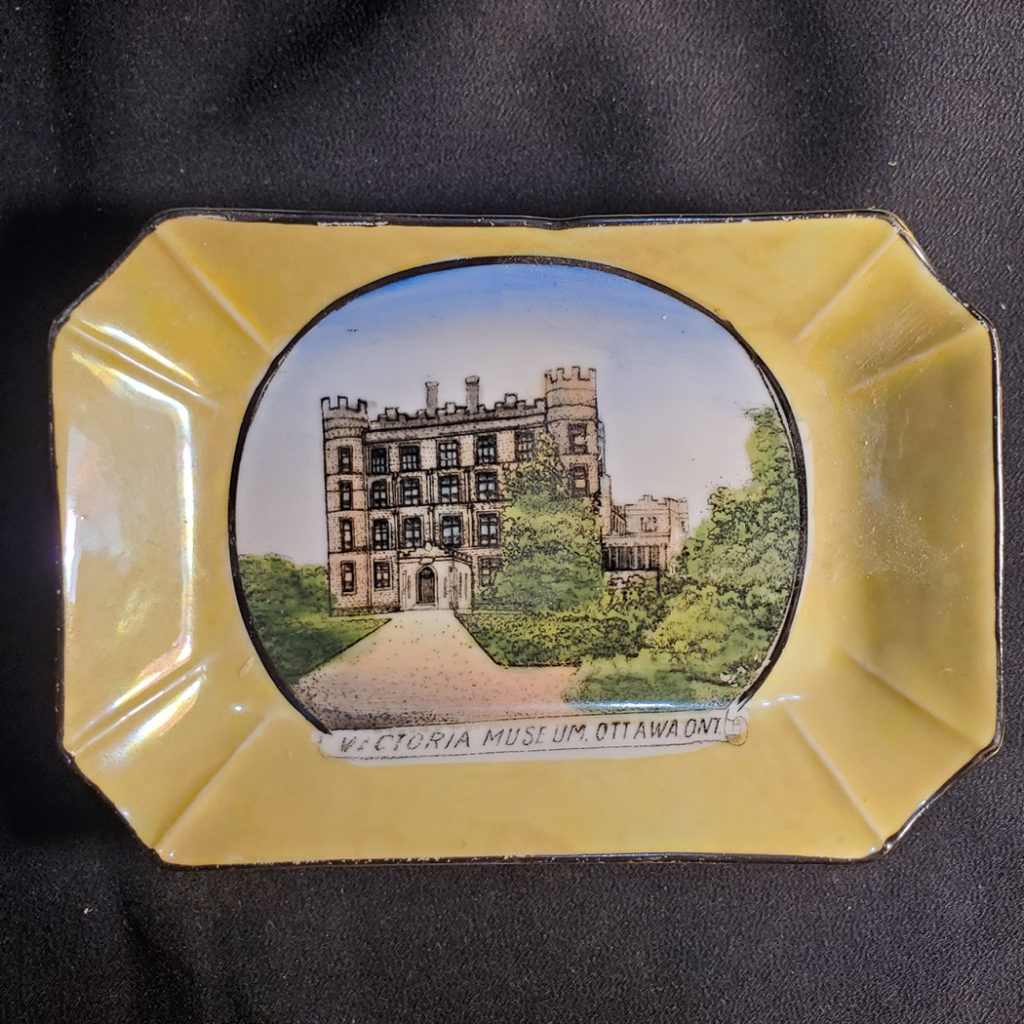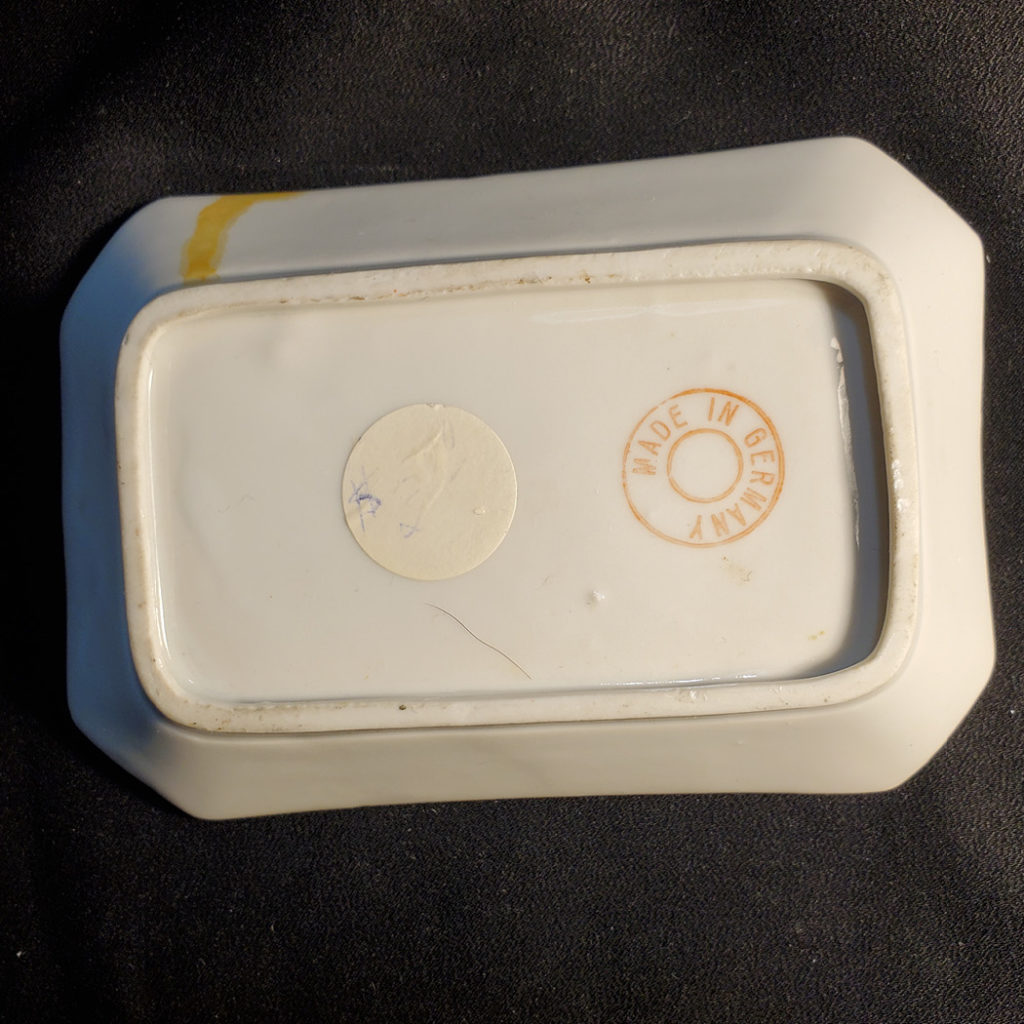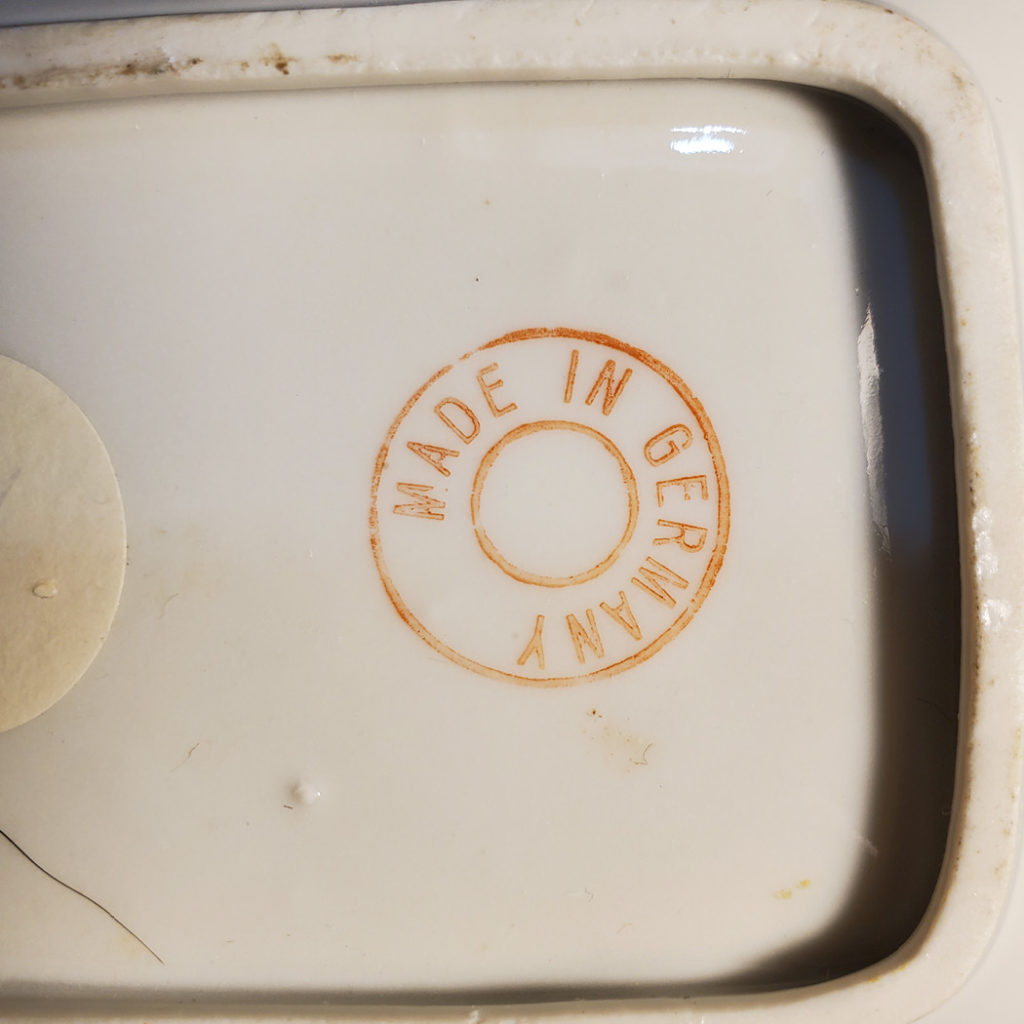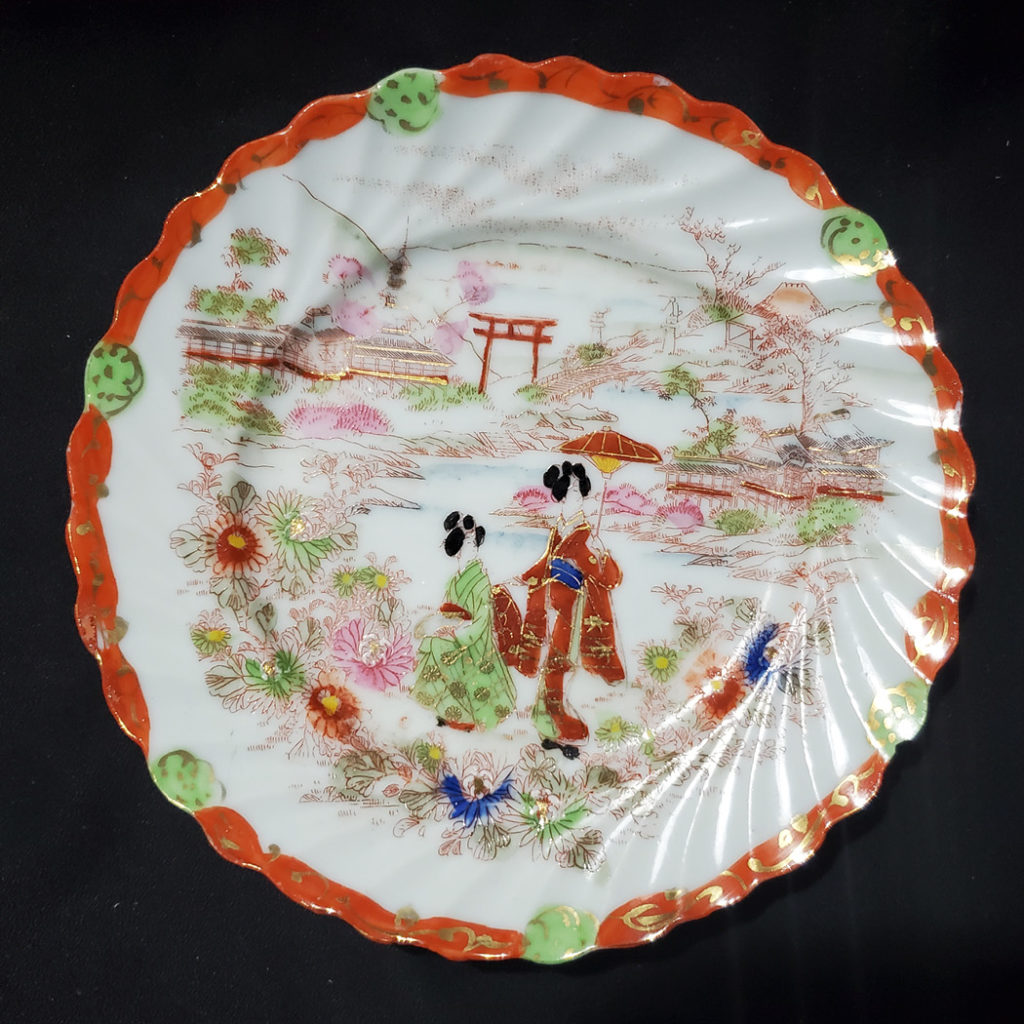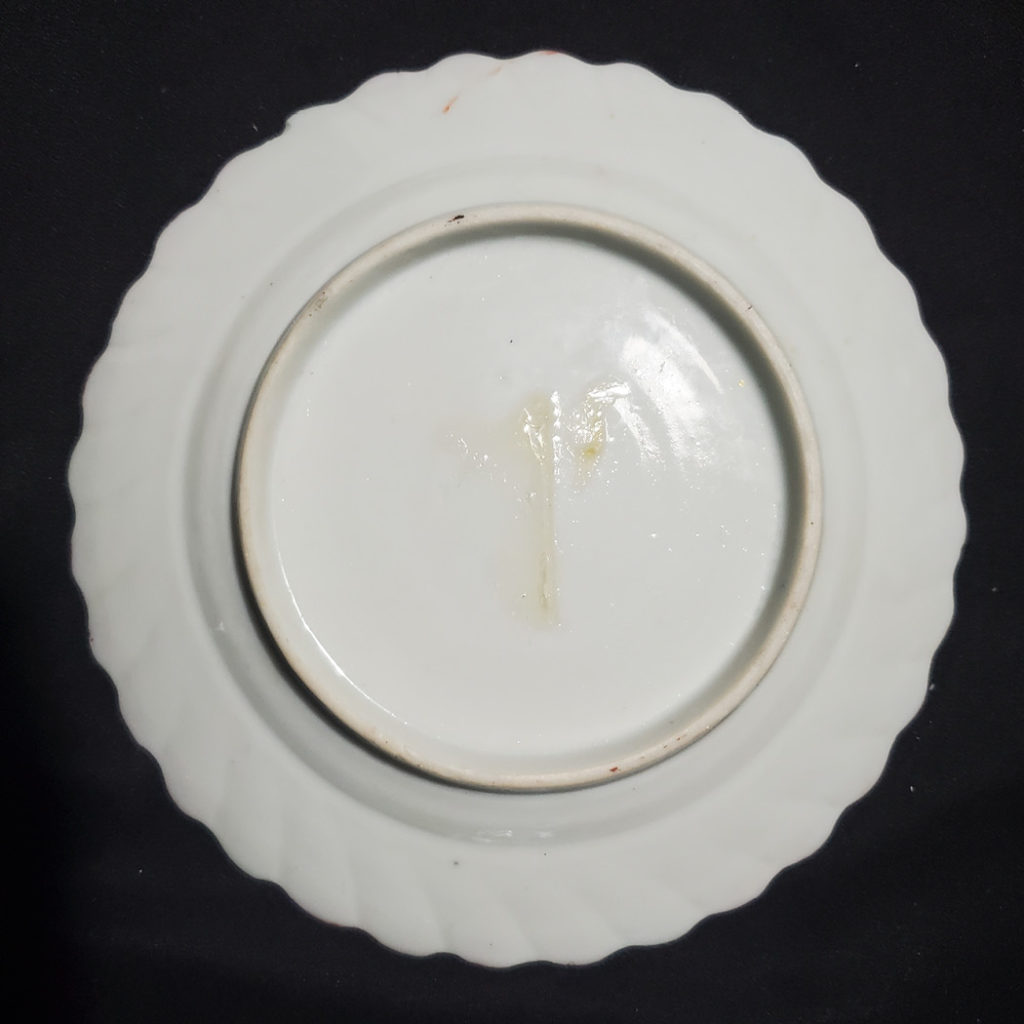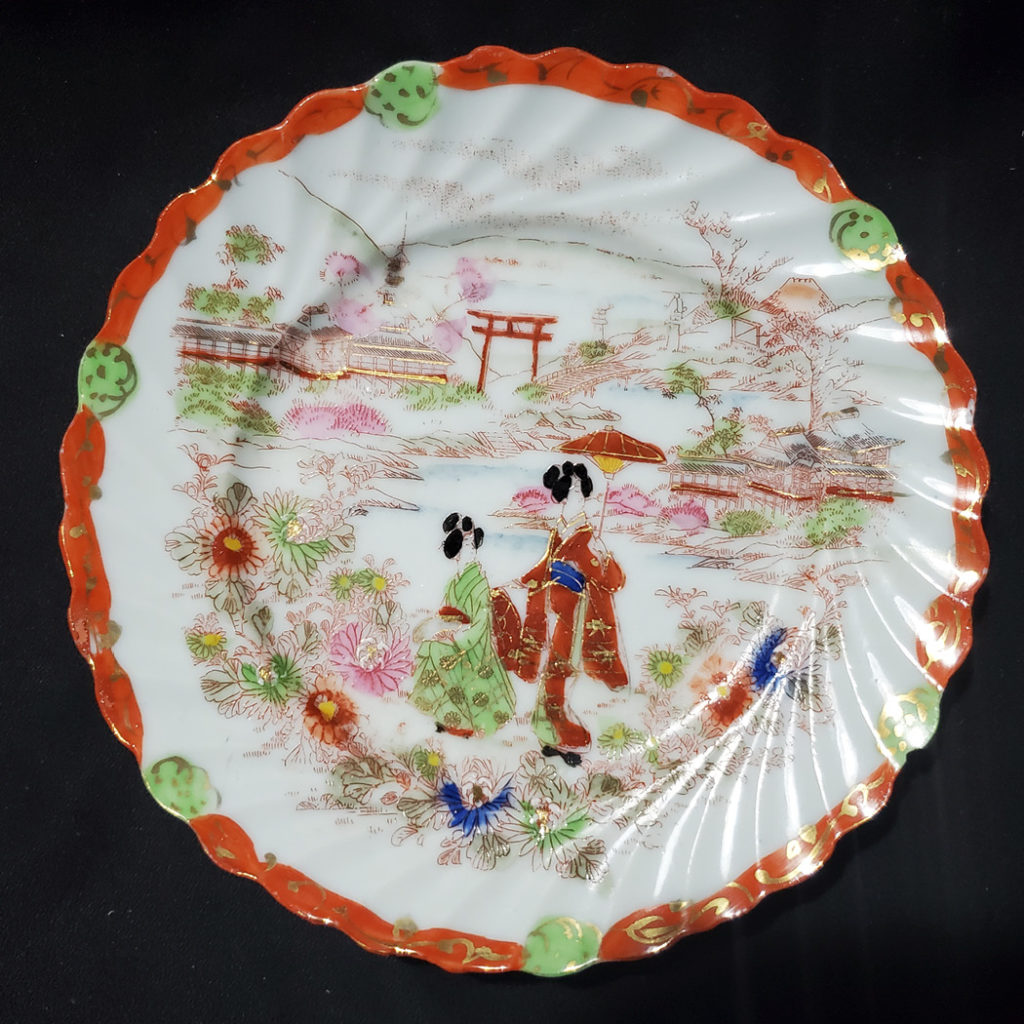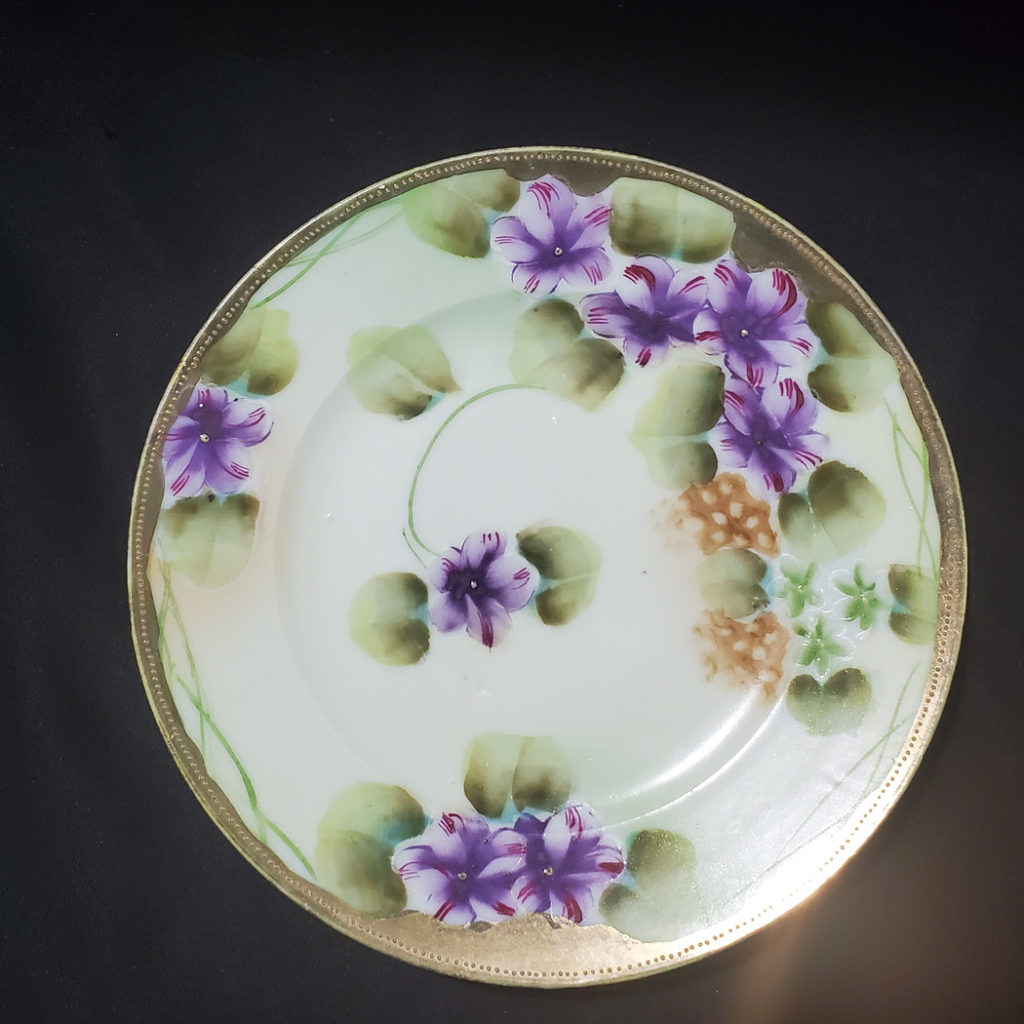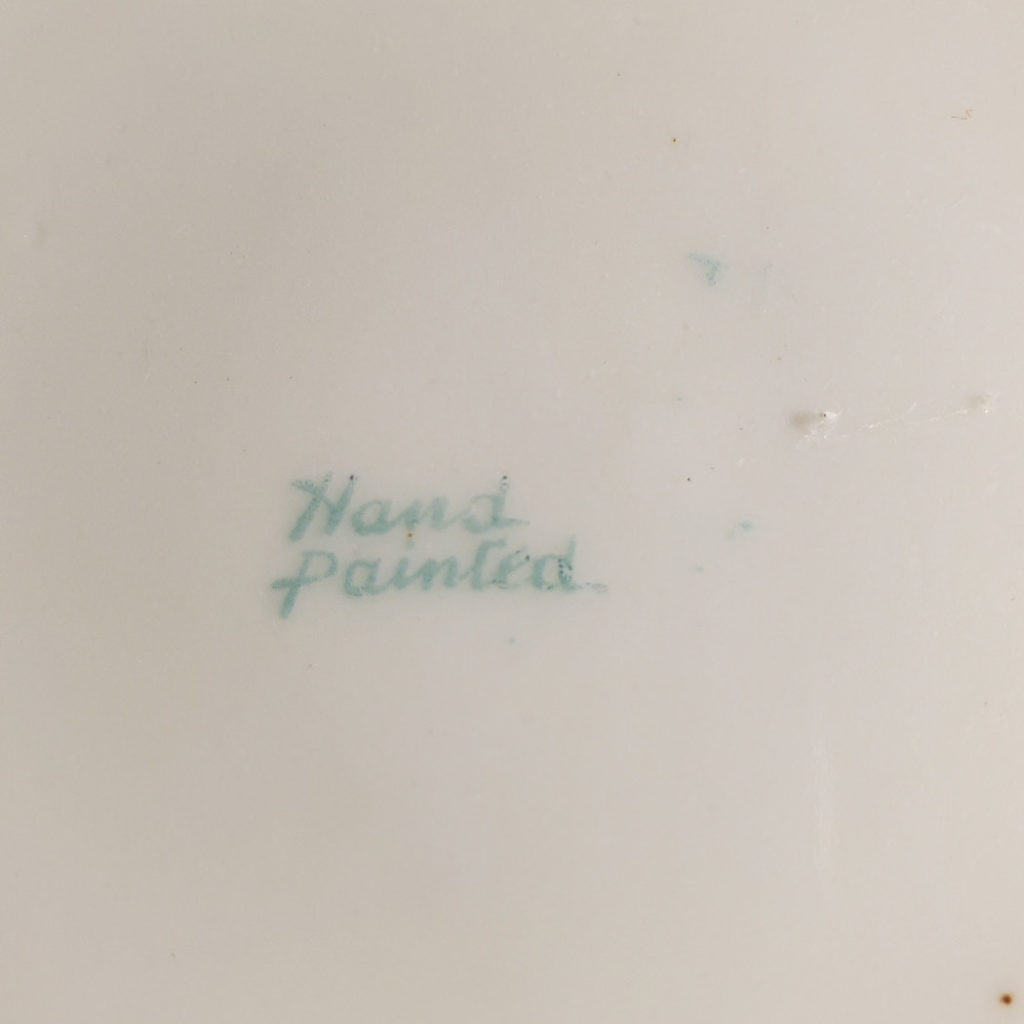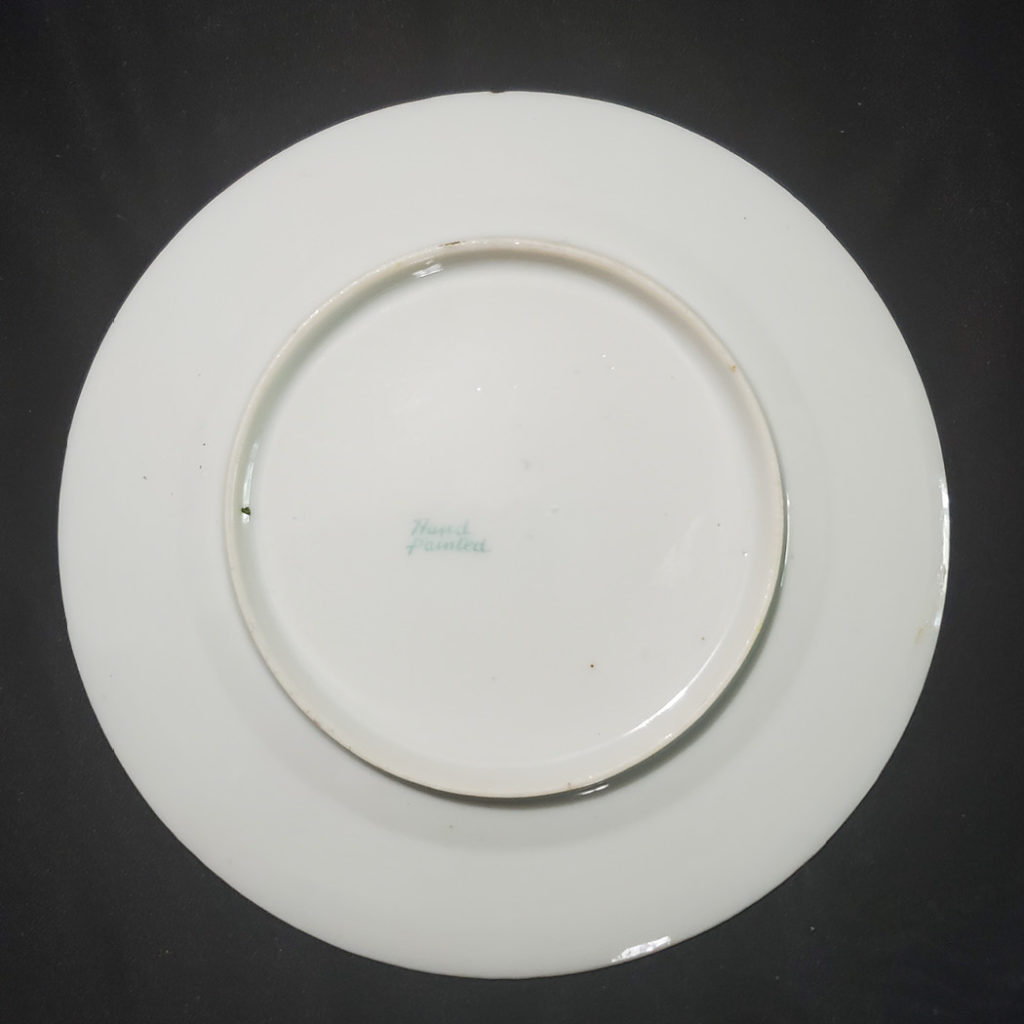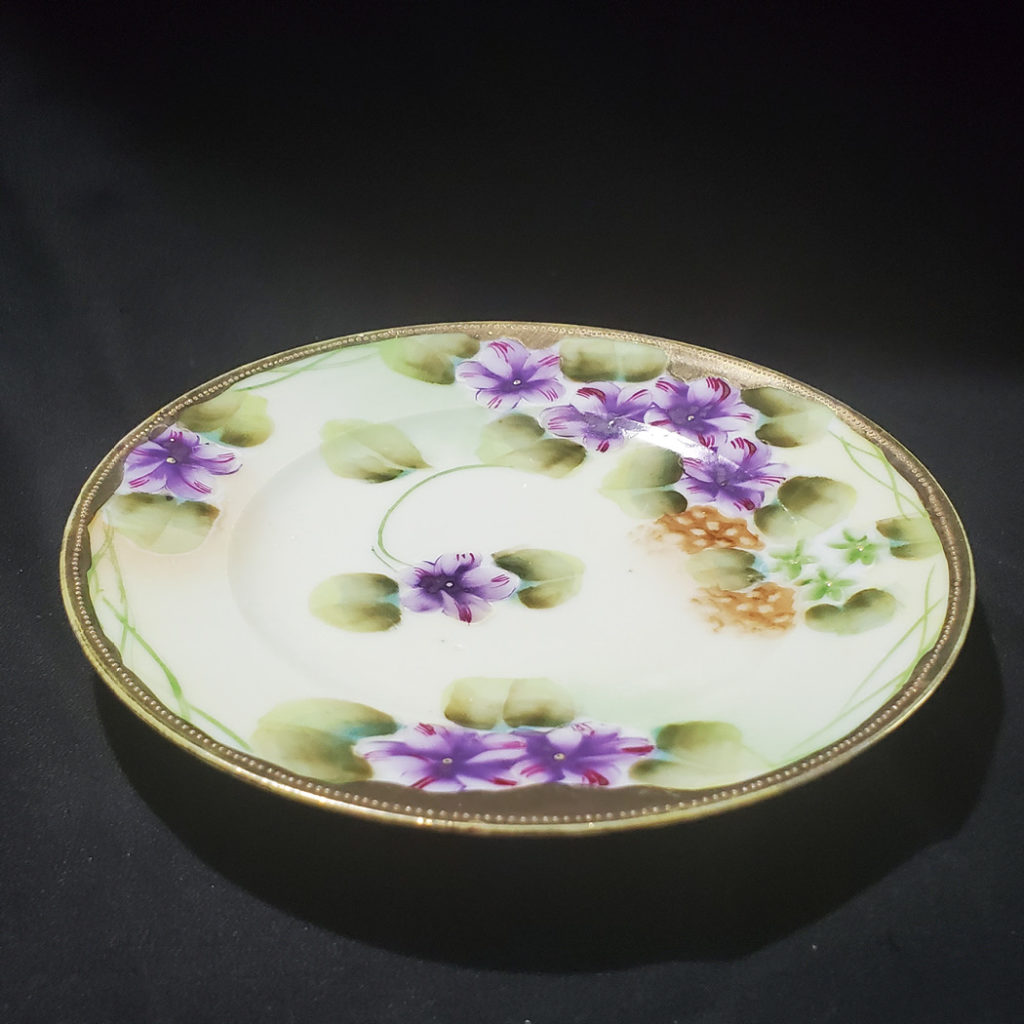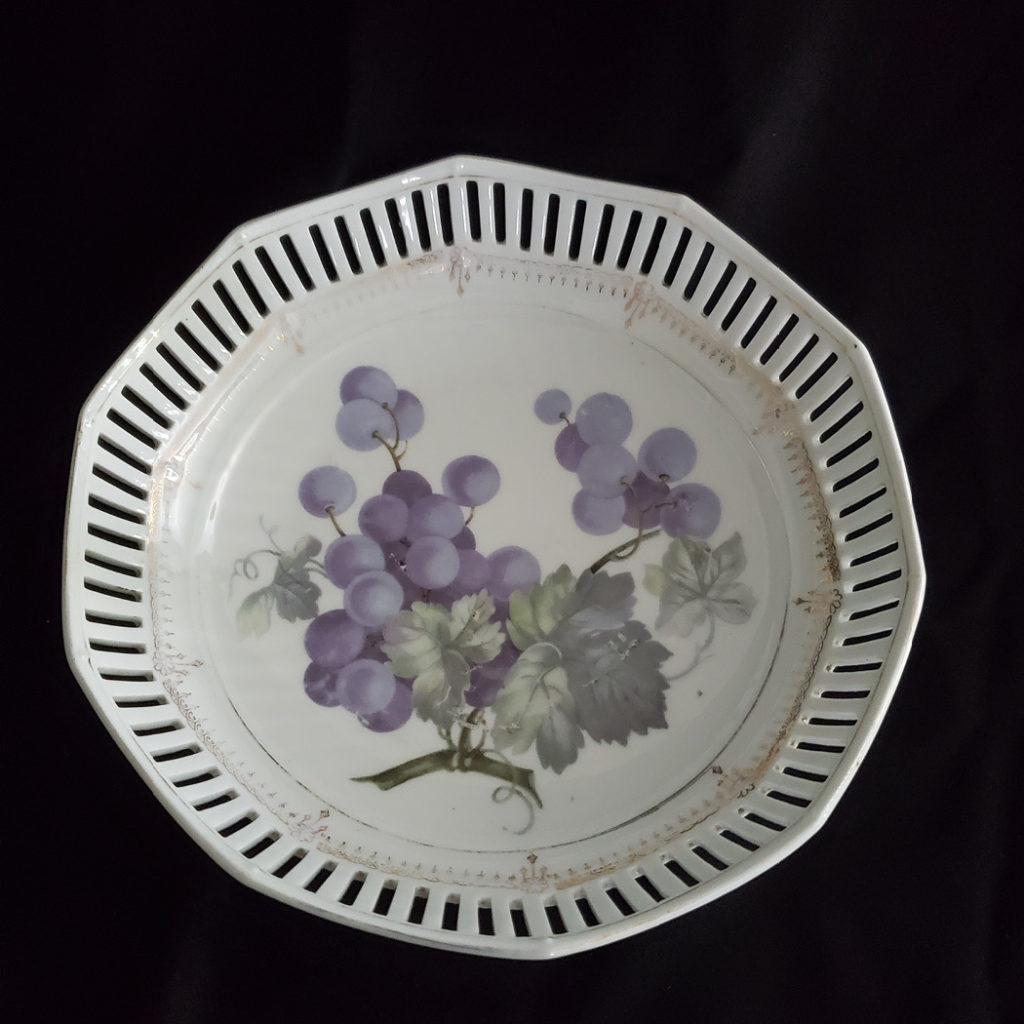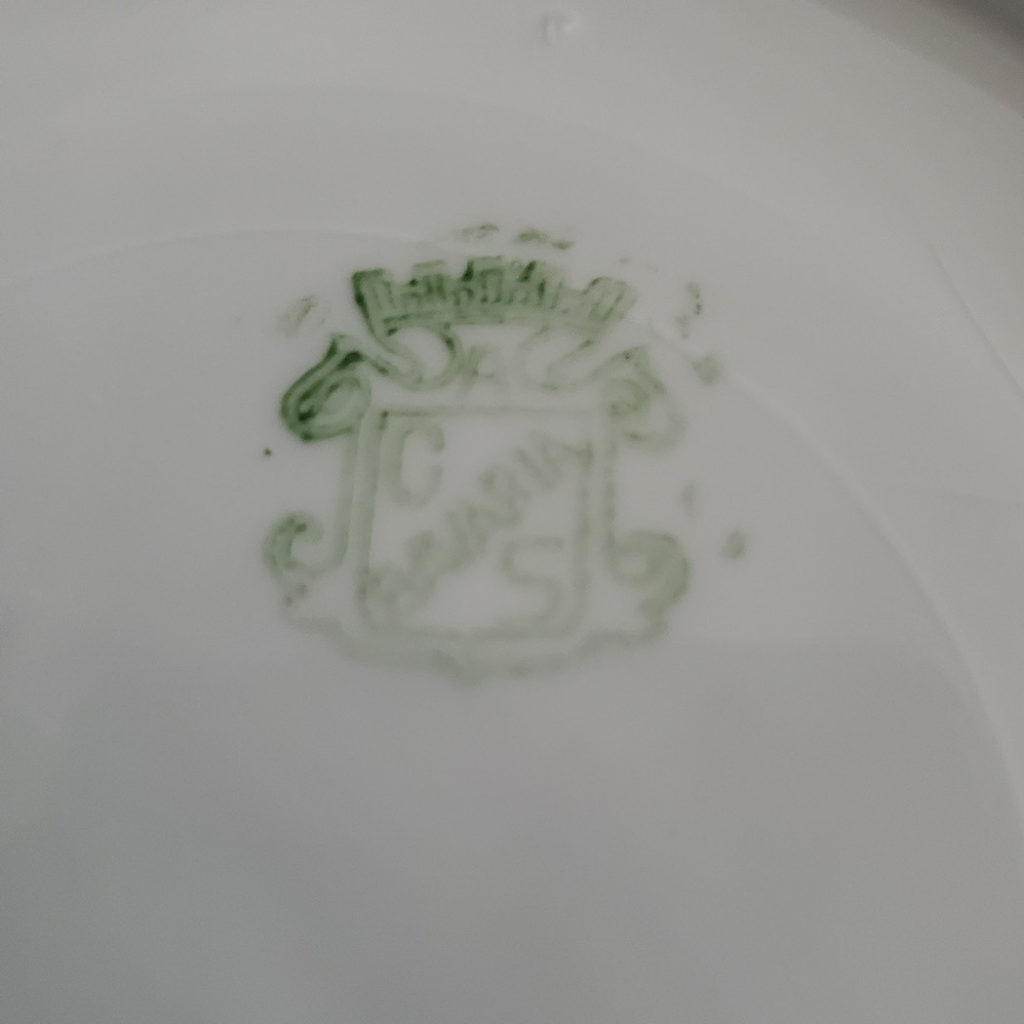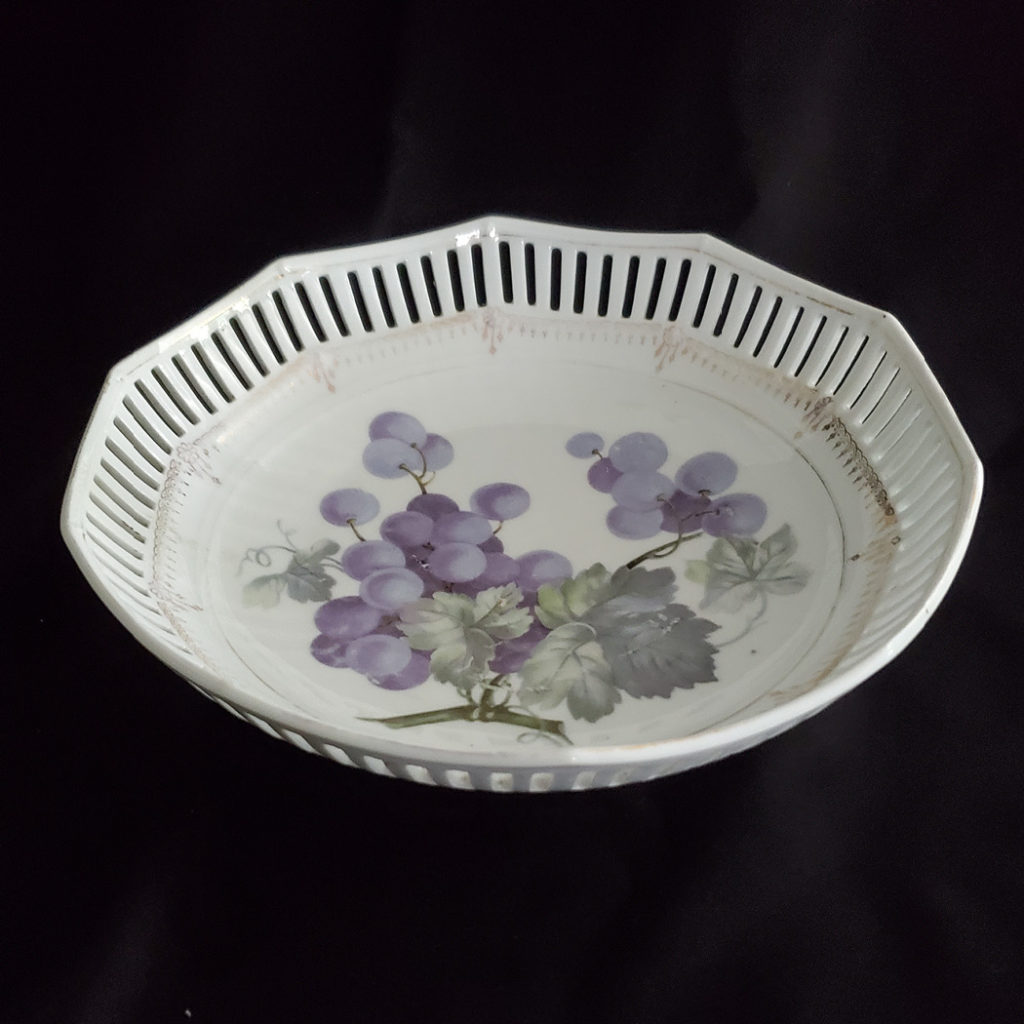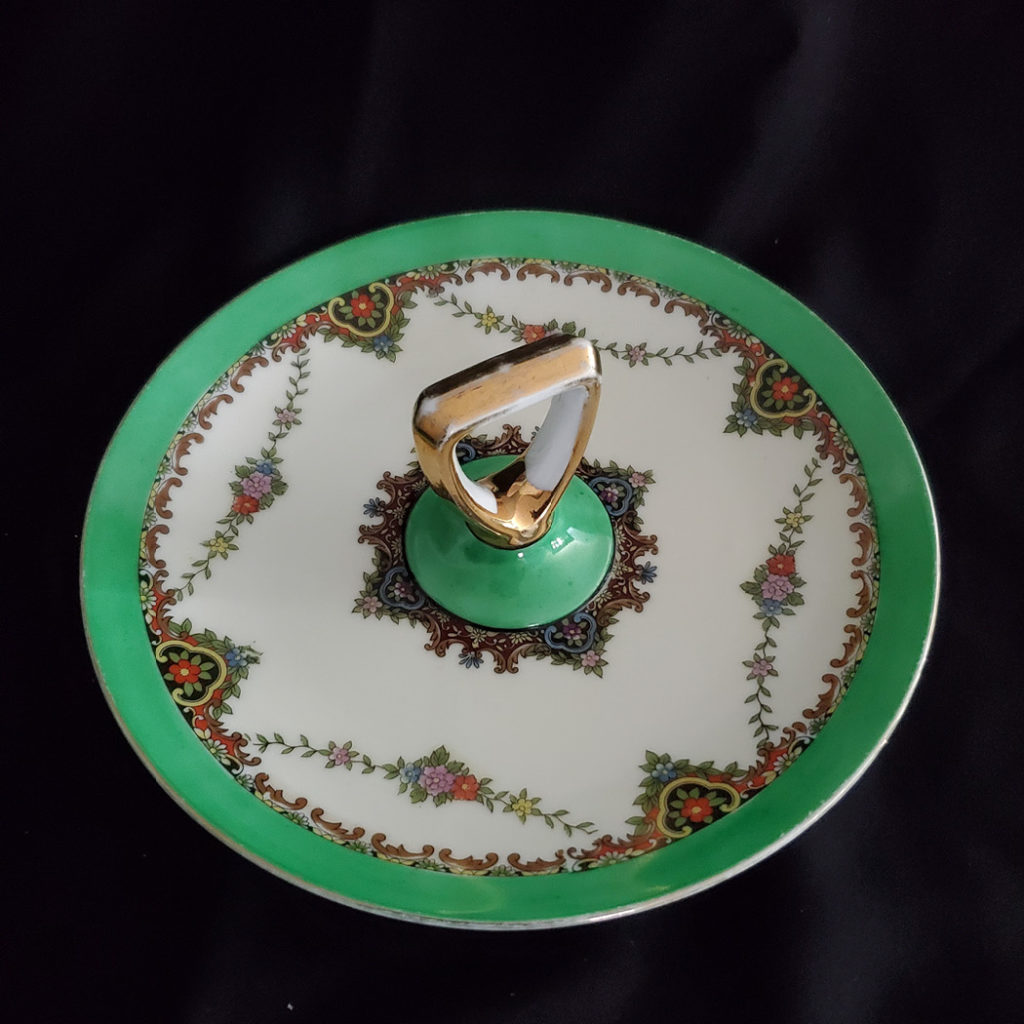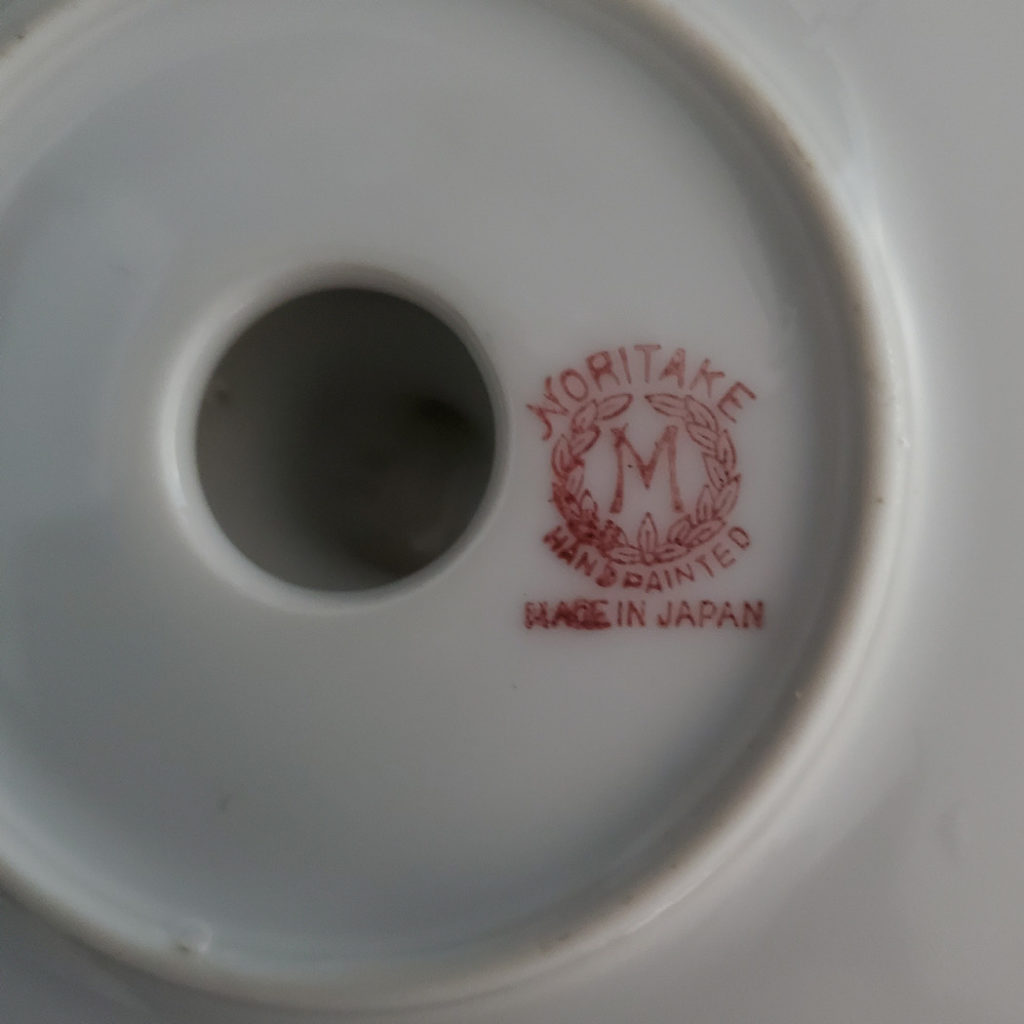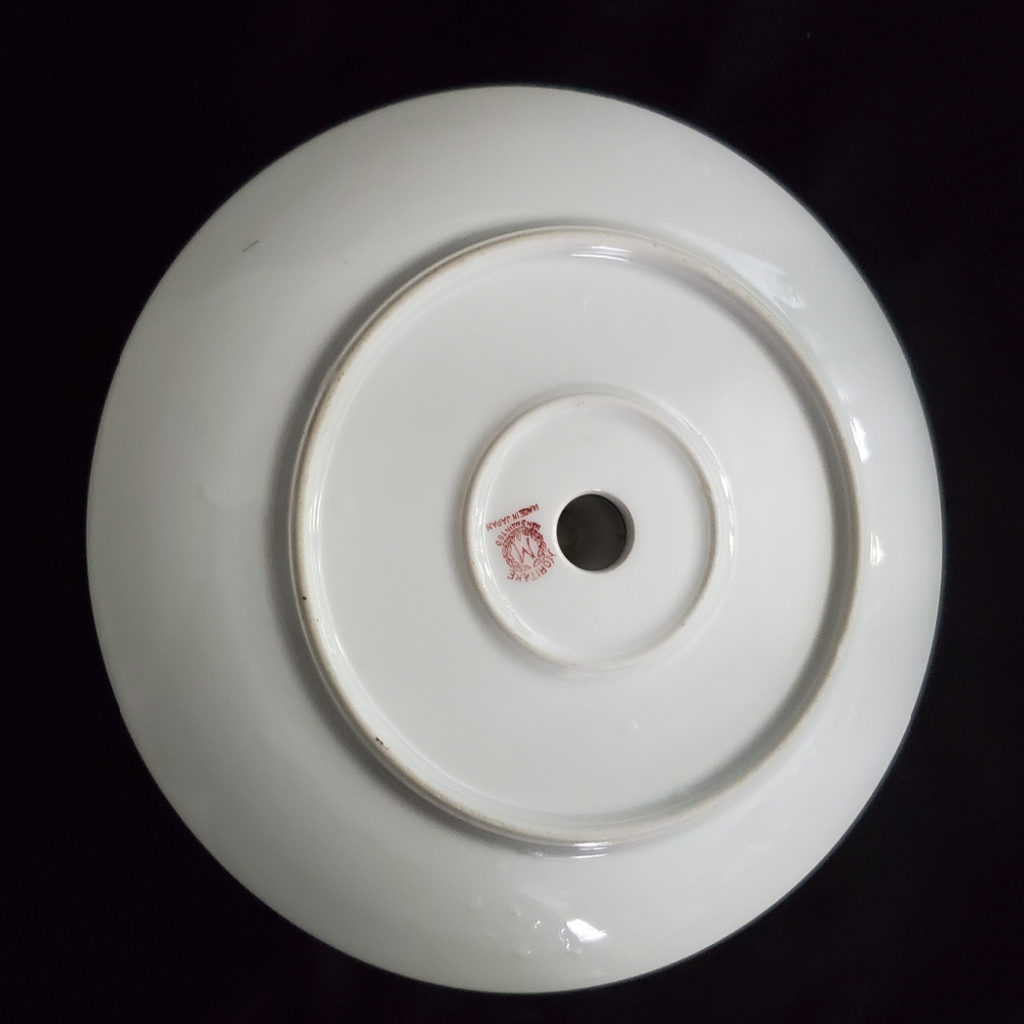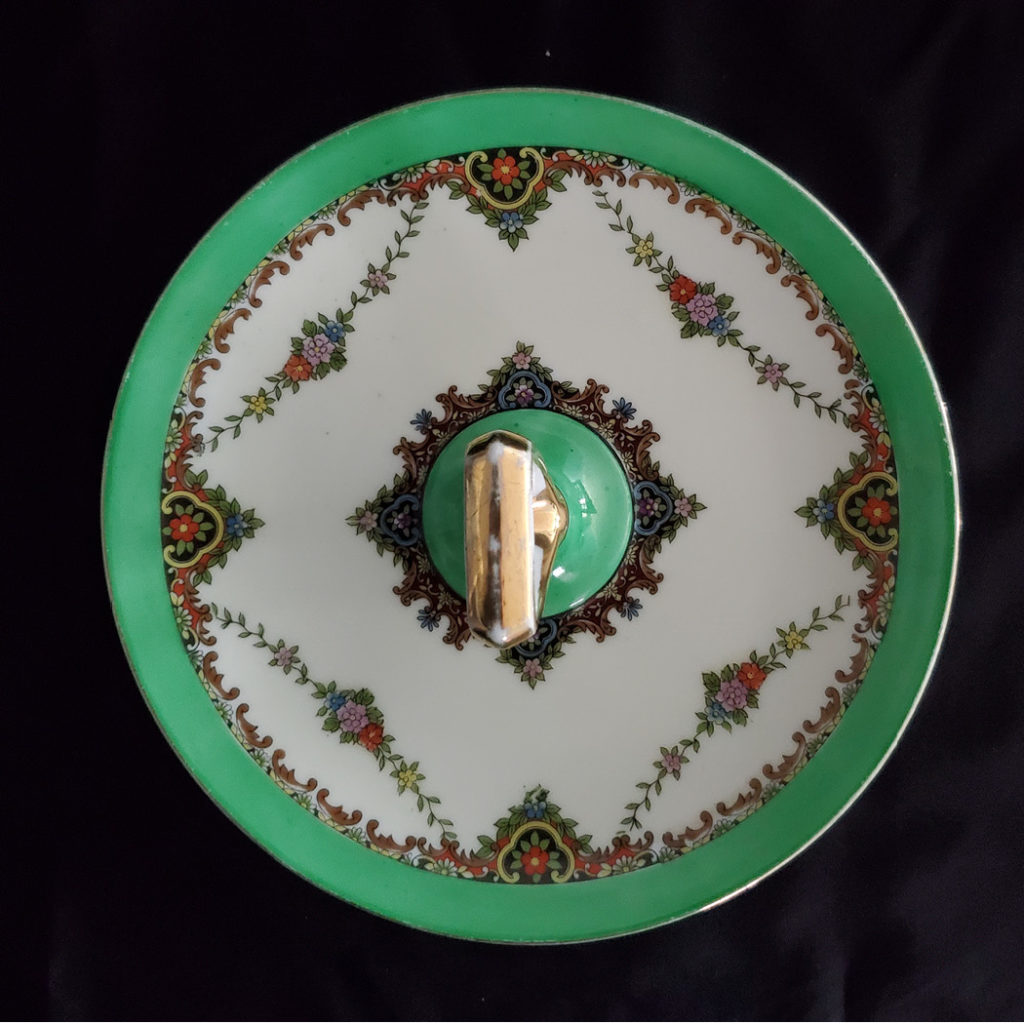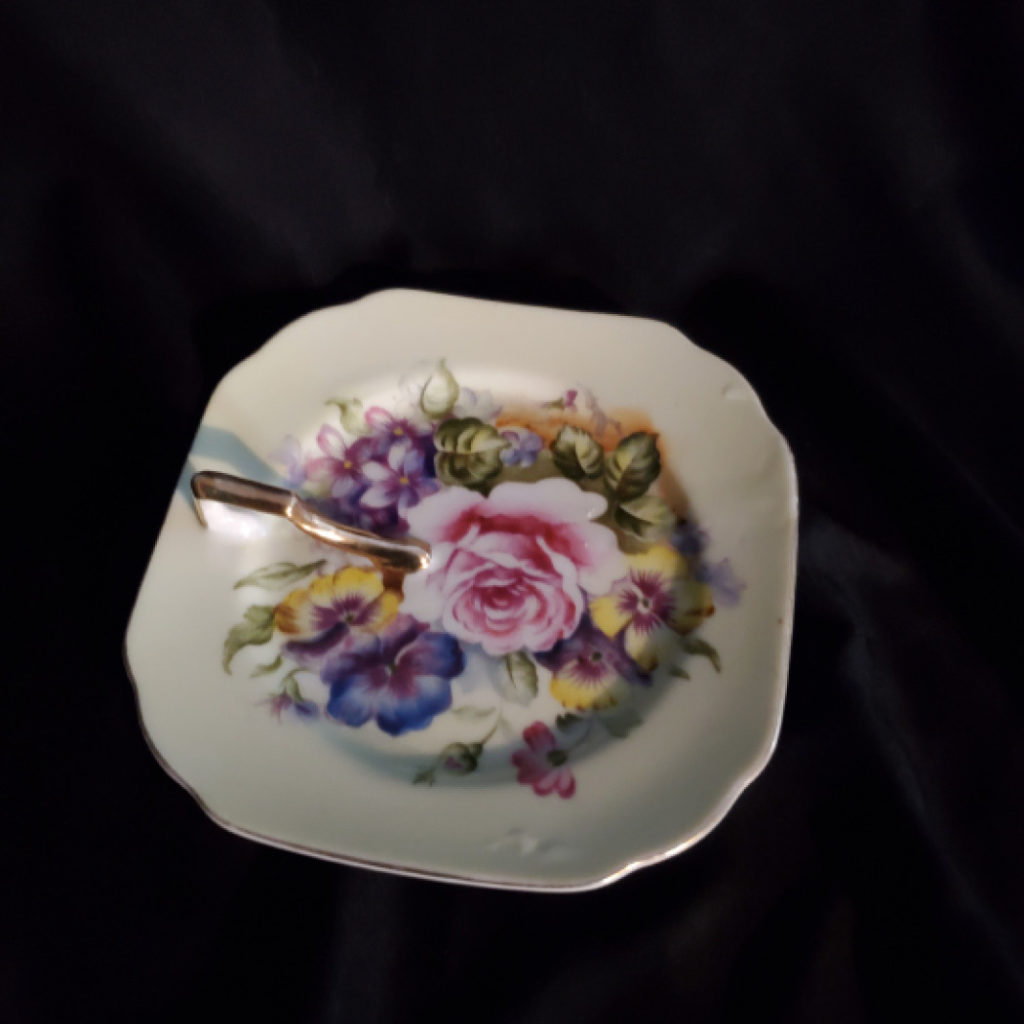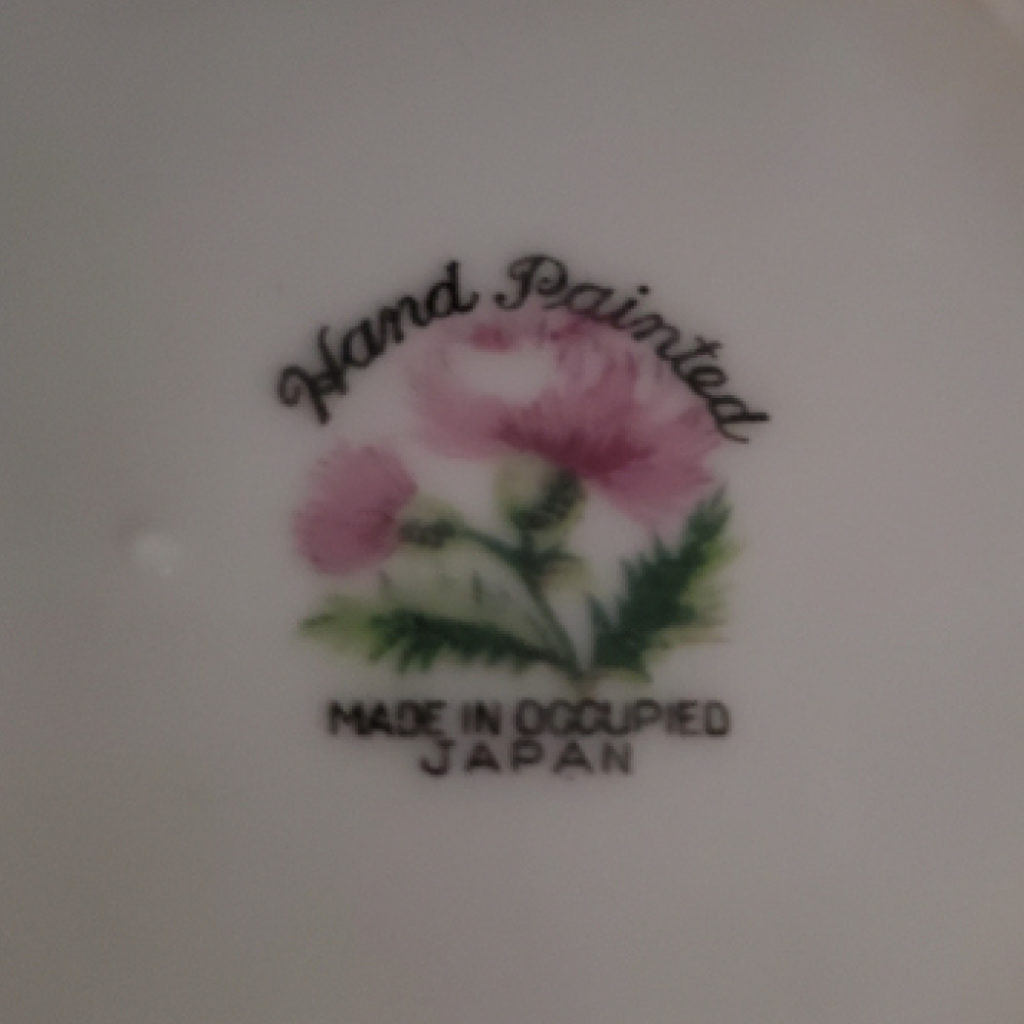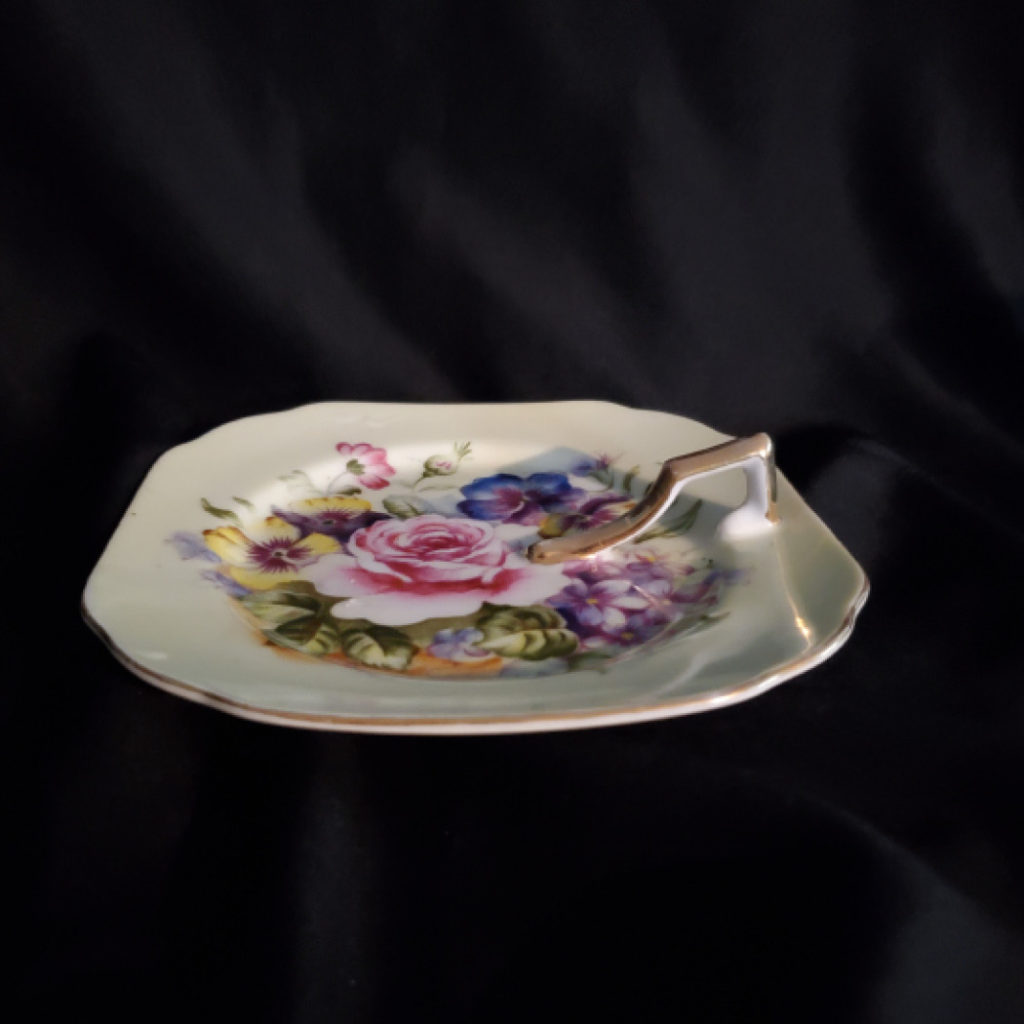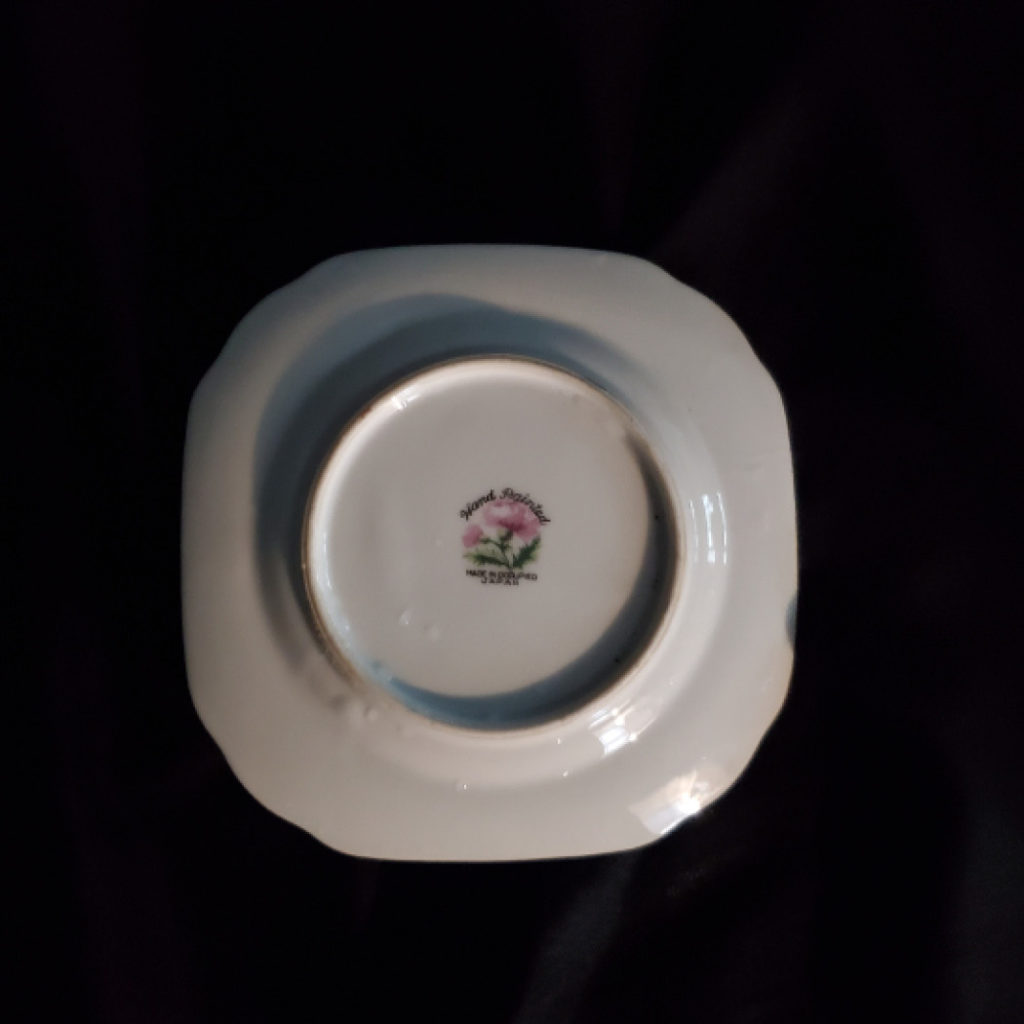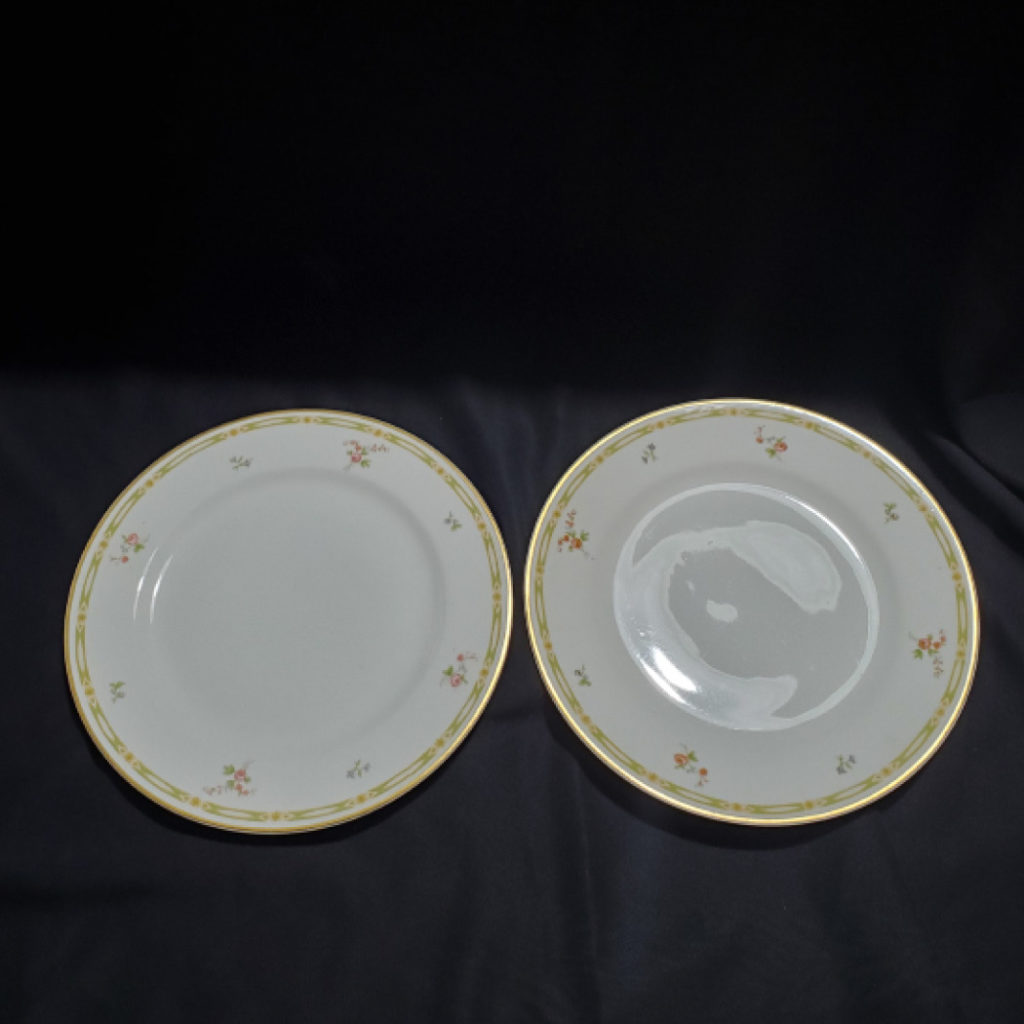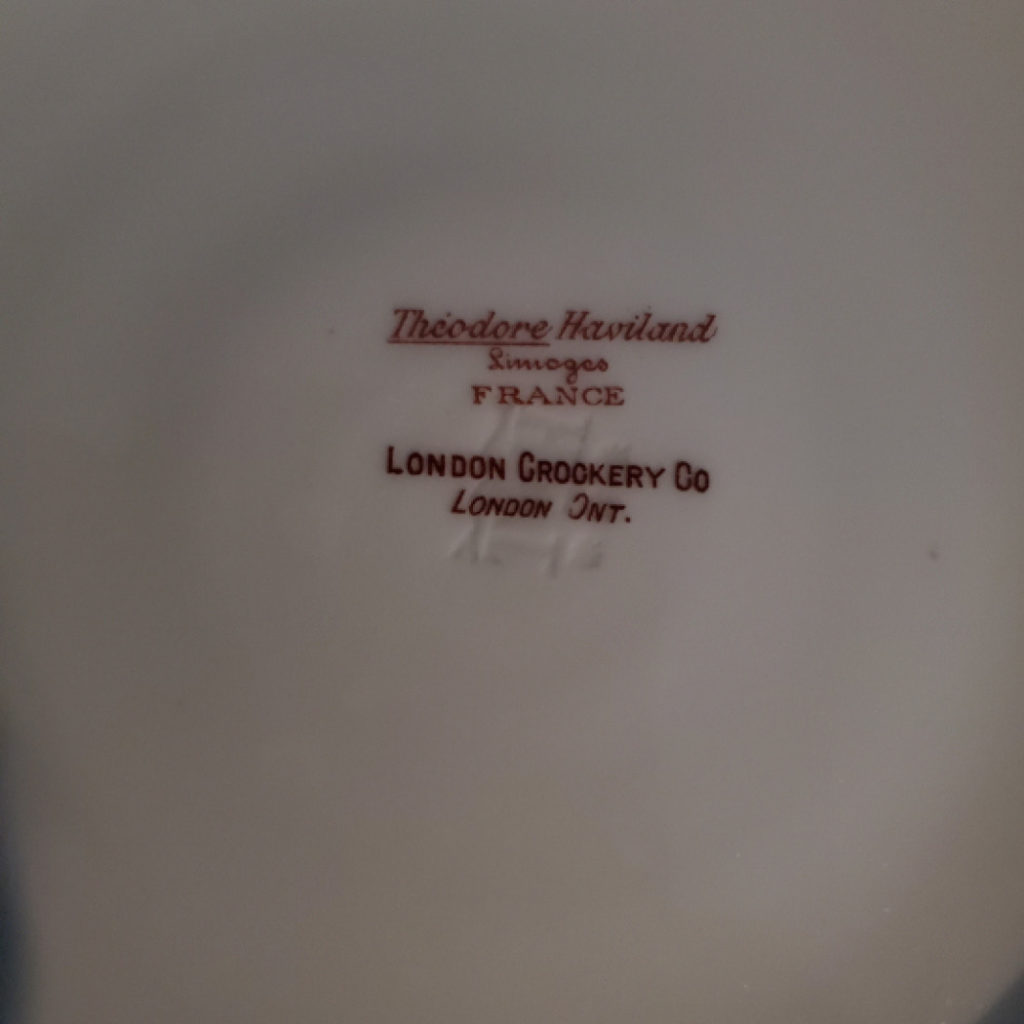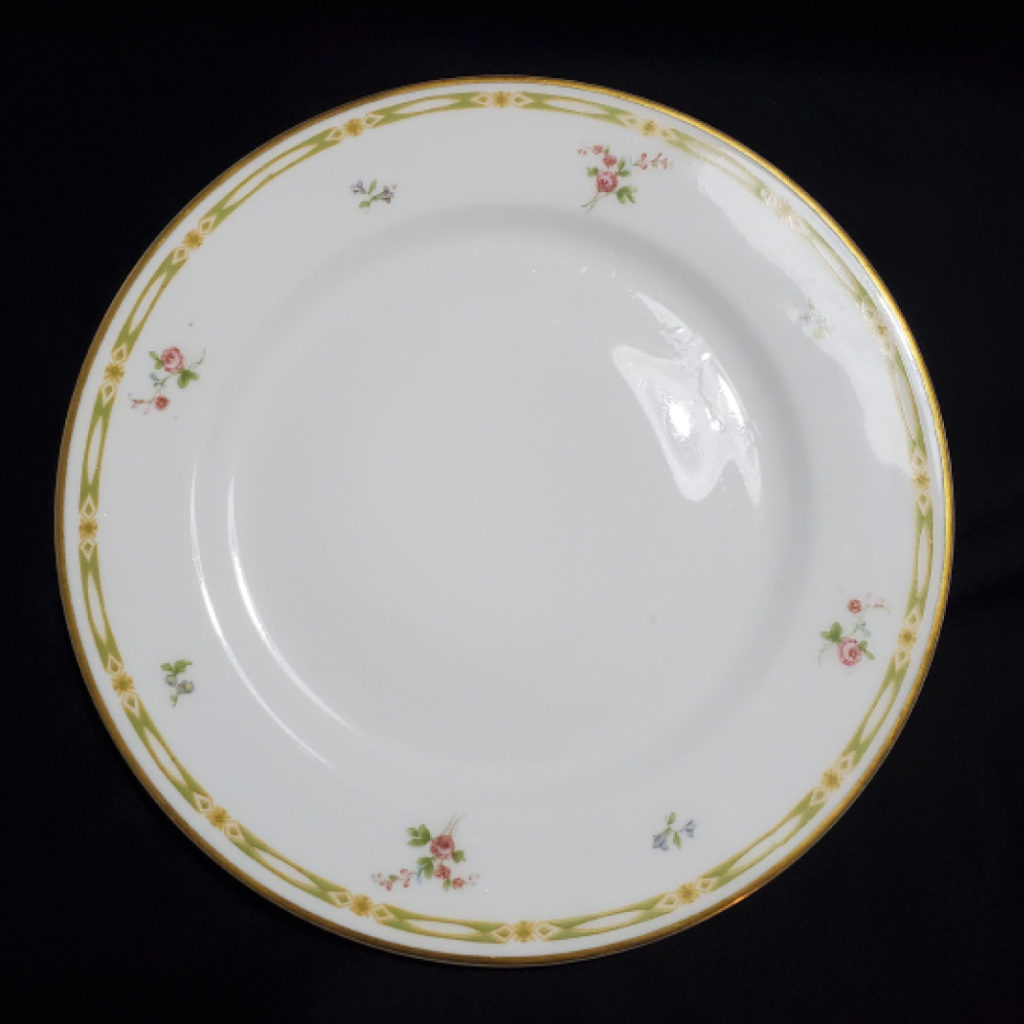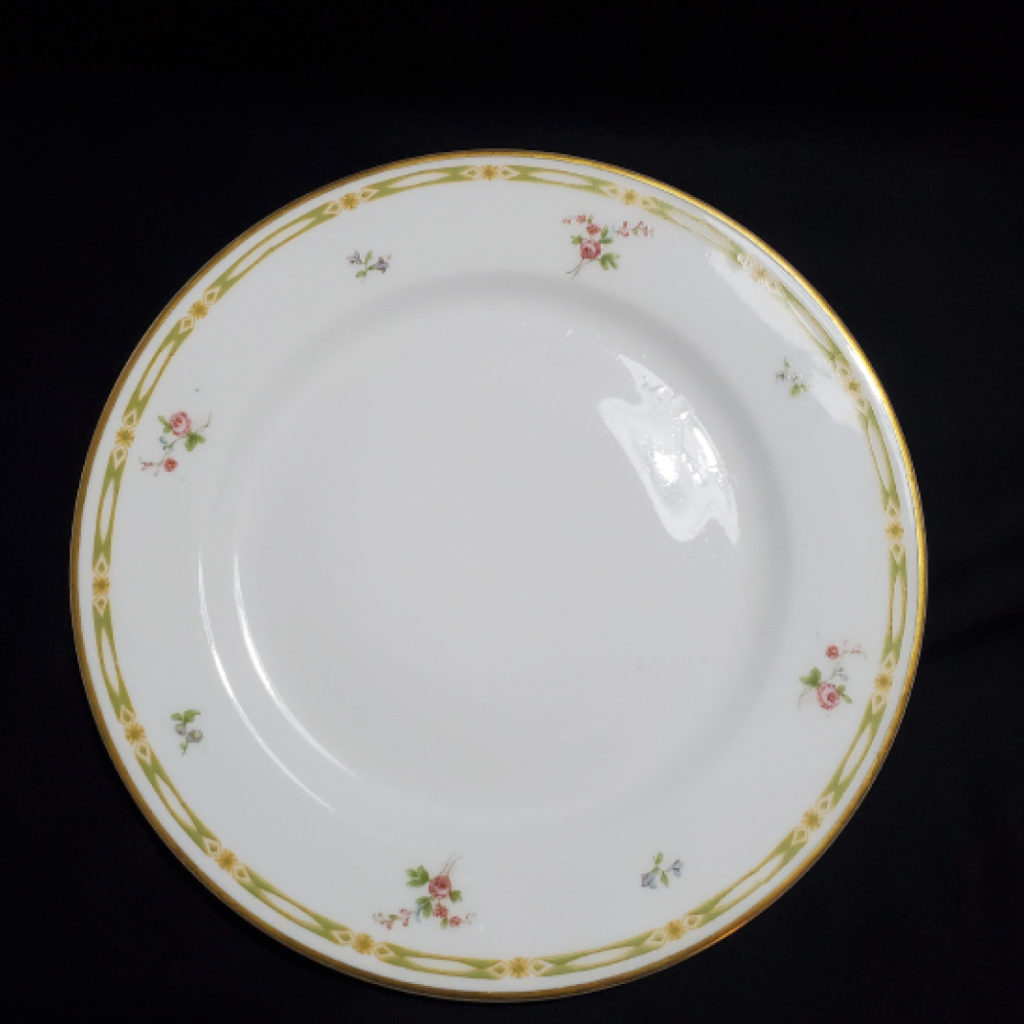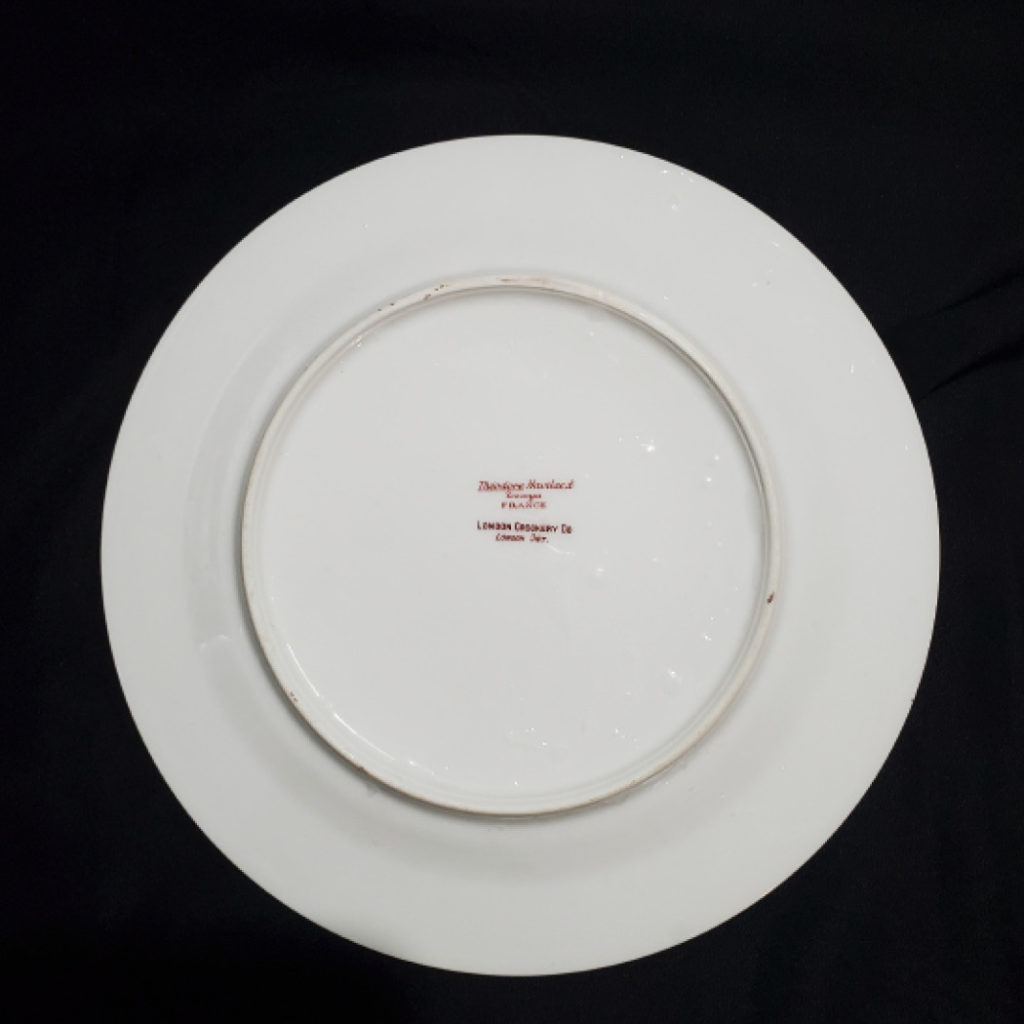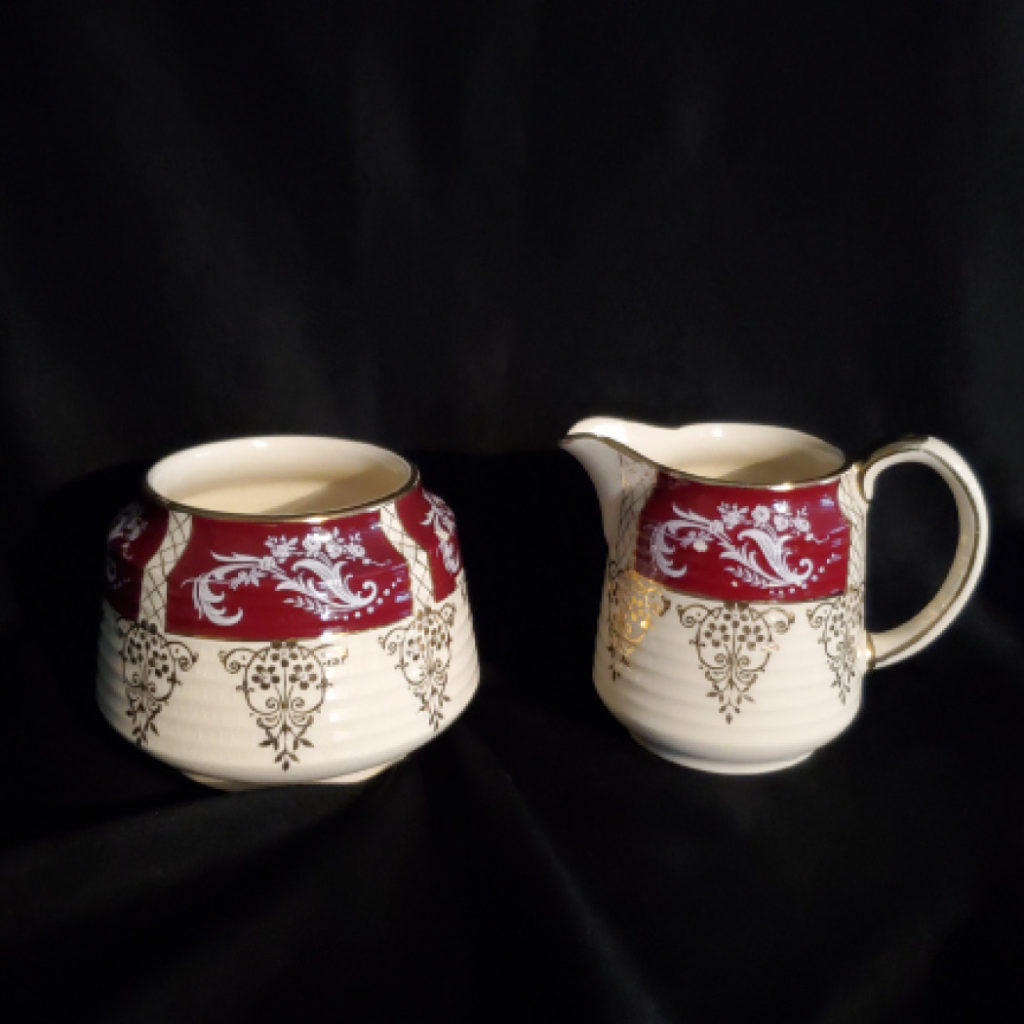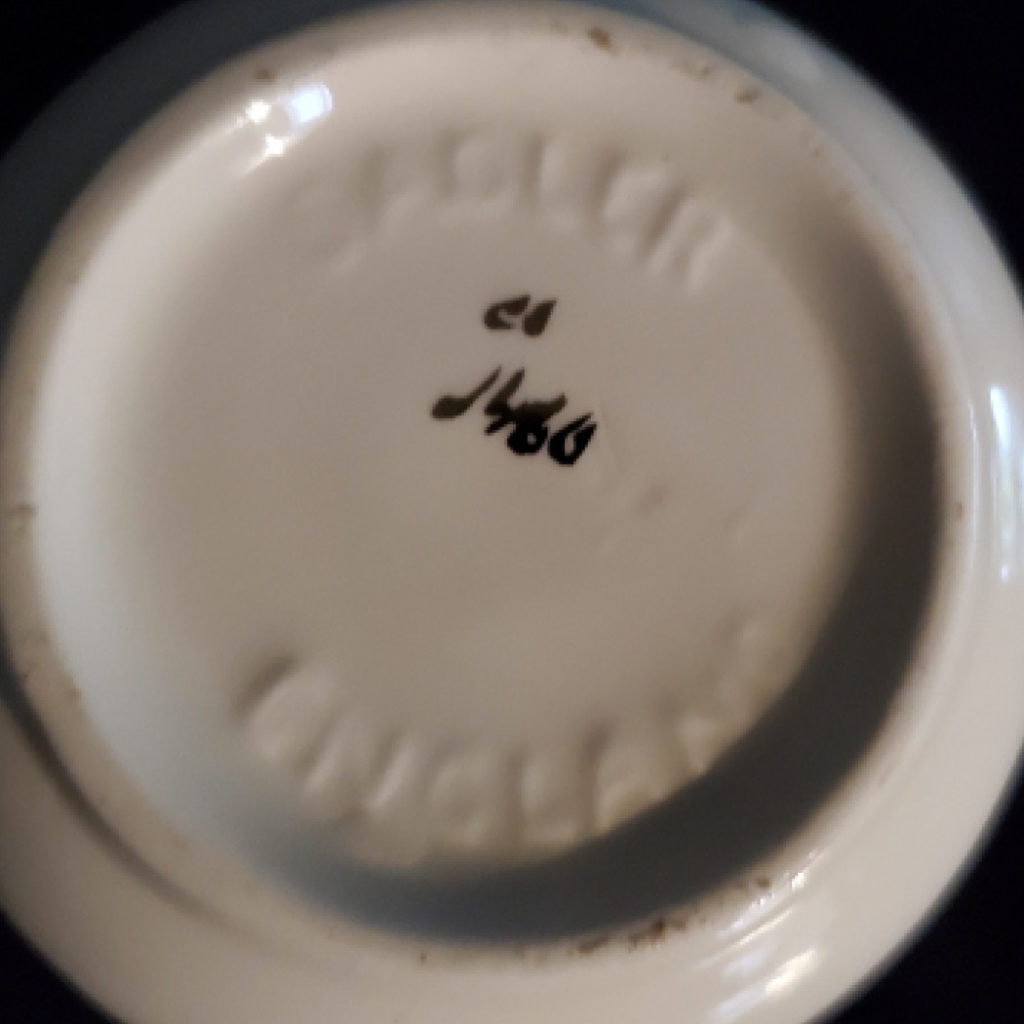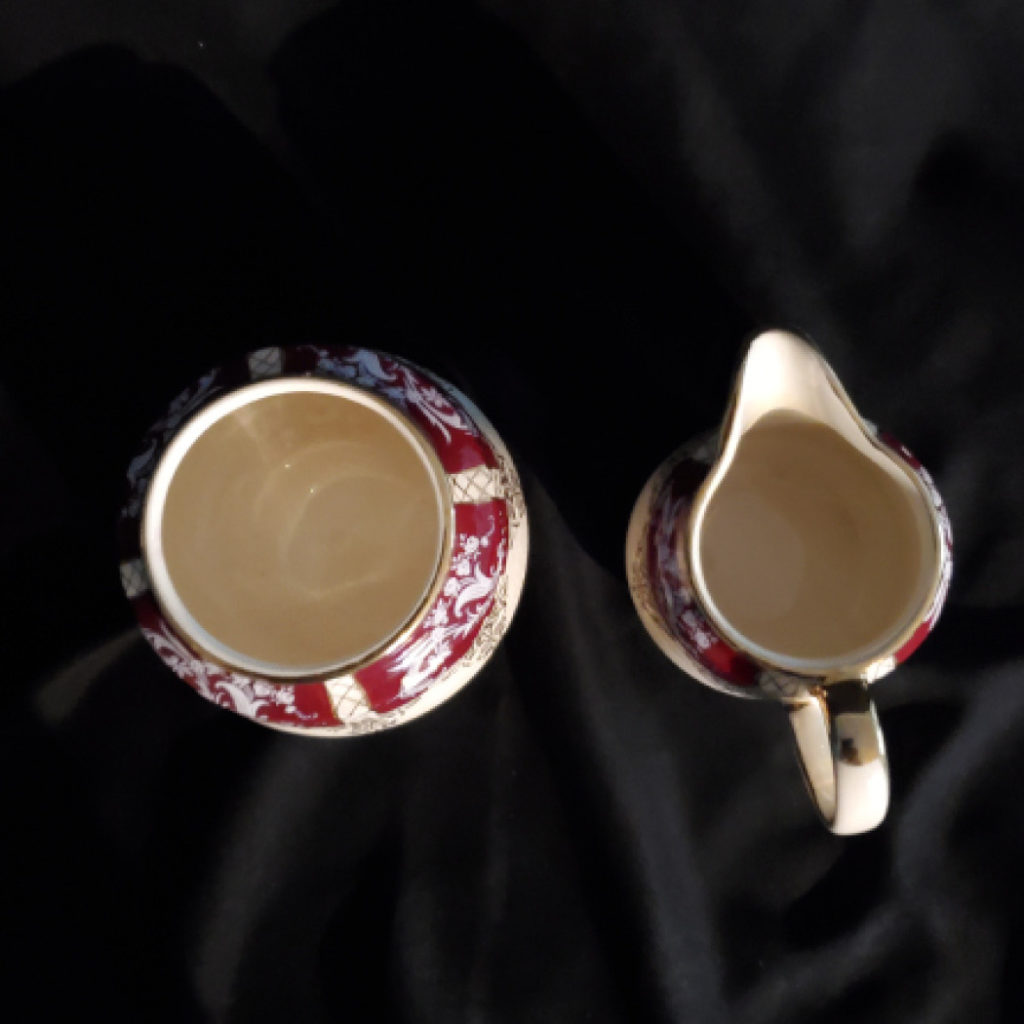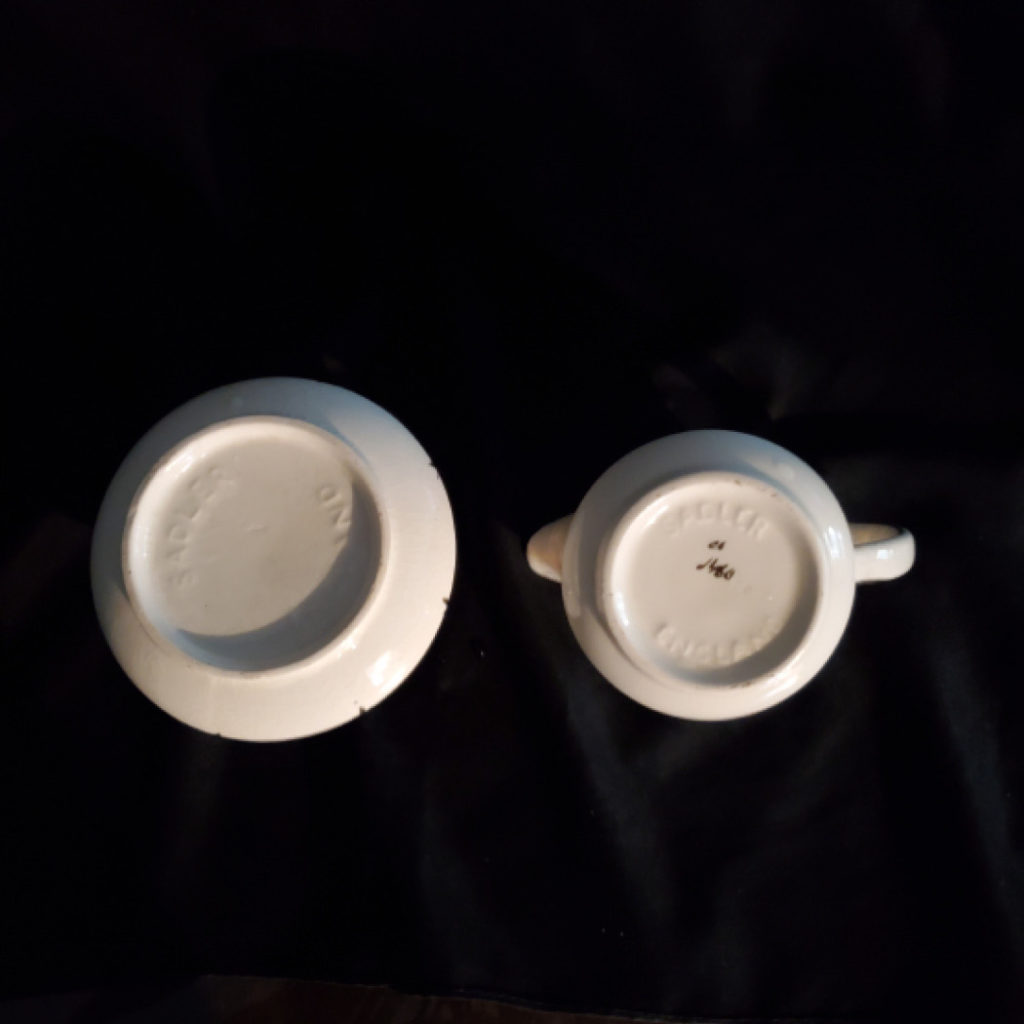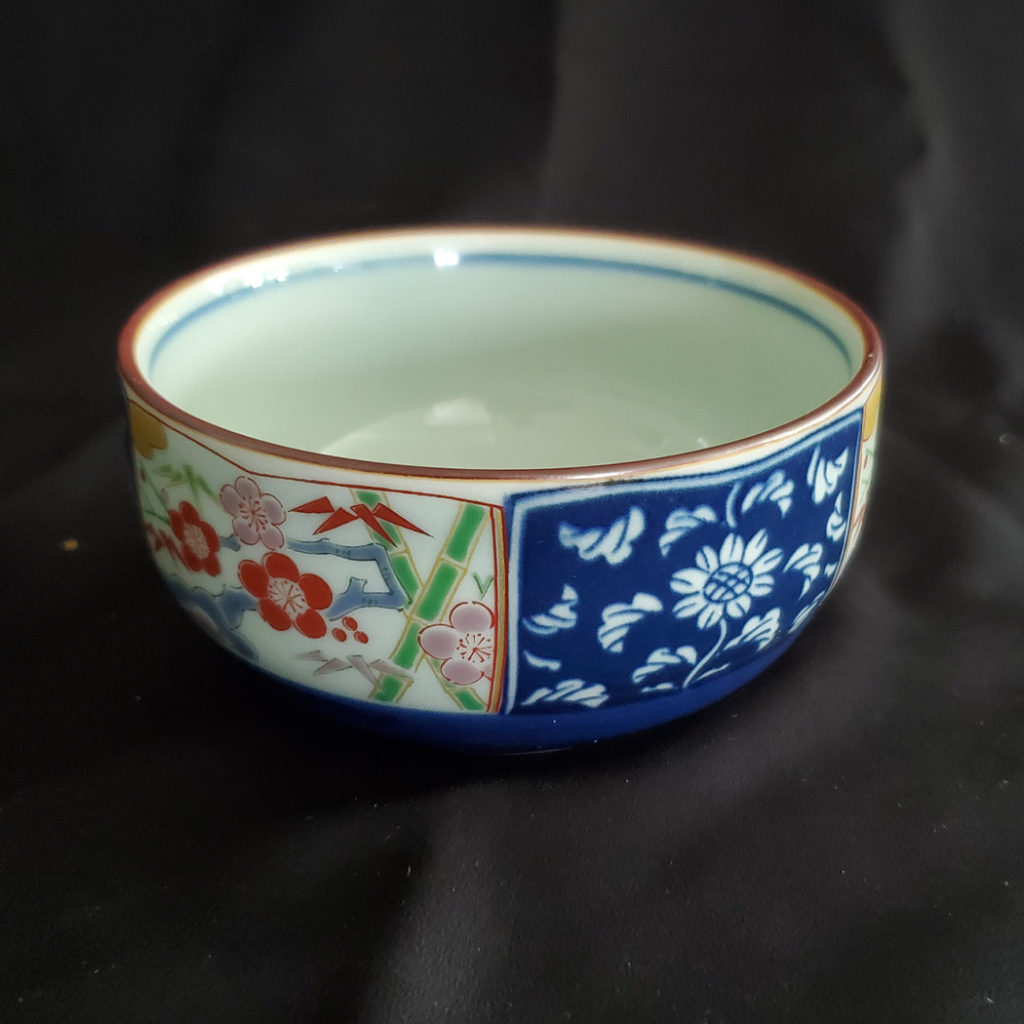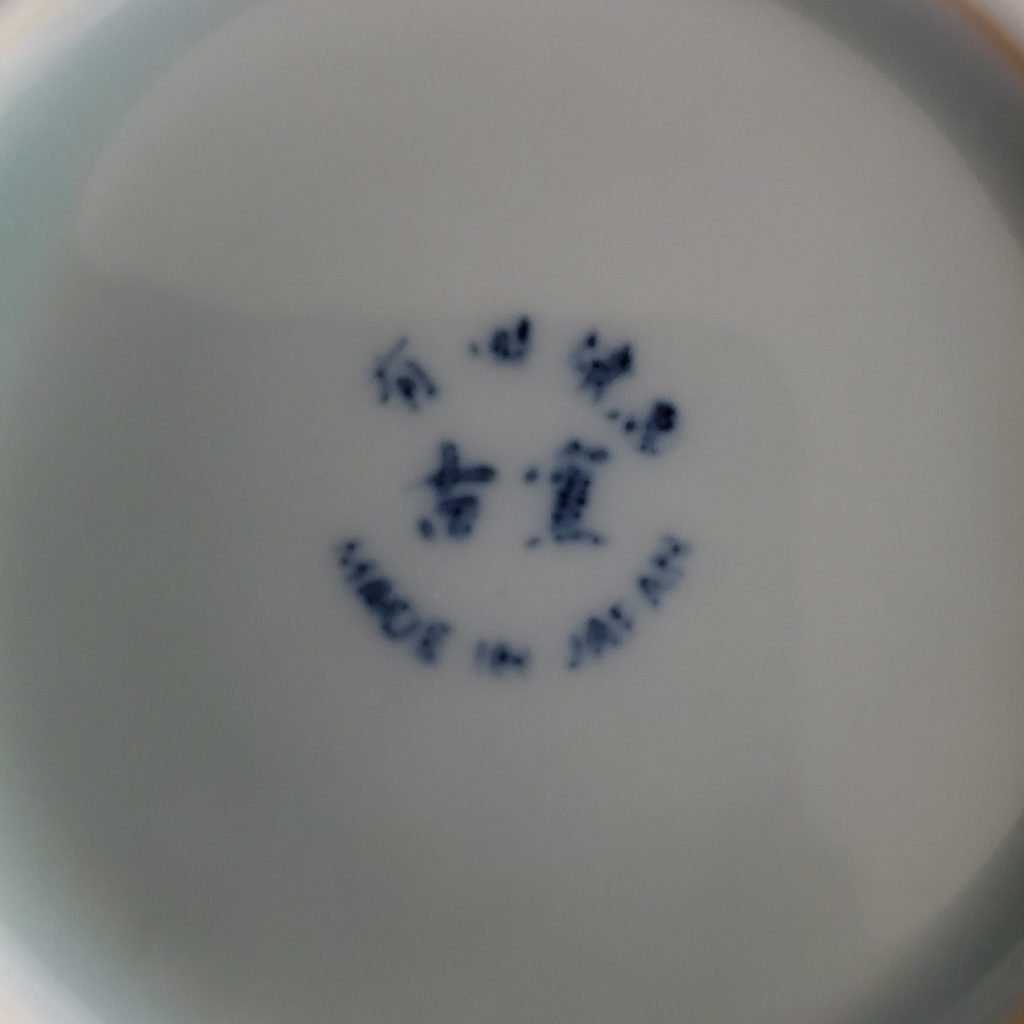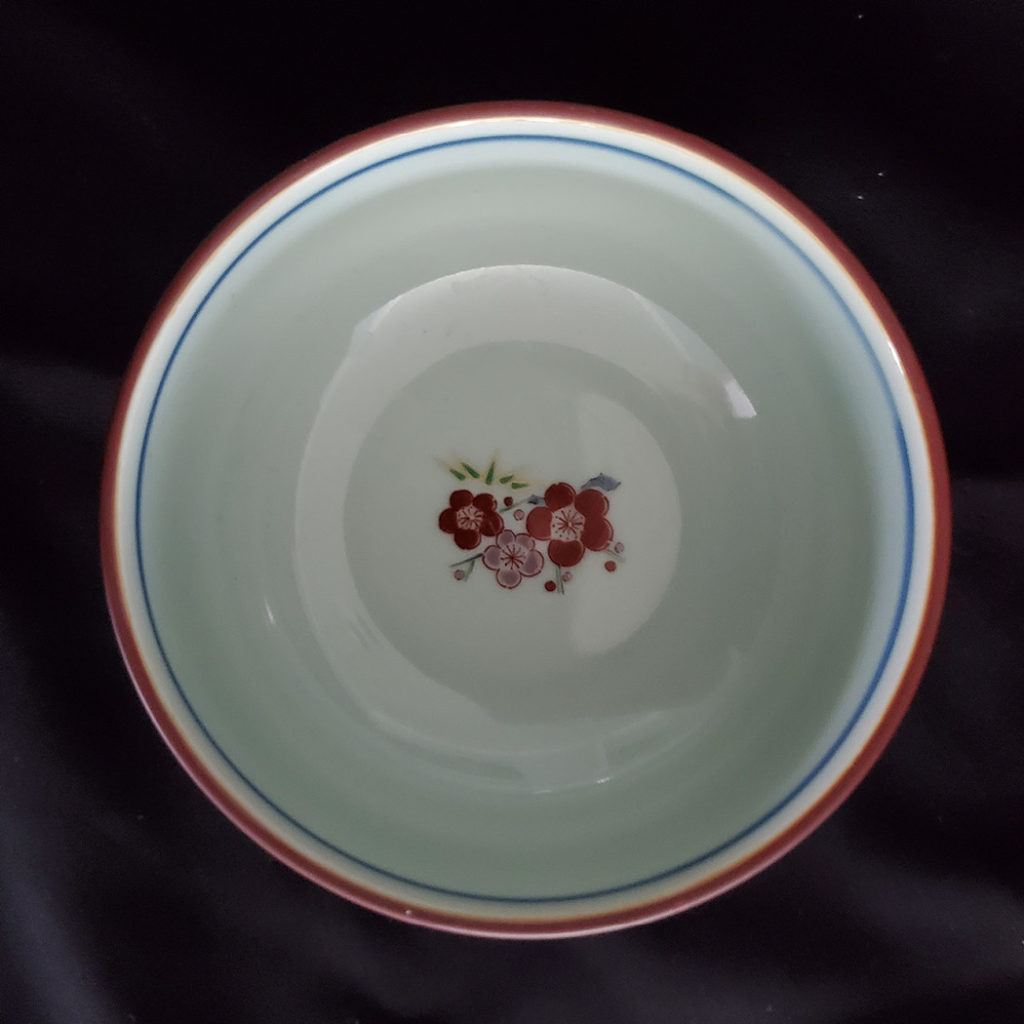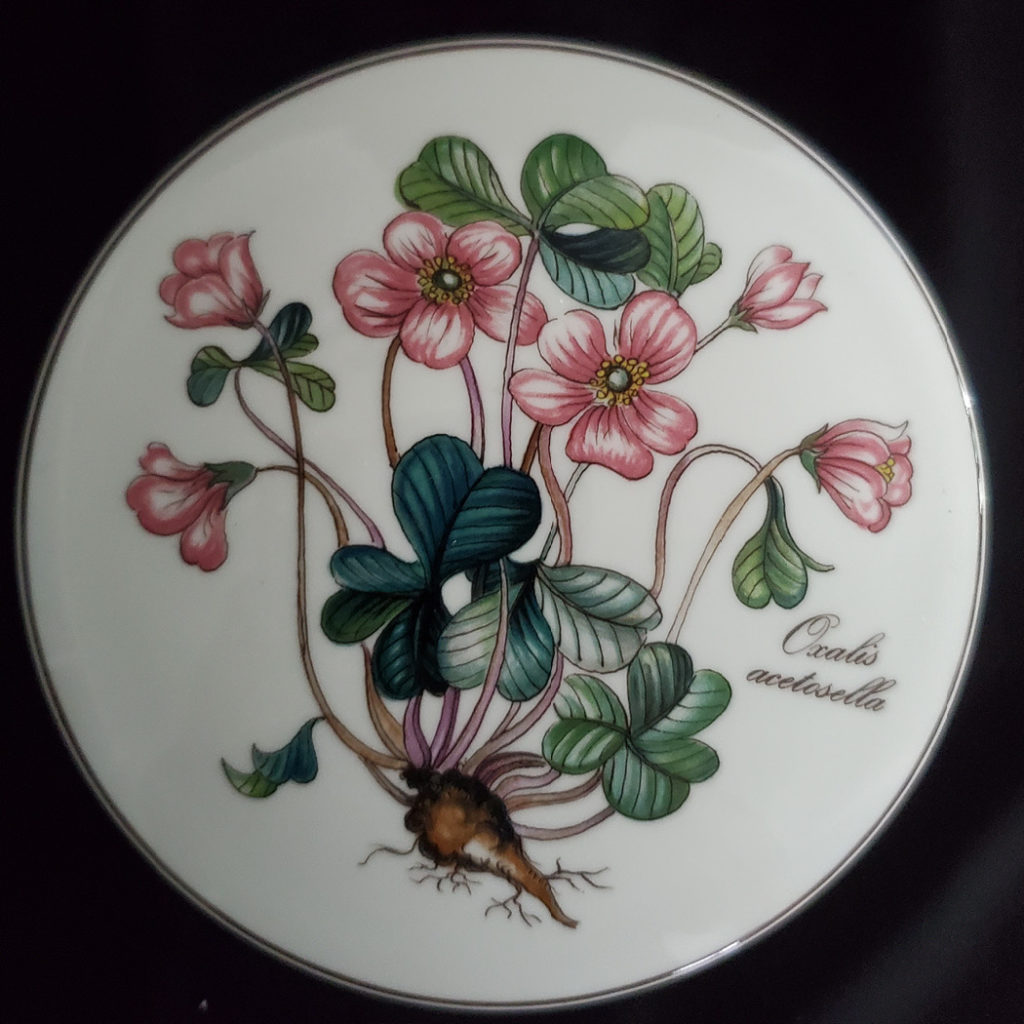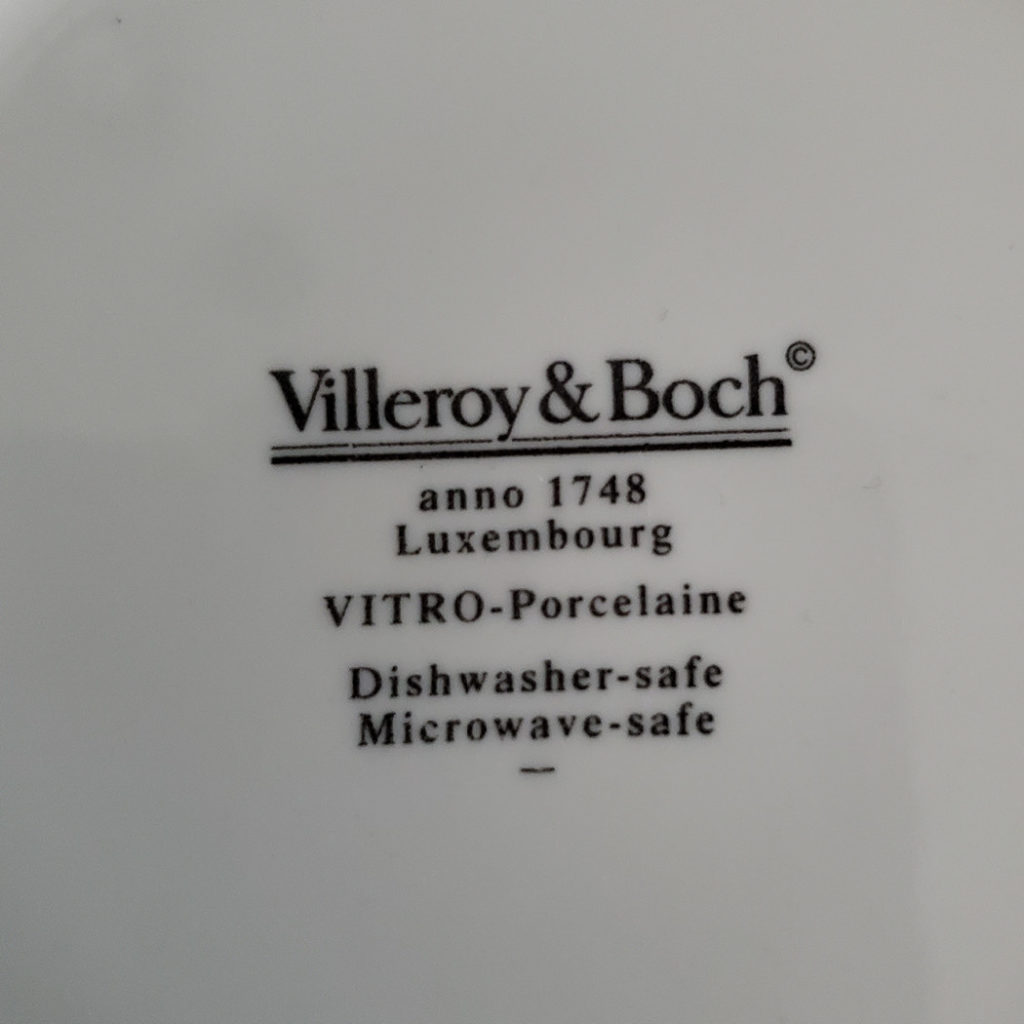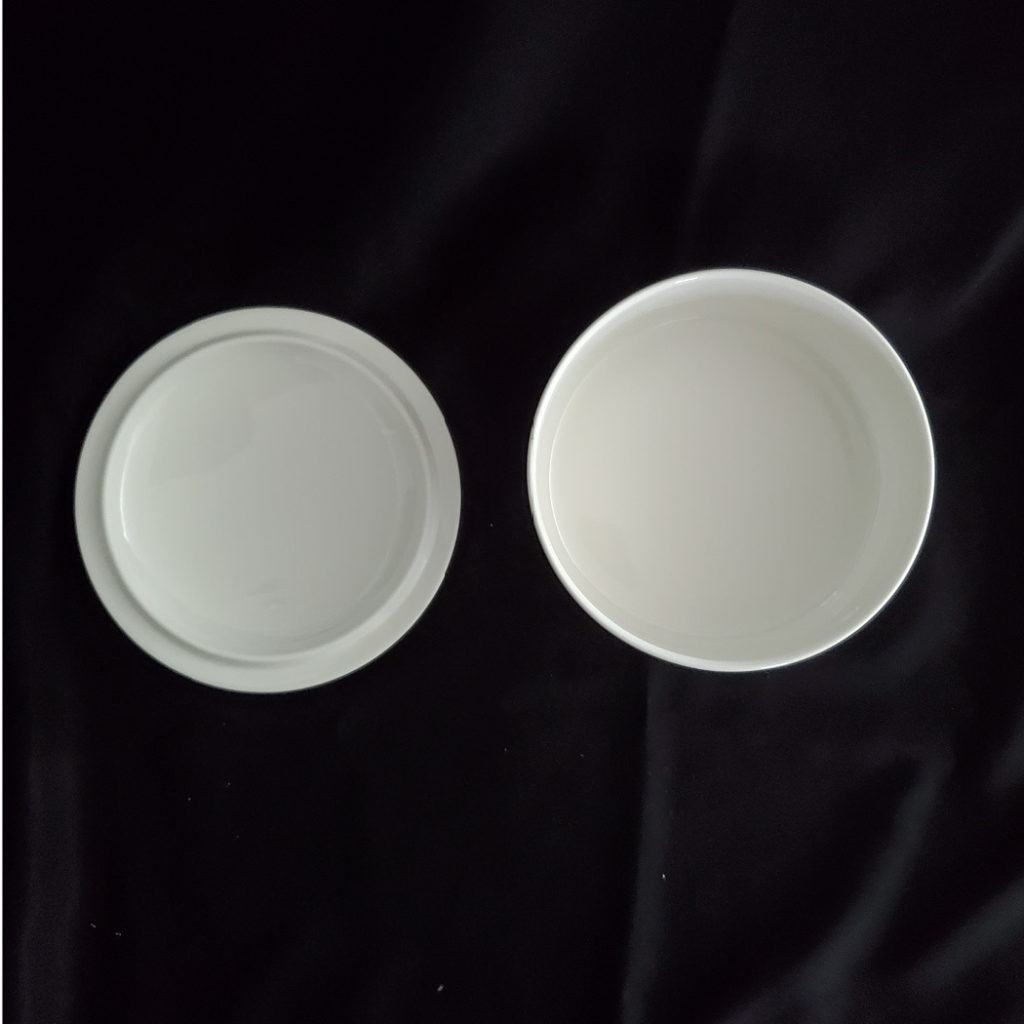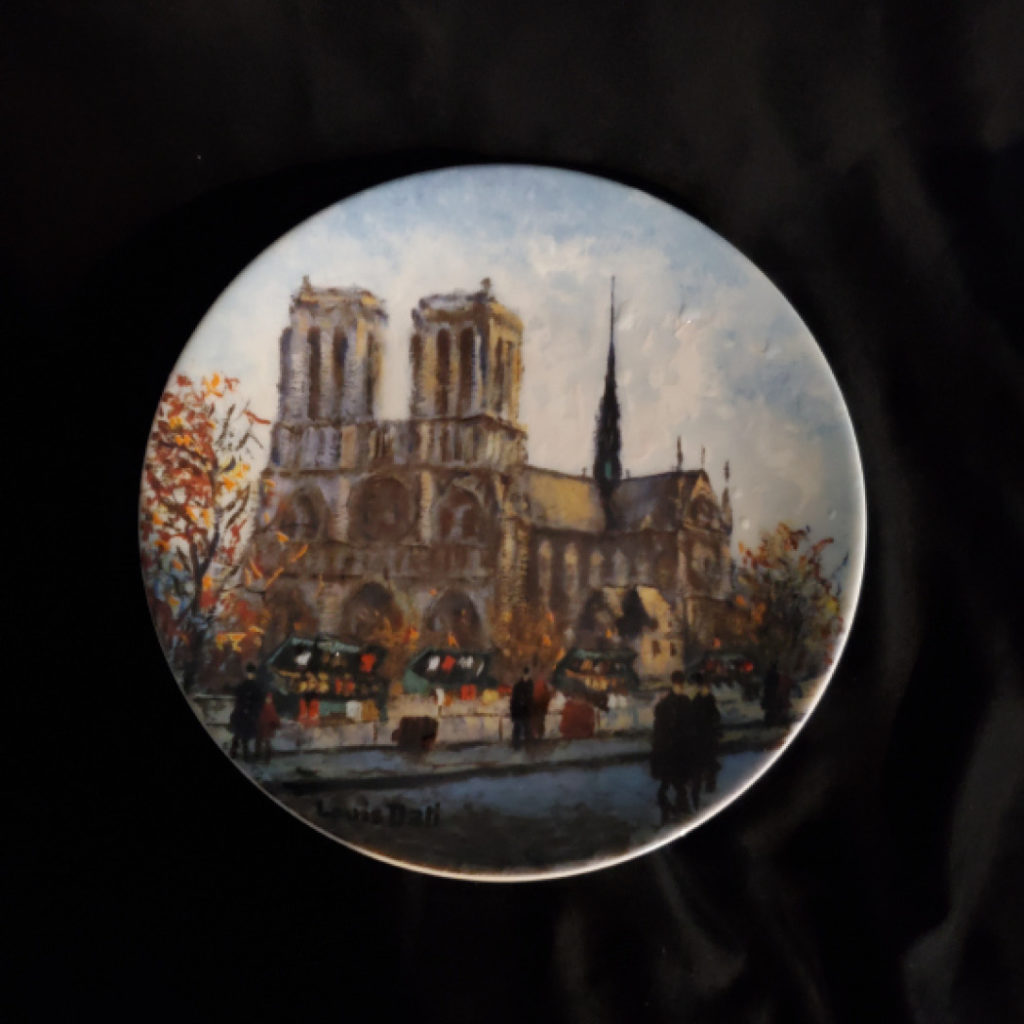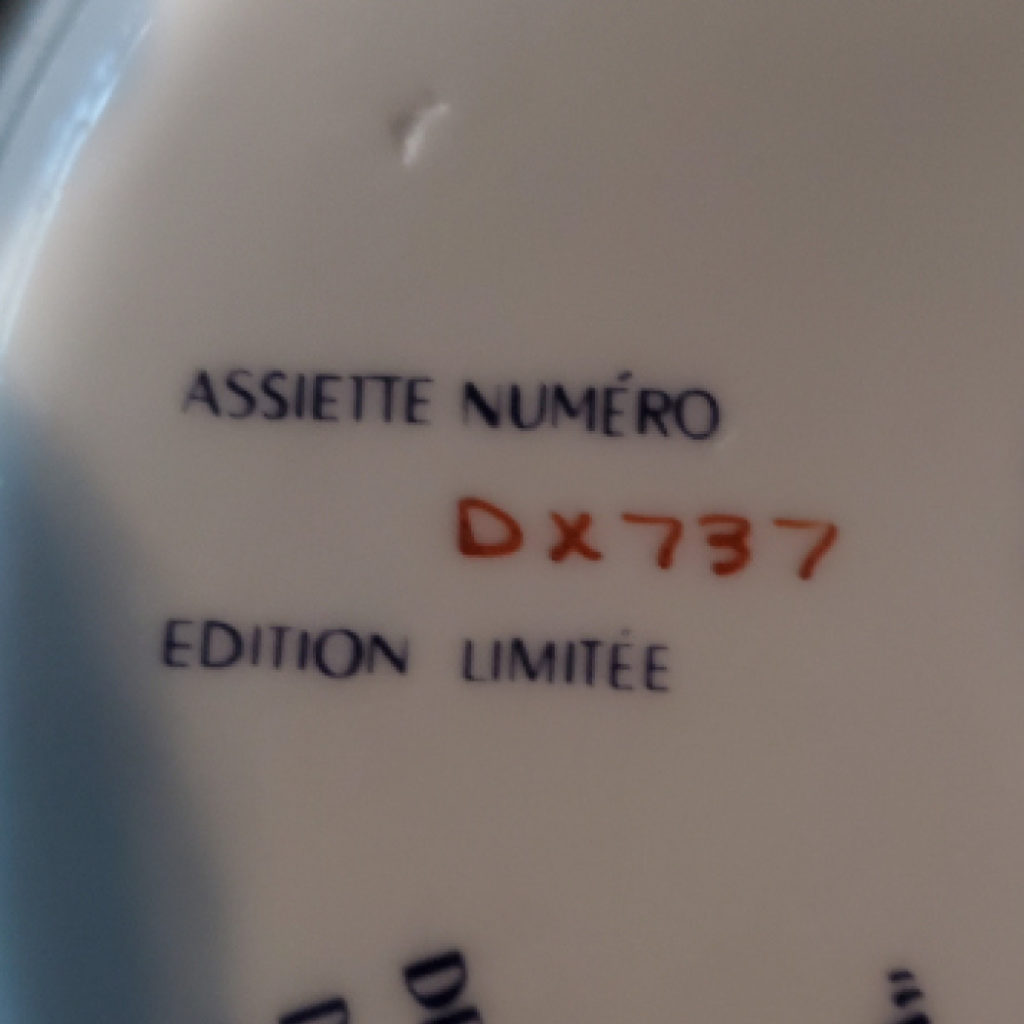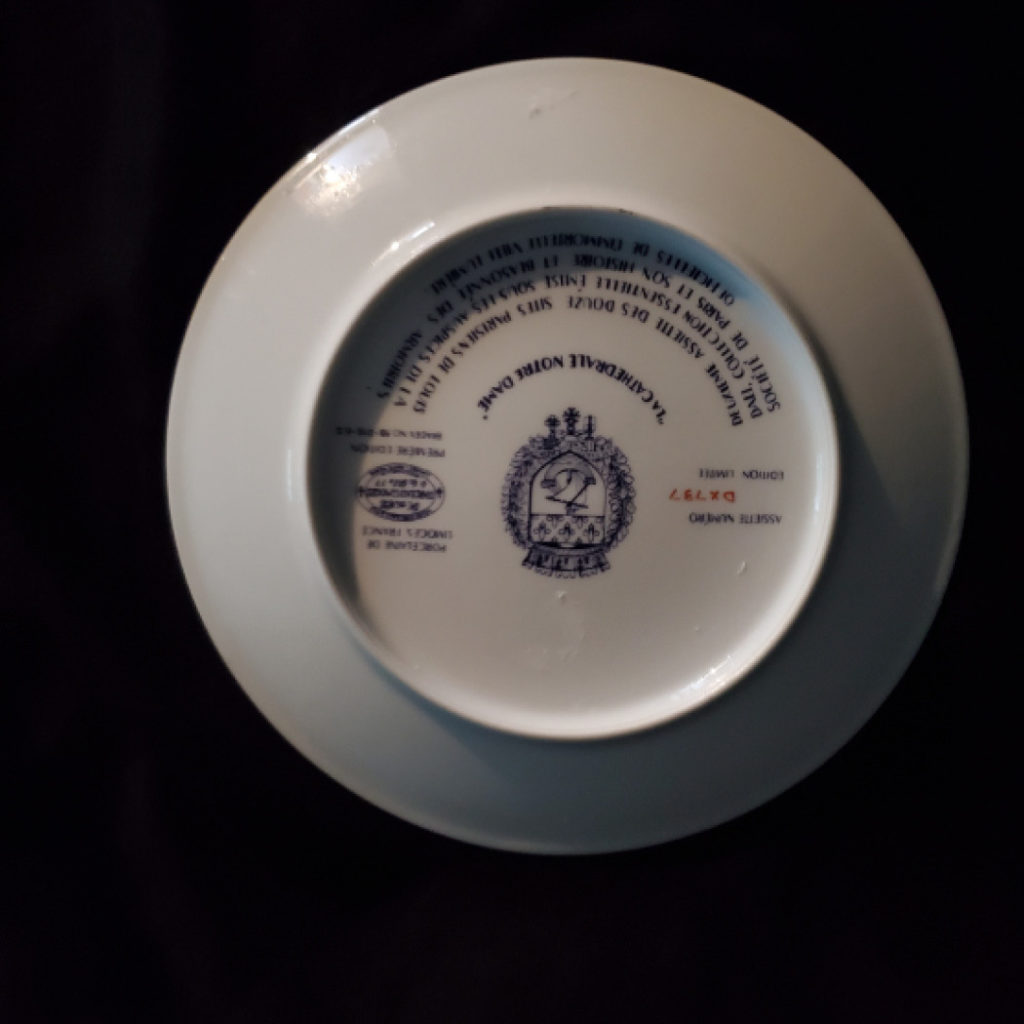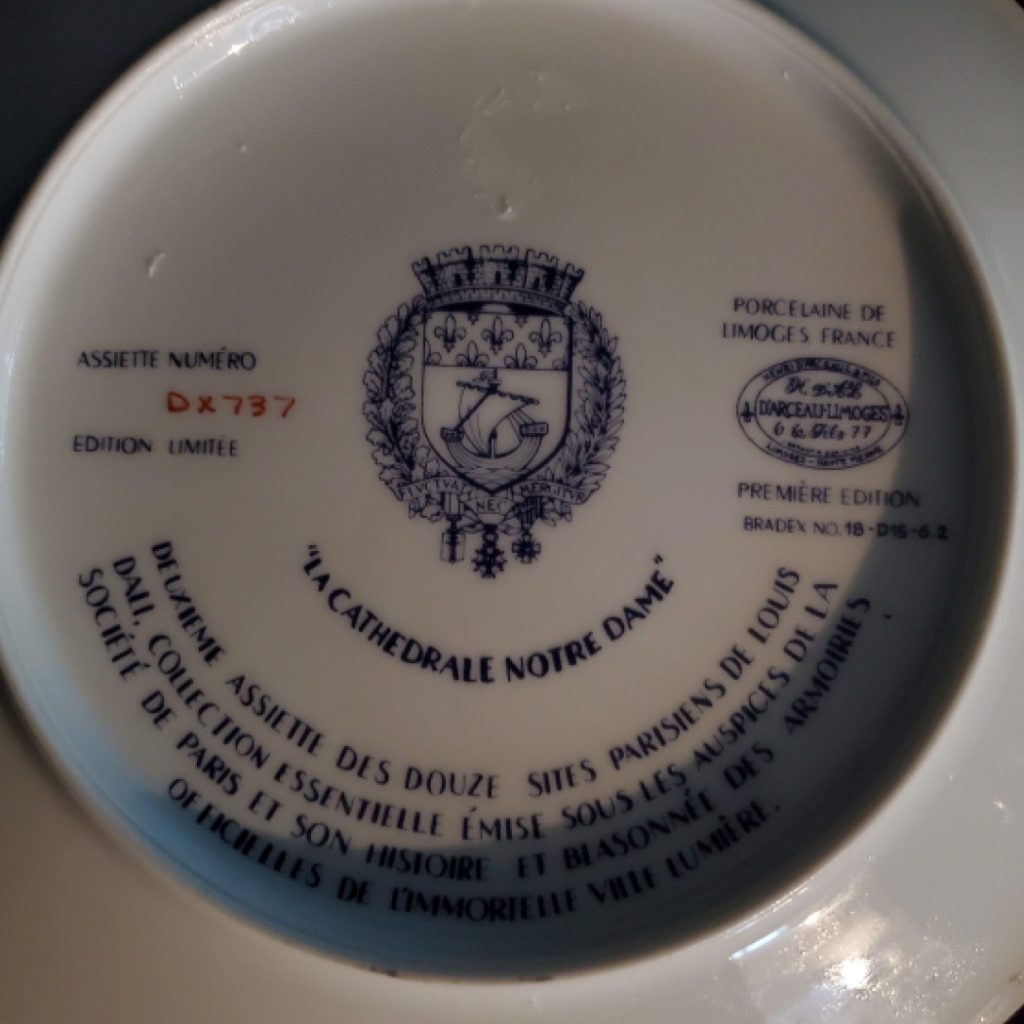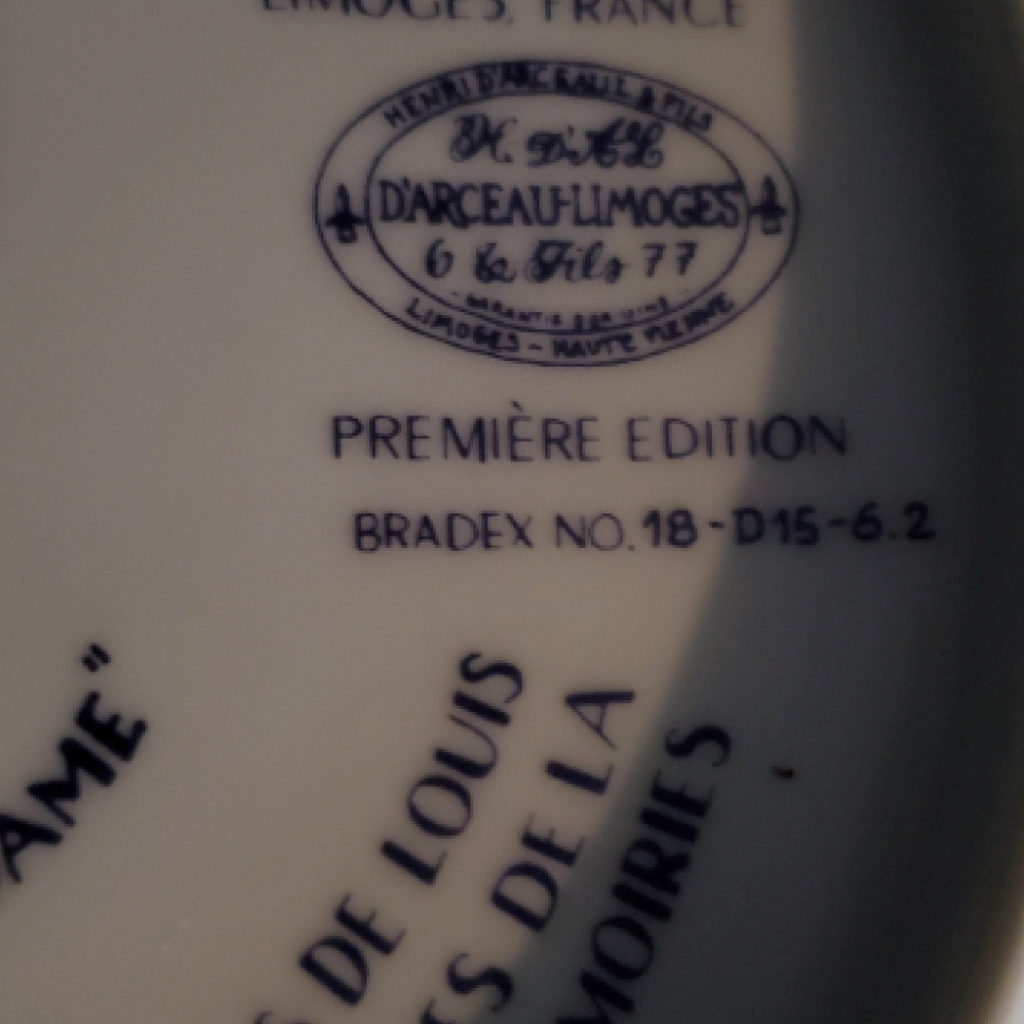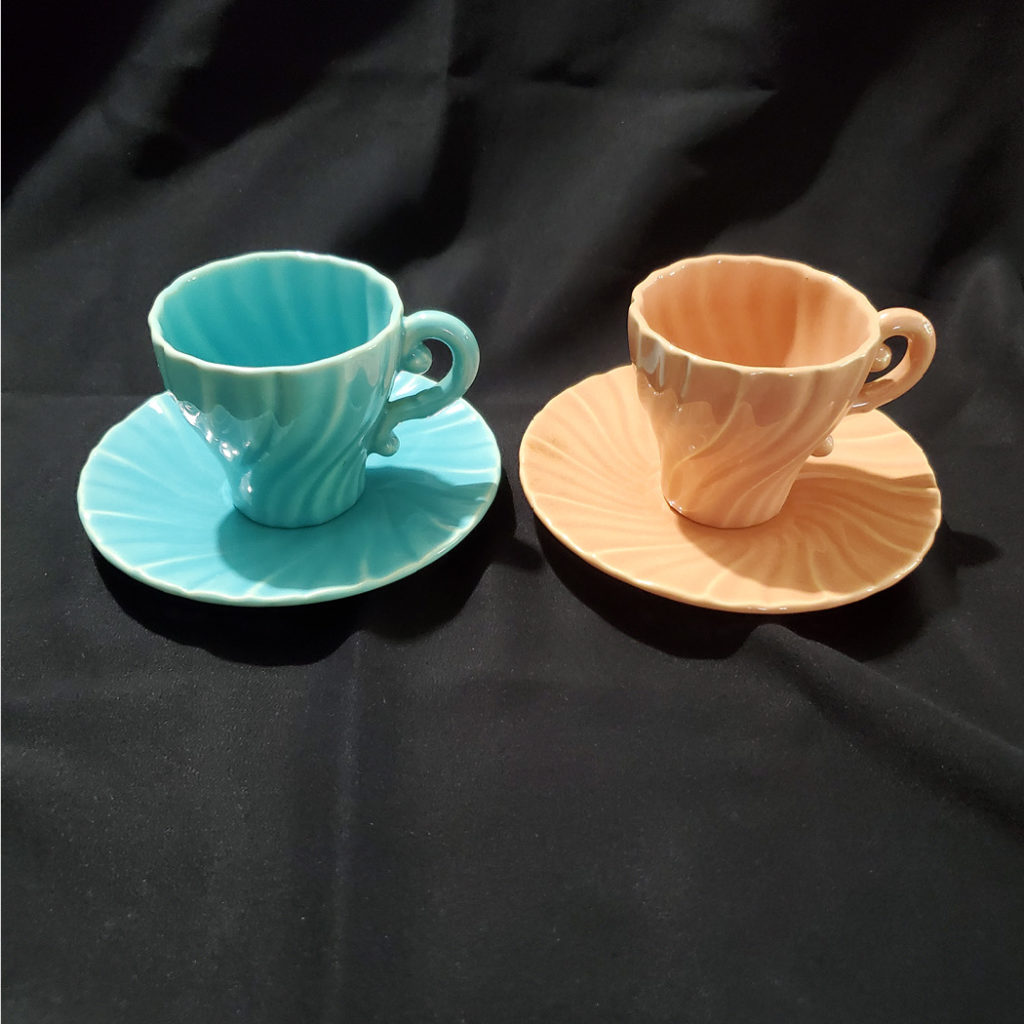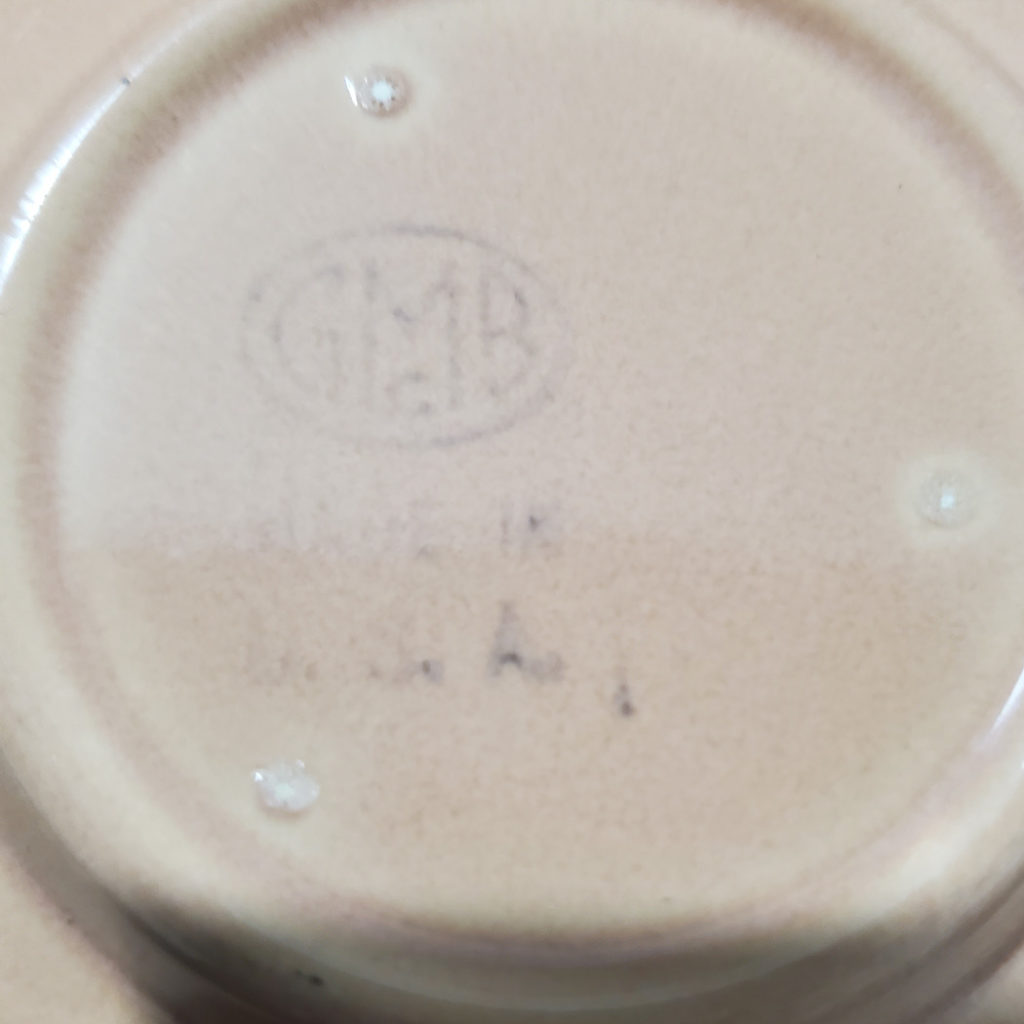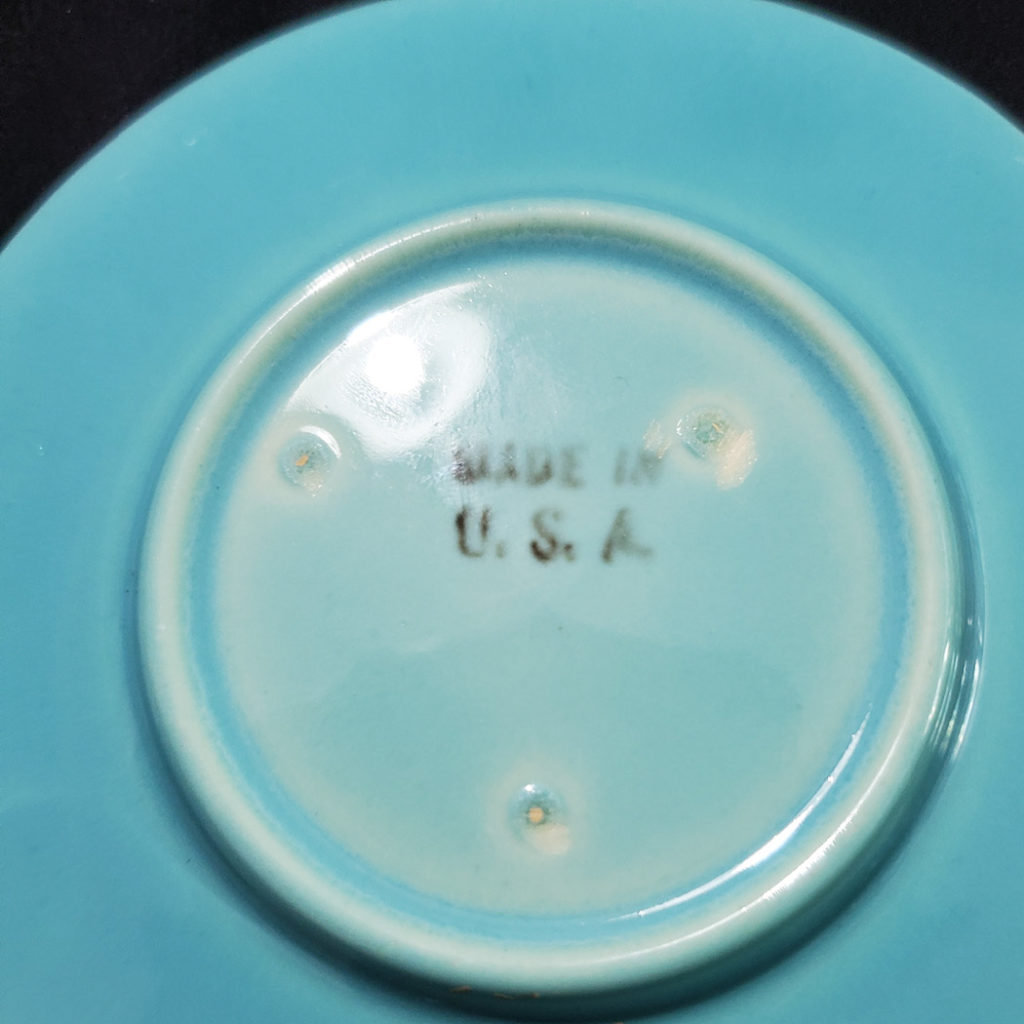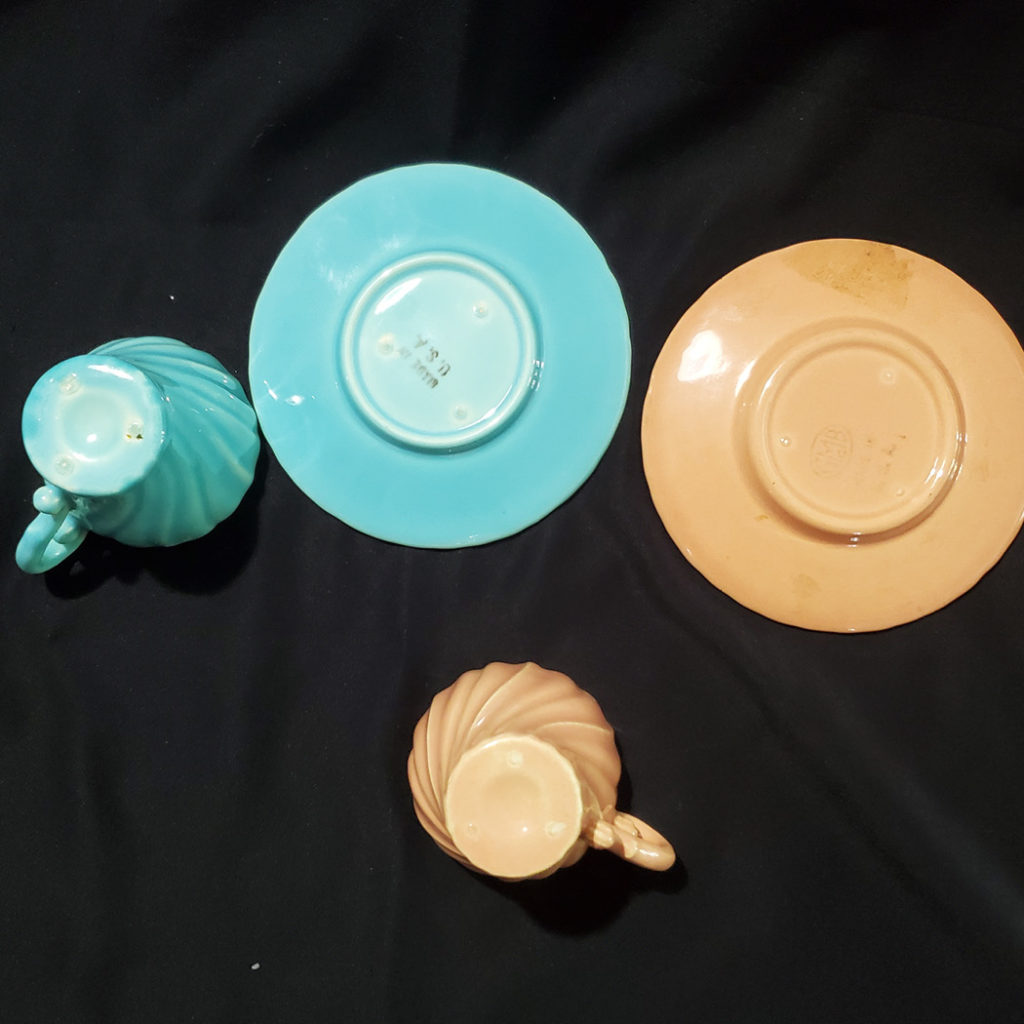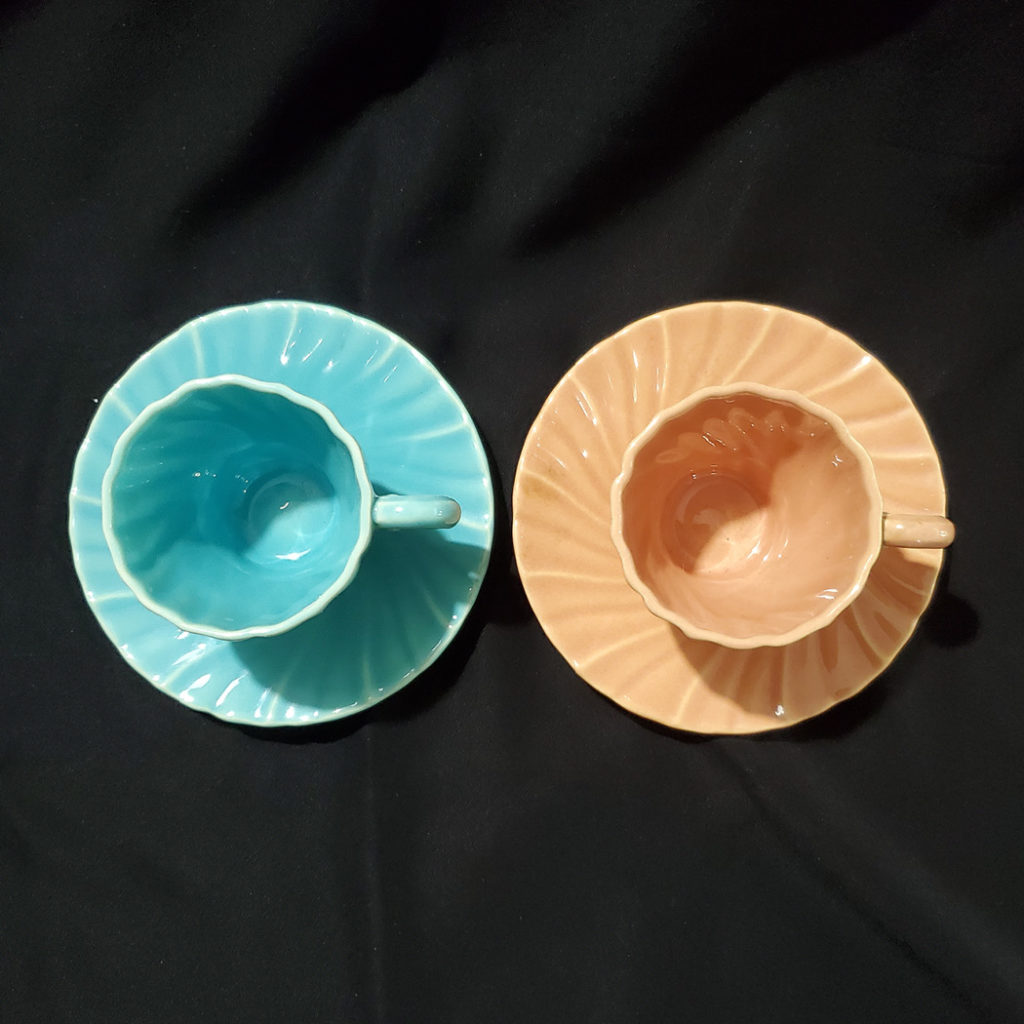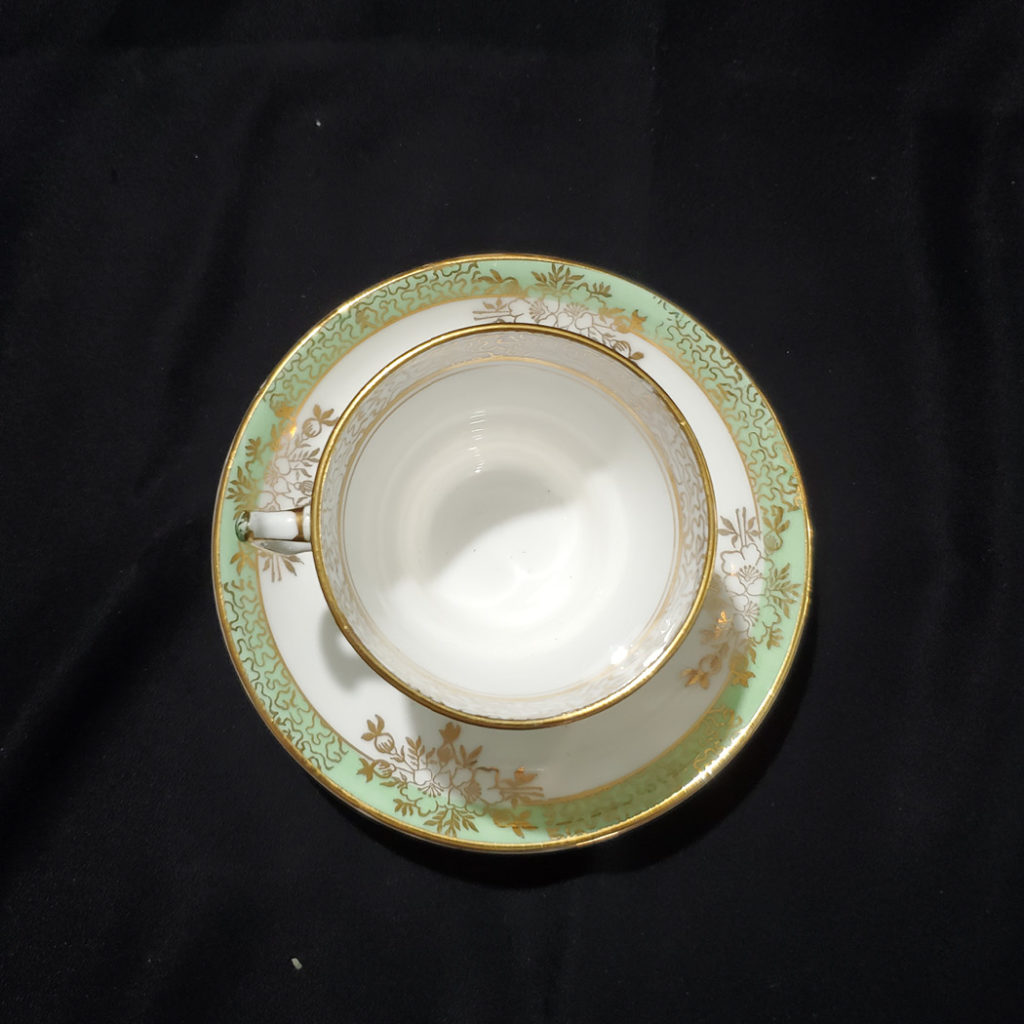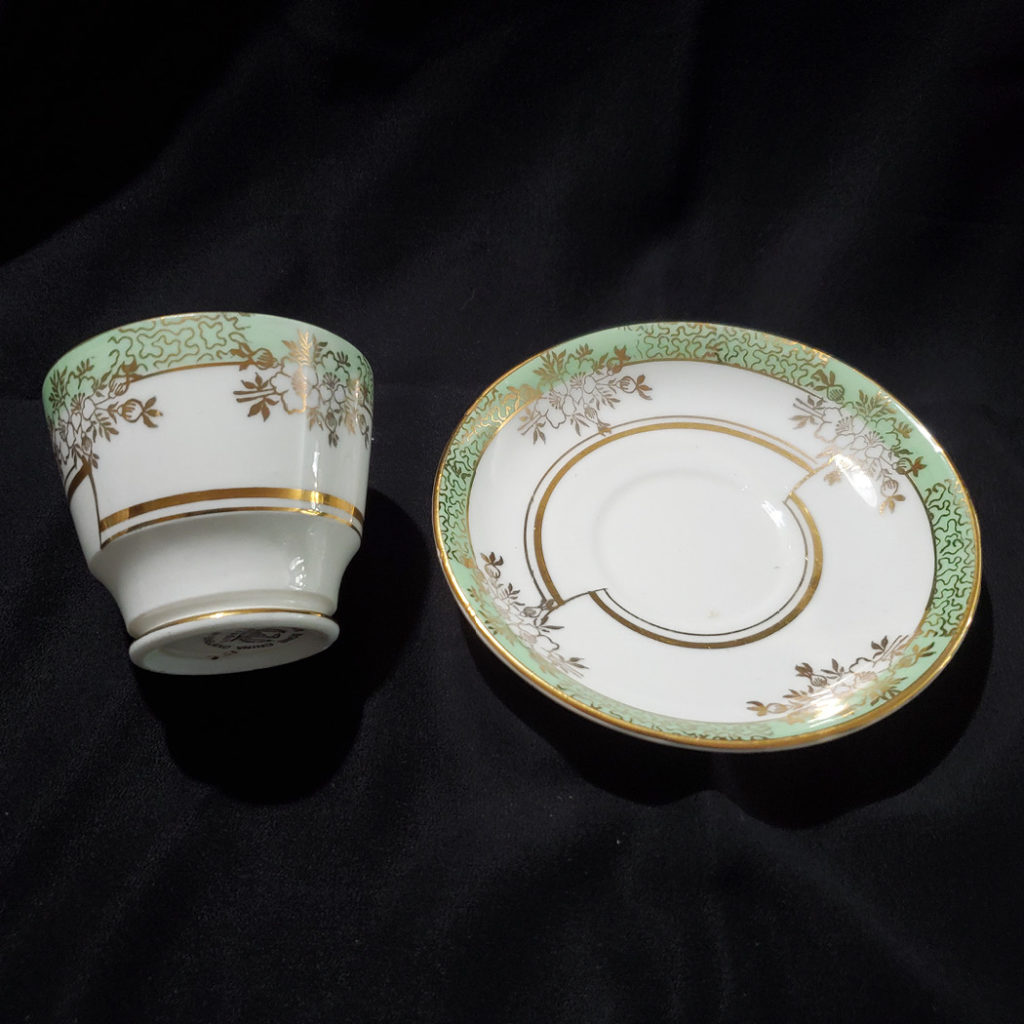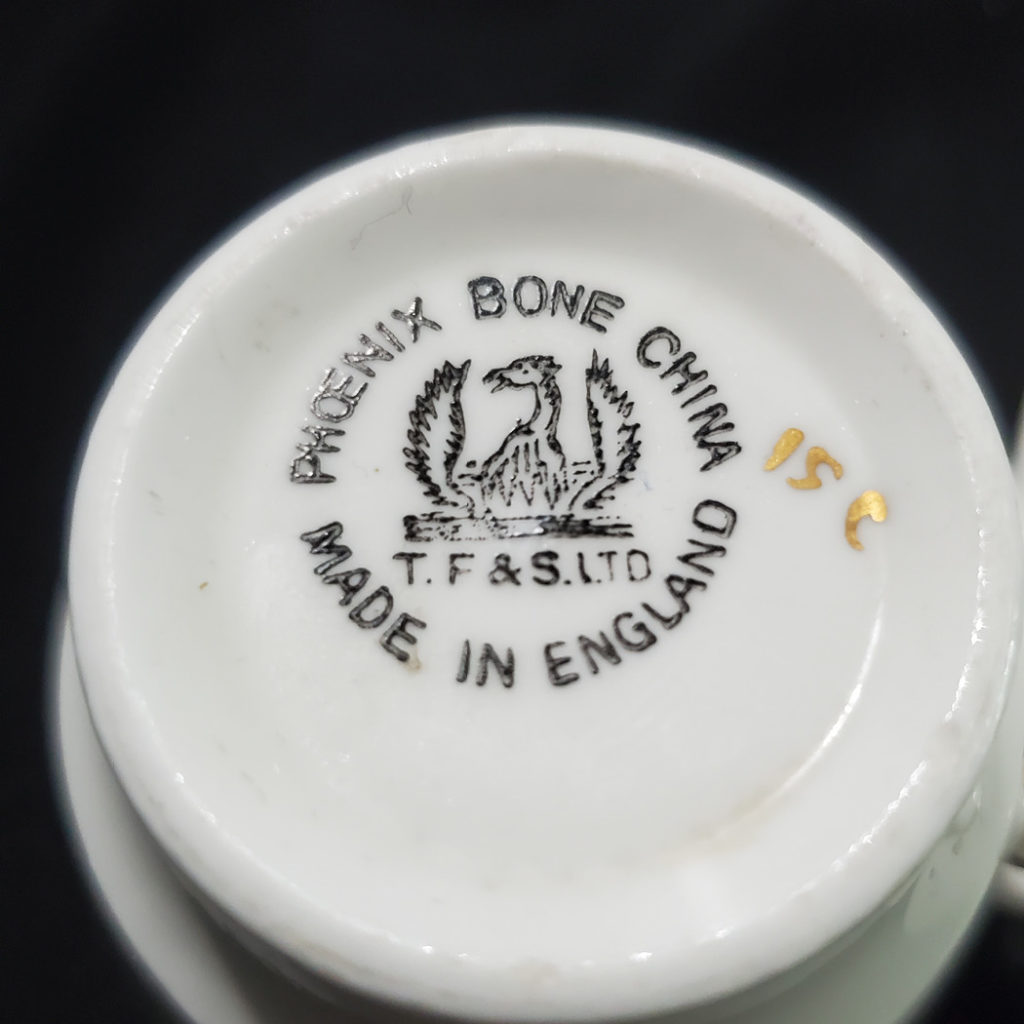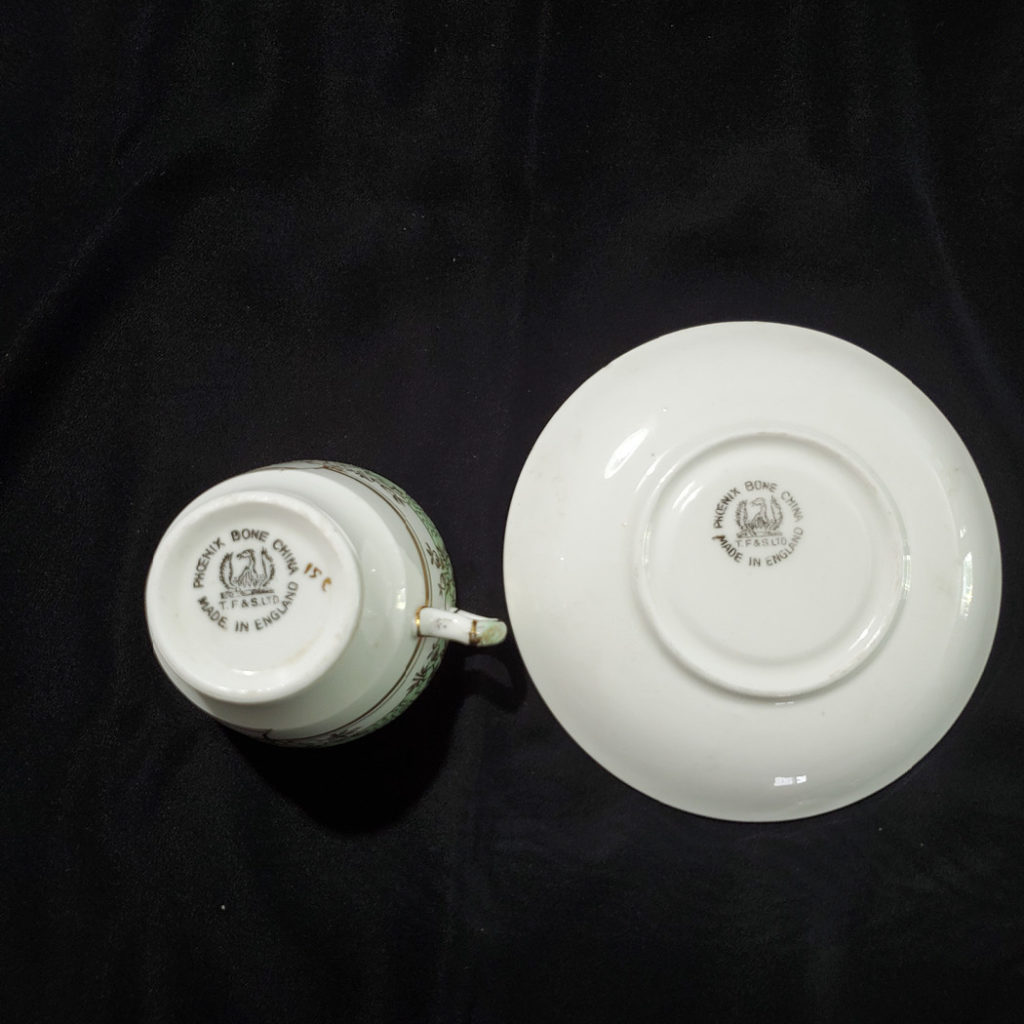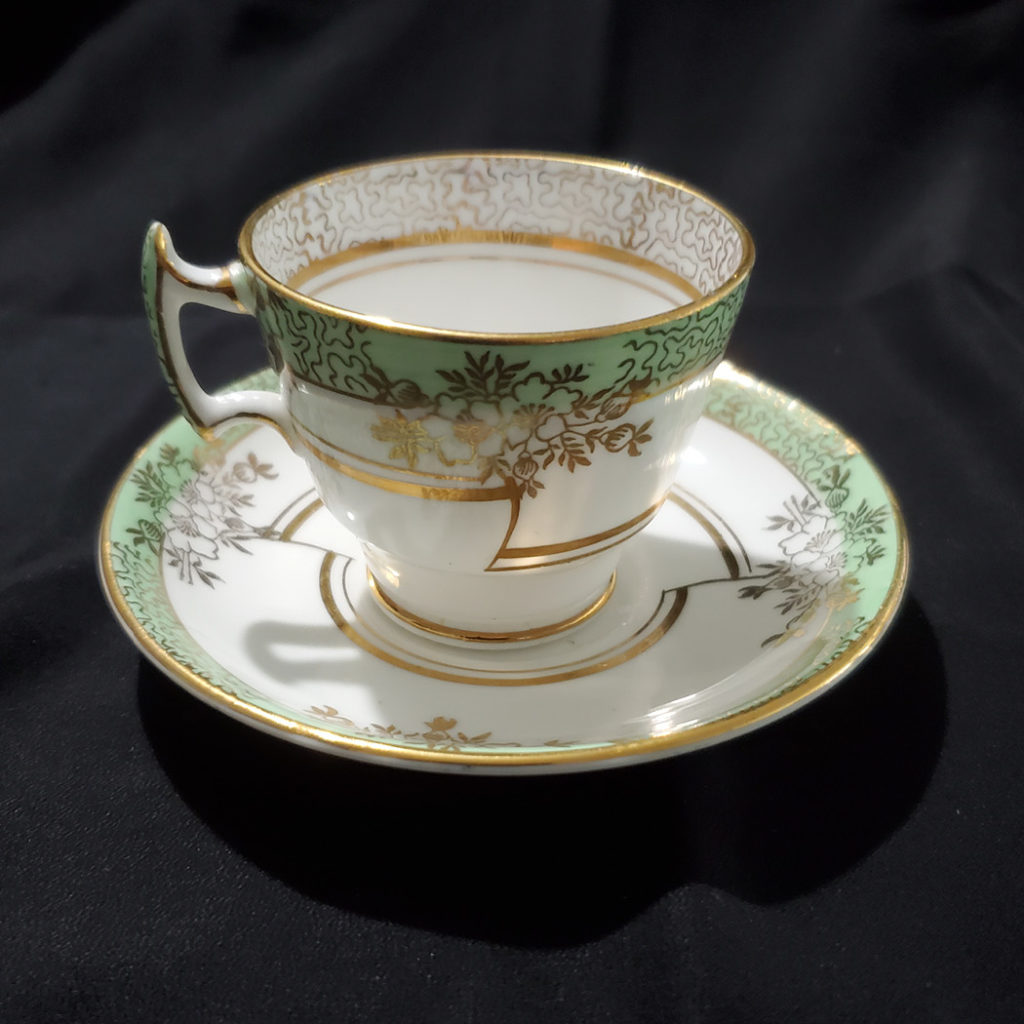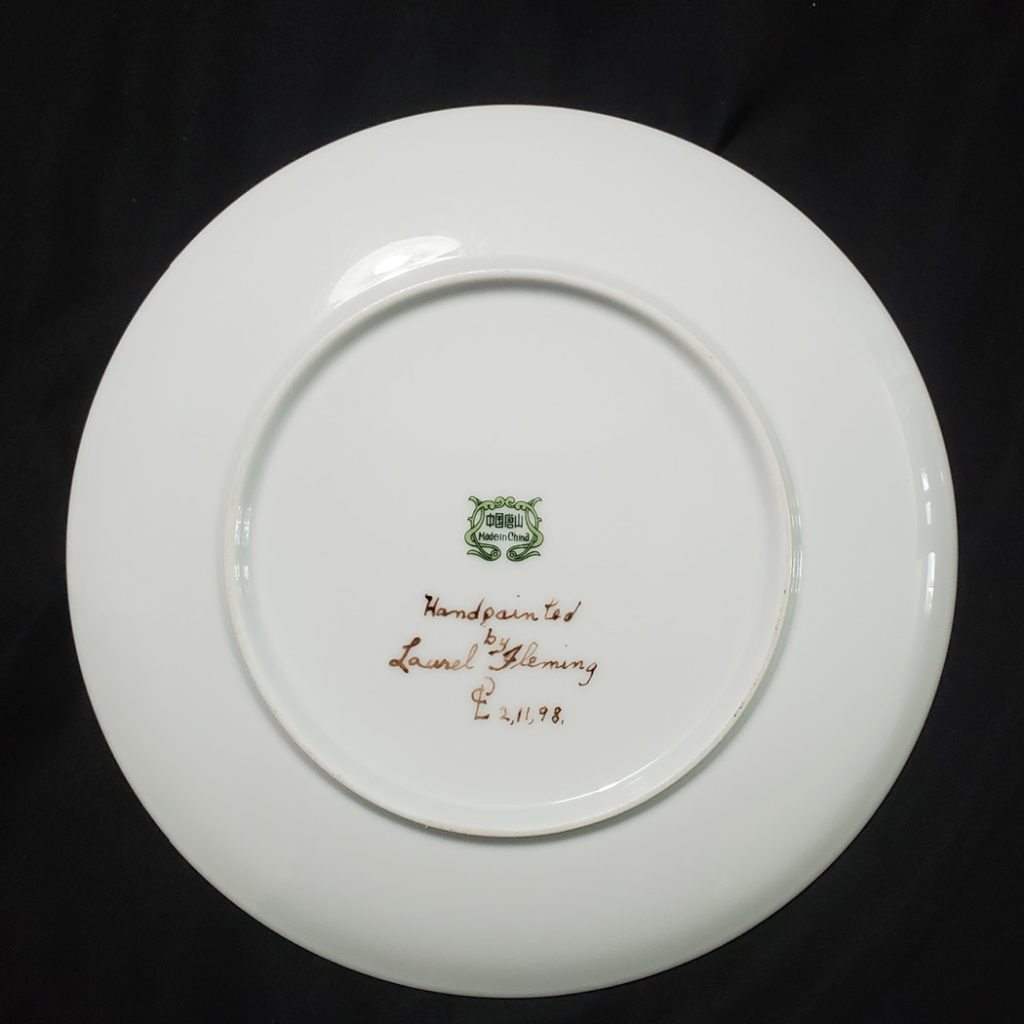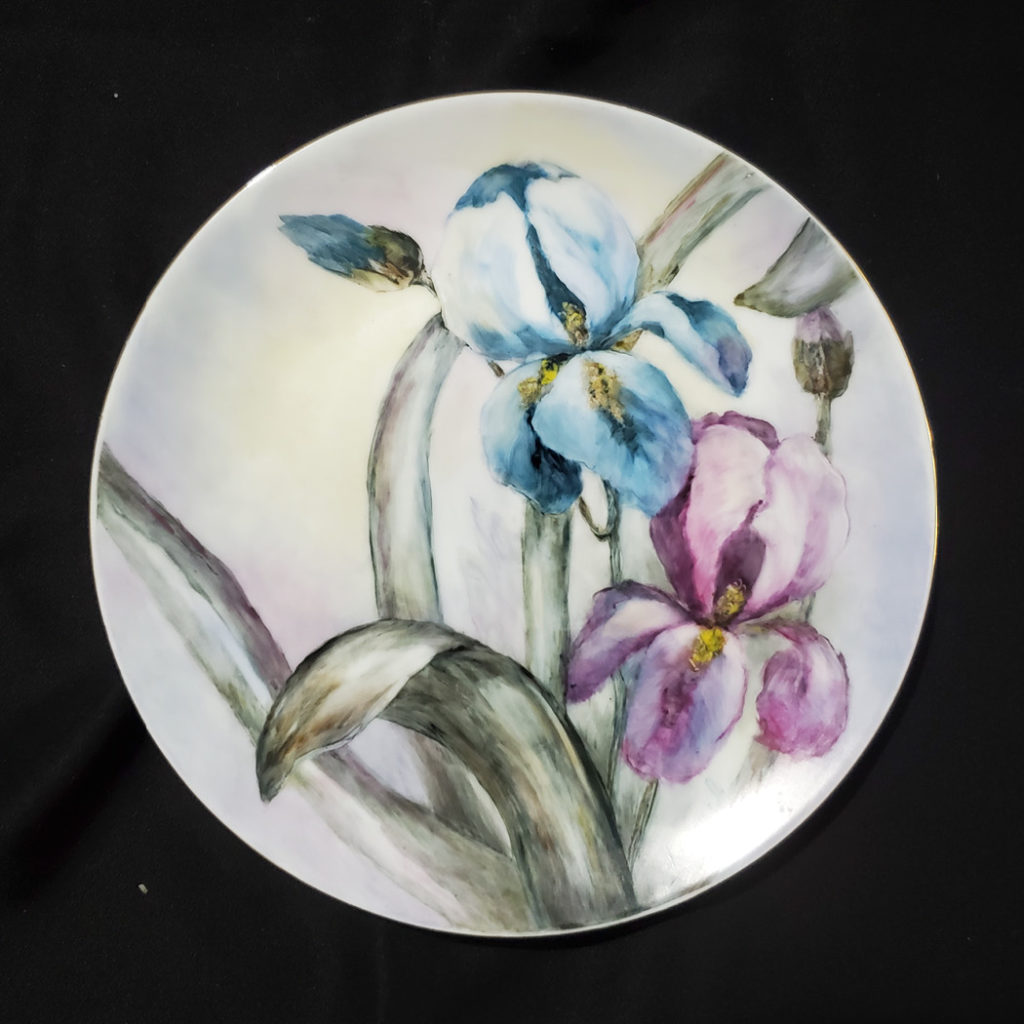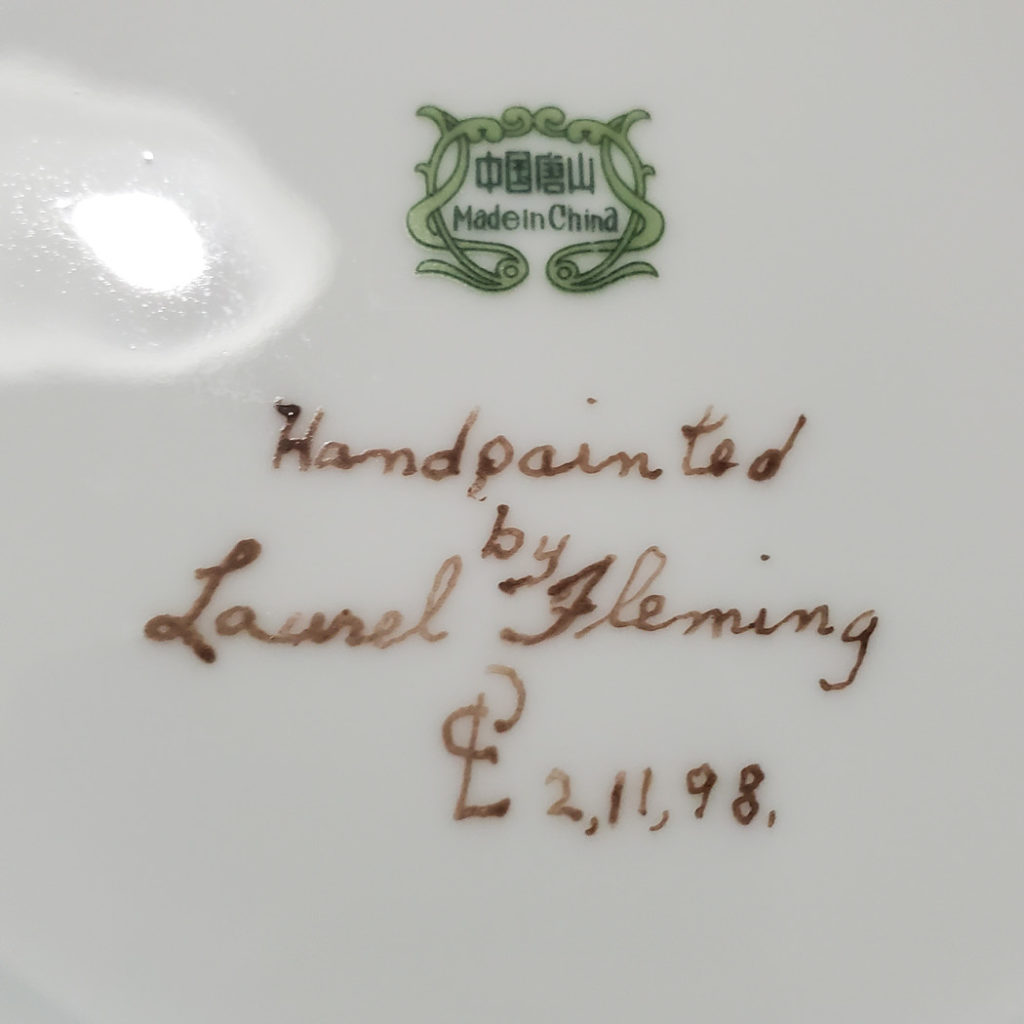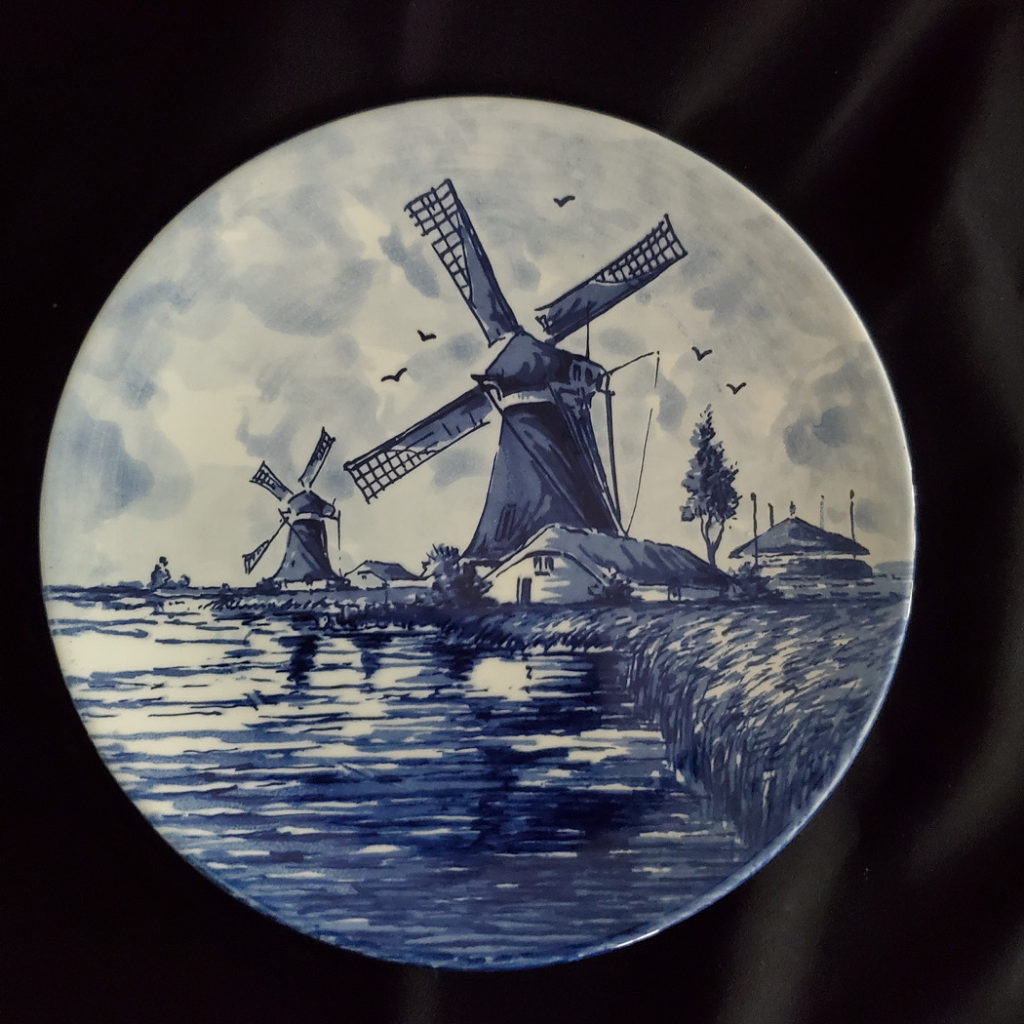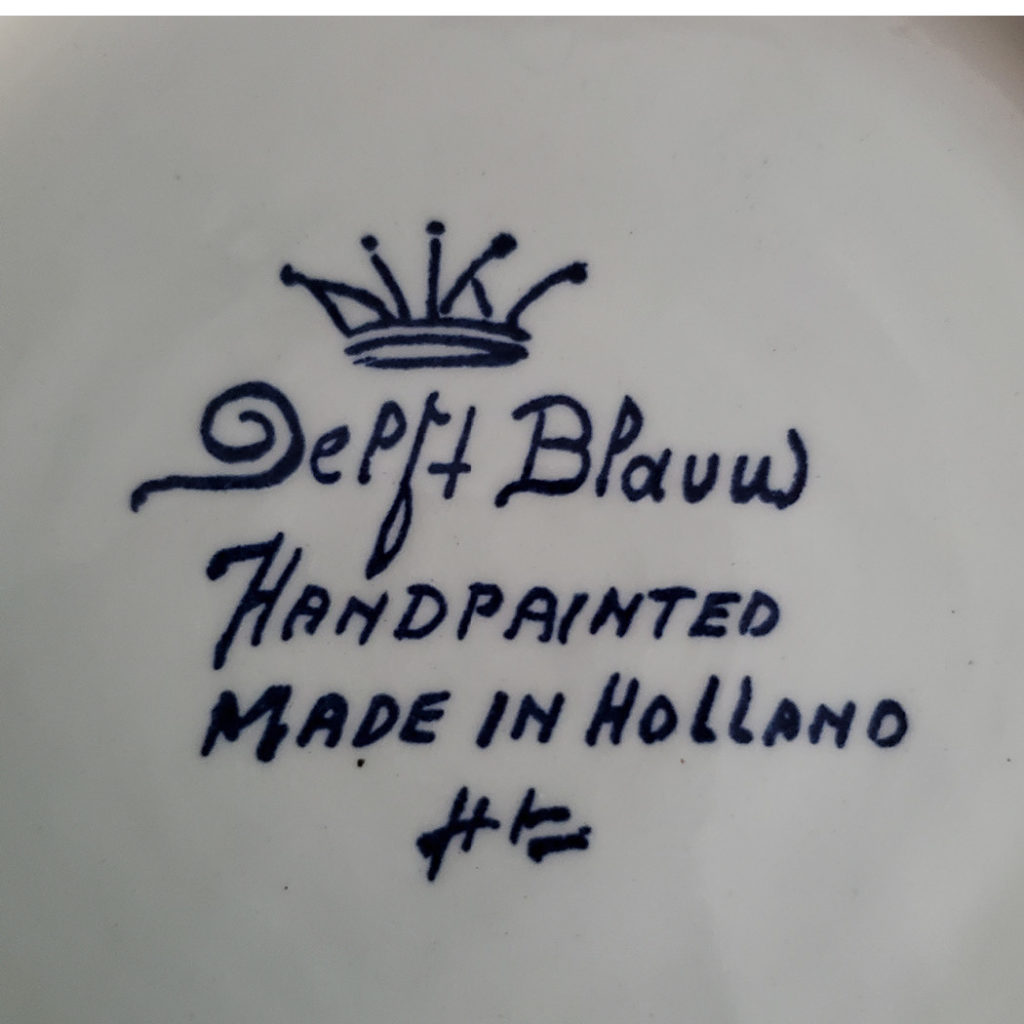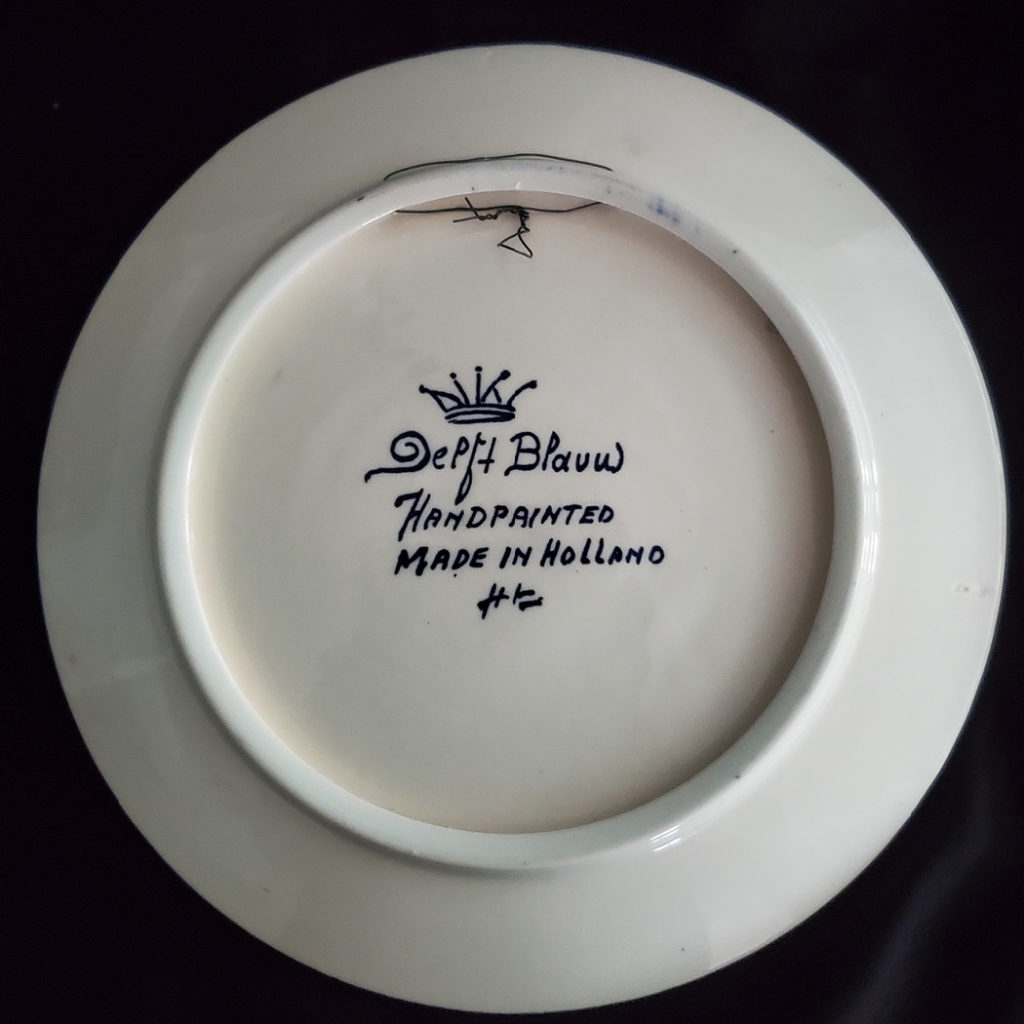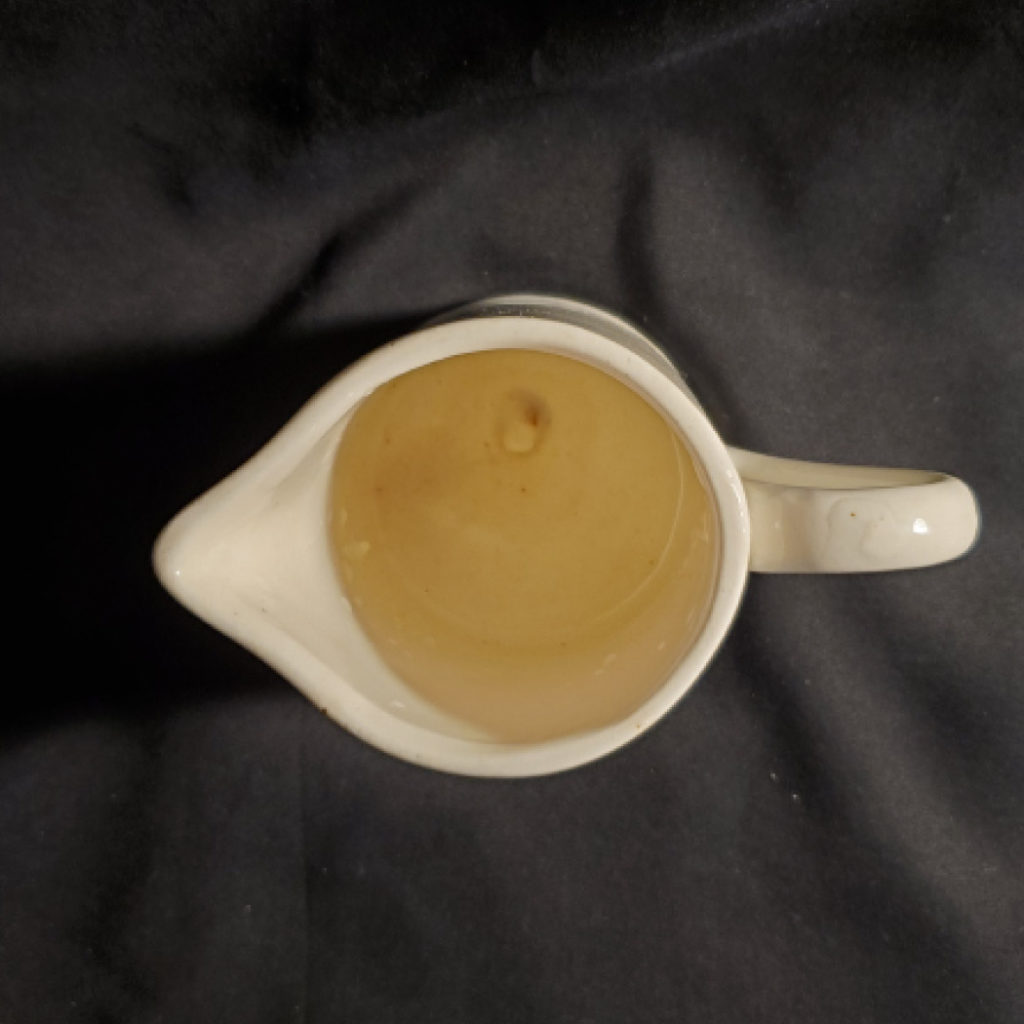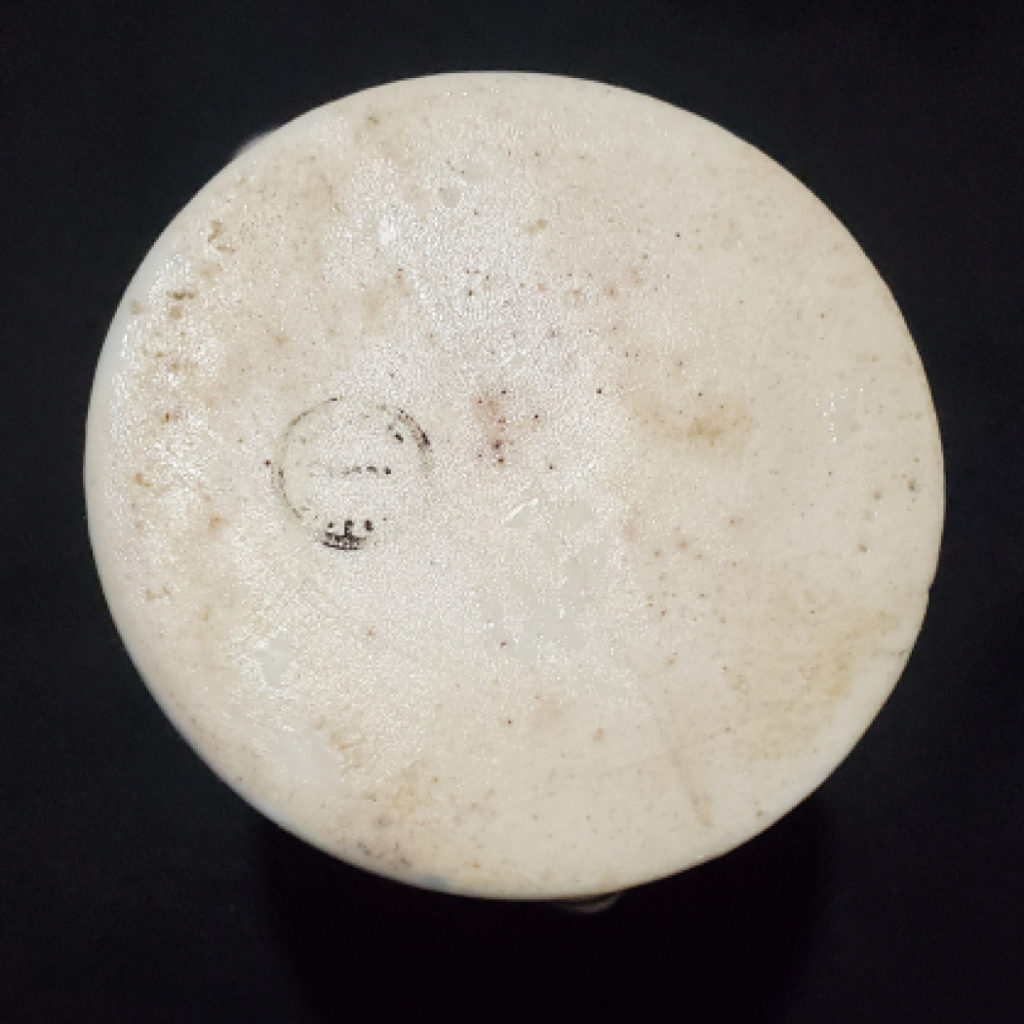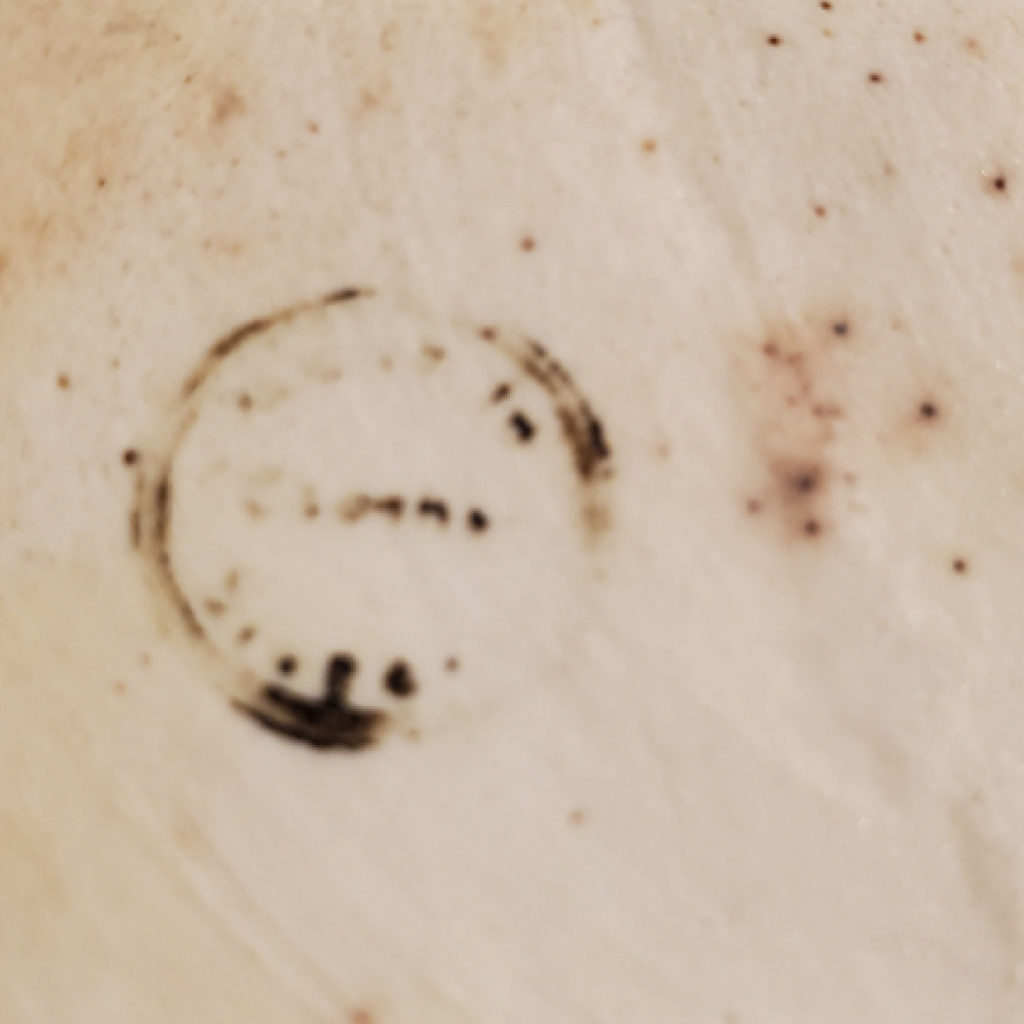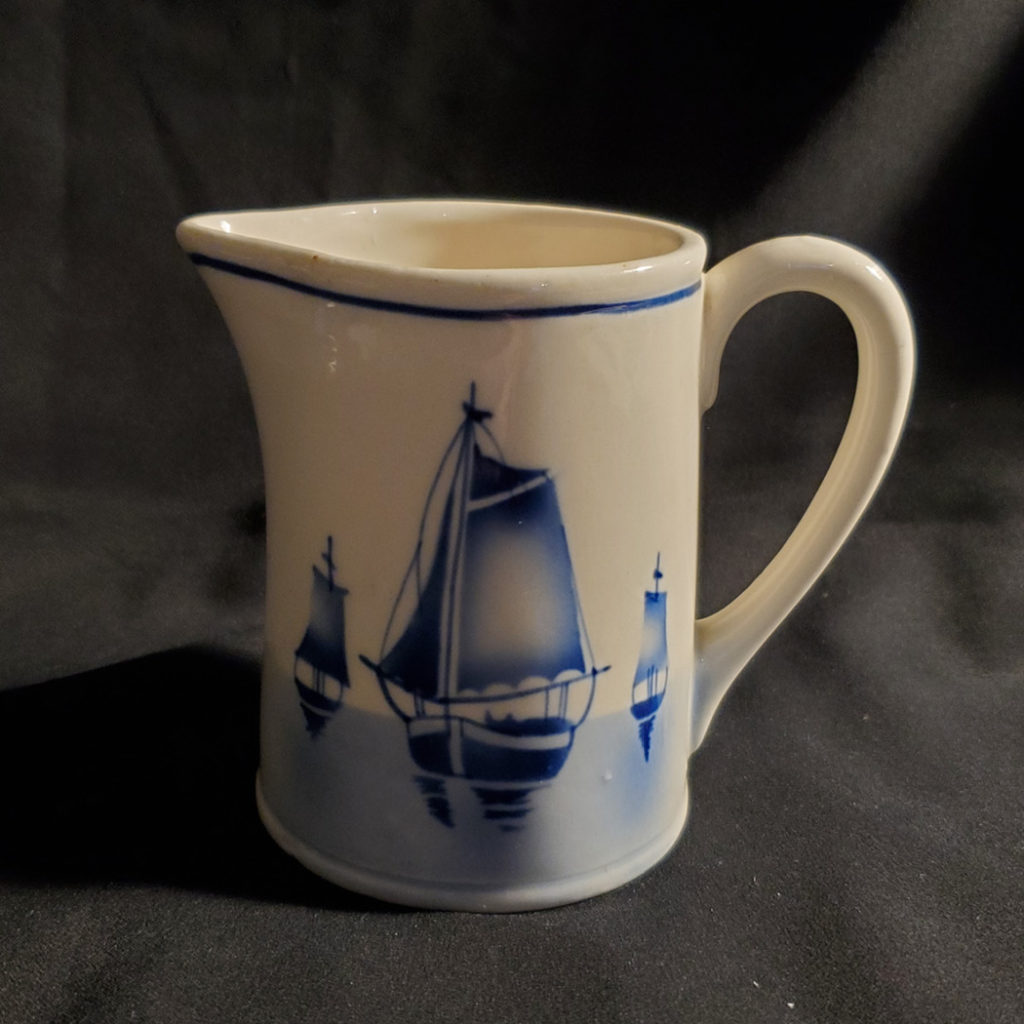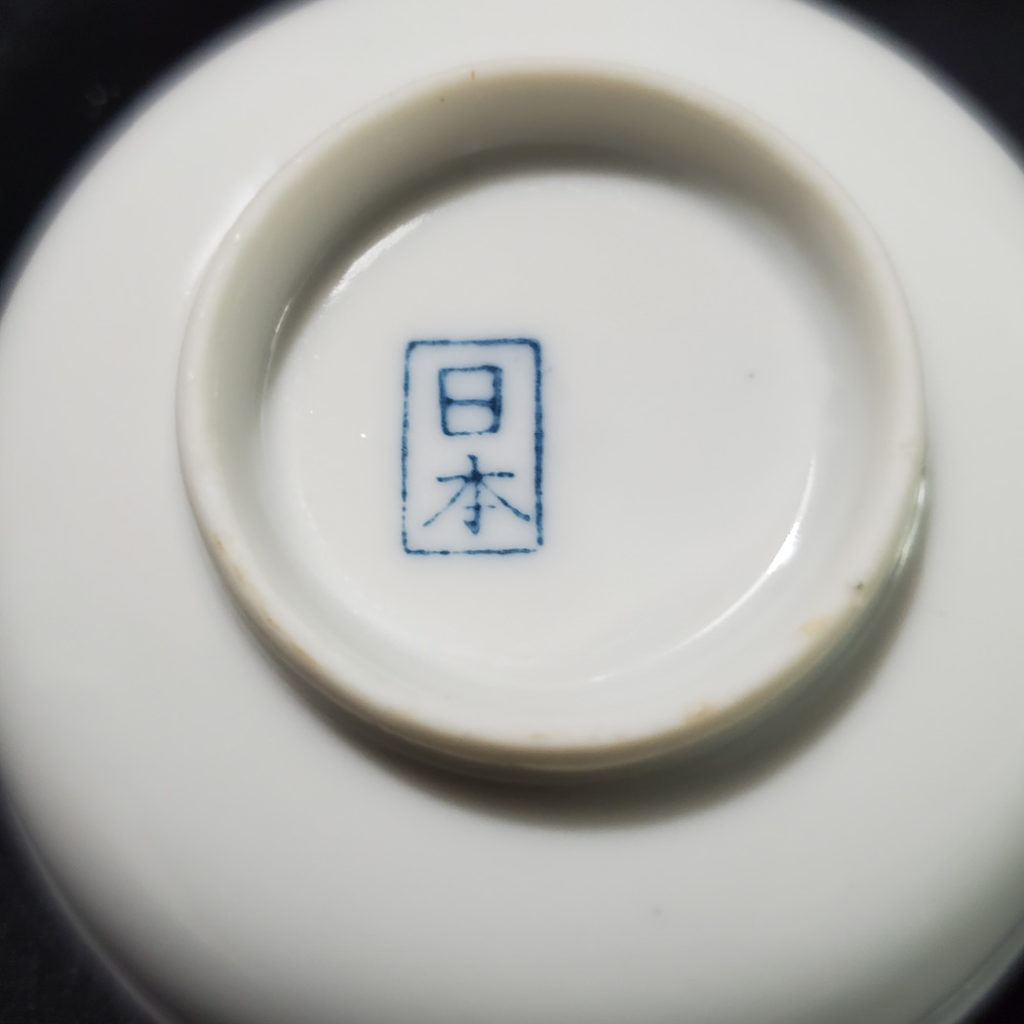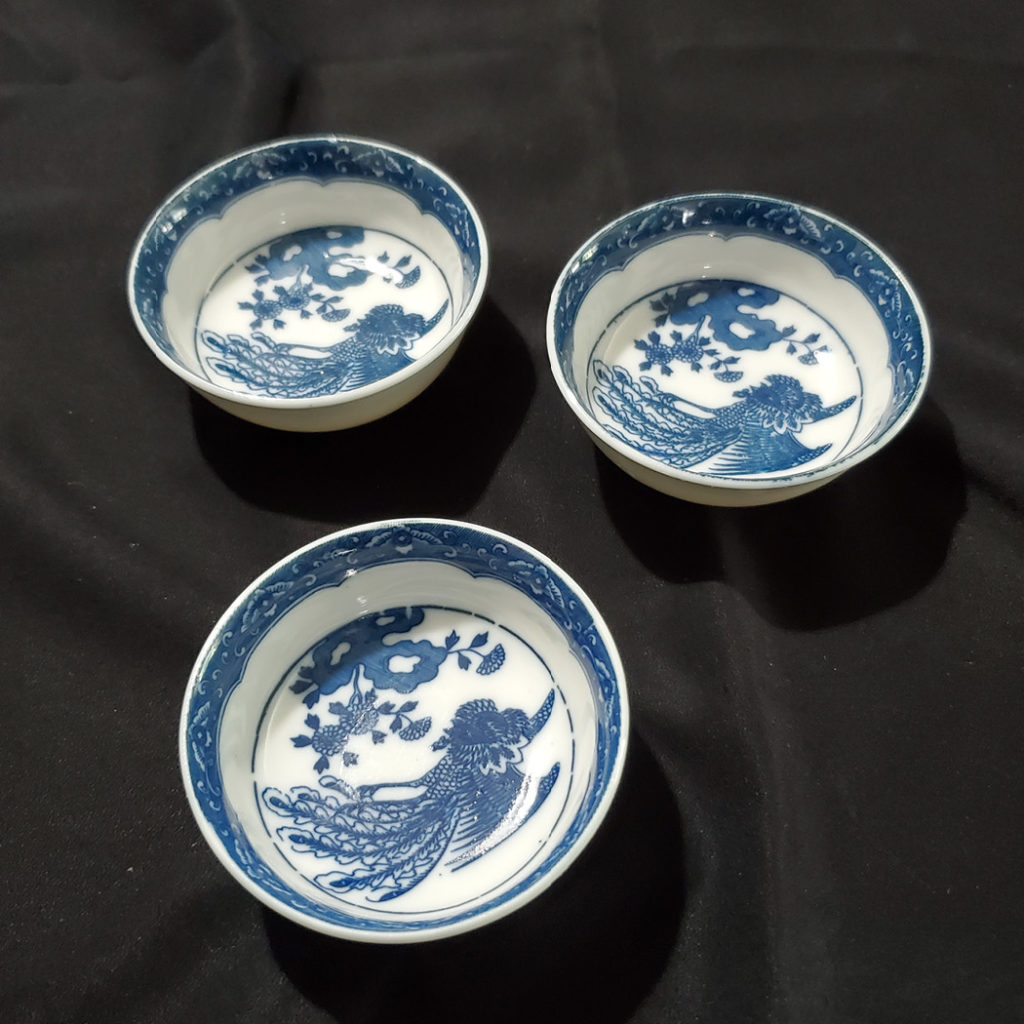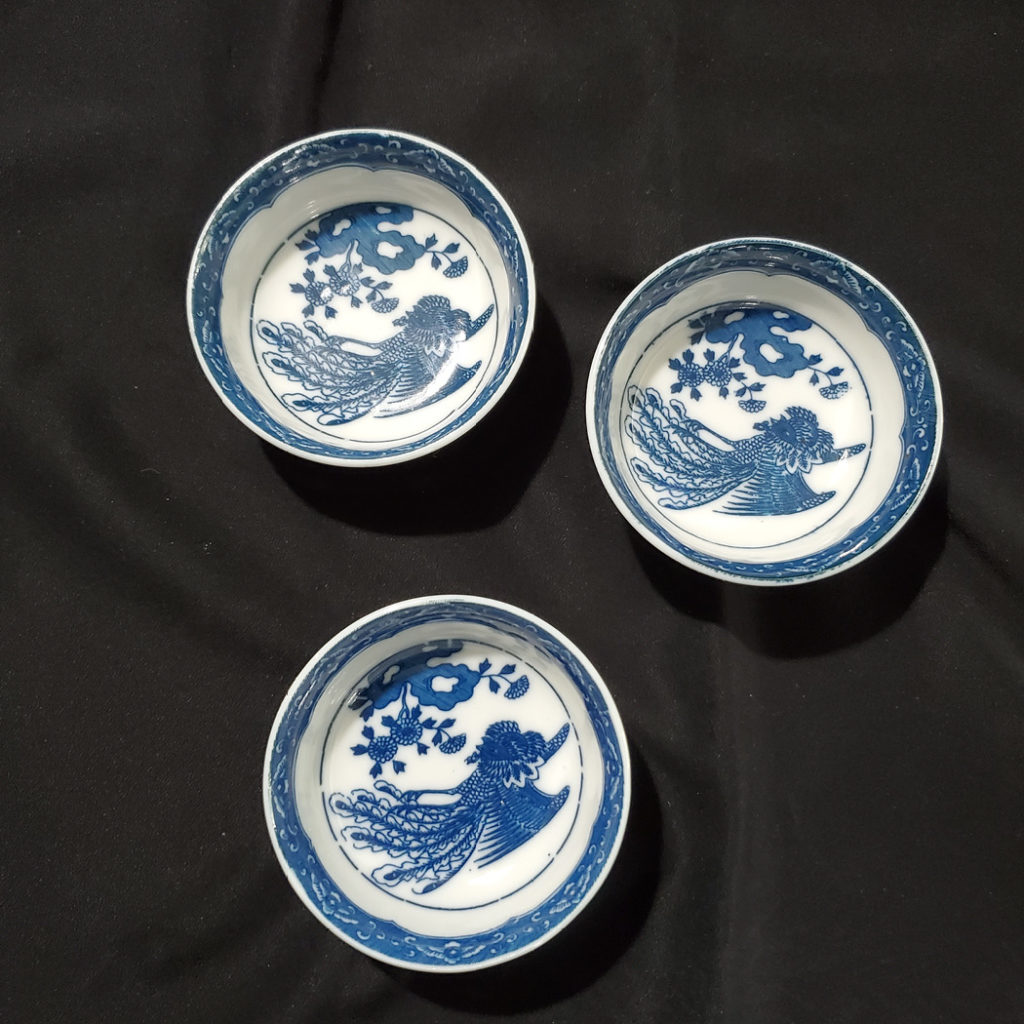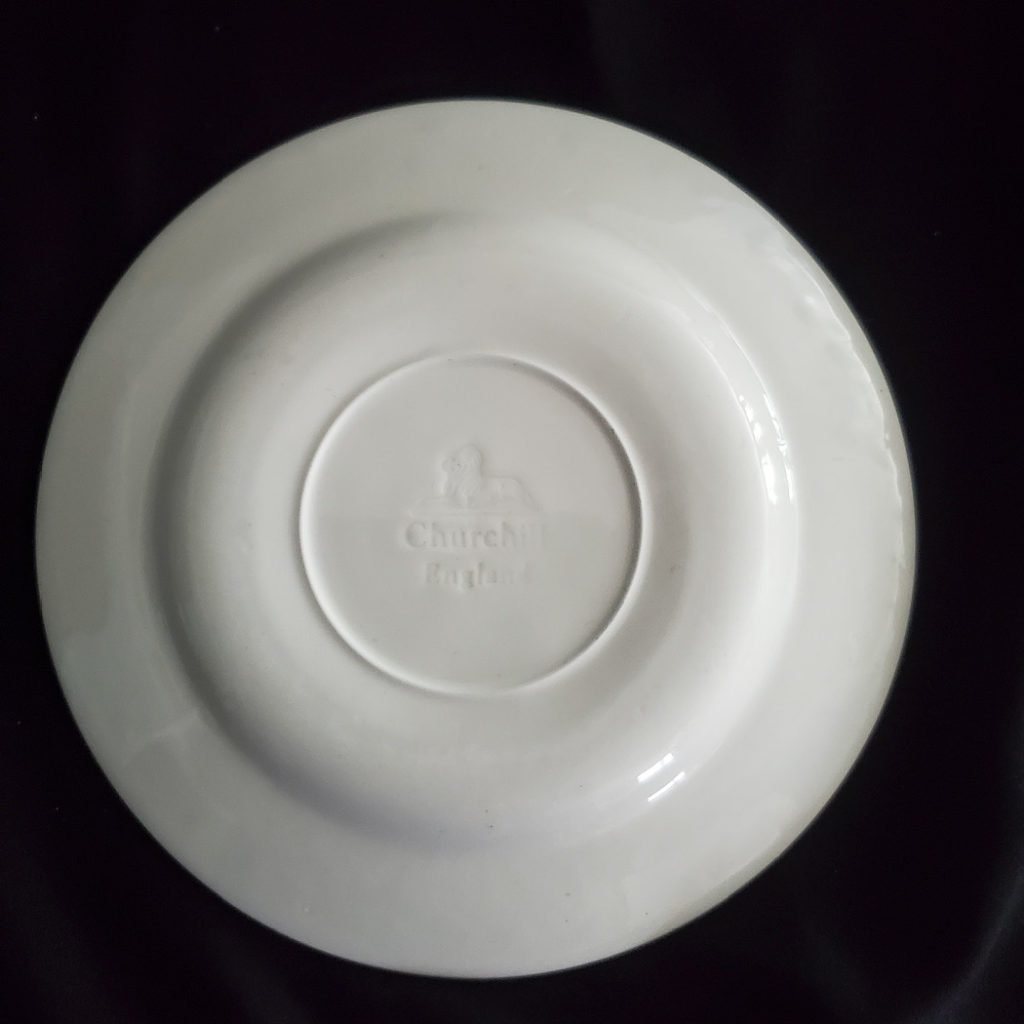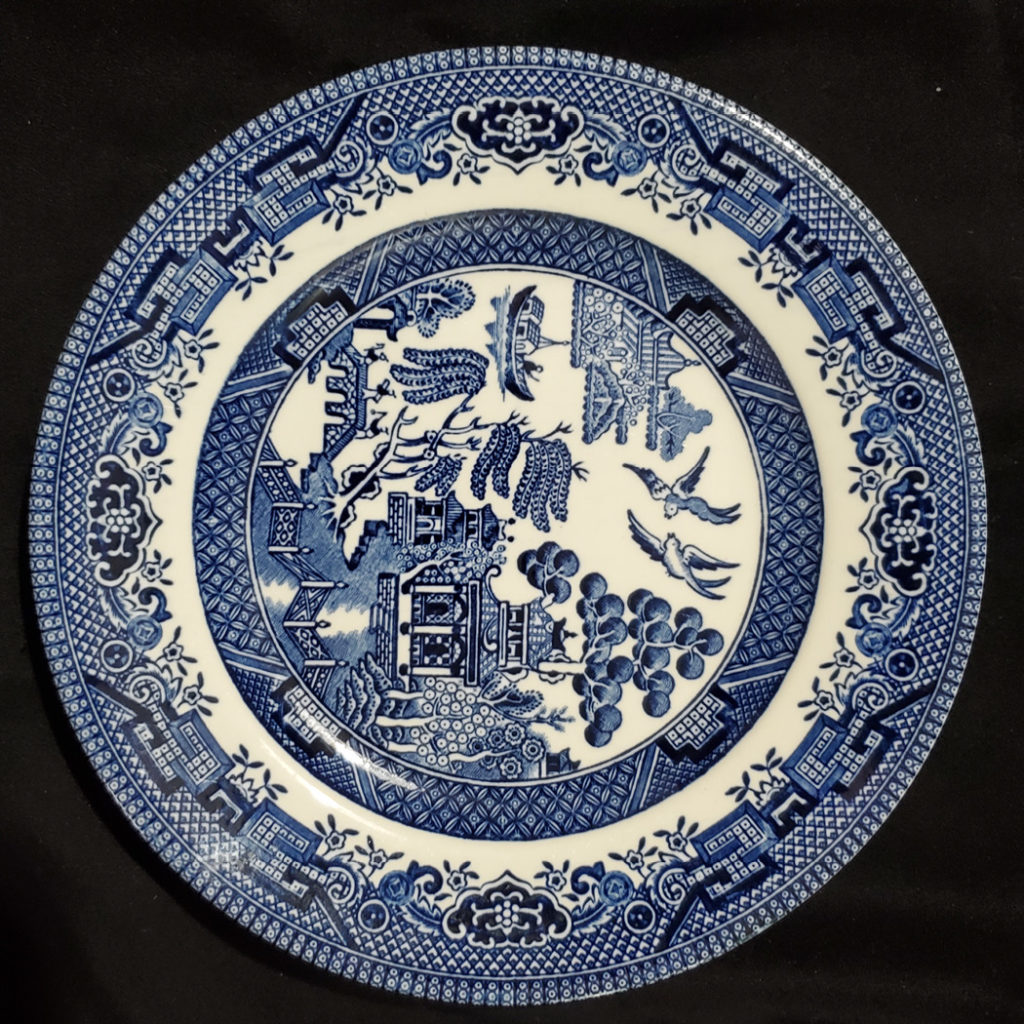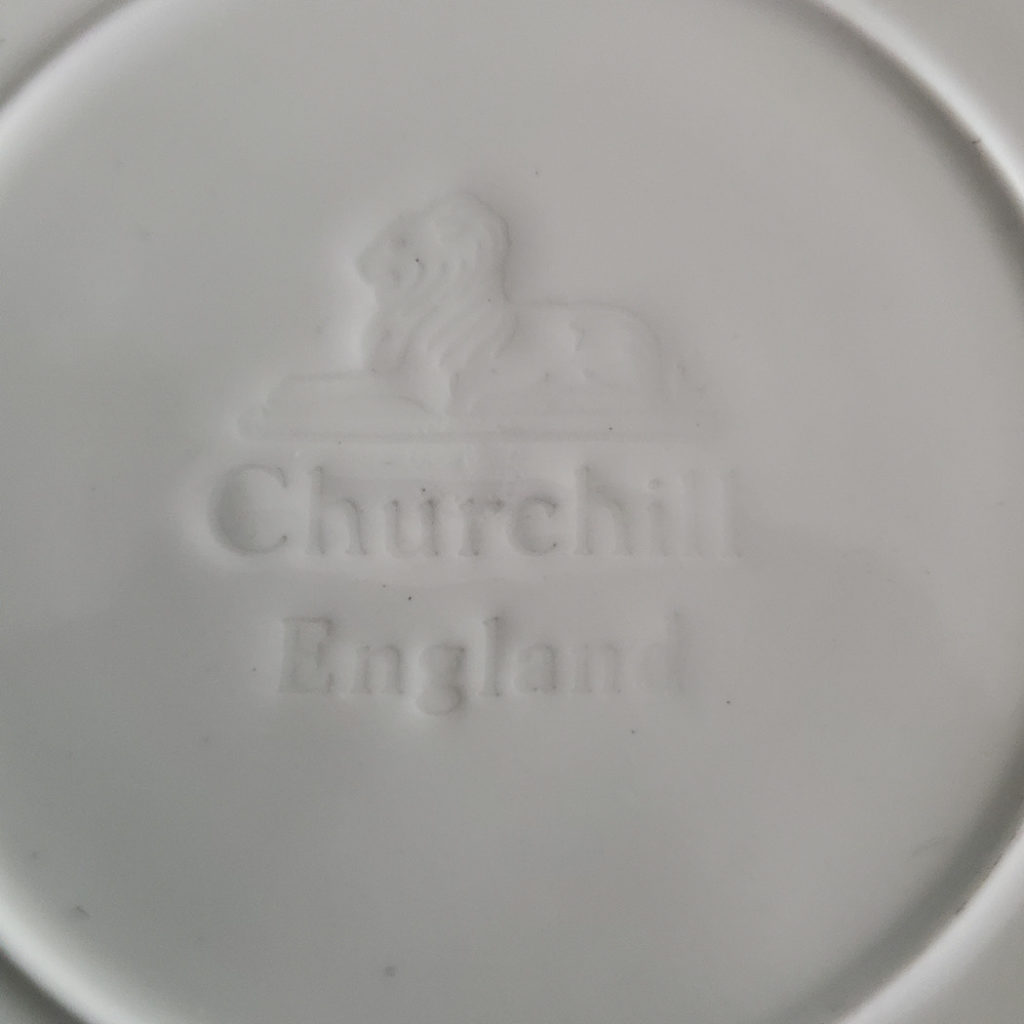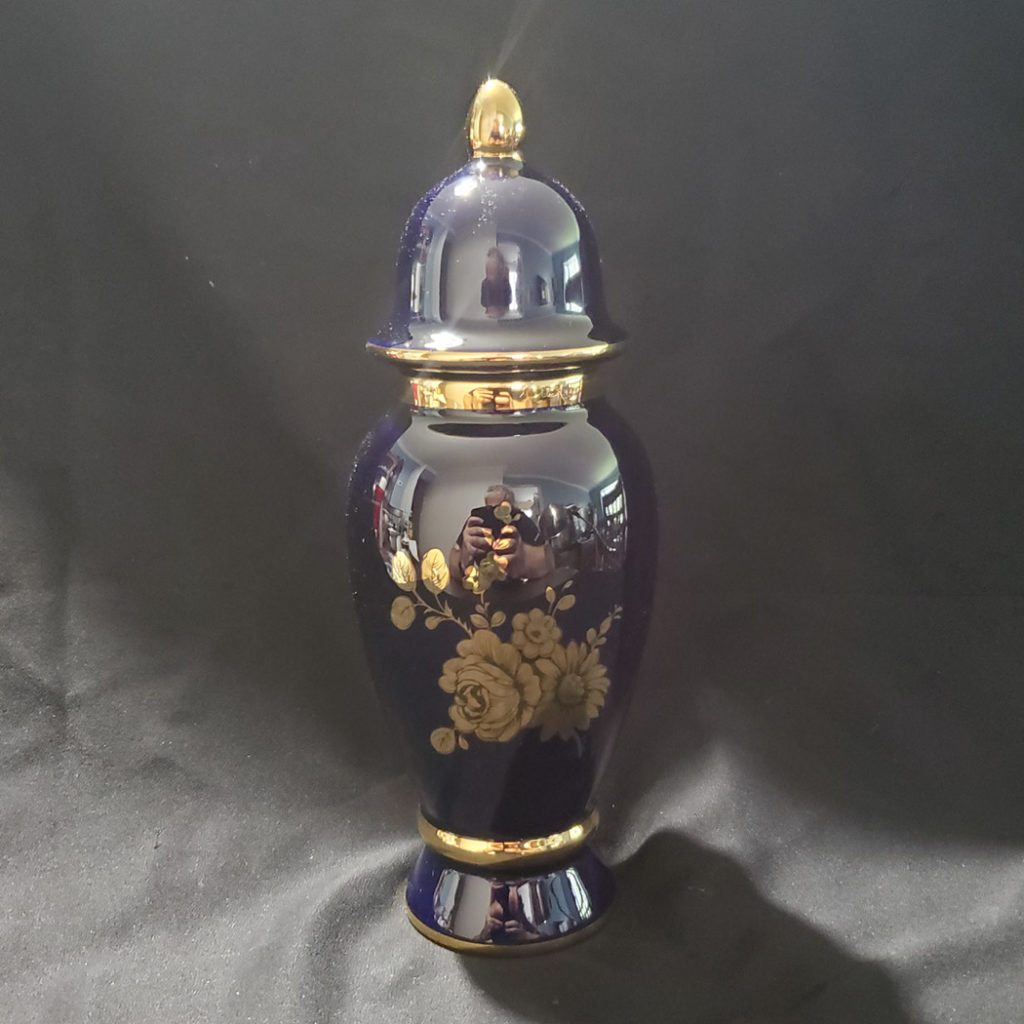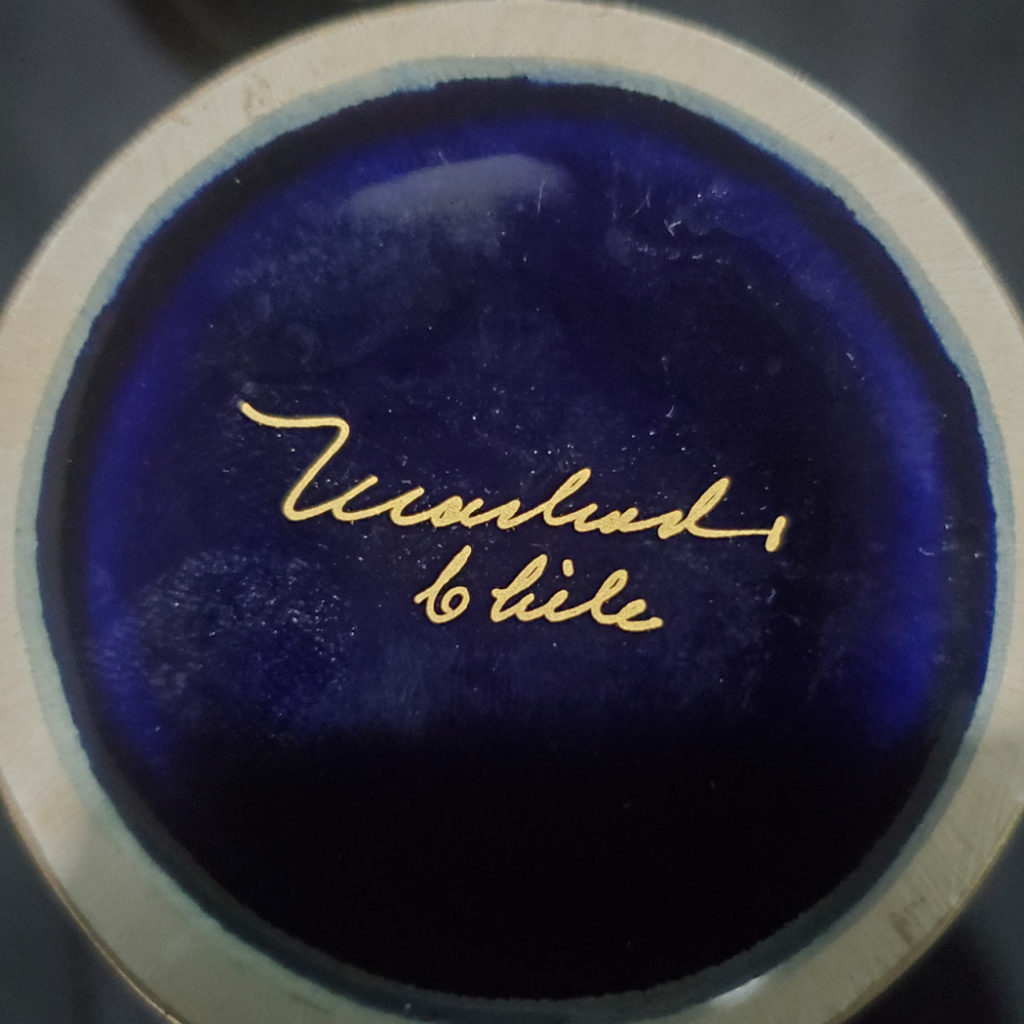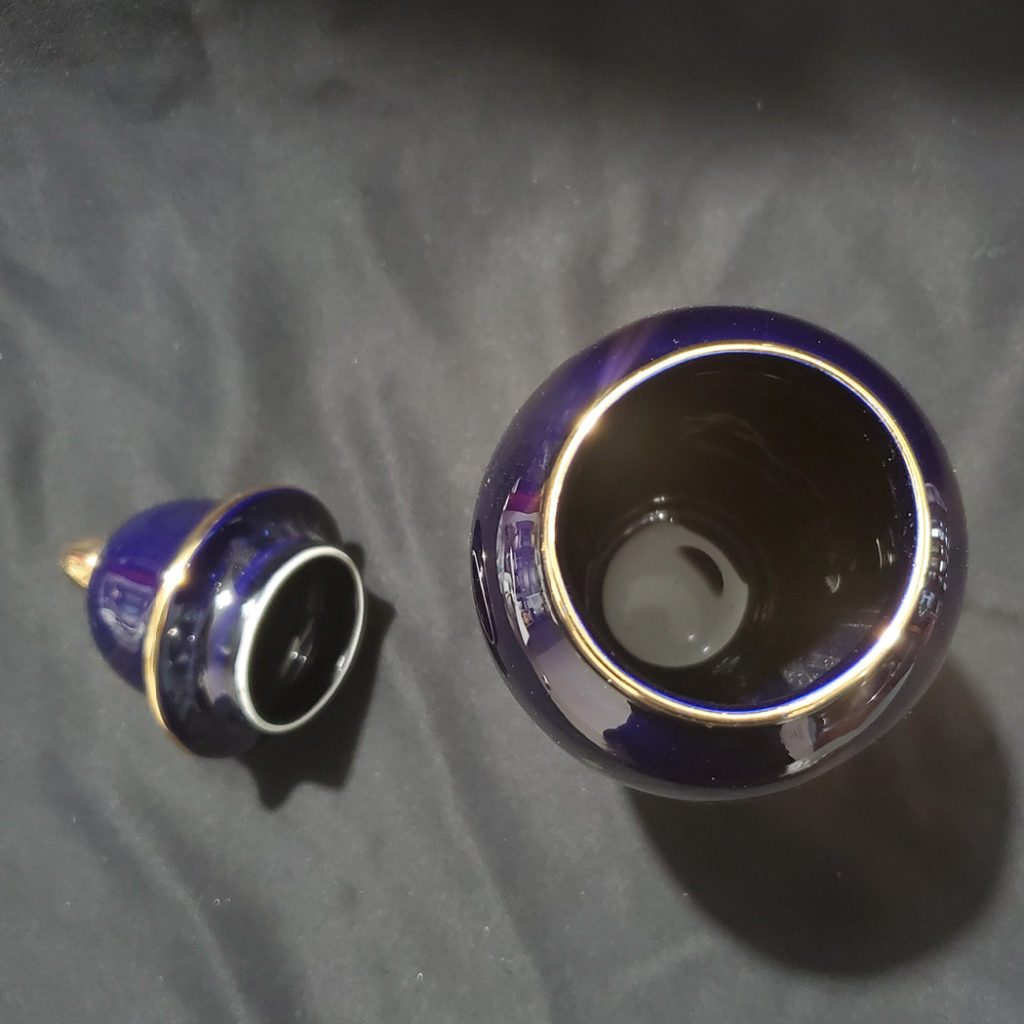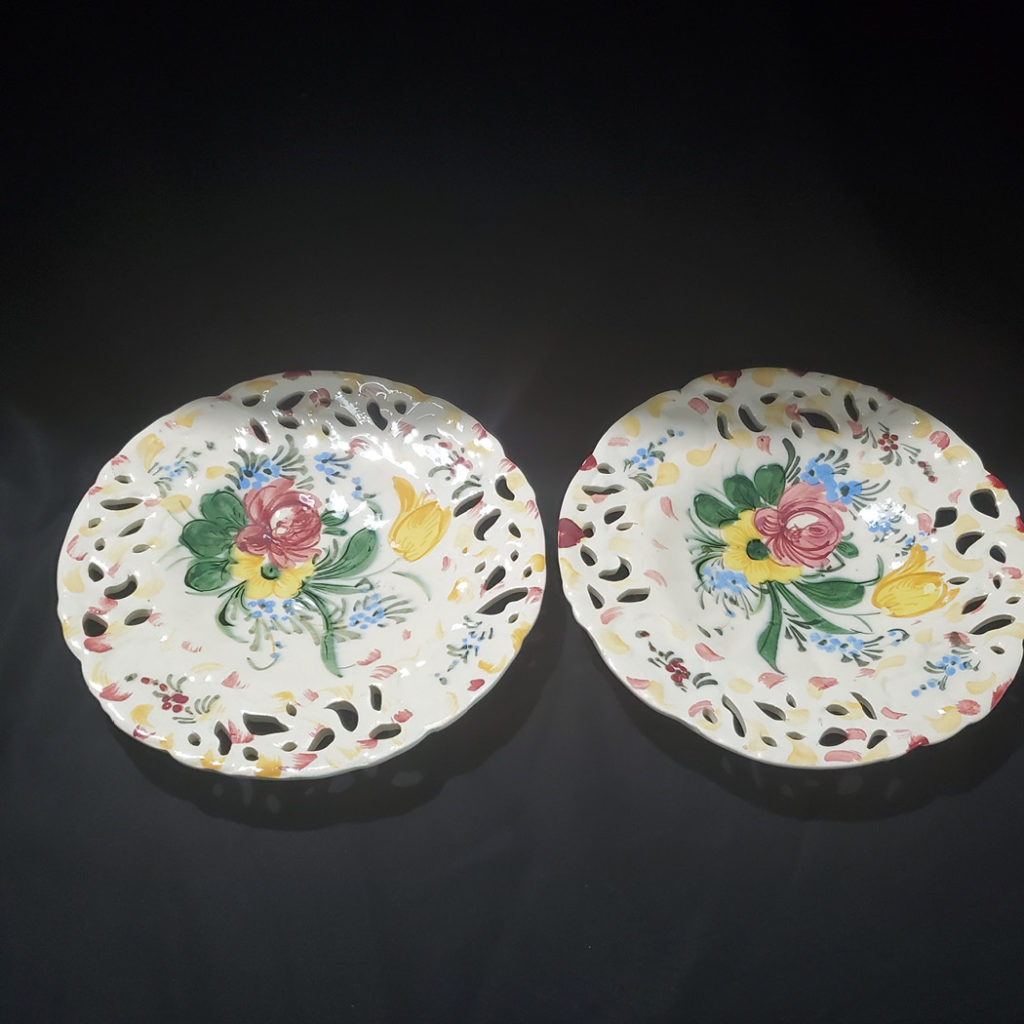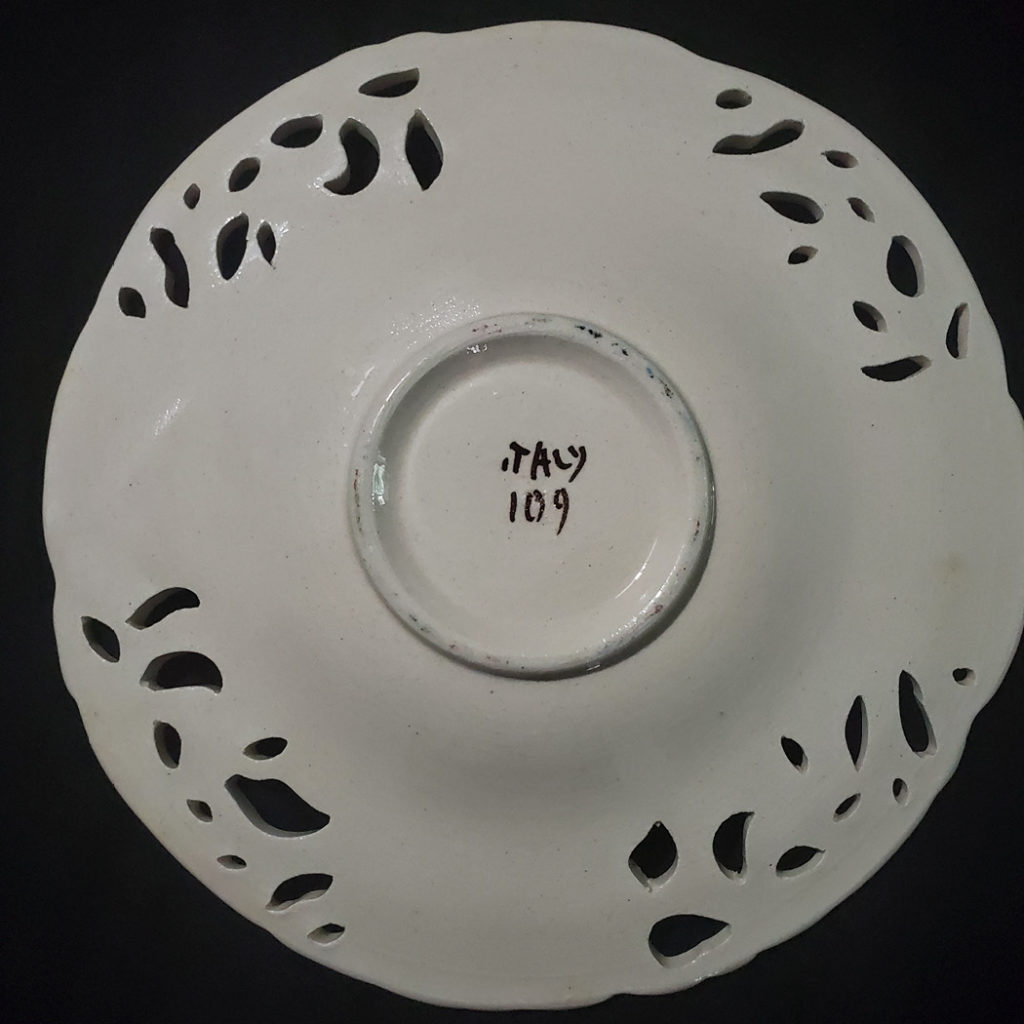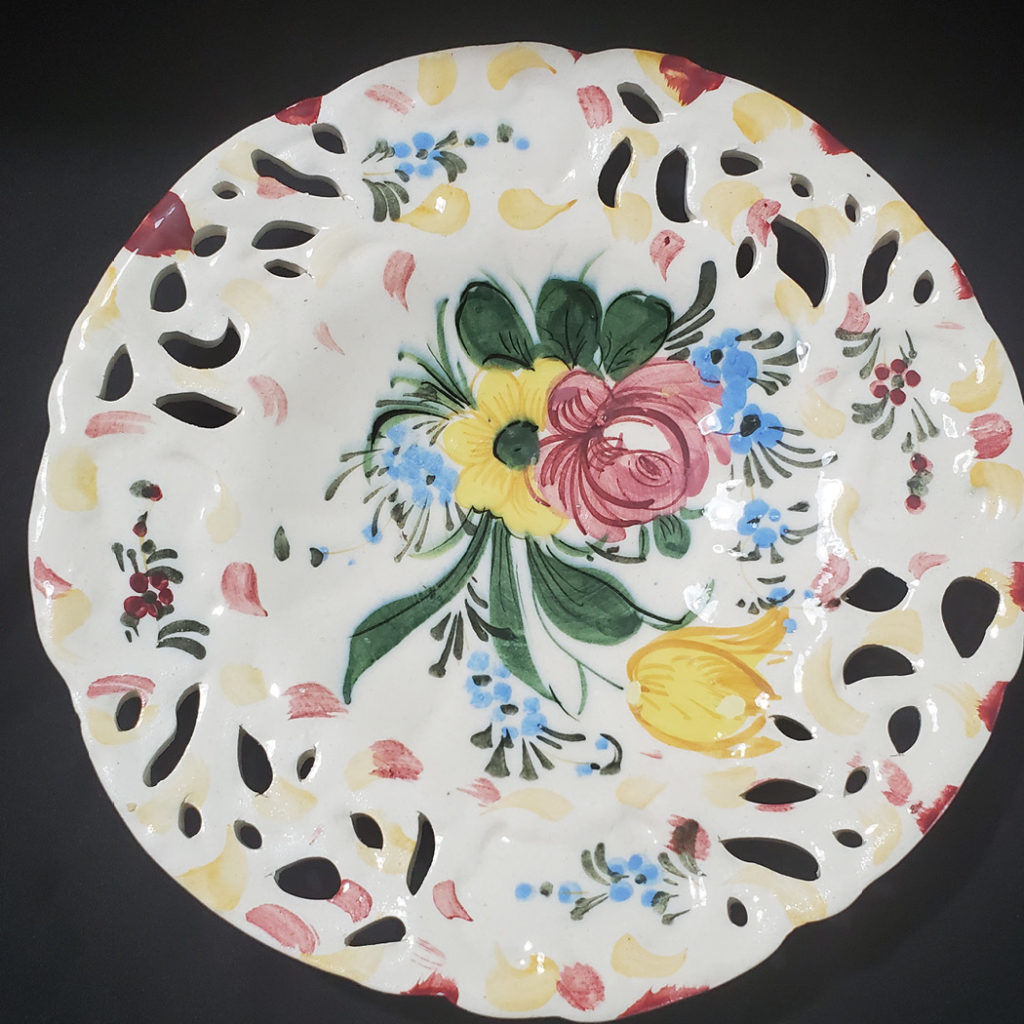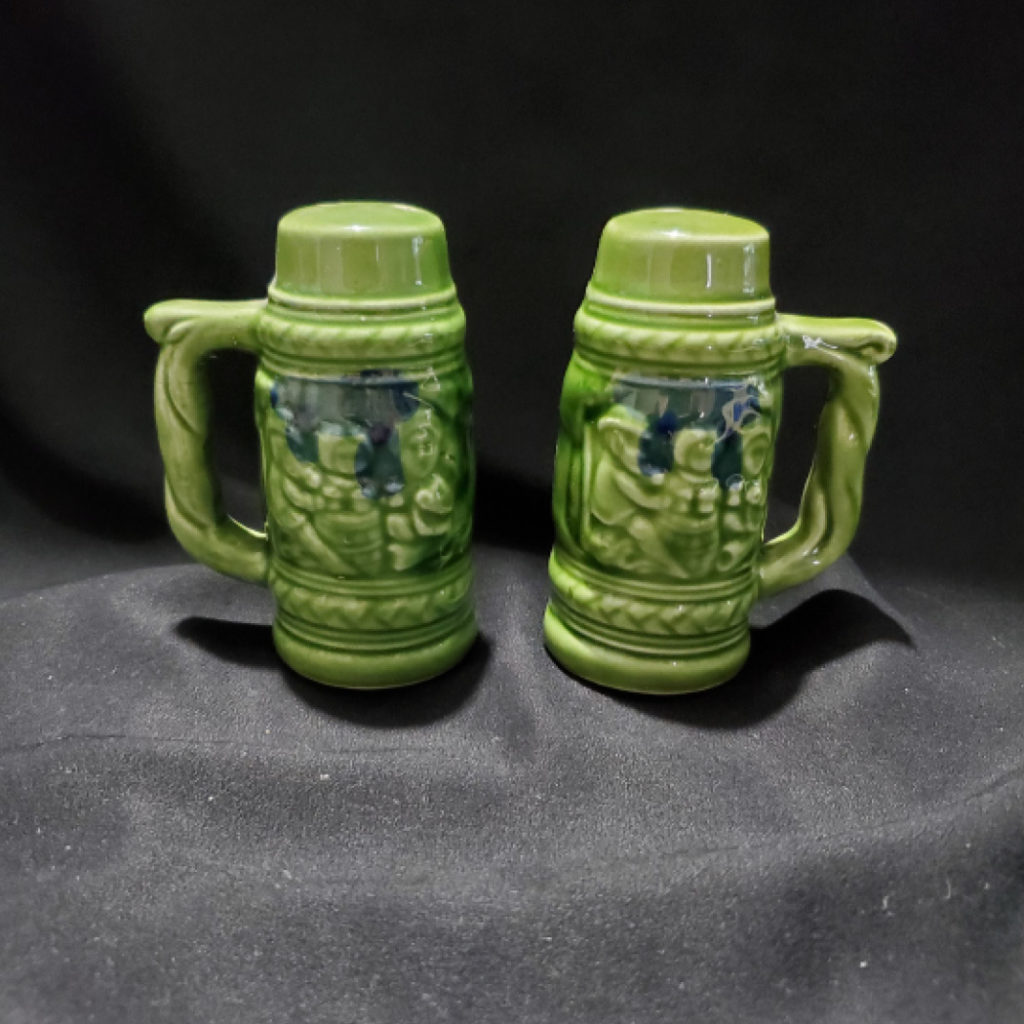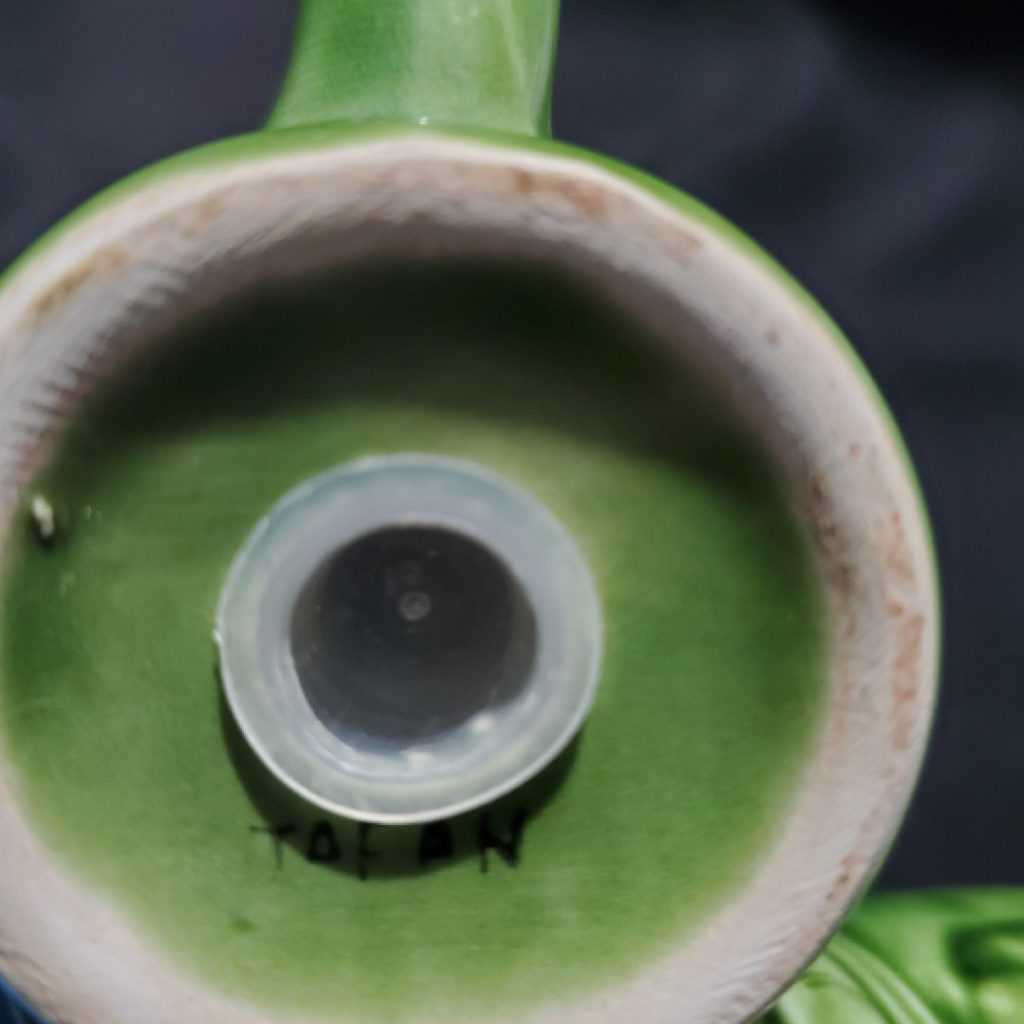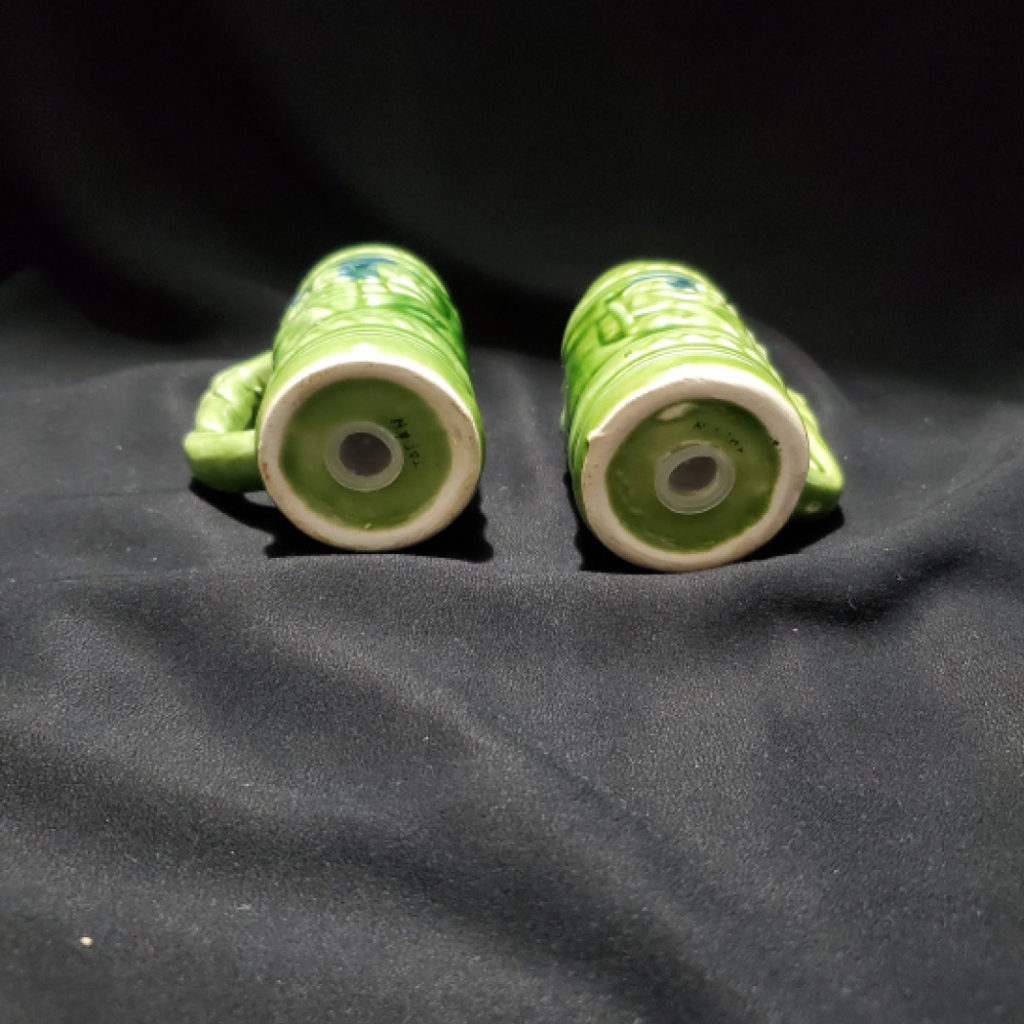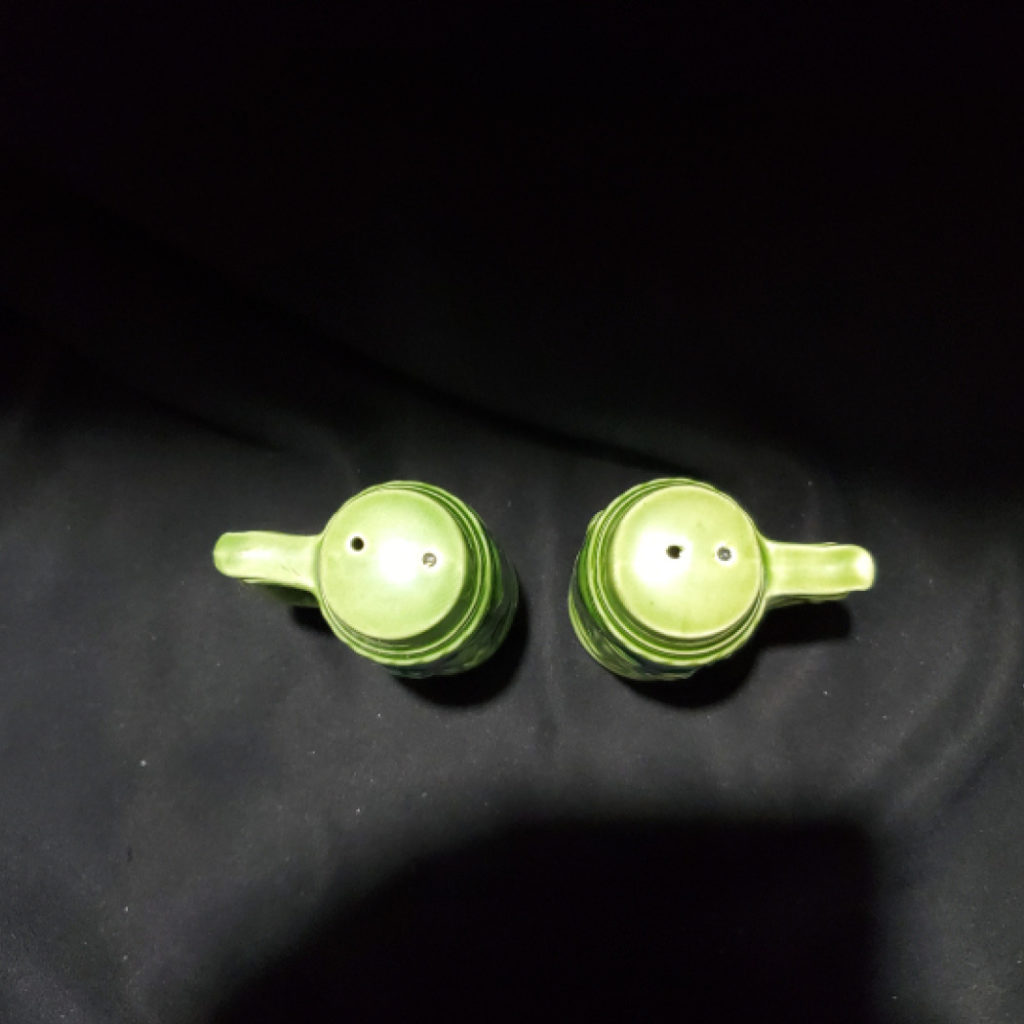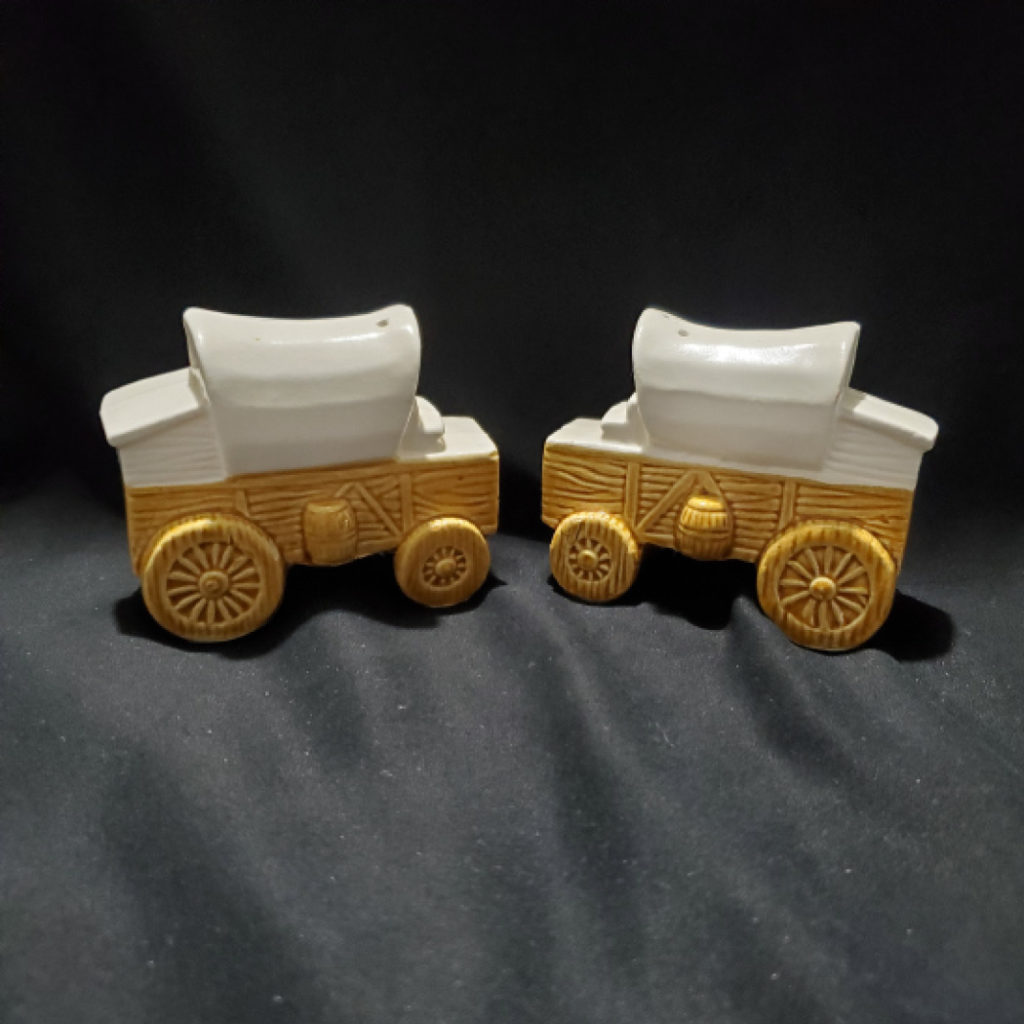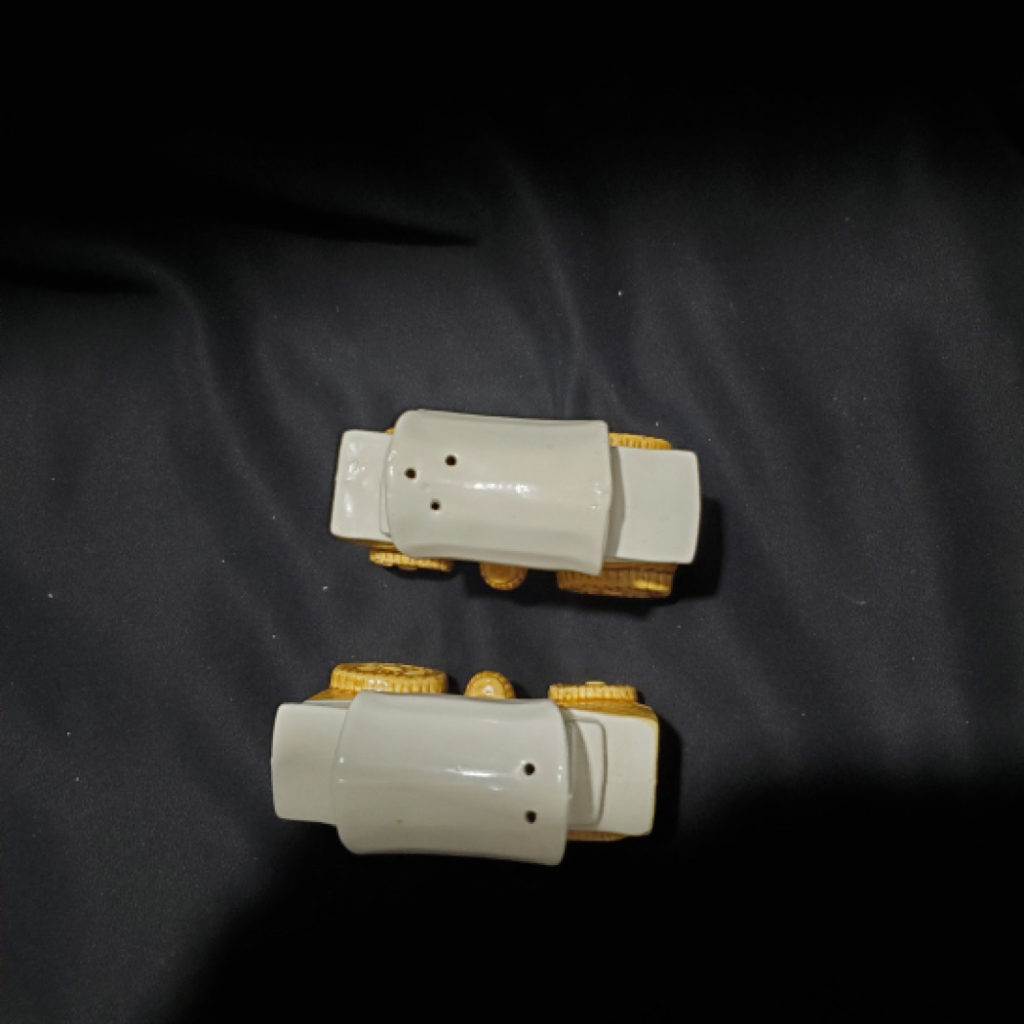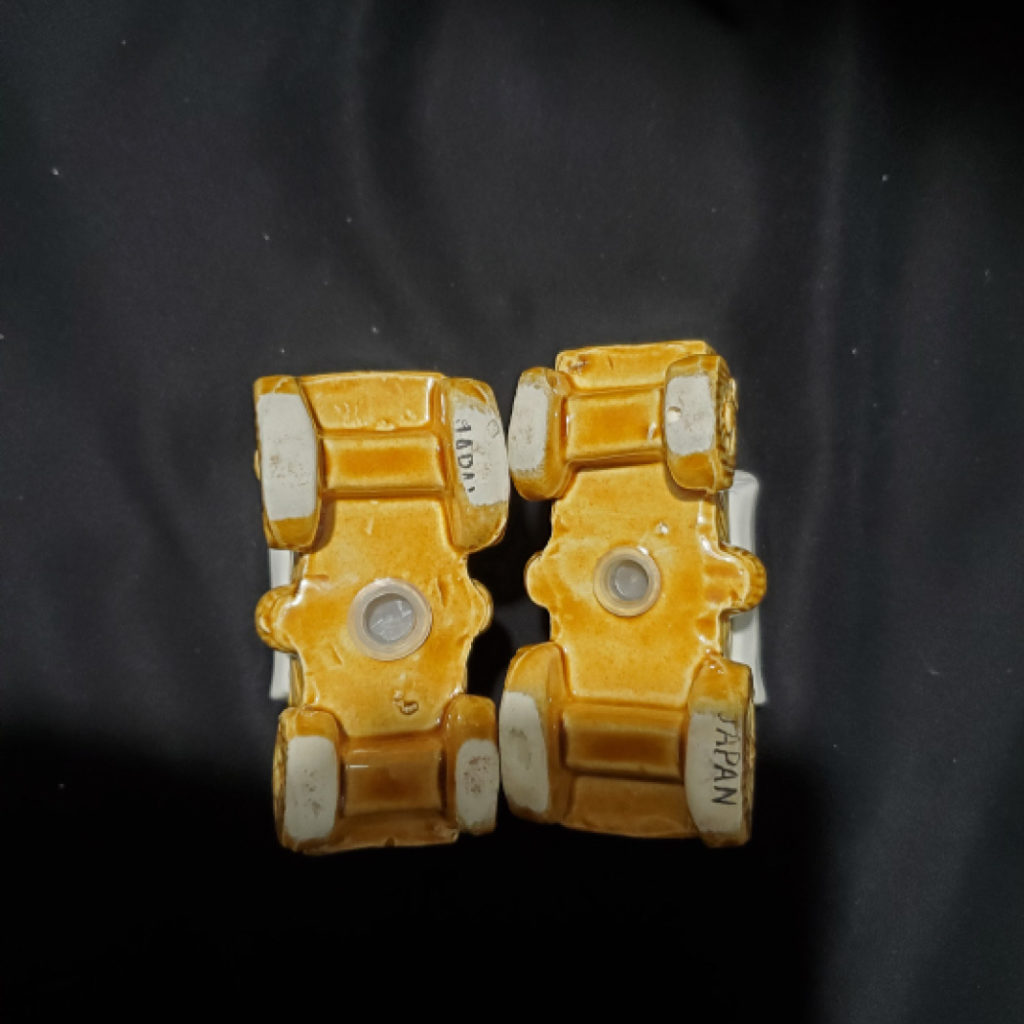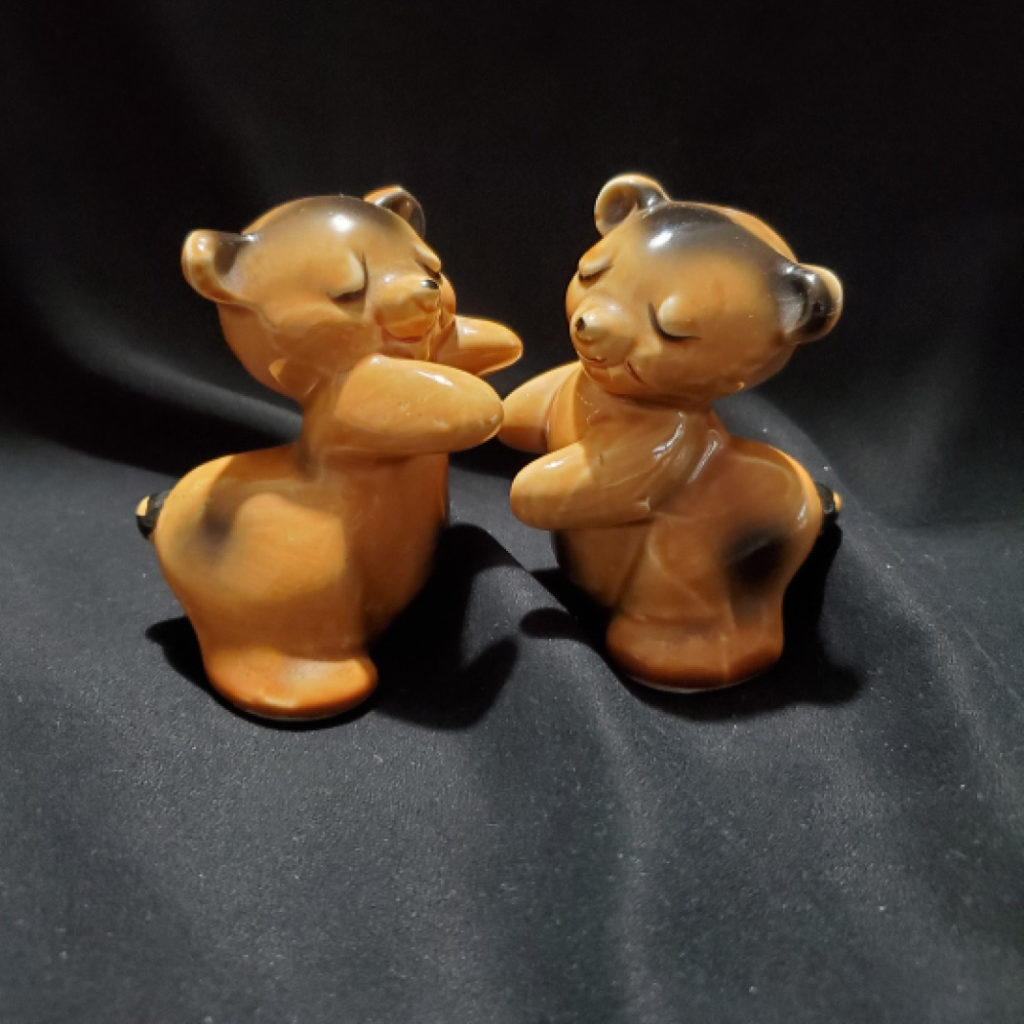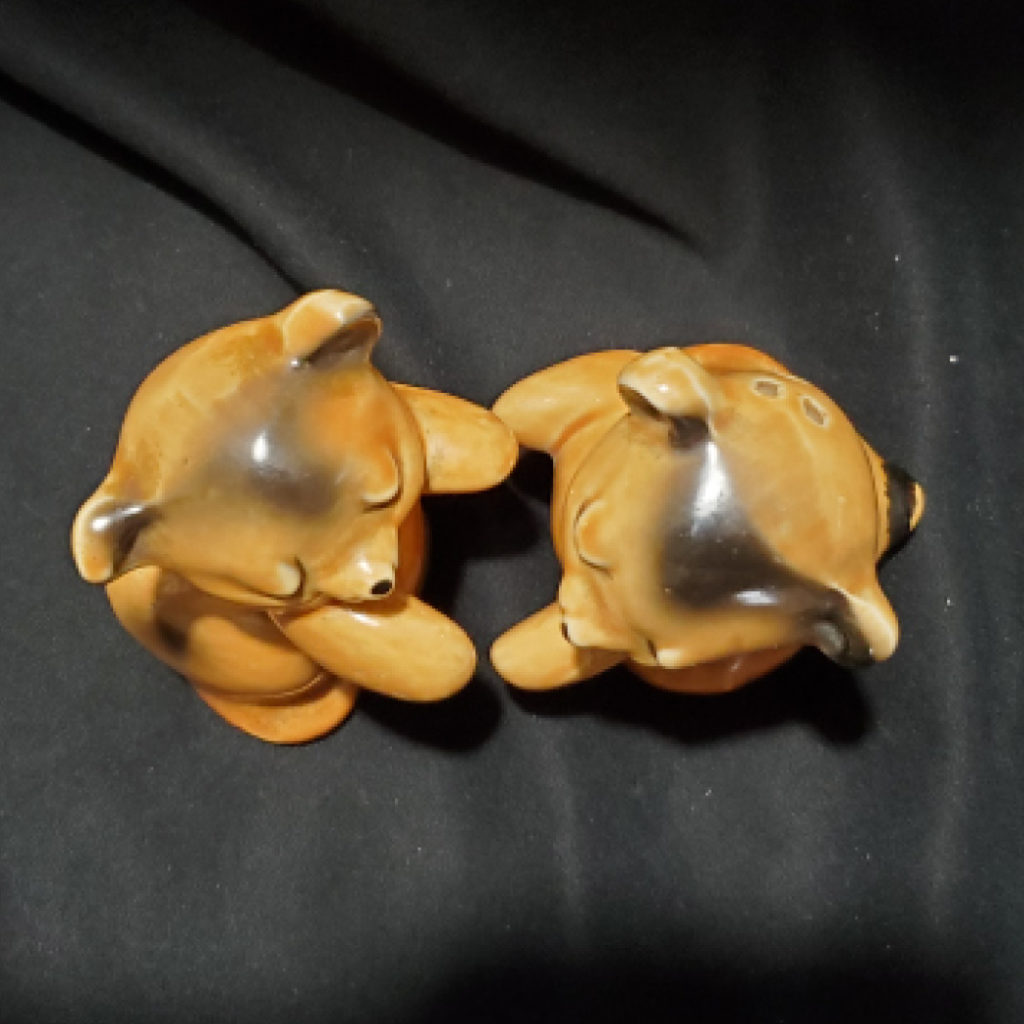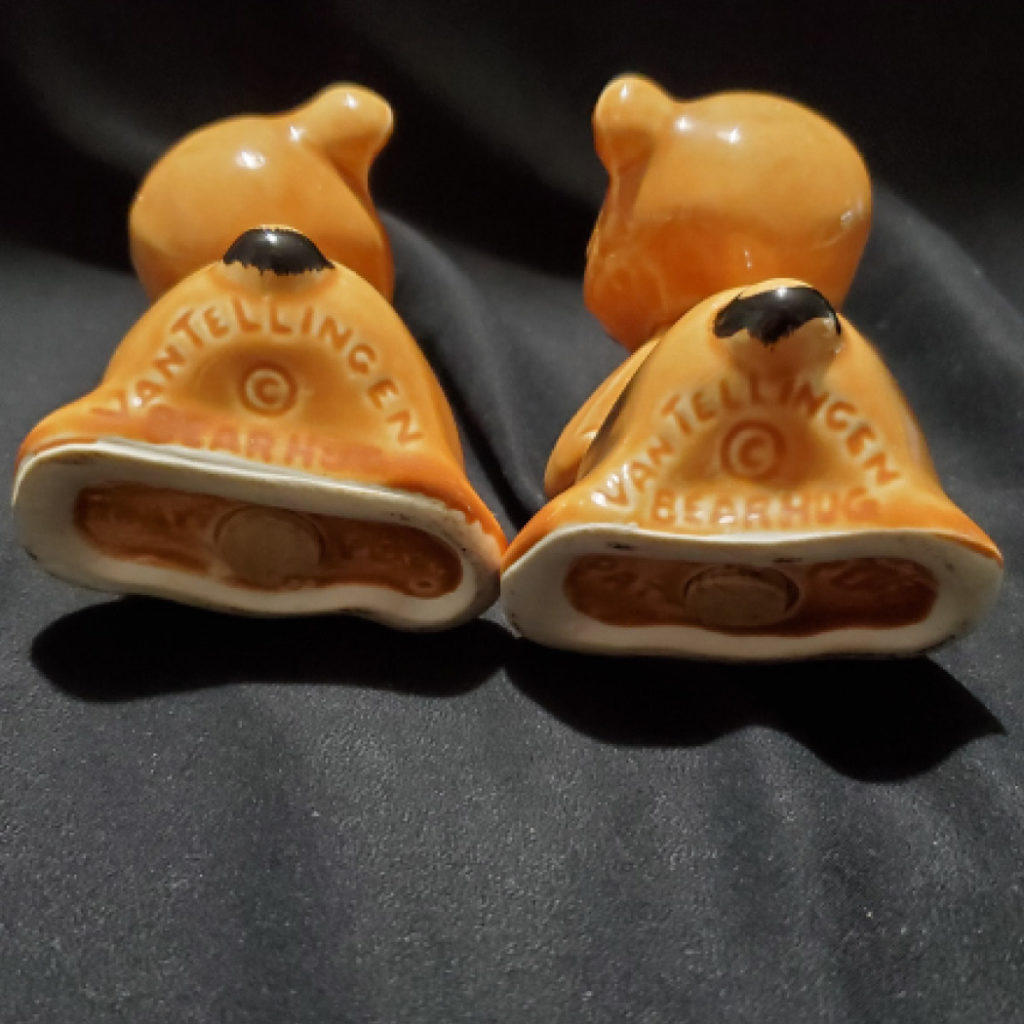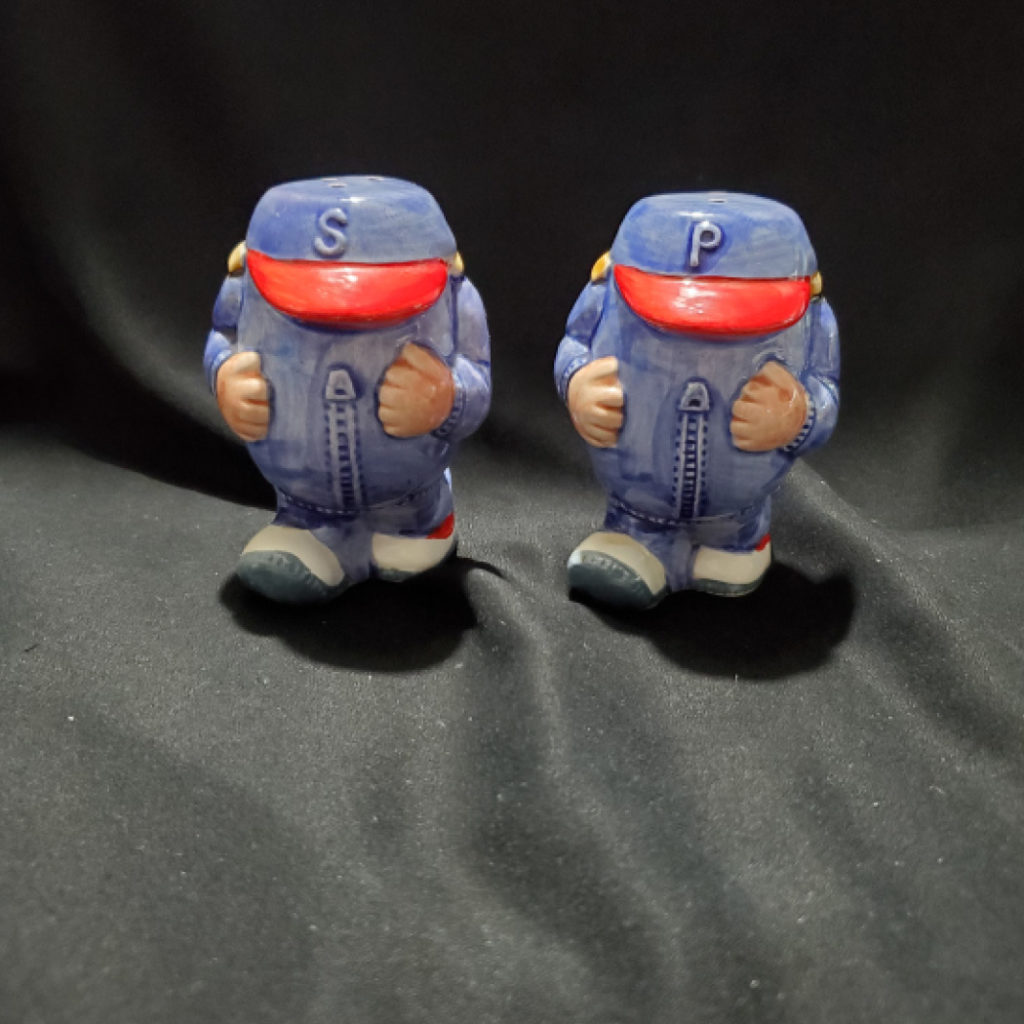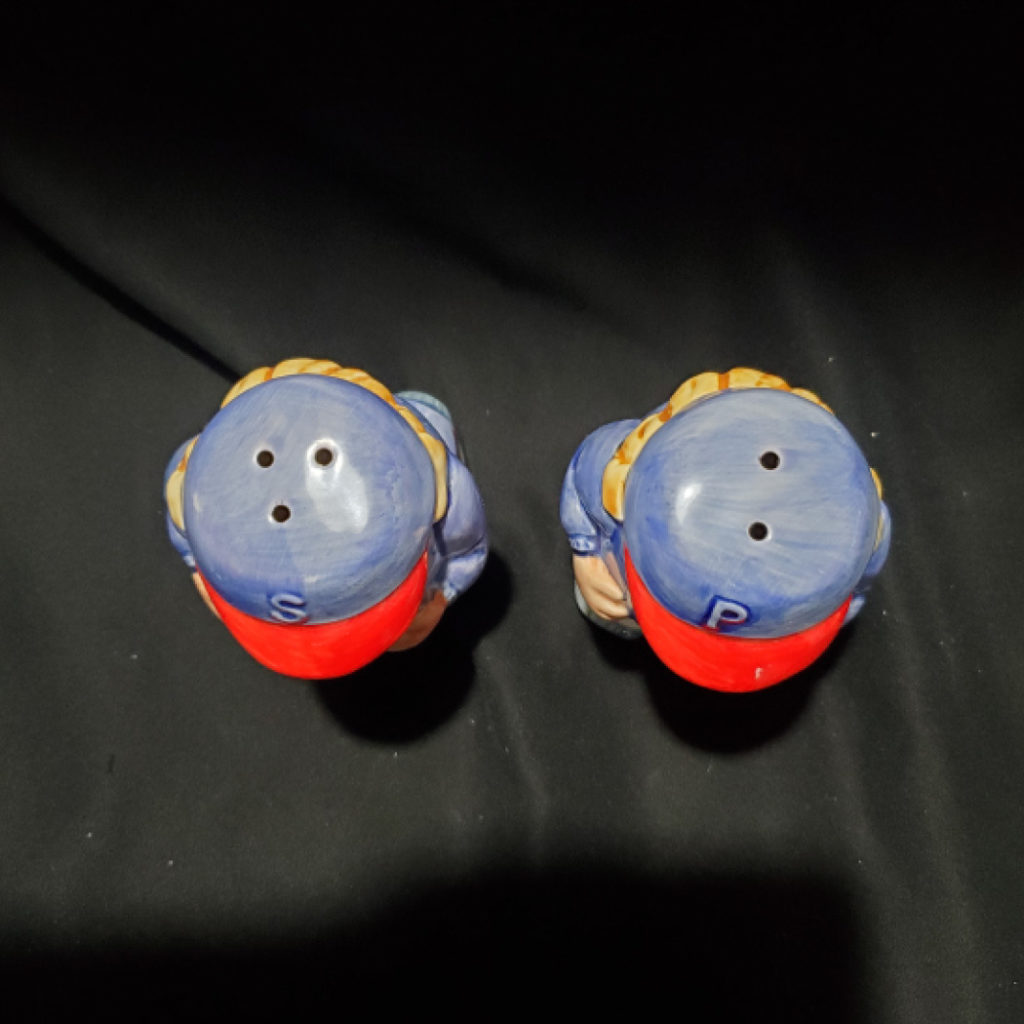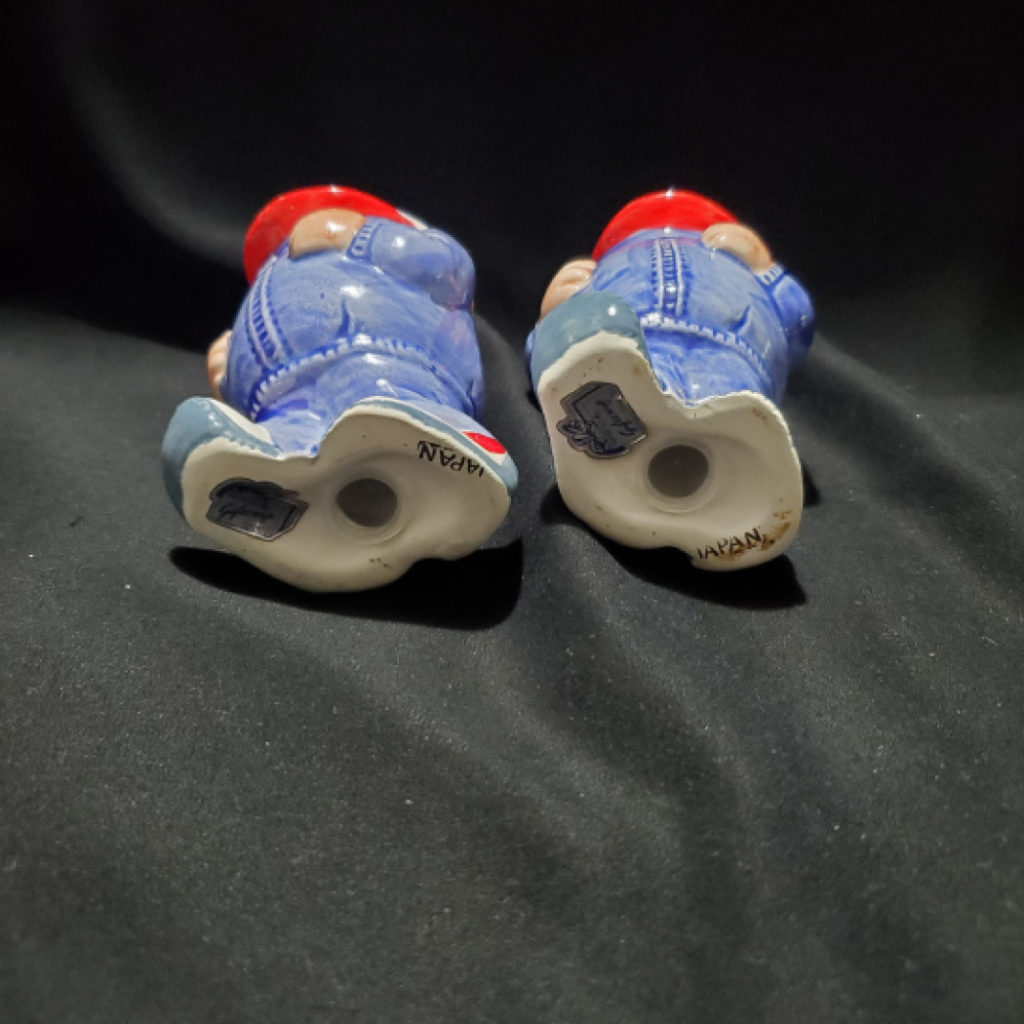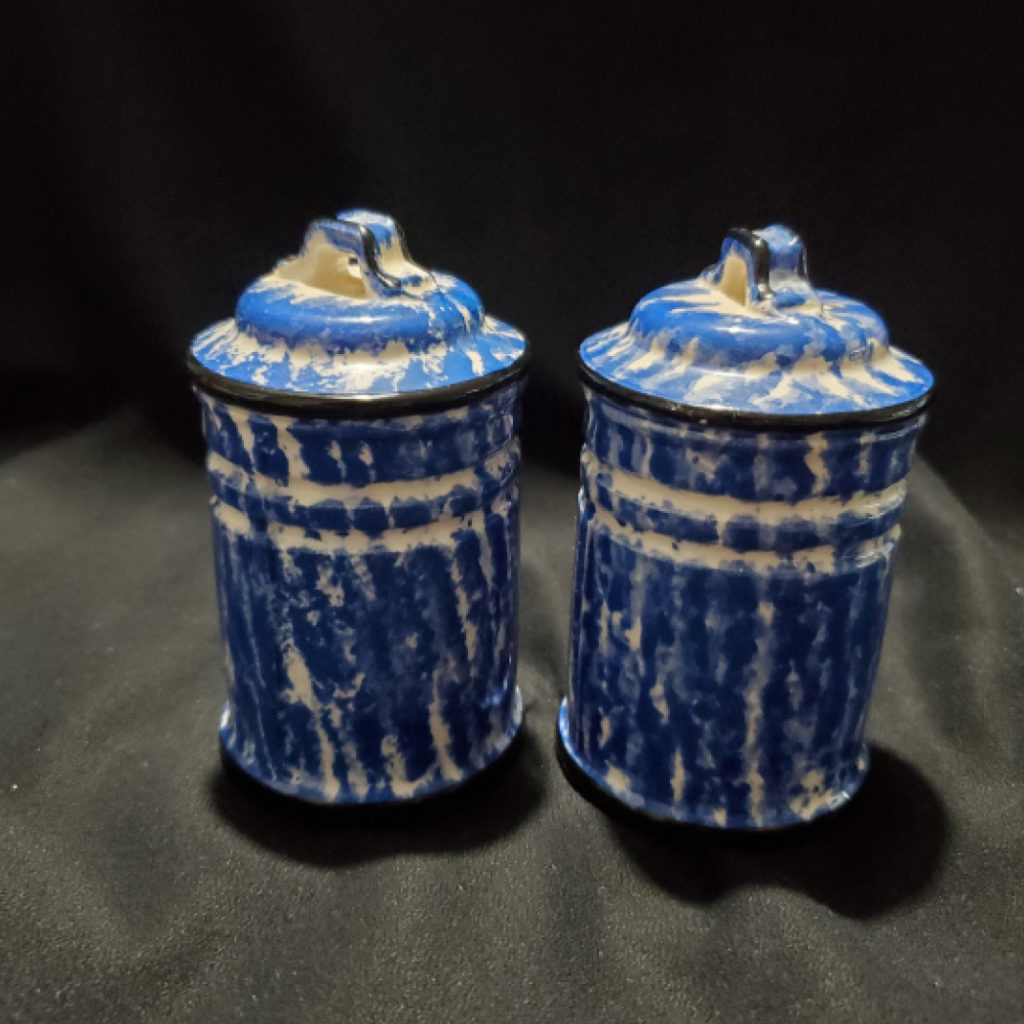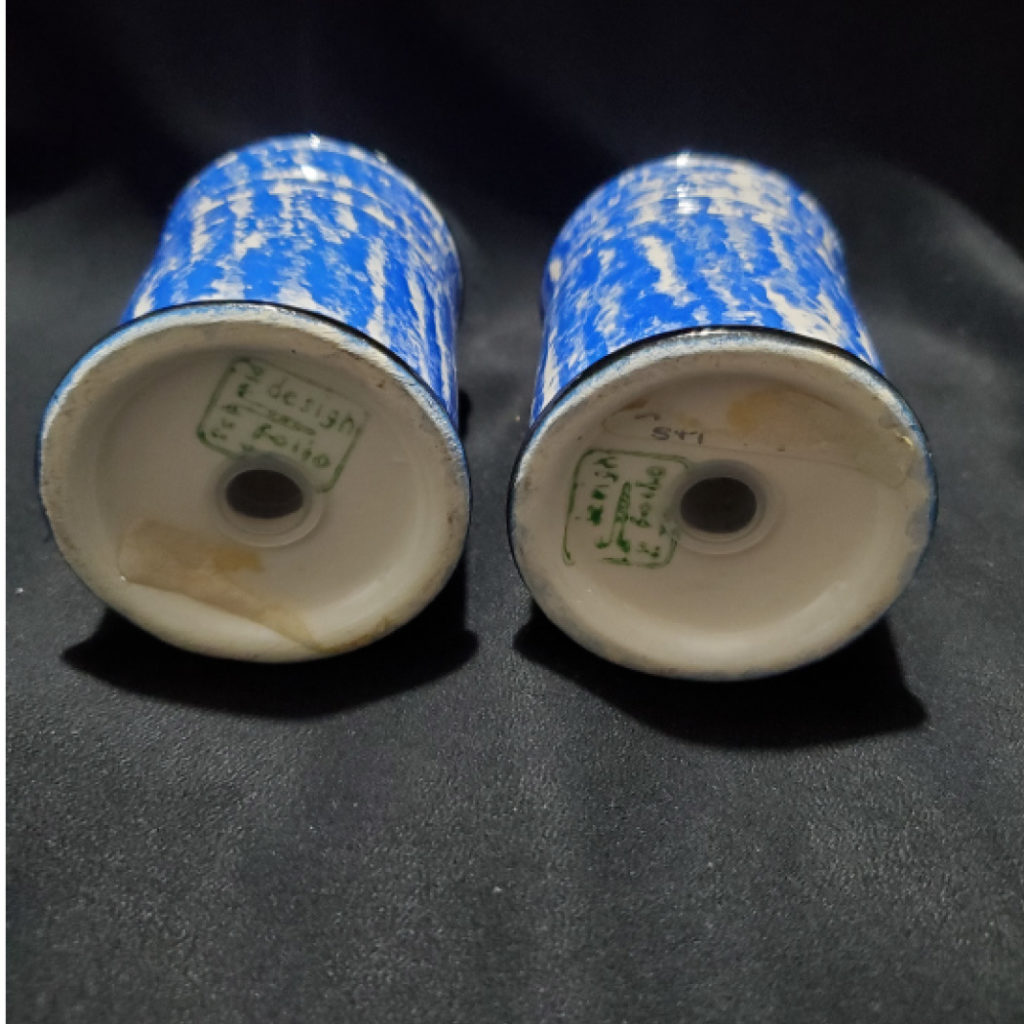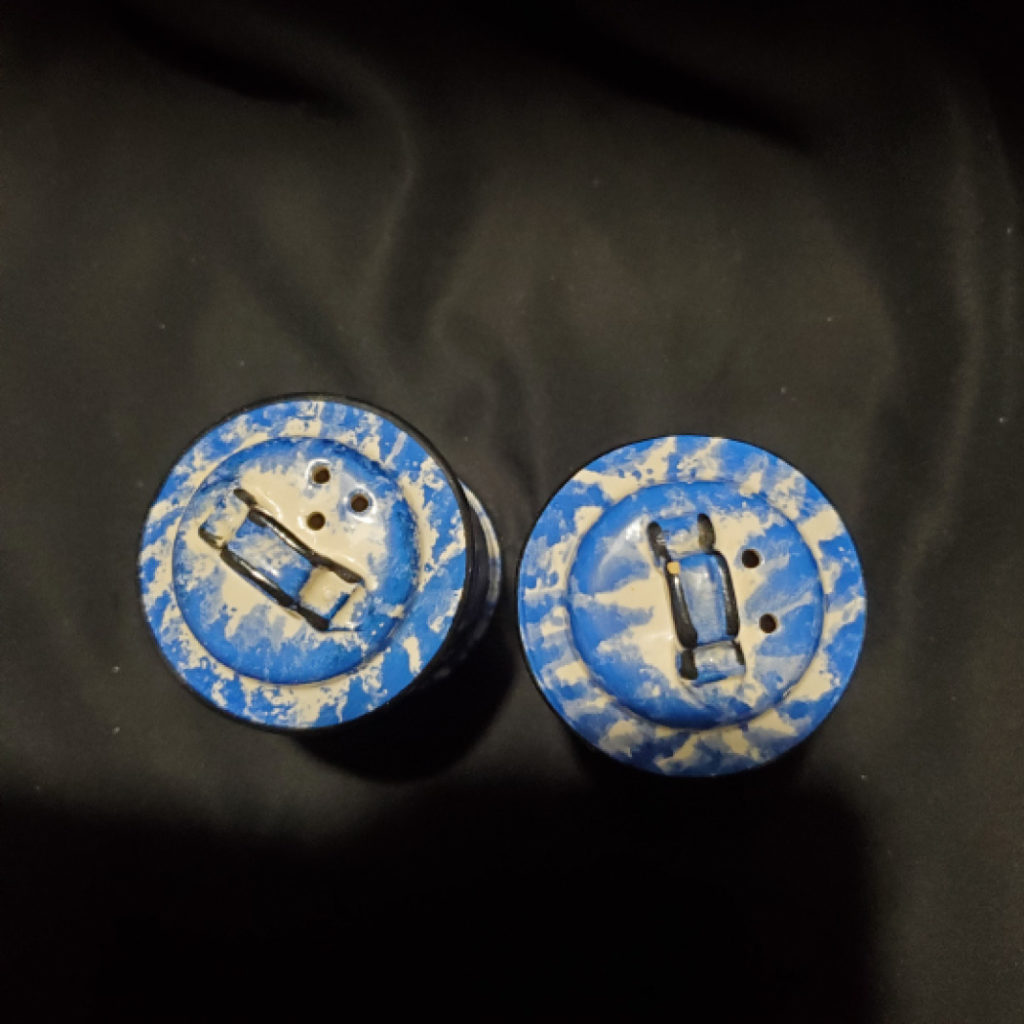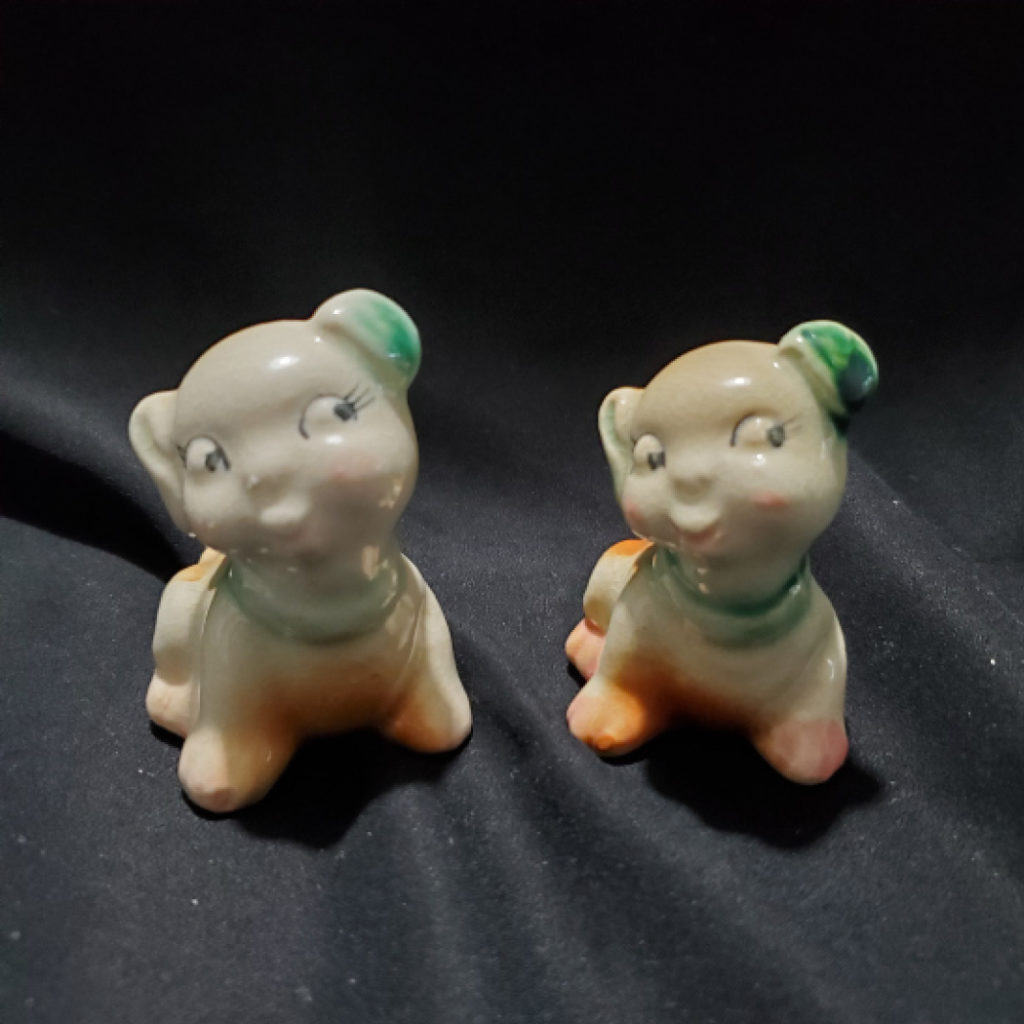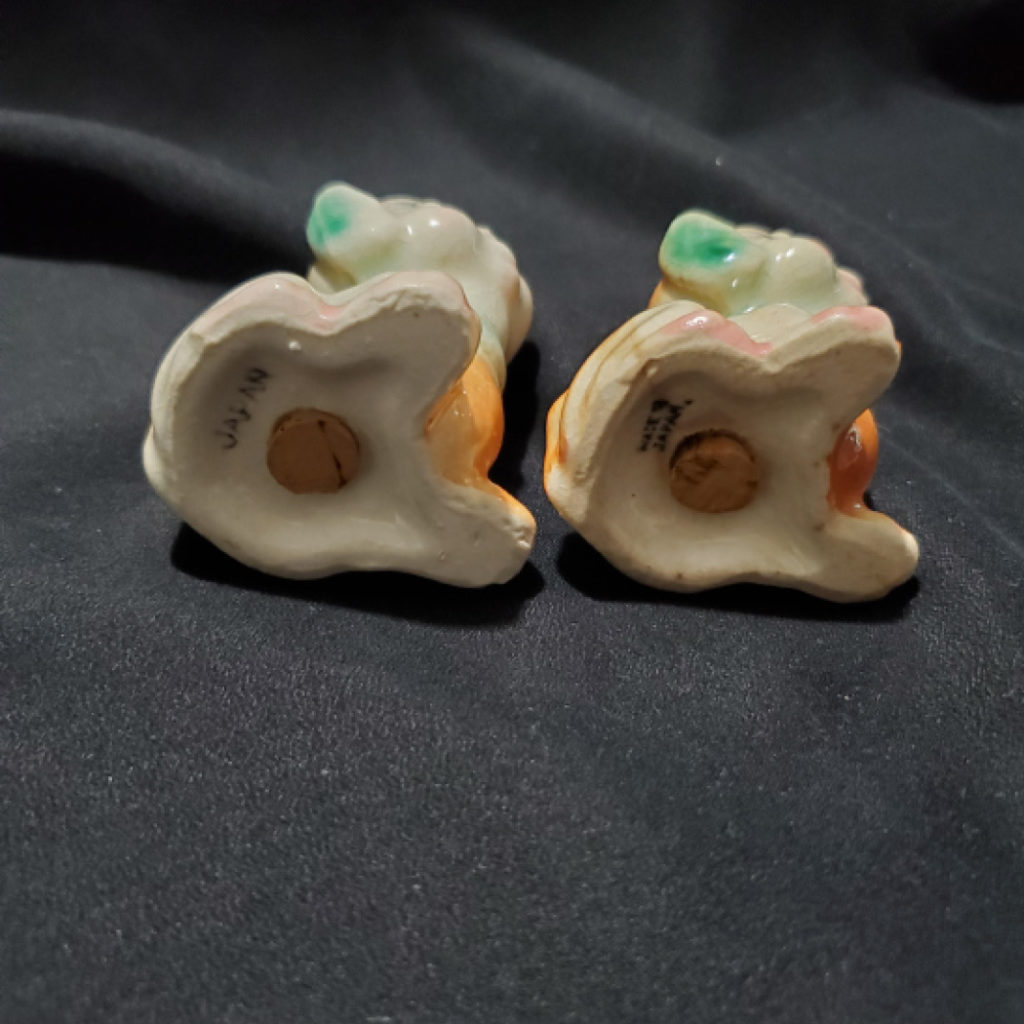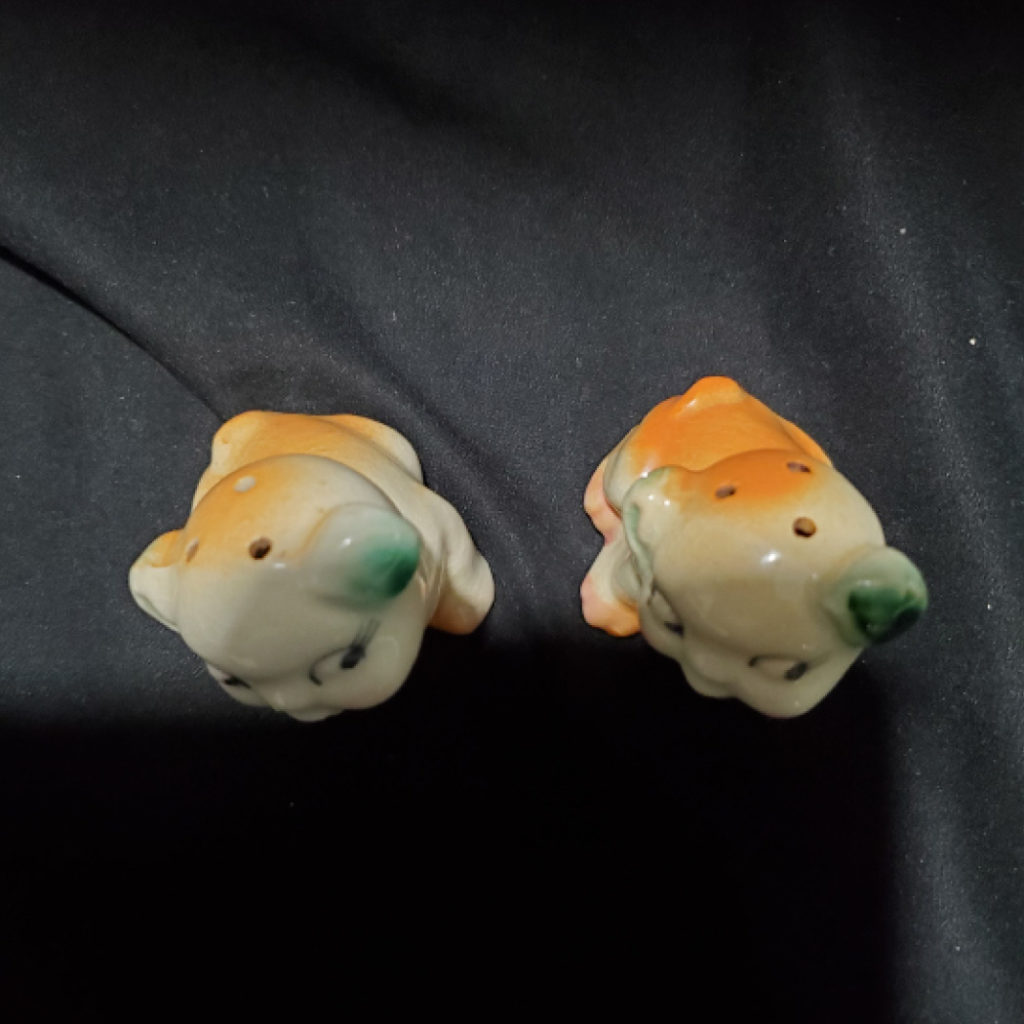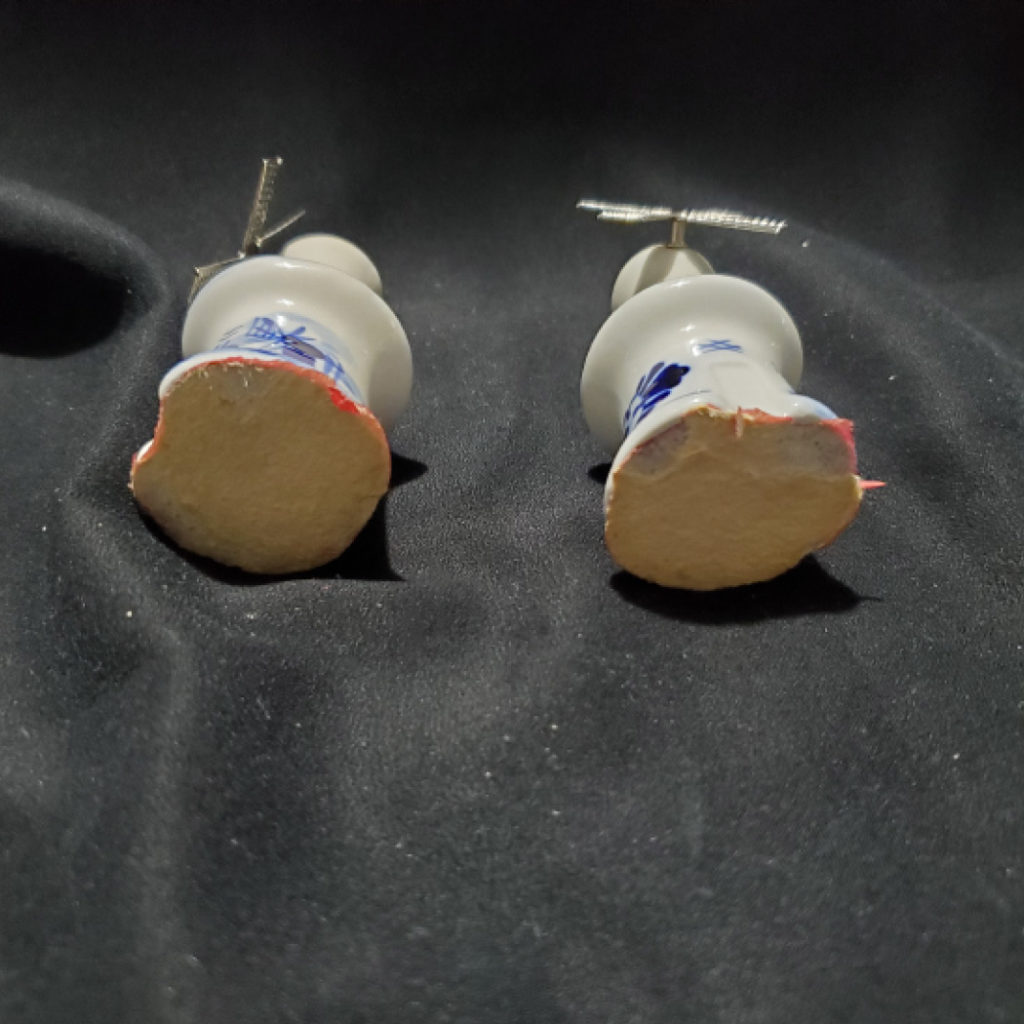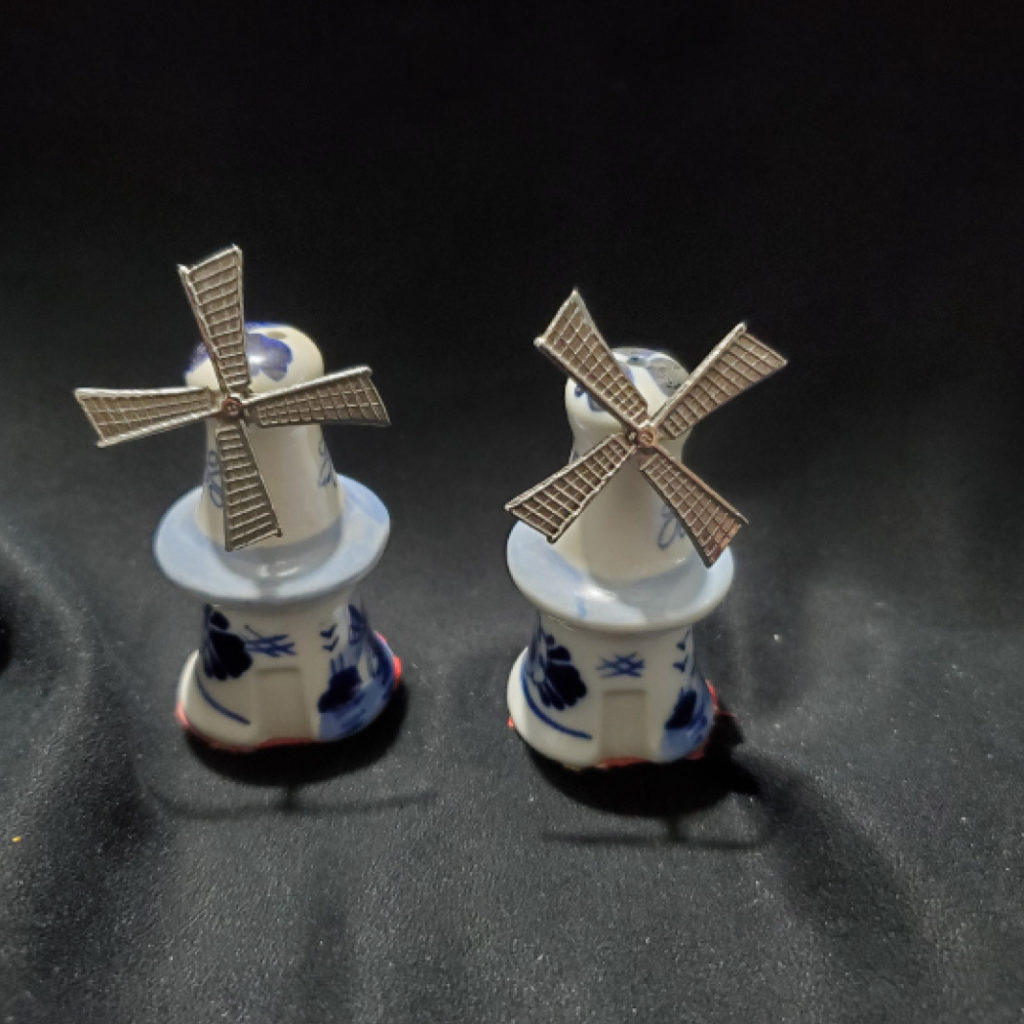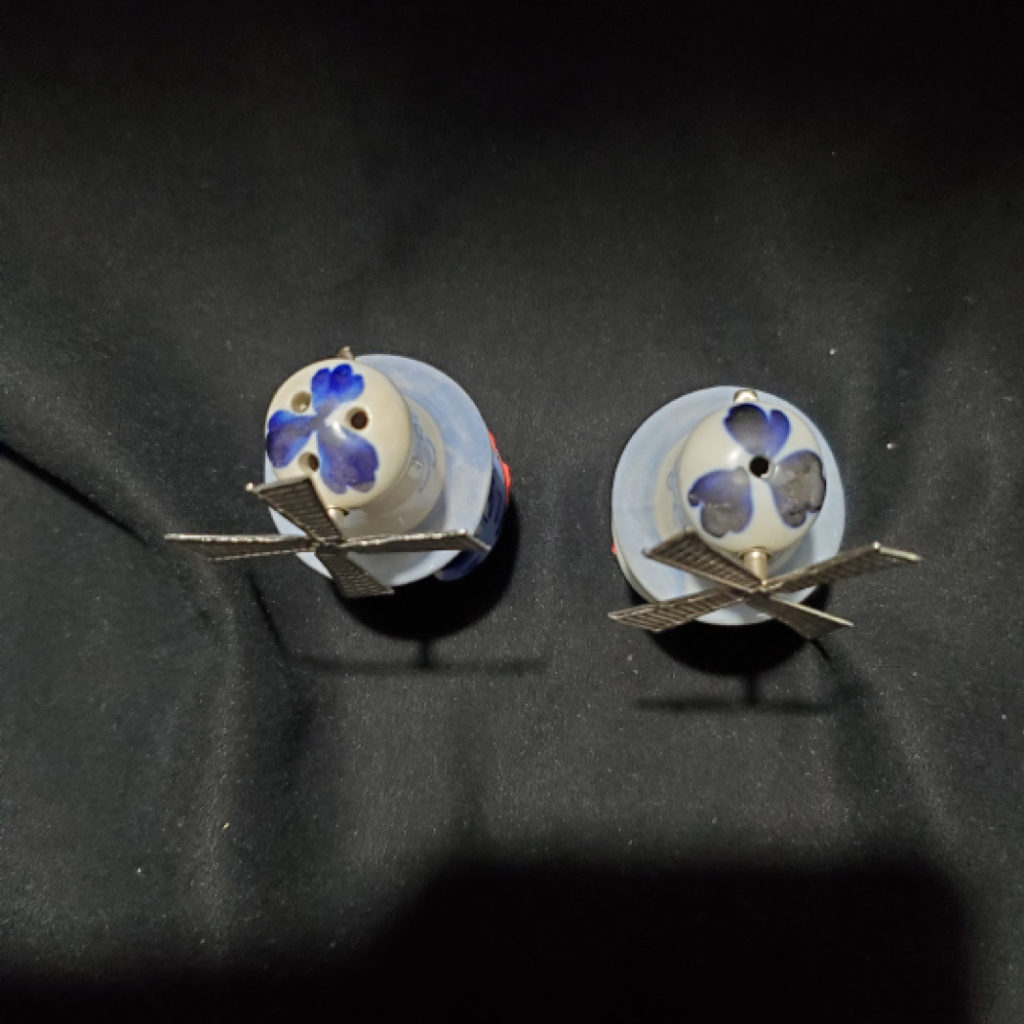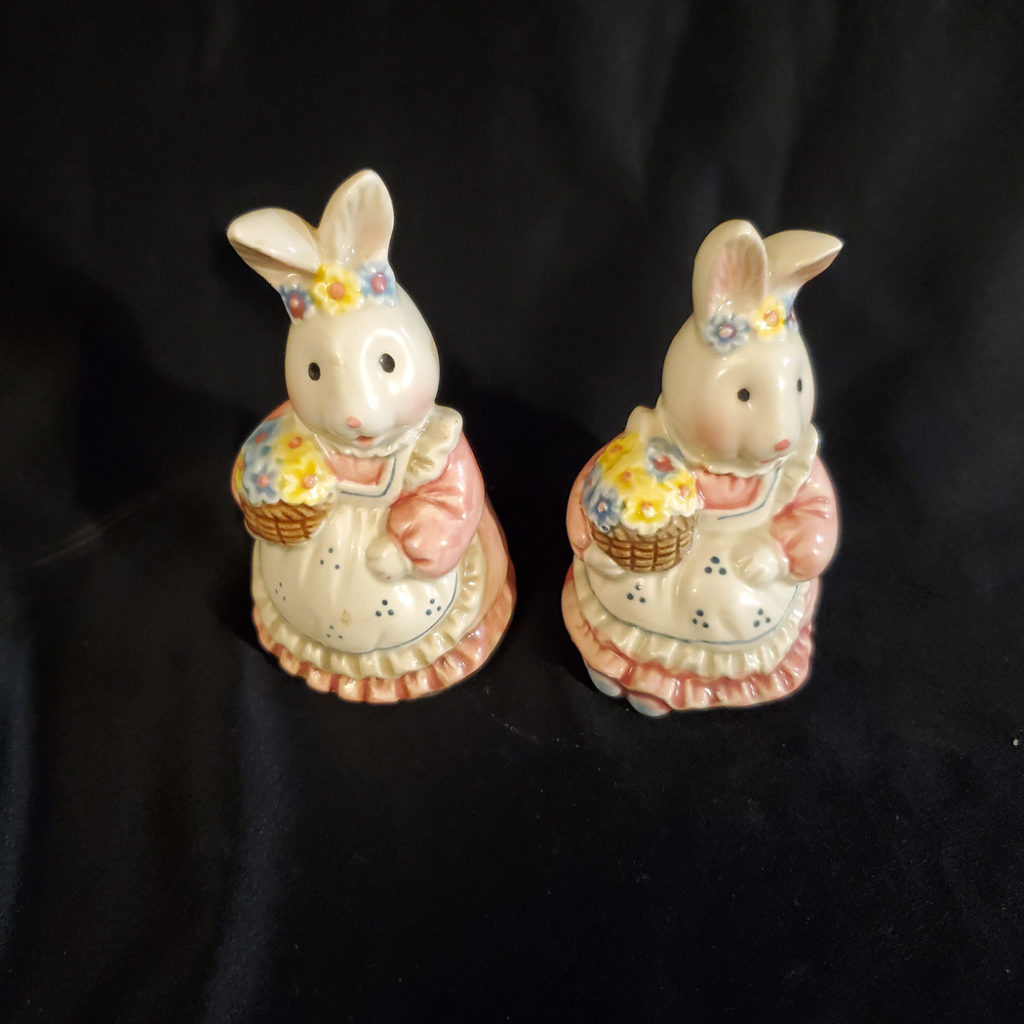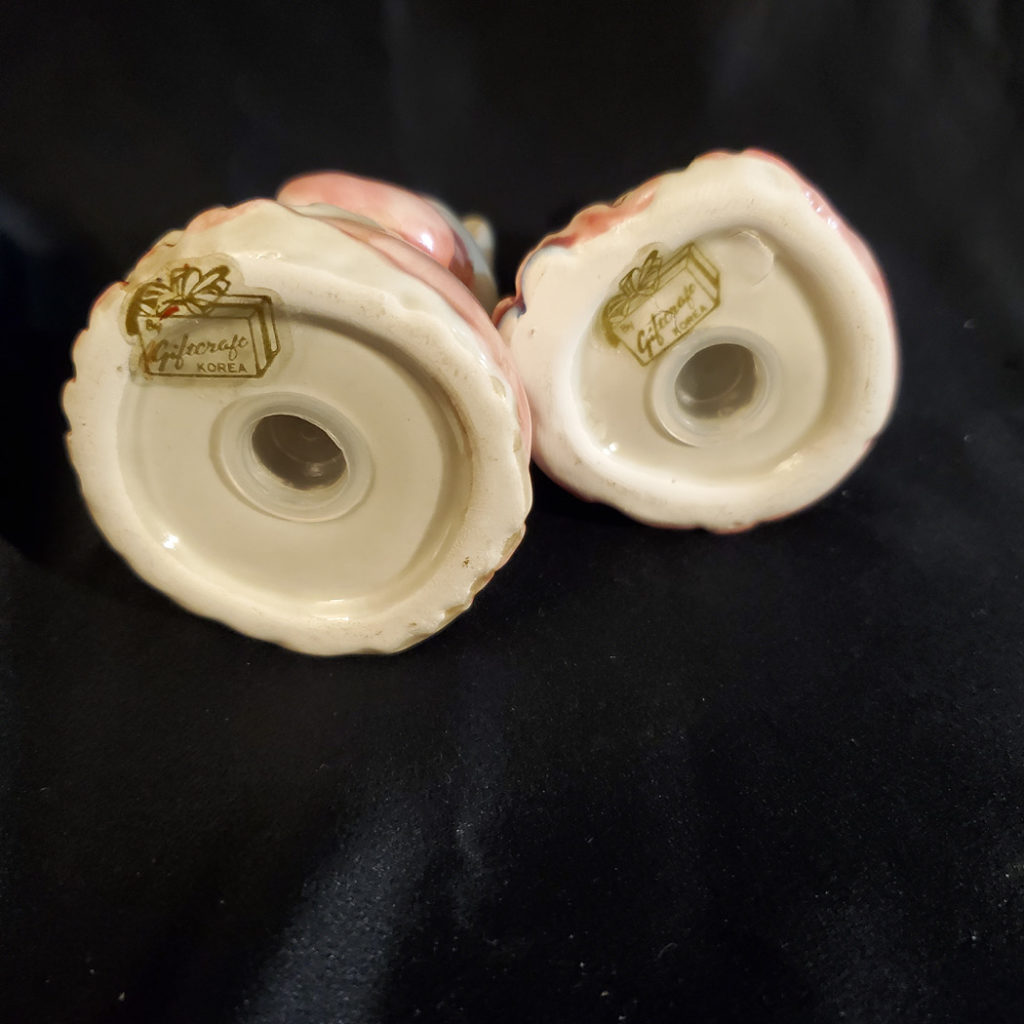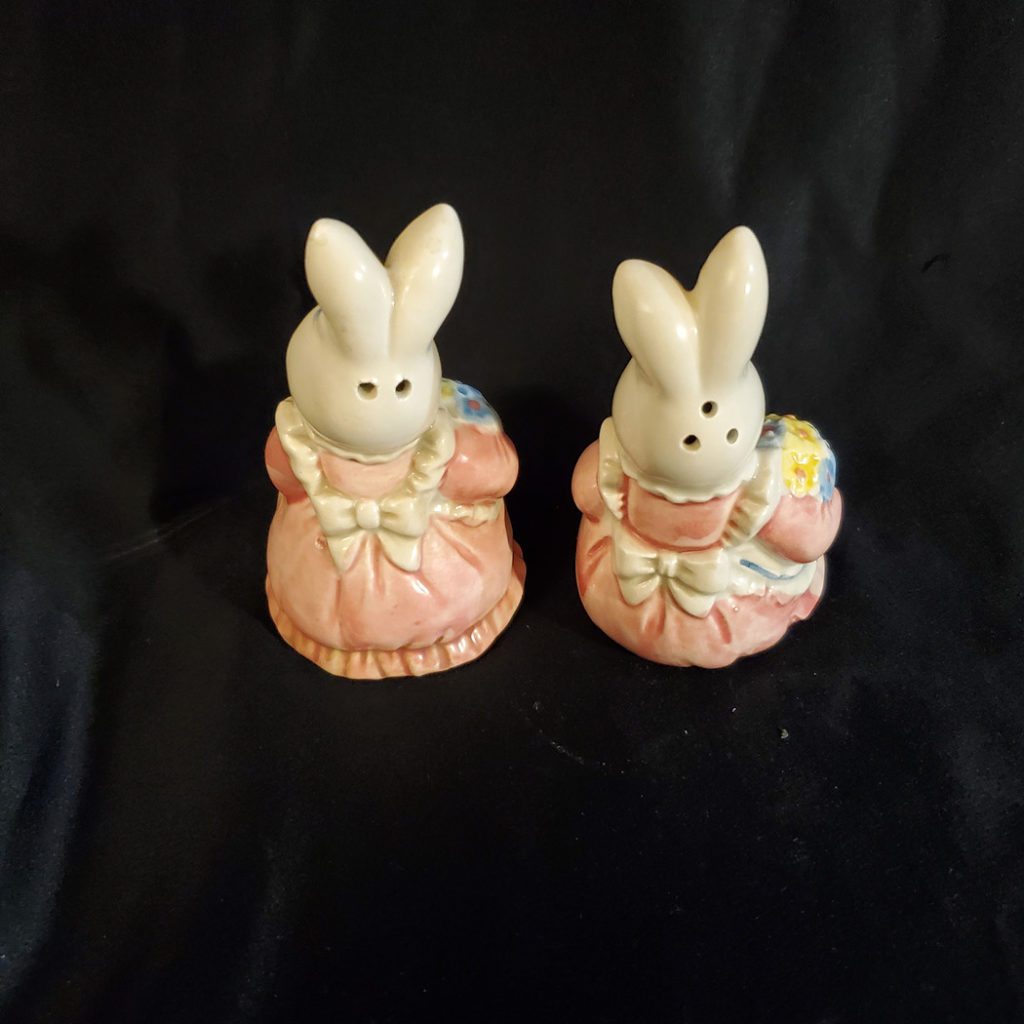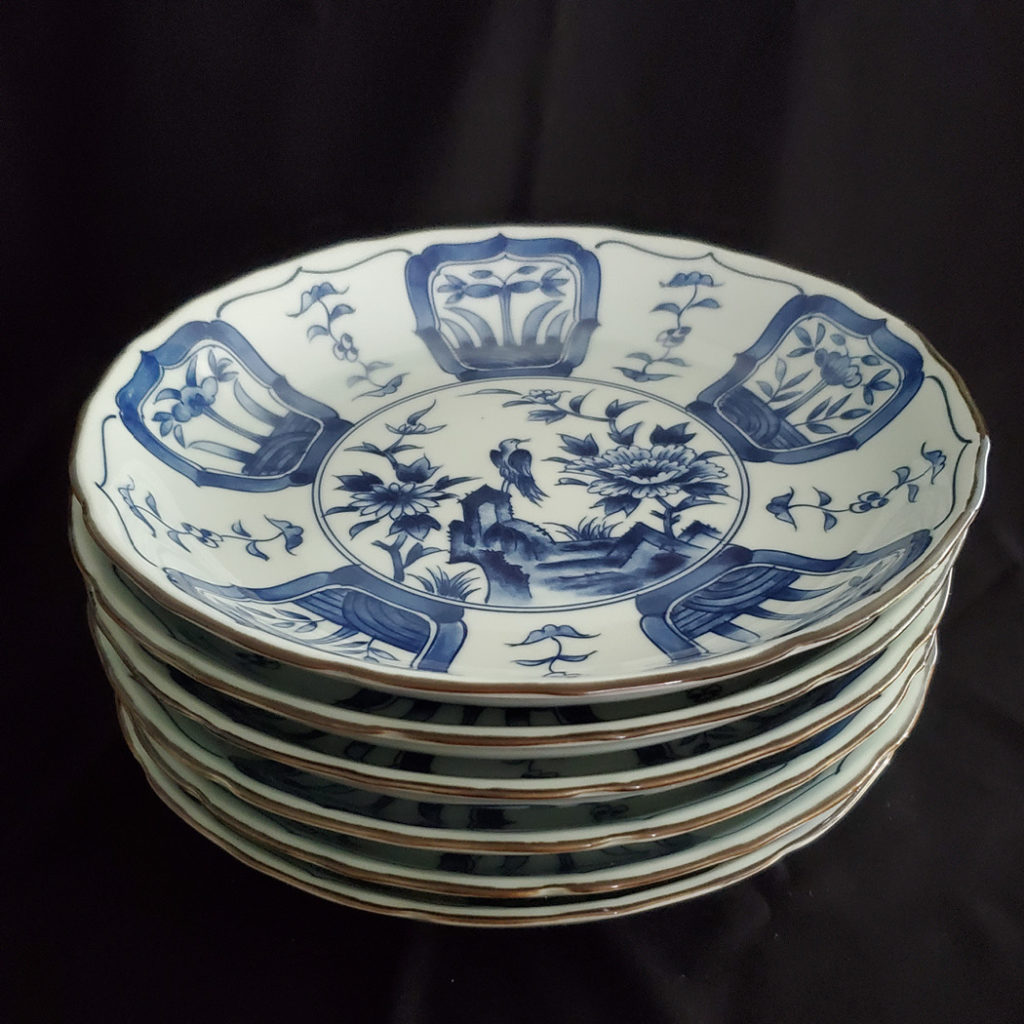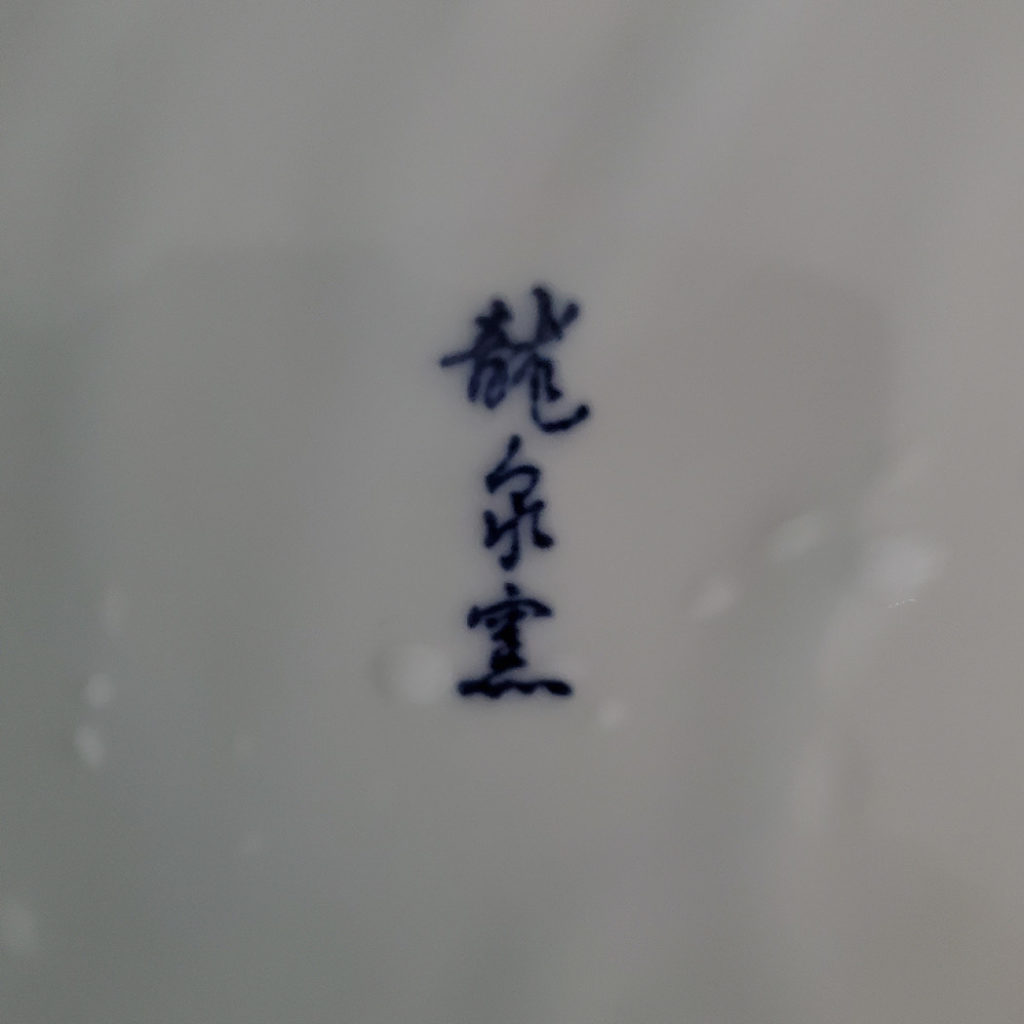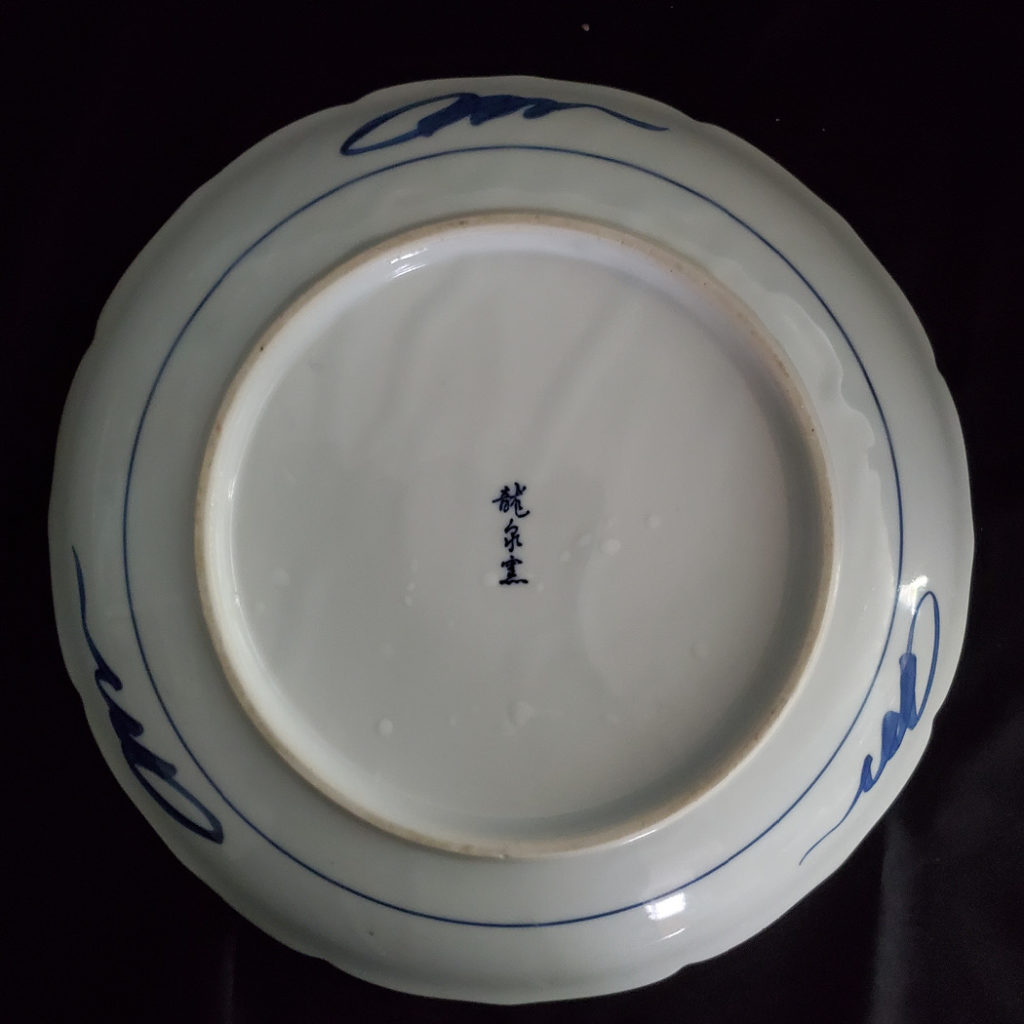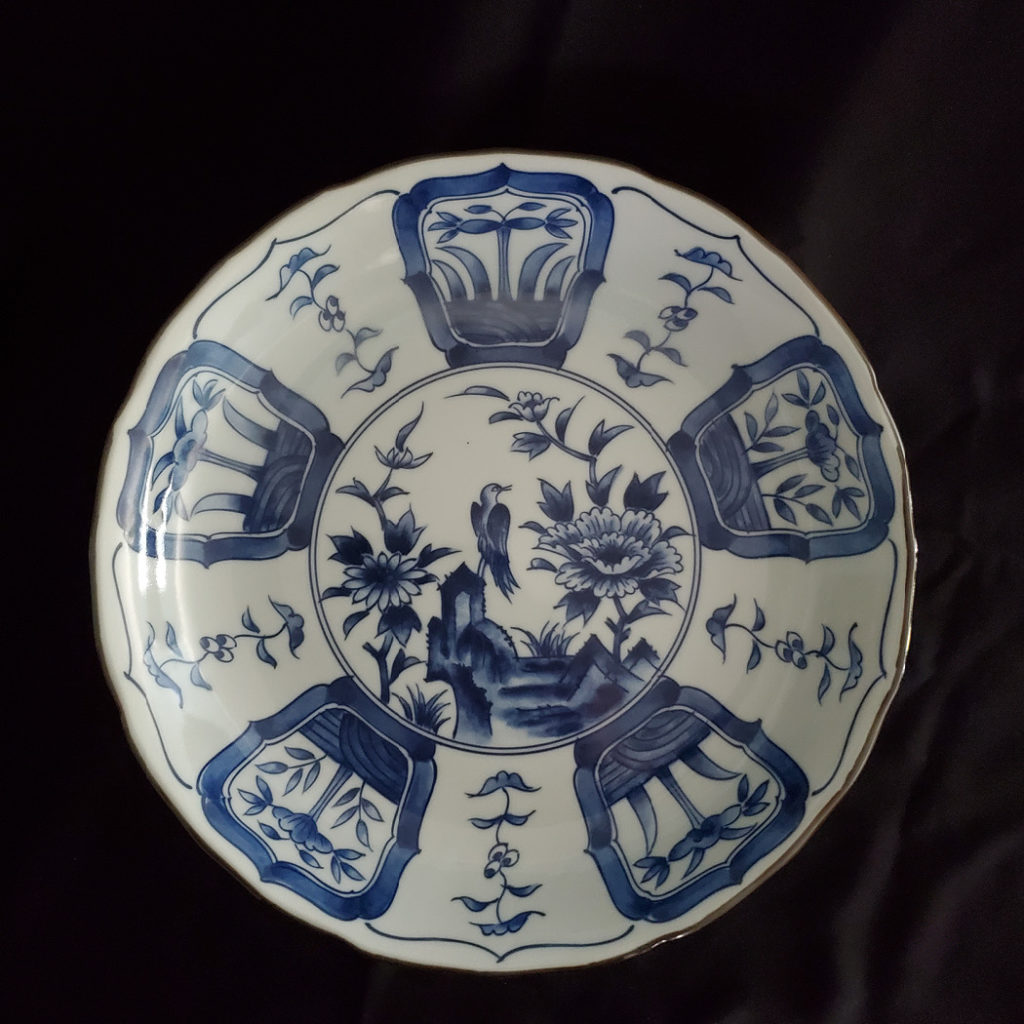#1021 Japanese porcelain art deco bowls dating to Taisho period – 1920s. The plate borders are distinctly Art Deco. The heron design is hand painted.
#1540 Impressed Choisy Le Roi Majolica plates from the 1880s are rare and this one is in wonderful condition. The Choisy-le-Roi faience factory of Choisy-le-Roi, France produced majolica from 1860. Tin glazed faience majolica pottery was first produced in the early 1800’s in Choisy-le-Roi by Louis Boulenger in the 1830s. Later, his son Hippolyte Boulenger took on the business in 1863. The marks are stamped Choisy le Roi or simply Choisy. The letters HB are often present, for Mr. Hippolyte Boulenger. The design was part of the Aesthetic Movement of the 1880s.
#1539 Wedgwood used a dating system that allows for the precise dating of the late 19th and early 20th century products. This plate is marked 3yx and therefore was made in 1895. The same pattern was made in the 1960s with some variations and a different backstamp. This is one of the earlier ones and is worth quite a bit more. It measures 24.5 cm across.
#1541 Wedgwood Bideford Art Deco pattern dishes were made in the 1920s. It is rare and exquisite. The pattern is # W1081 is identified as the Bideford multicolour. It measures 21.5 cm across.
#1543 These teacups were made in Japan by Yamaguchi Toki in the 1950s branded as “Jyoto China.” They were imported into the Middle East by various companies who marked the sets. My research show that they were imported into Arab countries by the Al-Masaa Trading Company marked SBM and Arabic writing.
These ones were imported into Iran and marked KPM with Persian script. I have not been able to find the trading company that brought them to Iran, but am told that they were quite popular many years ago and are familiar to many Iranians.
#1542 This is one of the iconic Beleek designs. This is older but you can still buy these today. See this link from Bed Bath and Beyond where it is $197.99. This measures 16 x 8 x 6.5.
#1544 This is a Chinese figure with a mark on the bottom that is incomplete and western writing that may read In Augustin or Argenten. I have not been able to identify it. It is possible that the writing is that of an importer. It measures 14 x 5 x 5 cm. There is a small chip under the hat. Also known as Dehua porcelain, this porcelain has been made in Fujian since the Song dynasty, 960-1279. It reached a height during the Ming dynasty, 1368-1644.
#1532 Japanese bowl. Unknown backstamp. I suspect this was a custom backstamp for a particular importer. Age is unknown but it is a wonderful translucent porcelain. Measures 6 cm x 19 cm.
#1273 This is a rare pattern and a rare colour and very old. If you look these up you will find that an estimate for these is between 200 and 300 US dollars for a pair. These are in great condition with some crazing but no chips for $95 Canadian. They measure 27 x 3.5 cm.
#1308 Hand painted and signed, one-of-a-kind plate at the end of the arts and crafts movement. Read about this interesting movement here. Arts and crafts porcelain are highly desired and attractive. In many cases many hours were put into a single piece where the process was as social as it was manufacturing. Many of the participants and proponents of the movement were reacting to labour conditions and advancing socialist ideologies where workers were considered valuable and honoured.
#1309 This is a large plate from Southern Potteries which operated from the 1930s until 1957. Blue Ridge pieces are now popular items with collectors of antique dishware. The underglaze technique made the decorations more durable, and while basic patterns were reused consistently, the fact that each piece was hand-painted means that no two pieces are exactly alike.
Blue Ridge dishware is rooted in a pottery from Erwin, Tennessee around 1916 and chartered as Southern Potteries Incorporated in 1920. During the late 1920s, under the guidance of Charles Foreman, Southern Potteries implemented its underglaze decoration technique, which it began stamping with “Blue Ridge Hand Painted Underglaze” and similar variations in the following decade. Blue Ridge’s free-style decorations helped it stand out against competitors, most of whom used dull, decal-decorated dishes. The plate is 30 cm across.
#1310 Rare purple mulberry colour Delhi pattern plate from, earthenware manufacturers Marple Turner & Co (dissolved in 1858). This is an example of mid 19th century Chinoiserie. The plate measures 15 x 3.5 cm.
#1311 This version of the Kirkwood pattern was made between 1950 and 1963. The plate measures 26 cm across.
#1312 This plate has the secondary “005” mark in a triangle known on Macau plates. It is hand painted and exquisite. Measures26 cm across.
#1313 The Madras pattern was produced by Furnival / Furnivals from 1850s to 1878. The backstamp of an impressed “Furnival” suggests that this example was one of the earlier versions. It is an exquisite plate with wonderful detailed painting. The plate measures 26 cm across.
#1314 The back stamp dates this to near 1918 (the wreath with just Japan underneath). It measures 9 x 17 x 14 cm.
#1158 The Takito company 1880-1948, is mostly known as of one of those specializing on the Lustreware type of decoration originally developed by the Noritake company. The “T T” in two rectangles dates from the 1920s to 30s. This cherry blossom motif was especially popular. It measures 16 x 10 x 12 cm.
#1477 Thomas Morris at Regent Works was one of the early Stoke on Trent manufacturers of porcelain. In 1901 the partnership was dissolved and the company was operated by Harry Davies, married to one of the children of Thomas Morris. Later it became Crown Chelsea and then Colclough China which was purchased by Booths another venerable company. The merged companies became Ridgeway in 1955. These are a rare bit of English porcelain history.
#1316 This piece is similar to the Wedgwood jasperware but clearly not intended to be mistaken for it. The colour is a dark cobalt and the surface is highly glossy. There is a different bottom as well. I found one on Etsy that appears to be the same. The style of bottom looks like it may be German. It looks to be from the late 1800s.
#1022 Japanese hand painted ginger jar. Unmarked. I believe this to be pre-war but cannot determine this absolutely. 10 x 10 cm.
#1319 These French porcelain bottles from the mid 1800s can often be seen selling for hundreds of dollars. This one measures 12.5 x 6 cm.
#1320 These French porcelain bottles from the mid 1800s can often be seen selling for hundreds of dollars. This one measures 12.5 x 6 cm. This one has some minor damage to the stopper but is otherwise sound.
#1321 This is a rare platter made in the early years of the company. In 1919 the Star China Company became Paragon China Company keeping the star backstamp for the first 12 years as seen on this plate. Later it earned a royal appointment and changed its logo to reflect this in 1932. In 1964 it became part of Allied Potteries and then Royal Doulton using the name Royal Albert. This plate made after the first world war during the 1920sreflects some Art Deco sensibilities. It measures 22 x 26.5 cm.
#1557 These plates are unmarked but clearly mid century Japanese. They have a couple very tiny chips that are not very noticeable. They are priced accordingly. The measure 17 x 18.5 x 2.5 cm.
#1554 This morriage vase has great detail in the bird motif and cobalt rim. It measures 7.5 x 11 cm.
#1552 Produced in Japan just after the second world war this Occupied Japan teacup is small and delicate. The saucer measures 11.5 cm across and the cup is 9 x 6.5 x 5.5 cm.
#1567 This is an unmarked example of Geishaware from Japan. It measures 9 x 13.5 x 11 cm.
#1322 Central European style antique porcelain tray likely 1890s-1920s. Unmarked. It measures 29.5 x 20 cm.
#1560 This lustreware plate made in Bavaria is a good example of European Chinoiserie. It measures 18.5 x 15.5 x 2.3 cm.
#1500 The box measures 8 x 4.5 cm. There is a beautiful design inside and a signature on the bottom that I cannot make out. I cannot be sure of the country of origin,
#1501 The green box is signed Kasi it is Kutahya ceramic and is an example of Iznik design. It measures 4 x 6.5 cm.
#1502 The blue and white box is signed K. IO. and Boğaziçi hand made on the bottom. It is an example of Iznik design. It measures 4 x 6.5 cm.
#1503 This multicoloured covered porcelain box or jar is unmarked but of the style of the Iznik pottery of Turkey. It measures 6 x 7 cm.
#1538 Covered Alfred Meakin bowl. Measures 25 x 22 x 10 cm. Looks to be from the 1930s.
#1459 Royal Rudolstadt bowl made by Beyer & Bock, Volkstedt, Thuringia, Germany. This bowl was made in 1905-1920. It measures 25 x 6 cm. A bowl just like this one is for sale on Etsy now for $62.
#1324 This is a large bowl. It measures 24.5 x 4.5 cm. It comes from the 1920s.Reduced to $2 can be used for items neither hot nor cold like a salad or fruit bowl
#1325 Royal Doulton Kismet pattern was produced between 1979 and 1982. This plate measures 20 cm.
#1460 Each of these sells for about $25 or more (earlier years much more). While one is damaged slightly the others are in good condition. Price for all of them just $30. The bowls measure 16.5 x 16 x 12. The saucer is 16.5 across. Adams is an old English ironstone company that was eventually bought out and merged with Wedgwood. These were produced not long after they were merged with Wedgwood but still using their name.
#1461 Adams Gravy boat measures 9.5 x 16 x 9.
#1326 Royal Doulton Reflection was produced between 1959 and 1981. This Serving plate measures 25.5 x 23 cm.
#1462 Unique historic and valuable gift item can be used as a specialty soap bowl! These are rare antique pieces. Bowl measures 14.5 x 9 and the pitcher 10 x 15 cm. a wonderful bathroom decor set.
#1465 These Limoges bowls have a great deal of applied gold creating a rich luxurious impression. The designs are identical although there is one with a different backstamp, likely as this was a transition period. These are early 1900s. They measure 12.5 x 4 cm each.
#1466 This large plate measuring 28 x 25.5 cm was produced by Maruki between 1912 and 1921. It is heavy, great condition and quite a statement piece.
#1470 These are luxurious beautiful porcelain plates made in 1959 based on the date code. They measure 28 x 25 x 4 cm.
#1472 This is a rare plate from an early period in the series. The plate measures19.5 cm across.
#1471 This is a cake or serving plate that is now very difficult to find and expensive in any period. This is one of the earliest periods that they made this design. It is a real statement to have this beautifully painted piece. It measures 25.5 x 22 x 4 cm.
#1473 Booths Cheswick semi porcelain covered bowl Measures 15.5 x 15 x 12. This bowl is worth much more than this – I am giving the gravy boat with it. The gravy boat is 17.5 x 9 x 9.5 cm.
#1474 Booths Cheswick pattern teacups and saucers. Selling the three for $35 which is about the value of just two of them.
#1467 This bowl from the 1920s measures 14 x 14.5 x 3 cm. The shape and lustre are certainly striking.
#1327 Wedgwood Corinthian pattern was produced during the 1930s. This plate measures 27.5 cm across. It would make a great serving dish as well.
#1468 The Prague vase or stein is likely post 2000 perhaps 15 years old or so. I am unclear what it is as most descriptions are unsure between a vase or a stein. It measures 30.5 x 7. I think it is best used as a vase given the tall shape.
#1475 I believe this to be German based on the impressed numbers. Most Nippon did not have impressed numbers. It appears to be early 1900s. It measures 12 x 8 x 12 cm.
#1469 The bowl measures 19 x 3.5. This is one of the earlier version of this back stamp with “England” curved.
#1329 This bowl made by Enoch Wedgwood & Amp was made in the 1930s. It is 10.5 x 16.5 cm.
#1330 This plate was made sometime between 1930 and 1941. It is 17 cm across
#1331 All five Limoges plates for this price. These were produced between 1891 and 1914 by A. Lanternier. One has minor damage in the form of a chip underneath. They have wear due to age but it is important to note that the gold on the edge was only at the edge of the scallops and never went around the entire rim. Great deal. They measure 16.5 cm across.
#1332 You get both side plates for this price. One has a larger chip. They measure 16.5 cm across.
#1333 These are very early antique Blue Willow plates, apart from the apparent age you may also that this is one of the older patterns with 4 fronds on the willow tree instead of later and a double border (inside the centre as well as outside). One has heavy crazing. The colour is a lighter more blue green. The “Made in GT Britain” Willow plates were usually made in Scotland. they measure 18 cm across.
#1334 J. Clementson began his earthenware business at Phoenix works in 1856. He retired in 1867 and from then on the name of the company became Clementson Bros. It measures 19.5 cm across.
#1275 Beautiful porcelain painted with scenes of vibrant colours. These types of scenes on porcelain were from the 1920s-30s up to mid century. The shape and design appears very modern despite their age. A wonderful set to serve cookies and cake. Rare to find them all together. Platter 28.5 x 12.5 x 3 serving plate 26 x 21.5 x 2 and small plates 14.5 x 14.5 x 2 cm.
#1335 Two Ridgeway plates of the June Roses pattern. Ridgeway was a venerable pottery family in England from the late 18th century. Several related companies operated at different times. This one merged with Royal Doulton in 1972. This pattern and backstamp was produced in the 1950s.
#1336 Grindley Fairfax pattern plate with a warm yellow and pale green pattern. The backstamp dates this to the period 1936-54 and the pattern in the middle of that period. It is 18 cm across. It has minor fleabites.
#1323 This Royal Doulton pattern, H4872 came from the post war years. The plate is large measuring 26.5 cm.
#1337 This plate measures 21 cm across. The pattern was produced in the period 1938-1959
#1338 Souvenir or plate from the hotel. Made in the 1920s (judging by the backstamp). It is 21 cm across
#1399 This is a very desirable pattern in early Johnson, Flow Blue. The pattern was from an earlier maker, Claremont that was folded into Johnson Bros. The bowl measures 12.5 x 2.5 cm.
#1400 This plate measures 26.5 cm so is quite large. It has significant wear into the design, but this is not that surprising since it is over 100 years old.
#1401 These are the figurines that were given as promotions in tea starting in the 1960s. They were called Wade Whimsies. They are from 3×3 to 4×5 cm.
#1464 This is one of the larger whimsies of the in a basket designs. They had different dogs and cats in baskets. I am not sure how people got these larger ones, perhaps is was in larger quantities of tea. It measures 7 x 8 x 3.5 cm.
#1443 Four tiles hand made and decorated by Niarchos, Greece. Each depicts a different ancient story and all have labels on the back identifying the scene. They measure 15 x 15 cm (6 inches). This set is particularly hard to find and finely detailed representing illustrations from ancient vessels.
#1402 This pattern and variations of it were produced by a number of potters over a long period of time. This one is from 1912, Alfred Meakin. It measures 25 cm across.
#1449 Medina shape, covered, sugar bowl, Alfred Meakin, 12 x 16.5 x 11 cm. Very attractive bowl!
#1403 This is a platter from 1900. See mark C-5 GDA France. The platter is rare from this period and worth over $100. I have priced this one at $25 due to the chip underneath which is not visible when in use or on a table – only when you turn it over. 44 x 29 cm.
#1404 BC teacup and saucer. Saucer measures 11.5 wide and the teacup is 7 x 5 x 5.5. It is believed to be mid century.
#1533 Very attractive new tea set from Japan. Comes in original box, never used. Includes tea strainers for pot. Cups are 6.75 x 7.75 cm and the pot is 11 x 14 x 10 cm.
#1445 This bowl is made sometime between 1906 and 1962 when the company changed its backstamps. Langenthal produced fine porcelain, especially for upscale hotels in the country. They ceased production of table ware and exclusively produced insulators in their latter years. Much of the Langenthal porcelain that can be found now is 1960s mid century modern. Earlier pieces like this are rarer. The bowl measures 14 x 10 x 8 cm.
#1405 Carrie Olsen Garrard decorates each of these by hand – they are whimsical and fun as well as being a piece of art. It measures 24 x 6.75 cm.
#1406 This little Art Deco dish made in the late 1800s by A. Klingenberg, a master porcelain decorator, is both unusual and old. Despite only operating for 20 years and losing in 1910, the work is well known today and appreciated for its fine quality and originality. 11 x 6.5 cm.
#1448 The Stara Role (Altrohlau) company that began in 1810 in Austria was bought at auction by the Moritz Zdekauer Bank in 1884 as a large factory with close to 1000 workers. From then on they used the name MZ. This bowl was produced between 1884 and 1909. At the end of the First World War, Stara Role, which is in Bohemia, became a part of Czechoslovakia. It is today in the Czech Republic.
#1535 In the 19th century and early 20th century waxed long moustaches were popular for men. Not popular was getting them in your drink. That would be not good for the moustache or the drink. The mugs solved the problem. This one is very typical central European and would have been from Austria or Germany. It measure 9 x 11 x 6 cm.
#1446 This plate reflects the revival of the work of the 18th century French artist Fragonard in the mid 20th century. It measures 11 cm across.
#1267 This porcelain is translucent. It is a wonderful, eye-catching piece to put on top of a bureau. It appears to be be early last century made in Japan, based on the look of the porcelain and the style of decoration. It measures 10 x 7 cm.
#1269 This cream and sugar was made by the Nagoya Seito Sho company before the First World War. The creamer measures 7 x 8.5 x 5 cm and the sugar bowl measures 8 x 8 x 11.
#1536 Ionia is likely the most famous brand of Greek tableware. These coasters nest in the holder. They are 8 x 1.5 cm. The holder is 10.5 x 5 cm.
#1230 The inkwell comes with 4 holes for pens and the ink in the centre. It would be a great gift for a writer or collector of early 20th century design forms (Art Deco and Art Nouveau.
#1051 This hand painted plate is designed to go on the wall and has a hanger built in. It is dated to the 1920s-1930s based on the mark. It is 20.5 cm across.
#1450 Lustreware souvenir pitcher, Niagara Falls, made in Germany. The scene is from the American side looking towards the Canadian Horseshoe Falls. The piece measures 11 x 11 x 7 cm. Made in the 1920s or 30s.
#1285 The mug is 12 x12 x9 cm.
#1023 The bowl has a gold rim and painting between the flowers. It is 7 x 15.5 cm. It is mid century.
#1272 This vase has the style of Miessen. The mark appears to be the JR mark, one of the marks they used. I have not been able to date the piece definitively as I did not get a date range for those marks. Miessen vases and Miessen style vases command high prices. I have been very modest pricing this since I cannot be sure of its identity. The vase measures 9.5 x 11 cm.
#1222 This is a very unique style of porcelain called “Phanolith.” Jean-Baptiste Stahl was its inventor and designer. These porcelain porcelain reliefs, partly influenced by Art Nouveau won him a gold medal at the 1900 World’s Fair in Paris. He took topics from Greek mythology and rural life. Usually, the white translucent figures are finely set on a blue or green background that partly shines through. You can learn more about him and his unique innovation here.
The Villeroy & Boch company began in 1836 when two rival companies merged. “In 1809 Boch bought the former Benedictine abbey in Mettlach on the River Saar where he set up a very modern and extensively mechanised system for tableware production. In fact many of the machines were designed by Boch himself and his inventions started a new era as manual ceramic manufacture was now to be replaced by industrial production.
Today, the baroque building is still the corporate headquarters of Villeroy & Boch.” If you go to this website you will see the marks they used and find this one, as image 2-03 defining the period this plate was made as between 1873 and 1883. More can be found about the company here.
The plate measures 20 x 3 cm. This is a very rare item.
#1444 Teacup and saucer with dragon design from 1922-1949. After this date the mark read “W. Germany.” Delicate Chinoiserie signed by the artist who hand painted the image. The cup measures 18.5 x 6.5 x 6.25 cm and the saucer is 12 cm across.
#1024 A pair of bowls with the same pattern. One is a standard bowl with the pattern on the outside and the other is a candy bowl with a handle and the pattern on the inside. 15 x 7 cm for the one without the handle and 17 x 13 cm for the one with the handle.
#1025 This bowl is almost translucent. It appears to be from the early republic period. It is 10 cm x 5.5 cm.
#1387 These plates are from the early republic period 1920s-30s. Many of what can be found today posing as 19th century Rose Medallion comes from the 21st century or late 20th (1980s or 90s). These are early 20th century, and older than much of what passes for 19th century. Those considering collecting Chinese porcelain may want to consider resources like this one where there is a wealth of reliable information.
The sizes of these plates are 21.5 x 2.5 for one of them and 18.5 x 2 for the other three. I am asking $200 for all 4 plates. A little scan will show you how good a price that is. I will sell them individually but for more: $65 for each of the smaller ones and $85 for the larger one. You are saving $80 buying them together. I will load images of the backstamps shortly.
#1026 These wonderful bowls come from the Juzan Gama family kiln. This maker is very popular and in demand. His work is known for exquisite patterns and florals as can be seen here. Each measures 15 x 7 cm.
#1013 Vintage hand painted plate by Bray Designs of Ireland from illustration based on the Book of Kells. It measures 23.5 cm.
#1398 The company that made this charger, Fábrica da Louça de Viana became known as Louça Regional de Viana. It closed its doors in 2006 after 242 years in business. Produced in porcelain, pottery is distinguished by being completely hand-painted and baked at a temperature of 1400º, which gives it a resistance that others do not have. In 1999 it was distinguished by the City Council with the title of Institution of Merit of the city for “the nobility of its past and for constituting a “valuable cultural heritage of the municipality.” The measurements are 4 x 35 cm.
#1014 Edward the VIII never became king. He was the one who abdicated to marry an American. This mug was produced and sold in anticipation of the coronation that never happened. Instead George VI, the father of Queen Elizabeth II, became king instead. An interesting piece of history. It is made by Midwinter Burslem in England. It measures 7.5 x 7 x 10 cm.
#1463 This mug was produced by Clokie and co, Castleford, Yorkshire England in 1935 to celebrate the Royal Jubilee of King George the V. It measures 8.5 x 11 x 8.25 cm.
#1545 Alfred Meakin coronation dish of Elizabeth II, 1953. The dish measures 13 cm across.
Pair of Arita Imari small plates with birds Japan $35
#1053 This is a pair of unmarked Imari plates. They are old and small with exquisite tiny designs. I suspect these to be either from the Maiji or Taishō period. The marks on the back of the right one are surface only. 10 cm
#1224 This is a modern very high quality plate from Japan. It incorporates newer 20th century colours including greens and purples. It measures 16 x 4 cm.
#1225 This dish is unmarked but likely from the early 1900s. It measures 2 x 10 cm.
#1054 This motif of a child on a bamboo mat was popular on export Japanese porcelain and these whimsical plates with the three dimensional image are quite interesting. I suspect they were made before the war in the 1920s or 30s. They are 11.5 x 8 cm each.
#1057 This miniature beautifully painted prewar Japanese cup with geisha pattern. 6 x 3 cm
#1058 This small bowl has a wonderful flower design with great detail and a slightly raised surface. 9.5 x 4.5 cm
#1270 This bowl and dish was imported and sold in Vancouver and one of them has a foil sticker marked Capilano, Vancouver. Not the picture of the dish has an odd reflective look because it was a bit wet when I took the picture but it is fine. I cannot really speak to the age although I would guess it to be about 25-30 years old. It measures 10.5 x 3 for the bowl and 13x 2.5 for the dish.
#1061 These porcelain immortals are signed. They measure 9 x 4 x 5 cm.
#1388 This small plate is part of the friendly village series which was produced over a long time. The earlier pieces were made in the 1950s and 60s. This is one of them. The small dish measures 10.5 cm across.
#1389 This plate measures 22 cm across is very typical of the early 1900s Japanese export porcelain. This is a wonderful, well painted early example.
#1390 Orange lustreware became popular but this is a particularly fine example with the orange not being a solid but a gradient. The design, painting and condition are all excellent. It measures 12 x 13.5 cm.
#1391 Nice examples of Japanese lustreware, likely from the 40s or 50s. The creamer is 12 x 8 x 9 and the sugar bowl is 11 x 13 x 10 cm
#1392 Very nice early cobalt edged translucent porcelain from Japan. There is a minor fleabite that you have to look to find on the inside rim of the sugar bowl. I priced this accordingly. The creamer is 11 x 9 cm and the sugar is 7.5 x 7 cm.
#1393 Small trinket dish made in Occupied Japan. It measures 14.5 x 12.5 cm.
#1394 It is a beautifully painted moriage bowl from the early 1900s. It measures 10 x 3.5 cm. It may have once had a lid.
#1395 Beautiful shaped and painted cup and saucer with a warm scene. Cup is 10 x 8 x 6 cm and the saucer is 14 cm across. A larger volume cup than most.
#1396 This small dish is 12 cm across. The G in a wreath, according to Gothenberg, is a contract importer in Toronto for Noritake and is dated in the 1950s. This measures 12 cm across.
#1397 This modern cake plate is well designed and painted. It measures 26 cm across.
#1062 The porcelain is thin and delicate in this mid century sake set. The measurements for the bottle are 12.5 x 5.5 cm and for the cups 4 x 5.25 cm
#1064 These three bowls are unmarked studio pottery. The pair are 12.5 cm x 4.25 and the white third one is 13.5 x 5.5
#1076 Ottawa artist Lorna MacLaren is a very accomplished painter on Porcelain. You can find videos of Lorna MacLaren working here. Lorna Maclaren is the Assistant Editor at Porcelain Artists of Canada based in Carleton Place, Ontario and a teacher at World Organization of China Painters. This vase is 9 x 12 x 5 cm.
#1077 Vintage vase FM Floss Bavaria. 6 x 17.5 cm
#1078 There are 6 shot glasses and this tray. The tray measures 26 x 8 x 5 cm. Each glass is 4 x 5.5 cm.
#1407 They are made in Bavaria. I do not have a specific date range for these small dishes. they measure 9.5 cm.
#1079 Nymølle is pronounced Neemurlla. Shortly before the second world war the Fuurstrøm factory was set up in Denmark to produce domestic wares that had traditionally been imported. The impending war threatened supply from outside. After the war production of more artistic lines started under the name Nymølle. Almost all the the output from the firm for the first decade after the war was designed by Bjørn Wiinblad.
Other designers were employed as Wiinblad became busier with a wide variety of design work, and Nymølle enjoyed a high degree of success during the 1960s. In the mid-1970s the parent company went bankrupt and all its interests were sold except Nymølle. Nymølle struggled for a couple of years, and was then bought out by Bjørn Wiinblad. The cup is 6.5 x 5.5 cm and the saucer is 12.5 across.
#1165 Paragon was an exclusive English brand known to be popular with the Royal Family. It went out of business in 1960 after 63 years to become part of Royal Doulton, another venerable English brand. They measure 10 x 10 cm each. they appear to be from the period 1938-1953 during the joint Queen Elizabeth (Queen Mother)-Queen Mary appointment.
#1408 This is an attractive serving bowl. There is a chip on the underside of the rim. I have priced this accordingly. It is 21 x 7 cm.
#1409 This plate measuring 28 cm across is hand painted with an artist signature on the front. It was produced in the 1940s.
#1410 These plates by Spode were all hand painted. The series had 12 different flowers represented. They were introduced in 1936. They measure 23 cm across.
#1271 Royal Doulton, Minden bowl was made in 1933 according to this resource. The bowl measures 5.5 x 11.
#1167 Five of these are the same and marked CK in a wreath, Japan. One is marked Foreign. From what I can tell this last one is earlier and is a little larger it is 11 cm across and the others are 10 cm. The last one is marked Made in Occupied Japan and then covered over somewhat by a gold paint as a person dedicated this to someone personally.
#1080 Selling these Spode bowls low since one has a minor fleabite. The other is perfect. Both are well useful and the damage on the one is hard to find.
#1107 This is a very large wall plate designed as a faithful reproduction of 16th century Imari. It comes with a wall hanger and is quite large. It is a Japanese hand made piece unlike Chinese factory reproductions. It is very heavy and measures 31 cm across.
#1108 The Noritake backstamp or mark indicates that it was made around 1918. It is hand painted with a finger loop design that was popular at the time. It is 14.5 cm across.
#1109 This is a dish made in Japan during the period of occupation following the second world war 1945-1951. It is highly collectible. This dish is 14.5 x 13.5 x 4.5 cm.
#1110 Carlton Ware Rouge Royale, with Art Deco designs, was made in the 1940s. They were all hand painted. Carton Ware was founded in 1890 by James Frederick Wiltshaw, William Herbert Robinson and James Alcock Robinson trading under the name of Wiltshaw and Robinson. The trademark “Carlton Ware” was introduced in 1894.
#1252 These pieces of Carlton Ware were designed in Australia and date from 1937-1938. The design is “Apple Blossom.” One is much larger than the other and they can be perfect for serving complementary dishes. There is a small chip not visible from the top on the yellow one as you can see in the pictures. I have priced these low for this reason. This price is lower than you might expect for just one. They measure 24 x 25 x 4.5 and 8.5 x 8.5 x 3 cm.
#1111 By the mark this plate was made between 1894 and 1909. MZ specialized in pink roses, this motif is worth more than the others, and this is a wonderful example. This has the embossed surface, intricately scalloped edges and reticulated sides. It is a large plate at 26.5 cm across.
#1112 This cup comes from a series of renaissance themed white porcelain items. This series is believed to be from the 1940s or 50s. Lefton was a company founded by Hungarian immigrant Zoltan Lefton in Chicago, USA. The cup measures 9 x 12 x 8 cm.
#1139 This is an old Anne of Green Gables souvenir from 70-80 years ago. It is made in England by Royal Winton. The property was purchased by the government of Canada as a old house but not furnished as per the Green Gables books until the 1970s. The early souvenirs from before the house was an official Green Gables tourism site are more valuable. I have another Green Gables souvenir dish as well. It measures 11.5 x 9 cm.
#1164 This is an old Anne of Green Gables souvenir from 70-80 years ago. It is made in England by Royal Winton. The property was purchased by the government of Canada as a old house but not furnished as per the Green Gables books until the 1970s. The early souvenirs from before the house was an official Green Gables tourism site are more valuable. I have another Green Gables souvenir dish as well. It measures 13 cm.
#1140 This pattern was introduced in 1824 in black and then modified to be reintroduced in 1903. Later variations continued with considerable popularity in the early 1950s. Based on the backstamp this appears to be from around 1960. It measures 8 cm.
#1262 This vintage Limoges teacup was made by Haviland which was an American operation making Limoges to export to the United States. the designs were made for an American aesthetic. It measures 6 x 7.5 x 5.5 cm.
#1141 These are elegant hand made and painted in Greece vintage demi tasse cups. The saucer is 11 cm across and the cups are 5.5 x 8 cm.
#1163 Königlich privilegierte Porzellanfabrik Tettau, Schmidt & Greiner was established in 1794 based on permission of Prussian king Friedrich Wilhelm II. The Greiner family run the business until 1852. The factory was taken over in 1852 by Ferdinand Klaus. Between 1866 and 1879 it was owned by Wilhelm Sontag and Karl Birkner. In 1879 Ludwig Maisel replaced retired Karl Birkner. The name was changed to Porzellanmanufaktur Tettau, Sontag & Maisel.
The factory completely burnt down in 1897 but was rebuilt and enlarged by owners. In 1902 Ludwig Maisel retired and Wilhelm Sontag was joined by his sons in managing the business. In 1915 it was transformed into a stock corporation Porzellanmanufaktur Tettau A.G. The mark indicates that this platter comes from the late 60s or 70s. The platter measures 20 x 30 cm. The gravy bowl measures 20 x 8 cm.
Both pieces here are the wheat pattern. The gravy bowl has the backstamp of the manufacturer and not the store.
#1174 The museum opened in 1912. In 1915 two towers were taken down due to the weight of the museum sinking. The dish shows them gone. Imports from Germany were reduced curtailed during the war. In 1916 the museum closed as Parliament moved in following the loss of Parliament’s Centre Block to fire. In 1920 the museum was reopened. It was divided into two in 1927 but souvenirs continued to name the building for some time. The best guess of the age of this dish is the 1920s by the image and the style of souvenir. It measures 11 x 7.5 x 2 cm.
#1263 This Japanese Geisha plate is unmarked and likely dates from the 1930s to 50s as the earlier pieces tended to include gold paint. The porcelain is translucent and very fragile. This one has a couple tiny chips and some imperfections in the painting as most have. I have priced it accordingly. It is 5.5 x 2.5 cm.
#1264 This floral plate has a gold raised texture on the edges. It is 15.5 cm across.
#1287 Porzellanfabrik Carl Schumann G.m.b.H. & Co. K.G. bowl. The mark dates this bowl as between 1900 and 1914. It measures 21 x 5.5 cm.
#1288 This Noritake plate having its handle worn somewhat is not that unusual. It measure 19 x 7 cm. Likely it was made between 1921 and 1935.
#1479 This style of dish with a single handle and no rim was called a lemon or nappie dish. Often the are referenced as trinket dishes as few seem to use these terms. It is 14.5 cm across.
#1480 In 1842 David Haviland moved to Limoges, France in order to produce porcelain for the American market. Theodore and his brother, sons of David, had a falling out and split the business in 1892. This backstamp of Theodore’s with the line under his name was in use in 1903, so these plates are nearly 120 years old. You can see the various marks here – this one is mark p. The plates measure19.5 cm across.
#1481 The cream and sugar style is from the 1940s and the pattern number indicates this period. They measure 10.5 x 8.5 x 6.5 for the creamer and 9.5 x 7 cm for the sugar.
#1289 This is a very recently made bowl. Attractive low cost Imari look. It is 6 x 11 cm.
#1296 This is a recent Villeroy and Boch bowl or porcelain jewelry box. It measures 13 x 5.5 cm.
#1478 This limited edition plate is made from an image by Louis Dali. These plates come from the early 1980s. The painting is one of 12 commissioned by the French government in the 1970s. The plate measures 21 cm across.
#1291 These tea cups were actually made at different times. The pink one was made between 1934 and 1938 and the blue one was made after 1938. The saucers measure 11 cm across and the cups are 8 x 6 x 5.5 cm.
#1292 The mark on this cup and saucer was used between 1925 and 1959. The pattern and handle shape indicates that is is from the 1940s. The saucer is 12 cm across and the cup is 5.5 x 7 x 8 cm.
#1293 This is another example of painting on porcelain. I have a couple other examples. The technique involves painting with specialized paints on a finished white plate and then firing it again. The style is often similar to watercolour in look as it is translucent. This plate is 18 cm across.
#1294 Delft plate, unidentified artist and date. Appears to be mid century. 18 cm across.
#1458 This creamer was made by a company in Czechoslovakia. The mark reads the country with a hyphen between and some sources claim this was only used 1918-1920, while other sources suggest that some continued using this mark up to the invasion in 1939 when the country lost its independence to Nazi Germany. It measures 9.5 x 11 x 6 cm.
#1295 These bowls appear very modern but are attractive. They are 7.5 x 3 cm.
#1297 Blue Willow is a wonderful pattern that has gone through many incarnations, produced in England, Japan and, more recently, China. This plate is made by Staffordshire in England but is a fairly recent version likely made in the 1990s. They are well done and still sell for more than the Chinese ones but they are not vintage despite being often sold as such. This plate is 17 cm across.
#1265 Chile is a producer of cobalt so it is not surprising that they would produce a line of cobalt blue porcelain. It appears to be marked “Woulind” Chile. It measures 21 x 9 cm. I have been told that many people kept their money in these.
#1266 Mid Century Italian plates with hand painted floral scenes. They measure 20.5 x 3 cm each.
#1451 These vintage S&P shakers have had the corks replaced with plastic. They measure 6 x 9 x 4 cm.
#1452 These vintage S&P shakers have had the corks replaced with plastic. They measure 9 x 4 x 7 cm.
#1453 Made by Regal China co in the 1950s, these were a part of a huggables series. They measure 7 x 8 x 9 cm.
#1454 These vintage S&P shakers have had the corks replaced with plastic. They measure 9 x 6 x 6 cm.
#1455 These vintage S&P shakers have had the corks replaced with plastic. They measure 9 x 5 cm.
#1456 These salt and pepper shakers are from the 1950s. They measure 6.5 x 5 x 4
#1457 It seems that these were sold with the red paper stuck on the bottom that can be removed as I found other sets exactly like this. They are 6 cm high and the metal sails turn.
#1534 These salt and pepper shakers are made in Korea and imported by Giftcraft which was one of the largest importers of Asian porcelain. They measure 5 x 5.5 x 9 cm each.
#1274 These are really beautiful plates. They are heavy and appear like antique plates but they are modern. The are very well made. They measure 25 x 5 cm.
Porcelain
I have selected a number of porcelain items from many parts of the world and have them here for sale. Porcelain is a type of pottery that uses a fine white powder and is fired at high temperatures. It is frequently translucent and fine. The etymology of the word in interesting as it is named after a cowrie shell due to its translucence and delicacy.
